Strengthening India’s Statistical Ecosystem: MoSPI’s Initiative to Develop a Robust District Domestic Product (DDP) Framework
- 02 Nov 2025
In News:
India’s statistical architecture is undergoing a major transformation as the Ministry of Statistics and Programme Implementation (MoSPI) moves toward developing a bottom-up District Domestic Product (DDP) framework.
The initiative seeks to address long-standing limitations in district-level economic measurement by integrating two critical datasets—the Annual Survey of Unincorporated Sector Enterprises (ASUSE) and the Periodic Labour Force Survey (PLFS). Beginning January 2025, the combined use of these datasets aims to provide more accurate, granular and timely insights into India’s local economic activity, enabling evidence-based policymaking at the district level.
For decades, most states have relied on top-down allocation methods to estimate DDP, proportionately distributing Gross State Domestic Product based on outdated demographic indicators such as population. This approach produces “near-identical growth rates across districts”, obscuring regional disparities. Recognising this gap, MoSPI has initiated a shift toward a bottom-up estimation model in partnership with state governments. By directly capturing enterprise-level and labour market data from each district, the new framework is expected to radically improve the precision of district economic accounts.
The ASUSE forms the backbone of this strategy. Covering the unincorporated non-agricultural sector—which includes micro, household-based and small enterprises across manufacturing, trade and services—ASUSE produces detailed information on operations, investment patterns, workforce size and value addition. Previously released annually, the survey now offers quarterly data, enhancing frequency and granularity. Given the dominance of the unorganised sector in India’s economy, ASUSE provides an indispensable window into local economic activity.
The PLFS, conducted monthly by the National Statistical Office (NSO), complements ASUSE by capturing labour force participation, employment conditions, earnings and occupational structures in both rural and urban areas. Together, the two datasets reflect the dual pillars of district economies—enterprise activity and labour engagement. MoSPI notes that large enterprises are easy to identify, but district-level output is primarily driven by households, nano units and MSMEs, which both surveys cover extensively.
By combining these datasets, MoSPI aims to compute DDP through:
(a) bottom-up aggregation of district-level enterprise and labour data;
(b) integration of informal sector output; and
(c) alignment of statistical systems with decentralised planning structures.
This marks a paradigm shift in India’s economic measurement, aligning with the government’s emphasis on data-driven governance under Viksit Bharat @2047.
The initiative is part of a broader overhaul of the statistical system. Several complementary efforts are underway:
- The Annual Survey of Service Sector Enterprises (ASSSE), launching in January 2026, will map the incorporated services sector.
- The National Household Income Survey (NHIS), beginning February 2026, aims to measure income distribution and inequality—despite traditional challenges of under-reporting.
- A forward-looking capital expenditure survey has been introduced to track investment trends.
- MoSPI is also expanding public access to over 250 datasets, including GST aggregates, e-Vahan registrations and trade statistics, to strengthen national accounts and support research.
Despite these advancements, challenges remain. Accurate data capture from unincorporated enterprises is difficult, statistical capacity varies across states, and integrating multiple datasets raises risks of double-counting. Yet experts view the reform as a critical step toward improving the granularity, reliability and timeliness of India’s economic statistics. With several states already experimenting with district-level estimation, MoSPI’s framework could soon enable standardised and credible DDP measurement nationwide, transforming local governance and development planning.
The Employability Crisis in India: Rethinking Academia–Industry Collaboration

- 01 Nov 2025
In News:
India is grappling with a growing employability crisis, underscored by the fact that only 42.6% of graduates are considered job-ready. This mismatch between academic training and labour market needs has become a structural challenge, affecting productivity, economic growth, and youth aspirations. The crisis signals a systemic misalignment rather than a shortage of talent.
Understanding Employability
Employability today goes beyond academic qualifications. It includes the ability to:
- Acquire and apply knowledge in real-world contexts.
- Adapt to evolving technologies and workplace demands.
- Engage in lifelong learning, unlearning, and relearning.
- Demonstrate soft skills, value creation, and ethical behaviour.
Modern industries require graduates who combine technical capability with communication, teamwork, problem-solving, and a growth mindset.
Causes of the Academia–Industry Divide
Academic Factors
- Outdated Curriculum: Syllabi often fail to match rapid technological changes, new job roles, and automation trends.
- Theory-Oriented Pedagogy: Learning remains exam-centric with limited exposure to practical projects, internships, or problem-solving environments.
- Soft Skills Deficit: Institutions provide little training in communication, adaptability, workplace behaviour, and emotional intelligence.
Industry Factors
- High Expectations: Employers expect “ready-to-deploy” graduates but invest minimally in onboarding or mentoring.
- Rapid Technological Shifts: Industry skill needs evolve faster than academia can adjust, widening the skills gap.
- Weak Collaboration: Companies often view academic institutions as outdated, resulting in minimal engagement in curriculum design or research.
- Short-Term Approach: Recruitment is prioritised over building robust, long-term skill ecosystems.
Government and Institutional Initiatives
- National Education Policy (NEP) 2020: Encourages experiential learning, flexibility, internships, and stronger industry linkages.
- AICTE Internship Mandate: Requires engineering students to undergo industrial exposure.
- Skill India Mission: Strengthens vocational education through Sector Skill Councils aligned with market needs.
- NASSCOM FutureSkills PRIME: Upskills youth in digital technologies such as AI, data analytics, and cybersecurity.
These initiatives aim to modernise learning pathways and improve alignment with industry demands.
Challenges in Implementation
Despite reforms, several structural challenges persist:
- Curricular Inertia: Bureaucratic hurdles delay rapid updates in university syllabi.
- Fragmented Skills Ecosystem: Weak coordination among government, academia, and industry limits policy effectiveness.
- Faculty Skill Gaps: Many educators lack exposure to new technologies and contemporary workplace practices.
- Urban–Rural Divide: Smaller and rural institutions suffer from poor infrastructure and limited corporate linkages.
- Low Industry Investment: Companies underinvest in academia–industry partnerships and long-term talent development.
Way Forward
- Structural Reforms
- Curriculum Co-Design: Regular, collaborative revision of syllabi with inputs from employers, universities, and policymakers.
- Dual-Learning Model: Embed apprenticeships, live projects, and work-integrated learning into higher education.
- Faculty Immersion: Promote faculty internships, industry sabbaticals, and continuous upskilling.
- Skills and Ethics
- Soft Skills & Ethics Labs: Establish dedicated centres for communication, workplace ethics, and emotional intelligence.
- Outcome-Based Tracking: Use data to monitor alumni career trajectories and skill relevance.
- Industry Engagement: Incentivise long-term corporate participation in curriculum development, research, and training.
Conclusion
India’s employability challenge is fundamentally an issue of alignment, not ability. Bridging the gap between academia and industry requires shared responsibility, continuous innovation, and sustained collaboration. When education becomes practical, dynamic, ethical, and closely connected to the world of work, India can unlock its demographic potential and build a resilient, future-ready workforce.
Lokpal of India
- 31 Oct 2025
In News:
The Lokpal of India, established under the Lokpal and Lokayuktas Act, 2013, was envisaged as an independent anti-corruption ombudsman capable of investigating complaints against high public officials, including the Prime Minister, Union Ministers, MPs and government officials.
Conceived in the backdrop of the 2011 anti-corruption movement, the institution began functioning meaningfully only in 2019, when the first Lokpal was constituted—marking a long-awaited step in strengthening mechanisms for integrity and transparency in governance.
Mandate and Powers
- The Lokpal is empowered to conduct inquiries and investigations under the Prevention of Corruption Act, 1988.
- Its jurisdiction extends to all public servants—Groups A to D—besides heads of government-funded institutions.
- It possesses quasi-judicial powers, including summoning witnesses, demanding documents, ordering asset freezes, and recommending prosecution.
- Crucially, it maintains supervisory authority over the CBI in cases referred by it, reinforcing independent and credible investigations.
- The Lokpal’s composition includes a Chairperson and up to eight members—half of them judicial. As of 2025, Justice A.M. Khanwilkar (retd.) serves as Chairperson, supported by a seven-member team. Members are appointed by the President upon the recommendation of a selection committee comprising the Prime Minister, Speaker of Lok Sabha, Leader of Opposition, Chief Justice of India, and an eminent jurist.
Performance Crisis and Data Trends
Despite its powerful mandate, the Lokpal’s performance has raised serious concerns. Since inception, it has received 6,955 complaints, yet only 289 preliminary inquiries have been ordered. Out of these, a mere seven cases have progressed to the prosecution stage—an alarming indicator of institutional underutilisation.
The declining public engagement is sharper still. Annual complaints peaked at 2,469 in 2022–23 but plummeted to 233 in 2025, suggesting fading public confidence. Nearly 90% of all complaints were received in its first four years (2019–2023), while the past three years recorded only 691 complaints combined.
Civil society groups have criticised the procedural rigidity of the Lokpal. Activists point out that many complaints are dismissed on technical grounds such as format errors, while substantive allegations remain unaddressed. Further, the Lokpal’s failure to upload annual reports since 2021–22 has generated questions about its transparency and accountability.
Institutional Weaknesses and Controversies
A major lacuna has been the delayed operationalisation of the prosecution wing, notified only in June 2025—twelve years after the enactment of the Lokpal Act—severely constraining its ability to pursue legal action. The credibility of the institution also came under public scrutiny when it issued a tender to procure seven BMW 330Li luxury cars for its Chairperson and members. Critics argue that an anti-corruption body must demonstrate fiscal restraint and ethical prudence in its own functioning.
Way Forward
Strengthening the Lokpal requires structural, procedural, and ethical reforms. A real-time digital dashboard should be created to enable public tracking of cases and reduce opacity. Complaint formats must be simplified to ensure accessibility for ordinary citizens. Institutional autonomy must be reinforced with adequate staffing for inquiry and prosecution wings. Annual reports should be mandatorily published and tabled in Parliament. Above all, Lokpal must cultivate public trust by adopting austerity and demonstrating moral credibility.
Conclusion
The Lokpal was created to be the custodian of public integrity—an independent safeguard against high-level corruption. However, its diminishing complaint inflow, administrative inertia, and controversies signal a crisis of legitimacy. Revitalising the institution through stronger transparency, greater accountability, and ethical restraint is essential if it is to fulfil its constitutional promise of clean and accountable governance.
Blockchain and the National Blockchain Framework (NBF)
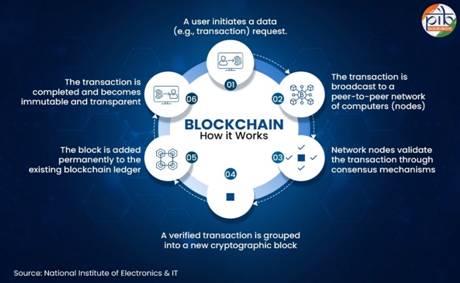
- 30 Oct 2025
In News:
Blockchain technology, once associated primarily with cryptocurrencies, has emerged as a transformative tool for establishing digital trust, enhancing transparency, and reducing systemic inefficiencies in governance. India, aiming to modernise its public service delivery architecture, has adopted a strategic approach through the National Blockchain Framework (NBF), launched in September 2024 with a budget of ?64.76 crore.
Understanding Blockchain Technology and Its Governance Utility
- Blockchain is a distributed, immutable and cryptographically secure ledger of transactions maintained across multiple nodes. Its inherent strengths—tamper resistance, decentralisation, and transparency—make it an ideal backbone for public data systems.
- India’s governance needs are best served by permissioned private blockchains, where authorised entities validate transactions while ensuring confidentiality. Other blockchain variants—public, consortium, and hybrid models—offer differing levels of access and decentralisation but are less suited for sensitive government datasets.
Core Architecture of the National Blockchain Framework
1. Vishvasya Blockchain Stack
At the heart of the NBF is the Vishvasya Blockchain Stack, an indigenous and modular platform offering:
- Blockchain-as-a-Service (BaaS) to enable rapid deployment of blockchain applications without the need for independent infrastructure.
- Distributed infrastructure across NIC data centres in Bhubaneswar, Pune, and Hyderabad for resilience and fault tolerance.
- Permissioned blockchain layer, ensuring participation only by verified entities.
- Open APIs and integration services that simplify connectivity with existing e-governance platforms.
2. NBFLite – Sandbox for Innovation
- NBFLite provides startups, researchers, and academic institutions with a controlled environment to prototype blockchain solutions using pre-configured smart contract templates for supply chains, certificates, and governance use cases.
3. Praamaanik – Mobile App Verification
- Praamaanik uses blockchain to verify the authenticity of mobile applications, protecting users from counterfeit apps and fraudulent customer support platforms.
4. National Blockchain Portal
- This serves as the unified gateway for guidelines, standards, and adoption roadmaps, promoting interoperability across sectors.
Blockchain-Enabled Chains Transforming Public Service Delivery
- Certificate and Document Chain: Government agencies use blockchain for secure issuance, storage, and verification of documents such as academic records, ration cards, driving licences, and birth/death certificates.Over 34 crore documents have been verified using this system.
- Logistics Chain: Used for tracking goods across supply stakeholders.Example: Karnataka’s Aushada system tracks medicines from manufacturers to hospitals, ensuring authenticity, preventing spurious drugs, and improving traceability.
- Property Chain: Immutable records of property transactions help reduce land disputes, establish ownership clarity, and expedite land transfers.
- Judiciary Chain and ICJS: Blockchain supports electronic delivery of summons, bail orders, and judicial notices.The Inter-operable Criminal Justice System (ICJS) integrates evidence, case files, and judicial documents across agencies for seamless coordination.
Sectoral Adoption by National Regulators
- TRAI employs Distributed Ledger Technology to monitor SMS transmission, reducing spam and enhancing regulatory compliance for over 1.13 lakh entities.
- RBI uses blockchain for its Digital Rupee (e?) pilot, demonstrating secure, traceable digital payments.
- NSDL has adopted blockchain for Debenture Covenant Monitoring, enabling time-stamped, tamper-proof monitoring of asset cover and compliance.
Capacity Building and Skill Development
MeitY has trained 21,000+ officials on blockchain applications. Academic initiatives—PG Diploma in FinTech & Blockchain, C-DAC’s BLEND programme, and FutureSkills PRIME—are developing specialised talent for India's blockchain workforce.
Way Forward
India is testing blockchain-based solutions for land records, GST chain, blood bank management, and PDS transparency. The NBF represents a strategic shift from fragmented digital systems to a unified trust-based digital governance model, positioning India as a global leader in blockchain-enabled public services.
UNESCO Global Education Report 2025
- 29 Oct 2025
In News:
The UNESCO Global Education Report 2025 offers a critical evaluation of global progress toward gender equality in education, exposing persistent disparities despite decades of international commitments. Although substantial improvements have been recorded since the 1995 Beijing Declaration, an alarming 133 million girls worldwide remain out of school, signalling unfinished global obligations.
Progress Achieved
- The report highlights significant gains in enrolment and access. Compared to 1995, 91 million more girls are in primary school and 136 million more are enrolled in secondary education.
- Tertiary education has witnessed the most dramatic progress, with women's enrolment tripling from 41 million to 139 million. These trends reflect global investments in universal education programmes, gender inclusion policies, and financial support mechanisms.
Regional Variations
Despite overall progress, regional disparities persist. Central and South Asia have achieved gender parity in secondary education, demonstrating effective policy interventions. Conversely, Sub-Saharan Africa and Oceania continue to lag, constrained by poverty, rural isolation, armed conflicts, and socio-cultural restrictions. In countries such as Mali and Guinea, lower secondary completion rates for girls remain below 20%, indicating severe structural inequities. In contrast, Latin America and the Caribbean show higher dropout rates among boys, underscoring region-specific challenges.
Quality and Inclusivity Deficits
The report stresses that enrolment gains alone do not translate into gender equality. Only two-thirds of countries have compulsory sexuality education at the primary level, and gender biases persist in textbooks and curricula. These embedded stereotypes perpetuate discriminatory norms and restrict girls’ aspirations and subject choices. Safety concerns—including school-related gender-based violence—further hinder learning continuity, particularly for adolescent girls.
Leadership Inequality
Although women comprise a significant proportion of the global teaching workforce, their presence in leadership positions remains limited. Only 30% of higher education leadership roles are held by women, revealing systemic barriers such as limited institutional support, leadership pipelines, and entrenched patriarchal structures. This leadership gap undermines gender-sensitive decision-making within education systems.
Economic and Social Implications
UNESCO reinforces that girls’ education is not merely a human rights imperative but an economic and socio-developmental necessity. The World Bank (2024) estimates that closing the gender gap in education could boost global GDP by $15–30 trillion, reflecting the massive economic potential of women’s participation in the workforce. Educated girls contribute to improved health outcomes, reduced poverty, enhanced labour force participation, and greater intergenerational development.
Way Forward
The report calls for gender-transformative policies—including equitable curricula, strengthened pathways for women in leadership, expanded sexuality education, safer learning environments, and evidence-based monitoring. Achieving the vision of the Beijing Declaration requires political will, sustained investments, and community-level engagement to dismantle structural barriers.
Can Rural Education Transform Migration Patterns? Reimagining Opportunities Beyond Cities
- 28 Oct 2025
In News:
Migration has been a central feature of India’s socio-economic evolution, but the growing exodus of rural youth to urban centres signals deep developmental imbalances. While migration is natural in a dynamic economy, its scale—particularly among young people—highlights failures in generating dignified rural livelihoods, aligning education with market needs, and creating resilient local ecosystems.
Understanding the Scale and Nature of Youth Migration
- Magnitude: Nearly 29% of India’s population are migrants; 89% originate from rural areas.
- Age Profile: Over half of all migrants are aged 15–25, indicating the loss of India’s most productive demographic.
- Pandemic Exposure: The 2020 Covid-19 lockdown forced 40 million workers to return home, revealing the fragility of informal urban employment.
- Gender Dynamics: Men migrate mainly for work, while 86.8% of women migrate due to marriage, reflecting persistent social norms.
- Socio-economic Profile: Higher migration rates among SC, OBC, and low-income groups show distress-driven mobility.
Drivers of Youth Migration from Rural India
a. Rural Employment Deficit
- Limited non-farm jobs; 49% migrants work as daily wagers and 39% in temporary industrial roles.
- Low returns from agriculture due to fragmented landholdings and climate exposure.
b. Education–Employment Mismatch
- Rural education lacks industry-relevant skills.
- Graduate unemployment exceeds 15% (CMIE 2024), indicating inadequate employability.
c. Income and Infrastructure Gaps
- Rural incomes fail to meet basic needs.
- Weak connectivity, inadequate credit access, and poor logistics hinder local enterprise formation.
d. Urban Pull Factors
- Cities offer perceived opportunities, higher wages, and mobility.
- However, migrants face unsafe housing, exploitation, and precarious informal jobs—88% lack social security.
Impact of Migration on Rural and Urban Landscapes
a. Urban Challenges
- Overcrowding, pollution, rising pressure on housing and infrastructure.
- Growth of slums in megacities like Delhi and Mumbai.
b. Rural Depopulation
- Loss of youth weakens agricultural productivity and local governance.
- Declining rural social capital affects community cohesion.
c. Social and Psychological Effects
- Family separation leads to stress, anxiety, and economic insecurity among dependents.
- Women migrants rarely enter the workforce, deepening gender gaps.
Policy Interventions and Initiatives
- MGNREGA ensures wage support during lean seasons, reducing distress migration.
- DDU-GKY, PMKVY provide vocational training to improve employability.
- PM-Mudra, Start-Up India, SVEP encourage rural entrepreneurship.
- 10,000 FPO initiative strengthens farmer collectives and value chains.
- BharatNet, PMGSY, rural BPOs expand digital and physical connectivity.
Way Forward: Reimagining Rural Education and Ecosystems
a. Integrating Education with Local Economies
- Embed vocational, digital, and agri-tech skills into rural curricula.
- Link schools and colleges to local enterprises and industries.
b. Diversifying Rural Non-Farm Sectors
- Develop employment in handicrafts, food processing, logistics, renewable energy, and agri-tourism.
c. Building Digital Ecosystems
- Invest in 5G connectivity, e-commerce platforms, tele-work hubs, and digital service centres.
d. Encouraging Local Entrepreneurship
- Promote success stories like Raigad’s BalaramBandagale to inspire reverse migration and rural innovation.
e. Strengthening Social Protection
- Ensure universal portability of PDS, health insurance, and pensions for mobile workers.
Conclusion
India must shift from a model where migration is a compulsion to one where it becomes a choice. Strengthening rural education, diversifying local economies, and empowering youth with market-ready skills can address structural causes of migration. A balanced rural–urban development framework—anchored in employment-linked learning, digital connectivity, and entrepreneurship—will help revitalise rural India and support inclusive, sustainable growth.
India’s Renewable Energy Transition: From Expansion to System Strength
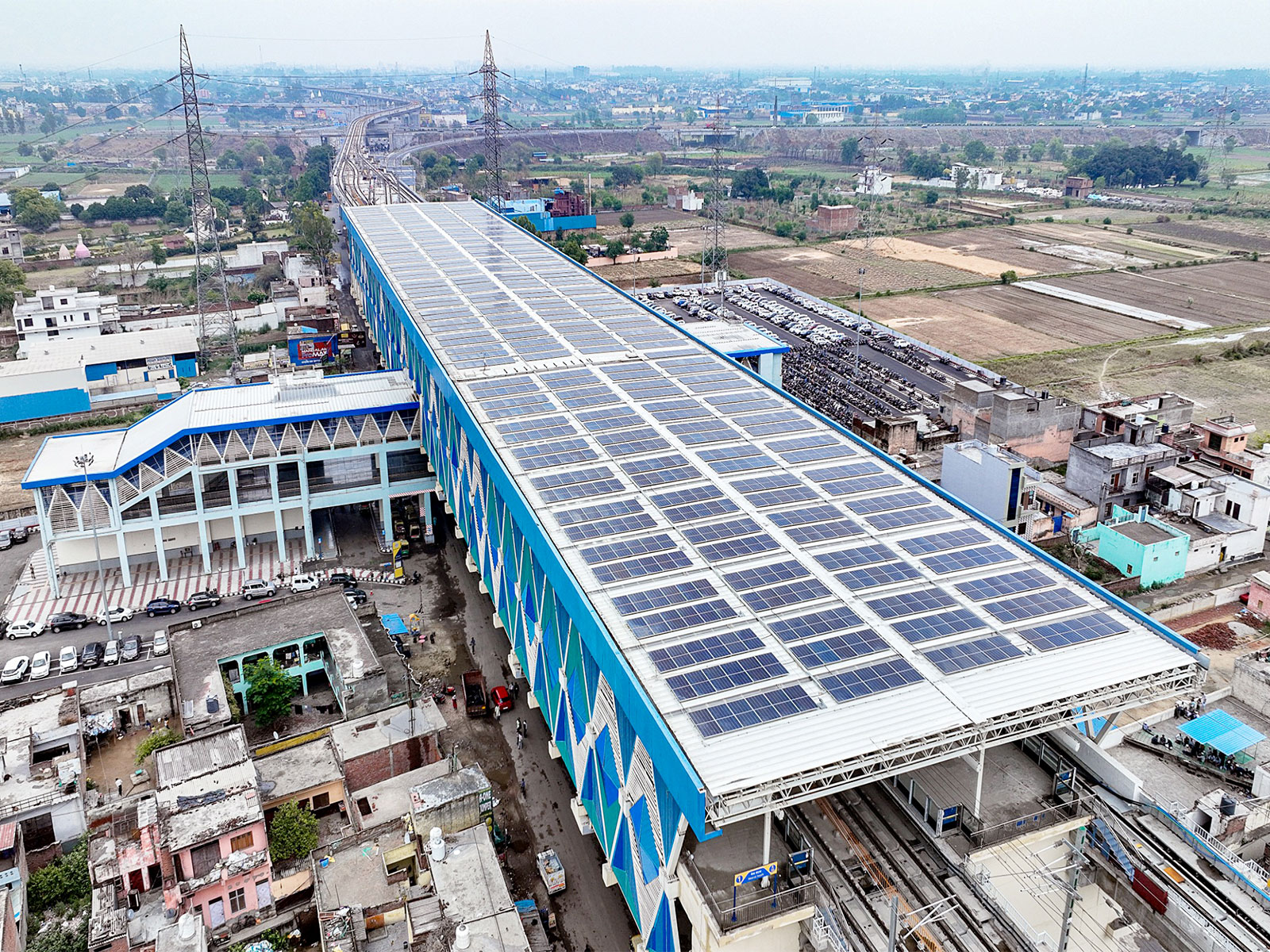
- 27 Oct 2025
In News:
India’s renewable energy journey has evolved from an era of rapid capacity expansion to one focused on creating a stable, resilient, and system-integrated clean energy ecosystem. With a target of 500 GW of non-fossil capacity by 2030, the country is moving from quantity to quality—shifting from mere capacity addition to building institutional, technical, and infrastructural strength capable of sustaining long-term decarbonisation.
Progress and Current Landscape
Over the past decade, India’s renewable energy capacity (excluding large hydro) has grown from around 35 GW in 2014 to over 197 GW in 2025, making it one of the world’s fastest-growing clean energy markets. The country continues to add 15–25 GW annually, driven by solar, wind, and hybrid installations. However, this phase of “rapid expansion” has revealed structural challenges — inadequate grid capacity, financing gaps, and the need for skilled manpower — necessitating a pivot toward “capacity absorption” and system integration.
From Speed to System Strength
The Ministry of New and Renewable Energy (MNRE) has emphasized that India’s renewable growth story is entering a new phase centered on system reliability, grid integration, and financial discipline. The focus now lies in synchronising renewable generation with transmission infrastructure, market mechanisms, and energy storage.
India’s grid is being reimagined through a ?2.4 lakh crore Transmission Plan for 500 GW, connecting renewable-rich states like Rajasthan, Gujarat, and Ladakh with industrial and urban demand centers. The Green Energy Corridors and planned High Voltage Direct Current (HVDC) transmission lines are expected to unlock over 200 GW of new capacity. The CERC’s 2025 General Network Access (GNA) regulations, introducing dynamic “solar-hour” and “non-solar-hour” access, will further optimise grid use and reduce congestion.
Building Institutional and Human Capacity
Capacity building in renewable energy involves strengthening human, institutional, and technical systems to manage grid variability, storage integration, and emerging technologies like offshore wind and green hydrogen. Institutions such as the National Institute of Solar Energy (NISE) and State Nodal Agencies (SNAs) are training engineers and regulators, while international collaborations with IRENA and GIZ are enhancing India’s technical knowledge base.
At the policy level, reforms such as Production-Linked Incentive (PLI) schemes for solar modules, domestic content requirements, and duties on imported cells are deepening India’s manufacturing ecosystem, reducing import dependence, and enhancing competitiveness.
Innovation and Market Mechanisms
India’s renewable transition is increasingly driven by hybrid projects, Round-the-Clock (RTC) renewable energy, battery energy storage systems (BESS), and Virtual Power Purchase Agreements (VPPAs). These innovations ensure dispatchable power, attract private capital, and strengthen market-based renewable trading. Additionally, the National Green Hydrogen Mission is linking renewables to industrial decarbonisation, while distributed solar and agrovoltaic projects under PM Suryaghar and PM KUSUM are expanding rural participation in the clean energy transition.
Challenges and the Way Forward
India faces challenges including skill shortages, limited training infrastructure, financing constraints, and coordination gaps among multiple agencies. Rapid technological evolution demands continuous upskilling and institutional flexibility. Financial reforms, transmission readiness, and greater private sector participation will be key to sustaining the current momentum.
Conclusion
India’s renewable energy story is maturing—from a race for capacity to a strategy for endurance. Policy focus has shifted from expansion to integration, ensuring that the next growth phase is more stable, dispatchable, and sustainable. By aligning infrastructure, innovation, and institutions, India is laying the foundation for a resilient 500 GW clean energy system by 2030, driving its march toward Viksit Bharat and global climate leadership.
16th BRICS Summit 2025
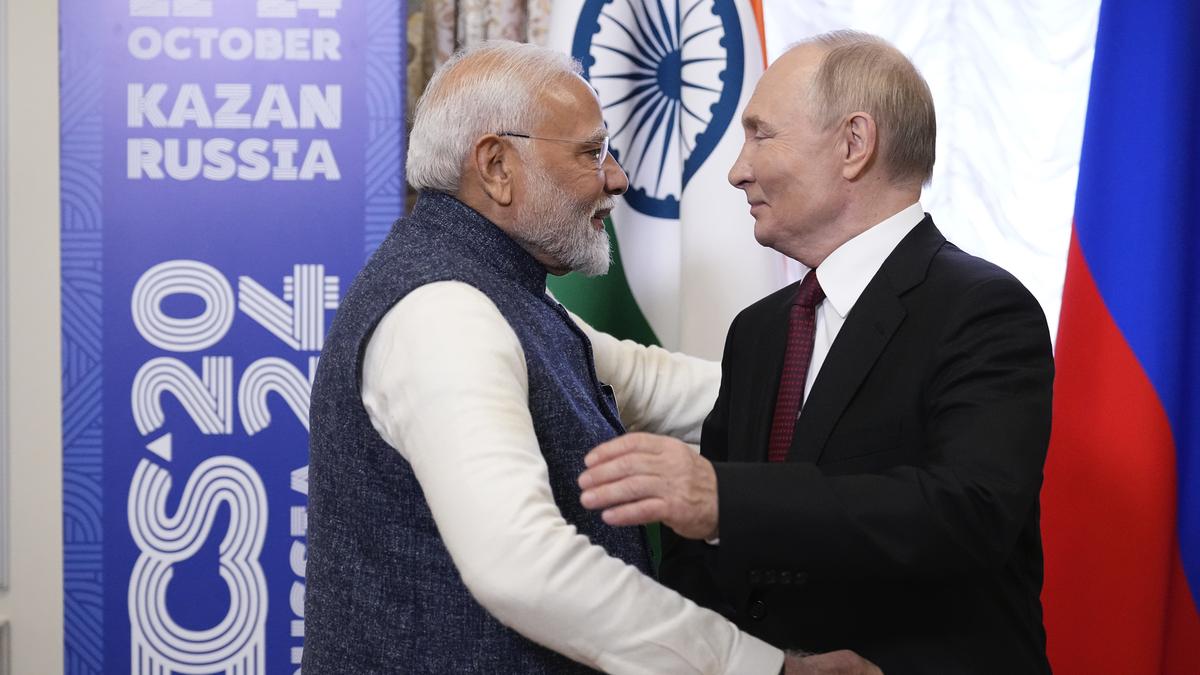
- 26 Oct 2025
In News:
- Prime Minister Narendra Modi attended the 16th BRICS Summit, hosted by Russia in Kazan, under the theme “Strengthening Multilateralism for Just Global Development and Security.”
- The summit brought together leaders from Brazil, Russia, India, China, and South Africa, alongside newly inducted members such as Egypt, Ethiopia, Iran, Saudi Arabia, and the United Arab Emirates, reflecting the bloc’s expanding global footprint.
Background and Evolution of BRICS
- The BRICS grouping originated as BRIC in 2006 following the St. Petersburg meeting between Russia, India, and China, and was later formalized at the Yekaterinburg Summit (2009).
- South Africa joined in 2011, transforming BRIC into BRICS.The most recent expansion in 2024 added five new members, representing a major step toward inclusivity and a stronger collective voice for the Global South.
Initially comprising 42% of the world’s population, 30% of global land area, 23% of GDP, and 18% of global trade, the expanded BRICS seeks to reshape global economic governance and reduce dependence on Western-led institutions.
Objectives and Role
The alliance aims to:
- Promote reform of multilateral institutions such as the UN, IMF, and World Bank to reflect contemporary global realities.
- Foster economic cooperation, technology sharing, and sustainable development.
- Strengthen South-South cooperation and enhance the collective influence of emerging economies in global decision-making.
- Advocate a multipolar world order grounded in equity and mutual respect.
Key Outcomes and Agenda of the 16th Summit
The Kazan summit focused on:
- Financial Independence from Western Systems: Members discussed reducing reliance on the US dollar and the SWIFT network, particularly after sanctions on Russia post-Ukraine conflict.
Countries are increasingly exploring local currency settlements, currency swaps, and building alternative payment systems. - Economic and Development Cooperation: Review of the functioning of the New Development Bank (NDB), which has financed projects worth billions in renewable energy, infrastructure, and social sectors.
The Contingent Reserve Arrangement (CRA), with a reserve pool of $100 billion, continues to serve as a financial safety net. - Multilateral Reform and Climate Action: Discussions focused on reforming global institutions, promoting resilient supply chains, and strengthening collective action against climate change.
- Technology and Innovation: Members emphasized cooperation in science, innovation, and digital connectivity, enhancing research partnerships through the BRICS Science, Technology, and Innovation Framework.
India’s Priorities
Prime Minister Modi highlighted India’s role as a bridge between the Global South and developed economies. India’s agenda included:
- Strengthening reformed multilateralism and inclusive growth models.
- Deepening economic and technological collaboration within the bloc.
- Promoting people-to-people exchanges and cultural cooperation to enhance mutual understanding.
The visit also reinforced the Special and Privileged Strategic Partnership between India and Russia, marking PM Modi’s second visit to Russia in 2025.
Kazan: Symbolism and Significance
- The summit venue, Kazan, often referred to as Russia’s “third capital”, represents the country’s multi-ethnic and multi-religious identity.
- Located at the confluence of the Volga and Kazanka rivers, Kazan is the capital of Tatarstan and a thriving centre of petrochemicals, IT, and defence industries.
- Its diverse cultural fabric—home to both Orthodox cathedrals and Islamic mosques—embodies Russia’s pluralism and outreach to the Islamic world.
Challenges Ahead
Despite its achievements, BRICS faces internal and external challenges:
- Economic asymmetry among members, with China’s dominance occasionally causing unease.
- Geopolitical frictions, particularly between India and China, complicate consensus-building.
- Slow institutional reforms due to entrenched global power structures.
- Divergent foreign policy orientations toward the West among members.
Conclusion
The 16th BRICS Summit in Kazan reaffirmed the bloc’s commitment to a multipolar, equitable, and inclusive global order.
By advancing financial autonomy, technological cooperation, and institutional reform, BRICS continues to evolve as a platform for the Global South to assert its collective voice.
For India, it remains a vital forum to shape global governance, enhance strategic partnerships, and strengthen its vision of “VasudhaivaKutumbakam”—the world as one family.
Labelling AI-Generated Content in India: Towards Responsible Digital Governance
- 25 Oct 2025
In News:
The Ministry of Electronics and Information Technology (MeitY) has proposed amendments to the Information Technology (Intermediary Guidelines and Digital Media Ethics Code) Rules, 2021, mandating the labelling and disclosure of AI-generated content on social media platforms. The move comes amid growing public concern over deepfakes and synthetic media, which have begun to challenge democratic discourse, individual privacy, and digital trust.
The Rise of AI-Generated Content and Deepfake Concerns
India is experiencing a rapid surge in the use of artificial intelligence (AI) for content creation across entertainment, advertising, and online communication. However, this technological boom has also led to the proliferation of deepfakes — hyper-realistic videos, images, and audio clips generated by AI that mimic real individuals or events.
The issue gained national prominence in 2023, when a manipulated video of a popular actor went viral, prompting outrage and prompting Prime Minister Narendra Modi to call deepfakes a new “crisis.” These incidents have exposed how synthetic content can be weaponised for political propaganda, misinformation, financial fraud, and reputational harm.
Key Provisions of the Draft Rules
The proposed amendments introduce a comprehensive framework to enhance transparency and accountability in digital content creation:
- Mandatory Self-Declaration:Users uploading content on platforms such as YouTube, Instagram, or X (formerly Twitter) must declare whether their material is AI-generated or synthetic.
- Dual Labelling Mechanism:
- Embedded Label: AI-generated visuals and audio must carry a visible watermark or label covering at least 10% of the surface area or duration.
- Platform-Level Label: A visible disclaimer will appear wherever such content is displayed online.
- Platform Accountability:If users fail to disclose synthetic content, platforms must proactively detect and label it using AI-based detection tools. Non-compliance could lead to loss of safe harbour protection under Section 79 of the IT Act, making intermediaries legally liable for misinformation.
- Metadata Requirement:AI-generated material must include a permanent, traceable metadata identifier embedded at the time of creation to ensure accountability.
- Scope of Application:The rule extends beyond social media to AI content generation tools like OpenAI’s Sora and Google’s Gemini, requiring built-in watermarking mechanisms.
Rationale and Policy Objectives
The policy aims to ensure that users in a democracy can distinguish between authentic and synthetic content. By mandating labelling and traceability, the government seeks to curb misinformation, protect democratic integrity, and uphold public trust in the digital ecosystem.
The ministry’s note emphasizes that AI-generated misinformation poses risks to national security, elections, and social stability, making proactive governance essential. Previously, such misuse was addressed under general impersonation and fraud provisions of the IT Act, 2000, but the evolving sophistication of generative AI tools now demands specific regulatory safeguards.
Global Context
India’s initiative aligns with global best practices.
- China (2025): Introduced mandatory AI labelling for deepfakes, voice synthesis, and chatbots with visible and hidden watermarks.
- European Union: Under its AI Act, mandates user notification when interacting with AI systems.
- United States: Developing federal standards for content authenticity and AI watermarking.
By adopting a binding legal framework, India positions itself among the early regulators of generative AI, setting a precedent for responsible innovation.
Implementation Challenges and the Way Forward
While the proposal has been broadly welcomed, challenges persist. Detecting AI-generated content across diverse languages and formats requires sophisticated detection infrastructure. Excessive compliance burdens may also affect startups and smaller creators in India’s expanding $12 billion AI ecosystem.
The government has invited public and industry feedback until November 6, 2025, signaling openness to iterative policy design. Successful implementation will depend on multi-stakeholder cooperation, technological innovation, and digital literacy among users.
Conclusion
The proposed amendments mark a decisive shift in India’s digital governance—from reactive moderation to preventive transparency. By mandating AI content labelling, India aims to balance technological innovation with ethical responsibility, ensuring that the age of artificial intelligence strengthens rather than undermines truth, democracy, and public trust.
Scheme to Attract ‘Star Faculty’ Amid Global Academic Shifts
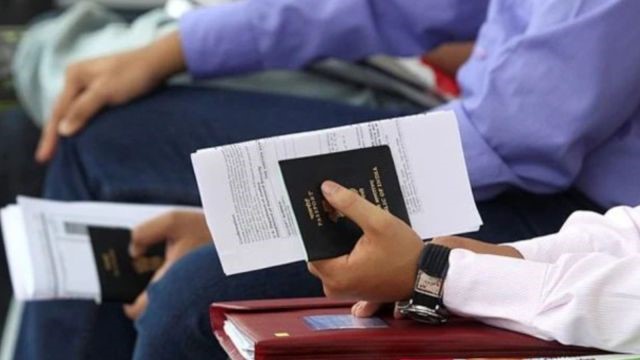
- 24 Oct 2025
In News:
India is formulating an ambitious new scheme to attract Indian-origin “star faculty” and researchers working in global universities to return and contribute to its domestic research and innovation ecosystem. The initiative, under discussion between the Principal Scientific Adviser’s Office, the Department of Higher Education, and the Departments of Science and Technology (DST) and Biotechnology (DBT), reflects the government’s push to position India competitively in the global race for scientific and academic excellence.
Background: India’s Research Landscape
- India has a strong tradition in science and higher education through premier institutions like the Indian Institutes of Technology (IITs), Indian Institutes of Science Education and Research (IISERs), and national laboratories under the DST and DBT. However, the country faces persistent challenges in retaining and attracting top global talent.
- India’s R&D expenditure remains around 0.7% of GDP, much lower than that of the U.S. (2.8%) and China (2.4%). Coupled with bureaucratic hurdles, modest salaries, and limited research autonomy, these factors have led to a steady outflow of skilled scientists and academics, often referred to as “brain drain.”
- Existing programmes such as the Visiting Advanced Joint Research (VAJRA) Faculty Scheme, Ramanujan Fellowship, and Ramalingaswami Re-entry Fellowship have attempted to link overseas Indian scholars with domestic institutions. However, participation has remained limited, prompting the need for a more comprehensive and long-term mechanism.
Key Features of the Proposed Scheme
The Star Faculty Scheme seeks to attract established Indian-origin researchers with strong academic and scientific credentials to work full-time or for extended periods in Indian institutions.
1. Targeted Recruitment:The initiative will focus on 12–14 strategic areas in science, technology, engineering, and mathematics (STEM) deemed vital for national capacity-building.
2. Financial and Institutional Incentives:Returning scholars are likely to receive substantial one-time set-up grants to establish laboratories and research teams. Institutions like the IITs have expressed support for providing operational flexibility and research autonomy.
3. Red-Carpet Ecosystem:The scheme aims to minimize bureaucratic delays by offering streamlined processes for housing, administrative support, and project funding. Experts emphasize that beyond salaries, a “red-carpet” experience—ease of living and working—is critical to attracting global talent.
4. Collaborative Networks:It will promote inter-institutional linkages between Indian and foreign universities, ensuring long-term collaboration rather than short-term exchanges.
5. Light-Touch Oversight and IP Clarity:A balanced governance framework will ensure academic freedom, transparent intellectual property ownership, and minimal reporting burdens, aligning with global research practices.
Global Context
The initiative comes amid significant shifts in global academia. In the United States, policies like the “Compact for Academic Excellence in Higher Education” under the Trump administration have tightened regulations on international students, race-based admissions, and university autonomy. Critics view these as constraints on academic freedom, prompting uncertainty among foreign faculty—including those of Indian origin.
Simultaneously, Europe is moving to enshrine academic freedom in law, while China and Taiwan continue to expand well-funded recruitment drives to attract overseas researchers. India’s new scheme aims to leverage this shifting academic landscape to bring back its global talent pool.
Structural Challenges
Experts highlight that India’s ability to compete globally will depend on addressing systemic issues:
- Non-competitive pay: A full professor in India earns roughly USD 38,000 annually, compared with USD 130,000–200,000 in the U.S. and USD 100,000 in China.
- Infrastructure gaps: Many universities still lack advanced laboratories and research autonomy.
- Bureaucratic hurdles: Lengthy approval processes discourage international collaboration.
The new programme aims to overcome these through multi-year appointments, flexible tenure, and transparent evaluation mechanisms.
Way Forward
If executed effectively, the Star Faculty Scheme could reverse the brain drain, strengthen India’s knowledge economy, and foster innovation-led growth. It can bridge the gap between academia and industry, promote technology transfer, and develop globally connected research ecosystems.
By offering world-class conditions, trust-based governance, and institutional flexibility, India has the opportunity to reimagine its academic landscape, positioning itself as a global hub for scientific talent and innovation in the 21st century.
Status of Elephants in India: New Census Establishes a Scientific Baseline for Conservation
- 23 Oct 2025
In News:
The Wildlife Institute of India (WII) has released its report titled “Status of Elephants in India”, marking a new chapter in the country’s elephant conservation efforts. The study estimates 22,446 elephants across four major landscapes — the first time a DNA-based census method has been used. Although the figure appears lower than the 2017 estimate of 29,964 elephants, experts clarify that this does not represent a population decline but a fresh scientific baseline for future monitoring.
Evolution of Elephant Population Estimation in India
India’s elephant counts have evolved significantly since the first census in 1929 in the then United Province (now Uttar Pradesh and Uttarakhand). Early surveys relied on direct visual counts and averaging of sightings. With the launch of Project Elephant in 1992, the estimation process became more structured, with five-yearly assessments using methods such as total count, dung count, and transect sampling.
However, since different States adopted varied techniques, results were often inconsistent and incomparable. To overcome this, synchronised elephant censuses were conducted in 2005, 2010, and 2017 using uniform methods like total count and line transect dung count, but observer bias and overcounting remained major issues.
Recognising these limitations, India adopted a new scientific framework under the Synchronous All-India Elephant Estimation (SAIEE) 2021–25, shifting from visual to genetic sampling for more accurate and comparable results.
SAIEE 2021–25: A Scientific Overhaul
The SAIEE 2021–25 represents the most comprehensive and methodologically advanced elephant census in India. The country was divided into 100 sq. km cells, further split into 4 sq. km grids, each uniquely coded to ensure spatial accuracy. Enumerators covered over 6.6 lakh km, surveying nearly 1.9 lakh transects, and collected 21,056 dung samples for DNA extraction.
The census was carried out in three phases:
- Field data collection on animal signs, dung, vegetation, and human disturbances.
- Habitat and human impact assessment, including forest cover and patch size.
- Spatial abundance modelling using habitat and human interface data.
This shift to DNA-based identification eliminates duplication errors, allowing scientists to create a uniform national baseline for long-term monitoring and conservation.
Findings: The Landscape of Elephants
The report identifies four major elephant-bearing regions in India:
- Western Ghats (Karnataka, Kerala, Tamil Nadu) – The strongest habitat, hosting 11,934 elephants (53%), with Karnataka alone having 6,013.
- North Eastern Hills and Brahmaputra Flood Plains – About 22% of the national population, led by Assam with 4,159 elephants.
- Shivalik Hills and Gangetic Plains – Around 9%, mostly in Uttarakhand.
- Central India and Eastern Ghats – About 8%, with Odisha as a key habitat.
This highlights the Western Ghats as India’s most critical elephant stronghold, while the Northeast remains vital for transboundary populations.
Emerging Challenges: Fragmentation and Conflict
The report warns that habitat fragmentation due to commercial plantations, mining, linear infrastructure, and encroachments is severely impacting elephant movement. This has triggered increasing human-elephant conflict, as herds venture into new areas in search of food and connectivity.
In Karnataka, Tamil Nadu, and Kerala — which together host the majority of India’s elephants — conflicts have led to hundreds of human and elephant fatalities. Similar patterns are emerging in Andhra Pradesh and parts of central India, where elephants have recolonised regions after nearly two centuries.
Conservation Outlook
Experts emphasise that habitat connectivity and coexistence must be central to future conservation strategies. The new DNA-based baseline offers a reliable foundation for policy interventions, habitat restoration, and conflict mitigation.
Community participation, awareness programmes, and integration of Elephant Corridors under Project Elephant are essential to ensure long-term survival of Elephas maximus in India.
Conclusion
India’s transition to a DNA-based elephant census marks a scientific milestone in wildlife monitoring. While the numbers suggest a smaller population than before, the shift represents a more precise and globally aligned approach to conservation. With over half of Asia’s elephants residing in India, the findings of the WII’s study underscore an urgent need to balance development with ecological sensitivity, ensuring that India’s national heritage animal continues to thrive in its natural habitats.
Government’s Strategy to Boost Defence Exports and Domestic Manufacturing

- 22 Oct 2025
In News:
Defence Minister Rajnath Singh recently announced the government’s target to expand India’s defence manufacturing ecosystem to a valuation of ?3 lakh crore and enhance defence exports to ?50,000 crore by 2029.This marks a significant step in India’s vision of transforming from the world’s largest arms importer to a global defence manufacturing and export hub.
About the Initiative
The plan represents a strategic roadmap to strengthen India’s indigenous defence production base while increasing global competitiveness. It aligns with the objectives of Atmanirbhar Bharat and Make in India initiatives in the defence sector.
Key Features and Focus Areas
1. Private Sector Integration
- Encouraging partnerships between private defence manufacturers, Defence Research and Development Organisation (DRDO), and Defence Public Sector Undertakings (DPSUs).
- Collaboration with foreign Original Equipment Manufacturers (OEMs) to facilitate joint ventures, co-development, and technology transfer.
- Promoting participation in the Defence Industrial Corridors in Uttar Pradesh and Tamil Nadu to attract domestic and foreign investment.
2. Indigenisation of Defence Platforms
- Expanding indigenous production of major systems such as:
- LCA Tejas fighter aircraft
- Akash surface-to-air missiles
- Pinaka multi-barrel rocket launchers
- Advanced Light Helicopters (ALH) and Arjun tanks.
- Focus on import substitution through locally developed components, sensors, and sub-systems.
3. Policy and Regulatory Reforms
- Simplification of defence procurement procedures (DPP) and Defence Acquisition Procedure (DAP) to ensure faster clearances.
- Streamlined export licensing and authorisation through a single-window system.
- Incentivisation under Make-I, Make-II, and iDEX (Innovations for Defence Excellence) programmes.
- Enhanced funding for start-ups and MSMEs in defence innovation under the Technology Development Fund (TDF).
4. Skill Development and Research
- Establishment of specialised defence education and skilling institutes, such as Symbiosis Skills and Professional University, to build a trained workforce.
- Promotion of R&D collaboration between academia, industry, and DRDO to accelerate innovation in next-generation technologies like AI, robotics, and autonomous systems.
5. Operational Validation
- Indigenous systems have been successfully deployed in real operations—such as Operation Sindoor, which demonstrated the combat readiness and reliability of domestically produced defence equipment.
- Strengthening of quality assurance and field validation processes to enhance global trust in Indian defence products.
Strategic Significance
- Economic Growth:The initiative will boost industrial output, exports, and employment, contributing to India’s defence industrial self-reliance and GDP growth.
- Global Competitiveness:Positions India as a net defence exporter, catering to friendly nations in Asia, Africa, and Latin America.
- National Security:Reduces dependence on foreign arms imports and enhances strategic autonomy in critical technologies.
- Technological Innovation:Encourages indigenous innovation and the development of dual-use technologies benefiting both defence and civilian sectors.
- Geopolitical Leverage:Expanding defence exports strengthens India’s diplomatic ties through defence diplomacy and builds strategic partnerships with friendly nations.
Challenges Ahead
- Need for faster project implementation and clearer export procedures.
- Addressing R&D funding gaps and improving private sector participation.
- Ensuring competitive pricing and quality to meet global standards.
- Streamlining coordination among MoD, DRDO, DPSUs, and private players.
Way Forward
- Promote joint ventures with global defence majors to enhance technology absorption.
- Strengthen testing and certification infrastructure to meet international benchmarks.
- Expand defence offset policies to attract advanced technologies.
- Encourage defence start-ups and innovation clusters for rapid prototyping and scalable production.
Conclusion
India’s ambitious target to achieve ?3 lakh crore in defence production and ?50,000 crore in exports by 2029 reflects a paradigm shift toward self-reliance, innovation, and global competitiveness in defence manufacturing.
With sustained policy reforms, technological investment, and industry-academia synergy, India is well-positioned to emerge as a reliable global supplier of advanced defence systems and a pillar of regional security.
Poverty Measurement in India: Revisiting the Rangarajan Line and the Rise of Multidimensional Poverty
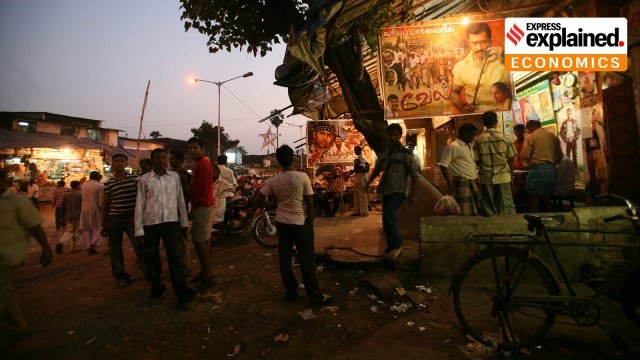
- 21 Oct 2025
In News:
The debate on poverty measurement in India has gained renewed significance with the Reserve Bank of India’s Department of Economic and Policy Research (DEPR) updating state-wise poverty estimates using the 2022–23 Household Consumption Expenditure Survey (HCES). This marks the first major recalibration of the C. Rangarajan Committee’s poverty line, originally formulated in 2014, and reflects shifting paradigms in assessing deprivation in India.
Revisiting the Rangarajan Framework
The Rangarajan Committee was tasked with redefining poverty beyond the earlier Tendulkar methodology. It fixed the poverty line at ?972 per capita per month in rural India and ?1,407 in urban areas (2011–12 prices), categorising about 29.5% of the population as poor. Its poverty basket focused on minimum nutritional requirements along with basic spending on health, education, fuel, clothing, and rent. Unlike later approaches, it offered a strict consumption-based benchmark rooted in monetary expenditure.
Updated Poverty Trends: State-wise Insights
RBI economists reconstructed poverty lines for 20 major states based on HCES 2022–23 data using a new price index aligned with the original poverty line basket rather than Consumer Price Index weights. The findings highlight remarkable improvements, with major reductions observed in traditionally backward states:
- Odisha: Rural poverty fell from 47.8% (2011–12) to 8.6% (2022–23)
- Bihar: Urban poverty dropped from 50.8% to 9.1%
- Kerala: Rural poverty declined to 1.4%; Himachal Pradesh’s urban poverty fell to 2%
- Lowest poverty levels: Rural Himachal Pradesh (0.4%) and urban Tamil Nadu (1.9%)
- Highest poverty levels: Chhattisgarh (25.1% rural; 13.3% urban)
These transformations reflect improved rural infrastructure, livelihood programmes, PDS reforms, and social transfers. Yet persistent poverty in central Indian states underscores uneven development and structural gaps in employment quality, agrarian distress, and welfare delivery.
Methodological Continuity and Debate
Poverty estimates vary sharply across institutions, illustrating the sensitivity of measurement frameworks:
- SBI (2023–24): ~4–5% poverty
- World Bank (2022): 10.2% poverty in 2019
- IMF (2022): 0.8% in 2019 (including food transfers)
These disparities stem from differing inflation adjustments, survey datasets, and treatment of welfare subsidies. They also fuel a longstanding debate: can income-based poverty capture human deprivation comprehensively, especially in a transforming economy with evolving consumption patterns?
Shift to Multidimensional Poverty
Official focus has now decisively shifted to multidimensional poverty aligned with SDG frameworks. India’s Multidimensional Poverty Index (MPI) evaluates deprivation across twelve indicators spanning health, education, and living standards. According to NITI Aayog (2024), 24.82 crore people exited multidimensional poverty between 2013–14 and 2022–23, reducing MPI from 29.17% to 11.28%. This highlights the impact of welfare architecture—PDS expansion, Ujjwala, Saubhagya, Jal Jeevan Mission, Swachh Bharat, and financial inclusion.
Way Forward
- Regular poverty line updates reflecting new consumption patterns and regional price realities
- Integration of income and multidimensional metrics for balanced welfare planning
- Timely survey releases and transparent data to strengthen evidence-based policymaking
- Targeted interventions for lagging states like Chhattisgarh, Jharkhand, and parts of UP
- Leveraging digital delivery systems to minimise leakages and enhance inclusivity
Conclusion
India’s poverty trajectory reflects a dual narrative—sharp improvements driven by welfare provisioning and growth, yet uneven progress across regions and methodological contestation. While the Rangarajan line continues to serve as a benchmark for monetary poverty, the dominance of multidimensional metrics signals a shift towards understanding deprivation as a matter of human capability, not merely income. Ensuring sustained and equitable poverty reduction will require methodological rigor, policy innovation, and heightened focus on lagging geographies to achieve inclusive development.
Google’s $15 Billion AI Data Centre in Andhra Pradesh
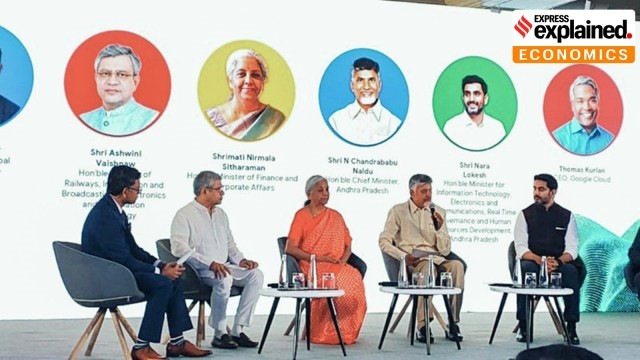
- 18 Oct 2025
In News:
Google’s announcement of a USD 15-billion investment to establish an Artificial Intelligence (AI) data centre in Visakhapatnam marks a transformational moment in India’s digital infrastructure landscape. The initiative, the largest single investment by Google in India, comes amid a geo-economic context of recalibrating India-US relations and the government’s emphasis on technological self-reliance and swadeshi digital systems. The project positions India as an emerging hub in global AI capability and computing power.
Why AI Data Centres Matter
AI-focused data centres differ fundamentally from conventional facilities. While traditional data centres are built around CPU-based servers to support cloud storage, websites, and enterprise applications, AI data centres rely on high-performance GPUs to handle data-heavy and compute-intensive workloads such as generative AI, advanced analytics, image/video processing, and deep-learning models. This makes them significantly more power-intensive and infrastructure-demanding, requiring robust energy supply and advanced cooling systems.
According to estimates cited by Google, the Visakhapatnam AI hub is expected to add at least USD 15 billion to the US GDP between 2026 and 2030 through increased AI adoption and cloud-driven activity, demonstrating the cross-border economic impact of such investments.
Partnerships and Green Infrastructure
The facility is being developed in partnership with AdaniConneX and Airtel, leveraging the same backbone used for Google’s global platforms like Search, YouTube, and Workspace. The project includes building a major subsea cable landing station, linking eastern India to Google’s expansive global cable network, enhancing international data routes and reducing latency.
A key dimension of the partnership lies in sustainable power and energy independence. AdaniConneX, a joint venture between Adani Enterprises and EdgeConneX, will provide 100% clean energy, supported by new transmission lines, renewable generation, and energy storage facilities in Andhra Pradesh. This aligns with India’s climate commitments and enhances grid resilience.
Economic Impact and Capacity Expansion
India’s data centre industry, currently valued at ~USD 10 billion with USD 1.2 billion in FY24 revenue, is projected to add 795 MW of capacity by 2027 — reaching 1.8 GW. Google’s project alone is expected to generate nearly 1.88 lakh direct and indirect jobs, strengthening regional development and high-skilled employment.
However, high capital costs and limited job intensity remain policy concerns. Approximately 40% of capex in data centres goes towards electrical systems, and 65% of operating costs are attributed to electricity, with ~?60–70 crore required per MW of capacity. This necessitates a careful assessment of incentives and long-term strategic benefits.
Energy Security and the Nuclear Option
The International Energy Agency (IEA) predicts that global data-centre electricity demand may double by 2026, raising questions around sustainability. While renewable energy remains the mainstay, its intermittency has prompted policy consideration of nuclear energy as a round-the-clock clean power source — a trend already visible in the United States and now emerging in India’s energy strategy.
Conclusion
Google’s AI hub in Visakhapatnam represents a strategic convergence of digital infrastructure, clean-energy innovation, and global technological cooperation. For India, it underscores the dual challenge of expanding digital capability while ensuring energy security and environmental sustainability. The success of this initiative will influence India’s journey toward becoming a global digital superpower underpinned by resilient, sovereign, and sustainable compute ecosystems.
India’s First DNA-Based Elephant Census: Population Declines, New Scientific Baseline Established
- 17 Oct 2025
In News:
- India has released the results of its first-ever DNA-based elephant population assessment under the Synchronous All-India Elephant Estimation (SAIEE) 2021–25.
- The report estimates 22,446 wild elephants, marking an 18% decline from the 2017 figure of 27,312. However, the government stresses that the numbers are not directly comparable due to a shift to a more advanced, genetic mark-recapture methodology, establishing a new population baseline.
Significance of Elephants in India
- India hosts over 60% of the global Asian elephant population, making it critical to the species’ global survival.
- Elephants are Keystone species, maintaining forest ecosystem health.
- They are deeply woven into Indian cultural, religious, and ecological heritage.
Distribution
Elephants in India inhabit four major landscapes:
|
Region |
Estimated Population (2025) |
|
Western Ghats |
11,934 (largest population) |
|
North Eastern Hills & Brahmaputra Floodplains |
6,559 |
|
Shivalik Hills & Gangetic Plains |
2,062 |
|
Central India & Eastern Ghats |
1,891 |
Top States (2025)
- Karnataka: 6,013
- Assam: 4,159
- Tamil Nadu: 3,136
- Kerala: 2,785
- Uttarakhand: 1,792
- Odisha: 912
These states collectively support over 80% of India’s elephant population.
How the DNA-Based Census Was Conducted
This was India’s most comprehensive elephant survey to date, combining:
- DNA fingerprinting of dung samples
- Satellite mapping
- Ground-based habitat surveys
Key Technical Inputs
- ~21,000+ dung samples collected across 20 states
- 4,065 individual elephants genetically identified
- Forests divided into 100 sq km grids, further sub-divided for finer sampling—adapted from India’s tiger census model
- Survey covered 6.7 lakh km of forest trails and 3.1 lakh dung plots
This non-invasive method is statistically robust compared to earlier sighting-based estimates.
Key Findings
- Estimated Population: 22,446 (range: 18,255 – 26,645)
- Western Ghats largest stronghold
- Population decline observed, though partly attributed to more accurate methodology
- Significant habitat fragmentation and corridor disruption noted
Major Threats
- Habitat loss & fragmentation from agriculture, mining, infrastructure and linear projects
- Human-elephant conflict leading to casualties on both sides
- Poaching and retaliatory killings
- Disruption of migration corridors by rail lines, highways, power fences
- Invasive species and land-use change (especially Western Ghats and Northeast)
Legal Protection & Conservation Measures
- Status: Endangered (IUCN)
- Legal Protection: Schedule I — Wildlife (Protection) Act, 1972; Appendix I — CITES
- Key Initiatives
- Project Elephant (1992)
- 101 Elephant Corridors Programme
- Gaj Yatra Awareness Campaign
- Use of technology: satellite tracking, GIS, camera traps, M-STRiPES-like monitoring
The government is now working on Project Elephant 2.0 to strengthen habitat connectivity and conflict mitigation through community-based conservation.
Significance of the New Baseline
- Establishes a scientific foundation for long-term population monitoring
- Enables integration of genetic, ecological & spatial data
- Aligns with global best practices in wildlife conservation
- Crucial for revising policies on corridor protection, land-use planning, and conflict reduction
2025 Nobel Prize in Economic Sciences: Understanding Innovation-Driven Growth

- 16 Oct 2025
In News:
The 2025 Nobel Prize in Economic Sciences has been awarded to Joel Mokyr, Philippe Aghion, and Peter Howitt for their seminal contributions to explaining how innovation drives long-term economic growth. Their work collectively answers a fundamental question in development economics: why has sustained growth become the norm in the last two centuries, despite millennia of stagnation? While Mokyr approaches the issue through economic history, Aghion and Howitt construct a formal model illustrating the dynamics of innovation and competition in modern economies.
Mokyr’s Framework: Useful Knowledge and Openness to Change
Joel Mokyr argues that economic stagnation persisted through most of human history because innovation lacked a strong scientific foundation. Prior to the Industrial Revolution, technological progress was primarily prescriptive—people knew how to produce goods but not why processes worked as they did. This limited systematic improvement.
The transformation began during the Scientific Revolution (16th–17th centuries) when controlled experimentation, measurement, and reproducibility became central to knowledge creation. This generated “useful knowledge”—a synergy of propositional (scientific principles) and prescriptive (practical techniques) knowledge. Examples include improvements in the steam engine driven by insights into atmospheric pressure and advancements in steel production based on understanding carbon reduction in iron.
However, knowledge alone was not sufficient. Societal openness to change, a hallmark of Enlightenment thought, enabled technological disruption. Acceptance of new ideas, weakening of entrenched elites, and institutional reforms—from the British Parliament curbing aristocratic privileges to society’s rejection of Luddite resistance to machinery—allowed innovations to diffuse widely. According to Mokyr, skills-based human capital and a culture supportive of disruption are crucial pillars of sustained growth.
Aghion–Howitt’s Creative Destruction Model
Drawing on Joseph Schumpeter’s concept of creative destruction, Aghion and Howitt develop a rigorous macroeconomic model explaining how innovation displaces old technologies and firms, generating productivity gains. Their model shows that firms invest in research and development (R&D) to secure temporary monopoly power through patents. This monopoly incentivizes innovation, yet it is continually threatened by newer technologies. Thus, growth emerges from a constant cycle of competition, firm turnover, and technological leaps.
Importantly, their general equilibrium framework links household savings, financial markets, production decisions, and innovation incentives, demonstrating that micro-level disruptions are essential for macro-level stability. Empirical trends—such as high annual firm entry and exit rates in developed economies—support their argument.
Policy Implications
The Nobel findings highlight key contemporary debates:
- R&D Subsidies: Innovation has positive spillovers beyond private profit. Public funding can correct under-investment, but excessive subsidies risk waste where gains are marginal.
- Social Safety Nets: Creative destruction benefits economies but harms displaced workers and firms. A balanced welfare ecosystem ensures societies remain open to technological change.
- Skilling and Human Capital: To convert ideas into output, governments must invest in education, vocational training, and research ecosystems.
Conclusion
The 2025 Nobel laureates collectively establish that economic growth is neither automatic nor guaranteed—it is the result of science-based knowledge creation, institutional openness, and dynamic competition. For emerging economies like India, fostering innovation-driven growth requires strong research systems, regulatory flexibility, investment in human capital, and social policies that cushion transition shocks. Their work underscores that sustainable progress lies in embracing change, not resisting it.
India’s Grain-Driven Ethanol Transition: Shifting Paradigms in Biofuel Policy
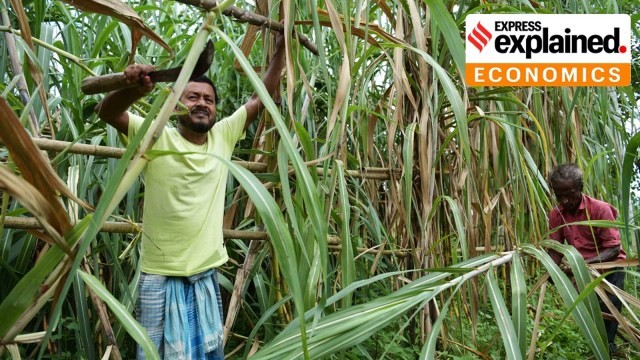
- 15 Oct 2025
In News:
India’s ethanol blending programme, originally launched to reduce oil imports and stabilise the sugar industry, is undergoing a transformative shift. What began as a sugarcane-centric initiative has evolved into a grain-based ethanol ecosystem, reflecting structural changes in agricultural markets, energy policy, and rural industrialisation. For the first time, grain-derived ethanol—predominantly from maize—has surpassed sugarcane-based production, marking a pivotal moment in India’s biofuel sector.
Evolution of Ethanol Blending
The Ethanol Blending Programme (EBP) was initially designed to create additional revenue streams for sugar mills and ensure timely payments to cane growers. Early production relied on C-heavy molasses, a by-product of sugar extraction. Policy reforms in 2018 incentivised diversion of B-heavy molasses and even direct cane juice toward ethanol, raising supplies from 38 crore litres in 2013-14 to nearly 189 crore litres by 2018-19, and increasing blending levels from 1.6% to nearly 5%. This stabilised the sugar economy and boosted rural incomes.
Rise of Grain-Based Ethanol
A crucial turning point came when the government permitted ethanol production from grains such as maize, rice, and damaged foodgrains, offering differential pricing to attract investment. Grain-based distilleries rapidly expanded across Punjab, Haryana, Bihar, Madhya Pradesh, Maharashtra, Karnataka, and other states, with over ?40,000 crore invested in facilities capable of using multiple feedstocks.
By 2023-24, of the 672.49 crore litres supplied to Oil Marketing Companies (OMCs), almost 60% came from grains, with maize accounting for the largest share. In 2024-25, grain-based ethanol procurement is expected to reach 620 crore litres, with maize alone contributing about 420 crore litres. Drought-induced sugarcane shortages and more attractive prices—?71.86 per litre for maize-based ethanol versus ?57.97–65.61 per litre for cane-based routes—accelerated the shift.
Capacity and Policy Dynamics
India today hosts 499 distilleries with an annual ethanol capacity of 1,822 crore litres. Against a 20% blending target, OMCs sought 1,050 crore litres for 2025-26, but received offers exceeding 1,776 crore litres—signalling emerging overcapacity. While this capacity enhances energy security and reduces crude imports (over $160 billion annually), it introduces new challenges in balancing supply, food security, and price stability.
Challenges: Food Security, Sustainability, and Market Balance
India now faces a classic food-versus-fuel dilemma. Producing ~420 crore litres of maize ethanol consumes over 11 million tonnes of maize, nearly 26% of national output. With maize being vital for poultry and livestock feed, diversion to fuel can raise feed costs and food inflation. Similarly, viability of rice-based ethanol hinges on surplus FCI stocks—an uncertain variable.
Environmental concerns are also emerging. While ethanol reduces carbon emissions, grain-based production increases pressure on water, land, and fertiliser use, particularly in maize-growing regions.
Way Forward
Policy refinements are underway to ensure a balanced biofuel strategy. A dual-feedstock approach—leveraging both cane and grains—along with scaling second-generation (2G) biofuels from agricultural waste, is expected to drive future growth. Adequate stock monitoring, sustainable cultivation practices, and technological innovation will be critical for achieving the 20% blending target by 2025-26 without compromising food security.
Conclusion
India’s ethanol revolution demonstrates strategic economic diversification, rural industrialisation, and commitment to energy transition. However, sustaining this momentum requires calibrated policies aligning energy security with agricultural sustainability, food availability, and environmental stewardship—critical considerations for a resilient and self-reliant biofuel future.
Gender-Affirming Care (GAC)

- 14 Oct 2025
In News:
India has witnessed significant legal milestones in recognising the rights of transgender and gender-diverse persons, most notably the NALSA v. Union of India (2014) judgement affirming gender self-identification and the Transgender Persons (Protection of Rights) Act, 2019. However, the lived reality of transgender communities remains marked by deep social exclusion, stigma, and poor health outcomes. Among these, mental health remains the most neglected dimension, despite clear evidence linking social affirmation and access to gender-affirming care (GAC) with substantial improvements in wellbeing.
The Mental Health Crisis
Transgender individuals face disproportionate psychological distress arising from discrimination, violence, marginalisation, and denial of identity. Recent national-level studies indicate that 31% of transgender persons in India have attempted suicide, nearly half before age 20. Rates of depression, anxiety, and self-harm are significantly higher than in the general population. Research globally—including evidence from JAMA Network Open (2023)—confirms that timely access to gender-affirming interventions markedly reduces gender dysphoria, suicidal ideation, and depression, while improving life satisfaction and functioning.
What Gender-Affirming Care Encompasses
Gender-affirming care is a continuum of social, medical, and psychological support that enables individuals to live in alignment with their gender identity. It ranges from basic respect for chosen names and pronouns to counselling, hormone therapy, and surgical interventions when desired. International bodies, including the World Health Organization, recognise GAC as medically necessary, not elective, owing to its direct link to mental and physical health. Importantly, GAC is rooted in dignity and self-determination—core to Article 21’s right to life and dignity under the Constitution of India.
Barriers to Access
Despite recognition in law, access to GAC in India remains severely limited:
- Scarce trained providers and absence of standardised national treatment protocols
- Financial barriers: surgeries costing ?2–?8 lakh and hormone therapies ?50,000–?70,000 annually
- Under-implementation of Ayushman Bharat TG Plus, with limited empanelled hospitals
- Stigma in healthcare settings leading to refusal of treatment or discriminatory behaviour
- Rising cases of unsupervised hormone use, causing serious health complications including organ damage
Policy blind spots also hinder progress; the absence of transgender-specific data in major surveys like NFHS and NSSO leads to exclusion from mainstream health planning and welfare schemes.
Societal and Health Consequences
When GAC is inaccessible, the consequences are profound—heightened mental illness, economic precarity, and social alienation. Research from Indian institutions such as TISS has documented widespread discrimination in healthcare settings, with 65% of trans youth reporting some form of refusal or mistreatment. Such systemic barriers reinforce cycles of poverty, homelessness, and deteriorating health.
Policy Priorities and Way Forward
Ensuring equitable access to gender-affirming care requires a rights-based, public health-driven framework. Key priorities include:
- Integrating GAC into Ayushman Bharat with free or subsidised access in public hospitals
- Establishing national clinical guidelines and training medical personnel in gender-affirming practice
- Strengthening trans-led community institutions for outreach, mental health support, and navigation
- Mandating inclusive insurance coverage for hormone therapy and surgeries
- Building robust data systems to guide policy and budget allocations
- Launching public sensitisation campaigns to combat stigma
- Replicating successful state models such as Tamil Nadu’s gender clinics and Kerala’s Transgender Cell
Conclusion
Gender-affirming care is fundamental to the right to health, dignity, and equality. India’s progress in legal recognition must now translate into accessible, affordable, and stigma-free health services. Achieving genuine mental health equity and social justice demands urgent integration of gender-affirming care into primary healthcare systems. Empowering transgender persons to live authentically is not merely a medical intervention—it is a constitutional and moral imperative for an inclusive, humane, and equitable India.
Credit Reforms to Deepen Financial Markets
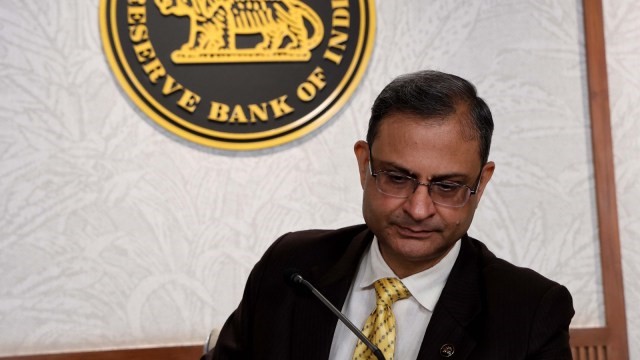
- 13 Oct 2025
In News:
India’s journey toward Viksit Bharat 2047 hinges on simultaneously nurturing human capital and modernising financial institutions. Two recent developments reflect this integrated approach: the Viksit Bharat Buildathon 2025 and the Reserve Bank of India’s initiatives to strengthen financial markets and internationalise the rupee. Together, they illustrate India's twin strategy of empowering youth as innovation leaders while deepening economic capacity and regional influence.
Fostering a Culture of Innovation: Viksit Bharat Buildathon 2025
- The Viksit Bharat Buildathon, launched by the Ministry of Education in collaboration with NITI Aayog’s Atal Innovation Mission, is India’s largest school-level hackathon, engaging 1 crore students across classes 6–12.
- Aligned with NEP 2020, it aims to build problem-solving aptitude and innovation competencies from grassroots levels. Students work in teams to design prototypes based on four themes central to India’s development discourse—Atmanirbhar Bharat, Swadeshi, Vocal for Local, and Samriddh Bharat.
- The event adopts a phased structure: registrations (September), nationwide live build on 13 October 2025, and final evaluation by December. With Rs 1 crore award pool and dedicated mentorship from innovation networks and higher education institutions, it incentivises early exposure to experiential learning, creativity, and entrepreneurship. Importantly, it prioritises participation from Aspirational Districts, tribal belts, and frontier regions, promoting inclusivity in innovation ecosystems.
- By integrating rural and underserved communities, the initiative aligns with the principle of technology-enabled social justice and fosters an innovation-ready workforce. It positions schoolchildren not merely as future beneficiaries but as current contributors to nation-building—a step crucial for demographic dividend utilisation.
Rewiring India’s Financial System: RBI’s Strategic Reforms
Parallelly, the Reserve Bank of India has initiated significant policy reforms to bolster India’s financial depth and global standing. It has permitted banks to finance corporate mergers and acquisitions—a domain previously dominated by NBFCs—allowing formal banking channels to support corporate consolidation, expansion, and competitiveness. This move reflects confidence in banking sector resilience and recognises that scale and efficiency are essential for domestic firms in a globalising economy.
In a landmark regional diplomacy initiative, RBI has authorised Indian banks and their overseas branches to provide rupee-denominated loans to residents of neighbouring countries. This step supports rupee internationalisation, reduces dependence on the US dollar for regional transactions, and enhances India’s financial influence, especially amid global currency contestations.
Additional measures—such as raising the limit for loans against shares to Rs 1 crore, enabling investment of surplus Special Rupee Vostro Account balances in corporate bonds, and widening currency benchmarking—will deepen capital markets, enhance liquidity, and improve foreign participation confidence.
Conclusion
The Buildathon and RBI reforms, though sectorally distinct, serve a shared national objective: building a self-reliant, innovation-driven, globally confident India. While one invests in future innovators and inclusive talent pipelines, the other strengthens the institutional financial ecosystem needed to support economic expansion and regional leadership. Together, they represent India’s holistic developmental approach—nurturing minds, empowering markets, and globalising national capabilities in pursuit of Viksit Bharat.
‘Breathable Art’: Blending Creativity and Sustainability for Cleaner Air in Urban India
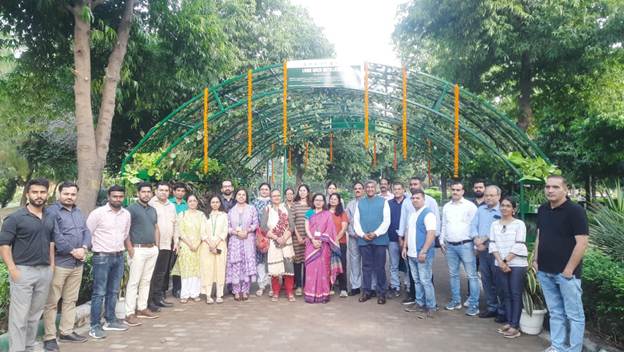
- 12 Oct 2025
In News:
The Ministry of Environment, Forest and Climate Change (MoEFCC) recently inaugurated “Breathable Art” — an innovative living installation at Swarn Jayanti Park, Rohini, Delhi. Conceived under the ‘Breath of Change – Clean Air, Blue Skies’ campaign, the initiative aims to combine artistic expression with ecological functionality to promote awareness on air quality, sustainability, and urban environmental stewardship.
About the Initiative
- Breathable Art is a pioneering “living structure” created from air-purifying plants and eco-friendly materials.
- Sponsored by MoEFCC and supported by the Commission for Air Quality Management (CAQM) and Delhi Development Authority (DDA), it forms part of the Environmental Information, Awareness, Capacity Building and Livelihood Programme (EIACP) under the Environment Education, Awareness, Research and Skill Development (EEARSD) scheme.
- The installation integrates art, science, and community engagement — transforming a public space into an interactive platform for environmental education.
- Visitors can scan QR codes placed around the installation to learn about the plants’ role in air purification and sustainable living practices. This interactive element aims to make environmental learning participatory and accessible.
Features and Ecological Role
The structure uses a mix of air-purifying plant species — such as Areca Palm, Bamboo Palm, Money Plant, Snake Plant, Spider Plant, Parijat, Peace Lily, Arrowhead, Weeping Fig, and Zigzag Plant. These species are recognized for their capacity to absorb harmful pollutants like formaldehyde and benzene, regulate humidity, and enhance oxygen concentration — particularly valuable during Delhi’s winter months when air quality deteriorates sharply.
By embedding these plants into an aesthetically designed structure, Breathable Art offers a passive yet effective solution to urban air pollution. It also enhances local biodiversity and contributes to microclimate regulation within its surroundings.
Community and Educational Dimensions
Beyond its environmental function, Breathable Art serves as:
- An Educational Hub: Hosting students, eco-clubs, and community members for awareness sessions on clean air and sustainable living.
- A Community Catalyst: Encouraging participation of Resident Welfare Associations (RWAs), schools, and volunteers in maintaining and replicating such models across the city.
- A Strategic Urban Intervention: Targeting pollution hotspots to promote green urban aesthetics and inspire behavioral change.
This aligns with India’s broader approach of nature-based solutions for urban environmental management — emphasizing community participation, low-cost interventions, and local ecological resilience.
Significance and Way Forward
- Delhi, one of the world’s most polluted capitals, continues to face critical air quality challenges. Initiatives like Breathable Art highlight how creative, sustainable, and participatory approaches can complement policy-driven measures such as the National Clean Air Programme (NCAP).
- By merging environmental science with public art, the project redefines sustainability as a lived, experiential practice rather than a distant policy goal. It underscores the principle that environmental consciousness begins with individual action and community involvement.
- As urban India grapples with escalating pollution, Breathable Art serves as a replicable model for integrating ecological awareness into everyday spaces — inspiring cleaner, greener, and more mindful cities.
Conclusion:
Breathable Art is not merely an installation but a vision — where art, environment, and community converge to remind citizens that sustainability begins with a single breath. It symbolizes India’s evolving approach to environmental governance — creative, participatory, and rooted in harmony with nature.
India’s Mental Health Crisis: Towards a Unified and Inclusive Response
- 11 Oct 2025
In News:
Every year on October 10, the world observes World Mental Health Day to underscore the growing burden of mental disorders — now affecting over one billion people globally, or 13% of the world’s population. India mirrors this crisis, with a 13.7% lifetime prevalence of mental disorders and rising suicides — 1.71 lakh cases in 2023, including a concerning 65% increase in student suicides over the past decade.
Rising Mental Health Concerns
Globally, anxiety and depression account for two-thirds of all diagnosed mental disorders. Between 2011 and 2021, the number of people with mental disorders rose faster than the world’s population. In India, changing social structures, excessive internet and social media use, academic pressure, and hostile work environments have aggravated psychological distress, especially among the youth. Poor lifestyle habits, reduced family interaction, and economic uncertainty have further deepened the crisis.
Structural Challenges in India’s Mental Healthcare System
India’s mental health system suffers from a triple deficit — of funding, workforce, and governance.
- Budgetary neglect: Mental health receives barely 1.05% of India’s total health expenditure, far below the WHO-recommended 5%.
- Severe workforce shortage: There are only 0.75 psychiatrists and 0.12 psychologists per 1 lakh people, compared to the WHO’s requirement of at least three psychiatrists.
- Treatment gaps: The National Mental Health Survey (2015–16) found 70–92% treatment gaps, meaning most people receive little or no professional care.
- Urban-rural divide: Specialists and rehabilitation facilities are concentrated in cities, while rural India, home to 70% of the population, remains severely underserved.
- Poor infrastructure and stigma: Many psychiatric institutions are plagued by neglect, while deep-rooted social stigma still equates mental illness with personal weakness.
Policy Framework and Initiatives
India has made several progressive policy moves:
- The Mental Healthcare Act, 2017decriminalised suicide attempts, guaranteed the right to mental healthcare, and introduced advance directives allowing patients to choose their treatment.
- The Rights of Persons with Disabilities Act, 2017recognises mental illness as a disability, expanding legal protections.
- In SukdebSaha vs. State of Andhra Pradesh, the Supreme Court affirmed mental health as part of the Right to Life under Article 21, legally obligating the state to ensure quality, accessible care.
- The District Mental Health Programme (DMHP) now operates in 767 districts, providing counselling, suicide prevention, and outreach services.
- The National Tele Mental Health Programme (Tele MANAS), launched in 2022, has enabled over 20 lakh tele-counselling sessions, improving access in underserved areas.
- Initiatives like Manodarpan aim to promote psychological well-being among over 11 crore students.
Learning from Global Models
Countries like Australia, Canada, and the UK allocate 8–10% of their health budgets to mental health and employ mid-level mental health providers who deliver nearly half of all counselling services. These nations also ensure near-universal insurance coverage and maintain real-time mental health surveillance — areas where India still lags.
Way Forward
A unified and decentralised mental health strategy must focus on:
- Raising mental health spending to at least 5% of total health expenditure.
- Expanding and training mid-level providers to bridge the rural-urban gap.
- Fully integrating mental health into primary healthcare and insurance systems.
- Updating diagnostic and policy frameworks in line with WHO’s ICD-11.
- Establishing district-level monitoring and accountability systems.
- Scaling anti-stigma campaigns across schools, workplaces, and communities.
- Ensuring inter-ministerial coordination among health, education, social justice, and labour departments for a cohesive national response.
Conclusion
India’s mental health challenge is not merely a medical issue but a socio-economic and governance imperative. Bridging systemic gaps in funding, workforce, and awareness—while fostering empathy and inclusion—can transform India’s mental health landscape, aligning it with global best practices and the vision of holistic well-being under Article 21 of the Constitution.
Alternative Dispute Resolution (ADR)

- 10 Oct 2025
In News:
India’s judiciary faces an unprecedented crisis of pendency and delay, with over 4.57 crore cases pending across various courts, according to the National Judicial Data Grid (NJDG). Of these, the Supreme Court has about 81,768 cases, and High Courts collectively hold around 62.9 lakh cases. The situation underscores an urgent need to adopt efficient and accessible mechanisms like Alternative Dispute Resolution (ADR) to ensure timely and inclusive justice.
Understanding ADR
Alternative Dispute Resolution (ADR) refers to a set of methods that allow parties to settle disputes outside traditional court systems. It includes:
- Arbitration: A binding process where a neutral arbitrator delivers a decision.
- Conciliation: A non-binding process facilitated by a conciliator to promote settlement.
- Mediation: A voluntary and confidential dialogue process led by a neutral mediator.
- Judicial Settlement / Lok Adalat: Court-referred or community-level settlement platforms.
ADR processes are based on consensus, flexibility, and confidentiality, allowing parties to preserve relationships while saving time and resources.
Why ADR Is Crucial for India
The India Justice Report 2025 highlights critical inefficiencies within India’s justice system — including 33% vacancy in High Courts and 21% in District Courts. Judges in states such as Uttar Pradesh, Himachal Pradesh, and Kerala handle workloads exceeding 4,000 cases each. Prolonged pendency not only delays justice but also undermines trust in legal institutions.
ADR addresses these challenges by offering:
- Speed and Efficiency: Arbitration and mediation significantly reduce case duration compared to conventional litigation.
- Cost-Effectiveness: Reduced procedural formalities make justice affordable and accessible.
- Ease of Doing Business: ADR, especially in commercial disputes, enhances investor confidence by ensuring timely contract enforcement.
- Social Inclusion: Mediation and Lok Adalats provide participatory platforms, particularly beneficial for rural and marginalized communities.
Legal and Constitutional Framework
The foundation of ADR in India rests on multiple legal provisions:
- Article 39A of the Constitution mandates equal access to justice and free legal aid.
- Section 89 of the Code of Civil Procedure (1908) legally recognizes ADR processes such as arbitration, conciliation, and mediation.
- The Arbitration and Conciliation Act, 1996 (amended in 2021) provides the institutional framework, stipulating a 180-day resolution period and creating the Indian Arbitration Council.
- The Mediation Act, 2023 introduces mandatory pre-litigation mediation for civil and commercial disputes, encouraging resolution before approaching courts.
Additionally, Lok Adalats, functioning under the Legal Services Authorities Act, 1987, operationalize Article 39A’s spirit. They include Permanent Lok Adalats, National Lok Adalats, and e-Lok Adalats, offering binding decisions without appeal, thus ensuring swift justice at the grassroots level.
Global and Cultural Resonance
ADR aligns with international standards like the UNCITRAL Model Law, making it essential for cross-border commercial arbitration and foreign investment. At the same time, it resonates with India’s civilisational ethos of collective consensus, reflected in the traditional “Panch Parmeshwar” doctrine — a principle recently highlighted by the Law Minister as a model for community-based dispute resolution.
Conclusion
In an overburdened judicial ecosystem, Alternative Dispute Resolution represents a pragmatic and human-centered reform. Strengthening ADR through legal awareness, institutional support, and public participation can transform India’s justice system into one that is efficient, inclusive, and globally credible. By embracing ADR, India not only advances its constitutional mandate of “speedy justice for all” but also revives its age-old tradition of resolving disputes through dialogue and consensus.
Sharp Decline in Child Marriages in India
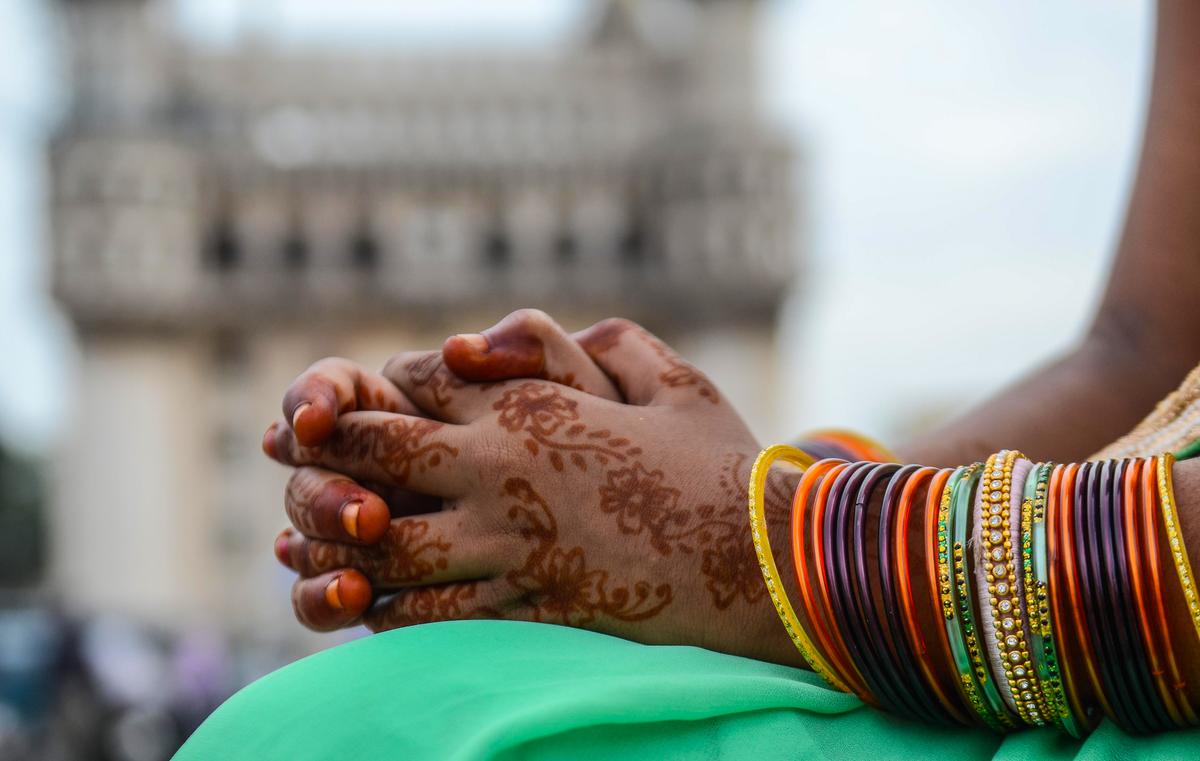
- 09 Oct 2025
In News:
A recent survey by Just Rights for Children (JRC), a coalition of over 250 child protection NGOs, has reported a significant decline in child marriages across India. The trend underscores that legal enforcement, community engagement, and multi-sectoral collaboration can collectively transform entrenched social practices that violate children’s rights.
Significance of the Decline
- Human Rights Perspective: Child marriage undermines the fundamental rights of children—particularly girls—to education, health, and personal autonomy. Its reduction reflects progress toward SDG-5 (Gender Equality) and India’s commitments under the UN Convention on the Rights of the Child (UNCRC).
- Health and Demographic Gains: Early marriages often precipitate early pregnancies, increasing risks of maternal mortality, low birth weight, and malnutrition. Delaying marriage improves reproductive health and supports demographic stability by spacing births.
- Educational and Economic Empowerment: Girls who remain in school gain greater social mobility and earning potential. Extended education creates a multiplier effect, reducing inter-generational poverty and enhancing overall human capital.
- Social Norms Transformation: The steep decline challenges the perception that child marriage is inevitable, showing that communities respond to visible enforcement and positive examples of girls pursuing education.
Key Survey Findings
- Assam recorded the highest decline (84%), followed by Maharashtra and Bihar (70% each), Rajasthan (66%), and Karnataka (55%).
- While three children were married every minute during 2019–21, by 2025, only three cases per day were reported.
- Awareness of the Bal Vivah Mukt Bharat campaign reached 99% of respondents.
- In 31% of surveyed villages, all girls aged 6–18 attended school, although Bihar lagged behind.
- Poverty (91%) and safety concerns (44%) remain major drivers of child marriage.
Drivers of the Decline
- Legal Deterrence: Enforcement under the Prohibition of Child Marriage Act, 2006—FIRs and arrests—proved highly effective. Assam’s proactive approach set a national benchmark.
- Awareness Campaigns: Nationwide outreach through schools, media, and Panchayats via Bal Vivah Mukt Bharat fostered community ownership over child rights.
- Community-Based Mechanisms: Karnataka employed helplines and Child Welfare Committees (CWCs), while empowering Panchayat Development Officers to register marriages, preventing around 2,000 child marriages in 2021.
- Multi-Sectoral Collaboration: Integration of legal, social, and economic interventions through state governments, police, education departments, and civil society reinforced enforcement and awareness.
Remaining Challenges
- Under-reporting and hidden marriages, especially in rural and tribal regions.
- Entrenched social norms linked to caste, honour, and family prestige.
- Economic vulnerability, which still drives early marriages in poor households.
- Institutional capacity gaps, including inadequate training and resources for frontline workers.
- Need for robust data to ensure reported progress reflects reality.
Policy Recommendations
- Mandatory Marriage Registration linked with Aadhaar and education databases.
- Targeted Social Protection, expanding schemes like Kanyashree and conditional cash transfers to encourage education and delayed marriage.
- Education and Safety Measures, including improved school infrastructure, transport, and security for girls.
- Grassroots Empowerment, strengthening Panchayats, CWCs, and helplines for early detection.
- Normative Change, involving mass communication, role models, and religious/community leaders.
- Monitoring and Evaluation, through third-party audits, longitudinal surveys, and state dashboards.
Conclusion
India’s decline in child marriages is a landmark achievement in rights-based social reform. The country must now aim to reduce prevalence below 5% by 2030, aligning with the UN Sustainable Development Goals, thereby ensuring that every child’s future is determined by choice, education, and opportunity, rather than compulsion.
Assam-Nagaland Border Dispute

- 08 Oct 2025
In News:
Tensions resurfaced along the Assam–Nagaland border after armed miscreants, allegedly from Nagaland, set fire to nearly 100 houses in a minority-dominated village within the disputed B Sector of Assam’s Golaghat district.
Background of the Dispute
- The Assam–Nagaland border dispute concerns overlapping territorial claims, particularly over forested tracts in Assam’s Golaghat, Jorhat, and Sivasagar districts, collectively known as the Disputed Area Belt (DAB).
- Since 1979, the Central Reserve Police Force (CRPF) has been deployed as a neutral force to maintain peace in these contested zones.
Historical Evolution
- Colonial Period (1826–1925):Following the Treaty of Yandabo (1826), the British annexed Assam and later established the Naga Hills District (1866). Subsequent boundary notifications redefined territories several times—often without consulting local Naga communities.
- Post-Independence Developments (1947–1963):The Nagas declared independence in 1947. Later, the Naga Hills–Tuensang Area Act (1957) and the State of Nagaland Act (1962) formalized Nagaland’s creation but did not define its boundary clearly with Assam, leaving scope for future disputes.
Commissions and Efforts at Resolution
Several commissions and agreements have attempted to resolve the dispute but failed to achieve a lasting solution:
- Sundaram Commission (1972): Led to four interim agreements maintaining the status quo.
- Shastri Commission (1985) and J.K. Pillai Commission (1997): Explored settlement options but faced rejection by one or both states.
- Variava and Chatterjee Commissions (2006): Submitted findings on boundary delineation, but implementation remained stalled.
Disputed Area Belt (DAB)
- The DAB covers forest land along the 512.1 km-long Assam–Nagaland boundary, primarily spanning Golaghat, Jorhat, Sivasagar, and KarbiAnglong districts of Assam.
- These forests were historically used by Naga tribes but fall within Assam’s constitutional limits.
Core of the Territorial Claims
- Assam’s Position:Assam upholds the constitutional boundary established when Nagaland was created in 1963, asserting that this demarcation is legally final.
- Nagaland’s Position:Nagaland bases its claim on historical and traditional Naga homelands, citing the 16-Point Agreement of 1960 and pre-colonial territorial arrangements. It seeks “restoration” of areas allegedly separated during British rule.
- Extent of Dispute:Assam accuses Nagaland of encroaching on over 60,000 hectares of land within the DAB.
Ethics at the Heart of Global Climate Action
- 07 Oct 2025
In News:
As the world approaches COP30 in Brazil (2025), the role of ethics in climate governance has been revived through the launch of the Global Ethical Stocktake. This initiative aims to place justice, equity, responsibility, and intergenerational fairness at the core of global climate action, complementing the scientific urgency highlighted by rising emissions and warming temperatures.
Ethical Dimensions of Climate Action:
- Justice and Equity:
- The principle of common but differentiated responsibilities under the UNFCCC reflects fairness—developed nations bear historical responsibility, while developing nations require space for sustainable growth.
- The Paris Agreement’s “leave no one behind” principle embodies distributive justice.
- Intergenerational Responsibility:
- Present decisions affect the survival prospects of future generations. Ethical stewardship, not exploitation, is essential.
- In 2025, the International Court of Justice reaffirmed intergenerational equity as central to climate treaties.
- Human Rights Linkage:
- Access to food, water, housing, and a healthy environment is inseparable from the right to life (Article 21, Indian Constitution).
- The Inter-American Court (2024) declared the right to a safe climate a fundamental human right.
- Integrity and Credibility:
- The gap between climate promises and delivery undermines trust. Ethical governance requires accountability, transparency, and scientific rigor in Nationally Determined Contributions (NDCs).
- Corporate greenwashing erodes credibility, emphasizing the need for ethical corporate responsibility.
- Solidarity with the Vulnerable:
- Marginalized groups, Indigenous peoples, and communities in the Global South face disproportionate risks. Ethical climate action ensures inclusion and empathy in adaptation strategies.
- Community-based initiatives, such as the Himachal Pradesh snow leopard survey, illustrate ethics of inclusion in environmental stewardship.
Role of Ethics in Governance:
- Guiding Negotiators: Ethics reminds negotiators of moral responsibility, where delays equate to human suffering and ecosystem loss.
- Embedding Frameworks: Initiatives like the Global Ethical Stocktake institutionalize ethics alongside scientific assessments.
- Judicial Oversight: Courts link morality with law, compelling states to respect climate and human rights obligations.
- Corporate Responsibility: Businesses must adopt ethical approaches to avoid tokenistic climate pledges.
Ethics in the Indian Context:
- Constitutional Mandates:
- Article 48A – Duty of the State to protect the environment.
- Article 51A(g) – Duty of citizens to protect natural resources.
- Judicial Precedents: Vellore Citizens’ Forum vs Union of India (1996) upheld the precautionary principle and polluter pays principle.
- Gandhian Philosophy: Trusteeship aligns with sustainable consumption and responsibility toward nature.
Challenges:
- National interest vs. global good delays climate finance and technology transfer.
- Political polarization and denialism hinder consensus despite rising urgency.
- Greenwashing and weak enforcement erode accountability.
- Adaptation finance remains underfunded, leaving vulnerable populations exposed.
Way Forward:
- Institutionalize the Global Ethical Stocktake to align climate action with justice and equity.
- Implement just transition policies protecting livelihoods while shifting from fossil fuels.
- Strengthen ethical climate jurisprudence to ensure rights-based accountability.
- Promote ethical leadership and integrate climate ethics into education and policymaking.
Conclusion:
Climate change is as much a moral challenge as a scientific one. Ethics—anchored in justice, responsibility, solidarity, and intergenerational equity—must guide global action. Embedding ethics into negotiations, law, community initiatives, and corporate practices is essential to restore credibility, build trust, and ensure a liveable planet for present and future generations.
Heritage Management and Conservation in India
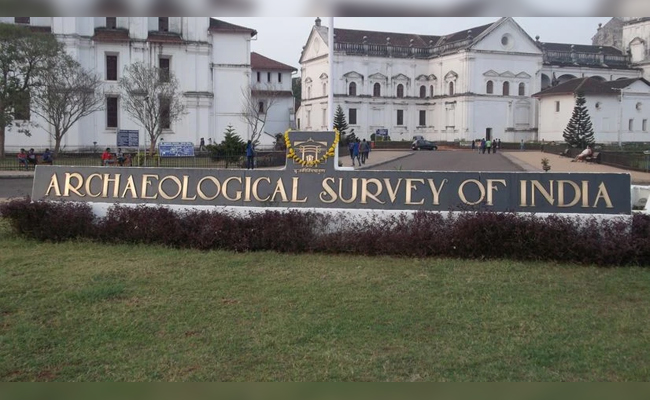
- 06 Oct 2025
In News:
- India’s rich cultural and architectural legacy, reflected in thousands of ancient monuments and archaeological sites, has long been under the stewardship of the Archaeological Survey of India (ASI).
- Established in 1861, the ASI functions under the Ministry of Culture and enforces the Ancient Monuments and Archaeological Sites and Remains Act, 1958, and the Antiquities and Art Treasures Act, 1972.
- However, with over 3,700 protected monuments under its care, the ASI’s capacity constraints have often resulted in delays and maintenance backlogs.
- Recognizing this challenge, the government has initiated a landmark policy shift to introduce public-private partnerships (PPP) in heritage conservation — marking a major reform in India’s cultural governance.
The Policy Shift
- For the first time, the core conservation of protected monuments will no longer be ASI’s exclusive domain. Under the new model, private players, corporates, and public sector undertakings can directly fund and implement conservation projects under ASI’s supervision. This move seeks to expand capacity, accelerate timelines, and leverage private expertise, while retaining strict professional and regulatory oversight.
- All projects will be monitored by the ASI and must comply with the National Policy for Conservation of Ancient Monuments, Archaeological Sites and Remains (2014). The initiative aims to balance modernization and preservation by fostering collaboration between government, industry, and civil society.
Institutional Framework and Implementation
- The reforms will operate through the National Culture Fund (NCF), established in 1996 with an initial government corpus of ?20 crore.
-
- The NCF enables donors to contribute directly to heritage projects and offers 100% CSR tax exemptions, incentivizing private participation.
-
- To ensure professional standards, the Ministry of Culture will empanel conservation architects of national repute, who will guide donors in planning and executing projects. The Detailed Project Reports (DPRs) will require ASI approval before implementation.
- Private donors, guided by these architects, can hire external implementing agencies experienced in restoring structures over 100 years old. Initially, a list of 250 monuments requiring urgent conservation will be released for donor selection.
Track Record of the National Culture Fund
Since its inception, the NCF has mobilized around ?140 crore in corporate and public donations, supporting over 100 conservation projects. Notable examples include:
- Bhuleshwar Temple (Pune),
- British Residency (Hyderabad),
- Group of Monuments at Mandu,
- Purana Qila and Red Fort site museums (New Delhi),
- Ongoing work at Vikramshila (Bihar), Deobaloda (Chhattisgarh), and Singorgarh Fort (Madhya Pradesh).
Significance and Safeguards
- The PPP model represents a shift from state monopoly to collaborative stewardship, ensuring accountability, transparency, and efficiency.
- The ASI retains its supervisory authority, maintaining consistency with India’s constitutional framework, where heritage conservation falls under both Union and State jurisdictions, as outlined in the Seventh Schedule and Article 253.
- Qualified conservation architects, empanelled through due diligence, will ensure technical integrity, while all financial contributions must pass through the NCF to prevent misuse. The government views this as a cautious, phased reform, initially assigning private players a supplementary role to test the model’s viability.
Comparison with Past Initiatives
Unlike the earlier ‘Adopt a Heritage’ scheme, which allowed corporates to develop tourist amenities such as cafes and restrooms as “monument mitras,” the current initiative extends to core conservation work. This marks a decisive evolution from heritage promotion to heritage preservation.
Conclusion
India’s new heritage management framework reflects a pragmatic blend of Aatmanirbhar Bharat, cultural preservation, and corporate participation. By integrating private sector efficiency with ASI’s institutional expertise, the model promises to make heritage conservation financially sustainable, technologically advanced, and socially participatory — ensuring that India’s timeless legacy endures through collective stewardship.
India’s Deep-Sea Mineral Exploration in the Indian Ocean
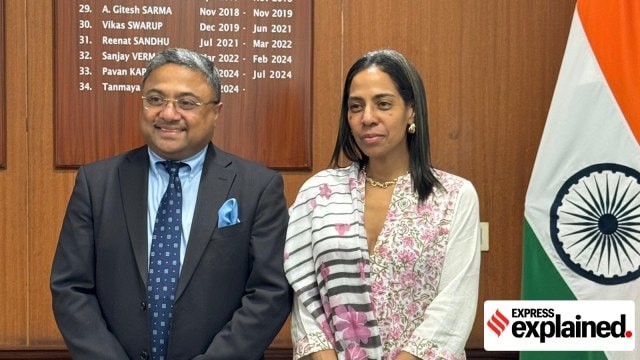
- 05 Oct 2025
In News:
India has achieved a major milestone in deep-sea exploration by signing a new 15-year contract with the International Seabed Authority (ISA) for the exclusive exploration of Polymetallic Sulphides (PMS) in a 10,000 sq km area of the Carlsberg Ridge in the Indian Ocean.
With this agreement, India has become the first country in the world to hold two PMS exploration contracts, commanding the largest area allocated globally for such exploration. This advancement marks a blend of scientific progress, strategic foresight, and economic opportunity within India’s broader Blue Economy vision.
Polymetallic Sulphides and Their Significance
Polymetallic Sulphides are mineral-rich deposits found on the ocean floor, primarily near hydrothermal vents along mid-ocean ridges. Formed through interactions between seawater and magma beneath the Earth’s crust, they contain valuable metals such as copper, zinc, lead, gold, silver, and trace rare elements.
For India, these minerals are crucial for high-technology industries, renewable energy systems, and green technologies. Given the country’s limited terrestrial reserves, deep-sea exploration ensures resource security, supports the energy transition, and reduces import dependence on critical minerals.
India’s Deep Ocean Initiatives
India’s engagement with the ISA dates back over three decades. It was among the earliest countries to receive an area for polymetallic nodule exploration, earning the status of a “Pioneer Investor.” The first PMS exploration contract was signed in 2016 for the Central and Southwest Indian Ridges, and the latest agreement in 2025 extends exploration to the Carlsberg Ridge, located near 2°N latitude — significantly closer to India than the earlier sites.
The National Centre for Polar and Ocean Research (NCPOR) in Goa, under the Ministry of Earth Sciences (MoES), will begin exploration operations in 2026, employing geophysical, hydrographic, and near-seabed surveys.
These efforts are supported by the Deep Ocean Mission, launched by the Government of India to develop seabed mining technology, autonomous underwater vehicles (AUVs), and the Matsya submersible under the Samudrayaan Mission. This ecosystem strengthens India’s capacity for scientific research, environmental assessment, and mineral resource utilisation.
The Carlsberg Ridge: A Strategic and Scientific Hub
The Carlsberg Ridge is a part of the mid-ocean ridge system formed by the divergence of the Indian and Somali plates about 40 million years ago. With a spreading rate of 2.4–3.3 cm per year, it features hydrothermal vent systems ideal for PMS deposits. Its proximity to India enhances logistical feasibility and strategic relevance. The region’s exploration will expand understanding of deep-sea geology, marine ecosystems, and plate tectonics, while supporting India’s long-term maritime interests.
Exploration Challenges and Governance
PMS exploration is among the most technically demanding deep-sea missions, occurring at depths of 2,000–5,000 metres in rugged, volcanic terrains. It demands multidisciplinary collaboration across marine geology, geophysics, biology, and ocean engineering, supported by dynamic-positioning vessels, AUVs, and ROVs.
The ISA, functioning under the United Nations Convention on the Law of the Sea (UNCLOS), regulates seabed exploration beyond national jurisdictions. Applications must meet rigorous standards of environmental protection, financial capability, and scientific planning before approval.
Future Prospects
Beyond PMS, India has applied for exploration rights over cobalt-rich ferromanganese crusts on the Afanasy-Nikitin Seamount in the Central Indian Ocean, aligning with its Blue Economy and resource security goals. Hosting the 8th ISA Annual Contractors’ Meeting in Goa underscores India’s growing leadership in global seabed research governance.
Conclusion
India’s twin PMS contracts with the ISA mark a historic milestone in ocean science, resource diplomacy, and sustainable technology development. By combining strategic exploration, indigenous innovation, and environmental stewardship, India is positioning itself at the forefront of responsible deep-sea resource management — a critical pillar of its vision for a self-reliant and resilient Blue Economy.
India’s E-Waste Recycling Challenges and Opportunities
- 04 Oct 2025
In News:
Electronic waste, or e-waste, has emerged as one of the fastest-growing waste streams globally, driven by rapid technological obsolescence, consumerism, and the digital transformation of economies. E-waste refers to discarded electronic devices—such as mobile phones, laptops, televisions, and refrigerators—that contain both valuable materials like gold, copper, and lithium, and hazardous substances like lead, mercury, and cadmium. The dual nature of e-waste—an economic resource and an environmental hazard—makes its management a critical policy challenge for India.
The Scale of the Problem
According to the Global E-Waste Monitor 2020, India is the world’s third-largest generator of e-waste after China and the USA. The country produced around 4.17 million metric tonnes of e-waste in 2022, yet only one-third was processed through authorized recyclers. With India’s electronics industry projected to grow at a CAGR of 16.6%—from USD 215 billion in FY19 to USD 540 billion by FY25—the volume of e-waste is expected to surge further. This growth is compounded by the increasing number of broadband and smartphone users, currently exceeding 93.9 crore, reflecting expanding consumption and shorter product lifecycles.
Environmental and Health Implications
Improper e-waste disposal leads to severe ecological and health impacts. Open burning and acid leaching—common in informal recycling—release toxic fumes and contaminate soil and groundwater. Heavy metals such as lead and cadmium cause neurological and renal damage, while persistent organic pollutants affect ecosystems and biodiversity. The World Health Organization has warned that children and informal workers face disproportionate exposure risks, underscoring the urgent need for safe handling and regulation.
Policy and Institutional Framework
India’s e-waste management is governed by the E-Waste (Management) Rules, 2022, notified by the Ministry of Environment, Forest and Climate Change (MoEFCC), and effective from April 2023. These rules emphasize Extended Producer Responsibility (EPR), mandating manufacturers and importers to collect and recycle end-of-life products. The Central Pollution Control Board (CPCB) has initiated audits of recyclers to curb “paper trading” and ensure genuine recycling practices. Moreover, a ?1,500 crore Mineral Recycling Scheme was launched in 2023 to recover critical metals like copper, aluminium, cobalt, and lithium, reducing import dependence amid geopolitical supply risks.
Gaps and Challenges
Despite robust policy intent, significant implementation challenges persist. A 2023 Indian Cellular and Electronics Association report highlighted the dominance of the informal sector, which manages nearly 90% of India’s e-waste through unsafe methods. Lack of material traceability, inadequate inventorying by State Pollution Control Boards, and weak enforcement mechanisms further hamper progress. Experts also note the absence of uniform data and poor public awareness about responsible disposal.
Recent Initiatives and Future Potential
Government efforts, such as the Prime Minister’s Science, Technology, and Innovation Advisory Council (PM-STIAC) initiatives, promote indigenous R&D, technology transfer, and a national e-waste catalog through the I-STEM portal. Institutions like CMET, BARC, and NML are collaborating with industries to deploy eco-friendly recycling technologies. Private players such as Attero have begun aggregating informal setups into formal “mandi-style” recycling networks, aiming to recover metals sustainably. With appropriate regulatory and market support, India could meet up to 70% of its rare earth metal needs domestically within 18 months.
Conclusion
E-waste management lies at the intersection of environmental protection, resource efficiency, and industrial policy. Strengthening the EPR mechanism, integrating informal recyclers, improving traceability, and incentivizing circular design are essential for sustainable growth. Effective e-waste management supports India’s commitments under SDG 12 (Responsible Consumption and Production) and SDG 13 (Climate Action), and can transform waste into a strategic resource, reinforcing India’s journey toward a green and self-reliant economy.
Corporate Average Fuel Efficiency (CAFE) 3 Norms
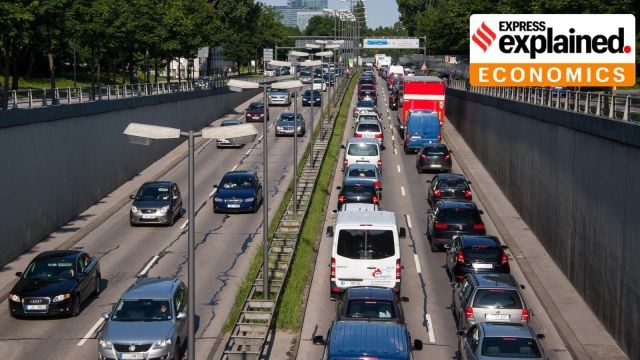
- 03 Oct 2025
In News:
- India has proposed the Corporate Average Fuel Efficiency (CAFE) 3 norms, drafted by the Bureau of Energy Efficiency (BEE), aiming to tighten fuel efficiency standards, reduce vehicular emissions, and promote electric and alternative fuel vehicles.
- First introduced in 2017, CAFE norms regulate fuel consumption and CO? emissions for passenger vehicles weighing up to 3,500 kg, including petrol, diesel, CNG, LPG, hybrid, and electric vehicles.
- The earlier iteration, CAFE 2 (2022-23), capped fuel consumption at 4.78 litres/100 km and CO? emissions at 113 g/km, with penalties for non-compliance.
Need for CAFE 3
Current Indian norms inadvertently favourheavier vehicles like SUVs while imposing stringent targets on smaller cars, unlike international practices in the USA, EU, China, and Japan, where light vehicles enjoy relaxed emission standards. CAFE 3 seeks to align India with global best practices, revive the small car segment, and incentivisegreen mobility, particularly electric vehicles (EVs) and hybrids.
Key Features of CAFE 3 Norms
1. Applicability
- Targets M1 category passenger vehicles (seating up to nine people, maximum weight 3,500 kg).
- Non-compliance will attract penalties under the Energy Conservation Act, 2001.
2. Efficiency Targets
- Efficiency formula: [0.002 × (W – 1170) + c], measured in petrol-equivalent litres/100 km, where W is fleet weight, 1,170 kg is a fixed constant, 0.002 is a multiplier, and ‘c’ decreases yearly from 3.7264 (FY28) to 3.0139 (FY32).
- Lighter vehicles benefit from easier compliance, motivating manufacturers to focus on small cars.
- Additional relaxation: 3.0 g CO?/km (capped at 9 g/km) for compact cars (<909 kg, ≤1200 cc engine, ≤4,000 mm length).
3. Incentives for EVs and Alternative Fuels
- Super credits: Each EV sold counts three times toward fleet compliance; plug-in hybrids 2.5×, strong hybrids 2×, flex-fuel ethanol vehicles 1.5×.
- Carbon Neutrality Factor (CNF): Offers relaxation based on fuel type (e.g., E20–E30 petrol vehicles 8% CNF; strong hybrids 22.3%).
4. Emissions Pooling
- Up to three manufacturers can form a pool, treated as a single entity for compliance.
- Pool managers are legally responsible for penalties, allowing strategic partnerships, cost-sharing, and smoother adherence to targets.
Policy Complementarities
- GST reforms (GST 2.0) reduced taxes on small cars from 28% to 18%, complementing the relaxation measures under CAFE 3.
- By incentivisingEVs, hybrids, and small vehicles, the norms aim to reduce oil import dependency and advance India’s climate commitments under the Paris Agreement.
Challenges
- Industry adaptation: Transitioning fleets to comply with stricter norms while managing costs.
- Consumer acceptance: Affordability and infrastructure readiness for EVs and hybrids.
- Infrastructure readiness: Charging and fuel infrastructure for alternative vehicles needs significant expansion.
Conclusion
CAFE 3 represents a transformative step in India’s vehicular emission regulation, combining fuel efficiency improvements, emission reductions, and green mobility incentives. By aligning with global practices, reviving the small car segment, and encouraging electric and hybrid vehicles, the norms have the potential to accelerate sustainable transportation while addressing environmental and energy security goals. Successful implementation will require coordinated action between manufacturers, policymakers, and consumers to build a cleaner, efficient, and resilient automotive sector in India.
Reimagining Green Economy through Landscapes
- 02 Oct 2025
In News:
India stands at a critical juncture where the pursuit of economic growth must align with environmental sustainability. The transition to a green economy offers an opportunity to reshape the country’s development paradigm—one that integrates ecological balance, inclusive livelihoods, and technological innovation within a landscape-driven framework.
India’s Green Economy: Growth and Scope
India’s bioeconomy has expanded remarkably from $10 billion in 2014 to $165.7 billion in 2024, growing sixteenfold and accounting for 4.25% of the national GDP. This growth, driven by over 10,000 bio-based start-ups, spans biofuels, bioplastics, pharmaceuticals, and bioinformatics. The industrial bioeconomy contributes nearly half the sectoral share, while India’s achievements—such as 20% ethanol blending in petrol and becoming the third-largest pharmaceutical producer by volume—reflect the scale of progress.
A green economy, however, extends beyond bio-based industries. It encompasses low-carbon growth, circular resource use, ecosystem restoration, and inclusive employment. By 2030, it is estimated to create 35 million green jobs, strengthening India’s resilience against climate shocks and enhancing energy security under Aatmanirbhar Bharat.
Challenges in the Green Transition
Despite this momentum, India’s green growth exhibits deep regional and socio-economic disparities. Urban centers like Maharashtra, Karnataka, and Gujarat dominate green investments, while the North-Eastern and tribal states contribute less than 6% despite abundant natural resources. This spatial imbalance mirrors unequal access to clean energy, irrigation, and digital infrastructure.
Simultaneously, energy transition dilemmas persist. While renewables are expanding, fossil fuel subsidies—still around 40%—undermine emission reduction efforts. In agriculture, solar pump deployment risks groundwater depletion, highlighting the complexity of balancing environmental and livelihood goals. Hard-to-abate sectors such as steel, cement, and power, which contribute nearly 23% of GHG emissions, face prohibitive costs for green technologies—often four times higher than conventional alternatives.
Social inclusion remains another challenge. Women hold only 11% of rooftop solar jobs, and their share in technical green roles is as low as 1–3%. Similarly, tribal and marginalised communities remain passive beneficiaries rather than active stakeholders in climate action.
Reimagining the Green Economy through Landscapes
A landscape-based approach can make India’s green transition more inclusive and ecologically coherent. Landscapes represent interconnected systems of land, water, biodiversity, and human activity. Integrating these systems through participatory planning—from village to national level—can enhance ecosystem services such as air and water regulation, soil fertility, and climate moderation.
Institutionally, leveraging 2.5 lakh Panchayati Raj Institutions (PRIs) and 12 million women-led Self-Help Groups (SHGs) can embed community ownership into green initiatives. Promoting tribal-led bioeconomy models based on non-timber forest produce, agro-waste reuse, and medicinal flora can align conservation with livelihoods.
Technology and fiscal innovation must complement this vision—through green budgeting, public procurement of sustainable products, and expansion of 5G/6G labs for greening digital infrastructure. Decentralised waste management and circular economy practices are vital, especially as urban areas generate 75% of India’s solid waste.
Conclusion
India’s green transformation must evolve from a sectoral to a landscape-driven, community-based model that harmonises economic growth with ecological integrity. Empowering local institutions, mainstreaming gender, and integrating traditional knowledge with modern innovation will be crucial to achieving a just and resilient green future. By 2047, the goal should not merely be higher GDP, but ecological regeneration, social equity, and global climate leadership.
National Security Act (NSA)

- 01 Oct 2025
Context:
The detention of climate activist Sonam Wangchuk under the National Security Act (NSA), 1980, has reignited a long-standing debate on the balance between national security and civil liberties in India. Wangchuk, who has been leading the movement for Ladakh’s statehood and Sixth Schedule protections, was detained following alleged provocative speeches that, according to the administration, triggered violent protests in Leh leading to four deaths and several injuries. His case illustrates the continuing tension between state power and individual freedoms under India’s preventive detention framework.
Understanding Preventive Detention in India
Preventive detention refers to the practice of detaining an individual not for a crime already committed, but to prevent them from acting in a manner considered prejudicial to public order, security, or essential supplies. Unlike punitive detention, which follows conviction through due process, preventive detention is anticipatory in nature—aimed at averting potential threats before they materialise.
The Constitutional sanction for preventive detention is provided under Article 22 (Clauses 3–7), which permits Parliament and State legislatures to enact laws allowing such detention. A person can be held for up to three months without approval from an Advisory Board of judges, and longer if such approval is obtained. However, detainees are denied the right to legal counsel before the Advisory Board, and authorities may withhold information on grounds of public interest—limiting transparency and accountability.
Evolution of Preventive Detention Laws
Preventive detention has deep colonial roots, beginning with wartime laws such as the Defence of India Acts and the Rowlatt Act (1919). Post-Independence, the Preventive Detention Act, 1950, institutionalised this power, followed by the Maintenance of Internal Security Act (MISA), 1971, which gained notoriety during the Emergency (1975–77). Although MISA was repealed in 1978, preventive detention returned with the National Security Act (NSA), 1980, reflecting the persistence of this legal mechanism in India’s security architecture.
Provisions and Safeguards under the NSA
The NSA empowers the Central and State governments, as well as authorisedDistrict Magistrates and Police Commissioners, to detain individuals to prevent actions “prejudicial to India’s defence, foreign relations, national security, public order, or essential supplies.”
- Detention orders operate like arrest warrants, allowing transfer across states and detention up to 12 months.
- Grounds for detention must be communicated within 5 to 15 days, and the detainee can submit a representation to the government.
- An Advisory Board of High Court judges must review the case within three weeks and order release if “no sufficient cause” exists.
However, no legal representation is allowed before the Board, and the government may withhold crucial information—leaving wide discretion in official hands.
Use and Misuse: Judicial and Public Concerns
Over the decades, NSA has been used in cases involving separatists, radical preachers, gangsters, and protesters. Notable instances include the detention of Amritpal Singh (2023), Bhim Army chief Chandrashekhar Azad (2017), and Dr. Kafeel Khan (2020). Courts have repeatedly intervened in cases of misuse, emphasising that the Act cannot be a substitute for ordinary criminal law. The Supreme Court’s 2012 ruling striking down detention for kerosene black-marketing underscored this misuse.
Critics argue that preventive detention contradicts the spirit of fundamental rights under Articles 19, 21, and 22, allowing incarceration without trial and enabling governments to suppress dissent under the guise of maintaining order. Scholars contend that Article 22 itself legitimises preventive detention, reflecting what Erich Fromm described as a “fear of freedom”—a societal tendency to trade liberty for perceived security.
Conclusion
The National Security Act remains one of India’s most powerful yet controversial laws. While it provides governments with a vital tool to prevent threats to national security and public order, its frequent and often arbitrary invocation erodes constitutional guarantees of liberty and due process.
The detention of Sonam Wangchuk serves as a stark reminder that preventive detention laws, though constitutionally sanctioned, sit uneasily within a democratic framework. India’s challenge lies in ensuring that security imperatives do not eclipse fundamental freedoms, reaffirming the Constitution’s promise of liberty, justice, and accountability.
Inflation: A Double-Edged Sword for Economic Growth and Fiscal Stability

- 30 Sep 2025
In News:
Inflation, the sustained rise in general price levels, remains one of the most debated macroeconomic phenomena. While high inflation erodes purchasing power and destabilizes economies, moderate and predictable inflation is often considered essential for sustained growth and fiscal stability. Its impact, however, varies depending on the broader economic context and the balance between price stability and growth objectives.
Understanding Inflation and Its Role
Economists typically define inflation as a result of “too much money chasing too few goods.” Moderate inflation signals expanding demand and healthy economic activity, while very high or negative inflation (deflation) indicates structural imbalances. Central banks, such as the U.S. Federal Reserve and the Reserve Bank of India (RBI), usually target a low but positive inflation rate — around 2% — to maintain price stability and incentivize investment.
Mild inflation helps prevent deflation, which discourages spending and investment as consumers postpone purchases in anticipation of falling prices. The British economist John Maynard Keynes argued that a small amount of inflation encourages consumption, supports employment, and sustains aggregate demand. This aligns with the concept of the Phillips Curve, which once suggested a trade-off between inflation and unemployment, though the relationship has weakened in recent decades.
Economic Benefits of Moderate Inflation
A modest level of inflation can stimulate economic activity when idle capacity and underutilized labor exist. Rising prices encourage producers to expand output, generating more employment and income. Borrowers, including businesses and households, also benefit since debts can be repaid with “cheaper” money, thus encouraging borrowing and spending. Fixed-rate homeowners and long-term debtors gain, as the real value of their obligations declines over time.
For governments, inflation contributes positively to nominal GDP growth, the key denominator in fiscal ratios such as the debt-to-GDP ratio and fiscal deficit. Higher nominal GDP, driven partly by price growth, increases tax collections and helps meet revenue and deficit targets. Hence, inflation, within manageable limits, supports both macroeconomic stability and fiscal sustainability.
Challenges of High or Low Inflation
Excessive inflation, however, leads to declining real incomes, uncertainty, and reduced investment. Rising input and borrowing costs can trigger stagflation — a combination of stagnant growth and high inflation. On the other hand, very low inflation, as seen in India recently with CPI inflation at 2.07% (August 2025) and WPI at 0.52%, presents a different set of challenges.
While subdued prices benefit consumers, they constrain the government’s fiscal arithmetic. Lower inflation suppresses nominal GDP growth — the sum of real growth and inflation — reducing tax revenue growth and widening fiscal gaps. The Union Budget 2025–26 projected nominal GDP growth at 10.1%, but with low price levels, actual growth has trailed this target, weakening revenue collection and straining fiscal balances.
Moreover, persistently low inflation can reflect weak demand and investment sentiment. Although corporate profits have risen due to falling input costs, private capital expenditure remains sluggish, suggesting that firms are not reinvesting profits into productive capacity — a sign of demand-side weakness rather than efficiency gains.
Conclusion
Inflation’s impact on an economy depends on its source, magnitude, and persistence. Moderate inflation supports economic dynamism, government finances, and debt sustainability. However, extremes on either side — hyperinflation or deflation — can destabilize the macroeconomic framework. For India, the policy challenge lies in maintaining a delicate balance: ensuring that inflation stays within the target range to protect consumers while sustaining enough price growth to support investment, job creation, and fiscal health.
Fixing Timelines for Governors
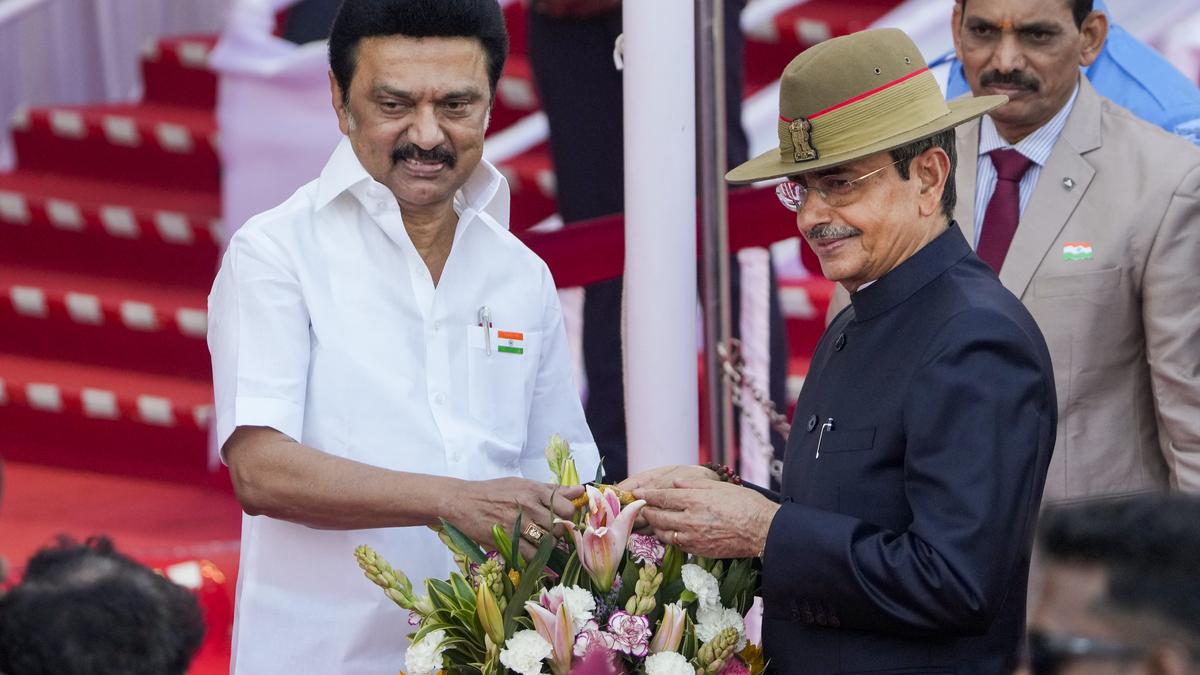
- 29 Sep 2025
In News:
The Supreme Court of India is currently examining a Presidential reference on whether fixed timelines can be prescribed for Governors and the President in giving assent to Bills passed by State legislatures. The reference arises from growing concerns over delays in assent, which have triggered debates about the balance of power, federalism, and accountability within India’s constitutional framework.
Constitutional Provisions
Under Article 200 of the Constitution, when a Bill is passed by a State legislature, it is presented to the Governor for assent. The Governor may:
- Grant assent.
- Withhold assent.
- Reserve the Bill for the President’s consideration.
- Return the Bill (if not a Money Bill) with a message for reconsideration.
If the legislature passes the Bill again, the Governor is constitutionally obliged to grant assent. Article 201 governs the President’s assent to Bills reserved by Governors. Notably, neither Article prescribes a timeframe for decision-making, allowing for indefinite delays, which some States view as a de facto pocket veto.
The Current Debate
States such as Tamil Nadu, Kerala, Punjab, and Telangana have raised complaints about Governors withholding or delaying assent, often stalling critical legislative reforms. The Supreme Court is tasked with determining whether judicially enforceable timelines can be set to prevent such inaction, while ensuring the Governor’s discretion is respected.
Proponents argue that indefinite delays undermine parliamentary democracy and the functioning of elected governments. Critics caution that imposing strict timelines could limit constitutional discretion and upset the delicate Centre-State balance. The Union government has maintained that Governors operate within their constitutional mandate and that delays may result from the need for scrutiny or consultation with the Centre.
Judicial Precedents
Earlier rulings, including Shamsher Singh v. State of Punjab (1974) and NabamRebia v. Deputy Speaker (2016), emphasized that Governors are generally bound by the aid and advice of the Council of Ministers, except in exceptional circumstances. The current reference under Article 143 seeks to clarify whether inaction can be constitutionally limited through prescribed timelines, ensuring accountability without undermining constitutional checks.
Implications for Federalism
- Strengthening Legislative Authority: Time-bound assent would reinforce the role of elected State legislatures, reducing the scope for executive interference.
- Preventing Political Deadlocks: Clear timelines could mitigate friction between Governors and State governments, facilitating smoother legislative functioning.
- Judicial Oversight: The Supreme Court’s intervention could clarify constitutional ambiguities affecting Centre-State relations, setting a precedent for other offices where delays impact governance.
- Balancing Discretion and Accountability: A measured approach could preserve the Governor’s discretionary powers while ensuring responsiveness to elected governments.
Conclusion
The question of whether timelines can be fixed for Governors and the President is more than a procedural issue—it reflects the tensions inherent in India’s federal design. Governors are intended as neutral constitutional authorities, yet their actions are often perceived through the prism of partisan politics. By addressing this grey area, the Supreme Court has an opportunity to redefine Centre-State dynamics, strengthen legislative authority, and enhance accountability within India’s parliamentary democracy. The ruling will have far-reaching implications for federal governance, political neutrality, and the balance of power in the legislative process.
Artificial Intelligence and India’s Global Race
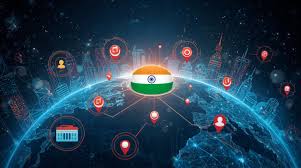
- 28 Sep 2025
In News:
Artificial Intelligence (AI) is reshaping the global technological and economic order, influencing sectors from healthcare to defence. For India, AI represents both a transformative development tool and a strategic domain crucial for economic competitiveness and national security.
India’s Position in the Global AI Landscape
India has entered the AI race with significant momentum, backed by a vast digital ecosystem and growing policy support. The government’s India AI Mission, with an outlay of ?10,372 crore, seeks to enhance AI infrastructure, computing power, and research capacity. With over one billion smartphone users and 20 billion monthly UPI transactions, India offers a data-rich environment that can power AI development at scale.
However, compared to the United States ($20 billion) and China ($30 billion) in AI investments during 2024, India’s funding remains modest. While India boasts a talent base of over 18 million software professionals and has integrated AI into school curricula, it still lags in advanced research output and patent generation.
Opportunities for India’s Development
AI holds immense potential to drive India’s socio-economic transformation:
- Healthcare: AI-assisted diagnostics and predictive models can enhance early disease detection, telemedicine outreach, and epidemic forecasting.
- Education: Initiatives like the Bhashini Project enable real-time language translation, improving accessibility and inclusivity in classrooms and governance.
- Agriculture: AI-driven precision farming and weather-based advisories can help small farmers optimise productivity and manage climate risks.
- Finance: Tools such as “Hello UPI” and AI-based fraud detection can deepen rural financial inclusion and strengthen digital security.
- Disaster Management: States like Odisha employ AI in cyclone prediction and geospatial mapping, showcasing AI’s role in saving lives and resources.
Together, these applications align with India’s broader developmental goals of inclusion, sustainability, and resilience.
Challenges in India’s AI Ecosystem
Despite its promise, India faces structural and institutional constraints:
- Infrastructure Deficit: Limited access to high-end GPUs and slow expansion of data centres constrain computational capacity.
- R&D Weakness: India contributes barely 1.4% of global AI research papers and produces less than 2% of global AI PhDs, reflecting a shallow innovation base.
- Regulatory Lag: The outdated IT Act (2000) continues to govern digital activities, lacking provisions for algorithmic transparency, accountability, and data ethics.
- Talent Gap: The focus on short-term certification courses produces surface-level skills rather than deep AI expertise.
- Geopolitical Pressure: The US, EU, and China lead in developing Large Language Models (LLMs), while India risks remaining a consumer market rather than a producer of foundational AI technologies.
Way Forward
A robust AI ecosystem requires a multi-dimensional approach:
- Strengthen Research and Innovation: Enhance public funding for fundamental AI research and incentivise private R&D.
- Human Capital Development: Expand AI training beyond elite institutions and develop teacher capacity for advanced AI pedagogy.
- Regulatory Reforms: Enact a Digital India Act and an AI-specific ethical charter inspired by the EU AI Act, ensuring safety without stifling innovation.
- Public–Private Collaboration: Establish AI innovation hubs focused on healthcare, agriculture, and sustainability.
- Global Partnerships: Engage with international initiatives and leverage India’s leadership in G20 and BRICS to promote responsible AI governance.
Conclusion
India’s AI trajectory stands at a decisive juncture. With its digital depth, demographic advantage, and policy intent, the country can harness AI to drive inclusive growth and global leadership. Yet, without addressing gaps in research, regulation, and ethics, India risks being a user rather than a creator in the AI revolution. Balancing innovation with responsibility will determine whether India can truly emerge as a leading power in the AI-driven century.
River Pollution in India
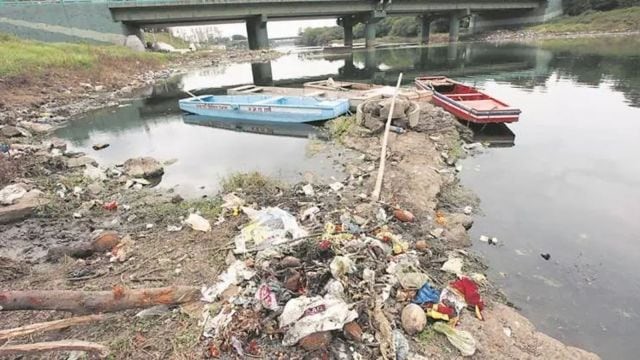
- 27 Sep 2025
In News:
Rivers are the lifelines of India, sustaining agriculture, industry, and millions of livelihoods. Yet, rapid urbanisation, untreated sewage, industrial effluents, and agricultural runoff have severely degraded many river ecosystems. According to the Central Pollution Control Board (CPCB), river pollution remains a critical environmental and public health challenge.
Status of River Pollution
The CPCB’s 2023 assessment indicates a marginal reduction in polluted river stretches. Out of 271 rivers across 32 states and Union Territories, 296 stretches were identified as polluted, down from 311 in the previous assessment. Maharashtra continues to report the highest number of polluted stretches (54), followed by Kerala (31), Madhya Pradesh and Manipur (18 each), and Karnataka (14).
Polluted stretches are defined as two or more consecutive locations where the biochemical oxygen demand (BOD) exceeds 3 mg/L, rendering water unfit for bathing. BOD measures the oxygen consumed by microorganisms in decomposing organic matter, serving as a key indicator of organic pollution. The CPCB classifies polluted stretches into five priority categories, with Priority I (BOD >30 mg/L) representing the most contaminated stretches requiring urgent remediation. Currently, 37 stretches fall under Priority I, including the Yamuna (Delhi), Sabarmati (Ahmedabad), Chambal (Madhya Pradesh), and Tungabhadra (Karnataka).
However, despite marginal improvements, certain rivers have recorded deterioration in water quality. Notable examples include the Jhelum (J&K), Ganga and Sikrahna (Bihar), Hasdeo and Mahanadi (Chhattisgarh), Cauvery and Tungabhadra (Karnataka), Periyar (Kerala), and Krishna (Telangana).
Major Causes
- Untreated Sewage: Urban centres generate over 72,000 million litres/day (MLD) of sewage, with only 30% treated.
- Industrial Effluents: Chemical, textile, and other industrial hubs discharge toxic waste despite regulatory frameworks.
- Agricultural Runoff: Fertilisers and pesticides enter rivers during monsoons, affecting aquatic ecosystems.
- Encroachments and Sand Mining: These activities degrade riverbeds and floodplains, compounding pollution impacts.
Impacts
Polluted rivers compromise aquatic biodiversity, pose health risks via waterborne diseases, and lead to economic losses in fisheries and agriculture. Social unrest, as seen along the Yamuna and Ganga, underscores the public concern over deteriorating river health.
Institutional Interventions
In 2018, the National Green Tribunal (NGT) mandated states and the Centre to prepare river rejuvenation action plans. The CPCB, in collaboration with State Pollution Control Boards, monitors water quality at over 2,155 locations on 645 rivers under the National Water Quality Monitoring Programme. Recommended measures include catchment and basin management, floodplain protection, and sewage treatment.
While initiatives such as the Namami Gange Mission, Jal Jeevan Mission, and promotion of decentralised sewage treatment plants show progress, persistent infrastructure gaps, coordination failures, and urbanisation pressures remain major challenges.
Way Forward
Sustainable river rejuvenation requires holistic approaches—strengthening sewage treatment, enforcing industrial compliance, controlling agricultural runoff, and fostering community participation. Integrating scientific monitoring with participatory governance can help restore rivers as ecological lifelines while ensuring water security, public health, and environmental sustainability.
H-1B Visa Overhaul and Its Implications for India–US Tech Relations
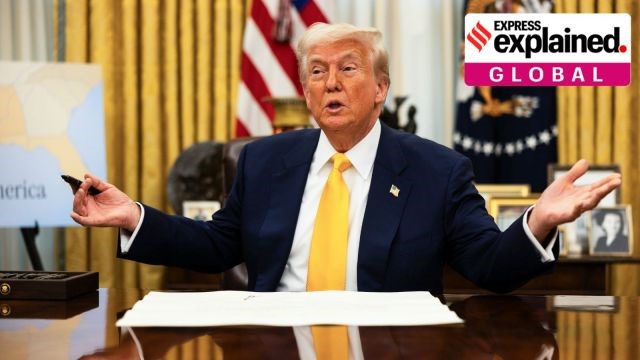
- 26 Sep 2025
In News:
The United States government has announced a sweeping change to its H-1B visa programme, introducing a $100,000 annual entry fee per visa effective September 21, 2025. Framed as a measure to protect American workers, this move has significant geopolitical and economic implications, particularly for India, whose citizens constitute over 70% of all H-1B beneficiaries annually.
What the New Rule Entails
Under the new proclamation signed by President Donald Trump, no petition filed for an H-1B worker outside the US will be approved unless the sponsoring employer pays the $100,000 fee upfront. Applications without proof of payment will be denied at consular processing. The rule applies to new entrants or those seeking re-entry after travel, though workers already in the US on valid H-1B status are exempt.
The order, valid for 12 months with scope for review, also directs the Department of Labor to raise wage levels for H-1B jobs and asks the Department of Homeland Security (DHS) to prioritise petitions offering higher salaries. A discretionary clause empowers DHS to waive the fee for specific individuals, companies, or entire industries if deemed in the “national interest.” However, the proclamation does not define which sectors qualify—though healthcare, defence, and critical technology are likely candidates.
Rationale and Political Context
Immigration has become a central and polarising issue in US politics. Public concern on immigration rose from 2.1% in 2012 to 14.6% in 2024 as a top voter priority. Trump’s political narrative has long linked immigration—both low-skilled and skilled—to job displacement and wage depression among the American working class. The H-1B programme, originally designed to attract top global talent in STEM (Science, Technology, Engineering, and Mathematics) fields, is now portrayed by nativist factions as a vehicle for outsourcing and wage suppression.
Data from the US Citizenship and Immigration Services (USCIS) indicate that nearly 70% of H-1B approvals for Indian workers in FY2023 were for salaries below $100,000, while the median US IT salary was $104,420.
Economic and Industrial Impact
The fee fundamentally alters the cost structure of hiring global talent. The new surcharge, in addition to existing statutory fees, transforms the H-1B from a skill-mobility programme into a premium channel accessible mainly to top-tier corporations or sectors granted exemptions.
Big Tech firms such as Amazon, Microsoft, Meta, Google, and Apple—already the largest H-1B sponsors—face millions in additional costs. Indian IT service giants like Infosys, TCS, Wipro, and HCL, who rely on the visa for onsite client delivery, are particularly vulnerable. The policy may push more work to offshore hubs in Bengaluru, Hyderabad, and Pune, reinforcing India’s role as a global back-office and development centre rather than an onsite service provider.
Startups, universities, and research labs, often operating on tight budgets, may scale back recruitment or face disruption to innovation and research projects if waivers are not granted.
Implications for India
For India, this measure could limit opportunities for young professionals transitioning from student visas (OPT) to H-1Bs, while families already in the US may face travel restrictions and uncertainty. However, it may also spur reshoring of tech investment to India, as multinational firms expand local operations to mitigate costs.
Conclusion
The $100,000 H-1B fee marks a decisive shift in US immigration policy—from selective reform to fiscal deterrence. While it may serve short-term political optics of job protectionism, it risks undermining America’s long-standing advantage in global innovation. For India, the challenge lies in turning this disruption into opportunity—by strengthening domestic tech ecosystems, skilling talent, and positioning itself as a preferred global innovation hub amid shifting international labour dynamics.
State Finances publication 2025 by CAG
- 25 Sep 2025
In News:
The Comptroller and Auditor General (CAG) of India released the State Finances Publication 2025, providing a comprehensive assessment of revenue, expenditure, debt, and fiscal sustainability across India’s 28 states. The report highlights critical trends in committed expenditure, salary and subsidy bills, and public debt, offering insights for policy planning and fiscal management.
Salary and Subsidy Expenditure
- Over the last decade (2013-14 to 2022-23), states’ salary bills have grown 2.5 times, reaching ?16.6 lakh crore, forming the largest component of committed expenditure.
- Subsidy spending, defined as day-to-day operations that do not create or enhance assets, more than trebled to ?3.09 lakh crore, accounting for 8.61% of total revenue expenditure.
- The distribution of subsidy expenditure is highly uneven. In 2022-23, Punjab, Gujarat, Andhra Pradesh, and Rajasthan spent over 10% of their total expenditure on subsidies, with Punjab at 17%, the highest among states. By contrast, 10 states, including Sikkim, Nagaland, Kerala, and Goa, reported subsidies below 2%, and Arunachal Pradesh recorded no subsidy spending.
Committed Expenditure Patterns
Committed expenditure, comprising salaries, pensions, and interest payments, constituted 43.49% of states’ revenue expenditure in FY 2022-23. The share varied widely across states:
- Nagaland: 74%
- Kerala: 63%
- Tamil Nadu: 51%
- Andhra Pradesh: 42%
- Telangana: 41%
- Karnataka: 33%
- Maharashtra: 32%
In total, 15 states reported committed expenditure exceeding 50% of revenue expenditure, seven between 40–50%, and six below 40%. The report indicates that committed expenditure and subsidies together have frequently exceeded states’ own tax revenues, reaching 102% in 2013-14 and 134% in 2020-21, signaling fiscal pressure and limited flexibility.
Public Debt and Fiscal Risk
Public debt has risen 3.4 times over the last decade, reaching ?59.6 lakh crore, approximately 23% of the combined Gross State Domestic Product (GSDP). This increase in debt, coupled with rising committed expenditure, poses medium-term fiscal risks, necessitating prudent fiscal management and reforms.
Union Tax Devolution and Revenue Sources
States’ major revenue sources include own taxes and non-tax revenues, grants-in-aid, and their share of Union taxes. Between 2013-14 and 2022-23, states’ average share of Union taxes remained around 27% of total revenue receipts, with FY 2022-23 showing the same share.
Distribution of devolved taxes is concentrated:
- Top 5 states (UP, Bihar, MP, West Bengal, Maharashtra) received 50% of devolved taxes.
- Southern states’ shares: Tamil Nadu 4.08%, Andhra Pradesh 4.02%, Karnataka 3.65%, Telangana 2.07%, and Kerala 1.93%.
Policy Implications
The CAG report underscores the rising fiscal pressures on states due to expanding salary bills, high subsidies, and growing debt. With committed expenditure consuming a large portion of revenue, states have limited fiscal space for development and capital investment. The findings highlight the need for targeted reforms in public expenditure management, subsidy rationalisation, and debt sustainability, ensuring that states can maintain service delivery without compromising fiscal health.
Mana Mitra: Andhra Pradesh’s WhatsApp Governance Model
- 24 Sep 2025
In News:
- The Central Government, through the Department of Administrative Reforms and Public Grievances (DARPG), has decided to study and replicate Andhra Pradesh’s “WhatsApp Governance Model”, recognized as a national best practice in e-governance.
- The announcement came during the 28th National Conference on e-Governance 2025, held in Visakhapatnam on the theme “Viksit Bharat: Civil Service and Digital Transformation.”
About Mana Mitra
- Mana Mitra, launched by the Andhra Pradesh government in January 2025, is India’s first WhatsApp-based governance platform.
- It integrates 36 departments and provides 738 citizen services through a single WhatsApp number — 9552300009 — ensuring accessibility, efficiency, and transparency in public service delivery.
Objectives
- Ease of Access: Deliver services through WhatsApp, a widely used platform, reducing citizens’ dependence on physical offices.
- Transparency & Trust: Digital certificates are issued with QR-coded verification, minimizing fraud and fake documentation.
- Inclusivity: Brings governance to the mobile phones of rural and remote citizens, fostering last-mile digital inclusion.
How It Works
- Single-Number Access: Citizens initiate a chat by sending “Hi” on WhatsApp.
- Menu-Driven Services: A chatbot guides users through departments and available services—education, revenue, endowments, RTC, tourism, and health.
- Instant Document Delivery: Documents such as income and caste certificates, hall tickets, and tax receipts are generated digitally with verifiable QR codes.
- Real-Time Dashboard: Tracks service delivery, ensuring accountability and performance monitoring.
- Next-Gen Tech Integration: Future phases will use AI chatbots, voice-based assistance, and blockchain authentication for secure transactions.
Key Features
- Wide Coverage: 738 services across 36 departments.
- Security: Built-in encryption and QR verification to prevent misuse.
- Partnership with Meta: Ensures robust backend infrastructure and global-grade security.
- Scalability: Phase-II aims to include AI, voice, and real-time grievance redressal systems.
Significance and Impacts
- Citizen-Centric Governance: Empowers citizens by providing services at their fingertips, in line with the vision of Minimum Government, Maximum Governance.
- Administrative Efficiency: Reduces paperwork, manual processing, and delays through automation.
- Cost and Time Savings: Citizens save travel and administrative costs; departments save on manpower and logistics.
- Digital Inclusion: Leverages WhatsApp’s nearly 500 million Indian users, ensuring access even in areas with limited digital literacy.
- Model for Replication: DARPG recognized it as a national model to be documented and replicated across all states.
Challenges
- Digital Divide: Connectivity issues in remote and tribal regions can hinder equitable access.
- Cybersecurity Threats: Phishing, fake accounts, or data breaches must be prevented through strong encryption and verification systems.
- Capacity Building: Frontline staff need training for effective digital grievance handling.
- Data Privacy: Must comply with the Digital Personal Data Protection Act (DPDPA) 2023.
- Scalability and Reliability: Systems must withstand heavy user loads without technical failures.
Way Forward
- AI & Voice Integration: Enable predictive service delivery and multilingual assistance.
- Strengthen Cybersecurity: Introduce two-factor authentication and blockchain-based certification.
- Enhance Digital Literacy: Awareness campaigns targeting rural, elderly, and marginalized populations.
- Institutionalization: Provide legislative backing to make WhatsApp governance legally accountable.
- Nationwide Replication: Integrate with platforms like DigiLocker, UPI, and CoWIN to create a unified digital service ecosystem.
The 28th National Conference on e-Governance 2025
- Venue: Visakhapatnam, Andhra Pradesh.
- Organizers: DARPG and the Ministry of Electronics & IT in collaboration with the AP Government.
- Theme:Viksit Bharat: Civil Service and Digital Transformation.
- Participants: Delegates from 28 States and 8 Union Territories, including 70 speakers.
- Focus Areas:
- AI for Viksit Bharat: Driving inclusive and scalable solutions.
- Cybersecurity and digital sovereignty in e-governance.
- Gram Panchayat-level innovations and agri-stack development.
- Role of subsea cables and AI data centers in digital infrastructure.
Conclusion
Mana Mitra represents a transformative step in India’s digital governance journey, bridging citizens and the state through a simple yet powerful medium — WhatsApp. By ensuring transparency, efficiency, and inclusivity, it exemplifies how technology can democratize governance. If successfully replicated nationwide, this model could become a cornerstone of Viksit Bharat 2047, bringing governance truly “to the people’s fingertips.”
ICMR’s Impact of Research and Innovation Scale (IRIS)
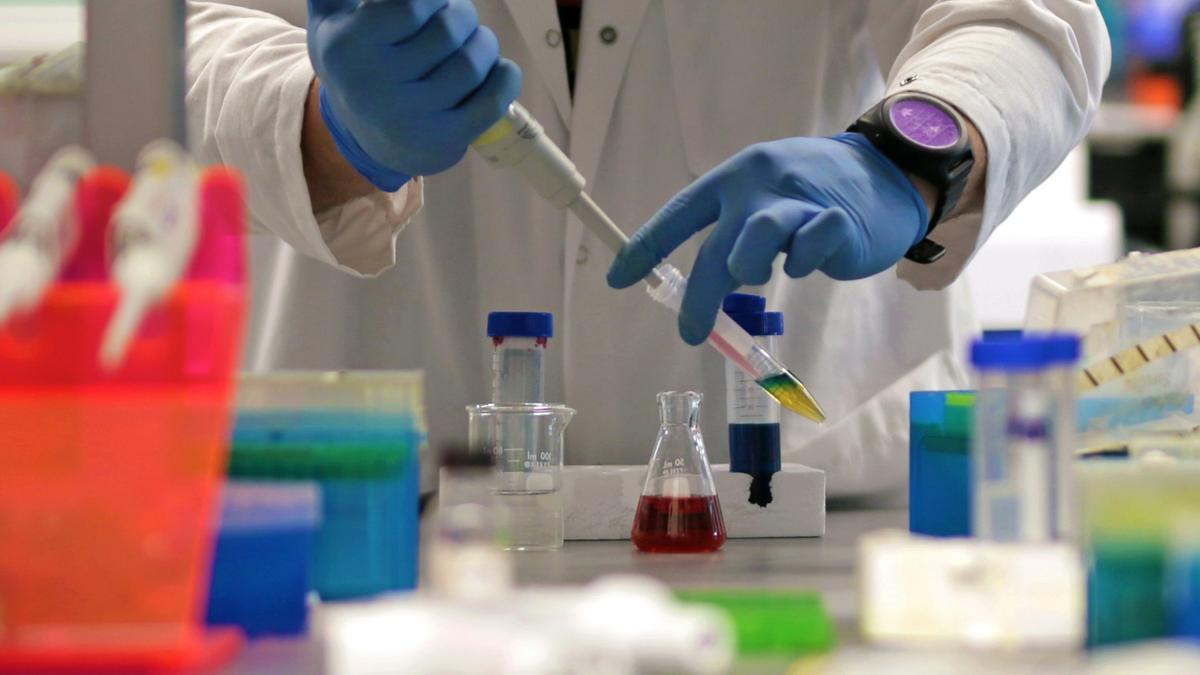
- 23 Sep 2025
In News:
- The Indian Council of Medical Research (ICMR) — India’s apex body for biomedical and health research — has introduced the Impact of Research and Innovation Scale (IRIS) to systematically measure the impact of biomedical, public health, and allied research projects.
- As India’s foremost grants-giving and policy-shaping institution in health research, ICMR’s adoption of IRIS is expected to significantly influence the country’s scientific and academic landscape.
Objective and Design
IRIS seeks to create a uniform and quantifiable metric to evaluate research outcomes. It introduces the concept of “publication-equivalents” (PEs) as the unit of measurement.
- A peer-reviewed research paper or systematic review carries 1 PE.
- A paper cited in policies or guidelines earns 10 PEs.
- A patent is valued at 5 PEs, while a commercially used device attracts 20 PEs.
By linking these metrics to funding and recognition, IRIS aims to encourage outcome-oriented research, policy translation, and innovation across disciplines such as biochemistry, clinical medicine, public health, and biomedical engineering.
Potential Benefits
- Standardisation of Evaluation:IRIS offers a common yardstick across scientific domains, enabling fairer comparisons of research productivity and impact.
- Recognition Beyond Citations:Unlike traditional citation-based indices, IRIS recognises diverse contributions such as patents, policy impact, and product development — providing a broader view of research value.
- Policy and Funding Integration:The framework can help align funding priorities with national health goals by linking measurable impact to resource allocation, thus encouraging translation of research into public health outcomes.
- Encouragement for Innovation:The model rewards applied research, particularly innovations that reach commercialization or large-scale public use, which may accelerate India’s biomedical innovation ecosystem.
Concerns and Limitations
Despite its intent, the framework faces methodological and ethical challenges.
- Conceptual Weakness: The PE values appear arbitrary and lack robust theoretical justification. Influential works — such as commentaries or perspective papers — receive zero PEs, despite their historical significance in shaping medical thought.
- Skewed Incentives: By assigning higher PEs to commercial devices (20) than to policy-level impact (10), IRIS risks overemphasizing commercialization at the cost of basic science and public health research. Transformative community-based interventions like India’s Home-Based Neonatal Care or nutrition trials in tuberculosis (RATIONS) may be undervalued.
- Ethical Concerns: The model could encourage metric manipulation or narrow research choices, especially in an ecosystem where research integrity is still evolving.
- Erosion of Science as a Public Good: Over-commercialization may undermine the ethos of research serving societal well-being rather than profit motives.
Way Forward
For IRIS to gain legitimacy, transparency, inclusivity, and peer validation are essential. Experts suggest conducting a national-level Delphi study to achieve consensus among researchers on PE assignment. Moreover, independent data verification and periodic review of the framework can ensure its adaptability and credibility.
Conclusion
Measuring research impact is inherently complex, and no single metric can capture the multifaceted nature of scientific contribution. While IRIS holds promise in standardizing research evaluation and fostering innovation, it must balance quantitative assessment with qualitative judgment, ensuring that India’s public health priorities and the spirit of science as a public good remain at its core. The success of IRIS will depend not merely on what it measures, but on whether it nurtures a research culture driven by ethics, relevance, and societal impact.
Rising State Debt in India: CAG’s Decadal Analysis and Fiscal Implications
- 22 Sep 2025
In News:
The Comptroller and Auditor General (CAG) of India has released a first-of-its-kind decadal report (2013–14 to 2022–23) analysing the fiscal health of Indian states, highlighting a worrying surge in public debt and its implications for fiscal sustainability and cooperative federalism.
Understanding Public Debt
- Public debt arises when government expenditure exceeds revenue from taxes and other receipts, prompting borrowing to bridge the fiscal gap. For states, such debt includes liabilities under the Consolidated Fund of the State, comprising internal debt and loans and advances from the Centre.
- Internal debt consists of marketable securities like government bonds and treasury bills, and non-marketable debt such as loans from financial institutions like LIC and NABARD or the Reserve Bank’s Ways and Means Advances (WMA).
- The Debt-to-GSDP ratio is a key indicator of fiscal sustainability, reflecting a state’s capacity to service its debt. A higher ratio implies greater fiscal stress.
- The NK Singh Committee on FRBM (2016) recommended a combined general government debt ceiling of 60% of GDP — 40% for the Centre and 20% for states.
Key Findings of the CAG Report
- The CAG report reveals that the aggregate public debt of 28 states trebled over the past decade — from ?17.57 lakh crore in 2013–14 to ?59.60 lakh crore in 2022–23.
- As a share of combined GSDP, debt rose from 16.66% to 22.96%, with state debt accounting for 22.17% of India’s GDP in FY 2022–23.
Inter-State Variations
Fiscal vulnerability varies widely:
- Highest debt-to-GSDP ratios: Punjab (40.35%), Nagaland (37.15%), and West Bengal (33.70%).
- Lowest ratios: Odisha (8.45%), Maharashtra (14.64%), and Gujarat (16.37%).
As of March 2023, eight states had debt exceeding 30% of GSDP, while six states maintained it below 20%.
Debt Sustainability and Composition
- The states’ debt-to-revenue receipts ratio ranged from 128% (2014–15) to 191% (2020–21), averaging about 150% of total receipts.
- The debt-to-GSDP ratio oscillated between 17–25%, with a sharp rise during the COVID-19 pandemic year (2020–21) due to falling GSDP and increased borrowing for relief and GST compensation.
- Major sources of debt include open market borrowings, RBI advances, institutional loans, and back-to-back loans from the Centre in lieu of GST shortfall and capital assistance.
Fiscal Management Concerns
- The report flags a violation of the “golden rule of borrowing”, which stipulates that governments should borrow only for capital formation, not to finance revenue expenditure.
- Eleven states, including Andhra Pradesh, Punjab, Kerala, and West Bengal, used borrowings to fund current expenses.
- In Andhra Pradesh, only 17% of borrowings went to capital expenditure; in Punjab, 26%.
Such practices threaten fiscal sustainability, crowd out productive investments, and risk pushing states into a debt trap, thereby undermining macroeconomic stability.
Way Forward
- Fiscal Discipline: States must prioritise borrowing for productive infrastructure and avoid financing recurring expenditure.
- Debt Management Reforms:Operationalising the Public Debt Management Agency (PDMA) could ensure transparency and better coordination in debt operations.
- Revenue Strengthening: Enhancing tax buoyancy, rationalising subsidies, and diversifying revenue bases can reduce dependence on central transfers.
- Adherence to FRBM Targets: States should align fiscal deficit and debt ratios with FRBM norms to ensure long-term sustainability.
- Institutional Oversight: Strengthening State Finance Commissions and CAG monitoring can promote accountable and sustainable fiscal federalism.
Conclusion
The surge in state-level debt underscores the growing strain on subnational fiscal capacity. While borrowing is essential for development, unchecked debt accumulation and non-productive spending threaten fiscal stability. Ensuring fiscal prudence, efficient debt management, and adherence to reform frameworks like FRBM are vital to preserving India’s long-term macroeconomic resilience and cooperative federal balance.
WAVES Bazaar 2.0

- 21 Sep 2025
In News:
India’s media and entertainment (M&E) industry is experiencing rapid digital transformation, fueled by rising global collaborations and the growing influence of independent creators. To channel this momentum and establish India as a global content hub, the Ministry of Information and Broadcasting (I&B) launched WAVES Bazaar in January 2025—a first-of-its-kind hybrid content marketplace that connects creators, investors, and distributors across various media segments.
Now entering its second phase, WAVES Bazaar is expanding with AI-driven matchmaking, online pitching sessions, and secure viewing rooms—initiatives aimed at strengthening India’s creative ecosystem and democratizing access for new talent.
About WAVES Bazaar
WAVES Bazaar serves as a digital platform bringing together diverse stakeholders from films, television, animation, gaming, music, radio, advertising, and podcasts. It allows creators to network, pitch ideas, and collaborate with OTT platforms, production houses, distributors, and financiers.
Key Features of the Second Phase
- Online Pitching and Viewing Rooms:Budding creators will now be able to pitch directly to production houses, OTT platforms, and investors through virtual sessions. The addition of secure online viewing rooms will allow content buyers to preview projects safely, ensuring transparency and intellectual property protection.
- AI-Driven Matchmaking and Profiling:Artificial Intelligence will enhance the platform’s efficiency by recommending suitable collaborators—such as financiers, distributors, or genre-specific buyers—based on project details. The system will also support automated profile building, pitch deck creation, and project scoring, guiding creators to improve their market visibility.
- Skill Development and Knowledge Hub:The second phase introduces a knowledge ecosystem comprising webinars and masterclasses by industry experts. These sessions aim to bridge the knowledge gap for emerging creators and provide mentorship on project development, financing, and global trends.
- Global Outreach and Co-Production Opportunities:WAVES Bazaar will expand its international footprint through delegations and participation in global festivals. It also seeks to strengthen co-production treaties with partner countries, promoting cross-border collaboration and investment in India’s creative sectors.
Significance for India’s Creative Economy
The initiative aligns with India’s ambition to become a global content hub by enabling equal opportunities for small and independent creators. It aims to diversify creative exports beyond films into music, gaming, animation, podcasts, and short-form content, while also enhancing India’s soft power and digital cultural economy.
By integrating technology, mentorship, and market access, WAVES Bazaar could emerge as the central gateway for Indian creative exports, fostering innovation and sustainable growth in the sector.
Challenges and Way Forward
While the portal’s potential is immense, its success will depend on addressing data security, ensuring inclusive access for regional creators, and maintaining long-term international partnerships. If implemented effectively, WAVES Bazaar 2.0 can position India as a leading creative powerhouse, bridging the gap between talent and opportunity in the global digital age.
Rising Extreme Rainfall in the Himalayas
- 20 Sep 2025
In News:
The 2025 monsoon season has witnessed intense and destructive rainfall across North India, particularly in the Himalayan states of Uttarakhand, Himachal Pradesh, and Jammu & Kashmir. Cloudbursts, landslides, and flash floods have resulted in widespread devastation, exposing the growing vulnerability of India’s mountain ecosystems and urban regions. The intensification of monsoon rainfall can be traced to the complex interplay of global climate change, regional topography, and anthropogenic factors such as urbanisation and deforestation.
Scientific Basis of Intensified Rainfall
Dry regions like northwestern India lie at the confluence of tropical and extratropical systems. Moist monsoon currents from the Bay of Bengal and Arabian Sea increasingly collide with western disturbances, producing strong atmospheric instability and torrential rainfall. This interaction has become more frequent as climate change alters the behaviour of mid-latitude westerlies.
Global warming weakens and destabilises the jet stream, allowing westerly troughs to extend southward and interact with the monsoon more often. A warmer atmosphere holds more moisture, intensifying the hydrological cycle and leading to heavier downpours. These processes have made events like the recent Udhampur (630 mm in 24 hours) and Leh (59 mm in two days) rainfall episodes more common, even in regions historically considered semi-arid.
Why the Himalayas Are More Vulnerable
The Himalayas sit at the convergence of moist tropical monsoon winds and mid-latitude westerlies, creating ideal conditions for orographic uplift and deep convection that trigger extreme precipitation and cloudbursts. When moisture-laden air is forced up steep slopes, it cools rapidly and condenses into intense, localised storms.
Climate change compounds this natural vulnerability. Rapid Arctic warming is weakening the jet stream, causing slower and more meandering weather systems that linger over regions, leading to prolonged heavy rainfall. Similar dynamics have been linked to the Pakistan floods (2010), Germany (2021), and West Asia (2024) events.
In mountainous terrain, rainfall that would be manageable in coastal plains becomes catastrophic — flash floods and landslides occur as water cascades downhill, carrying debris, loose soil, and boulders. Over the last month, such incidents have been recorded in Mandi, Kullu, Dharali, Tharali, and Jammu, destroying homes and cutting off roads.
Challenges in Prediction and Preparedness
Despite technological advances, forecasting cloudbursts remains challenging. Current systems employ Doppler Weather Radars (DWRs), satellites (INSAT-3D/3DR, GPM, Himawari), rain gauges, and high-resolution numerical weather prediction (NWP) models. However, coverage in Himalayan terrain is sparse, satellite resolution is coarse, and models require ultra-fine grid scales (<1 km) with precise initial conditions.
Improved dense observation networks, enhanced process-based models, and integration of AI/ML techniques for real-time data assimilation are critical for reliable nowcasting.
Urban and Developmental Pressures
Rapid urbanisation, deforestation, and construction on unstable slopes have magnified the flood risks in both mountain towns and plains cities. Urban drainage systems, designed for rainfall of only 10–20 mm/hour, are ill-equipped for cloudbursts exceeding 100 mm/hour. Concretised surfaces increase runoff, while encroachments block natural drainage, turning heavy rain into urban deluges.
Mitigation demands a multi-pronged approach—redesigning stormwater systems, enforcing land-use regulations, restoring natural water channels, and incorporating climate risk assessments in infrastructure planning.
Conclusion
The increasing frequency of extreme rainfall and cloudbursts in India’s Himalayan and urban regions reflects the intersection of climate dynamics, fragile topography, and unsustainable development. Strengthening early warning systems, integrating scientific forecasting with local planning, and promoting climate-resilient infrastructure are essential to mitigate future disasters. The Himalayan crisis underscores a broader reality—climate change is no longer a distant threat but an unfolding challenge demanding immediate, coordinated action.
Central Civil Services (Unified Pension Scheme) Rules, 2025
- 19 Sep 2025
In News:
The Government of India has notified the Central Civil Services (Implementation of the Unified Pension Scheme under the National Pension System) Rules, 2025, in the official gazette. The rules, issued by the Department of Pension and Pensioners’ Welfare (DoPPW), operationalize the Unified Pension Scheme (UPS) introduced earlier in April 2025 and regulate service matters and retirement benefits for Central Government employees opting for it under the National Pension System (NPS).
Evolution of Pension Systems in India
- Historically, Central Government employees appointed before January 1, 2004 were covered under the Old Pension Scheme (OPS), a defined-benefit system guaranteeing 50% of the last drawn basic pay without employee contribution. Employees joining after this date were brought under the National Pension System (NPS)—a market-linked, contributory framework where the pension depends on corpus accumulation and market returns.
- In response to persistent demands to restore the security of OPS while maintaining fiscal prudence, the Union Cabinet approved the Unified Pension Scheme (UPS) in August 2024. Effective from April 1, 2025, it offers a middle ground between the assured benefits of OPS and the sustainability of NPS.
Salient Features of the Unified Pension Scheme
The UPS guarantees an assured pension of 50% of the average basic pay of the last 12 months before retirement, provided the employee has completed at least 25 years of service. In the event of the pensioner’s death, the spouse is entitled to 60% of the pension.
- Contribution pattern: Both employee and employer contribute 10% of basic pay plus DA, while the government adds an additional 8.5% to create a pooled corpus ensuring assured payouts.
- Minimum pension: ?10,000 per month after 10 years of service.
- Lump-sum benefit: One-tenth of the last basic pay plus DA for every six months of service.
- Ineligibility: Employees dismissed, removed, or compulsorily retired as a penalty are excluded from UPS benefits.
This structure blends assured returns with shared contributions, balancing financial security for employees and fiscal discipline for the government.
Switch Facility: UPS–NPS Flexibility
The 2025 Rules provide employees a one-time switch option between the two schemes:
- Employees under UPS may switch to NPS once—but cannot revert to UPS thereafter.
- The option must be exercised at least one year before superannuation or three months before voluntary retirement (VRS).
- The switch is prohibited in cases involving dismissal, removal, or ongoing disciplinary action.
- Those not exercising the option within the stipulated time (September 30, 2025) will continue under UPS.
- Employees switching to NPS will receive its benefits plus a 4% differential contribution.
The provision seeks to ensure informed choice and flexibility in retirement planning.
Implementation and Challenges
Though 23.94 lakh employees are eligible to opt for UPS, only around 40,000 have done so. The DoPPW is conducting awareness campaigns to clarify benefits, yet many employees perceive UPS as less attractive than the non-contributory OPS. Employee associations, including the Central Secretariat Service Forum, have continued to advocate for a full return to the old system.
Significance
The Unified Pension Scheme represents a recalibration of India’s pension architecture, merging assured post-retirement income with contributory discipline. It aims to protect employees from market volatility while containing long-term fiscal liabilities. Through the CCS (UPS) Rules, 2025, the government has institutionalized a flexible, transparent, and sustainable framework, marking an important step in public financial management and social security reform.
SEBI Announces Major Market Reforms to Enhance Investment and Governance

- 18 Sep 2025
In News:
The Securities and Exchange Board of India (SEBI) recently announced a set of comprehensive reforms aimed at improving foreign investment inflows, easing IPO norms for large issuers, strengthening governance in market infrastructure institutions (MIIs), and promoting financial inclusion. These reforms are introduced amid heightened global uncertainty, with foreign portfolio investors (FPIs) withdrawing over ?63,500 crore from Indian markets since July 2025 due to weak earnings, high valuations, and international trade tensions.
SWAGAT-FI: Single Window Access for Foreign Investors
A cornerstone of SEBI’s reforms is the Single Window Automatic &Generalised Access for Trusted Foreign Investors (SWAGAT-FI) framework, designed to simplify investment access for FPIs and Foreign Venture Capital Investors (FVCIs).
Eligibility and Scope:
- Sovereign wealth funds, central banks, regulated public retail funds (mutual funds, insurance companies, pension funds).
- Existing FPIs meeting criteria can migrate to SWAGAT-FI status.
Features:
- Unified registration and KYC cycle, reducing repeated compliance.
- Exemption from the 50% cap on contributions by NRIs, OCIs, and resident Indians.
- Simplified access through the India Market Access portal, reducing regulatory complexity.
- Implementation over a six-month timeline, aiming to restore investor confidence and enhance India’s global competitiveness.
Relaxed IPO Norms for Large Companies
To encourage large issuers to raise capital efficiently:
- Companies with market capitalization of ?1–5 lakh crore must now offer 2.75–2.8% of post-issue market cap, down from 5%.
- Minimum public offer for mega-IPOs raised to ?6,250 crore.
- Public shareholding timeline relaxed: Firms with <15% float at listing get 10 years to meet 25% minimum, and those with ≥15% float get 5 years.
- Anchor investor quota increased from one-third to 40%, reserving one-third for domestic mutual funds and the rest for life insurers and pension funds.
These measures help promoters reduce immediate dilution while facilitating broad investor participation.
Strengthened Governance in Market Infrastructure Institutions
SEBI has introduced structural reforms to improve transparency and accountability in exchanges and clearing corporations:
- Two executive directors appointed to oversee critical operations (trading, clearing, settlement) and regulatory compliance (risk, investor grievances).
- Defined roles and responsibilities for Managing Directors and Key Managerial Personnel to enhance succession planning.
- Scale-based thresholds introduced for material related-party transactions.
- Separate AIF schemes for accredited investors with flexible compliance norms.
Mutual Fund and Retail Investor Reforms
To promote financial inclusion and investor protection:
- Maximum exit load reduced from 5% to 3%.
- Distributor incentives revised to encourage inflows from B-30 cities and women investors.
- Enhanced transparency in investor reporting and compliance requirements.
Significance and Implications
- For India’s markets: Provides operational flexibility for large issuers, simplifies compliance, and reduces procedural hurdles for trusted foreign investors.
- For global competitiveness: Positions India as a stable, long-term investment hub amid capital volatility.
- For retail investors: Encourages broader participation from smaller cities and underrepresented groups, aligning with inclusive financial growth objectives.
Overall, SEBI’s reforms reflect a balance between market facilitation, investor protection, and governance standards, reinforcing India’s ambition to be an attractive, transparent, and globally competitive capital market.
India-Mauritius Relations
- 17 Sep 2025
In News:
India and Mauritius share deep-rooted historical, cultural, and economic ties, which have been further strengthened through recent diplomatic engagements. In September 2025, Prime Minister Narendra Modi met Mauritius PM Navinchandra Ramgoolam in Varanasi, reaffirming the partnership as more than a diplomatic arrangement, describing it as a “family bond” rooted in shared history, values, and strategic interests.
Special Economic Package and Development Cooperation
During the meeting, India announced a special economic package worth $680 million, aimed at supporting Mauritius in infrastructure, healthcare, defence preparedness, and maritime security. Key components of the package include:
- Healthcare: Establishment of a 500-bed Sir Seewoosagur Ramgoolam National Hospital, an AYUSH Centre of Excellence, and a Veterinary School and Animal Hospital. The first Jan Aushadhi Kendra outside India was also inaugurated.
- Infrastructure: Development of roads, highways, ring roads, and the ATC Tower at SSR International Airport.
- Strategic and Maritime Security: Assistance in Exclusive Economic Zone (EEZ) surveillance, hydrographic surveys, navigation charting, and maritime domain awareness over the next five years.
- Chagos Marine Protected Area: India will support Mauritius in monitoring, developing, and protecting the Chagos EEZ, following Mauritius’ sovereignty agreement with the UK.
These initiatives are positioned as hard and soft power diplomacy, enhancing India’s strategic reach in the Indian Ocean while improving Mauritius’ development and security capabilities.
Economic and Technological Cooperation
Mauritius is one of India’s closest economic partners in Africa, ranking as the second-largest source of FDI into India after Singapore. The two nations signed the Comprehensive Economic Cooperation and Partnership Agreement (CECPA) in 2021, India’s first trade deal with an African country. Last year, UPI and RuPay services were launched in Mauritius, and both nations are now exploring trade in local currencies.
India also supports academic and civil service capacity building through collaborations between IIT Madras, Indian Institute of Plantation Management, and the University of Mauritius, as well as the launch of Mission Karmayogi training modules.
Geopolitical and Strategic Significance
Mauritius views India as a trusted partner and net security provider in the Indian Ocean, reinforcing a free, open, and secure maritime domain. India’s support aligns with its Neighbourhood First and Vision Mahasagar policies, countering the growing influence of China, Russia, Iran, and Gulf nations in the region. By assisting Mauritius with EEZ surveillance and maritime capacity building, India strengthens its strategic leverage while bolstering Mauritius’ sovereignty, particularly in the Chagos Archipelago.
Cultural and People-to-People Connect
The bond between the two nations is also cultural and historical. Approximately 70% of Mauritius’ 1.3 million population are of Indian descent, and Indian culture, traditions, and languages are deeply embedded in daily life. During the Varanasi visit, the Mauritian Prime Minister participated in the Ganga Aarti and planned prayers at Shri Kashi Vishwanath Dham, highlighting the symbolic spiritual dimension of bilateral relations.
Conclusion
India’s multi-dimensional engagement with Mauritius demonstrates a blend of strategic foresight, development diplomacy, and cultural affinity. Through the special economic package, maritime cooperation, and people-centric initiatives, India not only strengthens Mauritius’ development and security but also consolidates its influence in a geopolitically vital part of the Indian Ocean, fostering mutual prosperity, stability, and strategic partnership.
Judicial Pendency in the Supreme Court
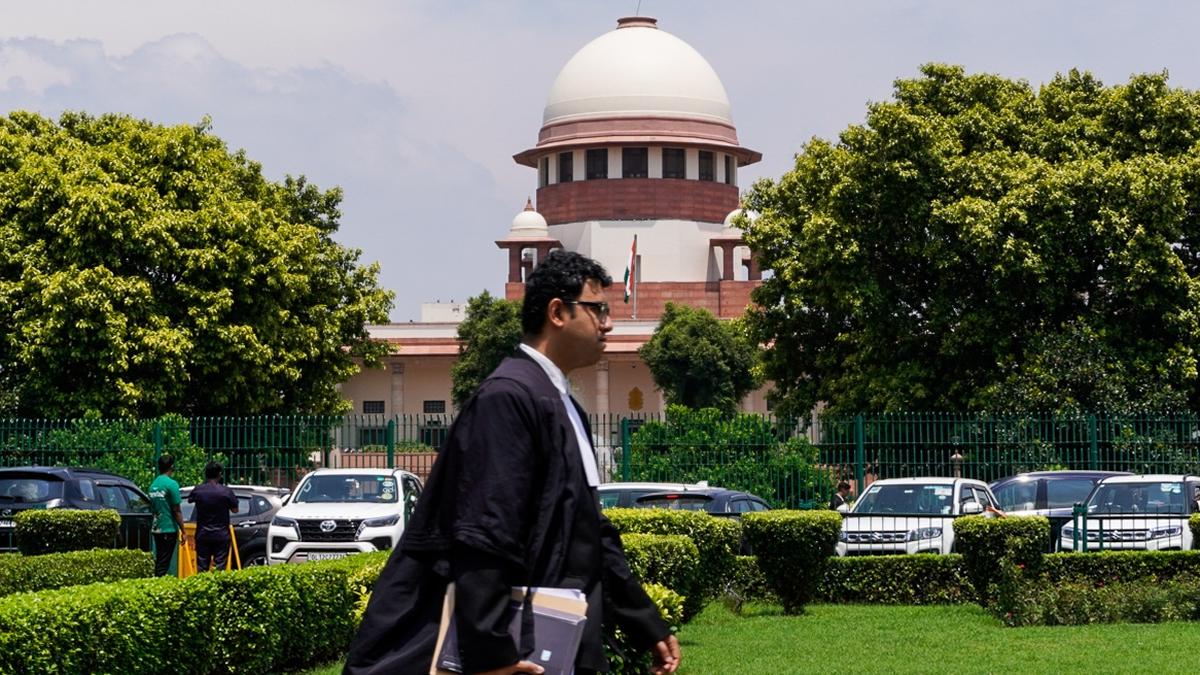
- 16 Sep 2025
In News:
The Supreme Court of India, the apex guardian of constitutional justice, is witnessing an unprecedented surge in pendency, reflecting deeper structural and procedural challenges in the judicial system. As of 2025, according to the National Judicial Data Grid (NJDG), the number of pending cases has reached an all-time high of 88,492, comprising 69,605 civil and 18,887 criminal cases. This marks a 35% rise in five years, even as the Court functions at its full sanctioned strength of 34 judges.
Causes of Rising Pendency
- Several systemic factors have contributed to this backlog. Despite digitization and virtual hearing reforms, the rate of disposal lags behind fresh filings — in August 2025 alone, 7,080 cases were filed while only 5,667 were disposed of, indicating a disposal rate of around 80%.
- The limited number of working days, frequent adjournments, and procedural complexities hinder case progression. India’s judge-to-population ratio remains alarmingly low at 21 judges per million people, far below the recommended 50. Moreover, the indiscriminate filing of Special Leave Petitions (SLPs) under Article 136 has transformed the Court into a general appellate body rather than a constitutional one.
- The government, as the largest litigant, contributes nearly 50% of total cases, many of which are repetitive or avoidable. In addition, outdated infrastructure, slow AI integration, and underutilization of Alternative Dispute Resolution (ADR) mechanisms like arbitration and mediation continue to strain the system.
Implications of Judicial Delay
The consequences of prolonged pendency are far-reaching. The oft-quoted maxim “justice delayed is justice denied” holds especially true in India, where delays erode public trust and institutional credibility. Prolonged trials lead to social injustice, particularly for vulnerable groups awaiting resolution of criminal and civil disputes.
Economically, legal uncertainty deters investment, slows contract enforcement, and raises transaction costs. The Indian Justice Report 2025 highlights that over 76% of prisoners are undertrials, leading to chronic prison overcrowding — a direct fallout of judicial delays.
Reform Measures and Innovations
- The Supreme Court has initiated multiple steps under its “Unclogging the Docket” initiative. The Differentiated Case Management (DCM) system categorizes cases based on complexity, allowing short and infructuous cases to be fast-tracked. This reform has achieved a disposal rate of 104%, setting a benchmark for judicial efficiency.
- Arrears Committees monitor long-pending cases and ensure compliance with the Malimath Committee recommendations, which advocate stricter timelines and reduced adjournments. Structural reforms like increasing judicial capacity, reducing vacation periods, and filling vacancies promptly have also been proposed.
- Legislative changes such as the Arbitration and Conciliation (Amendment) Acts of 2015 & 2019, the Commercial Courts Act (2018), and amendments to the Negotiable Instruments Act (2018) aim to streamline procedures and promote out-of-court settlements.
- Technological innovations like e-filing, virtual hearings, and the National Judicial Data Grid (NJDG) have improved transparency, though integration across courts remains incomplete. The Chief Justice’s recent move to convert part of the summer recess into working days underscores an institutional willingness to reform.
Way Forward
Experts have long advocated for dividing the Supreme Court into a Constitutional Division (for fundamental rights and constitutional issues) and a Legal Division (for statutory appeals), as proposed by the 10th and 11th Law Commissions. Expanding judicial strength, adopting AI-based case management, and promoting ADR mechanisms are equally vital.
Conclusion
The mounting pendency in the Supreme Court underscores a structural crisis demanding urgent multi-pronged reforms. While the Court’s efficiency initiatives and government’s prompt action on judicial appointments are encouraging, sustainable change requires institutional restructuring, procedural streamlining, and technological modernization. Upholding the ideal of “Speedy Justice as a Fundamental Right” is imperative for maintaining the faith of citizens in India’s democratic and judicial institutions.
India and Iran: Ancient Civilisations and the Shaping of a Multipolar World
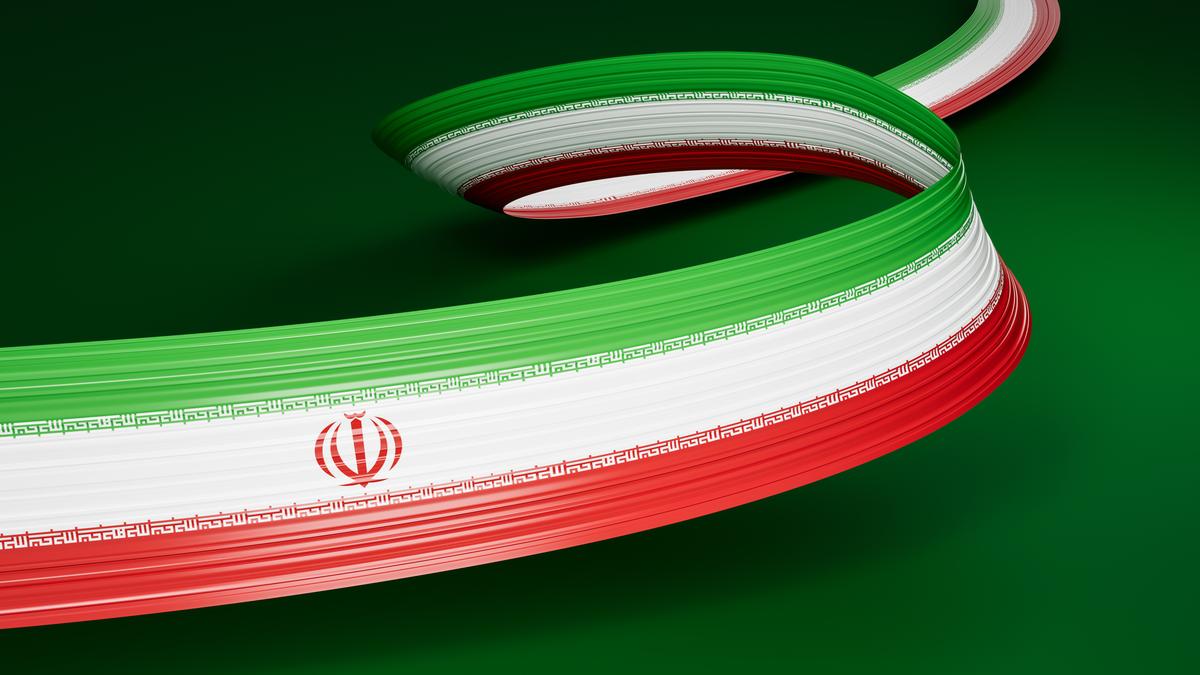
- 15 Sep 2025
In News:
The contemporary global order is in the midst of a profound transition. For decades, the international system was dominated by a Western-led order, particularly the United States, which wielded disproportionate influence through control over global finance, technology, media, and international institutions. However, this model now faces a crisis. Blatant violations of international law, unilateral military interventions, trade wars, disregard for multilateralism, and environmental degradation have eroded the credibility of Western dominance.
Rise of the Global South and Civilisational States
Amidst this flux, the Global South—comprising countries across Asia, Africa, and Latin America—has emerged as a collective force asserting strategic autonomy, indigenous development models, and self-reliance in science, technology, and security. Within this, ancient civilisational states like India and Iran occupy a unique position. With their histories of resilience, cultural depth, and governance wisdom, both countries embody values of peace, spirituality, respect for diversity, and sovereignty.
Despite repeated invasions, both civilisations absorbed and reshaped external powers through philosophy, art, and administration. In modern times too, India’s anti-colonial struggle and leadership of the Non-Aligned Movement, and Iran’s oil nationalisation in the 1950s and Islamic Revolution of 1979, underscore their quest for independence.
Contemporary Strategic Convergence
Today, both India and Iran face external pressures but continue to safeguard strategic autonomy. India pursues a balanced foreign policy amidst U.S.-China rivalry, while Iran has withstood sanctions and “economic terrorism” without compromising sovereignty. Their convergence is reflected in:
- Energy and Connectivity: The International North-South Transport Corridor (INSTC) and Chabahar Port enhance Eurasian and Indian Ocean linkages.
- Maritime Security: Cooperation in West Asia underlines their shared interest in regional stability.
- Civilisational Diplomacy: Both uphold dialogue, pluralism, and respect for sovereignty as guiding principles.
Palestine: A Symbol of Global South’s Resistance
The Palestinian struggle epitomises the Global South’s broader resistance to domination and double standards in international law. For India and Iran, support for Palestine reflects their commitment to justice, sovereignty, and peaceful conflict resolution.
Towards a Multipolar World Order
The emerging order is increasingly multipolar, with power distributed across diverse actors like India, China, Brazil, and regional middle powers. This shift emphasises equality, mutual respect, and sovereignty rather than unilateral dominance. India and Iran, by combining civilisational heritage with modern strategic partnerships, can shape this transformation in key ways:
- South-South Cooperation: Deepening BRICS, SCO, and NAM as platforms for financial and technological alternatives.
- Reforming Multilateralism: Advocating UN Security Council reform and inclusive global governance.
- Strategic Autonomy: Maintaining independence while deepening Eurasian, African, and Indo-Pacific linkages.
- Civilisational Values: Promoting peace, sustainability, diversity, and human dignity as anchors of a fairer order.
Conclusion
The erosion of Western hegemony presents both challenges and opportunities. India and Iran, rooted in civilisational resilience and guided by strategic independence, are well placed to contribute to the evolution of a just multipolar order. By advancing cooperative frameworks in connectivity, energy, and regional security, and by upholding values of sovereignty and inclusivity, the two nations can not only strengthen their bilateral partnership but also offer the Global South a vision of shared prosperity, dignity, and stability.
Vultures and Public Health: Linking Conservation with Pandemic Preparedness

- 14 Sep 2025
Introduction
Vultures, often overlooked in mainstream conservation discourse, are vital ecological assets that deliver critical ecosystem services. As nature’s most efficient waste managers, they swiftly consume animal carcasses, thereby preventing the spread of deadly pathogens such as anthrax, botulism, and rabies. Their decline in South Asia, particularly in India, is not only an ecological concern but also a pressing public health challenge with implications for pandemic preparedness.
Ecological and Public Health Role
Vultures are unique as obligate scavengers capable of consuming large quantities of rotting flesh and bone. By doing so, they prevent the accumulation of carcasses that otherwise become breeding grounds for zoonotic diseases. Studies link the disappearance of vultures to rising cases of rabies and other infections, as feral dogs and rodents, which proliferate in their absence, act as alternative scavengers and reservoirs of disease.
The economic value of this “free service” is immense. Between 1993 and 2006, India’s vulture collapse—among the worst human-caused wildlife die-offs—was estimated to have cost the economy nearly USD 34 billion and indirectly contributed to around 50,000 human deaths due to rabies. This highlights the underestimated yet indispensable role of vultures in sustaining public health and economic stability.
India’s Vulture Crisis
India once hosted more than 40 million vultures, but populations crashed by over 95% since the 1990s, mainly due to the veterinary use of diclofenac, a drug toxic to vultures when ingested through livestock carcasses. Other threats include habitat loss, poisoning, and electrocution from power lines. Although the National Action Plan for Vulture Conservation (2016–25) sought to mitigate these risks, the species remains critically endangered.
The vulture decline demonstrates a direct link between biodiversity loss and increased pandemic risks. Carcass dumps once swarmed with hundreds of vultures, but today many remain unprocessed, heightening risks of disease spillover from animals to humans.
Regional Dimensions: The Central Asian Flyway
Vultures in India are part of the Central Asian Flyway (CAF), a migratory corridor spanning over 30 countries and connecting ecosystems across Asia. Poorly managed landfills, slaughter sites, and carcass dumps along this route can become hotspots for pathogen spillover. Thus, the CAF is not only a biodiversity corridor but also a public health corridor, demanding transboundary collaboration under regional and global frameworks.
Post-2025 Strategy and One Health Approach
As India prepares its post-2025 vulture conservation strategy, a shift from recovery to resilience is crucial. Key priorities include:
- Satellite telemetry to map habitats and carcass hotspots.
- A Decision Support System integrating wildlife, livestock, and health data.
- Embedding vulture conservation within One Health frameworks linking human, animal, and environmental health.
- Cross-border cooperation under CAF to align conservation with global health security.
- Community stewardship, empowering women, youth, and local groups in surveillance and awareness.
Such measures would safeguard vultures as keystone species while strengthening systemic resilience against pandemics at relatively low cost compared to outbreak responses.
Conclusion
Vultures exemplify the interdependence of biodiversity and human health. Their conservation is not merely an ecological obligation but a strategic investment in pandemic preparedness, public health, and economic security. By integrating vulture protection into One Health strategies and regional cooperation frameworks, India can lead in showcasing how biodiversity conservation can double as a frontline defence against future health crises. Protecting vultures, therefore, is not just about saving a species—it is about safeguarding humanity itself.
India’s Strategic Autonomy in a Multipolar World
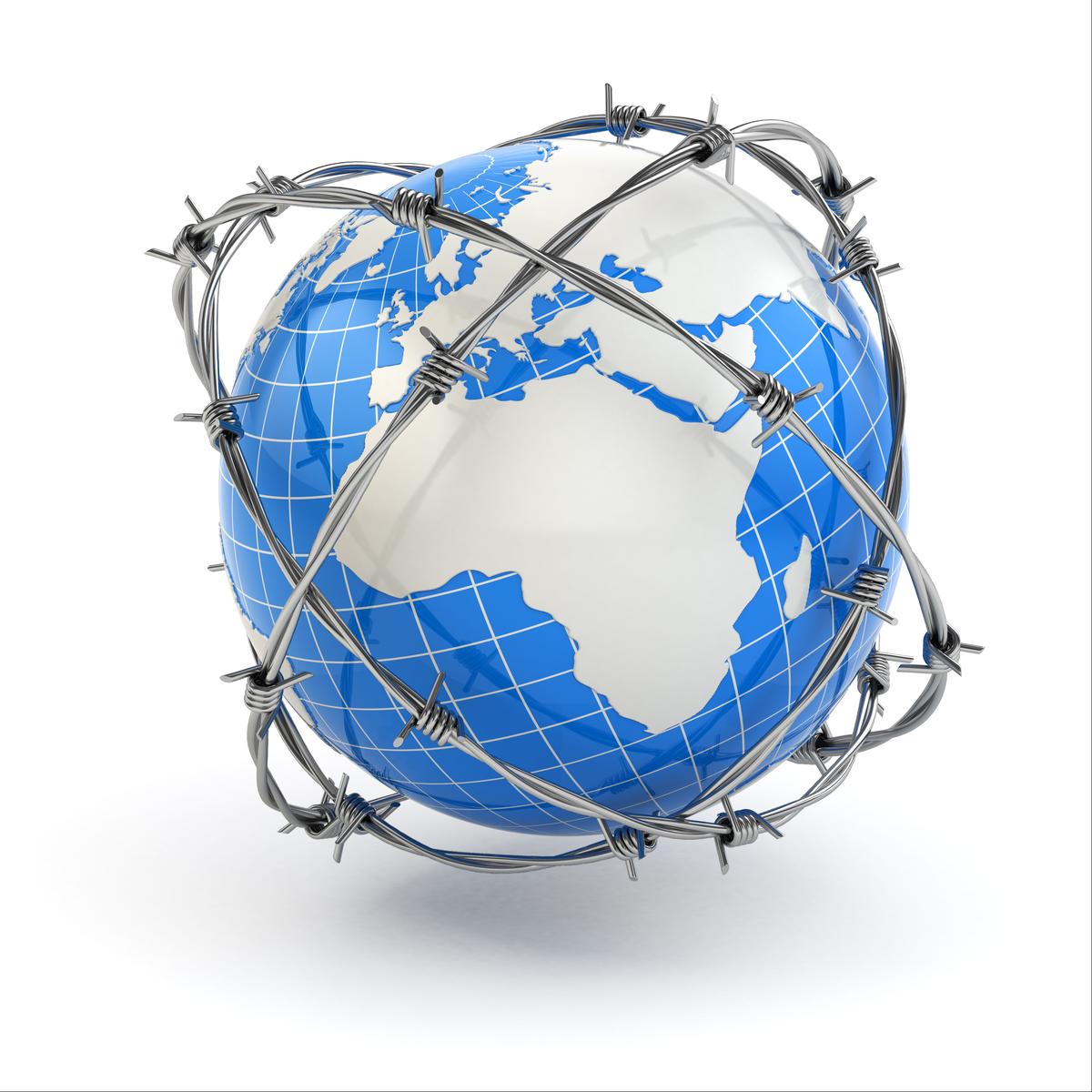
- 13 Sep 2025
In News:
In international relations, few ideas have evolved as dynamically as strategic autonomy. Once a subject of academic debate, it is now central to India’s foreign policy. It reflects the country’s determination to take sovereign decisions without succumbing to external pressures or rigid alliances. Neither isolationism nor neutrality, strategic autonomy embodies flexibility, pragmatism, and the ability to engage with multiple powers on one’s own terms.
Historical Roots and Contemporary Shifts
The roots of strategic autonomy lie in India’s colonial past and its post-independence resolve to safeguard sovereignty. Jawaharlal Nehru’s policy of non-alignment during the Cold War laid the foundation. In the contemporary era, this has transformed into a policy of multi-alignment, where India partners with diverse global actors without being tied to any bloc.
The present world order is far from unipolar. U.S. dominance is contested by China’s assertiveness, Russia’s revisionism, and the West’s internal divisions. For India, this fragmented landscape presents both opportunities and dilemmas. Its national interests — territorial integrity, economic development, technological capacity, and regional stability — must be protected while navigating competing pressures.
India and the United States
Over the last two decades, Indo-U.S. relations have grown significantly. Defence cooperation, joint military exercises, intelligence sharing, and technology transfer mark this partnership. India plays a vital role in forums such as the Quad, Indo-Pacific dialogues, I2U2, and the India-Middle East-Europe Economic Corridor (IMEC). Shared concerns about China’s rise also drive convergence.
Yet, friction persists. U.S. tariffs, sanctions, and demands to dilute India’s ties with Russia test New Delhi’s resolve. India’s measured response — engaging deeply but resisting external diktats — reflects strategic autonomy in action. It is not anti-Americanism, but an insistence on independent choices.
China: Rivalry and Engagement
China poses the most complex challenge. The 2020 border clashes exposed the fragility of bilateral ties. Despite strained relations, China remains one of India’s largest trading partners and an influential actor in multilateral bodies like BRICS and the Shanghai Cooperation Organisation (SCO). India’s approach balances deterrence with engagement: strengthening border infrastructure, deepening Indo-Pacific partnerships, and simultaneously keeping communication channels open. Strategic autonomy here means neither capitulation nor reckless confrontation.
Russia: Historical Partnership amid Global Shifts
India’s relationship with Russia has endured since the Cold War, anchored in defence cooperation and shared strategic goals. Despite Moscow’s growing dependence on Beijing and its global isolation after the Ukraine conflict, India continues energy imports and defence ties with Russia. While diversifying suppliers and building indigenous defence industries, India refuses to let external powers dictate its Russia policy — again underscoring strategic autonomy.
Broader Dimensions of Autonomy
Strategic autonomy is not confined to geopolitics. In today’s interconnected world, it extends to economic resilience, technological sovereignty, cyber security, and climate diplomacy. India’s initiatives in digital infrastructure, critical minerals, indigenous platforms, and global technology governance highlight its efforts to secure autonomy in new domains.
Domestic stability is equally critical. Economic vulnerabilities, political polarisation, and institutional capacity influence how effectively India can exercise autonomous choices. True autonomy rests on national strength, innovation, and coherence.
Conclusion
India envisions itself as a sovereign pole in a multipolar world — neither aligning blindly nor withdrawing into isolation. Its foreign policy is assertive, interest-driven, and reflective of civilisational depth. As Prime Minister Narendra Modi asserted during India’s G-20 presidency, India seeks to be the “voice of the Global South,” advocating agency and inclusivity.
Strategic autonomy, therefore, is not a slogan but a strategy — the art of balancing major powers while securing national interest. In an era of shifting power equations, India must continue to engage with the U.S. without dependence, deter China without war, and cooperate with Russia without inheriting its isolation. Standing tall, India seeks not to reject the world but to shape its place within it — on its own terms.
India’s Export Challenges
- 12 Sep 2025
In News:
India’s merchandise and services exports, once a key driver of economic growth, face mounting challenges amid global protectionism and domestic structural constraints. Recently, the imposition of a 50% tariff by the United States, which accounts for roughly 20% of India’s exports, threatens stagnation in the country’s largest trading partner market, highlighting vulnerabilities in export competitiveness.
Historical Export Trends
Between 1990 and 2010, India’s exports as a share of GDP rose from 7.1% to 20.4%, supported by liberalisation, reforms, and global integration. Merchandise and services exports contributed jointly, with sectors such as textiles, pharmaceuticals, and IT-BPM emerging as strong performers. However, from 2010 to 2024, India’s export growth decelerated; the GDP share dipped to 17.7% by 2020, recovering only marginally to 21.2% by 2024, while India’s global merchandise share rose modestly from 0.51% (1990) to 1.81% (2024). Most of the early gains were concentrated in the first two decades of liberalisation.
Sector-wise performance shows uneven growth: agricultural exports increased from 0.85% to 2.22%, fuel and mining exports surged from 0.32% to 2.62%, led by petroleum, while manufacturing, despite tripling to 1.73%, continues to lag. Services exports have outperformed goods, rising from 2.9% of global share in 2010 to 4.2% in 2024, largely concentrated in IT, telecom, and business services.
Structural Challenges
India’s exports confront multiple structural constraints:
- Tariff Shock from US: The punitive 50% tariffs jeopardise India’s most buoyant market and compound the effects of a global slowdown.
- Competitiveness Erosion: Rising production costs, inefficient logistics, and regulatory complexity reduce India’s global manufacturing edge.
- Overdependence on Services: India’s services exports are twice that of goods, with IT/ITES dominating and other sectors contributing only around 40%.
- Narrow Manufacturing Base: While textiles, pharma, steel, and chemicals perform well, high-value sectors such as electronics, precision machinery, and advanced materials remain underrepresented.
- Global Headwinds: Protectionist policies, reshoring trends, non-tariff barriers, and a weakened WTO dispute settlement system limit India’s options.
Policy Initiatives
Several steps have been undertaken to revive exports:
- Export Promotion Mission (EPM 2025): Sector-specific programs like NiryatProtsahan (credit facilitation) and Niryat Disha (market access, branding, logistics).
- RoDTEP Scheme: Refunds hidden central, state, and local taxes on exports, expanded to steel, pharma, and chemicals.
- Simplified EPCG Scheme: Facilitates duty-free import of capital goods, with eased compliance.
- BHARATI Initiative for Agri-Food Exports: APEDA’s 2025 program to incubate 100 startups with AI quality checks and blockchain traceability.
- E-Commerce Export Hubs: Warehousing, customs clearance, and logistics support for MSMEs.
Way Forward
- Enhance Manufacturing Competitiveness: Improve logistics efficiency (from 13–14% of GDP to global benchmark 8%), integrate with global value chains, and focus on electronics, EVs, green technologies, and semiconductors.
- Diversify Export Markets: Reduce dependence on US/EU markets by targeting Africa, Latin America, and ASEAN; leverage FTAs with UAE, Australia, and UK.
- Deepen Services Export Base: Expand beyond IT to healthcare, tourism, education, financial and creative services.
- Agriculture and Fuels: Promote agro-processing, value addition in petrochemicals, and branded exports.
- Policy and Institutional Support: Advocate WTO reforms, pursue bilateral/multilateral agreements, and incentivise R&D and quality upgradation in MSMEs.
Conclusion
India’s exports face weak merchandise growth, concentrated services reliance, and external shocks such as US tariffs. A multi-pronged strategy—strengthening manufacturing, diversifying markets, deepening services, and fostering value addition—remains critical to reclaim India’s global export momentum and support sustainable economic growth.
Should Reservations Exceed the 50% Cap?
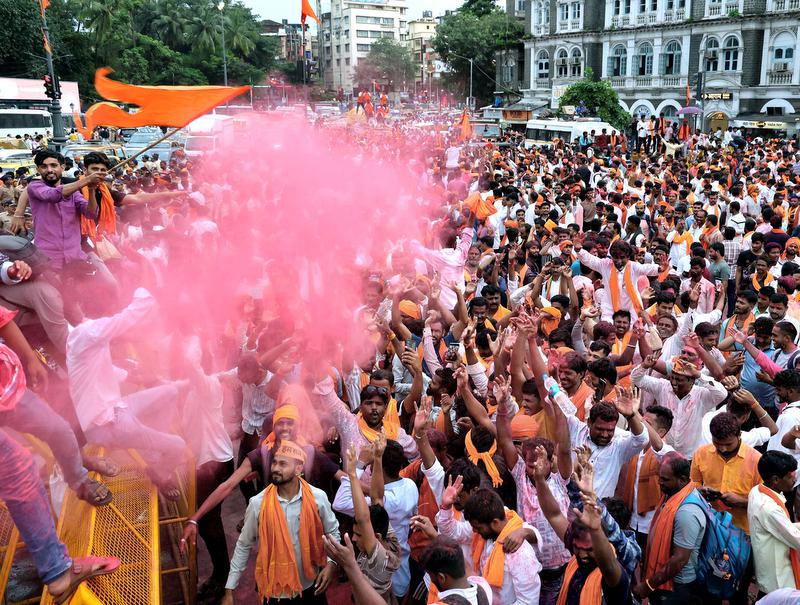
- 11 Sep 2025
Context:
The question of whether caste-based reservations should cross the 50% threshold has re-emerged in policy and judicial debates. Political commitments promising higher quotas, demands for deeper social justice, and judicial reviews—such as the Supreme Court’s recent notice on applying the creamy layer rule to Scheduled Castes (SCs) and Scheduled Tribes (STs)—have intensified the discussion.
Constitutional Framework
Articles15 and 16 of the Constitution enshrine equality in access to education and public employment while empowering the state to frame special provisions for Socially and Educationally Backward Classes (SEBCs), OBCs, SCs, and STs. At present, the reservation percentages at the Union level are:
- OBCs – 27%, SCs – 15%, STs – 7.5%, and EWS – 10%.This brings the total to 59.5%, already breaching the ceiling in practice. The debate centres on whether these provisions are exceptions to the rule of equality or instruments for achieving substantive equality.
Judicial Trajectory of the 50% Ceiling
- Balaji v. State of Mysore (1962): Declared that reservations should remain “reasonable” and introduced the 50% benchmark.
- State of Kerala v. N.M. Thomas (1975): Shifted focus toward substantive equality, treating reservations as a means to realise real equality.
- Indra Sawhney v. Union of India (1992): Reaffirmed the 50% cap, upheld 27% OBC quota, and introduced the creamy layer exclusion.
- Janhit Abhiyan (2022): Validated the 10% EWS quota, clarifying that the 50% ceiling applied only to caste-based quotas, thereby legitimising its breach.
- State of Punjab v. Davinder Singh (2024): Suggested extending the creamy layer principle to SCs and STs for equitable distribution of benefits.
Thus, the 50% rule is not a constitutional mandate but a judicially crafted balance.
Arguments for Raising the Ceiling
- Population Profile: Backward classes make up over 60% of India’s population (Mandal Commission, state surveys), yet reservations remain capped.
- Political Demand: States like Bihar have sought quotas up to 85%, citing under-representation.
- Unequal Access Within OBCs: The Rohini Commission reported that 97% of OBC benefits go to 25% of sub-castes, leaving ~1,000 groups unrepresented. Expanding and sub-categorising quotas could address this.
- Substantive Equality: Addressing historical disadvantages may require flexibility in ceilings.
- Precedents: Tamil Nadu, Maharashtra, and Haryana have legislated beyond the 50% cap, reflecting local realities.
Arguments Against Breaching the Cap
- Judicial Safeguards: The 50% rule maintains a balance between equity and merit.
- Unfilled Vacancies: Nearly 40–50% of reserved seats remain vacant; raising quotas without systemic reform will not resolve this.
- Creamy Layer Issues: Without stricter exclusions, higher quotas may further consolidate benefits among dominant groups.
- Efficiency Concerns: Excessive reservations could undermine administrative performance.
- Alternative Tools: Skill-building, better implementation, and private-sector inclusion can deliver justice without endlessly expanding quotas.
Way Ahead
- Caste Census (2027): Data-driven policy-making requires updated and accurate caste data.
- Sub-Categorisation: Implement Rohini Commission recommendations for fairer distribution within OBCs.
- Prioritisation Within SCs/STs: A two-tier system to protect the most deprived sections.
- Flexible Ceiling: Replace rigid caps with evidence-based, contextual ceilings.
- Beyond Reservations: Focus on education, entrepreneurship, healthcare, and livelihood generation.
Conclusion
The 50% ceiling emerged from judicial interpretation rather than constitutional text. While it has served as a stabilising principle, social realities demand a more nuanced approach. Instead of mechanically raising quotas, India must pursue a data-backed, sub-categorised, and efficiency-oriented reservation framework, complemented by investments in human development. This ensures that affirmative action remains an empowerment tool for the truly disadvantaged rather than a political instrument.
Land Subsidence in Uttarakhand
- 10 Sep 2025
Introduction
- Uttarakhand, a state already prone to natural calamities such as cloudbursts, flash floods, and landslides, is witnessing a new and alarming hazard—land subsidence.
- The phenomenon has recently surfaced in Chamoli district’s Nanda Nagar, destroying homes, displacing families, and highlighting the fragile ecological balance of the Himalayan region.
Understanding Land Subsidence
Land subsidence is the gradual settling or sudden sinking of the Earth’s surface, caused when the ground loses its ability to support weight. It may occur due to:
- Natural factors: seismic or volcanic activity, collapse of underground cavities, or compaction of fine-grained deposits.
- Anthropogenic factors: excessive groundwater extraction, mining, subsurface energy withdrawal, or unregulated construction.
Globally, nearly 12 million sq. km of land is susceptible to subsidence, with major hotspots in the USA, China, Iran, Indonesia, Vietnam, and Japan. In India, the Himalayas are increasingly vulnerable due to their fragile geology and unplanned development pressures.
The Chamoli Crisis
- In Nanda Nagar, Band Bazar and Lakshmi Market have become epicentres of subsidence. To date, seven buildings have been destroyed and 16 more are at risk, with cracks widening daily. Water seepage from underground fissures has aggravated fears, prompting diversion efforts by Jal Sansthan using pipelines.
- The disaster has displaced several families. While temporary relief camps have been established in wedding halls, many residents have opted for rented houses due to lack of facilities. 18 families have shifted voluntarily, while only a few essential volunteers remain in the camps. Authorities have provided tin sheets, tarpaulins, and fodder for livestock.
- Local administration and police are engaged in evacuation, restricting access to high-risk areas, and issuing rainfall-triggered alerts. Political representatives, including the local MLA, have assured compensation of ?5 lakh per affected family, aligning it with earlier precedents in nearby Thrali.
Causes and Concerns
The Chamoli episode underlines how over-extraction of groundwater and unregulated urbanisation exacerbate subsidence in mountain ecosystems. Groundwater overexploitation reduces pressure in aquifers, compacting porous formations and triggering ground collapse. Additionally, Himalayan terrain, already tectonically active, becomes more unstable with haphazard infrastructure expansion, tunnelling for hydropower, and inadequate drainage systems.
Impacts
- Infrastructure damage: Buildings, roads, and markets are rendered unsafe.
- Displacement: Families lose homes and livelihoods, straining relief systems.
- Water management challenges: Seepage alters drainage gradients and may increase risks of flooding and salinity intrusion.
- Security implications: Frequent disasters weaken borderland resilience in strategically sensitive districts like Chamoli.
Government Response
Authorities have taken short-term measures including relocation, compensation, and infrastructure support. Police and disaster management teams are actively engaged in restricting hazardous zone entry and ensuring safety. Yet, the lack of long-term risk assessment and early warning systems remains a critical gap.
Way Forward
- Scientific mapping of subsidence-prone areas using satellite and ground-based surveys.
- Regulated groundwater extraction and promotion of rainwater harvesting.
- Disaster-resilient urban planning with strict building codes in ecologically fragile zones.
- Community preparedness through awareness, relocation plans, and livelihood diversification.
- Integrated Himalayan policy, balancing development needs with ecological sustainability.
Conclusion
The Nanda Nagar subsidence crisis is not an isolated incident but part of a broader trend of human-induced ecological stress in fragile Himalayan ecosystems. As disasters intensify in frequency and scale, climate-resilient planning and sustainable resource management must become central to India’s mountain development strategy. Addressing land subsidence requires coordinated scientific, administrative, and community-level interventions to safeguard lives, infrastructure, and ecosystems.
India’s Humanitarian Assistance and Disaster Relief (HADR) & Soft Diplomacy
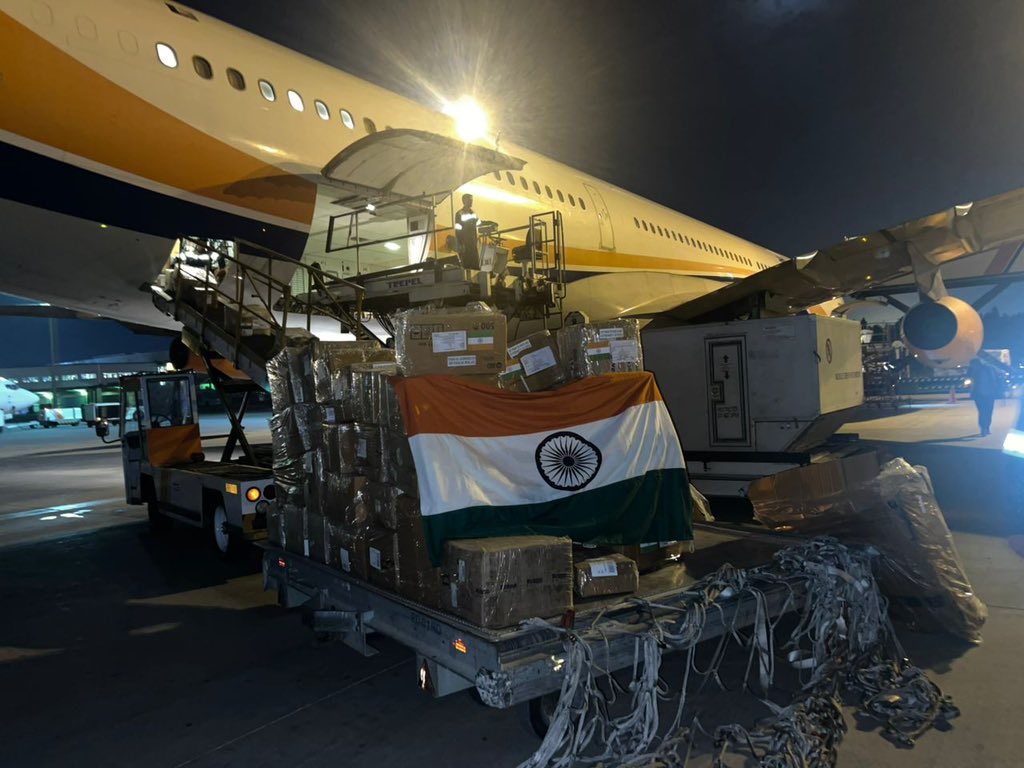
- 09 Sep 2025
Introduction
Humanitarian Assistance and Disaster Relief (HADR) has emerged as a cornerstone of India’s foreign policy and regional engagement. Rooted in the ethos of “VasudhaivaKutumbakam” (the world is one family), India has actively extended aid during natural disasters, reflecting both compassion and strategic foresight. The recent dispatch of 21 tonnes of relief material to Afghanistan after the devastating 6.0-magnitude earthquake, which killed over 1,400 people, underlines India’s commitment to humanitarian outreach and its role as a responsible global actor.
Understanding HADR and Soft Diplomacy
- HADR refers to India’s coordinated relief and rescue operations in disaster-hit regions, at home and abroad. It includes the supply of food, medicines, shelter, sanitation, and technical support.
- Soft Diplomacy implies the use of non-coercive instruments—humanitarian aid, cultural goodwill, and capacity-building initiatives—to enhance India’s global influence and strengthen bilateral trust.
Together, HADR and soft diplomacy enable India to project power through empathy rather than force.
Key Features of India’s HADR Approach
- Rapid Response: The Indian Air Force and Navy ensure swift deployment of relief materials and evacuation missions. For instance, the IAF’s strategic airlift capabilities enable timely supply drops in inaccessible regions.
- Inclusive Relief: Aid packages typically include medicines, food, water, tents, blankets, and water purifiers, focusing on essential survival needs.
- Neutral Assistance: India provides aid without attaching political preconditions, strengthening credibility and neutrality.
- Global Footprint: Beyond neighbours, India has extended assistance to Africa, Pacific Island states, and West Asia, thereby widening its humanitarian outreach.
- Institutional Mechanisms: Agencies like NDMA, NDRF, IAF, Indian Navy, and the Ministry of External Affairs ensure coordination for effective large-scale responses.
Strategic Importance of HADR
- Regional Goodwill: India has earned the reputation of being the “first responder” in South Asia and the Indian Ocean Region. Operations during the Nepal earthquake (2015), Sri Lanka floods, and Maldives water crisis (2014) highlight this proactive role.
- Trust-Building: Humanitarian gestures strengthen bilateral ties, particularly with vulnerable neighbours such as Afghanistan, Nepal, Sri Lanka, and the Maldives.
- Soft Power Projection: Such assistance reinforces India’s image as a responsible rising power committed to collective security and humanitarian values.
- Security Dimension: Active engagement through HADR enhances maritime security partnerships and counters external influences in the region, particularly China’s growing footprint in the Indian Ocean.
Contemporary Relevance
In a world marked by climate change, extreme weather events, and fragile states, the frequency of humanitarian crises is increasing. India’s HADR capacity demonstrates both moral leadership and strategic autonomy. For example, during the COVID-19 pandemic, India’s “Vaccine Maitri” initiative delivered vaccines to over 90 countries, merging humanitarianism with diplomacy.
Furthermore, India’s active participation in multilateral frameworks like BIMSTEC, IORA, and QUAD’s disaster response initiatives showcases its evolving role in shaping global disaster governance.
Challenges
- Logistical hurdles in conflict zones like Afghanistan.
- Resource constraints given India’s vast domestic vulnerabilities.
- The need for greater coordination between civilian and defence agencies.
Conclusion
India’s HADR efforts, anchored in soft diplomacy, reflect a balance of humanitarian compassion and strategic pragmatism. By acting as a credible first responder, India not only saves lives but also nurtures trust, stability, and regional cooperation. In the long run, strengthening institutional mechanisms, enhancing maritime capacity, and integrating climate resilience will further consolidate India’s role as a humanitarian power in a volatile world.
Gender Imbalance in the Supreme Court of India

- 08 Sep 2025
In News:
The Supreme Court of India, the apex judicial body, suffers from a severe gender imbalance, raising questions about inclusivity, representation, and public trust. With the retirement of Justice Sudhanshu Dhulia in August 2025, only one woman judge, Justice B.V. Nagarathna, remains out of a sanctioned strength of 34 judges.
Historically, since 1950, only 11 women judges (3.8%) have been appointed to the Court, beginning with Justice Fathima Beevi in 1989. This under-representation is stark, considering the constitutional guarantees of equality under Articles 14, 15, and 16.
Causes of Gender Imbalance
Several structural and societal factors contribute to this disparity:
- Opaque Collegium System: Judicial appointments are governed by the Collegium, led by the Chief Justice of India and four senior judges. Criteria for selection are neither public nor institutionalised, unlike considerations for caste, religion, or regional representation. Gender, notably, is not treated as a mandatory criterion.
- Late Elevation and Short Tenures: Women judges are often appointed later in their careers, limiting their tenure and chances of rising to senior positions or entering the Collegium. Of the 11 women judges to date, only five have served in the Collegium, and the first woman CJI, Justice Nagarathna, is scheduled for a brief 36-day tenure in 2027.
- Barriers from the Legal Profession: Very few women lawyers are elevated directly from the Bar; only Justice Indu Malhotra has achieved this. Structural biases, gender stereotypes, and lack of mentorship impede women’s career progression in law.
- Institutional and Societal Resistance: Male-dominated professional culture and low political prioritisation of gender diversity exacerbate the exclusion of women from the judiciary.
Implications
- On the Judiciary: The lack of women judges narrows the Court’s perspectives, undermines legitimacy, and limits jurisprudential growth, particularly on gender-sensitive issues. Short tenures prevent women from influencing appointments or policy within the judiciary.
- On Society: The gender gap weakens citizens’ trust in the judiciary, discourages aspiring women lawyers, and contradicts the spirit of constitutional morality. A judiciary that does not reflect societal diversity risks democratic and representative deficits.
Way Forward
- Institutional Reforms: Appointment resolutions should mandate gender diversity. Criteria and reasons for appointments must be publicly disclosed.
- Pipeline Development: Increase women judges in High Courts, encourage women from the Bar through mentorship, and create structured pathways to the higher judiciary.
- Policy Anchoring: Adopt a written diversity policy, integrating constitutional morality and substantive equality, as recommended by the 2nd Administrative Reforms Commission.
- Global Lessons: Countries like Canada and the UK institutionalise diversity in their top courts; India can adopt similar frameworks.
Conclusion
Bridging the gender gap in the Supreme Court is not mere tokenism—it is a constitutional and ethical imperative. Women judges bring unique perspectives, enrich judicial reasoning, and strengthen public confidence in justice. To uphold its credibility as India’s guardian of equality, the Supreme Court must institutionalise gender diversity, ensuring that the judiciary reflects the society it serves.
Revisiting RTE Exemption for Minority Schools
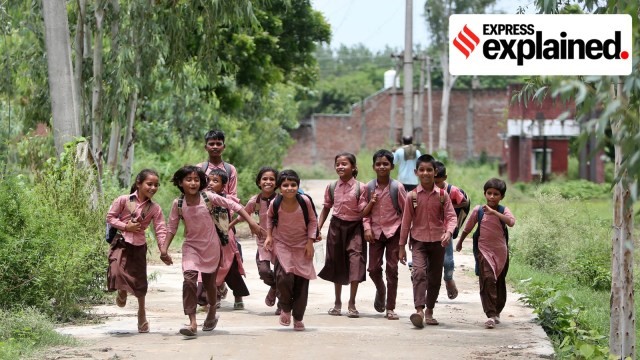
- 07 Sep 2025
In News:
The Supreme Court has recently reopened the debate on whether minority institutions should be exempt from the Right to Education (RTE) Act, questioning the validity of the 2014 Pramati Educational and Cultural Trust judgment, which granted blanket immunity to minority schools—both aided and unaided—from RTE provisions. This issue lies at the intersection of Article 21A (Right to Education) and Article 30(1) (minority rights to establish and administer institutions), raising questions of inclusivity, equality, and constitutional morality.
The RTE Act and Its Objectives
Enacted in 2009, the RTE Act operationalises Article 21A, guaranteeing free and compulsory education for children aged 6–14 years. Its key mandates include:
- Government schools: Free education for all.
- Aided schools: Free seats proportional to state funding.
- Private unaided schools: Reservation of 25% seats at entry level for disadvantaged children (Section 12(1)(c)), with state reimbursement.
The Act also prescribes standards on infrastructure, pupil-teacher ratios, teacher eligibility, and prohibits corporal punishment and capitation fees. Rooted in child-centric philosophy, RTE aims to build inclusive classrooms as spaces of democracy, equality, and social justice.
The 2014 Pramati Judgment
A five-judge Constitution Bench ruled that applying RTE to minority institutions violated Article 30(1). It held that enforcing quotas and norms could alter their composition, thereby infringing minority rights. Consequently, both aided and unaided minority schools were exempted from RTE obligations.
Fallout
- Many private schools sought minority status to escape compliance.
- Exemption diluted inclusivity, particularly the 25% quota, undermining the spirit of Article 21A.
- Loopholes allowed elite minority institutions to function without admitting disadvantaged children—even from their own communities.
The 2025 Reconsideration
In September 2025, while hearing a case on the applicability of the Teacher Eligibility Test (TET) to minority schools, a two-judge bench led by Justice Dipankar Datta observed that Pramati had gone too far. The Court argued that:
- Articles 21A and 30 must co-exist. Institutional autonomy cannot override children’s rights.
- Standards like qualified teachers and infrastructure do not erode minority character.
- Blanket exemption weakens inclusivity and creates a “regulatory loophole.”
- Compliance with the 25% quota could be interpreted flexibly, e.g., by prioritising disadvantaged children from the same minority group.
Since only a larger bench can overturn Pramati, the matter has been referred to the Chief Justice of India for constitution of a bigger bench.
Challenges Ahead
- Legal Precedent: Overturning a Constitution Bench ruling requires judicial restraint and careful balancing.
- Autonomy vs Inclusivity: Reconciling group rights with universal child rights is constitutionally complex.
- Weak Enforcement: Even where RTE applies, compliance remains patchy.
- Social Resistance: Elite institutions and parents often resist socio-economic mixing in classrooms.
Implications
- For Education: Denial of access to elite minority schools undermines equity and India’s democratic ethos.
- For the Constitution: Current exemption skews the balance, privileging institutional rights over individual rights.
- For Society: Misuse of minority status widens educational inequality, weakening India’s human capital base.
Way Forward
- Judicial Harmonisation: Larger benches must strike a balance, clarifying that autonomy does not equal immunity.
- Policy Realignment: At minimum, teacher qualifications and infrastructure norms should apply to all schools.
- Strengthening Public Schools: Improving government schools can reduce over-reliance on private/minority institutions.
- Social Awareness: Campaigns to highlight inclusive classrooms as spaces of democratic socialisation are vital.
Conclusion
The exemption of minority schools from RTE is not merely a legal question but a test of constitutional morality. Upholding the child’s right to inclusive education must prevail over institutional privileges. The forthcoming larger bench decision offers an opportunity to harmoniseArticles 21A and 30, reaffirming that education is not a privilege of groups but a universal right essential to democracy and nation-building.
Pulses Production in India: Pathways to Atmanirbharta
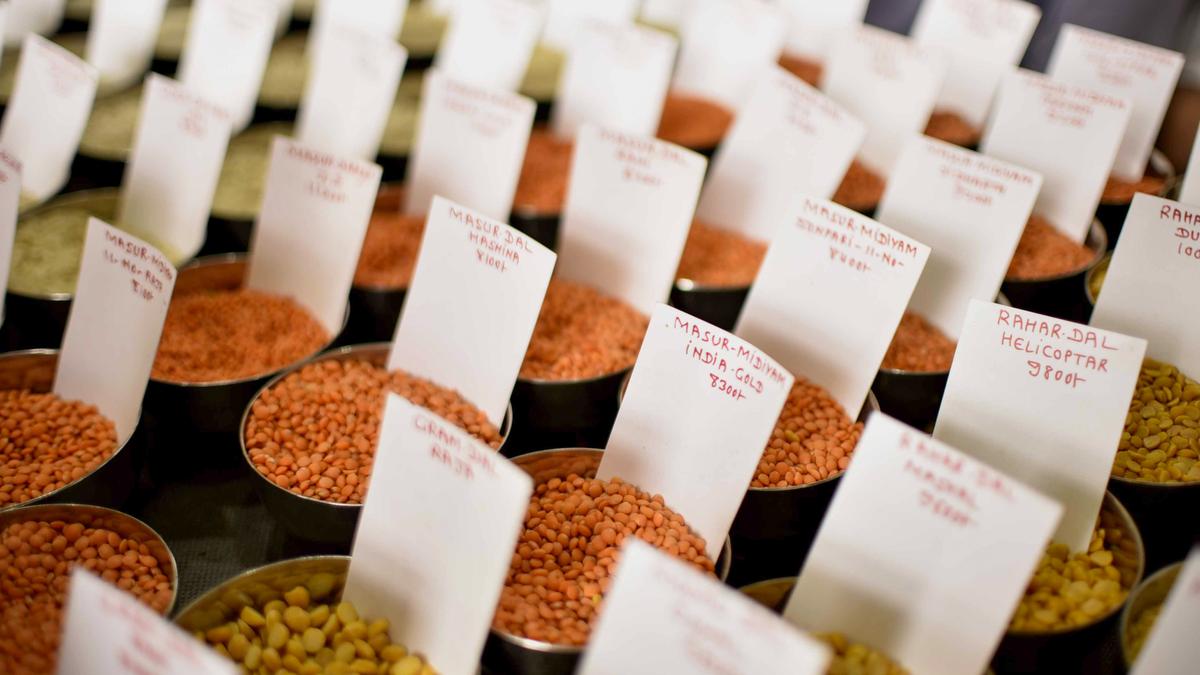
- 06 Sep 2025
In News:
Pulses hold a unique place in India’s agricultural economy, food security, and nutritional well-being. As a protein-rich staple in largely vegetarian diets, they not only address malnutrition but also contribute to sustainable farming through nitrogen fixation, low water requirements, and reduced carbon emissions. Despite being the world’s largest producer and consumer of pulses, India continues to import sizeable quantities, making self-reliance a critical national goal.
Current Scenario and Progress
India cultivates 12 pulse crops across kharif, rabi, and summer seasons, supported by diverse agro-climatic conditions. Production, however, is highly concentrated—Madhya Pradesh, Maharashtra, and Rajasthan together account for over 55% of total output, while the top 10 states contribute more than 91%.
Historically, the sector suffered from low yields and import dependence. Production declined to 16.35 million tonnes (MT) in 2015–16, forcing imports of nearly 6 MT. However, government interventions such as the National Food Security Mission (NFSM) and higher Minimum Support Prices (MSP) have significantly reversed this trend. By 2022–23, production surged by 59.4% to 26.06 MT, while productivity improved by 38%. Import dependence fell from 29% to just 10.4%, marking substantial progress.
Yet, challenges remain. Nearly 80% of pulses cultivation is rain-fed, leaving it vulnerable to monsoon fluctuations. The sector supports the livelihood of over five crore farmers, making policy stability and targeted support crucial.
NITI Aayog’s Roadmap
Recognising the pivotal role of pulses, NITI Aayog released a report titled “Strategies and Pathways for Accelerating Growth in Pulses towards the Goal of Atmanirbharta” in September 2025. The report projects domestic production to reach 30.59 MT by 2030 and 45.79 MT by 2047, thereby reducing imports and strengthening India’s food sovereignty.
Key Recommendations:
- Area Retention and Diversification – Establish region-specific crop clusters to optimise land use.
- Technology Adoption – Promote customised technologies suited for varied agro-ecological zones.
- Seed Quality and Distribution – Ensure timely availability of high-quality seeds, with special focus on 111 high-potential districts that account for 75% of national output.
- Cluster-Based Hubs – Implement the “One Block–One Seed Village” model through farmer producer organisations (FPOs) to enhance productivity.
- Mission for Atmanirbharta in Pulses – A six-year initiative targeting key crops such as pigeonpea, black gram, and lentil to fast-track self-sufficiency.
According to NITI Aayog, India could achieve self-sufficiency in pulses within the next decade if the current pace of growth is sustained.
Nutritional and Environmental Significance
Pulses are indispensable in addressing India’s protein deficiency and micronutrient gaps, particularly in iron and folate. Their role in combating hidden hunger makes them vital to achieving Sustainable Development Goals (SDGs) related to nutrition.
Environmentally, pulses act as natural soil enrichers through nitrogen fixation, reduce dependence on chemical fertilisers, and have a lower water footprint compared to cereals. Thus, scaling up their production aligns with both climate resilience and sustainable agriculture goals.
Conclusion
India has made commendable progress in reducing import dependence and improving productivity in pulses production over the past decade. However, achieving complete self-sufficiency requires sustained, region-specific strategies, robust seed systems, and technology-driven interventions. NITI Aayog’s roadmap, backed by focused initiatives like the Mission for Atmanirbharta in Pulses, provides a viable pathway.
By 2047, India not only aims to meet its domestic demand but also emerge as a global leader in pulses production—ensuring food security, nutritional well-being, and environmental sustainability for its growing population.
25th SCO Summit 2025
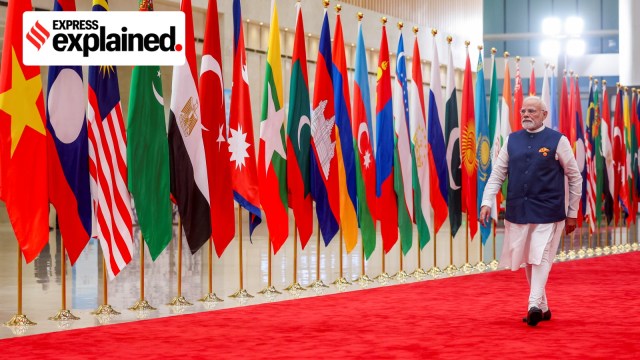
- 05 Sep 2025
In News:
- The 25th Summit of the Shanghai Cooperation Organisation (SCO) was held in Tianjin, China, marking an important milestone in the evolution of the Eurasian grouping.
- Established in 2001 by China, Russia, Kazakhstan, Kyrgyzstan, Tajikistan and Uzbekistan, the SCO has since expanded to include India and Pakistan (2017), with 10 full members, 17 partners, and representation from Asia, Europe and Africa.
- At Tianjin, Laos was granted partner status, expanding the SCO’s reach and underlining its role as a pan-regional forum.
Major Decisions and Institutional Reforms
The summit adopted over 20 key documents shaping SCO’s long-term trajectory.
- Tianjin Declaration emerged as the central political statement, reaffirming commitments to peace, security and sustainable development.
- A Development Strategy (2026–2035) and Cooperation Programme (2026–2030) to counter extremist ideology were approved.
- A Roadmap for Energy Cooperation (till 2030) and new initiatives in digital economy, AI, climate-friendly industry and education were launched.
- Institutional strengthening included creation of four SCO centres for:
- Countering security threats,
- Combating organised crime,
- Cybersecurity, and
- Anti-drug cooperation.
- Decision was taken to establish an SCO Development Bank to finance infrastructure and social development.
- In a major structural reform, observer states and dialogue partners were merged into a single category of “SCO partners”, streamlining expansion and cooperation mechanisms.
Additionally, Cholpon Ata (Kyrgyzstan) was declared the SCO tourist and cultural capital for 2025–26, reinforcing people-to-people exchanges.
Counter-Terrorism and Security Dimensions
- Terrorism featured prominently in the summit’s deliberations. The Tianjin Declaration explicitly condemned the Pahalgam terror attack (April 2025) in India that killed 26 people, along with the Jaffer Express hijacking and Khuzdar school bus bombing in Pakistan.
- This mention was politically significant, as India had earlier refused to endorse the SCO Defence Ministers’ statement at Qingdao when terrorism concerns were omitted due to Pakistan’s objection.
- India’s firm stance ensured that the leaders’ summit corrected this omission, marking progress in embedding terrorism—including cross-border movement of terrorists—within the SCO’s security agenda. While the declaration avoided naming Pakistan, the acknowledgment of Pahalgam reflected growing recognition of India’s concerns.
India’s Strategic Priorities
Prime Minister Narendra Modi’s address outlined India’s SCO vision under three pillars—Security, Connectivity, and Opportunity:
- On security, he reiterated zero tolerance towards terrorism, radicalisation and terror financing, urging collective accountability for states that support cross-border terrorism.
- On connectivity, India reaffirmed support for projects like the Chabahar Port and the International North-South Transport Corridor, vital for regional integration while preserving strategic autonomy.
- On opportunities, India highlighted cooperation in start-ups, innovation, youth empowerment and cultural dialogue, including a proposal for a Civilizational Dialogue Forum to deepen mutual understanding.
India also supported SCO’s reformist agenda, especially new initiatives on organised crime, drug trafficking and cybersecurity, while calling for similar reforms in global institutions like the United Nations, to make them more representative and effective.
Geopolitical Context and India-China Dynamics
The summit was notable for PM Modi’s first visit to China in seven years and his meeting with President Xi Jinping. The inclusion of Pahalgam in the declaration is seen as a potential signal of Beijing’s willingness to recalibrate ties with New Delhi amid its global challenges, though the SCO stopped short of naming Pakistan. The China-Pakistan nexus, particularly through the China-Pakistan Economic Corridor, continues to limit consensus on terrorism.
Conclusion
The 25th SCO Summit in Tianjin highlighted the grouping’s evolution into a multidimensional platform addressing security, development, and institutional reforms. For India, it was a diplomatic success to have its terrorism concerns reflected in the final declaration, while also advancing connectivity and reformist goals. However, challenges remain in reconciling divergences within SCO, especially with China’s protective stance towards Pakistan. The summit underlines both the opportunities and limitations of India’s engagement with multilateral Eurasian forums, making it a crucial case study in India’s foreign policy strategy.
India’s Cancer Burden

- 04 Sep 2025
In News:
Cancer has emerged as one of India’s most pressing public health challenges. Globally, in 2022, nearly 20 million new cases and 9.7 million deaths were recorded. In India, cancer incidence is rising sharply: in 2023, more than 14 lakh new cases were reported, and in 2024, 15.6 lakh cases with 8.74 lakh deaths were registered. The lifetime risk of developing cancer in India is now 11%, making cancer control a critical priority for health policy, infrastructure, and research.
Trends in India’s Cancer Burden
The National Cancer Registry Programme (NCRP), based on 43 population-based registries across 23 states and UTs, has mapped incidence and mortality patterns. Between 2015–2019, 7.08 lakh cancer cases and 2.06 lakh deaths were recorded.
- Gender Disparities: Women account for 51% of cases but only 45% of deaths, as breast and cervical cancers—the most common among women—are more detectable and treatable. Men suffer higher mortality due to difficult-to-diagnose cancers like lung and gastric cancer.
- Oral Cancer Surge: Oral cancer has overtaken lung cancer as the most common among men, despite a decline in tobacco use, due to latency effects and risk multipliers like alcohol.
- Regional Hotspots: The Northeast, especially Mizoram (21.1% lifetime risk for men, 18.9% for women), shows the highest burden, linked to tobacco, dietary habits, and infections (HPV, H. pylori, hepatitis).
- Geographical Variations:
- Breast cancer highest in Hyderabad (54/100,000).
- Cervical cancer peaks in Aizawl (27.1/100,000).
- Lung cancer most common in Srinagar men (39.5) and Aizawl women (33.7).
- Oral cancer highest in Ahmedabad men (33.6) and East Khasi Hills women (13.6).
Government Response: Policy and Infrastructure
India has adopted a multi-pronged approach:
- NPCDCS (National Programme for Prevention and Control of Cancer, Diabetes, Cardiovascular Diseases and Stroke) – Community-level screening for oral, breast, and cervical cancers, awareness, and infrastructure strengthening.
- 770 District NCD Clinics, 233 Cardiac Care Units, 372 Day Care Centres, 6,410 CHC-level NCD clinics.
- Tertiary Care Expansion – 19 State Cancer Institutes, 20 Tertiary Care Cancer Centres, and apex centres like the National Cancer Institute, Jhajjar and CNCI, Kolkata.
- Ayushman Bharat – PMJAY – Covers chemotherapy, radiotherapy, and surgery, with 90% of registered patients receiving treatment.
- Health Minister’s Cancer Patient Fund (HMCPF) – Up to ?15 lakh assistance per patient at 27 Regional Cancer Centres.
- National Cancer Grid (NCG) – World’s largest cancer network (287 centres), treating 7.5 lakh new patients annually, ensuring standardized evidence-based care.
Budget and Innovation
The Union Budget 2025–26 allocated nearly ?1 lakh crore for health, including Day Care Cancer Centres in all districts and customs duty exemptions on 36 lifesaving cancer drugs.
Breakthroughs include:
- NexCAR19 CAR-T Cell Therapy (2024) – India’s first indigenous gene therapy for blood cancers.
- Quad Cancer Moonshot (2024) – India, US, Japan, and Australia collaborating to eliminate cervical cancer through HPV vaccination and screening.
- ACTREC Expansion (2025) – Enhancing advanced cancer research and treatment capacity.
Awareness and Prevention
WHO estimates 30–50% of cancers are preventable through lifestyle changes and early detection. Campaigns like Eat Right India, Fit India Movement, and Yoga programmes promote healthy habits. National Cancer Awareness Day and World Cancer Day are leveraged for mass outreach.
Conclusion
India’s cancer map highlights both epidemiological challenges and systemic gaps. While government schemes, financial aid, and research innovations mark progress, the rising burden demands greater investment in awareness, early detection, and equitable access. A sustained multi-sectoral approach, integrating prevention, affordable care, and cutting-edge research, will be crucial for India to move towards a cancer-resilient future.
Regulating Social Media in India
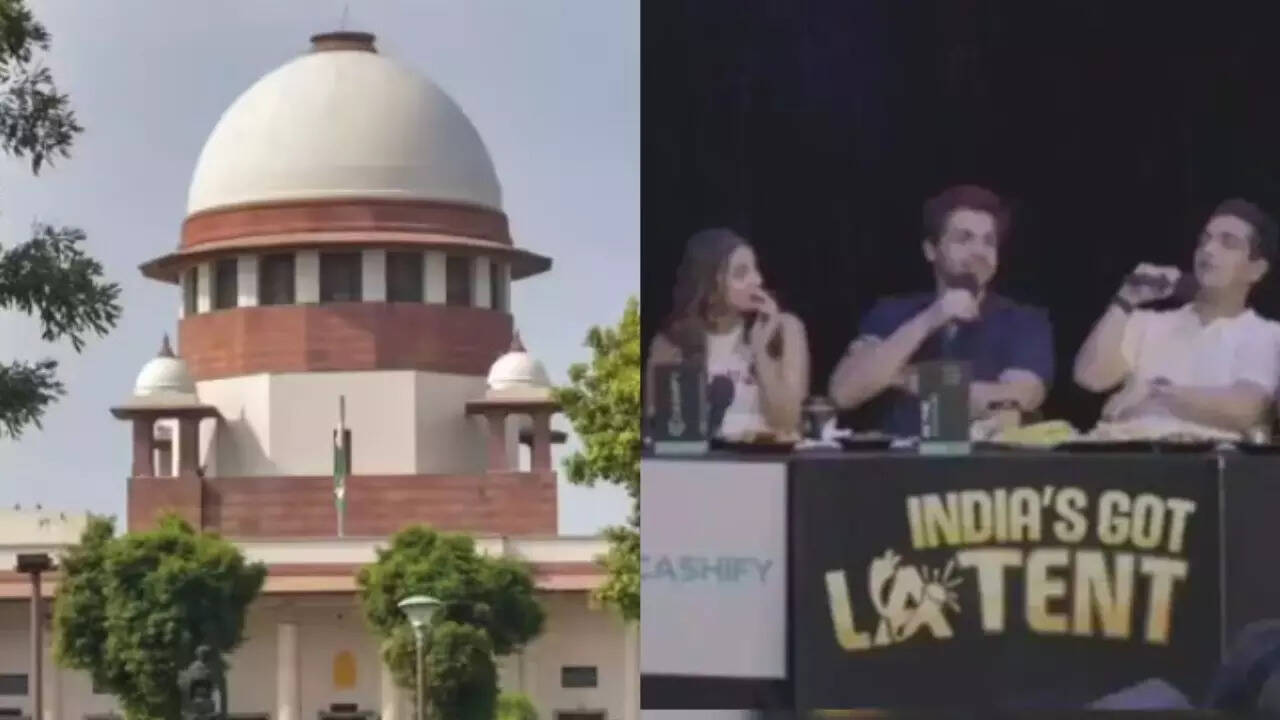
- 03 Sep 2025
In News:
The Supreme Court of India, in a recent case concerning derogatory remarks by comedians, observed that social media influencers commercialise free speech, often blurring the line between legitimate expression and harmful speech. It stressed that while humour and satire are constitutionally protected, derogatory jokes against vulnerable groups perpetuate stigma and undermine inclusivity. The Court urged the Union Government to frame effective guidelines with enforceable consequences to ensure accountability in the digital space. This development underscores the growing debate on the regulation of social media in India.
Judicial Observations and Recommendations
- Commercialisation& Accountability: Free speech is increasingly monetised by influencers, creating overlaps with prohibited speech. Such expression cannot become a shield for targeting disadvantaged groups.
- Humour vs. Dignity: The Court emphasised that humour should not compromise dignity, particularly of persons with disabilities, women, children, minorities, and senior citizens.
- Guidelines with Consequences: Directed the Union Government, in consultation with industry bodies, to frame proportionate and enforceable rules.
- Digital Responsibility: Called for sensitisation and ethical conduct on social media, along with unconditional apologies for derogatory remarks.
Existing Legal and Regulatory Framework
- Information Technology Act, 2000 – Principal legislation for digital communication.
- Section 79(1): Provides safe harbour to intermediaries if they act neutrally.
- Section 69A: Allows government to block content for sovereignty, security, and public order.
- IT (Intermediary Guidelines and Digital Media Ethics Code) Rules, 2021 – Mandates due diligence, grievance redressal, and removal of unlawful content.
- 2023 Amendment – Required intermediaries to remove false/misleading content about the government; however, its enforcement was stayed by SC.
- Key Judicial Precedents:
- Shreya Singhal v. Union of India (2015): Struck down Section 66A of IT Act for vagueness, reaffirming free speech under Article 19(1)(a).
- K.S. Puttaswamy v. Union of India (2017): Recognised privacy as a fundamental right under Article 21, shaping later data protection measures.
Need for Regulation
- Protecting Vulnerable Groups: Prevents cyberbullying, trolling, and derogatory content.
- Curbing Misinformation & Hate Speech: Essential to check fake news, deepfakes, and extremist propaganda that threaten social harmony and security.
- Mental Health Safeguards: Addresses anxiety, depression, and addictive behaviours linked to excessive use.
- Influencer Accountability: Prevents consumer harm through undisclosed endorsements and fraudulent promotions.
- Data Privacy & Security: Ensures user rights under Article 21 are not compromised by exploitative data practices.
- Balancing Free Speech & Responsibility: Draws boundaries within Article 19(2) restrictions (public order, morality, security).
Challenges in Regulation
- High Volume & Anonymity: Makes monitoring difficult.
- Transparency Gaps: Platforms’ opaque moderation policies lack accountability.
- Defining Harmful Content: Subjectivity and cultural sensitivities complicate consensus.
- Risk of Overreach: Regulations can be misused as censorship.
- Cross-Border Jurisdiction: Large share of harmful content originates outside India.
- Political Neutrality Concerns: Allegations of bias in content moderation decisions.
Way Forward
- Comprehensive Legal Framework: Update IT Act with the proposed Digital India Act, ensuring balance of rights and responsibilities.
- Algorithmic Transparency: Mandate audits, reporting, and oversight of AI-driven content moderation.
- Institutional Capacity: Invest in cyber forensic labs and AI-enabled monitoring.
- Digital Literacy Campaigns: Encourage ethical online behaviour and awareness of misinformation.
- Global Cooperation: Strengthen cross-border regulatory partnerships and multi-stakeholder governance.
Conclusion
Regulating social media in India requires a balanced approach—one that safeguards freedom of expression under Article 19(1)(a) while addressing harms that erode dignity, social harmony, and democratic discourse. A mix of robust laws, technological innovation, ethical guidelines, and digital literacy can build a safe, inclusive, and accountable digital ecosystem aligned with India’s constitutional vision of justice, liberty, equality, and fraternity.
Civil Society in India: Strengthening Democracy and Human Dignity

- 02 Sep 2025
Introduction
Civil Society Organizations (CSOs) form the third pillar of democracy beyond the state and market, playing a crucial role in mobilizing communities, protecting rights, and addressing gaps in governance. From social reform movements of the 19th century to present-day advocacy for rights, CSOs have evolved into indispensable actors shaping India’s democratic landscape.
Evolution of Civil Society in India
- Ancient–Medieval roots: Guided by concepts of dharma, daan, and karma, religious and social movements emphasized community service.
- Pre-independence era: Organizations like Brahmo Samaj (1828), Theosophical Society (1879), and Ramakrishna Mission (1897) linked voluntary action with reform. Gandhiji’s philosophy of constructive work and self-reliance inspired mass mobilization.
- Post-independence: The First Five-Year Plan (1951–56) recognized voluntary action in development. The Panchayati Raj system deepened community participation. During the 1965–67 droughts, foreign aid through NGOs strengthened India’s civil society base.
- Contemporary era: CSOs shifted from welfare delivery to a rights-based approach, visible in the Chipko (1973) and Narmada Bachao (1985) movements, and campaigns for RTI, MGNREGA, RTE, and food security.
Today, India has around 1.5 million NGOs engaging over 19 million volunteers, though most remain small and resource-constrained.
Role of Civil Society in a Democracy
- Accountability and Transparency: Groups like Mazdoor Kisan Shakti Sangathan spearheaded the RTI Act (2005), strengthening citizen oversight. CSOs monitor elections, detect fraud, and counter corruption.
- Citizen Empowerment: They spread awareness of laws and rights, enabling participation of marginalized groups. For instance, Jagori and Swayam advanced women’s rights, while SEWA empowered informal sector workers.
- Social Justice and Inclusion: CSOs amplify voices of women, Dalits, Adivasis, and persons with disabilities. The Rights of Persons with Disabilities Act (2016) was shaped through sustained advocacy.
- Service Delivery and Humanitarian Work: During COVID-19, organizations like Goonj launched relief programmes. In healthcare, civil society has been pivotal in palliative care, advocating for dignity of terminally ill patients by mobilising volunteers, spreading awareness, and supplementing public health gaps.
- Leadership and Political Socialization: CSOs nurture grassroots leadership, especially among women in Panchayati Raj Institutions, challenging entrenched hierarchies.
- Global Governance: Indian CSOs engage with international human rights, climate change, and sustainable development discourses, influencing domestic reforms.
Challenges Facing Civil Society
- Regulatory hurdles: The FCRA (2010) and its 2020 amendment have restricted foreign funding, reducing financial independence.
- Funding constraints: Overdependence on international donors and weak domestic philanthropy limit sustainability.
- Internal undemocracy: Lack of transparency and inclusive decision-making undermines credibility.
- State–CSO friction: Governments often view rights-based activism as adversarial, creating tensions.
- Representation gaps: Elite capture and urban bias may sideline grassroots voices.
- Volunteer retention and professionalism remain persistent challenges.
Way Forward
- Enhancing transparency: Mandatory impact audits and a national CSO database can strengthen trust.
- Institutionalized consultation: Formal representation of CSOs in policy committees ensures evidence-based policymaking.
- Diversified funding: Domestic philanthropy, CSR initiatives, and social impact investing must be promoted.
- Simplified regulation: A single-window digital compliance system for registrations and reporting can reduce bureaucratic friction.
- Boosting volunteerism: Integrating service into school and university curricula can create a culture of civic participation.
Conclusion
Civil society in India has evolved from religious charity to rights-based activism, standing as a bridge between state and society. From advocating landmark legislations like RTI to ensuring the dignity of palliative care patients, CSOs embody participatory democracy in action. Strengthening their autonomy, inclusivity, and accountability is essential for a resilient, equitable, and responsive democracy.
Comprehensive Modular Survey: Education 2025
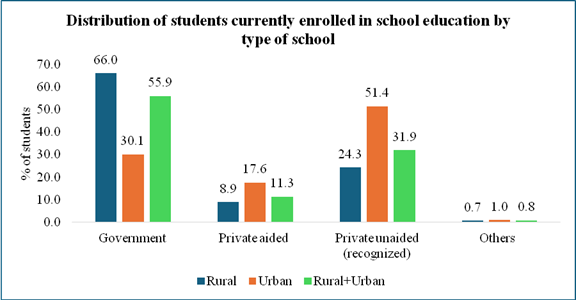
- 01 Sep 2025
In News:
The Comprehensive Modular Survey: Education (CMS:E), 2025, conducted under the 80th round of the National Sample Survey (NSS), provides valuable insights into household expenditure, enrolment trends, and private coaching patterns in school education.
Covering 52,085 households and 57,742 students, this survey, conducted through Computer-Assisted Personal Interviews (CAPI), offers nationally representative data at a critical juncture when India’s education sector is undergoing reforms under NEP 2020 and rapid digital transformation.
Key Findings of CMS: Education 2025
1. Enrolment Patterns
- Government schools dominate enrolment at 55.9%, with higher presence in rural areas (66%) compared to urban (30.1%).
- Private unaided schools account for 31.9% of enrolment, with stronger urban dominance.
2. Education Expenditure
- Average household spending per student:
- Government schools – ?2,863
- Non-government schools – ?25,002
- Overall, expenditure is significantly higher in urban areas (?23,470) than in rural areas (?8,382).
- Course fees constitute the largest expense (?7,111), followed by textbooks and stationery (?2,002).
3. Private Coaching
- Nearly 27% of students availed coaching, higher in urban areas (30.7%) than rural (25.5%).
- Expenditure gap: ?3,988 per student annually in urban areas vs ?1,793 in rural areas.
- At the higher secondary level, coaching costs rise to ?9,950 in urban areas compared to ?4,548 in rural areas.
4. Sources of Education Finance
- 95% of educational expenses were funded by household members.
- Only 1.2% students cited government scholarships as their primary funding source, highlighting weak institutional financial support.
Structural Developments in India’s Education Sector
- Digital and STEM Education: Initiatives like PM e-Vidya and Atal Tinkering Labs (8,000+ labs) promote digital and innovation-driven learning. India’s edtech sector attracted USD 3.94 billion (FY22), projected to grow further.
- Vocational and Skill Integration: NEP 2020 emphasizes skilling; the Union Budget 2025–26 allocated ?500 crore for AI Centres of Excellence in education.
- Rising Private Investment: With 100% FDI permitted, the Indian education market is projected to reach USD 125.8 billion by 2032.
- Higher Education Expansion: India now has 1,362 universities and 52,538 colleges, with Gross Enrolment Ratio (GER) rising to 28.4% (FY25).
- Multilingual & Inclusive Education: Under NEP 2020, focus on regional languages and digital content aims to bridge disparities.
Challenges in Indian Education
- Infrastructure Gaps – Only 47% schools have drinking water; 53% have separate girls’ toilets (2023 data).
- Teacher Shortage – Over 4,500 secondary teachers lack proper training; sanctioned positions declined by 6% (2021–24).
- Low Public Spending – India spends 3–4% of GDP on education, below NEP’s target of 6%.
- Socio-Economic Disparities – Tribal and disadvantaged children face linguistic and access barriers.
- Learning Outcomes – 75% of Class 3 students cannot read Grade 2 text, highlighting rote learning dependence.
- Digital Divide – Only 18.47% of rural schools have internet, compared to 47.29% in urban areas.
- Gender Barriers – 33% of girls drop out due to domestic responsibilities (UNICEF).
Way Forward
- Enhanced Investment in infrastructure, teacher training, and digital access.
- Targeted scholarships and financial aid to reduce household burden.
- Curriculum reforms to shift from rote learning to competency-based assessments (e.g., PARAKH).
- Inclusive education policies for tribal, rural, and girl students.
- Public-Private Partnerships to leverage innovation, funding, and technology.
Conclusion
The CMS: Education 2025 survey underscores the centrality of government schools, the rising cost burden on families, and the growing role of private coaching in shaping education outcomes. While India is witnessing rapid expansion, digitalization, and global investment, challenges of equity, quality, and access persist. Addressing these gaps through sustained policy focus, enhanced funding, and inclusive reforms is essential for realizing the NEP 2020 vision and achieving SDG 4: Quality Education.
Migration and Globalisation
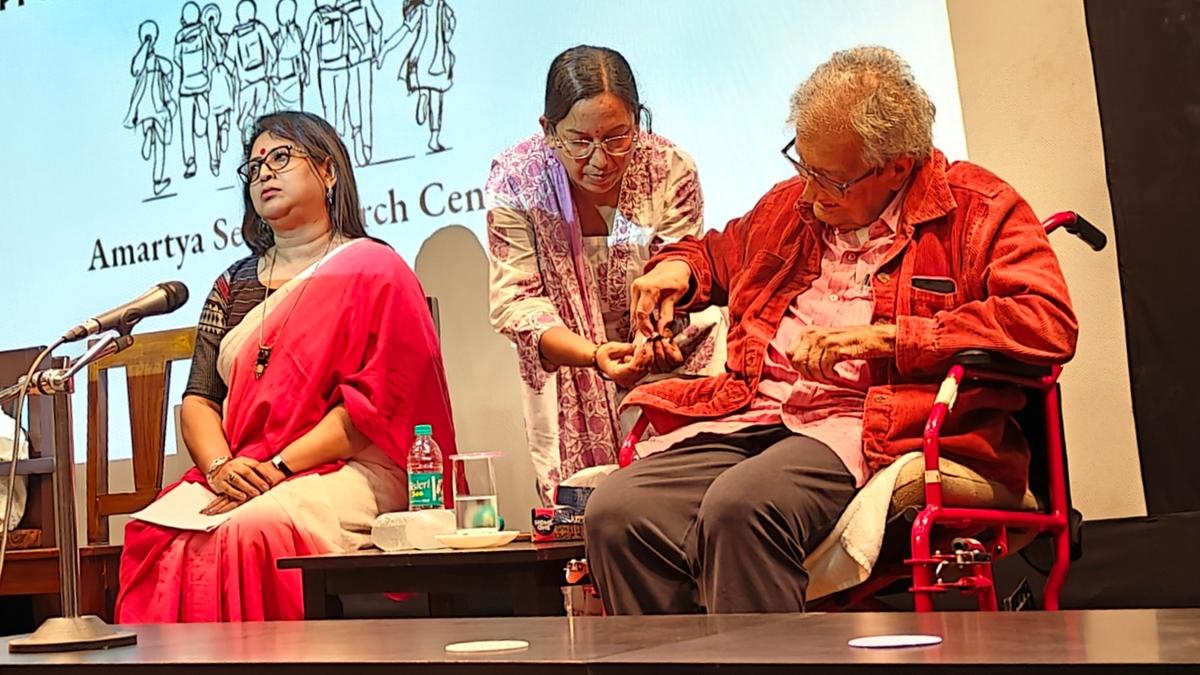
- 31 Aug 2025
Context:
Migration has historically been central to human survival, cultural enrichment, and economic development. Nobel laureate Amartya Sen, in a recent interaction with students in Kolkata (August 2025), underlined that migration is not merely a by-product of globalisation but an essential driver of it. He argued that without the movement of people, exchange of ideas, and diversity, “almost nothing would happen” in society. His observations highlight the need to place migration at the core of discussions on inclusive development and global integration.
Migration and Globalisation: A Two-Way Link
Migration represents both a cause and consequence of globalisation. The growing interconnectedness of economies, labour markets, and cultures compels people to move in search of livelihood, education, and security. Conversely, migration sustains the very processes of globalisation by ensuring labour mobility, knowledge transfer, and cultural exchange.
Remittances from international migrants significantly support local economies in poorer regions, while in ageing industrial societies, migrants fill labour shortages and keep welfare systems functional. Similarly, internal migration within developing countries responds to shifts in industrial location and the expansion of tourism, service, and construction sectors.
Economic and Social Contributions of Migrants
Migration plays a critical role in sustaining households and reshaping communities:
- Economic Support: Remittances are often the backbone of rural economies, enabling investments in agriculture, housing, and small enterprises.
- Skill Transfer: Return migrants bring exposure, technology, and non-farm opportunities, provided there is institutional support.
- Cultural Exchange: Migrants enrich host societies by introducing new languages, cuisines, music, and traditions, fostering cosmopolitan growth.
- Empowerment: For many youth and women, migration becomes a pathway to independence, autonomy, and expanded life choices.
Sen himself cited historical examples—such as Arabic translations of Brahmagupta’s mathematical works—that demonstrate how migration and cultural contact drive intellectual advancement.
Key Challenges
Despite its benefits, migration remains highly contested. Restrictive immigration policies in developed nations often strengthen illegal smuggling networks and leave migrants vulnerable to exploitation. Within India, internal migrants frequently face exclusion from basic urban services such as housing, education, and healthcare.
Undocumented and unskilled migrants are particularly prone to labour exploitation, earning low wages under insecure conditions. Women migrants confront additional gender disparities, ranging from wage inequality to social stigma, although they can emerge as strong agents of change where given resources and support.
Policy Imperatives
Migration must be recognised not as a threat but as an enabler of development. The policy framework should:
- Protect migrant rights and improve workplace safety.
- Facilitate the productive use of remittances through training, financial literacy, and infrastructure.
- Ensure equitable access to resources for women migrants.
- Address structural constraints such as rural distress, which force people into migration as a survival strategy.
India has already witnessed tensions, including attacks on migrant workers from West Bengal in other states, highlighting the urgency of a protective and inclusive approach.
Conclusion
Migration is inseparable from globalisation and has historically propelled human progress. It strengthens economies, sustains welfare systems, and enriches cultures. Yet, the absence of supportive policies leaves migrants vulnerable to exclusion and exploitation. As Amartya Sen emphasised, diversity is the foundation of Indian society and the movement of people is the essence of globalisation. Recognising migrants as partners in development rather than problems to be managed is essential for building an inclusive, equitable, and resilient global future.
UGC Draft Curriculum Highlights Ancient Wisdom in Higher Education
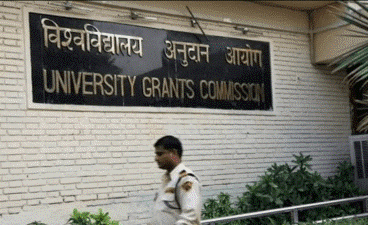
- 30 Aug 2025
Background
The University Grants Commission (UGC) has released a draft Learning Outcomes-based Curriculum Framework (LOCF) for undergraduate programmes in fields such as anthropology, chemistry, commerce, economics, geography, mathematics, political science, home science, and physical education.
A defining feature of this framework is the inclusion of Indian Knowledge Systems (IKS), aiming to blend traditional philosophies and practices with contemporary pedagogy. The draft has been made public for feedback from stakeholders.
Integration of Indian Knowledge Systems
The framework seeks to position higher education within India’s cultural and intellectual heritage, reflecting the vision of the National Education Policy (NEP) 2020, which emphasiseddecolonisation of curricula and recognition of indigenous wisdom.
Every subject has been asked to incorporate aspects of Indian traditions, linking them to modern learning outcomes.
Subject-Wise Highlights
- Mathematics
- Modules on mandala geometry, yantras, rangoli, kolam as algorithmic art forms.
- Study of temple architecture through ?y?di ratios.
- Contributions of Indian mathematicians in arithmetic, algebra, geometry, and calculus, and their influence on global traditions.
- Commerce
- Incorporation of Bhartiya philosophy and Gurukul pedagogy, focusing on holistic learning.
- Study of Kautilya’sArthashastra for insights into trade and financial systems.
- Ideas like Ram Rajya, Shubh-labh (profit with responsibility), CSR, and ESG frameworks integrated into modern governance discussions.
- Economics
- Emphasis on dharmic perspectives on wealth and prosperity.
- Exploration of indigenous exchange systems, agrarian values, dana (charity), and state-led economic roles.
- Ethical trade and collective enterprise highlighted as core themes.
- Chemistry
- Introduction of traditional Indian fermented drinks (kanji, mahua, toddy) in modules on alcoholic beverages.
- Integration of parmanu (ancient atomic concept) with modern atomic theory.
- Anthropology
- Curriculum draws on Charaka, Sushruta, Buddha, and Mahavira, focusing on their insights into the relationship between culture and nature.
Criticism and Concerns
- While NEP 2020 promotes interdisciplinarity, the LOCF allocates a large portion of credits to single-major courses. For example, chemistry students must take 96 out of 172 credits in core courses, reducing scope for cross-disciplinary learning.
- Critics, including some opposition-led states, allege that the draft encourages “saffronisation” of education.
- The key challenge lies in ensuring that cultural heritage is respected while preserving academic rigour, scientific temper, and global competitiveness.
Significance
The draft framework represents a paradigm shift in Indian higher education, with potential to:
- Decolonise curricula by embedding indigenous systems.
- Offer culturally rooted yet globally relevant education.
- Encourage ethical, sustainable practices across professional fields.
- Highlight India’s contributions to mathematics, medicine, governance, and economics.
Way Forward
The draft is currently open for feedback and may be revised before implementation. If adopted, it could reshape the intellectual foundation of higher education, grounding it more deeply in India’s heritage while aligning with international standards.
The real challenge, however, will be to ensure that ancient wisdom complements — rather than replaces — critical thinking, scientific inquiry, and multidisciplinary exploration.
Haryana’s New Forest Definition and Its Implications for the Aravallis
- 29 Aug 2025
Introduction
The debate on what constitutes a “forest” in India has resurfaced with the Haryana government’s recent notification defining forests based on “dictionary meaning.” While the state claims its definition aligns with Supreme Court precedents, environmentalists warn that it narrows the scope of protection, particularly threatening the fragile Aravalli ecosystem. The issue reflects the larger legal and ecological contestation over forest governance in India, especially after the 2023 amendment to the Forest (Conservation) Act, 1980 (FCA).
Haryana’s Definition of Forests
As per the notification (August 18, 2025), a patch of land qualifies as forest if:
- It covers at least 5 hectares in isolation or 2 hectares if contiguous with government-notified forests.
- It has a canopy density of 40% or more.
The definition excludes linear or compact plantations (along roads, canals, railways), agro-forestry plantations, and orchards outside notified forests. Officials argue this provides clarity for surveys mandated by the Supreme Court, but critics fear it sets thresholds too high for naturally sparse ecosystems like the Aravallis.
Supreme Court Directives
In March 2025, the Supreme Court directed all States/UTs to define forests and begin mapping them, in line with the 2011 Lafarge Umiam Mining guidelines. These guidelines mandate:
- A GIS-based decision-support system.
- District-wise mapping of forest-like areas, community lands, eco-sensitive zones, wildlife corridors, and previously diverted forest lands.
- Accountability of Chief Secretaries for non-compliance.
This directive came during hearings on petitions challenging the 2023 FCA amendment (Ashok Kumar Sharma, IFS (Retd) &Ors. vs Union of India).
Godavarman Case and FCA Amendment
The FCA, 1980 originally restricted dereservation and diversion of forest land without Central approval. In the 1996 Godavarman case, the Supreme Court broadened “forest” to its dictionary meaning, bringing all statutorily recognised or naturally forested areas under FCA protection.
However, the 2023 amendment limited FCA applicability to:
- Notified forests, and
- Lands recorded as forests in government records.
The government argued that the Godavarman interpretation hindered developmental projects, even minor ones. Retired IFS officers and NGOs contested this, alleging dilution of forest safeguards. In February 2024, the Court ordered States to continue applying the Godavarman definition until the matter is resolved.
Implications for the Aravallis
The Aravalli range, spread across Haryana, Delhi, Rajasthan, and Gujarat, is ecologically critical for groundwater recharge, biodiversity, and as a green buffer against desertification. Its vegetation is naturally stunted, thorny, and scrub-like due to low rainfall (300–600 mm annually) and rocky terrain. Experts argue that imposing a 40% canopy cover threshold would exclude much of the Aravallis, leaving it open to urbanisation, illegal mining, and real estate encroachments.
Furthermore, the minimum area thresholds (2–5 hectares) are considered too high for a dry state like Haryana, where smaller forest patches play a vital ecological role. Analysts call the state’s approach violative of the Godavarman principle, which recognised even small and degraded forests under FCA protection.
Conclusion
Haryana’s restrictive definition exemplifies the ongoing tension between developmental priorities and ecological safeguards. While compliance with the Supreme Court’s directive is necessary, adopting narrow thresholds risks excluding ecologically fragile zones from legal protection. The debate underscores the need for a balanced, scientifically informed, and ecologically sensitive framework, recognising regional variations in vegetation and ensuring long-term sustainability of ecosystems like the Aravallis.
Criminalisation of Politics in India
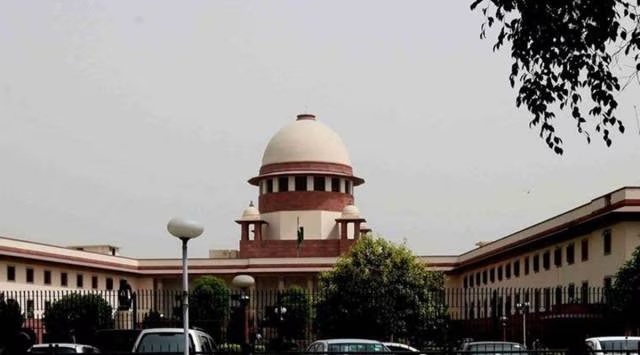
- 28 Aug 2025
In News:
The criminalisation of politics—the entry of individuals facing serious criminal charges into legislative bodies—remains one of the gravest challenges to Indian democracy. Despite repeated judicial observations and public debates, the problem has only deepened over the past decade, threatening the integrity of representative institutions.
Scale of the Problem
Recent data highlights the alarming rise in lawmakers with serious criminal records. In the Lok Sabha, the share of MPs with such cases has increased from 14% in 2009 to 31% in 2024, more than doubling in just 15 years. Certain states reflect extreme cases: Telangana (71% of MPs), Bihar (48%), and Uttar Pradesh (34 MPs, the highest in absolute numbers).
At the state level, the trend is equally stark. In 2024, nearly 29% of MLAs (around 1,200) faced serious criminal charges. Andhra Pradesh (56%), Telangana (50%), and Uttar Pradesh (154 MLAs or 38%) illustrate how deeply entrenched the issue has become.
These figures cover offences punishable by five years or more, including non-bailable crimes such as murder, kidnapping, and corruption, thereby going beyond minor infractions.
Causes of Criminalisation
Several systemic factors perpetuate this trend:
- Electoral Financing – High campaign costs create incentives for parties to field “winnable” candidates, many of whom have criminal clout and access to large financial resources.
- Weak Enforcement of Laws – While conviction leads to disqualification under the Representation of the People Act (RPA), slow judicial processes allow accused legislators to contest multiple elections.
- Patronage Politics – Candidates with criminal backgrounds often command local influence, mobilise voters, and provide muscle power for parties, making them electorally attractive.
- Voter Rationality – In certain constituencies, voters see such candidates as problem-solvers who can deliver despite weak state capacity, reinforcing their acceptability.
Consequences for Democracy
The rising criminalisation of politics undermines the rule of law and corrodes democratic legitimacy. Legislators facing serious charges may prioritise personal or group interests over public welfare. Policy decisions risk being distorted by vested interests, while governance is compromised by declining ethical standards. Over time, this erodes citizen trust in institutions, weakens the credibility of Parliament and Assemblies, and fuels cynicism about democratic accountability.
Judicial and Institutional Responses
The Supreme Court has repeatedly emphasised the need to curb criminalisation. In Lily Thomas v. Union of India (2013), it ruled that convicted legislators would be immediately disqualified. In Public Interest Foundation v. Union of India (2018), it directed parties to publish criminal antecedents of candidates, citing the “urgent need for cleansing politics.”
The Election Commission of India (ECI) has also recommended barring candidates against whom charges have been framed for serious offences. However, political consensus on reforms remains elusive.
Way Forward
Addressing this structural malaise requires a multi-pronged strategy:
- Legal Reforms – Amend the RPA to disqualify candidates at the stage of framing of charges for heinous crimes.
- Judicial Fast-Tracking – Establish special courts for speedy trial of cases against politicians.
- Political Will – Parties must adopt internal reforms, refusing tickets to tainted candidates, with penalties for violations.
- Voter Awareness – Civil society campaigns and public disclosure of candidate records can empower voters to make informed choices.
- State Capacity – Strengthening law enforcement and reducing reliance on “muscle power” will make clean candidates more competitive.
Conclusion
The criminalisation of politics is not merely a legal or electoral issue but a crisis of democratic legitimacy. With nearly one-third of legislators facing serious charges, India risks normalising the presence of alleged criminals in the highest law-making bodies. Urgent institutional, legal, and political reforms are essential to reverse this trend and safeguard the constitutional promise of “purity of elections” and the rule of law.
Nari Shakti and India’s Economic Transformation
- 27 Aug 2025
In News:
Women’s participation in India’s workforce has witnessed a remarkable turnaround in recent years, emerging as a cornerstone of the country’s economic transformation and a critical driver for the vision of Viksit Bharat 2047.
Data from the Periodic Labour Force Survey (PLFS) shows that the female workforce participation rate (WPR) nearly doubled from 22% in 2017-18 to 40.3% in 2023-24, while the unemployment rate (UR) fell from 5.6% to 3.2% during the same period. This trend reflects not only improved economic opportunities but also the success of multiple policy interventions promoting gender-inclusive growth.
Rising Participation Across Sectors
The surge in women’s employment has been particularly pronounced in rural India, with a 96% rise in female employment, compared to 43% in urban areas. Importantly, self-employment among women grew from 51.9% to 67.4%, showcasing the increasing entrepreneurial orientation of India’s female workforce. Formal employment has also expanded, with 1.56 crore women joining the formal workforce in the last seven years as per EPFO payroll data. Additionally, over 16.6 crore women workers have registered on the e-Shram portal, providing them access to social security schemes.
Education, Employability, and Skills
Employability of women has improved significantly. Reports show that employability among female graduates rose from 42% in 2013 to 47.5% in 2024, while women with postgraduate education saw their WPR increase from 34.5% to 40% between 2017 and 2024. The India Skills Report 2025 projects that more than half of Indian graduates will be globally employable, marking a substantial improvement in skill readiness.
Policy Push for Women-Led Development
Government initiatives have been central to this transformation. The gender budget increased by 429% in the last decade, reaching ?4.49 lakh crore in FY 2025-26, supporting more than 70 central schemes and 400 state-level initiatives targeted at female entrepreneurship and welfare.
Flagship programmes like Startup India have created a thriving ecosystem where nearly half of DPIIT-registered startups have at least one-woman director. Schemes such as PM Mudra Yojana (with women receiving 68% of 35.38 crore loans worth ?14.72 lakh crore) and PM SVANidhi (where 44% of beneficiaries are women) have provided critical financial inclusion. Complementary initiatives like Namo Drone Didi, Deendayal Antyodaya Yojana–NRLM, and the Lakhpati Didi scheme are equipping women with resources to become economically self-reliant.
Women-Led MSMEs and Job Creation
The rise of women-led MSMEs further reflects this shift. Their number almost doubled from 1 crore in 2010-11 to 1.92 crore in 2023-24, generating 89 lakh additional jobs for women between FY21–FY23. The share of women-owned establishments grew from 17.4% to 26.2% in the same period. This expansion highlights the growing role of women as both job creators and drivers of inclusive growth.
Towards Viksit Bharat 2047
Women are no longer seen as mere beneficiaries of welfare schemes but as leaders of India’s growth story. From rural entrepreneurs to corporate directors, their contributions are reshaping the economy. Achieving the vision of 70% women workforce participation by 2047 is now integral to India’s developmental roadmap.
Conclusion
India is undergoing a paradigm shift from women’s development to women-led development. The surge in women’s employment, financial inclusion, and entrepreneurship reflects both a social transformation and an economic imperative. As Nari Shakti takes centre stage, empowering women through education, skills, and supportive policies will be crucial for India to achieve inclusive and sustainable growth on its path to Viksit Bharat.
Kerala: India’s First Fully Digitally Literate State
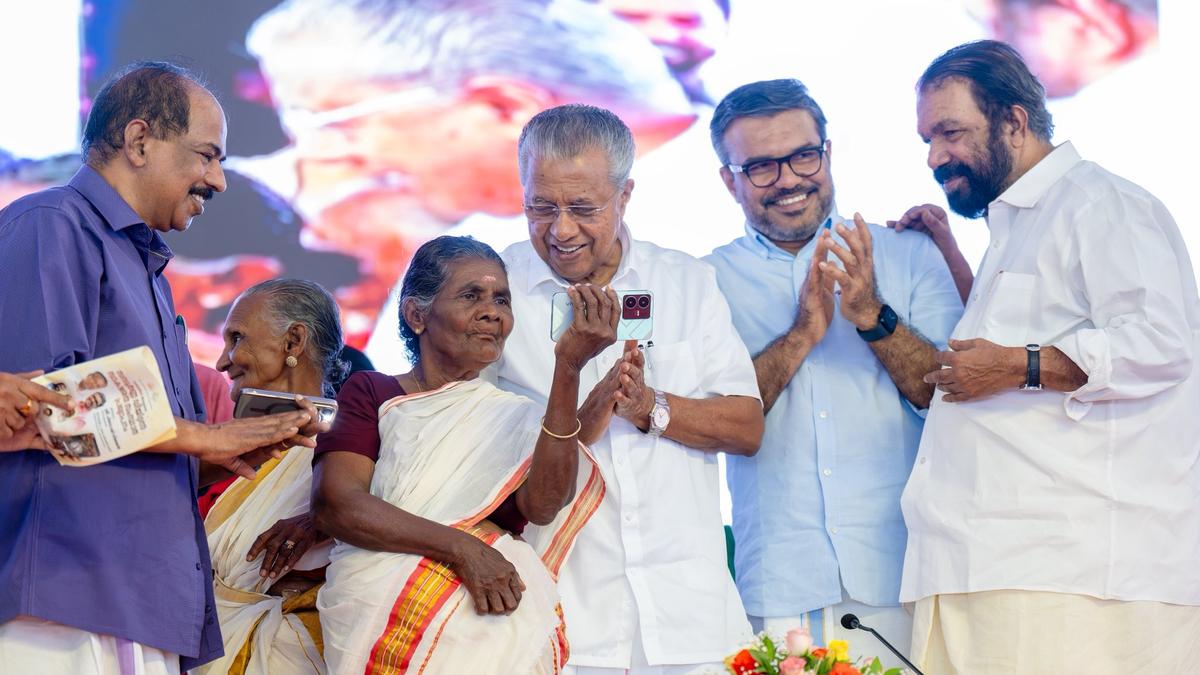
- 26 Aug 2025
In News:
Kerala has become the first fully digitally literate state in India, marking a historic milestone in bridging the digital divide. The achievement follows the successful completion of Phase I of the Digi Kerala project, a grassroots initiative aimed at equipping citizens with essential digital skills.
Origins of the Digital Literacy Movement
Kerala’s digital literacy journey began with the Akshaya Project in 2002, launched by President A.P.J. Abdul Kalam, which aimed to make at least one member of every family digitally literate.
The recent drive was inspired by the Digi Pullampara initiative (2021) in Thiruvananthapuram, where local officials trained daily wage labourers and MGNREGS workers in basic smartphone-based services to prevent loss of wages due to long queues at banks. The success of Pullampara, which became the state’s first fully digitally literate panchayat, laid the foundation for statewide expansion.
Survey and Training Model
The programme followed a mass literacy campaign model reminiscent of Kerala’s 1980s literacy drive. Surveys covered 1.51 crore individuals across 83.45 lakh households, identifying 21.88 lakh digitally illiterate persons. Of these, 21.87 lakh (99.98%) successfully completed training and evaluation.
Training included 15 basic digital tasks such as making voice/video calls, using WhatsApp, accessing e-governance platforms, and conducting digital transactions. Volunteers—drawn from NSS units, Kudumbashree groups, SC/ST promoters, and libraries—delivered training at worksites, neighbourhood groups, and homes, ensuring inclusivity. Evaluations required participants to perform at least six out of the 15 tasks, with retraining provided where necessary.
Inclusivity and Grassroots Orientation
Unlike the National Digital Literacy Mission (NDLM) and Digital Saksharta Abhiyan (DISHA), which capped training at 60 years of age, Kerala’s programme included all age groups—even centenarians. Data shows 15,221 trainees above 90 years, and over 7.77 lakh between 60–75 years benefitted. Women (13 lakh), men (8 lakh), and 1,644 transgender persons also participated, showcasing inclusivity.
The programme also targeted marginalized communities and homemakers, ensuring that digital literacy did not remain confined to urban or privileged groups.
Integration with Kerala’s Digital Ecosystem
Kerala’s digital literacy drive is not a standalone initiative but part of a larger ecosystem:
- Kerala Fibre Optic Network (KFON): Provides universal internet access, including free connections to BPL families.
- K-SMART (Kerala Solutions for Managing Administrative Reformation and Transformation): Integrates all local self-government services onto a single digital platform.
- Digi Kerala 2.0: Expands the mission beyond basic literacy to include cyber fraud awareness, misinformation detection, and advanced e-governance training.
This smartphone-centric approach reflects ground realities, where mobile phones are the most accessible digital tool for citizens.
National Context
Digital literacy in India remains limited: only 38% households are digitally literate (61% in urban, 25% in rural areas). Past initiatives like NDLM and DISHA trained over 53 lakh people, while PMGDISHA (Pradhan Mantri Gramin Digital Saksharta Abhiyan) has trained 6.39 crore individuals till March 2024. Kerala’s model stands out for its grassroots orientation, inclusivity, and integration with governance.
Significance
- Governance & Transparency: Enhances access to schemes like Ayushman Bharat, PM-Kisan, and Jan Dhan, while enabling online grievance redressal and RTI filing.
- Socio-Economic Empowerment: Equips women, elderly, and marginalized groups with livelihood-relevant skills.
- Disaster Resilience: Ensures continuity of education, services, and financial transactions during crises such as pandemics.
- Scalable Model: Provides a blueprint for other states under the Digital India mission, focusing not only on infrastructure but also on citizen capacity.
Conclusion
Kerala’s declaration as the first fully digitally literate state represents more than a symbolic achievement; it reflects a transformative model of participatory governance, inclusivity, and socio-economic empowerment. By bridging the last-mile digital divide, Kerala positions itself as a leader in India’s march towards a digitally empowered society.
India–China Relations
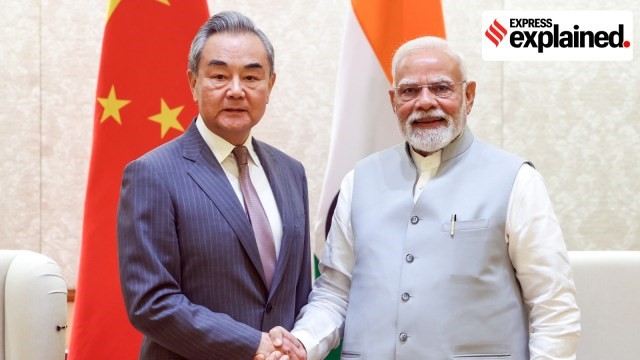
- 25 Aug 2025
In News:
The recent visit of Chinese Foreign Minister Wang Yi to New Delhi marked the first ministerial-level engagement from China since India and China agreed in October 2024 to complete disengagement at the border. Wang, meeting Prime Minister Narendra Modi, acknowledged that bilateral relations had experienced “ups and downs” and emphasised learning from past experiences. He urged that India and China view each other as partners rather than adversaries, signalling cautious attempts at resetting ties.
Historical Context
Bilateral optimism peaked in October 2019, during the second informal summit between PM Modi and President Xi Jinping at Mahabalipuram. However, eight months later, the Galwan Valley clash in eastern Ladakh resulted in 20 Indian and at least four Chinese casualties, triggering a rupture in relations. Both sides amassed 50,000–60,000 troops along the Line of Actual Control (LAC), leading to a prolonged standoff with frequent confrontations and infrastructure build-ups. Partial disengagement occurred in subsequent years, but the situation remained tense until mid-2024.
The 2024 disengagement agreement at remaining flashpoints in Depsang and Demchok, followed by a Modi–Xi meeting in Kazan, paved the way for a diplomatic thaw. Since then, exchanges at the levels of External Affairs, Defence, and National Security have contributed to restoring dialogue and confidence.
Twin-Track Strategy
India and China have revived the dual-track approach, pursuing border management and broader bilateral cooperation simultaneously. Key mechanisms under the Working Mechanism for Consultation and Coordination (WMCC) include:
- An Expert Group to explore early harvest options in boundary delimitation
- A Working Group for effective border management to maintain peace and tranquillity
- Expansion of General-Level Mechanisms to include Eastern and Middle sectors
This strategy ensures that border issues do not obstruct the development of bilateral ties, while also recognising the need for a political perspective in settling boundary disputes.
Bilateral Cooperation
In the economic and connectivity domain, both sides agreed to:
- Resume direct flights and facilitate visas for tourists, businesses, and media
- Reopen border trade at Lipulekh Pass, Shipki La Pass, and Nathu La Pass
- Promote trade and investment flows through concrete measures
In the water resources sector, China committed to sharing hydrological information on trans-border rivers during emergencies on humanitarian grounds. The Kailash Mansarovar Yatra has resumed, reflecting thawing people-to-people exchanges.
Trust Deficit and Security Concerns
Despite progress, several issues continue to hinder trust:
- Repeated Chinese incursions (Depsang 2013, Chumar 2014, Doklam 2017, and ongoing standoffs)
- Continued deployment of over 50,000 troops in eastern Ladakh
- China–Pakistan military cooperation, including weapon and intelligence support
- Potential risks from China’s mega dam on the YarlungTsangpo (Brahmaputra) affecting downstream states
- Concerns regarding cross-border terrorism and China’s export restrictions on rare earths, fertilisers, and industrial equipment
Strategic Context
The recent thaw also comes amid shifting global dynamics, including strained India–US ties, US tariffs on Indian imports, and broader geopolitical competition. Both India and China aim to maintain stability, enhance economic cooperation, and pursue a multipolar Asia. However, sustainable rapprochement depends on Beijing addressing Indian concerns on security, water, and economic vulnerabilities, alongside constructive engagement on the border.
Migrant Disenfranchisement in India: A Democratic Challenge
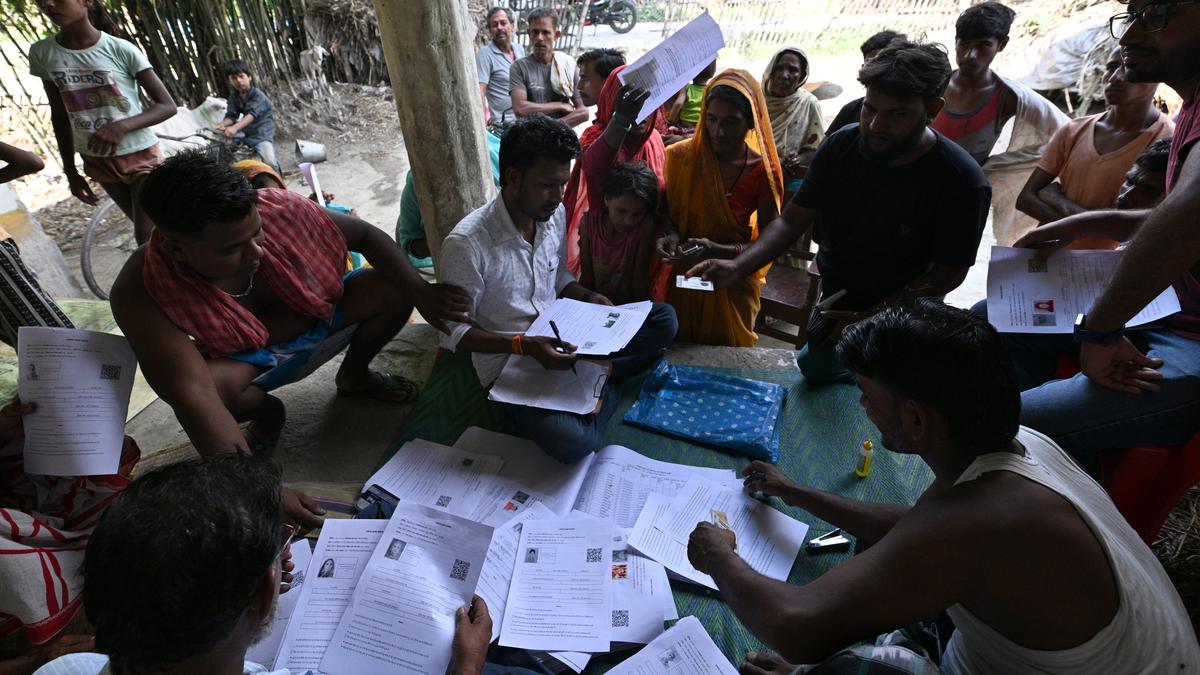
- 24 Aug 2025
In News:
India, the world’s largest democracy, faces a silent yet critical challenge: the systematic disenfranchisement of internal migrants. Recent reports indicate that during the Special Intensive Revision (SIR) of Bihar’s electoral rolls, nearly 3.5 million voters—about 4.4% of the state’s electorate—were removed. Most affected are migrant workers who were absent during house-to-house verification and subsequently labelled as “permanently migrated,” effectively losing the right to vote both at their home and destination states. This development underscores a structural weakness in India’s electoral system and highlights the democratic deficit faced by mobile citizens.
Understanding Migrant Disenfranchisement
Migrant disenfranchisement occurs when workers are excluded from voting due to absence from their home constituencies and lack of registration in destination states. This results in a “political limbo,” particularly for circular and split-family migrants, who move seasonally for economic survival. Bihar alone has around 7 million annual out-migrants, many of whom live in rented accommodations, slums, or temporary worksites, often lacking the documentation required for voter registration.
Legal Framework and Safeguards
The Representation of the People Acts, 1950 & 1951, guarantees citizens the right to be enrolled in their ordinary residence constituency. ERONET facilitates continuous updating of electoral rolls, and the Election Commission of India (ECI) has proposed portability measures such as “One Nation, One Voter ID,” though these remain largely unimplemented. Proxy voting exists for overseas Indians but does not extend to internal migrants. Civil society initiatives, including surveys in Kerala, have highlighted gaps in voter registration and access for mobile populations.
Structural Causes of Disenfranchisement
- Sedentary Electoral Framework: Voter registration is tied to fixed residence and physical verification, disadvantaging migrants in transient living conditions.
- Circular and Split-Family Migration: Seasonal migration is often misread as permanent relocation, prompting administrative deletion from rolls.
- Administrative and Social Barriers: Migrants face bureaucratic hurdles, digital illiteracy, and social exclusion, while host states may discourage enrolment due to perceived political consequences.
- Regionalism and Sub-Nationalism: Migrants are frequently viewed as outsiders, and domicile norms for jobs can restrict political participation.
Consequences
Disenfranchisement deepens inequalities and disproportionately affects poor, seasonal, and vulnerable populations, including women near border areas. Bihar’s average voter turnout (53.2%) lags behind Gujarat (66.4%) and Karnataka (70.7%), reflecting the systemic exclusion of mobile citizens. The result is a two-tier democracy where the economically marginalized are politically voiceless.
Way Forward
- Portable Voter Identity: Develop Aadhaar-linked, mobile electoral IDs enabling voting across home and work constituencies, with privacy safeguards.
- Cross-State Coordination: EC should implement cross-verification before deletion and enable temporary voter registration for seasonal migrants.
- Civil Society Outreach: Panchayats and NGOs can facilitate re-enrolment campaigns, replicating Kerala’s successful survey models.
- Policy Harmonisation: Align electoral reforms with labour codes and welfare portability, recognising circular migration as an economic reality.
Conclusion
India’s democracy depends on the participation of all citizens, including migrants whose remittances underpin state economies. Without urgent reforms to ensure portable voter rights, inter-state coordination, and inclusive outreach, millions risk losing their political voice. Addressing migrant disenfranchisement is not merely an administrative task but a fundamental imperative for a representative and inclusive democracy.
Constitution (130th Amendment) Bill, 2025
- 23 Aug 2025
In News:
- The Constitution (One Hundred and Thirtieth Amendment) Bill, 2025, represents a significant step in strengthening constitutional morality and accountability of those holding high executive offices.
- It seeks to amend Articles 75, 164, and 239AA to provide for the automatic removal of the Prime Minister, Chief Ministers, and Ministers in the Union and state governments, if they remain under judicial custody for a prolonged period on charges of serious criminal offences.
- The Bill also extends similar provisions to Union Territories, including Delhi, Puducherry, and Jammu & Kashmir, through amendments in relevant legislations.
Key Provisions of the Bill
- Grounds for Removal:Applicable when a Minister is accused of an offence punishable with imprisonment of five years or more and has been in custody for 30 consecutive days.
- Procedure:
- At the Union level, the President must remove a Minister on the advice of the Prime Minister by the 31st day.
- At the state level, Governors act on the advice of Chief Ministers.
- In Delhi, the President acts on the Chief Minister’s advice.
- For the Prime Minister or Chief Minister, resignation is mandatory on the 31st day of custody; otherwise, their office will stand vacated automatically.
- Reappointment:The Bill does not bar reappointment after release from custody, ensuring due process for those acquitted.
Rationale and Objectives
- Constitutional Morality: Upholding values of integrity in governance and preventing the spectacle of governments being run from prisons.
- Public Trust: Protecting the legitimacy of the executive by ensuring that leaders under grave suspicion cannot continue in office.
- Good Governance: Preventing misuse of official machinery by incarcerated Ministers.
The Statement of Objects and Reasons highlights that the Bill aims to keep executive positions free from “any ray of suspicion,” thereby strengthening public confidence in democratic institutions.
Challenges and Concerns
- Opposition’s Objections: Concerns about misuse of investigative agencies and politically motivated arrests have been raised. Critics argue that automatic disqualification on custody, without conviction, may undermine the presumption of innocence.
- Judicial Safeguards: The reliance on timely judicial intervention (bail within 30 days) assumes speedy functioning of courts, which may not always be realistic.
- Federal Sensitivities: Extending the provision to Union Territories, particularly Delhi and Jammu & Kashmir, may invite political contestation.
Significance
The 130th Amendment Bill underscores India’s evolving constitutional morality by mandating that executive authority cannot coexist with criminal custody. By including the Prime Minister within its scope, the Bill strengthens democratic accountability, contrasting sharply with earlier attempts at immunity. If passed, it will create a robust ethical standard for public office, ensuring that governance is not conducted under the shadow of criminality, while allowing reappointment post-exoneration to balance fairness.
In essence, the Bill reflects an effort to reconcile democratic legitimacy, public morality, and constitutional governance, thereby reinforcing citizens’ faith in the integrity of the Indian executive.
Why India needs a national space law urgently
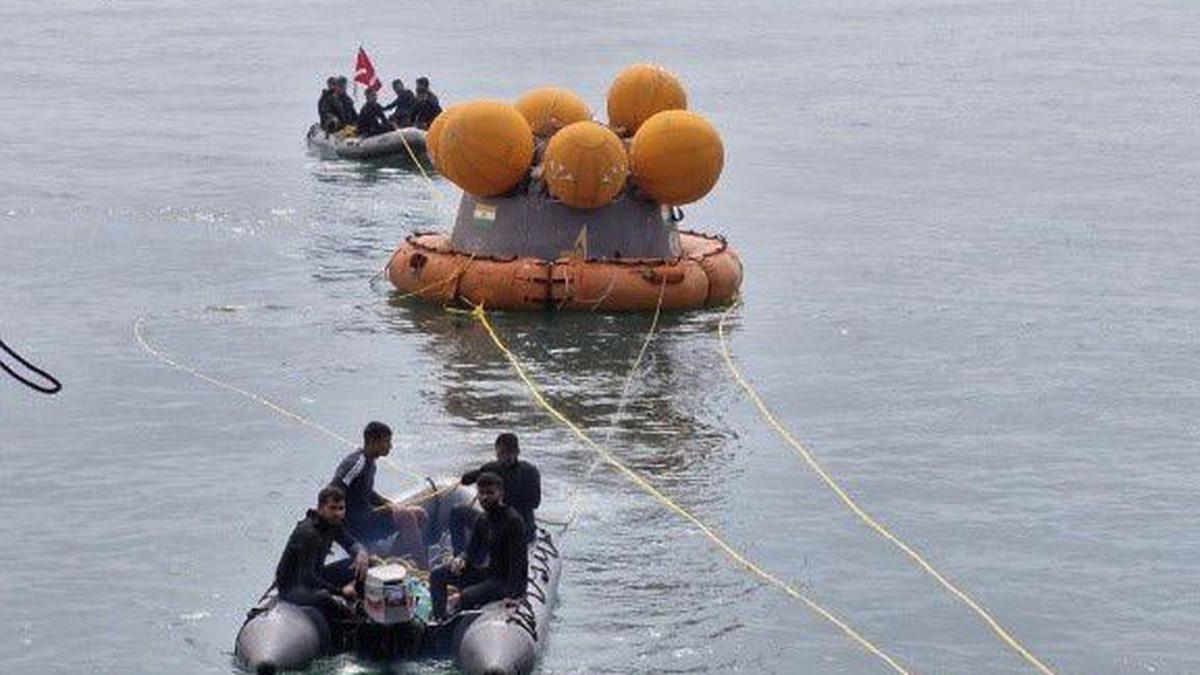
- 22 Aug 2025
In News:
India’s space programme has made remarkable strides in recent years, with missions such as Chandrayaan-3, the upcoming Gaganyaan human spaceflight, and plans for the Bharat Antariksh Station. Alongside, private participation in launch services, satellite communication, and space-based applications has grown significantly. However, despite being a signatory to key international treaties like the Outer Space Treaty (OST) 1967, India still lacks a comprehensive national space legislation. This gap creates uncertainty for private enterprises, investors, and regulators, making a space law an urgent necessity.
International Context and Treaty Obligations
The OST of 1967 provides foundational principles:
- Outer space as the common heritage of mankind with no claims of sovereignty.
- Activities limited to peaceful purposes and free scientific exploration.
- State responsibility for activities conducted by both government and non-government actors.
- Liability of states for damage caused by space objects launched from their territory.
While India is bound by these obligations, the treaty is not self-executing. National legislation is required to translate these commitments into enforceable domestic rules. Many countries such as the U.S., Luxembourg, Japan, and UAE have enacted laws clarifying ownership, licensing, and liability frameworks, thereby attracting global investments in their space sectors.
India’s Current Approach
India has followed an incremental strategy, relying on policies and guidelines rather than legislation:
- Indian Space Policy, 2023 → opens space activities to private players.
- IN-SPACe Norms and Guidelines, 2024 → provides authorization mechanisms.
- Catalogue of Indian Standards for Space Industry, 2023 → ensures safety and quality.
However, these are executive measures without statutory authority. The Indian National Space Promotion and Authorisation Centre (IN-SPACe) currently functions without legal backing, undermining its ability to act as a credible single-window regulator.
Key Challenges in the Absence of a Law
- Regulatory Fragmentation: Space activities involve multiple ministries (Defence, Telecom, Commerce, DoS), leading to duplication and delays. For instance, satellite communication projects require parallel clearances from DoT, Defence, and ISRO.
- Liability Concerns: Under OST, India is internationally liable for damages caused by private launches. Without domestic liability-sharing norms, startups face prohibitive insurance costs.
- FDI Uncertainty: India allows partial FDI in satellite manufacturing, but unclear automatic routes deter investors. Competitor nations offer liberal FDI frameworks, drawing startups away.
- Intellectual Property Issues: Ambiguity in IP ownership discourages innovation and risks talent migration to IP-friendly jurisdictions.
- Innovation Barriers: Overlapping clearances and unclear rules delay project timelines, stifling private-sector growth.
Way Forward
- Comprehensive Space Activities Law: Clearly define licensing, liability, insurance, IP rights, and dispute resolution in line with OST.
- Statutory Empowerment of IN-SPACe: Grant it legal authority as an independent single-window regulator with transparent, time-bound processes.
- Insurance Framework: Establish government-backed reinsurance pools to make liability coverage affordable for startups.
- Liberalised FDI Norms: Allow 100% FDI in satellite component manufacturing under the automatic route with safeguards for national security.
- IP and Innovation Ecosystem: Protect private patents, encourage industry–academia collaboration, and retain domestic talent.
Conclusion
India stands at a decisive moment in its space journey. The absence of a comprehensive space law risks slowing down private participation, deterring investment, and exposing the country to unmitigated liability under international law. Enacting robust legislation would not only provide clarity and predictability but also align India with global best practices, nurture its commercial space ecosystem, and position it as a trusted global leader in space governance. With India aspiring to host major international space events and expand its presence in global markets, the urgency for a national space law has never been greater.
AI-Powered Early Warning System for Elephant Conservation
- 21 Aug 2025
Introduction
Human-elephant conflict is a persistent challenge in India, particularly in regions where railway lines intersect traditional migratory routes of elephants. In response, the Tamil Nadu Forest Department, in collaboration with the railways, has pioneered an AI-enabled early warning system in the Walayar–Madukkarai forest range along the Kerala–Tamil Nadu border. This initiative, operational since February 2024, has emerged as a model for technology-driven wildlife conservation.
Background
The Western Ghats, a UNESCO World Heritage Site and a critical biodiversity hotspot, serves as a migratory corridor for elephants moving between the Nilgiris, Sathyamangalam, and Kerala forests. However, expanding rail and road infrastructure, coupled with land-use changes and increasing human presence, has fragmented these habitats.
The Coimbatore Forest Division alone reported nearly 9,000 elephant straying incidents between 2021 and 2023. The Madukkarai range, traversed by two railway tracks through reserved forests, has been particularly vulnerable. Since 2008, 11 elephants, including calves, have died due to train collisions in this area, underscoring the urgency for preventive measures.
The AI-Powered Surveillance System
- Infrastructure: The system comprises 12 surveillance towers fitted with 24 high-resolution thermal cameras, strategically placed along a vulnerable 7-km stretch of railway track.
- Technology: Using artificial intelligence and machine learning, the cameras detect elephant presence up to 100 feet near tracks. The system is modeled on surveillance technology used by the Indian Army at border areas.
- Command Centre: Located near Walayar, it is staffed by trained forest personnel and local tribal youth. The system operates 24×7, sending real-time alerts to railway control rooms, loco pilots, and patrol teams.
- Integration with Railways: Alerts prompt loco pilots to slow down or halt trains, while forest staff guide elephants safely across or divert them through designated underpasses.
- Results: Since its commissioning, the system has facilitated over 6,500 safe elephant crossings and generated over 5,000 alerts, with zero elephant fatalities reported.
Broader Significance
- Wildlife Safety: The system ensures unhindered migratory movement of elephants, mitigating human-wildlife conflict.
- Community Involvement: Employment of tribal youth in monitoring enhances local participation in conservation.
- Judicial Oversight: The initiative aligns with the Madras High Court’s 2021 directive to minimize elephant deaths on railway tracks.
- Multi-Species Benefit: The cameras also detect human presence, reducing risks of accidents and aiding in conflict management.
Challenges and Way Forward
Elephants are highly adaptive and often circumvent traditional barriers such as trenches or solar fences, making AI-driven monitoring more reliable. However, scaling up faces challenges of financial allocation, technical expertise, and maintenance. The Tamil Nadu government has announced plans to expand the system to four more vulnerable areas including Dharmapuri and Hosur, indicating policy commitment.
To ensure long-term success:
- Similar AI-based systems should be introduced across critical elephant corridors in states like Assam, Odisha, and Karnataka.
- Railway infrastructure should integrate wildlife underpasses and overpasses with AI monitoring.
- A national-level database linking forest departments and railways could enhance coordination.
- Awareness campaigns and community engagement must complement technological solutions.
Conclusion
The AI-powered early warning system in Coimbatore division demonstrates how advanced technology, when integrated with local knowledge and institutional support, can resolve persistent conservation challenges. With elephants being a keystone species vital to ecosystem stability, such interventions are crucial to balance developmental imperatives with biodiversity conservation. Replicating and scaling up this initiative across India could significantly reduce human-elephant conflict and serve as a global model for AI-driven wildlife protection.
“Master of the Roster” Controversy: Balancing Judicial Independence & Accountability
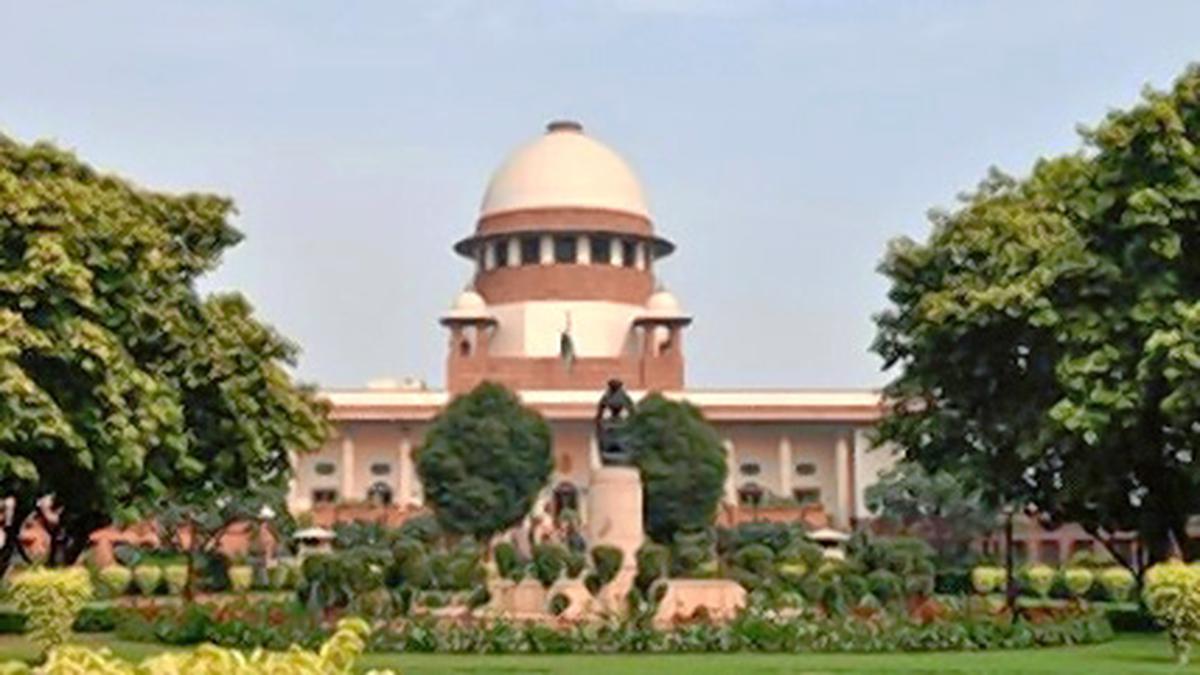
- 20 Aug 2025
Context
A recent incident involving the Supreme Court’s censure of an Allahabad High Court judge has reignited debate about the apex court’s authority over High Courts’ internal administration—specifically, the Chief Justice’s exclusive “Master of the Roster” (MoR) power. The case, involving Justice Prashant Kumar, raised broader issues of judicial discipline, institutional autonomy, and constitutional hierarchy.
The Incident & Its Fallout
A Bench led by Justices Pardiwala and Mahadevan directed that Justice Prashant Kumar be removed from the criminal roster and paired with a senior judge after an “erroneous” judgment. This triggered objections from the Allahabad High Court, which argued it constituted a breach of its administrative autonomy. Following communications from the Chief Justice of India, the Supreme Court clarified that its ruling did not intend to infringe on the Chief Justice’s MoR powers.
Constitutional Principles at Stake
- Master of the Roster Principle:
- Entrails the exclusive right of a Chief Justice—High Court or Supreme Court—to constitute benches and allocate cases. Key precedents affirm this prerogative: State of Rajasthan v. Prakash Chand (1998), State of Rajasthan v. Devi Dayal (1959), and Mayavaram Financial Corporation (Madras HC, 1991).
- Supreme Court’s Binding Authority:
- Article 141 mandates that decisions of the Supreme Court are binding throughout India.
- Article 142 empowers the Court to issue orders necessary for “complete justice,” enabling it to take corrective measures.
- Judicial Independence vs. Oversight:
- High Courts enjoy constitutional autonomy (Art. 214), and the Supreme Court lacks superintendence over them. Yet, the integrated judiciary framework permits intervention when integrity or rule of law is at stake. In Tirupati Balaji Developers (2004), the SC described itself as the “elder brother,” not an administrative overlord.
Issues Raised
- Scope of SC Intervention: Can the Supreme Court issue administrative directives affecting a High Court Chief Justice’s roster authority?
- Judicial Discipline vs. Undermining Autonomy: How can errors be corrected without compromising institutional independence?
- Use of Article 142: Does preventive intervention under this provision set a precedent for future interventions?
- Separation within the Judiciary: Where is the line between hierarchical oversight and judicial autonomy?
In-House Mechanism vs. Public Correction
While serious misconduct among judges is typically addressed through confidential in-house procedures or through impeachment by Parliament, the Supreme Court’s public directive in open court was corrective rather than punitive. The approach—pairing the errant judge with a senior adjudicator—was meant to enhance judicial quality while signaling accountability.
Way Forward
- Define clear guidelines elucidating when the Supreme Court may legitimately intervene in High Courts’ administrative matters.
- Strengthen internal supervisory mechanisms to address judicial errors without resorting to public admonishment.
- Enhance capacity-building, mentorship, and training to minimize repeated lapses in judicial decisions.
Conclusion
The MoR principle is a foundational safeguard of judicial independence, but it does not immune the judiciary from scrutiny or intervention when errors threaten the rule of law. The Supreme Court’s constitutional powers under Article 142 enable exceptional corrective action—but such powers must be exercised judiciously to preserve institutional autonomy and public trust.
US–China Trade Truce and the Role of Agricultural Imports in Geoeconomics
- 19 Aug 2025
In News:
The United States and China, the world’s two largest economies, have extended their trade truce for another 90 days until November 10, 2025, averting a sharp escalation of tariffs. The pause keeps US duties on Chinese goods at 30% (against a threatened 145%) and Chinese tariffs on US shipments at 10% (down from an earlier 125%). This temporary reprieve reflects the complex mix of economics, politics, and strategic leverage shaping bilateral relations.
Tariffs and Negotiation Dynamics
Since his return to office, US President Donald Trump has pursued aggressive tariff measures to reduce America’s $300 billion trade deficit with China (2024), arguing that higher duties encourage domestic production and investment. Beijing retaliated with counter-tariffs and restrictions, sparking a tit-for-tat escalation that threatened global supply chains.
The extension of the truce provides space for negotiations over trade imbalances, unfair practices, national security concerns, and market access. It also underscores the challenges of balancing protectionism with the risks of inflation, uncertainty for businesses, and potential disruption to global economic stability.
China’s Leverage: Rare Earths and Agriculture
Beijing has strategically wielded two levers of influence. First, it controls the global supply chain of rare-earth elements and magnets, crucial for the US auto, aerospace, defence, and semiconductor industries. Second, it has employed its role as a major importer of agricultural commodities as a “trump card.”
US farm exports to China fell sharply from $13.1 billion (Jan–June 2024) to $6.4 billion (Jan–June 2025), continuing a downward trend from the 2022 peak of $40.7 billion. The steepest decline has been in soybean exports, dropping from $17.9 billion (2022) to just $2.5 billion (Jan–June 2025). China has redirected much of its soybean imports—74.7 million tonnes in 2024—to Brazil, Argentina, and Canada, significantly hurting American “corn belt” states and livestock producers reliant on feed crops.
Beyond soybeans, imports of US corn, sorghum, barley, cotton, beef, pork, poultry, and tree nuts such as almonds and pistachios have also contracted. This has created pressure on Trump from politically influential farm states, prompting him to publicly urge Beijing to expand soybean purchases.
Impact on the US and India
While American agricultural exports to China have fallen by 51.3% (Jan–June 2025 over 2024), those to India have surged 49.1% in the same period. India has emerged as the largest market for US tree nuts, importing over $1.1 billion in 2024, with a 42.8% year-on-year rise in early 2025. At the same time, the US has become India’s largest buyer of seafood, with frozen shrimp exports worth $1.9 billion in 2024–25.
This divergence highlights India’s growing importance in US agricultural trade, even as tariff disputes persist—Washington recently doubled duties on Indian imports to 50%, citing penalties linked to Russian oil purchases.
Broader Strategic Context
The US–China trade confrontation extends beyond tariffs and agriculture. Issues under negotiation include curbs on semiconductor exports, the role of Chinese platforms like TikTok, and energy security linked to Russian oil purchases. Beijing emphasizes “win-win cooperation,” while Washington continues to pursue coercive tools to address trade imbalances and safeguard national security.
Conclusion
The current trade truce reflects a fragile pause rather than resolution. China’s use of agriculture and rare earths as instruments of economic statecraft illustrates the growing intertwining of trade, technology, and geopolitics. For the US, balancing domestic political pressures from farmers and industries with long-term strategic objectives remains a challenge. For India, the shifting trade landscape offers both opportunities for greater market access and risks of tariff retaliation, underlining the complexity of navigating major power rivalries.
Documenting India’s Endangered Languages
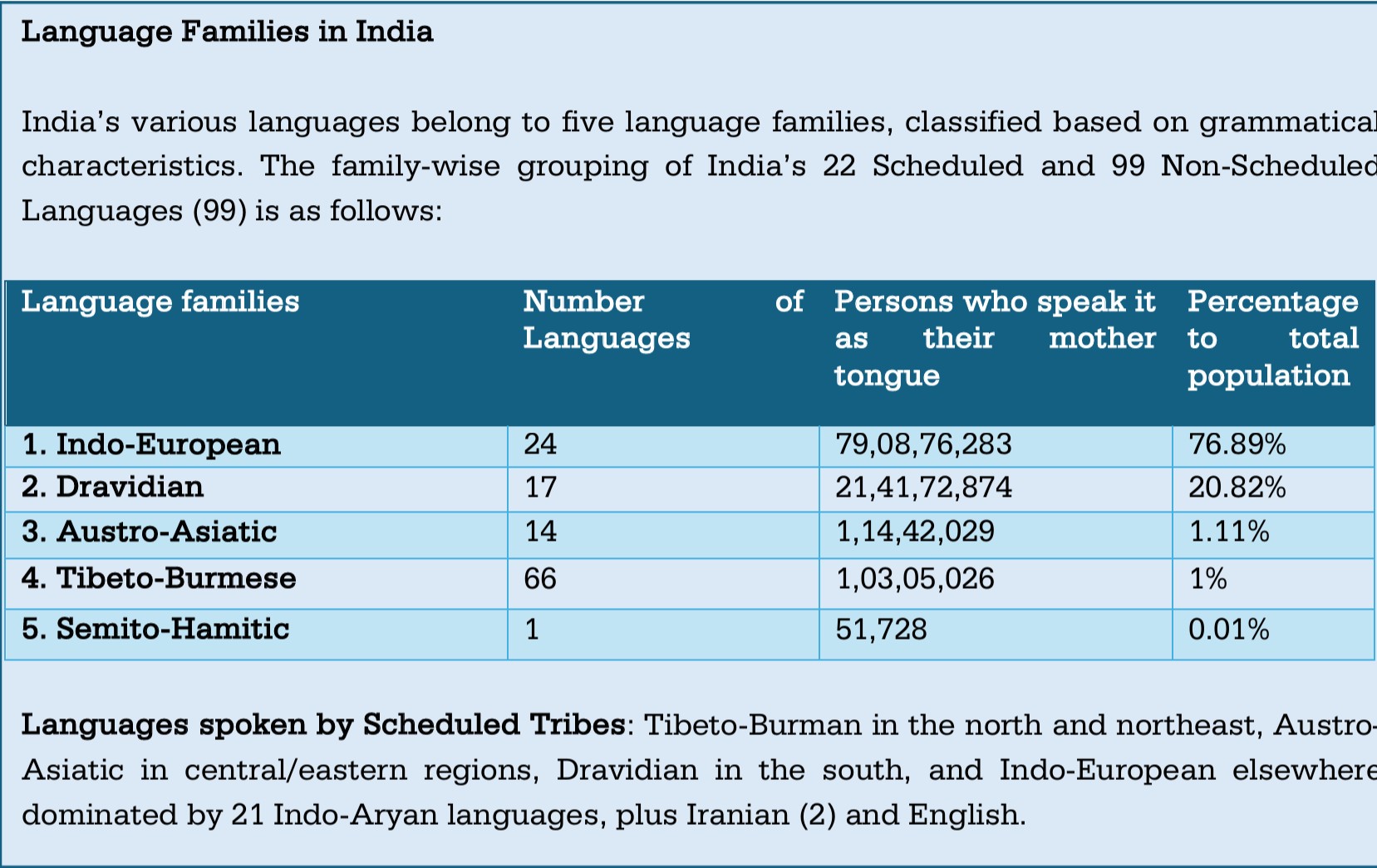
- 18 Aug 2025
Context:
India is home to one of the world’s richest linguistic landscapes, with the 2011 Census recording over 2,800 mother tongues, of which 1,369 were classified as recognized languages. However, many languages remain vulnerable: those spoken by fewer than 10,000 people are categorized as endangered.
According to the Scheme for Protection and Preservation of Endangered Languages (SPPEL) of the Central Institute of Indian Languages (CIIL), 117 endangered languages have been identified, and efforts are underway to document nearly 500 lesser-known languages in the future.
The Case of the Toda Tribe
The Toda tribe of the Nilgiri Hills in Tamil Nadu exemplifies India’s efforts at language preservation. Toda is a proto-South Dravidian language without a native script, spoken by only a few thousand people today. Traditionally oral, it encapsulates the community’s myths, rituals, and ecological knowledge. Under SPPEL, Toda elders have collaborated with linguists to record stories, songs, and vocabulary, producing primers in the Tamil script for schoolchildren and uploading digital archives to Sanchika, CIIL’s online repository launched in 2025. This initiative not only preserves linguistic material but also strengthens cultural identity.
Government and Institutional Efforts
SPPEL employs a systematic process of recording, transcription, grammar construction, cultural documentation, and digital archiving. Advanced tools—such as high-end audio-video equipment and linguistic analysis software—are used to create bilingual dictionaries, pictorial glossaries, and ethno-linguistic profiles.
Complementary schemes also support linguistic diversity. The Ministry of Tribal Affairs, through the TRI-ECE initiative, has funded AI-based translation tools to convert Hindi/English text into tribal languages. The Ministry of Culture promotes folk and tribal arts through programs such as the National Mission for Cultural Mapping and the Rashtriya Sanskriti Mahotsavs, while the Sahitya Akademi organizes annual tribal writers’ meets. These interventions align with the National Education Policy 2020, which emphasizes multilingual education.
Global Perspective
The erosion of linguistic diversity is not unique to India. UNESCO estimates that nearly half of the world’s 7,000 languages are endangered, with the loss of each language erasing irreplaceable cultural heritage. Recognizing this, UNESCO has declared 2022–2032 as the International Decade of Indigenous Languages, urging global stakeholders to act. The International Day of the World’s Indigenous Peoples (August 9) further highlights indigenous rights and cultural preservation.
Technology has emerged as both a challenge and a solution. While AI systems often appropriate indigenous knowledge without consent, initiatives such as New Zealand’s Te Hiku Media for M?ori and Polynesian reef conservation projects demonstrate AI’s potential for revitalization. In India, the integration of AI into language preservation efforts reflects this global trend.
Way Forward
Preserving endangered languages is critical for safeguarding traditional ecological knowledge, oral heritage, and cultural diversity. India’s multilingual character—where 22.9 crore people are bilingual and 8.6 crore are trilingual—creates opportunities for inclusive education models that protect minor languages while enabling wider communication. Community-driven documentation, AI-enabled tools, and government support can ensure continuity across generations.
As UNESCO Director-General Audrey Azoulay has noted, “Language is what makes us human. When people’s freedom to use their language is not guaranteed, this limits their freedom of thought and expression.” For India, the preservation of endangered languages is not merely cultural—it is a matter of equity, identity, and sustainable development.
India’s Unique Genetic Legacy
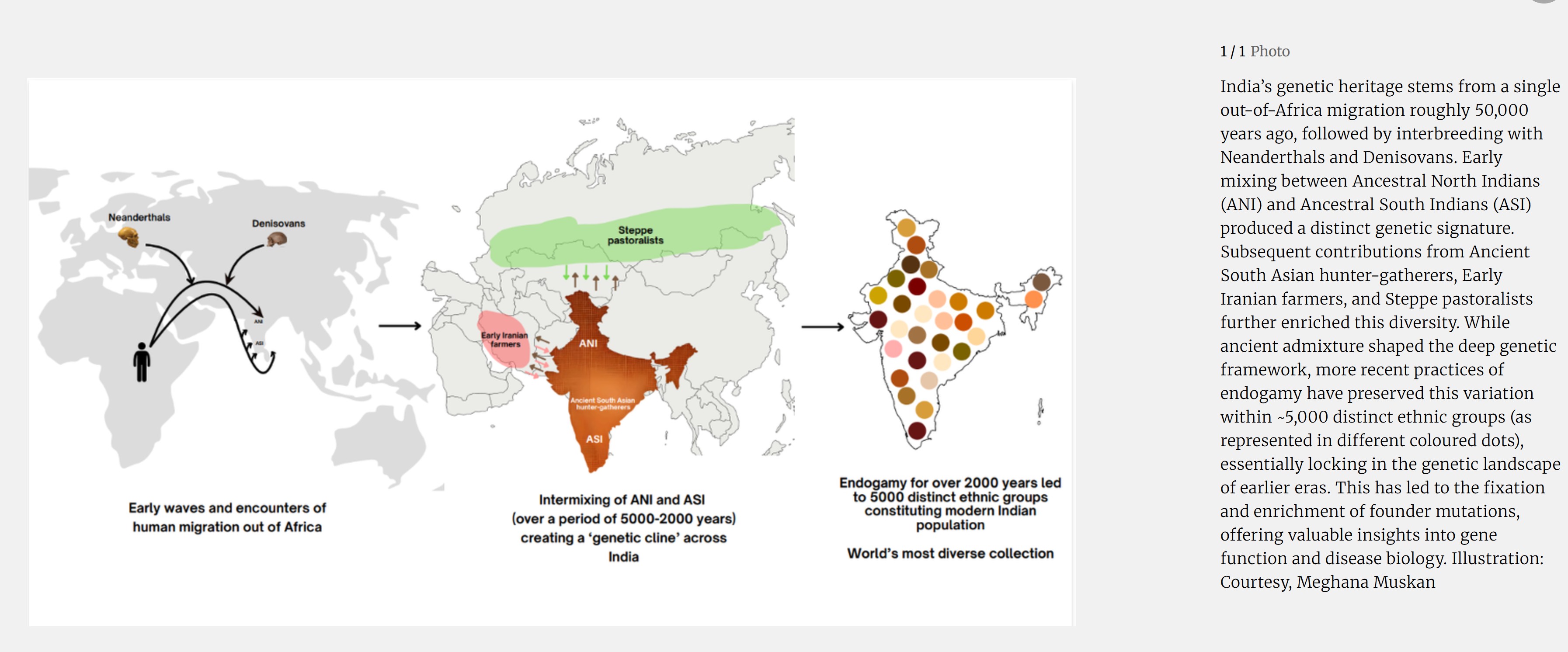
- 17 Aug 2025
Context:
India, with a population of over 1.4 billion and nearly 5,000 distinct ethnic groups, represents one of the richest reservoirs of human genetic diversity in the world. This diversity, shaped by ancient migrations, interbreeding with archaic humans, and centuries of endogamy, makes India a living archive of evolutionary history as well as a frontier for personalised medicine.
Evolutionary Roots and Genetic Mixing
The genetic history of Indians can be traced to a single out-of-Africa migration around 50,000 years ago. These early settlers interbred with archaic humans such as Neanderthals and Denisovans, leaving modern populations with 1–2% of archaic DNA. Some of these variants continue to influence present-day biology—for example, Denisovan genes aiding Tibetan high-altitude adaptation and Neanderthal genes linked to immune responses and even COVID-19 severity.
Within India, genetic blending between Ancestral North Indians (ANI) and Ancestral South Indians (ASI) created a distinct genetic signature. Later contributions from ancient hunter-gatherers, early Iranian farmers, and Steppe pastoralists added further complexity. This intricate demographic history is preserved in the unique genomic architecture of Indian populations, which remains poorly represented in global studies such as the UK Biobank or 1000 Genomes Project.
Endogamy and Disease Patterns
A distinctive feature of Indian society has been endogamy, or marrying within one’s community. While this preserved ancient traits, it also intensified genetic relatedness and strengthened “founder effects.” As a result, many rare recessive diseases occur at unusually high frequencies within specific groups.
For instance, the Vysya community shows a hundred-fold higher prevalence of butyrylcholinesterase deficiency, while other groups carry unique mutations linked to progressive pseudorheumatoid dysplasia or congenital disorders. Large-scale genome sequencing of ~2,700 Indians revealed that each person, on average, has at least one fourth-degree relative, underscoring the depth of relatedness. More than 1.6 lakh previously unreported variants have been identified, many linked to neurological, metabolic, and cardiovascular conditions.
Scientific and Healthcare Potential
This diversity is not merely of anthropological interest but holds transformative implications for medicine. Each Indian community functions as a natural genetic laboratory, preserving rare variants that allow scientists to study gene functions without laboratory-induced mutations. This provides an unprecedented opportunity to advance precision medicine, drug discovery, and disease prevention strategies tailored to Indian populations.
The Genome India Project, which has already sequenced 10,000 genomes, is a milestone towards this goal. Scaling it to millions of individuals, coupled with the creation of a national biobank on the lines of the UK Biobank, could position India as a global hub for genome-driven healthcare and innovation.
Challenges and Way Forward
Despite these opportunities, India faces major gaps. Representation in international genomic databases remains minimal. The risks of genetic discrimination and privacy breaches call for a robust ethical and legal framework. Moreover, integrating genetic screening into public health policy requires awareness campaigns, trained professionals, and equitable access to avoid deepening existing inequalities.
Conclusion
India’s genetic mosaic is both a scientific treasure and a public health imperative. By scaling up sequencing, building inclusive biobanks, and embedding genomics into healthcare policy, India can simultaneously improve disease management, reduce the burden of rare disorders, and emerge as a leader in global genomics research. With foresight, investment, and ethical safeguards, India’s genetic legacy can be harnessed to transform healthcare and strengthen its knowledge economy.
Judicial Pendency in India
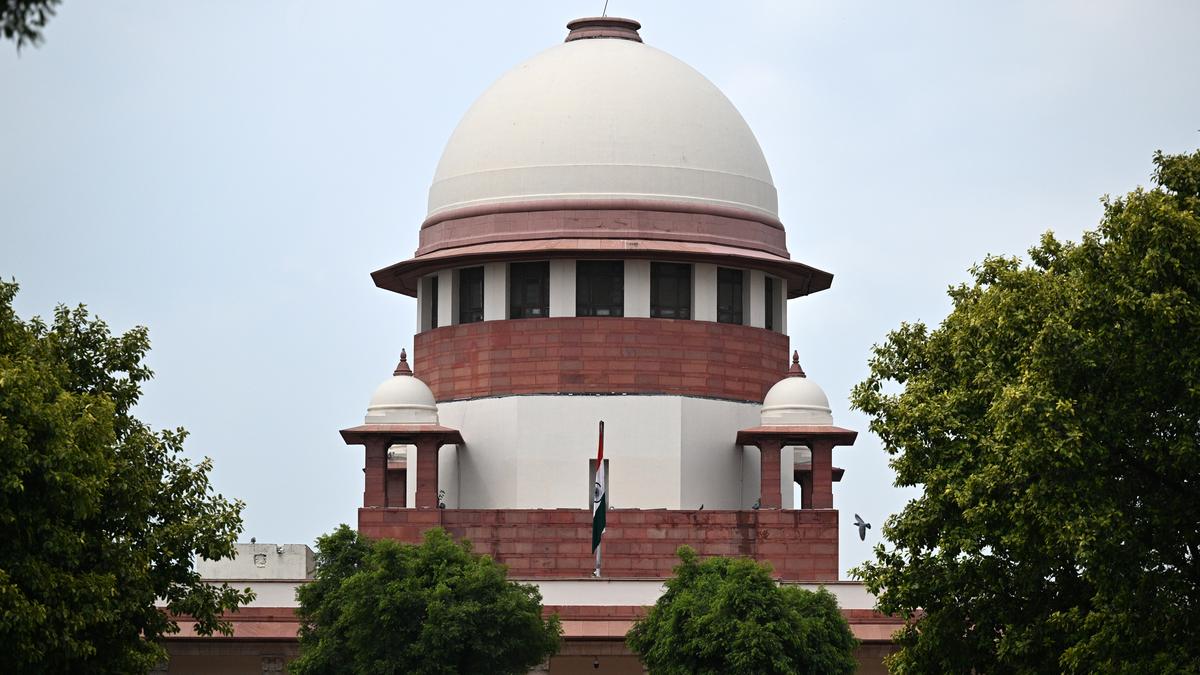
- 14 Aug 2025
In News:
The Indian judiciary today faces an unprecedented backlog of over 5 crore pending cases across all levels—Supreme Court, High Courts, and District Courts. This crisis not only weakens the justice delivery system but also erodes citizen trust in governance and constitutional values.
Magnitude of Pendency
As of mid-2025:
- District Courts account for nearly 90% of pendency, with 4.6 crore+ cases.
- High Courts face a backlog of 63.3 lakh+ cases.
- The Supreme Court has 86,700+ pending cases.
A notable disparity exists between criminal and civil case disposal. While 85.3% of criminal cases in High Courts are resolved within a year, only 38.7% of civil cases in district courts meet this timeline. Alarmingly, nearly 20% of civil cases remain unresolved for more than five years. The Chief Justice of India has flagged the issue of excessive caution in granting bail as one contributor to this delay.
Causes of Judicial Pendency
- Low Judge-Population Ratio: With only 15 judges per 10 lakh population, India lags behind the Law Commission’s recommendation of 50 judges per million. Though women constitute 38% of lower judiciary, their representation in High Courts remains at just 14%.
- Adjournment Culture: Excessive adjournments worsen pendency. A Delhi High Court study found 70% of delayed cases involved over three adjournments, leading to the infamous “tareek pe tareek” phenomenon.
- Underutilized ADR: Mediation, arbitration, and conciliation are not fully tapped despite their cost-effectiveness. Absence of comprehensive ADR performance data further hampers evaluation.
- Rising Litigation: Greater legal awareness, increasing PILs, and non-meritorious cases fuel the backlog. Notably, nearly half of pending cases involve government departments, where routine appeals prolong litigation.
- Structural Deficits: Shortage of courtrooms, staff, weak ICT systems, delays in evidence and witness availability, and lack of case management frameworks further strain judicial functioning.
Reform Initiatives
- National Mission for Justice Delivery and Legal Reforms (2011): Enhancing access and efficiency.
- e-Courts Project: Paperless filing, virtual hearings, faster processing.
- Fast Track Special Courts: Speedy trials for specific offences.
- Tele-Law & Nyaya Bandhu: Expanding legal aid through technology and pro bono services.
- Appointments: Between 2014–2024, 62 Supreme Court and 976 High Court judges were appointed; district courts saw strength rise from 19,518 to 25,609.
Lok Adalats remain highly effective, having disposed of 27.5 crore cases between 2021–2025.
Strengthening the Judicial System
- Capacity Expansion: Raise judge strength to 50 per million, expedite appointments, enhance collegium transparency, and establish specialized courts.
- Infrastructure & Technology: Create a National Judicial Infrastructure Authority, expand e-Courts, use AI for case clustering and tracking, and adopt tools like FASTER for electronic transmission of orders.
- Procedural Reforms: Enforce strict limits on adjournments, adopt summary trials, pre-trial conferences, and time-bound hearings.
- Promote ADR: Effective implementation of the Mediation Act, 2023, expansion of arbitration centres, and scaling up of Lok Adalats can significantly reduce court burden.
- Legal Access: Strengthen Tele-Law, legal aid clinics, and NALSA’s outreach for marginalized groups.
Conclusion
India’s judiciary stands at a crossroads. The sheer volume of pending cases undermines the principle that “justice delayed is justice denied.” Addressing judicial vacancies, modernizing infrastructure, embracing technology, and institutionalizing ADR mechanisms are no longer policy options but constitutional imperatives. Strengthening the justice delivery system is vital not only for effective governance but also for sustaining the rule of law and democratic trust.
ESG Oversight and the Challenge of Greenwashing in India
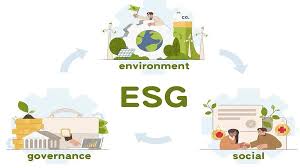
- 13 Aug 2025
Introduction
Environmental, Social, and Governance (ESG) practices are increasingly shaping corporate accountability and sustainable development worldwide. In India, where environmental degradation, social inequality, and governance failures remain pressing challenges, ESG assumes even greater significance. Recognising rising risks of greenwashing—the practice of making false or exaggerated sustainability claims—a Parliamentary Standing Committee on Finance has recently recommended the establishment of a dedicated ESG oversight body under the Ministry of Corporate Affairs (MCA).
Understanding ESG
- Environmental: Evaluates a company’s impact on the climate, energy use, waste management, and biodiversity.
- Social: Measures inclusivity, labour standards, community engagement, and equitable growth.
- Governance: Focuses on transparency, ethical decision-making, compliance, and protection of shareholder interests.
In India, ESG is critical because of:
- Climate vulnerability: India experienced 322 extreme weather days in 2024 (CSE), making sustainability practices urgent.
- Social concerns: Persistent poverty and inequality require businesses to prioritise inclusivity.
- Governance needs: Strong corporate ethics help attract investment and build long-term trust.
Key Recommendations of the Standing Committee
- ESG Oversight Authority: A specialised body under MCA to verify sustainability claims, detect fraud, and design sector-specific ESG guidelines.
- Strengthening Legal Mandate: Amendments to the Companies Act, 2013 to embed ESG responsibilities into directors’ duties, making sustainability a core element of business strategy.
- Support for MSMEs: Providing frameworks and guidance to help small enterprises adopt ESG without excessive compliance burden.
- Deterrence Measures: Faster penalties for false claims to curb greenwashing.
- Strengthening Institutions: Empowering SFIO and NFRA to detect financial crimes linked with ESG misreporting.
- CSR Transparency: Better monitoring to ensure Corporate Social Responsibility efforts are genuine and impactful.
India’s ESG Initiatives
- SEBI’s BRSR Framework: Mandates top 1,000 listed companies to disclose ESG performance, aligned with international norms like GRI and SASB.
- CSR Mandate (Companies Act, 2013): Encourages companies to invest in social and environmental causes.
- Green Rating Project (CSE): Rates industries on environmental performance.
The Challenge of Greenwashing
Greenwashing undermines ESG credibility by misleading consumers and investors. It often involves vague labels (“eco-friendly,” “natural”), token CSR activities, or misuse of traditional systems like Ayurveda to project sustainability without genuine practices.
Factors driving greenwashing in India
- Eco-consumerism: Rising demand for sustainable goods, especially among youth.
- Weak enforcement: Non-mandatory standards like BIS Eco-Mark limit accountability.
- Fragmented regulations: ESG rules spread across multiple agencies, creating compliance gaps.
- Cultural exploitation: Misuse of heritage-based terms for marketing.
- CSR marketing: Highlighting symbolic actions while continuing harmful operations.
Regulatory Safeguards
- Consumer Protection Act, 2019: Central Consumer Protection Authority can penalise misleading environmental claims.
- ASCI Guidelines: Ensure environmental claims in advertising are evidence-based.
- Plastic Waste Management Rules: Aim to regulate reduction claims, though gaps remain.
Conclusion
The rise of ESG reflects India’s journey towards balancing economic growth with sustainability and ethics. However, greenwashing threatens this transition, diluting genuine efforts. The Parliamentary Committee’s recommendation for a centralised ESG oversight authority is timely, offering a pathway to ensure accountability, strengthen investor confidence, and align India’s corporate governance with global sustainability standards.
For India, integrating ESG into the corporate ethos is not merely regulatory compliance—it is a strategic imperative for long-term resilience, social equity, and climate security.
Groundwater Contamination in India
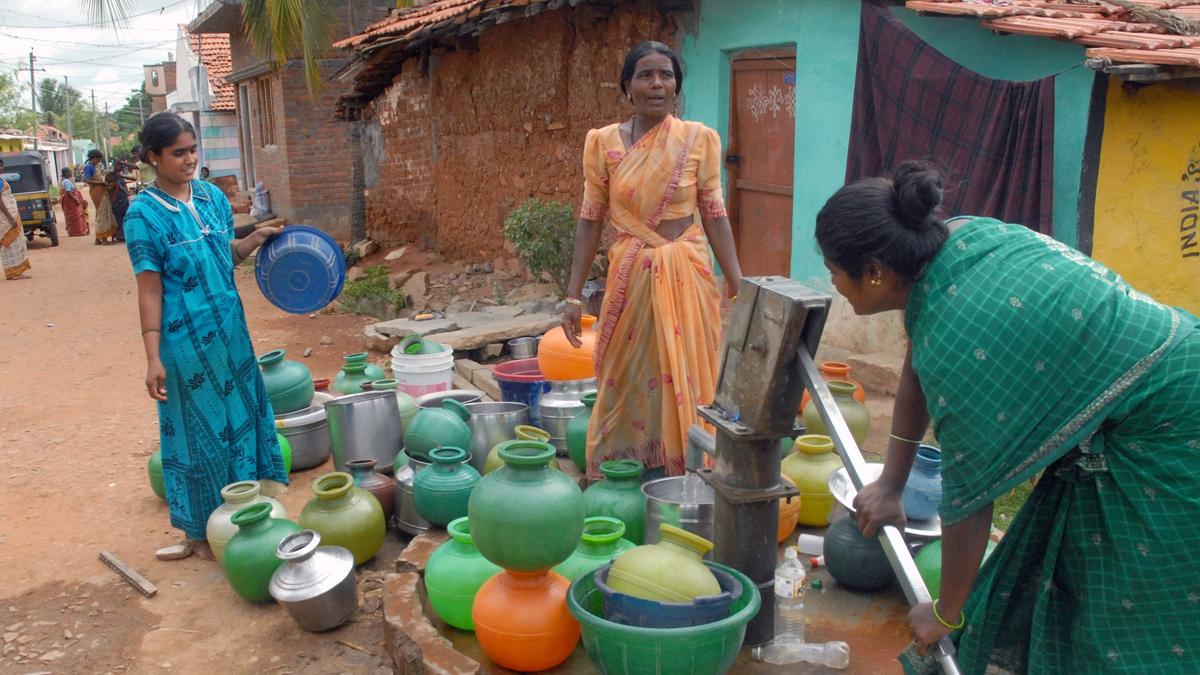
- 12 Aug 2025
Introduction:
Groundwater is the backbone of India’s water economy, meeting more than 85% of rural drinking water needs and nearly 65% of irrigation requirements. Traditionally considered a safe and abundant source, aquifers are now increasingly threatened by rising contamination. The presence of nitrates, fluoride, arsenic, uranium, heavy metals, and pathogens in groundwater is creating a silent but severe public health and environmental crisis.
Scale of the Crisis
The 2024 Central Ground Water Board (CGWB) Report highlights contamination across 440 districts, exposing millions to serious health risks. Unlike droughts or floods, groundwater contamination is invisible, cumulative, and often irreversible, making it a formidable challenge to long-term water security.
Sources of Contamination
1. Anthropogenic (Human-Induced):
- Agricultural runoff: Excessive use of fertilisers and pesticides leads to nitrate and phosphate leaching.
- Industrial discharge: Toxic heavy metals like lead, cadmium, and mercury infiltrate aquifers.
- Sewage & septic leakage: Untreated wastewater contaminates rural and peri-urban groundwater.
- Fuel leakage: Petroleum seepage further pollutes drinking water sources.
2. Geogenic (Natural):
- Fluoride: Naturally present in rocks, aggravated by over-extraction.
- Arsenic: Mobilised in Gangetic aquifers due to pumping.
- Uranium: Present in certain geological formations, worsened by phosphate fertiliser use.
Key Contaminants and Health Impacts
|
Contaminant |
Source |
Health Impacts |
Hotspot Regions |
|
Nitrates |
Fertilisers, sewage |
“Blue Baby Syndrome”, cancer risk |
Punjab, Haryana, Karnataka |
|
Fluoride |
Geogenic, fertilisers |
Dental & skeletal fluorosis |
Rajasthan, Andhra Pradesh, Telangana |
|
Arsenic |
Geogenic, over-pumping |
Skin lesions, gangrene, cancer |
Bihar, W. Bengal, Uttar Pradesh |
|
Uranium |
Geogenic, fertilisers |
Kidney & organ toxicity |
Punjab (Malwa), Rajasthan |
|
Heavy Metals |
Industrial waste |
Neurological damage, anaemia |
Kanpur, Vapi |
|
Pathogens |
Sewage leaks |
Cholera, dysentery, hepatitis |
Odisha, Uttar Pradesh |
- Fluoride contamination affects 230 districts, with 66 million people suffering from fluorosis.
- In Jhabua (M.P.), fluoride exceeds 5 mg/L, affecting nearly 40% of tribal children.
- Arsenic in the Gangetic belt has led to skin cancer, gangrene, and respiratory illness.
- Uranium levels in Punjab’s Malwa region exceed WHO limits, causing kidney and organ damage.
- Hospital admissions due to nitrate-linked illnesses rose by 28% in five years.
Structural and Governance Challenges
- Fragmented Institutional Framework: CGWB, CPCB, SPCBs, and Ministry of Jal Shakti work in silos.
- Weak Legal Enforcement: The Water Act, 1974 scarcely covers groundwater quality.
- Poor Monitoring: Infrequent testing, outdated equipment, lack of real-time public data.
- Over-Extraction: Falling water tables concentrate contaminants and draw geogenic toxins.
- Waste Mismanagement: Industrial discharges and poor sewage treatment remain unchecked.
Policy and Reform Recommendations
1. Legal & Institutional Strengthening
- Empower CGWB with statutory powers for regulation.
- Create a National Groundwater Pollution Control Framework.
2. Monitoring & Surveillance
- Deploy real-time quality sensors and remote sensing tools.
- Integrate groundwater monitoring with public health systems (HMIS, IHIP).
3. Targeted Mitigation
- Establish arsenic and fluoride removal plants in hotspots.
- Expand Jal Jeevan Mission’s piped water supply to reduce reliance on contaminated wells.
4. Industrial & Wastewater Management
- Mandate Zero Liquid Discharge (ZLD) for industries.
- Regulate landfills and industrial clusters with stringent penalties.
5. Agricultural Reforms
- Promote organic farming and integrated nutrient management.
- Rationalisefertiliser use through pricing reforms and farmer awareness.
6. Community Engagement
- Involve panchayats, SHGs, and water user groups in quality monitoring.
- Launch school-based water literacy campaigns for behavioural change.
Conclusion
Groundwater contamination in India is more than an environmental issue; it is a public health emergency with far-reaching consequences for society, economy, and sustainability. If left unaddressed, millions will continue to suffer chronic illnesses, agricultural productivity will decline, and water insecurity will worsen. A comprehensive strategy combining science, governance, technology, and community participation is urgently required. Without immediate intervention, India risks an irreversible water and health crisis, undermining both its developmental trajectory and the well-being of future generations.
Commemoration of 80 Years Since Hiroshima and Nagasaki
- 11 Aug 2025
In News:
August 2025 marks 80 years since the atomic bombings of Hiroshima (6 August) and Nagasaki (9 August) in 1945, events that not only ended World War II but heralded the beginning of the nuclear age. These bombings remain the only wartime use of nuclear weapons, claiming over 150,000 to 246,000 lives, predominantly civilians, by the end of 1945.
From Stalemate to Nuclear Intervention
- Pearl Harbor (7 December 1941) instigated U.S. entry into WWII and initiated several brutal battles across the Pacific—the likes of Guadalcanal, Iwo Jima, and Okinawa—underscoring the mounting cost of a ground invasion of Japan.
- Japan’s continued resistance despite devastating firebombing campaigns (notably Tokyo in March 1945) and the Potsdam Declaration (July 1945) demanding surrender set the stage for nuclear escalation.
- The Manhattan Project, secret since 1942, culminated in the Trinity test (16 July 1945), proving the atomic bomb's feasibility.
The Bombings Unfold
- Hiroshima (6 August 1945): ‘Little Boy’, a uranium-fission bomb dropped by the B-29 Enola Gay, caused roughly 80,000 immediate deaths; total fatalities reached ~140,000 by end of that year.
- Nagasaki (9 August 1945): ‘Fat Man’, a plutonium-fueled implosion device, dropped amid weather delays on Kokura, killed about 40,000 immediately—totaling ~70,000 by year-end.
Motives Behind the Bombing
- Avoiding invasion casualties: Operation Downfall, the planned invasion, projected massive Allied and Japanese losses.
- Psychological pressure: The bomb's unprecedented devastation aimed to force Japan's surrender.
- Geo-strategic signaling: The bombings demonstrated U.S. might—curbing Soviet advances—and launched the world into a new Cold War dynamic.
- Domestic justification: Following decades and billions invested into the Manhattan Project, prevailing sentiment demanded usage for war-ending impact.
The Aftermath and Long-Term Impact
- Japan surrendered on 14 August 1945, formalizing it on 2 September aboard USS Missouri.
- The nuclear age dawned, introducing doctrines like Mutual Assured Destruction (MAD) and fueling a global arms race visible in treaties and strategic postures to this day.
- Institutions like the Hiroshima Peace Memorial (Genbaku Dome) were later established as symbols for peace and reminders of nuclear risks.
Legacy: Memory and Contemporary Discourse
- Each year, Hiroshima and Nagasaki hold solemn ceremonies—featuring lanterns, peace pledges, and remembrance—to honour victims and renew calls for nuclear disarmament.
- Survivors (hibakusha) testimonials, such as shared during the 80th anniversary, continue to fuel global nuclear abolition movements.
- Contemporary debates persist: while some argue the bombings were a necessary evil to hasten peace, others denounce them as moral travesties — a discourse still evolving with new declassified archival evidence.
Conclusion
The atomic bombings of Hiroshima and Nagasaki were more than wartime events—they ushered in a nuclear epoch marked by existential security threats, ideological competition, and ethical dilemmas. As the world reflects on this 80th anniversary, it must balance historical comprehension with vigilant advocacy for disarmament, remembering that nuclear weapons’ destructive legacy persists, as relevant and grave as ever.
Medical Tourism in India
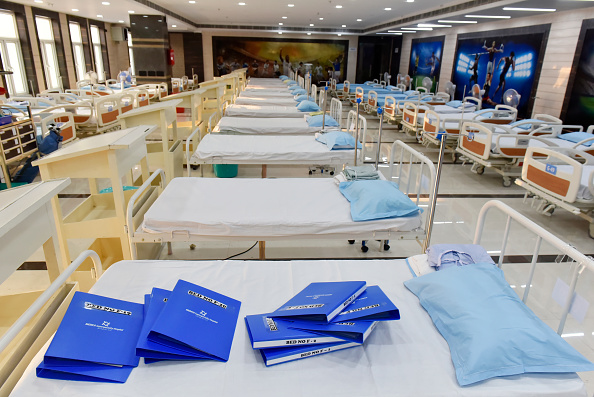
- 10 Aug 2025
In News:
India has emerged as one of the leading destinations for medical tourism, attracting foreign patients due to its cost-effective treatments, advanced healthcare infrastructure, and traditional wellness systems. The surge in foreign tourist arrivals (FTAs) for medical purposes highlights the sector’s growing role in India’s economy, diplomacy, and healthcare landscape.
Current Trends in Medical Tourism
- Between January–April 2025, India recorded 1,31,856 medical FTAs, accounting for 4.1% of total FTAs in this period.
- In 2024, medical FTAs stood at 6.44 lakh, a sharp increase from 1.82 lakh in 2020, indicating robust growth despite global pandemic disruptions.
- Top source countries (2024):
- Bangladesh – 4.82 lakh arrivals (largest contributor).
- Iraq – 32,008 arrivals.
- Somalia – 11,717 arrivals.
- Oman – 10,431 arrivals.
- Uzbekistan – 8,921 arrivals.
This surge reflects both India’s healthcare competitiveness and rising global demand for affordable, high-quality treatment.
Why India attracts Medical Tourists
- Affordability & Quality – Advanced medical procedures at a fraction of Western costs.
- Specialised Expertise – Strong presence in cardiology, orthopaedics, oncology, organ transplants, and IVF.
- Traditional Wellness – Ayurveda, Yoga, and naturopathy complement allopathic care, attracting wellness tourists.
- Regulatory Support – Extension of e-Medical visa and attendant visa facilities to 171 countries, easing travel for patients.
- Integrated Ecosystem – Hospitals, facilitators, hotels, airlines, and regulatory bodies work together under the ‘Heal in India’ initiative.
Government Initiatives
- National Efforts:
- ‘Heal in India’ campaign (Ministry of Health & Family Welfare) promoting India as a global healthcare hub.
- Encouraging public-private partnerships (PPP) to expand hospital capacity, improve service delivery, and enhance medical infrastructure.
- Branding and showcasing India’s medical expertise at international platforms.
- Visa Facilitation:E-medical visa/e-medical attendant visa for 171 countries to smoothen entry of international patients.
- State-level Initiatives (Case Study: Gujarat):
- Registration of wellness retreats on official tourism websites.
- Participation in global health & wellness exhibitions, seminars, and conferences.
- Familiarisation trips (FAM) for industry stakeholders to promote wellness centres.
- Training paramedical staff to improve quality of care for foreign patients.
- Use of social media and global outreach to project Gujarat’s health infrastructure and wellness potential.
Economic & Strategic Significance
- Foreign Exchange Earnings – Growing inflows from high-value medical travellers.
- Employment Generation – Creation of jobs in healthcare, tourism, and allied sectors.
- Soft Power & Health Diplomacy – India’s outreach in medical care strengthens its global image and fosters bilateral goodwill, especially with neighbouring and developing countries.
- Regional Leadership – With Bangladesh, Iraq, and African nations as major contributors, medical tourism strengthens India’s role as a regional healthcare hub.
Challenges
- Uneven distribution of healthcare infrastructure across states.
- Regulatory concerns regarding quality assurance in smaller hospitals and clinics.
- High dependence on a few source countries.
- Competition from emerging medical tourism destinations like Thailand, Singapore, and Turkey.
Way Forward
- Standardisation& Accreditation – Enforcing global quality standards across hospitals to build trust.
- Digital Integration – Expanding telemedicine, AI-based diagnostics, and digital health records for seamless cross-border care.
- Wellness Tourism Synergy – Combining allopathic treatments with Ayush-based wellness offerings.
- Infrastructure Development – Strengthening airports, medical hubs, and hospitality sectors near healthcare clusters.
- Diversification of Source Countries – Targeting Africa, Middle East, and Latin America for expansion.
Conclusion
India’s medical tourism sector is a sunrise industry, merging healthcare excellence with tourism potential. With over 1.3 lakh medical FTAs in early 2025 alone, the sector underscores India’s strength as a global healthcare destination. By addressing challenges and scaling up initiatives like ‘Heal in India’, India can transform medical tourism into a key pillar of economic growth, soft power, and international diplomacy.
National Handloom Day and the Legacy of the Swadeshi Movement

- 09 Aug 2025
In News:
Every year on 7th August, India celebrates National Handloom Day, commemorating the launch of the Swadeshi Movement (1905), which emerged as a response to the Partition of Bengal by Lord Curzon. The movement marked a turning point in India’s struggle for self-reliance by promoting indigenous industries, especially handlooms, as an instrument of economic resistance against colonial rule.
Historical Background: Swadeshi Movement
The Calcutta Townhall meeting of 1905 formally initiated the Swadeshi Movement. Its key methods included:
- Boycott of British goods like Manchester cloth and Liverpool salt, encouraging Indian-made products.
- National Education, leading to the founding of institutions such as Bengal National College and Bengal Technical Institute.
- Formation of Samitis, e.g., Swadesh Bandhab Samiti led by Ashwini Kumar Dutta.
- Use of festivals and cultural symbols, such as Raksha Bandhan by Rabindranath Tagore, to foster unity.
- Social reform agenda, linking Atma Shakti (self-strength) with campaigns against caste oppression, dowry, and alcoholism.
The movement evolved from a moderate phase led by Surendranath Banerjee to a radical phase under Lal-Bal-Pal, demanding Swaraj through boycott, passive resistance, and mass mobilization.
Impact
- Political: The 1906 INC session under DadabhaiNaoroji declared Swaraj as the ultimate goal. However, ideological differences caused the Surat split (1907).
- Economic: Boosted Indian industries like handloom and textiles, with enterprises such as Bengal Chemicals and Lakshmi Cotton Mills. Imports declined significantly between 1905–1908.
- Social & Cultural: Rabindranath Tagore composed Amar Sonar Bangla, later Bangladesh’s national anthem. Artists like Abanindranath Tagore infused nationalism into Indian art. Women actively boycotted foreign goods and promoted indigenous crafts.
- Administrative Response: Rising unrest compelled the British to annul the Partition of Bengal in 1911.
Contemporary Relevance
The ideals of Swadeshi find resonance in India’s current policies:
- Atmanirbhar Bharat Abhiyan (2020): Aims for self-reliance with a ?20 lakh crore stimulus (~10% of GDP). It emphasizes local for global and vocal for local.
- Make in India: Improved FDI inflows from USD 45 bn (2015) to USD 81.04 bn (2024–25). Exports reached USD 437 bn in 2024, including global dominance in pharmaceuticals and vaccine production.
- PLI Schemes: Covering 14 sectors to boost domestic manufacturing and exports.
- Revival of Khadi: KVIC reported a 347% rise in production and 447% rise in sales (2013–2025), generating employment for 1.94 crore people.
Role of Handloom Sector in India’s Economy
- Employment: Largest cottage industry employing 35 lakh workers, 72% of whom are women.
- Sustainability: Handloom products are eco-friendly and preserve cultural heritage.
- Exports: India contributes 95% of global handwoven fabric and exported USD 10.94 bn worth of cotton yarn, fabrics, and made-ups in FY23.
- Initiatives:
- National Handloom Development Programme (NHDP) for raw materials, design, and marketing.
- Raw Material Supply Scheme (RMSS): 15% yarn subsidy.
- Pradhan Mantri MUDRA Yojana (PMMY): Low-interest loans to weavers.
- Workshed Scheme: Financial aid for family-based weaving units.
- Geographical Indication (GI): 104 registered handloom products.
- GeM Platform: 1.8 lakh weavers onboarded for direct sales.
Conclusion
National Handloom Day is not merely a tribute to India’s textile heritage but also a reminder of the Swadeshi spirit of self-reliance, sustainability, and economic nationalism. From the fight against colonial exploitation to the vision of Atmanirbhar Bharat, the movement underscores the enduring power of indigenous industries in shaping India’s economic and cultural identity.
Navigating the New Techno-Capitalist World Order

- 08 Aug 2025
Introduction:
The 21st century is witnessing the rise of a new techno-capitalist world order, where technology and capital converge as key instruments of power. Unlike the earlier developmental model, where states regulated and directed technology for social progress, the current shift—most prominently driven by the United States—places the state as an enabler of private technological monopolies. This transformation has significant implications for global geopolitics, economic security, and India’s technological future.
Understanding Techno-Capitalism
Techno-capitalism refers to a system in which technological innovation and financial capital are co-architects of state power. Its features include:
- Deregulation of critical sectors like AI and fintech.
- Public–private partnerships driving massive investment flows.
- A “tech-broliarchy” of Silicon Valley elites collaborating with state institutions.
- Technology as a geopolitical tool rather than a developmental ideal.
For example, the Trump administration’s AI policy dismantled regulatory barriers, channelled billions into AI-driven manufacturing, and prioritised strategic dominance over global governance norms.
Global Shifts in Tech Ecosystems
United States
The US has transitioned from state-led scientific advancement (e.g., NASA in the 20th century) to private sector-led innovation (e.g., SpaceX, Google DeepMind). Techno-capitalism is now a deliberate strategy blending libertarian individualism with techno-nationalism, reinforcing American primacy in AI, fintech, and crypto.
China
China follows a mission-driven, centralised model, where the state directly steers technological innovation. Its focus areas include AI, digital surveillance, space technology, and the Digital Silk Road. Unlike the US, China treats technology as both a governance tool and an export of state power.
India
India represents a hybrid model, with strong digital public goods (UPI, Aadhaar) and an expanding space programme, but faces systemic challenges:
- Low R&D investment (<0.7% of GDP vs. US 3.5% and China 2.4%).
- Weak linkages between universities and industry.
- Regulatory uncertainty in AI, data, and fintech.
- Limited scaling capacity for start-ups.
India–US Technology Cooperation
Historically, India–US scientific collaboration oscillated between optimism and distrust. The SITE project (1975) reflected Cold War-era cooperation, but the 1974 nuclear test created a trust deficit. Recently, the Initiative on Critical and Emerging Technologies (iCET) has revived ties, though divergences on trade, Russia, and US techno-nationalism pose challenges.
Challenges for India in the Techno-Capitalist Era
- AI-driven job displacement in IT-BPO sectors.
- Visa uncertainties in the US affecting skilled migration.
- Underinvestment in R&D, limiting innovation.
- Fragmented regulation, with gaps in AI ethics, crypto, and data governance.
- Start-up ecosystem constraints, including capital shortages and limited government procurement support.
Way Forward for India
- National Tech-Industrial Strategy integrating defence, space, semiconductors, AI, and quantum computing.
- Higher education reform to link universities with mission-mode projects and innovation clusters.
- Balanced regulation that encourages innovation while ensuring consumer rights and systemic safeguards.
- Strategic engagement with the US for co-innovation, while maintaining technological sovereignty.
- Human capital reskilling through a National AI Reskilling Mission and integration of emerging technologies in curricula.
Ethanol Blending
- 07 Aug 2025
Introduction:
India has achieved a significant milestone in its clean energy transition by rolling out E20 fuel (20% ethanol blended petrol) nationwide in 2025, five years ahead of the original 2030 target. The initiative aligns with the Ethanol Blended Petrol (EBP) Programme, launched in 2003, and marks a sharp rise from just 1.5% ethanol blending in 2014 to 20% in 2025.
The policy aims to enhance energy security, reduce carbon emissions, cut crude oil imports, and support farmers. However, concerns have emerged regarding its impact on vehicle performance, consumer costs, and technical feasibility.
Ethanol Blending: Policy Context
- Nature of Fuel: Ethanol is an alcohol-based biofuel derived mainly from sugarcane, maize, and biomass.
- Benefits:
- Reduces dependency on crude imports (saving ~?1.36 lakh crore in foreign exchange).
- Provides ?1.18 lakh crore to farmers, boosting rural incomes.
- Cuts CO? emissions by ~698 lakh tonnes.
- Strengthens domestic biofuel industry (ethanol production rose from 38 crore litres in 2014 to 661 crore litres in 2025).
- Global Context: Ethanol blending is used in several countries (e.g., USA, Brazil) to curb fossil fuel reliance.
Economic and Environmental Gains
- Macroeconomic Benefits:
- Estimated to lower crude oil imports by ?50,000 crore annually.
- Strengthened India’s energy self-reliance under the National Bio-Energy Programme.
- Environmental Benefits:
- Lower greenhouse gas emissions.
- Promotion of renewable energy use.
- Agricultural Support: Higher demand for sugarcane and related feedstock increases farmer incomes.
Challenges and Concerns
1. Vehicle Compatibility Issues
- Vehicles manufactured before April 2023 are not designed for E20 and risk damage.
- Hero MotoCorp & TVS highlight the need to replace rubber, elastomer, and plastic components (e.g., gaskets, O-rings, fuel tubes) with ethanol-compatible materials.
- Ethanol’s corrosive nature leads to:
- Metal corrosion (fuel tanks, injectors, exhausts).
- Degradation of rubber/plastic parts.
- Moisture absorption (phase separation in fuel).
- Altered air-fuel ratio causing knocking, poor combustion, and reduced performance.
2. Drop in Fuel Efficiency
- Government stance: Mileage loss is “marginal” (1–2% for calibrated vehicles; 3–6% for others), reducible by engine tuning.
- Independent experts: Real-world mileage drop may be 6–7%, raising consumer costs.
- Many consumers report higher fuel consumption, sluggish acceleration, and reduced efficiency in older vehicles.
3. Consumer Concerns
- Rising fuel expenses due to frequent refuelling.
- Lack of consumer choice between E20 and pure petrol.
- Demand for awareness campaigns and clear labelling at fuel stations.
Industry and Policy Response
- Automobile manufacturers are producing E20-compliant vehicles since April 2023.
- Retrofitting advisories issued for older models.
- Government maintains that minor modifications (rubber part replacements, engine recalibration) can mitigate risks at low costs.
Future Outlook: Beyond E20
- Discussions are underway on higher blends (E30, E40).
- Experts warn of greater risks:
- More severe corrosion and efficiency loss.
- Need for dual fuel dispensing infrastructure.
- Retrofitting or phased replacement of older vehicles.
- Policy direction must balance energy security goals with consumer interests.
Conclusion
The rollout of E20 fuel represents a major stride in India’s path toward sustainable energy and reduced import dependence. However, the transition is accompanied by technical, economic, and consumer-level challenges, particularly for pre-2023 vehicles.
Going forward, India’s ethanol blending strategy must ensure:
- Consumer awareness and choice.
- Targeted retrofitting supportfor older vehicles.
- Sustainable ethanol production without compromising food security or causing ecological stress.
Balancing macroeconomic and environmental gains with micro-level consumer impacts will determine the long-term success of India’s ethanol blending programme.
Recognition of Palestine
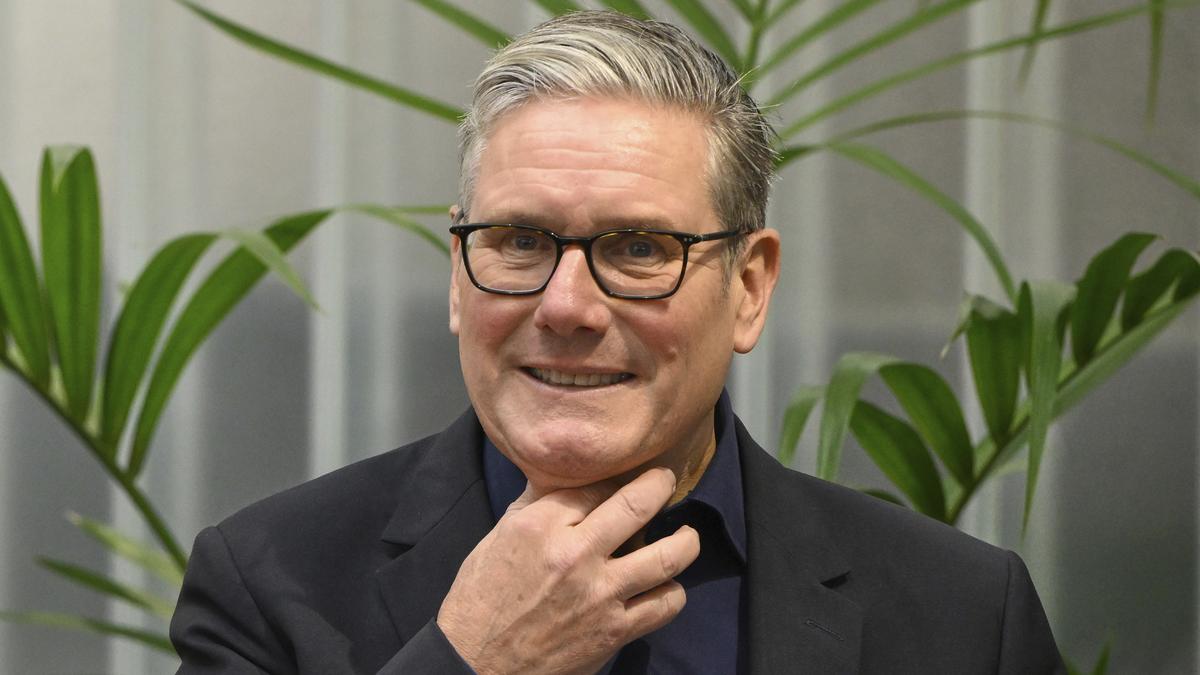
- 06 Aug 2025
In News:
The Israel–Palestine conflict has once again entered a critical phase, with growing international momentum for recognising Palestinian statehood. British Prime Minister Keir Starmer recently announced that the UK will recognise the State of Palestine at the UN General Assembly in September, unless Israel agrees to a ceasefire in Gaza, allows greater humanitarian access, and recommits to a two-state solution. This announcement marks a dramatic shift in British policy, given its century-old involvement in shaping the conflict.
Growing Global Recognition Drive
The UK’s position is echoed by France, Canada, and Portugal, which have also indicated readiness to recognise Palestine. Out of 193 UN member states, 147 have already extended recognition. Traditionally, major Western powers resisted unilateral recognition, tying it to the outcome of a negotiated peace settlement. However, the ongoing 21-month Gaza conflict has altered this calculus, with Israel facing mounting diplomatic isolation.
Russia and China—both permanent members of the UN Security Council (UNSC)—already recognise Palestine. If the UK and France proceed, the United States will remain the only P5 member opposing recognition, potentially weakening its diplomatic standing. The involvement of key G7 members adds further weight, increasing pressure on other Western nations to reconsider their stance.
Britain’s Historic Role: From Balfour to Partition
Britain’s move is particularly symbolic due to its historic responsibility in the conflict. The Balfour Declaration of 1917, issued by British Foreign Secretary Arthur Balfour to Zionist leader Lord Rothschild, pledged support for the creation of a “Jewish national home” in Palestine. At that time, Jews constituted only about 9% of the population under Ottoman rule. The declaration was influenced by Britain’s wartime strategy to secure global Jewish support during World War I.
Following the Ottoman Empire’s collapse, Britain assumed control of Palestine under a League of Nations Mandate (1920–1948). It encouraged Jewish immigration and facilitated the creation of parallel institutions, fuelling tensions with the Arab majority. By the end of World War II, Jews made up nearly 30% of the population, and the situation became unmanageable. Britain referred the matter to the UN, which proposed the 1947 Partition Plan. On 14 May 1948, Zionist leaders unilaterally declared the establishment of Israel, immediately recognised by the US. This triggered the First Arab-Israel War, resulting in large-scale displacement of Palestinians—the “Nakba.”
Britain’s Recognition: A Symbolic Shift
Now, 108 years after the Balfour Declaration, Britain’s decision to recognise Palestine signals a historic reversal. While recognition alone may not end Israel’s occupation or resolve the conflict, it carries deep symbolic value. It reflects the erosion of unconditional Western support for Israel, particularly as global outrage grows over civilian casualties in Gaza and accusations of war crimes.
Significance for the International Order
Britain’s recognition could catalyse broader diplomatic shifts. If multiple Western powers formally acknowledge Palestinian statehood, it will strengthen the legitimacy of the two-state solution, long considered the most viable framework for peace. It may also increase pressure on Israel to engage in negotiations under international scrutiny.
At the same time, the development underscores the changing balance of global diplomacy. With the US increasingly isolated on the issue, emerging alignments among Europe, Russia, China, and the Global South highlight a multipolar contest over norms of sovereignty, humanitarian accountability, and conflict resolution.
Conclusion
Britain’s decision to recognise Palestine is not merely a policy adjustment; it is a profound historical reckoning. From endorsing a Jewish homeland through the Balfour Declaration to recognising a Palestinian state more than a century later, Britain’s stance symbolises both continuity and correction in international diplomacy. Whether it translates into tangible progress on the ground depends on Israel’s response, US engagement, and the broader international community’s ability to revive a credible peace process.
Five Years of the National Education Policy 2020
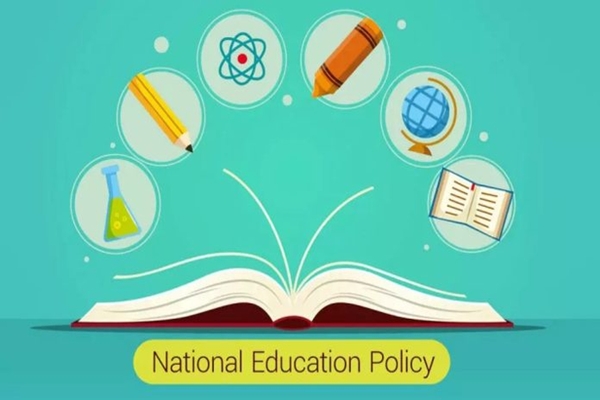
- 05 Aug 2025
In News:
The National Education Policy (NEP) 2020, India’s third education policy since Independence, was envisioned as a transformative roadmap to make India a “global knowledge superpower.” Five years since its launch, the policy has driven important reforms in both school and higher education. However, progress has been uneven—while curriculum redesign, early childhood education, and digital learning have taken shape, federal tensions, institutional inertia, and funding constraints continue to slow its full realization.
Key Gains in School Education
The NEP replaced the 10+2 structure with a 5+3+3+4 model (foundational, preparatory, middle, secondary). The National Curriculum Framework (2023) set competency-based outcomes, and NCERT released new textbooks for classes 1–8, integrating subjects such as history and geography into a single volume.
Early childhood care and education (ECCE) has gained traction through the JaaduiPitara kits and a national ECCE curriculum. Delhi, Karnataka, and Kerala have enforced the minimum age of six for class 1. However, improving Anganwadi training and infrastructure remains critical.
Under NIPUN Bharat (2021), literacy and numeracy by class 3 became a national focus. Yet, survey data show proficiency levels at 64% (language) and 60% (math)—progressive but below NEP’s universal goals.
Higher Education Reforms
One of NEP’s boldest ideas, the Academic Bank of Credits (ABC) and National Credit Framework (NCrF), introduced flexibility with multiple entry-exit options: a certificate after one year, a diploma after two, and a four-year degree. While nearly 90% of HEIs report multidisciplinary curricula, only 36% have implemented multiple entry-exit, and just 64% maintain ABC records, indicating patchy adoption.
The Common University Entrance Test (CUET), introduced in 2022, streamlined admissions by replacing multiple entrance exams. Global outreach expanded, with IIT Madras (Zanzibar), IIT Delhi (Abu Dhabi), and IIM Ahmedabad (Dubai) opening campuses abroad, while foreign universities such as the University of Southampton entered India.
Digital education emerged as a strong adoption area: 96% of HEIs use SWAYAM/DIKSHA, and 94% invested in digital infrastructure. Yet, equitable access and integration of MOOCs into degree programs remain challenges.
Reforms in Progress
- Board exams: From 2026, CBSE will allow class 10 students to appear twice a year to reduce stress.
- Holistic assessment: PARAKH has developed competency-based report cards, though most boards are yet to implement them.
- Four-year undergraduate degrees: Adopted by some central universities and Kerala, but slowed by faculty shortages and weak infrastructure.
- Mother tongue instruction: Encouraged till class 5, with NCERT preparing multilingual textbooks.
Sticking Points and Bottlenecks
Some reforms remain stalled:
- Three-language formula has been rejected by Tamil Nadu as linguistic imposition.
- Teacher education reform lags, with the National Curriculum Framework for Teacher Education still pending.
- Higher Education Commission of India (HECI), meant to replace UGC, remains in draft stage.
- Breakfast alongside midday meals, recommended by NEP, was rejected due to financial constraints.
Federalism poses a key hurdle. Kerala, Tamil Nadu, and West Bengal refused to adopt PM-SHRI schools, citing central overreach, leading to funding freezes under Samagra Shiksha. Karnataka oscillated—adopting and later scrapping the four-year UG model—while pursuing its own state education policy.
Conclusion
Five years on, NEP 2020 has delivered structural reforms in school curricula, foundational learning, higher education flexibility, and digital adoption. Yet, its transformative potential remains unrealized due to limited faculty capacity, uneven state cooperation, and financial bottlenecks. For NEP to succeed, the Union and states must collaborate, ensuring adequate funding, teacher training, and institutional autonomy. Without resolving these foundational issues, the NEP risks remaining a vision more on paper than in classrooms.
Slums in Flood-Prone Areas: India’s Dual Challenge of Urbanisation and Climate Risks
- 04 Aug 2025
In News:
A global study published in Nature Cities has revealed that India has the highest number of slum clusters in flood-prone areas worldwide, underscoring the nexus between rapid urbanisation, poverty, and increasing climate-related risks. This trend highlights both developmental and governance challenges for India as it seeks to balance inclusive growth with climate resilience.
Global Trends in Flood Risk and Slum Settlements
- India at the Forefront: Over 158 million slum dwellers live in flood-prone areas in India, particularly in the Ganga delta. Nearly 40% of slum residents inhabit high-risk urban and peri-urban zones.
- Regional Pattern: India is followed by Indonesia, Bangladesh, and Pakistan in terms of vulnerable populations. Globally, slum dwellers are 32% more likely to reside in floodplains than other communities.
- Global South Impact: About 33% of informal settlements in low- and middle-income countries are already exposed to flooding. Hotspots include Rwanda, Morocco, and coastal Brazil.
- Cities at Risk: High slum density correlates with flood-prone megacities such as Mumbai and Jakarta.
Drivers of Flood Vulnerability in India
- Riverine Floods: Frequent in the Brahmaputra, Ganga, and Krishna basins, driven by monsoon rains, snowmelt, and dam-related issues.
- Urban Expansion: Between 1985–2015, India ranked third globally in urban growth into flood-prone areas. Cities like Mumbai and Bengaluru have expanded into natural floodplains.
- Flash Floods: Incidents rose from 132 (2020) to 184 (2022), with severe events in Himachal Pradesh (2025), Wayanad (2024), Ladakh (2024), and Sikkim (2023).
- 75% of flash floods stem from a mix of extreme rainfall and saturated soils.
- Climate Change: Between 1981–2020, extreme rainfall events doubled, with monsoon rains intensifying by 56%, raising flood frequency.
- Poor Drainage & Encroachments: Urban floods in Delhi, Mumbai, Hyderabad, and Chennai worsened by clogged drains and plastic waste (e.g., Chennai floods 2015).
- Weak Local Planning: Absence of region-specific flood risk assessments hampers effective urban land-use planning and disaster preparedness.
Slums in India: Extent and Challenges
- Definitions:
- Pranab Sen Committee (2010) – compact settlements of ≥20 households with poor housing, sanitation, and water facilities.
- UN-Habitat – lack of durable housing, secure tenure, sufficient living space, safe water, or sanitation.
- Census 2011: 17% of urban India lived in 1.39 crore slum households.
- NSSO 2012: 33,510 slums identified nationwide.
- Hotspot States: Maharashtra, Andhra Pradesh, Uttar Pradesh, and West Bengal.
- Major Cities: Mumbai and Kolkata host some of the densest slum populations.
- Regulation: The Slum Areas (Improvement and Clearance) Act, 1956 governs slum rehabilitation in Union Territories; “Land” and “Colonisation” are State subjects.
Existing Initiatives
- Pradhan Mantri Awas Yojana – Urban (PMAY-U): Pucca houses with amenities; as of Dec 2024, 118.64 lakh houses sanctioned, 29 lakh for slum dwellers.
- AMRUT & Smart Cities Mission: Infrastructure upgrades in water, sanitation, and drainage.
- Swachh Bharat Mission – Urban 2.0: Target of garbage-free cities.
- IFLOWS-Mumbai and CFLOWS-Chennai: Integrated flood warning systems.
Way Forward: Towards Sustainable Urban Flood and Slum Management
- Region-Specific Flood Strategies: Based on topography and soil; integrate into the National Disaster Management Plan (NDMP).
- Restrict Expansion into Floodplains: Enforce zoning laws and incorporate flood-resilient infrastructure under Smart Cities Mission.
- Sustainable Urban Drainage Systems (SUDS): Rain gardens, permeable pavements, and green spaces.
- Upgrading Slums: Use PMAY-U for resilient housing, raised plinths, and better drainage.
- Data-Driven Risk Mapping: Use NRSC, IMD, and satellite imagery to monitor risks and emerging hotspots.
- Sponge City Model: Adopt Shanghai-style rainwater absorption systems; Mumbai has begun implementing this.
- Eco-Restoration of Water Bodies: Revive urban lakes/wetlands (e.g., Jakkur Lake in Bengaluru) for natural flood control.
- Climate Adaptation Mainstreaming: Integrate climate resilience into urban planning and housing policies.
Conclusion
India’s dual challenge of informal urbanisation and intensifying floods poses a direct threat to sustainable urban development. As the 2030 Sustainable Development Goals (SDGs) approach, urgent focus is needed on SDG 11 (Sustainable Cities), SDG 6 (Clean Water and Sanitation), and SDG 1 (No Poverty).
Strengthening governance, upgrading slum infrastructure, and integrating climate resilience into planning are critical to safeguard millions living at the intersection of poverty and environmental risk.
Why the World Needs Better Green Technologies
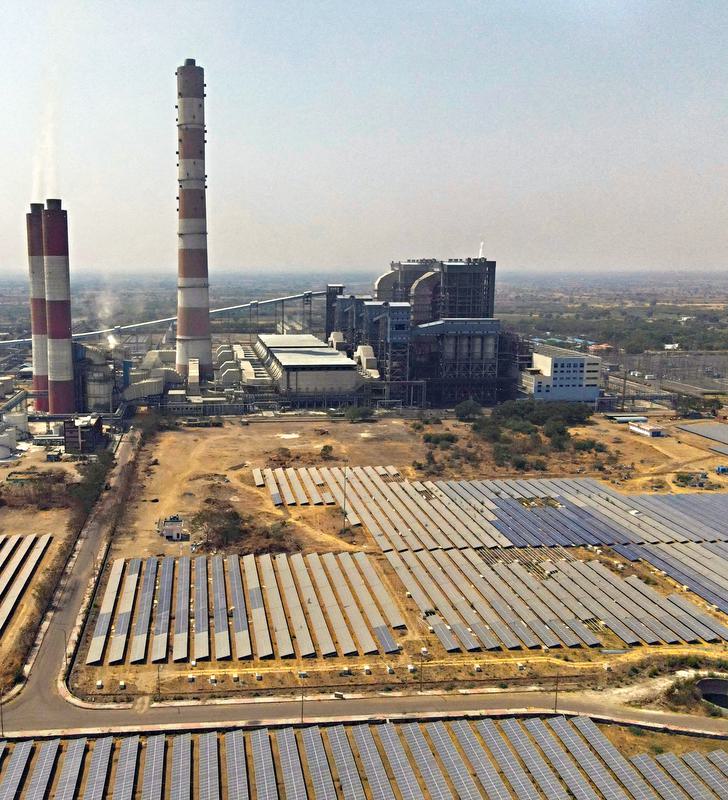
- 03 Aug 2025
In News:
The 21st century energy transition is unfolding under multiple pressures: climate change, geopolitical conflicts, rising energy demand, and the pursuit of energy self-sufficiency. While the rapid deployment of silicon photovoltaics and the promotion of green hydrogen represent important milestones, critical questions remain about their long-term efficiency, sustainability, and ability to meet net-zero goals. The urgency lies not only in scaling up renewable deployment but also in accelerating innovation in next-generation green technologies.
Green Technologies: Definition and Scope
Green technologies encompass scientific innovations and engineering systems that reduce environmental harm, minimize carbon emissions, and promote sustainable energy generation and resource use. They include solar, wind, hydrogen, artificial photosynthesis, and emerging renewable fuels.
Limits of Existing Technologies
1. Silicon Photovoltaics (PV)
- Efficiency Constraints: Conventional silicon solar panels deliver only 15–18% field efficiency, while advanced alternatives such as gallium arsenide thin-film panels can reach ~47% efficiency.
- Land-Use Pressure: Low efficiency translates into vast land requirements. Doubling efficiency would halve land needs—critical for densely populated countries like India, where land is contested between urbanisation, agriculture, and biodiversity conservation.
- Geopolitical Dependence: Nearly 80% of global solar panel supply comes from China, creating vulnerabilities for India despite its domestic capacity of ~6 GW (and growing).
2. Green Hydrogen Challenges
- Energy Balance: Electrolysis requires more energy input than the usable output of hydrogen.
- Storage & Transport: Hydrogen’s low density and high leakage risk make it costly and difficult to handle.
- Conversion Losses: Transforming hydrogen into ammonia or methanol for easier transport adds further energy penalties. Thus, the "greenness" of green hydrogen is often overstated.
3. Rising CO? Despite Renewable Growth
Despite exponential solar expansion (global renewable capacity ~4.45 TWh by 2024), atmospheric CO? levels have risen from 350 ppm (1990) to ~425 ppm (2025). This underscores the gap between renewable deployment and rising global energy demand.
The Case for Disruptive Innovation
Artificial Photosynthesis (APS)
Mimicking natural photosynthesis, APS aims to produce fuels directly from sunlight, water, and CO?. Though currently in the laboratory stage, it offers a future pathway to bypass multi-step conversion processes.
Renewable Fuels of Non-Biological Origin (RFNBO)
Already being pursued in Europe, RFNBOs seek to generate carbon-neutral fuels directly from renewable resources without biomass. India, currently importing nearly 85% of its energy resources (oil, coal, gas), could benefit immensely by investing in such technologies.
Challenges to Adoption
- High R&D Costs and Long Gestation Periods for technologies like APS and multi-junction photovoltaics.
- Supply Chain Dependence on China for solar components.
- Lack of Large-Scale Validation of emerging technologies.
- Private Sector Hesitation due to uncertain returns on futuristic innovations.
Way Forward for India
- Boost R&D Funding: Allocate a larger share of climate finance to disruptive technologies such as APS, RFNBOs, and high-efficiency photovoltaics.
- Public-Private Partnerships: Encourage startups and industries to collaborate with national labs and global players.
- Technology Diversification: Develop an ecosystem combining solar, wind, hydrogen, nuclear, and waste-to-energy.
- Land-Efficient Solutions: Promote rooftop solar, floating solar, and building-integrated PVs to mitigate land scarcity.
- Global Collaboration: Strengthen engagement in initiatives such as Mission Innovation and the India–EU Green Deal for technology transfer and joint innovation.
Conclusion
Current green technologies, though pivotal, are insufficient to meet the scale of the climate crisis. The challenge is not just to be “green” in name, but to ensure measurable efficiency, sustainability, and independence. For India, energy security and climate goals converge on a common path: technology foresight, not just technology deployment. Investing in next-generation innovations today will be far cheaper than bearing the costs of climate inaction tomorrow.
Surrogacy Age Cap Debate before the Supreme Court

- 02 Aug 2025
Background – The Legal Framework on Surrogacy in India
India has been a global hub for assisted reproductive technologies (ART) and surrogacy for many years. To address ethical concerns, prevent exploitation, and regulate practices, Parliament enacted two laws in 2021:
- The Assisted Reproductive Technology (Regulation) Act, 2021
- The Surrogacy (Regulation) Act, 2021
These Acts, effective from January 2022, prohibit commercial surrogacy and allow only altruistic surrogacy (where a woman volunteers without financial compensation, apart from medical expenses and insurance).
Key Provisions:
- Age limits:
- Married woman (intending mother): 23–50 years
- Married man (intending father): 26–55 years
- Single women: only widows or divorcees aged 35–45 years
- Certificate of essentiality: Proof of infertility, parentage order, and insurance for the surrogate are mandatory.
- Purpose of the law: To prevent commodification of reproduction, ensure surrogacy is used only for genuine medical necessity, and safeguard the health of both surrogate and child.
The Case before the Supreme Court
Recently, the Supreme Court reserved judgment in a set of petitions challenging the age caps under these Acts.
Petitioners’ Concerns:
- Many couples had already begun fertility procedures before January 2022, but became ineligible midway due to the new law.
- Example: A couple aged 62 (husband) and 56 (wife) lost their only child in 2018, started fertility treatment in 2019, but after a failed embryo transfer in 2022, they were barred from further surrogacy attempts due to age restrictions.
- They argue that applying the age limits retrospectively is unfair, as no “grandfather clause” was provided to protect ongoing cases.
Constitutional Arguments:
- Article 14 (Right to Equality): Age-based exclusion is arbitrary.
- Article 21 (Right to Life & Personal Liberty): Reproductive autonomy and the right to family are integral to personal liberty.
- Discrimination against unmarried women: The law only allows widows and divorcees to access surrogacy, excluding single, never-married women.
Government’s Stand
- Age limits reflect natural reproductive timelines and medical safety.
- Advanced parental age poses risks:
- Higher complications for the surrogate.
- Genetic/epigenetic risks for the child.
- Concerns about parents’ ability to provide long-term care.
- Provisions align with international best practices in reproductive health.
Supreme Court’s Observations
The Bench, led by Justices B.V. Nagarathna and K.V. Viswanathan, raised critical questions:
- Why prohibit surrogacy at advanced ages when natural late pregnancies are not barred?
- The intent of the law was to regulate commercial surrogacy, not to deny genuine parenthood.
- The absence of compassionate transitional provisions is problematic: “Stop, no children! Look how harsh it is,” remarked Justice Nagarathna.
Ethical and Social Dimensions
- Balancing Autonomy and State Regulation:Reproductive choice vs. state’s role in safeguarding health and welfare.
- Rights of Single Women:Exclusion of unmarried women raises concerns of gender equality and individual autonomy.
- Best Interests of the Child:Child’s welfare, upbringing, and stability are central concerns in surrogacy regulation.
- Medical Ethics:Need to prevent exploitation of surrogates and maintain ethical standards in ART practices.
Broader Constitutional Questions
- Right to Parenthood as a Fundamental Right? The Court has earlier recognised reproductive rights as part of Article 21.
- Equality vs. Reasonable Classification: Can the state justify different treatment based on age or marital status?
- Legislative Gaps: The lack of a grandfather clause highlights issues in legislative foresight and transitional justice.
Conclusion
The Supreme Court’s verdict will be pivotal in shaping India’s approach to assisted reproduction. At stake is the balance between medical ethics, legislative intent, and individual reproductive rights.
The outcome may not only determine the fate of couples stuck mid-process but could also set precedents for:
- Expanding reproductive rights,
- Recognising unmarried women’s autonomy
- Ensuring compassionate legal transitions in sensitive health matters.
Coral Reef Decline in Lakshadweep
- 01 Aug 2025
Introduction:
Coral reefs, often called the “rainforests of the sea,” are vital ecosystems that sustain biodiversity, support coastal economies, and act as natural barriers against climate hazards. However, a 24-year study (1998–2022) on Lakshadweep reefs has revealed a 50% decline in coral cover—from 37.2% in 1998 to 19.6% in 2022. The findings underscore the vulnerability of India’s reef ecosystems to climate change, while also highlighting the limits of local resilience efforts without global climate action.
Key Findings of the Study
- Drastic Decline in Coral Cover
- Repeated marine heatwaves linked to El Niño (1998, 2010, 2016) and global warming have triggered large-scale bleaching events.
- Reef recovery requires at least 6 years without heat stress, which is increasingly rare.
- Distinct Coral Response Patterns
- Six coral response “clusters” were observed depending on depth, wave exposure, and recovery rate.
- Some corals showed resilience, but many collapsed under repeated stress.
- Limits of Local Efforts
- Restoration methods like coral gardening provide short-term relief.
- Long-term survival depends on global emission cuts to slow warming and allow recovery time.
Causes of Coral Depletion
- Rising Sea Temperatures
- Ocean warming disrupts coral–algae symbiosis, causing bleaching.
- El Niño events exacerbate stress, making bleaching more frequent.
- Ocean Acidification
- Increased CO? lowers ocean pH, weakening calcium carbonate skeletons.
- Reduced skeletal strength makes corals more fragile and slows growth.
- Pollution & Sedimentation
- Runoff from agriculture and sewage fosters algal blooms, smothering corals.
- Coastal development increases sedimentation, blocking sunlight needed for photosynthesis.
- Human Activities
- Dynamite and cyanide fishing destroy reefs.
- Tourism-related anchoring, snorkeling, and diving add further stress.
Implications of Coral Decline
- Biodiversity Loss
- Coral reefs support ~25% of marine life.
- Collapse threatens fish populations, marine food webs, and species survival.
- Economic Impact
- Reduced reef fisheries affect food security.
- Coral bleaching diminishes eco-tourism, affecting local livelihoods.
- Coastal Vulnerability
- Reefs act as natural seawalls.
- Their loss increases risks from storm surges, erosion, and sea-level rise—critical for islands like Lakshadweep.
- Loss of Scientific Potential
- Many coral-associated species could hold biomedical value (anti-cancer, anti-arthritis compounds).
- Decline erodes opportunities for future discoveries.
- Climate Regulation
- Corals aid in carbon cycling and water purification.
- Their death accelerates algal blooms and weakens ocean-based carbon sinks.
Global and National Initiatives
- International Coral Reef Initiative (ICRI): Partnership for global reef conservation.
- Global Fund for Coral Reefs (GFCR): Finance platform mobilizing grants and investments.
- Biorock Technology: Mineral accretion method for coral restoration (trialed in Gulf of Kachchh).
- Super Corals: Human-assisted evolution to breed heat-resistant strains.
- Cryomesh Technology: Preserving coral larvae at ultra-low temperatures for long-term conservation.
- Indian Efforts: Coral monitoring in Gulf of Mannar, Andaman & Nicobar, and Lakshadweep under various MoEFCC and research institute programs.
The Way Forward
- Tackling Climate Change
- Shift to renewable energy, strengthen climate finance, and uphold Paris Agreement targets.
- Protect blue carbon ecosystems like mangroves and seagrasses that support reefs.
- Reducing Local Stressors
- Strengthen wastewater treatment and reduce runoff.
- Enforce marine protected areas (MPAs) and ban destructive fishing practices.
- Active Reef Restoration: Transplant heat-tolerant corals, deploy 3D-printed reef structures, and promote artificial reef habitats.
- Community-Led Conservation
- Promote eco-tourism with reef-safe practices.
- Provide alternative livelihoods to reduce overfishing pressure.
Conclusion
The Lakshadweep study is a warning that coral reefs are reaching a tipping point. Local interventions, while important, cannot offset the pace of climate-driven destruction. Without urgent global emission cuts, India risks losing not only its reef ecosystems but also the livelihoods, biodiversity, and coastal resilience they sustain. A mix of global climate action, national policies, technological innovation, and community participation is essential to secure the future of reefs.
India’s First Legal Framework for Contaminated Site Management
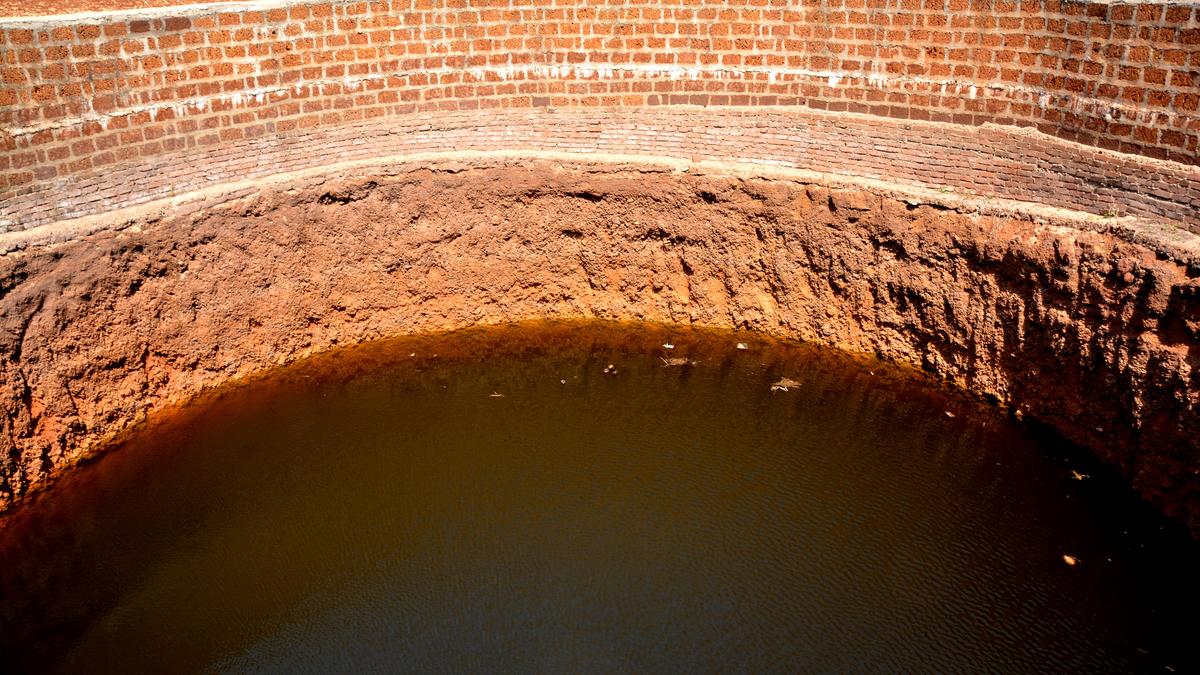
- 31 Jul 2025
In News:
The Government of India, through the Ministry of Environment, Forest and Climate Change (MoEFCC), has taken a landmark step toward formalising the management of chemically polluted land. The government notified the Environment Protection (Management of Contaminated Sites) Rules, 2025 under the Environment (Protection) Act, 1986, offering for the first time a legal framework to identify, assess, and remediate contaminated sites across the country.
Understanding Contaminated Sites
Contaminated sites refer to locations where hazardous chemicals or waste have been dumped historically, often prior to the existence of environmental regulation. These sites typically include:
- Abandoned industrial landfills
- Defunct chemical handling units
- Waste storage and spill zones
According to the Central Pollution Control Board (CPCB), 103 such sites have been identified across India, though remediation has been initiated in only 7. The lack of legal clarity and the inability to identify responsible parties have long hindered remediation efforts.
Salient Features of the 2025 Rules
The rules codify a five-step process that places the onus on local administrations and pollution control authorities to address environmental contamination:
- Identification & Reporting: District administrations must compile biannual reports of “suspected contaminated sites” and forward them to the State Pollution Control Boards (SPCBs) or a designated reference agency.
- Preliminary Assessment: Within 90 days, these agencies must assess the site for probable contamination.
- Detailed Site Survey: If contamination is suspected, a follow-up survey—within another 90 days—will test for any of the 189 hazardous chemicals notified under the Hazardous and Other Wastes Rules, 2016.
- Remediation Plan: A scientific reference organisation will draft a remediation strategy. The SPCB must identify the polluter within 90 days of confirming contamination.
- Cost Recovery & Liability: The principle of “polluter pays” is invoked. If the responsible party is untraceable or insolvent, costs will be shared equally by the Centre and State. Criminal liability for severe environmental damage will be addressed under the Bharatiya Nyaya Sanhita, 2023.
Exclusions and Scope Clarity
To prevent regulatory overlap, certain domains remain outside the ambit of these rules:
- Radioactive waste (Atomic Energy Act)
- Mining-related contamination
- Marine oil pollution
- Municipal solid waste landfills
These exclusions ensure that domain-specific legislation governs complex or hazardous waste streams more effectively.
Significance of the Notification
This is the first national-level regulatory framework to manage contaminated land in India. It provides:
- A time-bound process for site assessment and clean-up
- Clear delineation of institutional roles
- Enforceable liability mechanisms
- Legal visibility for public health and ecological risks tied to contaminated land
Earlier, the lack of a structured response mechanism led to regulatory inertia, leaving vulnerable communities at risk.
Implementation Challenges
Despite its promise, implementation will depend on:
- Strengthening technical capacity at district and state levels
- Enhanced coordination among SPCBs, CPCB, and reference agencies
- Financial mechanisms for cases where the polluter is absent
- Public engagement in identifying contaminated areas
Conclusion
The 2025 rules mark a paradigm shift in environmental governance. By embedding scientific assessment, legal accountability, and institutional responsibility into one framework, India takes a decisive step toward sustainable land management and environmental justice. However, effective capacity-building and cooperative federalism will be essential to translate these legal provisions into on-ground success.
China’s Brahmaputra Mega Dam
- 30 Jul 2025
In News:
China’s construction of a $167.8 billion hydropower dam on the Yarlung Zangbo (Brahmaputra) river near the “Great Bend” in Tibet has raised significant geopolitical, ecological, and strategic concerns, particularly for downstream nations like India and Bangladesh. Once completed, this 60,000 MW project—three times the capacity of the Three Gorges Dam—will be the world’s largest.
Strategic and Environmental Concerns
The dam is being built in the seismically active and ecologically fragile Medog region, just before the river enters Arunachal Pradesh as the Siang. The Chief Minister of Arunachal Pradesh has termed the project an “existential threat,” warning that sudden release of water or structural failure could lead to catastrophic flooding and irreversible damage to tribal livelihoods and ecosystems.
Experts reinforce these concerns, citing the risks posed by potential seismic activity, landslides, and unregulated dam operations in a region lacking robust transboundary water governance. Any significant disruption to the river’s natural flow could also affect biodiversity, agriculture, and hydrological patterns in India’s northeast.
The Assam Perspective
Assam, heavily dependent on the Brahmaputra, faces both risks and possible benefits. The state’s Chief Minister has noted that only 30–35% of the river’s flow originates in China, with the majority contributed by monsoon rains and tributaries from Arunachal Pradesh and Bhutan. He suggested that reduced upstream flow might even aid in managing Assam’s annual floods. Nonetheless, the absence of definitive impact assessments necessitates caution.
India’s Diplomatic Position
India, as a lower riparian state, has consistently raised its concerns regarding upstream hydroelectric projects on transboundary rivers. The Ministry of External Affairs (MEA) has reiterated the need for transparency, data-sharing, and prior consultation, aligning with global principles of equitable and reasonable use of international rivers.
China, while asserting its sovereign right to develop its rivers, has claimed it is cooperating with downstream nations through hydrological data sharing and disaster mitigation. However, the lack of a legally binding treaty between India and China on water-sharing limits enforceability and fosters mistrust.
Recent diplomatic engagements—including talks in October 2024 and March 2025—have included discussions on river cooperation. India’s decision to resume visas for Chinese tourists and reinitiate the Kailash Mansarovar Yatra indicates a cautious yet strategic engagement policy amid persistent challenges.
Mitigation and Strategic Preparedness
India’s policy response must be comprehensive. Key mitigation measures include:
- Scientific Assessment and Monitoring: Real-time hydrological monitoring and risk modeling are essential.
- Infrastructure Development: Projects like the Upper Siang hydroelectric dam in Arunachal Pradesh, despite environmental concerns, are strategically vital as buffers against sudden flow variations.
- Interlinking of Rivers: Long-term plans to link Brahmaputra tributaries with the Ganga basin can help redistribute water during surplus and scarcity.
- Regional Cooperation: Coordination with other riparian nations such as Bangladesh, Bhutan, and Myanmar is vital for developing early warning systems and emergency protocols.
Conclusion
The Brahmaputra dam issue encapsulates the complex interplay of sovereignty, ecology, security, and diplomacy in transboundary river management. For India, it presents both a strategic challenge and an opportunity to strengthen its internal preparedness while advancing regional cooperation. A balanced, evidence-driven, and diplomatically assertive approach is critical to safeguarding national interests and promoting regional water security.
NISAR Mission: A Landmark in Indo-US Space Cooperation and Earth Observation

- 29 Jul 2025
In News:
The upcoming launch of the NASA-ISRO Synthetic Aperture Radar (NISAR) satellite represents a landmark in Indo-U.S. collaboration in space science. Scheduled for deployment from Sriharikota onboard a GSLV Mk-II rocket, NISAR is poised to become one of the most sophisticated Earth observation missions globally, with wide-ranging scientific, environmental, and developmental implications.
Background and Mission Overview
NISAR, developed jointly by NASA and ISRO over the past decade at a cost of approximately ?12,000 crore, is designed to provide high-resolution, all-weather, day-and-night radar imaging of the Earth’s surface. It is the first satellite globally to incorporate dual-frequency synthetic aperture radar (SAR)—combining NASA’s L-band radar (1.257 GHz) and ISRO’s S-band radar (3.2 GHz).
This dual-frequency capability enables it to penetrate forest canopies and surface layers, allowing comprehensive monitoring of dynamic Earth processes such as land deformation, biomass change, glacier dynamics, and infrastructure stability.
Technical Capabilities and Orbit
The satellite will operate from a sun-synchronous polar orbit at an altitude of 747 km. It features a 12-metre deployable mesh antenna and uses SweepSAR technology for electronically steering radar beams. With a 240 km swath width and spatial resolution between 3–10 meters, it can revisit every point on Earth every 12 days, facilitating consistent long-term monitoring.
Applications Across Critical Sectors
NISAR’s data will address six broad thematic areas:
- Solid Earth Processes: Detecting earthquakes, landslides, and urban subsidence.
- Ecosystem Dynamics: Estimating forest biomass, carbon stocks, and biodiversity changes.
- Cryosphere Studies: Tracking glacier movements and polar ice thickness.
- Coastal Monitoring: Observing shoreline erosion and marine hazards.
- Disaster Management: Generating damage proxy maps within five hours of events like floods or cyclones.
- Agriculture and Infrastructure: Supporting food security, yield estimation, and infrastructure health monitoring.
India-specific applications include real-time soil moisture analysis, crop forecasting, flood mapping, and disaster relief planning. The S-band will be operated more intensively over Indian territory, addressing national developmental priorities.
Collaborative Contributions
The mission reflects a balanced international partnership. ISRO has provided the spacecraft bus, S-band radar, telemetry systems, and launch services, while NASA has contributed the L-band radar, antenna system, onboard electronics, and global data infrastructure. Final integration and testing were conducted in Bengaluru, reinforcing India's growing capability in complex space missions.
Data Policy and Accessibility
Following an open data policy, NISAR will make its data freely accessible to scientists, governments, and the public. ISRO’s Shadnagar ground station and Antarctica node will handle domestic reception and processing, while NASA will manage global downlink via its Near Earth Network.
Significance for India and the World
NISAR enhances India’s Earth observation portfolio and strengthens climate resilience, agricultural sustainability, and disaster preparedness. It also elevates India’s profile in global space diplomacy, aligning with goals under climate action, SDGs, and science diplomacy.
In conclusion, NISAR is not just a technological achievement but a strategic asset for planetary monitoring and sustainable development, embodying the spirit of science for global good and showcasing India’s capacity to lead in international space cooperation.
PM Modi’s Visit to the Maldives: A Strategic Reset in India’s Indian Ocean Diplomacy
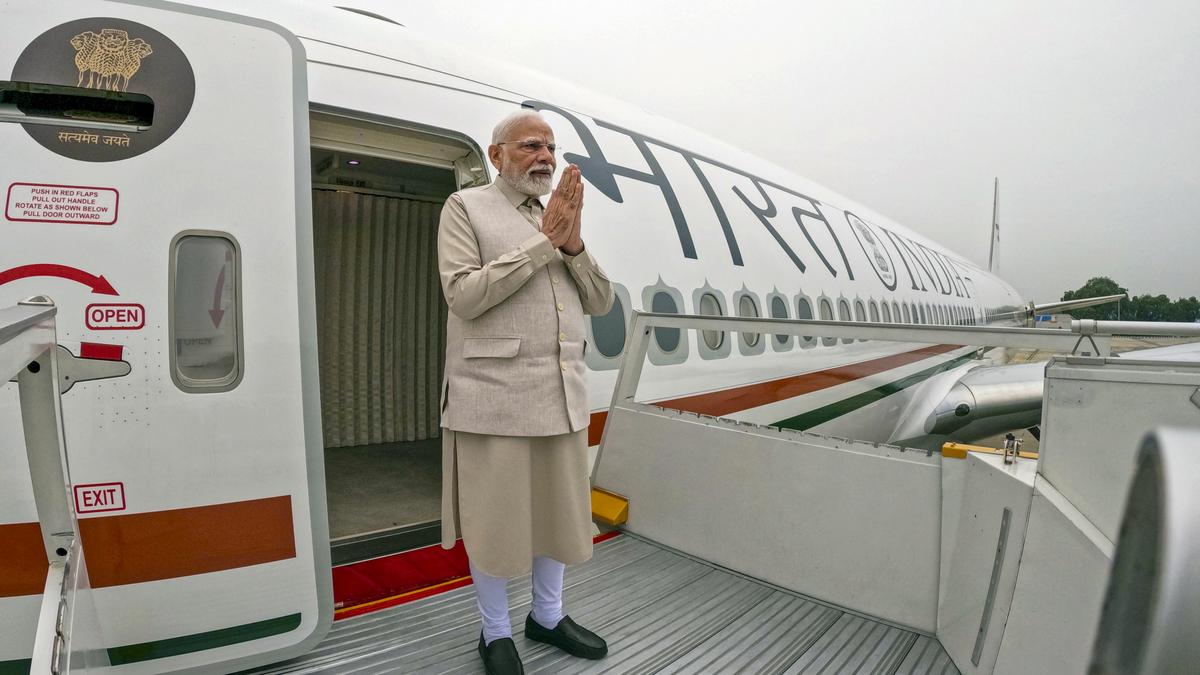
- 28 Jul 2025
In News:
Prime Minister Narendra Modi’s visit to the Maldives in July 2025 marked a significant diplomatic milestone, especially as it came amid shifting regional dynamics. Invited as the Guest of Honour for the 60th Independence Day celebrations, this was his third visit to the Maldives and the first by a foreign Head of Government under President Mohamed Muizzu's tenure. The event also symbolised a remarkable shift from the earlier phase of strained bilateral ties to renewed strategic alignment.
Diplomatic and Developmental Engagements
The visit featured a multifaceted agenda underscoring India’s "Neighbourhood First" and "Vision MAHASAGAR" policies. A commemorative stamp was released jointly by both leaders to mark 60 years of India-Maldives diplomatic relations, symbolised through traditional maritime vessels—India’s Uru boat and Maldives’ Vadhu Dhoni—highlighting shared Indian Ocean heritage.
India handed over two BHISHM Health Cubes—portable medical kits capable of treating 200 casualties and sustaining medical staff for 72 hours—demonstrating commitment to regional humanitarian support. PM Modi also inaugurated the new Ministry of Defence building in Malé, constructed with Indian assistance, enhancing Maldives’ institutional capacity.
A series of high-impact projects were launched, including:
- 3,300 social housing units in Hulhumale under Indian Buyer’s Credit,
- Road and drainage infrastructure in Addu City,
- Six community development initiatives, and
- 72 vehicles and utility equipment to support local governance.
Economic Assistance and Strategic Commitments
India extended a Line of Credit (LoC) worth ?4,850 crore, notably in Indian Rupees—marking the first such transaction for Maldives. This aims to address Maldives’ twin deficit crisis and reduce dependence on foreign currency. Additionally, an agreement was signed to reduce annual debt repayments from $51 million to $29 million, providing significant fiscal relief.
Other announcements included the launch of negotiations for an India-Maldives Free Trade Agreement (IMFTA) and joint climate action through synchronized tree-planting campaigns: India’s Ek Ped Maa Ke Naam and Maldives’ 5 Million Tree Pledge.
Diplomatic Turnaround: From 'India Out' to 'India In'
The symbolism of this visit lies in its contrast to recent tensions. After assuming office in 2023, President Muizzu’s administration aligned more closely with China and ran a vocally anti-India campaign. Early signals—including calls to remove Indian military personnel—suggested a possible strategic rupture. However, India opted for diplomatic engagement over confrontation, facilitating dialogue at COP28 and replacing its military presence with civilian HAL technicians in May 2024.
This calculated patience coincided with Maldives’ economic vulnerabilities, limited Chinese assistance, and the ruling PNC’s consolidation of power. The tide began to turn with high-level Maldivian visits to India and the announcement of a shared vision for maritime and economic cooperation in late 2024.
Conclusion
President Muizzu’s recent statement that "Maldives will not do anything to harm India's security interests" reflects a diplomatic recalibration driven by pragmatism and mutual necessity. The invitation extended to PM Modi for a ceremonial role in Maldives' Independence Day, once unthinkable amid the 'India Out' rhetoric, stands as a testament to the success of India’s calibrated diplomacy in the Indian Ocean region.
Draft National Telecom Policy 2025
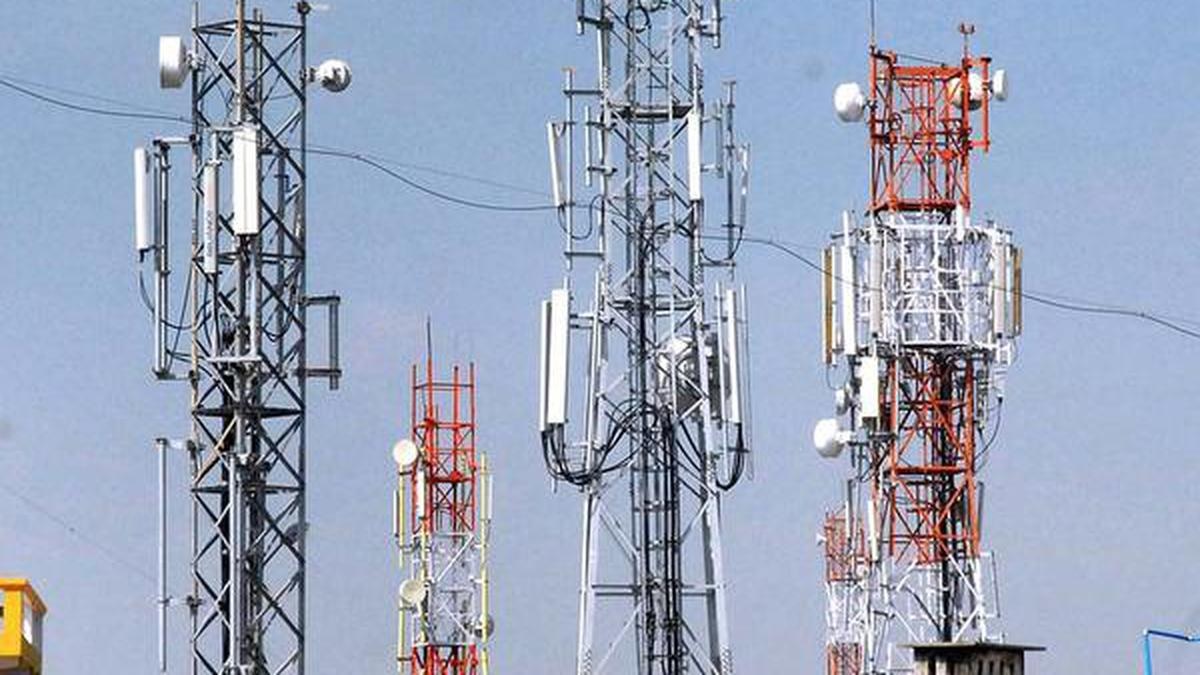
- 27 Jul 2025
In News:
- The Government of India has released the Draft National Telecom Policy 2025 through the Department of Telecommunications (DoT), marking a significant update after the 2018 National Digital Communications Policy (NDCP).
- The new draft aims to transform India into a “telecom product nation” through indigenous innovation, sustainable connectivity, and digital inclusion, aligning with broader national goals like Digital India, Make in India, and Atmanirbhar Bharat.
Vision and Strategic Objectives
- The policy envisions universal, meaningful, secure, and sustainable connectivity for all citizens while simultaneously boosting domestic innovation and employment.
- It reflects a shift from viewing telecom as a service enabler to treating it as a critical infrastructure sector capable of driving economic growth and strategic autonomy.
Key Focus Areas
- Universal Connectivity
- Target of 100% 4G coverage and 90% 5G coverage by 2030.
- Increase fiber-connected towers from 46% to 80% to enhance service quality.
- Establish 1 million new public Wi-Fi hotspots.
- Promote satellite internet to bridge digital divides in remote and border areas.
- Employment and Skilling
- Create 10 lakh new jobs in the telecom sector.
- Reskill another 10 lakh existing workers, addressing the evolving demands of the digital economy.
- Strengthening Domestic Manufacturing
- Target a 150% increase in domestic telecom manufacturing by 2030.
- Establish Telecom Manufacturing Zones (TMZs) with integrated infrastructure.
- Support R&D in next-generation technologies, including 6G.
- Include telecom R&D under Corporate Social Responsibility (CSR) activities to encourage private sector investment.
- Cybersecurity and Artificial Intelligence (AI)
- Deploy AI-based tools for proactive cyber threat detection and response.
- Counter generative AI-based attacks and enhance cross-border telecom signal surveillance.
- Use AI-powered chatbots for unified grievance redressal systems.
- Green Telecom and Circular Economy
- Reduce the sector’s carbon emissions by 30%.
- Promote recycling and reuse of telecom equipment to encourage circular economy practices.
- Technological Innovations
- Promote quantum-secure communications to strengthen network security.
- Enable mobile number-based identity verification for secure digital transactions.
- The removal of lawful interception provisions suggests a nuanced approach balancing security and privacy.
Comparative Outlook: 2018 NDCP vs. 2025 Draft Policy
- The 2018 policy had a broader digital communications focus; the 2025 draft is telecom-specific and more targeted.
- Job creation targets are more realistic (10 lakh vs. 40 lakh), reflecting the refined sectoral scope.
- AI, sustainability, and domestic manufacturing receive significantly enhanced attention in the 2025 draft.
- The shift from 10 million to 1 million Wi-Fi hotspot target indicates a pragmatic policy recalibration.
Conclusion
The Draft National Telecom Policy 2025 is a timely and ambitious framework aimed at ensuring digital sovereignty, innovation-driven growth, and inclusive access. By focusing on indigenous technology, sustainable infrastructure, and cybersecurity, it has the potential to position India as a global leader in next-generation telecommunications, including 6G and quantum tech. Effective implementation and coordination with state and private stakeholders will be key to translating this vision into ground reality.
India’s Ethanol Blending Success

- 26 Jul 2025
In News:
India has achieved a significant milestone by reaching 20% ethanol blending in petrol by March 2025, five years ahead of the original 2030 target under the National Policy on Biofuels (2018). This landmark achievement represents a transformative step in India’s journey toward energy self-reliance, environmental sustainability, and inclusive rural development.
Genesis and Policy Framework
The Ethanol Blended Petrol (EBP) Programme, launched in 2003 and significantly scaled up post-2014, aims to reduce dependence on imported crude oil, promote clean fuels, and support the agricultural economy. The programme is spearheaded by the Ministry of Petroleum and Natural Gas in collaboration with the Ministries of Agriculture and Food Processing. The National Policy on Biofuels expanded the permissible feedstocks for ethanol production, including sugarcane juice, B-molasses, damaged grains, maize, and agricultural residues.
Complementary initiatives like PM-JI-VAN Yojana, SATAT, PLI for ethanol production, and the National Bio-Energy Programme have accelerated infrastructure creation and second-generation (2G) ethanol technologies.
Progress and Scaling
The ethanol blending rate rose from 1.53% in 2014 to 8.17% in 2020–21, then to 12.06% in 2022–23, and reached 14.6% in 2023–24, culminating in the 20% target in early 2025. This scaling was supported by ?40,000 crore in investments and proactive procurement by Oil Marketing Companies (OMCs) at pre-fixed prices, providing market stability for distilleries and farmers.
Over 17,000 fuel retail outlets now offer E20 fuel, with 400 E100 pumps operational. Automakers such as Honda and Hero MotoCorp have ensured vehicle compatibility with E20 fuels, ensuring consumer acceptance.
Economic and Rural Impact
The EBP programme has delivered strong macroeconomic and grassroots benefits. By reducing crude oil imports, India has saved substantial foreign exchange and improved energy security. At the micro level, farmers—particularly sugarcane and maize growers—have benefited from assured off-take and stable prices, reducing rural distress and boosting income security.
Moreover, the ethanol ecosystem has generated rural employment, supported local manufacturing under ‘Make in India’, and catalyzed investment in agro-industrial infrastructure.
Environmental and Climate Gains
India’s ethanol blending drive aligns with its climate commitments, especially its Net Zero by 2070 target. Ethanol blending has helped avoid 698 lakh tonnes of CO? emissions, reduced particulate pollution, and improved urban air quality. The shift also supports circular economy principles by utilizing agricultural surplus, foodgrains unfit for consumption, and residues—converting waste to wealth.
Future strategies emphasize 2G ethanol from non-food biomass and municipal waste, thereby reducing land and water stress associated with first-generation biofuels. Advanced technologies like lignocellulosic processing, sustainable aviation fuel (SAF), and ethanol-to-hydrogen conversion are in focus.
Conclusion
India’s early achievement of 20% ethanol blending demonstrates the success of coordinated policymaking, technological adoption, and stakeholder alignment. It serves as a model of how energy policy can intersect with rural prosperity, environmental stewardship, and industrial growth. Going forward, India’s biofuel roadmap not only reinforces its clean energy leadership but also strengthens its resolve for energy Atmanirbharta, sustainable development, and climate resilience.
India’s Early Achievement of Climate Targets
- 25 Jul 2025
In News:
India has achieved a key milestone in its climate commitments under the Paris Agreement by fulfilling one of its core targets five years ahead of schedule. As of June 2025, non-fossil fuel sources contribute over 50% of India’s installed electricity generation capacity — a significant achievement originally set for 2030.
According to the Ministry of Power, India’s installed capacity reached 484.82 GW, of which 242.78 GW is from non-fossil sources like solar, wind, large hydropower, and nuclear energy. This rapid growth, particularly in solar (24 GW added in 2024 alone), underlines India’s leadership in renewable energy deployment. However, it also highlights key structural challenges in decarbonizing the broader energy economy.
India’s updated Nationally Determined Contributions (NDCs) under the Paris Climate Agreement (2015) comprise three primary targets for 2030:
- At least 50% of installed electricity capacity from non-fossil fuel sources.
- 45% reduction in emissions intensity (GHG emissions per unit of GDP) from 2005 levels.
- Creation of an additional 2.5–3 billion tonnes of CO?-equivalent carbon sink through increased forest and tree cover.
Substantial progress is also evident in the other two targets. By 2020, India had already reduced its emissions intensity by 36%, and given current economic and technological trajectories, the 45% target by 2030 appears achievable. On the forestry front, India added 2.29 billion tonnes of carbon sink by 2021. Given the annual increase of around 150 million tonnes CO? equivalent reported in the India State of Forest Report (ISFR), the carbon sink target may already be met by 2023, although official confirmation is pending.
Yet, these achievements warrant a closer look. Electricity comprises less than 22% of India’s total energy consumption. Most energy use — particularly in transport, industry, and residential sectors — still relies on direct combustion of fossil fuels like coal, oil, and gas. Furthermore, while non-fossil sources account for over 50% of capacity, they contribute only 28% to actual electricity generation due to intermittency in renewables. Consequently, clean energy forms only around 6% of India’s total energy consumption, which though modest, aligns with the global average.
The road ahead is demanding. India must now focus on decarbonizing non-power sectors through accelerated adoption of electric mobility, green hydrogen, energy-efficient technologies, and clean cooking solutions. Scaling stable power sources like nuclear and hydro is crucial to complement solar and wind. India's Small Modular Reactor (SMR) program remains in the R&D phase and is unlikely to contribute significantly by 2030.
Internationally, India’s climate leadership contrasts with the underperformance of many developed nations, especially regarding climate finance and technology transfer. While India has met and even surpassed its targets, its ability to raise ambition depends on receiving support as promised under the Paris Agreement.
In conclusion, India’s early success in achieving climate targets reflects a commitment to sustainable growth, but true climate leadership will require systemic decarbonization across all sectors, just energy transitions, and global equity in climate action.
Matter-Antimatter Asymmetry
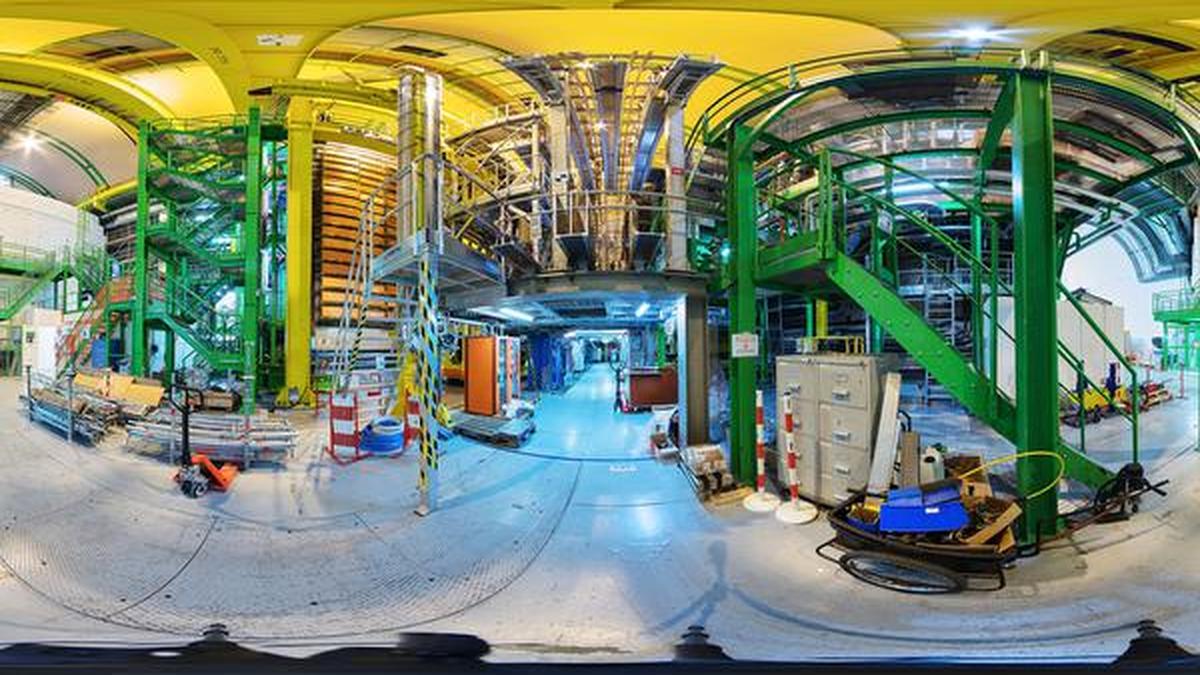
- 24 Jul 2025
Context:
One of the most fundamental questions in cosmology and particle physics is: Why does the universe contain more matter than antimatter? The Big Bang, which occurred around 13.8 billion years ago, should have produced equal amounts of matter and antimatter. However, the observable universe today is overwhelmingly composed of matter, with antimatter being nearly absent except in trace amounts created in high-energy environments or particle accelerators. This puzzling imbalance—known as baryon asymmetry—continues to challenge scientists worldwide.
Recent breakthroughs, particularly a discovery made on July 16 at the Large Hadron Collider (LHC) in Europe, have added a significant piece to this puzzle. For the first time, scientists observed CP violation in baryons—heavy subatomic particles such as protons and neutrons made of three quarks. CP stands for Charge Conjugation (C) and Parity (P), which together form a symmetry principle stating that the laws of physics should be the same if a particle is replaced with its antiparticle and viewed in a mirror. A violation of this symmetry implies that matter and antimatter behave slightly differently—a necessary condition for the observed dominance of matter.
The experiment focused on a baryon called Λb0 (lambda-b-zero), which contains one up quark, one down quark, and one bottom quark. Scientists at LHCb measured the decay rates of Λb0 and its antimatter counterpart (Λb0-bar) into a proton, kaon, and two pions. The results showed a CP asymmetry of about 2.45%, with a statistical significance of over 5 sigma, a threshold used in particle physics to confirm a discovery. This historic observation is the first evidence of CP violation in baryons and expands our understanding beyond earlier CP violation detected in mesons (quark-antiquark pairs).
While this asymmetry is still insufficient to fully explain the matter-antimatter imbalance, it marks a critical advancement. It suggests that there could be undiscovered sources of CP violation in other particles or interactions that the Standard Model of particle physics does not yet account for. Theoretical and experimental physicists are now exploring whether other decays exhibit similar asymmetries and whether new physics—beyond the Standard Model—might be at play.
Parallel efforts are also underway deep underground. In Italy, physicists are assembling detectors 1.4 km below the mountains to observe neutrinoless double beta decay, a hypothetical nuclear process that, if confirmed, would indicate that neutrinos are Majorana particles—particles that are their own antiparticles. This would offer a different mechanism for matter creation without equivalent antimatter, further contributing to the asymmetry.
Moreover, U.S. institutions such as the Department of Energy (DOE) support advanced antimatter research through projects like the Deep Underground Neutrino Experiment (DUNE) and experiments at Brookhaven’s Relativistic Heavy Ion Collider, which have created antimatter versions of elements such as helium.
In conclusion, the recent detection of CP violation in baryons and continued investigations into rare decays and neutrino properties are gradually illuminating the deep cosmic mystery of why something exists instead of nothing. This line of inquiry not only bridges particle physics and cosmology but also exemplifies human curiosity’s power in probing the origins of existence itself.
Feeding Community Dogs: Balancing Constitutional Compassion with Public Order in India
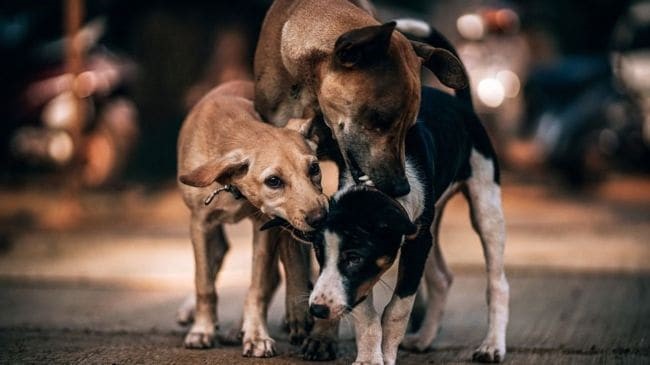
- 23 Jul 2025
Context:
The issue of feeding stray or community dogs has evolved into a contentious legal and social debate in India. A recent case involving a Noida resident, allegedly harassed for feeding stray dogs in the common areas of her housing society, once again brought this matter to the judicial spotlight. While the Supreme Court refrained from issuing a specific directive, it observed that citizens should consider feeding strays within their own homes—an observation that, while not binding, reignited debate on reconciling individual compassion with community concerns.
Legal Framework: The ABC Rules, 2023
The Animal Birth Control (ABC) Rules, 2023, framed under the Prevention of Cruelty to Animals Act, 1960, serve as the primary legal instrument governing the care of community animals. These rules replaced the 2001 version and introduced the term “community animals” instead of “stray dogs,” recognizing them as territorial beings who coexist with human residents.
Rule 20 of the ABC Rules mandates that Resident Welfare Associations (RWAs) or local bodies must facilitate the feeding of community dogs if any resident voluntarily chooses to do so. Designated feeding spots must be located away from high-footfall zones like staircases, entrances, and children’s play areas. Cleanliness and fixed feeding times are essential requirements. Additionally, the Rules lay down a dispute resolution mechanism involving veterinary officers, police representatives, and local welfare groups.
Constitutional and Ethical Dimensions
The legal protection of animals finds support in Article 21 of the Constitution. In the 2014 Animal Welfare Board of India vs. A. Nagaraja case, the Supreme Court interpreted the right to life and liberty to include animal life. Further, Article 51A(g) enshrines the fundamental duty of citizens to show compassion to all living beings. Thus, feeding community dogs is not merely an act of personal kindness but a constitutional obligation.
The petitioner in the Noida case was arguably fulfilling this duty. Allegedly harassed by her RWA president—who reportedly destroyed water pots and killed sterilised dogs—she faced institutional apathy when authorities failed to act. Her appeal to the Allahabad High Court was dismissed, citing inconvenience to the "common man," despite the ABC Rules’ clear guidelines.
Judicial Precedents and Clarifications
Contrary to popular media interpretation, the Supreme Court in the current case did not issue an order compelling the petitioner to feed dogs at home. Observations made during hearings are not judicial directions. Notably, the apex court had earlier stayed a 2022 Bombay High Court (Nagpur Bench) order that banned public feeding and required adopters to take dogs home—asserting that such rules violate statutory rights and compassionate duties.
Conclusion
Feeding community dogs intersects with animal rights, public safety, and civic coexistence. The ABC Rules, 2023, strike a legal and ethical balance between compassion and community order. Sterilisation and designated feeding are not only humane solutions but also public health imperatives. Going forward, increased awareness, community dialogue, and strict adherence to legal norms are vital to avoid polarisation and ensure harmonious urban living.
U.S. Designation of The Resistance Front (TRF)

- 22 Jul 2025
In News:
India’s sustained diplomatic campaign against cross-border terrorism received a significant fillip with the United States designating The Resistance Front (TRF) as a Foreign Terrorist Organization (FTO) and a Specially Designated Global Terrorist (SDGT). The decision, announced by U.S. Secretary of State Marco Rubio, marks a strong step in countering global terror networks and reaffirms the deepening Indo-U.S. cooperation in counter-terrorism.
The TRF is widely recognized as a proxy outfit of the Pakistan-based Lashkar-e-Taiba (LeT), formed soon after the abrogation of Article 370 in 2019. Projecting itself as an indigenous, secular “resistance” movement, TRF has sought to legitimize militancy under a veneer of local identity while continuing to rely on the operational, logistical, and financial support of LeT and Pakistan’s Inter-Services Intelligence (ISI). Its rebranding strategy is aimed at evading scrutiny by international watchdogs such as the Financial Action Task Force (FATF).
TRF has claimed responsibility for several high-profile terror attacks in Jammu and Kashmir, including the Pahalgam attack in April 2025, which killed 26 tourists. Other attacks attributed to it include the Ganderbal killings (October 2024), Reasi bus attack (June 2024), and a 2020 shooting in Lal Chowk, Srinagar. Its leadership, including current chief Sheikh Sajjad Gul and spokesperson Ahmad Khalid, operate largely from Pakistani soil.
The group also runs an elaborate digital propaganda and recruitment ecosystem. Portals like KashmirFight and Jhelum Media House disseminate extremist narratives, claim responsibility for attacks, and operate as fronts for psychological operations and radicalization. These digital tools further complicate counter-terrorism efforts, allowing TRF to recruit and spread misinformation under the guise of human rights advocacy.
India banned TRF under the Unlawful Activities Prevention Act (UAPA), 1967, in January 2023, recognizing its existential threat to national security. India has consistently provided evidence of TRF’s linkages with LeT and other Pakistan-backed outfits like Jaish-e-Mohammed (JeM) in its submissions to the UN 1267 Sanctions Committee, responsible for imposing sanctions on terror-linked entities.
The U.S. designation of TRF as an FTO and SDGT is not just symbolic. It imposes concrete legal and financial restrictions, making it illegal for U.S. individuals or entities to provide support to the group. The move mandates American financial institutions to block any assets tied to TRF and enables further actions through the Office of Foreign Assets Control (OFAC). These actions aim to globally isolate the outfit and can also trigger secondary sanctions against foreign entities that deal with it.
India has welcomed this move, calling it a “strong affirmation” of India-U.S. cooperation in the fight against terrorism. The Ministry of External Affairs (MEA) emphasized that such steps are vital to dismantle terror infrastructure and hold proxy actors accountable. The decision also underscores a growing international consensus on the need for zero tolerance towards terrorism.
This development marks a pivotal moment in India’s counter-terror diplomacy and reinforces the need for global synergy in combating the evolving threat of state-sponsored and hybrid terrorism.
The Need to Protect India’s Linguistic Secularism
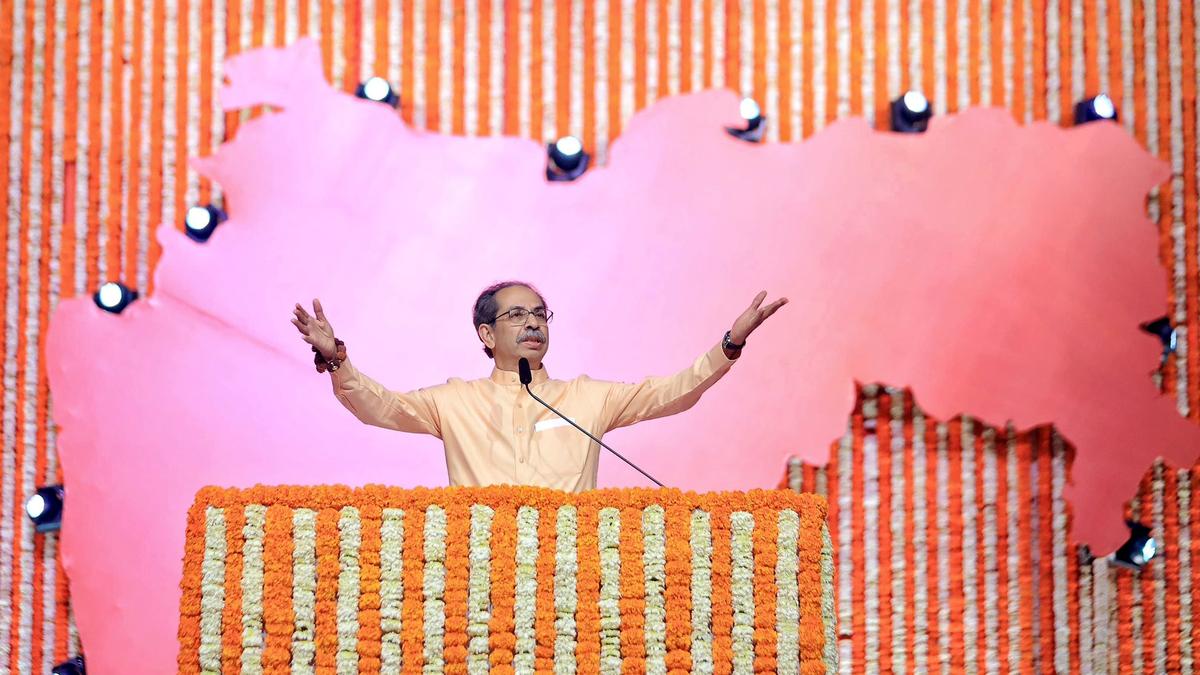
- 20 Jul 2025
In News:
India’s identity as a democratic and pluralistic society rests not only on its religious diversity but also on its remarkable linguistic heterogeneity. According to the 2011 Census, India is home to 121 languages and 270 mother tongues, with 22 languages recognized under the Eighth Schedule of the Constitution. This linguistic diversity forms a critical part of India’s secular ethos, often overshadowed by the more frequently discussed religious dimension of secularism.
Unlike the Western model of secularism, which advocates a strict separation between religion and state, India’s secularism is inclusive and interventionist. It allows the state to engage positively in ensuring equality among different religious and linguistic groups. The Indian state does not privilege any single religion or language but guarantees all communities the right to preserve their cultural and linguistic identity.
This commitment is constitutionally enshrined. Article 343 declares Hindi in Devanagari script as the official language of the Union, but also provides space for states to choose their own official languages. Article 29 guarantees every section of citizens the right to conserve their distinct language, script, or culture. The Eighth Schedule ensures recognition and development support for 22 scheduled languages, while allowing the space for inclusion of others over time. This decentralized and accommodating approach prevents linguistic hegemony while nurturing India’s cultural mosaic.
However, recent incidents of language-based violence and exclusion — such as attacks on non-Marathi speakers in Maharashtra — signal growing tensions rooted in identity politics. While movements to preserve linguistic heritage are legitimate, they must not mutate into exclusionary practices. Historical resistance to Hindi imposition in Tamil Nadu and similar sentiments in Northeastern states stem from real concerns over cultural erasure and centralisation of linguistic power.
Such developments point to the misuse of linguistic identity as a political mobilization tool, undermining the foundational values of unity in diversity. The imposition of one language, directly or indirectly, poses a threat not just to federalism but also to the democratic fabric of the country. Language cannot be a tool for dominance; it must be a bridge for mutual respect and integration.
It is crucial to note that India does not have a national language, only an official language at the Union level. The Constitution deliberately avoids conferring national status to any language to prevent alienation and protect linguistic plurality. The respect for all languages, including non-scheduled ones and dialects, is central to India’s linguistic secularism.
Therefore, the responsibility lies with political parties, civil society, media, and educational institutions to nurture this ethos. The political class, in particular, must refrain from exploiting linguistic emotions for electoral gains. Instead, they should promote policies that encourage multilingual education, cultural exchange, and preservation of regional languages.
In an increasingly globalized and polarized world, India’s linguistic secularism must be viewed not as a passive principle but as an active commitment — essential for national unity, inclusive development, and constitutional morality. Only by valuing each language equally can India uphold the promise of democratic citizenship and cultural dignity for all.
Safe Harbour Doctrine
- 21 Jul 2025
In News:
In a significant development shaping India’s digital governance framework, the Centre has defended its expanded use of Section 79 of the Information Technology Act and the Sahyog Portal to compel online intermediaries—including social media platforms—to remove or disable unlawful content. The debate, currently before the Karnataka High Court, arises from a challenge by platform X (formerly Twitter), which terms the Sahyog Portal a "censorship portal."
Safe Harbour vs. Government Oversight: The Legal Framework
Section 79 of the IT Act grants “safe harbour” protection to intermediaries from liability over third-party content, provided they act upon government takedown notices. However, failure to comply may lead to the withdrawal of this immunity. By contrast, Section 69A empowers the government to block content under specific grounds such as national security, public order, or foreign relations, in line with Article 19(2) of the Constitution, and backed by procedural safeguards.
Platform X argues that the Centre is bypassing Section 69A’s narrower and more legally constrained provisions by issuing de facto blocking orders under Section 79, without adequate procedural checks. This, it contends, infringes upon digital freedom of expression.
Sahyog Portal and the Government's Rationale
The Sahyog Portal, developed under the Indian Cyber Crime Coordination Centre (I4C) of the Ministry of Home Affairs, has onboarded 38 intermediaries as of March 2025—including Google, Microsoft, Amazon, Telegram, and YouTube. Meta has allowed API-based integration, while X has refused, citing legal overreach.
Defending its stance, the government argues that algorithmic content curation systems—unlike traditional editorial processes—operate at unprecedented speed and scale, without human oversight or transparency. These systems can amplify harmful or misleading content, targeting users individually in ways that traditional media cannot. Moreover, the anonymity and pseudonymity offered by online platforms, along with encrypted messaging, encourage unaccountable and extreme speech, posing serious risks to public order.
Algorithmic Curation vs. Traditional Editorial Control
The government contends that in traditional media, editors and broadcasters act as gatekeepers, ensuring a degree of content quality and moderation. Social media algorithms, however, lack such discretion, often functioning without clear standards, and thereby require regulatory intervention distinct from that applied to conventional media.
This foundational difference, the government argues, justifies a broader interpretive scope under Section 79 to address a wider class of “unlawful content” that may not directly fall under the remit of Section 69A but still demands intervention.
Balancing Freedom of Speech with Public Interest
At the heart of the issue lies the constitutional balancing of free speech (Article 19(1)(a)) with reasonable restrictions (Article 19(2)). While Section 69A aligns with specific constitutional limitations, the government argues that a broader net under Section 79 is needed to tackle content harmful to national security, social harmony, and public order—even if it doesn’t squarely fall within 19(2).
In its submission, the Centre emphasizes that the matter should be viewed not only from the lens of content creators but also from the rights and safety of content recipients and society at large.
Conclusion
This case marks a crucial intersection of digital freedom, platform responsibility, and state regulation. The government's bid to reinterpret Section 79 reflects the growing challenges of algorithmic governance in the digital era. The Karnataka High Court’s verdict will likely set a precedent in defining the limits of intermediary liability, scope of safe harbour, and the State’s role in regulating online content—all central to India’s evolving digital constitutionalism.
Cybersecurity Threats from Southeast Asia: Rising Cyber Frauds Targeting India

- 19 Jul 2025
Introduction
Cybersecurity has emerged as a critical component of national security in the digital era. India, with its expanding digital footprint, is increasingly facing threats from transnational cybercrime syndicates. A recent analysis by the Ministry of Home Affairs (MHA) reveals a staggering Rs 1,000 crore loss per month due to cyber frauds originating from Southeast Asian countries, posing a serious threat to the Indian economy and internal security.
Magnitude of the Threat
- According to the Indian Cyber Crime Coordination Centre (I4C) under MHA: In the first five months of 2025, cyber frauds caused a total loss of around Rs 7,000 crore.
- Over 50% of the losses were attributed to networks operating from Cambodia, Myanmar, Laos, Thailand, and Vietnam.
Modus Operandi
- Fraud Centers: Operate from high-security scam compounds, primarily in Cambodia (45 identified), Laos (5), and Myanmar (1), allegedly run by Chinese operators.
- Forced Labor: Trafficked individuals, including more than 5,000 Indians, were reportedly forced to carry out cyber frauds under coercion.
- Types of Scams:
- Stock trading/investment scams
- Digital arrest scams
- Task-based/investment-based scams
Recruitment Networks and Source States
- Recruitment agents operate largely from:
- Maharashtra (59 agents)
- Tamil Nadu (51)
- Jammu & Kashmir (46)
- Uttar Pradesh (41)
- Delhi (38)
- Travel Routes Tracked:
- Routes include India to Cambodia via Dubai, China, Thailand, Vietnam, Singapore, etc.
- Cities involved include Mumbai, Chennai, Delhi, Jaipur, Lucknow, Kochi, and Kolkata.
Government Response
- Diplomatic Engagement:
- Cambodian officials met Indian authorities (MEA and Central agencies) in Delhi.
- Requested geographical coordinates of scam centers for local enforcement action.
- Inter-Ministerial Committee: Formed to identify systemic loopholes in banking, telecom, and immigration sectors.
- CBI Investigation: Registered FIRs against PoS agents involved in issuing ghost SIM cards aiding cybercrime.
Wider Implications
- Global Human Trafficking Concern: Victims from Africa, East Asia, South Asia, Central Asia, Europe, and the Americas have been found in these compounds.
- Transnational Organized Crime: The scams highlight growing cooperation between international criminal networks, using digital tools to exploit vulnerabilities across borders.
Conclusion
The scale and transnational nature of cyber frauds targeting India from Southeast Asia require a coordinated national and international response. Strengthening cyber intelligence, cross-border cooperation, digital infrastructure resilience, and public awareness are vital to securing India's cyberspace. Proactive steps such as bilateral cooperation, inter-agency coordination, and targeted enforcement are crucial to mitigate this growing internal security threat.
Protection of Civil Rights (PCR) Act

- 18 Jul 2025
Context:
The Protection of Civil Rights (PCR) Act, 1955, a legislative tool to eliminate untouchability as mandated under Article 17 of the Indian Constitution, remains grossly under-implemented. The 2022 report by the Ministry of Social Justice and Empowerment paints a dismal picture of enforcement, revealing structural deficiencies in India's pursuit of social justice, cultural preservation, and inclusive development.
Despite the Act’s objective of eradicating untouchability—manifested in denial of access to public spaces, religious institutions, and essential services—there has been a sharp decline in First Information Reports (FIRs) over the years. Only 13 cases were registered in 2022, compared to 24 in 2021 and 25 in 2020. Alarmingly, no State or Union Territory has declared any area as “untouchability-prone,” raising concerns over administrative apathy and underreporting.
The judicial and police response has been equally lackluster. Out of 1,242 cases pending trial under the PCR Act in 2022, over 97% remain unresolved. Out of 31 cases disposed that year, 30 ended in acquittal, with only one conviction, reflecting a near-total failure in ensuring accountability. Similarly, of the 51 cases pending with police, chargesheets were filed in just 12. This highlights serious procedural and evidentiary lapses, lack of capacity, and perhaps, implicit biases in law enforcement and judicial systems.
In contrast, cases under the Scheduled Castes and Scheduled Tribes (Prevention of Atrocities) Act, 1989 (PoA Act) have shown an increasing trend, suggesting better awareness and enforcement. This disparity calls for equal policy attention to the PCR Act, especially considering its centrality in upholding the constitutional promise of equality and dignity.
What makes the findings even more concerning is their impact on India’s cultural and linguistic diversity. Many communities that are victims of untouchability also belong to linguistic or tribal minorities. These include speakers of endangered languages, regional dialects, and culturally distinct groups. The systemic neglect of untouchability cases undermines not just civil rights but also the preservation of traditional knowledge systems, oral histories, and linguistic secularism enshrined in Article 29 of the Constitution.
The absence of proactive policy measures—such as identification of vulnerable zones, awareness programs, legal aid, or cultural inclusion initiatives—threatens the composite culture of the nation. Moreover, the decline in registration indicates a lack of trust in legal redressal mechanisms and failure to empower marginalized communities through effective grievance redressal.
To address these challenges, a multi-pronged strategy is essential. This includes:
- Strengthening special courts and fast-tracking trials under the PCR Act.
- Capacity-building and sensitization programs for police and judiciary.
- Empowering local governance institutions to report and act on untouchability practices.
- Implementing UNESCO-backed initiatives to preserve linguistic heritage.
- Introducing language training and interpretation services to reduce communication gaps.
- Leveraging multilingual education policies to integrate cognitive development with cultural preservation.
In conclusion, the declining efficacy of the PCR Act undermines India's constitutional ethos of equality, fraternity, and cultural integration. A robust, inclusive, and culturally sensitive legal framework is imperative to protect the rights of the marginalized and to uphold the pluralistic spirit of the Indian nation.
Trump’s Tariff Threats and BRICS

- 17 Jul 2025
In News:
The recent 17th BRICS Summit in Rio de Janeiro (2025) has reignited tensions between the United States and the expanding BRICS grouping. Former U.S. President Donald Trump, who remains a dominant figure in Republican politics, has threatened to impose 10% tariffs on all BRICS nations, framing the bloc as a challenge to American economic hegemony. These threats signal a continuation of Trump's confrontational approach to global trade and reflect deeper anxieties about de-dollarisation efforts emerging from the Global South.
Trump’s concerns stem from what he perceives as an "anti-American" orientation of BRICS. The group's discussions around a common currency, increased use of national currencies, and the development of alternative cross-border payment systems have been interpreted by Trump as an attempt to weaken the U.S. dollar’s central role in international finance. This fear has been intensified post the Russia-Ukraine conflict, which saw several countries reconsider their reliance on dollar-based systems like SWIFT, particularly after Russia’s exclusion from them due to Western sanctions.
In response, Trump has floated punitive trade measures: a 10% tariff on BRICS-aligned nations, 50% on Brazil for its domestic political stance, and 30% on South Africa citing trade disputes and minority rights issues. He is also advocating for the Sanctioning Russia Act, 2025, which proposes an astronomical 500% tariff on Russian oil and related products. Such a move could disrupt oil-importing economies like India and China, both of which have deepened energy ties with Moscow in recent years.
However, BRICS leaders have clarified that de-dollarisation is not about dismantling the dollar-based order but about financial diversification and resilience. The Rio Declaration 2025 stopped short of any anti-U.S. language, instead emphasizing interoperability of payment systems and equitable reform of global institutions. This demonstrates a cautious diplomatic approach aimed at asserting economic agency without triggering direct confrontation.
India, in particular, has taken a measured stance. In Parliament, the Indian government distanced itself from suggestions that BRICS was pursuing an aggressive de-dollarisation agenda. External Affairs Minister S. Jaishankar reiterated that India has no official policy to replace the U.S. dollar, and that BRICS decisions are not monolithic but reflect the diversity of its member states. This is crucial, given India’s strategic balancing between the West and the Global South.
Founded in 2009 amid discontent with Western-dominated financial structures, BRICS has expanded to include 10 members, with new entrants like Iran, Egypt, Ethiopia, UAE, and Indonesia. While united by frustration over Western dominance, internal diversity—economic, political, and strategic—ensures that BRICS does not function as a rigid anti-West alliance.
At the Rio summit, BRICS condemned unilateral tariff practices and expressed concern over attacks on Iranian civilian infrastructure, showcasing solidarity without directly naming the U.S. or its allies. This signals a shift toward multilateral diplomacy grounded in soft balancing rather than confrontation.
In conclusion, while Trump’s tariff threats underline U.S. anxiety over shifting global power structures, BRICS’ response suggests a nuanced recalibration of the international order—not a radical overhaul. For India, the challenge remains to harness BRICS for strategic autonomy without undermining its multi-aligned foreign policy posture.
AI 171 Crash
- 16 Jul 2025
In News:
On June 12, 2025, Air India flight AI 171, a Boeing 787-8 Dreamliner en route from Ahmedabad to London Gatwick, tragically crashed shortly after takeoff, killing 260 people—including 19 on the ground—in what is now the deadliest aviation disaster involving an Indian airline in four decades. A preliminary report by the Aircraft Accident Investigation Bureau (AAIB) has placed the aircraft’s fuel control switches at the centre of the crash investigation.
Fuel Control Switches: Function and Design
Fuel control switches are critical safety components that regulate the flow of fuel to aircraft engines. On a Boeing 787, equipped in this case with two GE engines, these switches are located below the thrust levers and are spring-loaded and bracket-protected to prevent accidental activation. They require a deliberate two-step manual action—lifting the switch and moving it between two positions:
- RUN: Allows fuel flow for engine operation.
- CUTOFF: Cuts fuel flow, effectively shutting down the engine.
These switches are typically used on the ground for engine startup and shutdown, and only in-flight during an engine failure or critical damage. Modern twin-engine aircraft like the 787 are capable of continuing flight on a single engine, making the simultaneous use of both switches highly unusual and dangerous.
Sequence of Events: Preliminary Findings
According to flight data from the Flight Data Recorder (FDR) and Cockpit Voice Recorder (CVR), both engine fuel control switches were moved from ‘RUN’ to ‘CUTOFF’ within seconds of each other, shortly after takeoff. This led to simultaneous loss of thrust in both engines. Moments later, both switches were returned to the ‘RUN’ position, but by then the aircraft had lost critical altitude and control.
The cockpit recording captured one pilot asking the other why the fuel was cut off. The other responded that he had not done so. The pilots—Captain Sumeet Sabharwal with over 8,600 flying hours on the 787, and Co-pilot Clive Kundar with 1,100 hours—were both adequately experienced.
Technical and Human Factors under scrutiny
Aviation experts argue that accidental activation of both switches is nearly impossible due to the stop-lock mechanism and protective brackets. However, speculation persists over a possible technical malfunction, human error, or incorrect engine identification. A theory suggests that one engine may have failed and the pilots mistakenly shut down the working engine, though this remains unconfirmed.
Attention has also turned to the switches themselves, manufactured by Honeywell (Part No. 4TL837-3D). A 2018 FAA advisory had flagged potential issues with their locking mechanisms but did not mandate corrective action. Air India reportedly did not conduct voluntary checks, raising questions about maintenance protocols.
Conclusion:
The AI 171 crash highlights critical lapses in cockpit procedures, technical maintenance, and possibly design flaws. It underscores the need for stringent implementation of safety advisories, thorough crew training, and the use of redundant safety mechanisms. As investigations continue, the incident may prompt global regulatory reviews on cockpit ergonomics and fuel system safety protocols, reinforcing the imperative of fail-safe systems in civil aviation.
Maharashtra’s Special Public Security Bill, 2024
- 15 Jul 2025
In News:
The Maharashtra Special Public Security Bill, 2024, passed by the Legislative Assembly, aims to combat “urban Maoism” and left-wing extremism (LWE). Modeled on the Unlawful Activities (Prevention) Act (UAPA), the Bill introduces stringent provisions to identify and dismantle urban support networks aiding insurgents. However, it has generated significant legal and civil liberty concerns due to its vague definitions, broad executive powers, and pre-trial punitive measures.
Understanding Urban Maoism
Urban Maoism refers to the strategy of the banned CPI (Maoist) to infiltrate cities and mobilise intellectuals, students, professionals, and minorities through NGOs, protests, and media campaigns. This ideology, outlined in the 2004 document Strategies and Tactics of Indian Revolution (STIR), aims to build urban logistical support for rural armed struggles while operating under the legal guise of activism, journalism, or civil society work. Notable examples include the Elgar Parishad case (2018), where activists were arrested for alleged Maoist links following Bhima Koregaon violence.
Key Provisions of the Bill
The Bill allows the government to declare an organisation “unlawful” and penalises individuals associated with it—whether through membership, fundraising, or aiding operations. It defines “unlawful activity” as interference with public order, use of criminal force against officials, incitement to disobedience of the law, or even disrupting communication systems. Punishments range from 2 to 7 years of imprisonment along with fines. All offences are cognizable and non-bailable.
A major provision allows pre-trial forfeiture of property belonging to accused persons or organisations, with only 15 days’ notice. While the affected party can appeal to the High Court within 30 days, the initial declaration is confirmed only by an Advisory Board comprising High Court-qualified persons.
Constitutional and Legal Concerns
Civil society and legal experts argue that the Bill risks criminalising legitimate dissent and peaceful protest, given its ambiguous phrasing like “practising disobedience” or “generating apprehension in the public.” Unlike the UAPA, which requires a higher threshold for proving threat to national integrity, Maharashtra’s Bill introduces lower benchmarks that could conflate dissent with sedition.
The pre-trial forfeiture of property mirrors provisions in the Prevention of Money Laundering Act (PMLA), yet lacks equivalent safeguards like adjudication by a quasi-judicial body. Moreover, principles of natural justice, such as presumption of innocence and burden of proof on the state, appear diluted.
Broader Implications
While the state’s intent to counter urban LWE influence is valid—especially given the shift of Maoist strategies from forested hinterlands to urban centres—the means adopted pose risks to constitutional rights and federal norms. The legislation exemplifies a growing trend where extraordinary laws designed for national threats are adapted at the state level, potentially disrupting the balance between security imperatives and civil liberties.
Conclusion
The Maharashtra Special Public Security Bill reflects the complex challenge of safeguarding national security while upholding democratic freedoms. Any future enactment must incorporate judicial oversight, clearer definitions, and proportionate safeguards to ensure that the fight against extremism does not erode the fundamental rights enshrined in the Constitution.
India’s Reinvigorated Outreach to the Global South

- 14 Jul 2025
In News:
India’s foreign policy has witnessed a dynamic recalibration with Prime Minister Narendra Modi’s expansive visit to Brazil, Ghana, Trinidad & Tobago, Argentina, and Namibia. While participation in the BRICS Summit in Rio de Janeiro was central, the broader aim was to deepen India’s leadership role within the Global South — a diverse group of developing nations in Asia, Africa, Latin America, and Oceania.
Reclaiming Leadership in the Global South
India has long championed the cause of the Global South, grounded in its non-aligned foreign policy legacy and postcolonial solidarity. This identity was rejuvenated through:
- Hosting two Voice of the Global South Summits (2023, 2024), giving a platform to over 125 developing countries.
- Advocating for and securing African Union’s permanent membership in the G20 during its presidency, symbolizing India’s commitment to an inclusive global governance architecture.
These initiatives portray India as a bridge between the Global North and South, positioning itself as a leader that represents the interests of the voiceless in multilateral forums.
Diplomatic Course Correction: The Gaza Challenge
India’s explicit support for Israel during the Gaza conflict (post-October 7, 2023) triggered discomfort among many Global South countries, especially in the Arab and African regions that strongly support the Palestinian cause. Consequences included:
- India’s defeat to Pakistan in the UNESCO Executive Board Vice-Chair election.
- Limited engagement from key Global South nations in the Second Voice of the Global South Summit.
Recognizing these diplomatic setbacks, India recalibrated its stance. At the BRICS Foreign Ministers’ Meeting (2024) and the 2025 Rio BRICS Summit, India joined in expressing grave concern over Israeli military operations in Gaza and condemned strikes on Iran, signaling a return to its balanced, multivector diplomacy.
Strategic Gains at BRICS: Securing Core Interests
India also used the BRICS platform to secure vital national interests. The BRICS Leaders’ Declaration condemned the Pahalgam terror attack in Kashmir and called for combating terrorism, including cross-border terror financing. This was diplomatically significant, given:
- China’s prior reluctance to name Pakistan-based terror actors.
- BRICS’ growing relevance in shaping global narratives.
India’s success in inserting its security concerns into multilateral dialogue marks a maturing assertiveness in diplomacy.
Countering China, Offering Alternatives
India’s proactive outreach also serves to counter China’s rising influence in the Global South. Unlike Beijing’s Belt and Road Initiative, India emphasizes:
- Transparent, demand-driven development assistance.
- Capacity-building and digital partnerships.
- Ethical, sustainable models of cooperation.
Through initiatives like International Solar Alliance, Digital Public Infrastructure partnerships, and humanitarian aid, India offers a democratic, credible alternative to Chinese financing and infrastructure diplomacy.
Conclusion:
India’s current foreign policy trajectory reflects a delicate balancing act—protecting strategic partnerships with global powers while retaining the trust of fellow developing nations. As global multipolarity deepens, India’s role as a consensus builder, ethical voice, and pragmatic actor will shape its success in becoming the leading voice of the Global South.
UNFCCC and the Crisis of Credibility in Global Climate Governance
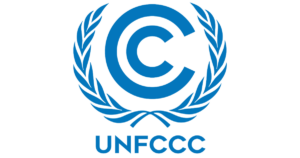
- 13 Jul 2025
In News:
The United Nations Framework Convention on Climate Change (UNFCCC), signed in 1992 at the Earth Summit in Rio de Janeiro and enforced from 1994, is the central international treaty to combat climate change by limiting greenhouse gas emissions. With 198 member countries and an annual Conference of the Parties (COP), the UNFCCC provides the primary forum for negotiating global climate action. However, in recent years, its credibility has come under scrutiny due to persistent inaction, structural inefficiencies, and failure to deliver climate justice—particularly for developing nations.
The Credibility Crisis: Key Concerns
A major source of discontent is the failure of developed countries to meet both emission reduction targets and financial commitments under the Paris Agreement and earlier protocols. Vulnerable nations—especially small island developing states (SIDS) and low-income countries—have raised concerns over exclusion from critical negotiations, lack of accountability from wealthier nations, and limited progress on equity and justice.
The withdrawal of the United States from the Paris Agreement during the Trump administration further damaged trust in the multilateral climate process, reinforcing perceptions of the UNFCCC as an ineffective and increasingly irrelevant institution.
Bonn Meeting and Brazil’s Role Ahead of COP30
The mid-year climate talks in Bonn (June 2025) aimed to restore faith in the negotiation process ahead of COP30, to be hosted by Brazil. Brazil has taken an active leadership role by proposing a comprehensive 30-point reform agenda, seeking to make negotiations more inclusive, transparent, and results-oriented.
Proposed Structural Reforms
Key reform suggestions emerging from Brazil and other stakeholders include:
- Streamlining negotiation procedures by eliminating repetitive agenda items, reducing negotiation time, and capping delegation sizes to prevent overcrowding and domination by rich nations.
- Restricting host eligibility: Proposals advocate barring countries with poor climate records—particularly fossil fuel-reliant nations—from hosting COPs. This follows criticism over COP28 (UAE) and COP29 (Azerbaijan).
- Mainstreaming climate discourse across other international platforms, such as the UN General Assembly, IMF, and multilateral banks, to enable faster action through complementary mechanisms.
The Unmet Climate Finance Pledge
Climate finance remains the most contentious issue. Under the Paris Agreement, developed countries had pledged $100 billion per year by 2020 to support climate action in developing countries. However, at the Baku (COP29) meeting, a new proposal of $300 billion per year starting 2035 fell far short of the actual requirement—estimated at $1.3 trillion annually.
Developing countries, especially BRICS and G77, have demanded urgent action to define a new climate finance goal. They stressed the need for finance to be predictable, equitable, and accessible to all vulnerable nations.
Role of Civil Society and Observers
There is growing demand from civil society organizations and observer groups for reforms to ensure greater transparency, restrict the influence of fossil fuel lobbies, and democratize the negotiation process.
Conclusion
While significant reforms may face resistance due to entrenched geopolitical and economic interests, Brazil’s proactive approach marks a turning point. If supported, these efforts could rejuvenate the UNFCCC process by embedding inclusivity, accountability, and justice at its core—essential for addressing the escalating global climate crisis.
Tamil Nadu’s TB Death Prediction Model

- 12 Jul 2025
In News:
Tamil Nadu has become the first Indian state to integrate a predictive model for tuberculosis (TB) deaths into its State TB Elimination Programme. This initiative, in partnership with the Indian Council of Medical Research’s National Institute of Epidemiology (ICMR-NIE), marks a significant step in India’s public health innovation, aimed at reducing TB-related mortality through data-driven, early intervention strategies.
The model has been embedded within the existing TB SeWA (Severe TB Web Application) platform, launched under the state’s Tamil Nadu Kasanoi Erappila Thittam (TN-KET), a differentiated care initiative operational since 2022. It enables real-time triaging and prioritisation of severely ill patients at the time of diagnosis, improving early access to hospital care—a crucial step, as over 70% of TB deaths occur within the first two months of treatment.
How the Predictive Model Works
The model is based on five triage indicators:
- Body Mass Index (BMI)
- Pedal oedema (foot/ankle swelling)
- Respiratory rate
- Oxygen saturation
- Ability to stand without support
Healthcare workers input these variables into the TB SeWA app, which calculates a predicted probability of death, ranging from 10% to 50% for severely ill patients. For those not flagged, the risk ranges between 1% and 4%. This objective risk estimate empowers frontline health workers to make urgent and informed decisions about hospital admission and care.
Data used for model development included nearly 56,000 TB patients diagnosed in Tamil Nadu’s public health facilities between July 2022 and June 2023. Notably, 10–15% of adults with TB in the state were found to be severely ill at diagnosis. The model's predictive accuracy has been validated as equivalent to the national Ni-kshay portal, which captures a broader range of data but with a delay of up to three weeks—often too late for timely intervention.
Implementation and Impact
The model is now functional across all 2,800 public health facilities in Tamil Nadu, from Primary Health Centres to Medical Colleges. The average time from diagnosis to hospital admission is already around one day, but delays of 3–6 days still occur in about 25% of cases. By introducing objective, real-time risk assessment, the model aims to eliminate such delays and further reduce early TB deaths.
The TN-KET initiative has shown promising results: nearly two-thirds of districts have documented reduced mortality and losses in the TB care cascade. Tamil Nadu remains the only Indian state to systematically record and act upon these five triage variables at the point of diagnosis.
National and Global Relevance
India carries the highest TB burden globally, with two TB-related deaths every three minutes, according to the WHO. Tamil Nadu’s model aligns with global findings, such as those from Ethiopia, identifying low body weight, age, and TB/HIV co-infection as key mortality predictors. Addressing these early improves outcomes significantly.
This innovation presents a scalable, replicable model for other Indian states and developing nations striving to eliminate TB by 2030, in line with WHO’s End TB Strategy and India’s National Strategic Plan.
The Role of ‘Invisible’ Trade in India’s Foreign Exchange Earnings
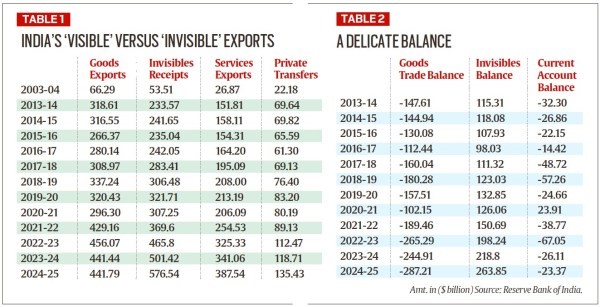
- 11 Jul 2025
In News:
India's foreign trade landscape has undergone a fundamental transformation, with "invisible" trade—comprising services exports and private remittance inflows—emerging as a dominant contributor to foreign exchange earnings. Traditionally, international trade is associated with the export and import of physical goods. However, the increasing weight of intangibles such as services and remittances has positioned India as the “office of the world” in contrast to China’s role as the “factory of the world.”
Trends in India’s Visible vs Invisible Trade
India’s merchandise exports rose from $66.3 billion in 2003–04 to $456.1 billion in 2022–23, before dipping slightly to $441.8 billion in 2024–25. While goods exports have fluctuated with global economic cycles, invisibles have exhibited resilient and consistent growth.
- Invisible receipts increased from $53.5 billion in 2003–04 to $233.6 billion in 2013–14, and further to $576.5 billion in 2024–25.
- In 2024–25, invisible receipts exceeded merchandise exports by $135 billion, reversing the trend from a decade earlier.
Composition of Invisible Earnings
- Services Exports:
- Valued at $387.5 billion in 2024–25, up from $26.9 billion in 2003–04.
- Software services remain dominant ($180.6 billion), but significant growth has also been noted in business, financial, and communication services ($118 billion).
- Private Transfers (Remittances):
- Amounted to $135.4 billion in 2024–25, up from $22.2 billion in 2003–04.
- Reflects the export of Indian human capital, with inflows from expatriates, especially in the Gulf and North America.
Economic Significance
- Current Account Management: India’s merchandise trade deficit ballooned to $287.2 billion in 2024–25, but this was substantially offset by a net invisible surplus of $263.8 billion, keeping the current account deficit at $23.4 billion, lower than 2013–14 levels.
- Geopolitical Immunity: Invisible earnings have remained relatively insulated from global trade tensions, protectionist tariffs, and geopolitical shocks. Unlike goods trade, services have not been significantly impacted by events such as the pandemic or global conflicts.
- Limited Policy Support, High Impact: Despite minimal reliance on FTAs, tariff negotiations, or production-linked incentives, invisibles have flourished—highlighting the natural comparative advantage India holds in the global services and remittances market.
Comparison with China
China recorded a merchandise trade surplus of $768 billion in 2024, but faced a deficit of $344.1 billion on the invisibles front. In contrast, India posted a services trade surplus of $188.8 billion, emphasizing its role as a global service hub rather than a manufacturing powerhouse.
Conclusion
India’s foreign trade narrative has shifted decisively towards intangible exports. With robust growth in services and remittances, invisibles have become the invisible hand stabilizing India’s external sector. For sustained macroeconomic resilience, policymakers must now institutionalize support for the services sector, facilitate human capital mobility, and leverage digital infrastructure to enhance India’s global footprint in knowledge-based trade.
AI-Based Warfare in the Agentic Age

- 10 Jul 2025
In News:
Artificial Intelligence (AI) is transforming the character of warfare, ushering in an era of “agentic warfare”—a paradigm where autonomous systems, not humans, are poised to dominate the battlefield. Military strategies today increasingly hinge on multi-domain operations (MDO) involving land, air, sea, cyber, and space, where decision-making speed, precision, and adaptability are crucial. AI is central to enabling this shift—but it comes with a critical caveat: energy dependency.
AI and the New Battlefield
Modern warfare relies on Big Data analytics, machine learning (ML), predictive modelling, and natural language processing (NLP)—tools that demand not only computational power but also massive energy inputs. Countries like China have already made significant strides. Its military, the People’s Liberation Army (PLA), is actively integrating AI into combat functions under the doctrine of “intelligentised warfare.” Applications range from automating artillery systems to deploying generative AI-enabled drones for radar targeting.
China’s AI developments, such as the DeepSeek model, complement battlefield deployments. Of concern to India is China’s support to Pakistan’s Centre of Artificial Intelligence and Computing (PAIC), which focuses on Cognitive Electronic Warfare. India’s Deputy Chief of Army Staff, Lt Gen Rahul Singh, revealed that Pakistan possibly used real-time Chinese satellite intelligence and AI analytics during Operation Sindoor.
India’s Response and Gaps
India was an early mover, establishing the DRDO’s Centre for Artificial Intelligence and Robotics (CAIR) in 1986 to develop AI applications for target recognition, navigation, logistics, and mine detection. However, the pace of deployment has lagged, especially compared to China. Lt Gen Amardeep Singh Aujla underlined the increasing intensity of warfare, emphasizing the necessity of C4ISR (Command, Control, Communications, Computers, Intelligence, Surveillance and Reconnaissance) and civil-military fusion to enhance readiness.
The Centre for Joint Warfare Studies (CENJOWS) notes the growing global use of AI in weapon systems, battlefield simulation, and cyber defence. For instance, Ukraine’s AI-powered drones have autonomously struck Russian oil facilities. Israel’s “Lavender” AI system has reportedly identified over 37,000 Hamas targets, exemplifying the real-time integration of AI in warfare.
Energy: The Hidden Backbone
While AI’s capabilities are evident, its energy appetite is equally significant. AI infrastructure—data centres, servers, and cooling systems—requires vast amounts of electricity, often from stable sources like nuclear energy. India’s current installed nuclear capacity (~7.5 GW) is starkly inadequate when compared to countries like South Korea (over 22 GW), limiting India's long-term AI defence potential.
Kris P. Singh, CEO of Holtec International, argues that Small Modular Reactors (SMRs) placed near AI data hubs could be the solution. He proposes co-locating SMRs with military or strategic data centres to power next-generation capabilities like drones, smart soldiers, and robotics. India's past policy to limit thermal power and insufficient storage in renewable energy has created grid instability, further compounding the challenge.
Way Forward
To remain strategically relevant, India must:
- Accelerate AI adoption in defence through institutional synergy and private sector participation.
- Invest in energy infrastructure, particularly clean, stable sources like SMRs.
- Promote indigenous AI R&D, focusing on secure, sovereign data ecosystems.
- Establish MDO doctrines incorporating AI, space, and cyber capabilities.
In the agentic age, the nation that combines AI mastery with robust energy capacity will define the future of warfare. India’s security strategy must urgently align with this reality.
India’s Emerging Equity Model
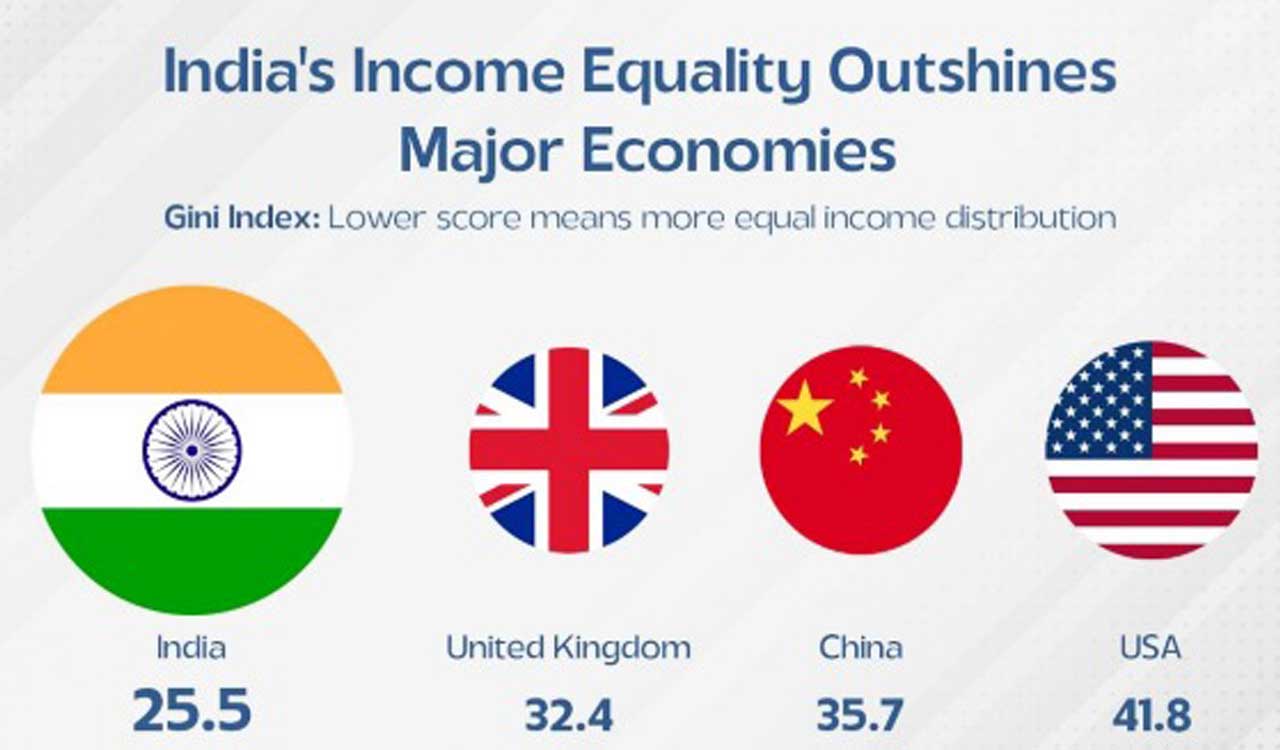
- 09 Jul 2025
In News:
According to the World Bank’s latest estimates, India has emerged as the fourth most income-equal country in the world, registering a Gini Index of 25.5 in 2022–23. This significant milestone places India just behind the Slovak Republic, Slovenia, and Belarus, surpassing many advanced and developing economies in income equality.
This achievement is paralleled by a sharp decline in extreme poverty—from 16.2% in 2011–12 to 2.3% in 2022–23—with over 171 million people lifted out of poverty in the past decade. It reflects the combined impact of sustained economic growth and the Indian state’s proactive welfare architecture.
Understanding the Gini Index and India’s Ranking
The Gini Index measures income inequality on a scale from 0 (perfect equality) to 100 (maximum inequality). With a score of 25.5, India falls into the "moderately low inequality" bracket (25–30), indicating a fair distribution of income. This is in sharp contrast to countries like China (35.7) and the United States (41.8). India's position is particularly noteworthy given its population size and diversity.
Poverty Reduction as a Catalyst for Equality
A key driver of this improved equality has been the drastic reduction in poverty, based on the World Bank’s threshold of $2.15/day (PPP). The decline to 2.3% extreme poverty signals successful poverty alleviation through targeted welfare, representing one of the most remarkable social transitions globally in the last decade.
Government Schemes and Inclusive Interventions
India’s equity gains are not accidental but the result of well-designed and executed social policies, supported by digital infrastructure and targeted delivery.
1. Financial Inclusion and DBT
- PM Jan Dhan Yojana enabled over 55 crore bank accounts, promoting financial access across rural and urban populations.
- Aadhaar-linked Direct Benefit Transfers (DBT) reduced leakages, saving ?3.48 lakh crore by March 2023.
2. Health Security: Ayushman Bharat provides ?5 lakh insurance coverage, with over 41 crore beneficiaries enhancing access to secondary and tertiary healthcare.
3. Food Security: PM Garib Kalyan Anna Yojana (PMGKAY) ensured food availability to 80 crore people during COVID-19 and beyond, securing nutrition and resilience.
4. Livelihood Support: Stand-Up India and PM Vishwakarma Yojana support entrepreneurship, skilling and credit access for SCs, STs, women, and traditional artisans.
A Model of Equity-Oriented Growth
India has demonstrated that inclusive digital governance, if integrated with fiscal discipline and political will, can lead to tangible socioeconomic transformation. The convergence of growth, inclusion, and resilience sets a strong foundation for social equity.
A Social Welfare Department official aptly noted, “The Gini Index of 25.5 reflects real change—better access to jobs, food, healthcare, and dignity.”
Global Context and India’s Unique Approach
Unlike Scandinavian countries that rely on entrenched welfare states, India’s equality model stems from scalable digital infrastructure, direct cash transfers, and community-centric schemes. Among 167 countries surveyed, India’s outcome stands as a beacon for other developing nations striving to achieve balanced and sustainable development.
Global Drought Hotspots 2023–2025
- 08 Jul 2025
In News:
Between 2023 and 2025, the world has witnessed one of the most extensive drought-induced crises in recorded history. According to the UN Convention to Combat Desertification (UNCCD) and the U.S. National Drought Mitigation Center (NDMC), droughts intensified by climate change, El Niño, and poor land and water management are triggering cascading failures in food, water, energy, and socio-economic systems across continents.
A Slow-Moving Catastrophe
Labelled as “slow-moving catastrophes,” these droughts have disrupted the lives of millions across Africa, the Mediterranean, Latin America, and Asia, creating a silent but widespread humanitarian emergency. In Eastern and Southern Africa, over 90 million people face acute hunger. Zimbabwe’s maize production declined by 70% in 2024, while Zambia's Kariba Dam fell to 7% capacity, resulting in 21-hour daily blackouts and the collapse of health and industrial services.
The Mediterranean region faces shrinking agriculture and groundwater reserves. Spain's olive oil production dropped by 50%, leading to price spikes across Europe. In Türkiye, groundwater depletion triggered over 1,600 sinkholes, raising alarm over infrastructure safety and aquifer depletion.
In the Amazon Basin, rivers reached record low levels, killing over 200 endangered dolphins and leaving Indigenous communities without drinking water. The Panama Canal, vital for global trade, saw daily ship transits fall from 38 to 24, forcing rerouting and delaying supply chains. Similarly, Southeast Asia, including India and Thailand, suffered drought-related disruptions in rice and sugar production, affecting global food prices.
Social Disintegration and Vulnerabilities
The report underscores how drought disproportionately affects women, children, and marginalized communities. In Ethiopia, child marriages doubled in drought-hit regions as families exchanged dowries for survival. Zimbabwe reported mass school dropouts due to hunger and sanitation challenges. In Somalia, 4.4 million people now face food crises, with 1.7 million children suffering from acute malnutrition.
India in the Drought Lens
India, though not as severely impacted, faces growing intra-seasonal monsoon variability. River basins like Krishna and Godavari endure recurrent droughts due to groundwater over-extraction, deforestation, and inefficient irrigation. Drought-prone states like Maharashtra, Rajasthan, and Karnataka are witnessing farmer distress, inflationary pressures, and internal migration.
Drivers and Consequences
The principal drivers include global warming, unsustainable land use, El Niño amplification, and poor governance. Drought is no longer a mere meteorological event but a multi-dimensional crisis affecting health, education, biodiversity, economy, and social stability. The OECD estimates droughts today cost twice as much as in 2000, with an expected rise of 35–110% by 2035.
Call to Action: Building Drought Resilience
The report calls for urgent global and national action:
- Early Warning Systems: For real-time drought and impact monitoring.
- Nature-Based Solutions: Restoring watersheds, adopting drought-resilient crops.
- Drought-Resilient Infrastructure: Off-grid power, alternative water sources.
- Gender-Sensitive Adaptation: Empowering women and girls during crises.
- Transboundary Cooperation: Joint management of river basins and trade routes.
- Financial Mobilization: Through platforms like IDRA for vulnerable nations.
Conclusion
Droughts are no longer sporadic natural phenomena; they are structural emergencies threatening the planet’s sustainability and human well-being. Without urgent investment in resilience, governance, and international cooperation, these creeping crises could become the defining climate emergency of the 21st century.
Employment-Linked Incentive (ELI) Scheme
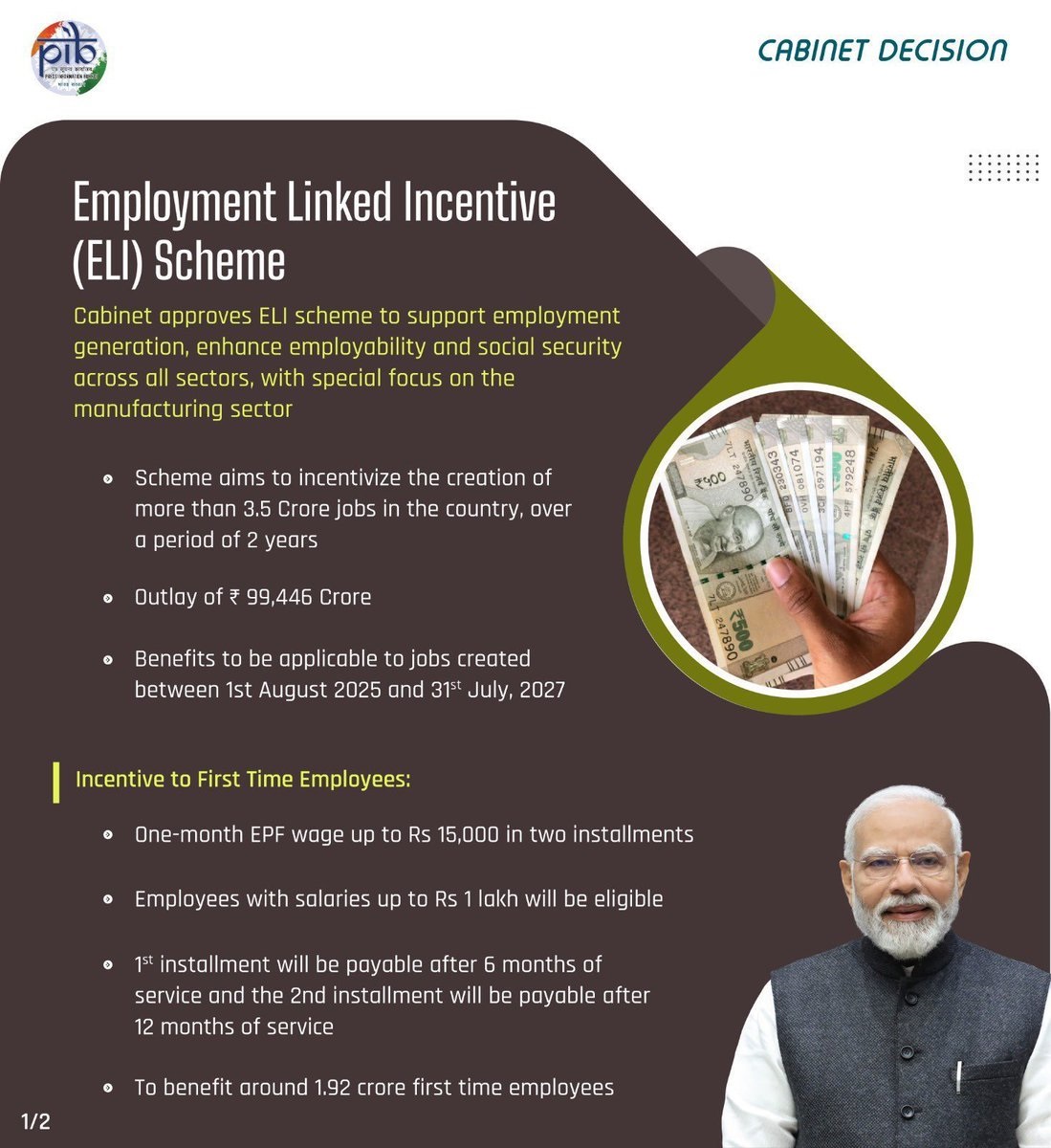
- 07 Jul 2025
In News:
The Government of India has approved the Employment-Linked Incentive (ELI) Scheme with an outlay of ?99,446 crore, aimed at promoting formal employment generation, particularly in the manufacturing sector. Announced in the 2024–25 Union Budget, the scheme is part of a broader employment strategy that includes internships, skill development, and youth engagement initiatives.
Key Features of the Scheme
The ELI scheme, operational from August 1, 2025 to July 31, 2027, targets the creation of over 3.5 crore jobs. Of these, 1.92 crore newly employed individuals are expected to benefit directly. It is being implemented through the Employees Provident Fund Organisation (EPFO).
For eligible new recruits earning up to ?1 lakh/month:
- EPFO will transfer one month’s EPF wage (up to ?15,000) in two instalments—after 6 and 12 months of continuous service.
- Part of the incentive will be deposited in a fixed savings instrument, withdrawable later by the employee.
Incentives for employers include:
- ?3,000 per employee/month for two years for each new employee retained for at least six months.
- For the manufacturing sector, this benefit may extend into the third and fourth years.
Who Benefits?
The scheme primarily benefits:
- New entrants into the formal labour market.
- Labour-intensive sectors, especially manufacturing.
- Employers incentivized to sustain job creation.
- Small businesses, if implementation is expanded inclusively.
Industry Response
The industry has largely welcomed the initiative. According to FICCI’s former president, it is an “innovative” step that rewards both employees and employers. The Confederation of Indian Industry (CII) noted its potential to reshape India’s employment architecture.
However, Laghu Udyog Bharati, representing micro and small businesses, emphasized the need to include units with less than 20 employees, which dominate India’s enterprise landscape. Entrepreneurs’ associations also called for simplified and direct reimbursement models linked to verified payroll data, particularly under the MSME Ministry.
Trade Union Perspectives
While the Bharatiya Mazdoor Sangh (BMS) cautiously endorsed the scheme, other central trade unions criticized it for allegedly favoring corporates. They compared it to the Production-Linked Incentive (PLI) Scheme of 2020, where funds reportedly failed to create jobs and ended up benefiting large firms. Unions have demanded expansion of social security coverage and improved quality of employment, rather than subsidizing private sector wage bills.
Concerns and Challenges
Key concerns include:
- The role of EPFO, traditionally a custodian of worker savings, now being tasked with implementing a government-funded job creation scheme.
- Lack of clarity on fund disbursement responsibilities, raising doubts over accountability and oversight.
- Fear of misuse, given past precedents of incentive leakage.
- The structural issue of economic slowdown and stagnant worker incomes, which the scheme doesn’t directly address.
Conclusion
The ELI Scheme is a bold intervention in India’s formal employment landscape, combining wage subsidies with retention incentives. However, for it to be truly transformative, it must ensure inclusive coverage, maintain transparency, and be integrated into a broader strategy that enhances domestic demand and quality of employment. As India aims for equitable economic growth, effective implementation and stakeholder trust will be critical to its success.
PM-POSHAN
- 06 Jul 2025
In News:
The midday meal scheme, introduced a century ago by the Madras Municipal Corporation in 1925, has evolved into a cornerstone of India’s social welfare and education policy. Now known as PM-POSHAN (Pradhan Mantri Poshan Shakti Nirman), the scheme provides cooked meals to students up to Class 8 in government and aided schools. However, despite its proven benefits in enhancing enrolment, retention, and learning outcomes, the scheme continues to face serious implementation challenges across Indian states.
Originally launched nationwide in 1995 as the National Programme of Nutritional Support to Primary Education, the scheme was rebranded as PM-POSHAN for 2021–2026, with shared funding between the Centre and States. Yet, funding shortfalls, delayed disbursements, and logistical bottlenecks have undermined its effectiveness. In states like Kerala and Uttar Pradesh, headteachers report borrowing funds and delaying salaries to cover rising food and fuel costs. Teachers are forced to juggle between administrative duties and managing meals, often without adequate staff or infrastructure.
Tamil Nadu has emerged as a success story with the Chief Minister’s Breakfast Scheme launched in 2022, now reaching over 17.5 lakh students. The state also assesses students’ Body Mass Index (BMI), integrates Anganwadis for early nutrition, and prioritizes public investment in health and education, reflecting the Dravidian model. This has led to a measurable decline in malnutrition and school dropout rates, especially among girls.
In contrast, states like Bihar lag behind, with widespread complaints of mismanagement and food safety lapses. Caste-based discrimination further mars the scheme’s inclusive vision, with reports from both north and south India highlighting segregated seating and removal of cooks from marginalized communities due to social prejudice.
Despite PM-POSHAN’s intended goals, its design often reflects a one-size-fits-all approach, neglecting state-specific challenges. For example, nutrition gardens or IT-based monitoring systems remain tokenistic in under-resourced regions. The uniform allocation norms do not account for price inflation, regional dietary needs, or additional requirements like eggs or milk, leading to nutritional gaps.
Experts argue for a context-sensitive redesign. Dipa Sinha, a development economist, emphasizes that centrally sponsored schemes must account for states’ limited fiscal capacity, especially as most taxes are collected by the Union government. There is a need for increased central assistance and flexibility in fund allocation to match ground realities.
Moving forward, replicating best practices from Tamil Nadu, Kerala, and Odisha, promoting community-level engagement, and allowing NGOs to address psychosocial gaps can help strengthen the programme. Customizing menus based on local needs, ensuring timely fund flow, recruiting adequate staff, and addressing social discrimination are essential to achieve the dual goals of universal education and child nutrition.
Conclusion
PM-POSHAN, though visionary, struggles in its current form. To fulfill its true potential as a tool for social justice and inclusive development, it must shift from being a centrally driven subsidy programme to a locally empowered, child-centric nutrition model embedded within the education system.
A New BHARAT: Establishing India-Specific Parameters for Healthy Ageing
- 05 Jul 2025
Introduction
As India advances toward becoming a super-aged society by the middle of this century, the focus must shift from merely increasing lifespan to enhancing healthspan—the period of life spent in good health. Recognising this, the Indian Institute of Science (IISc), Bengaluru, launched a pioneering research initiative titled BHARAT (Biomarkers of Healthy Aging, Resilience, Adversity, and Transitions). It aims to map physiological, genetic, environmental, and socio-economic indicators that define healthy ageing in the Indian context.
The Need for India-Specific Healthy Ageing Parameters
Global research in ageing has largely been Western-centric, leading to the development of diagnostic thresholds, biomarkers, and treatment regimes based on non-Indian populations. This lack of contextual relevance often results in misdiagnosis and inappropriate treatments in countries like India. For instance, biomarkers such as cholesterol, vitamin D, or C-reactive protein (CRP) may exhibit different baseline levels among Indians due to genetic, nutritional, and environmental factors, but are often interpreted using Western standards.
Furthermore, while life expectancy has increased globally, the incidence of age-related disorders like Parkinson’s and dementia is projected to rise sharply in India—by 168% and 200%, respectively, by 2050. Thus, there is an urgent need to identify early biomarkers that can predict organ deterioration before the onset of overt disease.
BHARAT Study: Objectives and Methodology
BHARAT is part of IISc’s Longevity India Programme, and seeks to establish a Bharat Baseline—a reference for what is physiologically normal for the Indian population across age groups. It will build a comprehensive, multidimensional database that includes:
- Genomic biomarkers (genetic predisposition to diseases)
- Proteomic and metabolic profiles (pathway-level health indicators)
- Environmental and lifestyle factors (pollution exposure, dietary habits)
Crucially, it acknowledges that chronological age does not always match biological age, and seeks to develop more nuanced, organ-specific age markers that could enable preventive and personalised interventions.
Role of Artificial Intelligence
Given the complexity and volume of biological and lifestyle data, artificial intelligence (AI) and machine learning models are essential tools in this initiative. These technologies will aid in pattern recognition, risk prediction, and simulation of intervention outcomes, ultimately helping researchers select the most effective strategies before launching costly human trials.
Challenges and the Way Ahead
India’s vast genetic, geographic, and socio-economic diversity presents both opportunities and challenges. The BHARAT team faces hurdles such as:
- Difficulty in recruiting healthy adult volunteers
- Securing long-term public and private funding
- Scaling the study to ensure pan-India representation
However, the potential impact is profound. By building an India-specific ageing dataset, BHARAT can influence the development of better diagnostics, public health policies, and preventive healthcare systems for an ageing population.
Conclusion
The BHARAT study marks a critical shift in India’s biomedical research priorities, focusing not only on longevity but on quality of life during ageing. As India prepares to navigate the challenges of demographic transition, initiatives like BHARAT will be instrumental in creating a resilient, inclusive, and health-aware society, rooted in evidence that reflects its own people.
Changing Patterns in Agricultural Output
- 04 Jul 2025
In News:
The Ministry of Statistics and Programme Implementation (MoSPI) recently released the “Value of Output from Agriculture and Allied Sectors” report (June 2025), revealing significant structural changes in India’s agricultural production and consumption over the past decade. The data reflects a shift away from staple cereals toward high-value crops such as fruits, vegetables, and spices—mirroring broader socio-economic transformations.
Key Findings: Rise of High-Value Crops
The Gross Value of Output (GVO)—the total value of agricultural production before deducting input costs—highlights changing food habits and production priorities. Between 2011–12 and 2023–24, the GVO of several non-traditional crops rose sharply. For example:
- Strawberries saw a 40-fold rise in GVO at constant prices (from ?1.32 crore to ?55.4 crore), and nearly 80-fold at current prices.
- Pomegranate GVO quadrupled to ?9,231 crore.
- Parmal (parwal) and pumpkin increased by 17 and 10 times, respectively.
- Mushroom and dry ginger witnessed 3.5x and 285% growth, the latter aided by improved agro-processing infrastructure.
This transformation indicates increasing demand for horticultural and niche crops with higher returns, aligning with government focus on nutritional security and export diversification.
Declining Importance of Cereals
Contrasting the rise of high-value crops is the decline in cereal dominance. The share of cereals in agricultural GVO fell from 17.6% (2011–12) to 14.5% (2023–24). Simultaneously, consumption data shows cereals’ share in urban MPCE dropped from 6.61% to 3.74%, and in rural MPCE from 10.69% to 4.97% over the same period. This trend aligns with Engel’s Law, where rising incomes lead to a shift in spending from staples to diversified food categories.
Rising Animal Product Consumption
The share of meat in agricultural GVO increased from 5% to 7.5%, reflecting higher protein intake as incomes grew. However, its GVO growth (131%) was still lower than that of some horticultural produce like strawberry (4,000%).
Changing Consumption Patterns
Data from the 2023–24 Household Consumption Expenditure Survey (HCES) supports this structural shift. The share of fresh fruits in rural MPCE rose slightly from 2.25% to 2.66%, while in urban areas it slightly declined. Yet, a 2024 study co-authored by Shamika Ravi indicates broader accessibility, with the proportion of rural households consuming fresh fruits increasing from 63.8% to 90.3%, especially among the bottom 20% income group.
Policy and Economic Implications
This transition from staple grains to high-value crops is driven by technological advancements, shifting consumer preferences, nutritional awareness, export potential, and government support for crop diversification. It reflects a move toward a more resilient, market-oriented agricultural system.
However, challenges remain in ensuring equitable access to high-value markets, stabilizing prices, and addressing risks associated with monoculture trends.
Conclusion
The MoSPI data reveals a critical inflection point in Indian agriculture. While traditional staples are declining in prominence, the rise of high-value horticulture and livestock signals both economic opportunity and the need for targeted policy to support inclusive, nutrition-sensitive agricultural growth.
Conserving the Western Ghats
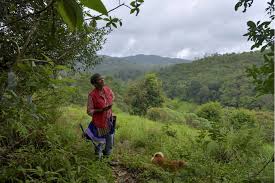
- 03 Jul 2025
Context:
The Western Ghats, a UNESCO World Heritage Site and one of the world’s eight hottest biodiversity hotspots, stretch across six Indian states—Gujarat, Maharashtra, Goa, Karnataka, Kerala, and Tamil Nadu. Rich in endemic flora and fauna, they play a critical role in influencing the Indian monsoon, regulating climate, and sustaining major river systems like the Godavari, Krishna, and Kaveri. However, this ecologically sensitive region faces growing environmental and governance challenges.
Renowned ecologist Madhav Gadgil has strongly advocated for a community-led conservation model, citing the failures of top-down forest bureaucracy and the neglect of the Forest Rights Act (FRA), 2006. He argues that without empowering local communities, conservation efforts will remain ineffective.
Geological and Ecological Background
The Western Ghats are ancient, formed through Precambrian cratonic uplift and Deccan Traps volcanism over 600 million years ago. The western edge of the Deccan Plateau subsided post-Gondwana breakup, forming the escarpments we see today. Over time, monsoon-fed rivers carved deep valleys, resulting in the current terrain of lateritic plateaus and ridges.
With over 7,400 species—many of them endemic—the region is home to unique ecosystems. Yet, despite its ecological importance, conservation has suffered due to flawed governance, industrial exploitation, and neglect of community rights.
Challenges in Western Ghats Conservation
- Flawed Forest Governance:Government agencies often rely on outdated and inflated forest data. For instance, Gadgil's 1975 study in Uttara Kannada revealed bamboo stocks were overestimated tenfold to justify resource extraction.
- Industrial Pollution:Unregulated industries operate in fragile zones. The Grasim Rayon Factory in Kerala discharged mercury into the Chaliyar River, decimating fisheries and affecting tribal livelihoods.
- Non-implementation of FRA (2006):Despite legal entitlements, Community Forest Rights (CFR) remain unimplemented in most districts, particularly in Kerala and Karnataka.
- Monoculture Plantations:Replacement of native forests with eucalyptus and acacia has led to biodiversity loss, declining soil health, and reduced pollinator populations, as seen in Wayanad.
- Forest Fires from Unsustainable Practices:Fire-based tendu leaf collection methods degrade forest cover. For instance, Gadchiroli and Karnataka have witnessed increased fire incidents.
- Inaccessible Ecological Data:Forest data remains aggregated and delayed. Studies using NRSC and Global Forest Watch have exposed discrepancies in official forest cover claims.
Committee Recommendations
- WGEEP (2011), led by Gadgil, advocated for Ecologically Sensitive Area (ESA) zoning, Gram Sabha-led conservation, and strict implementation of CFR.
- The Kasturirangan Committee (2013) diluted these recommendations by reducing ESA coverage and favouring development-centric governance.
Way Forward
- Implement CFR Provisions: E.g., Pachgaon in Maharashtra demonstrates how CFR-based governance can lead to sustainable bamboo harvesting and fire prevention.
- Promote Democratic Decentralisation: Empowering Gram Sabhas, as in Kerala’s VSS model, ensures accountability and local participation.
- Modernise Ecological Monitoring: Tools like Google Earth and Bhuvan offer real-time forest tracking, countering manipulated datasets.
- Ban Unsustainable Industries in ESA: SC orders on mining bans in wildlife corridors must be enforced, especially in states like Goa and Kerala.
- Support Biodiversity-Friendly Livelihoods: NTFP-based enterprises, eco-tourism, and agroforestry, like Wayanad tribal co-operatives selling organic turmeric and wild honey, can align conservation with income.
Conclusion
The Western Ghats are central to India’s ecological, hydrological, and cultural stability. Conservation rooted in community empowerment, transparent governance, and ecological integrity is essential. Only a democratic, decentralized, and data-driven model, as envisioned by Gadgil, can secure the future of this ecological treasure.
Statistical Report on Value of Output from Agriculture and Allied Sectors (2011–12 to 2023–24)
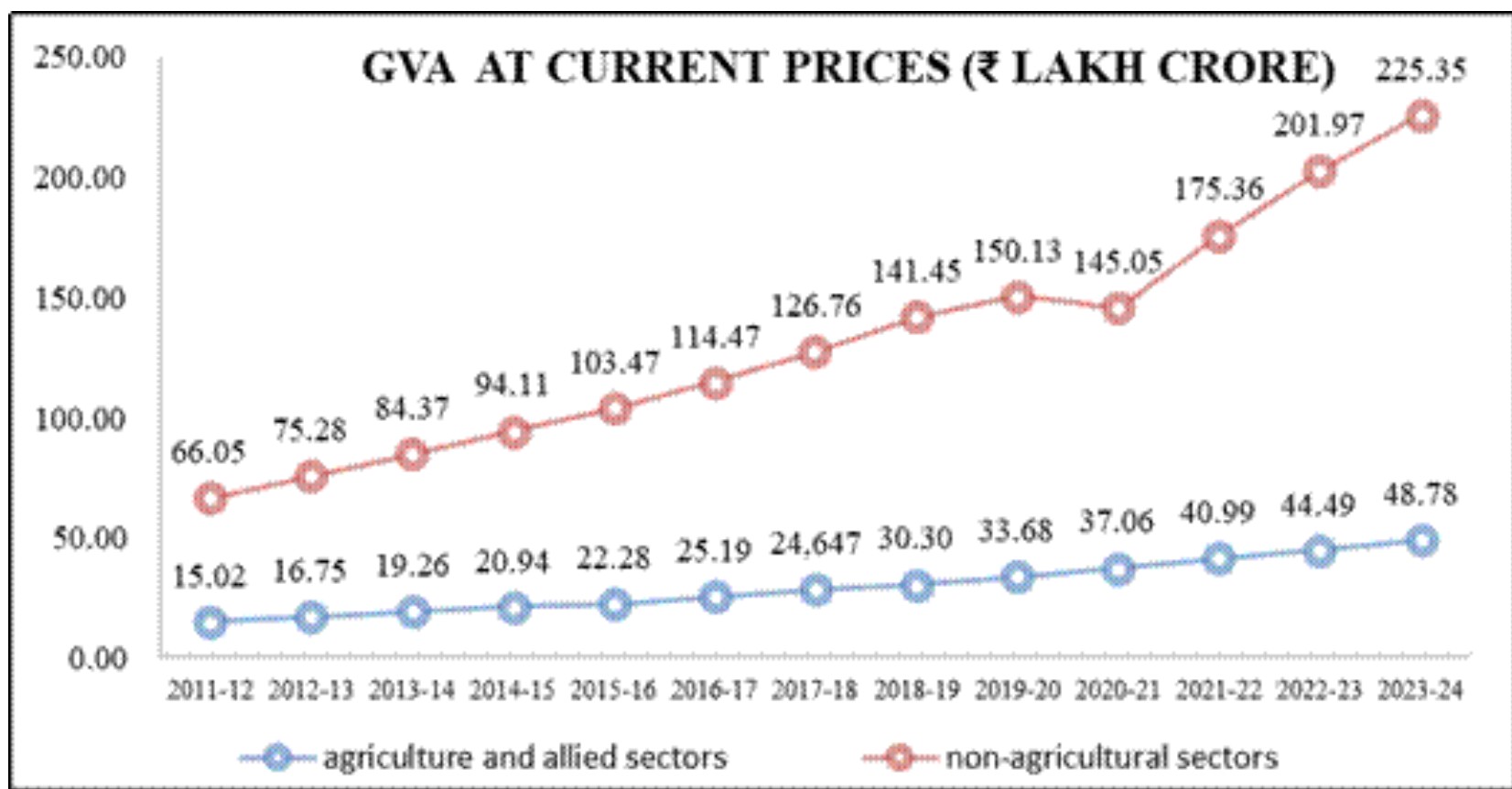
- 02 Jul 2025
In News:
The National Statistics Office (NSO), under the Ministry of Statistics and Programme Implementation, released its annual publication, Statistical Report on Value of Output from Agriculture and Allied Sectors (2011–12 to 2023–24). This comprehensive report provides granular data on output values across crop, livestock, forestry, and fisheries sectors at both current and constant (2011–12) prices, offering crucial insights into trends, sectoral contributions, and regional dynamics in Indian agriculture.
Growth Trajectory and Sectoral Contributions
The Gross Value Added (GVA) of agriculture and allied sectors at current prices rose by 225%, from ?1,502 thousand crore in 2011–12 to ?4,878 thousand crore in 2023–24. At constant prices, the Gross Value of Output (GVO) increased by 54.6%, from ?1,908 thousand crore to ?2,949 thousand crore during the same period.
The crop sector remained the backbone of the agricultural economy, contributing ?1,595 thousand crore or 54.1% of the total GVO in 2023–24. Within this, cereals and fruits & vegetables together formed 52.5% of the crop output. Notably, paddy and wheat alone accounted for 85% of cereal GVO. Five states—Uttar Pradesh, Madhya Pradesh, Punjab, Telangana, and Haryana—contributed 53% of the total cereal output, with Uttar Pradesh maintaining its top position despite a decline in share from 18.6% to 17.2%.
Shifting Dynamics in Horticulture
The horticulture sector has witnessed dynamic changes. In fruits, banana (?47,000 crore) surpassed mango (?46,100 crore) in 2023–24, breaking mango’s longstanding dominance. In the vegetable group, potato retained its lead, with GVO rising from ?21,300 crore to ?37,200 crore between 2011–12 and 2023–24.
Floriculture emerged as a growing commercial interest, with its GVO nearly doubling from ?17,400 crore to ?28,100 crore. The shifts in leading states in the production of fruits, vegetables, and floriculture underscore regional diversification in agricultural growth.
Rise of Livestock and Allied Sectors
The livestock sector experienced substantial growth, with its GVO nearly doubling from ?488 thousand crore to ?919 thousand crore. While milk remained the dominant product, its share slightly decreased from 67.2% to 65.9%, whereas meat products increased their share from 19.7% to 24.1%.
In the condiments and spices category, Madhya Pradesh emerged as the top contributor with a 19.2% share, followed by Karnataka (16.6%) and Gujarat (15.5%).
The forestry and logging sector saw a moderate increase in GVO from ?149 thousand crore to ?227 thousand crore. Significantly, the share of industrial wood surged from 49.9% to 70.2%, indicating growing commercialization.
Emerging Importance of Fisheries
The fishing and aquaculture sector is becoming increasingly vital, with its contribution to total agricultural GVO rising from 4.2% to 7.0% over the period. While inland fish share declined from 57.7% to 50.2%, marine fish increased from 42.3% to 49.8%. States like West Bengal and Andhra Pradesh witnessed substantial structural shifts in fisheries production patterns.
China-Led Trilateral Nexus: A Strategic Challenge for India

- 01 Jul 2025
Context:
In a significant development, China recently hosted the first China-Pakistan-Bangladesh trilateral dialogue in Kunming, following a similar China-Pakistan-Afghanistan meeting. These efforts signal Beijing’s strategic push to consolidate its influence in South Asia, creating new geopolitical challenges for India.
Understanding the Emerging Nexus
The trilateral arrangements—China-Pakistan-Bangladesh and China-Pakistan-Afghanistan—are part of China’s broader strategic framework to establish deeper regional roots. China drives the agenda, with Pakistan gaining strategic relevance, while Bangladesh and Afghanistan are drawn in for economic, political, and connectivity incentives.
Motivations Behind the Trilateralism
- China aims to dilute India’s regional influence, expand the Belt and Road Initiative (BRI), and leverage Pakistan to complicate India's neighbourhood strategy.
- Pakistan seeks Chinese economic and strategic backing to offset India, especially after facing diplomatic isolation globally.
- Bangladesh and Afghanistan are attracted by Chinese infrastructure investment, diplomatic weight, and development assurances in a multipolar Asia.
Historical Context
- 1962 Indo-China War: Set the foundation for Sino-Pakistan convergence as a counterweight to India.
- 1965 Siliguri Strategy: Pakistan attempted to encircle India with support from China, Nepal, and East Pakistan, a strategy echoing today.
- China’s Shielding at UNSC: Regular blocking of India’s attempts to designate Pakistan-based terrorists, such as Lashkar-e-Taiba operatives, at the United Nations.
- Operation Sindoor, 2025: Pakistan deployed Chinese drones and radars; Beijing criticized India’s counterstrike, reaffirming its alliance.
Implications for India
- Security Threats: China-Pakistan cooperation now gains a regional sheen, legitimizing their cross-border strategies, e.g., the Pahalgam attack (2025).
- Diplomatic Setbacks: China’s increasing footprint in Dhaka and Kabul limits India’s traditional influence.
- Strategic Encroachment: Enhanced trilateralism boosts BRI's presence in South Asia, undercutting India-led alternatives like BBIN or the Chabahar corridor.
Impact on South Asian Stability
- Regional Polarization: Smaller nations are forced to balance between India and China, causing strategic fragmentation.
- Risk of Proxy Conflicts: Chinese cover may embolden Pakistan’s use of cross-border terrorism.
- Dilution of Regional Forums: SAARC and other platforms may become ineffective under Chinese influence.
Way Forward for India
- Assert Strategic Redlines: India must clearly articulate consequences for neighbours compromising its sovereignty.
- Deepen Regional Cooperation: Utilize BIMSTEC, IORA, and the Indo-Pacific frameworks to counterbalance Chinese presence.
- Economic Diplomacy: Increase targeted investments, credit lines, and market access to offer credible alternatives to BRI.
- Defence Engagement: Expand military and strategic ties with Bangladesh, Maldives, and Afghanistan.
- Narrative Building: Promote India as a cooperative, non-hegemonic regional partner to counter Chinese narratives.
Conclusion
The China-led trilateral dialogues mark a recalibration in South Asia’s geopolitical landscape aimed at constraining India’s rise. India’s response must be multifaceted—merging strategic assertiveness with regional diplomacy and economic outreach. A confident and inclusive India can safeguard its interests and lead a stable, multipolar South Asian order.
Foreign Universities in India: A New Era in Higher Education
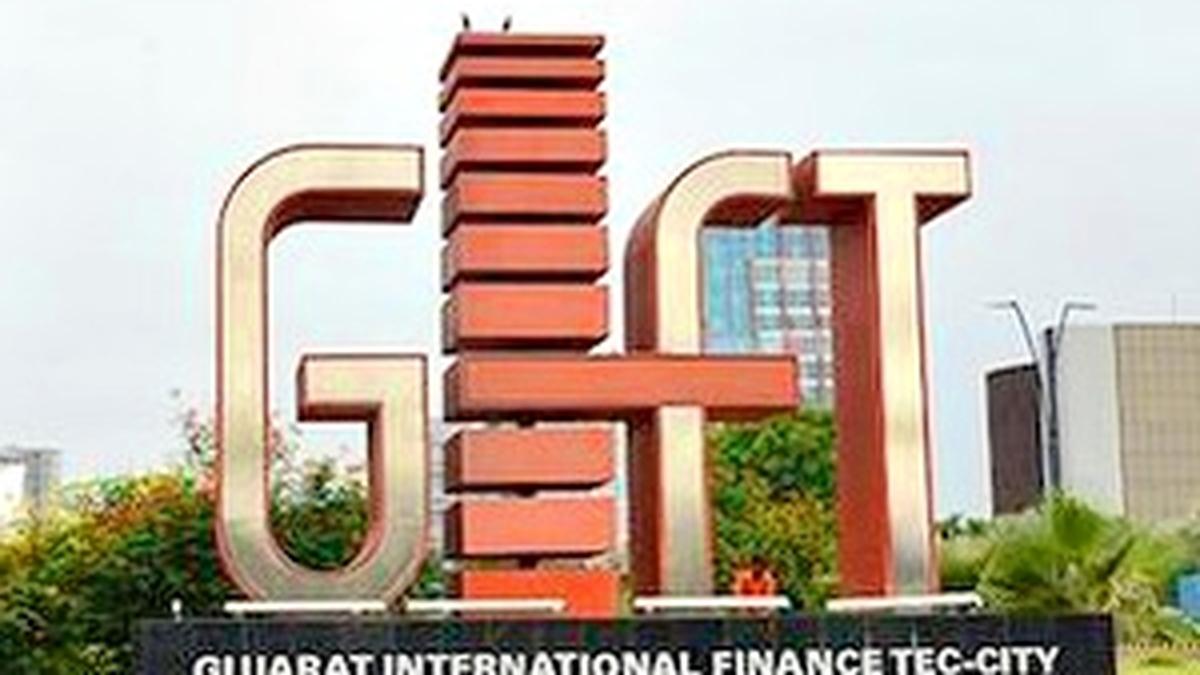
- 30 Jun 2025
Context:
India is witnessing a transformative moment in its higher education sector with globally reputed foreign universities preparing to set up campuses within the country. Enabled by the UGC (Setting up and Operation of Campuses of Foreign Higher Educational Institutions in India) Regulations, 2023, and inspired by the vision of the National Education Policy (NEP) 2020, this move could reshape the academic landscape. Locations such as GIFT City (Gujarat) and Navi Mumbai have been identified as early sites for these institutions. As of mid-2025, seven universities from the UK, five from Australia, and one each from the US, Canada, and Italy have initiated or secured regulatory approvals.
Drivers of Foreign University Interest in India
- Demographic and Economic Potential:India hosts over 40 million students in higher education, with a Gross Enrolment Ratio (GER) below 30% (AISHE 2021–22), indicating untapped potential. A growing urban middle class, rising aspirations, and the need for globally competitive education have made India an attractive destination.
- Global Decline in Student Numbers:Countries in the Global North face declining domestic enrolments due to falling birth rates. In 2023, international students accounted for 22% in the UK, 24% in Australia, and 30% in Canada. Top U.S. universities reported up to 27% international enrolments, underscoring their reliance on overseas students for revenue.
- Policy Tightening in Host Nations:Visa caps and policy restrictions in Australia, the UK, and Canada have constrained student inflows. Consequently, foreign institutions are exploring in-country campuses in emerging markets like India to maintain their global reach and financial sustainability.
Opportunities and Advantages
- Academic Diversification: Indian students will gain access to internationally benchmarked curricula, faculty, and research ecosystems without the need to go abroad.
- Cost-Effective Alternative: For students unable to afford international education, foreign campuses in India provide a more affordable and accessible option.
- Quality Enhancement: The presence of foreign institutions could push Indian universities to raise academic standards through competition and collaboration.
- Regional Education Hub: India may also attract students from South Asia and Africa, enhancing its regional soft power.
Challenges Ahead
- Affordability: Tuition fees at foreign university campuses may still be beyond the reach of average Indian households, potentially limiting their impact to elite segments unless subsidized.
- Mixed Global Precedents: Similar ventures in China and Southeast Asia have seen varied success, with some facing regulatory and financial hurdles.
- Regulatory and Cultural Complexities: India’s bureaucratic processes, socio-cultural diversity, and policy uncertainties could pose operational challenges.
- Modest Initial Scale: In the short term, student intake and institutional presence are expected to be limited, with success depending on market response and adaptability.
Regulatory Framework and Future Outlook
The UGC’s FHEI Regulations, 2023, provide foreign institutions with autonomy in curriculum design, faculty recruitment, admissions, and repatriation of surplus funds. Only top 500 globally ranked universities, or those with exceptional expertise in niche domains, are eligible. These reforms reflect India’s commitment to making higher education globally competitive.
If effectively implemented, foreign campuses can act as catalysts for academic reform, foster global partnerships, and elevate India’s position as an education hub. However, ensuring affordability, equitable access, and academic integrity will be key to long-term success.
Strait of Hormuz Blockade
- 29 Jun 2025
Context:
The recent approval by Iran’s Parliament to potentially close the Strait of Hormuz, pending a final decision by its Supreme National Security Council, has intensified global concerns about energy security and geopolitical stability. This comes in response to U.S. strikes on Iranian military sites, marking a serious escalation in the Gulf region.
Strategic Significance of the Strait of Hormuz
- The Strait of Hormuz is a 33 km-wide maritime chokepoint linking the Persian Gulf with the Gulf of Oman and, subsequently, the Arabian Sea. It handles over 25% of global seaborne oil trade, 20% of global oil consumption, and 20% of LNG trade, primarily from Qatar.
- The geographical location of the strait—falling within Iranian and Omani territorial waters—makes it one of the most sensitive energy corridors globally.
- The strait’s vulnerability is compounded by its narrow 3 km-wide navigational channels, making it susceptible to blockades, naval mines, missile strikes, or cyberattacks.
- Historically, Iran has issued such threats without actual closure, even during periods of conflict, largely due to its own dependency on the strait for oil exports, especially to China.
Implications of a Blockade
A complete or even partial blockade could have catastrophic global impacts:
- Disruption of Global Energy Supply: With no alternative sea route, any disruption would curtaildaily movement of 20 million barrels of oil, causingsharp price spikes.
- Limited Overland Alternatives: Saudi Arabia’s East-West pipeline (5 million bpd) and the UAE’s Fujairah pipeline (1.8 million bpd) cannot compensate for the loss of Hormuz transit.
- Higher Shipping and Insurance Costs: Perceived risk increases freight rates, insurance premiums, and logistical expenses globally.
Impact on India
India, the third-largest crude oil consumer, imports over 85% of its oil and 50% of its natural gas. In May 2025 alone, 47% of India’s crude imports passed through the Strait of Hormuz. Disruption would result in:
- Price Volatility: Even if supplies are not entirely blocked, oil and gas prices will spike, stressing the economy.
- Macroeconomic Stress: A surge in energy prices could widen the trade deficit, weaken the rupee, reduce forex reserves, and raise inflation.
- Competitive Pressure: If Iran’s exports to China are blocked, Beijing may seek oil from other producers, increasing global demand and costs, impacting India’s energy budget.
India’s Resilience and Strategic Measures
Despite the vulnerabilities, India has certain buffers:
- Diversification of Energy Sources: Imports from Russia, the U.S., Africa, and Latin America are not dependent on Hormuz. Russian oil arrives via the Suez Canal or Cape of Good Hope, while Qatar’s LNG also uses alternate maritime routes.
- Strategic Reserves: India maintains 9–10 days’ worth of strategic oil reserves for emergencies.
- Government Policy Levers: In case of a prolonged crisis, the government may offer price subsidies for diesel and LPG to contain inflation.
Conclusion
The Strait of Hormuz remains a vital artery of global energy supply and a flashpoint of geopolitical tensions. While India has taken commendable steps toward energy diversification and crisis preparedness, continued diplomatic engagement in West Asia, investments in energy alternatives, and strengthening strategic reserves will be key to mitigating the fallout from any potential blockade.
Fossil Fuel Financing in 2024

- 28 Jun 2025
In News:
In a stark contradiction to global climate goals, the world’s 65 largest banks increased their fossil fuel financing by $162 billion in 2024, reaching a total of $869 billion, up from $707 billion in 2023, according to the Fossil Fuel Finance Report 2025. This trend threatens to derail global commitments under the Paris Agreement and undermines the International Energy Agency’s (IEA) roadmap to achieving net-zero emissions by 2050.
India’s Position:
Among global lenders, the State Bank of India (SBI) was the only Indian bank featured in the top 65, rising from the 49th to 47th position. SBI’s fossil fuel financing increased modestly by $65 million, taking its 2024 total to $2.62 billion. Cumulatively, between 2021 and 2024, SBI extended $10.6 billion to fossil fuel projects. In contrast, JPMorgan Chase topped the global list with $53.5 billion in 2024 alone.
Despite this, SBI has also signalled intent to transition. It has pledged to become net zero by 2055, and aims to ensure that 7.5% of its domestic advances are green by 2030. As of March 2024, SBI had sanctioned ?20,558 crore in sustainable finance. However, this dual-track financing model raises questions about the coherence of India's green finance agenda.
Global Setbacks and Policy Rollbacks
2024 witnessed a rollback in climate-related financial commitments, particularly in the United States. The withdrawal of the US from the Paris Agreement, scheduled to take effect in 2026, was accompanied by policy shifts like exiting the Net Zero Banking Alliance and the Network for Greening the Financial System (NGFS). Major banks such as Wells Fargo abandoned their net-zero commitments, signaling a broader retreat from climate-aligned finance.
This global trend is no longer confined to North America. European banks, traditionally viewed as progressive, also weakened fossil fuel exclusion policies. The result: a global rise in fossil fuel merger and acquisition financing, which reached $82.9 billion in 2024, up by $19.2 billion from 2023. Although M&As do not directly add infrastructure, they consolidate fossil fuel power at a time when the world urgently needs to pivot to renewables.
Indian Banks and the Coal Dilemma
Indian financial institutions, barring a few exceptions like Federal Bank and RBL Bank, lack explicit coal exclusion policies. According to Climate Risk Horizons, this constitutes a major blind spot. The economics of energy is shifting — renewables and storage are now often cheaper than coal, making continued fossil fuel investments financially and environmentally risky.
Conclusion
The rise in fossil fuel financing reflects a disconnect between climate rhetoric and financial action, threatening the global transition to clean energy. For India, this highlights the need for a coherent climate finance strategy, integrating environmental, financial, and developmental priorities. As a signatory to the Paris Agreement and a G20 economy, India must not only align public finance with green goals but also push for global financial reforms that discourage fossil fuel dependencies and reward sustainable investments.
Rising Participation and Casualties of Women in Left-Wing Extremism
- 27 Jun 2025
Context:
There has been a sharp surge in the number of women Maoist cadres killed in anti-Naxal operations in Chhattisgarh since 2024. This rise has coincided with the intensification of counter-insurgency efforts under the Ministry of Home Affairs’ (MHA’s) renewed push to eliminate Left-Wing Extremism (LWE) by March 2026.
Behind these numbers lies a disturbing narrative of coercion, indoctrination, gender-based exploitation, and the systemic use of women and children as tools in extremist strategies.
Trends in Women Maoist Casualties (2024–2025)
- 2024: Out of 217 Maoists killed, 74 were women (~34%)
- 2025 (till June 20): Out of 195 killed, 82 were women (~42%)
- Comparison with previous years:
- 2019: 65 total killed | 17 women
- 2020: 40 total | 7 women
- 2021: 51 total | 13 women
- 2022: 30 total | 9 women
- 2023: 20 total | 5 women
This data indicates a doubling of women fatalities as a proportion of total casualties in Maoist operations since the launch of targeted operations.
Recruitment Through Coercion: Bal Dastas and Gendered Exploitation
According to the MHA, Maoists have been increasingly recruiting young Adivasi girls and forming “Bal Dastas” (child squads) in Chhattisgarh and Jharkhand. Key observations include:
- Parental coercion: Many impoverished tribal families are forced to give up their girl children under threats and pressure.
- Ideological indoctrination: Children are brainwashed to adopt Maoist ideology from an early age.
- Gendered exploitation: Although the Maoists outwardly reject patriarchy, the representation of women in leadership roles such as the Polit Bureau and Central Committee remains negligible.
- Use of women as foot soldiers and human shields, exposing them disproportionately to fatal encounters with security forces.
Underlying Issues: Security, Society, and Maoist Strategy
- Deliberate Alienation Strategy:
- Maoists systematically attack schools and educational infrastructure.
- As per MHA, education fosters critical thinking and alternate livelihoods, which are seen as a threat to Maoist influence.
- Civilian and Infrastructure Loss:
- Since 2019:
- 725 civilians killed in LWE violence.
- 263 incidents of attacks on economic infrastructure recorded.
- Since 2019:
- Socio-Economic Backdrop:
- Lack of education, healthcare, livelihood options, and state presence in remote tribal areas fuel Maoist recruitment.
- Women and children from these regions become the most vulnerable and easily exploited demographic.
Security Forces' Perspective and Response
- Initial recruitment of women was largely based on coercion and misinformation.
- Once inside the Maoist ranks, women face physical, mental, and emotional exploitation.
- Maoists use women primarily as human shields and expendable foot soldiers.
However, the security forces are increasingly pursuing a sensitive, gender-aware approach, prioritizing:
- Voluntary surrender schemes
- Gender-sensitive rehabilitation policies offering:
- Education
- Vocational training
- Healthcare access
- Social reintegration pathways
Way Forward: A Multi-Pronged Strategy
- Strengthen Surrender and Rehabilitation Frameworks:
- Expand socio-economic reintegration schemes tailored for women ex-cadres.
- Ensure psycho-social counselling, particularly for minors and survivors of exploitation.
- Enhance State Presence and Welfare Delivery:
- Accelerate development of infrastructure, education, and healthcare in LWE-affected districts.
- Promote community policing and tribal leadership in governance processes.
- Child Protection Measures:
- Strengthen child protection systems, including monitoring of Bal Dastas.
- Empower and engage Anganwadi workers, school teachers, and local NGOs in vulnerable zones.
- Gender-Sensitive Counter-Insurgency Doctrine:Train forces in humane engagement, protection of rights, and de-escalation tactics when dealing with women and child cadres.
India’s Quantum Leap in Secure Communication
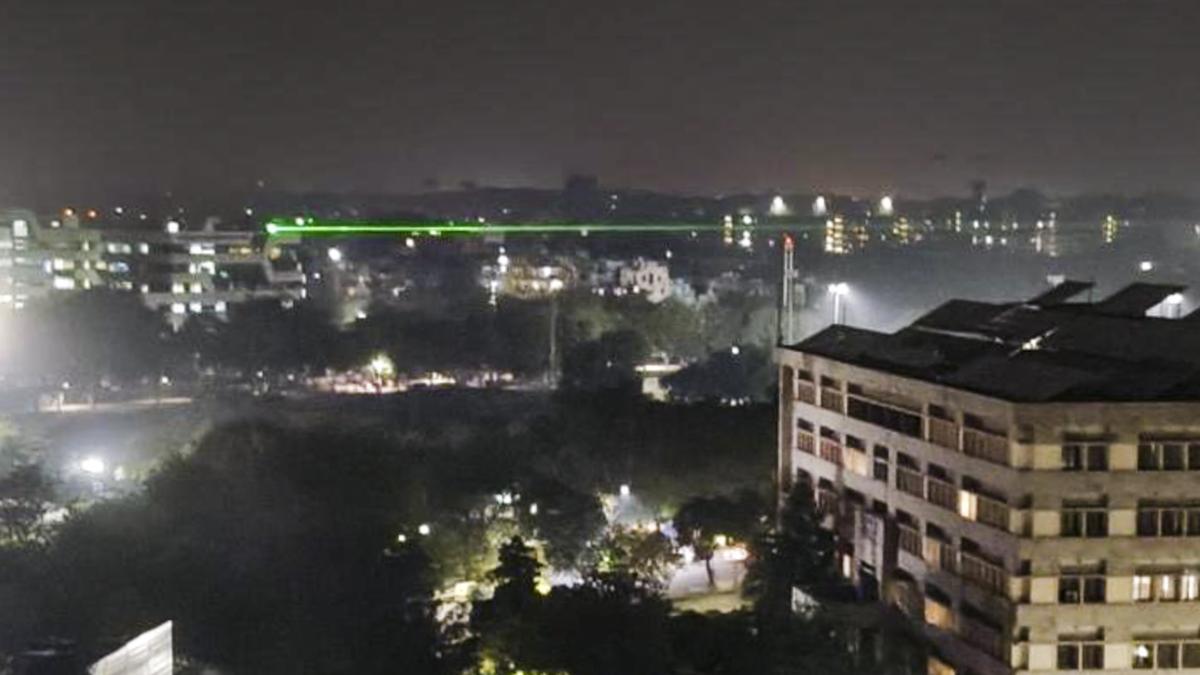
- 26 Jun 2025
In News:
Recently, India marked a major milestone in quantum technology with the successful demonstration of quantum secure communication over free space by IIT Delhi, in collaboration with the Defence Research and Development Organisation (DRDO). This achievement represents a significant step forward in India’s pursuit of quantum cybersecurity, quantum networks, and the future quantum internet, with vital applications in both defence and civilian domains.
What is Quantum Communication?
Quantum communication leverages principles of quantum mechanics, particularly quantum entanglement, to enable secure data transmission. In entanglement, the quantum state of two or more particles (usually photons) becomes correlated such that the measurement of one instantly determines the state of the other—regardless of the distance between them.
Security Advantage: Any attempt to intercept or measure the entangled photons disturbs their state, instantly revealing the breach. This makes quantum communication unbreakable by classical computational means.
Quantum Key Distribution (QKD): The Core Mechanism
Quantum communication is often employed for Quantum Key Distribution (QKD)—a method to securely generate and share encryption keys between two parties. Once both parties obtain identical secret keys via QKD, traditional algorithms (like AES) can be used to encrypt and decrypt actual messages.
There are two main types of QKD:
- Prepare-and-Measure QKD: Single photons are prepared in specific states and then measured.
- Entanglement-Based QKD: Pairs of entangled photons are distributed between users; any interception disturbs the entanglement, flagging the intrusion.
IIT-Delhi’s 2025 Breakthrough: Key Highlights
- Achievement: Demonstrated entanglement-assisted free-space QKD over a distance of more than 1 km at IIT Delhi campus.
- Secure Key Rate: ~240 bits per second.
- Quantum Bit Error Rate (QBER): <7%, which is acceptable under current protocols.
- Setting: Conducted under the DRDO-funded project “Design and development of photonic technologies for free space QKD”, in the presence of senior dignitaries from DRDO and IIT Delhi.
Free-space QKD offers a critical advantage—eliminating the need for laying optical fibres, making it viable in mountainous terrain and congested urban zones.
Previous Achievements by the IIT-Delhi & DRDO Team
- 2022: India’s first intercity quantum communication link established between Vindhyachal and Prayagraj using commercial dark optical fibre.
- 2023: Achieved QKD over 380 km using optical fibre with a QBER of 1.48%.
- 2024: Demonstrated entanglement-based QKD over 100 km using telecom-grade optical fibre.
Significance:
Strategic Applications:
- Defence Communication: Enables tamper-proof messaging and data sharing during operations.
- Cybersecurity: Shields critical infrastructure from quantum and AI-based cyber threats.
- Surveillance Immunity: Makes quantum networks resilient to conventional hacking or surveillance.
Civilian Applications:
- Banking and Finance: Secure real-time financial data transmission.
- Telecommunications: Enhances privacy in communication systems.
- Quantum Internet: Enables ultra-secure networking, distributed quantum computing, and time-synchronised communication.
Quantum Networks and the Road Ahead
India’s long-term goal is to establish a multi-node quantum network capable of secure long-range communication. This includes establishing:
- Satellite-to-ground QKD links, enabling nation-wide secure key distribution.
- Urban quantum networks, ensuring secure communication for government and military hubs.
India is drawing inspiration from China’s 4,600 km quantum network and U.S. plans for a quantum internet by the 2030s.
To this end, the National Quantum Mission (NQM) was approved in 2023, with an outlay of ?6,000 crore (2023–2031). It aims to:
- Develop 20–50 qubit quantum computers.
- Build quantum communication and sensing technologies.
- Establish four Thematic Hubs on quantum applications in computing, metrology, communication, and materials.
Institutional Mechanism: DIA-CoEs
The work was conducted under the DRDO-Industry-Academia Centre of Excellence (DIA-CoE) model. DIA-CoEs are collaborative platforms set up in premier academic institutions such as IITs and IISc, focused on developing cutting-edge defence technologies.
There are 15 DIA-CoEs currently operational across India.
Conclusion: India’s Quantum Communication Trajectory
India’s demonstration of free-space quantum secure communication marks a critical leap in strategic technology self-reliance. With continued support through the National Quantum Mission and institutional synergy between academia, industry, and the military, India is well-positioned to emerge as a global leader in quantum-enabled security infrastructure.
Reforming India’s Food and Fertiliser Subsidies
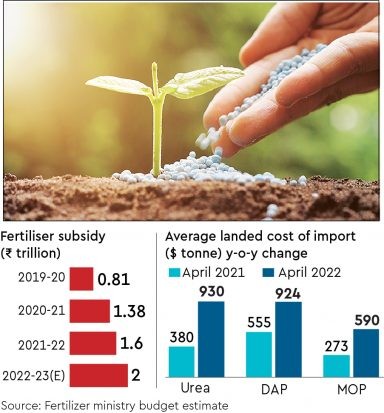
- 25 Jun 2025
In News:
India’s food and fertiliser subsidy regime has played a critical role in ensuring food security and supporting farm productivity. However, with extreme poverty declining from 27.1% in 2011 to a historic low of 5.3% in 2022, and the combined food and fertiliser subsidy bill exceeding ?3.5 lakh crore in FY26, there is a growing policy imperative to reimagine these subsidies for greater efficiency, fiscal prudence, and long-term sustainability.
The Current Landscape
Food and fertiliser subsidies in India are a mix of direct and indirect support mechanisms. Direct subsidies include schemes like PM-KISAN, while indirect subsidies include low-cost foodgrains under the National Food Security Act (NFSA) and price-controlled fertilisers. As per government data:
- Food subsidy is budgeted at ?2.03 lakh crore, reaching over 800 million beneficiaries through the Public Distribution System (PDS).
- Fertiliser subsidy is pegged at ?1.56 lakh crore, driven by rising global prices and a skewed demand for urea.
Challenges in the Current Subsidy System
- Mismatch Between Poverty and Coverage: Despite poverty falling to 5.3%, 84% of households still possess ration cards, many of whom are no longer poor. This reflects poor targeting and leads to welfare leakages.
- Nutritional Deficiency in PDS: The PDS remains cereal-centric, primarily distributing rice and wheat, while nutrition insecurity persists due to insufficient supply of pulses, edible oils, and micronutrients.
- Fertiliser Misuse: The overuse of nitrogen-based fertilisers (particularly urea) has caused an ecological imbalance, deteriorating soil health and reducing long-term farm productivity.
- Fiscal Constraints: Massive subsidy expenditures are crowding out investments in rural infrastructure such as irrigation, cold storage, and extension services—critical for doubling farmer incomes.
- Leakages and Ghost Beneficiaries: Despite digitisation and Aadhaar seeding, leakages continue in both PDS and fertiliser channels, with instances like card cancellations in Jharkhand pointing to persistent inefficiencies.
Government Initiatives So Far
- PMGKAY during COVID-19 extended free foodgrains to NFSA beneficiaries, and has now been merged with NFSA provisions.
- Digitisation of ration cards and Aadhaar-enabled ePoS machines are being used to plug PDS leakages.
- Neem-coated urea and the Nutrient-Based Subsidy (NBS) policy aim to reduce misuse and promote balanced fertilisation.
- Direct Benefit Transfer (DBT) for fertilisers is being piloted to streamline subsidy flows and reduce diversion.
Reform Measures Needed
- Targeting and Gradation: Use PM-KISAN, SECC, and Aadhaar-linked databases to better identify the poorest 15% households and gradually taper subsidies for others.
- Digital Food Coupons: Introduce ?700/month digital wallets or coupons for nutrient-rich food purchases (pulses, eggs, milk), improving dietary diversity and nutrition security.
- Fertiliser Coupons & Price Rationalisation: Introduce fertiliser coupons, deregulate prices, and incentivise eco-friendly inputs like bio-fertilisers and organic compost.
- Improve Monitoring: Strengthen data triangulation using land records, crop surveys, and income data to reduce inclusion/exclusion errors.
- Farmer Sensitisation: Communicate the rationale for reforms clearly to farmers to avoid mistrust or resistance, as witnessed during earlier protests.
Conclusion
India’s welfare architecture must evolve with its changing socio-economic landscape. With poverty rates at historic lows, continued universal subsidies are both fiscally unsustainable and inefficient. Smartly targeted reforms in food and fertiliser subsidies are vital for improving nutritional outcomes, restoring soil health, and ensuring optimal allocation of public resources. A calibrated transition to a more efficient, inclusive, and sustainable system will enhance welfare delivery without compromising economic growth.
Reshaping Energy and Geopolitics in West Asia

- 24 Jun 2025
In News:
The geopolitical landscape of West Asia is undergoing a profound transformation driven by escalating conflicts, realignments of power, and the increasing weaponisation of energy. The Israel-Iran conflict, rising threats to critical maritime routes, and the shifting allegiances of Gulf states are redefining the region’s strategic and energy equations, with direct implications for global stability and India’s national interests.
West Asia’s Centrality to Global Energy Security
- The Gulf region holds over 50% of global proven oil reserves, producing around 33% of the world’s oil and 17% of global natural gas.
- Despite a global shift to renewables, the world still consumes ~100 million barrels of oil daily, with ~50% used for transport and ~20% for petrochemicals.
- Natural gas accounts for 23% of global energy consumption, supplying a quarter of global electricity.
Geopolitical Flashpoints: Conflict and Energy Disruption
- Israel’s airstrikes on Iran’s nuclear facilities and Iran’s missile retaliation have heightened the risk of regional war.
- Iran may block the Strait of Hormuz, through which ~20% of global oil trade passes. Even the threat has increased insurance and freight rates.
- Charter costs for Very Large Crude Carriers (VLCCs) from the Gulf to China have risen from ~$20,000 to ~$48,000 per day.
- Iran’s oil exports (~2 million barrels/day) form ~2% of global oil supply, difficult to replace due to limited spare capacity among other producers.
- Threat of attacks on energy infrastructure by Iran-backed militias adds to regional instability.
Strategic Realignments in West Asia
- Gulf states (Saudi Arabia, UAE, Qatar) are moving toward multi-polar engagements, strengthening ties with China and Russia, and reducing dependence on the US.
- Historical precedent: The 1973 Arab oil embargo demonstrated the region's ability to influence global politics through oil.
- Arab monarchies’ reluctance to support Western-backed regime change in Iran stems from fears of regional destabilisation and domestic backlash.
- Public sentiment in Gulf nations remains strongly pro-Palestinian and anti-Western, adding internal pressures on ruling elites.
Weaponisation of Energy as a Strategic Tool
- The use of oil embargoes or supply disruptions is re-emerging as a geopolitical instrument.
- Iran could resort to asymmetric warfare or encourage proxy attacks on rival oil facilities, particularly in Iraq (which produces over 4 million barrels/day) and the Gulf.
Implications for India
Opportunities:
- Scope to diversify energy suppliers and enhance strategic petroleum reserves (SPR).
- India’s position in BRICS and SCO offers diplomatic space to act as a moderating influence.
Risks:
- 40–50% of India’s energy imports transit through the Strait of Hormuz—any disruption threatens energy security.
- Surging oil prices can fuel imported inflation, impacting transport, agriculture, and industrial costs.
- Indian projects like Chabahar Port, the International North-South Transport Corridor (INSTC), and the India-Middle East-Europe Corridor (IMEC) face operational uncertainties.
- Strain on India’s balanced ties with Israel and Iran, with diplomatic fallout possible.
- Gulf remittances (a vital source of foreign exchange) may decline if regional conflict escalates.
Conclusion
West Asia’s reconfiguration is a reminder of the enduring nexus between energy and geopolitics. For India, navigating this complex terrain requires strategic autonomy, energy diversification, and robust regional diplomacy. Balancing relations amid shifting alliances, while securing national interests in energy and trade, must remain central to India’s foreign policy calculus.
Panch Parivartan Strategy
- 23 Jun 2025
In News:
As India approaches its centenary of independence in 2047, the focus on reshaping its educational landscape has gained significant momentum. A noteworthy initiative in this direction is the Panch Parivartan Strategy launched by Vidya Bharati Akhil Bharatiya Shiksha Sansthan under its Vision 2047 roadmap. This five-pronged reform framework aims to redefine Indian education by integrating cultural values, social inclusivity, gender equity, environmental consciousness, and self-reliance.
What is the Panch Parivartan Strategy?
The strategy envisions a transformative shift in the Indian education system through five core components, collectively aimed at holistic nation-building. It seeks to develop not only knowledge and skills but also instill values rooted in India’s civilizational ethos.
1. Samajik Samrasata (Social Harmony)
This component focuses on inclusive education, bridging divides across caste, class, region, and religion. By ensuring that educational institutions become spaces of social integration, it promotes equality and mutual respect—core principles enshrined in the Constitution of India. This aligns with the larger vision of social justice and unity in diversity.
2. Kutumb Prabodhan (Family Value Integration)
Recognizing the family as the primary institution of socialization, this strategy integrates cultural practices such as Matri-Pitri Pujan (reverence for parents) and traditional joint family values into the educational process. The goal is to strengthen inter-generational bonds and instill respect for elders, thereby reinforcing India’s intangible cultural heritage.
3. Paryavaran Sanrakshan (Environmental Protection)
Environmental stewardship is another cornerstone of the strategy. Vidya Bharati has facilitated the planting of over 5.2 lakh saplings, developed 3,400 green campuses, and implemented water conservation practices in more than 1,800 schools. This aligns closely with the principles of sustainable development and promotes ecological consciousness among students, in line with India’s commitments under SDG-13 (Climate Action).
4. Swa (Self-Identity and Self-Reliance)
With a strong emphasis on vocational education, skilling, and rootedness, this pillar nurtures youth empowerment by offering training through ITIs, local crafts, and digital technologies even in remote areas like Kargil and Kiphire. It seeks to instill a sense of Bharatiyata (Indianness) while preparing students to be globally competent. This component supports the Atmanirbhar Bharat Abhiyan, aimed at creating a self-reliant India.
5. Nari Samman (Dignity of Women)
Focusing on girls’ education, leadership training, and self-defence programs, this strategy has already benefited over 14.4 lakh girls. By empowering women through education and capacity-building, it addresses gender disparities and aligns with SDG-5 (Gender Equality), promoting women as key agents of social transformation.
Significance for India@100
The Panch Parivartan Strategy serves as a unique model of value-based, inclusive, and sustainable education, blending modern learning tools (AI, robotics, coding) with India’s traditional wisdom (yoga, Sanskrit, dharmic values). It promotes an education model that is contextually Indian yet globally relevant, echoing the goals of the National Education Policy (NEP) 2020.
In a rapidly changing global order, this initiative represents a bottom-up approach to educational reform, fostering a generation of youth who are skilled, ethical, environmentally aware, and socially responsible—hallmarks of a Viksit Bharat (Developed India).
National Green Hydrogen Mission

- 22 Jun 2025
In News:
India’s green hydrogen sector stands at a critical crossroads. Once buoyed by global enthusiasm for clean fuels, it now faces export-related headwinds due to geopolitical uncertainties and wavering international policy commitments. In response, India has strategically pivoted toward building a robust domestic ecosystem to ensure long-term energy security and decarbonisation.
National Green Hydrogen Mission
Launched in 2023, the National Green Hydrogen Mission aims to establish India as a global green hydrogen hub. With an outlay of ?19,744 crore, the mission targets the production of 5 million metric tonnes (MMT) of green hydrogen by 2030, along with domestic manufacturing of electrolysers under the SIGHT (Strategic Interventions for Green Hydrogen Transition) programme.
To ensure credibility and transparency, the Ministry of New and Renewable Energy (MNRE) introduced a measurement and certification framework in April 2025 to verify green hydrogen at the production stage. These foundational steps are essential for market integrity, both domestically and internationally.
Export Slowdown: Policy and Geopolitical Challenges
India’s early ambitions to become a major green hydrogen exporter have been hampered by global developments. Projects like ReNew’s green ammonia facility in Odisha face uncertain prospects due to declining international demand. Contributing factors include policy uncertainty in key markets like the United States, where a potential rollback of the Inflation Reduction Act (via the “Big Beautiful Bill”) threatens long-term clean energy investments.
Moreover, European procurement initiatives, such as Germany’s Hintco under the H2Global Foundation, have seen low industry response, reflecting weak investor confidence. In response, India has initiated talks with European ports like Rotterdam and Antwerp, and is pushing for FTA provisions to lower import duties on green hydrogen, aiming to keep future export channels open.
Domestic Market Creation:
Faced with uncertain exports, India is actively cultivating domestic demand. A recent tender for 8 lakh tonnes of green hydrogen received full bids, indicating growing interest from Indian firms. The Solar Energy Corporation of India (SECI) is managing another tender for 7 lakh tonnes, primarily for the fertiliser sector.
Pilot initiatives are also being deployed in sectors such as steel, shipping, and transportation. For example, hydrogen fuel cell buses are being tested in five cities, including Ladakh. Industry experts advocate for mandatory blending in sectors like fertilisers to accelerate adoption.
Cost Competitiveness: The Core Challenge
At present, green hydrogen costs $4–$5 per kg, significantly higher than $2.3–$2.5 per kg for grey hydrogen. A report by CII, Bain & Co., and RMI attributes this to immature supply chains, high capital costs, and limited scale. The report recommends pragmatic interventions such as:
- Blending green hydrogen into existing grey hydrogen or natural gas systems.
- Promoting uptake in niche sectors like ceramics and chemicals.
- Public procurement of green steel to create economies of scale.
Conclusion:
While India’s long-term vision to lead the green hydrogen transition remains intact, current challenges necessitate a strategic rebalancing. Prioritising domestic demand creation, infrastructure development, and cost reduction over near-term exports will be key. If implemented effectively, India may replicate its renewable energy success, positioning itself as a global leader in green hydrogen by the next decade.
The Rising Cost of Imports: A Concern for India's Food Security and Farmers
- 21 Jun 2025
In News:
India’s increasing dependence on imports of pulses and edible oils has raised serious concerns about agricultural sustainability, trade deficits, and farmer welfare. Despite policy claims of self-reliance in agriculture, recent trends highlight structural imbalances in domestic production and pricing mechanisms, especially for pulses and oilseeds.
Farmers at the Receiving End
Farmers cultivating pulses and oilseeds, such as moong, chana, masoor, and soyabean, are struggling due to poor price realization and lack of systematic procurement at Minimum Support Prices (MSP). Rao Gulab Singh Lodhi, a farmer from Madhya Pradesh, harvested 90 quintals of moong in summer 2025. Despite an MSP of ?8,682/quintal, he had to sell his produce in the open market at ?6,000/quintal due to the absence of procurement infrastructure. Soyabean prices, too, are well below MSP, selling at ?4,100–4,200/quintal against an MSP of ?5,328 (for 2025–26).
Unlike rice and wheat, for which procurement is extensive and assured, pulses and oilseeds lack institutional support, even in regions where agro-climatic conditions favour their cultivation. This discourages farmers from growing these critical crops, despite using high-yielding and climate-resilient varieties.
Pulses: From Self-Reliance to Import Surge
India witnessed a record 7.3 million tonnes (mt) of pulses imports worth $5.5 billion in 2024–25, surpassing the previous high of 6.6 mt in 2016–17. This comes after years of reduced imports, thanks to improved domestic production which had peaked at 27.3 mt in 2021–22.
However, the El Niño-induced drought in 2023–24 brought down production to 24.2 mt, leading to higher retail inflation in pulses and prompting duty cuts on imports. While these imports helped control prices—with CPI inflation in pulses falling to –8.2% by May 2025—they also depressed mandi prices. In Maharashtra, arhar and chana are currently trading below MSPs, impacting farmer incomes.
Major pulse imports in 2024–25 included:
- 2.2 mt of yellow/white peas (Canada, Russia),
- 1.6 mt of chana (Australia),
- 1.2 mt each of arhar and masoor (Africa, Canada, Australia),
- 0.8 mt of urad (Myanmar, Brazil).
Edible Oils: Worsening Import Dependency
India’s vegetable oil imports more than doubled in a decade—from 7.9 mt in 2013–14 to 16.4 mt in 2024–25. In value terms, imports jumped from $7.2 billion to $20.8 billion, driven partly by global supply disruptions (e.g., Russia-Ukraine war) and high domestic consumption.
India now imports over 60% of its edible oil needs, with palm (7.9 mt), soyabean (4.8 mt), and sunflower oil (3.5 mt) forming the bulk. In May 2025, CPI inflation for vegetable oils stood at 17.9%. In response, the Centre slashed import duties on crude palm, soyabean, and sunflower oil from 20% to 10%, reducing the overall tariff to 16.5%.
While the move may lower consumer prices, industry bodies like the Soyabean Processors Association of India have warned it will "flood the market with cheap imports", making domestic oilseed cultivation less viable. Farmers may shift to alternative crops in the coming kharif season, further weakening India’s self-sufficiency goals.
Conclusion
India’s growing import reliance for essential food commodities like pulses and edible oils, coupled with poor farm-level price realization and weak procurement systems, undermines the objectives of food security and self-reliance. Sustainable import substitution must be driven by robust domestic production incentives, fair pricing mechanisms, and resilient procurement frameworks—especially for non-cereal crops.
Why Governments Revise GDP Base Year and Why India’s 2026 Revision Matters
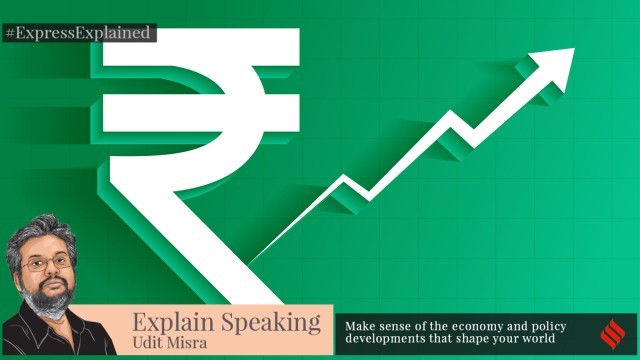
- 20 Jun 2025
Context:
The Gross Domestic Product (GDP) is the most critical metric used to measure the size and performance of a country’s economy. The "base year" is the reference year against which future GDP growth is calculated. India’s current GDP base year is 2011–12. The government, through the Ministry of Statistics and Programme Implementation (MoSPI), is now preparing to revise it to 2022–23, with the updated series to be released in February 2026.
Why GDP Base Years are Revised
Base year revisions are necessary to reflect structural changes in the economy, incorporate improved and updated data sources, and align with global statistical standards. GDP calculation, by its definition—the market value of all final goods and services produced in an economy—requires accurate, timely, and sectorally-relevant data. However, India’s economy evolves rapidly, particularly with the expansion of the services sector and changes in consumption, production, and labour patterns.
Past revisions (seven since 1948-49) reflect efforts to modernize methodology and include newer data sources, such as the shift from decennial Census-based workforce estimates to five-yearly Employment-Unemployment Surveys by the NSSO. This aligns with the National Statistical Commission’s recommendation of rebasing economic indices every five years.
The last revision occurred in 2015 (base year changed to 2011–12), following which methodological changes attracted controversy. Experts, including former Chief Economic Advisor Arvind Subramanian, argued that the revised methodology overestimated India’s GDP growth, especially in manufacturing, due to reliance on corporate database MCA-21 over the traditional Annual Survey of Industries.
Why the 2026 Revision Is Crucial
The 2026 revision comes after India missed a base year update in 2017–18 due to data-related concerns. Two key surveys—the Consumer Expenditure Survey (CES) and the Periodic Labour Force Survey (PLFS)—faced credibility and methodological challenges. The 2017-18 CES suggested rising poverty, while the PLFS showed a 45-year high in unemployment—trends contrary to government narratives. These issues led to scrapping the proposed 2017–18 base year.
Additionally, disruptive policy changes like demonetisation (2016) and the rollout of GST (2017), followed by the COVID-19 pandemic, meant the following years were not "normal" reference points. The 2022–23 base year is likely to mark the first post-pandemic stable year suitable for a revised series.
This revision is especially significant as India is poised to become the world’s third-largest economy by nominal GDP. At such a juncture, the quality, accuracy, and global credibility of GDP data will directly influence investor confidence, credit ratings, and policymaking.
The base year revision will also extend to other indicators: the Index of Industrial Production (IIP) will be revised to 2022–23, and the Consumer Price Index (CPI) to 2023–24. These changes ensure that inflation and industrial output metrics remain reflective of present-day consumption and production structures.
Conclusion
Revising the GDP base year is not merely a technical exercise—it is central to economic governance. The upcoming 2026 revision must restore faith in India's statistical systems, offer a transparent methodology, and align with international best practices. Its credibility will shape India’s economic narrative for the decade to come, both domestically and on the global stage.
India’s uneasy balancing act in the Bay of Bengal
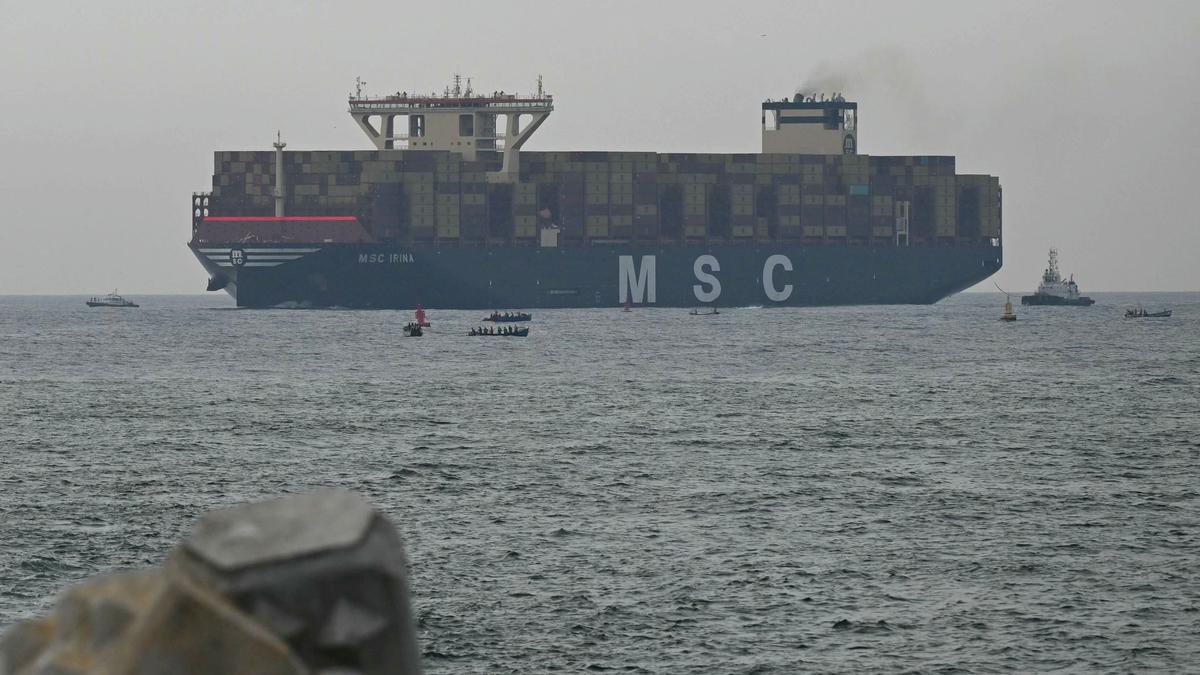
- 19 Jun 2025
In News:
India’s engagement in the Bay of Bengal is increasingly being shaped by the intersection of strategic priorities and economic imperatives. While New Delhi seeks to position itself as the regional integrator and promoter of cooperative regionalism, recent developments — particularly in relation to Bangladesh — underscore the challenges of maintaining this balance.
At the surface, India’s maritime and port infrastructure along the eastern seaboard has seen considerable progress. Cargo throughput at Visakhapatnam, Paradip, and Haldia has steadily risen. Initiatives like the Sagarmala Programme and coastal shipping incentives have doubled cargo movement on the east coast in the last decade. The signing of the BIMSTEC Maritime Transport Cooperation Agreement in early 2025 further aims to harmonise customs procedures and reduce port-related frictions.
Yet, India’s decision to withdraw the transshipment facility granted to Bangladesh in April 2025, which had enabled Dhaka to route exports through Indian ports to third-country destinations, sparked concern. While Indian officials cited logistical congestion, many in Bangladesh interpreted the move as politically motivated — possibly in response to Dhaka’s growing engagement with China and a speech by a Bangladeshi leader in Beijing framing India’s northeast as “landlocked” and dependent on Bangladesh.
This decision, followed by India’s restrictions in May 2025 on the import of seven Bangladeshi product categories via land ports, has fueled bilateral tensions. These developments have particularly impacted Bangladesh’s ready-made garment sector, which constitutes over 85% of its export earnings and had increasingly relied on Indian ports for efficiency. New routing requirements via Kolkata or Nhava Sheva have added delays and costs, weakening the trade facilitation narrative India has long championed.
While Bangladesh has asserted its regional role by diversifying trade partners — including reopening maritime trade with Pakistan — these are sovereign choices. India’s use of trade access as a signaling mechanism, if perceived as coercive, risks undermining the credibility of the neutral and rules-based regional architecture it seeks to build under BIMSTEC.
This is significant beyond bilateral ties. Regional actors like Myanmar, Sri Lanka, Bhutan, and Thailand observe India's actions closely. If India's trade facilitation appears contingent on political alignment, smaller states may opt to hedge or diversify partnerships, potentially weakening India’s centrality in the Bay of Bengal order.
India remains the region’s best-equipped actor in terms of port capacity, connectivity, and logistics infrastructure, giving it a leadership edge. However, credibility and consistency are equally vital. Without a clear separation between economic cooperation and strategic messaging, India’s regional ambitions risk being derailed.
To restore balance, India could consider reinstating the transshipment facility under a rules-based framework, ensuring transparency and predictability in trade logistics. This would reassure neighbours, revive trust, and reinforce India’s image as a stable anchor in a geopolitically dynamic region.
The Bay of Bengal is at a crossroads. It can evolve into a vibrant economic corridor between South and Southeast Asia, or descend into a fragmented arena of mistrust. India’s choices today will determine whether regional cooperation remains the cornerstone of its foreign policy — or becomes another casualty of strategic competition.
India’s Aviation Safety Oversight: Global Recognition Amid AI-171 Crash Investigation
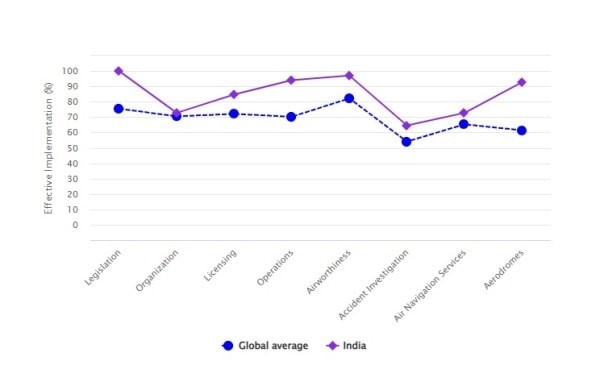
- 18 Jun 2025
In News:
The recent crash of Air India flight AI-171 in Ahmedabad, claiming 241 lives, marks the deadliest aviation accident in India in over a decade. As investigations proceed, the spotlight is on India’s aviation safety standards and regulatory preparedness, particularly the role of the Directorate General of Civil Aviation (DGCA) and India’s standing in global aviation safety audits.
India has received commendable recognition from two premier global aviation oversight bodies: the International Civil Aviation Organization (ICAO) and the US Federal Aviation Administration (FAA). These ratings assume greater relevance now, as the Aircraft Accident Investigation Bureau (AAIB) leads the probe into the Air India crash, in coordination with international stakeholders.
ICAO’s Positive Evaluation of India’s Aviation Oversight
In its 2022 audit under the Universal Safety Oversight Audit Programme (USOAP), the ICAO rated India’s overall Effective Implementation (EI) score at 85.65%, a sharp improvement from 69.95% in 2018. India outperformed the global average across all eight USOAP parameters—legislation, organisation, licensing, operations, airworthiness, accident investigation, air navigation services, and aerodromes.
In two critical areas, India scored remarkably high:
- Operations: India scored 94.02%, compared to the global average of 72.28%, and even surpassed the US (86.51%) and China (90%).
- Airworthiness: India achieved 97.06%, again ahead of the US (89.13%) and China (94.83%).
These ratings reflect significant reforms in civil aviation governance and oversight mechanisms. India’s regulatory capabilities are aligned with ICAO protocols, demonstrating strong institutional capacity to manage operational safety and technical compliance in aviation.
FAA's Endorsement: Retaining Category 1 Status
Further affirming India’s safety standards, the FAA retained India’s Category 1 status in April 2023 after a comprehensive audit in 2021 of DGCA’s oversight in aircraft operations, airworthiness, and personnel licensing. This classification means that India complies with international safety norms under the Chicago Convention and allows Indian carriers to expand operations to the US and enter into code-share agreements with American airlines.
The FAA acknowledged DGCA’s consistent improvement and commitment to safety, especially considering India’s rapid aviation growth—it is the world’s third-largest domestic aviation market and the fastest-growing among major economies.
Multinational Collaboration in Crash Investigation
In the wake of the AI-171 crash, a multi-agency probe has been launched. The AAIB, as per ICAO norms, is leading the investigation. The US National Transportation Safety Board (NTSB) and the UK’s Air Accidents Investigation Branch (AAIB-UK) are involved due to the aircraft’s American origin (Boeing), and the presence of British citizens onboard. Boeing and engine manufacturer GE will also assist in the investigation, adhering to ICAO’s investigation protocols.
Conclusion
India’s strong global safety ratings by ICAO and FAA underscore the DGCA’s enhanced regulatory performance and the country’s growing credibility in civil aviation safety. However, the tragic AI-171 crash serves as a reminder that even well-rated aviation systems must remain vigilant, responsive, and transparent—especially in post-crisis investigations.
Centre’s Push for Forest Rights Act Implementation
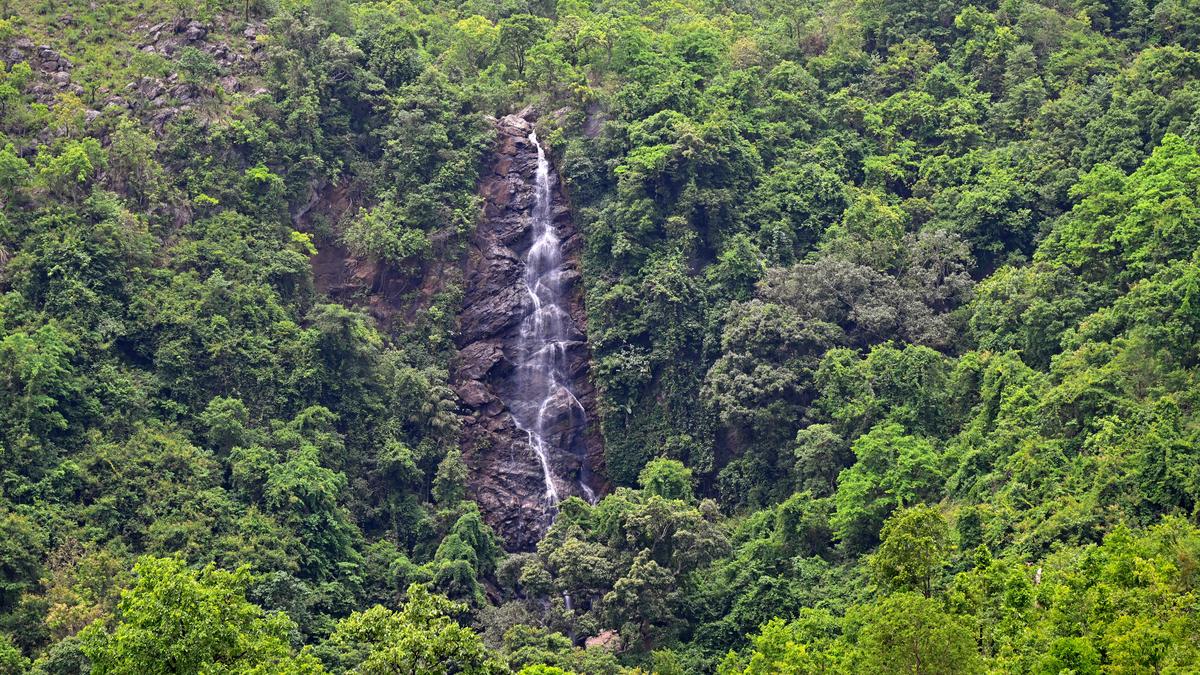
- 17 Jun 2025
In News:
The Forest Rights Act (FRA), 2006, was enacted to address the historical injustice faced by Scheduled Tribes (STs) and Other Traditional Forest Dwellers (OTFDs) by recognising their rights over forest land and resources. Its implementation, for nearly two decades, has been the sole responsibility of State governments. However, in a major policy shift, the Union government has begun funding support structures to aid its implementation through the Dharti Aaba Janjatiya Gram Utkarsh Abhiyaan (DAJGUA), launched in October 2024.
DAJGUA and Structural Support for FRA
For the first time, the Ministry of Tribal Affairs has sanctioned 324 district-level and 17 State-level Forest Rights Act (FRA) cells across 18 States and Union Territories. These cells aim to facilitate, not replace, the statutory process mandated under the FRA. The funding is routed through Grants-in-Aid General, with a budget allocation of ?8.67 lakh per district cell and ?25.85 lakh per State-level cell. Operational control rests with State Tribal Welfare Departments.
States like Madhya Pradesh (55 cells), Chhattisgarh (30), Telangana (29), Maharashtra (26), Assam (25), and Jharkhand (24) have received the highest number of sanctioned FRA cells. Notably, while Madhya Pradesh and Chhattisgarh report low pendency, States like Assam and Telangana have pending claim rates exceeding 60% and 50% respectively.
Mandate and Function of FRA Cells
These FRA cells are designed to support claimants and Gram Sabhas in the technical and administrative aspects of filing claims. Their responsibilities include:
- Preparing documentation and gathering supporting evidence;
- Assisting in Gram Sabha resolutions;
- Digitising land records and maintaining claim status;
- Facilitating the conversion of forest habitations into revenue villages;
- Supporting demarcation and record updates.
Importantly, these cells are not empowered to influence the decisions of statutory committees such as Forest Rights Committees (FRCs), Sub-Divisional Level Committees (SDLCs), or District Level Committees (DLCs), which are central to the FRA’s decentralised decision-making framework.
Concerns of a Parallel Mechanism
Despite their limited mandate, forest rights activists and experts express concerns that these cells may create a parallel mechanism outside the FRA’s statutory framework. Critics argue that the responsibilities assigned to the FRA cells—documentation, verification, facilitation—already fall under the statutory roles of the FRCs and other committees. This overlap risks creating confusion at the grassroots level and may dilute the authority of legally mandated bodies.
Furthermore, structural challenges—such as infrequent SDLC/DLC meetings and delays by Forest Departments even after DLC approval—are cited as key reasons for pending claims, which currently stand at 14.45% of the total 51.11 lakh claims filed across 21 States/UTs. Over 42% of the 43 lakh claims disposed of have been rejected, highlighting systemic inefficiencies.
A Cautious Step Forward
While DAJGUA represents a broader tribal welfare initiative involving 25 schemes across 17 ministries, the FRA facilitation component must tread carefully to respect the legal sanctity of the FRA. If implemented transparently and collaboratively, the FRA cells can bridge capacity gaps and support timely disposal of claims.
However, the success of this intervention hinges on maintaining the balance between administrative innovation and legal integrity—ensuring that support structures complement, rather than compete with, the FRA’s decentralised governance.
Israel–Iran Strike 2025
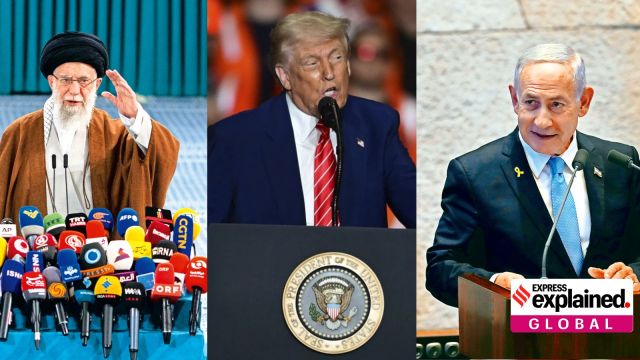
- 15 Jun 2025
In News:
On June 13, 2025, Israel launched a large-scale military strike on Iran, targeting nuclear and military sites in Tehran. The attack resulted in the deaths of Iran’s Revolutionary Guard chief and two top nuclear scientists, marking a sharp escalation in the long-running shadow conflict between Israel and Iran.
Backdrop: Iran’s Nuclear Programme and Global Concerns
Iran claims its nuclear programme is peaceful, aimed at energy production and medical research. However, international skepticism remains high. The International Atomic Energy Agency (IAEA) recently declared Iran in breach of its non-proliferation obligations for the first time in two decades, citing a lack of transparency, failure to account for undeclared nuclear material, and enrichment of uranium up to 60% purity, dangerously close to weapons-grade (90%). According to reports, Iran possesses enough stockpiled uranium to build up to nine nuclear weapons, raising alarm globally.
Israel’s Strategic Calculus and the Execution of the Strike
Israel has long opposed Iran’s nuclear ambitions and the 2015 nuclear deal (JCPOA). The June 2025 assault was the culmination of years of covert operations, including the 2020 assassination of Mohsen Fakhrizadeh and earlier strikes on Iran-linked targets. The latest strike, targeting nuclear and missile facilities as well as residences of top scientists and generals, is seen as the most severe blow to Iran since the 1979 revolution.
The collapse of Iran’s regional deterrence network—its so-called “axis of resistance”—following the fall of Syrian President Bashar al-Assad in December 2024 played a critical role. With Syria no longer serving as a strategic corridor between Tehran and Hezbollah, Israel perceived an opportune moment to act.
US Foreign Policy Shift and Trump’s Role
The re-election of President Donald Trump in 2024 introduced a more confrontational posture toward Iran. Although the U.S. initially delayed the planned May strike to explore diplomacy, the failure of talks led to U.S. backing for the June operation, using military pressure as leverage for a new nuclear deal demanding Iran's full disarmament.
Regional Fallout and Global Economic Implications
The strike triggered an immediate 8% rise in global oil prices, exposing energy vulnerabilities across oil-importing nations. Particularly affected is India, which imports over 80% of its crude oil. Though India imports little directly from Iran, it depends heavily on Gulf producers like Iraq, Saudi Arabia, and the UAE, whose exports transit through the Strait of Hormuz—a vital chokepoint now under threat.
Further, disruptions in Red Sea and Suez Canal shipping routes may force Indian exporters to reroute via the Cape of Good Hope, increasing transit times by 15–20 days and pushing shipping costs up by 40–50%.
Market Response and Strategic Concerns
While oil prices are expected to stabilise due to global reserves and supply diversification, gold prices surged above ?1 lakh per 10g as investors moved to safer assets. The broader geopolitical uncertainty may stoke inflationary pressures, affecting global and Indian economic stability.
Conclusion
The Israel–Iran conflict, while regionally contained for now, holds serious global implications—challenging non-proliferation efforts, disrupting energy security, and threatening global economic stability. For India, the crisis underscores the need for diversified energy sourcing, geopolitical agility, and resilient export infrastructure to mitigate such strategic shocks.
Iran’s Non-Compliance with IAEA Safeguards
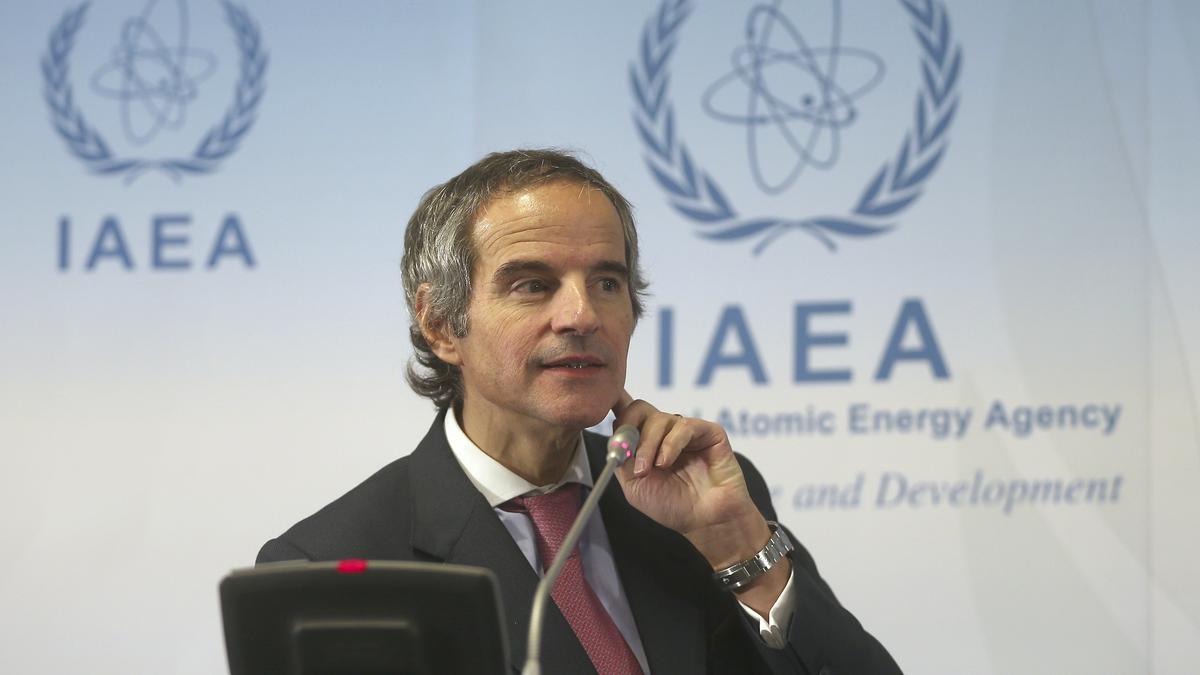
- 16 Jun 2025
In News:
In a pivotal move, the International Atomic Energy Agency (IAEA) Board of Governors, recently passed a resolution declaring Iran in breach of its 1974 Comprehensive Safeguards Agreement. This marks the first formal non-compliance declaration since 2006 and signals a possible escalation of Iran’s nuclear issue to the United Nations Security Council (UNSC). The resolution was passed with 19 votes in favour, 3 against (China, Russia, Venezuela), and 11 abstentions.
What led to the resolution?
The IAEA expressed grave concern over Iran’s failure to explain uranium traces found at three undeclared sites—Lavisan-Shian, Varamin, and Turquzabad. These sites, suspected to be part of an undeclared nuclear program until the early 2000s, reflect Iran’s longstanding reluctance to grant the IAEA full access and credible information.
The IAEA resolution cited Iran’s “many failures” since 2019 to provide timely cooperation. This includes Iran’s inability to account for undeclared nuclear material and activities, in violation of its obligations under the Non-Proliferation Treaty (NPT) and its 1974 Safeguards Agreement.
IAEA Safeguards and Article XII.C
Under the 1974 Safeguards Agreement, Iran is legally required to:
- Declare all nuclear materials and maintain detailed inventories.
- Notify the IAEA about any new nuclear facilities.
- Allow routine and special inspections and surveillance.
The IAEA’s inability to verify the absence of nuclear material diversion for weaponisation constitutes a major safeguard failure.
The resolution was passed under Article XII.C of the IAEA Statute, which grants the Board powers to:
- Demand corrective actions.
- Suspend technical assistance.
- Notify all member states.
- Refer the case to the UNSC.
This rare Article has only been invoked six times before—against Iraq, North Korea, Iran (2006), Libya, Romania, and Syria.
Iran’s Response and Regional Tensions
Iran denounced the resolution as “political” and retaliated by:
- Announcing plans for a new underground uranium enrichment facility.
- Upgrading centrifuges at Fordow.
- Placing air defence systems on alert.
- Threatening “proportional measures” in response to Israeli and Western pressure.
A day after the IAEA resolution, Israel launched preliminary airstrikes on Iranian nuclear sites and declared a state of emergency. Iran reportedly mobilised drones in response, escalating military tensions in the region.
Broader Geopolitical Implications
This development coincides with the October 2025 deadline for the expiration of U.N. sanctions relief under the 2015 Iran Nuclear Deal (JCPOA). The U.S., which exited the JCPOA in 2018, has signaled support for “special inspections” of Iranian sites. Meanwhile, back-channel talks in Oman remain stalled, and the threat of sanctions “snapback” looms large.
The IAEA also maintains $1.5 million worth of peaceful nuclear projects in Iran, including in radiopharmaceuticals and desalination—now potentially at risk.
What lies ahead?
Iran now has a limited window to respond. If it fails to provide adequate clarifications, the Board may escalate the issue to the UNSC, which could result in renewed sanctions or binding resolutions. A follow-up Board meeting and vote is expected in September 2025.
Conclusion
The IAEA’s resolution represents a critical juncture in global non-proliferation diplomacy. It underscores the challenges of verification in the absence of cooperation and the rising tensions in the Middle East nuclear landscape. For India and the world, this raises important questions on nuclear governance, energy diplomacy, and regional stability.
Childhood Obesity in India: A Growing Public Health Challenge

- 14 Jun 2025
Introduction
Childhood obesity has emerged as a serious public health concern in India, mirroring global trends. A recent study places India among the top countries grappling with rising obesity among children. This phenomenon, once limited to affluent sections, is now widespread across urban and semi-urban regions, driven by a complex interplay of dietary, behavioural, genetic, and socio-economic factors.
Understanding the Causes
- Dietary Shifts and Unhealthy Eating Habits: The increasing consumption of calorie-dense, ultra-processed foods, sugary beverages, and fast food is one of the primary contributors to childhood obesity. Traditional, balanced home-cooked meals are being replaced due to changing family dynamics and time constraints, leading to poor nutritional choices among children.
- Sedentary Lifestyle and Screen Time: The decline in physical activity among children is alarming. Excessive screen exposure through television, mobile phones, and video games, coupled with a lack of safe outdoor spaces and diminishing emphasis on physical education in schools, has led to a largely sedentary routine among adolescents.
- Genetic and Medical Predispositions: Genetic predisposition plays a significant role. Children with a family history of obesity are more susceptible. Medical conditions like hypothyroidism and insulin resistance further increase vulnerability.
Consequences of Childhood Obesity
- Physical Health Risks: Obese children are at an elevated risk of early-onset non-communicable diseases (NCDs) such as Type 2 diabetes, cardiovascular ailments, hypertension, and musculoskeletal disorders. They may also experience early puberty and related hormonal imbalances.
- Psychosocial Impact: Beyond physical health, obesity in children is linked to psychological distress. Affected children often face bullying, social exclusion, low self-esteem, and are more prone to depression and anxiety. These challenges can persist into adulthood, impacting mental well-being and social functioning.
Preventive Strategies: The Role of Family, Schools, and Policy
- Parental Involvement and Home Environment
- Promoting home-cooked nutritious meals over packaged or junk food.
- Integrating physical activities like walking, yoga, or family sports into daily routines.
- Educating children on food labels, nutrition, and healthy choices.
- Involving children in meal preparation and encouraging mindful eating practices.
- School-based Interventions
- Making physical education compulsory and structured in the school curriculum.
- Conducting regular health screenings and awareness campaigns.
- Promoting healthy food environments in school canteens and classrooms.
- Organizing workshops on nutrition, mental health, and lifestyle habits.
- Health Monitoring and Medical Intervention
- Periodic health check-ups to identify early signs of obesity and related conditions.
- Early medical and nutritional interventions to prevent progression to severe obesity or associated NCDs.
Policy Imperatives and Way Forward
Given its long-term implications on public health and healthcare burden, childhood obesity must be addressed through a multi-sectoral approach involving:
- Policy frameworks that regulate food marketing targeted at children, particularly unhealthy snacks and beverages.
- Urban planning that ensures safe public spaces for physical activity and sports infrastructure in schools.
- Integration with national health programmes like the Rashtriya Bal Swasthya Karyakram (RBSK) and POSHAN Abhiyan to monitor and support child nutrition holistically.
- Mass awareness campaigns to de-stigmatize obesity and promote healthy behaviours.
Conclusion
Childhood obesity is no longer a concern confined to individuals—it is a looming public health challenge with intergenerational consequences. If not addressed early, it risks leading to a population burdened by NCDs and compromised productivity. Collaborative action by parents, educational institutions, healthcare providers, and government agencies is critical to reversing this trend and ensuring a healthier future for India’s children.
Mental Healthcare in India
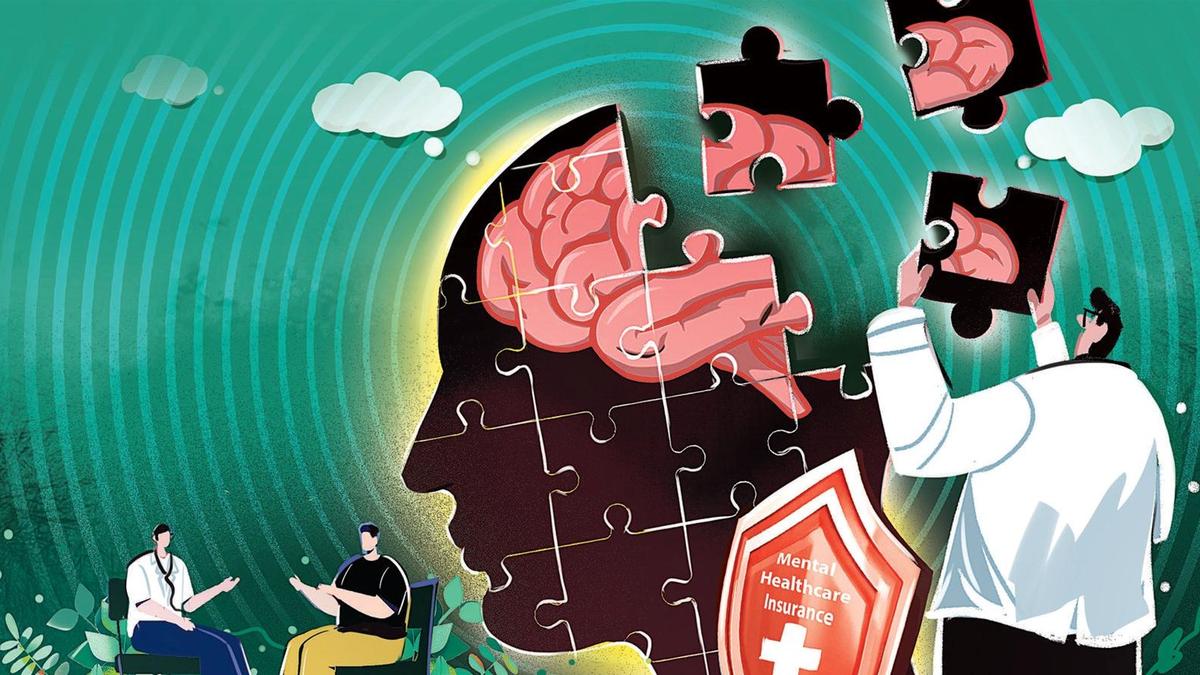
- 13 Jun 2025
Introduction
Mental health has long been neglected in mainstream healthcare discourse. However, recent developments, especially in the post-pandemic era, have sparked a paradigm shift in both public perception and policy priorities. With the Mental Healthcare Act, 2017 and subsequent directives from the Insurance Regulatory and Development Authority of India (IRDAI), mental health is now legally and practically on par with physical health in India’s insurance ecosystem.
Global and National Context
- According to the World Health Organization (WHO), mental health conditions affect 1 in 5 adults globally, resulting in over $1 trillion in productivity loss annually.
- In India, increased awareness and policy changes have led to mental health coverage being integrated into mainstream health insurance.
Policy Milestones and Insurance Evolution
- Mental Healthcare Act, 2017: A landmark legislation mandating equal treatment of mental and physical illnesses.
- IRDAI Directives: Instructed insurers to include mental illness in their policy coverage.
- Health Insurance Trends:
- Mental health–related claims (for therapy, stress, anxiety medication) have risen by 30–50% over the past 2–3 years.
- Outpatient Department (OPD) benefits now cover therapy, counselling, and psychiatric consultations.
Demographic and Behavioural Trends
1. Young Adults (25–35 years)
- Major drivers of insurance adoption for mental health.
- Key stressors include work-life imbalance, digital overload, and financial pressures.
- Show preference for app-based therapy and digital mental health platforms.
2. Women
- Higher uptake of mental health-inclusive policies.
- Insurance aligned with life-stage challenges (e.g., pregnancy, menopause, caregiving).
- Reflects increased cultural recognition of women’s emotional well-being needs.
3. Urban-Rural Divide
- Tier-1 cities account for over 50% of mental health insurance uptake.
- Better therapy networks, progressive employers, and higher digital literacy.
- Tier-2 cities showing promising growth in awareness and access.
Workplace Shifts
- Growing emphasis on mental wellness programs.
- Initiatives include:
- Stress management workshops
- In-house counsellor access
- Flexible work arrangements
- Indicates an evolving perception of mental health as integral to employee well-being.
Challenges Ahead
- Despite broader coverage, utilisation remains low due to:
- Lack of awareness about existing benefits (e.g., OPD coverage, cashless therapy).
- Social stigma and low mental health literacy.
- Accessibility gaps in rural and semi-urban areas.
Way Forward
- Awareness Campaigns: Promote knowledge of insurance entitlements and available services.
- Capacity Building: Increase mental health professionals and digital outreach platforms.
- School and Workplace Integration: Embed emotional literacy and psychological support in institutions.
- Insurance Product Innovation: Develop simplified, accessible plans tailored to diverse demographic needs.
- Data Collection and Monitoring: Use claim trends to shape targeted mental health interventions.
Conclusion
Mental healthcare in India is at a pivotal moment. The convergence of legal reform, insurance innovation, and shifting public attitudes is laying the foundation for a more inclusive and responsive mental health system. However, inclusion on paper must translate to accessibility in practice. Bridging this gap requires sustained efforts in awareness, education, and empathetic policy implementation.
Mental health is no longer an afterthought — it is an essential pillar of human well-being and economic productivity.
India’s Growing Gig Economy
- 12 Jun 2025
In News:
India’s gig and platform economy is undergoing a significant transformation, driven by digital technologies, evolving labour market dynamics, and an increasing preference for flexible work arrangements. According to a recent study by the VV Giri National Labour Institute (VVGNLI), affiliated with the Ministry of Labour and Employment, India’s gig workforce is projected to grow to 62 million by 2047, accounting for 15% of the total non-agricultural workforce.
This forecast builds on estimates from the 2022 NITI Aayog report, which pegged the number of gig workers at 3 million in 2020, employed across 11 major platform companies. This figure is expected to rise to 23 million by 2030 (7% of the non-farm workforce). Under optimistic scenarios, gig employment could expand to 90.8 million, though external shocks like policy shifts or technological disruptions may cap growth at 32.5 million.
The gig economy in India initially found its foothold in ride-sharing and food delivery services. Over time, it has diversified into sectors such as healthcare, education, digital content creation, and professional consulting, indicating its expanding relevance in the overall employment landscape.
Despite this rapid growth, gig workers face significant structural challenges. These include the lack of social security, unregulated working hours, occupational stress, and the absence of effective grievance redressal mechanisms. Many gig workers are also vulnerable to retaliatory practices, such as app-based ID deactivation, for voicing concerns against unfair algorithms or wage-related issues.
One of the most pressing issues highlighted by the study is the ambiguous classification of gig workers. While countries such as the UK, Canada, Spain, France, and Denmark have legally recognised gig workers and provided appropriate labour protections, India continues to grapple with defining the boundary between employees and independent contractors. This ambiguity deprives workers of legal safeguards, especially those working full-time on digital platforms.
The VVGNLI study calls for urgent regulatory interventions. These include:
- Legal recognition of gig workers and their right to unionize and collectively bargain.
- Algorithmic accountability, to ensure transparency in task allocation and wage determination.
- Minimum income guarantees, regulated working hours, and integration of occupational health and safety standards.
- Establishing a National Registry for Platform and Gig Workers, managed jointly by central and state governments, to facilitate social security coverage.
Additionally, the Code on Social Security, 2020, provides a legislative foundation to extend health insurance, accident coverage, and retirement benefits to gig and platform workers. It proposes a social security fund, with contributions from aggregators, to support these provisions.
To ensure long-term sustainability, the government must also invest in skill development and upskilling initiatives, particularly in digital literacy, entrepreneurship, and emerging trades, to improve employability and economic resilience among gig workers.
In conclusion, India’s gig economy holds the potential to redefine employment patterns and contribute substantially to inclusive economic growth. However, this potential can only be fully realised through a rights-based, inclusive, and regulation-driven framework that balances innovation with worker welfare.
U.K.–EU Reset: A Strategic Gateway for India

- 11 Jun 2025
In News:
The recent diplomatic overture by the United Kingdom under Prime Minister Keir Starmer to reset relations with the European Union (EU) marks a pivotal moment in Euro-Atlantic cooperation. Though the development appears Eurocentric, its implications for India are profound — ranging from trade facilitation and foreign policy realignment to diaspora and talent mobility. For India, this evolving Western convergence offers a unique opportunity to recalibrate its economic and strategic engagements.
Redefining India’s Trade Corridors
The renewed UK-EU cooperation — covering food safety, fisheries, customs, and border controls — has the potential to ease operational frictions for Indian exporters that emerged post-Brexit.
- Current Trade Landscape: In FY2024, India’s exports to the EU stood at $86 billion, and to the U.K. at $12 billion, reflecting the strategic importance of these partners.
- Post-Brexit Challenges: Indian businesses, especially in pharmaceuticals, textiles, and agri-products, faced dual regulatory requirements.
- Reset Opportunities: A harmonised regulatory framework can reduce compliance redundancies and lower costs. India, which meets over 25% of the U.K.’s pharmaceutical demand, could benefit from unified drug approvals.
- Sectoral Impact:
- Indian seafood exports (worth approx. $7.38 billion) could see improved access if sanitary and phytosanitary norms are streamlined.
- However, SMEs may face challenges in adapting to tighter European standards.
Policy Recommendation: India must bolster its export competitiveness through schemes like RoDTEP, PLI, and enhanced certification infrastructure to meet higher technical standards.
Deepening Strategic and Diplomatic Ties
A more aligned U.K.-EU foreign and defence policy creates new avenues for India to build deeper multilateral and trilateral engagements.
- Existing Frameworks:
- India–EU: Strategic Partnership Roadmap to 2025
- India–U.K.: Comprehensive Strategic Partnership (2022), covering cybersecurity, climate, and maritime security
- Potential Synergies:
- Enhanced coordination in forums like the UN, G-20, and WTO
- Scope for defence collaboration in the Indo-Pacific through joint naval exercises, technology transfers, and intelligence sharing
India’s partnerships with France, Germany, and the U.K. already focus on defence modernisation and green technologies. A coordinated U.K.–EU posture could formalise India’s role in shaping Western responses to strategic challenges in Asia, especially China’s assertiveness.
Global South Leadership: India can also leverage this alignment to push for climate finance, digital public infrastructure, and multilateral reform, reinforcing its leadership role post-G20 2023.
Reimagining Talent Mobility and Diaspora Engagement
India possesses the world’s largest diaspora, with significant populations in the U.K. and EU.
- Mobility Trends:
- In 2024, the U.K. issued over 1,10,000 student visas to Indian nationals.
- Post-Brexit, mobility of Indian professionals to the EU was curtailed.
- Potential Reset:
- Renewed U.K.–EU coordination on border and migration policy may enable partial mobility reintegration.
- India’s migration pacts with France, Germany, and Portugal could benefit from a wider U.K.–EU framework.
This realignment could lay the groundwork for a semi-integrated talent corridor, enhancing the movement of students, skilled professionals, and researchers.
Conclusion: Strategic Imperatives for India
The U.K.–EU reset is more than a European internal realignment — it is a geostrategic moment that India must strategically exploit. Whether through trade harmonisation, defence diplomacy, or diaspora engagement, India stands to gain significantly. However, to capitalise on this, India must:
- Accelerate trade facilitation and infrastructure modernisation
- Strengthen its regulatory frameworks
- Enhance institutional diplomatic coordination
- Assertively position itself in multilateral platforms
This convergence of economic and diplomatic opportunity presents India with a chance to reshape its place in the evolving global order.
Scaling India's Apparel Sector for Export Growth
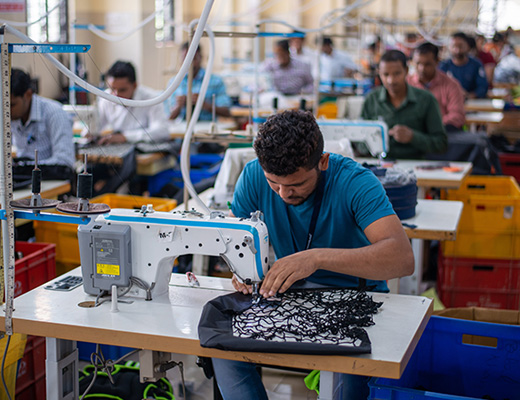
- 10 Jun 2025
In News:
India’s textiles and apparel (T&A) sector is one of its oldest and most employment-intensive industries, contributing 2.3% to GDP and employing over 45 million people, making it the second-largest employer after agriculture. Despite this, India’s share in global apparel trade has remained stagnant at around 3% for two decades—far below its potential. With global apparel trade at $529.3 billion, India’s contribution stands at just $15.7 billion, and the ambitious target of $40 billion in exports by 2030 remains distant unless bold structural reforms are initiated.
Structural Challenges
The fragmentation of the industry is a major bottleneck. Over 80% of apparel units are MSMEs, operating with limited scale, informal labour, and poor integration. In contrast, countries like China, Vietnam, and Bangladesh have achieved scale by setting up large, export-oriented factories or coordinated "buying houses" to pool capacity.
India’s cost of capital (≈9%) also hampers competitiveness, compared to 3–4.5% in China and Vietnam. Further, rigid labour laws, such as mandatory 2x overtime pay, discourage formal employment. Supply chains are dispersed, increasing delivery timelines and logistics costs. These issues are compounded by low female labour force participation, despite women comprising 70% of the workforce in leading apparel hubs.
Success Story: Shahi Exports
The example of Shahi Exports illustrates what is achievable with scale, professionalism, and inclusive practices. From a 15-member unit in 1974, it has evolved into India’s largest apparel exporter, employing over 100,000 workers (70% women) across 50+ factories in 8 states, with over $1 billion in revenue. It shows that Indian firms can scale and compete globally, but organic growth alone is too slow to meet national export goals.
Policy Reforms: A Way Forward
To unlock the sector’s full potential, transformative policy measures are required:
- Capital Access for Scale: A 25–30% capital subsidy and a 5–7 year tax holiday for units with 1,000+ machines would help achieve viable scale. Linking incentives to size, as proposed under PLI 2.0, is essential.
- Flexible Labour Norms: Labour reforms, such as rationalising overtime pay to 1.25x (ILO standard), and easing compliance can encourage formal hiring. Linking MGNREGA funds (25–30%) to wage subsidies in garment units can promote productive, formal employment.
- Skilling for Demand: Schemes like SAMARTH should be expanded for short-cycle, demand-driven training, especially for women and youth, to bridge the skills gap in the sector.
- Cluster-Based Development: At least two PM MITRA Parks should be designated as garment hubs in labour-abundant, low-cost states like Uttar Pradesh and Madhya Pradesh to reduce migration, cut costs, and promote inclusive industrialisation.
- Export-Linked Incentives (ELI): Shift from production-linked to export-linked schemes that reward global competitiveness, not just output.
Conclusion
The apparel sector offers a rare opportunity to generate mass employment, promote inclusive growth, and boost exports. But without scale, reforms, and a strategic policy shift, the $40 billion export dream will remain elusive. India must act swiftly to replicate success stories like Shahi Exports, not over decades, but within years. The time for bold policy innovation is now.
Reforming Research Procurement in India

- 09 Jun 2025
In News:
In a landmark move to boost scientific research and innovation, the Finance Ministry of India recently announced a series of reforms easing the procurement norms for scientific equipment. This policy shift addresses long-standing grievances from the research community about sub-standard materials, procedural delays, and restricted autonomy due to rigid procurement rules under the Government e-Marketplace (GEM).
Background: Challenges with GEM Procurement
The GEM portal, launched to promote “Make in India” procurement, mandated government institutions to source all goods through it. However, scientists highlighted serious concerns about its inefficiency, especially the inability to procure high-quality, customised scientific instruments required for cutting-edge research. Delays in procurement approvals and the necessity to first prove non-availability on GEM further hindered project timelines and research output.
Key Policy Reforms and Amendments
To rectify these issues, the government amended the General Financial Rules (GFR), introducing the following major changes:
- Exemption from GEM Mandate:
- Select scientific institutions and universities are now allowed to procure equipment and consumables outside the GEM portal.
- This restores procurement autonomy to Directors, Vice-Chancellors, and Chancellors—similar to the pre-GEM era—enabling timely purchases from specialised, quality vendors.
- Enhanced Financial Autonomy:
- Without Quotation: Procurement limit increased from ?1 lakh to ?2 lakh for direct purchases.
- Purchase Committee Limit: Raised from ?10 lakh to ?25 lakh, enabling quicker institutional decision-making.
- Tender Enquiry Ceiling: Enhanced from ?50 lakh to ?1 crore, facilitating mid-level procurements efficiently.
- These changes reflect inflation adjustments and reduce the administrative burden on research institutions.
- Global Tender Enquiry (GTE):
- Directors and Vice-Chancellors are now authorised to approve GTEs up to ?200 crore, a responsibility earlier restricted to departmental Secretaries.
- This decentralisation helps avoid bottlenecks and streamlines large-scale procurements critical for advanced R&D.
Strategic Relevance and Broader Objectives
These reforms are strategically aligned with India’s aspirations under Atmanirbhar Bharat and its goal to emerge as a global science and technology leader. By reducing bureaucratic hurdles, enhancing institutional autonomy, and ensuring timely access to world-class research tools, the reforms empower innovation across sectors like health, defence, space, and agriculture.
Institutions benefitting from these measures include:
- Department of Science and Technology (DST)
- Department of Biotechnology (DBT)
- Council of Scientific and Industrial Research (CSIR)
- Department of Atomic Energy (DAE)
- Indian Council of Medical Research (ICMR)
- Indian Council of Agricultural Research (ICAR)
- Defence Research and Development Organisation (DRDO)
- Postgraduate research institutions under central and state universities
Conclusion
The revised GFR norms signify a progressive policy intervention aimed at creating a facilitative research ecosystem in India. By streamlining procurement, restoring institutional trust, and removing operational roadblocks, the government has responded positively to the scientific community's demands. As acknowledged by Science Minister Jitendra Singh, this reform is not just administrative; it is transformative—unlocking India's potential for innovation and scientific excellence.
India’s Decline in Extreme Poverty: A Decade of Significant Gains

- 08 Jun 2025
In News:
According to the latest World Bank estimates, India’s extreme poverty has sharply declined from 27.1% in 2011-12 to 5.3% in 2022-23, based on an updated $3/day consumption threshold adjusted for 2021 purchasing power parity (PPP). In absolute terms, the number of extremely poor people has reduced from 344.47 million to 75.24 million, indicating 269 million people were lifted out of extreme poverty during this period.
The progress is more striking when viewed under the previous poverty line of $2.15/day (2017 prices). Under this standard, the extreme poverty rate fell from 16.2% to 2.3%, translating to a drop in the number of poor from 205.93 million to 33.66 million—a reduction of 172 million individuals.
Even as the poverty threshold was raised globally, India managed to outperform most developing countries. The lower-middle-income (LMIC) poverty rate, measured at a higher threshold of $4.20/day, also fell substantially—from 57.7% in 2011-12 to 23.9% in 2022-23. This decline reduced the number of people under LMIC poverty from 732.48 million to 342.32 million over 11 years.
The fall in poverty occurred despite high inflation during the decade. When adjusted for domestic inflation, even the $3/day threshold (new benchmark) is higher than the inflation-adjusted $2.60/day from previous estimates, making the achievement more credible.
The World Bank estimates also reveal stark differences in poverty distribution:
- The top five populous states—Uttar Pradesh, Maharashtra, Bihar, West Bengal, and Madhya Pradesh—accounted for 65% of extreme poverty in 2011-12, but still made up 54% in 2022-23.
- Rural India still shows significant poverty, with 90% of rural individuals reporting average monthly per capita expenditures below Rs 5,763, and the bottom 5% class spending just Rs 1,677.
- Urban poverty is relatively lower, with 25.78% in the bottom 40%, compared to 45.44% in rural areas.
- Educational attainment remains a strong poverty determinant; in 2022-23, 35.1% of Indians without schooling lived below the LMIC poverty line, compared to 14.9% with post-secondary education.
In terms of non-monetary deprivation, India also recorded improvement. As per the Multidimensional Poverty Index (MPI), which considers factors such as access to education, electricity, water, and sanitation, multidimensional poverty fell from 53.8% in 2005-06 to 15.5% in 2022-23. NITI Aayog estimates it to be 11.28%, down from 29.17% in 2013-14.
To ensure continued tracking, NITI Aayog is planning a new income-based extreme poverty measure with broader consultation. Meanwhile, the Household Consumption Expenditure Survey (HCES) 2023-24 indicates a 45.4% rise in rural consumption and 38% in urban consumption, reinforcing the World Bank’s findings.
Conclusion
India’s remarkable poverty reduction over the last decade reflects successful economic reforms, social welfare schemes, and increased consumption. However, regional, educational, and rural-urban disparities persist, necessitating continued policy focus, data refinement, and inclusive growth strategies.
Empowering India’s Elderly through Age-Tech

- 14 Apr 2025
In News:
India is undergoing a demographic transition, with its senior citizen population (aged 60+) currently at 15 crore, projected to rise to 32 crore by 2050. This unprecedented ageing poses socio-economic challenges, especially in urban areas like Bengaluru, where shrinking family structures leave many elderly citizens isolated and purposeless. To address these concerns, a new sector—age-tech—is emerging, leveraging technology to support the physical, emotional, and cognitive well-being of the elderly.
Understanding Age-Tech and its Role
Age-tech refers to technology-driven solutions tailored to the elderly’s needs. Bengaluru has emerged as a hub of innovation in this domain. Platforms like Sukoon Unlimited, founded in 2024, create communities where seniors engage in emotional counselling, volunteering, group therapies, and concierge services. Notably, both service providers and receivers are senior citizens, fostering peer support and a sense of purpose. Sukoon’s community has grown from 200 to 6,000 members across 400 towns in a year.
Technology is also being used to combat loneliness. WHO in 2022 highlighted that one in four older adults suffers from social isolation, increasing mortality risk. AI-powered conversational tools are being employed by platforms like Sukoon to provide companionship in over 100 languages.
Employment and Purpose in Silver Years
Age-tech also facilitates post-retirement employment. Wisdom Circle, for instance, connects retired professionals with employers seeking experienced talent. With 95,000 users and 1,500 companies onboard, it promotes hybrid and part-time roles. Beyond financial gain, seniors are driven by the need for relevance and contribution to society—many even apply for lower-paid or non-profit roles.
Addressing Cognitive and Physical Health
The cognitive health of seniors is another pressing concern. Over 80 lakh Indians currently suffer from dementia. Ivory, a cognitive health start-up, offers neuroscience-backed assessments to detect risks early and recommends personalized brain training. It has over 30,000 users, predominantly women from urban areas.
Orthopaedic health is also crucial. Around 50% of seniors need assistance with basic mobility. TransleadMedtech, an IISc-incubated start-up, has developed assistive chairs and commodes to aid mobility without power sources. With rising knee replacements, such innovations are critical for safety and dignity in ageing.
Challenges and the Digital Divide
Despite potential, age-tech faces hurdles. Experts warn that over-engineering tech can alienate elderly users. Solutions must be designed with the user’s needs, not just tech potential, in mind. The urban-rural divide is stark—most services target urban, financially independent seniors, excluding rural and low-income populations.
Additionally, rapid digitisation has excluded many elderly from essential services like transport and e-commerce. Digital illiteracy also exposes them to scams. Startups like Elderra work to bridge this gap by training seniors in basic digital tools.
Way Forward
For age-tech to become inclusive, the government must play an enabling role. Public-private partnerships can make these services affordable and accessible. Ageing with dignity should be a national priority, combining technology, policy, and empathy to ensure India’s elderly are not left behind in the digital era.
Jyotiba Phule: Pioneer of Social Justice and Emancipation
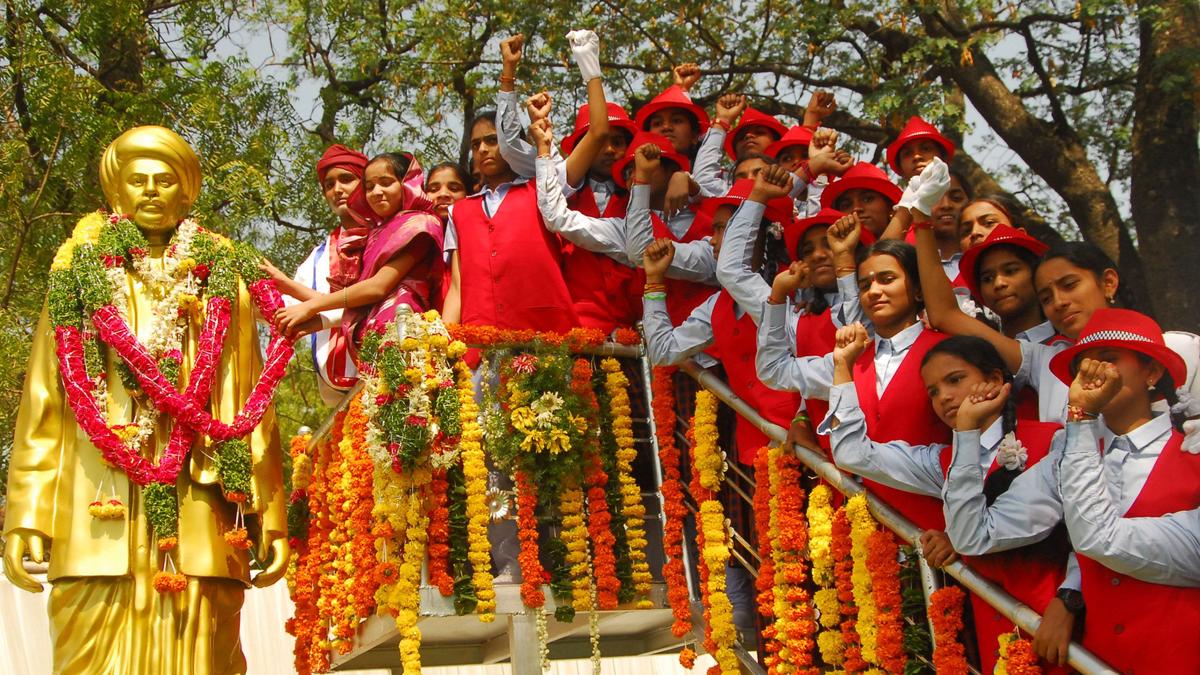
- 13 Apr 2025
Introduction:
Jyotiba Phule (1827–1890) stands out as one of the foremost social reformers of 19th-century India, whose contributions to education, caste reform, women's rights, and rationalist thought continue to influence contemporary debates on social justice.
Born into the Mali casteinMaharashtra, Phule’s awakening began in 1848 after facing caste-based humiliation at a Brahmin wedding. That same year, inspired by Cynthia Farrar (a Christian missionary) and rationalist Thomas Paine, he and his wife Savitribai Phule established India’s first school for girls. By 1851, they had opened 18 schools, and later, night schools for workers and women—challenging both gender and caste hierarchies in education.
Phule’s activism extended beyond education. In 1873, he founded the SatyashodhakSamaj (Society of Truth Seekers), an organization aimed at eradicating caste-based oppression and challenging Brahminical dominance. His work Gulamgiri (Slavery) (published in 1873) likened the condition of Dalits and Shudras to that of African-American slaves, emphasizing systemic subjugation through religious orthodoxy.
Phule argued for compulsory primary education, particularly for the rural poor. In his Statement to the Education Commission, he recommended scholarships, annual prizes, and mandatory schooling up to age 12, noting that agricultural poverty kept children away from education.
In his agrarian treatise ShetkaryancheAsud (Farmer’s Whip), Phule proposed:
- Employing army personnel in public works like dams and bunds.
- Returning village pasture lands from the Forest Department.
- Importing cattle for meat to preserve draught animals crucial to agriculture.
These proposals reflected his commitment to economic upliftment of farmers and sustainable agricultural practices.
Phule’s spiritual views evolved toward rational humanism. Though he respected the equality-based ethics in Islam and Christianity, his final philosophical work, Sarvajanik Satya Dharma Pustak, rejected all sectarian religious texts and called for a universal spiritual order. He questioned caste sanctity, ridiculed the notion of sacred superiority, and criticized the irrationalities in scriptural justifications.
He strongly supported women’s rights, defended PanditaRamabai’s conversion, and denounced polygamy, arguing for gender parity in both religious and social spheres. He wrote, “How would men feel if women married more than one man?”
Despite opposition from Bal Gangadhar Tilak and orthodox Hindu nationalists, Phule remained focused on uplifting the oppressed, even bailing Tilak out of jail at one point—illustrating his commitment to justice over personal differences.
Phule’s legacy remains crucial in modern India’s quest for social equity. His efforts to democratize education, dismantle caste, and promote inclusive governance laid the groundwork for India's later constitutional and social reforms.
Revisiting NREGA Wage Rates: A Case for Urgent Reform
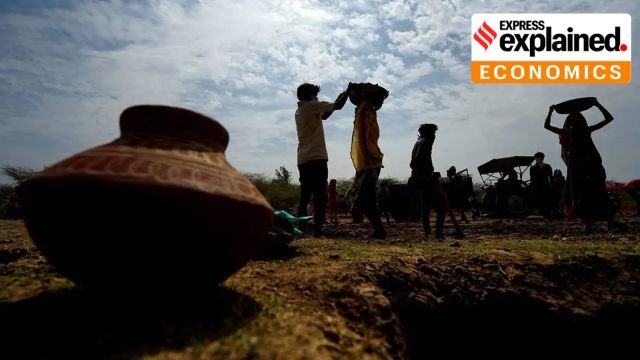
- 12 Apr 2025
In News:
The Mahatma Gandhi National Rural Employment Guarantee Act (MGNREGA) is the world’s largest public employment programme, aimed at ensuring livelihood security through guaranteed rural employment. However, a recent report by the Parliamentary Standing Committee on Rural Development and Panchayati Raj (April 2025) underscores a critical challenge: the wage rates under MGNREGA are increasingly inadequate, failing to provide even subsistence-level income.
With over 25 crore registered workers, the scheme is central to rural welfare. Yet, its effectiveness is diluted due to systemic underpayment. For FY 2025–26, MGNREGA wages vary from ?241 in Nagaland to ?400 in Haryana, averaging only ?294 nationally—a meagre 5% increase from the previous year. In many states, this rate is significantly lower than the prevailing minimum wage, in some cases by over ?200, raising serious questions about wage fairness and constitutional obligations.
Legal and Policy Background
Section 6 of the MGNREGA Act permits the Centre to fix wage rates independently of the Minimum Wages Act, 1948, though the wage cannot be below ?60. Historically, from 2005 to 2009, NREGA wages matched each state’s minimum agricultural wage. However, the Centre capped NREGA wages at ?100 in 2009 due to financial concerns, leading to payments falling below statutory minimum wages—a move that the Karnataka High Court (2011) and Supreme Court (2012) found violative of labour rights.
In response to mounting concerns, wage indexation to the Consumer Price Index for Agricultural Labourers (CPI-AL) began in FY 2011–12, with 2009 as the base year. Nevertheless, CPI-AL is narrow in scope compared to CPI-Rural (CPI-R), which better reflects the cost of living for rural workers across sectors.
Ignored Recommendations and Institutional Apathy
Several expert bodies have urged wage revisions. The Jean Dreze Committee (2010) advocated aligning NREGA wages with state minimum wages or, at the very least, indexing them effectively. The Mahendra Dev Committee (2014) recommended CPI-R-based indexing with an updated base year, while the Anoop Satpathy Committee (2019) proposed a national floor wage of ?375 (at July 2018 prices). However, the Centre has largely disregarded these suggestions, citing fiscal constraints.
Only a few states, including Odisha and Himachal Pradesh, have supplemented NREGA wages from their own budgets. Most continue with the Centre’s insufficient rates, causing regional disparities and undermining the constitutional promise of equal pay for equal work (Article 39).
Need for Course Correction
The current wage structure risks violating Article 23 of the Constitution, as flagged in the Supreme Court’s 1983 Sanjit Roy vs State of Rajasthan verdict, which held that paying less than the minimum wage constitutes “forced labour.”
Moreover, stagnant wages have contributed to declining worker participation. The Standing Committee rightly argues that current wages do not meet basic daily expenses and recommends a minimum daily wage of ?400. Without wage parity and realistic indexation, the scheme fails to uphold its foundational promise of dignified rural employment.
Conclusion
MGNREGA is more than a welfare scheme—it is a statutory right. To realize its full potential in promoting rural livelihoods and inclusive growth, wage reforms are imperative. Revising NREGA wages to reflect minimum wage laws, inflation trends, and regional parity is not just an economic necessity—it is a constitutional obligation.
Marine Litter Crisis: A Call for Unified Global and National Action
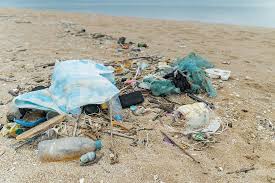
- 11 Apr 2025
Context:
Marine litter, particularly plastic waste, has emerged as a critical global environmental issue. With over 700 marine species affected and microplastics infiltrating food chains, the issue demands both global cooperation and local implementation. Despite India's efforts in solid and plastic waste management, a direct legislative mandate to mitigate marine litter remains absent.
Magnitude of the Crisis
- UNESCO warns: By 2050, plastic volume in oceans could exceed fish biomass.
- Ghost Gear: Lost/discarded fishing gear (nets, traps, lines) poses severe threats:
- 5.7% of nets, 8.6% of traps, and 29% of fishing lines are lost annually (UNEP).
Key Global Frameworks
- MARPOL (Annex V) – In force since 1983, regulates ship-generated garbage disposal in oceans.
- UNCLOS (1994) – Part XII mandates nations to prevent pollution from land-based and sea-based sources, including ghost gear.
- Global Programme of Action (1995) – First UN initiative addressing land-based marine pollution.
- SDGs:
- SDG 14.1: Reduce marine pollution, especially plastics.
- SDG 6.3: Improve water quality via integrated management.
- Honolulu Commitment (2011):
- Reduce land-based debris
- Address sea-based litter
- Clean up accumulated coastal & deep-sea litter
Institutional and Voluntary Actions
- Global Partnership on Marine Litter (GPML, 2012) – UNEP-led initiative uniting stakeholders for source-to-sea plastic mitigation.
- AHEG (2017) – UNEP expert group assessing policy responses for marine litter and recommending frameworks.
- Clean Seas Campaign (2017) – Advocates for elimination of single-use plastics and behaviour change.
- UNEA Resolutions on Marine Litter:
- Adopted in 2014 (UNEA-1), 2016 (UNEA-2), 2017 (UNEA-3), and 2019 (UNEA-4).
- While non-binding, they push for total elimination of litter discharge and evidence-based policymaking.
Scientific Support
- GESAMP (Group of Experts on the Scientific Aspects of Marine Environmental Protection) has, since 2010, guided scientific research on:
- Microplastic sources
- Marine ecosystem impacts
- Monitoring and mitigation strategies
India’s Current Status and Initiatives
- No direct marine litter law or policy yet exists.
- A multi-ministerial body involving MoES, MoST, and MoFAD is drafting a National Marine Litter Action Plan.
- Relevant policies in place:
- Plastic Waste Management Rules, 2016 (includes Extended Producer Responsibility – EPR)
- Solid Waste Management Rules, 2016
- Water (Prevention and Control of Pollution) Act, 1974
Challenges in India
- Fragmented implementation
- Limited monitoring of litter entering marine zones
- Lack of focus on coastal-level execution
Way Forward
- Adopt a national marine litter policy with local implementation mechanisms.
- Strengthen enforcement of international agreements like MARPOL and UNCLOS.
- Promote circular economy models and enhance waste infrastructure.
- Encourage public-private partnerships, community awareness, and behaviour change.
- Support scientific monitoring, research, and innovation.
Conclusion
The transboundary nature of marine litter necessitates global cooperation backed by national accountability. India's next steps must include a dedicated marine litter law, enhanced inter-ministerial coordination, and alignment with international best practices to secure its coastal and marine ecosystems.
Kashmir Rail Link: A Strategic and Developmental Milestone
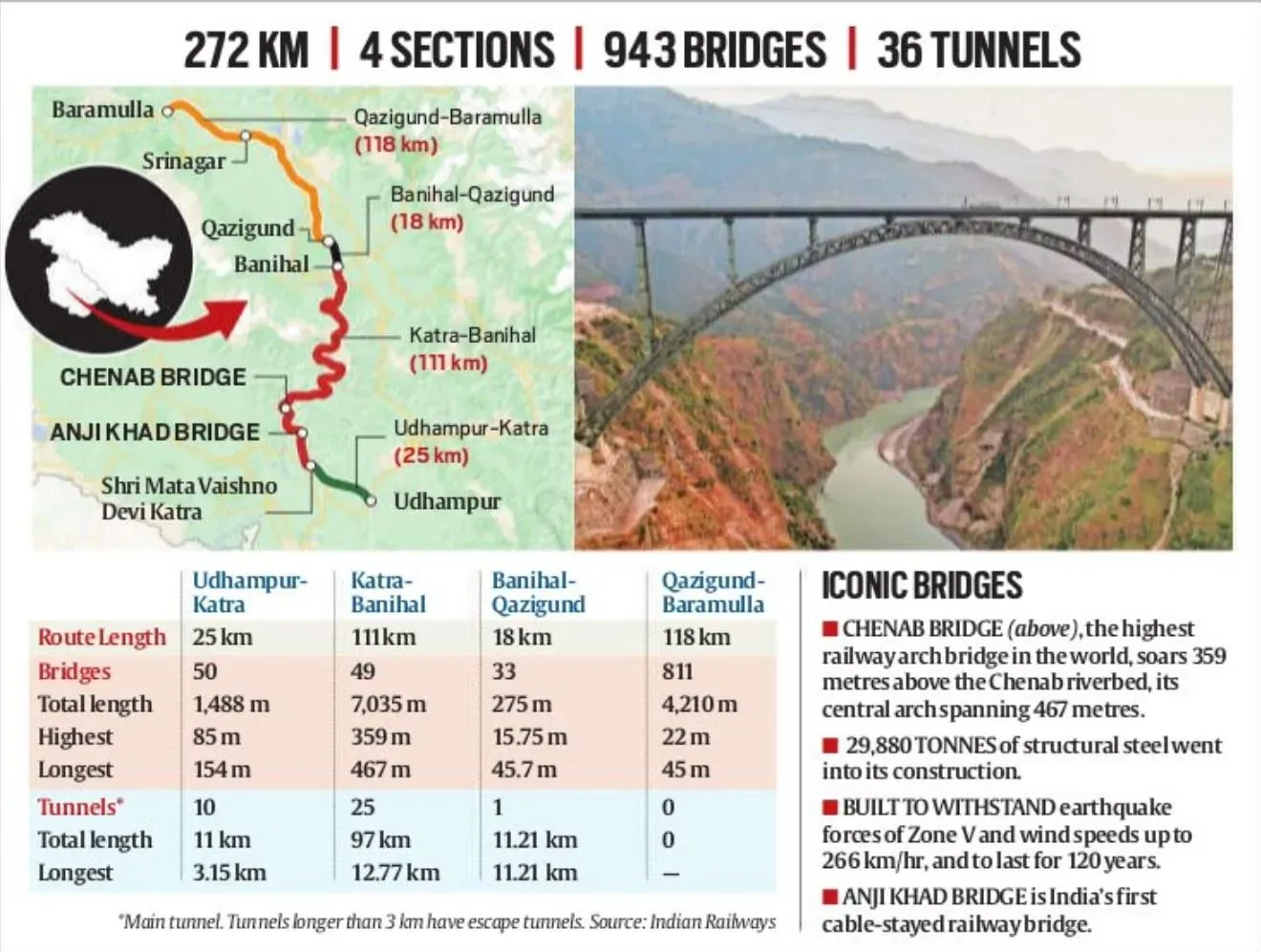
- 07 Jun 2025
In News:
The launch of the Vande Bharat Express between Katra and Srinagar by Prime Minister Narendra Modi marks a transformative chapter in Jammu and Kashmir’s infrastructural journey. The long-awaited completion of the Udhampur-Srinagar-Baramulla Rail Link (USBRL) is not merely a technological feat, but a symbol of national integration, economic upliftment, and inclusive development in the Kashmir Valley.
Historical Background
The evolution of rail connectivity in Jammu and Kashmir dates back to the colonial era when, in 1897, a 40–45 km rail line linked Jammu to Sialkot (now in Pakistan). Subsequent plans to extend railways to Srinagar in the early 20th century were shelved. After the 1947 Partition, Jammu was cut off from the rail grid as Sialkot became part of Pakistan. The region had to wait until 1975 for the inauguration of the Pathankot–Jammu line. The Jammu–Udhampur line, started in 1983, was completed only in 2004.
In 1994, the rail project was further extended to include Srinagar and Baramulla, and the USBRL was declared a national project in 2002, with the initial estimated cost of ?2,500 crore.
USBRL: Engineering Triumph
The fully operational 272 km USBRL has been completed at a revised cost of ?43,780 crore. It includes 36 tunnels, 943 bridges, and several record-setting engineering marvels in the seismically active, snow-covered terrain of the Shivalik and Pir Panjal ranges.
- Chenab Bridge: The world’s tallest railway arch bridge, 359 meters above the riverbed, surpassing even the Eiffel Tower. Designed to withstand wind speeds of 260 km/h and extreme temperatures, it spans 1,315 meters and has a life expectancy of 120 years.
- Anji Khad Bridge: India’s first cable-stayed rail bridge, located in Reasi, towers 331 meters above the river and stretches 725 meters. Its iconic inverted Y-shaped pylon is supported by 96 high-tensile cables.
- Tunnel T-49: At 12.77 km, it is India’s longest transport tunnel, located in Ramban district, designed to ensure seamless all-weather connectivity.
Strategic and Socio-Economic Significance
This rail link is a game-changer for the region. By reducing Katra–Srinagar travel time to just 3 hours, it ensures year-round, all-weather accessibility, even during harsh Himalayan winters. The connectivity is critical not only for civilians but also for the rapid movement of security personnel in this strategically sensitive region.
Economically, the rail link is poised to boost trade and tourism. It will facilitate the quicker and more cost-effective transport of local produce such as apples, walnuts, saffron, pashmina, and handicrafts, thereby integrating the Valley with national markets. Reduced logistics costs will also lower the prices of essential goods imported into Kashmir.
Way Forward
The upcoming extension to Jammu Tawi aims to further enhance nationwide connectivity to Srinagar. This project stands as a testament to India’s commitment to inclusive development, national unity, and strategic infrastructure in border regions. With its blend of engineering excellence and socio-political impact, the USBRL reinforces the vision of a Viksit Bharat that leaves no region behind.
Tiger Conservation in India
- 06 Jun 2025
In News:
India, which hosts over 70% of the world’s wild tiger population, holds a dual responsibility of pride and stewardship. The near-collapse of tiger numbers in 2006, with populations falling to around 1,400 and local extinctions in Sariska and Panna, prompted a national awakening. Strengthened interventions such as the formation of the National Tiger Conservation Authority (NTCA) and Project Tiger rejuvenation efforts helped India register over 3,600 tigers in the 2023 census, reflecting significant progress.
From Crisis to Recovery: Institutional Response
The disappearance of tigers due to poaching, habitat degradation, and poor monitoring led to structural reforms post-2006. The NTCA (established in 2005) ensured stricter protocols, better surveillance, and habitat restoration. India now boasts 53 Tiger Reserves, with central and southern states like Madhya Pradesh, Karnataka, and Uttarakhand emerging as conservation success stories.
Emerging Challenge: Prey Base Decline
Despite rising tiger numbers nationally, several reserves in eastern and central India—such as Guru Ghasidas, Indravati, Udanti-Sitanadi (Chhattisgarh), Palamau (Jharkhand), and Simlipal and Satkosia (Odisha)—have shown worrying trends of tiger decline. The core issue is not direct poaching but the fall in prey density, especially species like chital, sambar, and gaur. Scientific evidence indicates that tiger viability is closely tied to prey abundance, with a threshold of at least 10–15 prey animals per sq km required for stable populations.
Socioeconomic Roots of Ecological Depletion
Many affected reserves lie in poverty-stricken tribal regions. In the absence of alternative protein sources and sustainable livelihoods, communities turn to bushmeat hunting using traditional snares and traps. This not only reduces herbivore populations but also threatens predator survival. Palamau Reserve is a stark example where both large herbivores and tigers have nearly vanished under such pressures.
Institutional Recommendations and Ecological Restoration
The NTCA-WII 2023 report recommends short-term herbivore breeding enclosures but recognizes their limitations in rewilding success. A sustainable solution lies in habitat quality enhancement and involving communities in conservation. Some reserves still retain dense forests, providing an ecological foundation for revival. The decline of left-wing extremism in many areas also opens avenues for focused conservation interventions.
Towards Inclusive Conservation: Eco-Tourism and Livelihoods
Prosperous reserves like Bandhavgarh and Ranthambore benefit from conservation-linked tourism and community participation. In contrast, remote and underdeveloped areas lack such economic linkages. Promoting inclusive eco-tourism, skill development, and income-generation activities—such as SHGs, poultry farming, and forest produce marketing—can transform local attitudes.
Way Forward: Integrated, People-Centric Approaches
India must adopt multidimensional strategies combining ecological, institutional, and social measures:
- Implement prey recovery plans in Tiger Conservation Plans (TCPs).
- Provide targeted funding and technical support to underperforming states.
- Restore grasslands, ensure wildlife corridors, and adopt technology (drones, AI) for monitoring.
- Recognize community forest rights, promote Gram Sabha governance, and expand MGNREGA to conservation-linked jobs.
Conclusion
India’s tiger conservation success is laudable but remains precarious if prey depletion continues unchecked. The path ahead demands a shift from protectionism to participatory conservation—rooted in equity, ecological integrity, and community empowerment. The survival of the tiger is not merely a wildlife concern, but a test of India’s commitment to sustainable development and inclusive environmental governance.
Population Census 2027
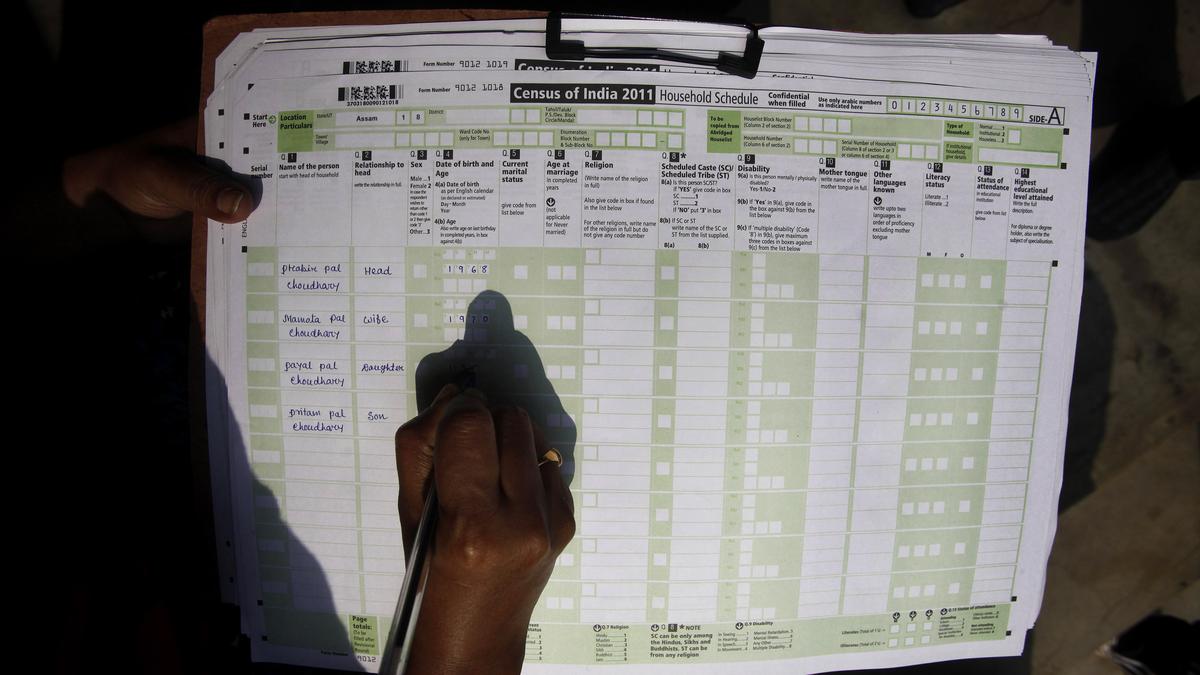
- 05 Jun 2025
In News:
India’s next population census is scheduled to be completed by March 1, 2027, marking a historic return to the decennial exercise after a 16-year gap—the longest in independent India’s history. Announced by the Ministry of Home Affairs (MHA), this census will be India’s first digital census and the first to include caste enumeration since Independence.
The census will be conducted intwo phases:
- House Listing and Housing Schedule
- Population Enumeration (including caste data)
The enumeration process will run from April 1, 2026 to February 28, 2027, with March 1, 2027, set as the reference date for most of India. For Ladakh and snow-bound areas of J&K, Himachal Pradesh, and Uttarakhand, the reference date will be October 1, 2026.
This exercise will be conducted under the Census Act, 1948 and the Census Rules, 1990. A gazette notification, expected on June 16, 2025, will formally announce the schedule. Around 25–30 lakh enumerators, largely schoolteachers, will be retrained to use a custom mobile app—a key component of the digital data collection process.
A major inclusion in this census is caste enumeration, extending beyond the current Scheduled Caste (SC) and Scheduled Tribe (ST) data. A separate input field will record caste data for all categories, making it a potentially transformative tool for targeted welfare policies and social justice initiatives.
However, the 2027 Census is not just a demographic exercise—it holds critical constitutional and political significance, especially in the context of delimitation and women's political reservation.
Under Articles 81 and 82 of the Constitution, the next delimitation of Lok Sabha and State Assembly constituencies must be based on the first census after 2026. The current 543 Lok Sabha seats are still based on the 1971 Census. The 42nd Constitutional Amendment (1976) had frozen seat redistribution, which was extended by the 84th Amendment (2002) until after 2026.
Once census data is finalized (likely by late 2027), Parliament must pass a Delimitation Act, following which a Delimitation Commission—headed by a retired Supreme Court judge and including the Chief Election Commissioner—will be constituted. This commission will determine the new seat allocation formula based on population per constituency.
Importantly, the implementation of 33% reservation for women in Parliament and State Assemblies, as mandated by the Women’s Reservation Act, is contingent upon the completion of this delimitation exercise.
This has triggered concerns, particularly from southern states like Tamil Nadu, which have seen slower population growth due to effective family planning. Redistribution based solely on population may reduce their parliamentary representation, leading to demands—such as by Tamil Nadu CM M.K. Stalin—for extending the status quo based on the 1971 census until 2056.
Political opposition has also criticized the delayed timeline, with Congress terming the 23-month postponement from 2021 as administrative inefficiency.
Moreover, there was no mention of updating the National Population Register (NPR), which is the first step towards the controversial National Register of Citizens (NRC).
In sum, Census 2027 is not just a statistical necessity but a politically sensitive and constitutionally mandated process, central to the future of electoral representation, gender justice, and federal balance in India.
India’s Green Economy: A Catalyst for Employment and Sustainable Development
- 04 Jun 2025
In News:
India’s transition to a green economy is not only central to achieving its environmental and climate goals but is also emerging as a powerful engine for economic growth and employment generation.
According to a recent report by NLB Services, India’s green sector is expected to generate approximately 7.29 million new jobs by FY2027–28, with the figure projected to rise to 35 million by 2047, aligning with India’s long-term net-zero commitments.
Understanding the Green Economy
A green economy encompasses sectors and activities that contribute to ecological sustainability, low-carbon development, and resource efficiency, while also promoting inclusive employment. It integrates environmental goals with economic planning, thus creating green jobs in areas such as renewable energy, electric mobility, sustainable construction, waste management, and green agriculture.
Sectoral and Regional Dynamics
The most significant employment potential lies in industries such as renewable energy, electric vehicles (EVs), green infrastructure, sustainable textiles, and waste-to-energy solutions. These sectors have witnessed rising investments and policy focus under national missions such as PM-KUSUM, Faster Adoption and Manufacturing of Hybrid and Electric Vehicles (FAME), and the National Hydrogen Mission.
While metropolitan areas like Mumbai, Bengaluru, and Delhi remain hubs for green employment, tier II and III cities are poised to play a crucial role in the decentralisation of the green economy. Cities such as Jaipur, Coimbatore, Bhubaneswar, Visakhapatnam, and Indore are projected to account for 35–40% of the green job creation by FY28, primarily in logistics, warehousing, sustainable agriculture, and urban waste management.
Evolving Skill Demands
The transition towards green employment is redefining workforce skill requirements. Modern green jobs demand a blend of environmental sustainability expertise and technological proficiency, particularly in AI, IoT, GIS, blockchain, and data analytics. This digital integration is reshaping job profiles and creating pathways for future-ready employment.
In response, industries are shifting hiring strategies to focus more on skill-based recruitment rather than conventional degrees. There is also a growing emphasis on industry-academia collaborations to align curricula with the evolving demands of the green economy, thus fostering climate-literate and digitally equipped professionals.
Gender Inclusion and Equity Challenges
Despite the promising employment potential, women currently constitute only 11–12% of the green workforce in India. Barriers include limited access to STEM education, workplace safety concerns, and socio-cultural constraints. However, progressive employers are increasingly adopting inclusive hiring practices, promoting women-centric skill development programmes, and partnering with training agencies to build a more diverse and equitable green talent pipeline. These efforts are expected to improve female participation by 12–15% in the next 5–6 years.
Economic Significance
India’s green economy is expected to contribute significantly to national GDP. Its valuation is projected to reach $1 trillion by 2030, and expand to $15 trillion by 2070, supporting India’s target of achieving net-zero emissions by 2070. Thus, it offers a dual dividend—economic prosperity and environmental security.
Conclusion:
India’s green transition presents a transformative opportunity to simultaneously address climate change, unemployment, and regional disparities. With appropriate policy support, capacity building, and inclusivity, the green economy can become the bedrock of sustainable and equitable growth.
Technology Industry and Climate Goals
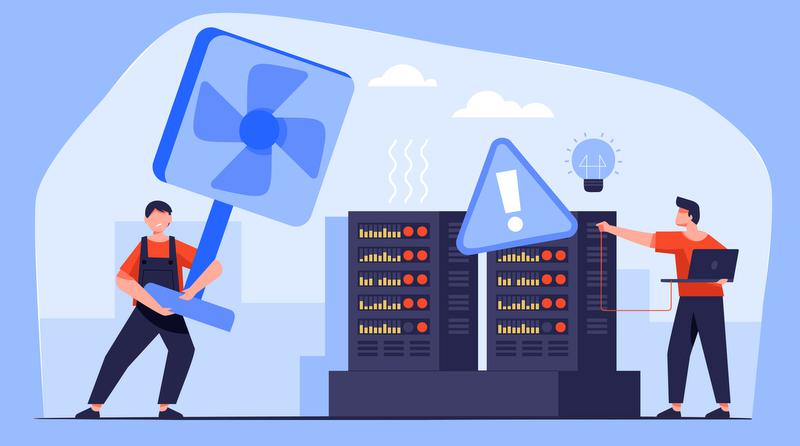
- 03 Jun 2025
Introduction
The global technology sector, while being a driver of economic growth and innovation, is also a significant contributor to greenhouse gas (GHG) emissions. With the rapid expansion of cloud computing and digital services, data centres—the backbone of the digital economy—consume massive amounts of energy, primarily for cooling.
A recent landmark study by Microsoft and WSP Global, published in Nature, highlights the potential of advanced cooling technologies to significantly reduce the environmental footprint of data centres.
The Problem: Heat and Emissions from Data Centres
- Energy Consumption: In modern data centres, cooling systems consume nearly as much electricity as computing itself.
- Heat Management: As chips become smaller and faster, they generate more heat. Without effective cooling, systems overheat, leading to failure and reduced efficiency.
- Climate Targets: The Information and Communications Technology (ICT) sector aims to reduce emissions by 42% by 2030 (from 2015 levels) and achieve net-zero by mid-century.
Cooling Innovations: The Game-Changers
1. Cold Plate Cooling (Direct-to-Chip Cooling)
- Coolant flows through microchannels on a plate attached directly to the chip.
- Reduces the need for energy-intensive air conditioning.
- Heat is transferred away efficiently and silently.
2. Immersion Cooling
- Entire hardware systems are submerged in thermally conductive, non-conductive liquid.
- Uses one-phase (liquid remains stable) or two-phase (liquid vaporises and condenses) systems.
- Ensures near-total heat dissipation and longer component life.
Environmental Impact (Study Findings):
Compared to traditional air cooling:
- GHG Emissions ↓ by 15–21%
- Energy Use ↓ by 15–20%
- Water Consumption ↓ by 31–52%
With 100% renewable energy:
- Emissions ↓ by 85–90%
- Water use ↓ by 55–85%
Tech Industry’s Broader Climate Actions
- Carbon Credits: Google, Netflix, and others invest in verified carbon offsets.
- Blockchain for Carbon Markets: Ensures transparency; used by Indian IT firms for ESG compliance.
- Renewable Energy: Tech giants like Apple, Meta, and Amazon power operations with green energy.
- Indian Leadership: Infosys, Reliance, and Tech Mahindra lead in green operations using AI and energy-efficient systems.
Challenges and Limitations
- Lifecycle Trade-offs: Coolant production and disposal can offset benefits.
- Capital Cost: Retrofitting old data centres is expensive.
- Regulatory Issues: Lack of global standards for coolants and fragmented carbon credit policies.
- Dependence on Grid: Benefits are reduced if electricity is still coal-based.
- Slow Deployment: Complex designs and supply chain delays hinder implementation.
Way Forward
- Life Cycle Assessments (LCAs): Evaluate true environmental costs over the product lifecycle.
- Unified Carbon Standards: Develop global frameworks for carbon credit verification and climate disclosures.
- Government Support: Provide tax incentives, green finance, and subsidies for early adopters.
- Strengthen R&D: Focus on low-impact coolants and AI-driven cooling systems.
- Public-Private Partnerships: Encourage innovation through collaboration among tech firms, startups, and governments.
Conclusion
The technology industry stands at a crossroads where sustainable innovation is essential. Cooling technologies like cold plates and immersion cooling, coupled with renewable energy adoption and carbon offset mechanisms, can enable the ICT sector to significantly reduce its environmental footprint. With effective policy support and strategic innovation, the tech sector can become a pillar of global climate action.
Urban Flooding in India: A Growing Challenge and the Path to Resilience
- 02 Jun 2025
In News:
Urban flooding has emerged as a critical challenge in India’s rapidly urbanising landscape. Cities like Delhi, Mumbai, Bengaluru, and Chennai face recurrent inundations, leading to loss of life, infrastructure damage, and economic disruptions. This crisis stems from a combination of outdated urban drainage systems, rapid concretisation, encroachment on natural water bodies, and climate change-induced extreme weather events.
The Urban Drainage Crisis
Urban drainage refers to the infrastructure that manages rainwater and prevents flooding. However, over 70% of India’s urban areas lack scientifically designed stormwater systems (MoHUA, 2019). Mumbai’s stormwater drains, originally built in the 1860s, can handle only 25 mm of rainfall per hour, while rainfall events often exceed 100 mm/hour. Delhi's drainage is based on 1976 norms, incapable of handling current rainfall intensities, such as the 185.9 mm received in a single day in May 2025. Bengaluru’s network is outdated, with over 65% of its lakes encroached and connected stormwater drains severely undersized.
Key causes of urban flooding include:
- Natural Factors: Intensifying short-duration rainfalls due to climate change, low-lying topographies.
- Man-made Factors: Unplanned urbanisation, loss of wetlands, illegal constructions, outdated design standards, infiltration of sewage into stormwater lines, and poor maintenance.
Economic and Environmental Impacts
Floods cause the highest economic damage among natural disasters in India. In 2024, Mumbai received 300 mm of rain in six hours, crippling the city’s transport and health systems. Chennai’s monsoon floods in 2024 led to massive waterlogging due to blocked drains and concretised surfaces.
Urbanisation has drastically increased impervious surfaces, reducing natural infiltration and increasing runoff. Nashik, for instance, witnessed rapid impervious expansion, contributing significantly to urban flooding.
Technological Solutions: GIS and Remote Sensing
To tackle urban flooding, advanced tools like Geographic Information Systems (GIS) and remote sensing are being deployed:
- Satellite Monitoring: ISRO and NRSC use high-resolution imagery to monitor rainfall, land use, and flood-prone zones. LiDAR-generated Digital Elevation Models (DEMs) help map vulnerable areas.
- Hydrological Modelling: Tools like HEC-HMS and HEC-RAS simulate flood scenarios and help plan mitigation strategies.
- Urban Drainage Mapping: GIS assists in identifying drainage bottlenecks and encroachments. For instance, GIS studies in Ahmedabad and West Bengal’s Keleghai Basin have enabled flood risk zoning.
Government Interventions
Several policies and programs support flood mitigation:
- AMRUT 2.0 and Smart Cities Mission: Promote integrated stormwater systems and sustainable urban drainage.
- Model Building Bye Laws (2016): Mandate rainwater harvesting.
- Jal Shakti Abhiyan, Atal Bhujal Yojana, and Amrit Sarovar Mission: Encourage water body rejuvenation and groundwater recharge.
- NDMA Guidelines: Recommend real-time flood forecasting and risk mitigation using satellite data.
Future Directions
Moving forward, flood resilience must be built through:
- Green Infrastructure: Restoring wetlands, using bioswales and permeable pavements.
- Smart Drainage Systems: IoT-enabled sensors for real-time monitoring and early warnings.
- AI Integration: Enhancing prediction models using real-time meteorological data.
- Policy Enforcement: Preventing illegal constructions on floodplains and drainage channels.
- Community Engagement: Raising awareness on waste disposal and flood preparedness.
Conclusion
Urban flooding in India reflects the failure to integrate environmental planning into urbanisation. However, with the aid of emerging technologies, inter-agency coordination, and proactive governance, Indian cities can transform from reactive flood responses to resilient urban systems. A holistic approach combining infrastructure, nature-based solutions, and data-driven policies is essential for sustainable urban development.
Preserving Glaciers: A Cry for Climate Justice and Water Security

- 01 Jun 2025
In News:
In 2025, the United Nations has declared the year as the International Year of Glaciers’ Preservation, underscoring the urgent global need to address the retreat of glaciers. This critical issue was the focus of the International Conference on Glaciers’ Preservation held in Dushanbe, Tajikistan, co-hosted by the Republic of Tajikistan with the support of the UN and attended by leaders and experts from across the globe.
Glaciers, often referred to as the “water towers of the world”, store nearly 70% of Earth’s freshwater. However, accelerating glacier melt—driven by global warming—has become a slow-moving catastrophe. Since 1975, over 9,000 billion tons of glacial ice have been lost. The period from 2022 to 2024 marked the highest recorded glacier mass loss, with many smaller glaciers projected to vanish entirely within this century. This phenomenon threatens not only mountain ecosystems but also global water security, food systems, biodiversity, infrastructure, and human livelihoods.
Developing countries, particularly those in Asia, Africa, and Latin America, face disproportionate vulnerabilities due to glacier retreat. Communities dependent on glacier-fed rivers for drinking water, irrigation, and hydropower are witnessing increased poverty, forced migration, and infrastructure damage. Melting glaciers also contribute significantly to sea-level rise, placing coastal cities and low-lying regions at risk of displacement and flooding, as seen in Nigeria’s Niger Delta and Lagos.
The conference served as a clarion call to transition from pledges to concrete action. It recognized that 83% of global emissions that require mitigation lie with just 35 countries, emphasizing the need for collective ambition. The summit also launched the Decade for Cryosphere Science (2025–2034) and advocated for the establishment of a UN Glacier Preservation Fund to ensure sustained, long-term financing for adaptation.
Key recommendations included:
- Integration of glacier preservation into national climate policies, especially Nationally Determined Contributions (NDCs) and National Adaptation Plans (NAPs).
- Development of early warning systems and predictive tools for climate-related disasters in mountainous regions.
- Investments in data-driven adaptation, using AI and hydrological models to forecast risks and optimize resilience strategies.
- Promotion of gender-inclusive water governance, especially involving women in glacial and water-related decision-making.
- Establishment of hydro-meteorological services for glacier-dependent regions to safeguard water access and ensure resilience.
The Deputy Secretary-General of the UN stressed that resilience pays — every dollar spent on adaptation strengthens economies, protects livelihoods, and mitigates future losses. The upcoming Fourth UN Conference on Financing for Development in Seville and COP30 in Brazil were identified as critical moments to elevate financing and policy commitments.
In conclusion, glacier loss is not merely an environmental concern but a humanitarian and developmental crisis. The protection of glaciers is central to achieving SDG 6 (Clean Water and Sanitation) and must be addressed with the urgency, equity, and international solidarity it demands. The world must act now—so that future generations do not inherit a planet where glaciers and the lifelines they sustain have become a relic of the past.
Governor’s Assent and Supreme Court’s Landmark Judgment
- 10 Apr 2025
In News:
In a landmark judgment in The State of Tamil Nadu v. The Governor of Tamil Nadu & Anr., the Supreme Court of India decisively addressed the issue of Governors withholding assent to state bills without justification or within a reasonable time.
The case arose after the Tamil Nadu Governor delayed or reserved for the President’s consideration 10 re-enacted Bills passed by the State Assembly, prompting the State Government to move the Court. The Supreme Court declared such delays unconstitutional and laid down a time-bound framework for gubernatorial assent, thereby reinforcing the federal fabric and legislative autonomy of states.
Constitutional Framework and Issues
Under Article 200, when a Bill is presented to the Governor after being passed by the State Legislature, the Governor has four options: grant assent, withhold assent, return the Bill (except money Bills), or reserve it for the President. However, the proviso to Article 200 mandates that once a Bill is re-passed by the Legislature, the Governor “shall not withhold assent.” Article 163 requires the Governor to act on the aid and advice of the Council of Ministers (CoM), except in limited discretionary matters.
The crux of the problem lies in the absence of any timeline in Article 200, enabling some Governors to indefinitely delay or withhold assent—often termed a “pocket veto.” Such delays, especially in opposition-ruled states, have sparked accusations of political misuse and erosion of democratic norms. Tamil Nadu, Kerala, Punjab, and Telangana have faced similar issues, resulting in constitutional gridlock and litigation.
Key Observations of the Supreme Court
In its verdict, the Supreme Court declared that:
- The Governor's delay in granting assent or reserving re-passed Bills is illegal and violates constitutional provisions.
- The ten re-enacted Bills in Tamil Nadu are deemed to have received assent under Article 142, which empowers the Court to ensure "complete justice."
- The Governor has no discretion to reserve or withhold assent once a Bill is re-passed by the Assembly unless its content has materially changed.
- Indefinite inaction by the Governor amounts to a subversion of democracy and disrespect to the will of the people.
Time-bound Guidelines Laid Down
For the first time, the Court laid down clear timelines:
- 1 month to act (assent/reserve) on the aid and advice of CoM.
- 3 months to return a Bill if withholding assent without CoM's advice.
- 1 month to assent to a Bill re-passed by the legislature.
- 3 months maximum to reserve a Bill for the President, with justification.
Failure to comply renders the Governor’s inaction subject to judicial review, introducing a mechanism of constitutional accountability.
Significance for Federalism and Governance
The judgment is a milestone in reaffirming cooperative federalism, ending the misuse of gubernatorial discretion to obstruct state legislation. It upholds the supremacy of the elected legislature and enforces the constitutional principle that Governors are not political actors but facilitators of governance. It also ensures that democratic processes cannot be sabotaged by unelected constitutional functionaries.
Conclusion
By reinforcing time-bound gubernatorial actions and curbing arbitrary delays, the Supreme Court has safeguarded India’s constitutional architecture. As Dr. B.R. Ambedkar had warned, the effectiveness of the Constitution depends on its implementers. This verdict echoes that caution, ensuring that constitutional morality prevails over partisan politics.
Bridging the Gender Gap: Insights from “Women and Men in India 2024”
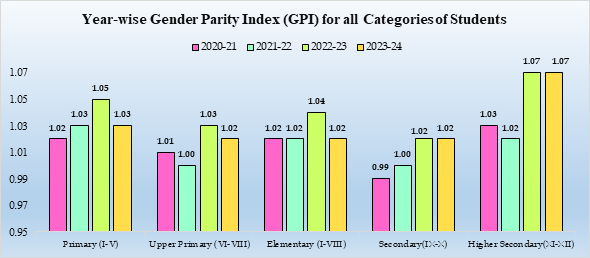
- 09 Apr 2025
In News:
The Ministry of Statistics and Programme Implementation (MoSPI) recently released the 26th edition of “Women and Men in India 2024: Selected Indicators and Data”, a flagship publication that offers a gender-disaggregated statistical portrait of India. This comprehensive document provides valuable insights into the progress, challenges, and opportunities in achieving gender equality across various socio-economic spheres.
Purpose and Scope
Drawing from official statistics across Ministries and Departments, the publication covers vital areas such as population dynamics, education, health, economic participation, and political representation, highlighting disparities and gains across gender lines. It also reflects urban-rural divides and regional variations, thus enabling data-driven policymaking for inclusive development.
Education: Moving Towards Gender Parity
India has shown consistent improvements in Gender Parity Index (GPI) in education. Primary and higher secondary levels have maintained high GPI values, indicating strong female enrolment rates. While upper primary and elementary levels witnessed some fluctuations, they largely remained close to parity, demonstrating the impact of initiatives like Beti Bachao, Beti Padhao and expanding access to girls’ education.
Labour Force and Financial Inclusion
Women’s Labour Force Participation Rate (LFPR) has seen a marked improvement, rising from 49.8% in 2017-18 to 60.1% in 2023-24 (usual status for ages 15+). This indicates a gradual integration of women into the formal and informal workforce, though structural and cultural barriers persist.
In the financial sector, women now own 39.2% of all bank accounts and contribute 39.7% of total deposits. Their participation is especially prominent in rural India, where they make up 42.2% of account holders, showcasing the success of financial inclusion efforts under the Pradhan Mantri Jan Dhan Yojana.
Digital and Entrepreneurial Engagement
A notable trend is the sharp rise in DEMAT accounts, suggesting increased retail participation in capital markets. From March 2021 to November 2024, the total DEMAT accounts quadrupled from 33.26 million to 143.02 million. While men still dominate in terms of numbers, female participation also grew fourfold, rising from 6.67 million to 27.71 million in this period.
Encouragingly, female-led proprietary establishments across sectors such as manufacturing, trade, and services have shown a rising trend over 2021–24, indicating growing entrepreneurial confidence.
Additionally, startups with at least one woman director recognized by DPIIT rose from 1,943 in 2017 to 17,405 in 2024, underscoring the rise of women in innovation and enterprise.
Political Participation and Electoral Empowerment
Electoral data reflects the deepening roots of women’s political empowerment. The number of total electors rose from 173.2 million in 1952 to 978 million in 2024, with increasing female voter registration. Female voter turnout, which was 67.2% in 2019, stood at 65.8% in 2024. Notably, the gender gap in voting has narrowed, with female turnout surpassing male turnout in 2024, signaling a positive shift in political engagement.
Conclusion
The “Women and Men in India 2024” report is more than a statistical compendium—it is a mirror to India’s gender realities. While progress is evident in domains like education, financial inclusion, and entrepreneurship, persistent gaps remain. For India to achieve true gender equity, these insights must inform targeted, data-driven policies that empower women across all sectors, making gender equality central to the nation’s development discourse.
Prescribing Preventive Medicine for a Healthy India
- 08 Apr 2025
In News:
As India aspires to become a $5 trillion economy and a global powerhouse, it must confront a growing public health crisis — the rising tide of non-communicable diseases (NCDs). Often called the "silent epidemic," NCDs are now the leading cause of death in India, responsible for approximately two-thirds of all mortalities. A preventive health-care mindset is the need of the hour — one that aims to "heal before there is a need to heal."
The Burden of NCDs: A Growing Threat
India has undergone a significant epidemiological transition, with communicable diseases declining but NCDs surging. Chronic ailments such as heart disease, diabetes, cancer, stroke, and chronic respiratory conditions now claim 5–6 million lives annually. Worryingly, these diseases are increasingly affecting younger populations, with 22% of Indians over the age of 30 at risk of dying from an NCD before 70.
This threatens India’s demographic dividend and economic productivity. Young patients in their 30s and 40s are presenting with heart ailments and diabetic complications, reflecting a national health crisis.
Economic Impact: A Drain on Development
The economic cost of NCDs is staggering. Reduced workforce participation and productivity losses are already costing India 5–10% of its GDP annually. A joint study by the World Economic Forum and Harvard School of Public Health estimated that India could lose $3.5–4 trillion due to NCDs between 2012 and 2030. Clearly, investment in preventive care is not a burden, but a strategic economic necessity.
Lifestyle and Environmental Triggers
Most NCDs are preventable. Key risk factors include:
- Sedentary lifestyles
- Unhealthy diets
- Tobacco and alcohol use
- Air pollution
- Genetic predisposition
About 80% of premature cases of heart disease, stroke, and diabetes can be prevented by lifestyle modification. With 22–23% of Indian adults overweight, tackling obesity is critical. Regular 30 minutes of moderate physical activity, healthy diets low in sugar and fat, and pollution control are essential pillars of preventive health.
Early Detection and Screening: A Lifesaver
Early diagnosis through regular screenings from age 40 (or earlier with family history) enables timely intervention. This includes:
- Hypertension and diabetes checks
- Mammography for breast cancer
- HPV testing for cervical cancer
- Colon polyp screening
Early detection helps prevent complications — e.g., controlling blood pressure to prevent stroke, or detecting early-stage cancer.
Technology and AI: Catalysts for Preventive Care
India’s 750+ million smartphone users present a unique opportunity. Mobile apps, wearables, and health trackers can promote awareness and monitor health in real time.
Artificial Intelligence (AI) can:
- Predict individual disease risk through data modelling
- Generate health risk scores
- Detect anomalies in X-rays or CT scans (e.g., lung nodules, fatty liver)
Used responsibly, AI enhances accuracy and access while keeping care humane and patient-centric.
Creating a Preventive Ecosystem
Preventive care must become a national mindset. Key stakeholders include:
- Individuals: Adopt healthy habits and regular check-ups.
- Workplaces: Implement employee wellness programmes.
- Healthcare providers: Shift from curative to preventive approaches.
- Government: Expand initiatives like the National Programme for Prevention and Control of NCDs and Health and Wellness Centres.
Policy measures must also be aligned — urban design should promote exercise, school curricula should include nutrition education, and food industry norms must limit unhealthy ingredients.
Conclusion
Preventive medicine is more than a health intervention — it is a development imperative. By encouraging early detection, healthy lifestyles, and technology-enabled care, India can reduce disease burden, enhance productivity, and safeguard its economic ambitions. Every individual’s choice matters. Scaled across 1.4 billion people, these choices will shape not just personal well-being but the health and prosperity of the nation.
Child Sexual Abuse in India
- 31 May 2025
Context:
A landmark global study published in The Lancet has brought to light the disturbing scale of child sexual abuse (CSA) worldwide. Using data from 204 countries (1990–2023), the study by the Institute for Health Metrics and Evaluation found that 18.9% of women and 14.8% of men globally were victims of CSA. In India, 30.8% of women and 13.5% of men reported having experienced sexual violence before turning 18, placing it among the countries with the highest prevalence for women.
The research revealed that most abuse begins in childhood, with 67% of girls and 72% of boys facing their first abuse before 18. A staggering 26.9% of Indian women and 9.4% of men aged 20–24 continue to report having been abused during their childhood, indicating the persistence of this crisis.
Context and Contributing Factors
CSA in India is exacerbated by societal stigma, patriarchal norms, and underreporting, particularly among boys. Male survivors face additional silence due to entrenched ideas of masculinity and victim-blaming. Abuse often occurs in familiar settings, including homes and schools, with digital exploitation emerging as a growing threat.
Furthermore, regional disparities persist. Urban areas report more digital abuse, while rural areas suffer from familial exploitation compounded by lack of awareness and legal access. States like Kerala and Maharashtra show better reporting, while Bihar and Uttar Pradesh lag.
Legal and Institutional Response
India enacted the Protection of Children from Sexual Offences (POCSO) Act in 2012, a gender-neutral law covering a wide range of sexual offences with child-friendly procedures. However, implementation gaps remain:
- Conviction rates below 30%
- Backlogged trials
- Insufficient training for police and judiciary
Additionally, mental health services for survivors are scarce, and sex education in schools remains inadequate, leaving children vulnerable and uninformed.
Civil Society and Global Comparisons
NGOs such as Save the Children, Kailash Satyarthi Children’s Foundation, and HAQ have played key roles in rehabilitation and awareness. International best practices offer valuable lessons:
- Nordic countries integrate mandatory sex education.
- Australia uses public awareness and national offender registries.
Recommendations and Way Forward
A multisectoral, prevention-focused approach is vital:
- Legal Reforms
- Fast-track POCSO courts
- Child-friendly police units
- Sensitisation training for frontline staff
- Education System Overhaul
- Include modules on “safe/unsafe touch” and digital safety
- Train teachers to detect and report CSA
- Community Engagement
- Empower Panchayats and child welfare committees
- Conduct grassroots campaigns to break the culture of silence
- Technological Safeguards
- Strengthen helplines like Childline 1098
- Collaborate with tech platforms for safer digital ecosystems
- Research and Data Collection
- Create a national CSA data repository
- Promote evidence-based policymaking through academic and NGO partnerships
Conclusion
The Lancet study underscores that CSA is not merely a criminal issue—it is a public health and social emergency. Laws like POCSO, while crucial, are not enough. What is needed is a coordinated, empathetic, and data-driven strategy that spans homes, schools, communities, and cyberspace. Only then can India safeguard its children not just from predators, but from institutional neglect and societal apathy.
Deputy Speaker of Lok Sabha
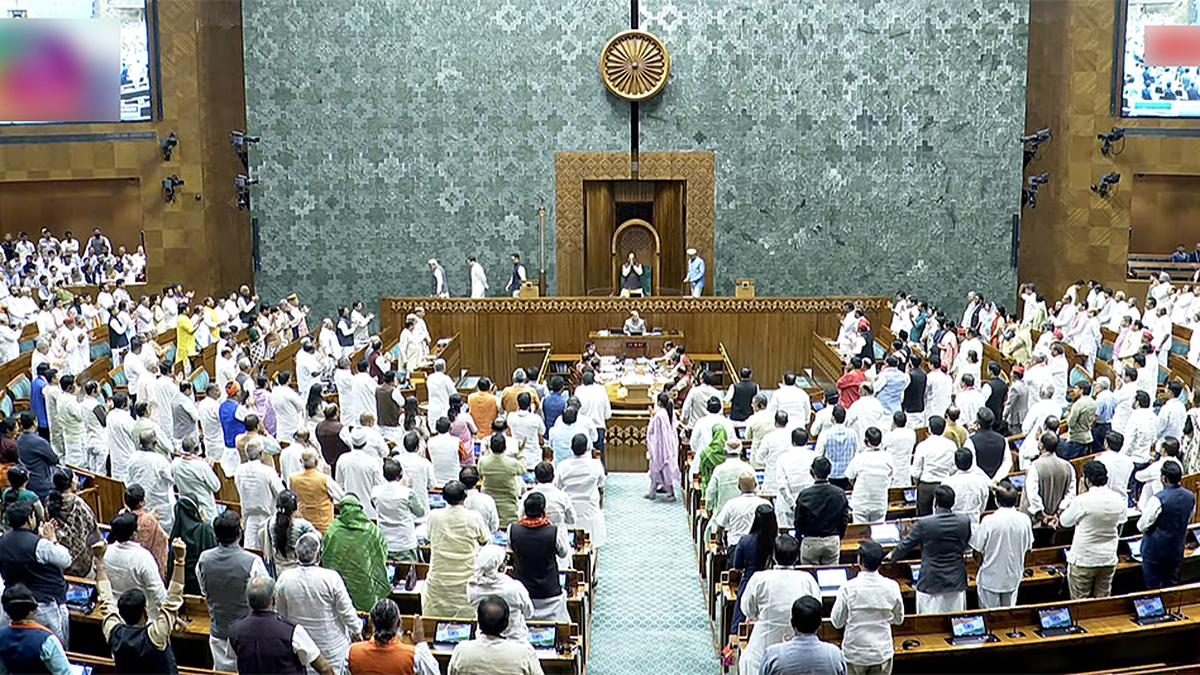
- 30 May 2025
In News:
The office of the Deputy Speaker of the Lok Sabha, though not explicitly bound by rigid timelines, holds constitutional and democratic significance in India's parliamentary democracy. Under Article 93 of the Constitution, the Lok Sabha must elect a Speaker and Deputy Speaker from among its members "as soon as may be." Despite this mandate, the Deputy Speaker’s post has remained vacant since June 2019, reflecting a deepening divergence from constitutional propriety and democratic convention.
Constitutional Framework and Election Process
The Deputy Speaker is elected by Lok Sabha members, with the election date fixed by the Speaker and communicated through a parliamentary bulletin. As per Article 94, the Deputy Speaker remains in office until resignation, disqualification, or removal by a resolution supported by a majority. If the seat falls vacant, the House must elect a replacement. Constitutionally, under Article 95, the Deputy Speaker exercises all powers of the Speaker in their absence, including presiding over sessions, maintaining order, and ensuring legislative discipline.
While the Constitution does not mandate a time frame for this election, the phrase “as soon as may be” is intended to ensure prompt appointment to avoid any constitutional vacuum. However, the absence of legal compulsion has been misinterpreted, leading to prolonged delays.
Functions and Powers
The Deputy Speaker assists the Speaker in running the House and steps in as presiding officer when the Speaker is absent. In legislative committees, if nominated, the Deputy Speaker automatically assumes chairmanship. Distinctively, unlike the Speaker, the Deputy Speaker may participate in debates and vote on all matters when not presiding. When chairing, however, the Deputy Speaker can only vote in case of a tie. The salary of the Deputy Speaker is charged on the Consolidated Fund of India, ensuring financial independence from executive discretion.
Parliamentary Convention and Historical Practice
India's parliamentary practice, inspired by the Westminster model, has traditionally ensured balance by allocating the Deputy Speaker’s post to the Opposition, especially since the post-Emergency era. Notable examples include G.G. Swell (1969–77) and Godey Murahari (1977–79), both from Opposition parties. The intent has been to uphold a power-sharing mechanism and offer space for dissent within the House's functioning.
Democratic Concerns Arising from Prolonged Vacancy
The continued absence of a Deputy Speaker through the 17th and now 18th Lok Sabha raises serious concerns. It undermines Articles 93–95, and violates Rule 8 of the Lok Sabha Rules (1952), which mandates timely election post a formal motion. The delay centralizes authority in the Speaker—typically from the ruling party—and distorts the democratic balance between treasury and Opposition benches.
Moreover, the non-appointment sidelines the principles of consensus-based governance and institutional checks and balances, weakening parliamentary accountability. It also poses risks during any potential Speaker vacancy, potentially triggering a constitutional crisis.
Conclusion
The Deputy Speaker's post is not a ceremonial redundancy but a constitutional necessity for balanced legislative functioning. Upholding this institution is critical for the health of India’s democracy. The ongoing vacancy reflects not just administrative inaction but a gradual erosion of parliamentary conventions, warranting urgent political consensus and constitutional fidelity.
Base Editing Breakthrough
- 29 May 2025
In News:
In a landmark medical feat, a nine-month-old American boy, Kyle “KJ” Muldoon Jr., became the first known human to be successfully treated using base editing, a next-generation gene editing technique derived from CRISPR-Cas9. KJ was born with Carbamoyl Phosphate Synthetase I (CPS1) deficiency, a rare genetic disorder that disrupts nitrogen breakdown, leading to toxic ammonia buildup—known as hyperammonemia—which can be fatal if untreated.
From CRISPR-Cas9 to Base Editing: Evolution of Gene Editing Tools
CRISPR-Cas9, developed in 2012 by Jennifer Doudna and Emmanuelle Charpentier, revolutionized biotechnology and earned them the 2020 Nobel Prize in Chemistry. Modeled after a microbial immune system, CRISPR works by creating “genetic memory”—capturing viral DNA and guiding the Cas9 enzyme, which acts as molecular scissors, to target and cut specific DNA sequences. This enables scientists to eliminate or repair faulty genes by inducing a double-strand break followed by insertion of a corrected DNA sequence.
However, the double-strand break mechanism raised concerns about unintended genetic consequences. Enter base editing, a refined tool that modifies single DNA bases—the letters A, T, C, G—without cutting both strands of the DNA. Instead of scissors and glue, base editing works like a pencil and eraser, replacing one incorrect base pair with the correct one using a fusion of Cas9 and a base-modifying enzyme. In KJ’s case, the specific base mispair causing CPS1 deficiency was successfully corrected using this technique.
Advantages of Base Editing
- Precision and Safety: Avoids double-strand breaks, reducing off-target effects.
- Compactness: Easier to deliver to cells via viral vectors.
- No foreign DNA: Eliminates need for donor DNA insertion.
- Customisation: Suitable for diseases caused by single-nucleotide mutations.
Challenges: Economic, Ethical, and Regulatory
Despite its promise, base editing faces several bottlenecks:
- Cost and Accessibility: The procedure is prohibitively expensive—estimated in the range of hundreds of thousands of dollars—and was funded by research institutions and biotech firms in KJ’s case.
- Scalability: The therapy was custom-designed for KJ’s specific mutation, limiting its use for others. Such personalised medicine lacks the economies of scale that attract pharmaceutical investment.
- Regulatory hurdles: Countries like India face issues of bureaucratic red tape and outdated ethical frameworks that delay the deployment of advanced genomic therapies.
- Ethical concerns: As the technology becomes more powerful, there are concerns about misuse, eugenics, and the potential editing of germline cells.
Conclusion
KJ’s treatment marks a paradigm shift in personalised medicine, highlighting the transformative potential of base editing in addressing rare and otherwise untreatable genetic disorders. However, wider application requires systemic reforms in bioethics, regulatory frameworks, and healthcare infrastructure. To ensure equitable access, future efforts must focus on cost reduction, public funding, global collaboration, and ethical oversight. If successfully scaled, base editing could revolutionise medicine for millions suffering from rare genetic diseases.
NITI Aayog Recommends Dedicated Credit Support and Reforms to Boost Medium Enterprises
- 28 May 2025
In News:
Medium enterprises (MEs), a vital yet under-recognized segment of India’s MSME ecosystem, have long faced significant challenges, especially in accessing affordable and timely credit. Though they constitute only about 0.3% of registered MSMEs, medium enterprises contribute nearly 40% of MSME exports, highlighting their critical role in India’s industrial growth and global trade competitiveness.
Significance of Medium Enterprises in the Indian Economy
The MSME sector as a whole contributes around 29% to India’s GDP and employs over 60% of the workforce. However, while micro and small enterprises dominate in number (97% and 2.7% respectively), medium enterprises represent a minuscule share by count but a disproportionately large share in exports and innovation. Medium enterprises have a turnover range of ?100–500 crore and investment in plant and machinery between ?25–125 crore, as per the revised FY26 classification norms announced in the Union Budget 2025-26.
Credit Gap and Financing Challenges
NITI Aayog’s 2025 report, Designing Policy for Medium Enterprises, reveals a credit deficit of approximately $10 billion faced by medium enterprises. This gap stems from institutional biases and structural constraints. Unlike micro units that benefit extensively from priority sector lending, medium enterprises receive fewer such loans and face borrowing costs about 4% higher than those for large companies. Moreover, out of 18 government MSME schemes, only 8 specifically target medium enterprises, which receive less than 18% of total scheme funds (?5,442 crore overall). The absence of dedicated working capital schemes exacerbates liquidity issues, limiting growth and scale-up prospects.
NITI Aayog’s Key Policy Recommendations
- Working Capital Financing Scheme: A sector-specific loan scheme, administered by the Ministry of MSME, is proposed to provide medium enterprises with working capital loans capped at ?25 crore, with individual requests up to ?5 crore. Loans would be linked to enterprise turnover and offered at concessional interest rates, addressing their substantial capital needs.
- Medium Enterprise Credit Card: To meet immediate liquidity requirements—such as payroll, inventory, and equipment maintenance—a credit card facility with a pre-approved limit of ?5 crore is recommended. This facility would follow market interest rates but include a repayment grace period.
- Expedited Credit Disbursal via Retail Banks: Leveraging local retail banks for faster fund distribution under MSME ministry supervision aims to reduce bureaucratic delays and enhance timely access to credit.
- Technology and Skilling Initiatives: The report advocates transforming existing MSME technology centres into ‘India MSME 4.0 Competence Centres’ tailored to sectoral and regional demands, spanning industries like engineering, electronics, and specialized manufacturing. It also proposes incorporating medium enterprise-specific modules into entrepreneurship training and skilling programmes to bridge labour skill mismatches.
- Digital Access and Compliance Support: NITI Aayog recommends creating a dedicated sub-portal within the Udyam platform that facilitates scheme discovery, compliance guidance, and AI-powered navigation to help medium enterprises efficiently access government resources.
Broader Structural Challenges
Apart from financing, medium enterprises face low adoption of advanced technologies, limited R&D support, inadequate sector-specific testing infrastructure, and a disconnect between training programmes and industry needs. These gaps impede innovation and scalability.
Strategic Importance and Policy Outlook
NITI Aayog emphasizes that medium enterprises have the potential to be major employment generators and innovation drivers if provided focused policy attention and financial support. Drawing lessons from global examples like Germany’s Mittelstand and Italy’s fashion industry, the report envisions India’s medium enterprises evolving into globally competitive firms over the next decade.
The medium sector’s formal labour structure also makes it key to transitioning India’s economy from informal to formal. Therefore, a coordinated and inclusive policy framework focusing on finance, technology, skill development, and digital infrastructure is vital to unlock this segment’s full potential and enhance India’s industrial competitiveness, export growth, and self-reliance.
State Space Policies of Gujarat and Tamil Nadu
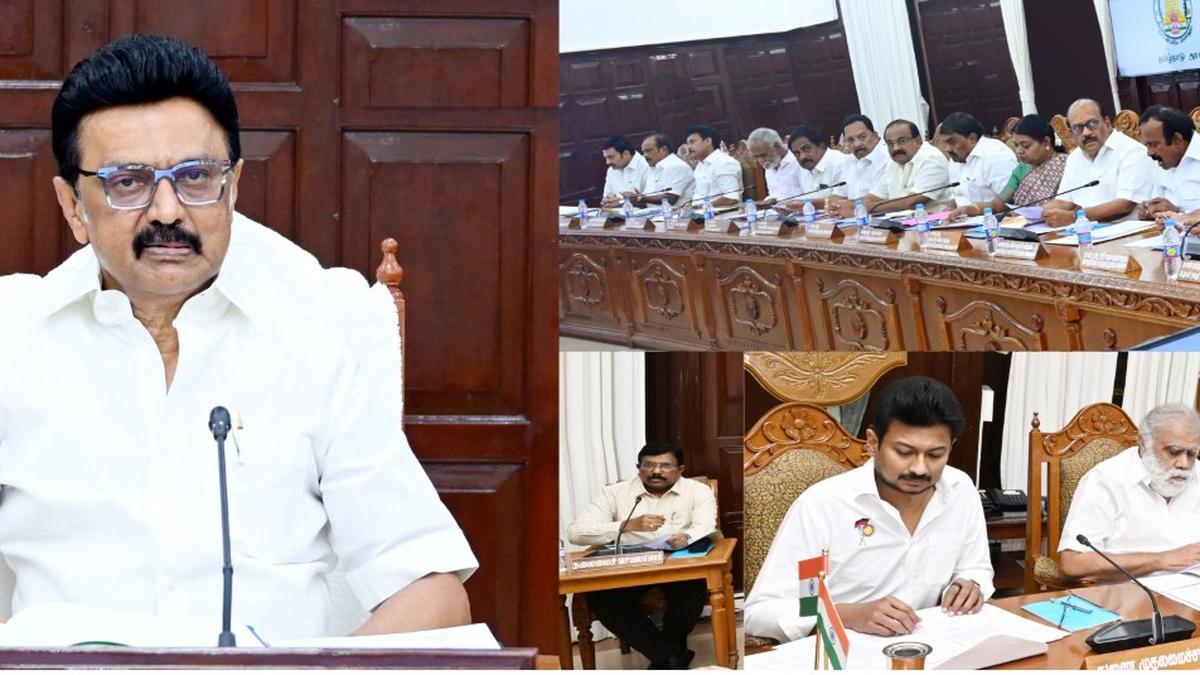
- 27 May 2025
In News:
India’s space sector, traditionally dominated by public institutions like ISRO, has seen major policy shifts since 2020 to enable private participation. In a significant development, Gujarat and Tamil Nadu have become the first Indian states to formulate state-level space policies, aiming to bolster private investment, foster innovation, and generate employment.
Recently, Gujarat launched the Space Tech Policy 2025–30, becoming the first state to do so. A day later, Tamil Nadu approved its Space Industrial Policy 2025. These policies complement the Indian Space Policy 2023 and the liberalisation of FDI norms in the space sector. They also align with national efforts led by IN-SPACe (Indian National Space Promotion and Authorization Centre), established in 2022 to facilitate private sector engagement in space activities.
Key Features and Objectives
Employment and Investment Targets:
- Gujarat aims to create 25,000 jobs, while Tamil Nadu targets 10,000 new high-skilled jobs.
- Tamil Nadu expects to attract ?10,000 crore in investments over five years.
Sectoral Scope: Both policies aim to develop a full spectrum of space-tech activities including:
- Satellite payload and component manufacturing
- Communication and propulsion systems
- Ground stations and control centres
- Space application software and analytics
State-specific Incentives:
- Gujarat will provide launch and patent support, capital incentives via the Gujarat Electronics Policy, and access to benefits under the IT/ITeS and Deep Tech Start-up Programme.
- Tamil Nadu offers capital subsidies up to 20%, a ?10 crore Space Tech Fund, payroll subsidies up to 30% in the first year, and location-based investment incentives.
Infrastructure and Ecosystem Development
- Gujarat plans to establish a Centre of Excellence in Space Technology and a dedicated manufacturing cluster in Sanand, near Ahmedabad.
- Tamil Nadu will create TNSpaceBays, special industrial zones catering to MSMEs, deep-tech start-ups, R&D labs, and international players.
- New satellite testing infrastructure and skill development programmes are planned in Chennai.
Strategic Importance
The policies reflect recognition of space technology’s growing importance in national security, navigation, healthcare, internet services, weather forecasting, and disaster management. Missions such as Chandrayaan, Mangalyaan, and SpaDeX have enhanced India’s global space credentials, motivating states to leverage their talent and industrial ecosystems to participate in this high-value sector.
These state initiatives also resonate with India’s broader push towards Atmanirbhar Bharat, by promoting domestic manufacturing and reducing dependence on imports in critical technology sectors.
Conclusion
The Gujarat and Tamil Nadu space policies mark a paradigm shift in India’s sub-national innovation strategy. By aligning with central space policy reforms and incentivising private participation, these states are poised to become key hubs in India’s space-tech value chain. Such proactive state-level interventions are vital for India’s ambition to emerge as a global space power and offer a replicable model for other states like Karnataka and Telangana, which are also planning similar initiatives.
India Becomes the 4th Largest Economy
- 26 May 2025
In News:
In a significant milestone for the Indian economy, India has officially surpassed Japan to become the 4th largest economy in the world in nominal GDP terms, as per the IMF World Economic Outlook (April 2025). According to NITI Aayog CEO B.V.R. Subrahmanyam, India’s GDP now stands at $4.19 trillion, marginally higher than Japan’s $4.18 trillion. This marks a historic moment, reflecting a shift in the global economic order and reaffirming India's rising stature on the world stage.
From Fifth to Fourth: A Decade of Accelerated Growth
India’s economic rise has been particularly notable over the past decade. From a GDP of $2 trillion in 2014, India has more than doubled its output to cross the $4 trillion mark in 2025. This rapid expansion has also been accompanied by a sharp rise in per capita income, which has grown from $1,438 in 2014 to $2,880 in 2025. In global rankings, India moved from the 5th position in 2024 to 4th in 2025, overtaking Japan and trailing only the United States, China, and Germany.
Factors Driving the Surge
India’s ascent is the result of multiple structural reforms and policy initiatives undertaken in recent years. Programs such as Digital India, Atmanirbhar Bharat, and the Production Linked Incentive (PLI) scheme have enhanced domestic manufacturing, boosted digital infrastructure, and encouraged self-reliance. The government’s focus on ease of doing business, tax reforms (GST, corporate tax rationalisation), and large-scale infrastructure investment under schemes like Gati Shakti have further catalysed growth.
Despite global trends towards supply chain diversification and reshoring, India continues to attract foreign companies due to its cost-effective labor, large consumer base, and improving logistics. For instance, companies like Apple continue to expand their operations in India, viewing it as a reliable manufacturing hub.
Strategic and Geopolitical Implications
India’s new economic position carries significant geopolitical weight. As the 4th largest economy, India’s influence in global financial institutions, climate negotiations, trade partnerships, and multilateral forums such as G20 and BRICS is set to grow. The achievement enhances investor confidence, thereby potentially increasing foreign direct investment (FDI) inflows.
Domestically, this growth presents an opportunity for addressing structural issues such as unemployment, regional disparities, and income inequality. The challenge ahead lies in ensuring that growth remains inclusive, sustainable, and innovation-driven.
Future Outlook
According to NITI Aayog, India is poised to surpass Germany within the next 2.5–3 years, potentially becoming the third-largest economy globally. For this, sustaining macroeconomic stability, boosting exports, enhancing skill development, and transitioning to a green economy will be crucial.
Conclusion
India’s rise to the 4th largest economy marks a defining moment in its development trajectory. It reflects not just statistical growth, but also the success of structural reforms, demographic potential, and policy resilience. As India prepares for its next leap, balancing economic dynamism with social equity will be the key to truly becoming a global economic leader.
Structural Shift in India’s Remittance Landscape
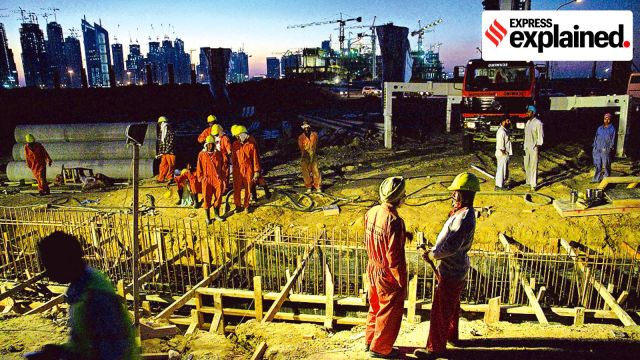
- 07 Apr 2025
In News:
According to the RBI’s latest Remittances Survey (2023–24), there has been a significant structural transformation in India's inward remittance patterns. Advanced Economies (AEs) — led by the United States, the United Kingdom, Canada, Singapore, and Australia — have overtaken the Gulf Cooperation Council (GCC) nations as the primary sources of remittances. This shift holds major implications for India’s migration, financial inflows, and socio-economic planning.
Changing Source Geography of Remittances
India’s total remittance inflow touched USD 118.7 billion in 2023–24, doubling since 2011. The United States alone accounted for 27.7%, followed by the UAE (19.2%), the UK (10.8%), Saudi Arabia (6.7%), and Singapore (6.6%). This marks a departure from the earlier dominance of the Gulf region, whose collective share has dropped to 38%, while Advanced Economies now contribute over 50%.
The top recipient states of these remittances in India are Maharashtra (20.5%), Kerala, and Tamil Nadu.
Factors Behind the Shift
1. Evolving Migration Trends:There has been a surge in professional, high-skilled Indian migrants heading to AEs, particularly in sectors like STEM, finance, and healthcare. These migrants tend to earn higher wages, have stronger job security, and remit more per capita compared to their low-skilled counterparts in the Gulf.
2. Declining Opportunities in the GCC:Several Gulf countries have implemented nationalisation policies like Saudi Arabia’s “Nitaqat,” which prioritise local hiring. Moreover, automation and economic diversification have reduced demand for foreign low-skilled workers. This, combined with COVID-19-induced job losses and return migration, has contributed to the decline in remittances from the region.
3. Education-Driven Migration:Countries like the UK, Australia, and Canada have emerged as popular education destinations. For instance, Indian migration to the UK tripled from 76,000 in 2020 to 250,000 in 2023. Post-study work opportunities and migration partnerships like the India-UK “Migration and Mobility Partnership” (2021) have bolstered this trend.
4. Cost and Mode of Transfers:Digitalisation has reduced remittance costs to India below the global average, although it still exceeds the SDG target of 3% for a US$200 transfer. Nonetheless, cash-based transactions remain significant for smaller amounts.
Economic and Policy Implications
1. Macroeconomic Importance:Remittances contribute about 3–3.5% of India’s GDP, consistently surpassing FDI and Official Development Assistance (ODA). They help finance nearly half of the merchandise trade deficit and act as buffers against external economic shocks.
2. Household-Level Impact:Remittances are pivotal for improving living standards, enabling expenditure on food, healthcare, and education. In Kerala, for instance, remittances account for over 36% of the state's domestic product.
3. Policy Challenges and Recommendations:
- Skill Alignment: Training systems must align with global job markets to prevent ‘wilful deskilling’ — where highly educated migrants take up low-skilled jobs.
- Migration Diplomacy: India must proactively negotiate bilateral/multilateral mobility agreements to secure rights, fair wages, and career progression for migrants.
- Diaspora Engagement: Policies should encourage productive use of remittances (e.g., investments, health, education) and tap diaspora networks for technology and knowledge transfer.
Conclusion
India’s remittance ecosystem is transitioning from Gulf-led low-skilled flows to knowledge-intensive, high-value contributions from Advanced Economies. Sustaining this trend will require strategic migration governance, skill reforms, and deepened engagement with the global Indian diaspora.
India’s Employment Challenge: Bridging the Gap Between Labour& Capital in the Era of Technological Transformation
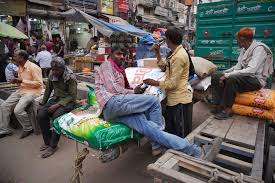
- 06 Apr 2025
Context:
India is experiencing a paradoxical trend — despite a rapidly expanding working-age population and rising production capacity, the generation of formal employment opportunities remains insufficient. Since 2017–18, while the working-age population has increased by approximately 9 crore, formal sector jobs have grown by only 6 crore, indicating an annual shortfall of around 50 lakh jobs. This mismatch is further compounded by the dominance of self-employment and informal sector jobs, especially in rural areas, raising concerns about both the quality and sustainability of employment.
Structural Shift Towards Capital-Intensive Growth
The country’s production systems are increasingly exhibiting capital-intensive tendencies — even in traditionally labour-intensive sectors such as textiles and food processing. This phenomenon, often referred to as "skill-biased technological change," is driven by two broad factors:
- Demand-Side Factors: The pressure to enhance productivity and reduce costs incentivises adoption of automated and capital-intensive technologies, especially in high-value manufacturing and services.
- Supply-Side Constraints: A shortage of skilled and technically trained labour impedes the effective utilisation of labour resources. Less than 10% of India’s workforce has received formal vocational or technical training, and most youth entering the labour market lack industry-relevant skills.
The declining cost of technology, coupled with stagnant real wages and rigid labour laws in some states, further tilts the balance in favour of machines over human labour.
Policy Interventions and Challenges
The Government of India has initiated schemes such as the Production-Linked Incentive (PLI) Scheme and the Employment Linked Incentive (ELI) Scheme to address the employment deficit.
- PLI Scheme: While it aims to boost manufacturing output, the scheme is heavily focused on high-tech sectors like electronics, drones, and IT hardware — which are capital- and skill-intensive. Despite this, the highest job creation under the PLI has been observed in food processing and pharmaceuticals, suggesting a disconnect between investment focus and employment potential.
- ELI Scheme: Designed to subsidise the cost of hiring untrained workers in labour-intensive sectors, the ELI provides short-term financial support via EPFO contributions. However, its long-term efficacy in ensuring sustainable skilling and employment remains uncertain due to lack of outcome data and short subsidy duration (2–3 years).
Need for a Cohesive Labour-Capital Policy Framework
India’s employment challenge cannot be addressed through fragmented policies. A cohesive framework is required that integrates:
- Industrial Policy with Skilling Policy: Ministries responsible for industrial production, labour, and skilling must work in tandem to ensure the availability of a workforce with skills that are aligned with the demands of emerging sectors.
- Incentive Structuring: The current flat subsidies under ELI could be modified into a graded structure, where higher transfers are provided for higher levels of certified skill acquisition, encouraging continuous skill upgrading.
- Skill Supply Chain Reform: Skill development institutions like ITIs and vocational centres should be incentivised based on placement rates and wage outcomes, not just enrolments or certifications.
- Labour Law Flexibility: State-level reforms in labour regulations are essential to reduce the cost of employing formal workers and to encourage job creation, especially in micro, small, and medium enterprises (MSMEs).
Way Forward for a Viksit Bharat (Developed India)
As India transitions towards becoming a high-value production economy, it must simultaneously invest in its human capital. This requires:
- Dynamic Skill Development Programs: Adaptive skilling strategies must be designed to align with evolving technological trends such as Artificial Intelligence (AI), robotics, and green energy.
- Data-Driven Employment Policies: Regular labour market surveys and outcome tracking of employment schemes are critical for evidence-based policymaking.
- Support for Labour-Intensive Sectors: Focused support to industries with high employment elasticity, such as textiles, leather, food processing, tourism, and construction, can yield substantial job creation.
In conclusion, advancing the agenda of Viksit Bharat demands equal emphasis on capital and labour. Without a strong and skilled workforce, India's demographic dividend risks turning into a demographic burden. Therefore, employment generation must be at the core of India’s development policy, with a strategic vision that links skilling, production, and structural transformation.
Waqf (Amendment) Bill, 2025
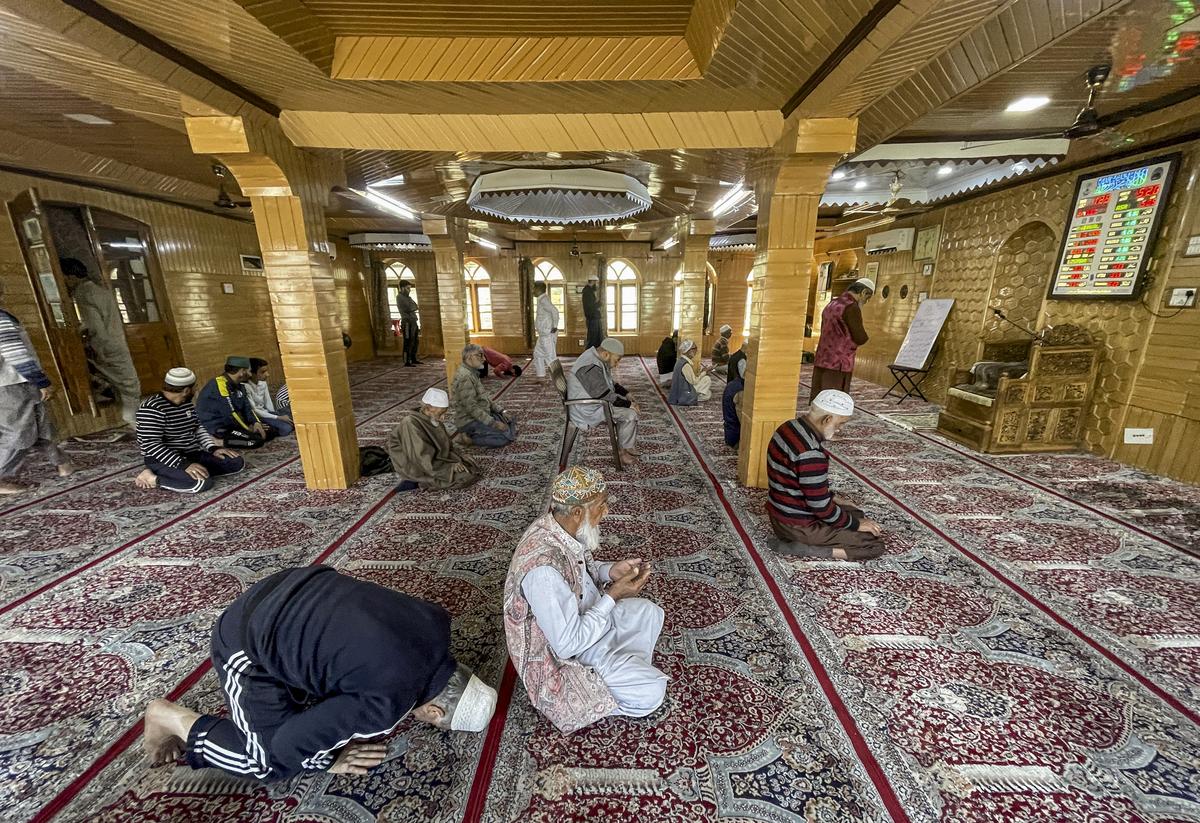
- 05 Apr 2025
In News:
The Waqf (Amendment) Bill, 2025, tabled in the Lok Sabha on April 2, 2025, seeks to amend the Waqf Act, 1995, which governs the administration of waqf properties in India. The revised Bill incorporates the recommendations of a Joint Parliamentary Committee (JPC) and has sparked significant political and community debate due to its proposed structural and procedural reforms.
1. Retention and Restriction of ‘Waqf by User’ Doctrine
- Background: The doctrine allows property to be treated as waqf based on uninterrupted communal usage, even without formal documentation.
- Revised Provision: Retains ‘waqf by user’ for properties registered before the enactment of the law but prohibits its use for future claims.
- Criticism: The introduction of a clause requiring individuals to prove Islamic practice for five years to establish waqf status is seen as exclusionary and arbitrary.
2. Inclusion of Non-Muslims in Waqf Institutions
- Provisions:
- Mandates the inclusion of at least two non-Muslims in the Central Waqf Council and State Waqf Boards.
- Removes the requirement that the CEO of a Waqf Board be Muslim.
- Redefines Waqf Tribunals to include a district judge, a Joint Secretary-level officer, and a Muslim law expert.
- Criticism: Raises questions about community autonomy in religious affairs under Article 26 of the Constitution.
- Government's Justification: Aims to enhance expertise, transparency, and administrative efficiency.
3. Enhanced Government Oversight in Waqf Property Surveys
- New Mechanism:
- Surveys to be conducted by senior officials above the rank of District Collector.
- Such officers will serve as the final authority in determining whether land is waqf or government-owned.
- Tribunal jurisdiction curtailed in such disputes.
- Implications:
- Centralizes decision-making within the state bureaucracy.
- Raises concerns about executive overreach and weakening of judicial oversight in waqf matters.
4. Centralised Registration and Digital Governance
- Digital Portal:
- Mandatory online registration of all waqf properties within six months.
- Extensions can be granted by waqf tribunals upon demonstration of "sufficient cause."
- Objective: To curb encroachment, enhance transparency, and create a uniform digital record of waqf assets.
5. Application of the Limitation Act, 1963
- Change Introduced: Repeals Section 107 of the Waqf Act, 1995, which exempted waqf properties from the statutory limitation period.
- Implication: Allows claims of adverse possession after 12 years; may legitimize longstanding illegal occupations of waqf land.
- Opposition View: Seen as a move that undermines waqf rights and aids encroachers.
6. Judicial Review and Appeals
- Revised Provision:
- Waqf tribunal decisions are no longer final.
- Appeals can be made to the High Court within 90 days.
- Courts can dismiss suits if properties are not registered within the stipulated time unless “sufficient cause” is shown.
- Impact: Enhances judicial scrutiny but also limits access to justice in certain cases through procedural conditions.
Critical Analysis
- Pros:
- Encourages transparency and formalisation of waqf governance.
- Introduces checks against misuse and encroachments.
- Provides a digital framework for property management.
- Cons:
- Risks state interference in religious institutions, impacting minority rights under Articles 25–28.
- Exclusion of oral traditions may erase significant community practices and histories.
- Implementation challenges due to administrative overburden and community mistrust.
Conclusion
The Waqf (Amendment) Bill, 2025, represents a significant shift in the governance of waqf properties by increasing state oversight, standardising processes, and promoting digital reforms. However, it raises serious questions about religious autonomy, federal balance, and minority rights. A careful balance between administrative efficiency and constitutional guarantees is essential to ensure inclusive and equitable governance.
India-China Relations at 75: Navigating the Dragon-Elephant Tango
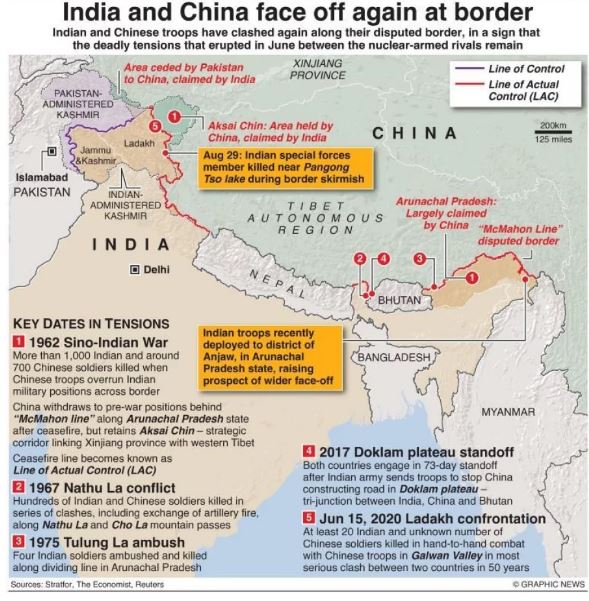
- 04 Apr 2025
In News:
On April 1, 2025, India and China marked the 75th anniversary of diplomatic relations with the exchange of congratulatory messages between President DroupadiMurmu and President Xi Jinping. Both leaders emphasized the need to deepen cooperation, manage differences strategically, and work jointly for regional and global stability. Xi referred to the bilateral relationship as a “Dragon-Elephant Tango,” symbolizing coordinated progress between two Asian giants.
Significance of the 75th Anniversary
The commemoration marks a diplomatic milestone for two ancient civilizations and modern emerging powers, both key members of the Global South. It offers a timely opportunity to recalibrate relations, especially after recent tensions such as the 2020 Galwan Valley clash. Xi called for enhanced “strategic mutual trust” and deeper coordination on global affairs, reflecting a shared responsibility in shaping the international order.
President Murmu and PM Modi stressed multipolarity, stability, and peaceful coexistence. Notably, over 70,000 visas were issued to Indians in early 2025, indicating a revival in people-to-people exchanges. Talks in March 2025 focused on border management and resumption of cultural and religious exchanges, including the Kailash Mansarovar Yatra.
Historical Overview
India was the first non-socialist country to recognize the People’s Republic of China in 1950. The 1954 Panchsheel Agreement promoted peaceful coexistence. However, the 1962 war over the unresolved border disputes—especially in Ladakh and Arunachal Pradesh—remains a lasting legacy of mistrust.
Ties normalized in the 1980s, with Rajiv Gandhi’s 1988 visit paving the way for diplomatic mechanisms like the Special Representatives (SR) dialogue and Working Mechanism for Consultation and Coordination (WMCC). The 2000s saw robust economic engagement, with bilateral trade reaching $138.5 billion by 2024. Both nations became pivotal members of BRICS, SCO, and G20.
Areas of Cooperation
- Multilateral Platforms: India and China coordinate in BRICS, SCO, and on Global South agendas, especially climate finance and equitable development.
- Economic Ties: Despite border frictions, trade remains resilient. China is India’s largest trading partner.
- Cultural Diplomacy: Student exchanges, art exhibitions, and religious pilgrimages continue.
- Public Diplomacy: Diplomatic dialogues, resumed air links, and cooperation on trans-border rivers underscore confidence-building efforts.
Points of Divergence
- Border Dispute: The Line of Actual Control (LAC) remains contentious, especially post-Galwan 2020.
- Strategic Mistrust: China’s ties with Pakistan and presence in the Indian Ocean, as well as its Belt and Road Initiative (excluding India), fuel rivalry.
- Trade Imbalance: India’s import-heavy trade with China leads to a significant deficit.
- Perception Gap: India’s push for strategic autonomy contrasts with China’s assertive regional posturing.
Way Forward
- Strengthen Strategic Dialogue: Revive and regularize SR-level border talks and WMCC meetings.
- Rebuild Trust: Encourage military confidence-building measures and cooperative ventures in non-sensitive areas.
- Balance Trade: Promote diversification and attract Chinese investments aligned with India’s interests.
- Enhance People-to-People Ties: Facilitate educational, cultural, and tourism exchanges.
- Promote Multilateralism: Collaborate on global issues such as climate change, health security, and WTO reforms.
Conclusion
India-China relations remain a blend of cooperation and contestation. The 75th anniversary provides an inflection point to transcend border hostilities and engage in constructive diplomacy. A balanced and long-term perspective, as advocated by both nations, can shift the narrative from conflict to coordinated coexistence—true to the spirit of the “Dragon-Elephant Tango.”
India’s Air Pollution Crisis

- 03 Apr 2025
Context:
India’s air pollution crisis has evolved from a seasonal concern into a persistent public health emergency. Urban skylines disappearing under layers of smog, overflowing hospitals with respiratory cases, and frequent school closures point to the alarming scale of the issue. Indian cities consistently rank among the most polluted globally, and without a coordinated, inclusive, and locally-driven strategy, the situation may deteriorate further.
Institutional and Structural Complexities
Air pollution in India is not merely a technical issue; it is deeply embedded in structural and governance-related challenges. It reflects a mix of socio-economic disparities, weak municipal capacity, behavioral norms, and fragmented institutional mandates. Municipal bodies — key actors in controlling local pollution sources — often lack adequate funding, data access, and administrative autonomy. Their responsibilities are rarely aligned with national clean air targets.
India aims to reduce PM2.5 levels by 40% (from 2017 levels) by 2026 under the National Clean Air Programme (NCAP), but progress remains slow. This is due in part to a reliance on ambient air quality data, which can fluctuate based on meteorological factors and may not accurately reflect ground-level interventions. A shift toward activity-based metrics — such as the number of biomass stoves replaced or diesel vehicles retired — is needed to measure real impact.
Key Interventions and Their Gaps
India has introduced several programs to combat air pollution:
- National Clean Air Programme (NCAP): Targets 20–30% reduction in PM10 and PM2.5 by 2026 in 132 cities.
- Bharat Stage VI (BS-VI): Introduced in 2020 to enforce strict vehicular emission norms.
- Pradhan Mantri Ujjwala Yojana (PMUY): Promotes LPG usage to reduce dependence on biomass.
- FAME II: Incentivizes electric vehicles.
- Swachh Bharat Mission (Urban): Addresses urban waste, a significant pollution source.
However, between 2019 and 2023, only about 60% of NCAP funds were utilized — not due to lack of intent, but due to institutional misalignment and poor coordination. Additionally, India’s clean air budget is dwarfed by global comparisons; China invested ?22 lakh crore over five years, while India’s NCAP allocation is less than 1% of that. Even when related programs (PMUY: ?18,128 crore; FAME II: ?10,795 crore; SBM-U: ?1.4 lakh crore) are included, the challenge lies in integrating these efforts meaningfully.
The Need for a Phased, Data-Driven Approach
A transformative clean air strategy should include:
- Phase I: Build high-resolution, local emissions inventories.
- Phase II: Link funding to data-driven, actionable plans.
- Phase III: Track reductions in emissions, not just pollution concentrations.
Governance reforms must empower local authorities, integrate air quality goals into urban planning, and ensure open access to real-time emissions data.
Guarding Against Technological Overdependence
India must avoid over-reliance on AI dashboards, smog towers, and other high-tech tools that may benefit elite urban areas while neglecting rural and informal sectors — major contributors to emissions. Instead of focusing on optics, efforts must prioritize structural reforms and equitable interventions.
Global Lessons, Local Adaptation
India can learn from other countries:
- China: Closed coal plants aggressively.
- Brazil: Enabled community-led waste management.
- California: Reinvested pollution revenue in vulnerable populations.
- London: Implemented bans before adopting high-tech monitoring.
India’s path must be rooted in federalism, tailored to its informal economy, and driven by behavioral and structural change. Clean air must be recognized as a universal right, not a privilege — and achieving it demands people-centric governance, consistent funding, and courageous implementation.
Nutrition and Education: UNESCO’s Call for Integrated Human Capital Development
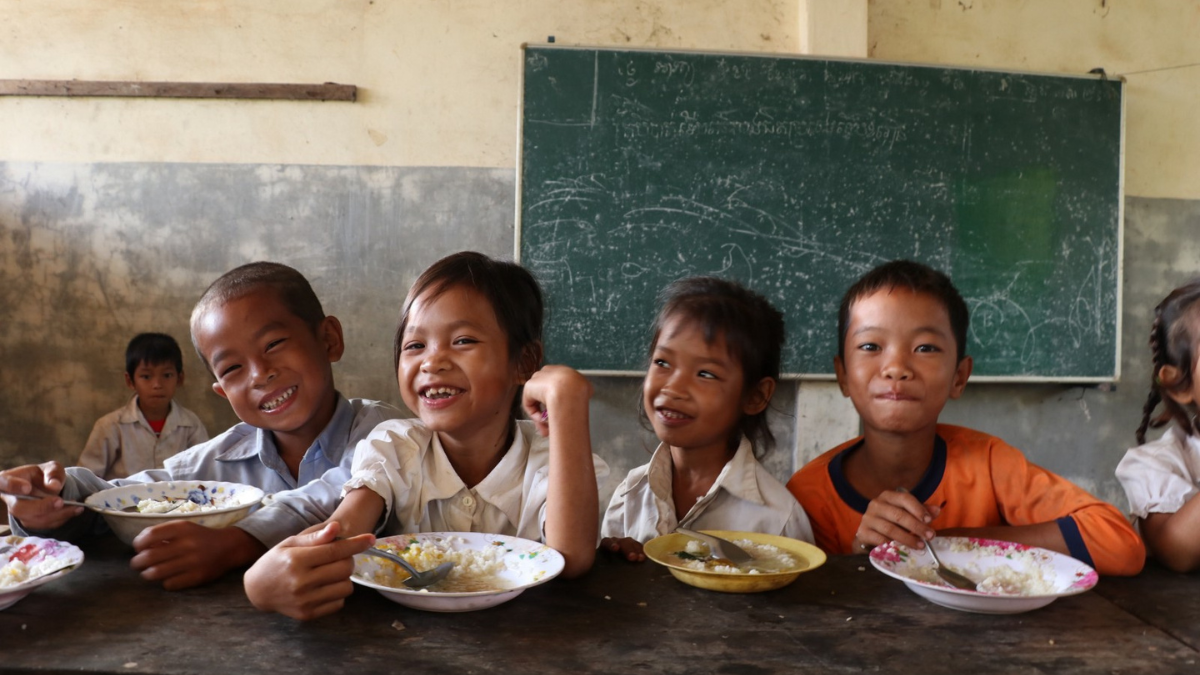
- 02 Apr 2025
Context:
In March 2025, UNESCO released its global report titled “Education and Nutrition: Learn to Eat Well” at the ‘Nutrition for Growth’ summit in France. The report brings to light the critical intersection between child nutrition and educational outcomes, positioning school feeding programs not merely as welfare schemes but as foundational investments in human capital.
Global and Indian Context
As per the report, 418 million children across 161 countries benefit from school meal programs, yet over half of these initiatives lack adequate portions of fruits and vegetables. Alarmingly, nearly one-third of the programs include sugary beverages. This dietary imbalance is reflected in the rising tide of childhood obesity, which has doubled in over 100 countries in the past two decades.
In India, the PM-POSHAN (formerly Mid-Day Meal) scheme remains a vital intervention, feeding approximately 118 million children daily, making it one of the largest school meal programs globally. Despite this extensive reach, the report notes a persisting issue of "hidden hunger" — widespread micronutrient deficiencies stemming from poor dietary diversity.
Nutrition-Education Nexus
The report strongly advocates for recognizing nutrition as an enabler of learning. Well-balanced meals in schools contribute to better attention spans, memory retention, and academic performance. In countries like Brazil and Finland, where nutrition programs are closely aligned with educational frameworks, data shows improved enrolment, retention, and performance metrics.
School meals also serve as instruments of social equity, especially for children from low-income families and marginalized communities. They act as a safety net, improving attendance — particularly for girls — and reducing hunger-related learning barriers. When sourced locally, these programs can additionally boost rural economies and support sustainable agriculture, creating farm-to-table ecosystems.
Challenges Identified
The report flags several systemic challenges. A majority of school feeding programs are heavily dependent on staple grains, offering minimal variety. Many meals still include ultra-processed and low-nutrient foods, while nutrition education remains largely absent from school curricula — only 17 countries integrate it with national food standards.
Further, an urban-rural divide in infrastructure, such as cold storage and supply chains, leads to inconsistent delivery. Monitoring gaps also persist — just 8% of countries track school meals against WHO nutritional standards, making outcome assessment difficult.
Recommendations and Way Forward
UNESCO proposes a holistic approach for countries to bridge the education-nutrition divide:
- Curriculum Integration: Nutrition should be embedded into educational content across disciplines and levels.
- Science-Based Standards: National guidelines should align with WHO dietary recommendations.
- Local Procurement: Meal sourcing must prioritize seasonal and region-specific produce to enhance diversity.
- Teacher Training: Educators should be equipped to impart food literacy effectively.
- Robust Monitoring: Countries must develop national strategies on school nutrition with clear benchmarks, accountability, and evaluation mechanisms.
Conclusion
The report makes a compelling case that education and nutrition must be interlinked to foster meaningful development. Investing in nutritious school meals is not merely about feeding children — it is about shaping a healthier, more capable future generation. In the long run, a well-nourished child is better positioned to learn, thrive, and contribute to nation-building, making this a strategic priority for policymakers worldwide.
India–US Civil Nuclear Deal
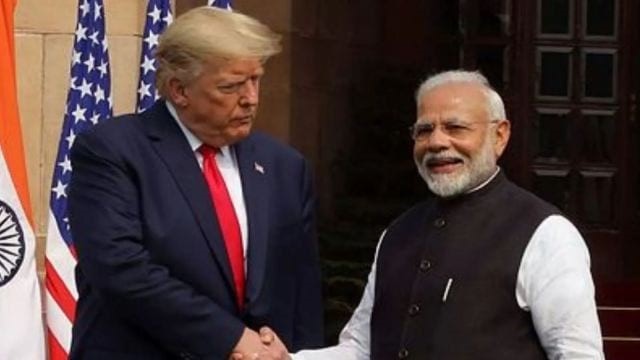
- 01 Apr 2025
Context:
Nearly two decades after the landmark India–US Civil Nuclear Agreement (123 Agreement) was signed in 2007, a major operational milestone has been achieved. In March 2025, the US Department of Energy (DoE) granted regulatory clearance under “10CFR810” of the US Atomic Energy Act (1954), allowing Holtec International, a US-based nuclear engineering firm, to transfer unclassified Small Modular Reactor (SMR) technology to three Indian private entities: Holtec Asia (its subsidiary), Tata Consulting Engineers (TCE), and Larsen & Toubro (L&T).
Key Regulatory and Safeguard Provisions
- Authorization Duration: 10 years, subject to a five-year review.
- Safeguards: Technology to be used only for peaceful nuclear activities under IAEA safeguards.
- Restrictions:
- No retransfer to other Indian or foreign entities without US approval.
- Prohibited for military/naval propulsion or enrichment purposes.
- No access to Sensitive Nuclear Technology.
- Compliance: Holtec is required to file quarterly progress reports to the US DoE.
Strategic and Technological Significance for India
- Modernizing India's Nuclear Fleet: India's nuclear program has traditionally relied on Pressurised Heavy Water Reactors (PHWRs) using natural uranium. The transfer of SMR technology based on Pressurised Water Reactors (PWRs) represents a shift towards the global mainstream of nuclear reactor technology.
- Boost to Domestic Manufacturing: Collaboration with Indian firms like L&T and TCE can localize manufacturing and engineering, promoting Make in India and self-reliance in nuclear energy technology.
- Entry into Global SMR Supply Chain: This development aligns India with an emerging global trend, as SMRs (30–300 MWe) are increasingly viewed as crucial for decarbonization and energy security.
- Strategic Counterbalance to China: As China advances its SMR technology for energy diplomacy in the Global South, this India–US initiative presents a geopolitical counterweight, especially as both nations face challenges in independently competing with China’s scale and state-led investments.
Legal and Policy Bottlenecks
- Civil Liability for Nuclear Damage Act, 2010: Cited by foreign companies as a barrier due to concerns about supplier liability in case of accidents.
- Atomic Energy Act, 1962: Needs amendments to permit private sector participation in nuclear generation, currently reserved for public sector undertakings like NPCIL and NTPC.
- Despite Holtec's request, these PSUs were not included in the initial authorization due to pending non-proliferation assurances from the Indian government. However, they may be added later, contingent on further diplomatic progress.
Way Forward and Future Prospects
- Holtec’s Expansion Plans: Its non-nuclear manufacturing unit in Dahej, Gujarat is poised for expansion, with a potential doubling of its workforce once SMR manufacturing begins.
- Partnership Pipeline:
- TCE for engineering design.
- L&T for high-precision nuclear component manufacturing.
- Future engagement with NPCIL and NTPC as operators of Holtec’s SMR-300 reactors.
- Clean Energy Strategy: SMRs are positioned as a key component of India's low-carbon energy transition, addressing both rising power demands and global climate commitments.
Conclusion
The US’s clearance for technology transfer to Indian private firms marks a pivotal operational step in the long-stalled India–US civil nuclear partnership. It opens the door for India to enter the global SMR market, boosts its domestic nuclear industry, and strengthens strategic cooperation with the US. However, legal reforms and institutional readiness remain critical for realizing the full potential of this deal.
Maternity Leave as a Constitutional and Reproductive Right
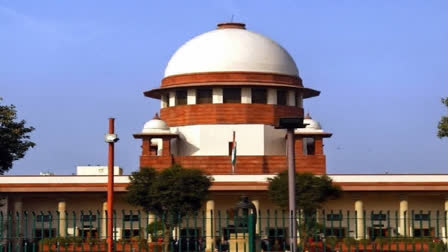
- 25 May 2025
Background:
In a landmark ruling in K. Umadevi v. Government of Tamil Nadu (May 2025), the Supreme Court (SC) affirmed that maternity leave is not merely a welfare measure but a constitutional and reproductive right of women. Setting aside the Madras High Court’s judgment, the apex court extended maternity benefits to a government school teacher for her third child, rejecting the Tamil Nadu government's policy that restricts such benefits to only the first two children.
Background of the Case:
The petitioner, a teacher employed in a Tamil Nadu government school, was denied maternity leave for her third biological child, citing Fundamental Rule 101(a) which limits benefits to women with fewer than two surviving children. Notably, the child in question was from her second marriage, while the earlier two children were in the custody of her former husband and born before her employment. The single bench of the High Court had ruled in her favour, finding the state rule inconsistent with the Maternity Benefit Act, 1961 and invalid under Article 254 (repugnancy with central law). However, a division bench reversed this decision, prompting an appeal to the SC.
Key Observations by the Supreme Court:
- Maternity leave is integral to a woman’s reproductive autonomy and thus protected under Article 21 of the Constitution, which ensures personal liberty.
- It is also aligned with Directive Principles of State Policy (Article 42) that mandate the state to ensure humane work conditions and maternity relief.
- The SC emphasized that reproductive rights are recognized under international human rights law, including the rights to health, privacy, dignity, equality, and non-discrimination (as per the Universal Declaration of Human Rights).
- The Court clarified that population control, though a valid public policy goal, cannot override the constitutional guarantee of reproductive choice and health.
Reaffirming the Maternity Benefit Act, 1961 (Amended 2017):
- The Act applies to workplaces with 10 or more employees, including both public and private sectors.
- Provides 26 weeks of paid maternity leave for women with fewer than two surviving children, and 12 weeks for the third or subsequent child.
- Also covers adoptive and commissioning mothers with 12 weeks of leave.
- Ensures job security, access to crèche facilities in establishments with 50+ employees, and promotes work-from-home options during or after pregnancy.
Significance of the Judgment:
- The verdict ensures gender equity in the workforce by reinforcing women’s right to combine motherhood with professional aspirations.
- It highlights the need to harmonize state policies with central welfare legislation and constitutional mandates.
- It reflects the Court's broader jurisprudence, such as in Suchita Srivastava v. Chandigarh Administration, which had affirmed a woman’s reproductive choices as part of her autonomy.
Implications for Policy and Governance:
This judgment strengthens women’s workforce participation by addressing a key dropout point—childbirth. It serves as a precedent for inclusive, rights-based policy design and calls for reviewing restrictive service rules across states. It aligns with India's commitments under international human rights frameworks and the Sustainable Development Goals (SDG 5: Gender Equality).
In conclusion, the Supreme Court’s verdict elevates maternity leave to a constitutionally protected right, advancing both social justice and women’s empowerment in India’s democratic framework.
Why India needs stable urban forests
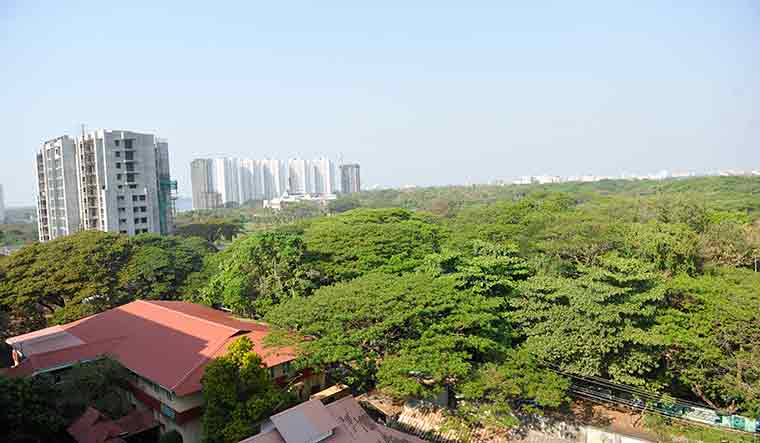
- 24 May 2025
In News:
Urban forests are increasingly emerging as critical ecological buffers amidst India’s rapidly expanding cities. The recent controversy over the Kancha Gachibowli forest in Hyderabad—where 400 acres of urban forest land were earmarked for industrial development—has reignited debates on sustainable urbanisation and environmental governance. The Supreme Court’s intervention to halt further deforestation underscores the urgent need to prioritise ecological assets in urban planning.
Importance of Urban Forests
Urban forests such as Kancha Gachibowli (Hyderabad), Aarey (Mumbai), Turahalli (Bengaluru), Neela Hauz and the Ridge (Delhi), and Dol Ka Baadh (Jaipur) play a vital role in maintaining ecological balance within metropolitan environments. Their multifaceted contributions include:
- Air Pollution Mitigation: Urban forests absorb pollutants such as PM2.5 and PM10, which are major contributors to urban air pollution from vehicular emissions and construction activity.
- A 2006 study by the USDA Forest Service found that one hectare of forest can remove approximately one ton of air pollutants annually.
- In November 2024, the Central Pollution Control Board (CPCB) recorded a hazardous AQI of 494 in Delhi, highlighting the urgent need for natural air purifiers.
- Climate Regulation: These forests help reduce the urban heat island effect, control stormwater runoff, and mitigate urban flooding and erosion.
- Carbon Sequestration: Trees in urban forests trap atmospheric carbon, contributing to climate change mitigation efforts.
- Biodiversity Preservation: They serve as urban habitats for endangered birds, insects, and other fauna, supporting biodiversity within city limits.
- Socio-Cultural Benefits: Urban forests offer green spaces for recreation, promote mental well-being, and enhance the overall livability of urban areas.
Threats and Challenges
Despite their importance, urban forests in India face increasing threats due to:
- Unregulated Urban Expansion: Urban planning often disregards ecological sustainability, prioritising infrastructure and industrial development over green spaces.
- Lack of Legal Clarity: State governments sometimes contest the status of forest lands, as seen in Telangana’s claim over Kancha Gachibowli, undermining forest protections.
- Real Estate Pressures: Encroachments and land-use changes for commercial gain are frequent, with environmental concerns often sidelined.
Judicial Interventions and Constitutional Provisions
Indian courts have played a pivotal role in safeguarding urban forests:
- T.N. GodavarmanThirumulpad Case (1996): Expanded the definition of "forest" to include areas recorded as forest in government records, irrespective of ownership or classification.
- Delhi High Court (2015): Directed the protection and notification of the Delhi Ridge forest.
- Supreme Court Stay on Aarey Tree Felling (2020): Responded to civil society petitions to preserve Mumbai’s Aarey forest.
- Rajasthan High Court Suo Motu Action (2024): Intervened against deforestation in biodiversity-rich Baran district.
Constitutional Backing:
- Article 21: Guarantees the Right to Life, interpreted by courts to include the right to a clean and healthy environment.
- Article 48A: Directs the State to protect and improve the environment.
- Article 51A(g): Makes it a fundamental duty of citizens to protect the natural environment.
Policy Interventions: Nagar Van Yojana
In response to growing ecological concerns, the Ministry of Environment, Forest and Climate Change (MoEF&CC) launched the Nagar Van Yojana in 2020 with the goal of developing 1,000 urban forests by 2027.
- As per the India State of Forest Report 2023, the initiative has already led to an increase of 1,445.81 sq km in tree and forest cover in urban areas.
- The scheme aligns with other policy frameworks such as the National Forest Policy (1988) and the National Mission for Green India (2014), which promote afforestation and ecological restoration.
Way Forward
To ensure sustainable urbanisation, India must:
- Integrate ecological planning into urban masterplans, with mandatory forest inventories and zoning protections.
- Strengthen legal protections for notified and unnotified forests within urban areas.
- Foster community participation and civil society engagement in urban environmental stewardship.
- Promote green infrastructure through Smart Cities and AMRUT missions.
Conclusion
Urban forests are not peripheral luxuries but ecological necessities. Their conservation is essential for ensuring environmental resilience, public health, and urban quality of life. As India continues its urbanisation journey, a harmonious balance between development and ecological preservation is indispensable.
Overfishing in India

- 23 May 2025
Context:
India, the second-largest fish-producing nation globally, contributes around 8% to world fish production. With an estimated marine fisheries potential of 5.31 million tonnes, India’s sector has reached its maximum sustainable yield, currently stabilizing at 3–4 million tonnes annually. However, this apparent success masks deep ecological and socio-economic distress, primarily due to overfishing.
Inequity and Overexploitation
Despite their 90% share in the fishing population, small-scale fishers harvest merely 10% of the total catch, while mechanised trawlers dominate volumes. This has left three-fourths of marine fisher families below the poverty line. Escalating the problem is the race to increase yields using more powerful engines and finer mesh nets—leading to marginal gains at steep ecological and financial costs.
Trawling operations, especially shrimp trawlers, demonstrate the magnitude of bycatch—where for every kilogram of shrimp, over 10 kg of juvenile and non-target species are discarded. Such practices degrade marine biodiversity, deplete spawning stocks, and destabilise food webs. Examples from Canada’s cod fishery (1992) and California’s sardine fishery collapse (1960s–80s) show the irreversible impacts of mismanaged stocks.
Policy Fragmentation and Regulatory Loopholes
Each coastal state in India governs its marine fisheries through its own Marine Fisheries Regulation Act (MFRA), resulting in a regulatory patchwork. Fishers exploit these inconsistencies—for example, landing juvenile fish legally in one state that are protected in another. This undermines conservation and facilitates laundering of protected species.
Moreover, the fish-meal and fish-oil (FMFO) industry fuels ecological damage by incentivising bycatch. Much of this low-value catch is processed into meal, mostly for export, depriving domestic consumers and aquaculture of vital nutritional inputs.
Government Initiatives
The Union Budget 2025–26 allocated a record ?2,703.67 crore to the fisheries sector, focusing on the sustainable harnessing of resources from the EEZ and high seas, especially around Lakshadweep and the Andaman & Nicobar Islands. Key schemes include:
- Pradhan Mantri MatsyaSampada Yojana (PMMSY): Focuses on inland fisheries and aquaculture for food security.
- Blue Revolution Scheme: Enhances productivity in marine and inland fisheries.
- Technological Interventions: Satellite-based vessel tracking, Oceansat for forecasting Potential Fishing Zones (PFZ), and GIS mapping are being deployed.
Path to Sustainability
India’s National Policy on Marine Fisheries (2017) embeds sustainability at its core, promoting measures like:
- 61-day uniform fishing bans during monsoons;
- Prohibitions on harmful methods like pair and bull trawling, and LED light usage;
- Promotion of mariculture, artificial reefs, and sea ranching.
Successful models abroad offer direction. New Zealand’s Quota Management System (QMS) aligns catch limits with stock assessments and uses transferable quotas to regulate fishing. India could pilot such a model for its mechanised fleet.
Domestically, Kerala’s enforcement of a Minimum Legal Size (MLS) for threadfin bream boosted catches by 41% in one season. Scaling such practices nationally can ensure ecological recovery and economic benefits.
Way Forward
India must urgently move towards a unified, science-based regulatory framework, including:
- National MLS norms,
- Gear restrictions to reduce juvenile catch,
- Scientific catch limits,
- Closed seasons aligned with spawning cycles.
Simultaneously, fisher cooperatives must be empowered, FMFO quotas capped, and consumer awareness campaigns launched to encourage demand for legally sized, sustainable seafood.
In conclusion, India stands at a critical juncture. Ignoring overfishing risks deepening poverty and ecological collapse. The solutions—rooted in science, equity, and sustainability—are within reach and must be swiftly implemented to safeguard marine wealth and livelihoods for future generations.
Judicial Independence vs Accountability
- 22 May 2025
Context:
The recent controversy surrounding Justice Yashwant Varma and the subsequent remarks by Vice President Jagdeep Dhankhar have reignited a crucial debate in Indian constitutional discourse: How can the judiciary remain independent while also being held accountable? At the heart of this debate lies the tension between institutional autonomy and the growing demand for transparency in judicial conduct.
The Varma Case: Catalyst for a Larger Debate
In March 2024, unaccounted cash was reportedly found at the residence of Justice Yashwant Varma, then serving on the Delhi High Court. Following the discovery, he was transferred to the Allahabad High Court. An in-house inquiry conducted by the Supreme Court found him culpable, yet it dismissed a petition seeking criminal investigation, forwarding the report instead to the President and Prime Minister.
Vice President Dhankhar questioned the constitutional basis of the in-house mechanism and called for a re-examination of the K Veeraswami judgment (1991), suggesting that the current legal framework grants excessive immunity to judges and hampers accountability.
Constitutional Safeguards and In-House Procedures
The Indian Constitution protects judicial independence through Article 124, which stipulates that judges of the Supreme Court and High Courts can only be removed through impeachment—a process that requires a special majority in Parliament. However, this safeguard has made judicial removal politically difficult. Despite several attempts, no judge has ever been successfully impeached since independence.
To address ethical complaints, the judiciary devised the in-house inquiry mechanism, wherein a panel headed by senior judges examines allegations against fellow judges. While this preserves the judiciary’s autonomy, the mechanism lacks statutory backing and has no power to impose penalties or recommend criminal prosecution.
The Veeraswami Judgment: Balancing Act or Bottleneck?
In the K Veeraswami case, the Supreme Court ruled that a judge could be treated as a public servant under the Prevention of Corruption Act. However, it mandated that any criminal case against a judge could proceed only with the approval of the Chief Justice of India (CJI), not the executive. This was intended to prevent misuse of prosecutorial powers and ensure judicial independence.
Critics argue that this judgment has created a judicial monopoly over sanctioning investigations, undermining public accountability. In practice, criminal prosecution against judges remains extremely rare. Notably, in 2019, then CJI Ranjan Gogoi sanctioned an FIR against Justice S.N. Shukla of the Allahabad High Court—one of the few instances of such approval.
Towards a Transparent and Accountable Judiciary
The current episode underscores a critical gap in India’s judicial accountability mechanisms. While independence is essential to prevent executive interference, absolute immunity risks eroding public confidence in the judiciary. The lack of transparency and enforceability in in-house inquiries has further exacerbated this perception.
There is a growing case for revisiting the Veeraswami judgment, possibly through constitutional or legislative reform, to allow limited and well-regulated avenues for criminal investigation into judicial misconduct—without compromising judicial independence.
Conclusion
A nuanced balance must be struck between judicial independence and accountability. India’s democracy cannot afford a judiciary that is either vulnerable to political manipulation or immune from public scrutiny. Strengthening internal accountability frameworks, reinforcing institutional checks, and ensuring transparency in disciplinary processes are essential to uphold both the dignity and integrity of the judiciary.
WHO Pandemic Agreement: A Landmark Step Towards Global Health Security
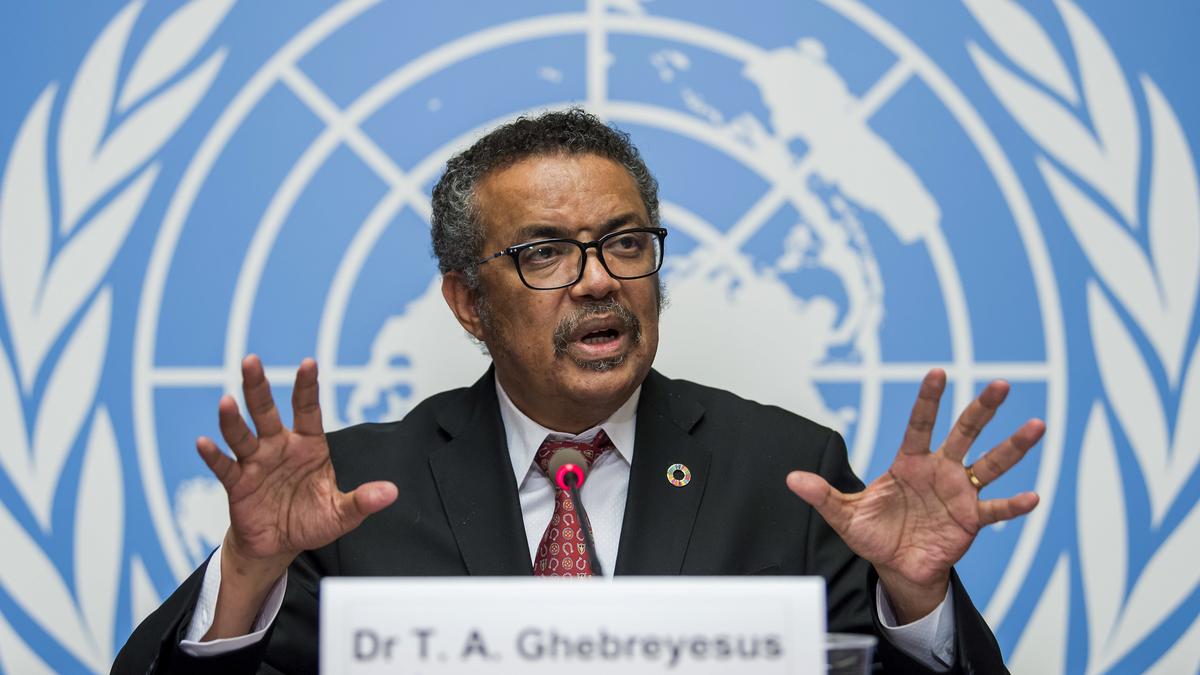
- 21 May 2025
Context:
The World Health Assembly (WHA), the decision-making body of the World Health Organization (WHO), adopted the first-ever Pandemic Agreement at its 78th session in May 2025. This historic and legally binding agreement, three years in the making, aims to strengthen global pandemic preparedness, prevention, and response with a focus on equity, solidarity, and scientific evidence. Triggered by the gaps and inequities exposed during the COVID-19 crisis, the accord marks a milestone in global health governance under Article 19 of the WHO Constitution, previously used for the 2003 Framework Convention on Tobacco Control.
The agreement was unanimously approved by 124 countries, with no opposition and 11 abstentions. It emphasizes that national sovereignty remains intact, explicitly stating that WHO cannot mandate domestic laws or measures such as lockdowns, vaccine mandates, or travel restrictions. This provision addresses concerns of state overreach and promotes voluntary, collaborative international action.
A central feature is the creation of a Pathogen Access and Benefit Sharing (PABS) system, wherein countries that share virus samples will receive equitable access to vaccines, diagnostics, and therapeutics. Participating pharmaceutical companies must allocate 20% of their real-time production (10% as donations, 10% at affordable prices) to WHO for distribution based on public health needs, especially in developing nations. This move addresses the vaccine nationalism witnessed during COVID-19 and promotes global health equity.
To support this system, the agreement calls for the establishment of a Global Supply Chain and Logistics Network (GSCL), coordinated by WHO, to ensure timely and fair distribution of essential health products during public health emergencies. Member states are encouraged to develop national pandemic prevention plans, improve disease surveillance, and invest in routine immunisation, antimicrobial resistance control, and zoonotic disease prevention.
Another key pillar is the promotion of sustainable local production of health products and technology transfer to developing countries. Mechanisms such as licensing, regulatory incentives, and financing are to be used to facilitate regional and global tech hubs. These efforts are aimed at reducing reliance on a few manufacturing nations and improving rapid response capabilities globally.
The agreement’s adoption is politically significant in reaffirming multilateralism amid rising nationalism. WHO Director-General Dr. Tedros Adhanom Ghebreyesus hailed it as a “victory for public health and multilateral cooperation.” However, the absence of the United States — a major global health funder and former leader in pandemic response — casts a shadow. The U.S. withdrew from the drafting process following the Trump administration’s move to exit WHO, raising concerns about the treaty’s universality and enforcement.
Despite the lack of a penalty mechanism for non-compliance, the agreement represents a global consensus on shared responsibility for health security. It acknowledges that pandemics pose transboundary risks requiring coordinated international action, especially to protect vulnerable populations and frontline workers.
Expected to enter into force after ratification by 60 countries and the finalisation of PABS and GSCL mechanisms by May 2026, the WHO Pandemic Agreement is a pivotal step in ensuring the world is better prepared, more resilient, and more just in the face of future pandemic threats.
Live Baiting and the Conservation Dilemma

- 20 May 2025
Context:
In recent years, India's tiger conservation practices have come under scrutiny due to the continued use of live baiting, particularly for feeding injured or aging tigers. While originally a hunting tactic used by British colonialists—placing prey like buffalo or goats to lure tigers for easy shooting—live baiting found new life in post-independence India as a tourism tool in reserves like Sariska. This practice was officially banned in 1982 by Prime Minister Indira Gandhi, yet it persists in conflict scenarios and as a means of care for ailing tigers.
National Policy and Ecological Concerns
According to the Standard Operating Procedure (SOP) of the National Tiger Conservation Authority (NTCA), live baiting for tourism is prohibited, and its use for injured or old tigers is “not advisable.” The SOP emphasizes minimal human intervention, underscoring that wildlife conservation must adhere to the principle of survival of the fittest. Artificial feeding undermines this, fostering dependency, disrupting natural selection, and increasing the risk of human-wildlife conflict.
Despite these guidelines, many reserves continue the practice under humanitarian or public pressure. Feeding wild tigers, even as an emergency measure, is permitted only in exceptional cases—such as when an injured tigress with dependent cubs cannot hunt. Experts like Valmik Thapar recommend baiting no more than once every two weeks and only for a short duration of up to three months.
Case Studies Highlighting Consequences
The tragic case of Kankati, a 23-month-old tigress in Ranthambore, illustrates the dangers of early habituation. Raised on live bait after her mother, Arrowhead, fell ill, Kankati and her siblings lost their fear of humans. She has since killed two people, raising alarms about human safety in reserves.
Similar outcomes have been observed in the cases of T36, T37, and Simba—young tigers raised on bait following the deaths of their mothers. Without learning essential hunting skills, these tigers either perished prematurely or became threats to others. Even aging icons like Machhli and T2 were kept alive unnaturally with bait; while Machhli survived on human-provided food for seven years, T2 died too weak to kill.
The Cultural Shift Toward Over-Intervention
A growing culture of emotional overreach is increasingly shaping wildlife management. Tourists now demand treatment for limping or injured tigers, triggering unnecessary tranquilizations and medical interventions. From transporting prey animals to creating artificial water sources during dry spells, reserves like Corbett, Kanha, Bandipur, and Pench are altering ecosystems to sustain tigers artificially.
This overmanagement leads to unnatural survival of weaker individuals, overcrowding, and territorial conflicts—not just between tigers but also between tigers and humans. Experts caution that such interference only weakens the ecological integrity of tiger populations.
Conclusion: Let Nature Lead
Veteran conservationists argue that wild tigers do not require pet-like care. The most effective conservation strategy remains the preservation of natural habitats and prey bases, with minimal human interference. Misplaced kindness, though emotionally compelling, endangers both tiger and human populations by disrupting nature’s balance.
For India to achieve sustainable tiger conservation, it must resist populist interventions and re-anchor policies in ecological wisdom—protect, don’t pamper.
Kolkata-Northeast Sea Route and the Strategic Highway Project
- 19 May 2025
In News:
India’s northeast has long faced logistical isolation due to its geographical constraints and overdependence on the narrow Siliguri Corridor, also known as the Chicken’s Neck. A recent strategic initiative aims to transform this scenario through the creation of a multi-modal connectivity route that bypasses Bangladesh and directly links the Northeast to the sea via Myanmar and Kolkata. This development gains added relevance in light of recent remarks by Bangladesh’s interim leader Muhammad Yunus, who described Northeast India as “landlocked” and dependent solely on Dhaka for maritime access—a claim that India seeks to counter through tangible connectivity upgrades.
Kaladan Multi-Modal Transit Transport Project (KMTTP)
At the heart of this initiative lies the Kaladan Multi-Modal Transit Transport Project (KMTTP), a flagship project under India’s Act East Policy, designed to connect the eastern seaport of Kolkata to the landlocked Northeast through Myanmar. The project includes:
- Sea Leg: Kolkata Port to Sittwe Port in Myanmar (~539 km).
- Inland Waterway: From Sittwe to Paletwa via the Kaladan River (~158 km).
- Road Leg in Myanmar: Paletwa to Zorinpui on the India-Myanmar border (~110 km).
- Indian Extension: Zorinpui to Lawngtlai and Aizawl in Mizoram, connecting to the national highway network.
This corridor not only reduces reliance on routes through Bangladesh but also serves as a strategic counterbalance in India’s regional geopolitics, particularly in strengthening ties with Southeast Asia and enhancing its maritime influence in the Bay of Bengal.
Strategic Shillong-Silchar Highway
Complementing the KMTTP is the construction of a 166.8 km four-lane high-speed highway from Mawlyngkhung (near Shillong) to Panchgram (near Silchar) along NH-6. This is the first high-speed corridor in the North-East and the first in a hilly terrain, and is slated for completion by 2030. The project is being developed under the Hybrid Annuity Model (HAM) at a cost of ?22,864 crore, with implementation by NHIDCL for the Ministry of Road Transport and Highways (MoRTH).
The highway will include:
- 19 major bridges, 153 minor bridges, 326 culverts
- 22 underpasses, 26 overpasses, 8 subways, and 34 viaducts
It will reduce travel time between Shillong and Silchar from 8.5 to 5 hours and act as a crucial link to states like Mizoram, Tripura, and Manipur. More significantly, it will integrate with the Kaladan route, offering a direct link to Kolkata via Myanmar and the Bay of Bengal.
Strategic and Economic Significance
This integrated connectivity initiative holds multi-dimensional importance:
- Reduces dependency on Bangladesh and the Siliguri Corridor
- Enhances trade and people-to-people ties with ASEAN nations
- Strengthens regional integration under the Act East Policy
- Boosts economic development in the North-East through improved logistics
- Improves India’s strategic posture in the Indo-Pacific and Bay of Bengal
In conclusion, the Kolkata-Northeast sea route and supporting infrastructure like the Shillong-Silchar highway represent a decisive step towards bridging geographical constraints, boosting regional development, and reinforcing India’s strategic autonomy in the eastern frontier.
Operation Sindoor
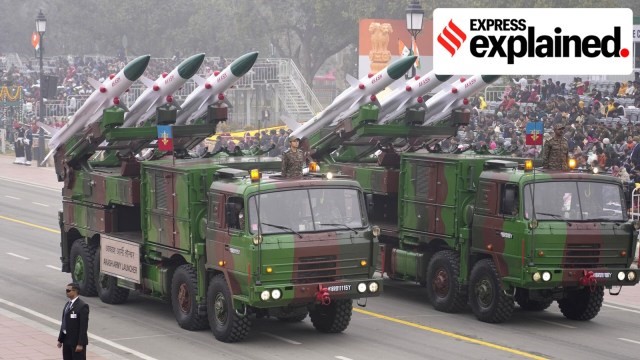
- 18 May 2025
In News:
Operation Sindoor marked a significant leap in India's military and technological prowess, not only achieving its strategic objectives but also demonstrating the operational maturity of Made-in-Indiadefence systems. The operation was characterised by a multi-layered approach involving precision strikes, air defence, unmanned systems, and advanced surveillance tools—most of which were indigenously developed.
Precision and Navigation Capabilities
One of the defining features of Operation Sindoor was the pinpoint accuracy of strikes deep inside Pakistan and Pakistan-occupied Kashmir. Specific terrorist camps and infrastructure were destroyed with minimal collateral damage, underlining India’s commitment to responsible military engagement. This precision was enabled by a combination of advanced guidance systems and real-time data from space-based and ground-based assets.
India's indigenous Navigation with Indian Constellation (NavIC) system, offering positional accuracy of 10–20 cm, played a pivotal role. High-resolution satellites such as Cartosat, RISAT, and EOS provided real-time imagery, allowing sub-metre targeting. These capabilities are a result of sustained investments by DRDO and ISRO and reflect the prioritisation of guidance and navigation as a critical technology domain in DRDO’s 2023 R&D roadmap.
Lethality and Advanced Weapon Systems
The destruction caused during Operation Sindoor also demonstrated the high lethality of Indian weapon systems. Deep penetration warheads, advanced fusing mechanisms, and powerful propulsion systems—developed under the Integrated Guided Missile Development Programme—were central to the operation’s success. The likely use of the BrahMos missile, equipped with state-of-the-art guidance and propulsion, underscores the maturity of indigenous missile technology.
Emerging technologies such as Directed Energy Weapons (DEWs), including laser-based systems, were reportedly deployed to neutralise incoming drones. DEWs have been a priority sector for the Defence Ministry since 2022, and DRDO showcased them during the 2025 Republic Day Parade.
Integrated Air Defence and Radar Systems
A critical success factor in Operation Sindoor was India’s ability to neutralise almost every aerial threat, including drones and missiles. This was achieved through a combination of imported and indigenous systems. The S-400 Triumph, along with DRDO-developed radars like Rajendra, Rohini, LLTR, and low-level 3D radars, formed a robust air defence network. These systems enabled accurate detection, tracking, and interception of aerial threats.
Cutting-edge R&D continues in radar technologies, including AI-powered signal processing, stealth detection, and foliage-penetrating radars, which will further enhance India’s battlefield awareness and response capability.
Role of Unmanned Systems
For the first time in an India-Pakistan conflict, drones played a decisive role. Indian UAVs executed deep strikes into Pakistani territory, while enemy drone swarms were largely neutralised. India also deployed upgraded Bofors guns and SAMAR systems to counter low-flying threats. The success of unmanned platforms indicates a paradigm shift towards hybrid warfare, with manned-unmanned teaming becoming a future norm.
However, to sustain this capability, India must strengthen its domestic manufacturing base, ensure secure raw material supply chains, and foster collaboration between industry, academia, and the armed forces.
Conclusion:
Operation Sindoor represents a watershed moment in India’s defence preparedness. It validated years of indigenous R&D and affirmed India’s self-reliant defence posture. As warfare evolves, India’s ability to synergise space, cyber, and kinetic capabilities with unmanned platforms will be critical in ensuring strategic deterrence and national security.
Revamped Periodic Labour Force Survey (PLFS), 2025
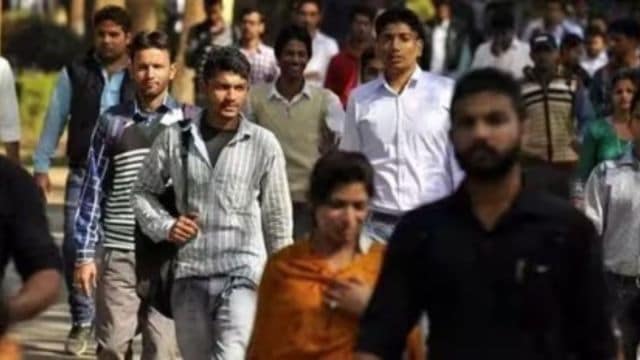
- 17 May 2025
In News:
The Government of India has undertaken a significant revamp of the Periodic Labour Force Survey (PLFS) from January 2025 to strengthen the quality, frequency, and coverage of employment and unemployment data across the country. Conducted by the National Statistical Office (NSO) under the Ministry of Statistics and Programme Implementation (MoSPI), PLFS plays a pivotal role in informing labour market policies and addressing data gaps in India’s employment landscape.
Key Changes and Objectives
Originally launched in 2017, the PLFS was designed to generate quarterly estimates of labour market indicators for urban areas under the Current Weekly Status (CWS) and annual estimates for both rural and urban areas under both Usual Status (ps+ss) and CWS. The 2025 overhaul expands the PLFS to produce monthly all-India estimates of key indicators—Labour Force Participation Rate (LFPR), Worker Population Ratio (WPR), and Unemployment Rate (UR)—for both rural and urban areas using the CWS framework.
The quarterly results, earlier limited to urban regions, will now also cover rural areas, offering disaggregated and timely data at national and major state levels. Annual results will shift from a July–June cycle to a calendar year reporting format (January–December) to align better with international standards and improve comparability.
Enhanced Sampling Design
A critical aspect of the revamp lies in the revised sampling methodology. The new design uses a multistage stratified approach, ensuring representation from most districts and capturing diverse labour dynamics across geographies. A total of 22,692 First Stage Units (FSUs)—12,504 in rural and 10,188 in urban areas—will be surveyed annually, covering 2,72,304 households, a substantial 2.65-fold increase over the earlier sample size of 1,02,400 households. Each selected household will now be visited four times over four months in a rotational panel format to improve the robustness of estimates.
Inclusion of New Parameters
The revamped PLFS introduces several new data points to enrich its analytical value:
- Household income sources including rent, pension, interest, and remittances
- Land possession and leasing status
- Additional education indicators like years of schooling completed and attendance in the past year
- Information on vocational training, including details of the certifying body
These additions make the PLFS more holistic, offering deeper insights into the economic and social characteristics influencing labour participation.
Significance and Policy Implications
India has long faced a dearth of high-frequency, reliable labour market data. The revamped PLFS addresses this gap by delivering timely, comprehensive, and representative statistics. This is critical for monitoring employment trends, understanding the rural-urban labour divide, and assessing the impact of government schemes, economic reforms, and global shocks.
Further, the alignment with international reporting norms will strengthen India's statistical credibility in global forums and aid in better representation in databases maintained by institutions like the ILO and World Bank.
In conclusion, the PLFS revamp marks a milestone in labour statistics modernization. By offering high-frequency, granular data on a range of labour and socio-economic indicators, it empowers evidence-based policy formulation, a key requirement for inclusive and sustainable economic development.
Road Safety in India
- 16 May 2025
Context:
India is at a critical juncture in its mobility transformation. With over 6.3 million km of road network, the second-largest globally, the nation faces a paradox: rapid urbanisation and vehicle growth have brought both economic momentum and a rising toll of road fatalities. In 2022, India recorded 1.68 lakh road deaths, translating to 12.2 deaths per 1 lakh population—substantially higher than countries like Japan (2.5) and the UK (2.6). These crashes cost India 3% of its GDP annually, eroding human capital and stalling development.
Road Safety as a Fundamental Right
The right to safe mobility stems from Article 21 of the Constitution, which guarantees the right to life. This makes road safety not merely a technical issue but a public good and a human right. With India’s urban population expected to reach 50% by 2047, ensuring the safety of all road users—particularly pedestrians, cyclists, elderly, and children—is essential for inclusive development.
Key Challenges in India’s Road Safety Landscape
- Human Error: About 78% of crashes are due to driver fault—overspeeding, drunk driving, and poor lane discipline.
- Infrastructure Gaps: Over 5,000 black spots, inadequate pedestrian zones, and unscientific road designs persist across urban and rural areas.
- Weak Enforcement: Despite the Motor Vehicles (Amendment) Act, 2019, enforcement is inconsistent, and deterrence is weak.
- Emergency Care Deficits: Rural areas suffer from delayed trauma response, poor ambulance coverage, and lack of cashless care.
- Fragmented Governance: Overlapping responsibilities between Centre and States lead to diluted accountability and suboptimal implementation.
Government Response: The Four Es Framework
- Engineering: Mandatory safety audits, black spot rectification, e-DAR digital accident recording, and vehicle safety mandates (airbags, ABS, Bharat NCAP ratings).
- Enforcement: e-Challans, CCTV-based monitoring, automated vehicle fitness testing, and stricter penalties under the MV Act.
- Education: Road Safety Advocacy Scheme, National Road Safety Month, driver training centres in every district.
- Emergency Care: Good Samaritan protections, ambulances with paramedics at toll plazas, and pilot cashless treatment schemes.
Strategic Roadmap:
- Safe System Approach: Design roads that are forgiving of human error—wider footpaths, dedicated cycling lanes, pedestrian islands, and speed calming measures.
- National Road Safety Authority: A unified central body to integrate policy, funding, and enforcement between Centre and States.
- Innovative Financing: Mandate auto manufacturers to channel CSR funds into road safety initiatives for 20–25 years, supporting infrastructure, trauma care, and R&D.
- Data-Driven Policies: Strengthen digital accident databases to enable evidence-based decision-making and real-time response.
- Capital Investment: Adopt the World Bank’s recommendation of $109 billion investment over a decade to halve road deaths by 2030.
Conclusion
Road safety is not an adjunct concern—it is integral to India’s Vision of Viksit Bharat 2047. Reducing road fatalities is essential for economic productivity, public health, and constitutional morality. A coordinated, inclusive, and adequately financed national strategy can transform India’s roads from death traps into pathways of safe, equitable mobility.
Voter ID Rules in India
- 15 May 2025
Context:
Recent developments surrounding the deportation of Pakistani nationals from India, many of whom reportedly held Indian identity documents such as Voter IDs, Aadhaar, and ration cards, have sparked concern over the integrity of the electoral rolls and the effectiveness of the voter verification process. This issue holds significant implications for the sanctity of India’s democratic system, particularly with regard to voter eligibility and the legal safeguards against electoral fraud.
Constitutional and Legal Provisions
Under Article 326 of the Indian Constitution, the right to vote is granted to every citizen of India aged 18 years and above, provided they are not disqualified under any law. The Representation of the People Act, 1950, particularly Section 16, lays down conditions for disqualification from voter registration, including non-citizenship, unsound mind (as declared by a competent court), and legal disqualification due to corrupt practices.
To register as a new elector, applicants must fill out Form 6 of the Election Commission of India (ECI). While proof of age and address are mandatory, no separate citizenship document is required. Instead, a self-declared statement affirming Indian citizenship is submitted. However, under Section 31 of the RP Act, submitting false information, particularly with respect to citizenship, can attract legal penalties including imprisonment of up to one year, a fine, or both.
Verification and Role of Electoral Authorities
The onus of verifying the eligibility of voters lies primarily with the Electoral Registration Officer (ERO), assisted by Booth Level Officers (BLOs). These authorities are empowered to conduct investigations, hold hearings, and scrutinize documents before accepting applications. In cases of doubt or objections, the ERO must assess all evidence independently and ensure that non-citizens are not included in the electoral roll.
Citizenship is typically assumed unless there is a reason to believe otherwise. However, in instances of objection, the applicant bears the initial burden of proof to establish citizenship. For internal migrants or married women lacking documentation, alternative proofs such as prior voter registration or certificates from local authorities may be accepted.
Issues of Non-Citizens Holding Voter IDs
Instances of non-citizens obtaining Indian voter IDs have occurred in the past and are not isolated. The ECI has previously identified and removed such names from the electoral roll following investigations. In such cases, legal proceedings are initiated against individuals who fraudulently secured voter registration.
The current incident involving deported Pakistani nationals allegedly holding Indian Voter IDs brings this issue back into focus. It highlights systemic lapses in identity verification and raises concerns over the use of forged or easily obtainable documents to exploit electoral loopholes.
Current Measures and Challenges
To curb such malpractices, the ECI has initiated a linkage between Aadhaar and Voter ID cards to detect and eliminate duplicates and ineligible entries. However, this initiative has limitations, as Aadhaar is not proof of citizenship. Non-citizens can still possess Aadhaar cards, making this linkage an insufficient standalone measure for verifying voter eligibility.
Conclusion
The integrity of India’s electoral system is foundational to its democracy. While the legal framework governing voter registration is robust, implementation gaps, documentation loopholes, and lax verification processes expose vulnerabilities. Strengthening the verification mechanisms, enhancing accountability of electoral officers, and exploring alternative digital authentication methods are imperative to safeguard the electoral roll from misuse and to uphold the principle of “one citizen, one vote.”
Delhi’s unprecedented Pre-Monsoon Rainfall
- 14 May 2025
In News:
On May 2, 2024, Delhi witnessed one of its most intense pre-monsoon weather events in over a century, recording the second-highest single-day rainfall for May since 1901, surpassed only by 119.3 mm in 2021. This extreme event, though meteorologically significant, also underscores critical vulnerabilities in urban disaster preparedness and climate resilience.
Meteorological Dynamics behind the event
This rare weather event was driven by a complex interplay of meteorological phenomena. Delhi became the focal point for two moisture-laden wind systems: easterlies from the Bay of Bengal and southerlies from the Arabian Sea. Their collision over the National Capital Region created a low-level convergence zone, which forced moisture-rich air upward, initiating intense convective activity.
Compounding this situation was the presence of troughs—elongated low-pressure systems—that enhanced instability and facilitated vertical atmospheric lifting. As the moist air ascended, it cooled rapidly, forming towering cumulonimbus clouds reaching altitudes of over 13 km. These clouds, commonly associated with thunderstorms and intense rainfall, released torrential downpours over the city.
Additionally, the region was under the influence of a Western Disturbance, coupled with upper-air cyclonic circulations over Rajasthan and Punjab. These systems altered wind patterns, induced powerful vertical lifts, and further fed moisture into the storm system through an active monsoon trough extending from Madhya Pradesh to Kerala.
Timing and Transitional Weather
The event occurred during May, a transitional month for northern India as it shifts from spring to the monsoon phase. This seasonal flux often leads to volatile weather, but the scale and intensity observed this year were unusual and alarming. Factors such as strong westerly surface winds (up to 54 kmph) and cool descending winds from the Himalayas further enhanced convection, creating a perfect storm scenario.
Impacts on Urban Infrastructure
The heavy rainfall overwhelmed Delhi’s urban infrastructure. Several parts of the city faced severe waterlogging, power outages, flight disruptions, and, tragically, five deaths due to weather-related accidents. The lack of adequate stormwater drainage systems, combined with high urban density and poor land-use planning, exacerbated the crisis.
Broader Implications for Policy and Planning
This event serves as a wake-up call for urban disaster management and climate adaptation. With climate variability increasing the frequency and intensity of extreme weather events, Indian cities—especially megacities like Delhi—must invest in climate-resilient infrastructure.
Policymakers must:
- Strengthen early warning systems and inter-agency coordination.
- Enhance urban planning with a focus on green infrastructure and permeable surfaces.
- Improve data integration across meteorological and civic bodies for real-time response.
- Mainstream climate risk assessments in city development plans.
Conclusion
Delhi’s record-breaking rainfall is not just a weather anomaly but a symptom of deeper systemic vulnerabilities. It emphasizes the urgent need for holistic, science-backed urban resilience strategies to safeguard lives, infrastructure, and ecological balance in a rapidly urbanizing and warming world.
Plastic Pollution in the Indian Himalayas
- 13 May 2025
In News:
The fragile ecosystems of the Indian Himalayas are increasingly threatened by mounting plastic pollution. According to the Himalayan Cleanup (THC) 2024 report, over 70% of the plastic waste collected in this region is non-recyclable, posing a severe environmental and ecological challenge. This pollution not only endangers biodiversity but also impacts the livelihoods and health of mountain communities reliant on pristine natural resources.
Nature and Sources of Plastic Pollution
The report highlights that more than 80% of plastic debris in the Himalayas stems from single-use food and beverage packaging. These include instant noodles, energy drinks, and snack wrappers, with prominent brands such as Wai Wai, Maggi, Sting, Mountain Dew, Lays, and Bingo contributing substantially to the waste load. A striking 71% of this plastic waste comprises multi-layered plastics (MLPs), which are notoriously difficult to recycle due to their composite nature and lack of viable recycling markets.
Multi-layered plastics form nearly 68.5% of the total waste, rendering traditional recycling methods ineffective. These plastics often end up as litter in remote mountain areas, where waste collection and management infrastructure is minimal or absent, exacerbating environmental degradation.
Environmental and Socioeconomic Implications
Plastic pollution in the Himalayas disrupts fragile mountain ecosystems, threatening native flora and fauna. The persistence of non-biodegradable waste affects soil quality, water sources, and the aesthetic and cultural value of the region. Moreover, plastic litter contributes to microplastic contamination in water bodies, entering food chains and posing health risks to local populations and wildlife alike.
Economically, the growing plastic menace undermines tourism, a vital livelihood source in many Himalayan districts. Untouched landscapes attract visitors, but increasing waste reduces their appeal, impacting local economies dependent on sustainable tourism.
Policy Recommendations from the THC 2024 Report
To address this mounting crisis, the report recommends comprehensive policy and administrative measures:
- Ban on Multi-Layered Plastics (MLPs): Given that MLPs constitute nearly 68.5% of plastic waste and are largely non-recyclable, the report calls for an immediate ban on their manufacture, sale, and distribution, especially in sensitive ecological zones such as the Himalayas.
- Extended Producer Responsibility (EPR): The report urges policymakers to enforce stringent EPR frameworks, holding manufacturers and brands accountable for the lifecycle of their packaging waste. This would incentivize producers to innovate sustainable packaging solutions and participate actively in waste collection and recycling.
- Restrict Junk Food and Energy Drinks near Schools: Recognizing the health and environmental impact, the report recommends banning the sale of such products near educational institutions to curb littering and reduce children’s exposure to unhealthy food items.
- Mandatory Front-of-Pack Labelling: To inform consumers about the environmental and health risks, the report advocates mandatory clear labelling on high-risk products, promoting responsible consumption.
- Transition from Recycling to Waste-Redesign: The focus should shift from merely recycling waste to redesigning packaging to eliminate waste generation at source. Adopting a ‘design-out-waste’ approach can significantly reduce plastic pollution.
- Empowering Local Governance: The report emphasizes strengthening rural and mountain municipalities by providing technical resources, funding, and training in waste management to enhance local capacity to handle plastic waste effectively.
Conclusion
The Himalayan plastic pollution crisis underscores the urgent need for coordinated action involving governments, industries, and local communities. Effective implementation of bans on non-recyclable plastics, coupled with robust producer responsibility laws and community-based waste management, can restore the ecological balance of the Himalayas. Additionally, fostering public awareness and promoting sustainable consumption patterns remain crucial in preserving this ecologically sensitive and culturally significant region for future generations.
Operation Sindoor and the Emerging Imperative of Digital Warfare in India’s National Security

- 12 May 2025
In News:
On May 7, India launched Operation Sindoor, targeting terrorist bases in Pakistan in response to the Pahalgam terrorist attack on April 22. This military action quickly became a case study in how modern warfare extends beyond physical battlegrounds to include digital and information domains.
Managing Information During Conflict
Following the operation, India’s Ministry of Defence issued an advisory on May 9 urging media, digital platforms, and individuals to avoid live or real-time reporting of military movements. The Press Information Bureau (PIB) also stressed sharing only official updates to counter the spread of misinformation. This advisory was crucial after fake news, including false claims that the INS Vikrant aircraft carrier attacked Pakistani ports, spread rapidly on social media and TV channels. The misinformation originated from a fraudulent social media account pretending to be the INS Vikrant, causing panic and confusion, which was then amplified by Pakistani sources.
Hybrid Nature of Modern Conflicts
Modern conflicts have evolved into “hybrid wars” that combine traditional military operations with sophisticated information warfare. Research from King’s College London highlights how states use both traditional and social media platforms for “perception management”—influencing public opinion to strengthen domestic support or destabilise opponents. In such environments, misinformation spreads rapidly due to media pressure to break news first, public anxiety seeking instant updates, and social media algorithms that prioritise sensational content regardless of accuracy.
Cyber Warfare: The Invisible Battlefield
Digital warfare also includes cyberattacks on critical infrastructure and military networks. Since the Pahalgam attack, India has faced several cyber intrusions originating from Pakistani and spoofed networks. Cyber operations now run parallel to physical conflicts, forming a multi-domain battlespace where controlling information flow and disrupting enemy networks are as vital as territorial gains.
Recent global examples include Russia’s cyberattacks on Ukraine during the 2022 invasion and retaliatory cyber operations by Ukrainian hackers. Similarly, after Hamas’s October 2023 attack, Israel faced massive cyber assaults and widespread disinformation campaigns on social media using AI-generated content.
Challenges in Cyber Conflict
Cyber warfare is especially challenging because attacks are remote, anonymous, and difficult to attribute. Attackers hide behind proxies and compromised systems, complicating diplomatic responses and exposing gaps in international laws governing cyber conflicts. As tensions rise, India may encounter more frequent and sophisticated cyberattacks targeting its infrastructure, military communications, and financial systems, alongside conventional military threats.
India’s Preparedness Strategy
To tackle these challenges, India must adopt a comprehensive strategy combining legal, diplomatic, and technological measures:
- Legal: Strengthen cybersecurity laws under the Information Technology Act and push for international agreements to regulate state-sponsored cyberattacks.
- Diplomatic: Enhance cooperation in global forums like the UN Group of Governmental Experts (GGE) and partner with technologically advanced nations to identify and counter hostile cyber activities.
- Technological: Invest heavily in cyber defence and offence capabilities. Critical infrastructure must be fortified through security audits, network segmentation, and resilient backups. Agencies such as the National Critical Information Infrastructure Protection Centre (NCIIPC) and CERT-In need enhanced capacities to detect and respond to threats. Regulators should promote continuous network monitoring and public awareness on cybersecurity, exemplified by the Reserve Bank of India’s directives to banks.
Conclusion
The digital battlefield—comprising misinformation and cyberattacks—demands a coordinated government response and active citizen engagement. As conventional and digital warfare increasingly overlap, India’s national security depends on not only military preparedness but also information resilience and cybersecurity. With well-planned, multi-dimensional strategies, India can effectively confront emerging digital threats and secure its sovereignty in an increasingly complex geopolitical environment.
Revitalizing State Universities: NITI Aayog’s Vision for Quality Higher Education
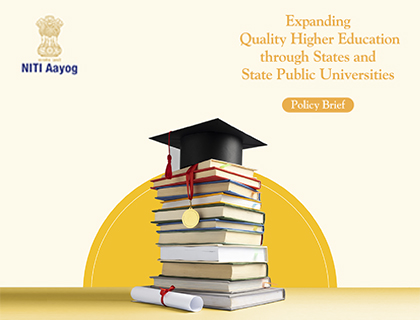
- 11 May 2025
In News:
India’s higher education sector, the third largest in the world, is largely shaped by its state universities. In its recent report titled ‘Expanding Quality Higher Education through States and State Universities’, NITI Aayog critically analyses the systemic challenges in these institutions and offers a strategic roadmap to enhance their quality, inclusivity, and global competitiveness.
Role of State Universities in India’s Higher Education Ecosystem
State universities constitute nearly 80% of all higher education institutions in India and cater to the majority of enrolled students. They play a pivotal role in ensuring access to education across socio-economic and geographical divides, particularly in underserved regions. Their contribution is crucial to India’s goals of inclusive development, knowledge-driven growth, and human capital formation. Consequently, their performance directly influences India’s research output, innovation capacity, and global academic standing.
Challenges Highlighted in the Report
1. Inadequate Investment and Uneven Funding Patterns: The report underscores the lack of consistent public investment in higher education. While some states like Kerala and Tamil Nadu invest substantially, others like Karnataka, despite high college density and enrolment, spend comparatively less. This disparity leads to uneven development and limits potential in several regions.
2. Declining Financial Commitment from States: There is a noticeable decline in state-level financial support for higher education, compounded by limited capacity to implement recommended reforms. The report calls for greater central assistance to bridge fiscal gaps and ensure a uniform quality of education nationwide.
3. Quality Deficit and Research Gaps: State universities often lack robust infrastructure, qualified faculty, and research funding. As a result, India’s institutions fall short in global rankings, reflecting systemic weaknesses. There exists a pressing need to strengthen research ecosystems and align academic output with innovation.
4. Governance and Autonomy Issues: Excessive political interference and bureaucratic hurdles dilute institutional autonomy. The report flags the tension between central regulatory bodies and state institutions, urging reforms that empower universities with greater academic and administrative freedom.
Key Recommendations
- Strengthening Research and Innovation: The creation of Centres of Excellence, dedicated research universities, and collaboration with global institutions are essential. Funding mechanisms should prioritise research aligned with national goals.
- Pedagogical Reforms and Multidisciplinary Learning: Promotion of interdisciplinary education, digital tools, and experiential learning is advocated. Regular faculty training and industry collaboration are needed to ensure skill-oriented learning.
- Financial Reforms and Public-Private Partnerships: States should aim to increase GDP spending on higher education. The report recommends performance-linked funding and encourages PPP models for infrastructure and capacity building.
- Performance Monitoring: Over 120 performance indicators have been proposed to evaluate outcomes. A system of short-, medium-, and long-term targets will guide progress through regular institutional reviews.
- Governance Reforms: Autonomy is key to excellence. Decentralised decision-making, transparent accreditation, and robust ranking systems are essential for institutional accountability and quality assurance.
Implementation Challenges
The success of these reforms hinges on overcoming several hurdles. Financial constraints, political interference, and faculty shortages persist. Mobilising alternative funding sources like CSR, insulating academia from politics, and capacity building are crucial steps.
Conclusion
NITI Aayog’s blueprint provides a timely and necessary intervention to revitalise India’s state universities. These institutions, forming the bedrock of India’s higher education framework, must be empowered through coordinated action by both state and central governments. Only then can India realize its vision of inclusive, equitable, and globally competitive higher education.
Child Labour in India
- 10 May 2025
In News:
Despite a comprehensive constitutional and legal framework designed to prohibit child labour, India continues to face the persistent challenge of millions of children engaged in hazardous and exploitative work. The prevalence of child labour in sectors such as matchstick factories, brick kilns, leather processing units, and construction sites highlights the gap between legal intent and ground realities.
Defining Child Labour
Child labour involves employing children in work that deprives them of their childhood, interferes with education, and is harmful mentally, physically, socially, or morally. It constitutes a violation of basic child rights and hampers the child’s overall development.
Legal and Constitutional Framework
India’s fight against child labour is backed by strong constitutional provisions and statutes:
- Constitutional Safeguards:
- Article 24 prohibits the employment of children below 14 years in factories, mines, and hazardous occupations.
- Directive Principles (Articles 39(e) and 39(f)) direct the State to protect children from exploitation and ensure their development.
- Statutory Measures:
- The Child and Adolescent Labour (Prohibition and Regulation) Act, 1986 (amended in 2016) prohibits employment of children under 14 and restricts adolescents (14–18 years) from hazardous work. However, it permits work in family enterprises after school hours, a provision often misused.
- The Juvenile Justice (Care and Protection) Act, 2015 treats child labour victims as children in need of care and protection.
- The Right to Education Act, 2009 mandates free and compulsory education for children aged 6–14, indirectly aiming to reduce child labour by keeping children in schools.
- Judicial Interventions:
- The Supreme Court has reinforced child rights under Article 21 (Right to Life with dignity), with landmark rulings emphasizing the state’s duty to eradicate child labour(e.g., M.C. Mehta v. State of Tamil Nadu, 1996).
Magnitude and Ground Realities
According to UNICEF’s analysis of the Periodic Labour Force Survey (2018-19), approximately 18 to 33 lakh children are engaged in labour in India. Nearly half of these children work within their families, making detection and intervention difficult. The worst-affected sectors include agriculture, fireworks, glass-making, leather tanning, mining, and construction.
Children working in these sectors face hazardous conditions involving exposure to toxic substances, long working hours, and physical and verbal abuse. This leads to long-term damage to their physical health, mental well-being, and education prospects. The lack of access to sanitation and healthcare further exacerbates their vulnerability.
Enforcement Challenges
Despite the severity of the problem, enforcement remains weak. In 2021, only 613 cases under the Child Labour Act were registered, indicating a large enforcement gap. Additionally, data on child labour is outdated and fragmented, with the last Census conducted in 2011 and poor disaggregation of data by gender and rural-urban divide. Coordination between labour departments, police, and child welfare agencies is inadequate.
Instances like the 2024 Madhya Pradesh distillery case, where 58 children were rescued after working long hours in hazardous conditions, expose the failures in inspection and enforcement at the state level.
Root Causes
Poverty remains the primary driver of child labour. The International Labour Organization highlights that child labour is both a cause and consequence of poverty. Families often push children into work due to economic necessity, especially when adult unemployment is high (estimated 6 million unemployed adults). Malnutrition and deprivation perpetuate this cycle, with India accounting for half of the world's wasted children.
Way Forward
To effectively combat child labour, India must focus on:
- Strengthening Enforcement:Establishing a National Child Labour Enforcement Grid integrating labour inspectors, district magistrates, Juvenile Justice Boards, NGOs, and Child Welfare Committees to ensure coordinated action.
- Closing Legal Gaps:Revisiting the “family enterprise” exemption and mandating compulsory reporting and rehabilitation of child labourers under the Juvenile Justice Act.
- Improving Data Systems:Fast-tracking the 2021 Census and including child labour modules in PLFS and NFHS, leveraging technology like geo-tagging and mobile apps for real-time monitoring.
- Linking Education and Welfare:Strengthening schemes like Samagra Shiksha, PM POSHAN, and Anganwadi services, alongside conditional cash transfers to incentivize withdrawal of children from labour.
- Raising Awareness:Scaling up mass communication campaigns to change societal attitudes toward child labour.
Conclusion
While India’s legal framework against child labour is among the strongest globally, enforcement weaknesses and socio-economic realities hinder progress. Addressing poverty, improving governance, and ensuring children’s right to education and protection are imperative to break the cycle of child labour and promote a just and equitable society.
Mental Health Insurance Coverage in India
- 09 May 2025
Context:
Mental health insurance coverage in India remains critically inadequate despite rising awareness of mental health issues. According to the RiseUP for a Better Tomorrow: Mental Health Report 2025, mental health accounts for less than 1% of total health insurance claims, reflecting a glaring disparity in healthcare priorities. This neglect persists despite a robust legal and regulatory framework aimed at promoting mental health coverage.
The Mental Healthcare Act, 2017 legally mandates that mental health be treated on par with physical health in insurance policies. In line with this, the Insurance Regulatory and Development Authority of India (IRDAI) issued guidelines in 2019 requiring insurers to include mental health illnesses in coverage plans. However, implementation remains patchy, especially in group insurance policies. Many plans continue to exclude essential mental health services, undermining legislative intent.
Current insurance offerings are heavily skewed towards hospitalization for severe mental illnesses, with minimal coverage for outpatient care—counselling, therapy, and medication—which forms the backbone of mental healthcare. Only 17% of insured individuals have access to outpatient mental health services. Additionally, schemes like Ayushman Bharat offer limited support for mental health, and common exclusions such as substance abuse and self-inflicted injuries reduce the scope of coverage.
On the demand side, awareness is a significant barrier. Around 42% of people are unaware of their mental health coverage, while 83% of organizations report low utilization of mental health insurance. Out-of-pocket expenses still account for 60–70% of mental healthcare costs (NMHS 2015–16), adding to the economic burden. A staggering 70–90% of individuals with mental disorders remain untreated, largely due to poor insurance access.
From the supply perspective, policy design is often modeled on physical health, failing to account for the chronic and outpatient nature of many mental health conditions. Nearly 50% of respondents in the RiseUP report cited high treatment costs as a deterrent to seeking care, a concern aggravated by restrictive policies and long claim settlement periods. Furthermore, the limited empanelment of mental health professionals constrains access for insured individuals.
Social stigma continues to be a pervasive barrier. Nearly half of the surveyed individuals fear discrimination if their mental health needs are revealed. This stigma leads to underreporting and delays in seeking care, further deepening the treatment gap.
Government initiatives like the National Mental Health Programme (NMHP) and Tele-MANAS are promising steps but require integration with insurance mechanisms to be effective. Seamless coordination between public services and insurance schemes is crucial.
Way Forward:
There is a pressing need to redesign insurance policies to comprehensively include outpatient mental health care, increase awareness through targeted campaigns, reduce stigma through public health messaging, streamline claims processing, and expand provider networks. Regulatory bodies like IRDAI must ensure compliance through audits and penalties, while employers should be incentivized to offer robust mental health coverage.
Conclusion:
Expanding mental health insurance is vital for a healthier, more inclusive, and productive society. Achieving this calls for a multi-stakeholder approach involving legal enforcement, policy reform, public education, and systemic coordination between government and private actors.
India’s Human Development Index 2025
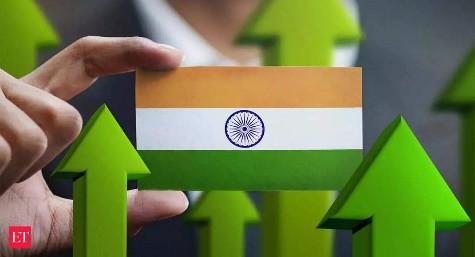
- 08 May 2025
In News:
India has made steady progress in the Human Development Index (HDI), improving its rank from 133rd in 2022 to 130th in 2023 among 193 countries. Its HDI value rose from 0.676 to 0.685, reflecting advancements in key areas such as health, education, and income. Despite these gains, significant challenges, particularly inequality, continue to limit India’s overall human development.
Understanding India’s HDI Progress
The HDI is a composite measure that captures a country’s average achievements in three core dimensions: health (life expectancy), education (years of schooling), and income (gross national income per capita). India currently belongs to the ‘medium human development’ category and is approaching the threshold for ‘high human development’ (an HDI value of 0.700).
Several factors have driven India’s recent improvement:
- Health: Life expectancy increased markedly from 58.6 years in 1990 to 72 years in 2023. This improvement is supported by flagship health schemes like Ayushman Bharat, the National Rural Health Mission, Janani Suraksha Yojana, and PoshanAbhiyaan, which have enhanced healthcare access and nutrition.
- Education: The expected years of schooling grew from 8.2 years in 1990 to 13 years in 2023, while mean years of schooling rose from 4.1 to 6.9 years. Policies such as the Right to Education Act and the National Education Policy 2020 have played critical roles in improving educational quality and accessibility.
- Income: India’s per capita Gross National Income surged from $2,167 in 1990 to $9,046 in 2023. Social welfare programs like MGNREGA and Jan Dhan Yojana have contributed to this growth by lifting approximately 135 million people out of multidimensional poverty between 2015-16 and 2019-21.
Persistent Challenges: Inequality and Gender Disparity
Inequality poses a major impediment to India’s HDI progress. It is estimated that disparities reduce India’s HDI by 30.7%, one of the highest losses in South Asia. The wealthiest 10% earn nearly 57% of the national income, while the poorest 50% share only 13%. Gender inequality further complicates the picture: India’s Gender Development Index (GDI) stands at 0.874, with female HDI (0.631) significantly lower than male HDI (0.722). Despite policy efforts, female labor force participation and political representation remain limited.
Regional and Global Context
Regionally, India lags behind neighbors like China (75th) and Sri Lanka (89th) but shares a similar HDI value with Bangladesh (130th), and surpasses Nepal (145th) and Pakistan (168th). Globally, the 2025 Human Development Report highlights a slowdown in HDI growth—the slowest since 1990—but emphasizes the transformative role of Artificial Intelligence (AI) in fostering inclusive development. India holds 20% of global AI researchers, positioning it to harness AI’s potential in sectors such as healthcare, education, and productivity.
Strategic Innovations and National Initiatives
India’s pursuit of sustainable development complements its HDI goals through key initiatives:
- Scientists have developed a metal-free catalyst leveraging mechanical energy for sustainable hydrogen fuel production, supporting the National Green Hydrogen Mission to promote clean energy.
- The Indian Navy’s deployment of INS Sharda to the Maldives for its inaugural Humanitarian Assistance and Disaster Relief (HADR) exercise under the MAHASAGAR vision showcases India’s leadership in regional disaster preparedness and maritime security.
- Developments in regional defense, such as Iran’s unveiling of the solid-fuel GhassemBasir medium-range missile, highlight ongoing security challenges necessitating vigilance and capability enhancement.
Way Forward
To advance into the ‘high human development’ category, India must:
- Implement targeted policies to reduce income and gender inequalities.
- Invest in quality education and healthcare, especially for underserved populations.
- Promote inclusive economic growth benefiting marginalized groups.
- Leverage emerging technologies like AI responsibly to enhance public services without deepening disparities.
- Strengthen regional cooperation and disaster resilience to protect socio-economic gains.
Conclusion
India’s HDI improvement reflects meaningful progress in health, education, and income. Yet, to fully realize its human development potential, India must tackle persistent inequalities and strategically harness technological innovations alongside regional cooperation. With sustained, inclusive efforts, India can continue its upward trajectory toward equitable growth and global leadership.
Biodiversity Benefit Sharing Regulations 2025

- 07 May 2025
In News:
The National Biodiversity Authority (NBA), under the Biological Diversity Act, 2002, has notified the Biodiversity Benefit Sharing Regulations, 2025 to regulate fair and equitable sharing of benefits arising from the use of India’s rich biological resources, including digital sequence information (DSI). This move strengthens India’s compliance with global Access and Benefit Sharing (ABS) frameworks under the Convention on Biological Diversity (CBD).
Background and Need
India’s vast biodiversity is a vital national asset, deeply linked with traditional knowledge of local and indigenous communities. The updated regulations address concerns that industries and researchers benefit commercially from biological resources without adequately compensating custodians of biodiversity or associated knowledge. The 2025 regulations supersede the 2014 guidelines and incorporate digital sequence information, a significant addition in the biotechnology era, where genetic information is often used without accessing physical resources.
Key Provisions of the Regulations
- Turnover-Based Benefit Sharing Slabs:The regulations introduce slabs based on the annual turnover of users accessing biological resources or associated knowledge:
- ?0–5 crore: No benefit sharing
- ?5–50 crore: 0.2% of ex-factory turnover
- ?50–250 crore: 0.4%
- Above ?250 crore: 0.6%
- Mandatory Reporting:All users with annual turnover exceeding ?1 crore must submit an annual statement detailing biodiversity resource usage.
- Exemption for Cultivated Medicinal Plants:In alignment with the Biological Diversity (Amendment) Act, 2023, cultivators of medicinal plants, and Indian traditional medicine practitioners are exempt from benefit sharing. This supports promotion of medicinal plant cultivation while balancing conservation.
- High-Value and Threatened Species Clause:For species with significant conservation or economic importance — such as red sanders, sandalwood, agarwood, and other notified threatened species — minimum benefit sharing is set at 5%, which can rise above 20% for commercial exploitation.
- Inclusion of Digital Sequence Information (DSI):Recognizing that genetic data can substitute physical biological samples, DSI has been brought under the ABS ambit, ensuring benefits from its use are also equitably shared.
- Researchers and Intellectual Property Rights (IPR):Those conducting research or applying for IPR based on Indian biodiversity must comply with benefit-sharing obligations.
Mechanism for Utilization of Benefits
The collected benefits are distributed such that approximately 10–15% is retained by the NBA to support biodiversity conservation efforts, while the remaining is transferred to claimant communities and biodiversity conservers who have preserved and nurtured these resources.
Institutional Role: National Biodiversity Authority (NBA)
Established in 2003 and headquartered in Chennai, the NBA implements the Biological Diversity Act. Its key functions include regulating access to biological resources, granting approvals to foreign and domestic entities, overseeing State Biodiversity Boards (SBBs), and advising the central government on biodiversity conservation policies. The NBA ensures compliance with international protocols like the Nagoya Protocol under the CBD, reinforcing India’s commitment to global biodiversity governance.
Global Context and International Compliance
At COP16 of the CBD held in Cali, Colombia (2024), member nations adopted a multilateral mechanism to ensure benefit sharing from the use of DSI. This is critical given the global usage of genetic resources by sectors such as pharmaceuticals, agriculture, cosmetics, and biotechnology. India’s updated regulations align with these international norms, demanding equitable compensation for communities that are custodians of biodiversity and traditional knowledge.
Conclusion
The Biodiversity Benefit Sharing Regulations 2025 mark a significant advancement in India’s biodiversity governance by closing regulatory gaps, especially around digital information and high-value species. The policy balances biodiversity conservation with sustainable use and incentivizes communities by ensuring fair economic returns, thereby promoting India’s leadership in global biodiversity stewardship.
16th Finance Commission
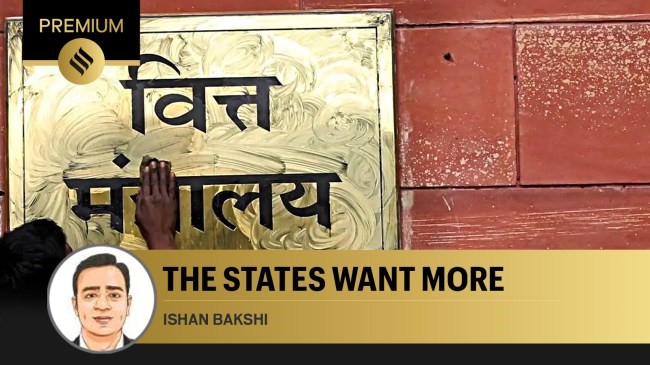
- 06 May 2025
In News:
The 16th Finance Commission (FC), constituted under Article 280 of the Constitution in December 2023, and chaired by Arvind Panagariya, faces a formidable task: redefining the contours of fiscal federalism for the period 2026–2031 amidst growing demands for fiscal autonomy by states and mounting fiscal pressures on the Union government.
The central concern is the shrinking divisible tax pool. Though the 15th Finance Commission recommended a 41% share of the divisible pool for states (reduced from 42% due to the reorganization of Jammu & Kashmir), the effective share received by states has hovered around 32%, owing to the increasing use of cesses and surcharges, which are not shared. According to RBI data, the divisible pool has shrunk from 88.6% in 2011–12 to 78.9% in 2021–22 of the Centre’s gross tax revenue. Consequently, many states are demanding that their share be increased to 50%, and a cap be placed on cesses and surcharges.
However, expanding transfers is fiscally challenging. The Union government is already borrowing to fund grants to states, raising concerns over sustainability and fiscal priorities. States account for nearly 60% of general government expenditure, and their argument for greater fiscal autonomy is not unfounded. A possible resolution lies not in increasing total transfers, but in restructuring the composition—shifting from tied to untied transfers.
The overreliance on Centrally Sponsored Schemes (CSS), which dictate how funds must be spent, has constrained state-level innovation and discretion. Rationalizing CSS and expanding untied transfers would empower states to prioritize their unique developmental needs. However, this is politically sensitive, as CSS often serve national priorities and electoral interests.
Yet, more untied funds come with trade-offs. Several states, including Karnataka and Punjab, are grappling with rising revenue deficits, indicating growing expenditure on salaries, interest payments, and subsidies rather than capital investment. This raises the risk that untied funds may be diverted to populist schemes, such as non-merit subsidies or quasi-universal cash transfers. A report by Axis Bank notes that 14 states have launched income transfer schemes, amounting to 0.6% of GDP, raising concerns about the long-term fiscal discipline.
A key question is whether increased untied transfers will improve inter-state equity in public service delivery. Low-income states like Bihar have far lower per capita spending on health, education, and infrastructure. Without accountability frameworks, there is a risk that increased autonomy may not translate into equitable development outcomes.
Moreover, the third tier of governance—local bodies—remains underfunded. Greater untied transfers could incentivize states to empower panchayats and municipalities, aligning with the principle of subsidiarity and deepening democratic decentralization.
Conclusion
The 16th Finance Commission must strike a delicate balance—ensuring fiscal autonomy for states without jeopardizing national fiscal stability. It must consider capping non-divisible levies, reforming transfer mechanisms, and introducing performance-linked incentives to strengthen accountability. Only a recalibrated, transparent, and equitable devolution framework can advance India’s cooperative federalism in both spirit and practice.
Caste Data in India: The SECC 2011 and the Road Ahead

- 05 May 2025
Context:
India has not released detailed caste-based population data since the 1931 Census, leaving a significant void in understanding the country’s socio-economic and caste demographics. The Socio Economic and Caste Census (SECC) 2011 attempted to fill this gap, but while socio-economic data was released in 2016, caste-wise data—except for total Scheduled Castes (SCs) and Scheduled Tribes (STs)—was withheld.
Historically, the 1941 Census did collect caste data, but findings were not released due to World War II. Post-independence, Indian Censuses have only collected data on SCs and STs, without disaggregating by specific caste or including Other Backward Classes (OBCs). As a result, the 1931 Census remains the last comprehensive source of caste-wise demographic data, and now serves as the baseline for any future caste enumeration, including the pandemic-delayed Census 2021.
SECC 2011: Objectives and Scope
Launched by the Ministry of Rural Development on June 29, 2011, SECC was a comprehensive door-to-door survey aimed at assessing the socio-economic status of rural and urban households across the country. Conducted in approximately 24 lakh enumeration blocks, each covering about 125 households, the SECC aimed to support evidence-based policy formulation and targeted implementation of welfare schemes. While the socio-economic part of the SECC was managed by the Rural Development Ministry, the caste data was overseen by the Ministry of Home Affairs under the Registrar General of India (RGI).
Unlike Census 2011, which is legally bound to maintain confidentiality under the Census Act, SECC data is accessible to government departments for the identification of scheme beneficiaries.
SECC vs Census 2011: Key Differences
While both exercises shared some common demographic questions—such as age, gender, literacy, and marital status—the SECC collected more granular data. For example:
- Caste and Tribe Details: Census 2011 asked only whether a respondent belonged to SC or ST. SECC 2011 went further, asking for the exact name of the caste/tribe under categories like SC (Code 1), ST (Code 2), Other (Code 3), or No Caste/Tribe (Code 4).
- Religion-based Caste Restrictions: In line with a 1990 government order, SECC noted that only Hindus, Sikhs, and Buddhists can be listed as SCs, while STs can belong to any religion.
- Economic and Health Indicators: SECC asked about household assets (mobile phones, refrigerators, vehicles), housing conditions, source of lighting, water access, latrine availability, and kitchen facilities. It also collected details on disabilities (mental and physical) and chronic illnesses like TB and leprosy.
- Employment Data: SECC captured diverse income sources in both urban (e.g., rag-picking, street vending) and rural areas (e.g., cultivation, casual labour, manual scavenging). It also recorded landholding patterns and mechanisation levels in agriculture.
Conclusion
The absence of updated, disaggregated caste data has hindered the effective formulation of policies aimed at social justice and economic equity. The SECC 2011 highlighted the possibilities of comprehensive caste enumeration but fell short in data disclosure. The upcoming Census 2021, if it includes detailed caste data, could significantly reshape India’s welfare landscape by ensuring more targeted and inclusive governance through data-driven policymaking.
Judicial Remedies and Systemic Reforms for Effective Waste Management in India
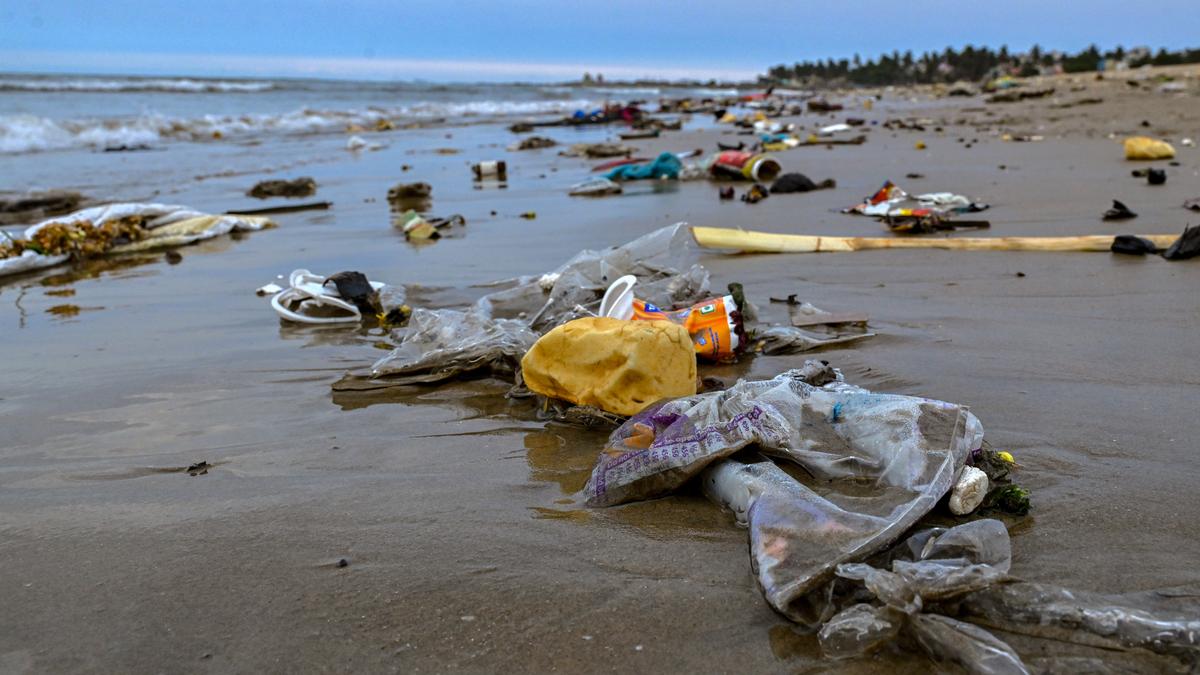
- 04 May 2025
Context:
India is currently facing an escalating waste management crisis, exacerbated by rising urbanization, inadequate infrastructure, and weak enforcement. According to a 2024 study published in Nature, India is the world’s largest plastic polluter, emitting 9.3 million tonnes (Mt) of plastic annually—nearly 20% of global plastic emissions. This is largely due to widespread mismanaged waste, including open dumping and burning.
Despite claims of 95% national waste collection coverage, the situation on the ground reveals stark contrasts. Dumpsites outnumber sanitary landfills by a ratio of 10:1, and rural areas along with the informal sector remain excluded from official data. The actual per capita plastic waste generation in India may be as high as 0.54 kg/day, much higher than the reported 0.12 kg/day.
The problem is particularly acute in ecologically sensitive areas like the Indian Himalayan Region, where data gaps, poor infrastructure, and lack of state capacity have led to severe plastic accumulation, threatening biodiversity and public health.
According to TheEnergy and Resources Institute (TERI), India generates 62 Mt of waste annually, including 5.6 Mt of plastic waste, 7.9 Mt of hazardous waste, and 1.5 Mt of e-waste. However, only 43 Mt is collected, with 12 Mt treated, and 31 Mt remains untreated in waste yards.
Institutional and Legal Framework
India has implemented several regulatory frameworks under the Environment (Protection) Act, 1986, such as the Solid Waste Management Rules (2016), Plastic Waste Management Rules (2016), and the E-Waste Management Rules (2022). The Extended Producer Responsibility (EPR) mechanism mandates producers to manage the entire lifecycle of products. As of 2022, EPR has been extended to plastic packaging, battery waste, and used oil.
Initiatives like Swachh Bharat Mission (SBM) and Waste to Wealth have promoted community engagement and technology use. SBM Urban 2.0 aims to create "Garbage Free Cities" by enhancing material recovery and waste-to-energy infrastructure. By 2024, 4.75 lakh villages had solid waste systems, and 5.14 lakh had liquid waste management systems.
Challenges
However, implementation gaps persist. Waste audits are inconsistent, especially in rural areas governed by Panchayati Raj institutions. Infrastructure for segregation, recycling, and recovery is insufficient. Establishing kiosks and MRFs in remote areas remains a logistical and financial challenge.
Way Forward: Judicial and Systemic Interventions
A promising approach is the use of continuing mandamus by the judiciary. In the 2025 Vellore District Environment Monitoring Committee vs. District Collector case, the Supreme Court emphasized remediation under the “polluter pays” principle. Judicial mandates for compliance, third-party audits, and public data transparency can significantly enhance accountability.
Technological tools like geotagging waste infrastructure on EPR portals can improve tracking and efficiency. Local bodies must be integrated with MRFs, recyclers, and EPR kiosks for seamless waste flow.
Additionally, product redesign for circularity, international cooperation through platforms like GACERE, and citizen engagement are critical to building a sustainable waste management ecosystem.
Bonded Labour in India
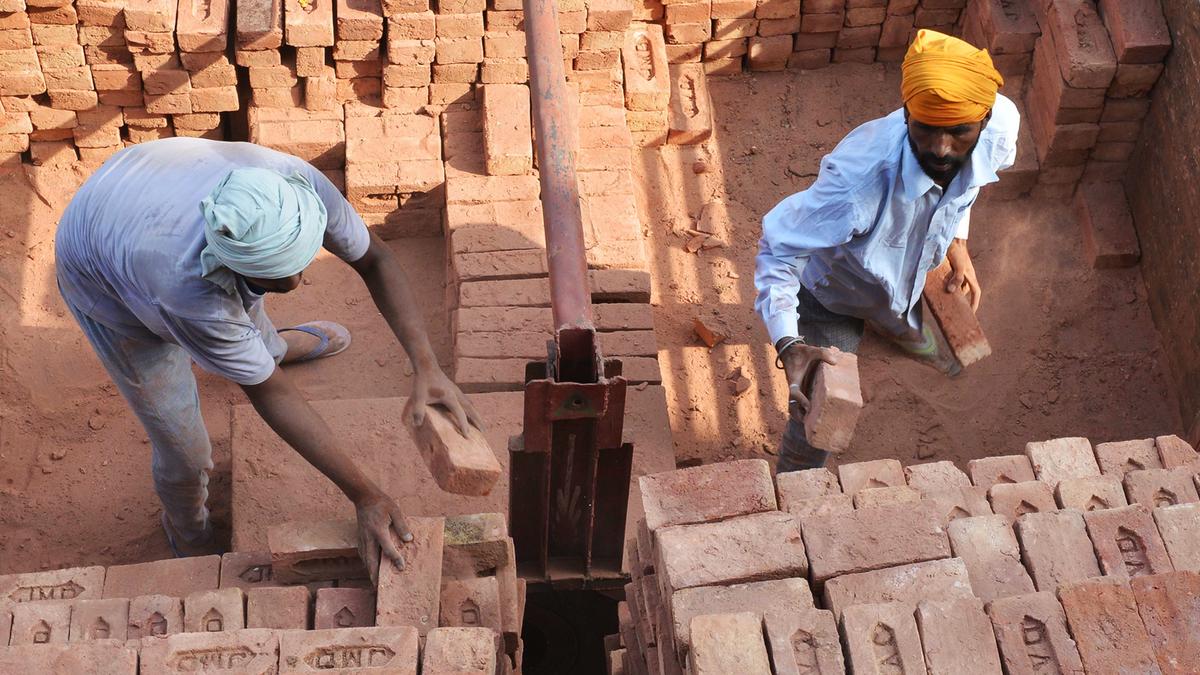
- 03 May 2025
Context:
Despite constitutional safeguards and decades-old abolition laws, bonded labour continues to haunt India’s informal economy. Marked by coercion, caste oppression, and systemic apathy, this form of modern slavery traps millions in exploitative work conditions under the guise of debt repayment or social obligation.
Ground Reality and Human Cost
The harrowing experiences of survivors like Mukesh Adivasi from Madhya Pradesh and K. Thenmozhi from Andhra Pradesh underscore the brutality of bonded labour. Lured by paltry advances (?500–?2,000), these individuals were trafficked across states, subjected to 14–16 hours of daily toil, and endured beatings, confinement, and psychological trauma. Their stories reflect the plight of an estimated 1.84 crore bonded labourers, as acknowledged by the Ministry of Labour and Employment (MoLE) in 2016.
However, between 2016 and 2021, only 12,760 individuals were officially rescued and rehabilitated — less than 1% of the total. Achieving the 2030 rehabilitation target would require rescuing over 11 lakh individuals annually, a goal far from the current trajectory.
Structural and Social Triggers
Bonded labour is not merely an economic issue but a complex interplay of poverty, caste discrimination, and weak governance. Immediate triggers include emergencies like illness, job loss, or dowries, pushing families to seek advances from exploitative employers. However, deeper systemic factors — such as caste-based exclusion (over 80% of bonded labourers belong to SC/ST/OBCs), illiteracy, and employer monopolies in rural credit and labour markets — perpetuate this cycle.
The Global Slavery Index lists India among the countries with the highest prevalence of modern slavery. Studies from states like Punjab reveal that 84% of bonded workers belong to backward castes, reinforcing the role of social stratification in this injustice.
Policy Gaps and Legal Shortcomings
Though bonded labour was abolished under the Bonded Labour System (Abolition) Act, 1976, enforcement remains weak. Many states deny its existence or fail to report cases, delaying rehabilitation. The Trafficking of Persons Bill, 2018, criticised for excluding bonded labour, further highlights legislative gaps.
Labour law reforms have exacerbated vulnerabilities. The Labour Codes (2019–2020) undermined unionisation and collective bargaining — vital tools once advocated by B.R. Ambedkar for worker empowerment.
Additionally, 90% of India’s workforce is in the informal sector (NSSO, 2023), lacking formal contracts, social security, or grievance redressal. This unregulated landscape fosters exploitation, especially among migrants fleeing climate distress and rural unemployment.
Way Forward
- Enforcement Reforms: Empower District Vigilance Committees with legal powers; digitise complaint tracking and link it with Aadhaar-based databases.
- Legal Overhaul: Amend labour codes to restore union rights and introduce caste-sensitive protections.
- Social Empowerment: Launch targeted rehabilitation schemes for SC/ST communities, offer skill training and land rights, and use vernacular media for rights education.
- Transparency and Data: Establish a national registry of rescued bonded labourers to monitor their reintegration and prevent re-trafficking.
Conclusion
Bonded labour in India represents a fundamental failure of justice, governance, and social equity. Real transformation requires a multi-pronged approach — strengthening laws, empowering vulnerable communities, and confronting the caste-class nexus of exploitation. Until then, India’s economic growth will remain morally compromised by the invisible chains of forced labour.
AI and Sustainability
- 02 May 2025
In News:
Artificial Intelligence (AI) is poised to transform India’s economy and governance landscape. A Google report estimates that AI adoption could add ?33.8 lakh crore to India’s economy by 2030, contributing 20% to GDP and supporting the USD 1 trillion digital economy target by 2028. However, this growth is accompanied by significant environmental costs, particularly from the energy-intensive AI infrastructure and data centres.
Environmental Costs of AI Expansion
Data centres—the backbone of AI—consume massive electricity, primarily from fossil fuels. In 2024, global data centres consumed 415 TWh, projected to reach 945 TWh by 2030, surpassing Japan’s electricity usage. A single AI query uses 10x the energy of a Google search. According to the IMF, AI expansion could raise electricity prices by up to 9% in the U.S.
In addition, training large AI models can consume up to 700,000 litres of water (equivalent to producing 320 Tesla cars). AI infrastructure may soon consume six times Denmark’s water needs. The mining of rare earths for AI hardware also contributes to deforestation and soil degradation, while increasing e-waste with hazardous components like lead and mercury.
Economic and Social Gains from AI
Despite these costs, AI offers transformative benefits. In agriculture, tools like Microsoft’s Project FarmVibes boost productivity by 40%, reduce water use by 50%, and lower fertilizer costs by 25%. In manufacturing, firms like Tata Steel employ AI for predictive maintenance and quality control under the ‘Make in India’ drive. Financial inclusion is advancing through AI platforms like OnFinanceAI, aiding the unbanked using mobile data. Public services are being enhanced via initiatives like Bhashini and AI-driven Digital Public Infrastructure.
AI also supports environmental monitoring. Tools like IBM’s Green Horizon track pollution, while Google’s GenCast improves extreme weather forecasting. AI-driven satellite imagery aids forest and ocean conservation, with initiatives like Fishial.AI monitoring marine biodiversity.
India’s Policy Response and Renewable Integration
Recognizing the challenges, India’s IndiaAI Mission and NITI Aayog’s AI strategy emphasize sustainable AI development. At the AI Action Summit in Paris, India reiterated the importance of aligning AI growth with renewable energy use. The country is exploring small modular reactors (SMRs) and promoting solar and wind to reduce the carbon footprint of data centres.
Currently, only 44.72% of India’s installed capacity is from non-fossil sources. Intermittent renewable supply, weak grid infrastructure, high upfront costs, and lack of integrated policies remain challenges.
Way Forward: Sustainable AI Growth
- Expand Renewable Energy: Scale solar and wind under National Solar Mission and Green Energy Corridors.
- Green Backup Power: Replace diesel generators in data centres with hydrogen fuel cells and batteries under the Green Hydrogen Mission.
- AI for Energy Optimization: Develop AI-powered smart grids and promote energy-efficient chips and cooling systems.
- Policy and Incentives: Establish unified AI–clean energy policy frameworks and incentivize 100% green data centres.
- Support Innovation: Fund pilot projects and promote green tech in over 1,000 AI and clean energy startups.
Conclusion
India’s journey to becoming a global AI powerhouse must be anchored in sustainability. Balancing technological ambitions with the 2070 net-zero goal is not just an environmental necessity but also a strategic imperative for resilient, inclusive growth.
India’s Decade of Progress in Poverty Reduction
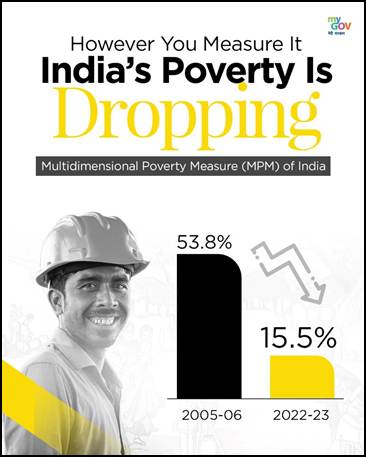
- 01 May 2025
In News:
The World Bank’s Spring 2025 Poverty and Equity Brief has lauded India for lifting 171 million people out of extreme poverty between 2011-12 and 2022-23, reducing the poverty rate from 16.2% to 2.3%. This achievement underscores India’s sustained commitment to inclusive development, driven by economic growth, targeted welfare interventions, and improved access to essential services.
Key Findings:
The Poverty and Equity Briefs (PEBs), published biannually by the World Bank, assess poverty trends using international benchmarks (USD 2.15/day for extreme poverty, USD 3.65/day for lower-middle-income poverty), and include multidimensional poverty indicators and Gini Index estimates for income inequality.
- Rural and Urban Progress:
- Rural extreme poverty declined from 18.4% to 2.8%.
- Urban extreme poverty fell from 10.7% to 1.1%.
- The rural-urban poverty gap narrowed significantly, indicating more balanced regional development.
- Lower-Middle-Income Poverty (USD 3.65/day line):
- National poverty fell from 61.8% to 28.1%, lifting 378 million people out of poverty.
- Rural poverty declined from 69% to 32.5%, and urban from 43.5% to 17.2%.
- State-wise Contribution:Uttar Pradesh, Maharashtra, Bihar, West Bengal, and Madhya Pradesh—accounting for 65% of India’s poor in 2011—contributed two-thirds of the total poverty reduction by 2022-23.
- Multidimensional Poverty:
- MPI fell from 53.8% (2005-06) to 16.4% (2019-21).
- By 2022-23, it further reduced to 15.5%, indicating improvements in health, education, and living standards.
- Income Inequality:India’s Gini Index improved from 28.8 to 25.5, signaling a modest reduction in income disparities.
Employment and Structural Shifts
Employment growth has been robust post-2021:
- Female employment has increased, though still only 31%, with a 234 million gender gap in paid work.
- Urban unemployment declined to 6.6% in Q1 FY24-25, the lowest since 2017-18.
- A shift from rural to urban employment was noted among men, while rural women increasingly engage in agricultural self-employment.
Persistent Social Challenges
Despite progress, several social challenges persist:
- Marginalized communities (SCs/STs) face limited access to quality education, healthcare, and formal jobs.
- Malnutrition and health disparities remain despite schemes like POSHAN Abhiyaan.
- Water and energy poverty still affect large segments—49.8% of rural households lack piped water (NFHS-5), and many still rely on biomass despite the Ujjwala Yojana.
- Mental poverty due to chronic stress, unemployment (29% among graduates), and social stigma hinders productivity.
- Environmental degradation from unsustainable resource use affects the poorest most, worsening poverty cycles.
Policy Recommendations
To build on this progress, India must:
- Strengthen affirmative action and welfare delivery (e.g., PMJDY, DDU-GKY, Aadhaar-based targeting).
- Promote gender equality through effective implementation of BetiBachaoBetiPadhao, SSY, and gender-inclusive job creation.
- Expand clean energy and water access via solar microgrids and the Jal Jeevan Mission.
- Scale up mental health services using ASHA workers and awareness campaigns.
Conclusion
India’s success in drastically reducing poverty—both monetary and multidimensional—demonstrates the impact of focused development policies. However, the path ahead requires deeper reforms targeting inequality, gender disparity, and service delivery inefficiencies to ensure sustained, inclusive growth.
India’s Coastal Crisis
- 31 Mar 2025
In News:
India’s vast coastline, stretching over 7,500 kilometres across nine states and four Union Territories, is a crucial ecological and economic asset. It supports diverse marine ecosystems, sustains the livelihoods of approximately 16 million fishers, and contributes around 4% to the national GDP through fisheries, tourism, and shipping activities. However, India’s coastal regions face a growing crisis from two interconnected challenges: rampant illegal light fishing and accelerating coastal erosion.
Illegal Light Fishing: Ecological and Socioeconomic Impacts
Light fishing, a method that employs high-powered artificial lights to attract fish and squid to the surface at night, is officially banned in India’s Exclusive Economic Zone (EEZ) since 2017. Despite this, enforcement remains weak and patchy, particularly within territorial waters of Maharashtra, Tamil Nadu, Andhra Pradesh, and Kerala. Mechanized boats equipped with powerful LED lights continue this practice, causing severe ecological disruption and threatening traditional fishing communities.
High-intensity lights lure not only adult fish but also juveniles and non-target species (bycatch), resulting in overfishing and depletion of juvenile stocks. This has been linked to coral reef degradation and altered marine food webs, especially impacting slow-moving species like squid, which are vital to the coastal ecosystem. Studies by institutions like the Central Marine Fisheries Research Institute have highlighted how light fishing disrupts spawning cycles and jeopardizes fish recruitment during critical periods.
Socially, light fishing disadvantages artisanal fishers who rely on traditional methods and smaller boats. The National Fishworkers Forum has documented declining catches and conflicts between small-scale fishers and mechanized operators. Moreover, the economic incentives for illegal light fishing are high, as single trips can yield profits exceeding ?1 lakh, whereas penalties, such as fines of ?16,000, are insufficient deterrents.
Coastal Erosion: Increasing Vulnerability and Habitat Loss
Alongside overfishing, India’s coastline is increasingly vulnerable to erosion, exacerbated by rising sea levels (currently about 3.2 mm per year), frequent cyclones, and human activities such as sand mining and unregulated coastal development. Recent government data indicates that 33.6% of India’s coastline is affected by erosion, with places like Dakshina Kannada in Karnataka losing nearly half of their shoreline over three decades.
Coastal ecosystems such as mangroves and coral reefs serve as natural buffers against wave action, reduce erosion, and play a critical role in carbon sequestration. For instance, the Bhitarkanika mangroves in Odisha absorb four times more carbon than terrestrial forests, helping mitigate climate change. However, urban expansion and infrastructure projects have led to significant mangrove loss—Mumbai has lost 40% since 1987—reducing the coastline’s resilience against natural disasters.
Pollution from plastic waste and industrial effluents further degrades marine habitats, while weak enforcement of Coastal Regulation Zone (CRZ) norms allows illegal constructions that exacerbate ecological damage.
Way Forward: Policy, Enforcement, and Community Engagement
Addressing India’s coastal crisis requires a multi-pronged approach:
- Strengthening Enforcement: There is an urgent need for uniform nationwide enforcement of the light fishing ban, enhanced patrolling using technologies like AI-enabled drones, and more stringent penalties to deter violations.
- Ecological Restoration: Initiatives such as artificial reefs, mangrove afforestation, and sand replenishment can restore natural coastal buffers. Programs like those in Puducherry and Odisha demonstrate the effectiveness of such measures.
- Community Participation: Empowering fisherfolk through capacity-building and involving local communities in surveillance and sustainable fishing practices is critical. Tamil Nadu’s fisher unions serve as a successful model of local stewardship.
- Climate Adaptation and Research: Relocating vulnerable settlements, investing in cyclone-resistant infrastructure, and expanding scientific research, such as satellite monitoring of erosion hotspots, are essential for long-term resilience.
Conclusion
India’s coastal regions are at a crossroads, balancing economic development, ecological sustainability, and social equity. Illegal light fishing and coastal erosion threaten marine biodiversity and the traditional livelihoods of millions. Effective governance, backed by technological innovation and community collaboration, is indispensable to safeguard India’s maritime heritage and ensure sustainable use of coastal resources in alignment with Sustainable Development Goal 14.
Myanmar-Thailand Earthquake 2025
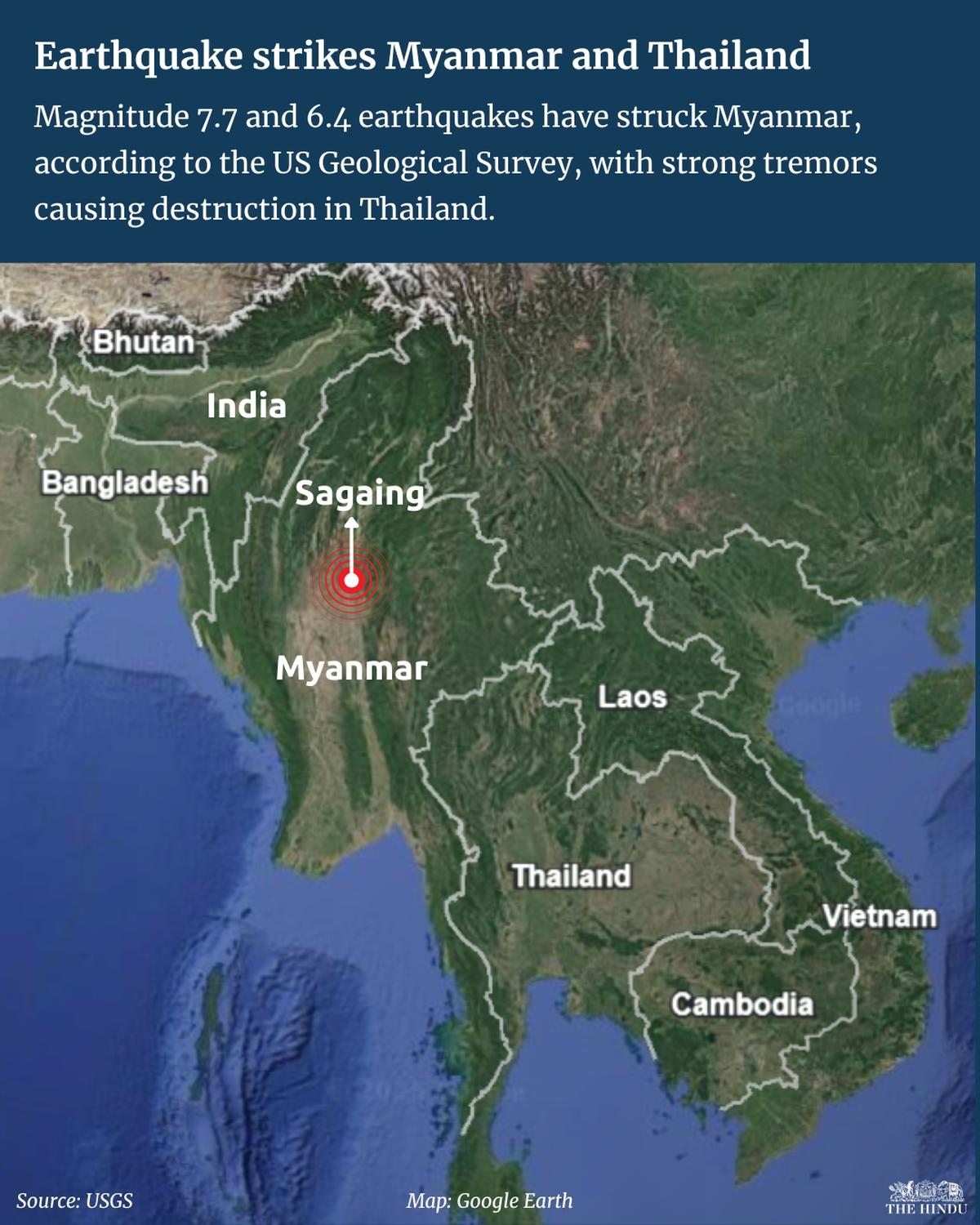
- 30 Mar 2025
In News:
Recently, a devastating 7.7 magnitude earthquake struck central Myanmar near Mandalay, resulting in catastrophic destruction across Myanmar and Thailand. The tremor, the strongest in the region in 75 years and globally the most powerful in two years, occurred at a shallow depth of 10 km, amplifying its destructive impact.
Human and Structural Impact
In Myanmar, at least 144 people were killed and 730 injured, while in Thailand, particularly Bangkok, eight deaths were confirmed, including three from a 33-storey building collapse. The death toll is expected to rise as search and rescue operations continue. Infrastructure damage was widespread—residential buildings, pagodas, a dam, and a 90-year-old bridge in Myanmar collapsed. In Bangkok, high-rises swayed dangerously, rapid transit systems shut down, and panic gripped the city. Over 90 people were reported missing in Bangkok’s construction site collapse.
The quake severely impacted regions already suffering from ongoing humanitarian crises, particularly Myanmar, where a civil war has displaced over 3 million people, and 20 million are in need of assistance, according to the UN. Emergency services were hindered by damaged roads and downed power lines.
Geological Context and Causes
The earthquake was caused by strike-slip faulting along the Sagaing Fault, a major tectonic boundary between the Indian and Eurasian plates. This north-south fault is highly seismically active and has been responsible for several past quakes, including those in 1839 (M 8.3), 1912 (M 7.9), and 2016 (M 6.9).
Shallow-focus earthquakes like this one, occurring at just 10 km depth, tend to cause significant surface damage due to minimal energy dissipation before the seismic waves reach the surface. Additionally, seismic waves radiate along the entire fault line, affecting regions far beyond the epicenter, including China’s Yunnan and Sichuan provinces, where structural damage and injuries were also reported.
Preparedness and Vulnerabilities
Myanmar's infrastructure is ill-prepared for high-magnitude earthquakes, especially in the Mandalay region where modern seismic-resistant construction is limited. The USGS estimated potential fatalities between 10,000 and 100,000, and economic losses up to 70% of Myanmar’s GDP, underscoring the country’s vulnerability. The affected area lies in the central region of the country, less accustomed to high-magnitude tremors than the traditionally more seismically active western regions.
International and Regional Response
Myanmar declared a state of emergency in six regions, including Naypyidaw and Mandalay. Thailand’s city hall declared Bangkok a disaster zone to mobilize emergency responses. Indian Prime Minister Narendra Modi offered immediate support, stating that Indian authorities and the Ministry of External Affairs are in touch with both governments. The disaster also holds diplomatic relevance, with Bangkok set to host the BIMSTEC Summit, highlighting the importance of regional disaster cooperation.
Conclusion
The 2025 Myanmar-Thailand earthquake exposes the urgent need for seismic resilience, urban preparedness, and regional disaster response cooperation in South and Southeast Asia. With climate change and tectonic vulnerabilities intersecting, India and neighboring nations must integrate robust disaster management frameworks into developmental planning and regional diplomacy.
Judges’ Asset Disclosure in India

- 29 Mar 2025
In News:
The recent recovery of large sums of cash from the residence of Delhi High Court judge Justice Yashwant Varma has reignited the debate over transparency and accountability in India’s higher judiciary. This incident underscores the pressing need for a legal framework mandating the public disclosure of assets by judges of the Supreme Court and High Courts—currently one of the few segments of public office bearers exempt from such transparency norms.
Current Norms and Judicial Practice
In 1997, the Supreme Court under then Chief Justice J.S. Verma adopted a resolution requiring judges to declare their assets (including those of spouses and dependents) to the Chief Justice. However, this was an internal exercise, with no provision for public disclosure.
In 2009, responding to public pressure and a Right to Information (RTI) application, the Supreme Court resolved to allow voluntary disclosures on its website. While asset declarations were briefly published starting November 2009, the practice faded. Since 2018, the SC website has not been updated, and declarations by current or former judges are no longer publicly available.
In a landmark judgment in 2019, the Supreme Court ruled that judges' assets and liabilities are not “personal information” and hence fall within the scope of RTI. Despite this, judicial compliance with voluntary disclosures remains minimal.
High Court Practices and Resistance
As of March 1, 2024, only 97 of the 770 sitting High Court judges (less than 13%) across seven High Courts (Delhi, Punjab & Haryana, Himachal Pradesh, Madras, Chhattisgarh, Kerala, and Karnataka) have publicly declared their assets. Many High Courts have outright rejected RTI applications or passed resolutions opposing the idea of asset disclosure. For example, in 2012, the Uttarakhand High Court strongly objected to bringing judges’ assets under RTI. The Allahabad High Court, and several others including Rajasthan, Gujarat, and Bombay, have also denied such information under RTI citing exemptions.
Comparison with Other Public Servants
In stark contrast, civil servants, ministers, and elected representatives in India are bound by law or convention to publicly disclose their assets:
- Civil Servants: Must annually declare assets to their cadre-controlling authority; many states such as Gujarat and Kerala make this information accessible via RTI.
- Union Ministers and MPs: Since 2009, ministers submit asset declarations to the Prime Minister’s Office (PMO), which are available on its website. MPs submit declarations to the Speaker or Chairperson, which can be accessed through RTI.
- Election Candidates: A 2002 Supreme Court judgment mandates detailed public asset disclosure as part of the nomination process. Even minor errors can disqualify a candidate.
Legislative Recommendations and the Way Forward
Recognizing the gap, the Parliamentary Standing Committee on Personnel, Public Grievances, Law and Justice recommended in 2023 that legislation be introduced to mandate asset disclosures by judges. However, no progress has been made on this front.
In a democratic setup, the judiciary must not only be impartial but also seen as such. Mandatory public asset disclosure is a vital step toward strengthening judicial accountability and restoring public trust in the institution. Balancing judicial independence with transparency is essential for good governance and ethical public administration.
India’s E-Retail Landscape
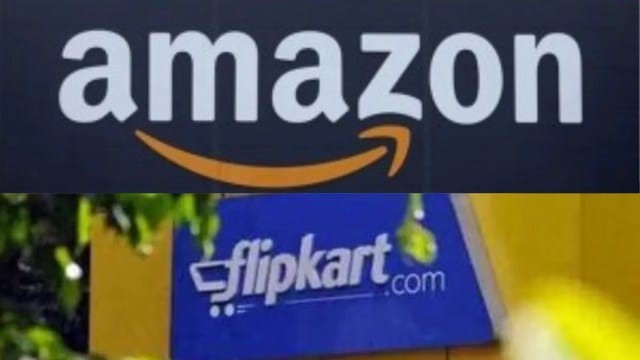
- 28 Mar 2025
Context:
India’s e-retail sector has emerged as a global frontrunner, surpassing the United States in terms of online shopper base and attaining a Gross Merchandise Value (GMV) of $60 billion in 2024. Despite this milestone, the sector’s growth rate halved from historical averages of 20% to 10–12% in 2024. This deceleration is attributed primarily to macroeconomic headwinds—particularly high inflation and stagnation in real wages, which have also slowed private consumption growth from 11% (2017–19) to 8% (2022–24).
Structural Drivers and Government Support
Notwithstanding short-term sluggishness, India’s long-term e-retail outlook remains promising. Key government initiatives—such as Digital India, Make in India, Startup India, and Skill India—have laid a strong digital foundation. The Government e-Marketplace (GeM) crossed ?4 lakh crore GMV in FY24, reflecting growing public sector adoption of digital commerce.
Policy reforms have facilitated e-commerce expansion:
- 100% FDI in B2B e-commerce
- Implementation of Consumer Protection (E-commerce) Rules, 2020
- Strengthening digital infrastructure through 5G rollout
- The CSC-ONDC partnership aims to democratize access to digital markets in rural areas.
Key Growth Trends Shaping the Sector
The Flipkart–Bain & Company report identifies three transformative trends:
- Quick Commerce:Quick commerce now commands over two-thirds of e-grocery orders and constitutes 10% of total e-retail spending. It is projected to grow at over 40% CAGR until 2030, driven by faster deliveries, increasing product categories, and geographic expansion into Tier-2 and Tier-3 cities.
- Trend-First Commerce:Particularly dominant in fashion, this segment caters to consumers who prioritize latest trends and styles. Trend-first fashion alone is forecasted to grow fourfold to $8–10 billion by 2028, with more than half of the sales occurring online.
- Hyper-Value Commerce:This model emphasizes ultra-low-priced assortments aimed at lower-middle-income consumers. Its share of e-retail GMV has increased from 5% in 2021 to over 12% in 2024, gaining momentum in smaller towns and cities.
Demographic and Regional Shifts
The e-retail customer and seller base is witnessing increasing diversification:
- Since 2020, 60% of new shoppers have emerged from Tier-3 or smaller cities.
- The Northeastern states show 1.2 times higher e-retail penetration compared to the national average.
- Similarly, 60% of new sellers since 2021 are from Tier-2 or smaller towns, indicating broad-based entrepreneurial participation.
Future Outlook
E-retail is expected to reach a GMV of $170–190 billion by 2030, growing at over 18% annually. A key inflection point will be when India’s GDP per capita crosses the $3,500–4,000 threshold, historically associated with significant upticks in discretionary digital spending. By 2030, one in ten retail dollars is projected to be spent online, with high-frequency categories such as grocery, lifestyle, and general merchandise accounting for two-thirds of e-retail expenditure.
Conclusion
India’s e-retail sector reflects the dynamic interplay of technology, policy, and socio-economic shifts. While macroeconomic challenges have tempered short-term growth, strong structural fundamentals and strategic disruptions position the sector for robust expansion. The transformation of digital commerce, particularly through inclusivity and value-driven models, is not only reshaping consumer behavior but also holds significant implications for employment, urbanization, and digital governance in India’s developmental journey.
India’s Deep Tech Ecosystem & the Government’s ?20,000 Crore Funding Initiative
- 27 Mar 2025
Context:
India’s deep technology (deep tech) sector is emerging as a key driver of transformative innovation, leveraging advanced scientific breakthroughs to address complex challenges across sectors such as defence, healthcare, artificial intelligence (AI), biotechnology, aerospace, and renewable energy. Deep tech encompasses disruptive technologies including AI and machine learning, quantum computing, biotechnology, advanced materials, robotics, and aerospace systems.
Growth and Potential of India’s Deep Tech Sector
India’s deep tech ecosystem has seen rapid expansion in recent years. According to NASSCOM’s 2024 report, over 3,600 deep tech startups operate in India, with 480 new startups launched in 2023 alone, doubling the number from the previous year. While India ranks as the third-largest startup ecosystem globally, its deep tech sector ranks sixth worldwide. This growth reflects a rising blend of entrepreneurial ambition, government support, and increasing collaboration between academic institutions, research organisations, and industry.
Government initiatives such as the Draft National DeepTech Start-up Policy, the National Quantum Mission, India AI Mission, and substantial venture capital funds (e.g., ?1,000 crore for space tech startups) underscore India’s commitment to strengthening this ecosystem. Programmes like the Atal Innovation Mission, NITI Aayog’s innovation initiatives, and Start-up India provide critical support through incubators, accelerators, and funding mechanisms.
The ?20,000 Crore Deep Tech Fund
In the Union Budget 2024-25, Finance Minister announced a ?20,000 crore allocation as a 50-year interest-free loan to private sector-driven deep tech research and innovation. The fund aims to catalyse cutting-edge R&D and position India as a global leader in disruptive technologies.
However, the Parliamentary Standing Committee on Science and Technology, Environment, Forests and Climate Change has raised significant concerns about this scheme. While acknowledging the boldness of the initiative, the Committee warned of risks including potential misallocation of funds, national security implications, and low return on investment for the government. It expressed doubts over the competence of fund managers in selecting impactful projects, cautioning that private entities might benefit disproportionately at public expense.
The Committee suggested that directing such substantial funding toward government research institutions might yield more measurable impact. It emphasized the need for transparency, accountability, and a robust framework to guide the implementation of the fund.
Underutilisation of Scientific Research Funds and Reviving Public Sector Units
The Committee also flagged suboptimal utilisation of allocated funds by the Department of Scientific and Industrial Research, with over half of the budget remaining unused late into the financial year. A significant portion (62%) is consumed by salaries and pensions, leaving limited funds for actual research and infrastructure development.
Further, the Committee highlighted concerns over the poor condition of two public sector undertakings under the Department of Biotechnology—BIBCOL and IVCOL. It recommended their revival to ensure affordable vaccine availability domestically and improve India’s position in the global vaccine market, especially for exports.
Policy Recommendations and Future Outlook
To unlock the full potential of deep tech innovation, the Committee and experts suggest multiple policy measures for Budget 2025 and beyond:
- Ensuring long-term, patient capital through government grants and venture capital funds to meet the high risk and capital-intensive nature of deep tech ventures.
- Strengthening intellectual property rights and establishing commercialisation hubs for startups.
- Enhancing public-private partnerships and specialised talent development through tailored skilling and certifications in AI, robotics, and quantum computing.
- Modernising infrastructure by establishing research hubs, technology parks, and national facilities such as wind tunnels.
- Streamlining regulatory frameworks for faster deployment of emerging technologies like autonomous vehicles and drones.
- Promoting sustainability by incentivising green and climate tech innovations.
Conclusion:
India’s deep tech sector is poised for a transformative leap, but its success hinges on addressing governance, funding utilisation, and ecosystem-building challenges. The government’s strategic interventions and sound policy frameworks will be crucial in translating India’s scientific prowess into global technological leadership.
Universal and Equitable Tuberculosis Care in India
- 26 Mar 2025
In News:
India has made significant strides in tuberculosis (TB) care, exemplified by a 17.7% reduction in TB incidence from 237 to 195 per lakh population between 2015 and 2023. This progress reflects a comprehensive approach incorporating rapid molecular testing, new drug regimens, enhanced nutritional support, and community engagement. However, to achieve universal health coverage (UHC) and eliminate TB by 2025, as targeted by the National Tuberculosis Elimination Programme (NTEP), further integration and decentralization of services are crucial.
Key Developments in TB Care
India’s efforts to combat TB have included the roll-out of the BPaLM regimen (a combination of four drugs: Bedaquiline, Pretomanid, Linezolid, and Moxifloxacin), which shortens the treatment period for drug-resistant TB.
Additionally, the Ni-kshayPoshan Yojana (NPY), which provides nutritional support of ?1,000 per month to TB patients, addresses the need for holistic care. Community participation has also been enhanced through the inclusion of TB survivors as “TB champions,” promoting awareness and treatment adherence at the grassroots level.
Furthermore, TB care has been integrated into the Ayushman Bharat scheme, ensuring that TB services are available through the Pradhan Mantri Jan Arogya Yojana (PMJAY) and Ayushman Arogya Mandirs (AAMs), which offer comprehensive primary health care across India. These efforts aim to decentralize TB care, ensuring that treatment is accessible at the community level, reducing delays in diagnosis, and minimizing out-of-pocket expenses for patients.
Challenges to Achieving Equitable TB Care
Despite these advancements, challenges persist. Over 50% of TB patients seek treatment in the private sector, where standards are inconsistent, leading to delays and higher costs. The private sector’s underreporting further complicates the efforts to ensure complete coverage and comprehensive care. Additionally, barriers such as gender, caste, disability, and socio-economic status often affect TB diagnosis and treatment outcomes. These social determinants necessitate a targeted approach to ensure equitable access to care.
TB services in India have largely remained vertical, with distinct TB care pathways separate from general healthcare services. Integrating TB care into the broader public health system is critical for the country’s goal of achieving UHC. Another challenge is the lack of integrated care that combines TB treatment with screening for other diseases like chronic obstructive pulmonary disease (COPD), diabetes, and mental health conditions.
Recommendations
India must focus on five key strategies to enhance TB care and achieve UHC:
- Person-Centered Care: Model programs like Tamil Nadu’s KasanoiErappilaThittam, which identifies vulnerable populations and provides tailored care, should be scaled up nationwide.
- Intersectionality: Address the intersection of gender, caste, disability, and socio-economic status to ensure that marginalized groups are not left behind.
- Integrated Care: TB care should be integrated with the broader healthcare system, including screenings for non-communicable diseases (NCDs) and mental health issues, using tools like AI-enabled diagnostics.
- Financial Protection: Expanding social protection measures such as wage-loss schemes, livelihood support, and extended nutritional assistance will reduce financial barriers for TB patients.
- Awareness and Communication: A multi-platform public education campaign similar to the one used during the COVID-19 pandemic is essential to dispel myths, reduce stigma, and promote early detection and treatment.
Conclusion
India’s ambitious goal to eliminate TB by 2025, ahead of the global target, is a crucial step toward achieving UHC. By strengthening integrated, person-centered, and equitable care, addressing the social determinants of health, and promoting community-driven initiatives, India can lead the global fight against TB and set a benchmark for future health interventions.
Tracking Migration in India
- 25 Mar 2025
In News:
The Covid-19 pandemic significantly altered migration patterns in India, with a massive reverse migration from urban areas to rural regions. The first lockdown saw 44.13 million people migrating, followed by 26.3 million during the second lockdown. These migrants, mostly low-wage workers, faced hardships like wage theft, food insecurity, and a lack of healthcare. Many, reliant on remittances, were economically strained.
Rebound of Rural-to-Urban Migration
Five years post-pandemic, migration trends have largely reverted to pre-Covid patterns. The rural economy struggled to accommodate returning migrants, offering limited job opportunities and low wages, leading many to return to urban centers. Rural distress and urban aspirations, supported by schemes like the Smart Cities Mission, continue to drive migration. Projections suggest that by 2026, 40% of India’s population will reside in urban areas. Additionally, climate change is intensifying migration, especially in agrarian states like Odisha, where disrupted agriculture forces people to migrate.
Shifts in International Migration
International migration also experienced changes post-Covid. While Indian emigrants faced challenges like job losses and poor living conditions abroad, remittances remained resilient, reaching $83.15 billion in 2020. Migration patterns shifted, with increasing numbers moving to Europe, particularly skilled professionals benefiting from the EU Blue Card program. Migration to Africa has also risen, driven by growth in sectors like IT and healthcare. The pandemic also fueled a rise in student migration, with the number of student emigrants from Kerala nearly doubling from 1.29 lakh in 2018 to 2.5 lakh in 2023.
Governance Challenges in Migration
Despite changes in migration patterns, several governance challenges persist. The lack of up-to-date migration data, compounded by delays in the 2021 Census and outdated figures from the Periodic Labour Force Survey (PLFS), hampers effective policy-making. The Ministry of External Affairs' data underrepresents seasonal and temporary migrants, while illegal migration remains largely untracked.
Moreover, social security schemes remain inadequately implemented. The e-Shram portal, designed for unorganised workers, faces limited uptake due to digital exclusion and awareness gaps. Similarly, the One Nation One Ration Card (ONORC) scheme only covers part of the migrant population. Legal protections for migrant workers, like those under the Inter-State Migrant Workmen Act, 1979, remain weak, and the implementation of new Labour Codes introduced in 2020 is still incomplete.
Vulnerabilities and Gaps in Support
Certain vulnerable groups, such as migrant women and children, are often neglected in migration policies. Women face risks of trafficking and exploitation, while children suffer from disrupted education and inadequate healthcare. Climate-induced migration, resulting from floods and droughts, is also under-addressed in disaster management and climate adaptation policies, leaving communities unsupported during distress-induced mobility.
Recommendations for Strengthening Migration Governance
To address these challenges, India must strengthen migration governance:
- Robust Migration Data Systems: Expand Kerala’s migration surveys to other states for better national data systems.
- National Migration Policy: Expedite the NITI Aayog’s draft policy to ensure inter-ministerial coordination and gender-sensitive provisions.
- International Migration Frameworks: Enhance labour mobility agreements with emerging destinations like Europe and Africa, along with skill-building initiatives.
- Improved Social Security Access: Implement the Code on Social Security, 2020, and ensure portability of benefits across states.
- One-Stop Migrant Facilitation Centers: Establish urban centers to assist migrants with registration, legal aid, and grievance redressal.
- Address Vulnerable Groups: Develop policies protecting migrant women and children, ensuring education and healthcare access.
- Climate-Induced Migration: Integrate climate migration in national policies for adequate community support.
Conclusion
Migration in India has largely returned to urban centers, but governance remains a challenge. Strengthening migration data, enhancing social security systems, and improving coordination at all levels of government will ensure that migration serves as a tool for development and the welfare of millions of migrants across India.
India’s Counter-Naxal Strategy
- 24 Mar 2025
In News:
The Government of India, has adopted a zero-tolerance policy against Left-Wing Extremism (LWE), commonly referred to as Naxalism. The Central Government has set a target to make India Naxal-free by March 2026, a goal backed by integrated security, developmental, and governance strategies.
Current Status and Achievements
Recent operations in Chhattisgarh’s Bijapur and Kanker districts led to the neutralization of 22 Naxalites, highlighting the success of the ongoing ‘Naxalmukt Bharat Abhiyan’. In 2025 alone, 90 Naxalites were killed, 104 arrested, and 164 surrendered. In 2024, these figures stood at 290 neutralized, 1,090 arrested, and 881 surrendered. Additionally, 15 top Naxal leaders have been eliminated.
There has been a 53% decline in Naxal-related incidents, from 16,463 cases (2004–14) to 7,744 (2014–24). Casualties among security forces have dropped by 73%, and civilian deaths by 70% in the same period. Fortified police stations increased from 66 (2014) to 612 (2024). The number of Naxal-affected districts has drastically reduced from 126 to 12, indicating a marked shrinkage in the Red Corridor.
India’s Multi-Pronged Approach
The National Policy and Action Plan to Address LWE (2015) guides the Centre’s counter-Naxal efforts through three pillars: security enhancement, development outreach, and ensuring rights and entitlements.
- Security Operations:
- Major operations like Operation Green Hunt deploy Central Armed Police Forces (CAPFs), CoBRA commandos, and state-level forces like Greyhounds (Andhra Pradesh).
- 302 new security camps and 68 night landing helipads have been established in vulnerable regions for better mobility and reach.
- Development Initiatives:
- Under PMGSY-II, the Road Connectivity Project for LWE Areas improves access to remote villages.
- 130 Eklavya Model Residential Schools (EMRS) ensure tribal children receive quality education.
- The ROSHNI Scheme and establishment of Industrial Training Institutes (ITIs) provide skill development and livelihood avenues to tribal youth.
- The Universal Service Obligation Fund (now Digital Bharat Nidhi) has led to widespread mobile tower installation in forested areas.
- Tribal Youth Exchange Programs promote national integration and awareness among tribal youth.
- Legal and Institutional Measures:
- The Unlawful Activities (Prevention) Act, 1967 (UAPA) bans CPI (Maoist) and affiliated organizations.
- Forest Rights Act (2006) and PESA (1996) aim to protect tribal land and forest rights.
- Surrender-cum-Rehabilitation policies provide financial aid, vocational training, and reintegration support.
Understanding Naxalism
Naxalism, rooted in the 1967 uprising in Naxalbari (West Bengal), is a Maoist-inspired insurgency seeking to overthrow the Indian state through armed rebellion. Factors contributing to its rise include landlessness, tribal alienation, poverty, displacement from mining and industrial projects, and state neglect. The insurgency remains concentrated in the “Red Corridor” encompassing Chhattisgarh, Jharkhand, Odisha, Maharashtra, and Bihar.
Conclusion
India’s counter-Naxal policy demonstrates that a balanced approach combining firm security enforcement with development and governance reforms can significantly curb insurgency. Continued emphasis on inclusive growth and tribal empowerment remains crucial to achieving lasting peace in affected regions.
Holocene Epoch and its relevance to Climate Change and Sea-Level Rise
- 23 Mar 2025
In News:
The Holocene Epoch, the current geological epoch, began approximately 11,700 years ago following the end of the Pleistocene Ice Age. This epoch is marked by a pronounced warming trend, glacial retreat, and the rise of human civilization. Understanding the environmental dynamics of the Holocene—particularly sea-level rise during its early phase—is crucial to predicting future climate scenarios driven by anthropogenic warming.
The term "Holocene" was introduced by Paul Gervais in 1869 and was formally adopted by the International Geological Congress in 1885. It encompasses significant geological, climatic, and anthropogenic changes that have shaped the modern Earth system.
Climatic and Geological Evolution
The early Holocene witnessed the final stages of deglaciation, characterized by rapid sea-level rise due to the melting of massive ice sheets. Geological data, particularly from regions like the North Sea, have helped resolve earlier uncertainties in sea-level reconstructions. Meltwater pulses—especially those around 10,300 years ago and 8,300 years ago—contributed to an estimated sea-level rise of about 37.7 meters between 11,000 and 3,000 years ago.
This period also saw the formation of key geographical features such as the Hudson Bay, Baltic Sea, North Sea (with the submergence of Doggerland), and the Great Lakes in North America. The global retreat of glaciers reshaped coastlines, river systems, and deltas, fostering the development of modern terrestrial ecosystems.
Climate Events and Ecological Shifts
The Holocene has not been climatically uniform. After the abrupt cooling of the Younger Dryas (12,900–11,700 years ago), the Earth entered a warmer phase. The Holocene Climate Optimum (9000–5000 BCE) witnessed elevated temperatures that supported the expansion of forests, grasslands, and wetlands. Later, the Little Ice Age (1300–1850 CE) brought cooler temperatures, especially in the Northern Hemisphere, affecting agriculture and socio-economic conditions in Europe.
Impact on Human Societies
The climatic stability of the Holocene was instrumental in the Neolithic Revolution (~10,000 BCE), wherein humans transitioned from nomadic hunter-gatherers to sedentary agricultural communities. This transformation led to the rise of early civilizations such as Mesopotamia, the Indus Valley, Ancient Egypt, and China, all supported by predictable climate and fertile river systems.
Significant cultural and technological milestones occurred during the Holocene, including the invention of writing (~3200 BCE in Sumer), the beginning of the Bronze Age (~3300 BCE), and the emergence of urban centers.
Modern Relevance and the Anthropocene Debate
In recent centuries, particularly after the Industrial Revolution (~1750 CE), human activity has become a dominant force influencing Earth's climate and ecosystems. Rising CO? levels, deforestation, biodiversity loss, and accelerated global warming have led some scientists to propose a new epoch—the Anthropocene—though it remains a debated classification.
Understanding sea-level patterns from the early Holocene provides essential context for modern climate models. Past trends demonstrate that ice melt and thermal expansion can lead to rapid sea-level rise, a warning echoed by contemporary concerns over melting polar ice and global warming.
US Airstrikes on Houthis
- 22 Mar 2025
In News:
The renewed US military offensive against the Iran-backed Houthi rebels in Yemen reflects intensifying geopolitical tensions in the Red Sea and surrounding West Asian region. In early 2025, the US launched over 40 airstrikes targeting Houthi-controlled areas, including Sanaa, Saada, and the strategic port city of Hodeidah. The escalation follows months of Houthi attacks on international shipping, ostensibly in solidarity with Palestinians during the ongoing Gaza conflict.
Strategic Background and US Objectives
Houthi disruptions to maritime trade in the Red Sea—through drone, missile, and small-boat attacks—have endangered key shipping lanes through Bab-el-Mandeb and the Suez Canal. With nearly 15% of global seaborne trade passing through this corridor, including vital energy supplies, their actions have compelled ships to reroute around Africa, escalating shipping costs and global inflation risks.
Former US President Donald Trump, now leading a second administration, has vowed decisive retaliation. He re-designated the Houthis as a Foreign Terrorist Organization (FTO) in early 2025 and emphasized that attacks by the Houthis would be interpreted as attacks by Iran, warning Tehran of dire consequences. Trump’s administration asserts that the airstrikes are aimed at restoring freedom of navigation and deterring Iranian influence in the region. However, critics argue this could be a calibrated signal to avoid direct confrontation with Iran while maintaining pressure ahead of potential nuclear negotiations.
Regional and International Dynamics
The Houthis, officially called Ansar Allah, have displayed remarkable resilience, withstanding over 20,000 airstrikes by the Saudi-led coalition since 2015. Their asymmetric warfare tactics, inspired by groups like Hezbollah, rely on mobility, modular units, and advanced missile and drone technology. Despite repeated bombardments, they retain operational capabilities, evidenced by continued attacks on US naval assets and commercial vessels.
Although Tehran remains the group's principal backer, Houthi ties extend to Russia and China. Beijing, by purchasing nearly 90% of Iran’s oil exports in 2024, indirectly funds the Houthi supply chain. Many of the group’s anti-ship cruise missiles are derivatives of older Chinese designs, while Moscow reportedly provides targeting intelligence and small arms. This triangulation complicates US efforts, making the Houthis part of a broader anti-Western strategic bloc.
Regional Responses and the Humanitarian Toll
Interestingly, major Arab states, including Saudi Arabia—formerly the Houthis' chief adversary—have distanced themselves from the US offensive. Riyadh advised restraint in early 2024 and has reportedly avoided providing logistical support for the strikes. This signals a regional fatigue with military solutions and a possible pivot toward political engagement.
On the ground, the strikes have intensified the humanitarian crisis in Yemen. The Houthi-run health ministry reports at least 31 deaths and over 100 injuries. Yet, the group remains defiant, pledging to continue targeting vessels linked to the US, UK, or Israel until the Gaza blockade is lifted.
Conclusion
The Houthi-US conflict in the Red Sea epitomizes the nexus of regional geopolitics, maritime security, and great power rivalries. For India, which depends heavily on Suez Canal routes for trade and energy imports, developments in this theatre bear close watching. A prolonged conflict could disrupt global supply chains, heighten oil prices, and challenge freedom of navigation principles, central to India’s Indo-Pacific strategy.
India’s 5G Revolution

- 21 Mar 2025
Context:
India is undergoing a digital transformation powered by rapid expansion in mobile broadband. According to Nokia’s Mobile Broadband Index (MBiT) Report 2024, India’s average monthly data usage per user reached an all-time high of 27.5 GB. The exponential growth in 5G adoption, traffic, and device readiness reflects a critical shift in the country’s telecom and digital infrastructure landscape.
Key Trends in Data Consumption and 5G Expansion
The report highlights several key trends that underline India's accelerating digital momentum:
- Average Data Consumption: The average mobile user in India consumed 27.5 GB/month in 2024, underlining the growing demand for video streaming, social media, and real-time applications.
- Surge in 5G Traffic: 5G data traffic tripled over the past year, with projections indicating it will overtake 4G by Q1 2026. The shift is especially noticeable in urban areas.
- Metro-Centric 5G Usage: In India’s metro circles, 5G now accounts for 43% of total mobile broadband usage, up from 20% in 2023, suggesting early saturation and readiness in Tier 1 cities.
- Rural Uptake Rising: While metros lead the way, Category B and C circles are witnessing strong growth in 5G uptake, aided by affordable smartphones and increased network coverage.
- Device Readiness: There were 271 million active 5G devices in India in 2024, doubling year-on-year. By 2025, 90% of replaced smartphones are expected to be 5G-enabled, indicating widespread device transition.
- Fixed Wireless Access (FWA): Users with 5G FWA consume 12 times more data than typical mobile users, showing the potential of 5G in delivering high-speed home internet in underserved areas.
Implications for India’s Digital Future
- Economic Growth and Innovation: The 5G revolution is expected to unlock new avenues in fintech, ed-tech, health-tech, and smart manufacturing. Higher data speeds and lower latency will enhance productivity and efficiency across sectors.
- Bridging the Digital Divide: Increasing rural adoption of 5G, aided by government and private investments, can significantly reduce the urban-rural connectivity gap and foster inclusive development.
- Employment and Start-up Ecosystem: The emergence of a robust 5G ecosystem will create demand for new skills, boosting employment in AI, IoT, cloud computing, and edge technologies.
- Network Transformation: The transition from 4G to 5G marks a fundamental change in telecom infrastructure, requiring upgradation in backhaul capacity, spectrum efficiency, and fibre penetration.
Challenges and the Road Ahead
Despite rapid adoption, challenges remain. Ensuring affordable access in rural areas, addressing cybersecurity risks, and enhancing digital literacy are vital. Policy coherence, right-of-way (RoW) reforms, and spectrum management will determine the pace and inclusivity of 5G deployment.
Conclusion
India’s 5G journey marks a pivotal step toward becoming a digitally empowered society. With supportive policy frameworks, private sector innovation, and public investment in digital infrastructure, the country is well-positioned to leverage 5G as a tool for economic transformation, digital inclusion, and technological leadership.
Criminalization of Politics in India
- 20 Mar 2025
Introduction
The increasing presence of individuals with criminal backgrounds in legislative bodies has emerged as a serious concern for Indian democracy. The phenomenon, commonly referred to as the criminalization of politics, undermines constitutional values and erodes public confidence in democratic institutions. Data released by the Association for Democratic Reforms (ADR) has brought renewed focus to this persistent challenge.
Current Scenario and Data Highlights
As per ADR’s recent analyses (2024–2025):
- 44% of Lok Sabha MPs and 45% of MLAs across the country have disclosed criminal cases in their election affidavits. Notably, 29% of these cases involve grave charges like murder, attempt to murder, and crimes against women.
- States such as Andhra Pradesh (79%), Telangana and Kerala (69%), and Bihar (66%) have the highest number of legislators with criminal records.
- Among the accused are 54 MLAs charged with murder, 226 with attempted murder, and 127 with crimes against women, including 13 with rape charges.
- 23% of women legislators also face criminal allegations, indicating the pervasive nature of the issue across gender lines.
- A significant number of legislators with serious cases are also high net-worth individuals, particularly from Andhra Pradesh and Telangana, showing a concerning link between money power and political success.
Underlying Causes
Several structural and political factors contribute to the criminalization of India's electoral system:
- Inadequate Legal Provisions: Individuals are permitted to contest elections until conviction, as reaffirmed in the Public Interest Foundation vs. Union of India (2018) judgment.
- Judicial Delays: The absence of speedy trials enables accused politicians to continue in office without legal resolution.
- Political Utility of Strongmen: In regions with weak law enforcement, candidates with criminal backgrounds are perceived as effective enforcers or community protectors.
- Party Prioritization of Winnability: Political parties often ignore criminal records when nominating candidates who are likely to win.
- Influence of Money and Muscle Power: Many such candidates possess substantial financial and coercive clout, which aids their electoral prospects.
- Limited Voter Awareness: Despite the mandatory disclosure of criminal cases, there is insufficient public engagement with this information.
Impact on Governance and Democracy
The influence of criminal elements in politics has multiple adverse consequences:
- It undermines democratic legitimacy and weakens public faith in elected institutions.
- Policy-making is compromised, as legislators with vested interests may act contrary to public welfare.
- The dominance of such individuals fosters a culture of impunity, worsening governance and law and order.
- Ethical standards decline, discouraging professionals and clean candidates from entering public life.
Judicial and Institutional Measures
Key interventions include:
- In Lily Thomas vs. Union of India (2013), the Supreme Court ruled that convicted legislators receiving a sentence of two years or more must be disqualified immediately.
- In 2020, the apex court mandated political parties to publicly explain why candidates with criminal records were chosen.
Reform Measures
To counter this trend, a multi-pronged approach is required:
- Amend election laws to bar candidates with serious charges from contesting, especially if charges are framed by a court.
- Set up fast-track courts for time-bound trials of political candidates, as recommended by the Supreme Court.
- Implement state funding of elections to curb the role of black money, as advised by the Indrajit Gupta Committee.
- Enhance voter literacy through outreach campaigns and digital platforms.
- Strengthen accountability of political parties by enforcing penalties for repeated nomination of tainted candidates.
- Empower the Election Commission to refuse recognition or symbols to non-compliant parties.
Conclusion
The entrenchment of criminal elements in politics is a serious challenge to India's democratic aspirations. Addressing it requires urgent legal reforms, institutional vigilance, political responsibility, and an informed electorate. Only through collective effort can the ideals of clean and ethical governance be restored.
Electoral Reforms in India
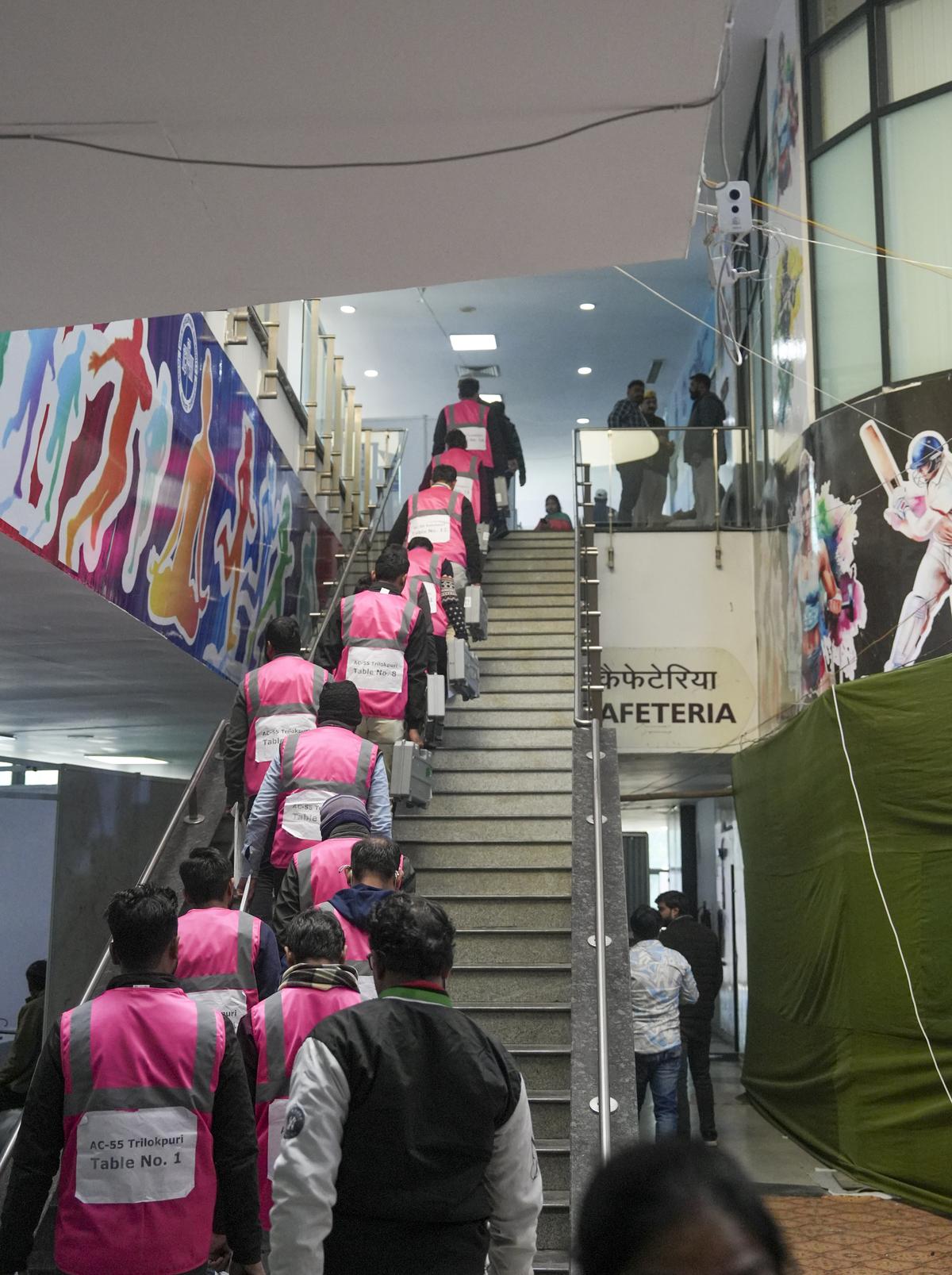
- 19 Mar 2025
In News:
The Election Commission of India (ECI) has initiated discussions with political parties to address growing concerns over the integrity of India’s electoral process. Allegations regarding the manipulation of electoral rolls, duplicate voter IDs, and issues with the conduct of elections have prompted the need for reforms to ensure transparency and fairness.
Legal Framework Governing Elections
The Constitution of India and several key legislative acts outline the processes and authority for conducting elections:
- Article 324 of the Constitution gives the Election Commission the authority to supervise electoral rolls and conduct elections.
- Representation of the People Act, 1950 and 1951 establish the legal framework for elections and the preparation of electoral rolls.
- Registration of Electors Rules, 1960 govern the procedures for the inclusion, correction, and deletion of names in the electoral rolls.
- Delimitation Act, 2002 ensures the redrawing of constituency boundaries based on the latest census data.
The evolution of voting methods in India has progressed from paper ballots to Electronic Voting Machines (EVMs) with Voter Verifiable Paper Audit Trail (VVPAT) since 2004, enhancing the credibility of the process.
Challenges in the Electoral Process
Several concerns have emerged over the years:
- EVM and VVPAT Concerns: Opposition parties have raised fears of EVM tampering, demanding a return to paper ballots. The Supreme Court has dismissed such demands, requiring a sample check of VVPAT-EVM matching in a limited number of machines per constituency.
- Electoral Roll Manipulation: Allegations of fake voters and duplicate voter IDs were raised, particularly in Maharashtra and Delhi. The EC has attributed these discrepancies to the earlier decentralized system of issuing voter IDs, which has now been streamlined through the ERONET platform.
- Campaign Issues: Star campaigners have often violated the Model Code of Conduct (MCC) by making inflammatory and divisive remarks. Moreover, political parties overspend on campaigns, exceeding legal limits, which undermines electoral integrity. The criminalization of politics is another critical issue, with 46% of elected MPs in 2024 facing criminal charges, including serious offenses.
Proposed Reforms
To address these challenges, several reforms are needed:
- Voting and Counting Reforms:
- VVPAT Verification: A scientific approach to VVPAT-EVM matching should be implemented. Full manual verification should be triggered if discrepancies are found in any region.
- Totaliser Machines: The EC’s proposal to use totaliser machines to aggregate votes from multiple EVMs before results are disclosed should be adopted to protect voter anonymity.
- Addressing Duplicate EPICs: Linking Aadhaar with EPIC IDs could help eliminate duplicate voter IDs, provided privacy concerns are addressed.
- Campaign and Electoral Reforms:
- Stronger Enforcement of the MCC: The EC should be empowered to revoke a party's “Star Campaigner” status for serious violations, depriving them of expenditure relief.
- Election Expenditure Regulation: The law should be amended to set limits on political party expenditure, which currently remains unrestricted.
- Criminalization of Politics: The Supreme Court’s directive for candidates to disclose their criminal records should be strictly enforced, requiring such declarations in widely circulated media.
Committee Recommendations
- Vohra Committee (1993): Recommended tracking criminal-politician links and addressing the role of black money in elections.
- Law Commission (2014): Suggested disqualifying politicians charged with serious offenses and increasing penalties for false affidavits.
- 2nd Administrative Reforms Commission: Advocated for state funding of elections to reduce the influence of illicit money.
Way Forward
To strengthen the electoral process, the Election Commission should be granted greater powers to verify criminal records and financial disclosures of candidates. Fast-track courts should be established to expedite cases involving elected officials facing serious charges. Transparency should be increased by mandating real-time disclosure of political funding and expenditures. Furthermore, voter awareness and civil society engagement should be promoted to enhance accountability in the electoral process.
Public Health Education in India

- 18 Mar 2025
In News:
India’s public health education sector stands at a critical juncture. Despite rapid academic expansion—with over 100 institutions now offering Master of Public Health (MPH) and related programs—the sector faces mounting challenges related to employment, quality, and funding. While international aid has declined, domestic investment remains limited, exacerbating systemic issues in workforce development.
Public Health: Constitutional and Strategic Significance
Article 47 of the Indian Constitution mandates the State to improve public health. A well-trained public health workforce is essential to achieve health equity, manage non-communicable diseases, address pandemics like COVID-19, and ensure effective delivery of health services at all levels.
Evolution and Growth of Public Health Education
Public health education in India has roots in colonial institutions, notably the All India Institute of Hygiene and Public Health, Kolkata (1932). Post-independence, community medicine was integrated into medical curricula. However, it was the launch of the National Rural Health Mission (2005) that marked a turning point, creating space for non-medical professionals in public health. Since then, MPH programs have proliferated—from just one institution in 2000 to over 100 today.
Government Initiatives
Key government efforts to strengthen public health education and training include:
- National Health Mission (NHM): Enhances public health systems and skill development.
- PM Swasthya Suraksha Yojana (PMSSY): Expands infrastructure and education through AIIMS-like institutions.
- Fellowship in Public Health Management (FPHM): Builds leadership capacities.
- National Programme for Prevention and Control of Non-Communicable Diseases (NP-NCD) and Integrated Disease Surveillance Programme (IDSP): Promote epidemiology and disease control training.
Persistent Challenges
- Employment Mismatch: A surge in MPH graduates has not been matched by job creation. Entry-level roles receive thousands of applications, and dedicated public health cadres in states remain underdeveloped.
- Lack of Regulation and Standardization: No central regulatory body ensures consistent curricula or quality standards. MPH programs are not under the purview of the NMC or UGC.
- Faculty Shortages and Weak Practical Training: Institutions often lack experienced faculty and real-world training integration, leaving graduates underprepared.
- Uneven Institutional Spread: States like Assam, Bihar, and Jharkhand have few or no public health colleges, deepening regional disparities.
- Funding Deficits: India's public health education receives minimal investment. For instance, the Data Protection Board was allocated just ?2 crore—reflecting systemic underfunding. International aid cuts, such as those from USAID, further strain the sector.
- Low Private Sector Absorption: Private hospitals prefer management professionals over MPH graduates. Development sector roles, heavily reliant on foreign grants, offer limited stability.
Way Forward
- Establish Public Health Cadres: States must create dedicated employment frameworks at all administrative levels.
- Regulate Education Quality: A Public Health Education Council under UGC/NMC should standardize curricula, faculty norms, and institutional benchmarks.
- Expand Institutional Capacity: Encourage public-private partnerships to open MPH colleges in underserved regions.
- Promote Experiential Learning: Mandate field training through internships in NHM, IDSP, and WHO-linked programs.
- Encourage Private Sector Hiring: Offer incentives for hiring MPH graduates in corporate and hospital settings.
- Increase Domestic Investment: Boost government funding for public health education and research, reducing reliance on foreign donors.
Conclusion
India’s public health education must transition from fragmented expansion to structured, quality-driven growth. Strengthening regulation, employment pathways, and training infrastructure is crucial for building a resilient health system and fulfilling the constitutional promise of health for all.
India–New Zealand Free Trade Agreement (FTA) Negotiations
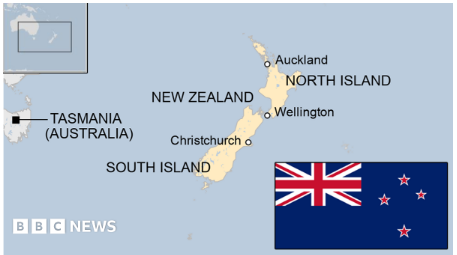
- 17 Mar 2025
In News:
India and New Zealand have officially resumed negotiations for a Comprehensive Economic Cooperation Agreement (CECA) after a prolonged hiatus since 2015. This strategic move aims to enhance bilateral trade, deepen economic interdependence, and strengthen regional cooperation in the Indo-Pacific.
Background and Significance
The FTA talks, first initiated in 2010, were stalled due to differences, particularly over India’s high tariffs on New Zealand’s dairy and agricultural exports. The revival of discussions during New Zealand Prime Minister Christopher Luxon's official visit to India in 2025 signals a renewed commitment towards building a balanced, ambitious, and mutually beneficial trade framework.
The bilateral trade relationship, though modest, has shown robust growth. In 2023–24, India exported goods worth $538 million to New Zealand and imported $335 million, generating a trade surplus of $203 million. By December 2024, exports rose by 21.49%, and imports surged by 78.72%, narrowing the trade surplus to $33 million.
Key Objectives of the India–New Zealand FTA
- Enhance supply chain integration.
- Improve market access for goods, services, and investments.
- Strengthen economic resilience and bilateral commercial ties.
- Facilitate trade through the Authorized Economic Operators Mutual Recognition Arrangement (AEO-MRA).
India’s major exports to New Zealand include pharmaceuticals, machinery, textiles, and precious stones, while imports largely consist of wool, aluminum, fruits, and steel products.
Strategic and Geopolitical Dimensions
Beyond economics, the agreement holds strategic significance:
- A defense cooperation MoU was signed to institutionalize military engagements and promote maritime collaboration.
- New Zealand expressed intent to join India’s Indo-Pacific Oceans Initiative (IPOI).
- Both nations pledged support for a free, open, inclusive Indo-Pacific, aligning with the UNCLOS-based rules-based international order.
- New Zealand reiterated support for India’s permanent membership in the reformed UNSC and entry into the Nuclear Suppliers Group (NSG).
Sectoral Cooperation and Emerging Areas
- Climate Change and Sustainability:
- New Zealand joined India-led initiatives like the International Solar Alliance (ISA) and Coalition for Disaster Resilient Infrastructure (CDRI).
- Both countries committed to joint action under the Paris Agreement and Sendai Framework.
- Education and Skill Development:
- A renewed Education Cooperation Arrangement was signed to boost academic partnerships, student mobility, and vocational training.
- Plans are underway to commemorate 100 years of sports relations in 2026, coupled with a new MoU on sports cooperation.
- Diaspora and People-to-People Ties:
- The Indian diaspora forms 6% of New Zealand’s population, playing a pivotal role in cultural and economic relations.
- India raised concerns regarding pro-Khalistan activities, and New Zealand assured cooperation in addressing such issues.
Opportunities and Complementarities
India’s Strategic Importance to New Zealand:
- Large market with a growing middle class and rising demand for dairy, meat, and high-value agricultural exports.
- Largest source of skilled migrants and second-largest source of international students.
- Booming digital economy offers collaboration potential in fintech, AI, and digital services.
New Zealand’s Relevance to India:
- Expertise in sustainable farming and dairy technology supports India’s agricultural reforms.
- Recognized climate tech sector aligns with India’s clean energy transition.
- Potential buyer of India’s defense equipment and surveillance systems, enhancing maritime security amid Indo-Pacific tensions.
Challenges in Bilateral Relations
- Stalled FTA negotiations due to tariff sensitivities, particularly in the dairy sector.
- Non-tariff barriers (NTBs) affecting Indian exports like fruits and vegetables.
- Low trade volumes and limited awareness of New Zealand’s economic strengths among Indian businesses.
- Divergences in geopolitical alignments, with New Zealand’s reliance on China creating potential strategic friction.
Way Forward
- Conclude FTA negotiations through dialogue and sectoral agreements in pharmaceuticals, technology, and horticulture.
- Consider an interim Early Harvest Agreement, akin to India–Australia ECTA, to fast-track gains.
- Enhance market access by reducing NTBs, fast-tracking Mutual Recognition Arrangements (MRAs), and organizing trade expos and B2B interactions.
- Leverage climate and renewable energy cooperation, strengthen defense collaboration, and institutionalize maritime security mechanisms.
Conclusion
The renewed India–New Zealand FTA negotiations mark a pivotal step in recalibrating bilateral economic and strategic relations. Anchored in democratic values and shared Indo-Pacific interests, the partnership is poised to evolve into a multi-dimensional engagement encompassing trade, technology, climate resilience, and defense cooperation. The agreement, if concluded, could serve as a model for equitable North–South economic partnerships in a multipolar world order.
Battling India’s Infodemic

- 16 Mar 2025
In News:
India, with over 95.04 crore internet users, faces a growing crisis of misinformation and disinformation. The spread of fake news has surged, particularly during the COVID-19 pandemic, where misinformation increased by 214%, making India responsible for one in six pieces of global fake news related to the pandemic. This infodemic is fueled by unregulated social media platforms, AI-driven disinformation, and weak legal frameworks. As digital platforms become the primary source of news, addressing the spread of fake news is critical for maintaining public trust and democratic integrity.
Factors Driving the Infodemic
1. Unregulated Social Media: Platforms like WhatsApp, Facebook, and YouTube are major conduits for misinformation. The viral nature of content on these platforms often leads to false information reaching millions before fact-checking can occur. For instance, during the COVID-19 crisis, false cures and misleading health information spread rapidly on WhatsApp, creating public panic.
2. AI and Deepfakes: AI-powered tools have enabled the creation of deepfake content, including videos, audio, and images that mimic real people. During the 2024 Lok Sabha elections, deepfakes reinforced political biases, influencing voter sentiment. Similarly, AI-generated propaganda has played a role in amplifying social divides, as seen in global elections.
3. Political Manipulation: Fake news has become a political weapon, particularly during election cycles. In India’s 2024 elections, AI-generated speeches and content contributed to voter polarization. The use of algorithmic echo chambers exacerbates this by curating content that reinforces biases, thereby fostering ideological divides.
4. Weak Legal and Fact-Checking Mechanisms: India lacks a comprehensive legal framework to counter fake news. Existing laws, such as the Information Technology Act, 2000 and the Bharatiya Nyaya Sanhita, address certain aspects of disinformation but fail to tackle the broader, evolving issue. The Election Commission of India (ECI) is under-resourced to handle the volume of misinformation during elections, further complicating efforts.
Challenges in Countering the Infodemic
1. Legal Gaps: Current laws are insufficient to address the modern challenges posed by fake news, particularly with the rise of AI-generated content. The Digital Personal Data Protection Act (DPDP), 2023, while a step forward, faces implementation challenges, and ad hoc measures like internet shutdowns only offer temporary solutions.
2. Sluggish Response by Tech Platforms: Social media giants like Meta, X, and YouTube have been criticized for their slow response in removing fake news. For instance, X’s "Community Notes" program has struggled to counter misinformation in real-time, allowing malicious actors to exploit the system before action is taken.
3. Lack of Awareness and Digital Literacy: Many users in India struggle to distinguish between credible and fake news, especially in rural areas where digital literacy is limited. This lack of awareness has led to tragic consequences, such as mob lynchings triggered by fake news spread on platforms like WhatsApp.
International Models and the Way Forward
1. Strong Legal Framework: Countries like Singapore and Germany have enacted robust laws to combat fake news. Singapore’s Protection from Online Falsehoods and Manipulation Act imposes severe penalties for spreading deliberate misinformation. Similarly, Germany’s NetzDG Law mandates that social media platforms remove fake news within 24 hours or face heavy fines. India could draw lessons from these models, ensuring any new law balances freedom of speech with the need to curb harmful misinformation.
2. AI Regulation and Transparency: India must enforce strict regulations on AI-generated content, including mandatory labeling of deepfakes and AI-driven media. The EU's AI Act and Finland's digital literacy initiatives provide useful frameworks for promoting transparency and user awareness.
3. Strengthening the Election Commission: The ECI needs enhanced resources and clear guidelines for countering misinformation, particularly during elections. Collaborating with fact-checkers and media outlets can improve response times and effectiveness.
4. Digital Literacy Campaigns: A nationwide initiative, similar to Finland’s digital literacy program, is essential to educate the public on identifying fake news. Empowering citizens with the tools to critically evaluate information will reduce the spread and impact of misinformation.
Conclusion
India’s battle against fake news requires urgent legal intervention, especially as deepfakes and AI-driven misinformation continue to evolve. A comprehensive framework—one that protects free speech while holding platforms accountable for the spread of disinformation—is essential to preserve the integrity of democratic processes. The introduction of strict regulations, coupled with initiatives to boost digital literacy, will help safeguard public trust and social harmony in the digital age.
India–Mauritius Enhanced Strategic Partnership
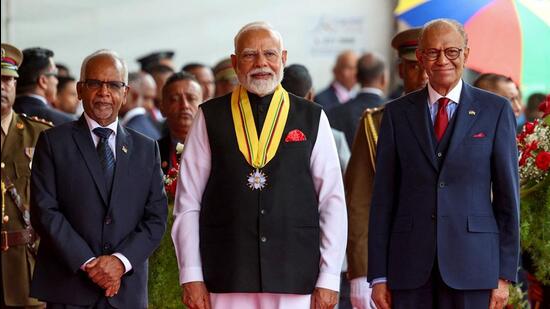
- 15 Mar 2025
In News:
India and Mauritius have elevated their bilateral relationship to an Enhanced Strategic Partnership, underscoring deep-rooted historical ties, shared cultural linkages, and growing strategic alignment in the Indian Ocean Region (IOR). This elevation came during Prime Minister Narendra Modi’s visit to Mauritius in March 2025, marking a new phase in India’s engagement with the Global South through the unveiling of the MAHASAGAR Vision—Mutual and Holistic Advancement for Security and Growth Across Regions.
Key Agreements and Strategic Cooperation
A total of eight bilateral agreements were signed, focusing on trade, defense, maritime security, financial crimes, and developmental cooperation. A landmark agreement was the signing of India’s first-ever rupee-denominated Line of Credit to Mauritius, worth ?487.6 crore, aimed at upgrading the island’s water supply system. This also complements a broader move toward trade settlement in local currencies, reducing dependence on foreign exchange and enhancing resilience in bilateral commerce.
In the realm of maritime security, the partnership now includes expanded white shipping information sharing, enhanced joint maritime surveillance, and greater utilization of strategic facilities on Agalega Island, developed with Indian assistance. India reaffirmed its commitment to safeguarding Mauritius’s Exclusive Economic Zone (EEZ) and supporting the establishment of a police academy and a national maritime information-sharing centre.
India also extended support to Mauritius’s claim over the Chagos Archipelago, opposing colonial remnants and reinforcing its consistent stance on sovereignty and decolonization in global forums.
MAHASAGAR Vision and Global South Outreach
The newly unveiled MAHASAGAR initiative builds upon India’s earlier SAGAR doctrine, broadening the framework to include developmental cooperation, technology transfer, capacity building, concessional finance, and joint security across the Global South. It strengthens India’s position as a net security provider and first responder in the IOR, evident from its assistance during Cyclone Chido and the Wakashio oil spill.
The visit also witnessed the inauguration of the Atal Bihari Vajpayee Institute of Public Service and Innovation, a health centre, and 20 community projects built with Indian grants. Further, India announced its support for constructing a new Parliament building in Mauritius, symbolizing democratic solidarity.
Cultural and Economic Pillars
Mauritius hosts a large Indian diaspora (around 70% of its population), maintaining strong cultural, religious, and linguistic ties with India. Historical bonds, such as Mahatma Gandhi’s 1901 visit, continue to influence people-to-people relations. Economically, Mauritius serves as a gateway to Africa, benefiting from India’s rising trade and investment footprint, particularly through the African Continental Free Trade Area (AfCFTA).
India is one of Mauritius’s top trading partners and a major source of Foreign Direct Investment (FDI), with Mauritius being the second-largest source of FDI into India in FY 2023–24.
Conclusion
The India–Mauritius partnership exemplifies a holistic model of South-South cooperation, driven by shared values, strategic convergence, and mutual development. In the evolving Indo-Pacific framework, it reinforces India's Act East and Extended Neighbourhood policies while bolstering regional stability and economic integration.
NBFC Stress and Systemic Risks in India’s Financial System

- 14 Mar 2025
In News:
The International Monetary Fund (IMF), in its report titled India Financial System Stability Assessment, has flagged significant vulnerabilities in India’s financial architecture, particularly arising from the Non-Banking Financial Companies (NBFCs) sector. Despite overall resilience post-pandemic, the increasing interconnectedness and exposure of NBFCs pose emerging systemic risks.
A major concern highlighted is the concentration of NBFC lending to the power sector. In FY 2024, 63% of power sector loans were provided by just three large Infrastructure Financing NBFCs—an increase from 55% in FY 2020. This overexposure, particularly by state-owned NBFCs such as IREDA, raises red flags given the inherent risks in infrastructure financing, including delays, cost overruns, and revenue shortfalls. The report notes that 56% of NBFC lending was financed by market instruments like corporate bonds and mutual funds, heightening the risk of contagion in case of financial distress.
NBFCs differ structurally from banks. They cannot accept demand deposits, lack deposit insurance coverage, and have no direct access to Reserve Bank of India (RBI) liquidity windows. Consequently, any shock in their repayment capacity can lead to asset-liability mismatches, potentially spilling over into banks, mutual funds, and bond markets, amplifying systemic risks.
The IMF also examined stress scenarios such as stagflation—a situation characterized by slow economic growth and high inflation. In such cases, public sector banks (PSBs) are particularly vulnerable. The Capital Adequacy Ratio (CAR) of PSBs could fall to the regulatory minimum of 9% under stress, threatening their ability to absorb losses. This is concerning, as the RBI mandates a minimum CAR of 12% for PSBs. The IMF recommends that PSBs retain earnings instead of paying dividends to strengthen their capital buffers and support credit flow during downturns.
While banks and NBFCs have shown broad resilience, ‘weak tails’ exist—non-systemic NBFCs and urban cooperative banks with below-minimum or even negative capital. This underscores the need for strengthened regulatory oversight, especially over state-owned NBFCs, which currently enjoy relaxed prudential norms. The IMF calls for uniform regulation across public and private NBFCs to ensure a level playing field and greater financial stability.
The report also emphasizes the need for improved data sharing and systemic risk monitoring, especially related to NBFC exposures, household credit, and climate-linked financial risks. Physical and transition risks remain moderate but are notable in monsoon-dependent agriculture and carbon-intensive industries like thermal power.
Recommendations include:
- Extending the cybersecurity risk framework to major NBFCs.
- Implementing IFRS-9 based credit risk assessments and countercyclical capital buffers.
- Improving insolvency and bankruptcy resolution mechanisms to reduce recovery time and enhance credit discipline.
India’s financial system is becoming more diverse and inclusive, with rising digital financial access and market participation. However, to sustain growth and resilience, proactive reforms in NBFC regulation, capital adequacy, and systemic risk management are essential.
Is Artificial Intelligence affecting Critical Thinking Skills?
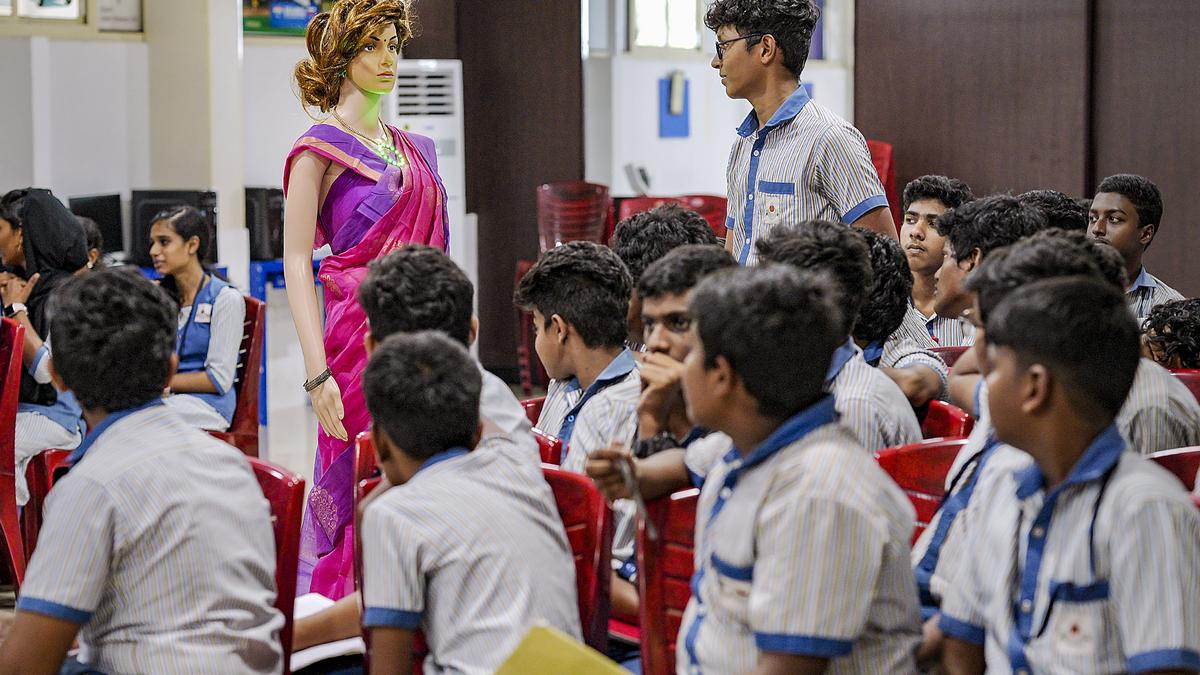
- 13 Mar 2025
Context:
The growing integration of Artificial Intelligence (AI) in educational spaces has sparked a global debate on its impact on students' critical thinking. With AI tools like ChatGPT and Copilot becoming ubiquitous, concerns have emerged about their potential to replace the intellectual rigor traditionally expected of learners.
AI in Classrooms: An Inevitable Shift
AI is no longer a futuristic concept but an entrenched part of everyday life, including education. In India, over 61% of educators reportedly use AI tools, and globally, a majority of students now rely on generative AI for academic work. This shift raises the fundamental question: Is AI eroding students’ ability to think independently?
Experts argue that banning AI from classrooms is neither feasible nor productive. AI’s integration into platforms like Microsoft Word and Adobe Reader means its use is often passive and unavoidable. Instead, the focus should be on responsible and ethical integration aligned with course objectives.
Impact on Critical Thinking
While some educators worry that AI might lead to intellectual passivity, others assert that it depends on the pedagogy. Courses aiming to cultivate analytical thinking—like humanities—should limit AI use, whereas technical subjects such as coding might benefit from it. The evolving skillset now values the ability to validate and critique AI-generated outputs over traditional rote learning.
Yet, over-dependence is a valid concern. Students may begin accepting AI responses without questioning their validity. To address this, a shift in educational design is necessary—moving from information recall to critical engagement with AI-generated content.
AI as Infrastructure in Education
AI is increasingly being seen as critical infrastructure in academic institutions. Reports like the World Economic Forum’s Future of Jobs Report (2025) emphasize the importance of analytical thinking, adaptability, and AI-related competencies. However, there is a need for robust digital literacy training to inform users about the risks—especially data privacy and algorithmic biases.
The adoption of AI in schools and universities must be accompanied by risk audits, including assessments of embedded biases, training data integrity, and transparency in design.
Need for Regulation and Institutional Policies
India currently lacks a comprehensive regulatory framework for AI in education. In the interim, individual institutions must step in to develop internal policies guiding ethical AI use. This includes declaring course-specific AI policies and fostering dialogues among students and faculty. Global universities offer useful templates, with general guidelines complemented by course-specific rules.
Conclusion: Regulate, Don't Resist
AI’s presence in education is irreversible. Rather than resisting its use, educational institutions must adapt by promoting informed, critical engagement with AI. While AI can assist in learning, it should not substitute the cognitive processes that education aims to cultivate. The future lies in developing a balanced model, where AI complements human intelligence rather than undermining it.
UN Women’s Report 2025
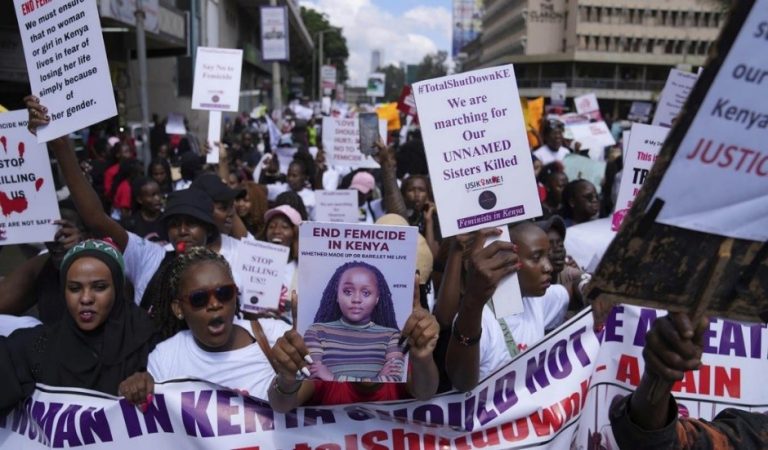
- 12 Mar 2025
Context:
Marking the 30th anniversary of the Beijing Declaration and Platform for Action (1995)—a landmark global framework for achieving gender equality—the UN Women’s Report 2025 presents a sobering assessment of the status of women’s rights worldwide. Released ahead of International Women’s Day 2025, the report reflects a disturbing pattern: while there has been measurable progress, recent years have witnessed an alarming backlash against gender equality in many parts of the world.
Key Findings
- Backsliding of Women’s Rights: Nearly one in four countries reported a backlash against women’s rights, often linked to democratic erosion and rise of authoritarian or conservative forces. The report warns of "anti-rights actors" systematically working to undermine legal and policy gains made over decades.
- Escalation in Gender-Based Violence
The world continues to grapple with high levels of violence against women:
-
- A woman or girl is killed every 10 minutes by an intimate partner or family member.
- Conflict-related sexual violence has risen 50% since 2022, with 95% of victims being women and girls.
These trends point to both persistent patriarchal norms and the failure of protective systems, especially in conflict and humanitarian settings.
- Legal and Political Disempowerment
Despite notable legislative progress:
- Women globally have only 64% of the legal rights enjoyed by men.
- Only 87 countries have ever had a female head of state.
- Women occupy just 26% of parliamentary seats, even though this figure has doubled since 1995.
These gaps reflect the structural barriers and gender biases embedded in political systems and governance.
- Economic and Health Inequities
- 10% of women and girls live in extreme poverty.
- Young women (ages 15–24) face limited access to family planning, impacting health and autonomy.
- Maternal mortality has remained stagnant since 2015, reflecting uneven healthcare access.
Positive Developments
Despite the challenges, there are signs of progress:
- 88% of countries now have laws against violence towards women.
- Most countries have banned workplace discrimination.
- 44% of countries are working to improve education and training for women.
- Female legislative representation has more than doubled since 1995.
UN Women’s Roadmap for Gender Equality (2030)
To address setbacks and accelerate progress, the report outlines a five-pronged strategy:
- Digital Inclusion – Ensure equitable access to digital technologies.
- Social Protection – Invest in universal healthcare, education, and safety nets.
- Zero Gender-Based Violence – Strengthen laws, services, and public awareness.
- Equal Decision-Making – Promote women's leadership in all sectors.
- Gender-Sensitive Crisis Response – Integrate gender priorities in humanitarian aid.
Conclusion
The UN Women’s Report 2025 underscores a critical paradox: legal and policy advancements coexist with deep-rooted inequalities and growing resistance to gender justice. As UN Secretary-General António Guterres aptly noted, “Instead of mainstreaming equal rights, we’re seeing the mainstreaming of misogyny.” Achieving SDG 5 (Gender Equality) by 2030 demands sustained political will, democratic resilience, and transformative reforms. For India and the global community, this is both a warning and an opportunity—to reaffirm their commitment to gender justice and inclusive development.
USAID Funding in India
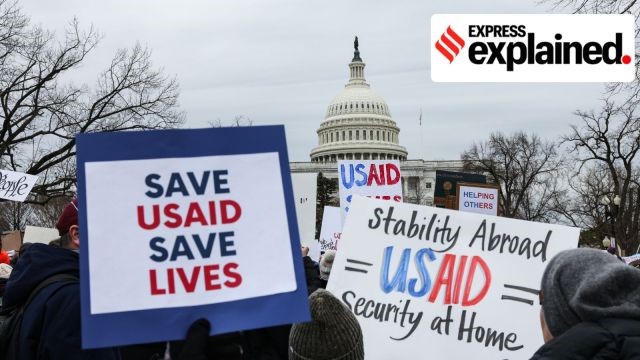
- 11 Mar 2025
In News:
The United States Agency for International Development (USAID) has been a major development partner for India, contributing over $2.8 billion in Official Development Assistance (ODA) since 2001. While initial assistance focused on food aid, recent decades saw a shift toward public health, environmental sustainability, digital infrastructure, and institutional capacity building.
Between 2022 and 2024, India received substantial aid from USAID — $228 million in 2022, $175 million in 2023, and $151 million in 2024 (as of December). A significant portion of this funding targeted health and population programs, including polio eradication, maternal and child health, tuberculosis (TB), HIV/AIDS, and Covid-19 response.
In 2022 alone, $120 million was allocated to Covid-19 control, alongside support for healthcare infrastructure and awareness campaigns.
USAID also supported India’s environmental goals, providing funds for air pollution control, clean water initiatives, and climate resilience, with $17.12 million allocated in 2024. Additionally, USAID backed India's technological advancement by exploring secure 5G Open Radio Access Network (O-RAN) systems, aligning with the U.S. Indo-Pacific strategy aimed at countering China’s influence.
However, the January 20, 2025 Executive Order by the U.S. administration directed a halt to foreign aid and restructuring of USAID. Although initially stayed by a U.S. Federal Court in February, the Supreme Court’s March 5 verdict upheld the aid cuts, jeopardizing thousands of ongoing development projects globally, including in India.
This decision critically affects India’s public health landscape. For instance, the ‘Breaking the Barriers’ TB awareness program in Karnataka, Bihar, Telangana, and Assam — funded with $7 million between 2022–23 — is being discontinued. The President’s Emergency Plan for AIDS Relief (PEPFAR), another major source of HIV/AIDS support, also faces disruption, risking higher infection and mortality rates. The cuts particularly threaten NGOs like Karnataka Health Promotion Trust (KHPT), which relied on USAID for operational continuity.
Beyond health, the withdrawal of USAID support may create a strategic vacuum in South Asia, enabling greater Chinese geopolitical and economic influence. Legal uncertainty around development aid has also raised concerns about the stability of global health and environmental partnerships.
Way Forward for India
- Diversify donor engagement: India must strengthen development ties with consistent partners like Japan ($2.97B in 2022), the EU ($383.5M), and Germany ($235M).
- Increase domestic investments in public health, sanitation, and clean energy to reduce dependence on external aid.
- Boost private sector and philanthropic partnerships to ensure continuity of key health and environmental programs.
- Strengthen indigenous R&D capacity, especially in digital infrastructure and vaccine development.
- Diplomatic dialogue with U.S. policymakers can explore possibilities for reinstating targeted support.
Conclusion
The scaling back of USAID poses significant challenges to India's public health, environmental sustainability, and strategic autonomy. However, it also presents an opportunity for India to reinforce its developmental sovereignty through diversified funding, innovation, and international cooperation.
Over-Centralisation and Federal Health Governance in India

- 10 Mar 2025
Introduction
India’s health governance follows a quasi-federal structure where health is constitutionally a State subject. However, increasing centralisation, particularly in medical education and national health schemes, is raising concerns over States’ autonomy and the effectiveness of federal health policies.
Judicial Push Towards Centralisation
The recent Supreme Court ruling in Dr. Tanvi Behl vs Shrey Goyal (2025) declared domicile-based reservations in post-graduate (PG) medical admissions unconstitutional, citing Article 14 and the principle of meritocracy. This decision, however, overlooks the critical link between State investments in medical education and their ability to retain specialists within local health systems. Domicile quotas served as a strategic tool to ensure a stable, locally adapted healthcare workforce, especially amid chronic specialist shortages.
Striking down such quotas may discourage States from investing in medical institutions if their graduates are siphoned off to other regions. Unlike central institutions like AIIMS or PGIMER, which enjoy selection autonomy, State medical colleges now face limited control over admissions, weakening their role as pillars of regional health systems.
Centralisation Through Policy and Institutions
Beyond judiciary-led centralisation, several national initiatives have expanded the Centre's role:
- National Health Mission (NHM): While implemented by States, funding and guidelines remain Centre-dominated.
- Ayushman Bharat (2018) and AB Digital Mission: These schemes shifted healthcare financing and data control towards the Centre, reducing the relevance of State-run insurance programs.
- National Medical Commission Act (2019): Replacing the MCI, this law enhanced the Centre's control over medical education regulation.
- Epidemic and Disaster Management Acts: Empower the Centre during health emergencies, as witnessed during COVID-19.
Consequences of Over-Centralisation
Excessive centralisation undermines India’s diverse health needs and local governance:
- Limited Responsiveness to Local Needs: Uniform policies ignore State-specific demographics. For instance, Kerala requires elderly care, while Bihar and UP demand maternal and child health focus.
- Reduced Decision-Making Power: States lose flexibility in tailoring central schemes, as seen with Ayushman Bharat PM-JAY.
- Bureaucratic Inefficiencies: Delays in fund disbursal under centrally sponsored schemes hinder timely execution.
- Weakening of Local Health Systems: Panchayats and municipal bodies—crucial to grassroots delivery—are often bypassed in favour of top-down mechanisms.
Meritocracy vs Social Equity
The rigid focus on merit in PG admissions disregards structural inequalities. As seen in recent NEET-PG cutoffs being lowered to zero percentile to fill seats, the current meritocratic model is flawed. Regional representation and public service outcomes should be considered in defining ‘merit’, aligning medical education with societal needs.
Way Forward
- Restore State Autonomy in Admissions: States should be empowered to design admissions aligned with local healthcare priorities.
- Fiscal and Functional Decentralisation: Grant flexibility in using central funds and reduce bureaucratic controls.
- Strengthen Cooperative Federalism: Institutionalise Centre-State coordination in health planning and policy-making.
- Invest in Local Systems: Enhance capacities of State health departments and grassroots governance bodies.
Conclusion
While central guidance is essential for national health objectives, excessive centralisation risks weakening India’s federal health architecture. A balanced approach rooted in cooperative federalism is vital to create an inclusive, efficient, and resilient healthcare system for all.
AI and the Justice System: A Tool for Reform in India

- 09 Mar 2025
In News:
Artificial Intelligence (AI) is reshaping governance globally, with nations like the United States and China making significant investments in AI-led legal and policing reforms. The U.S. government’s $100 billion Stargate AI Initiative and China’s development of cost-effective large language models (LLMs) like QWQ and DeepSeek highlight the competitive race for technological dominance. For India, grappling with over 50 million pending cases, AI offers a transformative opportunity to enhance efficiency, transparency, and trust in its criminal justice system.
AI in Law Enforcement and Crime Prevention
India’s SMART policing initiative—Strategic, Meticulous, Adaptable, Reliable, Transparent—can be significantly enhanced through AI integration. AI tools such as Automated FIR registration (e.g., Mumbai Police’s AI-assisted e-FIR system) reduce administrative burdens and accelerate complaint processing. Predictive policing, using crime mapping and data analysis like that piloted by Delhi Police, helps identify crime hotspots. AI-enabled facial recognition systems, like the Automated Facial Recognition System (AFRS) of NCRB, assist in criminal identification.
Cybersecurity also benefits from AI. Organizations like CERT-In deploy AI to counter phishing, ransomware, and deepfake threats. Banks and law enforcement utilize AI-based fraud detection systems, such as those powered by RBI’s CRILC, to flag suspicious transactions. AI tools are increasingly used to detect deepfakes and synthetic media, enhancing digital forensics.
Moreover, AI can assist in real-time crime analysis. Field-level policing data—such as offender patterns and patrol routes—can feed AI models to guide proactive interventions. Supervisory efficiency improves through AI-powered collation and analysis of data at the district level, allowing redeployment of personnel from administrative roles to core policing duties.
AI in the Judicial System
In courts, AI supports the e-Courts Project by digitizing case files, reducing delays in documentation and improving record management. Tools like SUPACE (Supreme Court Portal for Assistance in Court Efficiency) assist judges in legal research, precedent identification, and judgment writing. AI-driven real-time transcription systems, being piloted in the U.S., can improve transparency and reduce dependence on manual record-keeping.
AI also plays a role in bail and sentencing decisions. For instance, the Delhi High Court is exploring AI-based risk assessment tools to promote consistency. Additionally, AI tools can detect anomalies in legal documents, preventing delays due to forged or inaccurate filings.
Challenges and the Way Forward
The integration of AI into justice faces several challenges. AI models trained on biased data, as seen in the U.S. tool COMPAS, can perpetuate systemic inequities. Privacy concerns are also paramount and must align with India’s Digital Personal Data Protection Act, 2023. Implementation gaps include the lack of AI literacy among legal and police personnel and the absence of a comprehensive regulatory framework, as highlighted by the B.N. Srikrishna Committee.
To overcome these, India must establish a central AI Justice Task Force, expand AI usage in high courts, formulate ethical AI standards aligned with NITI Aayog’s AI strategy, and invest in AI training programs for judicial and law enforcement staff.
Conclusion
AI offers a critical path to revitalizing India’s overstretched justice system. If implemented responsibly, it can streamline policing, reduce judicial delays, and enhance public trust. A technology-first approach, combined with ethical safeguards, will be key to ensuring that justice in India becomes not only swift but also fair and inclusive.
India’s Textile Industry
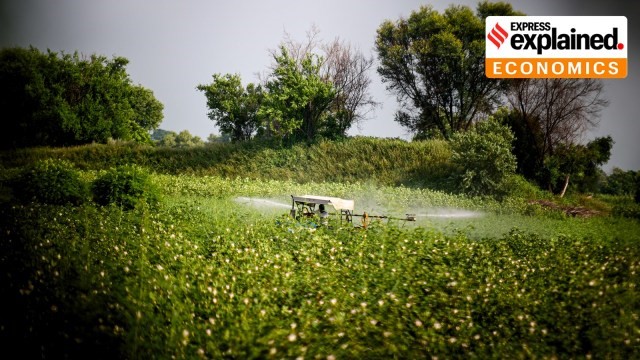
- 08 Mar 2025
Context:
India’s textile and apparel industry is one of the largest globally, contributing significantly to the economy through employment, exports, and industrial output. It accounts for 2.3% of India’s GDP (projected to rise to 5% by 2030), 13% of industrial production, and 12% of total exports. Employing over 4.5 crore people, it is second only to agriculture in job creation. Yet, despite its scale, India lags behind competitors like China, Vietnam, and Bangladesh in global exports.
Current Status and Strengths
India is the world’s second-largest producer of cotton and man-made fibres (MMFs) such as polyester and viscose. Cotton alone engages over 60 lakh farmers, mainly in Gujarat, Maharashtra, and Telangana. The country is also a global leader in jute and technical textiles. The textile and apparel market is projected to reach USD 350 billion by 2030.
FY24 exports stood at USD 35.9 billion, a marginal increase from USD 33.4 billion in FY20. Key destinations include the US, EU, and UAE. Yet, apparel exports have declined from USD 15.5 billion in FY20 to USD 14.5 billion in FY24. While cotton textile exports rose to USD 12.3 billion, growth has remained modest.
Challenges Holding Back the Sector
- Fragmented Supply Chains: India’s textile value chain is highly fragmented, concentrated in MSME clusters with regional specializations (e.g., Tiruppur for knitwear, Surat for polyester). This hampers integration and increases logistics costs. In contrast, competitors operate vertically integrated “fibre-to-fashion” hubs.
- High Raw Material Costs: Quality Control Orders (QCOs) on polyester and viscose restrict cheaper imports. As a result, domestic fibres are significantly costlier—polyester by 33–36% and viscose by 14–16% compared to China.
- Lack of FTAs: Unlike Vietnam and Bangladesh, India lacks preferential trade agreements with major markets like the EU and the US. This undermines price competitiveness and limits market access.
- Regulatory Burden: Complex customs and compliance procedures increase operational costs, particularly for small exporters. In contrast, simplified systems in competing nations reduce red tape.
- Sustainability Pressures: Global markets now demand higher environmental compliance—renewable energy use, water recycling, and traceability. EU regulations (2021–2024) affect 20% of India’s textile exports. MSMEs find it difficult to adapt without financial support.
- Low Per Capita Fibre Consumption: Despite being a major producer, India’s fibre consumption is just 5.5 kg per capita—half the global average.
Way Forward
- Supply Chain Integration: Develop MITRA textile parks and “fibre-to-fashion” hubs to reduce costs and improve efficiency.
- Raw Material Reforms: Reassess QCOs to allow controlled imports and reduce input prices.
- Trade Policy: Secure FTAs with key markets to enhance export competitiveness.
- Labour Productivity: Set up housing near textile clusters (as in China) to improve worker efficiency and reduce attrition.
- Boost MMF Usage: Promote domestic MMF consumption through targeted incentives.
- Green Transition: Provide financial and technical support to MSMEs to adopt sustainable practices and enter the recycled textile market, projected to reach USD 400 million in India.
With structural reforms and global alignment, India’s textile industry holds immense potential to emerge as a global leader while promoting sustainable, inclusive growth.
India-Qatar Relations
- 07 Mar 2025
In News:
India and Qatar have significantly deepened their bilateral relationship, particularly with the recent state visit of Qatar’s Amir, Sheikh Tamim Bin Hamad Al-Thani, to India. This visit marked a pivotal moment, as both countries elevated their ties to a "strategic partnership," exploring avenues for collaboration in energy, trade, and diplomacy.
Evolution of India-Qatar Relations
India's relationship with the Gulf region is multifaceted, encompassing economic, cultural, and people-to-people ties. Qatar holds a special place in India’s foreign policy due to its strategic position in the Middle East, its influence in the LNG market, and its robust ties with both Western powers and regional players such as Israel and Afghanistan. As one of the largest suppliers of LNG to India, Qatar’s energy significance is paramount.
India has consistently prioritized relations with the Gulf, with the Prime Minister placing special emphasis on strengthening ties. The recent visits by India’s External Affairs Minister to Qatar underscore the diplomatic importance of this relationship.
Key Outcomes of the Amir’s Visit
The visit of Sheikh Tamim Bin Hamad Al-Thani resulted in several key agreements and developments:
- Strategic Partnership:India and Qatar upgraded their relationship to a "strategic partnership," signaling enhanced cooperation across various domains such as energy security, trade, and investment. This move aligns Qatar with India’s other strategic Gulf partners like the UAE, Saudi Arabia, and Oman, reinforcing regional cooperation under the Gulf Cooperation Council (GCC).
- Economic and Trade Cooperation:The two countries committed to doubling bilateral trade from $14 billion to $28 billion over the next five years. Qatar also pledged $10 billion in new investments in India, particularly in the infrastructure, energy, and technology sectors. Several agreements on economic cooperation, youth affairs, and double taxation avoidance were also signed, aimed at facilitating business activities.
- Energy Cooperation:A landmark agreement between QatarEnergy and India’s Petronet LNG extended their LNG supply deal for 20 years, marking the largest-ever LNG agreement. This deal secures India’s long-term energy needs and diversifies its energy sources, ensuring stable pricing for LNG imports.
- Free Trade Agreement (FTA) Possibilities:Discussions were held on a potential India-Qatar Free Trade Agreement (FTA) to boost trade relations. While Qatar has existing FTAs with countries like China, a similar agreement with India could further enhance trade and investment flows. However, India must ensure safeguards to prevent the dumping of third-party goods through Qatar.
- Resolution of Diplomatic Setback:Bilateral relations were strained in 2022 following the arrest of eight Indian Navy personnel in Qatar on espionage charges. The Amir’s decision to pardon these individuals removed a significant diplomatic roadblock, improving goodwill between the two countries.
Challenges and the Way Forward
Despite the positive developments, challenges persist:
- Economic and Trade Barriers:Non-tariff barriers and bureaucratic hurdles remain significant obstacles to smoother business transactions. Moreover, Qatar’s investments in India are still limited compared to other Gulf nations, despite its substantial sovereign wealth fund. India must encourage greater Qatari participation in sectors like infrastructure, startups, and energy exploration.
- Political and Security Risks:The volatile security situation in the Middle East, particularly tensions between Iran and Israel, poses risks to India’s energy supply chains. Any diplomatic tensions between Qatar and its Gulf neighbors could indirectly affect India’s trade interests.
- Labor and Migration Issues:India must continue to advocate for better working conditions and legal protections for Indian workers in Qatar. Ensuring the welfare of Indian expatriates, including seamless remittance flows and social security benefits, is essential for strengthening bilateral ties.
Conclusion
The elevation of India-Qatar relations to a strategic partnership marks a new chapter in their ties, positioning Qatar as a critical partner in India’s energy security and trade. As India’s influence in the Middle East and global energy markets grows, its relationship with Qatar will play an increasingly important role in shaping the region’s geopolitical landscape. The continued focus on economic cooperation, energy security, and labor welfare will be vital to sustaining and expanding this crucial partnership.
Centring Care in India’s Economic Policy
- 06 Mar 2025
In News:
The Union Budget 2025 has seen a significant increase in the allocation for gender-responsive fiscal policies, with a record ?4,49,028.68 crore allocated to the Gender Budget (GB). This represents a 37.3% increase from the previous year, marking 8.86% of the total Budget. However, this increase is largely attributed to the inclusion of PM Garib Kalyan Anna Yojana, which constitutes 24% of the GB, rather than substantial investments in care infrastructure or gender-responsive schemes. This highlights the persistent underestimation of unpaid care and domestic work (UCDW) in India’s economic planning.
The Care Work Crisis: An Overlooked Economic Reality
Globally, women bear the brunt of unpaid care work (UCDW), spending an average of 17.8% of their time on such tasks. In India, this burden is particularly severe. Indian women spend 40% more time on UCDW compared to women in South Africa and China. As per the International LabourOrganisation (ILO), 53% of Indian women remain outside the labour force due to caregiving responsibilities, while only 1.1% of men face similar barriers. This deep-rooted gender inequality reinforces women’s economic disempowerment.
For marginalized women in low-income households, the burden is exacerbated. Many women juggle 17–19 hours of daily labour, balancing paid work with domestic duties, resulting in severe time poverty and poor health. Feminist economists from the Global South emphasize that in India, unpaid work extends beyond household care to include tasks such as family farming, water collection, and fuel gathering. Women often spend up to 73% of their time on these tasks due to limited infrastructure in basic services such as water, sanitation, and clean energy.
Missed Opportunities in the 2025 Budget
Despite the record increase in the Gender Budget, the 2025 Union Budgetmisses critical opportunities to address the care work crisis. The Economic Survey 2023-24 recognized care infrastructure as pivotal for women’s empowerment, yet the budget failed to translate this into significant fiscal commitments. The Jal Jeevan Mission (JJM), which aims to provide 100% potable water coverage by 2028, is a positive step but suffers from funding delays and implementation gaps. While the JJM budget increased by 195% over Revised Estimates, it saw a decline of 4.51% from last year’s Budget Estimates, underscoring allocation and spending mismatches.
Policy Recommendations: The Three R Framework
To address these systemic issues, the Economic Survey 2023-24 suggests that public investment of 2% of GDP in care infrastructure could generate 11 million jobs and reduce the care burden on women. The Three R framework — Recognise, Reduce, Redistribute, and Represent — provides a holistic approach to creating a more inclusive economy:
- Recognise: The first step is acknowledging the full extent of UCDW. India’s 2019 Time Use Survey revealed that women spend an average of seven hours daily on unpaid care tasks. Regular surveys, integrated into existing household surveys, can inform more effective policy-making.
- Reduce: The second step involves reducing the care burden by investing in time-saving technologies and affordable care infrastructure. Expanding childcare centres, eldercare support, and assistive technologies can facilitate women’s workforce participation. The Urban Challenge Fund announced in the 2025 Budget, with ?10,000 crore allocated for FY 2025-26, can finance urban redevelopment projects that integrate care infrastructure, inspired by successful models like Bogotá’s Care Blocks.
- Redistribute: Care responsibilities must be shifted from the household to the State and society. The Smart Cities Mission and the Urban Challenge Fund present opportunities to scale up care infrastructure in urban areas. This redistribution of care work can significantly ease the burden on women and encourage more equitable labor force participation.
- Represent: Women’s representation in decision-making is crucial for creating gender-transformative policies. Policies designed with women’s input are shown to be six to seven times more effective in achieving gender-equitable outcomes. Therefore, promoting female leadership in governance is essential for the success of gender-responsive policies.
Conclusion:
The Union Budget 2025 has made strides in gender-responsive fiscal policies but falls short in addressing the care economy. India has a significant opportunity to set a global example by recognizing unpaid care work, investing in care infrastructure, and redistributing caregiving responsibilities. A gender-sensitive economy, with women’s participation in decision-making, will not only uplift women but also ensure more inclusive growth for the country. The current budget highlights the need for a more deliberate, well-funded strategy to treat care work as a central pillar of India’s economic development.
India Philanthropy Report 2025
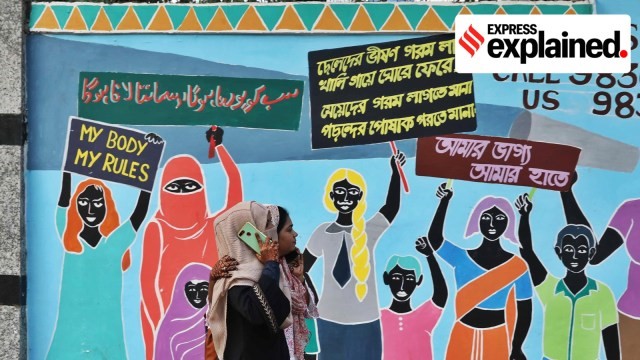
- 05 Mar 2025
In News:
The India Philanthropy Report 2025, a joint publication by Bain & Company and Dasra, presents an insightful overview of the evolving landscape of philanthropic giving in India. With private philanthropic funding projected to grow annually by 10–12% over the next five years, the report underlines the increasing role of family philanthropy and corporate social responsibility (CSR) in complementing public sector expenditure on social development.
Growth of Social Sector Funding
India's total social sector funding reached approximately ?25 lakh crore ($300 billion) in FY24, accounting for 8.3% of the GDP. Public funding continues to dominate, constituting 95% of the total with allocations towards flagship welfare schemes like MGNREGS and the Pradhan Mantri Awas Yojana. Private philanthropy, however, is steadily gaining ground, contributing ?1.3 lakh crore ($16 billion) in FY24, and is expected to grow significantly by FY29.
Despite this growth, a considerable funding gap persists—estimated at ?14 lakh crore in FY24 and projected to widen to ?16 lakh crore by FY29. Bridging this deficit is critical for meeting India's Sustainable Development Goals (SDGs) and the vision of Viksit Bharat@2047.
Rise of Family Philanthropy
Family philanthropy has emerged as a key driver of private social funding, accounting for around 40% of total private contributions. It spans diverse sectors including education, healthcare, gender equity, diversity and inclusion (GEDI), climate action, and social justice. Notably, 55% of family philanthropic initiatives are women-led, and around one-third involve next-generation leadership, indicating a shift towards more inclusive and innovative giving.
Structured philanthropy is becoming more prominent, with nearly 65% of family-run initiatives now managed by professional teams. The report projects that by building robust advisory infrastructure and tapping into family offices, India can unlock an additional ?50,000–55,000 crore ($6–$7 billion) in family philanthropy over the next five years.
Corporate Social Responsibility: Compliance and Concentration
Corporate Social Responsibility (CSR) spending, mandated under the Companies Act, is another critical pillar. CSR expenditure is growing at a projected 10–12% per annum, driven by increased compliance and strategic integration into corporate goals. The number of CSR-compliant firms rose from 12,000 in FY22 to around 15,000 in FY23.
Family-owned businesses contribute nearly 65%–70% of total private CSR spending, with major conglomerates like Tata, Adani, Birla, and Ambani alone accounting for ?800–1,000 crore each annually. However, the sector remains top-heavy: just 2% of family-owned firms are responsible for over half of all CSR contributions.
HNIs, UHNIs, and the Philanthropic Disparity
Despite the promising trends, Indian High-Net-Worth Individuals (HNIs) and Ultra-High-Net-Worth Individuals (UHNIs) still contribute a relatively small fraction of their wealth towards philanthropy. Indian UHNIs donate only 0.1%–0.15% of their wealth, compared to 1.2%–2.5% in the US, 0.5%–1.8% in the UK, and 0.5%–1.4% in China.
In FY24, average annual philanthropic contributions from UHNIs (net worth ?1,000 crore and above) hovered around ?5 crore, while HNIs (?200–1,000 crore) contributed ?0.4–?5 crore. This indicates a large untapped potential that can significantly bolster India's development financing.
Institutionalization and Diaspora Potential
The number of family offices—dedicated institutions managing family wealth and philanthropy—has increased from 45 in 2018 to 300 in 2024, with projections to cross 500 by 2029. Institutions like Dasra, Sattva, and Bridgespan have been instrumental in supporting structured and high-impact philanthropy.
India’s diaspora, growing from 18 million in 2019 to 35 million in 2024, also presents a significant but underutilized opportunity. While diaspora philanthropy is estimated at $130 billion currently, better awareness, simplified compliance norms, and digital platforms could enhance its impact and push the potential closer to $200 billion.
Challenges and the Way Forward
Despite the optimistic outlook, several challenges hinder the full realization of philanthropic potential in India:
- Persistent funding gaps in critical sectors like healthcare, education, and climate change.
- Regulatory and compliance barriers, especially affecting foreign and diaspora contributions.
- Fragmented infrastructure, with limited advisory services and high transaction costs.
- Short-term funding models, with only 23% of family philanthropies combining grants with direct program implementation, undermining sustainable impact.
To address these, the report suggests:
- Promoting long-term funding mechanisms, including multi-year grants.
- Professionalizing philanthropy through structured advisory services and capacity building.
- Unlocking diaspora contributions via simplified regulations and dedicated philanthropic platforms.
- Enhancing collaboration across stakeholders to amplify social impact and innovation.
Conclusion
The India Philanthropy Report 2025 underscores the transformative potential of private giving, particularly through family philanthropy and CSR. While public funding remains the bedrock of India’s social development agenda, strengthening the philanthropic ecosystem—by leveraging wealth, institutions, and global networks—is vital to achieving equitable growth and meeting national development goals.
India’s Roadmap to High-Income Status by 2047
- 04 Mar 2025
In News:
India, currently classified as a lower-middle-income economy with a Gross National Income (GNI) per capita of USD 2,540 (2023), aspires to achieve high-income status by 2047, coinciding with the centenary of its independence. A recent World Bank report titled “Becoming a High-Income Economy in a Generation” outlines the necessary reforms, challenges, and growth scenarios India must navigate to meet this ambitious target.
Growth Imperatives and Economic Targets
To transition into a high-income economy, India must sustain an average real GDP growth rate of 7.8% annually until 2047, raising its GNI per capita nearly eightfold. Historically, India grew at 6.3% (2000–2024) and has become the world’s fifth-largest economy, doubling its global share to 3.4%. However, "business-as-usual" growth (6.6%) will fall short, and only accelerated reforms can enable a successful transition—something achieved by few countries like Chile and Poland.
Key Policy Areas for Reform
- Boosting Investment and Capital Formation:
- Increase total investment from 33.5% to 40% of GDP by 2035 through public-private synergy.
- Address infrastructure deficits, streamline land acquisition, and liberalize FDI norms.
- Improve financial markets to support long-term infrastructure and SME financing.
- Enhancing Labor Force Participation:
- Raise overall labor force participation from 56.4% to 65%.
- Increase female workforce participation from 35.6% to 50% by addressing socio-economic barriers and improving childcare and safety infrastructure.
- Target job-rich sectors like manufacturing, logistics, hospitality, and care economy to generate employment.
- Structural Transformation and Trade Integration:
- Shift labor from agriculture (currently employing 45% of workforce) towards manufacturing and services.
- Boost India's Global Value Chain (GVC) participation by reducing high tariffs and non-tariff barriers, particularly on intermediate and capital goods.
- Simplify customs, improve regulatory clarity, and promote technological adoption across sectors.
- Promoting Balanced Regional Growth:
- Support low-income states in developing healthcare, education, and infrastructure.
- Deepen industrial reforms and trade competitiveness in developed states through federal programs like the Urban Challenge Fund.
- Strengthening Human Capital and Innovation:
- Expand vocational training and R&D investments in emerging areas such as AI, biotechnology, and clean energy.
- Encourage entrepreneurship and formalization to reduce the high informal employment rate (73%).
Challenges on the Path
India faces slowing investment rates (down from 35.8% in 2008 to 27.5% in 2024), low FDI inflows (just 1.6% of GDP), and declining trade openness (exports and imports fell from 56% of GDP in 2012 to 46% in 2023). Regulatory unpredictability and complex business processes hinder private investment.
Conclusion
India’s vision to become a high-income economy by 2047 is ambitious yet attainable, contingent on sustained growth, robust reforms, and inclusive development. Strategic policy execution in trade, labor, investment, and federal cooperation will be critical to transforming India's economic trajectory and positioning it as a global leader by its centenary year.
Growth and Challenges of India’s Private Space Sector
- 03 Mar 2025
Introduction
India’s space sector has experienced remarkable growth, especially with the advent of the Space Sector Reforms of 2020. These reforms have opened the door for greater private sector participation, spurring innovation, investment, and commercial growth. The Indian Space Research Organisation (ISRO) remains at the forefront of technological advancements, while a burgeoning ecosystem of space tech startups is positioning India as a key player in the global space economy.
Private Participation in India’s Space Industry
- Emerging Startups: Over 200 space startups have emerged, leveraging ISRO’s infrastructure such as testing, launch, and ground station facilities.
- Regulatory and Financial Support: The Indian National Space Promotion and Authorization Center (IN-SPACe) was created to facilitate private participation in space activities. It also launched a ?1,000 crore Venture Capital Fund to accelerate innovation within the sector.
- Commercial Arm of ISRO: Antrix Corporation, ISRO’s commercial arm, plays a crucial role in facilitating satellite launches and technology transfers, thus enhancing private capabilities.
- Growth in Payloads: The PSLV Orbital Experimental Module (POEM) program has increased startup payloads significantly, from 6 in 2022 to 24 in 2024.
Private Investment and Startup Innovations
- Venture Capital Investment: Private funding, particularly from MountTech Growth Fund – Kavachh (MGF-Kavachh), has been instrumental in driving growth. Over ?2,500 crore have been invested in space startups over the past three years.
- Startup Innovations:
- GalaxEye integrated Synthetic Aperture Radar (SAR) with optical imagery, a world-first achievement in rapid data compression.
- Pixxel is developing Firefly, the world’s most advanced hyperspectral satellite constellation.
- InspeCity (IIT Bombay) is working on innovative in-orbit satellite repair and refueling technologies.
- Skyroot and Agnikul are pioneering cost-effective private launch vehicles for satellite deployment.
Space Sector Reforms of 2020
The Space Sector Reforms of 2020 have been transformative in enabling greater private sector involvement across the entire spectrum of space activities, from satellite design to launch vehicle manufacturing:
- Expansion of Private Roles: The reforms allow private companies to engage in activities such as satellite design, launch vehicle manufacturing, and ground station services.
- Establishment of IN-SPACe: IN-SPACe was created as a regulatory body to facilitate the engagement of private entities in space activities, empowering them to operate independently from ISRO.
- Technology Transfer: The reforms have encouraged ISRO to transfer technology to private players through NewSpace India Limited (NSIL), enabling commercialization of indigenous space technologies.
Challenges Facing India’s Space Industry
- Funding Gaps: While venture capital interest is rising, early-stage funding remains limited, making it difficult for startups to scale effectively.
- Talent Shortage: There is a shortage of specialized educational institutions focused on space technology. Currently, India only has one Indian Institute of Space Technology (IIST), underscoring the need for more educational institutions and industry-academia collaborations.
- Global Competition: India faces stiff competition from countries like the US, China, and Russia, which have advanced space programs and capabilities such as reusable spacecraft and space tourism.
- Dependence on Foreign Launch Vehicles: Despite progress in domestic launch capabilities, many startups still depend on foreign rockets like SpaceX’s Falcon-9 due to cost and scheduling constraints.
Strategic Way Forward
- Boosting R&D and Infrastructure:
- Expand the domestic manufacturing of satellite components through the Production Linked Incentive scheme for space-grade components.
- Establish more space-focused educational institutions and create a dedicated space industrial corridor to boost satellite and launch vehicle manufacturing.
- Global Collaboration:
- Strengthen bilateral agreements with leading space agencies (NASA, ESA, Roscosmos) to foster collaboration in research and development.
- Promote rideshare missions to reduce satellite launch costs, benefiting startups.
- Technology Transfer and Commercialization:
- Enhance ISRO’s technology transfer initiatives to allow startups to commercialize homegrown innovations, driving economic growth in space-related industries.
Conclusion
India’s private space sector is undergoing a transformative shift, with increasing private sector participation, supportive reforms, and growing venture capital investment. While challenges such as funding gaps, talent shortages, and global competition remain, strategic measures to enhance R&D, infrastructure, and global collaborations can position India as a leading player in the global space economy. This growth aligns with India’s broader goals of technological advancement and economic development, while also contributing to global space exploration and sustainability.
Farmers’ Share in Consumer Prices for Rabi Crops

- 02 Mar 2025
In News:
The Reserve Bank of India (RBI) conducted a comprehensive pan-India survey during May–July 2024 to assess the farmers’ share in consumer prices for 12 major rabi crops. The survey spanned mandis and villages across 86 centres in 18 states, and included detailed inputs from farmers, traders, and retailers, with over 10,699 respondents.
Key Findings:
- Farmers’ Share in Consumer Prices:
- Ranged between 40% and 67% across rabi crops.
- Wheat farmers received the highest share (67%), attributed to its status as a notified commodity under the public procurement system; about 25% of wheat farmers sold at Minimum Support Price (MSP).
- Rice farmers received 52%, a figure consistent over previous surveys (49% in 2018, 45% in 2022), indicating stability.
- In pulses, lentil (masoor) farmers earned 66%, and gram (chana) farmers earned 60% of the retail price.
- In oilseeds, mustard farmers received 52%, slightly lower than the 55% found in a 2021 study.
- Perishables vs Non-Perishables:
- Fruits and vegetables showed lower farmer share (40–63%), due to their perishability, seasonal production, and logistical challenges.
- The combined markup of traders and retailers exceeded 50% in most perishable crops (except tomatoes).
- Perishables face higher post-harvest losses, quality variation, and price volatility due to climate dependency and demand-supply fluctuations.
Supply Chain and Payments:
- The agriculture supply chain remains unorganized, especially for fruits and vegetables, with multiple intermediaries reducing transparency in pricing, logistics, and fund flows.
- Retailer markups were typically higher than those of traders. An empirical analysis showed that:
- Higher transaction costs (e.g., transport, labour) reduce retailer markups.
- High post-harvest losses in perishables allow markups to be passed on to consumers.
Digital Transactions:Though cash transactions still dominate, the adoption of electronic payments saw a significant rise in 2024 across all stakeholders compared to previous surveys in 2018 and 2022.
Policy Implications:
- A higher farmers’ share is essential to:
- Enhance farm incomes
- Incentivise crop diversification, particularly from cereals to pulses and oilseeds
- Improve transparency in the agri-supply chain
- Strengthening public procurement, digital infrastructure, and organised logistics are vital for ensuring fair price realisation by farmers.
India-EU Strategic Partnership
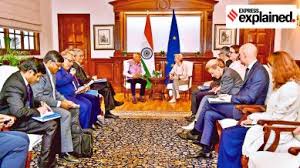
- 01 Mar 2025
In News:
The recent visit of European Commission President Ursula von der Leyen to India, marked a significant recalibration in India-EU relations. Amid global geopolitical flux—characterized by U.S.-Europe divergences, China’s assertiveness, and disrupted supply chains—India and the EU are deepening cooperation in trade, technology, climate, and security. This partnership is crucial for regional stability and shaping a multipolar, rules-based global order.
Strategic and Economic Dimensions
- Trade and Investment:The EU is India’s largest trading partner, accounting for 12.2% of India’s total trade in 2023. Bilateral goods trade reached $135 billion (FY 2023–24), and services trade stood at $53 billion. The EU is the second-largest source of FDI into India ($117.4 billion since 2000), while Indian FDI to the EU was $40 billion. Free Trade Agreement (FTA) talks, revived in 2021, aim to resolve tariff and regulatory barriers in sectors like automobiles, dairy, pharma, and IT services.
- Technology and Digital Cooperation:The India-EU Trade and Technology Council (TTC), launched in 2022, promotes collaboration in semiconductors, AI, clean energy, and resilient supply chains. Key developments include MoUs on semiconductor R&D and high-performance computing. Challenges remain, particularly around EU data adequacy under GDPR, which affects Indian digital exporters.
- Green Transition and Energy Security:The EU-India Clean Energy and Climate Partnership focuses on renewable energy, smart grids, and sustainable cities. A €1 billion European Investment Bank fund supports green hydrogen projects. India’s participation in European Hydrogen Week 2024 signals growing collaboration in clean energy. Initiatives like SWITCH-Asia promote sustainable consumption and circular economy practices.
- Maritime and Defense Cooperation:Under the ESIWA framework, India and the EU are expanding maritime security ties. The EU has stationed a liaison officer at India’s Information Fusion Centre (Gurugram), and the first joint naval exercise in the Gulf of Guinea (2023) emphasized Indo-Pacific cooperation. However, defense ties remain limited due to India's stronger military relationships with Russia and the U.S.
Institutional and Societal Ties
India-EU relations date back to 1962 and were elevated to a Strategic Partnership in 2004. The Roadmap to 2025, adopted in 2020, prioritizes digital transformation, climate action, and multilateralism. The TTC’s recent meetings reaffirm commitment to tech and trade collaboration.
People-to-people ties are strengthening. Indians received over 20% of EU Blue Cards (2023–24). Over 6,000 Indian students have benefitted from Erasmus scholarships, and 2,700 researchers from Marie Sk?odowska-Curie Actions.
Key Challenges
- Stalled FTA Talks over tariffs and market access.
- Regulatory barriers under SPS and TBT norms.
- Data governance divergence due to lack of EU data adequacy for India.
- Foreign policy misalignments, especially over Russia-Ukraine.
- Fragmented defense engagement due to EU’s limited commitment.
Way Forward
India and the EU must resolve FTA hurdles, negotiate a data-sharing framework, align Indo-Pacific strategies, and invest in alternative supply chains via IMEC. Enhanced cooperation in green tech, cybersecurity, and digital infrastructure is key. India must also reform its regulatory landscape to attract EU tech and manufacturing investments.
Conclusion
India-EU ties are entering a transformative phase. Anchored in shared democratic values and strategic interests, the partnership can promote multipolarity, sustainable development, and a resilient global governance architecture.
Environmental Impacts of Artificial Intelligence

- 28 Feb 2025
Introduction
Artificial Intelligence (AI), encompassing technologies that simulate human thinking and decision-making, has become integral to contemporary life, influencing how we work, live, and conduct business. While AI’s foundational concepts date back to the 1950s, recent advances in computing power and data availability have fueled rapid growth. The global AI market, currently valued at $200 billion, is projected to contribute up to $15.7 trillion to the world economy by 2030. Major developments, such as the U.S.’s $500 billion Stargate Project and India's plans to build the world’s largest data centre in Jamnagar with Nvidia, highlight AI’s economic potential. However, this transformative technology also poses significant environmental challenges across its value chain.
Environmental Impact Across the AI Value Chain
The environmental footprint of AI emerges at multiple stages — from hardware production and model development to deployment and maintenance:
- Energy Consumption and Carbon Emissions:Data centres, the backbone of AI infrastructure, consume vast amounts of electricity, accounting for approximately 1% of global greenhouse gas emissions, a figure expected to double by 2026 (IEA). Advanced models like GPT-3 emit up to 552 tonnes of carbon dioxide equivalent during training, comparable to the annual emissions of dozens of cars. A single ChatGPT request consumes roughly ten times the energy of a standard Google search.
- E-Waste Generation and Resource Depletion:The rapid expansion of AI data centres exacerbates the e-waste crisis, with obsolete hardware often discarded irresponsibly. Manufacturing essential components like microchips demands rare earth minerals, mined through environmentally destructive processes.
- Water Usage:Data centres require millions of litres of water for cooling operations. Alarmingly, AI-related data centres are projected to consume six times more water than Denmark’s total usage, straining water resources, especially in regions already facing scarcity.
Global Awareness and Regulatory Efforts
Recognising the growing environmental burden, international organisations and governments have initiated efforts toward greener AI practices:
- At COP29, the International Telecommunication Union (ITU) underscored the urgent need for sustainable AI development.
- Regions like the European Union and the United States have introduced laws to mitigate AI’s environmental impact.
- However, despite over 190 countries adopting non-binding ethical AI guidelines, sustainability concerns remain largely absent from most national AI strategies.
Way Forward
To harmonise AI innovation with environmental responsibility, a multi-pronged approach is necessary:
- Clean Energy Adoption:Shifting to renewable energy sources for powering data centres and purchasing carbon credits are critical steps. Locating centres in regions rich in renewables can further lower carbon footprints.
- Efficiency in Hardware and Algorithms:Developing energy-efficient hardware and maintaining it regularly can substantially reduce emissions. Smaller, domain-specific models should be promoted to lessen computational demands.
- Optimisation of AI Systems:Studies by Google and the University of California, Berkeley, suggest that through optimised algorithms, specialised hardware, and efficient cloud data centres, the carbon footprint of large language models (LLMs) can be reduced by a factor of 100 to 1,000.
- Reusing Pre-trained Models:Businesses should prioritise fine-tuning existing models for new tasks over training fresh models from scratch, significantly saving energy.
- Measurement, Disclosure, and Accountability:Establishing global standards for tracking, measuring, and publicly disclosing the environmental impacts of AI systems is essential for fostering transparency and industry-wide accountability.
- Leveraging AI for Sustainability:AI itself can aid sustainability efforts, such as through projects like Google's DeepMind, which improves wind power forecasting, enabling better integration of renewable energy sources into national grids.
Conclusion
While AI holds immense promise for economic growth and societal advancement, it simultaneously presents critical environmental challenges. Integrating sustainability into the very design of the AI ecosystem is imperative. By embedding environmental responsibility at every stage—from model development to deployment—governments, businesses, and researchers can ensure that AI’s transformative potential is realised without compromising the planet’s future.
Reducing India's Dependence on Imported Fertilisers
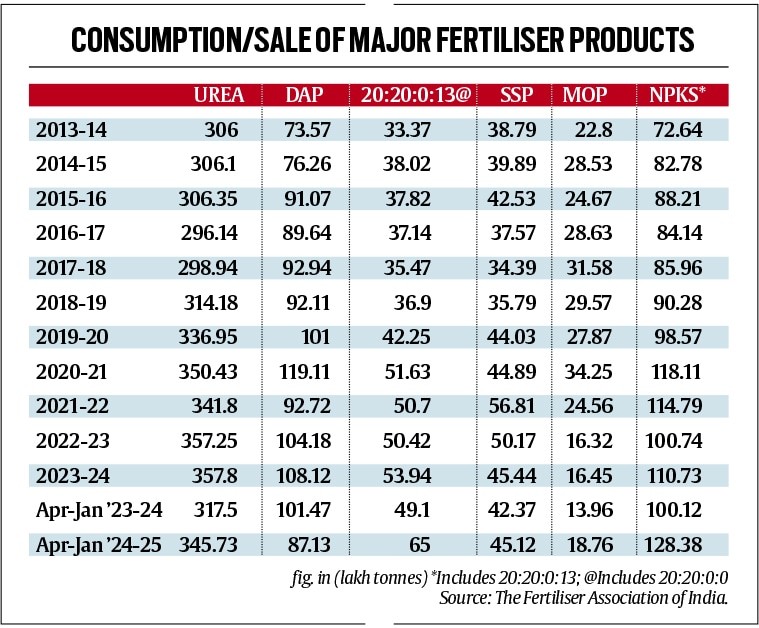
- 27 Feb 2025
Context
The Indian government is strategizing to cap or reduce the consumption of high-analysis fertilizers—Urea, Di-Ammonium Phosphate (DAP), and Muriate of Potash (MOP)—due to their heavy import dependence, rising economic burden, and adverse environmental impacts. This shift is crucial for ensuring nutrient balance, reducing foreign exchange outflows, and promoting sustainable agriculture.
India’s Dependence on Imported Fertilisers
- MOP: India is fully dependent on imports from countries like Canada, Russia, Jordan, Israel, Turkmenistan, and Belarus, as it has no mineable potash reserves.
- Urea: While over 85% of urea demand is met domestically, production relies on imported liquefied natural gas (LNG) from Qatar, the US, UAE, and Angola.
- DAP: Imported both as finished fertiliser and raw materials (rock phosphate, sulphur, phosphoric acid, ammonia) mainly from Saudi Arabia, Morocco, Jordan, China, and others.
The Need to Limit High-Analysis Fertiliser Usage
Economic Concerns
- The rupee's depreciation increases fertiliser import costs.
- India spent ?1.75 lakh crore on fertiliser subsidies in 2023-24.
- Subsidised urea is sold at rates far below cost, draining government resources and encouraging overuse.
- DAP's landed price stands at ?55,150 per tonne, with production costs exceeding ?65,000 per tonne, while the government-fixed retail price remains ?27,000 per tonne, necessitating large subsidies.
Environmental Concerns
- Excessive application of urea and DAP depletes organic carbon in soils, reduces microbial diversity, and causes groundwater contamination through nitrate leaching.
- Soil health degradation ultimately reduces crop productivity and ecological resilience.
Governance Challenges
- High subsidies encourage black marketing and non-agricultural diversion.
- Lack of strict nutrient management regulations leads to soil nutrient imbalances.
The Shift Towards Balanced Fertilisation
High-analysis fertilisers like urea (46% nitrogen), DAP (46% phosphorus + 18% nitrogen), and MOP (60% potash) often lead to over-application and inefficiency. Crops instead require a balanced supply of:
- Macronutrients (N, P, K),
- Secondary nutrients (sulphur, calcium, magnesium),
- Micronutrients (zinc, iron, copper, boron, manganese, molybdenum).
Balanced fertilisation ensures efficient nutrient uptake, enhances yields, preserves soil health, and optimises resource use.
Emerging Alternatives
Ammonium Phosphate Sulphate (APS – 20:20:0:13)
- Contains 20% N, 20% P, and 13% S, but no K.
- Sulphur-rich, making it ideal for oilseeds, pulses, maize, cotton, onion, and chilli.
- APS manufacturing is more economical, requiring less costly phosphoric acid compared to DAP.
- Sales surged 32.4%, from 4.9 million tonnes (2022-23) to 6.5 million tonnes (2023-24), making APS the third-most consumed fertiliser after urea and DAP.
- Leading APS producers include Coromandel International, Paradeep Phosphates, and Mangalore Chemicals & Fertilizers.
Single Super Phosphate (SSP – 16% P, 11% S)
- A low-cost, sulphur-rich fertiliser ideal for oilseeds and vegetable cultivation.
Nano Urea and Nano DAP
- Developed by Indian Farmers Fertiliser Cooperative (IFFCO).
- Enhance nutrient use efficiency by 15–20%, require lower application rates, and reduce overall fertiliser consumption.
NPKS Complex Fertilisers
- Formulations like 10:26:26:0, 12:32:16:0, 15:15:15:0, and 14:35:14:0 provide balanced nutrients.
- Help integrate potash application into complexes, reducing direct MOP use.
- NPKS fertiliser sales are projected to reach 14 million tonnes in 2024-25, up from 7.3 million tonnes in 2013-14.
Biofertilisers and Organic Manure
- Promote sustainable farming by improving soil health and reducing chemical fertiliser dependence.
- Supported by government initiatives like the PM-PRANAM scheme.
Effectiveness of Substitutes
- Reduces Import Costs: APS and Nano Urea reduce foreign exchange outflows.
- Enhances Soil Health: Balanced fertilisers prevent soil degradation and restore fertility.
- Improves Crop Yields: Trials demonstrate better nutrient absorption and yield improvements.
- Promotes Sustainability: Encourages ecological farming practices.
Policy Support and The Way Forward
Government Initiatives
- PM-PRANAM Scheme: Promotes alternative fertilisers.
- Nutrient-Based Subsidy (NBS): Encourages balanced fertiliser use.
- Soil Health Card Campaign: Educates farmers about soil-specific nutrient needs.
Strategic Recommendations
- Subsidy Reforms: Focus subsidies on APS, Nano Urea, and complex fertilisers rather than high-analysis fertilisers.
- Technology Adoption: Use AI-based tools like Microsoft FarmVibes AI for precision fertiliser application.
- Domestic R&D Investment: Strengthen indigenous production of fertilisers and biofertilisers.
- Policy Alignment: Integrate fertiliser policy with climate change and agricultural sustainability strategies.
Conclusion
India’s high dependence on imported urea, DAP, and MOP is economically unsustainable and environmentally detrimental. Transitioning towards balanced fertilisers like APS, Nano Urea, and organic alternatives is critical for ensuring long-term agricultural sustainability, reducing subsidy burdens, conserving foreign exchange, and preserving soil health. This shift requires concerted efforts through government policy, farmer education, and technological innovation.
Lokpal
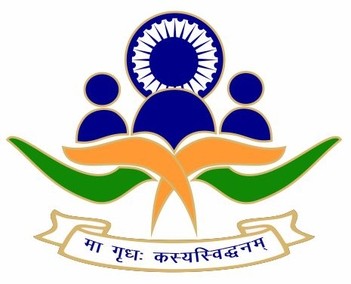
- 26 Feb 2025
Context:
In February 2025, the Supreme Court of India stayed a controversial order issued by the Lokpal, which had attempted to bring High Court judges within its jurisdiction by categorizing them as "public servants" under the Lokpal and Lokayuktas Act, 2013. The apex court termed the Lokpal’s interpretation as “very disturbing” and in contradiction with settled constitutional principles.
Understanding the Lokpal and Its Jurisdiction
Origin and Legal Framework:
- Concept Origin: The term "Lokpal" was coined by Dr. L.M. Singhvi in 1963. The concept was originally inspired by the Swedish institution of the Ombudsman (1809).
- Legislative Foundation: The Lokpal and Lokayuktas Act, 2013 was passed following public pressure during the Anna Hazare-led India Against Corruption movement.
- Purpose: To act as an independent anti-corruption body with jurisdiction over high-ranking public officials.
Structure and Jurisdiction:
- Composition:Lokpal comprises a Chairperson and up to 8 members (50% must be judicial).
- Selection Committee: Includes the Prime Minister, Speaker of Lok Sabha, Leader of Opposition, Chief Justice of India, and an eminent jurist.
- Jurisdiction (Section 14):
- Prime Minister (with exceptions related to national security, international relations, etc.)
- Union Ministers and Members of Parliament
- Government servants (Group A-D)
- Chairpersons, officers of public entities, and NGOs receiving foreign contributions over ?10 lakh annually
The Controversy: Inclusion of High Court Judges
The Lokpal recently issued an order stating that High Court judges qualify as public servants under the Lokpal Act. The reasoning was based on historical foundations:
- Lokpal’s Argument:
- High Courts were established under British-era laws like the Indian High Courts Act, 1861.
- Article 214 of the Constitution merely recognizes these courts rather than creating them.
- Therefore, High Court judges should fall under Lokpal’s purview, unlike Supreme Court judges who are appointed under Article 124.
Supreme Court’s Response and Constitutional Position
The Supreme Court overruled Lokpal’s interpretation, citing constitutional provisions and established legal precedent:
- Appointment under the Constitution:
- High Court judges are appointed under Article 217 of the Constitution.
- Supreme Court judges are appointed under Article 124.
- Both are constitutional functionaries and hence outside the jurisdiction of Lokpal, which is a statutory body.
- 1991 K. Veeraswami Judgment (Five-Judge Bench):
- Unanimously held that judges are public servants, but no criminal case can be registered against them without prior consultation with the Chief Justice of India (CJI).
- Even if the CJI is the accused, the consultation must occur with other senior SC judges.
- Emphasized judicial independence and the need for protection against frivolous or motivated inquiries.
- Judicial Integrity vs Public Scrutiny:
- While corruption among judges is not immune to scrutiny, the procedure must ensure judicial independence, prevent erosion of public trust, and protect honest judges from harassment.
Critical Analysis: Lokpal's Overreach and Constitutional Boundaries
- Violation of Doctrine of Separation of Powers:The Lokpal's attempt to extend its reach to constitutional judges infringes on the independence of the judiciary, a basic feature of the Constitution.
- Constitutional Supremacy vs Statutory Authority:The Lokpal, being a creation of Parliament, cannot override the constitutional safeguards provided to judges under Articles 124 and 217.
- Judicial Precedent Binding on Statutory Bodies:Ignoring the K. Veeraswami judgment not only undermines legal precedent but also reflects a lack of institutional discipline.
Conclusion
The recent conflict between the Lokpal and the Supreme Court over jurisdictional boundaries highlights the delicate balance between ensuring accountability and preserving judicial independence. While combating corruption remains vital, procedural safeguards and constitutional norms must guide such actions. The episode reiterates the importance of institutional clarity, inter-agency respect, and adherence to constitutional principles in India's democratic framework.
Glacier Melting and Climate Change
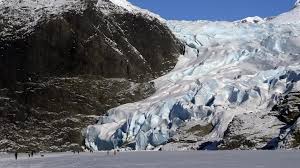
- 25 Feb 2025
Context:
The world’s glaciers are melting at an alarming rate due to anthropogenic climate change, making them one of the leading contributors to global sea-level rise. Recent studies have revealed that more than 7 trillion tonnes of ice have been lost since 2000, with 2023 marking the worst year on record.
Key Data and Trends
- Between 2000 and 2023, glaciers lost 6.54–7 trillion tonnes of ice, contributing approximately 18 mm to global sea levels.
- The rate of glacier melt increased by 36% over the past decade:
- 2000–2011: 255 billion tonnes lost annually
- 2011–2023: 346 billion tonnes annually
- 2023 alone: 604 billion tonnes lost — the highest annual loss recorded
- Globally, glaciers have lost 5% of their ice, with regional losses ranging from 2% to 39%.
- Alaska is the fastest-melting region, losing 67 billion tonnes per year (22% of global glacier mass loss).
- The Canadian Arctic (20%), Greenland periphery (13%), and Southern Andes (10%) are also major contributors.
- Central European glaciers are shrinking the fastest in relative terms, having lost 39% of their volume since 2000.
Causes of Glacier Meltdown
- Rising global temperatures due to greenhouse gas emissions from fossil fuel combustion.
- Extreme heatwaves and record summer temperatures, especially in vulnerable regions like the Alps and Andes.
- Reduced snowfall, leading to insufficient accumulation to balance seasonal melting.
- Human-induced climate change, confirmed as the primary driver of accelerated glacier loss.
Impacts of Glacier Melting
- Sea Level Rise
- Glacier melt contributes more to sea-level rise than ice loss from Greenland and Antarctica.
- Currently accounts for 0.75 mm/year of sea-level rise; projected to increase further.
- Water Resources & Scarcity: Melting glaciers provide short-term water surpluses but pose a long-term threat of freshwater scarcity, especially for regions dependent on glacier-fed rivers (e.g., Central Asia, Central Andes).
- Geohazards & Natural Disasters: Glacier retreat increases the risk of glacial lake outburst floods (GLOFs), landslides, and downstream flooding.
- Biodiversity Loss: Shrinking glaciers affect freshwater ecosystems and species reliant on glacial water.
- Economic Disruptions: Sectors like agriculture and tourism are adversely impacted due to changes in water availability and scenic landscape loss.
Scientific Insights and Global Assessments
- The Glacier Mass Balance Intercomparison Exercise (GlaMBIE) led by international experts used unified satellite and field data to provide the most accurate glacier loss estimates to date.
- Glaciers are now recognized as apolitical indicators of climate change, painting an unbiased picture of global warming trends.
- The IPCC stresses that without rapid cuts in emissions, glacier melt will continue or accelerate throughout the century, worsening its contribution to sea-level rise and regional climate vulnerabilities.
- Glaciers contribute 20% to observed global sea-level rise (2003–2016), behind only thermal expansion (33%), and more than the Greenland Ice Sheet (17%).
Conclusion
Glaciers are not just scenic features; they are critical to Earth’s hydrological and climatic systems. Their rapid melting signals an urgent planetary emergency that demands intensified climate action, focused on mitigation, adaptation, and international cooperation. For India, where Himalayan glaciers are vital for river systems and agriculture, this global trend holds serious implications for water security, disaster risk management, and sustainable development.
India–Sri Lanka Fishing Dispute
- 24 Feb 2025
Context:
The recurring arrests of Indian fishermen by the Sri Lankan Navy in the Palk Bay region underscore a complex and unresolved bilateral issue, rooted in historical practices, ecological concerns, and geopolitical sensitivities. The most recent incidents in early 2025 have intensified the diplomatic and political discourse between the two neighbours.
Background and Origin of the Dispute
The core of the India–Sri Lanka fishing dispute lies in the contested fishing rights in the Palk Bay, a narrow strip of sea separating Tamil Nadu from northern Sri Lanka. The 1974 and 1976 maritime boundary agreements, particularly the ceding of Katchatheevu Island to Sri Lanka, formalized the International Maritime Boundary Line (IMBL). While Indian fishermen were permitted traditional access to the island for specific purposes, the agreements curtailed their fishing activities across the newly delineated boundary.
However, Tamil Nadu fishermen have historically fished in these waters, and the IMBL has not fully erased traditional patterns. The situation is worsened by ecological pressures on Indian fishing grounds, pushing fishermen into Sri Lankan waters.
Key Issues Involved
- Violation of IMBL and Traditional Rights:Indian fishermen often assert customary fishing rights across the IMBL, which clashes with Sri Lanka’s assertion of sovereignty over its territorial waters. Many crossings occur unintentionally due to poor navigation, engine failures, or inclement weather.
- Bottom Trawling and Environmental Concerns:The use of bottom trawlers by Indian fishermen is a major point of contention. This method, which scrapes the seabed, damages marine ecosystems and depletes resources, affecting both nations' long-term fisheries sustainability. Sri Lanka has banned bottom trawling and views it as ecological exploitation and illegal fishing.
- Security and Sovereignty Sensitivities:Sri Lanka perceives these incursions not only as violations of maritime boundaries but also as potential national security threats, recalling past concerns over Tamil militant movements operating from the sea.
- Recurrent Arrests and Humanitarian Concerns:The frequent arrests, imprisonment, and imposition of heavy fines on Indian fishermen have humanitarian and political implications. Often, fishing boats are not returned even after the release of the crew, causing further livelihood losses.
Efforts at Resolution
- Diplomatic Engagement:The issue has prompted high-level political intervention, with the Tamil Nadu government urging the Union Government for effective measures and the convening of a Joint Working Group (JWG) to address the issue diplomatically.
- Livelihood-Based Approaches:Both countries have discussed alternatives to resolve the crisis humanely, including exploring sustainable fishing practices, alternate employment, and deep-sea fishing training.
- Technological Interventions:Use of GPS-based tracking systems and awareness programs aim to prevent inadvertent border crossings and encourage responsible fishing.
- People-to-People Dialogues:Calls for direct interaction between fishermen communities from both nations have been made, suggesting that grassroots engagement may ease tensions and promote mutual understanding.
International Legal Framework
- UNCLOS (1982):Provides legal clarity on maritime boundaries and responsibilities, but emphasizes mutual respect for sovereign rights and sustainable resource use.
- UN Fish Stocks Agreement (1995):Encourages cooperation in conserving transboundary fish stocks, suggesting the role of Regional Fisheries Management Organizations (RFMOs) in managing shared marine resources.
Conclusion
The India–Sri Lanka fishing dispute in the Palk Bay is not merely a bilateral maritime boundary issue; it is a convergence of historical rights, ecological degradation, livelihood dependence, and strategic concerns. While both countries have taken steps towards conflict management, a long-term solution lies in cooperative marine resource governance, joint monitoring, and community-centric diplomacy. Resolving this issue through dialogue, sustainable practices, and mutual sensitivity is essential to safeguard both bilateral relations and the rights and livelihoods of coastal communities.
Regulation of OTT Content in India: Code of Ethics and Legal Framework

- 23 Feb 2025
In News:
The proliferation of Over-The-Top (OTT) platforms in India has transformed content consumption. However, rising concerns over obscene, vulgar, and explicit content have prompted the Ministry of Information & Broadcasting (I&B) to issue a fresh advisory urging adherence to the Code of Ethics under the Information Technology (Intermediary Guidelines and Digital Media Ethics Code) Rules, 2021 (IT Rules, 2021).
OTT platforms are digital streaming services that deliver content over the internet, bypassing traditional broadcasting. Their growing influence on public discourse, especially among youth, necessitates regulation.
Key Features of the Advisory
The advisory mandates strict compliance with the Code of Ethics under IT Rules, 2021:
- Prohibition of unlawful and obscene content.
- Age-based content classification and access control for ‘A’-rated content.
- A three-tier grievance redressal mechanism:
- Level I: Self-regulation by publishers.
- Level II: Oversight by self-regulatory bodies.
- Level III: Government oversight via I&B Ministry.
OTT platforms must also comply with:
- Indecent Representation of Women (Prohibition) Act, 1986
- Protection of Children from Sexual Offences (POCSO) Act, 2012
- Information Technology Act, 2000
- Bhartiya Nyay Sanhita, 2023
Recent Trigger: ‘India’s Got Latent’ Controversy
The advisory follows public outrage over vulgar remarks made by podcaster Ranveer Allahbadia on the YouTube show ‘India’s Got Latent’. The Supreme Court criticized the Centre for inadequate oversight of digital content and demanded legal action. The Parliamentary panel also sought a review of existing laws and possible amendments to strengthen content regulation.
Rationale for a Code of Ethics
- Protecting Minors: Shields children from harmful or explicit material.
- Preserving Public Decency: Prevents normalization of obscene content.
- Fostering Trust: Builds accountability and transparency in content curation.
Global Best Practices
- Ofcom (UK): Advocates age-verification, content classification, and proactive monitoring.
- European Audiovisual Observatory: Emphasizes transparency, regular audits, and self-regulation.
Implementation Challenges
- Enforcement gaps and inconsistent compliance across platforms.
- Vague definitions in the rules create interpretational ambiguities.
- Technological limitations in age verification and filtering mechanisms.
- Creative resistance from platforms fearing curbs on artistic freedom.
Way Forward
- Establish an independent content regulatory body for continuous oversight.
- Foster collaboration between government, platforms, and global agencies.
- Mandate regular content audits and public awareness campaigns.
- Incentivize ethical compliance through certifications and recognition.
Conclusion
While digital freedom is essential, unchecked content dissemination can erode societal values. The recent advisory underscores the need for a balanced regulatory approach—one that safeguards minors and public decency while respecting creative freedoms. A robust and dynamic Code of Ethics, coupled with technological upgrades and civic awareness, is key to building a safe and responsible digital media ecosystem in India.
'Rarest of Rare' Doctrine
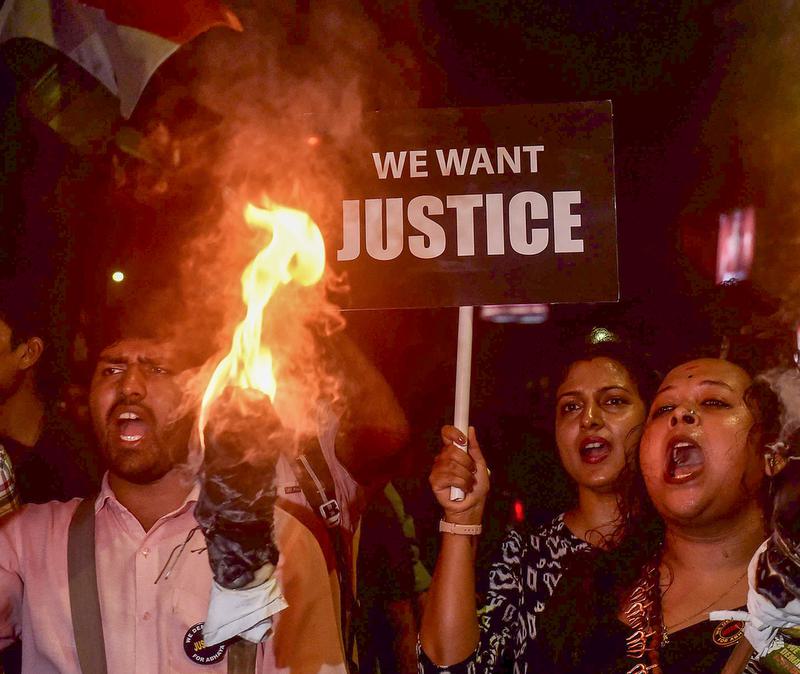
- 22 Feb 2025
In News:
The application of the death penalty in India continues to evoke debate, particularly in light of contrasting verdicts such as those in the 2024 R.G. Kar Medical College case and the Sharon Raj murder case. These cases highlighted the inconsistent application of the 'rarest of rare' doctrine, a judicial principle guiding capital punishment in the country.
Evolution of the 'Rarest of Rare' Doctrine
The debate surrounding the constitutionality and application of the death penalty began with Jagmohan Singh vs. State of Uttar Pradesh (1972). The Supreme Court upheld the death penalty’s constitutionality under Article 21 (Right to Life), ruling that it did not violate Articles 14 (equality before law) or 19 (freedom of speech and expression), despite concerns over lack of sentencing guidelines.
A definitive framework emerged in Bachan Singh vs. State of Punjab (1980), where the apex court held that the death penalty should only be awarded in the 'rarest of rare' cases. However, the Court did not precisely define what constituted "rarest of rare," leaving the interpretation to judicial discretion.
To bring clarity, the Supreme Court in Machhi Singh vs. State of Punjab (1983) outlined five guiding criteria to determine such cases:
- Manner of the Crime – Exceptionally brutal, grotesque, or shocking to the community.
- Motive of the Crime – Exhibiting extreme depravity or sadistic intent.
- Socially Abhorrent Nature – Offenses targeting marginalized individuals or groups.
- Magnitude of Crime – Cases involving multiple murders or large-scale violence.
- Victim’s Vulnerability – When victims are children, women, elderly, or otherwise helpless.
Further, in Mithu vs. State of Punjab (1983), the Court struck down Section 303 of the IPC, which mandated the death penalty for life convicts committing murder. The judgment reaffirmed that capital punishment must remain discretionary, emphasizing judicial evaluation of aggravating and mitigating circumstances.
Case Studies: A Reflection of Judicial Discretion
- In the R.G. Kar Medical College case, a female medical trainee was raped and murdered. Despite the brutality, the court ruled that the case did not meet the threshold of 'rarest of rare' and awarded life imprisonment to the convict.
- Conversely, in the Sharon Raj case, a young man was poisoned by his partner in a premeditated act. The court termed it one of the 'rarest of rare' cases and awarded the death penalty, citing the calculated nature and moral depravity of the crime.
These differing verdicts underscore the subjective application of the doctrine, with considerable weight placed on judicial interpretation.
Contemporary Concerns and Legal Developments
While the doctrine aims to preserve the sanctity of life by making the death penalty an exception, its lack of statutory definition and variability in interpretation has invited criticism. In 2022, the Supreme Court referred the issue to a Constitution Bench to explore how sentencing procedures could better accommodate mitigating factors and ensure a "meaningful, real and effective" hearing before sentencing.
Conclusion
The 'rarest of rare' doctrine represents a critical balancing act between justice and retribution in India's legal system. Although it seeks to restrict capital punishment to the most egregious crimes, its ambiguous parameters and judicial discretion often lead to inconsistent outcomes. Going forward, a more standardized and transparent sentencing framework could strengthen judicial credibility and uphold constitutional morality.
Renewed India–US Civil Nuclear Cooperation
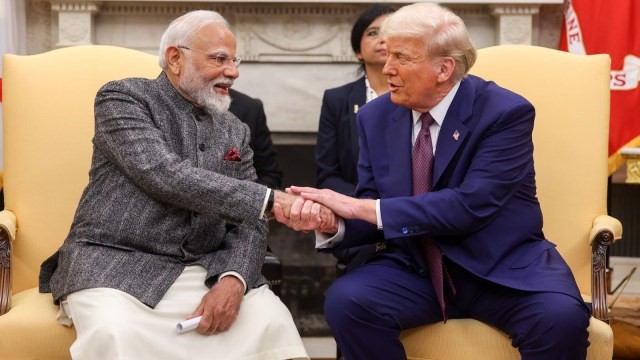
- 21 Feb 2025
In News:
Context:
India and the United States have reaffirmed their commitment to fully realise the 123 Civil Nuclear Agreement, marking a major push to revive progress two decades after the pact was signed in 2007.
Key Gains for India
- Technology Transfer & Localisation:The partnership envisions joint construction of US-designed nuclear reactors in India, incorporating large-scale localisation and technology transfer, reversing the US's usual "manufacture-at-home" stance.
- Upgrading India’s Nuclear Capacity:India aims to shift from PHWRs (Pressurised Heavy Water Reactors) to globally dominant PWRs (Pressurised Water Reactors). This will allow India to scale capacity addition and modernise its nuclear fleet.
- Entry into Small Modular Reactors (SMRs):
- SMRs (30–300 MWe) are compact, scalable reactors viewed as essential for future clean energy demands.
- India’s Department of Atomic Energy is exploring collaboration with Holtec International (USA) for joint manufacturing and deployment.
- Holtec's SMR-300, supported by the US Department of Energy with $116 million, is under design review in the UK and Canada.
- Strategic Counter to China:India–US joint ventures in SMRs could counter China’s rising influence in the Global South through its aggressive SMR diplomacy.
Economic & Industrial Impacts
- Holtec plans a nuclear technology campus in Pune and a specialty manufacturing plant in India.
- Existing facility in Dahej, Gujarat, can double workforce if plans are approved.
- Legal reforms in India are being considered to attract investments from Western and Middle Eastern markets into the nuclear sector.
India: Leading the Next Phase of Global Outsourcing (Deloitte Report)
Key Findings from Deloitte’s ‘The Outsourcing Compass’ (2025)
- Growing Demand:
- 81% of global organizations plan to increase outsourcing over the next 3–5 years.
- India continues to lead as a global outsourcing hub, with a projected rise as the world’s 3rd-largest economy by 2027.
- Shift in Outsourcing Models:
- Transition from back-office services to strategic, high-value functions like product development, AI/GenAI support, and brand management.
- 98% of firms depend on Indian service providers for AI and GenAI capabilities.
- Modern Contracting Approaches:
- 36% prefer outcome-based contracts over traditional FTE-based models.
- AI-specific clauses are being added to outsourcing contracts to enhance tracking and cost control.
- Strategic Collaborations & Cost Efficiency:
- Strategic-niche partnerships yield 10–25% annual cost savings; some report 15–35% savings.
- 70% of organizations work with non-traditional providers to access innovative technologies.
- Evolving Operating Models:
- 55% use Global Business Services (GBS) centers for oversight; execution by third-party providers.
- 35% adopt Build-Operate-Transfer (BOT) models to scale up while retaining control.
- Robust Governance Structures:
- 45% of mature outsourcing firms operate Vendor Management Offices (VMOs) to manage risks and enhance effectiveness.
Why India Remains Preferred:
- A skilled digital workforce, thriving startup ecosystem, policy stability, and advancements in cybersecurity and vendor governance bolster India’s position.
Sovereign Green Bonds in India
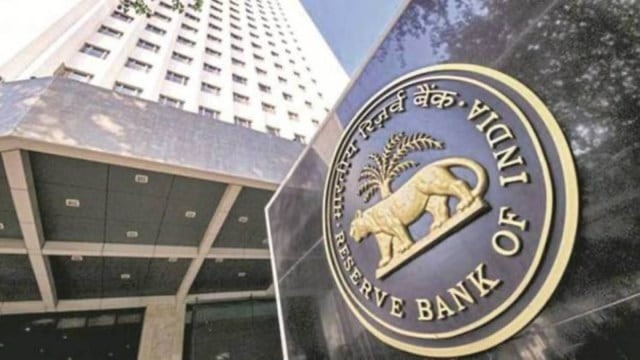
- 20 Feb 2025
Context:
India has adopted sovereign green bonds (SGrBs) as a key strategy to finance its transition to a low-carbon economy. However, these bonds have faced muted demand from investors, limiting the effectiveness of this funding source. Despite efforts to ease participation rules and attract foreign investors, the expected "greenium" (lower borrowing costs) remains weak, leading to funding shortfalls for vital green projects.
What are Sovereign Green Bonds?
Sovereign Green Bonds are issued by the government to raise capital for environmentally sustainable projects such as renewable energy, energy efficiency, and climate resilience. In India, the government established a framework for issuing these bonds in 2022. Since their introduction, India has raised nearly Rs 53,000 crore through eight issuances, with funds primarily allocated to projects like energy-efficient locomotives and metro developments.
Weak Investor Demand
Despite the government's efforts, India's SGrBs have struggled to attract investor interest. A significant issue is the limited greenium, which in India has only reached 2–3 basis points, far below the global average of 7–8 basis points. This lack of financial incentive makes these bonds less attractive compared to regular bonds. Additionally, small issue sizes and limited secondary market trading further discourage investors. Many bonds are held to maturity, stifling liquidity and market participation.
Impact on Green Initiatives
The weak demand for SGrBs has directly impacted the funding for critical green projects. Initially, India planned to raise Rs 32,061 crore from SGrB proceeds in 2024-25. However, after weak investor response, the revised estimate was reduced to Rs 25,298 crore, resulting in significant cuts to funding for projects such as grid-scale solar energy. The budget for grid-scale solar projects was slashed from Rs 10,000 crore to just Rs 1,300 crore. As a result, India is increasingly relying on general revenue to fill the funding gap.
Key Areas Affected by Funding Cuts
- Electric Locomotive Manufacturing: Rs 12,600 crore
- Metro Projects: Rs 8,000 crore
- Renewable Energy (including National Green Hydrogen Mission): Rs 4,607 crore
- Afforestation (National Mission for a Green India): Rs 124 crore
Challenges Contributing to Weak Demand
- Lack of Social Impact Funds: India lacks a robust ecosystem of social impact funds and responsible investment mandates, which are present in other markets and drive demand for green bonds.
- Liquidity Issues: Small bond issues and a lack of secondary market trading have made SGrBs less liquid and attractive to investors.
- Higher Yields in Other Investment Avenues: Investors are reluctant to accept the relatively low yields of SGrBs, as they offer little financial advantage over regular bonds.
Way Forward
To improve the attractiveness of SGrBs, India could explore the issuance of sustainability bonds, which fund both green and social projects, attracting a broader base of investors. Additionally, post-issuance transparency is crucial, with detailed allocation and impact reports needed to build investor confidence. The government can also collaborate with multilateral development banks like the World Bank to back its green bonds, enhancing their credibility and attracting investment.
Furthermore, enhancing liquidity and developing a more robust market for green finance are essential steps to ensure that India can achieve its climate goals. With proper strategy and structural changes, India can enhance investor confidence and ensure sustainable funding for its green initiatives.
India's Horticulture Sector

- 19 Feb 2025
In News:
India’s horticulture sector is crucial to its agricultural economy, encompassing the cultivation, production, processing, and marketing of fruits, vegetables, and ornamental plants. The sector includes sub-sectors like pomology (fruit cultivation), olericulture (vegetable cultivation), floriculture (flower cultivation), and arboriculture (cultivation of trees). India stands as the second-largest producer of fruits and vegetables globally, trailing only China.
In 2023-24, India’s horticultural production was estimated at 355 million tonnes, surpassing food grain production. The sector contributes 33% to the agricultural Gross Value Added (GVA), growing at an annual rate of 4-5%, outpacing cereal production.
Despite its size and importance, India’s horticulture sector faces several challenges. Post-harvest losses are significant, with about 8.1% for fruits and 7.3% for vegetables, translating into a loss of ?1.53 trillion annually. These losses are primarily due to inadequate cold storage and processing infrastructure, as well as fragmented value chains, where middlemen dominate, resulting in low farmer incomes. Farmers typically receive only 30% of the final consumer price for their produce.
Challenges in India’s Horticulture Sector
- Infrastructure Deficit: The absence of efficient logistics, cold storage, and warehousing facilities contributes to delays and wastage of perishable horticultural crops. The cold storage capacity is concentrated in just a few states, limiting access for farmers across the country.
- Small Operational Landholdings: Many farmers operate on small plots, limiting their ability to adopt sustainable practices and crop rotation, leading to reduced yields and soil degradation.
- Limited Value Addition: Only 10% of India’s fruits and vegetables are processed, compared to 60-70% in developed countries, leading to distress sales and low earnings for farmers.
- Market Linkages and Export Challenges: Indian farmers have limited access to direct markets, and the country’s export share in horticultural produce is low. Non-tariff barriers such as Sanitary and Phytosanitary (SPS) standards also hinder India's export growth.
Government Initiatives for Horticulture
Several initiatives have been launched to address these challenges:
- Mission for Integrated Development of Horticulture (2014) aims to foster holistic growth through cluster approaches and better linkages.
- Operation Greens, initially focused on specific crops like tomatoes, onions, and potatoes, has been extended to all horticultural crops to address price volatility.
- The Farmer Producer Organisation (FPO) model is being promoted to help farmers collectively bargain for better prices. As of August 2024, 8,875 FPOs have been established with a target of 10,000 by 2027.
- The Agriculture Infrastructure Fund (AIF) provides financial support for cold chains, warehouses, and processing units.
Case Study: Sahyadri FPO
A notable example of FPO success is the Sahyadri Farmer Producer Company Ltd (SFPCL) in Maharashtra, which started with 10 farmers in 2004 and has grown to include 26,500 farmers across 252 villages. With an annual turnover of ?1,549 crore (2023-24), SFPCL has become the largest grape exporter, with 90% of exports going to the EU and UAE. Farmers involved in the FPO receive 55% of the final export price, significantly higher than the typical 30% in traditional markets. This model demonstrates the potential of cooperative farming in enhancing farmers' incomes.
Way Forward: Scaling Up the Amul Model
To replicate the success of AMUL in the dairy sector, India’s horticulture sector must focus on:
- Strengthening FPOs: Support should be provided for working capital, infrastructure, and digital integration. Leveraging platforms like the Open Network for Digital Commerce (ONDC) can enhance market access for FPOs.
- Expanding Processing and Storage Infrastructure: Financial allocation for cold storage, processing facilities, and logistics must be increased under schemes like Operation Greens.
- Public-Private Partnerships (PPP): Encourage collaborations between the government and private sectors to enhance food processing, distribution, and retail linkages.
- Technology Integration: Adoption of technologies like blockchain for traceability and AI-driven price prediction models can improve market transparency and reduce distress sales.
By expanding successful models like Sahyadri FPO, India can transform its horticulture sector, enhance farmer incomes, ensure food security, and increase agri-export earnings. This approach could play a pivotal role in rural development and poverty alleviation, benefiting both farmers and consumers.
India’s Sovereign Green Bonds: Challenges and Prospects
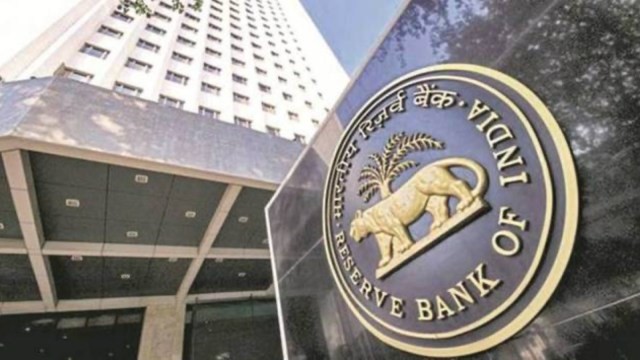
- 18 Feb 2025
Context:
India’s Sovereign Green Bonds (SGrBs) are a key instrument to mobilize resources for climate-resilient infrastructure and sustainable development. However, despite their potential, the bonds have struggled to attract robust investor interest, thereby limiting the government’s ability to secure a meaningful greenium—a lower cost of borrowing that typically incentivizes green finance globally.
What are Sovereign Green Bonds?
SGrBs are debt instruments issued by the Government of India to raise capital for projects that contribute to environmental sustainability and low-carbon development. They are part of India’s broader green financing strategy to meet its Net Zero target by 2070. These bonds are issued by the Ministry of Finance, under the oversight of the Department of Economic Affairs (DEA), and are guided by India’s Green Finance Framework, aligned with global green bond principles.
Application of Funds:
The proceeds from SGrBs are earmarked exclusively for green projects, ensuring transparency and impact-based investment. Key sectors financed include:
- Electric Locomotive Manufacturing (largest beneficiary through the Ministry of Railways)
- Urban Mobility: Metro rail and public transport systems
- Renewable Energy: Solar, wind, and the National Green Hydrogen Mission
- Afforestation: Under the National Mission for a Green India
- Grid-Scale Solar Projects, though allocations here have been curtailed due to fiscal constraints
Performance and Allocation Trends:
India raised ?16,000 crore through SGrBs in FY 2022–23 and ?20,000 crore in FY 2023–24. For FY 2024–25, ?16,697 crore has been raised so far. However, due to muted investor demand, the revised fundraising estimate has been reduced from ?32,061 crore to ?25,298 crore. A fiscal gap of ?3,600 crore will be met through general revenue, reflecting limited success in expanding green finance.
Challenges:
- Weak Greenium: Indian SGrBs offer little to no financial advantage over conventional bonds, with greenium as low as 2–3 basis points. Globally, it averages 7–8 basis points, still modest but relatively attractive.
- Low Investor Demand: Several bond auctions witnessed under-subscription. For instance, ?7,443 crore worth of bonds were devolved to primary dealers in recent auctions due to high yield expectations from investors.
- Illiquid Secondary Market: Small issuance sizes and a trend of holding bonds till maturity restrict active trading, deterring market participants.
- Underdeveloped Sustainable Finance Ecosystem: India lacks dedicated ESG funds, responsible investment mandates, or regulatory incentives for green bond investments.
Recommendations:
- Enhance Credit Guarantees: Collaborate with multilateral institutions like the World Bank or IFC to back green bonds, enhancing their creditworthiness.
- Expand Domestic Green Investment Base: Promote ESG-focused mutual funds, offer tax incentives, and establish a regulatory framework to attract long-term green capital.
- Improve Market Liquidity: Increase bond issuance sizes and introduce market-making mechanisms to deepen secondary market activity.
- Leverage Public-Private Partnerships: Engage private players in project implementation to diversify and scale up green investment opportunities.
Conclusion:
India’s Sovereign Green Bonds symbolize a strategic shift toward sustainable development financing. While challenges persist, especially in market participation and pricing incentives, strengthening domestic financial ecosystems and leveraging global support can make green bonds a cornerstone of India’s climate financing roadmap.
USAID Freeze and Its Global Implications
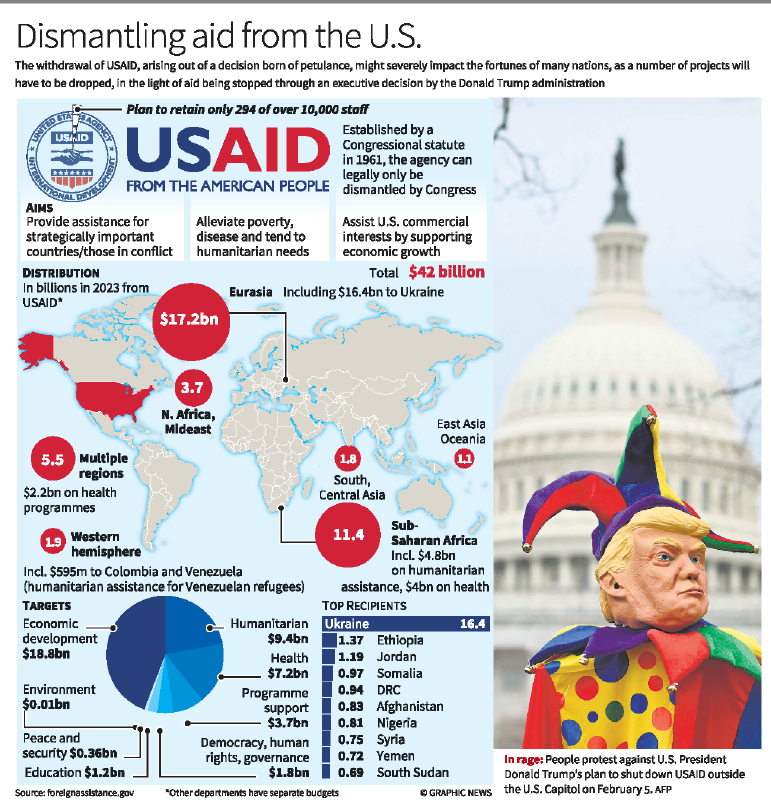
- 17 Feb 2025
Context:
On January 20, U.S. President Donald Trump, upon beginning his second term, issued an executive order imposing a 90-day freeze on foreign assistance. The directive aimed to reassess the efficiency and alignment of U.S. foreign development programs with its foreign policy priorities. This decision led to an immediate halt in operations of the United States Agency for International Development (USAID), with the majority of its 10,000 personnel placed on administrative leave and project funding suspended worldwide.
What is USAID?
- Established in 1961 under President John F. Kennedy through an Act of Congress, the United States Agency for International Development (USAID) functions as an independent agency responsible for administering civilian foreign aid and development assistance.
- Its core mission is to promote democratic values, global peace, and prosperity while advancing American national security and economic interests.
- USAID operates in over 100 countries, partnering with governments, NGOs, private firms, and international organizations.
- It offers financial support, technical assistance, and capacity-building across key sectors such as health, education, food security, economic development, humanitarian relief, environmental sustainability, and governance.
- Prominent initiatives include:
- PEPFAR: A flagship HIV/AIDS prevention and treatment program.
- Feed the Future: Focused on combating hunger and improving food security.
- Power Africa: Aimed at expanding electricity access across Africa.
- Water for the World Act: Enhancing water, sanitation, and hygiene infrastructure.
- In 2024, USAID disbursed $44.2 billion globally, which accounted for approximately 0.4% of the U.S. federal budget. Notably, the agency contributed to around 42% of all humanitarian aid tracked by the United Nations that year.
Rationale and Political Overtones
The Trump administration justified the freeze as a review for improving programmatic efficiency and ensuring alignment with U.S. strategic interests. However, critics argue the move is politically motivated, targeting Biden-era programs. Elon Musk, heading the Department of Government Efficiency (DOGE), labeled USAID a "criminal organization," while Secretary of State Marco Rubio indicated a broader plan for restructuring.
Global Impact of the Freeze
The abrupt suspension of USAID operations threatens development and humanitarian efforts across numerous vulnerable regions. Top recipients like Ukraine, Ethiopia, Somalia, Syria, and Yemen face the sudden withdrawal of critical support in health, food security, disaster relief, and infrastructure.
The United Nations has warned that halting support for HIV/AIDS programs alone could result in over six million deaths within four years. In several African and Middle Eastern nations, the absence of aid could derail long-term projects aimed at poverty alleviation, maternal and child health, vaccination drives, and crisis response mechanisms.
Moreover, the withdrawal risks diminishing the U.S.’s diplomatic influence in the Global South, potentially creating a vacuum for geopolitical competitors such as China, which may expand its presence through initiatives like the Belt and Road Initiative (BRI).
Impact on India
USAID's involvement in India dates back to 1951, when President Truman signed the India Emergency Food Aid Act. Over the decades, it evolved from providing food aid to supporting economic reforms, infrastructure, and public health initiatives. However, India’s dependency on USAID has significantly declined in recent years.
In 2024, USAID allocated approximately $79.3 million to India, primarily focused on healthcare, including HIV/AIDS, tuberculosis, maternal and child health, and immunization programs. This constituted only about 0.2% to 0.4% of USAID’s global disbursement.
While the immediate impact on India may be limited due to reduced reliance and growing self-sufficiency, some ongoing health and sanitation projects could face temporary disruptions. The Indian government and implementing agencies have been directed to suspend USAID-funded operations, raising concerns about the continuity of services for vulnerable populations.
Conclusion and the Way Forward
The freeze on USAID funding reflects a shift in U.S. foreign aid philosophy and signals potential isolationist tendencies. While India may be resilient, many developing nations in Africa, the Middle East, and Asia could witness significant humanitarian and developmental setbacks.
To mitigate the impact, affected countries must:
- Enhance domestic resource mobilization to sustain critical development programs.
- Deepen partnerships with multilateral institutions like the UN, World Bank, and WHO.
- Encourage private sector participation through Corporate Social Responsibility (CSR) initiatives.
- Foster South-South cooperation to promote shared growth models.
The episode underscores the urgent need for the Global South to diversify funding sources and build internal capacities to safeguard developmental progress from geopolitical uncertainties.
Passive Euthanasia for Rabies Patients: SC to Hear Plea

- 16 Feb 2025
In News:
The Supreme Court of India has recently agreed to hear a plea seeking the right to passive euthanasia for rabies patients, citing the exceptional nature of the disease and the absence of a cure. The matter, listed for hearing after two weeks, is poised to test the scope and application of the 2018 passive euthanasia ruling under Article 21 of the Constitution.
Background of the Case
- The petition was filed by the NGO All Creatures Great and Small in 2019, challenging a Delhi High Court order (July 2019) which refused to classify rabies as an exceptional case warranting "death with dignity".
- The Supreme Court issued notice in January 2020 to the Centre and other stakeholders, seeking their response.
- On February 10, 2025, a bench of Justices B.R. Gavai and K. Vinod Chandran agreed to hear the matter after two weeks.
Grounds for the Plea
The NGO has urged the Court to lay down a specific protocol enabling terminally ill rabies patients or their guardians to opt for passive euthanasia under medical supervision. Key arguments include:
- Rabies has a 100% fatality rate once symptoms appear.
- The disease often leads to violent neurological symptoms, requiring patients to be tied or shackled to beds, stripping them of dignity and personal freedom.
- The intense suffering and irreversible nature of rabies, coupled with the lack of any effective treatment, makes it distinct from other terminal conditions.
- The plea seeks the creation of an exceptional legal category for rabies within the framework of the 2018 Supreme Court judgment.
Understanding Euthanasia in India
Definitions:
- Euthanasia literally means “good death” and refers to hastening death to relieve pain and suffering.
- Active Euthanasia involves deliberate acts to cause death (e.g., lethal injection) and remains illegal in India.
- Passive Euthanasia involves withholding or withdrawing life support from terminally ill patients and was legalised in 2018.
Legal Milestone:
- In the Common Cause v. Union of India (2018) case, a five-judge Constitution Bench ruled that the right to die with dignity is a part of the fundamental right to life under Article 21.
- The verdict permitted passive euthanasia and the creation of a “living will”—a legal document allowing patients to refuse life support if in a terminal or vegetative state.
Ethical and Constitutional Dimensions
- The plea raises significant questions about human dignity, bodily autonomy, and the limits of state intervention in end-of-life decisions.
- It also brings focus to judicial responsibility in expanding fundamental rights, especially in the context of terminal, untreatable illnesses.
Conclusion
The outcome of this case could have far-reaching implications on medical jurisprudence and the ethics of end-of-life care in India. If the Court recognizes rabies as an exception, it may set a precedent for disease-specific passive euthanasia protocols, expanding the practical application of the 2018 ruling.
La Niña 2024–25
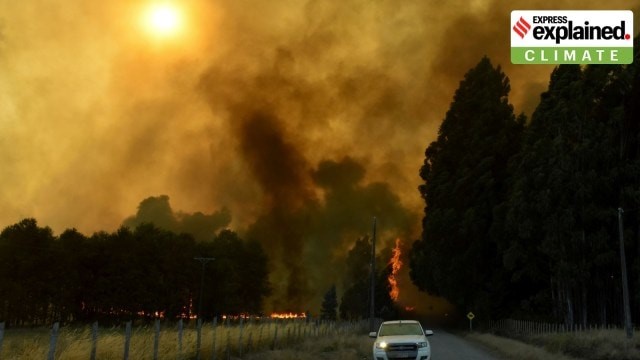
- 15 Feb 2025
In News:
Despite the expected cooling influence of La Niña, January 2025 became the hottest January on record, with global average surface air temperatures 1.75°C above pre-industrial levels (1850–1900), according to the Copernicus Climate Change Service (C3S). This marked the 18th out of the last 19 months that global temperatures exceeded the 1.5°C threshold. The inability of La Niña to curb this warming trend underscores the intensifying impact of anthropogenic climate change.
Understanding La Niña and the ENSO Cycle
La Niña, meaning "The Little Girl" in Spanish, is the cool phase of the El Niño Southern Oscillation (ENSO)—a recurring climate phenomenon involving variations in oceanic and atmospheric conditions in the central and eastern tropical Pacific Ocean.
- Phases of ENSO:
- El Niño (warm phase): Warmer ocean temperatures in the eastern Pacific, weakening trade winds and reducing rainfall in the western Pacific.
- La Niña (cool phase): Colder sea surface temperatures in the eastern Pacific, strengthening trade winds and enhancing rainfall in the western Pacific.
- Neutral phase: Sea surface temperatures are near average with no dominant anomalies.
- Mechanism: During La Niña, strengthened trade winds push warm surface waters westward, causing cold waters to upwell in the eastern Pacific. This typically results in global cooling.
- ENSO Cycle: These phases occur every 2 to 7 years and influence weather patterns globally. The ENSO cycle leads to sea surface temperature variations between ±1°C to ±3°C from the long-term average.
The 2024–25 La Niña: A Weakened Climate Driver
- Emergence: The current La Niña phase began in December 2024, later than anticipated. Forecasts had expected it around September 2024, giving it insufficient time to strengthen before its typical peak in the Northern Hemisphere winter.
- Intensity: It is projected to be a mild La Niña, reducing its capacity to significantly influence global temperatures.
- Past Events: The most recent La Niña cycle lasted from 2020 to 2023, followed by a strong El Niño through mid-2023.
- Delayed Cooling Effect: The weaker-than-usual La Niña failed to produce the anticipated cooling, surprising scientists. As Julien Nicolas from Copernicus observed, the expected “temporary brake” on global temperatures did not materialize.
Why January 2025 Remained Hot Despite La Niña
- Global Ocean Warming: Oceans have retained higher-than-usual warmth due to long-term climate change, diluting La Niña’s cooling influence.
- Weak La Niña Onset: A late and weak phase meant less disruption to the prevailing warming trend. According to NOAA, La Niña events need more time and intensity to impact temperatures effectively.
- Persistent GHG Emissions: The concentration of greenhouse gases reached record highs in 2024, adding to the Earth's heat burden. Typically, La Niña-induced rains spur vegetation growth and carbon absorption, but weaker rains in this cycle limited that effect.
- Reduced Aerosols: Declines in atmospheric aerosols—due to cleaner air policies—lessened their usual cooling impact. Aerosols scatter solar radiation and influence cloud dynamics, contributing to temperature moderation.
Global and Regional Climatic Impacts of La Niña
Despite its weak intensity, La Niña still shaped regional weather in varied ways:
Asia
- India: Higher monsoon rainfall (July–September) is expected. This boosts rice production but may reduce pulse output in the Indo-Gangetic Plain.
- Southeast Asia: Nations like Indonesia, Malaysia, and the Philippines face increased rainfall—raising flood risks but aiding rice and palm oil yields.
South America
- Southern Brazil, Uruguay, northern Argentina, and southern Bolivia face drought due to reduced rainfall, affecting soybean and maize crops.
- Northern Brazil, Colombia, Venezuela, and parts of Ecuador and Peru receive excess rain, risking floods.
Africa
- East Africa: Experiences dry conditions in December–January, hampering harvests in February–March.
- Southern Africa: Receives above-average rainfall, benefitting crops like maize, wheat, sorghum, and soybeans.
Oceania
- Australia: Faces heavy rain and possible flooding in its northern and eastern regions.
North America
- Southern US: Experiences dry conditions.
- Northern US, Canada, and Alaska face wetter, stormier weather.
Significance for India
- Agriculture: Enhanced monsoon rains improve farm productivity, especially rice.
- Water Resources: Better reservoir levels alleviate water stress.
- Energy: Increases hydropower potential.
- Heat Mitigation: Reduces severity of heatwaves compared to El Niño years.
Monitoring & Prediction
- Oceanic Niño Index (ONI): Tracks 3-month average SST anomalies. Values below –0.5°C indicate La Niña.
- Nino-3.4 Index: Confirms ENSO thresholds. Anomalies of ±0.5°C signal event onset; ±1.5°C indicates strong events.
- Tools Used: Satellite data, trade wind strength, and ocean buoys support forecasts. La Niña can be predicted up to two years in advance if preceded by a strong El Niño.
Conclusion:
The 2024–25 La Niña's inability to cool global temperatures highlights a worrisome trend—the diminishing moderating influence of natural climate phenomena. With greenhouse gas emissions continuing to rise and natural cooling cycles weakening, urgent global action is needed to reduce emissions and mitigate climate change impacts.
Reforming Banking Regulations for a $7 Trillion Indian Economy

- 14 Feb 2025
In News:
India’s GDP is projected to nearly double from $3.7 trillion in 2023–24 to $7 trillion by 2030–31, driven by strong digital infrastructure, financial inclusion, and supportive fiscal policies. However, to sustain this growth, robust capital formation and increased credit flow are essential.
The current banking regulatory architecture—comprising Statutory Liquidity Ratio (SLR), Cash Reserve Ratio (CRR), Liquidity Coverage Ratio (LCR), andPriority Sector Lending (PSL)—while ensuring stability, also constrains banks’ lending capacity, particularly for the private sector and MSMEs.
Investment Needs and Private Sector Slowdown
India needs $2.5 trillion in investments, demanding an investment-to-GDP ratio of 34%. Public investment alone is insufficient due to fiscal deficit constraints, necessitating greater reliance on private capital and household savings. However, the investment-to-operating cash flow ratio for the private sector has declined from 114% in 2008–09 to 56% in 2023–24, reflecting weakening investment appetite.
Challenges in Financial Intermediation
Banks’ share in household financial savings has declined from 50% to 40%, as savers turn to higher-yield options like mutual funds. Simultaneously, banks face high regulatory pre-emptions, holding nearly 30% of deposits as non-lendable reserves, including:
- SLR (~26%), exceeding the mandated 18% due to LCR constraints,
- CRR (4%), which earns no interest.
These requirements reduce lendable resources, raise borrowing costs, and constrain credit growth, especially for MSMEs. Further, upcoming LCR norms for digital deposits could require banks to allocate 2–2.5% more to liquid assets, limiting credit availability further.
Need to Rationalize Regulations
Globally, LCR is the standard liquidity norm, but India uniquely mandates both SLR and LCR, leading to excessive capital retention in low-yield instruments. Additionally, India’s exclusion of CRR from High-Quality Liquid Assets (HQLA) reduces bank profitability. While Basel III emphasizes flexible, institution-specific liquidity planning, the RBI’s rigid mandates hinder optimal resource deployment.
Liquidity Access and MSME Credit Gap
Large corporates can access capital via equity and bond markets, but MSMEs remain dependent on bank credit, facing persistent shortages. PSL norms, which account for over 60% of bank lending, can distort credit risk pricing and misallocate capital. A revision is needed to align PSL with India’s changing economic structure.
Credit Growth and Exchange Rate Management
India’s credit growth lags nominal GDP growth, signaling underinvestment and risks to financial stability. Revisiting the credit-to-deposit (CD) ratio can help banks raise capital more efficiently. Meanwhile, defending the rupee against a strong dollar has drained liquidity without addressing currency overvaluation, which continues to hurt export competitiveness.
Way Forward
- Rationalize SLR and LCR mandates to unlock liquidity and lower interest rates.
- Revise PSL norms to reflect new growth priorities.
- Stimulate private investment through policy stability and ease of doing business.
- Deepen bond markets to diversify capital sources.
- Align digital banking fees with global norms for viability.
Conclusion
India stands at a critical juncture in its economic transformation. Reforms in banking regulation, better financial intermediation, and improved credit access are pivotal to achieving the vision of a $7 trillion economy. A forward-looking regulatory framework will empower banks to act as true engines of inclusive and sustained growth.
India-France AI Summit and Strategic Partnership
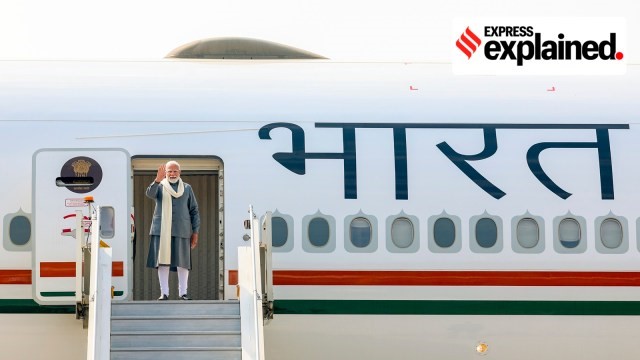
- 13 Feb 2025
In News:
India and France, bound by a deep-rooted strategic partnership since 1998, have expanded cooperation across defence, nuclear energy, space, trade, and culture. In a significant move reflecting shared values and mutual respect, Prime Minister Narendra Modi was invited by French President Emmanuel Macron to co-chair the Artificial Intelligence (AI) Action Summit in Paris in 2024—marking a pivotal moment in global AI governance and Indo-French relations.
Enduring Strategic Relations
India-France relations are anchored in the principles of strategic autonomy and reciprocal respect. France has consistently stood by India in challenging times—refusing sanctions post-Pokhran-II nuclear tests in 1998 and maintaining diplomatic engagement during the Emergency in 1976. President Macron’s participation in India’s 2024 Republic Day celebrations underscores the warmth in bilateral ties.
Robust Defence and Technological Cooperation
Defence cooperation forms the backbone of the relationship. Key initiatives include:
- Rafale Fighter Jets: Procurement of 36 Rafales and discussions on 26 Rafale-M jets for the Indian Navy.
- P-75 Scorpene Submarines: Expansion plans include three additional submarines.
- Next-gen Jet Engine Development and a dedicated DRDO office in Paris (2023) to bolster technology collaboration. France’s unique support for Make in India and technology transfer sets it apart, coupled with training programs for Indian personnel.
Expanding Frontiers: AI and Innovation
The Paris AI Summit marked a strategic milestone, with India’s role highlighting its growing global influence in emerging technologies. India presented its flagship IndiaAI Mission—a ?10,371 crore initiative focused on “Making AI in India and Making AI for India,” promoting equitable AI access and innovation.
The Summit, following the UK (2023) and South Korea (2024) AI summits, focused on:
- Public Interest AI
- Future of Work
- Innovation & Culture
- Trust in AI
- Global AI Governance
India advocated responsible AI, inclusive governance, and greater representation of the Global South, emphasizing AI's role in sustainable development and reducing the global AI divide.
Multilateral Engagement and Global Cooperation
India co-chairs the Global Partnership on Artificial Intelligence (GPAI) for 2024, reinforcing its commitment to ethical and collaborative AI development. Through the Paris Summit, India contributed to the Leaders' Statement, participated in steering committees, and called for AI democratization aligned with Sustainable Development Goals (SDGs).
Beyond AI: Economic and Cultural Synergies
Bilateral trade surpassed $15 billion in 2023–24, with Indian exports at $7.14 billion and imports at $7.97 billion. Key developments:
- India-France CEOs Forum: Focus on defence, renewable energy, pharma, and startups.
- India-France Innovation Year 2026 and inauguration of a new Indian consulate in Marseille.
- Triangular Development Cooperation Initiative: Joint projects in the Indo-Pacific focused on climate and SDG targets.
- Joint visit to the ITER fusion energy project, reflecting shared aspirations for clean energy.
Conclusion
The India-France partnership has matured into a multifaceted global alliance—from defence and climate action to AI leadership and sustainable development. The co-chairing of the AI Summit symbolizes India's rising stature in tech diplomacy and affirms the enduring strategic trust between two democratic powers. For UPSC aspirants, this partnership exemplifies strategic depth, technological collaboration, and global engagement driven by shared values and autonomy.
Article 22 of the Indian Constitution
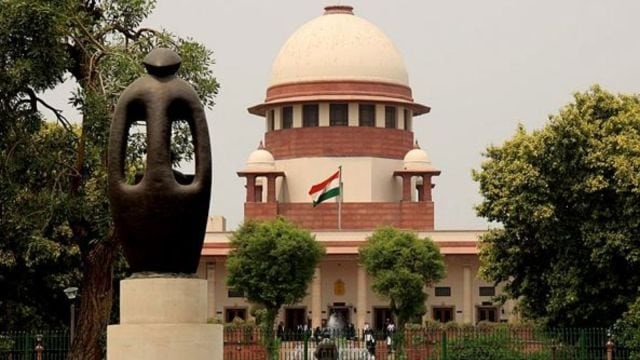
- 12 Feb 2025
In News:
Article 22 of the Indian Constitution, enshrined in Part III under Fundamental Rights, provides critical safeguards to individuals against arbitrary arrest and detention. It ensures that liberty is not curtailed without adherence to due process. These rights are applicable to all individuals—citizens and non-citizens—except enemy aliens and those under preventive detention laws.
Key Provisions of Article 22:
- Article 22(1): No person who is arrested shall be detained without being informed of the grounds for such arrest. The arrestee has the right to consult and be defended by a legal practitioner of their choice.
- Article 22(2): The arrested person must be produced before the nearest magistrate within 24 hours of arrest (excluding travel time). Further detention without magistrate’s approval is unconstitutional.
- Article 22(3): The above protections do not apply to:
- Enemy aliens.
- Persons detained under preventive detention laws.
- Article 22(4): Preventive detention cannot exceed three months unless approved by an Advisory Board comprising judges of a High Court.
- Article 22(5): The detained individual must be informed of the grounds of detention and given a chance to make a representation against it.
- Article 22(6): Authorities may withhold facts if disclosure is deemed against public interest.
- Article 22(7): Parliament may prescribe:
- Circumstances under which detention can extend beyond three months without Advisory Board opinion.
- Maximum period of detention.
- Advisory Board procedure.
Supreme Court Ruling: Mandatory Compliance with Article 22(1)
In a recent landmark judgment, the Supreme Court reaffirmed that non-disclosure of grounds of arrest violates Articles 22(1) and 21, rendering such arrests illegal.
A bench comprising Justices A.S. Oka and N.K. Singh ruled that the obligation to inform an arrested person of the grounds of arrest is not a mere formality but a constitutional mandate. Failure to do so deprives the individual of liberty without due process, violating the fundamental rights under Article 21 (Right to Life and Liberty) as well.
Key observations of the Court:
- Communication of Arrest Grounds: The arrested individual must be informed “as soon as may be” after arrest in a language and manner understandable to them. Merely mentioning grounds in the remand report or charge sheet does not satisfy Article 22(1).
- Written Communication Preferred: While not mandatory, providing the grounds of arrest in writing is encouraged to avoid controversy and ensure clarity (as suggested earlier in Pankaj Bansal v. Union of India).
- Duty of Magistrate: At the time of remand, the magistrate must verify if Article 22(1) compliance has occurred. If not, remand is unconstitutional, and the arrest stands vitiated.
- Burden of Proof: If the accused alleges non-compliance, the Investigating Officer bears the burden to prove that Article 22(1) was followed.
- Ground for Bail: Violation of Article 22(1) can itself be a ground for granting bail, even in cases where statutory restrictions exist.
- Communication to Relatives (CrPC Section 50A): Justice Singh emphasized that the grounds of arrest should also be conveyed to friends, relatives, or nominated persons of the arrestee. This facilitates immediate legal recourse to secure release, reinforcing the right to liberty under Article 21.
Conclusion:
The Supreme Court’s judgment marks a crucial reaffirmation of constitutional liberties. It ensures that procedural safeguards under Articles 21 and 22 are not diluted by executive convenience and establishes a higher standard of accountability in the process of arrest and detention in India.
M23 Rebellion
- 11 Feb 2025
In News:
The Democratic Republic of Congo (DRC) has once again become the epicenter of a severe humanitarian and geopolitical crisis. In early 2025, the M23 militia, a Tutsi-led rebel group allegedly backed by Rwanda, captured Goma, the capital of North Kivu province.
This strategic and mineral-rich city lies on the eastern border with Rwanda and has historically been a flashpoint in the region. The recent offensive has escalated the violence, displacing over 7,00,000 people, killing more than 2,900, and risking a wider regional conflict.
Historical Roots of the Conflict
The current instability can be traced back to colonial and post-independence ethnic tensions in the Great Lakes region. Under German and Belgian colonial rule, power structures in Rwanda favored the minority Tutsi population, generating long-standing resentment among the Hutus. Following Rwanda’s independence in 1962, a Hutu-majority government took power, culminating in the 1994 Rwandan Genocide, where nearly 800,000 Tutsis and moderate Hutus were killed.
Post-genocide, around 2 million Hutus, including militia members responsible for the killings, fled into eastern Congo (then Zaire), leading to the formation of over 120 armed groups, including the Democratic Forces for the Liberation of Rwanda (FDLR), a Hutu militia. Rwanda intervened in Congo in 1996 and 1998, triggering the First and Second Congo Wars, which resulted in millions of deaths and regional destabilization.
Emergence and Role of M23
The M23 (March 23 Movement) was formed in 2012 by former fighters of the Tutsi-led National Congress for the Defence of the People (CNDP), who rebelled after accusing the DRC government of violating a 2009 peace deal meant to integrate them into the national army. Led by SultaniMakenga, M23 initially captured Goma in 2012 but retreated after international pressure.
Resurfacing in 2022, M23 cited non-implementation of the agreement and vowed to protect Tutsi interests against groups like the FDLR. Since then, they have gained control of key mining regions, particularly Rubaya, rich in coltan, a critical mineral used in electronic devices. The UN estimates that M23 earns $800,000 per month from coltan production taxes, indicating that economic motives are as significant as ethnic ones.
The 2025 Escalation
On January 27, 2025, M23 rebels entered Goma and seized control of the airport by the following evening. By January 30, they had captured the city despite sporadic resistance from government forces and allied militias. The group then began advancing southward towards Bukavu, the capital of South Kivu province. The UN has confirmed reports of Rwandan troop incursions into South Kivu, while Burundian forces have joined Congolese troops in resisting the offensive.
Regional Dynamics and Rwanda’s Involvement
The Congolese government, along with the UN and Western powers, accuses Rwanda of backing M23 militarily and logistically. A 2022 UN expert report provided "solid evidence" of Rwandan troops fighting alongside M23, though Rwanda continues to deny these allegations. President Paul Kagame justifies his government's position as defensive, blaming the DRC for its alliance with the FDLR, which threatens Tutsis across the region.
Neighboring Burundi, led by President ÉvaristeNdayishimiye, has warned that Rwanda’s ambitions could spark a wider war, even threatening Burundi’s sovereignty. Uganda, meanwhile, plays a balancing role—supporting Congolese efforts against Islamic State-linked militants, while allegedly allowing M23 safe haven, as per UN reports.
Strategic and Economic Importance of Goma
Goma is not just a city; it is a strategic trade and transport hub at the heart of the DRC’s mineral wealth, particularly coltan, of which the DRC supplies nearly 40% of the world’s demand. The region is crucial for smartphone and electronics manufacturing due to coltan’s utility in capacitors.
Thus, the control of Goma and surrounding territories represents not only a military advantage but also a significant economic resource for M23 and its alleged sponsors.
Humanitarian Impact and Global Concerns
The humanitarian toll of the conflict is staggering. With over a million people displaced since M23’s resurgence, the DRC’s fragile state apparatus is further strained. Corpses reportedly lay unburied in Goma after the assault, reflecting a deep crisis of governance, security, and human rights.
Given the ethnic complexities, resource conflicts, and regional rivalries, there are growing fears of the conflict escalating into a full-fledged regional war, drawing in Rwanda, Burundi, and Uganda.
India and the Middle East
- 10 Feb 2025
In News:
India's foreign policy has undergone a strategic shift towards West Asia, driven by imperatives of energy security, economic integration, and geopolitical balance.
The launch of theIndia-Middle East-Europe Economic Corridor (IMEC)at the G20 Summit 2023 marks a key initiative aimed at reshaping global trade while deepening India’s engagement with the Middle East and Europe.
Importance of the Middle East for India
- Energy Security:The Middle East supplies over 53% of India’s crude oil (as of January 2025). Long-term energy agreements, such as the LNG deal with Qatar (until 2048) and India-UAE green hydrogen MoUs, ensure stable energy flows. Strategic ties mitigate disruptions due to OPEC+ cuts and geopolitical tensions.
- Trade and Economic Ties: India’s trade with the Gulf Cooperation Council (GCC) reached USD 161.59 billion in FY 2023–24. The UAE is India’s third-largest trading partner, with exports worth USD 35.6 billion. A proposed India-GCC Free Trade Agreement and operationalization of IMEC can enhance regional integration.
- Diaspora and Remittances:Over 66% of India’s 1.34 crore NRIs live in Gulf nations. India was the world’s top remittance recipient in 2022, with USD 111 billion, a major share from the Middle East. Labor reforms in the region (e.g., Saudi Arabia’s Nitaqat) influence migrant welfare.
- Geopolitical and Strategic Autonomy: India balances relations across regional fault lines — Iran-Saudi and Israel-Arab states — while maintaining strategic autonomy. Defense cooperation includes naval exercises (e.g., Al-Mohed Al-Hindi with Saudi Arabia) and connectivity via Chabahar Port in Iran.
- Food and Maritime Security: The Gulf is a major destination for Indian agricultural exports (e.g., UAE imports worth USD 1.9 billion in FY 2022–23). Strategic waterways like the Red Sea and Arabian Sea are crucial for trade, though increasingly vulnerable to piracy and regional conflict.
IMEC: A Strategic Connectivity Corridor
- IMECenvisions linking India to Europe through the Middle East via multimodal transport and digital-energy corridors, bypassing the Suez Canal. It aims to counter China’s Belt and Road Initiative (BRI).
- Key stakeholders include India, UAE, Saudi Arabia, Jordan, Israel, and the EU. The Intergovernmental Framework Agreement (2024) lays the foundation for implementation, targeting USD 600 billion in infrastructure investment by 2027.
- Objectives include trade facilitation, supply chain diversification, digital connectivity, and green energy collaboration. However, the Israel-Gaza conflict and regional instability have delayed execution.
Challenges
- Energy volatility due to OPEC+ decisions and Red Sea disruptions.
- Geopolitical unrest in Yemen, Gaza, and Iran-Israel tensions.
- Maritime insecurity, with piracy and Houthi attacks raising shipping costs.
- Labor rights issues, including migrant exploitation.
- Strategic competition from China, with over USD 273 billion invested in the region since 2005.
Policy Recommendations
- Co-develop energy infrastructure (e.g., Saudi Aramco’s stake in Indian refineries).
- Diversify trade via an India-GCC FTA and sectoral cooperation (IT, defense, fintech).
- Enhance maritime and digital connectivity through IMEC and joint port development.
- Secure labor migration with skill pacts and expanded protection schemes.
- Strengthen counter-terrorism and defense cooperation, including intelligence sharing.
Conclusion
India’s West Asia strategy is multifaceted—balancing energy diplomacy, trade, diaspora ties, and strategic connectivity. IMEC offers a transformative opportunity to position India as a central link in global supply chains, but its success depends on stable regional geopolitics and coordinated implementation.
RBI Monetary Policy Committee (MPC) cuts Repo Rate
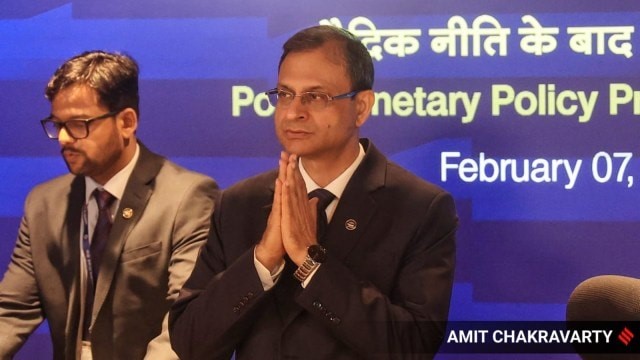
- 09 Feb 2025
In News:
In a landmark decision during its February 2025 meeting, the Reserve Bank of India’s (RBI) Monetary Policy Committee (MPC) reduced the repo rate by 25 basis points, from 6.5% to 6.25%, marking the first rate cut in five years (since May 2020). This move follows the Union Government’s recent cut in personal income tax, aimed at boosting consumption.
What is the Monetary Policy Committee (MPC)?
The MPC is a six-member statutory body responsible for setting India’s monetary policy. Its primary objective is price stability while ensuring economic growth. It meets bi-monthly to assess economic indicators and modify key policy rates like the repo rate, which influences overall borrowing and lending costs in the economy.
Key Highlights from the MPC Decision:
Repo Rate Cut:
- Reduced to 6.25% from 6.5%.
- Objective: Stimulate credit growth, investment, and consumer demand.
- Expected Impact: Lower EMIs for borrowers, reduced interest rates on EBLR and MCLR-linked loans.
GDP Growth Outlook (FY26):
- RBI projects 6.7% GDP growth for FY26.
- This is slightly higher than the FY25 estimate of 6.4%, and in line with the Economic Survey’s projection of 6.3–6.8%.
- Growth recovery is attributed to calibrated fiscal consolidation and stable private consumption.
Inflation Projections (CPI-based):
- FY26 Inflation Estimate: 4.2%
- Q1: 4.5%
- Q2: 4.0%
- Q3: 3.8%
- Q4: 4.2%
- CPI inflation had already dropped to 5.22% in December 2024, aided by easing food prices.
- RBI emphasized continued transmission of past policy measures and food price moderation as drivers of disinflation.
Broader Monetary Policy Context
- RBI will maintain a “neutral” policy stance to remain flexible amid evolving macroeconomic conditions.
- RBI Governor Sanjay Malhotra stressed that the inflation-targeting framework has helped stabilize prices, especially post-pandemic.
- The policy space was created by the simultaneous drop in inflation and moderate growth, allowing support for the economy without derailing price stability.
Cybersecurity & Digital Measures
- Additional Factor Authentication (AFA) introduced for international digital payments.
- Launch of exclusive domains:
- "bank.in" for Indian banks
- "fin.in" for the wider financial sector
These aim to bolster digital transaction security amid rising cyber fraud.
Forex & External Sector Outlook
- RBI reiterated that it does not target exchange rate levels, intervening only to curb excessive volatility.
- Ongoing global challenges include:
- Strengthening of the US dollar
- Higher bond yields
- Geopolitical tensions
- Threat of trade wars
- These have led to capital outflows, currency depreciation, and increased financial market volatility.
Conclusion
The RBI’s rate cut signals a strategic shift towards supporting economic growth amid global uncertainties. With a moderate inflation outlook and improving macroeconomic indicators, the decision is expected to boost domestic demand and investment, while reinforcing RBI’s commitment to price and financial stability.
India’s Pursuit of a Sovereign Foundational AI Model
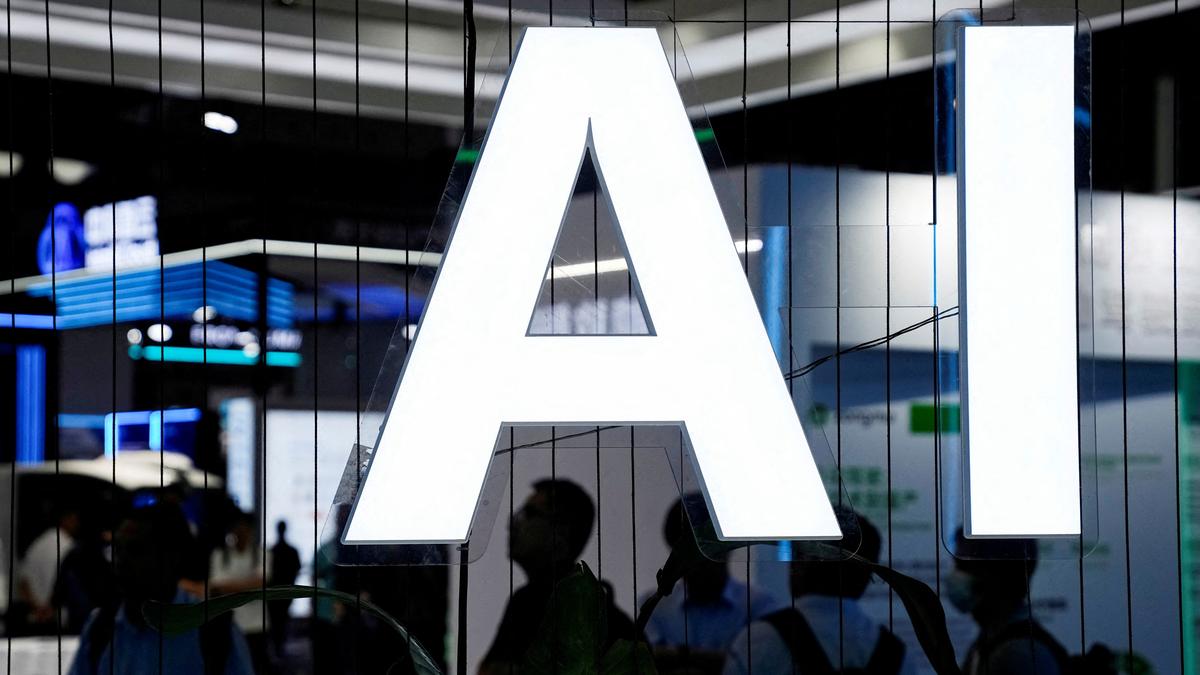
- 08 Feb 2025
In News:
As artificial intelligence (AI) reshapes global economic, strategic, and technological landscapes, the question of whether India should build its own sovereign foundational AI model has gained prominence. Sovereign AI models—developed, trained, and deployed using domestic infrastructure, datasets, and expertise—are now seen as strategic assets, with countries like the US and China already establishing their own. India, however, remains dependent on foreign AI giants such as OpenAI, Google DeepMind, and Meta.
Why India Needs a Sovereign AI Model
1. Data Sovereignty and Security: India generates one of the world’s largest data pools, including sensitive data from healthcare, finance, and governance. Using foreign-built AI models risks privacy breaches and potential misuse. A homegrown model would ensure control over data and ethical AI deployment.
2. Reducing Foreign Dependence: Sovereign AI is crucial for applications in defense, cybersecurity, and governance, where reliance on foreign technology may undermine strategic autonomy. Sanctions or export controls could otherwise disrupt access to essential technologies like GPUs or software updates.
3. Cultural and Linguistic Alignment: Current global AI models are largely English-centric. A sovereign model trained on Indian languages and datasets would bridge the digital divide and make AI more inclusive. Projects like AI4Bharat’s IndicTrans2 and Sarvam AI’s Sarvam-1, a multilingual model built with Nvidia, exemplify this direction.
4. National Security and Innovation: Sovereign AI is essential in military intelligence, predictive security, and surveillance. It also fosters an innovation ecosystem, generating high-skilled jobs and encouraging academic-industry collaboration.
Challenges in Building Foundational AI Models
1. Infrastructure Gaps: India lacks cutting-edge chip manufacturing capabilities. With no agreements with firms like TSMC, India relies on imports of GPUs and processors, unlike countries developing supercomputers (e.g., Denmark’s Gefion, Japan’s AI Grid).
2. High Development Costs: Training a large AI model can cost millions. DeepSeek V3, for instance, cost $5.6 million for a single run, while India’s annual AI R&D budget remains modest compared to Big Tech’s $80 billion.
3. Fragmented Resources: Subsidized GPUs are spread thin across institutions, diluting their impact. Meta’s Llama 4, for example, used large dedicated clusters—unfeasible under current Indian frameworks.
4. Public R&D Inefficiencies: Bureaucratic red tape discourages risk-taking needed in AI research. Unlike flexible spending in firms like OpenAI, Indian R&D lacks autonomy and long-term funding.
Policy Recommendations and Way Forward
- Invest in IndiaAI Mission: Develop a national AI infrastructure with over 10,000 GPUs, secure cloud systems, and supercomputing clusters to train and deploy large-scale models.
- Build DPI for AI Builders: Create datasets, APIs, and platforms to support data annotation, fine-tuning, and delivery in Indian contexts.
- Adopt a Phased Approach: Focus on sovereign models in sensitive sectors (defense, healthcare) while using global open models for non-critical applications.
- Promote Public-Private Collaboration: Forge partnerships with companies like Nvidia or OpenAI for technology transfer and joint ventures.
- Encourage Innovation Under Constraints: India must emulate models like Alibaba or DeepSeek, which succeeded with limited resources and targeted innovations.
Conclusion
Building a sovereign foundational AI model is not merely a technological ambition but a strategic necessity. With coordinated efforts between government, industry, and academia, India can achieve AI self-reliance—ensuring data sovereignty, inclusive growth, and a strong global presence in the AI-driven future.
MSMEs in India’s Economic Growth
- 07 Feb 2025
In News:
In the Union Budget 2025–26, the Finance Minister proposed a significant policy shift by increasing the investment and turnover limits for MSME classification by 2.5 and 2 times respectively. This move is expected to enhance the growth prospects and scalability of India’s micro, small, and medium enterprises (MSMEs).
Economic Significance:
The MSME sector forms the backbone of the Indian economy, contributing 30% to the GDP and nearly 45% to manufacturing output. With over 1 crore registered units employing 7.5 crore people, it is the largest source of non-agricultural employment in the country. It plays a pivotal role in inclusive development, offering livelihood opportunities to the rural, urban poor, and semi-skilled workforce.
The formalization drive has been significant, with over 4 crore MSMEs registered on the Udyam portal by March 2024. Key schemes like PM Vishwakarma Yojana (?13,000 crore) and Mudra Yojana (?5.41 lakh crore disbursed in FY24) have supported artisans and first-time entrepreneurs, particularly women and marginalized communities.
Boost to Trade and Innovation:
MSMEs account for 45.73% of India’s total exports in sectors like textiles, leather, and engineering goods. Their integration into Global Value Chains (GVCs) is being facilitated by reforms in trade logistics, the GeM portal, and PLI schemes. Digital transformation is advancing rapidly, with 72% MSME transactions now digital, supported by platforms like ONDC and the RBI’s Public Tech Platform.
Women and Rural Empowerment:
Women entrepreneurs constitute 20.5% of Udyam registrations, and 68% of Mudra loans benefit them. MSMEs are also catalyzing rural industrialization by promoting agro-processing and curbing rural-urban migration through schemes like the SRI Fund and Animal Husbandry Credit Guarantee Scheme.
Key Challenges:
Despite their potential, MSMEs face critical bottlenecks:
- Credit access remains limited; only 20% of units access formal finance. Payment delays amounting to ?10.7 lakh crore (2022) hinder working capital.
- Regulatory burdens, inadequate infrastructure, and poor digital skills further constrain productivity.
- Low awareness of schemes and limited integration into global ESG standards affect competitiveness.
- The sector remains largely informal, weakening labor rights and policy outreach.
Recent Reforms & Recommendations:
To unlock MSMEs’ potential, a multi-pronged reform strategy is underway:
- Credit Measures: Promotion of cash-flow based lending, expansion of CGTMSE, Vyapar Credit Cards, and enhanced TReDS-GeM integration.
- Ease of Doing Business: Single-window clearances, self-certification, and stronger MSME facilitation councils.
- Digital & Skill Upgradation: Launch of Digital MSME 2.0, apprenticeship hubs, and innovation incubators.
- Market Access: Expansion of cluster-based models, branding support, and ONDC-GeM integration.
- Green MSMEs: ESG-linked credit, circular economy incentives, and green certifications.
- Formalization Push: Linking benefits to Udyam registration, backed by SIDBI-led equity support.
Conclusion:
MSMEs are central to India’s vision of a $5 trillion economy and Viksit Bharat by 2047. With increased investment thresholds, focused policy interventions, and digital empowerment, India can build a resilient, inclusive, and globally competitive MSME ecosystem.
Mental Health in India: Budget 2025–26

- 06 Feb 2025
In News:
The Union Budget 2025–26 marks a pivotal step towards strengthening mental health infrastructure in India. An allocation of ?99,858.56 crore to the Ministry of Health and Family Welfare (MoHFW) highlights the government’s recognition of health, including mental health, as a key pillar of national development.
Key Budgetary Allocations for Mental Health (2025–26)
- National Tele Mental Health Programme (NTMHP): Allocated ?79.6 crore to expand access to mental health services across the country.
- National Institute of Mental Health and Neurosciences (NIMHANS): Receives support to enhance research and treatment capacity.
- District Mental Health Programme: Implemented in 767 districts, providing training and outpatient services.
- Ayushman Arogya Mandirs: Over 1.73 lakh SHCs and PHCs are being upgraded to offer mental health services under comprehensive primary care.
Mental Health in India: Status and Burden
- As per WHO, mental health is the ability to realize one’s potential, cope with stress, work productively, and contribute to the community.
- India's Burden:
- 15% of adult Indians experience mental disorders (National Survey).
- Mental morbidity is highest in urban metros (13.5%), followed by rural areas (6.9%) and non-metro urban zones (4.3%).
- Global Burden (2019): Around 970 million people globally suffered from mental disorders, notably anxiety and depression.
- Treatment Gap: Estimated at 70% to 92%, particularly acute among blue-collar workers.
- Economic Impact: Mental health disorders result in significant productivity losses, often surpassing the direct cost of care.
Challenges in Mental Health Care in India
1. Budgetary and Policy Limitations
- The National Mental Health Programme (NMHP) faces funding ambiguities, often subsumed under broader health allocations.
- Limited enforcement of Mental Healthcare Act, 2017, despite mental health being a statutory right. Over 11 crore Indians suffer from mental disorders, yet 80% do not seek help.
2. Exclusion in Labour Laws
- The Occupational Safety, Health and Working Conditions Code (OSHWC), 2020, primarily covers physical safety. Mental health is not explicitly recognized.
- Phrases like “as far as reasonably practicable” limit employers’ obligations.
- The Code on Social Security (CSC), 2020, does not list mental strain as an occupational disease, making compensation for stress-induced conditions difficult.
3. Neglect of Blue-Collar Mental Health
- Mental health risks—long hours, poor conditions, job insecurity—affect blue-collar workers disproportionately.
- Workplace mental health programs (e.g., Infosys HALE, TCS EAP) are mainly for white-collar employees.
- Tele-MANAS, a government mental health helpline, requires voluntary calls. Low awareness and stigma among blue-collar workers dilute its effectiveness.
Policy and Structural Reforms Needed
- Legislative Frameworks:
- Amend OSHWC and CSC to explicitly include mental well-being and stress-related injuries as compensable conditions.
- Update the Third Schedule of the CSC to include mental health conditions, reducing dependence on case law.
- Awareness and Education:
- Launch mandatory employer-led awareness campaigns on programs like Tele-MANAS and Manodarpan.
- Community-based programs for early detection, support, and referral of mental health disorders.
- Inclusive and Tripartite Approach:
- Integrate employers, blue-collar workers, and mental health professionals into a unified framework under the new Labour Codes.
- Incorporate mental health indicators into occupational safety audits.
- Institutional Strengthening:
- Increase capacity-building efforts by training frontline health workers, general physicians, and non-specialist cadres in mental healthcare.
- Establish Centres of Excellence for mental health training and research.
Global and National Initiatives
- WHO Comprehensive Mental Health Action Plan (2013–2030): Focuses on integrating mental health into primary care and strengthening community-level interventions.
- Manodarpan Initiative: Aims at student mental health support under Atmanirbhar Bharat.
- Kiran Helpline: Government-run suicide prevention helpline for crisis support.
- Tele-MANAS Cells: 53 centers operational in 36 States/UTs, enhancing digital mental health care access.
Conclusion and Way Forward
The 2025–26 Budget reflects a progressive approach to mental health, particularly through investments in tele-counselling, primary care, and institutional support. However, significant gaps remain in policy, especially in addressing the mental health needs of blue-collar workers.
To transform “Satyamev Jayate” to “Shramev Jayate,” India must:
- Institutionalize rights-based mental health protection in labour legislation.
- Close the treatment gap through universal access and community-level awareness.
- Recognize mental health as integral to human capital and national productivity.
Only a comprehensive, inclusive, and rights-oriented approach will ensure mental health equity in India’s development journey.
Rapid Glacial Retreat in Arunachal Pradesh
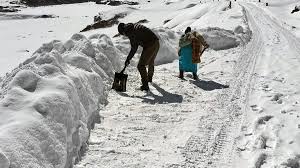
- 05 Feb 2025
In News:
A recent scientific study has revealed that the eastern Himalayas in Arunachal Pradesh have lost 110 glaciers between 1988 and 2020, highlighting a critical impact of climate change in the region.
Key Findings of the Study
- Glacier Loss: The number of glaciers declined from 756 to 646 over 32 years.
- Glacial Area Reduction: Total glacial cover reduced from 585.23 sq. km to 309.85 sq. km, indicating a loss of over 47%.
- Retreat Rate: Glaciers retreated at a rate of 16.94 sq. km per year.
- Elevation: Most glaciers were located at 4,500–4,800 metres above mean sea level on north-facing slopes of 15°–35°.
- Remote Sensing & GIS: The study used advanced tools along with the Randolph Glacier Inventory to track and analyze glacier boundaries.
- Glacial Lakes: Retreat has led to the formation of numerous glacial lakes, increasing the risk of Glacial Lake Outburst Floods (GLOFs), as seen during the 2023 Sikkim disaster which killed at least 55 people and damaged a 1,200 MW Teesta hydropower project.
Causes of Glacial Retreat
- Climate Change:
- The eastern Himalayas are warming faster than the global average.
- Temperature rise: Between 0.1°C and 0.8°C per decade.
- Over the last century, the region has experienced an increase of ~1.6°C.
- By 2100, projections indicate a 5–6°C temperature rise and 20–30% increase in precipitation.
- Black Carbon Deposition: Emissions from human activities (e.g., vehicles, biomass burning) deposit soot on ice, reducing reflectivity (albedo) and increasing heat absorption.
- Erratic Snowfall Patterns: Changes in precipitation reduce snow accumulation, weakening glacier sustenance.
- Geological Factors: Local topography, altitude, and rock composition also influence glacier stability and response to warming.
Implications of Glacial Retreat
- Water Security
- The Himalayas are known as the ‘Third Pole’, storing the largest volume of ice outside the polar regions.
- They are vital for sustaining over 1.3 billion people in South Asia by feeding major rivers (Indus, Ganga, Brahmaputra).
- Glacial retreat threatens long-term freshwater availability, agriculture, and urban water supplies.
- Hydropower and Infrastructure
- Changing river flow patterns due to glacial melt affect hydropower generation and irrigation systems.
- Risk of infrastructure damage from GLOFs is rising.
- Biodiversity and Agriculture: Altered ecosystems and climatic stress impact Himalayan biodiversity and disrupt traditional farming practices.
Himalayan Glaciers and River Systems
- Indus Basin: Originates from Lake Mansarovar; flows through Ladakh and Pakistan.
- Ganga Basin: Emerges from Gangotri Glacier in Uttarakhand; forms the Ganga after merging with Alaknanda.
- Brahmaputra Basin: Rises near Kailash range in Tibet; flows through Arunachal Pradesh, Assam, and Bangladesh.
Major Glaciers in India
Glacier Region Importance
Siachen Ladakh Longest glacier in India (76 km)
Gangotri Uttarakhand Source of the Ganga
Yamunotri Uttarakhand Origin of the Yamuna
Zemu Sikkim Largest glacier in Eastern Himalayas
Rathong Sikkim Feeds Teesta River
Milam Uttarakhand Source of Goriganga River
Pindari Uttarakhand Glacial trekking route
Glacial Lake Outburst Floods (GLOFs)
- GLOFs are sudden discharges of water from glacial lakes, often caused by moraine dam failures.
- These can trigger catastrophic downstream floods, threatening lives, infrastructure, and ecosystems.
Mitigation and Adaptation Strategies
- Climate Action: Drastic cuts in greenhouse gas emissions at national and global levels.
- Sustainable Water Management: Enhance glacier-fed river basin planning.
- Disaster Risk Reduction: GLOF early-warning systems, resilient infrastructure, and relocation policies.
- Community Participation: Local awareness, traditional knowledge integration, and eco-restoration efforts.
- International Cooperation: Transboundary initiatives under frameworks like the HKH (Hindu Kush Himalaya) Monitoring Network and UNFCCC.
RBI’s Liquidity Infusion of ?1.5 Lakh Crore
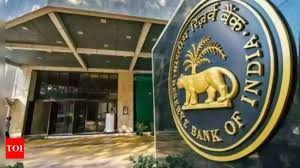
- 04 Feb 2025
In News:
In January 2025, the Reserve Bank of India (RBI) announced its largest monetary easing since the COVID-19 pandemic, unveiling a multi-pronged plan to inject over ?1.5 lakh crore into the money markets.
This move aims to address liquidity shortfalls caused by RBI’s forex interventions and signal possible easing in the upcoming monetary policy review.
Context: Why Liquidity Infusion Was Needed
- Forex Intervention: RBI sold over $50 billion from its foreign exchange reserves to stabilise the rupee, in response to large-scale equity sell-offs by Foreign Institutional Investors (FIIs).
- Impact: These interventions reduced rupee liquidity, tightened short-term interest rates, and raised borrowing costs.
- Liquidity Deficit: Market estimates pegged the shortfall at ?3 lakh crore.
Key Liquidity Measures Announced by RBI
- Government Bond Buy-Back: ?60,000 Crore
- Conducted in three tranches on January 30, February 13, and February 20, 2025.
- Objective: To inject liquidity into the banking system by repurchasing government securities before maturity.
- 56-Day Variable Rate Repo Auction: ?50,000 Crore
- Scheduled for February 7, 2025.
- Enables banks to borrow short-term funds by offering government securities as collateral at a market-determined interest rate.
- USD/INR Buy-Sell Swap Auction: $5 Billion
- A six-month forex swap in which RBI borrows dollars in exchange for rupees and agrees to buy them back later.
- Helps stabilize the rupee without draining rupee liquidity.
Significance of the Measures
- Monetary Transmission: With adequate liquidity, any potential repo rate cut will be more effectively transmitted through lower lending rates, boosting investment and consumption.
- Financial Stability: By calming money markets and moderating borrowing costs, RBI strengthens confidence amid global uncertainties.
- Rupee Management without Liquidity Squeeze: The forex swap allows rupee liquidity to remain intact while addressing exchange rate volatility.
Governor’s Focus Areas:
In a meeting with private sector bank heads ahead of the February monetary policy review, RBI Governor Sanjay Malhotra highlighted the following priorities:
- Financial Stability & Inclusion
- Enhanced Digital Literacy and Credit Access
- Improved Customer Service & Grievance Redressal
- Cybersecurity & IT Risk Management
- Monitoring of Third-party Service Providers
- Countering Rising Digital Fraud
Union Budget 2025–26
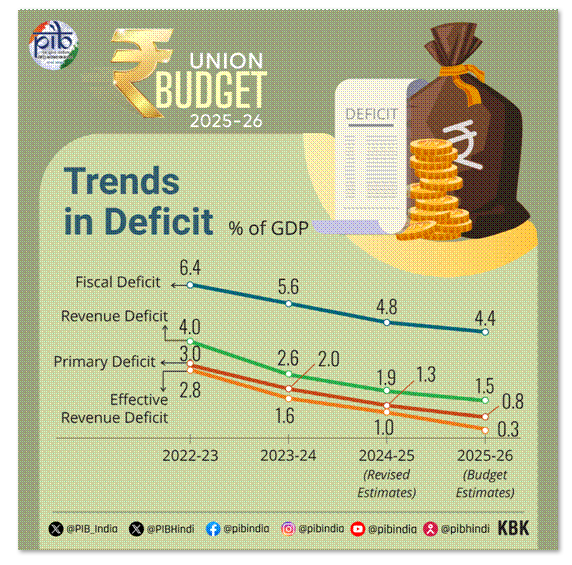
- 03 Feb 2025
In News:
Union Minister for Finance and Corporate Affairs Smt Nirmala Sitharaman presented Union Budget 2025-26 in the Parliament.
Key Highlights:
Fiscal Policy and Macroeconomic Indicators
- Total Expenditure: ?50.65 lakh crore
- Total Receipts (excl. borrowings): ?34.96 lakh crore
- Fiscal Deficit: 4.4% of GDP
- Gross Market Borrowing: ?14.82 lakh crore
- Capital Expenditure: ?11.21 lakh crore (3.1% of GDP)
Agriculture and Allied Sectors
- Prime Minister Dhan-Dhaanya Krishi Yojana: 100 low-productivity districts targeted; 1.7 crore farmers to benefit.
- Mission for Aatmanirbharta in Pulses: 6-year mission on Tur, Urad, and Masoor; NAFED/NCCF to procure for 4 years.
- Vegetables & Fruits Program: Comprehensive initiative for production, pricing, processing, and logistics.
- Makhana Board: New board in Bihar for production, value addition, and export.
- National Mission on High Yielding Seeds: To commercialize over 100 high-yielding seed varieties.
- Cotton Mission: 5-year initiative to boost productivity and Extra Long Staple (ELS) varieties.
- Fisheries: New EEZ and High Seas Framework focusing on Islands.
- Credit through KCC: Loan limit increased from ?3 lakh to ?5 lakh.
- Urea Plant in Assam: New plant at Namrup (12.7 lakh MT annual capacity).
MSMEs and Startups
- MSME Classification: Investment and turnover limits doubled (2.5x & 2x).
- Credit Cards for Micro Units: ?5 lakh limit; 10 lakh cards in year one.
- ?10,000 Cr Fund of Funds for Startups
- First-Time Entrepreneurs Scheme: Loans up to ?2 crore for 5 lakh women, SC/ST entrepreneurs.
- Footwear & Leather Sector Scheme: Aims ?4 lakh crore turnover and 22 lakh jobs.
- Toy Manufacturing Support: High-quality, eco-friendly toy ecosystem.
- Food Tech Institute: To be established in Bihar.
- National Manufacturing Mission: Across small, medium, and large units.
Infrastructure and Investment
- PPP Pipeline: 3-year project pipeline to be announced.
- ?1.5 lakh crore 50-year interest-free loans to states for CapEx.
- Urban Challenge Fund: ?1 lakh crore outlay; ?10,000 crore for FY26.
- Asset Monetization Plan 2025–30: Capital recycling worth ?10 lakh crore.
- Jal Jeevan Mission: Extended to 2028 with enhanced outlay.
- UDAN 2.0: Targeting 120 new destinations, 4 crore passengers in 10 years.
- Maritime Development Fund: ?25,000 crore; up to 49% govt contribution.
- Nuclear Energy Mission: ?20,000 crore outlay for Small Modular Reactors (SMRs).
- Greenfield Airports: Announced for Bihar.
Welfare and Social Security
- Saksham Anganwadi & Poshan 2.0: Enhanced nutritional cost norms.
- Medical Education: 10,000 new MBBS seats; 75,000 in 5 years.
- Day Care Cancer Centres: In all district hospitals; 200 in FY26.
- PM SVANidhi Revamp: ?30,000 UPI-linked credit cards.
- Online Platform Workers: E-Shram ID, PMJAY coverage.
- Urban Livelihood Scheme: For sustainable urban worker incomes.
Education and Skilling
- 50,000 Atal Tinkering Labs: Govt schools in 5 years.
- Bharatiya Bhasha Pustak Scheme: Digital books in Indian languages.
- National Skilling Centres of Excellence: With global partners.
- AI in Education: Centre of Excellence with ?500 crore outlay.
- IIT Expansion: Additional capacity for 6,500 students.
Innovation and R&D
- ?20,000 crore Innovation Fund (private-led R&D).
- Deep Tech Fund of Funds: For next-gen startups.
- PM Research Fellowships: 10,000 fellowships with higher support.
- 2nd Gene Bank: 10 lakh germplasm lines for food security.
- National Geospatial Mission
- Gyan Bharatam Mission: Conservation of 1 crore+ manuscripts.
Exports and Trade
- Export Promotion Mission: With ministerial and sectoral targets.
- BharatTradeNet (BTN): Unified platform for trade finance and docs.
- GCC Framework: Promote Global Capability Centres in Tier-2 cities.
Financial Sector Reforms
- FDI in Insurance: Raised from 74% to 100% for domestic investment.
- NaBFID Credit Enhancement Facility: For infra bonds.
- Grameen Credit Score: For SHGs and rural borrowers.
- Investment Friendliness Index: To rank states in 2025.
- Jan Vishwas Bill 2.0: Decriminalization of 100+ provisions.
- Tonnage Tax Extended: To inland vessels.
- Startups: Tax benefit eligibility extended to incorporation by 1 April 2030.
Taxation Reforms
Direct Taxes
- No Personal Tax: Income up to ?12 lakh (?12.75 lakh for salaried) under new regime.
- Revised Tax Slabs (New Regime):
- 0–4L: Nil | 4–8L: 5% | 8–12L: 10%
- 12–16L: 15% | 16–20L: 20% | 20–24L: 25% | 24L+: 30%
- Standard Deduction: ?75,000
- Compliance Relief: Trusts registration extended to 10 years.
- TDS/TCS Rationalization: Fewer thresholds, higher limits for senior citizens and rent.
- Tax Certainty: Safe harbour rules, startup extensions, presumptive taxation for electronics.
Indirect Taxes
- Tariff Rationalization: Only 8 remaining tariff rates.
- Customs Relief: ?2,600 crore forgone, key lifeline drugs exempted.
- Support to Domestic Manufacturing:
- EV/mobile battery manufacturing: 63 capital goods exempted
- Ships: BCD exemption extended for 10 years
- Marine, leather, textiles: Several BCD reductions/exemptions
- Voluntary Compliance Scheme: Without penalty for post-clearance corrections.
Geo-Economic Fragmentation (GEF)
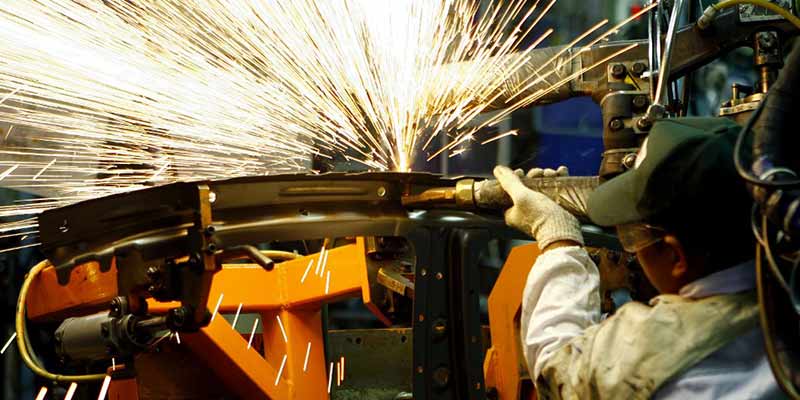
- 02 Feb 2025
In News:
Geo-economic fragmentation refers to a policy-driven reversal of global economic integration, increasingly shaped by geopolitical alignments. It signifies a shift from globalization to strategically-driven economic blocs, where nations prioritize political alliances over market efficiency.
Key Characteristics
- Emergence of friend-shoring, re-shoring, and economic nationalism.
- Fragmentation of trade, capital flows, FDI, and migration.
- Retreat from multilateralism, with institutions like the WTO and IMF under stress.
- Strategic use of environmental, labor, and social standards by developed countries to impose uniform regulations, causing tensions.
Globalization to Fragmentation: Statistical Evidence
- Trade-to-GDP Ratio: Increased from 39% (1980) to 60% (2012); now threatened by rising protectionism.
- FDI Inflows: Rose from $54 billion (1980) to $1.5 trillion (2019); now increasingly concentrated among like-minded countries.
- Global Economy: Expanded from $11 trillion (1980) to over $100 trillion (2022).
- Trade Restrictions (WTO Report):
- 2023–24: 169 new measures covering $887.7 billion in trade.
- 2022–23: Covered $337.1 billion — shows a dramatic rise in protectionism.
- Over 24,000 new trade and investment restrictions imposed globally between 2020–24.
IMF on Costs of GEF
- Trade fragmentation could cause 0.2% to 7% GDP losses, especially for developing countries.
- Current fragmentation is more costly than Cold War era, as trade now constitutes 45% of global GDP (vs. 16% then).
- Less trade = less knowledge diffusion, innovation, and productivity gains.
Strategic Impacts: Global Supply Chains
China’s Dominance
- 80% of global battery manufacturing.
- 80% of solar panel components.
- 60% of wind turbine capacity.
- 70% of global rare earth mineral processing.
- Dominates EV supply chains, critical mineral refining, and clean energy manufacturing.
FDI Realignment
- FDI is increasingly relocating from China to India, Vietnam, Mexico, etc.
- Friend-shoring reduces capital access for emerging markets.
- Emerging economies face reduced FDI, slower growth, and technological decoupling.
India’s Strategic Response: Deregulation and Internal Growth
Policy Recommendations (Economic Survey 2024–25)
- Amplify deregulation to lower compliance costs and boost entrepreneurship.
- Empower SMEs to withstand global shocks and strengthen domestic manufacturing.
- Encourage inter-state learning for best practices in economic governance.
- Redouble efforts to boost exports and foreign investment amidst global volatility.
Rationale
- With the decline of global cooperation, internal engines of growth become crucial.
- Deregulation can unleash innovation, enhance productivity, and ensure resilient growth.
- India's response must be strategic, systematic, and state-inclusive to capitalize on this global transition.
Economic Survey 2024–25
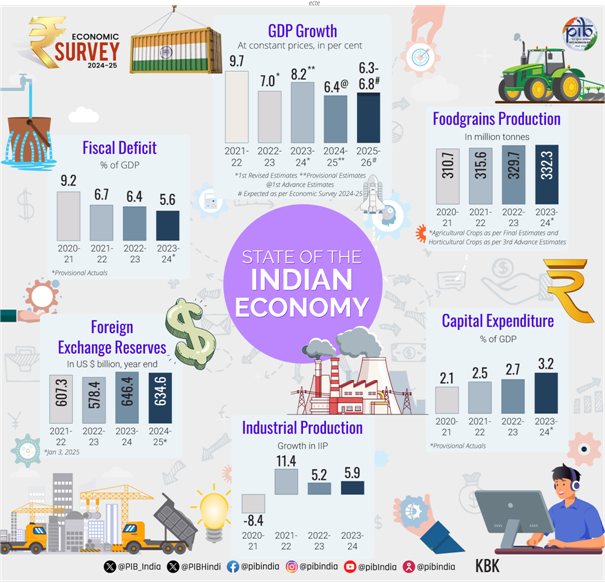
- 01 Feb 2025
In News:
- Released on 31st January 2025, a day before the Union Budget.
- Prepared by the Department of Economic Affairs, Ministry of Finance.
- Provides a comprehensive review of India’s macroeconomic trends, sectoral developments, and key policy challenges.
- Real GDP growth estimated at 6.4% in FY25 (close to decadal average); projected between 6.3–6.8% in FY26.
- Reflects India's resilience amidst global slowdown, supply chain disruptions, and geopolitical uncertainties.
Sector-wise Performance
Agriculture:
- Expected growth: 3.8% in FY25.
- Record Kharif foodgrain production: 1647.05 LMT (+5.7% YoY).
- Growth driven by horticulture, livestock, and fisheries.
- Supported by above-normal monsoons and robust reservoir levels.
Industry:
- Estimated growth: 6.2% in FY25.
- Construction, utilities, and mining contribute significantly.
- Challenges: Sluggish export demand, climate disruptions, and festival timing variations.
- Manufacturing PMI remains in the expansionary zone.
Services:
- Robust growth: 7.2% in FY25.
- Services exports up by 12.8% (April–Nov FY25) vs 5.7% in FY24.
- Growth led by finance, real estate, public administration, and professional services.
Inflation and Price Stability
- Retail inflation eased to 4.9% (Apr–Dec 2024) from 5.4% (FY24).
- Food inflation remains high at 8.4%, driven by pulses and vegetables.
- CPI expected to align with RBI's 4% target by FY26.
Investment and Infrastructure
- Capital Expenditure grew 8.2% YoY (Jul–Nov 2024); sustained increase since FY21.
- Infrastructure momentum:
- 2031 km railways commissioned (Apr–Nov 2024).
- 17 Vande Bharat trains introduced.
- Port efficiency improved; container turnaround time reduced from 48.1 to 30.4 hours.
- Renewable energy capacity rose by 15.8% YoY (Dec 2024).
External Sector and Trade
- Overall exports grew by 6% (Apr–Dec 2024); merchandise exports up 1.6%.
- Services exports surged; India now 7th largest globally.
- FDI inflows: $55.6 billion (Apr–Nov FY25), +17.9% YoY.
- Forex reserves at $640.3 billion (Dec 2024), covering 10.9 months of imports and 90% of external debt.
- CAD contained at 1.2% of GDP in Q2 FY25.
- Strong remittance inflows support BOP stability.
Fiscal Health
- Gross Tax Revenue rose 10.7% YoY (Apr–Nov 2024).
- Stable deficit indicators allowed for developmental expenditure.
- State revenue expenditure grew 12%, with subsidies increasing by 25.7%.
Banking, Credit, and Financial Markets
- Gross NPAs dropped to 2.6% (lowest in 12 years).
- CRAR of scheduled banks at 16.7% (Sept 2024), well above regulatory norms.
- Stock market cap to GDP ratio: 136%, higher than China (65%) and Brazil (37%).
- Credit-GDP gap reduced to -0.3% in Q1 FY25 (from -10.3% in Q1 FY23).
Employment and Labour Market
- Unemployment rate declined to 3.2% (2023-24) from 6.0% (2017-18).
- Labour Force Participation Rate (LFPR) and Worker-Population Ratio (WPR) improved.
- Emphasis on AI skill development to future-proof labour markets.
Health, Education & Social Sector
- Government health expenditure rose from 29% to 48% of total health spending (FY15–FY22).
- Out-of-pocket expenditure dropped from 62.6% to 39.4% in the same period.
- Education reforms aligned with NEP 2020 via programs like Samagra Shiksha, DIKSHA, PM SHRI, etc.
- Social services spending grew at 15% CAGR (FY21–FY25).
- Decline in Gini coefficient indicates improving consumption equality.
Policy Recommendations and Reform Agenda
- Deregulation as central theme to boost productivity and EoDB.
- Advocates Ease of Doing Business 2.0, led by states, targeting:
- Simplification of compliance norms.
- Risk-based regulation.
- Reduction in tariffs and licensing hurdles.
- ?50,000 crore Self-Reliant India Fund launched for MSME equity support.
- Need for long-term infrastructure investment to achieve Viksit Bharat@2047.
Global Backdrop
- Global GDP grew by 3.3% in 2023, with an average 3.2% growth projected over next five years (IMF).
- Weak global manufacturing; services sector remains stronger.
- Risks: Geopolitical tensions, trade policy fragmentation, energy transition dependence on China.
Way Forward
- Balanced outlook for FY26 with upside from:
- Strong rural demand.
- Agricultural recovery.
- Easing food inflation.
- Challenges include:
- Geopolitical tensions.
- Global trade and commodity price volatility.
- Delay in private investment materialisation.
Darfur Crisis: Humanitarian Emergency in Western Sudan
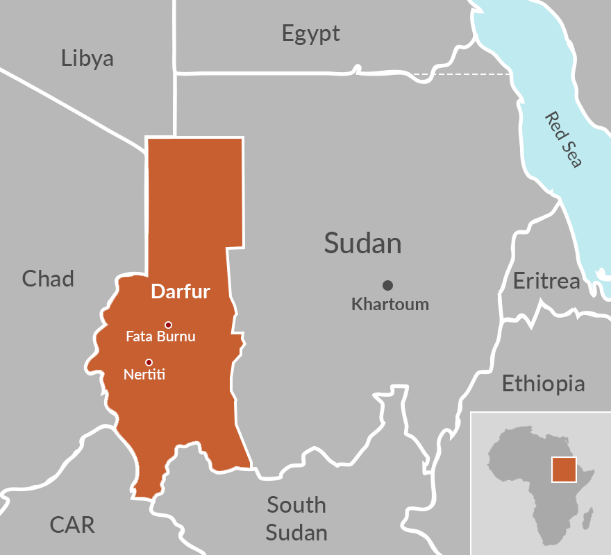
- 31 Jan 2025
Context:
Sudan’s Darfur region is once again in global focus following a deadly drone attack on the last functional hospital in El-Fasher, killing at least 67 people and injuring dozens. The International Criminal Court (ICC) has called for urgent UN Security Council intervention as the humanitarian situation deteriorates.
Geographical and Historical Background
- Location: Western Sudan, bordering Chad, Libya, Central African Republic, and South Sudan.
- Area: Approximately 493,000 sq. km, nearly the size of France.
- Topography: Predominantly arid and semi-arid terrain, with desert in the north and savanna in the south. Key physical features include:
- Jebel Marra Mountains: Volcanic highlands and key water source.
- Wadi Howar: Seasonal river vital for agriculture.
- Baggara Belt: Grazing zone, often contested.
- Historical Significance: Once an independent Islamic sultanate ruled by the Fur tribe, Darfur was annexed by Anglo-Egyptian Sudan in 1916. The name "Darfur" means "land of the Fur" in Arabic.
Ethnic Composition and Demographics
- Home to over 80 ethnic groups, including the Fur, Zaghawa, Beja, Nubians, and Arabs.
- Long-standing ethnic tensions exist between Arab nomadic groups and non-Arab farming communities, which have been a root cause of conflict.
Conflict Timeline and Key Actors
- Conflict Origins: Armed conflict began in 2003, led by rebel groups such as the Sudan Liberation Movement (SLM) and Justice and Equality Movement (JEM), demanding political autonomy and better representation.
- Government Response: The Sudanese government armed Janjaweed militias—now rebranded as the Rapid Support Forces (RSF)—who were accused of widespread atrocities, including genocide, mass killings, and rape.
- Recent Escalation:
- In 2023, violence surged amid civil war between Sudan's national army and RSF.
- RSF has seized much of Darfur and has besieged El-Fasher, capital of North Darfur, since May 2023.
- A January 2025 drone attack destroyed the Saudi Hospital in El-Fasher, killing 67 people. The hospital was one of the last with surgical capacity in the region.
Humanitarian Impact
- Health Crisis:
- 80% of healthcare facilities in Sudan are non-functional.
- Attacks on medical infrastructure have been rampant; El-Fasher’s Saudi Hospital was hit multiple times by suspected RSF drones.
- Displacement and Starvation:
- Over 12 million people displaced.
- Tens of thousands killed.
- Famine has already gripped camps like Zamzam, Abu Shouk, and Al-Salam, and is expected to spread to additional regions, including El-Fasher, by May 2025 (UN Assessment).
Global and Regional Implications
- The Darfur conflict has destabilized the region, affecting neighboring countries like Chad and the Central African Republic.
- ICC has issued warrants for several individuals including former President Omar al-Bashir, citing war crimes and crimes against humanity.
- The conflict highlights the intersection of climate stress, ethnic rivalries, political marginalization, and international accountability failures.
ASER 2024
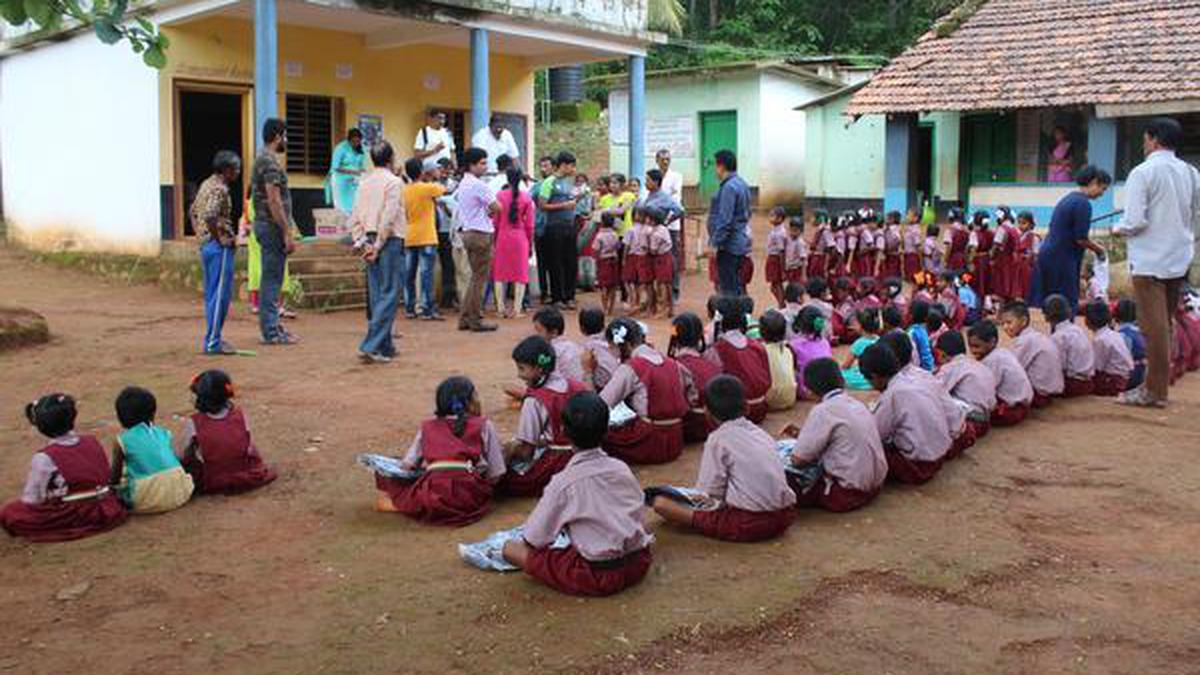
- 30 Jan 2025
In News:
The Annual Status of Education Report (ASER) 2024, released by the NGO Pratham, provides an insightful assessment of schooling and foundational learning levels across rural India.
Conducted in 17,997 villages across 605 districts, the survey reached over 6.49 lakh children aged 3–16 and tested more than 5 lakh for reading and arithmetic.
About ASER:
- Type: Household-based, citizen-led survey
- Initiated: 2005 (Annual till 2014; biennial since 2016)
- Scope:
- Tracks school enrollment (ages 3–16)
- Assesses basic reading and arithmetic skills (ages 5–16)
- Includes children in and out of school, across government, private, and informal institutions
- 2024: Introduced digital literacy assessment for ages 14–16
Key Findings of ASER 2024:
1. Enrollment Trends
- Pre-primary (Ages 3–5):
- Overall enrollment improved significantly.
- 3-year-old enrollment rose from 68.1% in 2018 to 77.4% in 2024.
- Anganwadis remain primary providers for 3–4-year-olds, while private preschools dominate among 5-year-olds.
- Elementary (Ages 6–14):
- Overall enrollment slightly declined from 98.4% (2022) to 98.1% (2024).
- Government school enrollment fell from 72.9% (2022) to 66.8% (2024).
- Private school enrollment, steadily rising since 2006, is regaining ground post-pandemic.
- Adolescents (Ages 15–16):
- Dropout rates fell from 13.1% in 2018 to 7.9% in 2024.
- However, female dropout (8.1%) remains higher than male.
2. Learning Outcomes
- Reading Skills:
- Std III: 23.4% in government schools could read Std II-level text (up from 16.3% in 2022).
- Std V: 44.8% could read Class II text, nearly matching 2018 levels (44.2%).
- Private schools yet to recover fully to pre-pandemic levels (59.3% in 2024 vs. 65.1% in 2018).
- Arithmetic Skills:
- Std III: 33.7% could perform basic subtraction (up from 25.9% in 2022, exceeding 28.2% in 2018).
- Std VIII: 45.8% could solve basic problems, showing consistent improvement.
Trend: Arithmetic recovery has outpaced reading, with government schools showing faster gains than private ones.
3. Digital Literacy (Ages 14–16)
- Access: Nearly 90% have access to smartphones.
- Ownership:
- 36.2% of boys own smartphones vs. 26.9% of girls.
- Usage:
- 82.2% use smartphones; only 57% for education, but 76% for social media.
- Safety Awareness:
- 62% know how to block/report users, and 55.2% can make profiles private.
4. School Infrastructure & Observations
- Attendance:
- Student attendance improved from 72.4% (2018) to 75.9% (2024).
- Teacher attendance rose from 85.1% to 87.5% in the same period.
- Facilities:
- Usable girls' toilets increased from 66.4% to 72%.
- Drinking water availability rose from 74.8% to 77.7%.
- Playground access remains stable (~66%).
- Learning Resources:
- Use of non-textbook reading materials (e.g., stories, folk tales) rose from 36.9% to 51.3%.
- Foundational Literacy and Numeracy (FLN):
- 80%+ of schools implemented FLN activities.
- 75% had at least one FLN-trained teacher.
Significance of Elementary Education:
- Foundational for Learning: Builds core skills vital for academic progression.
- Social Development: Encourages interaction, empathy, teamwork, and communication.
- Emotional and Cognitive Growth: Stimulates curiosity, motivation, and self-confidence.
- Economic Multiplier: Strong early education contributes to long-term national productivity and innovation.
Persistent Challenges:
- Infrastructure Deficits:
- Over 1.5 lakh schools lack functional electricity.
- 67,000 schools lack toilets; only 33.2% have usable disabled-friendly toilets.
- Technology Divide: Only 43.5% of government schools have computers vs. 70.9% in private schools.
- Human Resource Gaps: Around 1 lakh schools function with only one teacher.
- Social Barriers:
- Caste, class, rural-urban, and gender divides restrict equal educational access.
- Language barriers affect non-Hindi/English speakers due to lack of regional textbooks.
Key Government Initiatives:
- National Education Policy (NEP) 2020
- PM SHRI Schools
- Sarva Shiksha Abhiyan
- Mid-Day Meal Scheme
- Beti Bachao Beti Padhao
- National Programme on Technology Enhanced Learning (NPTEL)
- PRAGYATA (Guidelines for digital education
Way Forward:
- Early Interventions: Focus on retention among disadvantaged groups.
- Inclusive Learning Models: Introduce flexible/part-time programs for working children.
- Supplementary Literacy: Target out-of-school and dropout children with bridge courses.
- Local Governance: Establish District School Boards for planning and accountability.
- Infrastructure Expansion: Ensure school access within 1 km in underserved regions.
- Parental Awareness: Launch community campaigns on education's long-term benefits.
Union Budget: understanding its formulation and implications

- 29 Jan 2025
What is the Union Budget?
The Union Budget, referred to as the Annual Financial Statement under Article 112 of the Constitution, outlines the government's estimated receipts and expenditure for a financial year. It serves as a crucial instrument for economic policy and governance.
The Budget Division of the Department of Economic Affairs under the Ministry of Finance is responsible for preparing the Union Budget.
Key Components of the Budget
1. Expenditure
Expenditure is classified on the basis of:
- Asset Creation and Liability Reduction:
- Capital Expenditure: Increases assets or reduces liabilities (e.g., infrastructure, hospitals).
- Revenue Expenditure: Does not create assets (e.g., salaries, subsidies, interest payments).
- Sectoral Impact:
- General Services: Administrative functions, defence, interest payments.
- Economic Services: Agriculture, transport, rural development, etc.
- Social Services: Education, health, welfare.
- Grants-in-Aid and Contributions.
Development Expenditure = Economic Services + Social Services, and it too can be capital or revenue in nature.
2. Receipts
Government receipts are classified into:
- Revenue Receipts: Do not create liabilities (e.g., tax and non-tax revenues).
- Non-Debt Capital Receipts: Do not involve liabilities (e.g., loan recovery, disinvestment).
- Debt-Creating Capital Receipts: Involve future liabilities (e.g., borrowings).
3. Deficit Indicators
- Fiscal Deficit = Total Expenditure - (Revenue Receipts + Non-Debt Capital Receipts)
- Primary Deficit = Fiscal Deficit - Interest Payments
- Revenue Deficit = Revenue Expenditure - Revenue Receipts
Fiscal deficit reflects the net borrowing requirement of the government.
Implications of the Budget on the Economy
1. Aggregate Demand
- Government Expenditure boosts aggregate demand.
- Tax and Non-Tax Revenue reduces disposable income, thereby contracting demand.
Policy Interpretations:
- Expansionary Fiscal Policy: Rise in expenditure-GDP ratio, increase in fiscal deficit.
- Contractionary Fiscal Policy: Increase in revenue-GDP ratio, reduction in fiscal deficit.
2. Income Distribution
- Revenue expenditure like food subsidies or MGNREGA supports lower-income groups.
- Corporate tax concessions benefit businesses. Both may increase deficits but differ in their distributional impact.
Fiscal Rules and Their Role
Fiscal rules define policy targets to maintain macroeconomic stability. They guide the government’s borrowing and spending behaviour.
Current Framework in India
India’s fiscal framework is guided by the N.K. Singh Committee Report, which recommended:
- Stock Target: Maintain a specific Debt-to-GDP ratio.
- Flow Target: Limit Fiscal Deficit-to-GDP ratio.
- Composition Target: Maintain Revenue Deficit-to-GDP ratio.
Challenges in Implementation
- India’s tax rates are largely fixed and not adjusted frequently.
- To meet fiscal targets, the government primarily adjusts expenditure.
- This rigidity may constrain the ability to undertake expansionary fiscal policy, especially during economic downturns or rising unemployment.
Need for Re-examination
Given persistent issues like low growth and unemployment, current fiscal rules may hinder responsive policy action. A flexible and context-specific fiscal framework is essential for ensuring both macroeconomic stability and inclusive development.
Conclusion
The Union Budget is not merely a financial statement but a tool of economic management. A nuanced understanding of its formulation, components, and policy implications is vital for evaluating government priorities and their impact on the economy and society.
Addressing Environmental Challenges and Strengthening Regulations in India
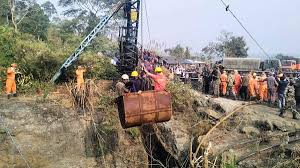
- 28 Jan 2025
In News:
India's recent coal mining tragedy in Dima Hasao, Assam, underscores the nation's ongoing struggle with illegal and hazardous rat-hole mining, despite the National Green Tribunal's 2014 ban. This persistent exploitation, driven by industrial demand for coal, highlights the gap between environmental regulations and their enforcement, revealing a broader issue of balancing economic growth with environmental protection. As India strives to meet ambitious climate goals and sustain economic development, strengthening environmental regulations becomes critical.
Current Environmental Regulations in India
India has established a strong legal framework to protect its environment, grounded in the Indian Constitution. Articles 48A and 51A(g) direct the state and citizens to safeguard the environment, while Article 21 ensures the right to a clean and healthy environment, as interpreted by the Supreme Court. Key pollution control laws include:
- Water (Prevention and Control of Pollution) Act, 1974: Regulates water pollution and establishes pollution control boards at the national and state levels.
- Air (Prevention and Control of Pollution) Act, 1981: Controls air pollution from industrial emissions and vehicles.
- Environment (Protection) Act, 1986: Provides overarching powers for environmental protection.
- Plastic Waste Management Rules, 2016: Regulates plastic waste disposal and bans single-use plastics.
Other significant laws focus on forest and wildlife protection, including the Indian Forest Act, 1927, and the Wildlife (Protection) Act, 1972, along with the National Green Tribunal (NGT) Act, 2010, which ensures quick resolution of environmental disputes.
Key Issues with Enforcement
- Despite these stringent regulations, enforcement remains weak due to institutional limitations. Many industrial units fail to meet environmental standards, with regulatory bodies underfunded and understaffed. For example, pollution control boards in states like Uttar Pradesh and Bihar are plagued by staffing shortages, hampering their ability to monitor pollution effectively.
- Inadequate public participation and insufficient technology adoption further exacerbate these challenges.
- The Environmental Impact Assessment (EIA) process, often bypassed or diluted, leads to development projects being approved without full consideration of their environmental impacts, particularly in ecologically sensitive areas.
Weak Enforcement and Conflict between Development and Conservation
The tension between development and conservation is evident in policies that relax environmental regulations for economic growth. The Forest (Conservation) Amendment Act, 2023, prioritizes infrastructure projects over forest preservation, undermining ecological conservation. Moreover, the rapid urbanization of cities like Gurugram and Faridabad has led to large-scale deforestation and a reduction in natural conservation zones, worsening air and water quality.
Strengthening Environmental Regulations
To address these challenges, India needs to strengthen its environmental regulatory mechanisms:
- Enhance Enforcement: Adequate funding, skilled personnel, and advanced technology, such as AI-based pollution monitoring and drone surveillance, are essential to improve compliance.
- EIA Reforms: The EIA process should be made more transparent and participatory, ensuring that marginalized communities are included in decision-making.
- Promote Clean Energy: Expanding subsidies for renewable energy and encouraging industries to adopt green technologies will help reduce reliance on fossil fuels.
- Circular Economy: Encouraging industries to adopt recycling and upcycling practices can minimize waste and reduce resource extraction.
- Strengthen Local Involvement: Empowering local communities through decentralization under the Forest Rights Act will ensure more inclusive environmental governance.
Conclusion
India’s environmental challenges require a balanced approach, integrating sustainable development with robust environmental protections. Strengthening regulatory enforcement, reforming the EIA process, and fostering community-led conservation are essential to aligning economic growth with environmental sustainability. By addressing these gaps, India can better navigate its path toward achieving both its development goals and climate commitments.
India-Indonesia Relations
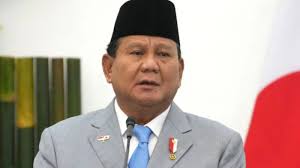
- 27 Jan 2025
In News:
The President of Indonesia, visited India as the Chief Guest for the 76th Republic Day in January 2025. This marked the 75th anniversary of diplomatic ties, reaffirming the commitment to deepen cooperation in economic, strategic, cultural, and defense domains.
Historical Foundations
- Ancient Civilizational Links: Trade and cultural exchanges date back to the 2nd century BCE, reflected in the influence of Hinduism and Buddhism on Indonesian society (e.g., Ramayana, Mahabharata, Borobudur, Prambanan).
- Modern Diplomatic Ties:
- Formalized in 1950, with a Treaty of Friendship in 1951.
- Collaborated in the 1955 Bandung Conference and co-founded the Non-Aligned Movement (1961).
- Indonesia’s first President Sukarno was the Guest of Honour at India’s first Republic Day in 1950.
- Cold War and Beyond:
- Relations cooled in the 1960s but revived in the 1980s.
- The 1991 'Look East' Policy and the 2014 'Act East' Policy revitalized ties.
- Strategic Partnership in 2005; upgraded to a Comprehensive Strategic Partnership in 2018.
Key Pillars of Cooperation
- Economic and Trade Relations
- Trade Volume: Reached USD 38.8 billion (2022–23), targeted to increase to USD 50 billion by 2025.
- Key Imports: India imports coal, palm oil, and nickel.
- Investment: Indian investments in Indonesia total USD 1.56 billion in infrastructure, textiles, and energy.
- New Developments:
- MoU on Local Currency Settlement Systems to reduce dependency on USD.
- Focus on resolving trade barriers via forums like WGTI and BMTF.
- Cooperation in critical minerals like nickel and bauxite.
- BPCL to invest USD 121 million in the Nunukan gas block.
- Military Exercises: Garuda Shakti (Army), Samudra Shakti (Navy), and participation in Milan, Komodo, Super Garuda Shield, etc.
- Key Agreements:
- 2018 Defense Cooperation Agreement.
- White Shipping Information Exchange (WSIE).
- Proposal for Bilateral Maritime Dialogue and Cyber Security Dialogue.
- Joint vision on maritime cooperation under SAGAR (Security and Growth for All in the Region).
- BrahMos Deal: Talks underway for Indonesia’s acquisition of BrahMos missiles (~USD 450 million).
- Cultural Diplomacy: Shared heritage of Hindu-Buddhist traditions; India assisting in restoring Prambanan temple.
- Tourism & Connectivity: Direct flights since 2023; India is the second-largest source of tourists to Bali.
- New Initiatives:
- Cultural Exchange Programme (2025–2028).
- India reaffirmed the Kashi Cultural Pathway for heritage restoration and repatriation of artifacts.
- Science, Technology, and Space
- ISRO supports Indonesia’s satellite ambitions; agreement on Biak Tracking Station.
- Renewed MoU on STEM cooperation.
- Areas of collaboration: Quantum tech, high-performance computing, and digital public infrastructure.
- Energy and Health Security
- Collaboration on biofuels under the Global Biofuels Alliance.
- Joint initiatives on mid-day meals and public distribution systems.
- MoUs on digital health, capacity building, and traditional medicine.
Multilateral and Regional Cooperation
- ASEAN & Indo-Pacific: Commitment to ASEAN centrality and cooperation through IPOI, India-Indonesia-Australia Trilateral, and ASEAN-India outlook.
- Global Platforms: Collaboration in BRICS, G20, IORA, and advocacy for the Global South.
- Climate & Disaster Resilience:
- Joint efforts under CDRI.
- Indonesia invited to the International Solar Alliance and Big Cat Alliance.
Key Challenges
- Trade Imbalance: Heavy reliance on limited imports (coal, palm oil); imbalance persists as Indonesia’s trade with China is far greater (~USD 139 billion).
- Bureaucratic & Regulatory Barriers: Slow progress on infrastructure and investment due to permit and regulatory issues.
- Geopolitical Pressures: Indo-Pacific instability and China's expanding influence pose strategic challenges.
- Logistical Constraints: Inadequate connectivity infrastructure hinders deeper integration.
Way Forward
- Trade Diversification: Include sectors like tech, agriculture, and green energy.
- Defense Deepening: Expand joint exercises, maritime patrols, and intelligence-sharing.
- Enhance Connectivity: Boost air, sea, and digital linkages for trade and tourism.
- Green Collaboration: Advance renewable energy and sustainable mining ventures.
- Cultural & Educational Engagement: Promote student exchanges, scholarships (e.g., ITEC), and diaspora involvement.
Conclusion
India and Indonesia share deep-rooted civilizational links and are strategically aligned in the Indo-Pacific. Their evolving Comprehensive Strategic Partnership encompasses trade, defense, technology, and cultural diplomacy. Strengthening this partnership will not only boost bilateral growth but also ensure a stable, multipolar, and cooperative regional order.
External Commercial Borrowings (ECBs)
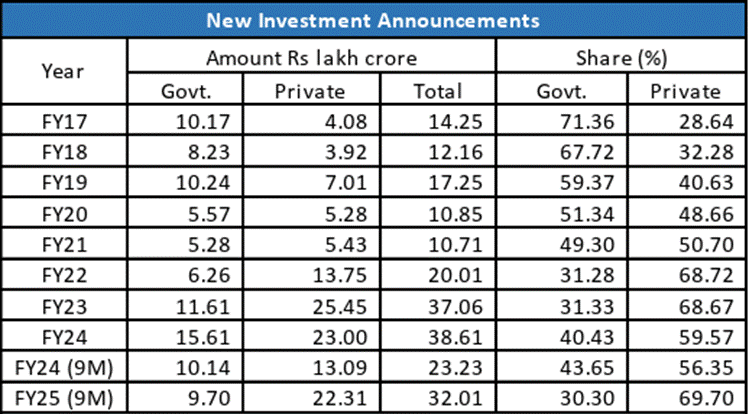
- 25 Jan 2025
In News:
A recent State Bank of India (SBI) report highlights the evolving trends in investment activity and the increasing importance of External Commercial Borrowings (ECBs) in financing India's economic growth. It also reflects rising private sector participation and a robust capital formation trend.
Investment Trends in India:
- Total Investment Announcements reached ?32.01 lakh crore during April–December 2024 (9MFY25), up 39% from the same period in FY24.
- The private sector accounted for 70% of investments in 9MFY25, up from 56% in FY24, indicating rising business confidence.
- Gross block of Indian corporates rose to ?106.5 lakh crore (March 2024), from ?73.94 lakh crore in March 2020—an addition of over ?8 lakh crore annually.
- Capital Work in Progress stood at ?13.63 lakh crore, reflecting ongoing infrastructure and industrial projects.
- Household Net Financial Savings (HNFS) improved to 5.3% of GDP in FY24 from 5.0% in FY23.
- Investment-to-GDP ratio improved, with:
- Government investment at 4.1% of GDP (FY23) — highest since FY12.
- Private corporate investment rising to 11.9% in FY23, projected to reach 12.5% in FY24.
What are External Commercial Borrowings (ECBs)?
ECBs refer to loans raised by Indian entities from foreign lenders, including commercial banks, export credit agencies, and institutional investors. These borrowings are regulated by the Reserve Bank of India (RBI) and used for purposes like capital expansion, modernization, and infrastructure development.
Current Status of ECBs (as of Sept–Nov 2024):
- Outstanding ECBs stood at $190.4 billion (Sept 2024).
- Private sector share: 63% (~$97.6 billion).
- Public sector share: 37% (~$55.5 billion).
- Of the total, non-Rupee and non-FDI ECBs accounted for $154.9 billion.
- ECBs registered (April–Nov 2024): $33.8 billion, mainly for capital goods import, local capex, and new projects.
- Cost of ECBs declined to:
- 6.6% average during April–November 2024.
- 5.8% in November 2024, down by 71 basis points from the previous month.
- Hedging practices: Private companies hedge about 74% of their ECB exposure, essential for managing currency risk.
Why Are ECBs Important for India?
- Bridging Capital Gaps: Domestic markets may not meet the capital needs of large projects.
- Lower Interest Rates: ECBs often offer cheaper financing than domestic loans.
- Infrastructure Financing: Key source of funds for sectors needing long-term investment.
- Foreign Exchange Access: Supports imports, modernization, and technology adoption.
- Private Sector Expansion: Enables firms to grow, diversify, and remain globally competitive.
Challenges and Risks:
- Currency Risk: Rupee depreciation can raise repayment costs.
- Interest Rate Risk: Linked to global rates (e.g., LIBOR/SOFR), which can rise unpredictably.
- Hedging Costs: Though necessary, hedging adds to borrowing costs.
- Global Dependency: Exposure to international financial volatility.
- Regulatory Constraints: RBI norms on end-use, maturity, and cost ceilings can reduce flexibility.
- Over-Borrowing Risk: Mismanagement can lead to unsustainable debt levels and strain forex reserves.
Clarification on ECB Liability Data:
- Some media reports mistakenly cited India’s ECB stock as $273 billion.
- The actual ECBs, as per RBI (Sept 2024), stand at $190.4 billion.
- The inflated figure includes $72 billion in FPI (Debt), which should not be classified as ECBs.
Way Forward:
- Regulatory Refinement: Simplify ECB rules for strategic sectors and long-term projects.
- Encourage Hedging: Make risk management more affordable and accessible.
- Prudent Borrowing: Promote ECBs for infrastructure, exports, and modernization rather than working capital.
- Monitoring and Oversight: Ensure transparency and prevent over-leverage.
- Strengthen Domestic Financing: To reduce overdependence on foreign borrowing.
National Health Mission (NHM): 2021–2024
- 24 Jan 2025
In News:
The Union Cabinet reviewed the progress under NHM (2021–24), underscoring significant gains in public health infrastructure, disease control, and healthcare accessibility, particularly during and after the COVID-19 pandemic.
About NHM:
- Launched: 2013, integrating NRHM (2005) and NUHM (2012).
- Objective: Universal access to equitable, affordable, and quality healthcare services.
- Focus: Vulnerable populations, rural and urban poor.
- Implementation: Ministry of Health & Family Welfare supports states and UTs.
Key Achievements (2021–2024):
1. Human Resource Expansion
- 12.13 lakh healthcare workers added, including doctors, nurses, CHOs, and AYUSH practitioners.
- Ni-kshay Mitras: 1.56 lakh volunteers supported 9.4 lakh TB patients.
- Progressive annual engagement:
- FY 2021–22: 2.69 lakh
- FY 2022–23: 4.21 lakh
- FY 2023–24: 5.23 lakh
Maternal and Child Health
- Maternal Mortality Ratio (MMR): Dropped by 83% since 1990 (from 130 to 97 per lakh live births).
- Under-5 Mortality Rate (U5MR): Reduced from 45 (2014) to 32 (2020).
- Infant Mortality Rate (IMR): Declined from 39 (2014) to 28 (2020).
- Total Fertility Rate (TFR): Reduced from 2.3 (2015) to 2.0 (2020).
Disease Control and Elimination
- Tuberculosis (TB):
- Incidence: From 237 (2015) to 195 (2023) per 1,00,000.
- Mortality: Decreased by 21.4% (from 28 to 22).
- Kala-azar: Target achieved in all endemic blocks (<1 case/10,000 population by 2023).
- Sickle Cell Anemia: 2.61 crore people screened under the National Elimination Mission.
- Malaria:
- Cases fell in 2021 but rose in 2022 and 2023.
- Deaths declined continuously.
Immunization Campaigns
- COVID-19: Over 220 crore doses administered (2021–2024).
- Measles-Rubella: 97.98% coverage, vaccinating 34.77 crore children under IMI 5.0.
- Digital Health: U-WIN platform launched in 2023 for real-time vaccination tracking in 65 districts.
Healthcare Infrastructure
- 7,998 health facilities certified under National Quality Assurance Standards (NQAS).
- Ayushman Arogya Mandirs: 1.72 lakh operational, with 1.34 lakh offering 12 essential services.
- 24×7 services: At 12,348 PHCs and 3,133 FRUs.
- Mobile Medical Units (MMUs): Expanded to 1,424 units, MMU Portal operational.
Specialized Health Initiatives
- Pradhan Mantri TB Mukt Bharat Abhiyan: Volunteer-driven TB patient support.
- Pradhan Mantri National Dialysis Programme:
- Delivered 62.35 lakh hemodialysis sessions to 4.53 lakh patients in FY 2023–24.
- Sickle Cell Mission: Major tribal health initiative targeting elimination by 2047.
National Programs Under NHM
- RMNCH+A: Reproductive, Maternal, Newborn, Child, and Adolescent Health.
- Communicable Disease Control: TB, malaria, leprosy, HIV/AIDS.
- Non-Communicable Diseases (NCDs): Cancer, diabetes, hypertension.
- Other Initiatives: Rashtriya Bal Swasthya Karyakram (RBSK), PM National Dialysis Programme, Ayushman Bharat (AB-PMJAY).
Alignment with SDG Goals
- NHM achievements indicate India is on track to meet SDG-3 targets (Good Health and Well-being), especially in maternal and child mortality reduction.
Judiciary in Crisis and the Digital Transformation of India
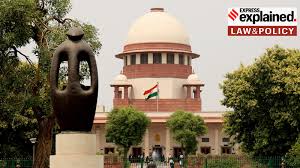
- 23 Jan 2025
In News:
The Indian judiciary is grappling with an unprecedented backlog of cases, while India’s digital economy is witnessing exponential growth, promising to be a key driver of future economic expansion. Simultaneously, India's strides in the space sector and emerging technologies signal its increasing role as a global innovator.
The Crisis of Judicial Pendency in India
- Background: The Supreme Court recently permitted High Courts to appoint ad-hoc retired judges under Article 224A to address the mounting pendency of cases. This move revives a constitutional provision that had remained dormant, with only three recorded instances of its use.
- Scale of Backlog:
- As of January 2025, over 62 lakh cases are pending in High Courts.
- Nearly 4 crore cases are pending in subordinate courts.
- 30% of High Court judicial positions remain vacant.
- Reasons for Pendency
- Insufficient Judicial Strength: Low judge-to-population ratio.
- Infrastructure Deficit: Poor court facilities, especially in rural areas.
- Administrative Delays: Outdated systems and slow bureaucratic processing.
- Rising Litigation: Increase in public awareness and socio-economic issues.
- Adjournments & Procedural Delays: Inefficient court practices.
- Vacancies in Appointments: Delay in filling judicial posts due to the standoff between executive and judiciary.
Constitutional Provision: Article 224A
- Enables High Courts to appoint retired judges temporarily with the President’s consent.
- Judges appointed under this article have full powers and jurisdiction of a regular High Court judge.
- Supreme Court in Lok Prahari v. Union of India (2021) provided guidelines for such appointments, including limiting it to instances where judicial vacancies are not more than 20%.
Judicial Appointments Debate: Collegium vs. NJAC
- Collegium System
- CJI + Four senior-most judges decide appointments.
- Criticized for lack of transparency, nepotism, and non-accountability.
- National Judicial Appointments Commission (NJAC)
- Proposed inclusion of judiciary, executive, and civil society (2 eminent persons).
- Struck down by SC in 2015 to preserve judicial independence.
- Current Debate: Rising demands for a reformed NJAC to bring in accountability while retaining independence.
Global Models of Judicial Appointments
Country System Key Feature
UK Judicial Appointments Commission Transparent, includes laypersons
South Africa Judicial Service Commission Diverse representation: judiciary, politicians, academics
France High Council of Judiciary Balanced approach with civil society input
Impacts of Judicial Delay
- Delayed Justice: Undermines public trust.
- Overcrowded Prisons: Over 70% of inmates are undertrials; prisons operate at 114% capacity.
- Economic Costs: Delays in dispute resolution hamper business environment and economic efficiency.
- Judicial Burnout: Overburdened judges impact quality of judgments.
Addressing Judicial Pendency
- Short-Term Measures
- Appointment of Ad-Hoc Judges under Article 224A.
- Fast Track Courts for specific offenses (e.g., crimes against women, corruption).
- Long-Term Reforms
- Reforming Judicial Appointments: Transparent and accountable system through restructured NJAC.
- Enhancing Collegium Transparency: Clear criteria and public disclosure.
- Promoting ADR Mechanisms: Arbitration, mediation, and conciliation to reduce court burden.
- Judicial Infrastructure Development: More courtrooms, modern facilities, and digitalization.
Way Forward
Judicial Reform
- Strengthen judicial accountability while maintaining independence.
- Incorporate global best practices in appointment systems.
- Promote Alternative Dispute Resolution (ADR) and digitization of court processes
India’s Renewable Energy Revolution
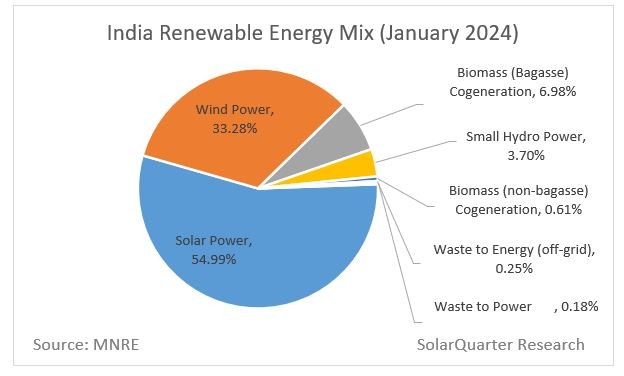
- 22 Jan 2025
Introduction
India's transition towards clean energy has accelerated, with 2024 witnessing record-breaking renewable energy (RE) installations and policy innovation. With a vision to achieve 500 GW of non-fossil fuel capacity by 2030 and net-zero emissions by 2070, India is shaping itself as a global leader in sustainable development.
What is Renewable Energy?
Renewable energy is derived from naturally replenishing sources like solar, wind, hydropower, and biomass. It plays a vital role in:
- Reducing dependence on fossil fuels.
- Lowering greenhouse gas emissions.
- Ensuring long-term energy security.
India’s RE Targets and Progress
Parameter Target/Status
2030 Target 500 GW of non-fossil fuel capacity
Net Zero by 2070
Current Status (Jan 2025) 217.62 GW of non-fossil fuel-based capacity
Short-term Goal 50% energy capacity from renewable sources
2024: Year of Renewable Milestones
Solar Energy
- 24.5 GW added in 2024 — a 2.8x increase over 2023.
- 18.5 GW utility-scale solar: Rajasthan, Gujarat, Tamil Nadu contributed 71%.
- Rooftop Solar:
- 4.59 GW added (↑53%)
- 7 lakh installations under PM Surya Ghar: Muft Bijli Yojana.
- Off-grid Solar:
- 1.48 GW added (↑182%), promoting rural energy access.
Wind Energy
- 3.4 GW added: Gujarat (1,250 MW), Karnataka (1,135 MW), Tamil Nadu (980 MW) = 98% of new capacity.
Hydropower & Others
- Existing hydropower plants modernized to improve efficiency.
Government Initiatives Driving Growth
Scheme/Initiative Purpose
PM Surya Ghar: Muft Bijli Yojana Rooftop solar subsidies for households
Green Energy Corridor (GEC) Transmission infra for RE-rich states
Hydrogen Energy Mission Promote green hydrogen production
National Smart Grid Mission (NSGM) Integration of variable RE sources into the grid
FAME Scheme Promote EV adoption, indirectly supporting RE usage
International Solar Alliance (ISA) Strengthen global cooperation in solar energy
Challenges in RE Expansion
- Land Acquisition: Resistance from locals, especially in solar park areas.
- Grid Stability: Intermittency of solar/wind leads to voltage and frequency issues.
- Storage Gaps: Lack of large-scale battery storage limits surplus utilization.
- E-Waste Concerns: Rising disposal of solar panels and batteries.
- Mineral Dependency: Import reliance on lithium, cobalt, etc.
- Regulatory Bottlenecks: Delay in approvals and lack of inter-state coordination.
Way Forward: Strategic Interventions
Technological Innovation
- Floating Solar Projects: Utilize reservoirs to save land and reduce evaporation.
- Decentralized Systems: Peer-to-peer trading via blockchain for energy democratization.
- Green Hydrogen: Use surplus RE for hydrogen fuel, develop hydrogen corridors.
Infrastructure & Manufacturing
- Renewable Energy SEZs: Promote local manufacturing and innovation.
- Smart Grid Development: Improve grid flexibility and real-time balancing.
Environmental Management
- Circular Economy for RE Waste: Design policies for solar panel and battery recycling.
- Urban Integration: Incentivize rooftop installations in urban centers.
Conclusion
India’s renewable energy revolution is at a crucial juncture. With 2024 setting a strong precedent through record installations and policy progress, the path to 2030 and beyond will require addressing infrastructural, financial, and regulatory challenges. A multi-pronged, inclusive, and technology-driven approach will help India lead the global clean energy transition.
Why Indian cities need Behavioral Change Officers
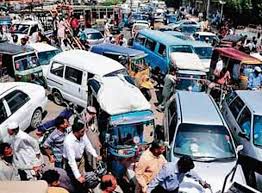
- 21 Jan 2025
Urban India at a Crossroads
India's urban population is projected to reach 40% by 2030, up from 30% in 2011. While this urban surge brings opportunities for economic and social progress, it also amplifies challenges such as:
- Infrastructure strain
- Environmental degradation
- Social inequality
- Climate impacts—including increased frequency of floods, heatwaves, and climate-driven migration
Traditionally, governments have relied on a combination of policy reforms, infrastructure investment, and technological advancements. However, a crucial component is often overlooked: behavioral change.
The Case for Behavioral Change in Urban Governance
Urban planning and service delivery frequently overlook how citizen and provider behavior shapes outcomes. Sustained, meaningful change requires more than just awareness campaigns—it demands behaviorally-informed governance. Here's why:
- Enhancing Service Delivery: Cities like Indore showcase how behavior change can revolutionize urban systems. Once struggling with waste management, Indore became India’s cleanest city through:
- Door-to-door campaigns
- Strict enforcement of segregation rules
- Viral initiatives like the ‘Kachra Gadi’ song to shift mindsets
- Driving Sustainability: In cities like Delhi, the odd-even vehicle rule led to a 30% reduction in traffic congestion by using simple default behavioral triggers. When people opt for public transport or energy conservation, it reduces emissions and eases city operations.
- Improving Public Safety: Behavioral strategies also improve law enforcement and community trust. For instance, Kerala’s ‘Janamaithri Suraksha’ program emphasizes empathetic policing, resulting in stronger police-citizen relations.
- Boosting Institutional Efficiency: Embedding behavioral insights can improve the efficiency of government schemes. The NITI Aayog’s Behavioral Insights Unit and initiatives in Uttar Pradesh and Bihar demonstrate success in using nudges to improve outcomes in areas like maternal health and welfare delivery.
Why Cities need Chief Behavioral Officers (CBOs)
To embed these insights systematically, Indian cities must institutionalize behavioral science through dedicated roles like Chief Behavioral Officers (CBOs) within Urban Local Bodies.
CBO Functions:
- Integrate behavioral strategies into urban planning
- Design evidence-backed nudges and campaigns
- Collaborate with stakeholders, municipal officers, and researchers
- Guide data-driven policy experimentation
Support Structure:
- A small team of behavioral fellows
- Annual Behavioral Plans aligned with city goals
- Investment in citizen engagement platforms
- Use of big data and surveys to uncover behavioral bottlenecks
Examples from global cities like New Orleans (via What Works Cities) show that CBOs can drive change quickly and cost-effectively.
Challenges to Behaviorally-Informed Urbanism
Despite its promise, this approach faces several roadblocks:
- Cultural inertia and resistance to change (e.g., reluctance in waste segregation)
- Lack of training in behavioral science among officials
- Resource constraints in smaller municipalities
- Fragmented coordination between departments (e.g., transport, sanitation)
Way Forward
To overcome these challenges, cities must:
- Institutionalize behavioral roles in governance structures
- Partner with behavioral scientists and think tanks
- Leverage technology (e.g., mobile apps for citizen feedback)
- Scale successful pilots (e.g., Indore’s waste model) across regions
This structured approach not only improves efficiency and citizen satisfaction, but also reduces the costs of service delivery, allowing long-term savings.
India-Middle East-Europe Economic Corridor (IMEC)
- 20 Jan 2025
Context:
- The India-Middle East-Europe Economic Corridor (IMEC), announced at the G20 Summit 2023 in New Delhi, is a transformative multi-modal connectivity initiative aiming to link India, the Middle East, and Europe through railways, ports, roads, energy pipelines, and digital infrastructure.
- Seen as a strategic counter to China’s Belt and Road Initiative (BRI), IMEC marks a significant step in reshaping global trade routes and enhancing economic cooperation across continents.
Structure and Components of IMEC
- Corridors:
- Eastern Corridor: Connects India to the Arabian Peninsula
- Northern Corridor: Links the Gulf to Europe
- Key Infrastructure:
- Rail and road networks
- Shipping routes from Indian ports (e.g., Mumbai, Mundra, Kandla, JNPT) to UAE and onwards via rail to Saudi Arabia, Jordan, and Israel (Haifa Port)
- Maritime link from Haifa to Piraeus Port in Greece, and further into Europe
- Electricity grids, green hydrogen pipelines, and high-speed data cables
- Participating Nations: India, US, Saudi Arabia, UAE, France, Germany, Italy, European Union
- Support Mechanism: US-led Partnership for Global Infrastructure and Investment (PGII)
Significance of IMEC
For India
- Enhanced Global Connectivity:
- Provides faster, cost-effective access to European markets
- Reduces dependence on the Suez Canal, a known chokepoint
- Economic Gains:
- Boosts the Make in India initiative through expanded market access
- Enhances maritime security and tourism opportunities in the Mediterranean
- Strategic Leverage:
- Strengthens ties with Middle East, US, and Europe
- Reinforces India’s image as a global strategic partner
- Energy Security and Green Growth:
- Facilitates the Green Grid Concept via power lines and hydrogen pipelines
- Aligns with India’s clean energy and decarbonisation goals
- Digital and Cyber Infrastructure:
- Supports data flow and communication resilience across the corridor
For the United States
- Strategic Counter to BRI:
- Offers democratic nations an alternative to China’s BRI
- Reinforces Transatlantic Unity:
- Addresses trust deficits post Ukraine war
- Reaffirms US commitment to European allies
- Energy and Supply Chain Security:
- Reduces reliance on adversarial energy routes
- Diversifies regional supply chains
- Geopolitical Stability:
- Encourages peaceful engagement among West Asian rivals
- Deters alignment with China-led blocks
- Job Creation and Economic Growth:
- Infrastructure investments boost local economies and employment
Strategic and Geopolitical Implications
- Acts as a balancing mechanism in global geopolitics against the influence of China’s BRI
- Built on diplomatic breakthroughs such as the Abraham Accords
- Promotes economic cooperation between traditional rivals (e.g., Israel, Saudi Arabia, UAE)
- Supports a rules-based international order centered on transparency, sustainability, and democratic values
Challenges to Implementation
- Geopolitical Instability: Conflicts such as Israel-Hamas, Iran-Saudi tensions, or political instability in West Asia can delay progress
- Infrastructure Bottlenecks:
- High capital requirement and complexity of cross-border integration
- Varying timelines and priorities among participating nations
- Competing Regional Interests:
- Exclusion of key players like Turkey, Iran, and China may trigger pushback
- Turkey’s rivalry with Greece and Israel may create diplomatic hurdles
Security Concerns: Risk of terrorism, piracy, and cyber threats in unstable regions
Israel-Hamas Ceasefire

- 19 Jan 2025
In News:
After 15 months of war triggered by Hamas' October 2023 attack on Israel, a ceasefire agreement has been brokered by Qatar, Egypt, and the US, marking a fragile but significant pause in one of the most destructive phases of the Israel-Palestine conflict.
Key Features of the Ceasefire Agreement
The agreement is based on a three-phase framework proposed by US President Joe Biden in June 2024 and endorsed by the UN Security Council:
Phase I (42 days)
- Complete ceasefire and withdrawal of Israeli forces from all populated areas in Gaza.
- Release of 33 Israeli hostages (women, elderly, injured) by Hamas.
- Release of 900–1,650 Palestinian prisoners, including minors and those detained since October 7, 2023.
- Daily entry of 600 humanitarian aid trucks into Gaza.
- Partial Israeli withdrawal from key corridors like Netzarim (splitting Gaza) and parts of the Philadelphi Corridor (Gaza-Egypt border).
Phase II
- Release of remaining hostages, primarily male soldiers.
- Complete Israeli military withdrawal from Gaza.
- Details to be negotiated during Phase I; no written guarantees for its execution.
Phase III
- Return of the remains of deceased hostages.
- Initiation of a multi-year reconstruction plan for Gaza under international supervision.
Challenges to Implementation
Fragile Political Consensus in Israel
- Far-right ministers (e.g., Itamar Ben-Gvir) oppose the deal, threatening to quit the government.
- Prime Minister Netanyahu faces pressure from both hawks demanding a full military victory and moderates seeking peace.
Hamas' Demands
- Seeks permanent ceasefire and complete Israeli withdrawal, making it unwilling to release all hostages without guarantees.
- Israel, in contrast, insists on neutralizing Hamas militarily.
Unclear Future Governance of Gaza
- Israel rejects both Hamas and the Palestinian Authority (PA) as future administrators.
- Global consensus supports Palestinian-led governance, but viable alternatives remain elusive.
Wider Geopolitical Impact
Reshaping West Asia
- Conflict escalated tensions with Hezbollah (Lebanon) and drew Israel into direct conflict with Iran.
- Iran’s influence weakened due to losses in Hezbollah and Syria.
- Assad regime in Syria collapsed, altering regional power dynamics.
Diplomatic Repercussions for Israel
- Despite military dominance, Israel faces global condemnation over civilian casualties.
- PM Netanyahu is under scrutiny at the ICC (war crimes) and ICJ (genocide allegations).
- Israel is now diplomatically isolated, particularly after the humanitarian toll in Gaza.
Humanitarian Crisis in Gaza
- Over 64,000 Palestinians killed (The Lancet, 2024), including large numbers of civilians.
- Massive destruction of infrastructure—schools, hospitals, homes—rendering Gaza nearly uninhabitable.
- Reconstruction hinges on sustained peace and international aid.
Conclusion
The ceasefire presents a rare opportunity for de-escalation in a deeply entrenched conflict. However, distrust between parties, domestic political constraints, and regional rivalries pose significant risks to its sustainability. A durable peace can only emerge through inclusive political dialogue, humanitarian prioritization, and movement toward a two-state solution.
River Interlinking in India
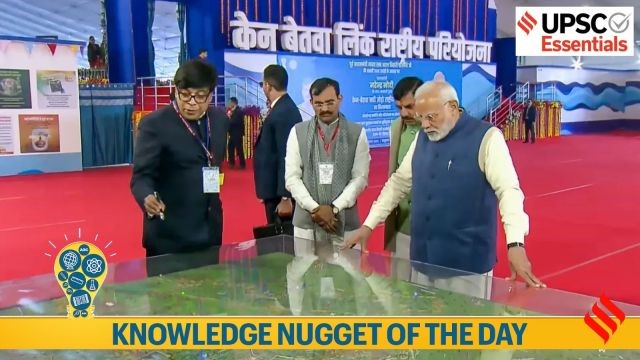
- 18 Jan 2025
Context:
India, with 17% of the world’s population but only 4% of its freshwater resources, faces significant water distribution challenges. The ambitious river interlinking project aims to mitigate regional water imbalances by transferring water from surplus areas to water-deficient regions, addressing irrigation, drinking water supply, flood control, and overall development.
Background and Evolution
The idea of interlinking rivers dates back to 1858 when British engineer Captain Arthur Cotton proposed linking rivers for inland navigation. Post-independence, Dr. K.L. Rao (1972) suggested the ‘Ganga-Cauvery Link Canal,’ followed by Captain Dinshaw J. Dastur’s ‘National Garland Canal’ proposal in 1977. However, these were deemed infeasible. In 1980, the Ministry of Water Resources formulated the National Perspective Plan (NPP), identifying 30 river link projects—14 under the Himalayan component and 16 under the Peninsular component.
The National Water Development Agency (NWDA) was established in 1982 to study and implement these projects. The Supreme Court, in response to a PIL in 2002, directed the government to expedite the completion of interlinking projects.
Ken-Betwa Link Project (KBLP)
The first project under the NPP, the Ken-Betwa Link Project (KBLP), was inaugurated on December 25, 2024. It aims to provide irrigation to Bundelkhand, one of India’s most drought-prone regions, by transferring surplus water from the Ken River in Madhya Pradesh to the Betwa River in Uttar Pradesh. Covering 10.62 lakh hectares of land (8.11 lakh ha in MP and 2.51 lakh ha in UP), the project will supply drinking water to 62 lakh people and generate 103 MW of hydropower along with 27 MW of solar power. However, environmental concerns persist as it passes through the Panna Tiger Reserve.
Significance of River Interlinking
- Water Redistribution: The scheme will transfer about 200 billion cubic meters (BCM) of water annually to water-scarce regions, ensuring equitable distribution.
- Agricultural Benefits: It will irrigate approximately 34 million hectares of farmland, enhancing food security and increasing agricultural productivity.
- Hydropower Generation: An estimated 34,000 MW of hydropower will be generated, supporting renewable energy expansion.
- Flood and Drought Mitigation: Excess water will be stored in reservoirs, reducing flood risks while ensuring availability during droughts.
- Economic Growth: Improved water availability will boost industries, generate employment, and aid in rural development.
Environmental and Social Concerns
- Ecological Disruptions: Altering river morphology can impact sediment transport, water quality, and aquatic ecosystems.
- Biodiversity Loss: Dams and canals may disrupt fish migration patterns and submerge forests, leading to biodiversity depletion.
- Climate Impact: Water transfer may affect regional climate attributes, altering temperature, precipitation, and humidity levels.
- Displacement and Social Issues: Large-scale projects often lead to displacement of communities, causing resettlement challenges and conflicts over compensation.
- Economic Viability: High project costs and potential delays raise concerns about financial feasibility compared to alternative solutions like rainwater harvesting and local water conservation.
Conclusion
While river interlinking presents a potential solution to India’s water crisis, it must be carefully assessed against environmental and social impacts. Sustainable water management strategies, such as efficient irrigation techniques and localized conservation methods, should complement large-scale projects to ensure a balanced approach to water security and development.
Satellite Docking Experiment (SpaDeX)

- 17 Jan 2025
In News:
The Indian Space Research Organisation (ISRO) achieved a historic milestone by successfully executing a satellite docking experiment, making India the fourth country after the United States, Russia, and China to accomplish this feat. This advancement represents a significant leap in India's space capabilities, positioning the nation at the forefront of space exploration and in-orbit servicing.
Key Highlights:
- The Space Docking Experiment (SpaDeX) is a critical technological demonstration by ISRO aimed at developing autonomous docking and undocking capabilities in space.
- The mission involves two satellites, SDX01 (Chaser) and SDX02 (Target), which were launched aboard PSLV C60 on December 30, 2024.
- The docking maneuver was overseen by the Mission Operations Complex (MOX) at the ISRO Telemetry, Tracking, and Command Network (ISTRAC) and was successfully completed in the early hours of January 18, 2025.
Key Steps in the Docking Process:
- Manoeuvre from 15m to 3m hold point.
- Precision docking initiation, leading to spacecraft capture.
- Retraction and rigidization for stability.
- Successful control of the docked satellites as a single object.
Significance of the Mission
- Technological Advancement: The docking of two spacecraft in orbit is a crucial capability that paves the way for:
- Autonomous spacecraft operations
- Refueling and maintenance of satellites
- Space station development
- Lunar and interplanetary missions
Future Applications
- Manned Missions: Enables India to develop technology for manned lunar missions and future space station operations.
- Satellite Servicing: Allows repair, maintenance, and extension of satellite lifespan, reducing costs and space debris.
- Sample Return Missions: Essential for lunar and planetary sample retrieval, crucial for deep-space exploration.
Challenges and Overcoming Setbacks
The SpaDeX docking was initially scheduled for January 7, 2025, but was postponed due to the need for further ground validation and an unexpected drift between the satellites. The issue was later resolved, and the docking was executed with precision.
The Road Ahead
Undocking and Power Transfer Demonstration
- ISRO will follow up with power transfer checks between the docked satellites.
- The satellites will later undock and operate separately for the remaining mission duration of up to two years.
Expanding Space Capabilities
- The successful execution of SpaDeX aligns with India’s plans for an independent space station by the 2030s.
- Strengthens India’s position in international space collaborations and commercial space services.
Conclusion
The SpaDeX mission represents a landmark achievement for India’s space program, placing it among the elite nations capable of satellite docking. This breakthrough will serve as a foundation for India’s ambitious future missions, including deep-space exploration, human spaceflight, and interplanetary research. As ISRO continues to develop advanced space technologies, India is set to play a crucial role in the future of global space exploration.
Digital Governance in India

- 16 Jan 2025
In News:
India is making significant strides toward digital governance, an initiative aimed at enhancing both citizen services and the capabilities of government employees. This transition to a digitally-driven framework is designed to improve the efficiency, transparency, and accountability of government operations, positioning India as a global leader in modern governance practices.
What is Digital Governance?
Digital governance refers to the application of technology to enhance the functioning of government processes. By integrating digital tools and platforms, it aims to streamline administrative operations, reduce inefficiencies, and improve public service delivery. This approach also extends to ensuring greater transparency and accountability in government dealings.
Key Initiatives in Digital Governance
India has launched several critical initiatives to modernize governance through digital means. Some of the key programs include:
- iGOT Karmayogi Platform: The iGOT Karmayogi platform is a government initiative to provide online training to public employees. It aims to enhance public administration skills, foster expertise in data analytics, and equip employees with the necessary tools in digital technologies. This initiative aims to prepare government personnel to handle the challenges of a digitally evolving governance landscape.
- e-Office Initiative: The e-Office program is designed to reduce paper-based work by digitizing workflows within government departments. This initiative facilitates real-time communication among offices and ensures more efficient and transparent management of tasks. It also helps streamline decision-making processes and improves the speed of governance operations.
- Government e-Marketplace (GeM): The Government e-Marketplace (GeM) is an online platform developed to optimize procurement processes. It allows government agencies to procure goods and services efficiently, transparently, and with accountability. This platform has contributed to reducing corruption and ensuring that government purchases represent the best value for public money.
- Cybersecurity Training for Employees: As digital operations increase, ensuring the safety of sensitive data is paramount. The cybersecurity training program for government employees is designed to enhance their ability to recognize and respond to potential cyber threats. This initiative ensures data protection, safe online practices, and cyber resilience across digital governance platforms.
Challenges in Implementing Digital Governance
Despite its benefits, India faces several challenges in the successful implementation of digital governance. These obstacles must be addressed to unlock the full potential of technology-driven governance.
- Resistance to Technological Change: One of the key barriers to digital transformation in government is the resistance among employees to adopt new technologies. Many government officials remain accustomed to traditional, paper-based processes and are reluctant to transition to digital systems due to concerns about complexity and job security.
- Digital Divide in Rural Areas: While urban regions in India have better access to high-speed internet and digital infrastructure, many rural areas face significant digital divide challenges. Limited access to technology hampers the successful implementation of digital governance in these regions, restricting equitable service delivery across the country.
- Cybersecurity Risks: The rise of digital operations in governance increases the risk of cyberattacks and data breaches. With government data being digitized, the threat of cybercrimes becomes more pronounced, making it critical to implement robust cybersecurity measures and data protection strategies to safeguard sensitive information.
- Lack of Incentives for Training Outcomes: Although government employees are encouraged to take part in training programs such as iGOT Karmayogi, the absence of clear incentives to complete these programs can undermine their effectiveness. Establishing tangible rewards or career progression linked to the successful completion of training would encourage employees to fully engage in capacity-building initiatives.
Solutions to Overcome Challenges
To ensure the success of digital governance, several strategies must be put in place to address the challenges identified.
- Foster Innovation-Friendly Environments: Promoting an innovation-friendly culture within government offices can help reduce resistance to new technologies. Encouraging employees to engage with digital tools, offering regular training, and providing ongoing support will facilitate a smoother transition to a technology-driven governance system.
- Invest in Digital Infrastructure for Rural Areas: Addressing the digital divide requires significant investment in digital infrastructure in rural and remote areas. Ensuring that these regions have reliable internet access and the necessary technological resources will empower citizens across India to benefit from digital governance.
- Continuous Capacity-Building Programs: Establishing continuous training programs for government employees will ensure that they remain up-to-date with the latest technological trends. Regular updates to training content will help employees stay prepared to handle emerging challenges in digital governance.
- Strengthen Cybersecurity Protocols: To mitigate cybersecurity risks, it is essential to implement stringent cybersecurity measures across all levels of government operations. This includes regular cybersecurity awareness programs, proactive threat management systems, and rigorous data protection protocols to safeguard both government data and citizens’ personal information.
Conclusion
India’s shift towards digital governance represents a significant step toward modernizing administrative systems, enhancing transparency, and improving service delivery to citizens. However, challenges such as resistance to change, the digital divide, cybersecurity risks, and the lack of clear incentives for training must be addressed. By investing in digital infrastructure, offering continuous training programs, and reinforcing cybersecurity measures, India can create an effective and secure framework for digital governance that benefits both its citizens and the government workforce.
India’s Startup Revolution

- 15 Jan 2025
Context
India has solidified its position as one of the most dynamic startup ecosystems globally, emerging as a hub for innovation, entrepreneurship, and technological progress. However, realizing its ambition of becoming the top startup ecosystem requires addressing critical challenges and leveraging available opportunities.
Current Landscape of Indian Startups
Growth and Innovation
India ranks as the third-largest startup ecosystem in the world, following the U.S. and China. As of January 15, 2025, over 1.59 lakh startups have been officially recognized by DPIIT, with more than 120 attaining unicorn status (valuation exceeding $1 billion).
Investment Trends
Despite economic fluctuations, India's startups continue to attract significant investments. In 2022, venture capitalists infused $25 billion into the ecosystem, reaffirming India’s position as a preferred destination for global investors. Although there was a slowdown in 2023, domains like Software as a Service (SaaS) and climate tech continue to secure substantial funding.
Government Support
India’s startup-friendly policies, including Startup India, Digital India, and Atmanirbhar Bharat, have created an enabling environment. Notable initiatives include:
- Tax incentives, faster patent approvals, and regulatory relaxations.
- The launch of a ?10,000 crore Fund of Funds for Startups (FFS) in 2023 to improve capital accessibility.
- The Bharat Startup Knowledge Access Registry (BHASKAR) to streamline collaboration among startups and investors.
Regional Growth
- Tier II and III Expansion: Nearly 50% of startups are now based in emerging hubs such as Indore, Jaipur, and Ahmedabad.
- Tamil Nadu: The state boasts a $28 billion startup ecosystem, growing at 23%. Chennai alone houses around 5,000 startups, significantly contributing to employment generation.
- Kerala: With a $1.7 billion startup ecosystem, Kerala exhibits a compound annual growth rate of 254%, emphasizing cost-effective tech talent hiring.
Key Challenges Faced by Startups
1. Funding Constraints
The global economic downturn, coupled with rising interest rates, has limited venture capital inflows, resulting in layoffs and operational cutbacks.
2. Regulatory and Compliance Barriers
Despite government support, startups grapple with complex tax structures, evolving data protection laws, and stringent compliance requirements, including ESOP taxation policies.
3. Scaling and Market Adaptability
Many startups struggle with operational inefficiencies, limited market penetration, and inadequate infrastructure, hampering growth potential.
4. High Failure Rate
Approximately 90% of Indian startups fail within five years due to poor product-market fit, lack of financial planning, and insufficient adaptation to market needs.
5. Talent Shortages
India faces stiff competition in acquiring skilled professionals in areas like AI, cybersecurity, and machine learning, making retention increasingly difficult amid economic uncertainties.
Strategic Measures to Strengthen India’s Startup Ecosystem
1. Enhancing Policy Frameworks
- Simplified Regulations: Streamline startup registration, funding approvals, and international business operations.
- IP Protection: Strengthen intellectual property laws to boost R&D investment.
- Sector-Specific Initiatives: Develop targeted policies for AI, deep tech, healthcare, and green technologies.
2. Expanding Funding Access
- Encouraging Domestic Investment: Leverage pension and sovereign wealth funds to invest in startups.
- Public-Private Partnerships: Foster large-scale government-industry collaboration to finance emerging ventures.
- Decentralized Funding: Expand angel investor networks and micro-investment opportunities, particularly in Tier II and III cities.
3. Building Robust Infrastructure
- Tech Parks and Incubation Centers: Establish state-of-the-art facilities with mentorship programs.
- Improved Digital Connectivity: Ensure high-speed internet access in underserved regions.
- Enhanced Logistics and Supply Chains: Strengthen infrastructure to support startup scalability.
4. Developing a Skilled Workforce
- STEM and Entrepreneurial Education: Introduce curriculum enhancements in technical and business disciplines.
- Upskilling Programs: Collaborate with industry leaders to train professionals in high-demand skills.
- Diversity and Inclusion: Promote initiatives encouraging women and marginalized communities in entrepreneurship.
5. Fostering Innovation and Risk-Taking
- Strengthened R&D Funding: Increase allocations to universities and private research sectors.
- Encouraging Entrepreneurship: Reduce societal stigma surrounding startup failures to promote risk-taking.
- Leveraging Domestic Challenges: Address local issues like climate change and urbanization through innovation.
6. Expanding Global Reach
- International Collaborations: Partner with foreign accelerators and governments.
- Ease of Cross-Border Trade: Simplify export and import regulations for startups.
- Engaging the Indian Diaspora: Encourage successful overseas entrepreneurs to mentor and invest in Indian startups.
7. Advancing Sustainability Goals
- Green Tech Promotion: Support startups focusing on renewable energy and circular economy initiatives.
- Eco-Friendly Incentives: Offer financial support to ventures aligning with sustainability targets.
- Inclusive Growth Strategies: Expand agritech, edtech, and health-tech startups in rural areas, supporting platforms like the Women Entrepreneurship Platform (WEP) by NITI Aayog.
Building a Resilient Digital Economy
To fortify India's digital economy, startups should leverage existing infrastructure like UPI and Aadhaar while capitalizing on emerging technologies such as AI, 5G, and blockchain. A robust cybersecurity framework and data protection policies will be essential to ensure investor confidence.
Genome India Project

- 14 Jan 2025
In News:
The Genome India Project is an ambitious national initiative aimed at decoding the genetic diversity of India’s population. Launched in January 2020 by the Department of Biotechnology (DBT), the project seeks to create a comprehensive map of India’s genetic variations, offering insights that can revolutionize public health, medicine, and our understanding of human genetics.
What is Genome Sequencing?
Genome sequencing is the process of determining the complete DNA sequence of an organism’s genome. The human genome, composed of about 3 billion base pairs of DNA, contains all the genetic instructions necessary for the growth, development, and functioning of the human body. The process involves extracting DNA from a sample (often blood), breaking it into smaller fragments, and using a sequencer to decode these fragments. The data is then reassembled to reconstruct the full genome.
Key Aims and Objectives
The Genome India Project aims to address several crucial scientific and healthcare challenges:
- Create an Exhaustive Catalog of Genetic Variations: This includes common, low-frequency, rare, and structural variations (such as Single Nucleotide Polymorphisms or SNPs).
- Establish a Reference Haplotype Structure: This reference panel will be used for imputing missing genetic variations in future genetic studies.
- Design Affordable Genome-wide Arrays: These arrays will be useful for research and diagnostics at a lower cost, making genetic analysis accessible.
- Create a Biobank for Future Research: The collected DNA and plasma will be preserved for future studies to facilitate ongoing genetic research.
Genome India Project: Phase 1 and Key Findings
The project’s Phase 1 focused on sequencing the genomes of 10,074 individuals from 99 ethnic groups across India. This initiative provides a critical baseline for studying the country’s genetic diversity. Some of the key findings include:
- 459 plant species have been identified as part of genetic diversity studies.
- 135 million genetic variations have been uncovered, including 7 million that are unique to India, not found in global databases.
- The project has revealed several genetic risks specific to Indian populations, such as the MYBPC3 mutation (linked to cardiac arrest) and the LAMB3 mutation (associated with a lethal skin condition), which are not commonly seen in global datasets.
This database will serve as a vital resource for researchers, contributing to the development of precision medicine, better disease diagnosis, and more personalized treatments.
Second Phase: Expanding the Scope
The second phase of the Genome India Project will focus on sequencing the genomes of individuals suffering from specific diseases. This will enable researchers to:
- Compare the genomes of healthy individuals with those having diseases, helping identify genetic mutations responsible for conditions like cancer, diabetes, and neurodegenerative diseases.
- Investigate rare diseases specific to Indian populations and develop therapies tailored to these conditions.
By sequencing the genomes of individuals with various conditions, the project aims to pinpoint genetic factors that contribute to the pre-disposition or causation of diseases.
Data Sharing and Security
To ensure data security and privacy, the genetic information will be made available only through managed access. Researchers interested in using the data will need to submit a proposal and collaborate with the Department of Biotechnology. The data will be stored securely at the Indian Biological Data Centre (IBDC) in Faridabad, Haryana, and anonymized to maintain confidentiality.
Why Does India Need Its Own Genetic Database?
India is home to a highly diverse population, with over 4,600 distinct ethnic groups and varying genetic backgrounds. The country’s genetic diversity, shaped by its geographical, cultural, and historical context, cannot be fully understood through datasets derived from other countries. The Genome India Project helps:
- Identify Genetic Risk Factors: For various diseases, paving the way for developing targeted diagnostic tools and therapies.
- Uncover Unique Variants: Some genetic mutations found in India, such as the Vaishya community’s resistance to anaesthetics, are absent in global databases.
- Address Population-specific Health Issues: Genetic mapping enables the identification of prevalent diseases and health conditions specific to Indian populations.
Global Context and Comparison
India’s genome sequencing effort is part of a larger global movement in genomics:
- Human Genome Project (2003): The first international effort to decode the human genome.
- 1,000 Genome Project (2012): Published 1,092 human genome sequences.
- UK 100,000 Genome Project (2018): Sequenced 100,000 genomes for health research.
- European Genome Project: Aims to sequence over 1 million genomes across 24 countries.
The Genome India Project fills a crucial gap by focusing on the genetic diversity of Indian populations, which differs significantly from the genetic profiles studied in Western or European genomes.
Applications of Genome India Project
The Genome India Project has the potential to impact multiple areas:
- Advancements in Medicine: Understanding genetic variations can lead to the development of personalized medicine, where treatments are tailored to individual genetic profiles.
- Genetic and Infectious Disease Control: The project helps identify genetic resistance to diseases, and aids in understanding how certain populations may respond differently to drugs or vaccines.
- Public Health Policies: Data from the project can inform health policies, especially in tackling diseases prevalent in specific regions or communities.
- International Research Collaboration: The project aims to foster collaboration with global research communities, enhancing India’s presence in the field of genomics.
Conclusion:
The Genome India Project is a landmark initiative for India’s scientific community, enabling better understanding of the country’s genetic diversity and paving the way for breakthroughs in medicine, healthcare, and disease prevention. The ability to analyze genetic variations on such a large scale provides immense opportunities for precision medicine and personalized treatments.
Rat-hole mining
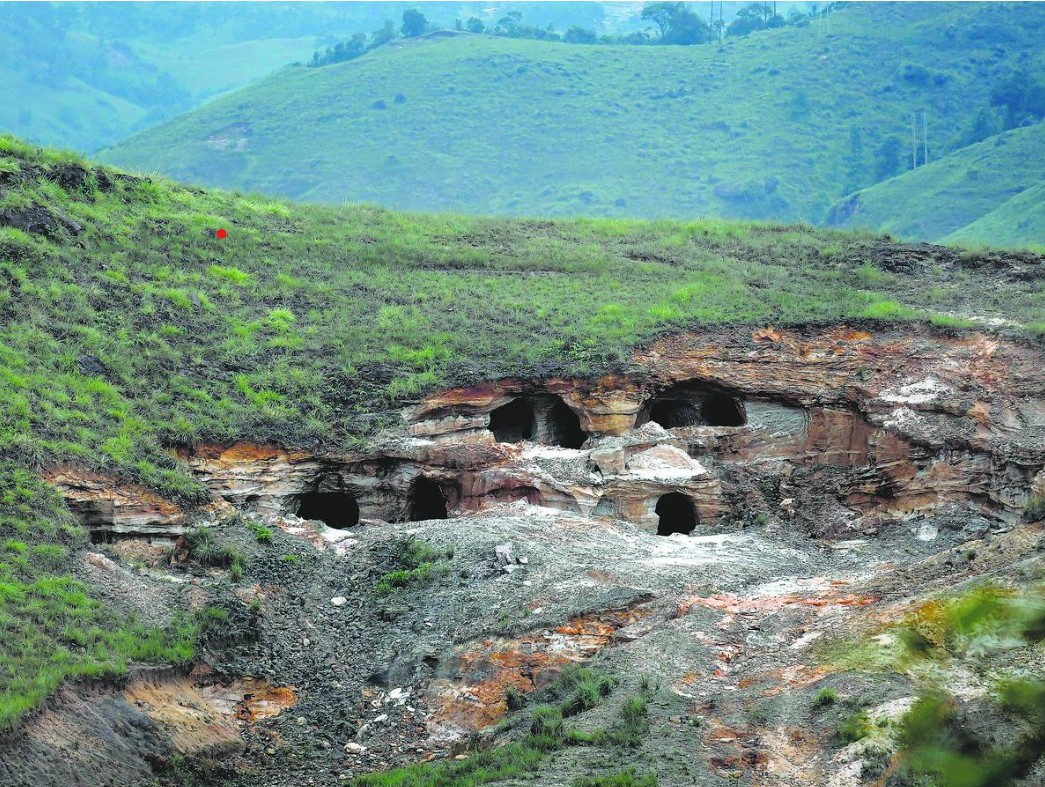
- 13 Jan 2025
In News:
In Dima Hasao district of Assam, at least nine workers aged between 26 and 57 were trapped in a coal “rat-hole” mine after it was flooded with water. Three miners trapped in a flooded coal mine were confirmed dead, while six remained stuck. Later an Indian Navy team, including deep-sea divers, arrived at the site, where the water level inside the pit is 200 feet deep.
Key Takeaways:
- Rat-hole mining is a method of extracting coal from narrow, horizontal seams, prevalent in Meghalaya. The term “rat hole” refers to the narrow pits dug into the ground, typically just large enough for one person to descend and extract coal.
- Once the pits are dug, miners descend using ropes or bamboo ladders to reach the coal seams. The coal is then manually extracted using primitive tools such as pickaxes, shovels, and baskets.
- Types of Rat-hole mining:
- Side-cutting mining: In the side-cutting procedure, narrow tunnels are dug on the hill slopes and workers go inside until they find the coal seam. The coal seam in the hills of Meghalaya is very thin, less than 2 m in most cases.
- Box-cutting mining: In the other type of rat-hole mining, called box-cutting, a rectangular opening is made, varying from 10 to 100 sqm, and through that a vertical pit is dug, 100 to 400 feet deep. Once the coal seam is found, rat-hole-sized tunnels are dug horizontally through which workers can extract the coal.
- Concerns associated with Rat-hole mining: Rat-hole mining poses significant environmental and safety hazards. This method of mining has faced severe criticism due to its hazardous working conditions, and numerous accidents leading to injuries and fatalities.
- The mines are typically unregulated, lacking safety measures such as proper ventilation, structural support, or safety gear for the workers. Additionally, the mining process can cause land degradation, deforestation, and water pollution. Despite attempts by authorities to regulate or ban such practices, they often persist due to economic factors and the absence of viable alternative livelihoods for the local population.
- Notably, the National Green Tribunal (NGT) banned Rat-hole mining in 2014, and retained the ban in 2015, on grounds of it being unscientific and unsafe for workers. The order was in connection with Meghalaya, where this remained a prevalent procedure for coal mining. The state government then appealed the order in the Supreme Court.
Role of Rat-Hole Mining in Uttarkashi Tunnel Rescue
- The rat-hole mining practice, banned for being unsafe, helped in the rescue operation of 41 workers trapped in the collapsed Silkyara-Barkot tunnel in Uttarakhand in 2023.
- Rat-hole miners were called in after the auger machine that was drilling through the debris broke. Rescuers then tried cutting through the blade stuck inside the rescue pipes and removing it piece by piece. As large metal pieces hindered the machine drilling, the rescuers went ahead with rat-hole mining.
- It was a test of grit and perseverance – for men on both sides of the 57 metres of debris – as the rescue operation suffered one setback after another. In the end, it was miners who dug through the last 12 metres and reached the trapped men.
Selection Process for Chief Election Commissioner (CEC)
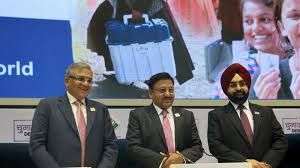
- 12 Jan 2025
In News:
The Chief Election Commissioner and Other Election Commissioners (Appointment, Conditions of Service and Term of Office) Act, 2023 represents a significant shift in the process of selecting the Chief Election Commissioner (CEC) and other Election Commissioners (ECs) in India. Traditionally, the senior-most Election Commissioner automatically ascended to the position of CEC. However, the new law introduced in December 2023 widens the scope for selection, allowing for a more transparent process with an expanded pool of candidates.
Key Features of the Act:
- Election Commission Structure: The Election Commission of India is constituted by the Chief Election Commissioner (CEC) and two other Election Commissioners (ECs). The President of India appoints these members, with the number of ECs fixed periodically.
- Appointment Process: The Act mandates that the CEC and ECs are appointed by the President based on recommendations from a Selection Committee. This committee comprises:
- The Prime Minister (Chairperson),
- The Leader of the Opposition in the Lok Sabha (or leader of the largest opposition party),
- A Union Cabinet Minister appointed by the Prime Minister.
- Search Committee: A Search Committee, chaired by the Minister of Law and Justice, prepares a panel of five candidates. The Selection Committee may choose from this panel or opt for someone outside of it.
- Eligibility Criteria:
- Candidates must have integrity and experience in election management.
- They should be or have been Secretary-level officers or equivalent.
- Term and Reappointment:
- The term of CEC and ECs is six years or until they turn 65 years.
- They cannot be re-appointed after their term.
- Salary and Pension: The salary, allowances, and conditions of service of CEC and ECs are equivalent to those of a Cabinet Secretary.
- Removal Process:
- The CEC can be removed in the same manner as a Supreme Court Judge.
- ECs can be removed only on the recommendation of the CEC.
Departure from Tradition:
Traditionally, the next CEC was the senior-most Election Commissioner. However, the new law opens the process, allowing the Search Committee to consider candidates outside the current pool of Election Commissioners. This widens the net and may lead to a more transparent and inclusive selection.
Concerns and Criticisms: While the Act aims to improve the selection process, it has faced scrutiny and concerns, particularly about the independence of the Election Commission:
- Government Influence: The inclusion of the Leader of Opposition in the Selection Committee is a positive step, but critics argue that the final decision may still be influenced by the government. The government’s dominance in the Selection Committee could potentially affect the neutrality of the Commission.
- Exclusion of the Chief Justice of India (CJI): The Supreme Court's 2023 ruling had recommended including the CJI in the committee, but the new Act excludes the CJI. This has raised concerns about the balance of power and the credibility of the Election Commission.
- Risk of Partisanship: Former CEC O.P. Rawat expressed concerns that political changes might influence decisions, leading to a compromised credibility of the Election Commission.
Legal Challenges: Petitions challenging the exclusion of the CJI from the Selection Committee are currently pending before the Supreme Court, which is expected to address them in February 2025.
Historical Context and Legal Backdrop:
- Article 324 of the Indian Constitution provides for the appointment of CEC and ECs by the President, but this is subject to laws passed by Parliament.
- In 2023, the Supreme Court intervened in response to the growing concerns over the executive's unilateral control over these appointments. The Court's ruling in the Anoop Baranwal v. Union of India case led to the formation of a committee comprising the Prime Minister, Leader of Opposition, and CJI until Parliament could enact a law. This resulted in the Chief Election Commissioner and Other Election Commissioners Act, 2023, which was aligned with the Court's directions.
Implications and Way Forward:
- Potential Government Influence: While the law aims to reduce executive control, the dominant role of the Prime Minister and the Leader of the Opposition could still allow the government to influence appointments, especially in contentious times.
- Suggestions for Reform: The Law Commission had recommended a broader selection committee, including the CJI, to ensure a balanced and impartial selection process. The National Commission to Review the Working of the Constitution (NCRWC) also suggested a committee comprising key political figures, including the Leader of Opposition in the Rajya Sabha and the Speaker of Lok Sabha.
- Integrity of the Election Commission: The credibility and impartiality of the Election Commission are vital for ensuring free and fair elections. It is crucial to ensure that the appointment process not only appears fair but is also free from political interference.
Conclusion:
The Chief Election Commissioner and Other Election Commissioners (Appointment, Conditions of Service and Term of Office) Act, 2023 introduces a reformed approach to the selection of the Election Commission members. While the law aims for greater transparency, it also raises concerns regarding government influence and independence. The Supreme Court’s review of the exclusion of the CJI from the Selection Committee will be pivotal in determining the future trajectory of the Election Commission’s appointment process. The evolving legal and institutional dynamics will play a significant role in shaping the electoral reforms in India.
Unified District Information System for Education Plus (UDISE+) Report
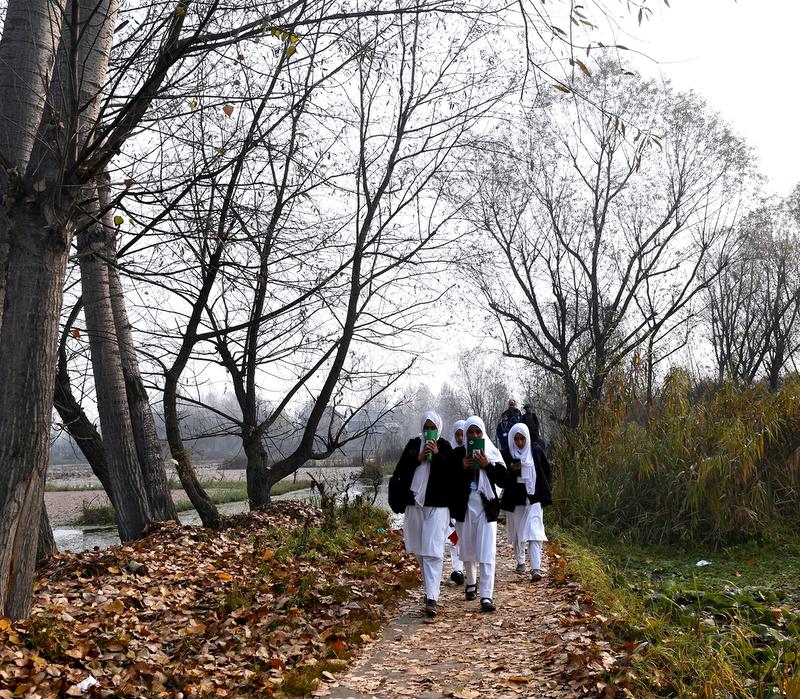
- 10 Jan 2025
In News:
The Unified District Information System for Education Plus (UDISE+) report for 2023-24 reveals a significant decline in school enrolment across India, highlighting critical challenges in the education sector. The total enrolment in grades 1-12 fell by over 1.55 crore students, from 26.36 crore (2018-2022 average) to 24.8 crore in 2023-24. This represents a 6% drop, with the biggest declines occurring in government schools.
Key Findings:
- Enrolment Decline:
- In 2023-24, enrolment decreased from 25.17 crore in 2022-23 to 24.8 crore.
- The drop was not only in government schools (5.59%) but also in private schools (3.67%).
- States like Bihar, Uttar Pradesh, and Maharashtra saw the largest decreases.
- The decline in enrolment is despite an increase in the number of schools, from 14.66 lakh in 2022 to 14.72 lakh in 2023.
- Methodology Change:
- A significant change in the data collection methodology occurred in 2022-23, including linking enrolment to Aadhaar numbers, aimed at reducing data duplication.
- While this has improved data accuracy, it has also led to the removal of inflated figures, explaining part of the enrolment drop.
- Despite these changes, there has been a notable decline of 37 lakh students from 2022-23 to 2023-24, which remains unexplained in the report.
- Gender and Age Trends:
- Boys’ enrolment declined by 6.04%, and girls’ by 5.76%, reflecting a uniform drop across gender groups.
- The dropout rates increase as students progress through school, with the highest dropout at the secondary level.
- Infrastructure and Facilities:
- While most schools have basic facilities like electricity and gender-specific toilets, advanced infrastructure like functional computers (57%) and internet access (53%) is lacking in nearly half of schools.
- This technological gap exacerbates regional disparities and affects educational quality, particularly in rural areas.
- State-Specific Impact:
- Jammu and Kashmir, Assam, Uttar Pradesh, and Madhya Pradesh saw the highest reductions in the number of schools.
- Many school closures or mergers have led to increased distances for students, causing further dropouts during re-admission processes.
Socio-Economic Barriers:
- Economic hardships, migration, and inadequate facilities contribute to the enrolment decline.
- Low-income families and backward regions struggle to prioritize education, further affecting enrolment and retention.
Government Initiatives:
- Initiatives like the National Education Policy (NEP) 2020, Sarva Shiksha Abhiyan, and Right to Education Act (RTE) have made strides in primary education but face challenges in secondary education.
- Education spending has hovered around 4-4.6% of GDP, which is insufficient to meet the needs of the education system.
Moving Forward:
- Targeted Interventions: Focus on expanding vocational training, incentivizing school attendance, and improving digital infrastructure in schools.
- Address Regional Disparities: Conduct audits to address school shortages in densely populated areas and consolidate underutilized urban schools.
- Enhancing Teacher Quality: Invest in teacher training and encourage innovative teaching methods.
- Community Engagement: Promote local participation in school management to address specific educational needs.
Conclusion:
The UDISE+ 2023-24 report underscores the need for urgent reforms in India's education system, focusing on increasing enrolment, reducing dropout rates, and ensuring equitable access to quality education. By addressing these challenges with targeted policies, India can move closer to achieving its educational goals.
Why Farmers Deserve Price Security
- 11 Jan 2025
Introduction:
The future of Indian agriculture is at a crossroads. With the shrinking of the agricultural workforce and the diversion of fertile farmlands for urbanization, ensuring the sustainability of farming is a strategic imperative. Among the various support mechanisms for farmers, the Minimum Support Price (MSP) remains a central point of debate. Should there be a legal guarantee for MSP? This question has gained prominence, especially with the rising challenges in agriculture, from unpredictable climate patterns to volatile market prices.
The Decline of Agriculture and Its Impact
India’s agricultural sector faces a dual crisis: loss of both land and human resources. Prime agricultural lands across river basins, such as the Ganga-Yamuna Doab or the Krishna-Godavari delta, are being repurposed for real estate, infrastructure, and industrial projects. Additionally, the number of "serious farmers" – those deriving at least half of their income from agriculture – is dwindling. The number of operational holdings may be 146.5 million, but only a small fraction of these farmers remains committed to agriculture.
This decline threatens the future of India’s food security, as the country will need to feed a population of 1.7 billion by the 2060s. To sustain farming and ensure long-term food security, we must secure farmers' livelihoods. Price security, particularly through MSP, plays a crucial role in this context.
The Role of MSP in Securing Farmers
MSP is the government-mandated price at which it guarantees the purchase of crops if market prices fall below a certain threshold. It provides a safety net for farmers against price volatility. The process of fixing MSP involves recommendations by the Commission for Agricultural Costs and Prices (CACP), which takes into account factors such as the cost of production and market trends. Once approved by the Cabinet Committee on Economic Affairs (CCEA), MSP is set for various crops, including rice, wheat, and sugarcane.
For farmers to stay in business, there must be a balance between production costs and returns. Farming is a risky business – yield losses can occur due to weather anomalies, pest attacks, or other natural factors. However, price risks can be mitigated with a guaranteed MSP. This would encourage farmers to invest in their land and adopt modern farming technologies, which would boost productivity and reduce costs.
Arguments for and Against Legal MSP Guarantee
Supporters of a legal MSP guarantee argue that it would provide financial security to farmers, protecting them from unpredictable market conditions. It would also promote crop diversification, encourage farmers to shift from water-intensive crops to those less dependent on irrigation, and inject resources into rural economies, thus addressing distress in rural areas.
However, critics highlight several challenges with a legal guarantee for MSP. The most significant concern is the fiscal burden it would impose on the government, potentially reaching Rs. 5 trillion. Furthermore, such a system could distort market dynamics, discouraging private traders and leading to a situation where the government becomes the primary buyer of agricultural produce. This could be economically unsustainable, especially for crops with low yields. Additionally, legal MSP guarantees could violate World Trade Organization (WTO) subsidy principles, adversely impacting India’s agricultural exports.
The Way Forward: A Balanced Approach
Given the challenges associated with a legal MSP guarantee, alternative measures should be explored. Price Deficiency Payment (PDP) schemes, such as those implemented in Madhya Pradesh and Haryana, could be expanded at the national level. These schemes compensate farmers for the difference between market prices and MSP, ensuring price security without the fiscal burden of procurement.
Additionally, the government can focus on improving agricultural infrastructure, such as cold storage facilities, to help farmers better access markets and increase price realization. Supporting Farmer Producer Organizations (FPOs) could also help farmers by enhancing collective bargaining power and ensuring better prices for their produce. Moreover, gradual expansion of MSP coverage to include a wider range of crops would encourage diversification, reducing the dominance of rice and wheat.
River Interlinking: Environmental Disaster or Solution?
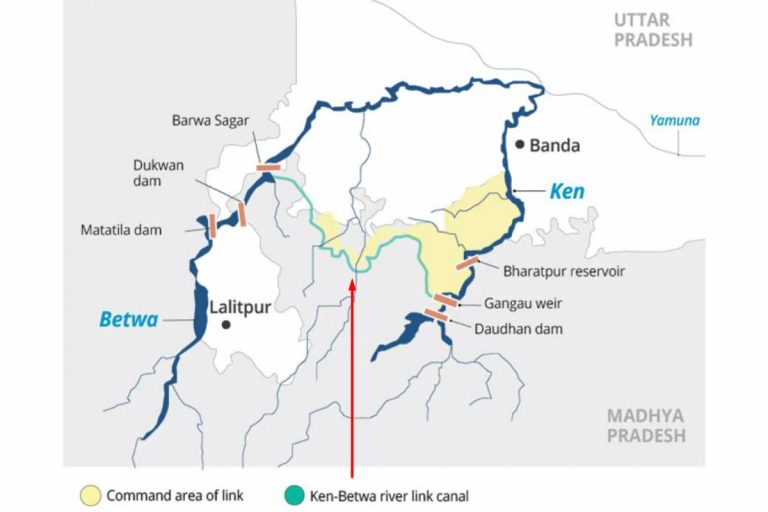
- 09 Jan 2025
Overview of the River Interlinking Concept
The concept of river interlinking in India traces its origins to the 19th century, when Sir Arthur Cotton first proposed inter-basin water transfer to address irrigation issues. Over time, this idea was refined by other experts. It evolved into the National Water Grid and, later, the River-Interlinking Project (ILR) under the Ministry of Water Resources. The goal is to transfer surplus water from rivers to drought-prone areas, aiming for water security, irrigation, and power generation.
Key Projects and Initiatives
- Ken-Betwa River Link Project (KBLP): Launched in December 2024, the KBLP will link the water-surplus Ken River with the drought-stricken Betwa River. It aims to irrigate over 10 lakh hectares, supply drinking water to 62 lakh people, and generate hydropower and solar power. However, concerns over the environmental impact of building a dam within the Panna Tiger Reserve have been raised.
- National River Linking Project (NRLP): The NRLP, formally known as the National Perspective Plan, is an ambitious proposal that includes 30 river links—14 Himalayan and 16 Peninsular—to connect India's rivers and create a giant South Asian Water Grid.
Benefits of Interlinking Rivers
- Flood and Drought Mitigation: Redistributing water from surplus areas to drought-prone regions, such as Bundelkhand, will reduce the severity of floods and droughts.
- Agriculture and Irrigation: Expanding irrigation systems across 35 million hectares of land could significantly boost agricultural productivity and food security.
- Hydropower Generation: The interlinking project has the potential to generate up to 34 GW of hydropower, contributing to India's renewable energy targets.
- Economic Growth: Improving water availability can boost industries, provide drinking water, and support economic development in underdeveloped regions.
- Inland Waterways: The project will also contribute to the expansion of inland waterways, benefiting trade and reducing transportation costs.
Challenges and Concerns
- Environmental Impact:
- Biodiversity Loss: Projects like the Ken-Betwa project raise alarms about the destruction of ecologically sensitive areas, such as the Panna Tiger Reserve.
- River Ecosystem Disruption: Altering natural river courses can harm aquatic life, disrupt deltaic ecosystems, and degrade water quality. For instance, the Sardar Sarovar Dam's impact on the Narmada river system shows the long-term consequences of such projects.
- Pollution: The mixing of cleaner and more polluted rivers could exacerbate water contamination issues.
- Social and Financial Costs:
- Displacement: Large-scale interlinking projects will displace millions, especially marginalized communities and indigenous people, and disturb local livelihoods.
- High Financial Burden: The total estimated cost of the NRLP is ?5.5 lakh crore, which does not include environmental rehabilitation costs or the long-term maintenance of the infrastructure.
- Climate Change: Predictions suggest that climate change could affect river flows and the availability of surplus water. This might render the interlinking project ineffective in the long term.
- Inter-State Conflicts: Water-sharing disputes, like the long-standing issues over the Cauvery and Krishna rivers, could intensify with more interlinking projects.
- Infrastructural Challenges: Maintaining vast canal networks and reservoirs, managing sedimentation, and acquiring land for construction are logistical hurdles.
Alternative Approaches and Solutions
- Efficient Water Management:
- Integrated Watershed Management: Implementing a comprehensive approach to manage existing water resources can reduce the need for large-scale river transfers.
- Groundwater Recharge: Focusing on efficient groundwater management by identifying recharge mechanisms and regulating water use is crucial for sustainability.
- Modern Irrigation Techniques:
- Drip Irrigation: Israel’s success with drip irrigation, which reduces water use by 25%-75%, provides an example of how modern technologies can save significant amounts of water.
- Virtual Water: Emphasizing the import of water-intensive goods (like wheat) could save local water resources, which would otherwise be used for domestic agriculture.
- National Waterways Project (NWP): An alternative to the interlinking project, NWP aims to improve water management by creating navigation channels that double as water distribution networks with a fraction of the land use.
Way Forward
- Comprehensive Impact Assessments: The need for multidisciplinary studies to evaluate the environmental, social, and economic impacts of river interlinking projects cannot be overstated. Stakeholder engagement is crucial for equitable decision-making.
- Sustainable Water Policies: A national water policy should prioritize sustainable water practices, focusing on local solutions, such as water harvesting, watershed management, and smart irrigation.
- Focus on Regional Solutions: Smaller, state-specific projects should be prioritized to address water scarcity issues without triggering large-scale environmental degradation.
The Impact of Climate Change on Earth’s Water Cycle
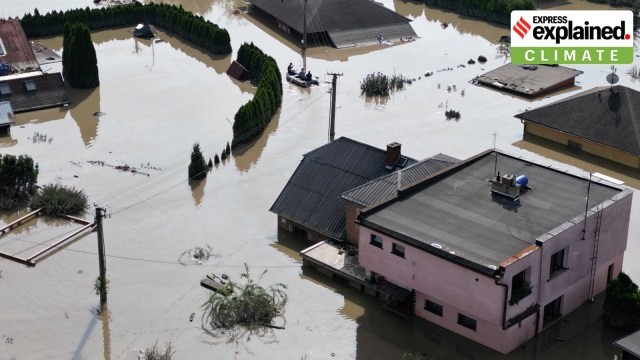
- 08 Jan 2025
In News:
Climate change is significantly affecting Earth's water cycle, leading to extreme weather events such as intense floods and prolonged droughts. According to the 2024 Global Water Monitor Report, this disruption is increasingly evident, as seen in the devastating weather patterns experienced worldwide in 2024. The report, based on data from international researchers, highlights how these changes are directly linked to rising global temperatures and the resulting shifts in precipitation patterns.
Understanding the Water Cycle
The water cycle is the continuous movement of water in various forms—solid, liquid, and gas—throughout the Earth's atmosphere, land, and bodies of water. This cycle involves processes such as:
- Evaporation: Water from the surface of oceans, lakes, and rivers turns into vapor.
- Transpiration: Water is absorbed by plants from the soil and released as vapor.
- Precipitation: Water vapor condenses into clouds and falls as rain or snow, replenishing the Earth's surface.
- Runoff and Infiltration: Precipitation either flows into rivers or infiltrates the soil, contributing to groundwater.
The water cycle is vital for maintaining the planet’s ecosystems, regulating weather patterns, and providing water for all living organisms. However, climate change is intensifying these natural processes, with far-reaching consequences.
Impact of Climate Change on the Water Cycle
As global temperatures rise, climate change is having a profound impact on the water cycle. Warmer temperatures lead to:
- Increased evaporation: As air temperatures soar, more water evaporates into the atmosphere. For every 1°C rise in temperature, the atmosphere can hold about 7% more moisture, which exacerbates storms and increases the intensity of rainfall.
- More intense precipitation: With more moisture in the atmosphere, storms have become more intense, leading to severe flooding in various regions.
- Increased droughts: Warmer air also dries out the soil. This reduces the amount of water available for crops and plants, while also increasing the evaporation rate from soil, leading to longer and more intense droughts.
This disruption of the water cycle is already causing erratic weather patterns, as some regions face severe droughts, while others are experiencing extreme rainfall and floods.
Key Findings from the 2024 Global Water Monitor Report
The 2024 report presents several alarming statistics that highlight the growing impact of climate change on the water cycle:
- Water-related disasters: In 2024, these disasters caused over 8,700 fatalities, displaced 40 million people, and resulted in economic losses exceeding $550 billion globally.
- Dry months: There were 38% more record-dry months in 2024 than the baseline period (1995-2005), underlining the growing frequency of droughts.
- Intense rainfall: Record-breaking rainfall occurred 27% more frequently in 2024 compared to 2000, with daily rainfall records set 52% more often. This shows the growing intensity of precipitation events.
- Terrestrial water storage (TWS): Many dry regions faced ongoing low TWS levels, reflecting the scarcity of water in these areas, while some regions, such as parts of Africa, saw an increase in water storage.
- Future predictions: Droughts may worsen in regions like northern South America, southern Africa, and parts of Asia, while areas like the Sahel and Europe could experience increased flood risks in the coming years.
Conclusion
The findings of the 2024 report underscore the alarming impact of climate change on the global water cycle. As temperatures continue to rise, we can expect more frequent and severe weather events, including extreme flooding and devastating droughts. These changes will affect billions of people worldwide, highlighting the urgent need for action to mitigate climate change and adapt to its consequences. Addressing this challenge requires global cooperation to reduce emissions, enhance water management systems, and protect vulnerable regions from the intensifying effects of climate change.
Implications of China’s Mega-Dam Project on the Brahmaputra River Basin
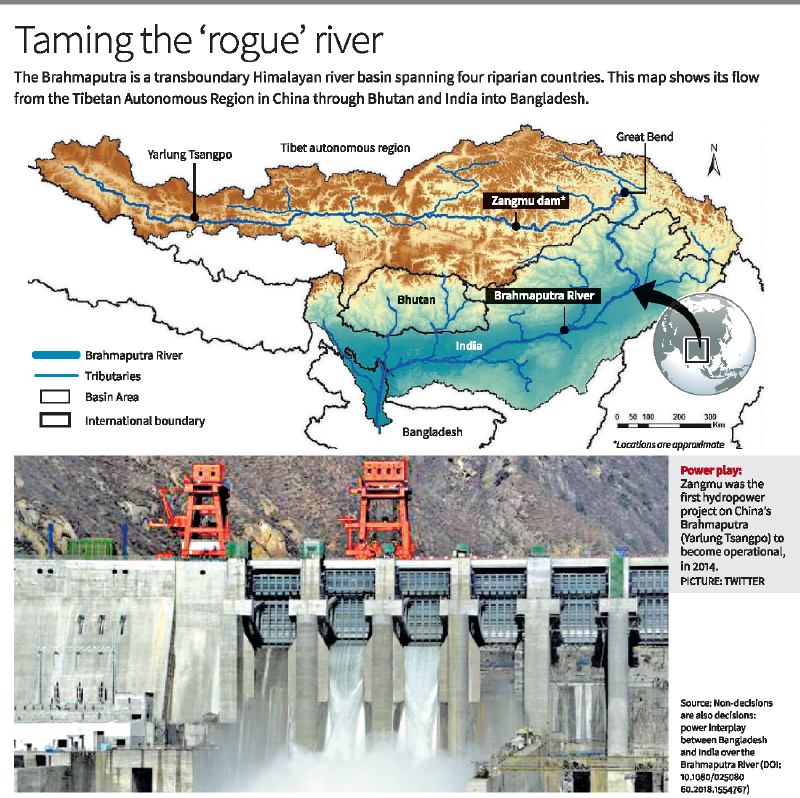
- 07 Jan 2025
Introduction:
China has approved the construction of the Yarlung Tsangpo hydropower project, the world's largest hydropower project, with a capacity of 60,000 MW, on the Brahmaputra River in Tibet. This mega-dam, located at the Great Bend in Medog county, has significant geopolitical, environmental, and socio-economic implications for India, Bhutan, and Bangladesh, the downstream riparian countries.
Geographical and Geopolitical Context:
- The Brahmaputra is a transboundary river system flowing through China, India, Bhutan, and Bangladesh.
- China, located at the river’s source in Tibet, is the uppermost riparian nation, controlling water flow into India and Bangladesh.
- All riparian countries, including China, India, Bhutan, and Bangladesh, have proposed major water infrastructure projects in the river basin, which has become a site for geopolitical rivalry, with mega-dams symbolizing sovereignty.
China’s Hydropower Ambitions:
- The Yarlung Tsangpo project is part of China’s 14th Five-Year Plan (2021-2025) and aims to address the country's energy needs while moving towards net carbon neutrality by 2060.
- The river's steep descent from Tibet provides an ideal location for hydroelectricity generation.
- China’s previous mega-projects, like the Three Gorges Dam, highlight the scale of these ambitions but also raise concerns about environmental and social consequences, including ecosystem disruption, displacement, and seismic risks.
Impact on Downstream Communities:
- Water Flow and Agriculture: China’s mega-dam may significantly alter water flow to India, particularly affecting agriculture and water availability in the northeastern regions. India, reliant on the Brahmaputra for irrigation and drinking water, could face disruptions.
- Silt and Biodiversity: The blocking of silt essential for agriculture could degrade soil quality and damage biodiversity in the river basin.
- Seismic Risks: The region’s seismic activity, coupled with the construction of large dams, heightens the risk of catastrophic events such as landslides and Glacial Lake Outburst Floods (GLOFs), which have previously caused devastation in the Himalayas.
Hydropower Competition Between China and India:
- Both China and India are competing to harness the Brahmaputra's potential for hydropower, with India planning its own large project at Upper Siang.
- Bhutan has also proposed several medium-sized dams, raising concerns in downstream countries about cumulative impacts.
- No comprehensive bilateral treaty exists between India and China to regulate shared transboundary rivers, though they have mechanisms for data sharing and discussions on river issues.
Environmental and Regional Concerns:
- The Brahmaputra river basin is an ecologically sensitive region. The construction of large dams threatens the fragile ecosystem, including agro-pastoral communities, biodiversity, and wetlands.
- Tibet’s river systems are vital for the global cryosphere, affecting climate systems, including monsoon patterns. Disruption to these systems could have broader implications for regional and global climate stability.
Challenges in Bilateral Cooperation:
- India and China have struggled with effective coordination on river management. China has shown reluctance to share critical hydrological data, a concern amplified by the lack of a binding agreement.
- The ongoing geopolitical tensions between the two countries, particularly over the border dispute, further complicate cooperation on transboundary water issues.
Recommendations for India:
- Enhanced Cooperation: India should push for renewed agreements and mechanisms for real-time data exchange with China to prevent ecological and socio-economic damage.
- Public Challenges: India needs to challenge China’s claims that its hydropower projects will have minimal downstream impact, ensuring that India's concerns are addressed in international forums.
- Diplomatic Engagement: Water issues should be prioritized in India’s diplomatic engagement with China, emphasizing the importance of transparency and cooperation to ensure mutual benefit and regional stability.
Conclusion:
The Yarlung Tsangpo mega-dam project poses significant risks to the entire Brahmaputra river basin. A collaborative approach, involving transparent dialogue and cooperation among riparian countries, is essential to mitigate the potential adverse impacts on downstream communities and the fragile Himalayan ecosystem.
NITI Aayog Celebrates 10 Years
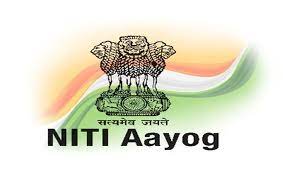
- 06 Jan 2025
In News:
- NITI Aayog, the National Institution for Transforming India, completed its 10th anniversary on January 1, 2025.
- Established to replace the Planning Commission, NITI Aayog was designed to address contemporary challenges such as sustainable development, innovation, and decentralization in a dynamic, market-driven economy.
About NITI Aayog
Establishment and Mandate
- Formation: Created through a Union Cabinet resolution in 2015.
- Primary Mandates:
- Overseeing the adoption and monitoring of the Sustainable Development Goals (SDGs).
- Promoting competitive and cooperative federalism between States and Union Territories.
Composition
- Chairperson: Prime Minister of India.
- Governing Council: Includes Chief Ministers (CMs) of all States and UTs, Lt. Governors, the Vice Chairperson, full-time members, and special invitees.
- CEO: Appointed by the PM for a fixed tenure.
Key Achievements
Policy Advisory and Decentralized Governance
- Shifted focus from financial allocation to policy advisory roles.
- Promoted decentralized governance through data-driven initiatives like the SDG India Index and the Composite Water Management Index.
Innovative Initiatives
- Aspirational Blocks Programme (2023): Focused on 500 underdeveloped blocks for 100% coverage of government schemes.
- Atal Innovation Mission (AIM): Trained over 1 crore students through Atal Tinkering Labs and incubation centres.
- Initiatives like e-Mobility, Green Hydrogen, and the Production-Linked Incentive (PLI) Scheme were conceptualized to drive innovation and sustainability.
Role and Functions of NITI Aayog
Strategic Advice and Federal Cooperation
- Provides policy formulation and strategic advice to both central and state governments.
- Fosters cooperative federalism by encouraging collaboration between the central and state governments.
Monitoring and Evaluation
- Plays a crucial role in monitoring and evaluating policies and programs to ensure alignment with long-term goals.
Promoting Innovation and SDGs
- NITI Aayog contributes to aligning national development programs with the Sustainable Development Goals (SDGs), focusing on innovation, research, and technology in critical sectors.
Key Differences Between Planning Commission and NITI Aayog
Aspect Planning Commission NITI Aayog
Purpose Centralized planning and resource allocation. Focus on cooperative federalism and policy research.
Structure Led by the PM, with Deputy Chairman and full-time members. Led by the PM, with Vice-Chairperson, CEO, and Governing Council.
Approach Top-down, centralized. Bottom-up, encouraging state participation.
Role in Governance Executive authority over policies. Advisory body without enforcement power.
Five-Year Plans Formulated and implemented. Focus on long-term development, no Five-Year Plans.
Challenges Faced by NITI Aayog
- Limited Executive Power: Lacks authority to enforce its recommendations, restricting its influence.
- Coordination Issues: Achieving effective collaboration between central and state governments remains challenging.
- Data Gaps: Inconsistent state-level data hampers accurate policymaking and evaluation.
- Resource Constraints: Limited resources hinder full implementation of initiatives.
- Resistance to Change: Some states resist NITI Aayog's initiatives due to concerns over autonomy and alignment with local needs.
Future Vision and Planning
- Agenda for 2030: Focus on achieving the Sustainable Development Goals (SDGs) in areas like poverty alleviation, education, healthcare, clean energy, and gender equality.
- Vision for 2035: NITI Aayog's 15-year vision document aims for sustainable, inclusive growth, with an emphasis on economic growth, social equity, and environmental sustainability.
- Innovation and Digitalization: Promotes digitalization and innovation through data-driven policymaking and regional focus on tribal and hilly areas.
Conclusion: Reflections on the First Decade
- Despite significant achievements, NITI Aayog’s influence remains limited by its advisory role and resource constraints.
- The shift away from centralized planning, evident since the dissolution of the Planning Commission, has sparked debate about the effectiveness of such a model in ensuring long-term development and inclusive growth.
Draft Digital Personal Data Protection Rules, 2025

- 05 Jan 2025
In News:
The Government of India has introduced the long-awaited draft Digital Personal Data Protection Rules, 2025 to operationalize the Digital Personal Data Protection Act, 2023. These rules contain several significant provisions, including the controversial reintroduction of data localisation requirements, provisions for children's data protection, and measures to strengthen data fiduciaries' responsibilities.
This development holds substantial implications for both Indian citizens' data privacy and global tech companies, especially with respect to compliance, security measures, and data processing.
Data Localisation Mandates
Key Provision: The draft rules propose that certain types of personal and traffic data must be stored within India. Specifically, "significant data fiduciaries", a category that will include large tech firms such as Meta, Google, Apple, Microsoft, and Amazon, will be restricted from transferring certain data outside India.
- Committee Oversight: A government-appointed committee will define which types of personal data cannot be transferred abroad, based on factors like national security, sovereignty, and public order.
- Localisation Re-entry: This provision brings back data localisation, a contentious issue previously removed from the 2023 Data Protection Act after heavy lobbying by tech companies.
- Impact on Big Tech: Companies like Meta and Google had previously voiced concerns that strict localisation rules could hinder their ability to offer services in India, with Google arguing for narrowly tailored data localisation norms.
Role and Responsibilities of Data Fiduciaries
Key Provision: The rules lay out a clear framework for data fiduciaries, defined as entities that collect and process personal data.
- Significant Data Fiduciaries (SDFs): This subcategory will include entities that process large volumes of sensitive data, such as health and financial data. These companies will be held to higher standards of compliance and security.
- Data Retention: Personal data can only be stored for as long as consent is valid; after which, it must be deleted.
- Security Measures: Data fiduciaries must implement stringent measures such as encryption, access control, unauthorized access monitoring, and data backups.
Parental Consent for Children's Data
Key Provision: The draft rules include provisions aimed at protecting children's data, including mechanisms to ensure verifiable parental consent before children under 18 can use online platforms.
- Verification Process: Platforms must verify the identity of parents or guardians using government-issued identification or digital locker services.
- Exceptions: Health, mental health institutions, educational establishments, and daycare centers will be exempted from needing parental consent.
Data Breach Reporting and Penalties
Key Provision: In the event of a data breach, data fiduciaries are required to notify affected individuals without delay, detailing the breach's nature, potential consequences, and mitigation measures. Failure to comply with breach safeguards can result in penalties.
- Penalties for Non-Compliance: Entities that fail to adequately protect data or prevent breaches could face fines of up to Rs 250 crore.
- Breach Notification: The rules mandate timely reporting of all breaches, whether minor or major, and an emphasis on transparency in the breach notification process.
Safeguards for Government Data Processing
Key Provision: The draft rules seek to ensure that the government and its agencies process citizen data in a lawful manner with adequate safeguards in place.
- Exemptions for National Security and Public Order: The rules also address concerns that the government may process data without adequate checks by stipulating lawful processing and protections when data is used for national security, foreign relations, or public order.
Compliance Challenges for Businesses
Key Challenges: The introduction of these rules will impose several challenges for businesses, particularly tech companies:
- Consent Management: Companies will need to implement robust systems to handle consent records, allowing users to withdraw consent at any time. This will require significant infrastructure changes.
- Data Infrastructure Overhaul: Organizations will need to invest in data collection, storage, and lifecycle management systems to ensure compliance.
- Security Standards: Experts have raised concerns about the vagueness of certain security standards, which could lead to inconsistent implementation across sectors.
Penalties and Enforcement
Key Provisions:
- Penalties for Non-Compliance: Entities failing to adhere to the rules may face significant financial penalties, including fines up to Rs 250 crore for serious breaches.
- Repeat Violations: Consent managers who repeatedly violate rules could have their registration suspended or cancelled.
Conclusion:
The Digital Personal Data Protection Rules, 2025 bring important changes to India’s data privacy framework, particularly the reintroduction of data localisation and more stringent requirements for data fiduciaries. These rules aim to strengthen citizen privacy and ensure greater accountability from businesses. However, the challenges in compliance, especially for global tech firms, and the potential impact on service delivery, will need to be closely monitored as the final rules take shape.
Unified District Information System for Education Plus (UDISE+) 2023-24 Report
- 04 Jan 2025
In News:
The UDISE+ report for 2023-24, released by the Ministry of Education, presents key insights into India’s school education system. UDISE+ serves as a comprehensive database, tracking student enrolment, school infrastructure, and other educational parameters, enabling efficient policy implementation and gap identification.
Key Findings:
- Decline in School Enrolment: Enrolment figures in Indian schools have witnessed a significant decline for the first time in recent years. The total enrolment dropped from 26.36 crore (2018-22 average) to 25.17 crore in 2022-23 and further to 24.8 crore in 2023-24, marking a fall of 1.55 crore students or nearly 6%. This drop is attributed to the improved data collection methods which helped eliminate duplicate entries, especially students enrolled in both government and private schools.
- Gender and School Type-wise Trends: The enrolment drop was observed across both government and private schools. Government schools saw a decline of 5.59%, whereas private schools experienced a 3.67% reduction. Gender-wise, the enrolment of boys decreased by 6.04%, while girls’ enrolment dropped by 5.76%, compared to the 2018-22 average.
- State-wise Data: The enrolment drop was not uniform across states. Bihar recorded the largest decline, with a loss of 35.65 lakh students, followed by Uttar Pradesh (28.26 lakh) and Maharashtra (18.55 lakh). In contrast, states like Andhra Pradesh, Delhi, Jammu & Kashmir, and Telangana saw an increase in enrolment during the same period.
- Level-wise Trends: The most significant declines were recorded at the primary (Classes 1-5), upper primary (Classes 6-8), and secondary (Classes 9-10) levels. However, enrolment in pre-primary and higher secondary (Classes 11-12) levels showed an increase in 2023-24 compared to the previous average.
- Impact of Data Refinement: The implementation of Aadhaar-linked student data collection has enhanced the accuracy of enrolment figures. The de-duplication process helped remove cases of students being enrolled in both government and private schools. This revision is expected to provide more accurate data for targeted educational schemes and improve the effectiveness of government programs like Samagra Shiksha and PM POSHAN.
Challenges in Education
Despite the improvements in data collection, several systemic issues persist:
- Access and Retention: High dropout rates, especially at the secondary level, remain a challenge for sustained student retention.
- Disparities among Marginalized Groups: Enrolment among SC, ST, OBC, and minority communities showed a notable decline, reflecting existing inequities in the education system.
- Infrastructure and Teacher Training: Uneven distribution of resources and insufficient teacher training continue to hamper educational outcomes, affecting quality and student engagement.
Way Forward
To address these challenges, the following steps are critical:
- Strengthening NEP 2020: The National Education Policy aims for universal Gross Enrolment Ratio (GER) by 2030, with a focus on skill-based learning and inclusive education.
- Teacher Capacity Building: There is a need for targeted interventions to improve teacher quality and address gaps in the student-teacher ratio.
- Infrastructure Optimization: Schools should optimize their resources based on enrolment trends to improve access and address disparities.
- Data-Driven Monitoring: Continuous monitoring using student-specific data will help identify dropouts and allocate resources efficiently.
Government Extends Special Subsidy on DAP

- 03 Jan 2025
In News:
The Indian government has decided to extend the special subsidy on Di-Ammonium Phosphate (DAP) fertilizer for another year, a decision aimed at stabilizing farmgate prices and addressing the challenges posed by the depreciation of the Indian rupee.
Key Government Decision
- Extension of Subsidy: The Centre has extended the Rs 3,500 per tonne special subsidy on DAP from January 1, 2025 to December 31, 2025.
- Objective: This extension aims to contain farmgate price surges of DAP, India’s second most-consumed fertilizer, which is being impacted by the fall in the rupee's value against the US dollar.
Fertilizer Price Dynamics and Impact
- MRP Caps on Fertilizers: Despite the decontrol of non-urea fertilizers, the government has frozen the maximum retail price (MRP) for these products.
- Current MRPs:
- DAP: Rs 1,350 per 50-kg bag
- Complex fertilizers: Rs 1,300 to Rs 1,600 per 50-kg bag depending on composition.
- Current MRPs:
- Subsidy on DAP: The subsidy includes Rs 21,911 per tonne on DAP, plus the Rs 3,500 one-time special package.
- Impact of Currency Depreciation:
- The rupee's depreciation has made imported fertilizers significantly more expensive.
- The landed price of DAP has increased from Rs 52,960 per tonne to Rs 54,160 due to the rupee falling from Rs 83.8 to Rs 85.7 against the dollar.
- Including additional costs (customs, port handling, insurance, etc.), the total cost of imported DAP is now Rs 65,000 per tonne, making imports unviable without further subsidy or MRP adjustments.
- The rupee's depreciation has made imported fertilizers significantly more expensive.
Industry Concerns and Viability Issues
- Import Viability:
- Fertilizer companies face significant cost pressures due to rising import prices and the current MRP caps.
- Without an increase in government subsidies or approval to revise MRPs upwards, imports will be unviable.
- Even with the extended subsidy, companies estimate a Rs 1,500 per tonne shortfall due to currency depreciation.
- Stock Levels and Supply Challenges:
- Current stock levels for DAP (9.2 lakh tonnes) and complex fertilizers (23.7 lakh tonnes) are below last year's levels.
- With inadequate imports, there are concerns about fertilizer supply for the upcoming kharif season (June-July 2025).
Government’s Strategy and Fiscal Implications
- Compensation for Imports:
- In September 2024, the government approved compensation for DAP imports above a benchmark price of $559.71 per tonne, based on an exchange rate of Rs 83.23 to the dollar.
- With the rupee falling below Rs 85.7, these previous compensation calculations have become outdated.
- Fiscal Impact:
- The extended subsidy will cost the government an additional Rs 6,475 crore. Despite this, political implications of raising the MRP are minimal, as only non-major agricultural states are facing elections in 2025.
Future Outlook and Priorities
- Immediate Priority: The government’s primary concern is securing adequate fertilizer stocks for the kharif season, focusing on ensuring sufficient imports of both finished fertilizers and raw materials.
- Balancing Factors: The government will need to navigate the complex balance of maintaining fertilizer affordability for farmers, ensuring the viability of fertilizer companies, and managing fiscal constraints.
As the subsidy extension is implemented, all eyes will be on the government's ability to ensure a stable supply of fertilizers while safeguarding both farmer interests and economic sustainability in the face of an increasingly challenging exchange rate environment.
Caste-Based Discrimination in Prisons

- 02 Jan 2025
In News:
The Union Ministry of Home Affairs has recently introduced significant revisions to the Model Prison Manual, 2016, and the Model Prisons and Correctional Services Act, 2023. These changes aim to eliminate caste-based discrimination in Indian prisons and establish a standardized approach to defining and treating habitual offenders across the country.
Background
In October 2024, the Supreme Court of India expressed concerns over the persistence of caste-based discrimination within prisons and the lack of consistency in how habitual offenders are classified. In response, the Court instructed the government to amend prison regulations to promote equality and fairness. The newly introduced reforms are in line with the Court's directives and focus on aligning prison practices with constitutional principles.
Addressing Caste-Based Discrimination in Prisons
The recent amendments take specific steps to combat caste-based discrimination within correctional facilities:
- Ban on Discrimination: Prison authorities are now mandated to ensure there is no caste-based segregation or bias. All work assignments and duties will be distributed impartially among inmates.
- Legal Provision Against Discrimination: A new clause, Section 55(A), titled "Prohibition of Caste-Based Discrimination in Prisons and Correctional Institutions", has been added to the Model Act, establishing a formal legal framework to address caste discrimination.
- Manual Scavenging Ban: The amendments extend the provisions of the Prohibition of Employment as Manual Scavengers and their Rehabilitation Act, 2013 to include prisons, prohibiting the degrading practice of manual scavenging or any hazardous cleaning within correctional facilities.
Redefining Habitual Offenders
The updated amendments also standardize the classification and treatment of habitual offenders, in accordance with the Supreme Court’s directions:
- Uniform Definition: A habitual offender is now officially defined as an individual convicted and sentenced to imprisonment for two or more separate offences within a continuous five-year period, provided the sentences were not overturned on appeal or review. Importantly, time spent in jail under sentence is excluded from this five-year period.
- National Consistency: States that do not have specific Habitual Offender Acts must amend their laws within three months to ensure consistency with the new national framework.
Importance of the Reforms
- Promoting Equality: These amendments seek to uphold the constitutional rights of prisoners, ensuring that all individuals, regardless of caste or background, are treated equally and with dignity.
- Eliminating Degrading Practices: The extension of the manual scavenging prohibition to prisons is a vital step in eliminating degrading and inhumane practices, ensuring a more humane environment for prisoners.
- Uniform Framework: The establishment of a standardized definition of habitual offenders ensures a consistent approach in handling repeat offenders across all states, reducing the possibility of arbitrary classifications.
Conclusion
The reforms introduced by the Union Home Ministry mark a significant milestone in India’s prison reform journey. By addressing caste-based discrimination and standardizing the classification of habitual offenders, these amendments reaffirm the country’s commitment to human rights and the rule of law. These changes not only improve the conditions within prisons but also set the stage for future reforms aimed at creating a fairer and more equitable correctional system.
Introduction to Dr. Manmohan Singh's Economic Reforms
- 31 Dec 2024
In News:
Dr. Manmohan Singh, a distinguished economist, played a crucial role in shaping India’s economic trajectory. His leadership, as Finance Minister (1991–96) and Prime Minister (2004–14), is particularly noted for the economic liberalization and reform policies that transformed India’s economy.
India’s Economic Crisis of 1991
- Economic Collapse: India faced a severe balance of payments crisis, with dwindling foreign reserves and rising inflation.
- Key Challenges: Fiscal deficit, industrial stagnation, and trade imbalances worsened by the collapse of the Soviet Union.
- Urgent Measures: Dr. Singh was appointed Finance Minister during this crisis and initiated bold reforms to stabilize and grow the economy.
Key Reforms in 1991
- Devaluation of the Rupee
- Aimed at making Indian exports competitive in global markets.
- Reduced import tariffs and liberalized foreign trade.
- Industrial Policy Reforms
- Abolition of Licence Raj: Deregulated the industrial sector, promoting private enterprises.
- Reduced state control and encouraged foreign investment, leading to industrial growth.
- Banking and Financial Reforms
- Reduced the statutory liquidity ratio (SLR) and cash reserve ratio (CRR).
- Allowed for more credit flow, fostering economic expansion and banking sector efficiency.
- Global Integration
- Introduced economic liberalization policies, integrating India with the global economy and attracting foreign investments.
Economic Growth and Social Welfare Initiatives
- Poverty Reduction: Reforms helped lift millions out of poverty by fostering job creation and industrial growth.
- Mahatma Gandhi National Rural Employment Guarantee Act (MGNREGA): Launched in 2005, providing 100 days of wage employment to rural households.
- Right to Information (RTI) and Right to Education (RTE)
- Empowered citizens by ensuring transparency and access to government information.
- RTE guaranteed free and compulsory education for children aged 6-14.
- Financial Inclusion: Aadhar project introduced to facilitate welfare delivery and financial inclusion.
Legacy of Economic Liberalization and Growth
- Economic Growth: Under his leadership, India’s GDP grew at an average rate of 8%, establishing India as one of the fastest-growing economies.
- Shift to a Market-Driven Economy: Reforms dismantled socialist controls, facilitating the rise of the private sector.
- Attracting Foreign Investment: Economic liberalization and policy reforms made India an attractive destination for foreign capital.
Leadership During Political and Economic Challenges
- Reluctant Prime Minister
- In 2004, Singh became Prime Minister despite initial reluctance, emerging as a unifying figure during coalition politics.
- His tenure saw India’s rise as a global economic power, particularly from 2004–2009.
- Challenges
- Singh’s second term was marred by allegations of corruption and policy paralysis, leading to criticism of his administration.
- However, his personal integrity remained intact, and he maintained focus on governance.
- Historic India-US Nuclear Deal (2008)
- The deal marked a significant shift in India’s foreign relations and energy policies, enabling civilian nuclear trade.
Conclusion
Dr. Manmohan Singh’s economic policies are central to India's modern economic framework. His vision transformed India from a closed, socialist economy to a vibrant, globalized economy, promoting inclusive growth and institutional reforms. Despite facing challenges and criticisms, his legacy remains a testament to strategic policymaking that continues to influence India’s economic landscape.
Sustainable Groundwater Management in India’s Agriculture
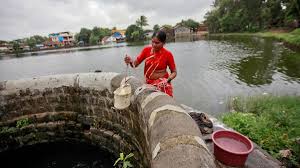
- 30 Dec 2024
Introduction: Groundwater Crisis and Agriculture
- India's Agricultural Dependence on Groundwater: India is a leading producer of water-intensive crops like rice, wheat, and pulses. The country’s agricultural sector heavily depends on groundwater for irrigation, especially for paddy cultivation.
- Over-exploitation of Groundwater: Groundwater extraction for irrigation is increasingly unsustainable, threatening agricultural sustainability in the long term.
Rising Groundwater Usage and Its Implications
- Population Growth and Groundwater Use: Between 2016 and 2024, global population grew from 7.56 billion to 8.2 billion, and India’s population rose from 1.29 billion to 1.45 billion. Concurrently, groundwater used for irrigation increased from 38% in 2016-17 to 52% in 2023-24, exacerbating the water crisis.
- Over-extraction in Major Paddy-Producing States: States like Rajasthan, Punjab, and Haryana have witnessed severe over-exploitation of groundwater for irrigation.
- Rajasthan: Highest groundwater salinisation (22%) despite receiving the highest average rainfall (608 mm) among these states.
- Punjab and Haryana: Lesser groundwater salinity due to canal irrigation and micro-irrigation systems.
Impact of Excessive Fertilizer Use on Groundwater Quality
- Soil Salinity and Groundwater Contamination: Excessive use of fertilizers, particularly for paddy cultivation, increases soil salinity and contributes to groundwater contamination.
- Toxic Chemicals in Groundwater: Nitrate contamination, caused by nitrogen-based fertilizers, and uranium contamination due to phosphate fertilizers are key concerns in states like Maharashtra, Telangana, Andhra Pradesh, and Tamil Nadu.
- Health Risks: Contaminated groundwater poses health risks such as thyroid disorders, cancer, and dental fluorosis, along with reduced agricultural productivity.
Projected Impact on Future Groundwater Availability
- Unsustainable Groundwater Levels: The Central Groundwater Board (CGWB) reports that if current practices continue, over half of the districts in Punjab could face groundwater depletion. Similarly, 21-23% of districts in Haryana and Rajasthan may experience a similar crisis.
- Population Growth and Water Scarcity: With India’s population expected to reach 1.52 billion by 2036, the need for sustainable groundwater management becomes even more critical.
Government Initiatives for Groundwater Management
- National Mission for Sustainable Agriculture (2014): Promotes sustainable practices like zero tillage, cover cropping, and micro-irrigation for efficient water and chemical use.
- Pradhan Mantri Krishi Sinchai Yojana (2015): Aims to boost irrigation efficiency through drip and sprinkler irrigation methods.
- Atal Bhujal Yojana (2019): Targets efficient groundwater management in water-stressed states like Gujarat, Haryana, Rajasthan, Maharashtra, and Uttar Pradesh.
- Success of Government Initiatives: CGWB data shows that the percentage of districts with unsustainable groundwater levels dropped from 23% in 2016-17 to 19% in 2023-24.
Role of State Governments in Groundwater Management
- State-Level Initiatives: States with unsustainable groundwater levels must take proactive measures to manage water resources efficiently.
- Example - Odisha: Odisha's Integrated Irrigation Project for Climate Resilient Agriculture emphasizes irrigation efficiency and climate-smart practices, supported by World Bank funding.
- Encouraging Resource-Efficient Agriculture: States with safe groundwater levels, like Chhattisgarh, Bihar, Jharkhand, Telangana, and Odisha, should adopt water-efficient practices to protect groundwater resources.
Conclusion: Ensuring Agricultural Sustainability and Water Security
- Need for Urgent Action: Scaling up efforts to improve irrigation practices and groundwater management is crucial to securing India’s agricultural future.
- Global Food Security: Protecting groundwater resources will not only ensure water security within India but also contribute to global food security amid climate challenges.
- Blueprint for Sustainable Agriculture: States like Odisha are providing a model for sustainable water management, which can be replicated across water-stressed regions in India.
Surge in E-Waste Generation in India
- 29 Dec 2024
In News:
India has seen a significant increase in electronic waste (e-waste) generation, rising by 72.54% from 1.01 million metric tonnes (MT) in 2019-20 to 1.751 million MT in 2023-24. The sharpest rise occurred between 2019-20 and 2020-21, driven by increased electronic consumption due to the COVID-19 pandemic's work-from-home and remote learning arrangements.
Environmental and Health Concerns
E-waste contains hazardous substances like arsenic, cadmium, lead, and mercury. If not properly managed, these materials can severely impact human health and the environment, contaminating soil and water sources.
Government Efforts: E-Waste Management Rules, 2022
- Introduction of Extended Producer Responsibility (EPR): The government introduced the E-Waste (Management) Rules, 2022, effective from April 1, 2023. These rules focus on making producers responsible for the recycling of e-waste. Producers are assigned recycling targets based on the quantity of e-waste generated or products sold and must purchase EPR certificates from authorized recyclers to meet these targets.
- Integration of Bulk Consumers: Public institutions and government offices, categorized as bulk consumers, are mandated to dispose of e-waste only through registered recyclers or refurbishers, ensuring proper treatment and recycling of the waste.
- Expansion of E-Waste Coverage: The updated rules expanded the scope to include 106 Electrical and Electronic Equipment (EEE) items from FY 2023-24, up from 21 items previously covered under the 2016 E-Waste Rules.
Challenges in E-Waste Recycling and Disposal
- Low Recycling Rates: Although the share of e-waste recycled in India has increased from 22% in 2019-20 to 43% in 2023-24, a significant 57% of e-waste remains unprocessed annually. Informal sector practices, which dominate e-waste handling, often lack the necessary environmental safeguards, leading to improper disposal and environmental contamination.
- Lack of Infrastructure and Awareness: India faces challenges in building adequate infrastructure for e-waste collection and recycling, resulting in improper disposal in landfills. Furthermore, a lack of public awareness regarding proper disposal methods exacerbates the problem.
Global Context and India’s Position
- India ranks as the third-largest e-waste generator globally, following China and the United States. With an increasing rate of e-waste generation, the country faces an urgent need to improve recycling efficiency and adopt sustainable disposal methods.
International and National Conventions on E-Waste
- India is a signatory to several international conventions that govern hazardous waste management, including the Basel Convention, which regulates the transboundary movement of hazardous wastes, and the Minamata Convention, which focuses on mercury. At the national level, India has established the E-Waste (Management) Rules, 2022, and other frameworks to manage and reduce e-waste effectively.
Strategic Recommendations for Effective E-Waste Management
- Harnessing the Informal Sector: India’s informal sector, which handles a significant portion of e-waste, must be integrated into the formal recycling systems. This can be achieved through training and financial support to ensure safe and environmentally responsible recycling practices.
- Technological Innovations: Encouraging research into advanced recycling technologies, such as AI and IoT-based solutions for efficient e-waste collection and tracking, will be crucial for improving the e-waste management system.
- Learning from Global Practices: Countries like the European Union (EU) and Japan have set strong examples. The EU’s Waste Electrical and Electronic Equipment (WEEE) Directive and Japan’s Home Appliance Recycling Law emphasize Extended Producer Responsibility (EPR) and provide models for India to adapt.
Conclusion
To address the growing e-waste challenge, India must improve its recycling infrastructure, integrate the informal sector, and adopt best practices from international models. With sustainable and effective strategies, India can mitigate the environmental and health risks posed by e-waste while promoting a circular economy.
Glass Ceiling Cracks: Women's Rising Role in the 2024 Lok Sabha Elections
- 28 Dec 2024
Introduction:
The 2024 Lok Sabha elections marked a significant step forward for women’s participation in Indian politics. With 800 women candidates contesting across 390 constituencies, this was the highest ever since the 1957 general elections. This surge in women candidates has been a positive reflection of the evolving role of women in India's democratic processes.
Increase in Women Candidates:
- A total of 800 women candidates participated in the 2024 elections, up from 726 in 2019.
- The number of constituencies with no female candidate dropped to a historic low of 152, from 171 in 2019.
- However, despite the rise in participation, only 74 women won, while 629 forfeited their deposits.
Regional Variations:
- The highest number of women candidates were from Maharashtra (111), followed by Uttar Pradesh (80) and Tamil Nadu (77).
- Some constituencies, like Baramati, Secunderabad, and Warangal, saw the highest participation of women, with eight candidates each.
Voter Turnout and Gender Dynamics:
- Women voters surpassed men in voter turnout for the second consecutive time, with 65.78% women casting their vote in 2024, compared to 65.55% of men.
- Assam’s Dhubri recorded the highest female voter turnout at 92.17%, reflecting increased female engagement in the electoral process.
Electoral Data and Gender Insights:
- In 2024, there were 47.63 crore female electors out of 97.97 crore total voters, making up 48.62% of the electorate, a slight increase from 2019.
- The number of female electors per 1,000 male voters reached 946, up from 926 in 2019, showing growing electoral inclusivity.
Challenges and Progress:
- Despite the gains in women’s representation, there remain several constituencies without any female candidates, notably in states like Uttar Pradesh (30 constituencies), Bihar (15), and Gujarat (14).
- Though women's participation has risen, the number of women who win remains disproportionately low, reflecting the challenges they face in a patriarchal political landscape.
Inclusion and Diversity:
- The 2024 elections also saw greater inclusivity, with a rise in third-gender electors, which increased by 23.5% to 48,272.
- Voter turnout among transgender voters nearly doubled, reaching 27.09% compared to 14.64% in 2019.
- Additionally, the number of persons with disabilities (PwD) electors increased to 90.28 lakh, showcasing broader electoral inclusivity.
Conclusion:
The 2024 Lok Sabha elections witnessed a remarkable increase in women’s participation, both as voters and candidates. While the journey toward full gender parity in politics continues, the trends from these elections indicate a growing shift toward more inclusive electoral processes. The data released by the Election Commission further underlines this progress, showing the increasing role of women in shaping India’s democratic future.
Free Movement Regime
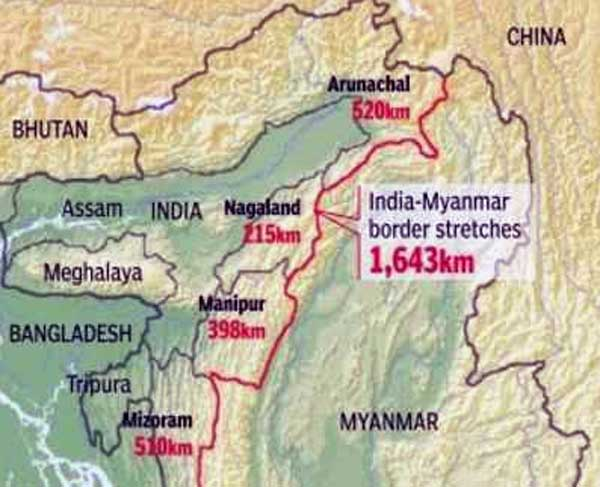
- 27 Dec 2024
In News:
The Indian government, through the Ministry of Home Affairs (MHA), has recently issued new guidelines to regulate the movement of people between India and Myanmar, especially along the border regions. These guidelines come after the suspension of the Free Movement Regime (FMR), which had previously allowed residents within a specified range of the border to move freely. The new protocol aims to enhance internal security and address concerns related to demographic shifts in India's northeastern states.
Background of the Free Movement Regime (FMR)
What is FMR?
The Free Movement Regime (FMR) is a bilateral arrangement between India and Myanmar that permits residents living in border areas to cross the international boundary without a visa. This agreement was established in 1968 to facilitate familial, cultural, and economic exchanges between people living on either side of the border.
Territorial Limits and Evolution
Initially, the FMR allowed free movement within a 40 km radius from the border. However, in 2004, this limit was reduced to 16 km, and additional regulations were introduced in 2016. The most recent development sees the limit further reduced to 10 km, with stricter regulations implemented to regulate the movement.
Recent Developments and New Guidelines
Suspension of FMR
In February 2023, Union Home Minister Amit Shah announced the suspension of the FMR along the India-Myanmar border, citing concerns about internal security and demographic changes, particularly in India's northeastern states. This decision came in the context of growing ethnic violence and political pressures, especially from states like Manipur.
Despite the announcement, the formal scrapping of the FMR is yet to be officially notified by the Ministry of External Affairs (MEA). However, the MHA has issued new guidelines to regulate cross-border movement, focusing on enhancing security without completely discontinuing the regime.
Key Features of the New Guidelines
The updated protocols issued by the MHA include several measures aimed at improving the security and regulation of movement across the border:
- Reduced Movement Limit: The new guidelines reduce the free movement limit from 16 km to 10 km from the border on both sides.
- Border Pass System: Residents wishing to cross into Myanmar or return to India must obtain a "border pass" from the Assam Rifles. This pass allows a stay of up to seven days in the neighboring country.
- Document and Health Checks: Upon entry into India, individuals will undergo a document inspection by the Assam Rifles, followed by security and health checks conducted by state police and health authorities. Biometrics and photographs will be collected, and a QR code-enabled border pass will be issued for verification.
- Designated Entry Points: There will be 43 designated entry and exit points across the border, with biometric verification and health screening required at all points.
- Monitoring and Enforcement: The Assam Rifles will oversee the movement, ensuring that individuals comply with the new regulations. Violations of the movement protocol will result in legal action.
Infrastructure and Technology Implementation
The government plans to establish infrastructure, such as biometric machines and software for border pass issuance. Pilot entry and exit points will be operational soon, with a phased implementation for the remaining points.
Political Reactions and Opposition
Regional Concerns and Opposition
The suspension of the FMR has been a contentious issue in India's northeastern states. The governments of Nagaland and Mizoram have raised objections to the scrapping of the regime, citing the cultural and familial ties of border communities. The Nagaland Assembly passed a resolution opposing the government's decision, while political leaders in Manipur argued that the unregulated movement of people had contributed to ethnic violence in the region.
Specific Concerns in Manipur
The chief minister of Manipur, N. Biren Singh, attributed ongoing ethnic conflicts in the state to the unchecked movement of people across the border. This was particularly evident in the violent ethnic clashes that broke out in 2023. As a result, Singh urged the Home Ministry to cancel the FMR along the India-Myanmar border, and the new guidelines reflect the state's concerns.
Conclusion
The suspension of the Free Movement Regime along the India-Myanmar border, followed by the introduction of stricter guidelines, marks a significant shift in India's border management policy. While the formal scrapping of FMR is yet to occur, the new protocols aim to balance security concerns with the region's long-standing cultural ties. The implementation of biometric checks and designated entry points signifies the government’s focus on modernizing border control while addressing regional concerns. The outcome of this policy shift will have important implications for internal security, demographic dynamics, and bilateral relations between India and Myanmar.
Suposhit Gram Panchayat Abhiyan

- 26 Dec 2024
In News:
On December 26, 2024, Prime Minister Narendra Modi presided over the Veer Bal Diwas celebrations at the Bharat Mandap in New Delhi. This annual event commemorates the martyrdom of the sons of Sri Guru Gobind Singh Ji and highlights the importance of nurturing the next generation. During the occasion, PM Modi also launched the ‘Suposhit Gram Panchayat Abhiyan,’ an initiative aimed at improving nutrition and well-being in rural India.
Veer Bal Diwas: Commemorating Sacrifice and Courage
Veer Bal Diwas was declared on January 9, 2022, by PM Modi to honor the sacrifices made by the young sons of Guru Gobind Singh Ji — Sahibzada Baba Zorawar Singh and Baba Fateh Singh — who were martyred in 1704. During the Mughal-Sikh battles, these two brave boys were captured and offered safety if they converted to Islam, which they refused. Their refusal to abandon their faith led to their brutal martyrdom by being bricked alive in the walls of a fort in Sirhind (Punjab). This act of resilience and unwavering faith is a cornerstone of Sikh history and culture.
Veer Bal Diwas not only commemorates their sacrifice but also serves as a reminder of the strength, faith, and courage demonstrated by all four of Guru Gobind Singh Ji’s sons. It underscores the Sikh ideals of sacrifice, courage, and dedication to faith.
Suposhit Gram Panchayat Abhiyan: Addressing Malnutrition in Rural Areas
On the same day, PM Modi launched the 'Suposhit Gram Panchayat Abhiyan', a nationwide mission focused on improving nutritional outcomes in rural areas. The initiative aims to enhance nutrition-related infrastructure and promote active community participation in tackling malnutrition. By encouraging village-level involvement, the program seeks to ensure that nutrition becomes a community-driven effort.
Key Objectives
- Malnutrition Eradication: The initiative focuses on combating malnutrition in rural communities by improving access to better nutrition.
- Healthy Competition: Encourages competition among villages to adopt best practices for nutrition and overall health.
- Sustainable Development: Promotes long-term, sustainable health practices that align with India's broader goals, such as the Poshan Abhiyan and the Sustainable Development Goals (SDGs).
The program aims to make rural populations active participants in improving their own well-being, strengthening community-driven initiatives for better nutritional outcomes.
Engaging Children and Fostering Patriotism
In line with Veer Bal Diwas, various events were organized to engage young minds across the nation. These initiatives not only raised awareness about the significance of the day but also fostered a culture of courage, dedication, and patriotism.
- Online Competitions: Interactive quizzes were conducted through platforms like MyGov and MyBharat to encourage participation and understanding of Veer Bal Diwas.
- Creative Activities: Schools, Child Care Institutions, and Anganwadi centers organized storytelling, creative writing, and poster-making contests to engage children and promote nationalistic values.
Honoring Young Achievers: PMRBP Awardees
The event also saw the presence of the recipients of the Pradhan Mantri Rashtriya Bal Puraskar (PMRBP), which recognizes children who have demonstrated exceptional abilities in various fields. The awardees, 17 in total, were presented with medals, certificates, and citation booklets by President Droupadi Murmu. These young achievers served as a source of inspiration, reinforcing the theme of celebrating youth potential on Veer Bal Diwas.
Conclusion: Strengthening the Foundation of India’s Future
The celebrations of Veer Bal Diwas and the launch of the Suposhit Gram Panchayat Abhiyan highlight the government’s commitment to nurturing India’s future by investing in its children and rural communities. By honoring historical sacrifices and fostering community-driven health and nutrition initiatives, these efforts contribute to building a resilient, prosperous India that can meet global challenges head-on. The twin focus on children’s development and rural well-being underscores India’s vision of a healthier, more inclusive society, aligned with national and global development goals.
Bank Credit to Women Self-Help Groups (SHGs)
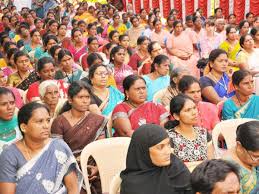
- 21 Dec 2024
Introduction
The Deendayal Antyodaya Yojana – National Rural Livelihoods Mission (DAY-NRLM) is a flagship program by the Ministry of Rural Development (MoRD) that aims to reduce poverty by empowering women, especially through Self-Help Groups (SHGs). These SHGs have been instrumental in improving financial inclusion, providing access to credit, and enhancing the economic and social status of women across India. The program has made significant strides in mobilizing women, improving their access to financial services, and facilitating entrepreneurial ventures in rural areas.
Key Features and Initiatives of DAY-NRLM
- Self-Help Groups (SHGs):
- Formation: DAY-NRLM supports the creation and strengthening of SHGs, primarily focusing on rural women from economically disadvantaged backgrounds.
- Mobilization: As of 2024, over 10.05 crore women have been mobilized into 90.87 lakh SHGs across India.
- Objective: The main goal is to reduce poverty through empowerment by providing access to financial services and sustainable livelihoods.
- Start-up Village Entrepreneurship Programme (SVEP):
- Support for Rural Enterprises: SVEP, a sub-scheme under DAY-NRLM, encourages SHG women and their families to set up small-scale businesses.
- Impact: As of October 2024, 3.13 lakh rural enterprises have been supported under this initiative.
- State-wise Distribution: The program has supported enterprises across various states, with notable contributions from Andhra Pradesh (27,651 enterprises), Kerala (34,569), and Uttar Pradesh (28,904).
- Banking Correspondent Sakhis:
- Role: Women in SHGs are trained as Banking Correspondent Sakhis to enhance access to banking services such as deposits, credit, remittances, pensions, and insurance in rural areas.
- Current Deployment: 1,35,127 Sakhis have been deployed under DAY-NRLM, empowering women to be financial intermediaries in their communities.
- Financial Support for SHGs:
- Revolving Fund: SHGs receive funds ranging from Rs. 20,000 to Rs. 30,000 to boost their operations and financial stability.
- Community Investment Fund: SHGs can avail of up to Rs. 2.50 lakh under the Community Investment Fund to strengthen their financial position.
- Interest Subvention: To make bank loans more affordable, DAY-NRLM provides interest subvention to SHGs, reducing their overall credit costs.
- Online Marketing Platform:
- www.esaras.in: This online platform allows SHGs to market their products, improving their access to broader markets and enhancing their income-generating potential.
Impact of DAY-NRLM and SHGs
- Financial Inclusion: SHGs play a vital role in financial inclusion by providing access to banking services, loans, and insurance to women, especially in rural and remote areas.
- Credit Mobilization: As of November 2024, SHGs have leveraged Rs. 9.71 lakh crore in bank credit, thanks to the capitalization support provided by DAY-NRLM, including Revolving Funds and Community Investment Funds.
- Empowerment of Women: SHGs have significantly contributed to the empowerment of women, providing them with financial independence, social support, and the ability to make decisions in their households and communities.
Challenges Faced by SHGs
- Beneficiary Identification: Ensuring that the most marginalized individuals are included in SHGs can be challenging.
- Training Gaps: There is a lack of quality training programs and expert trainers to build the capacity of SHG members.
- Financial Literacy: Many SHG members have limited knowledge of formal financial services, hindering effective financial management.
- Market Linkages: Poor integration with markets limits the growth potential of SHGs, especially in terms of product sales and business expansion.
- Community Support: Insufficient business environment support and value chain linkages pose challenges to SHG sustainability and growth.
Government Initiatives Supporting SHGs
- SHG-Bank Linkage Programme (SBLP): Launched by NABARD in 1992, this initiative aims to link SHGs with formal banking institutions, facilitating financial inclusion.
- Mission for Financial Inclusion (MFI): A broader initiative to ensure that rural populations have access to affordable financial services such as savings, credit, insurance, and pensions.
- Lakhpati Didi Initiative: Launched in 2023, this initiative empowers SHG women to adopt sustainable livelihood practices and aim for an annual household income exceeding Rs. 1 lakh.
Role of SHGs in Rural Development
- Women Empowerment: SHGs have emerged as a powerful tool for empowering women through financial independence, social security, and the ability to make informed decisions.
- Economic Growth: SHGs foster small-scale entrepreneurship, thereby creating local businesses that contribute to rural economic growth.
- Social Cohesion: By promoting collective action, SHGs provide a social support system that helps in addressing common issues faced by their members, such as health, education, and safety.
Future Prospects and Way Forward
- Technological Integration: SHGs should leverage advanced digital platforms for transaction management, record-keeping, and communication, enhancing efficiency and accessibility.
- Reducing Informal Borrowing: Linking SHGs with formal financial institutions will reduce reliance on informal lenders, promoting financial inclusion.
- Inclusive Approach: SHGs should adopt an inclusive model to ensure that members from diverse socio-economic backgrounds are fairly represented and benefit equally.
- Training and Capacity Building: There is a need for more Community Resource Persons (CRPs) who can guide SHGs in beneficiary identification, financial management, and scaling their activities.
Supreme Court Directs Policy for Sacred Groves Protection

- 20 Dec 2024
In News:
Recently, the Supreme Court of India issued a significant judgment directing the Union Government to formulate a comprehensive policy for the protection and management of sacred groves across the country. These natural spaces, traditionally safeguarded by local communities, play a crucial role in preserving both ecological diversity and cultural heritage.
What are Sacred Groves?
Sacred Groves are patches of virgin forests that are protected by local communities due to their religious and cultural significance. They represent remnants of what were once dominant ecosystems and serve as key habitats for flora and fauna. Typically, sacred groves are not just ecological reserves, but also form an integral part of local traditions, often protected due to spiritual beliefs.
Key Features of Sacred Groves:
- Ecological Value: Sacred groves contribute significantly to biodiversity conservation.
- Cultural Significance: These groves are revered in various religious practices and are central to local traditions.
- Geographical Presence: Sacred groves are found in regions like Tamil Nadu, Kerala, Karnataka, Maharashtra, and parts of Rajasthan.
Supreme Court's Directive
The court's judgment was based on a plea highlighting the decline of sacred groves in Rajasthan, particularly those being lost due to deforestation and illegal land-use changes. While the Wildlife (Protection) Act of 1972 empowers state governments to declare community lands as reserves, the court recognized the need for a unified national policy to protect sacred groves as cultural reserves.
Recommendations:
- Nationwide Survey: The Ministry of Environment, Forest, and Climate Change (MoEF&CC) was instructed to conduct a nationwide survey to map and assess sacred groves, identifying their size and extent.
- Legal Protection: Sacred groves should be recognized as community reserves and protected under the Wildlife (Protection) Act, 1972.
- State-Specific Measures: The Rajasthan government was specifically directed to carry out detailed mapping (both on-ground and satellite) of sacred groves within the state, ensuring that the groves are recognized for their ecological and cultural significance.
The Role of Sacred Groves in Conservation
Sacred groves play a pivotal role in the conservation of biodiversity. They serve as refuges for various plant and animal species, and the traditional practices associated with these groves, such as tree worship, discourage destructive activities like logging and hunting.
Ecological and Cultural Importance:
- Sacred groves often act as critical biodiversity hotspots, preserving rare and indigenous species.
- They help maintain clean water ecosystems and act as carbon sinks, contributing to climate mitigation.
- Practices of non-interference with these areas have allowed flora and fauna to thrive over centuries.
Cultural Significance Across India
The importance of sacred groves is deeply embedded in India's diverse cultural heritage. They are considered the abode of deities, and various regions have unique names and rituals associated with these groves.
Examples of Sacred Groves in India:
- Himachal Pradesh: Devban
- Karnataka: Devarakadu
- Kerala: Kavu
- Rajasthan: Oran
- Maharashtra: Devrai
Piplantri Village Model
A key example highlighted in the judgment was the Piplantri village in Rajasthan, where the community undertook a remarkable transformation of barren land into flourishing groves. The initiative, driven by local leadership, involves planting 111 trees for every girl child born, which has led to several environmental and social benefits.
Impact of Piplantri's Community Efforts:
- Over 40 lakh trees have been planted, which has recharged the water table by 800-900 feet and lowered the local climate by 3-4°C.
- The initiative has contributed to the reduction of female foeticide and empowered women's self-help groups.
- The village now enjoys economic growth, better education opportunities, and increased local income.
Legal and Statutory Framework
Sacred groves are already recognized under existing Indian laws, notably the Wildlife (Protection) Act, 1972, which allows states to declare sacred groves as community reserves. Additionally, the National Forest Policy of 1988 encourages the involvement of local communities in the conservation of forest areas, a principle supported by the Godavarman Case of 1996.
Key Legal Provisions:
- Wildlife (Protection) Act, 1972: Empowers state governments to declare sacred groves as community reserves.
- National Forest Policy, 1988: Encourages community involvement in the conservation and protection of forests, including sacred groves.
- Scheduled Tribes and Other Traditional Forest Dwellers (Recognition of Forest Rights) Act, 2006: Suggests empowering traditional communities as custodians of sacred groves.
Looking Ahead: The Need for Action
The Supreme Court has scheduled further hearings to assess the progress of the survey and mapping efforts by Rajasthan. The court also stressed the importance of empowering traditional communities to continue their role as custodians of sacred groves, ensuring their sustainable protection for future generations.
By recognizing the ecological and cultural significance of sacred groves and encouraging community-driven conservation efforts, the Supreme Court’s ruling sets a precedent for more inclusive environmental policies in India. This could also inspire similar initiatives in other parts of the world, promoting the protection of sacred natural spaces for their critical role in maintaining biodiversity and fostering sustainable communities.
The Costly Push for 100% Electrification of Indian Railways
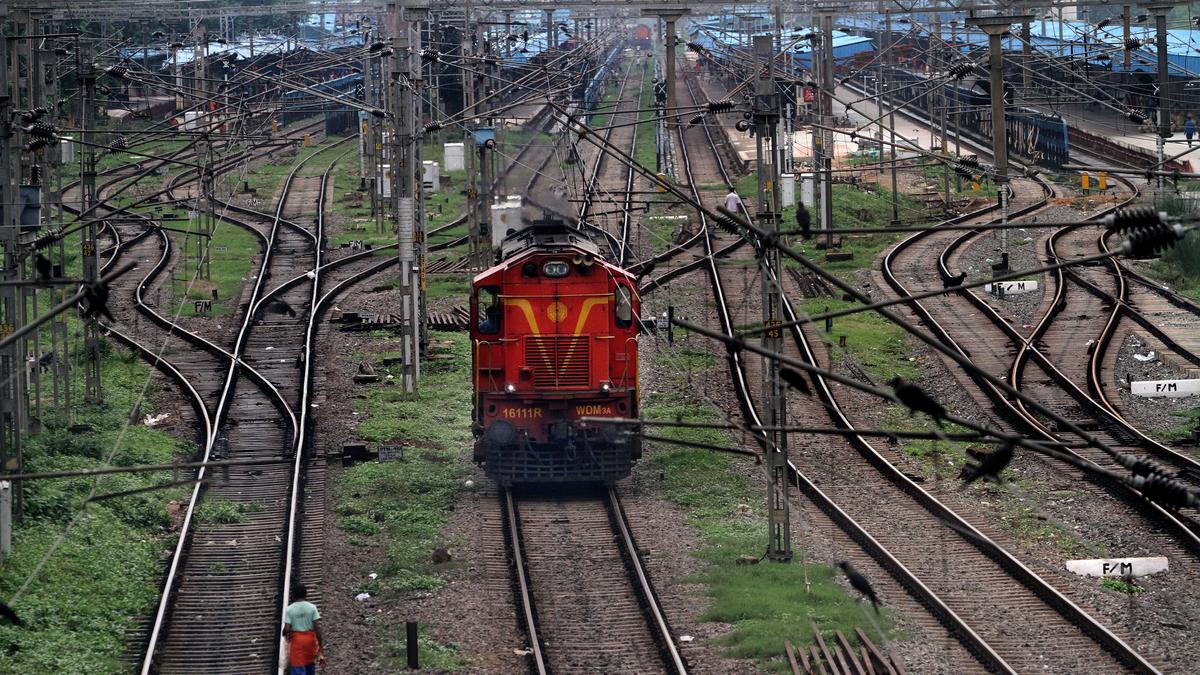
- 19 Dec 2024
Introduction
RITES Ltd., the consultancy arm of the Indian Railways, has secured two contracts to repurpose six broad gauge diesel-electric locomotives for export to African railways. These locomotives, originally designed for India’s broad gauge of 1,676 mm, will be modified for use on railways with the narrower Cape Gauge of 1,067 mm. While this is a commendable re-engineering effort, it also highlights a larger issue within Indian Railways: the unnecessary redundancy of functional diesel locomotives, leading to significant wastage of resources.
The Growing Problem of Idle Diesel Locomotives
As of March 2023, there were 585 diesel locomotives idling across the Indian Railways network due to electrification. This number has now reportedly grown to 760 locomotives, many of which still have more than 15 years of serviceable life. The root cause of this redundancy lies in the government’s mission to electrify the entire broad gauge network at an accelerated pace. This electrification push has resulted in the premature retirement of locomotives that could still serve the network for years, raising questions about the economic and environmental logic behind this decision.
The Justification for Electrification: Foreign Exchange and Environmental Concerns
The Indian government’s electrification drive is often justified on two primary grounds: saving foreign exchange by reducing the import of crude oil and reducing environmental pollution. Additionally, electrification is framed as a step toward a “green railway” powered by renewable energy sources like solar and wind. However, the reality of these claims is more complicated.
Foreign Exchange Savings: A Small Impact on National Diesel Consumption
While electrification may reduce India’s diesel consumption, the impact on national fuel use is minimal. Railways account for just 2% of the country’s total diesel consumption. A report by AC Nielsen in 2014 indicated that the transport sector consumed 70% of the total diesel, with railways accounting for only 3.24%. Even with 100% electrification, the savings in foreign exchange would have little impact on the country’s overall diesel consumption, leaving other sectors like trucking and agriculture as the main contributors.
Environmental Concerns: Shifting Pollution, Not Reducing It
The environmental argument for electrification is also flawed. Electricity in India is still largely generated from coal-fired power plants, with nearly 50% of the country’s electricity coming from coal. Since the Indian Railways is heavily involved in transporting coal, switching from diesel to electric locomotives simply shifts pollution from the tracks to the power plants. This means that the transition to electric traction will not result in a cleaner environment unless the country significantly reduces its reliance on coal. Without a substantial increase in renewable energy generation, the push for a “green railway” remains unrealistic.
The Dilemma of Retaining Diesel Locomotives for Strategic Purposes
Despite the goal of 100% electrification, a significant number of diesel locomotives will remain in service. Reports indicate that 2,500 locomotives will be kept for “disaster management” and “strategic purposes,” although it is unclear why such a large fleet is necessary for these purposes. Additionally, about 1,000 locomotives will continue to operate for several more years to meet traffic commitments. This suggests that even with a fully electrified network, Indian Railways will continue to rely on thousands of diesel locomotives, many of which have substantial residual service life left.
Financial Sustainability and Coal Dependency
The financial sustainability of this transition remains a concern. Currently, the Indian Railways generates a significant portion of its freight revenue from transporting coal—40% of its total freight earnings in 2023-24. If the railways become fully electrified, it will need to find alternative revenue sources, as coal is a primary contributor. Until non-coal freight options can replace this income, the financial health of the railways may be at risk.
Conclusion: Wasted Resources and Unmet Goals
The mission to electrify the Indian Railways, while ambitious, is an example of how vanity projects can lead to colossal waste. Thousands of diesel locomotives are being discarded prematurely, despite their potential to continue serving the network. The environmental and financial justifications for 100% electrification, while appealing in theory, fail to account for the complexities of India’s energy landscape. As a result, the drive to create a “green railway” is likely to fall short, leaving behind a legacy of wasted taxpayer money and unfinished goals.
Arctic Tundra: From Carbon Sink to Carbon Source

- 18 Dec 2024
In News:
The Arctic tundra, a frozen, treeless biome, has historically been a vital carbon sink, absorbing vast amounts of carbon dioxide (CO?) and other greenhouse gases (GHGs). However, recent findings suggest that, for the first time in millennia, this ecosystem is emitting more carbon than it absorbs, a change that could have significant global consequences. This alarming shift was highlighted in the 2024 Arctic Report Card published by the National Oceanic and Atmospheric Administration (NOAA).
The Arctic Tundra’s Role as a Carbon Sink
The Arctic tundra plays a crucial role in regulating the Earth's climate. In typical ecosystems, plants absorb CO? through photosynthesis, and when they die, carbon is either consumed by decomposers or released back into the atmosphere. In contrast, the tundra’s cold environment significantly slows the decomposition process, trapping organic carbon in permafrost—the permanently frozen ground that underpins much of the region.
Over thousands of years, this accumulation of organic matter has resulted in the Arctic storing an estimated 1.6 trillion metric tonnes of carbon. This figure is roughly double the amount of carbon in the entire atmosphere. As such, the tundra has served as a critical carbon sink, helping to mitigate global warming by trapping vast quantities of CO?.
Shifting Dynamics: Emission of Greenhouse Gases
Recent reports indicate a dramatic shift in the Arctic tundra’s role in the carbon cycle. Rising temperatures and increasing wildfire activity have disrupted the tundra’s balance, leading it to transition from a carbon sink to a carbon source.
Impact of Rising Temperatures
The Arctic region is warming at a rate approximately four times faster than the global average. In 2024, Arctic surface air temperatures were recorded as the second-warmest on record since 1900. This rapid warming is causing permafrost to thaw, which in turn activates microbes that break down trapped organic material. As this decomposition accelerates, carbon in the form of CO? and methane (CH?)—a more potent greenhouse gas—are released into the atmosphere.
The experts, explained the process by comparing thawing permafrost to meat left out of the freezer. Similarly, thawing permafrost accelerates the breakdown of trapped carbon.
The Role of Wildfires
In addition to warming temperatures, the Arctic has experienced a surge in wildfires in recent years. 2024 marked the second-highest wildfire season on record in the region, releasing significant amounts of GHGs into the atmosphere. Wildfires exacerbate the thawing of permafrost, creating a feedback loop where increased carbon emissions contribute further to warming, which, in turn, leads to more emissions.
Between 2001 and 2020, these combined factors caused the Arctic tundra to release more carbon than it absorbed, likely for the first time in millennia.
The Global Consequences of Emission
The transition of the Arctic tundra from a carbon sink to a carbon source is alarming, as it represents a significant amplification of global climate change. The release of additional CO? and CH? into the atmosphere further accelerates the greenhouse effect, leading to higher global temperatures. This warming is already having visible consequences around the world, from extreme weather events to rising sea levels.
If the Arctic tundra continues to emit more carbon than it absorbs, it could significantly exacerbate the climate crisis. The report underscores the urgency of addressing global emissions, as reducing greenhouse gases remains the most effective way to prevent further destabilization of this sensitive ecosystem.
Mitigating the Impact: The Path Forward
Despite the alarming trends, the Arctic Report Card suggests that it is still possible to reverse this process. By reducing global GHG emissions, it may be possible to slow the thawing of permafrost and allow the Arctic tundra to regain its role as a carbon sink. Scientists emphasize that mitigating climate change on a global scale is essential to prevent further emissions from the Arctic ecosystem.
Scientists, stressed the importance of emission reductions, stating, “With lower levels of climate change, you get lower levels of emissions from permafrost… That should motivate us all to work towards more aggressive emissions reductions.”
However, current trends suggest that achieving this goal may be challenging. A recent report from the Global Carbon Project indicates that fossil fuel emissions are likely to rise in 2024, with total CO? emissions projected to reach 41.6 billion tonnes, up from 40.6 billion tonnes in 2023.
Commitment to Eradicating Naxalism in Chhattisgarh by 2026
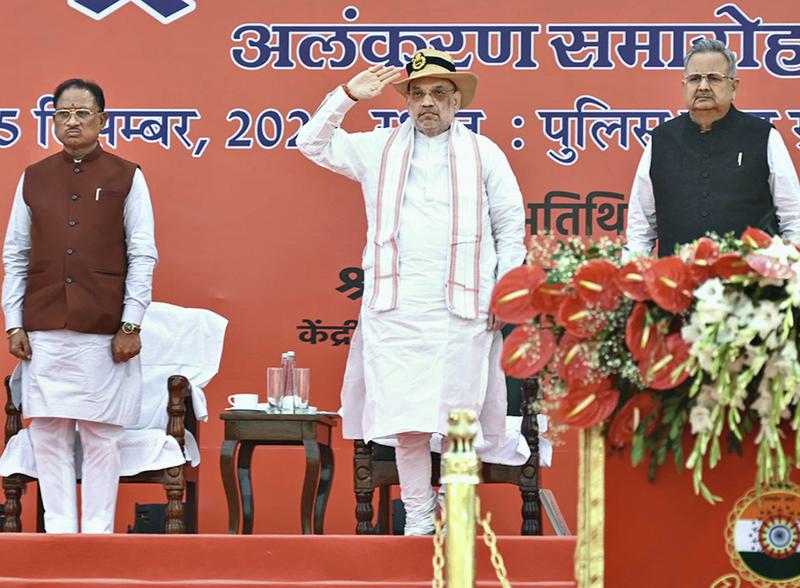
- 17 Dec 2024
Overview
Union Home Minister Amit Shah has reiterated India's commitment to eliminate Naxalism in Chhattisgarh by March 31, 2026. He emphasized the progress made in the fight against Naxalism, highlighting key successes and outlining the strategy for the coming years.
Key Pointers
- Government Commitment: Amit Shah emphasized the joint commitment of the Government of India and the Chhattisgarh state leadership to rid the state of Naxalism by 2026.
- Security Forces’ Success: Over the past year, Chhattisgarh police neutralized 287 Naxalites, arrested around 1,000, and saw 837 surrenders.
- Top Naxal Cadres Neutralized: The state forces successfully neutralized 14 high-ranking Naxal cadres.
- President’s Police Colour Award: Chhattisgarh Police received the President's insignia within 25 years, a significant achievement for the state.
The Three-Pronged Strategy for Eliminating Maoist Insurgency
- Security Measures (Force)
Deployment of Security Forces
- Enhanced Presence: Increased deployment of Central and State police forces in Left-Wing Extremism (LWE) areas.
- Joint Operations: Coordinated operations between state and central forces, including CRPF and COBRA units.
- Upgraded Technology: Incorporation of UAVs, solar lights, and mobile towers to enhance operational efficiency.
Operation SAMADHAN
- Key Elements:
- Smart Leadership: Leading with innovative strategies.
- Aggressive Strategy: Swift, decisive action against insurgents.
- Motivation and Training: Strengthening the capabilities of forces.
- Actionable Intelligence: Real-time intelligence for effective operations.
- Harnessing Technology: Using modern tech for strategic advantage.
2. Development Initiatives
Focused Development Schemes
- PMGSY: Rural road connectivity under the Pradhan Mantri Gram Sadak Yojana.
- Aspirational Districts Program: Improving infrastructure in Naxal-affected areas.
- Skill Development: Targeted schemes in 47 LWE-affected districts to reduce unemployment.
Infrastructure Development
- Special Infrastructure Schemes: Building schools, roads, and bridges in remote areas to integrate them into the mainstream economy.
- Rehabilitation: Focus on providing rehabilitation for former Naxals through education and vocational training.
3. Empowerment (Winning Hearts and Minds)
Public Engagement
- Tribal Empowerment: Strengthening communication with tribal communities to reduce alienation and mistrust.
- Rehabilitation Policies: Surrender schemes offering incentives like education and financial aid to reintegrate former insurgents into society.
Maoism: Ideology and Background
What is Maoism?
- Origin: A form of communism developed by Mao Tse Tung, focusing on armed insurgency to capture state power.
- Core Beliefs: Maoists believe in violence and insurrection as legitimate means to overthrow the state and establish a People’s Democratic Republic.
- Indian Maoism: The Communist Party of India (Maoist), formed in 2004, leads the largest Maoist insurgency in India.
Recent Achievements in Combatting Maoist Insurgency
Key Successes in 2023
- Maoist-Free Villages: Villages in Dantewada declared "Maoist-free," a significant victory for the state.
- Reduction in Security Forces’ Casualties: 14 deaths in 2024, a dramatic decrease from 198 deaths in 2007.
- Infrastructure and Logistical Support: Enhanced use of helicopters and fortified police stations.
Government’s Commitment to Rebuilding
- Rehabilitation and Welfare: The government is implementing policies to improve the living standards of affected families, including 15,000 houses for Naxal-affected regions.
- Economic Development: Focus on building infrastructure and providing employment through skills training programs.
Challenges in Eliminating Naxalism
Socio-Economic Issues
- Exploitation of Tribals: Marginalization of tribals due to displacement for mining and forestry.
- Lack of Infrastructure: Basic amenities like roads, schools, and healthcare are absent in many areas.
- Centralized Naxal Command: The CPI (Maoist) retains a strong leadership, despite fragmentation of its forces.
Governance and Trust Issues
- Alienation of Local Populations: Ineffective governance and poor implementation of welfare schemes fuel local support for Naxal groups.
- Resource Conflict: The Naxals exploit rich mineral resources in the region to fund their insurgency.
Way Forward
Governance and Economic Reforms
- Tribal Empowerment: Form Tribal Advisory Councils as per the Fifth Schedule for better resource management.
- Land Redistribution: Enforce the Land Ceiling Act to reduce inequality.
- Livelihood Programs: Offer alternative livelihoods to reduce dependency on illegal activities.
Security Measures
- Paramilitary Deployment: Specialized forces to secure tribal areas and enable local governance.
- Resource Management: Ensure sustainable exploitation of natural resources, involving tribal communities in the decision-making process.
Peace Dialogues
- Inclusive Policies: Engage in dialogue with Naxals to facilitate their reintegration into mainstream society.
Conclusion
Naxalism in India, particularly in Chhattisgarh, is a complex issue rooted in socio-economic inequalities, lack of development, and historical alienation of tribal communities. The government's approach, encapsulated in the SAMADHAN strategy, combines security operations with developmental initiatives and a focus on empowerment to tackle the problem. With a clear commitment to eliminate Naxalism by 2026, the Indian government is making significant strides in reducing violence, improving governance, and integrating affected communities into the mainstream.
How would a carbon market function?

- 16 Dec 2024
In News:
COP29, the ongoing climate conference in Azerbaijan’s capital Baku, has given a fillip to the idea of using carbon markets to curb carbon emissions by approving standards that can help in the setting up of an international carbon market as soon as the coming year.
Introduction to Carbon Markets
- Carbon markets allow the buying and selling of the right to emit carbon dioxide (CO2) into the atmosphere.
- Governments issue certificates known as carbon credits, each representing the right to emit 1,000 kilograms of CO2.
- The total number of credits issued is capped to control carbon emissions. Companies and individuals who don’t have credits cannot emit CO2.
Trading of Carbon Credits
- Carbon Credit Trading: Companies holding more carbon credits than needed can sell them to others who need more, with the price determined by market forces.
- Carbon Offsets: Businesses can also purchase carbon offsets, often provided by environmental NGOs, which promise to reduce emissions (e.g., by planting trees). These offsets counterbalance the firm’s carbon emissions.
- The trading of both credits and offsets is designed to create financial incentives for companies to reduce their carbon footprint.
Advantages of Carbon Markets
- Addressing Externalities: Carbon emissions are a classic example of an economic externality, where the costs of pollution are not reflected in market prices.
- Market Efficiency: By allowing firms to buy and sell carbon credits, the system internalizes the cost of carbon emissions, encouraging businesses to reduce emissions to avoid higher costs.
- Incentive for Emission Reduction: Carbon markets aim to create a financial reason for companies to lower their emissions, thus helping mitigate climate change.
Voluntary vs. Government-Mandated Carbon Markets
- Voluntary Carbon Reporting: Many corporations prefer voluntary systems like the Carbon Disclosure Project (CDP) for reporting their emissions, fearing government-imposed restrictions.
- Market Flexibility: Corporations like ExxonMobil and General Motors argue that carbon markets with freely traded credits allocate carbon allowances more efficiently than government-imposed limits. This allows firms to purchase credits from others, optimizing resource allocation without restricting output.
- Corporate Resistance to Government Intervention: Firms are often reluctant to accept strict government budgets for carbon emissions, fearing increased operational costs and production limitations due to diverse supply chains.
Issues and Criticisms of Carbon Markets
- Government Manipulation of Credit Supply: Governments may increase the number of carbon credits issued, leading to lower prices and reduced incentives for emission reductions.
- Lack of Accountability in Carbon Offsets: Critics argue that some companies buy carbon offsets as a form of virtue signalling, without genuine concern for their environmental impact. This undermines the effectiveness of the offsets.
- Government Mismanagement: Political decision-making may lead to the over-restriction of carbon credits, potentially slowing economic growth by limiting available emissions allowances. The ability of governments to accurately determine the optimal supply of carbon credits is a contentious issue.
The Concept of Carbon Credits and Their History
- Introduction of Carbon Credits: Carbon credits were first introduced in the 1990s in the U.S., specifically through a cap-and-trade model designed to control sulfur dioxide emissions. This approach later expanded to include carbon emissions.
- Role of Carbon Markets: In essence, these markets aim to create a financial mechanism where firms can trade the right to pollute, ensuring a balance between economic growth and environmental protection.
Criticism of Carbon Offsets
- Effectiveness of Offsets: Experts are critical of carbon offsets, arguing that they do not always lead to meaningful reductions in emissions. For example, some companies may purchase offsets without ensuring that the projects are genuinely offsetting their emissions.
- Moral Hazard: Critics suggest that offset programs may lead to firms simply paying for the right to pollute, rather than actually reducing emissions in their operations.
Conclusion
- Carbon Markets as a Tool for Emission Reduction: Despite the criticisms, carbon markets remain a promising tool for mitigating climate change, provided they are carefully regulated and implemented.
- The Future of Carbon Trading: As discussions at COP29 evolve, the development of international standards for carbon trading could potentially enhance the effectiveness of these markets, offering a viable path to global emission reductions.
Agrarian Crisis in India
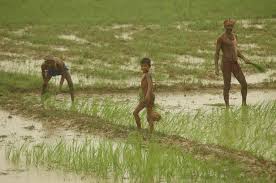
- 15 Dec 2024
Introduction
- Supreme Court Committee Report: A high-level committee, appointed by the Supreme Court in September 2024, submitted its interim report on November 21, 2024, highlighting the severe distress in India's agricultural sector.
- Key Focus Areas:
- Income crisis faced by farmers
- Rising debt burden
- Farmer suicides
- Stagnation in agricultural growth
- Impact of climate change
Key Findings of the Supreme Court Committee Report
Income Crisis in Indian Agriculture
- Daily Earnings: Farmers earn an average of just Rs 27 per day from agricultural activities, a meager income that makes it impossible to sustain a decent standard of living.
- Average Household Income: Agricultural households have an average monthly income of Rs 10,218, far below the basic threshold for a decent life.
Escalating Debt Burden
- Institutional Debt: In 2022-23, Punjab's institutional debt was Rs 73,673 crore, and Haryana's was Rs 76,630 crore.
- Non-Institutional Debt: This burden is further exacerbated by non-institutional debt, contributing 21.3% of total debt in Punjab and 32% in Haryana.
Farmer Suicides
- High Suicide Rates: Over 400,000 farmers and agricultural workers have committed suicide since 1995, primarily due to escalating debt and financial despair.
- Survey Findings: In Punjab, a survey found 16,606 suicides among farmers and farm workers between 2000 and 2015.
Stagnation in Agricultural Growth
- Growth Rates: Between 2014-15 to 2022-23, Punjab's agricultural growth was a mere 2% per year, and Haryana’s was 3.38%, far below the national average.
Disproportionate Employment
- Workforce Participation: 46% of India’s workforce is employed in agriculture, but it contributes only 15% to national income. Many farmers face disguised unemployment and underemployment.
Impact of Climate Change
- Environmental Degradation: Climate change, water depletion, erratic rainfall, and soil degradation are further destabilizing the agricultural sector and threatening food security.
Challenges Faced by the Agricultural Sector
1. Limited Access to Credit and Finance
- Small Farmers: 86% of Indian farmers are small and marginal, struggling to access institutional credit, which limits their ability to invest in modern agricultural inputs.
2. Fragmented Landholdings
- Small Landholdings: The average landholding is 1.08 hectares, insufficient for large-scale, efficient farming, limiting the adoption of modern agricultural techniques.
3. Outdated Farming Practices
- Traditional Methods: Many farmers continue using traditional, inefficient farming practices due to limited access to modern technology.
4. Water Scarcity and Irrigation Issues
- Dependence on Monsoons: 60% of cropped area is rainfed, and only 52% of gross sown area is irrigated, exacerbating vulnerability to droughts and erratic rainfall.
5. Soil Degradation and Erosion
- Degraded Land: 30% of India's agricultural land is affected by soil degradation, leading to lower productivity and reduced resilience to pests.
6. Inadequate Agricultural Infrastructure
- Post-Harvest Losses: Insufficient storage, cold chain, and rural infrastructure result in 15-20% post-harvest losses, further reducing farmers' income.
Government Schemes for Farmers' Welfare
- PM Kisan Samman Nidhi Yojana: Direct income support for farmers.
- PM Fasal Bima Yojana (PMFBY): Crop insurance scheme.
- PM Krishi Sinchai Yojana (PMKSY): Irrigation schemes to enhance water availability.
- e-NAM: National electronic market for better price realization.
- Agriculture Infrastructure Fund: Financial support for infrastructure development.
- Promotion of Farmer Producer Organizations (FPOs): Empowering farmers through collective marketing and production.
Recommendations for Addressing the Crisis
1. Loan Waivers and Debt Relief
- Debt Alleviation: Immediate measures to reduce the crushing debt burden through loan waivers, a key factor behind farmer suicides.
2. Legal Recognition of Minimum Support Price (MSP)
- MSP Protection: Granting legal backing to MSP to ensure farmers receive a fair price for their produce, reducing price volatility and income insecurity.
3. Promotion of Sustainable Farming
- Organic Farming: Encouraging organic farming and crop diversification to improve soil health and reduce dependency on a few staple crops.
- Climate-Resilient Agriculture: Adopting water-efficient practices, drought-resistant crops, and sustainable farming techniques.
4. Agricultural Marketing Reforms
- Market Efficiency: Improving the agricultural marketing system by establishing farmer-friendly markets and reducing intermediaries to ensure better price realization.
5. Rural Employment Generation
- Diversification: Creating non-agricultural employment opportunities in rural areas through skill development and promoting agro-based industries.
6. Climate Adaptation Measures
- Water Management: Enhancing water management systems and promoting rainwater harvesting.
- Resilience to Climate Change: Investing in climate-resilient infrastructure and farming technologies.
Implications of the Findings
Economic Impact
- Agricultural Decline: Continued neglect of the agricultural sector poses a risk to India's economy, potentially leading to long-term economic instability and increased rural-urban migration.
Food Security
- Threat to National Food Security: Declining agricultural productivity, exacerbated by climate change and inadequate reforms, threatens the country’s ability to meet food demands.
Social Stability
- Farmer Suicides and Unrest: The ongoing crisis, marked by widespread suicides and growing despair, risks social instability and unrest, particularly in rural regions.
Conclusion: Urgent Need for Reform
The committee’s report underscores the critical need for comprehensive reforms in India’s agricultural sector to alleviate the crisis. Immediate action is required to address the debt burden, improve incomes, and ensure sustainable agricultural practices. Legal reforms like MSP recognition and debt relief, along with investments in infrastructure and climate resilience, are key to securing a stable future for Indian agriculture.
Artificial Solar Eclipse: Why Are Satellites Trying to Block the Sun?
- 14 Dec 2024
Introduction
The European Space Agency (ESA) has launched Proba-3, a mission that will create an artificial solar eclipse to study the Sun's atmosphere, known as the corona. This mission aims to demonstrate new technology and address unresolved questions about the Sun's outer layers.
What is an Artificial Solar Eclipse?
- Definition: An artificial solar eclipse mimics the natural phenomenon where the moon blocks sunlight, allowing detailed observation of the Sun’s corona.
- Created By: The eclipse is created by two satellites, which align to block the Sun's light and generate a controlled shadow for scientific study.
- Purpose: The goal is to study the Sun’s corona, particularly to understand why it is significantly hotter than the Sun’s surface.
How Does the Proba-3 Create an Eclipse?
Launch and Spacecraft
Proba-3 was launched on December 5 from the Satish Dhawan Space Centre in India. The mission uses two satellites:
- Coronagraph Spacecraft (CSC): This spacecraft guides the other satellite.
- Occulter Spacecraft (OSC): This satellite has a disk that creates a controlled shadow onto the CSC.
Formation Flying
Using Precise Formation Flying (PFF) technology, the two spacecraft maintain a precise distance of 150 meters (492 feet) apart, aligning perfectly with the Sun. This alignment mimics the effect of a solar eclipse.
Precision Requirements
The eclipse will need to maintain millimetre-level accuracy for up to six hours per orbit to provide scientists with stable observational conditions.
Mission Goals
- Demonstrating PFF Technology: One of the primary objectives of the Proba-3 mission is to demonstrate PFF technology. This involves using GPS and inter-satellite radio links for positioning, as well as maintaining a precise distance between the two spacecraft.
- Studying the Sun’s Corona: Another goal is to understand why the corona is hotter than the Sun's surface. The onboard instruments, including a coronagraph, will help with this research. The coronagraph will block out the Sun’s bright light, enabling clearer observations of the corona.
- ASPICCS Coronagraph: The Proba-3 coronagraph, named the Association of Spacecraft for Polarimetric and Imaging Investigation of the Corona of the Sun (ASPICCS), is designed to observe the corona in high detail, mimicking the observational conditions of a total solar eclipse.
Why Is This Such a Big Deal?
- Revealing the Sun’s Corona: The Sun’s corona is typically invisible because it is much less bright than the Sun’s surface. It can only be seen during a solar eclipse when the Moon blocks the Sun's light.
- Predicting Space Weather: Studying the corona helps scientists predict space weather and geomagnetic storms, which can disrupt satellites and other systems on Earth.
- Extended Observations: Unlike natural solar eclipses, which last only a few minutes, Proba-3 can provide six hours of observation time in each orbit (approximately 19 hours and 36 minutes), allowing for continuous study of the corona.
What is Precise Formation Flying (PFF) Technology?
- Definition: PFF technology allows satellites to maintain exact positions and orientations relative to each other in orbit.
- Mechanism: The technology uses GPS, inter-satellite radio links, and automated control systems to ensure alignment.
- Implementation in Proba-3: In the Proba-3 mission, the Coronagraph and Occulter spacecraft stay 150 meters apart, using PFF to maintain millimetre-level precision, which is crucial for simulating a solar eclipse.
- Benefits: PFF enhances mission accuracy and provides a platform for advanced observational techniques that will enable more detailed studies of the Sun's corona.
Conclusion
Proba-3 is a groundbreaking mission that will offer unprecedented insights into the Sun’s corona by simulating solar eclipses using advanced satellite technology. By studying the Sun’s outer layers, scientists aim to improve our understanding of space weather and the mysterious temperature anomaly of the corona.
India-Bhutan Relations
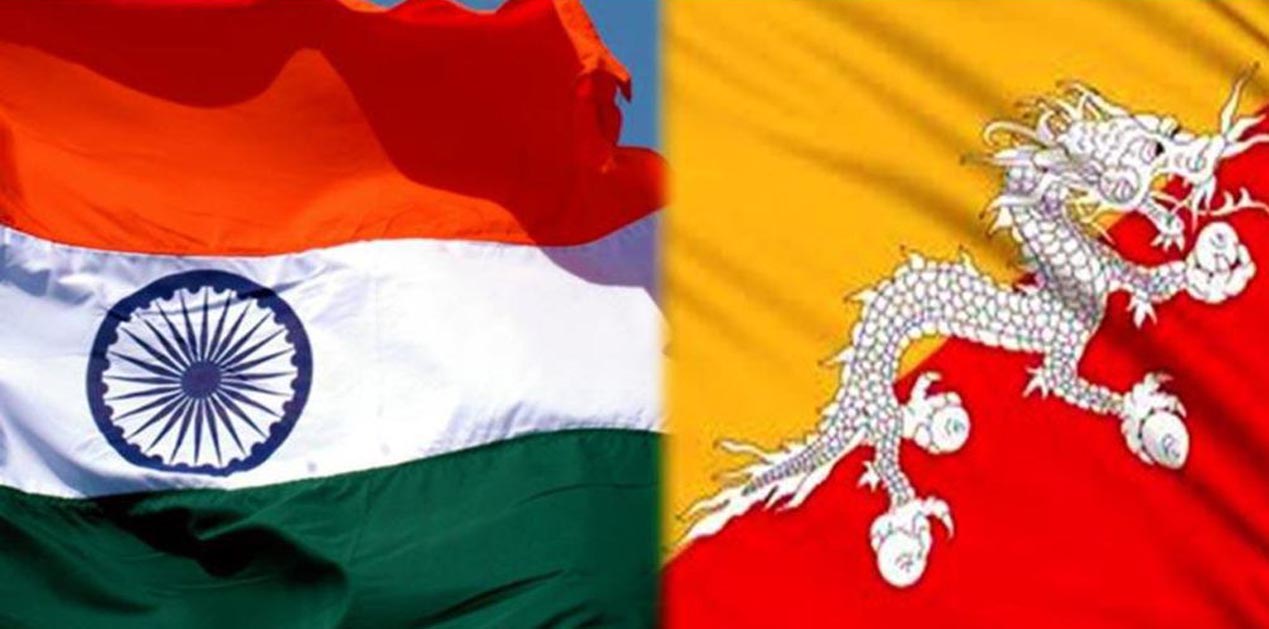
- 13 Dec 2024
In News:
The December 2023 visit of Bhutan’s King and Queen to India highlights the enduring and strategic partnership between the two nations. Amidst growing Chinese influence and Bhutan’s domestic challenges, the visit holds significant geopolitical relevance, reinforcing India-Bhutan relations and underscoring Bhutan's critical role in India’s regional security.
Reaffirmation of India-Bhutan Relations
The visit reaffirmed the strong, time-tested partnership between India and Bhutan, rooted in mutual trust and cooperation. India reiterated its commitment to Bhutan's socio-economic development, increasing its financial aid for the 2024-2029 period from ?5,000 crore to ?10,000 crore. Notably, Bhutan’s flagship Gelephu Mindfulness City Project, championed by King Jigme Khesar, received strong Indian backing, reflecting India’s willingness to align with Bhutan’s developmental priorities.
Strategic Areas of Cooperation
Clean Energy and Hydropower
Bhutan remains central to India’s renewable energy strategy, particularly in hydropower, a vital part of Bhutan's economy. Bhutan exports the majority of its hydropower to India, reinforcing bilateral ties in the energy sector. This cooperation aligns with India’s regional energy security goals, with both nations seeking to strengthen clean energy initiatives.
Infrastructure Development
The visit also emphasized infrastructure projects, vital for enhancing Bhutan's connectivity. These projects are strategically significant, considering Bhutan's geostrategic importance in the Himalayas. Infrastructure development further strengthens the ties between the two nations, with a focus on mutual benefits and regional stability.
Geopolitical Context: China’s Growing Influence
China-Bhutan Border Disputes
The border issue with China has been ongoing since 1984. In 2023, Bhutan and China signed an agreement to expedite the settlement and demarcation of their borders. China’s push for resolution is part of its broader strategy to reduce India’s influence in Bhutan. The disputed areas, particularly those near India’s Siliguri Corridor, hold strategic importance for New Delhi. Any territorial adjustments could undermine India’s access to its Northeastern states.
Chinese Influence and Economic Engagement
China has been constructing villages along disputed border areas, altering ground realities and establishing civilian hubs that could serve as military outposts. Additionally, China is offering economic incentives to Bhutan, including promoting tourism and investing in Bhutan’s telecom sector, seeking to draw the country into closer economic and diplomatic alignment.
India’s Role in Bhutan’s Security and Sovereignty
Strategic Dependence on India
Bhutan's small military relies heavily on Indian support for training and defense. The 2017 Doklam standoff, where Indian forces intervened to prevent China from constructing a road in disputed territory, underscored India's crucial role in safeguarding Bhutan’s territorial integrity.
Friendship Treaty
The India-Bhutan Friendship Treaty is the cornerstone of their bilateral relations, ensuring Bhutan's sovereignty while reinforcing India's role in Bhutan’s foreign and defense policies. India's increased financial support aims to counter China’s economic influence in Bhutan.
Challenges for Bhutan
Balancing India and China
Bhutan is navigating a delicate balance between preserving its historical ties with India and engaging with China, which offers economic benefits. However, Bhutan’s sovereignty concerns limit its ability to make independent diplomatic decisions.
Domestic Issues
Bhutan faces challenges such as youth migration and limited economic diversification. Over-reliance on hydropower and a lack of industrial development make it vulnerable to external pressures, particularly from China.
The Strategic Importance of Bhutan to India
Geopolitical Buffer
Bhutan's location is vital for India’s security, especially in relation to the Siliguri Corridor, a narrow land link connecting India’s Northeast. Any Chinese presence in Bhutan’s disputed regions could disrupt access to this crucial corridor.
Hydropower Collaboration
Bhutan’s hydropower exports are central to India’s renewable energy strategy, and their cooperation in this area ensures mutual benefits.
Way Forward
India must continue to prioritize Bhutan’s development needs, ensuring robust financial and infrastructural support. Proactive engagement is necessary to address Bhutan’s concerns, particularly in light of China’s growing influence. Additionally, India should support Bhutan’s economic diversification to reduce reliance on external actors.
Impeachment of Judges
- 12 Dec 2024
In News:
The recent controversy surrounding remarks made by Justice Shekhar Kumar Yadav of the Allahabad High Court has prompted calls for his impeachment. During an event organized by the Vishwa Hindu Parishad (VHP), Justice Yadav made statements that were perceived as communal, leading to concerns over judicial impartiality. This incident has reignited discussions about the impeachment process for judges in India, highlighting the delicate balance between judicial independence and accountability.
Impeachment Process for Judges in India
In India, the impeachment process for judges, although not explicitly mentioned in the Constitution, serves as a mechanism to ensure judicial accountability while safeguarding judicial independence. The process is outlined under Articles 124 and 218 of the Indian Constitution, which govern the removal of Supreme Court and High Court judges, respectively.
Grounds for Impeachment
Judges in India can be removed on two grounds:
- Proved Misbehavior: Conduct that breaches the ethical standards of the judiciary.
- Incapacity: A judge’s inability to perform judicial duties due to physical or mental infirmity.
These grounds are clearly specified to prevent arbitrary removal, ensuring that the process remains fair and just.
Steps in the Impeachment Process
- Initiation of Motion: The process begins when a motion for impeachment is introduced in Parliament, either in the Lok Sabha or Rajya Sabha. The motion must be supported by at least 100 members of the Lok Sabha or 50 members of the Rajya Sabha. This ensures significant parliamentary backing before the motion proceeds.
- Formation of an Inquiry Committee: If the motion is admitted, a three-member inquiry committee is constituted. This includes a Supreme Court judge, the Chief Justice of a High Court, and a distinguished jurist. The committee conducts a thorough investigation into the allegations.
- Committee Report and Parliamentary Debate: Following the investigation, the committee submits its findings. If the judge is found guilty, the report is debated in Parliament. Both Houses must approve the motion by a special majority, which requires a two-thirds majority of members present and voting, as well as a majority of the total membership.
- Final Removal by the President: Once the motion is passed in both Houses, it is presented to the President, who issues the removal order.
Safeguards Against Misuse
The impeachment process includes several safeguards to prevent misuse:
- High Threshold for Initiation: The requirement for significant support from Parliament ensures that the process cannot be initiated frivolously.
- Objective Inquiry: The inquiry committee, comprising legal experts, guarantees an impartial investigation.
- Parliamentary Scrutiny: Both Houses of Parliament are involved, ensuring that the process undergoes democratic scrutiny.
Challenges and Precedents
Despite the rigorous process, no Supreme Court judge has been successfully impeached to date. Past attempts, such as those against Justice V. Ramaswami (1993) and Chief Justice Dipak Misra (2018), were unsuccessful. These instances demonstrate the complexities involved in the impeachment process.
Guidelines for Judges’ Public Statements
Judges in India are entitled to freedom of speech, but they are expected to exercise caution in public statements to maintain the dignity of their office. The Bangalore Principles of Judicial Conduct (2002) and the Restatement of Values of Judicial Life (1997) outline key principles for judicial conduct, including:
- Non-Interference in Political Matters: Judges should refrain from commenting on political issues to avoid any perception of bias.
- Impartiality: Judges must avoid statements that could prejudice ongoing cases or align them with specific ideologies.
Upholding Judicial Impartiality in a Diverse Society
To maintain impartiality, judges must interpret laws based on constitutional values of justice, equality, and secularism. Furthermore, the judiciary must ensure representation from diverse backgrounds to foster inclusivity and reduce systemic biases. Training programs focused on cultural competence and social diversity are essential to ensure that judges are sensitive to the needs of marginalized communities.
Conclusion
The impeachment process, while stringent, plays a critical role in maintaining judicial accountability in India. As seen in the case of Justice Yadav, judicial conduct, particularly public statements, must be carefully scrutinized to preserve the integrity of the judiciary. Upholding impartiality and adhering to constitutional values are paramount in ensuring that the judiciary continues to function as a neutral arbiter in India’s democracy.
Analysis of Female Labour Force Participation Rate (LFPR) Trends in India: 2017-2023
- 11 Dec 2024
In News:
The Economic Advisory Council to the Prime Minister (EAC-PM) recently released a working paper revealing critical insights into the trends of female Labour Force Participation Rate (LFPR) in India from 2017-18 to 2022-23. The report highlights an overall increase in female LFPR, with rural areas experiencing more significant growth compared to urban areas. This article delves into the key findings, regional disparities, influencing factors, and government initiatives aimed at promoting female workforce participation.
Key Findings on Female LFPR
The period between 2017-18 and 2022-23 witnessed a notable rise in female LFPR, both in rural and urban regions, though rural areas saw higher gains.
Rural female LFPR surged by approximately 69%, from 24.6% to 41.5%, while urban female LFPR increased from 20.4% to 25.4%. This consistent growth was observed even after excluding unpaid family workers or household helpers, reinforcing the long-term trend of increased female workforce participation across India.
However, a significant point of discussion in the report was the regional variations in female LFPR. States like Bihar, Punjab, and Haryana have consistently reported low female LFPR, which is noteworthy considering that Punjab and Haryana are among India's wealthiest states, while Bihar is the poorest. This regional disparity suggests that economic prosperity does not automatically translate into higher female labour force participation, highlighting deeper socio-cultural and structural barriers.
Regional Disparities in Female LFPR
The report emphasizes the persistent challenges in northern and eastern India. Punjab and Haryana, despite their affluence, have struggled with low female LFPR. Cultural and societal norms in these regions may contribute to the underrepresentation of women in the workforce, particularly in rural areas where traditional gender roles are more entrenched.
On the other hand, Bihar, the poorest state in India, had the lowest female LFPR in the country, particularly in rural areas. However, there has been a significant improvement in recent years, especially among rural married women. This indicates a slow but positive shift in attitudes towards female employment in these states.
In contrast, northeastern states such as Nagaland and Arunachal Pradesh have shown significant improvements in female LFPR, particularly in rural areas. These states have demonstrated that regional and cultural factors can also create conducive environments for female workforce participation.
Demographic Factors Affecting Female LFPR
Several demographic patterns influence female LFPR, including marital status and age. The report notes that married men consistently exhibit higher LFPR compared to women. Marriage, however, has a detrimental impact on female LFPR, particularly in urban areas, where women often face greater familial and societal pressures to prioritize domestic responsibilities over formal employment.
Age dynamics also play a crucial role in female LFPR trends. The data reveals a bell-shaped curve for female participation, peaking around the age of 30-40 years and sharply declining thereafter. This is in stark contrast to male LFPR, which remains almost universally high between the ages of 30-50 before gradually declining. These trends underscore the challenges women face in sustaining their participation in the workforce due to familial responsibilities, especially after marriage and childbirth.
Government Initiatives and the Rise in Female LFPR
The government's focus on women-led development is evident through various schemes aimed at increasing female workforce participation. Programs like Mudra Loans, the Drone Didi Scheme, and the Deendayal Antyodaya Yojana have been particularly instrumental in empowering women, especially in rural areas. These initiatives provide women with access to financial resources, skill development opportunities, and avenues for entrepreneurship, all of which contribute to the rise in female LFPR.
The EAC-PM's analysis acknowledges the positive impact of these government schemes, but it also stresses the need for further research to evaluate their long-term effectiveness. While the descriptive analysis highlights a substantial increase in female LFPR between 2017-18 and 2022-23, especially in rural areas, there remains a need for continuous monitoring and assessment of these schemes to ensure their sustained impact.
Conclusion: A Positive Shift, but Challenges Remain
The increase in female LFPR across India from 2017-18 to 2022-23 signals a positive shift in employment trends, particularly in rural areas. However, regional disparities, societal norms, and demographic factors continue to pose challenges. The rise in female LFPR is encouraging, but it is essential to understand the deeper socio-economic factors that shape women's participation in the workforce.
Government schemes have contributed to this growth, but future research is necessary to gauge their long-term effects and ensure that women’s participation in the workforce is not just a short-term trend. It is crucial that the government continues to refine policies that support women in overcoming socio-cultural and economic barriers, especially in less prosperous states like Bihar, Punjab, and Haryana. Sustained efforts, including education, skill development, and gender-sensitive policies, will be key to ensuring that the rise in female LFPR is both inclusive and long-lasting.
The analysis by the EAC-PM provides an essential framework for policymakers to design more targeted interventions to address regional disparities and create a more inclusive labor market for women in India.
No-Confidence Motion Against Rajya Sabha Chairman

- 10 Dec 2024
In News:
In December 2024, around 60 opposition MPs from the INDIA (Indian National Developmental, Inclusive Alliance) bloc submitted a notice to the Rajya Sabha Secretariat, seeking the removal of Vice President Jagdeep Dhankhar from his position as the Chairman of the Rajya Sabha. This unprecedented move has sparked significant political debate, with the opposition accusing Dhankhar of partisanship and bias in the conduct of parliamentary proceedings.
The Charges Against Jagdeep Dhankhar
Allegations of Bias and Partisanship
The opposition has raised several allegations against Dhankhar since his appointment as the Rajya Sabha Chairman in August 2022. These include:
- Partiality towards the ruling government: The opposition claims that Dhankhar has shown bias in favor of the BJP, with accusations of repeatedly denying the Leader of the Opposition, Mallikarjun Kharge, the opportunity to respond to statements made by Prime Minister Narendra Modi and BJP President J.P. Nadda.
- Interference in Parliamentary Debates: Opposition MPs have accused Dhankhar of disrupting their speeches and allowing ruling party members to dominate parliamentary discussions.
- Unbecoming Remarks: The notice also refers to comments made by Dhankhar, including praising the Rashtriya Swayamsevak Sangh (RSS) and recalling his association with "so-called cultural organizations." These actions, according to the opposition, violate the non-partisan nature expected of the Chairman.
The Constitutional Framework for Removal of the Vice-President
Legal Provisions for Impeachment
The Vice-President of India, who also serves as the Chairman of the Rajya Sabha, is elected for a five-year term. Article 67 of the Indian Constitution outlines the procedure for his removal:
- Notice Requirement: A motion for the removal of the Vice-President must be introduced in the Rajya Sabha with a prior 14-day notice.
- Approval Process: The resolution must be passed by a majority in the Rajya Sabha and then approved by the Lok Sabha.
- Grounds for Removal: The Vice-President can only be removed through a resolution that is supported by a majority in both Houses of Parliament.
Opposition’s Plan and Challenges
Despite lacking the necessary numbers in the Rajya Sabha to succeed in the impeachment motion, the opposition's move is aimed at sending a political message to the BJP, expressing dissatisfaction with the functioning of the Parliament under Dhankhar’s leadership.
The current session of Parliament is scheduled to end on December 20, 2024, leaving little time for the motion to gain traction. The opposition also does not have the numbers needed for a majority in the Rajya Sabha, which complicates the chances of success for the motion.
Historical Precedents for Similar Resolutions
The last notable attempt to remove a parliamentary officer occurred in 2020 when the opposition moved a no-confidence motion against Rajya Sabha Deputy Chairman Harivansh. This motion was prompted by his decision to extend the session during the contentious farm Bills debate. Although the motion was discussed, it did not result in any significant change.
Similarly, there have been instances where motions to remove Lok Sabha Speakers have been moved but not passed, such as against G.V. Mavalankar in 1951, Sardar Hukam Singh in 1966, and Balram Jakhar in 1987.
Role and Significance of the Vice-President in India
Constitutional Role
The Vice-President of India holds the second-highest constitutional office, primarily functioning as the ex-officio Chairman of the Rajya Sabha. His duties include:
- Presiding over Rajya Sabha Sessions: The Vice-President ensures the smooth functioning of the Rajya Sabha and maintains order during debates. He does not typically vote except in the case of a tie.
- Acting President: In the absence, resignation, or death of the President, the Vice-President assumes the role of the Acting President.
Removal Process Under Article 67
- Article 67(b) of the Constitution specifies the process for the removal of the Vice-President, requiring a 14-day notice and approval from both Houses of Parliament. This provision ensures that any such resolution receives due consideration and is not moved hastily.
Implications for Parliamentary Democracy
- Risks to Parliamentary Integrity: Opposition leaders have expressed concern that the current political environment is eroding the integrity of India’s parliamentary system. They argue that by misusing constitutional offices for partisan ends, the ruling government risks undermining the democratic foundations of the country.
Significance of the Move
- Although the opposition may not succeed in removing Dhankhar, the notice serves as a powerful symbol of resistance. The move underscores the opposition’s commitment to defending the principles of parliamentary democracy and the need for impartiality in the conduct of parliamentary affairs.
Conclusion
The opposition’s push to remove Vice-President Jagdeep Dhankhar from his position as the Chairman of the Rajya Sabha highlights the growing political tensions in India’s Parliament. While the move may not succeed due to the lack of numerical support, it brings to the forefront critical issues regarding the independence of constitutional offices and the functioning of parliamentary democracy in India. The developments around this notice will continue to be a significant point of discussion as the winter session of Parliament draws to a close.
How Minilateralism is Reshaping Global Order
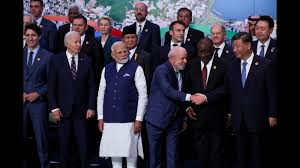
- 09 Dec 2024
Introduction
Minilateralism refers to the growing trend of smaller, more focused international groupings of countries that cooperate on specific issues or regional challenges. It contrasts with the traditional multilateral frameworks, which are often large, slow-moving, and bogged down by lengthy debates and consensus-building. Today, minilateral platforms are increasingly driving global decision-making and shaping the future of international relations.
Rise of Minilateralism
Failure of Multilateralism
- Multilateralism's Decline: Traditional multilateral institutions like the United Nations (UN) are increasingly seen as ineffective due to their bureaucratic nature and the challenges in building consensus among a large number of diverse nations.
- Global Challenges: Emerging global issues, such as climate change, terrorism, and cybersecurity, require faster and more effective responses. The inability of multilateral platforms to address these challenges efficiently has led to a preference for smaller, more agile groupings.
Emergence of New Powers
- Multipolar World: The rise of new powers such as China, India, and Brazil has contributed to the formation of minilateral groupings. These rising powers desire a greater role in global governance but may not yet have the ability or desire to reshape the international order through large, cumbersome institutions.
- Minilateralism as "Multipolarity Lite": Minilateralism allows these countries to assert themselves as regional or global poles without the need for the complexities of full-scale multilateralism.
India's Role in Minilateralism
Strategic Positioning
- Geopolitical Context: India’s strategic location in South Asia, its status as part of the Global South, and its proximity to a rising China have all influenced its approach to minilateralism. India’s multi-aligned approach reflects its desire for flexibility in navigating the complex and shifting global geopolitical landscape.
- Diverse Partnerships: India is a key player in various minilateral arrangements, balancing its relationships with both traditional Western powers and rising Eastern nations, often serving as a bridge between competing geopolitical interests.
Minilateralism as a Solution
- Diversification Over Alignment: India's preference for minilateralism stems from the desire to avoid over-reliance on any single bloc or country. By engaging in multiple minilateral platforms, India seeks to hedge its interests, balancing its strategic objectives between competing global forces.
The Role of Minilateral Forums
Decision-making and Action
- Faster Action: Minilateral groupings facilitate quicker decision-making by bringing together like-minded countries to focus on specific issues, allowing for more decisive action than traditional multilateral bodies.
- Conflict Resolution: While minilateral platforms may not directly resolve conflicts, they offer indirect pathways for addressing geopolitical tensions by fostering dialogue and cooperation among countries with divergent interests.
Examples of Minilateral Groupings
- BRICS: The grouping of Brazil, Russia, India, China, and South Africa is an example of a minilateral arrangement where emerging powers cooperate on shared economic and political interests.
- Quad: The Quadrilateral Security Dialogue (comprising the United States, India, Japan, and Australia) is a prominent example of minilateralism focused on regional security, particularly in the Indo-Pacific region.
- Other Regional Groupings: Minilateralism also manifests in regional arrangements such as the ASEAN-led East Asia Summit or the India-Japan-Australia trilateral forum, each addressing specific regional and global concerns.
Conclusion
Shaping the Future of Global Order
Minilateralism is reshaping the international order by fostering closer, more flexible cooperation between countries on a wide range of issues. As multilateralism faces growing challenges, smaller, more focused partnerships offer a faster and more efficient means of addressing global problems. India's pivotal role in these groupings reflects its desire to navigate a complex geopolitical landscape while maintaining strategic autonomy. The rise of minilateralism marks a significant shift in global governance, one that could define the future of international relations.
Beware of Digital Wedding Invites

- 08 Dec 2024
In News:
In the peak wedding season, cyber fraudsters are increasingly exploiting digital wedding invitations to hack into mobile phones. These fraudulent invites, often disguised as PDF wedding cards shared on WhatsApp, contain embedded malware that allows cybercriminals to gain full access to the victim's phone. This includes access to sensitive financial data, making individuals vulnerable to fraud. The Lucknow Police Cyber Cell has issued a public warning, urging citizens to be cautious and avoid opening suspicious files.
How the Scam Works
The scam involves cybercriminals sending out malware-laden wedding invitations. Once the recipient opens the file, the malware infects their phone, enabling the fraudsters to remotely control the device. From there, they can access sensitive information, including bank account details, and may even transfer funds without the victim’s consent.
Preventive Measures and Cyber Hygiene
To protect against such scams, individuals should follow these preventive steps:
- Avoid Suspicious Files: Do not open files from unknown senders, particularly those with extensions like APK, PIF, or VBS. It is crucial to verify the sender's number—legitimate Indian numbers typically begin with +91.
- Turn Off Auto-Download: Disabling automatic downloads on platforms like WhatsApp can prevent files from being opened unknowingly.
- Enable Two-Step Verification: Strengthen security by activating two-step verification on your digital accounts and setting strong passwords.
- Report Fraud Immediately: In case of suspicious activity, contact the cybercrime helpline at 1930 or file a complaint on the official cybercrime portal (www.cybercrime.gov.in).
The Lucknow Police’s “Cyber Pathshala” campaign aims to raise awareness and educate the public on digital scams, particularly during the wedding season when these frauds are at their peak.
Cybersecurity Challenges in India
This emerging digital threat is part of a broader trend of sophisticated cybercrimes in India. Cyber fraudsters are increasingly using manipulative tactics, such as phishing, fake digital arrests, and malware attacks. In 2024, India witnessed a significant rise in ransomware attacks, frauds targeting financial institutions, and supply chain vulnerabilities.
India's legislative and institutional frameworks are evolving to address these challenges. Key measures include:
- The Information Technology Act, 2000, which lays the foundation for tackling cybercrimes.
- The Digital Personal Data Protection Act, 2023, which focuses on protecting personal data.
- The Indian Computer Emergency Response Team (CERT-In), which coordinates national responses to cyber incidents.
Additionally, new frameworks like the National Cyber Security Policy, 2013, and initiatives such as Cyber Surakshit Bharat and the Indian Cyber Crime Coordination Centre (I4C), aim to fortify India's digital landscape and promote cybersecurity.
Emerging Cyber Threats
As India becomes more digitally connected, the threat landscape continues to evolve:
- Digital Arrest Scams: Fraudsters impersonate law enforcement to extort money from victims, claiming they are under investigation for fictitious crimes.
- Ransomware: Attacks on critical infrastructure, such as financial institutions and healthcare systems, have led to operational disruptions and financial losses.
- Deepfake Technology: The rise of AI-generated deepfakes poses significant risks, including misinformation and financial fraud.
- Internet of Things (IoT) Vulnerabilities: The rapid adoption of IoT devices has created new security challenges, with many devices lacking adequate protection.
Strategic Recommendations for Enhancing Cybersecurity
To counter these evolving threats, India must focus on several strategic areas:
- Digital Literacy Campaigns: Nationwide efforts to improve digital literacy, particularly targeting vulnerable groups such as rural populations and senior citizens.
- Stronger IoT Security Protocols: Mandating secure design and certification for IoT devices.
- AI-Driven Threat Intelligence: Implementing AI-based tools for early threat detection and response in critical sectors.
- Mandatory Cybersecurity Audits: Regular audits of critical infrastructure, especially in sectors like healthcare, banking, and utilities.
- Public-Private Collaboration: Strengthening partnerships to address challenges such as cryptocurrency fraud, ransomware, and dark web-enabled crimes.
Conclusion
The rise of digital fraud, including the manipulation of wedding invitations for malicious purposes, highlights the need for enhanced cybersecurity measures in India. By improving public awareness, investing in technological solutions, and reinforcing legal and institutional frameworks, India can better protect its citizens from the growing threat of cybercrime. A proactive and informed approach is essential to secure the digital future of the nation.
Building on the Revival of the Manufacturing Sector
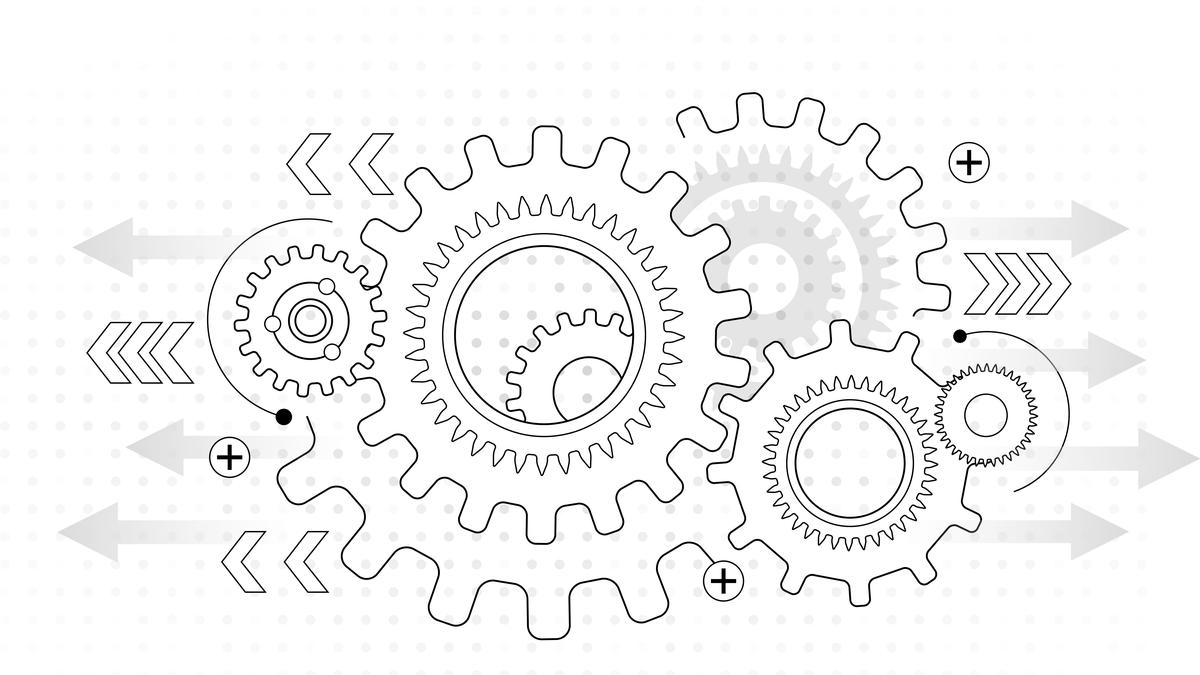
- 07 Dec 2024
In News:
India’s manufacturing sector has shown remarkable signs of recovery and growth, thanks to strategic policy initiatives like the Production Linked Incentive (PLI) scheme. To fully capitalize on this momentum and become a global manufacturing hub, however, deeper reforms are needed.
The Success of the PLI Scheme: A Catalyst for Growth
The government’s PLI scheme has been instrumental in revitalizing key sectors like electronics, pharmaceuticals, automobiles, and textiles. It has not only boosted production but also increased exports and job creation. According to the Annual Survey of Industries (ASI) 2022-23, manufacturing output grew by an impressive 21.5%, while gross value added (GVA) increased by 7.3%. Sectors such as basic metals, refined petroleum products, food products, and motor vehicles, which are beneficiaries of the PLI scheme, contributed 58% of total manufacturing output, registering growth of 24.5%.
This success underlines the potential of India’s manufacturing sector, with the PLI scheme acting as a key enabler. However, while the recovery is promising, there are significant challenges to overcome to sustain long-term growth.
Expanding PLI Incentives to New Sectors
The PLI scheme has largely benefitted traditional industries like electronics and automotive manufacturing. To further accelerate growth, the scope of the scheme must be extended to labour-intensive sectors such as apparel, footwear, and furniture, which hold immense potential for job creation. Additionally, emerging sectors like aerospace, space technology, and maintenance, repair, and overhaul (MRO) services offer new avenues for growth. By diversifying the incentive structure to these sectors, India could establish a more robust and resilient manufacturing ecosystem.
In sectors like capital goods, where India is heavily import-dependent, the potential for reducing supply chain vulnerabilities is significant. Moreover, promoting green manufacturing and advanced technologies could further bolster India’s competitiveness in global markets.
Addressing the Divergence Between Output and Value Addition
Despite a surge in production, India’s gross value added (GVA) has not kept pace with output growth. The ASI data shows that input prices soared by 24.4% in 2022-23, indicating that while production volumes are up, industries are grappling with high input costs. A more streamlined import regime could mitigate these costs. Simplifying tariffs into a three-tier system (for raw materials, intermediates, and finished goods) would reduce input costs, enhance competitiveness, and improve integration into global value chains.
Regional Imbalance: A Barrier to Inclusive Growth
The manufacturing sector’s growth is heavily concentrated in a few states such as Maharashtra, Gujarat, Tamil Nadu, Karnataka, and Uttar Pradesh, which account for over 54% of manufacturing GVA. This concentration not only restricts equitable development but also hampers the overall growth potential of the sector. To address this, it is crucial that states actively participate in India's manufacturing growth story by implementing market reforms in land, labour, and power. Additionally, infrastructure development and investment promotion in less industrialized regions could help balance growth and ensure that the benefits of manufacturing reach all corners of the country.
Fostering MSME Growth and Enhancing Female Workforce Participation
Micro, small, and medium enterprises (MSMEs) contribute about 45% of India’s manufacturing GDP and employ around 60 million people. To scale these businesses and integrate them into global value chains, PLIs should be tailored to accommodate their needs, such as lowering capital investment thresholds and reducing production targets.
Equally important is the enhancement of female workforce participation. Studies suggest that India’s manufacturing output could increase by 9% if more women enter the workforce. The development of supportive infrastructure, such as hostels and childcare facilities, can play a pivotal role in enabling women’s participation, thus driving inclusive growth.
Conclusion: The Path Forward
To transform into a developed economy by 2047, India must continue to focus on strengthening its manufacturing sector. According to industry estimates, manufacturing’s share in Gross Value Added (GVA) can rise from 17% to 25% by 2030 and further to 27% by 2047. Achieving this will require sustained efforts to enhance competitiveness through business reforms, cost reduction, and policy support. India is well-positioned to harness its manufacturing potential, but timely and focused interventions are necessary to turn this vision into reality.
Reflections on Baku’s ‘NCQG Outcome’ at COP29

- 06 Dec 2024
In News:
The recently concluded COP29 in Baku, Azerbaijan, has brought the spotlight back to climate finance, particularly in relation to the New Collective Quantified Goal (NCQG). As the global community grapples with the escalating climate crisis, the discussions and outcomes from the COP29 summit are pivotal in shaping future climate action. However, the agreed-upon financial targets, which were expected to be a step towards transformative climate justice, have sparked significant concern, particularly among developing nations.
The Need for Climate Finance: A Global Responsibility
Climate finance is essential for supporting developing countries, which bear the brunt of climate change despite contributing minimally to global emissions. The Intergovernmental Panel on Climate Change (IPCC) has stressed the need to limit global warming to 1.5°C above pre-industrial levels, yet current policies could lead to a rise of up to 3.1°C. To counter this, developing nations require financial assistance to transition to green energy, adapt to climate impacts, and implement their Nationally Determined Contributions (NDCs).
The upfront costs of green technologies, such as renewable energy, are high, and while they offer long-term savings, their initial investments remain a significant barrier. Additionally, many developing countries face fiscal constraints, making it even more difficult to adopt climate-friendly technologies without external financial support.
The Role of NCQG in Addressing Climate Finance Gaps
The NCQG, an evolution of the 2010 $100 billion annual commitment, aims to provide clarity and accountability in climate financing. Established as a framework to ensure financial resources for climate action, the NCQG should ideally focus on the evolving needs of the Global South. However, at COP29, the target agreed upon was a mere $300 billion annually by 2035, far from the $1.3 trillion that developing countries had requested. This amount falls drastically short of what is necessary to meet the ambitious climate goals and fails to represent a transformative shift in financial flows.
Key Challenges and Discontent with the Outcome
Several challenges have been raised regarding the COP29 outcome:
- Equity and Responsibility: Developed nations are expected to bear a larger share of the financial burden, in line with the principle of 'Common but Differentiated Responsibilities' (CBDR). However, the NCQG outcome bypasses this principle, offering insufficient funds for climate action in developing countries.
- Types of Finance: There is debate over whether private finance should count towards the goal. Developing countries have stressed the importance of public finance over loans, which add to their debt burdens.
- Insufficient Commitment: While the $300 billion annual pledge is a step forward, it is far from adequate. The global climate finance needs, estimated at $5 trillion to $7 trillion by 2030, require bolder commitments from developed nations.
India's Position and Domestic Efforts
At COP29, India emphasized the need for developed countries to fulfill their financial commitments, advocating for at least $1.3 trillion annually until 2030. India, despite being a developing country, has also made significant strides in climate action through domestic policies. The 2024-25 Union Budget allocated substantial funds to renewable energy projects, including ?19,100 crore for the Ministry of New and Renewable Energy. These efforts demonstrate India’s commitment to climate goals, though the financial flow remains insufficient.
Conclusion: The Road Ahead
The NCQG outcome at COP29 highlights the ongoing disparities in global climate finance commitments. While the $300 billion annual target is a step forward, it does not align with the urgency or scale required to tackle the climate crisis. To achieve a just and equitable transition to a sustainable future, future climate finance discussions must prioritize transparency, accountability, and fairness, ensuring that developed nations shoulder their fair share of the responsibility. The path forward requires unwavering international cooperation to ensure that developing countries receive the necessary support to mitigate and adapt to the impacts of climate change.
Scrapping of Windfall Gains Tax

- 05 Dec 2024
Introduction
On December 2, 2024, the Indian government withdrew the windfall gains tax on domestic crude oil production and fuel exports (diesel, petrol, and aviation turbine fuel - ATF). This tax, initially imposed in July 2022, was introduced in response to the surge in global oil prices following Russia's invasion of Ukraine. Its removal reflects the current global oil market stability and the improved fuel supply situation in India.
What is Windfall Gains Tax?
Definition
A windfall tax is a levy imposed on unexpected profits that result from extraordinary events, such as geopolitical crises or market disruptions. In the case of India, the tax was applied to the super-normal profits of oil producers and fuel exporters due to the global energy turmoil.
Key Features
- Domestic Crude Oil: The Special Additional Excise Duty (SAED) was imposed on domestic crude oil production.
- Fuel Exports: A combination of SAED and Road and Infrastructure Cess (RIC) was levied on diesel, petrol, and ATF exports.
Rationale Behind the Windfall Gains Tax
Immediate Context
The tax was introduced during a period of soaring global crude oil prices, driven by the Russia-Ukraine conflict. India, which imports over 85% of its oil, faced concerns about the availability of fuels and the impact of rising prices on domestic consumption. The tax was seen as a way to:
- Ensure Domestic Fuel Supply: By discouraging excessive fuel exports during a period of global supply chain disruptions.
- Increase Government Revenue: The tax aimed to capture windfall profits and offset the duty cuts on domestic fuel sales.
Global Context
Other countries also implemented similar windfall taxes during this period, as energy companies saw record profits due to the price surge.
Decline in Windfall Gains Tax Revenue
Revenue Collection
The windfall gains tax initially raised significant revenue, but the amount has decreased over time due to falling global oil prices:
- FY 2022-23: Rs 25,000 crore
- FY 2023-24: Rs 13,000 crore
- FY 2024-25 (so far): Rs 6,000 crore
This decline, combined with reduced oil prices, led to the tax being effectively inactive before its formal withdrawal.
Withdrawal of the Windfall Gains Tax
Reasons for the Withdrawal
- Global Stabilization: Crude oil prices, which had exceeded $100 per barrel, have now stabilized under $75 per barrel, with no immediate signs of a significant price surge.
- Domestic Fuel Availability: There is now a robust fuel supply in the domestic market, making the tax less necessary.
- Declining Revenues: With the tax generating diminishing returns, it was no longer economically viable for the government to maintain it.
Impact of the Scrapping
The government's move to scrap the windfall gains tax is seen as a signal of stability and predictability in the taxation regime. It assures the oil industry that the government is confident in the stability of global oil prices and supply chains.
Criticism of the Windfall Tax
Industry Opposition
The windfall tax faced opposition from the oil industry, which argued that it:
- Reduced Profitability: The tax limited the profits of publicly listed companies like ONGC and Reliance Industries.
- Discouraged Oil Production: By making the taxation environment unpredictable, it deterred investment in oil exploration and production in a country that is heavily dependent on oil imports.
- Created Uncertainty: Frequent revisions of the tax led to an unstable business environment.
Conclusion
The scrapping of the windfall gains tax is a significant policy shift. It not only provides relief to oil companies but also signals a more predictable and stable taxation regime. By withdrawing the tax, the government is fostering a conducive environment for future investments in domestic oil production and signaling its confidence in the stability of global oil prices. This move is a crucial step in ensuring that India’s energy policies remain adaptable and aligned with the evolving global market conditions.
Current Representation of Women in CAPFs
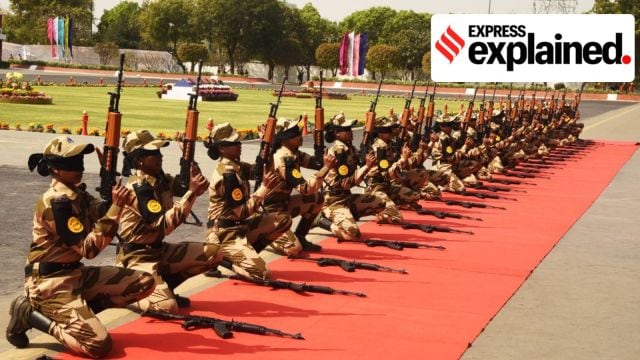
- 04 Dec 2024
In News:
The Central Armed Police Forces (CAPFs) of India, comprising forces like CRPF, BSF, CISF, and others, play a crucial role in maintaining internal security. Women’s participation in these forces has been historically limited, but recent efforts have focused on increasing their representation. As of 2024, women constitute only 4.4% of the total personnel in CAPFs, highlighting the slow progress despite various initiatives.
Current Representation and Changes Over Time
- Overall Representation: Women make up 4.4% of the 9.48 lakh-strong CAPFs. Within this, the Central Industrial Security Force (CISF) has the highest representation at 7.02%, followed by the Sashastra Seema Bal (SSB) at 4.43%, Border Security Force (BSF) at 4.41%, Indo-Tibetan Border Police (ITBP) at 4.05%, Assam Rifles at 4.01%, and Central Reserve Police Force (CRPF) at 3.38%.
- Growth of Women Personnel: From 15,499 women in 2014, the number has tripled to 42,190 in 2024, reflecting a steady increase in recruitment. However, the percentage remains low despite these gains.
- Recruitment Trends: In 2024, 835 women were recruited, with 5,469 more in the process. In 2025, 4,138 women are expected to be recruited.
Government Efforts and Parliamentary Committee Recommendations
- Policy Measures: The government has introduced several steps to encourage women’s participation in CAPFs, such as reservations in constable-level positions: one-third for CRPF and CISF, and 14-15% for border forces like BSF, SSB, and ITBP.
- Challenges in Recruitment: Despite these policies, recruitment has not kept pace with the targets. The 2022 Parliamentary Committee on Home Affairs expressed disappointment over the “abysmally low” number of women in CAPFs, noting that women made up only 3.68% of the forces at that time.
- Recommendations by Parliamentary Committees:
- The Home Affairs Committee recommended fast-tracking phase-wise recruitment of women, particularly in CISF and CRPF.
- The Standing Committee on Personnel (2023) suggested “soft postings” for women to avoid difficult working conditions, especially in remote or strenuous terrains. It also called for reservations for transgender individuals.
- In 2024, further steps like fee waivers, relaxed physical standards, and provisions for maternity and child care leave were introduced to make the work environment more inclusive.
Reasons Behind Low Representation
- Cultural Barriers: Traditional gender roles and societal expectations deter many women from pursuing careers in security forces.
- Work Environment: The demanding nature of the job, which includes postings in remote areas and high-risk operations, makes it less appealing, especially for women with family responsibilities.
- Infrastructure Issues: Lack of adequate accommodation, sanitation facilities, and safety measures for women are deterrents to joining and retaining female personnel.
Conclusion and Future Outlook
Although the representation of women in CAPFs has seen improvement, it remains below expectations due to persistent challenges. The government’s continuous focus on recruitment reforms, better working conditions, and policy incentives will be crucial to achieve gender parity in these forces. As societal attitudes evolve and the infrastructure improves, more women may be encouraged to serve in these vital security roles. Future efforts must include targeted recruitment drives and creating a more inclusive and supportive environment to enhance women’s participation in CAPFs.
India's Gig Economy: Growth and Impact on Employment

- 03 Dec 2024
Introduction
India’s gig economy is experiencing rapid growth, with projections indicating it will significantly contribute to the national economy and employment generation. A recent report by the Forum for Progressive Gig Workers estimates the gig economy could reach $455 billion by the end of 2024, growing at a 17% compounded annual growth rate (CAGR). By 2030, it may add 1.25% to India’s GDP and create 90 million jobs.
What is the Gig Economy?
- Definition: The gig economy refers to a labor market based on short-term, flexible jobs, typically facilitated by digital platforms. Gig workers, also called freelancers or independent contractors, are compensated for each task they complete.
- Key Features:
- Flexibility in work schedule and location.
- Task-based employment through digital platforms.
- Common sectors: e-commerce, transportation, delivery services, and freelance work.
Status of the Gig Economy in India
- Market Growth:
- In 2020-21, India had 7.7 million gig workers, which is expected to grow to 23.5 million by 2029-30.
- Key sectors contributing to growth include e-commerce, transportation, and delivery services.
- Driving Factors:
- Digital Penetration: With over 936 million internet subscribers and 650 million smartphone users, digital infrastructure is a key enabler of the gig economy.
- Startup and E-commerce Growth: The rise of startups and e-commerce platforms has increased demand for flexible labor.
- Changing Work Preferences: Younger generations seek work-life balance, opting for flexible gig work.
Gig Economy and Employment Generation
- Contribution to GDP: The gig economy is expected to contribute 1.25% to India’s GDP by 2030.
- Job Creation:
- The gig economy could create up to 90 million jobs by 2030.
- It is estimated that by 2030, gig workers will comprise 4.1% of India’s total workforce.
- Benefits:
- Women’s Empowerment: Gig work provides financial independence and flexibility, especially benefiting women in the workforce.
- Regional Growth: Tier-II and Tier-III cities are seeing accelerated growth in gig work opportunities.
Challenges Faced by Gig Workers
- Job Insecurity: Many gig workers experience instability in their employment, especially in low-skilled jobs.
- Income Volatility: Earnings are unpredictable, and workers face difficulty in financial planning.
- Regulatory Gaps: There is no comprehensive legal framework to protect gig workers’ rights and ensure fair working conditions.
- Delayed Payments: A significant number of workers face delayed payments, affecting their financial well-being.
- Skill Development: Many workers report a lack of opportunities for career advancement and skill development.
Government Initiatives for Gig Workers
- Code on Social Security, 2020: Recognizes gig workers and aims to extend social security benefits, though it lacks comprehensive coverage.
- e-Shram Portal & Welfare Schemes: Initiatives like Pradhan Mantri Shram Yogi Maandhan Yojana and PMJJBY aim to provide financial security to gig workers.
- State-level Initiatives:
- Rajasthan’s Platform-Based Gig Workers Act (2023) focuses on registration and welfare.
- Karnataka’s bill mandates formal registration and grievance mechanisms.
The Way Forward
- Legal Reforms: India can draw from international models like California and the Netherlands, where gig workers are reclassified as employees to ensure protections such as minimum wages and regulated working hours.
- Portable Benefits System: Implementing a system where gig workers can access benefits like healthcare and retirement plans regardless of their employer.
- Skill Development: Strengthening collaborations with vocational institutions to enhance skills and improve earning potential.
- Technological Solutions: Establishing robust feedback mechanisms for workers to report exploitation and ensure fairness within the gig economy.
Conclusion
The gig economy in India is poised to become a significant driver of economic growth and job creation. However, addressing challenges such as income volatility, job insecurity, and regulatory gaps is crucial to ensuring sustainable growth.
NITI Aayog’s Framework for Future Pandemic Preparedness
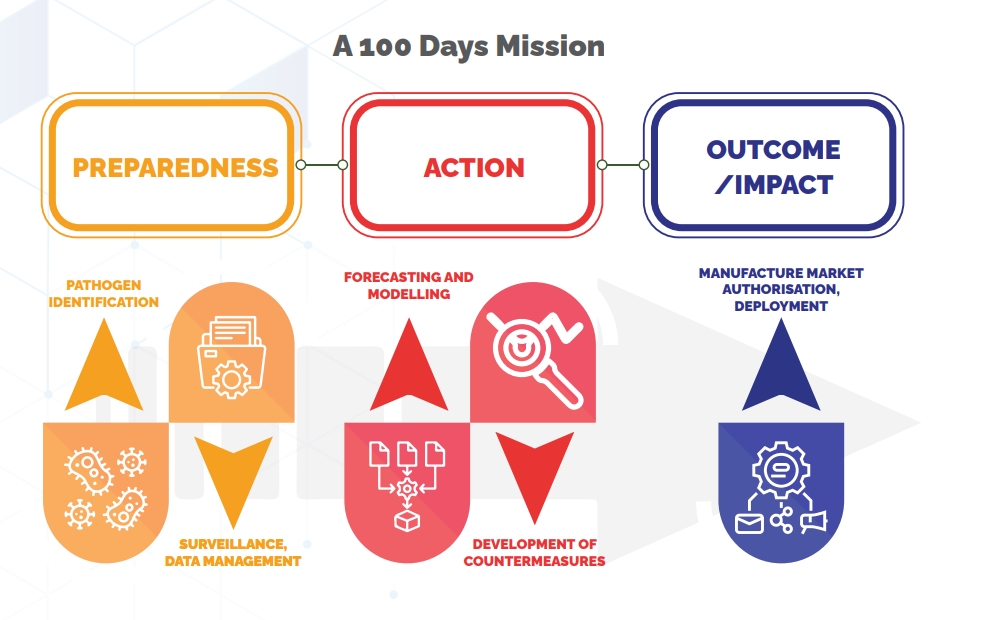
- 02 Dec 2024
Introduction
In response to the evolving threat of pandemics, NITI Aayog has released an Expert Group report titled "Future Pandemic Preparedness and Emergency Response — A Framework for Action." The report offers a strategic blueprint for India to enhance its pandemic preparedness, drawing from the lessons learned during the COVID-19 crisis and global best practices. This framework aims to create a rapid, well-coordinated response system for future public health emergencies.
Rationale Behind the Expert Group
The COVID-19 pandemic underscored the vulnerability of global and national health systems to emerging infectious diseases. As future pandemics are inevitable, especially with increasing zoonotic threats, India has taken a proactive step in planning for such eventualities. The WHO has warned that 75% of future pandemics may be zoonotic, caused by pathogens transmitted from animals to humans.
Key Findings from COVID-19 Response
India's response to COVID-19 highlighted several strengths and weaknesses in the public health system. Key efforts included developing vaccines, enhancing research and development frameworks, and deploying digital tools for data management across its 1.4 billion population. However, gaps were identified in governance, data management, and cross-sectoral coordination. These lessons have been integrated into the expert group’s framework for future preparedness.
The 100-Day Response Framework
A crucial aspect of the report is the emphasis on the first 100 days of a pandemic. The expert group argues that a rapid response within this period is essential for minimizing the impact of any outbreak. The framework outlines a detailed roadmap for preparedness, which includes tracking, testing, treating, and managing outbreaks efficiently. A robust system for quick deployment of countermeasures, including vaccines and treatments, is pivotal during these critical days.
Four Pillars of Pandemic Preparedness
The report's recommendations are organized around four pillars:
- Governance, Legislation, Finance, and Management:
- Proposes a new Public Health Emergency Management Act (PHEMA) to address modern pandemic needs.
- Creation of an empowered group of secretaries (EGoS) for rapid decision-making and coordination.
- Data Management, Surveillance, and Predictive Tools:
- Calls for a unified data platform to aggregate and analyze data for timely decision-making.
- Emphasizes strengthening genomic surveillance and establishing a national biosecurity network.
- Research, Innovation, and Infrastructure:
- Recommends a high-risk innovation fund to support research on diagnostics, vaccines, and therapeutics.
- Suggests enhancing manufacturing capacity and building biosafety containment facilities.
- Partnerships and Community Engagement:
- Stresses the importance of private sector involvement and community engagement in managing pandemics.
- Proposes a risk communication unit at the National Centre for Disease Control (NCDC) to manage public information and prevent misinformation.
International and National Collaboration
The report underscores the need for cross-border collaboration, aligning India’s efforts with international frameworks such as the WHO’s revised International Health Regulations and the Pandemic Accord negotiations. Collaboration with global institutions, academia, and the private sector is essential for sharing data, technology, and expertise during health crises.
Lessons from Past Epidemics
The report draws lessons from several past epidemics, including SARS, H1N1, and Ebola, which revealed the importance of timely diagnostics, coordinated surveillance, and rapid response. These lessons highlight the need for stronger international regulations, integrated data systems, and enhanced public-private partnerships in tackling future pandemics.
Conclusion and Recommendations
The framework offers actionable recommendations to strengthen India’s pandemic preparedness. From institutionalizing governance structures and creating a dedicated pandemic fund to enhancing surveillance and fostering innovation, these steps are designed to ensure rapid response and minimize the impact of future health crises. By focusing on governance, data management, research, and community partnerships, India aims to build a resilient health system capable of facing future challenges effectively.
Digital Arrests

- 01 Dec 2024
In News:
In 2024, India has witnessed an alarming rise in cybercrime, particularly a new scam called "digital arrests." This type of fraud involves criminals impersonating law enforcement officials to extort money from victims. With more than 92,000 people targeted and ?2,141 crore defrauded from victims, these scams are rapidly becoming a significant concern for the public and law enforcement.
Nature of ‘Digital Arrests’
The modus operandi of digital arrest scams is sophisticated and emotionally manipulative. Cybercriminals contact victims through video calls, often using fake police officers' profiles and official documents to build credibility. They accuse victims of serious crimes such as money laundering or drug trafficking, claiming urgent action is needed to avoid arrest. The scammers create a false atmosphere of fear and urgency, convincing the victim to transfer large sums of money under the pretext of settling legal dues.
A notable example involves Ruchi Garg, who was targeted by scammers posing as police officers, falsely claiming her son was involved in a major scam. She was coerced into transferring ?80,000 before realizing it was a scam. Similar cases have affected hundreds, with perpetrators using AI-generated voices and fake visuals to amplify the deception.
The Growth of Cybercrime in India
Digital arrest scams are part of a broader increase in cybercrime in India. The Indian Cyber Crime Coordination Centre (I4C) has reported a rise in cyber fraud, with financial losses exceeding ?27,900 crore between 2021 and 2024. The most significant sources of these losses include stock trading scams, Ponzi schemes, and digital arrest frauds. As criminals adapt to emerging technologies and use social engineering tactics, the scale and complexity of scams are growing.
The surge in cybercrimes is fueled by vulnerabilities in India's digital landscape. With over 95 crore Internet users, many people, particularly the elderly or less tech-savvy, remain susceptible to such fraud. Cybercriminals often exploit this lack of awareness, combining fear and confusion to manipulate victims.
International Scope and Challenges
One of the challenges in combating digital arrests is the transnational nature of cybercrime. Scams often originate from countries like China, Cambodia, and Myanmar, where "scam compounds" run operations to train individuals in fraudulent techniques. These groups use virtual private networks (VPNs) and encrypted apps to conceal their identities and locations, making it difficult for Indian authorities to trace them.
Moreover, the involvement of mule bank accounts to launder defrauded money complicates investigations. Thousands of such accounts are identified and blocked regularly, but the flow of money continues through multiple channels, including cryptocurrencies.
Government Efforts and Preventive Measures
To address the growing menace of digital frauds, the Indian government has initiated several measures. The I4C, launched in 2020, aims to strengthen the response to cybercrimes by coordinating with various law enforcement agencies. The National Cyber Crime Reporting Portal allows citizens to report cyber fraud, while real-time alerts are sent to banks to prevent financial losses.
Additionally, the Cyber Crime Coordination Centre and other initiatives like Cyber Surakshit Bharat and CERT-In are working to enhance cybersecurity awareness and support victims. The Digital Personal Data Protection Act, 2023, also aims to regulate data security, which can reduce the sale of personal data on the dark web, a key enabler of these scams.
Conclusion
‘Digital arrests’ exemplify the evolving nature of cybercrimes in India. As digital threats become more complex and widespread, it is essential for citizens to remain vigilant and informed. Effective law enforcement, technological innovations, and public awareness are critical to reducing the impact of these scams and safeguarding the digital economy.
Biomedical Waste Regulations
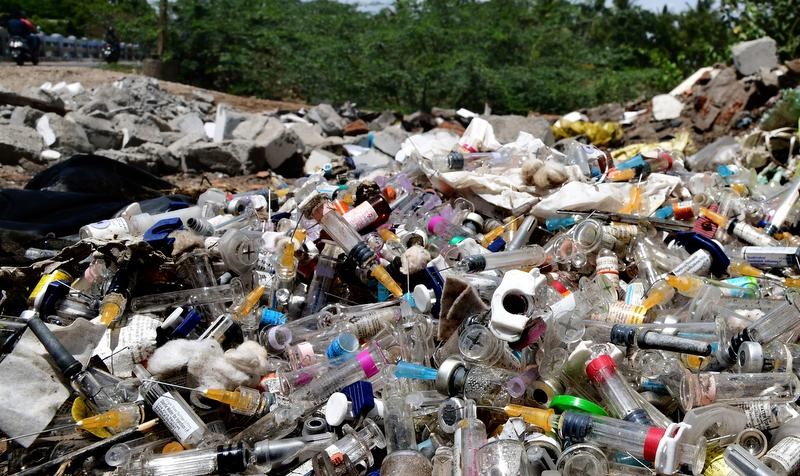
- 30 Nov 2024
The Emergence of HIV and Global Panic
In 1983, scientists Luc Montagnier and Robert Gallo independently identified the virus responsible for AIDS. By the mid-1980s, HIV/AIDS was perceived as a biological death sentence, with the virus primarily attacking immune cells, making medical intervention difficult. The epidemic quickly became associated with fear, ignorance, and stigma, as it was often linked to marginalized groups.
The "Syringe Tide" Incident and Public Outrage
In August 1987, the U.S. faced a public health crisis when discarded medical waste, including syringes and blood vials, washed up on beaches along the Atlantic coast. Known as the "Syringe Tide," this incident shocked the public and fueled anxiety, especially when children were seen playing with syringes. Traced to improper waste disposal in New York City, the event highlighted the hazardous nature of medical waste, which had been previously underestimated. Combined with the HIV/AIDS epidemic, this incident amplified public fear and economic losses of up to $7.7 billion due to the decline in tourism.
U.S. Response: Medical Waste Tracking Act of 1988
The widespread outrage led to the U.S. government passing the Medical Waste Tracking Act in 1988. This was the first law to formally categorize hospital waste as hazardous. The Act introduced stringent guidelines for the handling, transportation, and disposal of medical waste, establishing systemic regulation and oversight. It marked a significant turning point in both public health and environmental safety, changing how medical waste was managed in the healthcare sector.
India’s Journey in Biomedical Waste Management
Initial Steps and Delays
While the U.S. responded swiftly to the crisis, India’s approach to managing biomedical waste was slower. In 1986, India enacted the Environmental Protection Act, which marked the country’s first significant step towards environmental conservation. That same year, India identified its first HIV case. However, biomedical waste was not yet recognized as hazardous, and the Hazardous Waste (Management and Handling) Rules of 1989 failed to address the issue. As a result, local bodies were left to manage waste disposal, leading to inefficiencies.
Judicial Intervention and Legislative Action
In the 1990s, as pollution levels rose, particularly in urban areas like Delhi, the inadequacies of the system became apparent. In the landmark case Dr. B.L. Wadehra vs. Union of India (1996), the Supreme Court criticized Delhi’s waste management system, calling the city an "open garbage dump." This judgment led to a nationwide conversation on waste management and resulted in the Biomedical Waste (Management and Handling) Rules of 1998, marking the formal recognition of hospital waste as hazardous. The rules empowered the Central and State Pollution Control Boards to regulate waste disposal, ensuring accountability.
The Link Between HIV and Biomedical Waste Regulations
The HIV crisis highlighted the need for safe disposal practices to protect the environment and healthcare workers. While India charted its own course, the global response to HIV, particularly the U.S. model, influenced India’s approach to biomedical waste management. Over the years, India has made significant progress, with amendments to the rules in 2016 and 2020 to improve waste management technology and ensure safe disposal.
Current Challenges and Progress
- Ongoing Issues in Biomedical Waste Management: Despite significant progress, challenges remain, especially in rural and resource-limited areas. Mishandling of biomedical waste continues to pose risks, and healthcare professionals still face occupational hazards. Gaps in compliance and awareness persist, but the system’s progress is undeniable.
Conclusion
The HIV/AIDS epidemic, while tragic, indirectly led to significant improvements in healthcare waste management. As the crisis highlighted the dangers of improper waste disposal, it spurred legislative and systemic changes that have contributed to safer healthcare environments. The progress in biomedical waste management demonstrates that crises can often lead to long-term improvements.
National Mission on Natural Farming (NMNF)
- 29 Nov 2024
In News:
The Union Cabinet recently approved the launch of the National Mission on Natural Farming (NMNF), marking a significant shift in the government's approach to agriculture. This initiative, a standalone Centrally Sponsored Scheme under the Ministry of Agriculture & Farmers' Welfare, aims to promote natural farming across India, focusing on reducing dependence on chemical fertilizers and promoting environmentally sustainable practices.
What is Natural Farming?
Natural farming, as defined by the Ministry of Agriculture, is a chemical-free agricultural method that relies on inputs derived from livestock and plant resources. The goal is to encourage farmers to adopt practices that rejuvenate soil health, improve water use efficiency, and enhance biodiversity, while reducing the harmful effects of fertilizers and pesticides on human health and the environment. The NMNF will initially target regions with high fertilizer consumption, focusing on areas where the need for sustainable farming practices is most urgent.
Evolution of Natural Farming Initiatives
The NMNF is not an entirely new concept but a scaled-up version of the Bhartiya Prakritik Krishi Paddhti (BPKP) introduced during the NDA government's second term (2019-24). The BPKP was part of the larger Paramparagat Krishi Vikas Yojna (PKVY) umbrella scheme, and natural farming was also promoted along the Ganga River under the NamamiGange initiative in 2022-23. With the renewed focus on natural farming following the 2024 elections, the government aims to extend the lessons learned from BPKP into a comprehensive mission mode, setting a clear direction for sustainable agriculture.
In Budget speech for 2024-25, it was announced a plan to initiate one crore farmers into natural farming over the next two years. The mission will be implemented through scientific institutions and willing gram panchayats, with the establishment of 10,000 bio-input resource centers (BRCs) to ensure easy access to the necessary inputs for natural farming.
Key Objectives
The NMNF aims to bring about a paradigm shift in agricultural practices by:
- Expanding Coverage: The mission plans to bring an additional 7.5 lakh hectares of land under natural farming within the next two years. This will be achieved through the establishment of 15,000 clusters in gram panchayats, benefiting 1 crore farmers.
- Training and Awareness: The mission will establish around 2,000 model demonstration farms at Krishi Vigyan Kendras (KVKs), Agricultural Universities (AUs), and farmers' fields. These farms will serve as hubs for training farmers in natural farming techniques and input preparation, such as Jeevamrit and Beejamrit, using locally available resources.
- Incentivizing Local Inputs: The creation of 10,000 bio-input resource centers will provide farmers with easy access to bio-fertilizers and other natural farming inputs. The mission emphasizes the use of locally sourced inputs to reduce costs and improve the sustainability of farming practices.
- Farmer Empowerment: 30,000 Krishi Sakhis (community resource persons) will be deployed to assist in mobilizing and guiding farmers. These trained individuals will play a key role in generating awareness and providing on-ground support to the farmers practicing natural farming.
- Certifications and Branding: A major aspect of the mission is to establish scientific standards for natural farming produce, along with a national certification system. This will help in creating a market for organically grown produce and encourage more farmers to adopt sustainable practices.
Targeting High Fertilizer Consumption Areas
The Ministry of Agriculture has identified 228 districts in 16 states, including Uttar Pradesh, Punjab, Maharashtra, and West Bengal, where fertilizer consumption is above the national average. These districts will be prioritized for the NMNF rollout, as they have high fertilizer usage but low adoption of natural farming practices. By focusing on these areas, the mission seeks to reduce the over-dependence on chemical fertilizers and foster a transition to more sustainable farming practices.
Benefits of Natural Farming
The NMNF aims to deliver multiple benefits to farmers and the environment:
- Cost Reduction: Natural farming practices can significantly reduce input costs by decreasing the need for costly chemical fertilizers and pesticides.
- Soil Health and Fertility: By rejuvenating the soil through organic inputs, natural farming improves soil structure, fertility, and microbial activity, leading to long-term agricultural sustainability.
- Climate Resilience: Natural farming enhances resilience to climate-induced challenges such as drought, floods, and waterlogging.
- Healthier Produce: Reduced use of chemicals results in safer, healthier food, benefitting both farmers and consumers.
- Environmental Conservation: The promotion of biodiversity, water conservation, and carbon sequestration in soil leads to a healthier environment for future generations.
Conclusion
The launch of the National Mission on Natural Farming represents a critical step toward transforming India's agricultural practices into a more sustainable and environmentally friendly model. By targeting regions with high fertilizer usage, providing farmers with the tools and knowledge for natural farming, and creating a system for certification and branding, the government hopes to make natural farming a mainstream practice. As India continues to grapple with the challenges of climate change, soil degradation, and health risks from chemical inputs, the NMNF provides a promising framework for sustainable agriculture that benefits farmers, consumers, and the environment alike.
India’s Urban Infrastructure
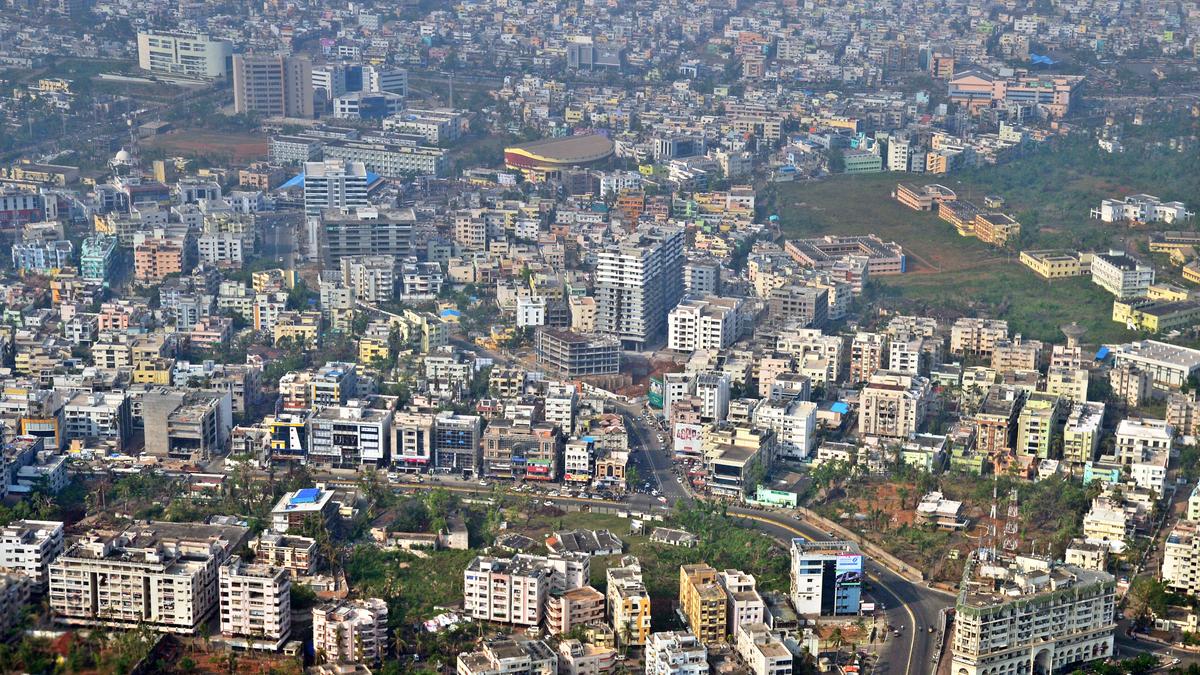
- 28 Nov 2024
Introduction
India’s urban population is projected to double from 400 million to 800 million by 2050. This demographic shift presents both challenges and opportunities for transforming the country’s urban infrastructure. To meet the growing needs of urban areas, India will require an investment of approximately ?70 lakh crore by 2036, a figure significantly higher than current spending levels.
Financial Challenges in Urban Infrastructure
- Investment Gap
- The current annual investment in urban infrastructure stands at ?1.3 lakh crore, which is only 28% of the ?4.6 lakh crore needed annually.
- A large portion of the existing investment, around 50%, is directed towards basic urban services, with the remainder allocated to urban transport.
- Municipal Finances
- Municipal finances have remained stagnant at 1% of GDP since 2002.
- Despite increased transfers from the central and state governments, municipal bodies face financial strain.
- The contribution of municipal own-revenue has decreased from 51% to 43%, indicating a reduced financial independence.
- Revenue Collection Inefficiencies
- Urban local bodies (ULBs) are collecting only a small fraction of their potential revenues, with property tax collections representing just 0.15% of GDP.
- Cost recovery for essential services like water supply and waste management ranges between 20% and 50%, pointing to a significant funding gap.
- Underutilization of Resources
- Cities like Hyderabad and Chennai utilized only 50% of their capital expenditure budgets in 2018-19.
- Central schemes such as AMRUT and the Smart Cities Mission also showed suboptimal fund utilization, with utilization rates of 80% and 70%, respectively.
- Decline in Public-Private Partnerships (PPPs)
- Investments through PPPs in urban infrastructure have seen a sharp decline, from ?8,353 crore in 2012 to ?467 crore in 2018.
- This drop is attributed to limited project-specific revenues and inadequate funding mechanisms.
Structural and Administrative Challenges
- Weak Governance and Fragmented Management
- Fragmented governance and limited administrative autonomy hinder effective urban planning and resource allocation.
- Municipal bodies often lack the ability to undertake long-term planning and project execution due to these governance challenges.
- Climate Vulnerability and Sustainability: Urban areas are increasingly vulnerable to climate risks like floods and heatwaves. However, many urban infrastructure projects fail to incorporate climate resilience in their planning, exacerbating the long-term vulnerability of investments.
- Inadequate Land Management
- There is poor coordination between land use planning and infrastructure development, resulting in urban sprawl and inefficient transportation systems.
- Opportunities to capitalize on the land value generated by metro and rail projects remain underutilized.
Measures for Transforming Urban Infrastructure
- Streamline Revenue Collection: Leverage technology to improve property tax collection systems and enhance cost recovery in essential services.
- Enhance Fund Utilization: Strengthen municipal capacities for effective project planning and incentivize the timely use of allocated grants.
- Scale Public-Private Partnership (PPP) Investments: Develop a pipeline of bankable projects and create risk-sharing mechanisms to attract private sector investments.
- Decouple Project Preparation from Funding: Ensure that infrastructure projects are thoroughly prepared for financial, social, and environmental sustainability before seeking funding.
- Promote Urban Innovation: Establish urban innovation labs and encourage public-private-academic collaborations to foster the adoption of advanced technologies.
- Empower Municipalities: Grant municipalities greater financial autonomy, enabling them to raise capital through municipal bonds and other debt mechanisms.
- Integrated Urban Planning: Align infrastructure development with land use, transport, and housing requirements, while integrating climate resilience into planning.
- Capacity Building: Invest in the training of municipal staff to improve governance and financial management capabilities.
Conclusion
India’s expanding urban population presents a major opportunity for economic growth. However, addressing the financial and structural challenges in urban infrastructure is crucial for harnessing this potential. By adopting a combination of short-term actions, medium-term strategies, and long-term reforms, India can create sustainable, resilient urban infrastructure that meets the growing needs of its cities, fostering inclusive development and long-term prosperity.
The Controversy around the Sambhal Mosque

- 27 Nov 2024
Introduction
The Shahi Jama Masjid in Sambhal, Uttar Pradesh, has become a flashpoint in a larger religious and legal dispute after a petition was filed questioning its historical origins. Alleging that the mosque was built on the site of an ancient Hindu temple, the case has triggered both legal challenges and violent clashes, raising concerns about communal harmony and the protection of religious sites.
Background of the Dispute
On November 19, 2024, a petition was filed in the Sambhal district court, claiming that the 16th-century Jama Masjid was constructed over the site of an ancient Hari Har Mandir. This claim mirrors similar petitions filed in other parts of India, including Varanasi, Mathura, and Dhar, where Hindu groups have sought to alter the religious character of mosques they believe were built on temple sites. The petitioners in the Sambhal case include advocate Hari Shanker Jain, a key figure in the Gyanvapi and Mathura disputes.
Survey and Clashes
The Sambhal court ordered a survey of the mosque on November 19, 2024, to investigate the historical claims. The initial phase of the survey, conducted peacefully, involved mosque authorities and local police. However, a second survey on November 24 escalated tensions, as it was accompanied by a procession led by a local priest chanting Hindu slogans. Protests soon turned violent, leading to stone-pelting, police firing, and at least five deaths, including two teenagers. Locals accused the police of excessive force, while the police denied allegations of shooting.
The Mosque’s Historical Context
The Shahi Jama Masjid was built by Mughal Emperor Babur's general, Mir Hindu Beg, around 1528. It is one of the three mosques constructed during Babur's reign, the other two being in Panipat and Ayodhya. Architectural studies suggest it was constructed using stone masonry with plaster, and while some historians believe it was built on a pre-existing structure, the mosque’s historical context is complex. Local Hindu tradition holds that the site was originally a Vishnu temple, with the belief that Kalki, the tenth avatar of Vishnu, will arrive there.
Legal Implications: The Places of Worship Act, 1991
The dispute touches upon the Places of Worship Act, 1991, which mandates the preservation of the religious character of all places of worship as they existed on August 15, 1947. The Act was designed to prevent further disputes over religious sites, except for the Babri Masjid case, which was already under litigation at the time. The petitioners in the Sambhal case argue that the religious character of the mosque should be altered, contradicting the Act’s provisions.
Challenges to the Places of Worship Act
The Places of Worship Act has been criticized for barring judicial review and preventing any changes to the religious status of sites that existed before India’s independence. Some legal experts suggest that while an inquiry into the religious nature of a place might be permissible, changing that character would violate the Act. The ongoing legal challenges in the Supreme Court, including cases from Varanasi, Mathura, and now Sambhal, highlight the complexities of reconciling India’s legal framework with communal sensitivities.
Conclusion
The Sambhal mosque dispute underscores the challenges in balancing India’s legal framework with religious and communal dynamics. While the Places of Worship Act aims to preserve the status quo, petitions challenging it have revived contentious debates over historical monuments and their religious significance. As the legal proceedings continue, the case will likely have far-reaching implications for India’s secular fabric and the preservation of communal harmony.
29th UN Climate Change Conference (COP29)
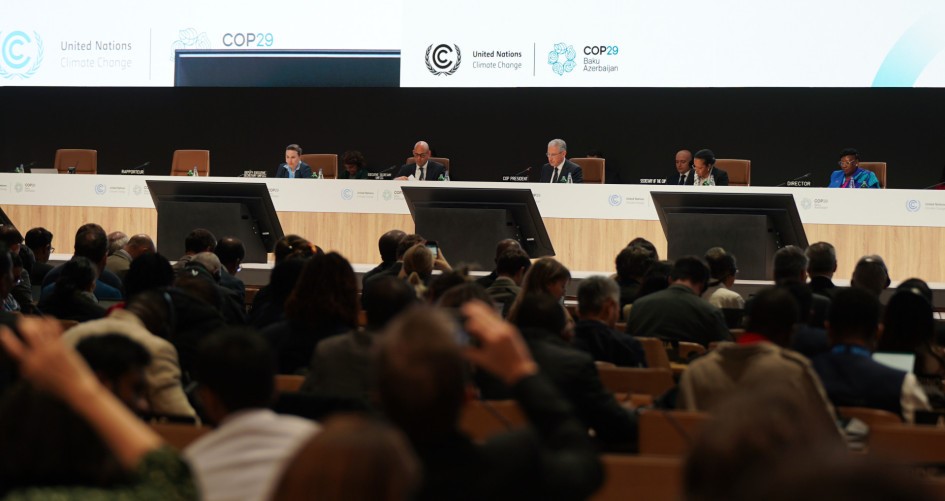
- 26 Nov 2024
In News:
The 29th UN Climate Change Conference (COP29), held in Baku, Azerbaijan, focused on enhancing climate finance, adaptation measures, and global cooperation.
Key Outcomes of COP29:
- Climate Finance: A new goal was set to triple climate finance for developing countries to USD 300 billion annually by 2035. The total climate finance target aims for USD 1.3 trillion annually by 2035.
- Carbon Markets: The conference operationalized Article 6 of the Paris Agreement, which establishes frameworks for carbon credit trading between countries. It also launched the Paris Agreement Crediting Mechanism, ensuring safeguards for human rights and the environment.
- Transparency and Adaptation: COP29 saw 13 countries submit their Biennial Transparency Reports, promoting greater accountability. The Baku Adaptation Roadmap was launched to speed up National Adaptation Plans (NAPs) in Least Developed Countries (LDCs).
- Gender and Inclusivity: A new Gender Action Plan was developed, and the Lima Work Programme on Gender was extended for another 10 years. Over 55,000 people, including civil society, Indigenous peoples, and youth, participated.
- Global Climate Action: The 2024 Yearbook of Global Climate Action highlighted the role of non-Party stakeholders like businesses and sub-national actors in combating climate change.
India’s Role at COP29: India played an active role in highlighting resilient infrastructure initiatives like the Coalition for Disaster Resilient Infrastructure (CDRI) and advocated for financial resources to support Small Island Developing States (SIDS). India also pushed for solar energy adoption through the International Solar Alliance (ISA) and promoted gender-inclusive climate policies. India co-hosted the LeadIT summit with Sweden, focusing on industrial decarbonization.
Challenges at COP29:
- Inadequate Finance: Despite ambitious targets, many countries felt the financial commitments were insufficient and distant.
- Private Sector Dependency: The reliance on private sector contributions raised concerns about the reliability of funding.
- Emission Reduction Gaps: There was a lack of sufficient pledges to meet the 1.5°C global warming target, with rising emissions.
- Geopolitical Conflicts: Disputes over issues like the Carbon Border Adjustment Mechanism (CBAM) hindered progress.
India’s Carbon Credit Framework:
India introduced the Energy Conservation (Amendment) Act, 2022, establishing a domestic carbon market and setting a legislative framework for carbon credit trading. This aligns with India’s NDCs and aims to support sustainable growth while reducing emissions. However, concerns about the integrity of carbon credits and potential "greenwashing" need to be addressed through rigorous verification systems.
Conclusion:
COP29 marked progress in scaling up climate finance, carbon markets, and adaptation efforts, but significant challenges remain, especially in finance, emission reductions, and geopolitical cooperation. India's initiatives in carbon credit frameworks and resilience are steps toward a sustainable future. Moving forward, a collaborative, transparent, and adaptive approach is crucial to meet global climate goals.
Challenges in Municipal Financing
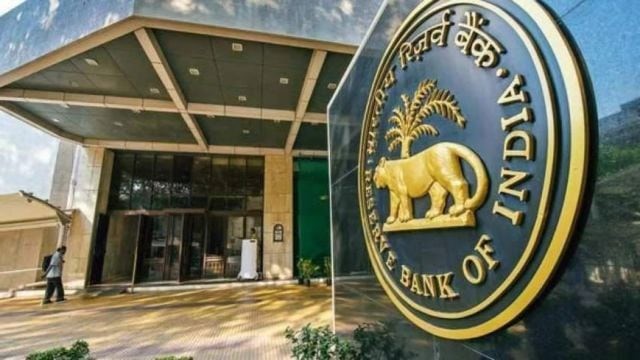
- 25 Nov 2024
Introduction
Municipal corporations (MCs) in India are essential service providers in urban areas, but they face severe financial constraints, which hinder their ability to provide quality services. While urban India contributes almost 60% of the nation's economic output, MCs are heavily reliant on state and central government transfers, limiting their financial autonomy and operational capacity.
Key Issues in Municipal Financing
- Limited Revenue Generation
- Low Property Tax Revenues: Property tax, the main source of municipal revenue, contributes only 0.12% of GDP, a figure that reflects poor tax collection mechanisms and outdated property valuation systems.
- Revenue Concentration: Over 58% of municipal revenue comes from the top 10 cities, highlighting fiscal disparity between urban areas.
- Dependence on Government Transfers: Municipalities rely significantly on state and central transfers, constituting a large portion of their revenue. This reduces their ability to plan and execute long-term projects independently.
- Inefficiency in Tax and Fee Collection
- Ineffective Property Tax Systems: Existing tax formulas do not reflect actual property valuations, leading to under-taxation and revenue loss.
- Inadequate User Charges: Fees for essential services like water supply, sanitation, and waste management are not regularly adjusted, impacting cost recovery and service quality.
Strategies for Strengthening Urban Local Bodies (ULBs)
- Enhancing Revenue Sources
- Property Tax Reforms: Implementing GIS-based property tax mapping and linking tax rates to actual property valuations can improve tax compliance and revenue generation.
- Rationalising User Charges: Regular adjustments to service fees for water, sanitation, and waste management can ensure cost recovery and better service delivery.
- Reducing Dependence on Transfers
- State and Central Transfers: A rule-based framework for government transfers, accounting for inflation and city growth, can ensure predictability and adequate compensation for MCs.
- Boosting Non-Tax Revenues: MCs can increase income from user fees (e.g., for urban transport and waste management) and explore public-private partnerships (PPPs) to enhance service delivery.
- Leveraging Technology for Efficiency
- Digitalisation and Automation: Streamlining processes through technology can reduce inefficiencies, cut down on waste, and free up resources for capital expenditure.
- Monitoring Systems: Improved monitoring and reporting can reduce pilferage, enhance revenue collection, and ensure accountability.
Fiscal Management and Innovative Financing
- Municipal Bonds and Innovative Financing
- Larger MCs are already using municipal bonds to fund infrastructure projects. Smaller cities can adopt similar financing instruments to diversify funding sources and attract private investment.
- Public-Private Partnerships (PPPs): Fostering partnerships in sectors like urban transport and waste management can attract private investment and reduce the financial burden on MCs.
- Resource Pooling for Infrastructure Projects
- MCs can collaborate to pool resources for large-scale projects, such as renewable energy or urban transport initiatives, overcoming fiscal constraints that individual corporations face.
Government Initiatives for Urban Governance
- Citizen-Centric Programs
- Swachh Sarvekshan (2017) promotes citizen participation to improve urban cleanliness.
- Swachh Bharat Idea Book empowers citizens to propose innovative solutions to urban challenges.
- Performance-Based Indices
- Ease of Living Index (2017) and the Municipal Performance Index (2019) assess urban quality of life, service delivery, and governance, encouraging better performance in ULBs.
Conclusion
Empowering urban local bodies is crucial for effective urban governance and development. By improving revenue generation through reforms, reducing dependence on transfers, and adopting innovative financing mechanisms, municipal corporations can enhance their capacity to meet the growing demands of urbanization. Collaborative efforts between the government, civil society, and academia are essential to ensure sustainable urban development and better living conditions for urban residents.
The Fight for Accessibility and Dignity in Indian Prisons

- 24 Nov 2024
Introduction
Prisons in India face numerous systemic issues, with overcrowding, abuse, and neglect being prevalent. For prisoners with disabilities, these challenges are magnified, as they struggle with basic needs and lack necessary accommodations. This issue is not only a human rights violation but also a failure in the implementation of legal protections.
Prison Conditions and Accessibility Issues for Disabled Inmates
- Challenges Faced by Disabled Prisoners: Disabled prisoners, such as Professor G.N. Saibaba, who spent a decade in prison before being exonerated, face severe challenges in performing everyday tasks like using toilets or taking baths. His experience of being physically lifted by fellow inmates due to the lack of wheelchair accessibility highlights the systemic neglect.
- Exclusion and Abuse: Prisoners with disabilities are particularly vulnerable to abuse, as their specific needs are ignored. The government does not track the number or conditions of disabled prisoners, which leads to neglect and mistreatment. Notably, Father Stan Swamy, who had Parkinson's disease, was denied essential items like a straw, affecting his ability to eat and drink.
Legal Framework and International Obligations
- Constitutional Protections: The Indian Constitution guarantees rights to prisoners, including protection from torture (Article 21) and the right to fair legal processes (Article 22). The Supreme Court has reinforced the need for humane treatment in prisons through various judgments.
- International Commitments: India has committed to international conventions such as the United Nations Convention on the Rights of Persons with Disabilities and the Nelson Mandela Rules, which require reasonable accommodations for disabled prisoners. Despite these commitments, the practical enforcement of such rights remains minimal.
- Domestic Legislation: The Rights of Persons with Disabilities Act, 2016, mandates the protection of disabled individuals from abuse and exploitation. However, violations like the denial of basic assistive devices to prisoners show a gap in enforcement. The Ministry of Home Affairs has issued guidelines for prison accessibility, but they have yet to be widely implemented.
Systemic Failures and Lack of Political Will
- Overcrowding and Inadequate Infrastructure: Indian prisons house over 5.73 lakh prisoners, far exceeding their capacity. This overcrowding exacerbates the challenges faced by disabled prisoners, as the infrastructure is inadequate to meet their needs. A 2018 audit of Delhi’s prisons revealed significant accessibility gaps, such as inaccessible cells and toilets, making daily life for disabled prisoners even more difficult.
- Political Apathy and Public Indifference: Many believe that prisoners deserve their suffering, fueling a lack of urgency in addressing prison reforms. However, the state is responsible for ensuring the rights and dignity of all prisoners, including those with disabilities. There is a need for a shift in societal attitudes to ensure that these rights are upheld.
Reforms and the Way Forward
- Infrastructure and Accessibility: Prisons must implement universal design principles, ensuring that infrastructures are accessible to all, especially prisoners with disabilities. This includes accessible cells, toilets, and common areas, as well as functional wheelchairs.
- Judicial and Legal Reforms: The judicial system must expedite trials, especially for undertrials, and ensure that all prisoners have access to legal representation. This would help alleviate the overcrowding crisis and improve the overall functioning of the prison system.
- Comprehensive Rehabilitation and Welfare Programs: Prison systems need to focus on rehabilitation rather than mere punishment. Programs for skill development, education, and mental health support should be integrated into prison routines, providing prisoners with opportunities for personal growth and reintegration into society.
- Strengthening Oversight Mechanisms: There must be greater transparency in prison management through independent oversight bodies and regular audits. A whistleblower mechanism can help report violations of prisoner rights, ensuring greater accountability.
India’s Agricultural Sector
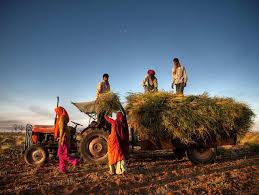
- 23 Nov 2024
In News:
India’s agricultural sector, which employs 42.3% of the population, is crucial to the nation’s economy. However, it faces a range of challenges that need to be addressed to ensure long-term stability, food security, and sustainable growth.
Current Performance of India’s Agricultural Sector
- Key Agricultural Metrics and Growth
- Foodgrain Production: India produced 330.5 million metric tonnes (MT) of foodgrains in 2022-23, maintaining its position as the world’s second-largest producer.
- Horticulture Production: A record high of 351.92 million tonnes in horticultural production was achieved, marking a 1.37% increase from the previous year.
- Market Outlook
- India’s agricultural market is projected to reach USD 24 billion by 2025.
- The food and grocery retail sector is ranked as the sixth-largest globally, with 70% of its sales generated from retail.
- Investment and Export Trends
- FDI in Agriculture: From April 2000 to March 2024, the agricultural services sector attracted USD 3.08 billion in foreign direct investment, while the food processing industry garnered USD 12.58 billion.
- Agricultural Exports: India’s agricultural and processed food exports reached USD 4.34 billion in 2024-25, including products like marine products, rice, and spices.
Key Challenges Confronting India’s Agriculture
- Climate Change and Environmental Impact:Extreme weather events, such as heatwaves and erratic rainfall, continue to impact agricultural productivity. In 2023, India experienced its second-warmest year on record, contributing to crop damage and rising food prices.
- Water Stress and Irrigation Inefficiency: Agriculture consumes the majority of India’s water resources, but irrigation efficiency is still low. The country relies heavily on flood irrigation, which leads to significant water wastage. Only 11% of agricultural land is under micro-irrigation, far below global standards.
- Land Fragmentation and Declining Farm Sizes: The average size of agricultural farms has decreased from 1.08 hectares in 2016-17 to 0.74 hectares in 2021-22, hindering the adoption of modern farming practices and mechanization.
- Market Access and Price Realization: Farmers continue to face challenges in accessing fair market prices due to the dominance of intermediaries and inadequate market infrastructure. Despite reforms like e-NAM, price gaps between farm-gate and retail prices persist, leaving farmers with a smaller share of the final price.
- Technology Adoption and Digital Divide: Although agritech is growing in India, only 30% of farmers use digital tools in agriculture, and rural digital literacy is just 25%, which limits the widespread adoption of modern farming solutions.
Addressing Structural Issues in Indian Agriculture
- Soil Health and Sustainability:The excessive use of chemical fertilizers and mono-cropping practices has led to soil degradation. Approximately 30% of agricultural land in India is experiencing degradation, impacting productivity and sustainability. Stubble burning further exacerbates this issue, worsening air quality and soil health.
- Crop Diversification Challenges:Many farmers are locked into the wheat-rice cycle due to Minimum Support Price (MSP) guarantees, limiting the cultivation of other crops like pulses and oilseeds. Although India is the largest producer of pulses, the domestic production is insufficient to meet the growing demand.
- Feminisation of Agriculture:Women make up 63% of agricultural workers but own only 11-13% of the operational land, limiting their access to resources and decision-making power. This gender disparity hampers their economic security and limits their participation in agricultural development.
Conclusion
India’s agricultural sector holds immense potential but is facing significant structural challenges that must be addressed to ensure its long-term growth and sustainability. Urgent reforms are needed to address issues like climate vulnerability, inefficient irrigation, land fragmentation, and limited market access. Additionally, fostering technology adoption, improving infrastructure, and addressing gender disparities will be crucial for improving the sector's performance and securing India’s food security needs.
Janaagraha’s Report on Urban Local Bodies
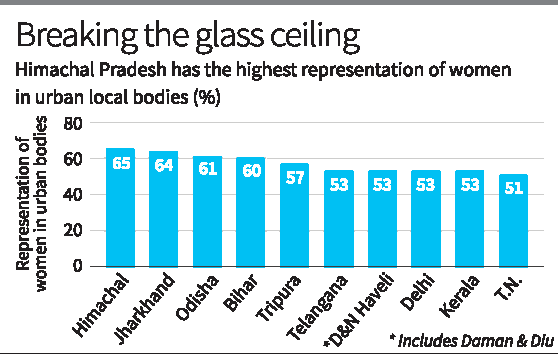
- 22 Nov 2024
In News:
46% of councillors in urban local bodies are women, says a report by Janaagraha, a not-for-profit organisation working to strengthen systems of governance in India’s cities.
Overview: Gender Representation in Urban Local Bodies
- Women Councillors in India: Around 46% of councillors in urban local bodies (ULBs) are women, according to a recent report by Janaagraha, a non-profit organization focused on strengthening urban governance systems.
- Capital Cities: In 19 out of 21 capital cities with active ULBs (such as Patna, Shimla, Ranchi, and Bhubaneswar), women councillors exceed 60% of the total councillor count.
Top States for Women Councillors
- Tamil Nadu stands out with the highest number of women councillors in the country, according to the "Roadmap for India’s City Systems Reforms" report by Janaagraha.
- Other States in the Top 10:
- Rajasthan, Madhya Pradesh, Maharashtra, Andhra Pradesh, Karnataka, Uttar Pradesh, Kerala, Bihar, and Chhattisgarh.
Women’s Reservation and Empowerment
- 50% Reservation: 17 states have legislated 50% women’s reservation in urban local bodies, surpassing the constitutional minimum of 33%.
Pathways for Urban Transformation
- Three Key Recommendations:
- Place-Based Governance: Advocates for governance focused on regional economies and local governments rather than sector-driven policies.
- Decentralised Participatory Governance: Emphasizes the need to strengthen urban local governments and increase citizen participation through the 74th constitutional amendment.
- Building State Capacities: Calls for a more effective role of the Ministry of Housing and Urban Affairs and state urban departments focused on local self-government.
Rural-Urban Transition and Policy Reforms
- Urbanization of Villages: The report highlights that about 1,000 villages have already transitioned into urban areas since the 2011 Census, urging the need for a rural-urban transition policy.
- Reimagine Urban Ministries: Recommends restructuring urban ministries to focus on regional economies and the strengthening of local governance institutions.
Key Challenges in Urban Governance
- Delays in Elections: 61% of ULGs in 15 states have delayed council elections.
- Disempowered Local Bodies: Mayors and ULGs often lack autonomy, with control over only four out of 18 functions.
- Citizen Participation Gaps: There is a lack of formal platforms for citizen involvement in governance.
Skilling and Capacity Building
- Certification-Based Training: Proposes skilling programs for ULG staff, with a focus on improving municipal efficiency and project implementation.
- Shared Service Centres: Recommends creating municipal service centres to benefit smaller cities and enhance urban management.
Conclusion: Need for Place-Based Governance
- Strategic Shift: Srikanth Viswanathan, CEO of Janaagraha, emphasized the need to shift away from a sector-based governance model to a place-based governance approach, better suited to the urban challenges of modern India.
Earning Instead of Burning
- 21 Nov 2024
In News:
Paddy straw burning, prevalent in Punjab, Haryana, and Uttar Pradesh, contributes to severe air pollution, especially during the post-harvest period in October and November. Despite various government measures and subsidies to reduce stubble burning, it continues due to economic and operational constraints faced by farmers. To address this issue, innovative technologies for the productive use of paddy straw need to be explored.
Stubble Burning: Causes and Consequences
Reasons for Stubble Burning
- Short Crop Cycles: The narrow window between paddy harvest and wheat sowing forces farmers to burn straw to prepare fields quickly.
- Economic Constraints: High costs of alternative residue management methods.
- Lack of Awareness: Farmers are often unaware of sustainable alternatives.
- Limited Mechanization: Availability of crop residue management machinery is inadequate.
- Policy Gaps: Ineffective enforcement of regulations and insufficient incentives.
Consequences of Stubble Burning
- Air Pollution: Emission of harmful pollutants like PM2.5, CO2, and CO contributes to air quality degradation.
- Health Hazards: Increased respiratory illnesses due to the inhalation of toxic fumes.
- Soil Degradation: Loss of essential nutrients and organic matter.
- Climate Change: Stubble burning releases greenhouse gases into the atmosphere.
- Economic Costs: Increased health care costs and loss of soil fertility.
Technologies for Paddy Straw Utilization
Large-Scale Technologies
- Direct Combustion:Burns rice straw under controlled conditions to generate heat for cooking and industrial uses. While its calorific value is lower than that of petrol and diesel, it is still viable for local energy generation.
- Pyrolysis and Gasification:
- Pyrolysis: Converts rice straw into bio-oil through heating at 200-760°C in the absence of oxygen.
- Gasification: Converts rice straw into syngas at higher temperatures (480-1,650°C) with limited oxygen. Challenges include low gas production and tar accumulation.
- Biochar Production:Rice straw is incinerated at lower temperatures to produce biochar, which is used as a soil conditioner to improve fertility, water retention, and reduce greenhouse gas emissions.
- Power Generation:Biomass-based power plants use rice straw to generate electricity, providing a sustainable energy source, especially for rural areas. States like Punjab, Haryana, and Uttar Pradesh are scaling up such plants.
- Pellet Production:Rice straw is compressed into compact pellets, improving its density, transportability, and combustion efficiency. These pellets can partially replace coal in power plants, offering an alternative use for crop residue.
- Biofuels:Conversion of rice straw into biofuels like ethanol and biogas helps reduce dependency on fossil fuels and supports the renewable energy transition.
- Paper Production:Rice straw, with its high cellulose content, is used as an eco-friendly alternative to wood in the paper and pulp industry, reducing environmental impact.
Small-Scale Technologies
- Composting:Rice straw can be composted to produce organic fertilizer, enhancing soil health. Vermicomposting is another effective method, though awareness among farmers remains low.
- Mushroom Cultivation:Rice straw serves as an ideal substrate for growing mushrooms, particularly species like Volvariellavolvacea. This practice provides an additional income source for farmers.
- Silica Extraction:Rice straw contains high silica content, which can be extracted for industrial applications like construction and electronics.
- Fodder for Ruminants:Though rice straw is low in digestibility due to high silica content, it can be used as animal feed after pre-treatment, such as drying, grinding, or chemical processes to enhance its nutritional value.
- Adsorbent for Pollution Control:Rice straw can be used to remove heavy metals and toxins from contaminated water, showing promise in environmental cleanup efforts.
- Soil Incorporation:Instead of burning, rice straw can be incorporated directly into the soil to improve fertility, moisture retention, and crop yield. This practice is already being adopted in regions like Punjab and Haryana.
Conclusion: Path Forward
Stubble burning continues to be a significant environmental challenge, but the development and adoption of technologies for utilizing paddy straw can offer viable solutions. Both large- and small-scale technologies can convert rice straw into valuable products like biofuels, power, and fertilizers. To ensure widespread implementation, efforts must be made to increase awareness among farmers and stakeholders, coupled with strong policy support and infrastructural investment. A collaborative approach involving the government, industries, and farmers is essential for sustainable management of rice straw, benefiting both the environment and the economy.
Reimagining Governance with AI: The Promise of GovAI

- 20 Nov 2024
In News:
India's rapid digital transformation, coupled with the advancements in Artificial Intelligence (AI), presents a unique opportunity to reimagine governance. The concept of GovAI—using AI to enhance public administration—holds the potential to revolutionize governance, improve efficiency, and create more responsive and inclusive public systems.
Digital Transformation in Governance
- Evolution of Digital Public Infrastructure (DPI)
- Over the past decade, India has made significant strides in digital governance through the development of Digital Public Infrastructure (DPI). DPI has reduced inefficiencies, enhanced transparency, and improved service delivery, transforming India's governance landscape.
- Impact of AI on Governance
- As AI becomes a critical enabler in various sectors, its application to governance promises to deliver more efficient, inclusive, and responsive government services. The potential of AI lies in its ability to provide more with less, driving innovation across key public services.
Key Trends Driving GovAI
- Rapid Digitalization of India
- Currently, 90 crore Indians are connected to the Internet, with projections indicating 120 crore by 2026, positioning India as the most connected country globally.
- Digitalization serves as the backbone for AI-driven governance, enabling efficient data collection, analysis, and informed policy-making.
- Data as a Valuable Resource
- The rapid digitalization of India has led to the generation of vast amounts of data. This data serves as the fuel for AI models, which can be used to enhance governance.
- Programs like the IndiaDatasetsProgramme aim to harness government datasets for AI development while safeguarding data privacy through legislation.
- Demand for Efficient Governance
- The post-COVID world has underscored the need for governments to deliver better outcomes with fewer resources. AI has the potential to optimize the use of public resources, enabling more efficient and targeted governance.
India’s Leadership in AI-Driven Governance
- Positioning India as a Global Leader
- India’s digital governance initiatives have placed it at the forefront of AI adoption in the public sector. Through GovAI, India can solidify its position as a global leader in using technology for public good.
- As the Chair of the Global Partnership on AI (GPAI), India is advocating for the inclusive development of AI to ensure that it benefits all nations, not just a select few.
- Role of Innovation Ecosystem
- India’s innovation ecosystem, comprising startups, entrepreneurs, and tech hubs, can play a crucial role in driving the development of AI models, platforms, and apps for governance.
- A strong partnership between the government and private sector is essential to successfully deploy AI solutions across various sectors of governance.
Potential Benefits of GovAI
- Enhanced Efficiency and Service Delivery
- AI-powered tools, such as chatbots, can provide citizens with 24/7 assistance, streamlining public service delivery and reducing waiting times.
- AI can help in automating processes and improving the overall efficiency of government operations.
- Data-Driven Decision-Making
- AI can analyze large datasets to make informed policy decisions and design targeted interventions in sectors like healthcare, education, and social welfare.
- Data-driven insights can enhance the effectiveness of welfare schemes, improving outcomes for marginalized communities.
- Increased Transparency and Accountability
- AI can enhance transparency in governance by minimizing human intervention in processes, thus reducing corruption and ensuring efficient use of public resources.
- Predictive analytics and real-time data monitoring can enable proactive governance, preventing issues before they escalate.
Challenges and Drawbacks of GovAI
- Privacy Concerns
- The use of AI in governance requires the collection and analysis of vast amounts of personal data, raising concerns about data privacy and surveillance.
- Robust data protection laws must be enforced to ensure citizens' data is handled responsibly.
- Accountability and Bias
- AI systems may produce biased outcomes depending on the data they are trained on. Ensuring accountability for decisions made by AI systems remains a challenge, particularly when errors or biases occur.
- Transparent mechanisms must be established to hold AI systems accountable for their actions.
- Increased State Control and Surveillance
- The integration of AI in governance could lead to increased state control, potentially compromising individual freedoms. Ensuring that AI is used responsibly to balance power between the government and citizens is critical.
- Digital Divide
- The benefits of AI in governance may not be evenly distributed across the population, exacerbating the digital divide.
- Efforts must be made to ensure that marginalized communities, without access to digital technologies or skills, are not left behind.
Conclusion
- Balancing Benefits and Risks
- The integration of AI into governance systems presents significant benefits, including enhanced efficiency, transparency, and proactive governance. However, there are challenges related to privacy, accountability, and state control.
- To ensure AI serves the public good, India must implement strong regulatory frameworks, promote transparency, and develop ethical AI systems that respect citizens’ rights and freedoms.
- Moving Toward Maximum Governance
- AI can help realize the vision of maximum governance, enabling more effective and targeted interventions across sectors like healthcare, security, education, and disaster management.
- The success of GovAI will depend on a trusted partnership between the government, private sector, and innovation ecosystem, ensuring that AI technology serves the larger public interest.
Sustainable Path to Net-Zero for India
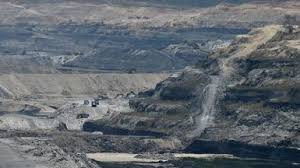
- 19 Nov 2024
In News:
India's commitment to achieving net-zero carbon emissions by 2070 presents a significant challenge, with only 45 years remaining to reach this ambitious target. The path to net-zero requires a balancing act between economic development, energy security, and climate adaptation. India’s efforts to meet its climate goals will be shaped by multiple factors, including resource constraints, land use, and financial limitations.
Why Net-Zero at All?
- Scientific Consensus on Climate Change
- Climate change is a growing concern, with the global temperature rise already reaching 1.1°C above pre-industrial levels.
- To avoid catastrophic impacts, the world needs to limit the temperature rise to 1.5°C. The remaining global carbon budget for this target is around 400-500 billion tonnes of CO?.
- Necessity of Sharp Emission Reductions
- Countries must drastically reduce emissions to stay within the carbon budget. Achieving net-zero emissions is essential for maintaining global climate stability.
Equity in Net-Zero Transitions
- Developed vs. Developing Countries
- Developed nations, historically responsible for a large share of emissions, are expected to lead the transition. However, they have not met the financial and technological support commitments for developing countries.
- Developing nations like India, with low per capita emissions, are under pressure to balance climate action with economic development.
- Climate Justice
- India’s per capita emissions are among the lowest globally, but the richest 10% of Indians contribute significantly to national emissions, exacerbating inequality.
- The impacts of climate change disproportionately affect the economically weaker sections, making the transition to net-zero not only an environmental challenge but a social justice issue as well.
The Challenge of Balancing Development and Sustainability
- Limits of India’s Resources
- India faces resource constraints, including land, water, and biodiversity, which limit the feasible expansion of renewable energy capacity.
- Meeting energy demands while ensuring food security, forest cover, and biodiversity preservation becomes increasingly challenging as energy requirements rise.
- Sustainable Consumption vs. Aspirational Lifestyles
- India’s aspiration to emulate the developed world’s lifestyle is unsustainable due to limited resources, which could lead to severe consequences like groundwater depletion, heat stress, and biodiversity loss.
- The focus should be on sufficiency consumption corridors, ensuring that consumption meets developmental goals without exceeding sustainable limits.
Projected Power Demand and Renewable Energy Targets
- Rising Power Demand
- India’s power demand could increase nine to ten-fold by 2070. Meeting this demand entirely via renewable energy requires significant expansion in energy generation capacity:
- 5,500 GW of solar energy
- 1,500 GW of wind energy
- India’s power demand could increase nine to ten-fold by 2070. Meeting this demand entirely via renewable energy requires significant expansion in energy generation capacity:
- Land Use Constraints
- To meet these targets, India must address land-use trade-offs. Expanding beyond 3,500 GW of solar and 900 GW of wind would require significant compromises in land availability for other uses, including agriculture and conservation.
Strategic Pathways to Net-Zero: Demand and Supply Measures
- Demand-Side Measures
- Energy-efficient construction: Use of better materials and passive designs to reduce cooling energy demand.
- Urban transport: Shift to public and non-motorized transport to reduce energy consumption in cities.
- Dietary choices: Promoting sustainable dietary practices to reduce the carbon footprint of food systems.
- Electrification: Focus on alternative fuels and energy-efficient appliances.
- Supply-Side Measures
- Decentralization of Energy Production: Expanding rooftop solar panels and solar pumps for agriculture.
- Nuclear Power Expansion: Increase nuclear energy to provide a low-carbon baseload and complement renewable sources like solar and wind, which are intermittent.
The Role of International Cooperation and Financial Support
- Global Cooperation
- Global climate action requires alignment between national interests, which may not always coincide, as seen in the context of the U.S. presidential election potentially influencing global climate policy.
- India’s path to net-zero depends heavily on international climate financing, technology transfer, and collaborative efforts to address climate justice.
- Equitable Financing for Developing Countries
- Developed countries are expected to provide financial support to developing nations like India to achieve climate goals. However, this support has been insufficient to date.
Conclusion: India’s Balancing Act
India faces a challenging balancing act as it seeks to provide quality of life for its growing population while achieving its climate adaptation and mitigation goals. The path to net-zero will require careful management of economic growth, energy production, and resource conservation. India must focus on demand-side strategies to reduce energy consumption and increase efficiency while expanding renewable energy infrastructure in a sustainable manner. Additionally, international cooperation and financial support will be crucial in ensuring that India’s transition to net-zero is equitable, efficient, and aligned with its developmental priorities.
Andhra Pradesh's Natural Farming Model
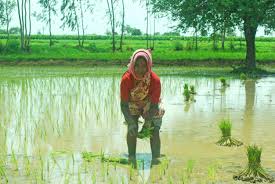
- 18 Nov 2024
In News:
Andhra Pradesh's (AP) natural farming model presents a transformative opportunity to reshape the state’s agricultural landscape by 2050. An analysis by the Food and Agriculture Organization (FAO), in collaboration with the AP government, reveals how scaling natural farming could employ more farmers, increase incomes, and foster sustainable agricultural practices, potentially surpassing the benefits of conventional industrial agriculture.
AgroEco2050: Exploring Two Agricultural Futures
The AgroEco2050 initiative aimed to envision two possible futures for Andhra Pradesh’s agricultural systems by 2050:
- Industrial Agriculture Path: Focusing on intensification of conventional farming, relying heavily on chemicals, machinery, and monocultures.
- Natural Farming Path: Expanding agroecological practices, relying on regenerative, chemical-free farming methods to create more jobs, better livelihoods, and improve the environment.
The study compared these pathways, analyzing their impacts on employment, income, food production, biodiversity, and land use.
Key Findings: Natural Farming’s Impact on Employment and Income
- Employment Growth
- By 2050, natural farming would employ twice as many farmers as industrial agriculture: 10 million compared to 5 million.
- Unemployment in natural farming would decrease to 7%, in stark contrast to a projected 30% unemployment rate in the industrial agriculture scenario.
- Farmer Income
- Natural farming is expected to be more profitable for farmers due to lower input costs (seeds, fertilizers, machinery) and higher market prices for high-quality produce.
- The income gap between farmers and non-farmers, which stood at 62% in 2019, would decrease to 22% under natural farming by 2050, a sharp improvement compared to the 47% gap predicted under industrial agriculture.
What is Natural Farming?
Natural farming is an ecological, chemical-free farming system that emphasizes the use of locally available resources. Key practices include:
- Biodiversity-based pest management
- On-farm biomass recycling (e.g., mulching)
- Indigenous techniques like using cow dung and urine for soil fertility.
Globally recognized as a form of regenerative agriculture, it offers a sustainable alternative to industrial agriculture by sequestering carbon and restoring soil health.
Global Adoption
States like Andhra Pradesh, Karnataka, Himachal Pradesh, and others are already adopting natural farming. While still evolving, its acceptance among farmers is steadily growing.
Zero Budget Natural Farming (ZBNF) in Andhra Pradesh
Origin and Growth
- In 2016, Andhra Pradesh launched the Zero Budget Natural Farming (ZBNF) initiative to offer a sustainable alternative to capital-intensive agriculture.
- This program, implemented by RythuSadhikaraSamstha, targets covering 6 million farmers across 6 million hectares.
National Recognition
The ZBNF approach gained national attention when it was featured in the 2019 Union Budget, aimed at doubling farmers' incomes by 2022. The central government now promotes this model under the Paramparagat Krishi Vikas Yojana (PKVY).
Challenges in Scaling Natural Farming
- Farmer Training and Support
- Farmers need ongoing education and support to transition effectively to natural farming. Current training systems often fail to address the full scope of their needs.
- Certification Barriers
- The certification process for organic farming, including Participatory Guarantee Systems (PGS) and third-party certifications, is complex and costly, presenting a barrier for small-scale farmers.
- Marketing and Procurement Challenges
- There is a lack of effective marketing systems for organic products, which hampers the ability of farmers to sell their produce at fair prices.
- Without strong procurement or buy-back systems, farmers may struggle to find markets for their products.
- Policy and Funding Gaps
- Organic and natural farming programs still receive minimal funding compared to subsidies for chemical fertilizers, impeding large-scale adoption.
- Slow state-level implementation and a continued reliance on chemical inputs also delay the widespread shift to natural farming.
Moving Forward
- Scientific Research on Yields
- To address concerns about lower yields for staple crops, more scientific research is needed to assess the long-term viability of natural farming, especially for crops like wheat and rice, which are crucial for India’s food security.
- Localized Adoption
- Natural farming may be best suited for non-staple crops or localized farming, balancing sustainability with the need for food security.
- Risk Mitigation for Food Security
- Careful evaluation of natural farming’s impact on staple crop yields is necessary to avoid the food security risks witnessed in countries like Sri Lanka, where a sudden shift to organic farming led to reduced yields and increased prices.
Conclusion
The Andhra Pradesh natural farming model offers a promising alternative to industrial agriculture, with the potential to create jobs, improve farmers' incomes, and promote environmental sustainability. However, for this vision to become a reality, significant efforts must be made to address challenges related to training, certification, marketing, and funding. With continued research, policy support, and community involvement, natural farming can play a crucial role in feeding the future and promoting a more sustainable agricultural system.
Khap Panchayats: Evolving Towards Modern Governance and Justice
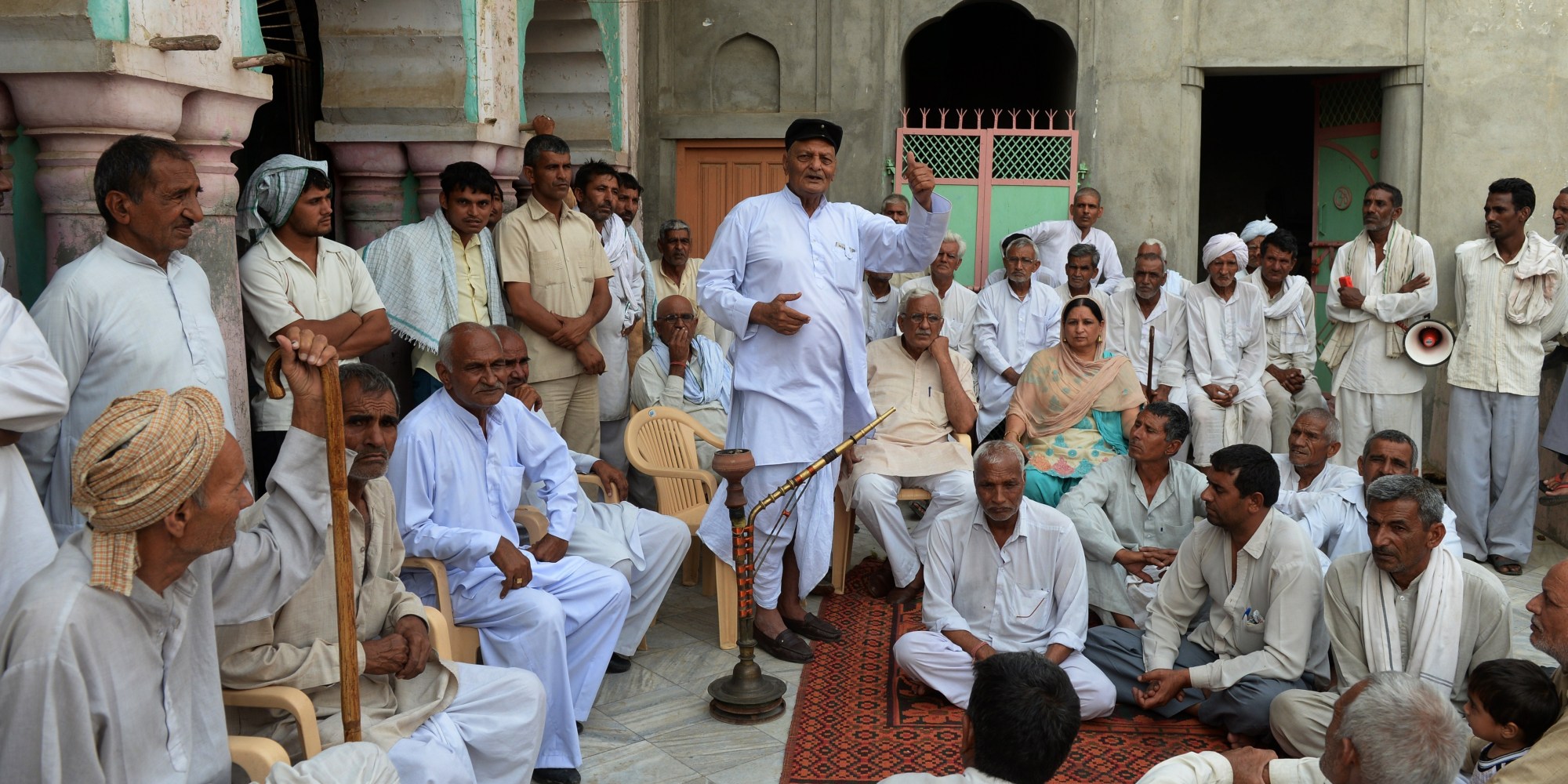
- 17 Nov 2024
Why in the News?
Khap Panchayats have attracted attention due to their evolving role in addressing key socio-economic issues like unemployment, education, and rural development. Modernization efforts are underway to regulate these traditional councils, integrating them into formal Alternative Dispute Resolution (ADR) systems for better governance, accountability, and social justice.
What are Khap Panchayats?
Definition and Origin:
Khap Panchayats are community-based councils primarily found in North India, particularly in Haryana, Uttar Pradesh, and parts of Rajasthan. These informal bodies, composed of elders from kinship groups (Khaps), have historically served as local governance bodies that resolve disputes within their communities. Their origins trace back centuries and they function alongside formal legal systems, often prioritizing customary norms over constitutional law.
Historical Role:
Historically, Khap Panchayats have maintained social order in rural areas, acting as forums for dispute resolution related to marriage, property, and community matters. While their decisions were respected within their communities, they operated parallel to formal courts, and their influence was often seen as a stabilizing force in rural society. However, their structure has also contributed to the perpetuation of patriarchal practices and social exclusion.
Issues with Khap Panchayats
- Patriarchal Practices:Khap Panchayats have often been associated with gender inequality. They enforce rigid social norms that limit women's autonomy, particularly in matrimonial matters, inheritance rights, and personal freedoms. This has led to criticism for their role in suppressing women's rights.
- Honor Killings and Social Conservatism:Khap Panchayats are notorious for opposing inter-caste and same-gotra marriages, at times even endorsing honor killings to preserve social order. Such practices are violations of fundamental rights and personal freedoms guaranteed by the Indian Constitution.
- Legality Concerns:The decisions of Khap Panchayats often clash with constitutional values such as equality, personal liberty, and dignity. Their informal judgments lack legal validity and frequently violate the rule of law, raising significant concerns about their adherence to India’s legal framework.
- Caste-based Discrimination:Khap Panchayats have been criticized for reinforcing caste hierarchies, which leads to discrimination and exclusion of marginalized communities. Their focus on preserving traditional caste structures often results in the oppression of the vulnerable, particularly lower-caste groups.
Gender Dynamics and Evolving Roles of Khap Panchayats
In recent years, some Khap Panchayats have started to show more progressive and inclusive stances, particularly in promoting gender justice:
- Support for Women Athletes:Khap Panchayats have begun to recognize and celebrate the achievements of women, particularly in sports. Several Khap bodies have felicitated women sportspersons, contributing to a growing culture of sports among rural women. This marks a shift from their traditionally patriarchal stance.
- Promoting Gender Justice:Notably, the MehamChaubisiKhap in Haryana has played a significant role in advocating for women’s rights and gender equality. It was involved in supporting the 2023 wrestlers' protest against sexual harassment, demonstrating a shift towards gender-related activism and social reform.
Supreme Court Ruling on Khap Panchayats:
In the landmark Shakti Vahini v. Union of India case (2018), the Supreme Court of India addressed the issue of honor killings and inter-caste marriages. The Court emphasized that honor killings violate fundamental rights and called for strict measures to prevent such crimes. The Court further directed state governments to establish special protection cells for couples facing threats from their families and communities. This ruling underscored the importance of personal liberty and freedom of choice, regardless of community or caste.
What is Alternative Dispute Resolution (ADR)?
Definition and Importance:
Alternative Dispute Resolution (ADR) refers to methods of resolving disputes without resorting to formal litigation. These methods include mediation, arbitration, and conciliation, all of which encourage cooperative problem-solving and mutually agreeable solutions. ADR is particularly important in India due to the overburdened judicial system, which faces a backlog of cases and delays.
ADR offers several advantages, including:
- Cost-effectiveness
- Confidentiality
- Flexibility
- Improved relationships between parties involved
Types of ADR Mechanisms:
- Arbitration: A formal process where an arbitrator resolves disputes and their decision is legally binding.
- Conciliation: A third-party neutral assists the parties in reaching an agreement, and the recommendations can be accepted or rejected.
- Mediation: A mediator facilitates communication between disputing parties, helping them reach a voluntary and mutually agreeable resolution.
- Negotiation: A direct negotiation between the parties without third-party involvement, aiming for a mutually acceptable settlement.
Integrating Khap Panchayats into the Formal ADR System
Given the potential of Khap Panchayats as community-based governance bodies, integrating them into the formal ADR framework can significantly enhance their role in dispute resolution. Here are some strategies for modernizing Khap Panchayats:
- Legal Recognition of ADR Role:Khap Panchayats can be legally recognized within the ADR framework, formalizing their role in mediation and dispute resolution, ensuring their decisions align with constitutional norms and human rights.
- Training and Capacity Building:Khap leaders can undergo training in ADR techniques such as mediation and arbitration, equipping them with skills to resolve conflicts impartially and in line with legal standards. This would help transition Khaps from informal bodies to more structured and legally compliant dispute resolution mechanisms.
- Legal Regulation and Oversight:Regulations can be put in place to define the scope and limitations of Khap Panchayats' authority, ensuring their decisions do not violate human rights or the constitution. Oversight mechanisms should be established to monitor their actions and prevent practices like honor killings or forced marriages.
- Shift Towards Developmental Roles:Some Khap Panchayats are already advocating for progressive reforms in areas like unemployment, education, and rural development. By focusing on these issues, Khap Panchayats can serve as agents of social change and contribute to community development.
- Awareness and Accountability:Awareness campaigns can educate rural communities about constitutional rights and the legal system, emphasizing the importance of formal legal frameworks and human rights. At the same time, Khap Panchayats should be held accountable for actions that undermine justice or equality.
- Collaboration with Formal Institutions:Khap Panchayats can collaborate with local governance bodies and judicial institutions, ensuring that their decisions align with the rule of law and contribute to social justice. This would enhance their role in inclusive decision-making and legally sound governance.
Conclusion
Khap Panchayats, with their deep-rooted history and influence, have the potential to evolve into modern governance institutions. By integrating them into the formal ADR framework, aligning their practices with constitutional values, and focusing on community development, they can contribute positively to dispute resolution and social reform in rural India. This transformation will require legal regulation, training, oversight, and awareness to ensure that Khap Panchayats function as effective, equitable bodies that respect the fundamental rights of all individuals.
Net Borrowing Ceiling
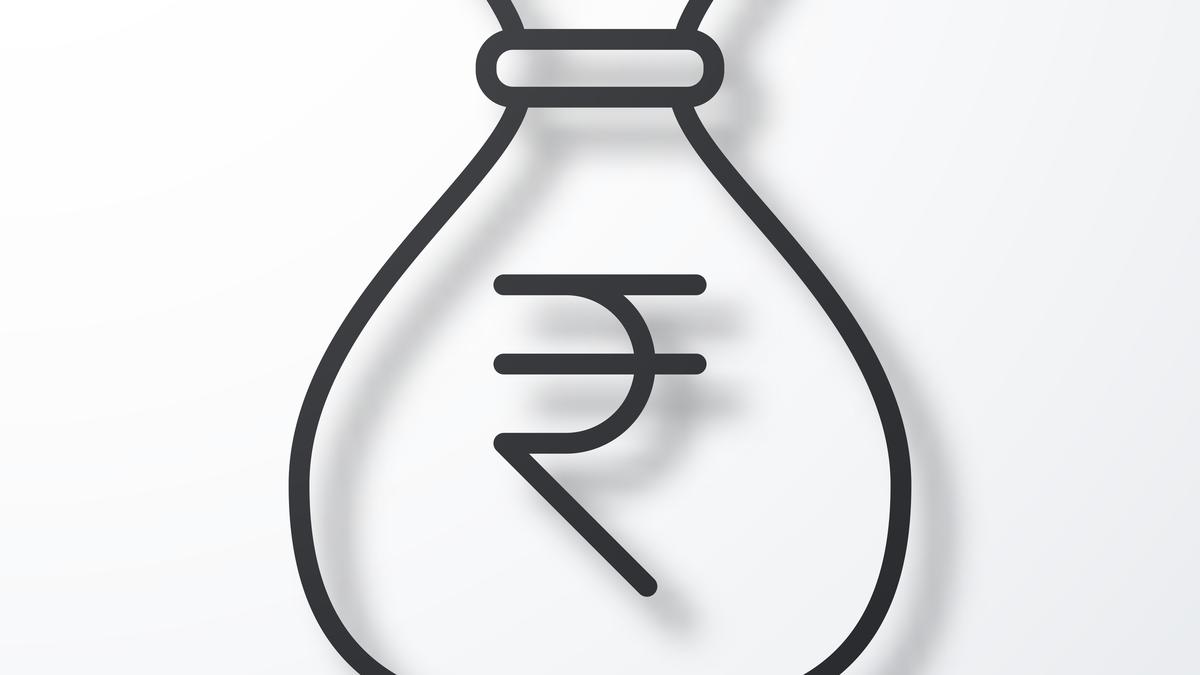
- 16 Nov 2024
In News:
- In 2023, the central government imposed a Net Borrowing Ceiling (NBC) on Kerala, limiting its borrowing capacity to 3% of the projected Gross State Domestic Product (GSDP) for the fiscal year 2023-24.
- Impact on Kerala’s Finances: This ceiling has significantly impacted Kerala’s ability to meet its expenditure needs and fund developmental activities, triggering political and legal disputes. Kerala has approached the Supreme Court of India, arguing that the imposition of NBC infringes upon its constitutional rights under Article 293 of the Indian Constitution.
Constitutional Provisions on Borrowing Powers
Article 292: Borrowing Powers of the Centre
- Central Government’s Borrowing: Article 292 grants the Central Government the authority to borrow money on the security of the Consolidated Fund of India.
- Limits on Borrowing: The extent of borrowing by the Centre is determined by laws enacted by Parliament.
Article 293: Borrowing Powers of the States
- State Borrowing: Article 293 allows State Governments to borrow within India against the Consolidated Fund of the State. However, it imposes certain conditions:
- If a State has outstanding loans or guarantees given by the Centre, the Centre’s consent is required to raise further loans.
- The Central government can impose conditions when granting such consent.
Centre’s Role in State Borrowing
- Article 293(3) allows the Centre to impose conditions on a state’s borrowing if it has existing liabilities or guarantees outstanding.
- The Centre has wide discretion in granting or denying consent, which has been a point of contention in Kerala’s case.
The Imposition of Net Borrowing Ceiling (NBC)
Scope of the NBC
- Comprehensive Coverage: The NBC encompasses all borrowing avenues, including open market loans, loans from financial institutions, and liabilities from State public accounts. To curb circumventing of the borrowing cap via State-owned enterprises, the NBC also covers borrowings by these entities.
Purpose of NBC
- Fiscal Discipline: The NBC is designed to regulate borrowing and prevent states from accumulating unsustainable levels of debt, thus ensuring financial stability.
- Transparency: By including all borrowing avenues, including off-budget borrowings by state-owned enterprises, the NBC aims to provide a clearer picture of a state’s financial health.
Arguments for the NBC
- Macroeconomic Stability: The NBC helps maintain macroeconomic stability by controlling the borrowing levels of states, thus protecting the national economy.
- Compliance with FRBM Act: The NBC aligns with the Fiscal Responsibility and Budget Management (FRBM) Act, aiming to keep the fiscal deficit within prescribed limits.
- Equitable Resource Distribution: The NBC ensures that wealthier states do not disproportionately borrow, thus promoting balanced regional development.
Arguments Against the NBC
- Erosion of Fiscal Autonomy: Critics argue that the NBC undermines the fiscal autonomy of states, as guaranteed by Article 293, by restricting their ability to make independent financial decisions.
- Impact on Developmental Activities: States, particularly Kerala, contend that the borrowing cap restricts their ability to fund key infrastructure projects and social welfare activities.
- Legal Concerns: The NBC’s impact on the interpretation of Article 293 raises legal questions regarding the extent of the Centre’s authority over state borrowing powers.
Fiscal Responsibility and Budget Management (FRBM) Act
Overview of the FRBM Act
- Objective: The FRBM Act, 2003 was enacted to promote fiscal discipline and ensure long-term financial stability in India.
- Key Features:
- Targets a 3% fiscal deficit of GDP for the Centre.
- Requires states to enact similar laws to control their fiscal deficit.
Amendments to FRBM Act
- 2018 Amendment: The FRBM Amendment Act required the central government to ensure that the fiscal deficit did not exceed 3% of GDP and total public debt remained under 60% of GDP.
- Fiscal Deficit Reduction: By 2025-26, the fiscal deficit is expected to be reduced to below 4.5% of GDP.
Way Forward: Strengthening Article 293
Guidelines for Borrowing Powers
- Transparency in Decision-Making: The Centre should ensure that the borrowing process is transparent, with clear standards and procedures for accepting or rejecting state borrowings.
- Consultative Process: The Centre should engage in consultations with states before imposing borrowing caps or conditions, fostering a cooperative federal structure.
- Equitable Treatment: Borrowing restrictions should apply uniformly to all states to avoid bias or favoritism.
Strengthening Fiscal Federalism
- Fiscal Autonomy: States should be given the flexibility to manage their finances in a way that reflects their unique economic needs and challenges.
- Periodic Reviews: The Net Borrowing Ceiling should be reviewed periodically to account for changing economic conditions and developmental priorities.
The Need for More Women in Politics
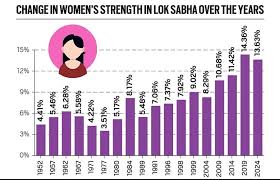
- 15 Nov 2024
In News:
India, the world's largest democracy, is at a crucial juncture where women’s active political participation is essential for holistic development and true democratic engagement. The year 2024 demands increased involvement of women in politics to address issues of gender inequality and ensure comprehensive policy representation.
Current Status of Women’s Political Representation in India
Women in Parliament
- Initial Representation: In 1952, women accounted for only 4.41% of the Lok Sabha. This gradually rose to around 14.36% in the 2019 elections.
- Recent Trends: In the 2024 elections, women made up approximately 16% of the Lok Sabha, with 74 women MPs, 43 of whom are first-time representatives.
Women in State Legislatures
- Representation in state legislative assemblies remains low, with the highest percentages in Chhattisgarh (14.4%), West Bengal (13.7%), and Jharkhand (12.4%).
Global Comparison
- According to the Inter-Parliamentary Union (IPU), India ranks lower than many countries in terms of female representation in parliament, with global averages standing at 26.1%. India lags behind several African and South Asian nations.
Importance of Women’s Political Empowerment
- Enhancing Governance and Accountability: Political empowerment of women ensures better representation of gender-sensitive issues, promoting accountability in governance.
- Breaking Patriarchal Norms: Increasing women’s participation helps challenge the patriarchal structure that dominates Indian politics and promotes inclusive governance.
- Policy and Social Impact: Women in politics are more likely to advocate for policies that address issues like health, education, and gender equality, leading to improved societal welfare.
- Economic Benefits: Studies suggest that women in political leadership tend to improve economic outcomes for their constituencies by prioritizing social infrastructure.
Barriers to Women’s Political Participation
- Gender Gaps in Political Ambition: Women are less likely to pursue political careers due to gender conditioning, family pressures, and stereotypes about leadership abilities.
- Patriarchal Culture: A deeply ingrained patriarchal society hampers women’s political involvement, with male-dominated party structures and social norms limiting opportunities.
- High Election Costs: The financial burden of running for office often discourages women from contesting elections due to unequal access to resources.
- Male Gatekeepers in Politics: Political parties often show a preference for male candidates, especially for higher-profile positions, hindering the rise of women leaders.
- Criminalisation and Corruption in Politics: Growing criminalisation in politics and lack of political education further alienates women from the political process.
Key Legislative and Constitutional Measures for Women’s Political Empowerment
Legislative Measures
- Nari Shakti VandanAdhiniyam (2023): Provides 33% reservation for women in the Lok Sabha and state assemblies.
- 73rd and 74th Amendments (1992): Introduced 33% reservation for women in Panchayats and Municipalities.
- Gender-Neutral Rules: Lok Sabha adopted gender-neutral rules in 2014, promoting inclusivity in legislative procedures.
Constitutional Provisions
- Article 14 and 15: Ensure equality and non-discrimination, fundamental to women’s political participation.
- Article 243D: Mandates 33% reservation for women in Panchayats.
International Commitments
- CEDAW (1979): Advocates for women’s participation in political and public life.
- Beijing Platform (1995) and SDGs (2015): Call for removing barriers to women’s participation in politics.
Measures for Promoting Women’s Political Participation
- Quotas and Reservations: Ensuring mandatory quotas for women candidates in party tickets and legislative bodies can help bridge gender gaps.
- Capacity Building and Training: Offering political training programs for women can empower them with the skills and resources necessary for effective political participation.
- Strengthening Grassroots Movements: Support for Self-Help Groups (SHGs) and Panchayati Raj Institutions (PRIs) can build leadership among women at the local level.
- Supportive Political Ecosystem: Political parties should be encouraged to nominate women for higher office positions, such as the Rajya Sabha or state legislative councils.
- Raising Public Awareness: Public awareness campaigns focusing on the importance of women in politics can shift societal attitudes and garner wider public support.
Conclusion:
As India moves forward, the active participation of women in politics is not merely a matter of equity but an essential building block for a vibrant, inclusive, and effective democracy. Through structural reforms, public awareness, and the promotion of female leadership, India can strengthen its democratic framework, ensuring that all citizens, regardless of gender, have an equal stake in shaping the nation's future.
Chief Justice of India
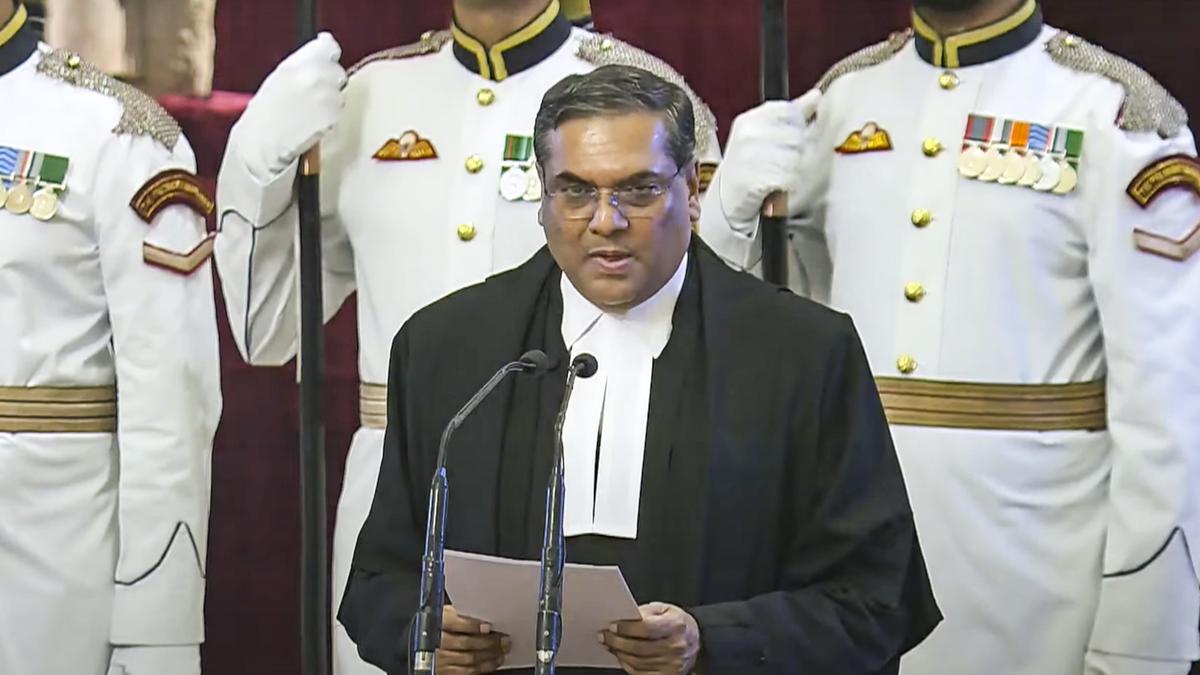
- 13 Nov 2024
In News:
On November 11, 2024, Justice Sanjiv Khanna was sworn in as the 51st Chief Justice of India (CJI) at the Rashtrapati Bhavan, New Delhi, marking a significant milestone in the Indian judiciary. He succeeds Justice D.Y. Chandrachud, who retired on November 10, 2024. Justice Khanna's term as CJI will last until May 13, 2025.
Background of Justice Sanjiv Khanna
Early Life and Legal Career
- Legal Practice: Justice Khanna began his legal career in 1983 after completing his law degree from Delhi University. He practiced in the District Courts of Delhi and handled cases in constitutional law, taxation, arbitration, and environmental law.
- Career in Delhi High Court: He was appointed as an Additional Judge to the Delhi High Court in 2005 and became a Permanent Judge in 2006.
- Appointment to the Supreme Court: Justice Khanna was appointed as a Supreme Court Judge in January 2019, without having served as a Chief Justice of a State High Court, and superseding 32 senior High Court judges.
Key Judicial Rulings of Justice Sanjiv Khanna
Major Constitutional Bench Decisions
- Abrogation of Article 370: Justice Khanna was part of the Bench that upheld the abrogation of Article 370 of the Constitution, which revoked Jammu and Kashmir’s special status.
- Electoral Bonds Scheme: He also contributed to the ruling that struck down the 2018 Electoral Bonds scheme, raising questions about the transparency of political funding.
Support for EVMs
- Justice Khanna defended the use of Electronic Voting Machines (EVMs) and rejected calls to revert to paper ballots, emphasizing the need for technological progress and institutional trust.
Personal Liberty and Bail Decisions
- Arvind Kejriwal’s Interim Bail: Justice Khanna granted interim bail to Delhi Chief Minister Arvind Kejriwal in the liquor policy case, underscoring personal liberty as a fundamental right.
- Judicial Review of Bail Conditions: He also initiated discussions on setting standards for bail conditions in cases involving significant political figures.
Role of the Chief Justice of India (CJI)
Appointment Process
- Article 124(2): A Supreme Court judge is appointed by the President of India, with the senior-most judge of the Supreme Court traditionally becoming the CJI.
- Qualifications: The CJI must be a citizen of India and have served as a judge in a High Court for at least five years or as an advocate in a High Court for ten years.
Powers and Responsibilities
- Master of the Roster: The CJI is the "Master of the Roster," responsible for assigning cases to specific benches and determining the court's schedule.
- Collegium System: The CJI, along with four senior judges, forms the Collegium that recommends judicial appointments for the Supreme Court and High Courts.
- Ad-Hoc Appointments: The CJI can also appoint ad-hoc judges to the Supreme Court under Article 127 of the Constitution.
Removal
- A CJI can only be removed through a process initiated in Parliament, requiring a special majority in both Houses of Parliament.
Appointment of CJI in Other Countries
United States
- The Chief Justice of the United States serves for life, with tenure continuing until impeachment or voluntary retirement.
United Kingdom
- The Lord Chief Justice in the UK is appointed by a special panel from the Appeal Court or the Supreme Court. The tenure is life, but mandatory retirement is set at 75 years of age.
Conclusion
Justice Sanjiv Khanna’s appointment as the 51st Chief Justice of India represents a significant moment in the country's judicial history. With his extensive experience and legal acumen, he faces numerous challenges, from dealing with case pendency to navigating sensitive constitutional issues. His tenure will likely shape the future trajectory of the Indian judiciary, with a focus on upholding justice and personal liberty while addressing the evolving needs of a democratic society.
What are the costs of population decline?

- 11 Nov 2024
In News:
India has been witnessing significant demographic changes due to decades of family planning policies. This has led to declining fertility rates in certain States, particularly in the southern and smaller northern regions.
Introduction: Demographic Shift in India
- Southern States’ Fertility Trends: States like Tamil Nadu, Kerala, Andhra Pradesh, and Telangana have fertility rates below the replacement level (around 1.4–1.5), while Bihar, Uttar Pradesh, and Madhya Pradesh have higher fertility rates (2.6–3).
- Ageing Population: Southern States face the challenge of an ageing population, with Kerala projected to have 22.8% of its population aged 60+ by 2036, while Bihar will have only 11%.
Economic and Health Impact of Population Decline
- Economic Consequences:
- Dependency Ratio: The old-age dependency ratio (the number of elderly for every 100 working-age individuals) has increased significantly in some States. Kerala, for example, had a ratio of 26.1 in 2021, signaling a crisis point.
- Loss of Demographic Dividend: States with declining fertility rates face the loss of a demographic dividend, i.e., the economic benefit from a large working-age population, which is increasingly burdened by elderly dependents.
- Health Expenditure: Rising healthcare costs, especially for cardiovascular diseases in southern States, will strain public health systems. The southern States, although comprising one-fifth of India's population, spent 32% of the country’s total out-of-pocket expenditure on cardiovascular diseases in 2017-18.
- Challenges of Low Fertility:
- Declining Labour Force Participation: Policies encouraging higher fertility may also reduce women’s labour force participation, undermining the economic growth of these States.
- Economic Pressures: Southern States, despite higher tax contributions, face a diminished share of central resources due to slower population growth. This is a point of concern in inter-State fiscal relations.
Political Implications of Uneven Population Growth
- Impact on Federal Structure:
- The uneven population growth across States will lead to significant changes in the delimitation of constituencies after the current freeze on seat allocation in Parliament expires in 2026.
- Redistribution of Lok Sabha Seats: Northern States like Uttar Pradesh and Bihar will likely gain more seats, while southern States like Tamil Nadu, Kerala, and Andhra Pradesh will lose seats due to their declining population shares.
- Challenges in Federal Relations:
- Southern States’ economic contributions through taxes are disproportionate to the resources they receive from the central pool, leading to growing tensions between high-growth and slow-growth regions.
- The shift in political power post-delimitation could increase regional disparities, potentially leading to political tensions between States.
Solutions and Policy Recommendations
- Pro-Natalist Policies:
- Southern States are considering pro-natalist policies to incentivize higher fertility rates. However, such measures have been largely unsuccessful internationally, especially when women’s economic independence and educational choices are restricted.
- International Experience: Attempts to incentivize childbearing, without addressing broader socio-economic factors like gender equality, have generally failed in other nations. Maternity benefits, gender-neutral parental leave, and childcare support are key to increasing fertility sustainably.
- Gender Equity and Work-Family Balance:
- Work-family policies that support paid maternity and paternity leaves, affordable childcare, and gender-neutral employment policies are essential to empower women to balance family and career.
- Studies indicate that countries with higher gender equity have better fertility rates because women are less likely to forgo childbearing for career reasons.
- Increasing Retirement Age:
- One way to reduce the old-age dependency ratio is to increase the retirement age, which would allow older workers to remain employed longer and support a sustainable economy.
- Social Security and pension reforms should also be considered to accommodate the ageing workforce and reduce the economic burden on younger generations.
- Managing Migration:
- Migration policies should be adjusted to manage the influx of economic migrants into southern States, who contribute to the economy but continue to be counted in their home States for fiscal and political purposes.
- Migration-based policy reforms could address the challenge of an ageing population in states with declining fertility while ensuring equitable resource distribution across States.
Bharat 6G Mission
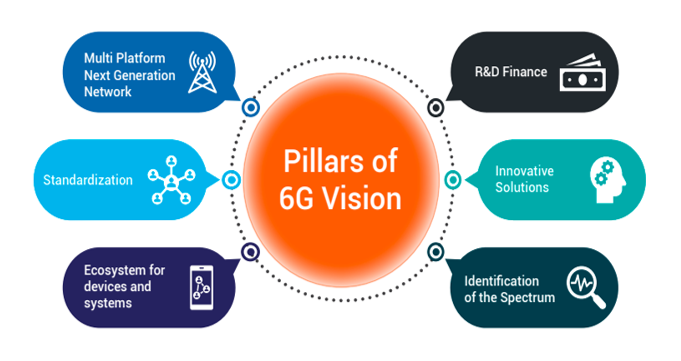
- 10 Nov 2024
In News:
India aspires to lead the world in 6G technology by 2030 through the Bharat 6G Mission. This initiative builds upon the successful rollout of 5G, which reached 98% of districts in just 21 months.
Key Features of 6G Technology
- Terahertz (THz) Frequencies: 6G will utilize THz waves capable of transmitting significantly more data than 5G, offering ultra-fast data rates.
- Massive MIMO (Multiple Input Multiple Output): Supports a large number of devices and simultaneous connections using multiple antennas, improving data transmission and reception.
- Network Slicing: Creates specialized, smaller networks tailored to specific traffic types, such as video streaming or industrial automation.
- Enhanced Security: Incorporates advanced encryption and authentication protocols to safeguard sensitive data.
- Ultra-Reliable Low Latency Communication (URLLC): Ensures ultra-low latency, critical for applications like industrial automation, virtual reality (VR), and augmented reality (AR).
- Integrated Intelligent Reflecting Surfaces (IIRS): Enhances signal strength and quality, particularly in areas with poor reception.
- High-Speed Data Transfer: Supports data communication over hundreds of GHz or THz frequencies, facilitating faster transfer rates.
Government Initiatives for 6G Development
Bharat 6G Vision and Strategy
- Goal: To design, develop, and deploy 6G technologies, ensuring secure, intelligent, and pervasive global connectivity.
- Core Principles:
- Affordability, sustainability, and ubiquity aligned with the vision of Atmanirbhar Bharat (self-reliant India).
- Strategic Objectives:
- Promote R&D through startups, universities, and industries.
- Develop affordable 6G solutions and global IP contributions.
- Focus on transformative applications to enhance quality of life.
Technology Innovation Group (TIG) on 6G
- Established: November 1, 2021.
- Task Forces:
- Focus on multidisciplinary solutions, spectrum management, devices and networks, international standards, and R&D funding.
Bharat 6G Alliance
- A collaborative effort between Indian industry, academia, and research institutions to develop 5G advancements, 6G products, and patents.
- Global Alignment: Partners with organizations like the Next G Alliance (US), 6G Flagship (Finland), and South Korea’s 6G Forum.
Applications of 6G Technology
Application Area
Description
Healthcare
Real-time patient monitoring and AI-connected devices.
Agriculture
IoT and AI-driven predictive systems for crop health and irrigation.
Defense & Internal Security
Enhanced surveillance, communication, and unmanned operations.
Disaster Response
High-volume communication for emergency coordination.
Transportation
Ultra-low latency for urban air mobility and traffic management.
Education
High-speed remote learning, immersive AR/VR-enabled classrooms.
Metaverse
3D holographic displays and seamless virtual interactions.
Industrial Automation
Smart factories with enhanced operational efficiency through real-time data.
Smart Cities
Efficient urban infrastructure and real-time monitoring using IoT.
Entertainment & Media
Higher-quality streaming, immersive content delivery.
Environmental Monitoring
Real-time data collection for resource management and conservation.
Challenges in 6G Development
- Technical Complexity: Development of advanced components and subsystems makes 6G technology highly complex.
- Infrastructure Deployment: Significant investment and regulatory support are required for the necessary infrastructure upgrades.
- Spectrum Allocation: The limited availability of spectrum poses challenges in balancing competing demands for bandwidth.
- Security Concerns: High-speed data transmission increases vulnerability to cyber threats, necessitating robust security protocols.
- Standardization Issues: Achieving global consensus on standards for 6G interoperability can be slow and contentious.
- Global Collaboration: Effective international cooperation is critical for technological and regulatory alignment.
Conclusion
India’s Bharat 6G Mission represents a visionary approach to maintaining technological leadership in the rapidly evolving global digital landscape. By investing in research, fostering international collaborations, and pursuing policies aligned with Atmanirbhar Bharat, India can harness 6G to fuel socio-economic growth and strengthen global connectivity.
Uttar Pradesh Board of Madarsa Education Act, 2004
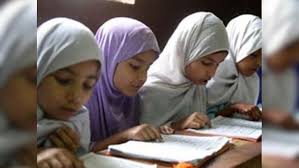
- 09 Nov 2024
In News:
The Supreme Court recently upheld the constitutional validity of the Uttar Pradesh Board of Madarsa Education Act, 2004 (also called the Madarsa Act), while striking down certain provisions related to the granting of higher education degrees. The Court overturned the Allahabad High Court's previous decision, which had deemed the Act unconstitutional on the grounds that it violated the principle of secularism.
What is the Madarsa Act?
The Madarsa Act provides a legal framework for regulating madrasas (Islamic educational institutions) in Uttar Pradesh. The Act:
- Establishes the Uttar Pradesh Board of Madarsa Education, which oversees the curriculum and examinations for madrasas.
- Ensures that madrasas follow the National Council of Educational Research and Training (NCERT) curriculum for mainstream secular education alongside religious instruction.
- Empowers the state government to create rules for regulating madrasa education.
Allahabad High Court's Ruling
In March 2024, the Allahabad High Court declared the Madarsa Act unconstitutional, citing:
- Violation of secularism: The Court argued that the Act's emphasis on compulsory Islamic education, with modern subjects being optional, discriminated on religious grounds, violating the secular nature of the Constitution.
- Right to Education: The Court also claimed that the Act denied quality education under Article 21A, which guarantees free and compulsory education to children.
- Higher Education Degrees: The Act's provisions allowing the granting of Fazil and Kamil degrees were found to conflict with the University Grants Commission Act, 1956, which regulates higher education.
Supreme Court's Ruling
The Supreme Court overturned the Allahabad High Court's decision on several grounds:
- Basic Structure Doctrine: The Court clarified that the basic structure doctrine, which applies to constitutional amendments, does not apply to ordinary legislation like the Madarsa Act. Therefore, a law cannot be struck down simply for violating secularism unless explicitly prohibited by the Constitution.
- State's Authority to Regulate Education: The Court held that the state has the right to regulate education in minority institutions, as long as the regulation is reasonable and rational. It emphasized that the Madarsa Act does not deprive these institutions of their minority character.
- Right to Education for Minority Institutions: Referring to a 2014 decision, the Court ruled that the Right to Education Act (RTE) does not apply to minority institutions, as it would undermine their right to impart religious education and self-administer.
Striking Down Higher Education Provisions
While upholding most of the Act, the Supreme Court struck down the provisions related to higher education degrees (Fazil and Kamil). It ruled that:
- Section 9 of the Act, which allowed the Board to grant these degrees, is in conflict with the University Grants Commission Act, which only permits degrees to be awarded by universities recognized by the UGC.
Implications of the Ruling
- Regulation of Madrasa Education: The ruling affirms the state's authority to ensure quality education in madrasas, balancing religious instruction with secular subjects.
- Protection of Minority Rights: By upholding the Madarsa Act, the Court protected the rights of religious minorities to run educational institutions while ensuring they meet educational standards.
- Focus on Inclusivity: The judgment emphasizes the integration of madrasas within the broader educational framework, ensuring that madrasa students receive quality education.
In conclusion, the Supreme Court's decision supports the regulation of madrasa education while safeguarding the rights of minority institutions, except in areas related to the granting of higher education degrees, which remain under the jurisdiction of the UGC Act.
Indus Waters Treaty (IWT)
- 08 Nov 2024
In News:
Need for modification of the Indus Waters Treaty (IWT) amidst changing geopolitical, environmental, and demographic realities.
Background of the Indus Waters Treaty (IWT)
- About IWT:
- Signed in 1960 between India and Pakistan, brokered by the World Bank.
- Governs the sharing of the Indus River system waters.
- Historical Context:
- Origin in the Inter-Dominion Accord of 1948 post-partition.
- Finalized after negotiations facilitated by the World Bank in 1951.
- Key Provisions:
- Eastern Rivers (Ravi, Beas, Sutlej) allocated to India.
- Western Rivers (Indus, Jhelum, Chenab) allocated to Pakistan, with limited use allowed for India (e.g., hydropower, irrigation).
- Establishment of the Permanent Indus Commission (PIC) for cooperation and dispute resolution.
India’s Perspective
- Rationale for Modification:
- Increased demographic and agricultural demands.
- Need for sustainable water management.
- Acceleration of hydropower projects on western rivers permitted by the treaty.
- Security Concerns: Cross-border terrorism impacting trust in treaty operations.
Pakistan’s Concerns
- Dependence on Indus System: Critical for agriculture and drinking water as the lower riparian state.
- Potential Impacts of Modification:
- Fear of reduced water availability.
- Concerns over India’s hydropower projects altering water flow.
Current Challenges
- Hydropower Projects: Disputes over compliance with treaty provisions regarding hydropower construction.
- Technical Disputes: Divergent interpretations of treaty terms.
- Political Tensions: Strained bilateral relations with minimal diplomatic engagement.
- Climate Change Impacts: Altered precipitation patterns and glacial melt affecting water availability.
Arguments for Modifying the Treaty
- Addressing Contemporary Challenges: Climate change, technological advancements, and increased water demand.
- Securing National Interests:
- Clarifications on hydropower construction.
- Improved dispute resolution mechanisms.
Risks of Modifying the Treaty
- Escalation of Tensions: Perceived unilateral actions by Pakistan.
- Political Sensitivities: Domestic opposition in both countries.
Way Forward: A Balanced Approach
- Engagement and Dialogue: Bilateral discussions with potential third-party mediation (e.g., World Bank).
- Cooperation over Conflict: Recognizing mutual benefits of collaboration in water management.
- Adaptation Measures: Incorporate provisions addressing climate change and technological advances.
Supreme Court Ruling on Property and Redistribution
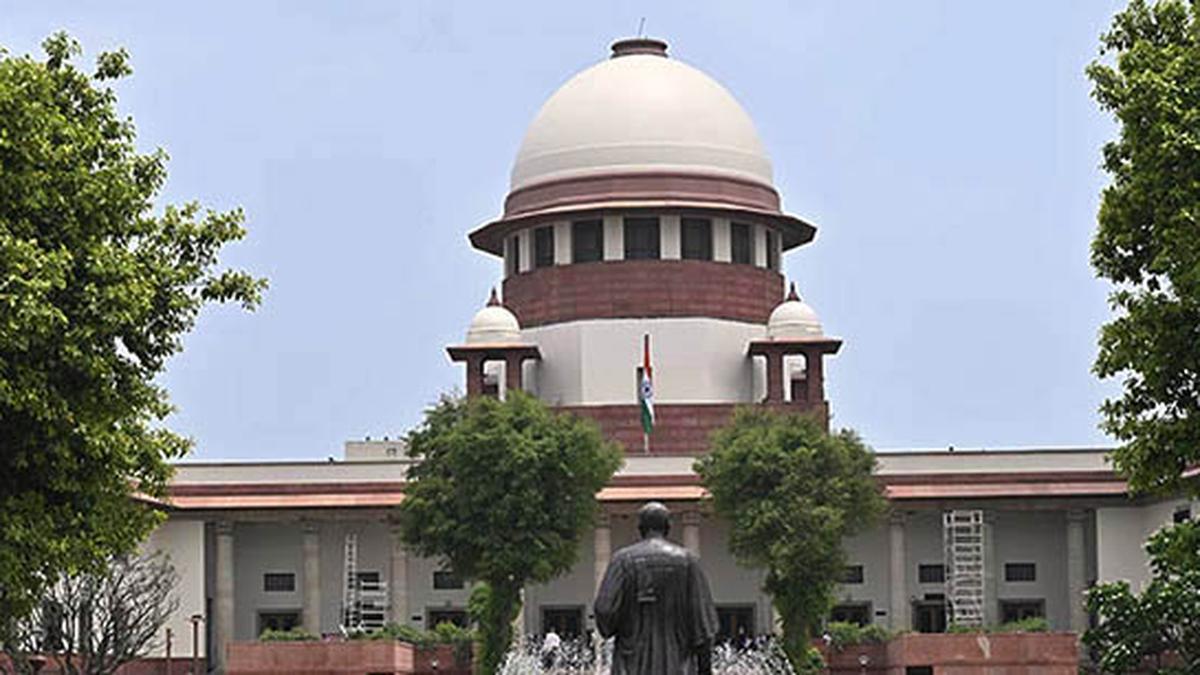
- 06 Nov 2024
In News:
A crucial 9-judge bench of the Supreme Court ruled on the scope of government powers over private property, with a focus on Articles 39(b) and 31C of the Constitution.
Key Issues Considered by the Court
- Article 31C: Whether it still protects laws giving effect to Articles 39(b) and 39(c), even after amendments and past rulings.
- Interpretation of Article 39(b): The meaning of “material resources of the community” and the limits on government acquisition.
Legal and Constitutional Background
- Article 31C and 39(b) Overview:
- Article 31C was introduced by the 25th Amendment (1971) to protect laws related to the distribution of resources for the common good.
- Article 39(b) (Directive Principle of State Policy) mandates that resources should be distributed to best serve the common good.
- Historical Context:
- Kesavananda Bharati Case (1973): The Supreme Court affirmed the Constitution’s "basic structure," impacting the interpretation of amendments to Article 31C.
- Minerva Mills Case (1980): The Court struck down further amendments to Article 31C.
The Supreme Court’s Ruling in 2024
- Restoration of the Post-Kesavananda Position: The Supreme Court clarified that the interpretation of Article 31C is restricted, and the protection under this article applies only to laws implementing Articles 39(b) and 39(c), not all directive principles.
- On Redistributing Private Property:
- The majority opinion held that not all privately owned properties can be considered “material resources of the community” for redistribution under Article 39(b).
- The Court dismissed the broad interpretation of "material resources" used in previous rulings (e.g., Justice Krishna Iyer’s dissent in the Ranganatha Reddy case, 1977).
Dissenting and Concurring Opinions
- Justice Nagarathna’s Concurring Opinion:
- Acknowledged that certain privately owned resources could be considered material resources (e.g., forests, wetlands), but emphasized a balanced approach.
- Distinguished between personal belongings and resources that could be considered part of the public domain.
- Justice Dhulia’s Dissent:
- Argued for a broader interpretation, in line with past rulings, that private resources could be considered material resources if they served the public good.
Interpretation of Article 39(b)
- Scope of the Article:
- Article 39(b) directs the State to ensure that the ownership of material resources is distributed to serve the common good.
- It imposes a positive obligation on the State to create policies for resource distribution, but does not authorize arbitrary expropriation of private property.
- Private Property as Material Resources:
- The Court clarified that private property cannot be deemed a material resource of the community unless specific conditions are met (e.g., scarcity, public welfare implications).
- The judgment emphasized a case-by-case analysis rather than a blanket approach.
Criteria for Assessing Material Resources
The Court provided criteria to evaluate whether a private property could be considered a “material resource of the community”:
- Nature of the Resource: What is the resource’s fundamental characteristic?
- Impact on Public Welfare: Does the resource impact the common good or public interest?
- Ownership Type: Is the resource privately owned or under state control?
- Scarcity: Is the resource scarce or in finite supply?
- Concentration of Ownership: Are the resources concentrated in the hands of a few private entities?
Implications of the Ruling
- Protection of Private Property Rights: The ruling strengthens protections against arbitrary State acquisition of private property, reinforcing the constitutional safeguards for property rights.
- Economic Implications: The Court noted that India’s economic trajectory has shifted from socialism to a market-based economy, and that resource redistribution policies should reflect this change.
- Policy Shifts: The ruling marks a shift away from a socialist economic ideology towards one that emphasizes private property rights, while still considering public welfare in resource distribution.
Conclusion
- Balancing Individual Rights with Public Welfare: The ruling underscores the importance of balancing private property rights with the need for equitable resource distribution to serve the common good.
- Implications for Constitutional Interpretation: This judgment marks a pivotal moment in the interpretation of property rights in India, affirming the evolving nature of the Constitution in response to dynamic economic and social policies.
Does Data Justify Subdivision of Quotas?
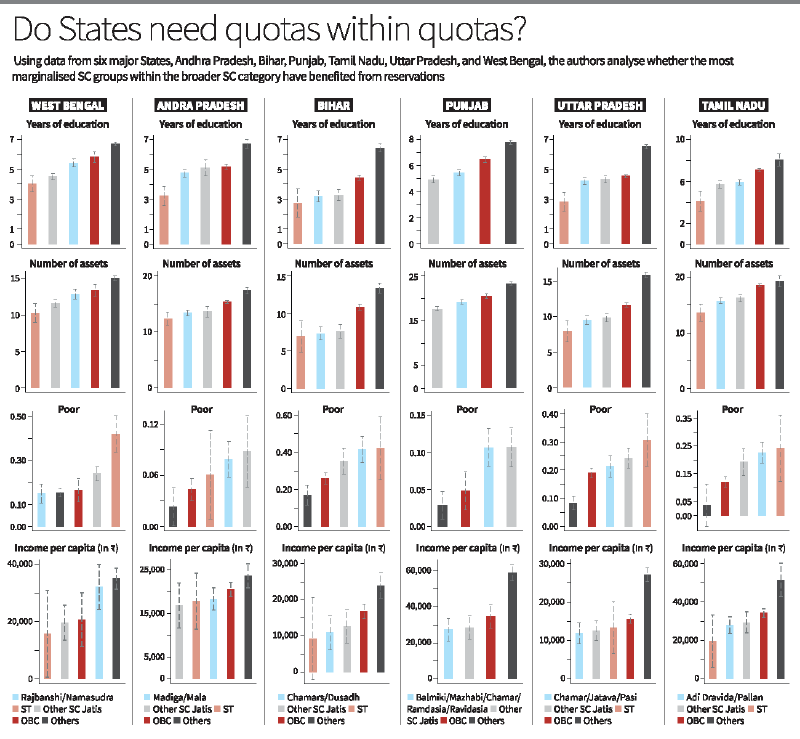
- 05 Nov 2024
Context
India's reservation system has long been a tool for uplifting historically marginalized communities, especially Scheduled Castes (SCs) and Scheduled Tribes (STs). However, recent debates have questioned whether the system serves its intended purpose, particularly in light of disparities within the SC groups. The need for a ‘quota-within-quota’ system has been raised to ensure more equitable outcomes across different SC subgroups.
The Reservation System: Origins and Objectives
Purpose of Reservations
- Historical Background: Established to correct centuries of social and economic exclusion faced by SCs and STs.
- Mechanism for Equality: Aimed to create opportunities in education, government employment, and public offices for historically marginalized groups.
- Dr. B.R. Ambedkar’s Vision: Reservations were designed to transition from formal legal equality to substantive equality.
Challenges of the Current System
- Despite progress, certain SC subgroups seem to have benefited more than others.
- A Supreme Court ruling has led to calls for a 'quota-within-quota' to address intra-SC disparities.
Exploring Intra-SC Disparities: The Data Analysis
States Examined
- Key States: Andhra Pradesh, Bihar, Punjab, Tamil Nadu, Uttar Pradesh, and West Bengal.
- Objective: To investigate whether some SC subgroups have disproportionately benefited from the reservation system.
Findings Across States
- Andhra Pradesh: Minor differences between SC groups (Malas vs. Madigas), with both groups showing similar socio-economic progress.
- Tamil Nadu: No significant disparity between Adi Dravida and Pallan groups, both benefiting equally from reservations.
- Punjab: Subdivision of quotas since 1975 has led to better outcomes for disadvantaged groups like Mazhabi Sikhs and Balmikis.
- Bihar: The Mahadalit category, introduced in 2007, failed due to political intervention, undermining the policy’s goals.
Key Insights
- In some states (e.g., Punjab), a subdivision of quotas has been effective in addressing intra-SC disparities.
- In other states, like Andhra Pradesh and Tamil Nadu, the benefits of reservations are already distributed fairly evenly among SC subgroups.
- The gap between SCs and upper-caste groups remains much larger than the gap within SCs.
The Issue of Access to Reservations
Caste Certificates as a Proxy for Access
- Data from IHDS: Less than 50% of SC households in Uttar Pradesh and Bihar report having caste certificates, limiting access to reserved positions.
- Better Access in Some States: Over 60-70% of SC households in Tamil Nadu and Andhra Pradesh have caste certificates.
Core Issue: Ensuring Access
- Access Challenges: Without proper access to caste certificates, many SCs are excluded from the benefits of the reservation system.
- Priority Area: Ensuring that all eligible SCs have access to reservations is a critical concern before considering subdivision.
The 'Quota-within-Quota' Proposal
Concept and Potential Benefits
- Targeted Assistance: A ‘quota-within-quota’ would provide more focused help to the most disadvantaged SC subgroups, as seen in Punjab.
- Political Considerations: However, the political motivations behind quota subdivision, as seen in Bihar, can undermine the policy’s effectiveness.
Criticism and Limitations
- Uneven Need for Subdivision: In many states, the need for further subdivision is minimal, as the benefits of reservations are already fairly distributed.
- Political Exploitation: The policy risks becoming a political tool rather than a genuine means of achieving social justice, as political influence often determines who is categorized as the most disadvantaged.
Addressing Inequality Beyond Reservations
Income-Based Criteria and Monetary Benefits
- Current Approach: Monetary benefits (e.g., scholarships, lower fees) are a part of the affirmative action system.
- Income Criterion: Should be used to determine eligibility for monetary benefits to focus assistance on those most in need.
The "Creamy Layer" Debate
- Supreme Court’s Suggestion: The introduction of a "creamy layer" exclusion for SCs, akin to the Other Backward Classes (OBCs) model, remains contentious and requires stronger evidence.
Challenges of Economic Mobility
- Stigma and Discrimination: Economic progress does not necessarily eliminate social stigma or discrimination, especially for historically marginalized groups.
- Long-Term Goal: While reservations have contributed to creating a Dalit middle class, addressing stigma will require a gradual process.
The Need for Updated Data and Evidence-Based Policy
Data Deficiency
- Lack of Comprehensive Data: The absence of updated, reliable data on caste-based disparities limits the effectiveness of any policy reform.
- National Census Delay: India’s national Census, the only source of comprehensive data on caste, has been delayed, exacerbating the problem.
Evidence-Driven Reform
- Importance of Data: Robust and up-to-date data is essential to assess the true impact of reservations and to make informed policy decisions.
Conclusion: Reforming the Reservation System
- Reservations’ Success: The reservation system has played a significant role in improving the socio-economic status of SCs and STs.
- Intra-SC Disparities: While some subgroups benefit more than others, the broader gap between SCs and upper-caste groups remains far more pronounced.
- Focus on Access: The primary focus should be on improving access to reservations, ensuring that all eligible SCs benefit fully from affirmative action.
RBI brings back 102 tonnes gold from BoE; 60 per cent reserves in India

- 04 Nov 2024
In News:
England over the past two-and-a-half years, reflecting a strategic shift in its approach to safeguarding gold reserves. This move marks a significant increase in the RBI's domestic gold holdings.
Rise in the RBI's Domestic Gold Holdings
- Current Status (September 2024):The RBI's domestic gold reserves have grown to 510.46 metric tonnes, up from 295.82 metric tonnes in March 2022.
- Reduction in Gold Held Abroad:The gold held under the custodianship of the Bank of England has decreased to 324 metric tonnes from 453.52 metric tonnes in March 2022.
- Gold as a Share of Foreign Exchange Reserves:The proportion of gold in India's total foreign exchange reserves increased from 8.15% in March 2024 to 9.32% in September 2024.
Gold Kept in the Bank of England
- Overview of the Bank of England's Gold Vault:The Bank of England is home to one of the largest gold vaults in the world, second only to the New York Federal Reserve, housing around 400,000 bars of gold.
- India’s Gold Held Abroad:The RBI continues to retain 324 metric tonnes of its gold with the Bank of England and the Bank for International Settlements (BIS).
- Additional Gold Management:Around 20 tonnes of gold are managed through gold deposit schemes.
- Strategic Role of London’s Gold Market:Storing gold in London provides immediate access to the global London bullion market, enhancing liquidity for India’s gold assets.
Historical Context of India’s Gold Holdings
- 1991 Balance of Payments Crisis:During a financial crisis in 1991, India had to send 47 tonnes of gold to the Bank of England to secure loans for repaying international creditors.
RBI’s Strategy to Bring Gold Back to India
- Global Trend of Central Banks Buying Gold:Since the imposition of U.S. sanctions on Russia in 2022, central banks globally have been increasing their gold reserves as a hedge against inflation and to reduce reliance on the U.S. dollar. India has outpaced other G20 nations in this trend, surpassing Russia and China in gold purchases.
- De-dollarisation:This shift is part of a broader strategy of de-dollarisation, aiming to diversify away from the U.S. dollar amidst rising gold prices and growing geopolitical tensions.
Significance of Repatriating Gold to India
- Sign of Economic Strength
- Recovery from the 1991 Crisis:The decision to repatriate gold reflects a significant improvement in India's economic position, a stark contrast to the 1991 economic crisis when India had to pledge gold for financial survival.
- Optimizing Financial Resources
- Reducing Storage Costs:Storing gold domestically allows the RBI to save on storage fees paid to foreign custodians, such as the Bank of England.
- Strategic Significance
- Enhanced Resilience Amid Global Instability:By repatriating its gold, India enhances its strategic autonomy and strengthens its economic position in a world of rising uncertainties and currency volatility.
RBI's Capacity to Safeguard Gold Domestically
- Increasing Domestic Storage Capacity:The RBI has been increasing its domestic capacity for gold storage to accommodate rising reserves and reduce dependence on foreign gold safekeeping facilities.
- Current Foreign Exchange Reserves:As of October 2024, India’s total foreign exchange reserves stand at $684.8 billion, sufficient to cover over 11.2 months of imports.
Diversification of Foreign Exchange Reserves
- Mitigating Currency Risks:By increasing gold reserves, India diversifies its foreign exchange holdings, reducing reliance on any single currency and shielding itself from global currency fluctuations and economic volatility.
- Gold as a Stable Asset:Gold serves as a stable asset, providing a safeguard against global economic shocks, and balances India’s reserves portfolio.
Gold as a Hedge against Inflation
- Preserving Wealth amid Inflation:Gold is traditionally viewed as a hedge against inflation, maintaining or appreciating in value when other currencies weaken. By increasing its gold reserves, India positions itself to better withstand the adverse effects of inflation and ensure long-term financial stability.
Conclusion
The repatriation of gold by the RBI reflects a strategic move to bolster India's economic strength and diversify its financial assets. The decision to bring gold back to India not only signifies an improvement in India's economic fundamentals but also aligns with global trends of central banks increasing their gold reserves to ensure long-term stability and reduce reliance on the U.S. dollar.
WWF Living Planet Report 2024

- 02 Nov 2024
In News:
- The WWF Living Planet Report 2024 highlights a drastic 73% decline in the average size of monitored wildlife populations globally from 1970 to 2020.
- The report underscores the urgent need for biodiversity conservation to maintain ecological balance, food security, and human health.
Key Findings of the 2024 Report
Wildlife Population Decline
- 73% Decline in monitored wildlife populations over the past 50 years (1970-2020).
- Freshwater species: Declined by 85%, the most significant drop.
- Terrestrial species: Declined by 69%.
- Marine species: Declined by 56%.
Main Threats to Wildlife
- Habitat Loss: Primary driver, particularly due to the expansion of food systems.
- Overexploitation: Over-hunting, fishing, and resource extraction.
- Invasive Species: Non-native species disrupt local ecosystems.
- Pollution: Water, air, and soil contamination, especially in Asia-Pacific.
- Disease: Emerging diseases impacting wildlife populations.
Ecosystem Risks and Tipping Points
- Decline in wildlife signals risks of ecosystem tipping points.
- Critical ecosystems, like the Amazon and coral reefs, face potential irreversible damage.
- Impact on global food security and livelihoods due to ecosystem collapse.
India’s Wildlife Status
- Vulture populations in India remain critically endangered.
- Tiger populations have increased to 3,682 (2022).
- Snow leopards have been successfully monitored with 718 individuals recorded.
Case Study: Chennai’s Wetland Loss
- 85% reduction in Chennai’s wetlands due to urban expansion, exacerbating flood and drought risks.
- Initiatives like the Tamil Nadu Wetland Mission aim to restore these wetlands to improve ecosystem resilience.
Impacts of Wildlife Decline
- Ecosystem Imbalance
- Disruption in predator-prey relationships, pollination, and nutrient cycles due to species decline.
- Leads to ecosystem instability and potential collapse.
- Loss of Biodiversity
- Reduced genetic diversity makes ecosystems less resilient to environmental changes.
- Increases vulnerability to diseases, natural disasters, and climate change.
- Threats to Food Security
- Pollinators like bees and insects are essential for crop yields.
- Loss of pollinators threatens global food supply and agriculture.
- Human Health Implications
- Healthy ecosystems regulate disease by controlling pest populations.
- Declining biodiversity increases the risk of zoonotic diseases, such as COVID-19.
- Economic Consequences
- Agriculture, fisheries, and tourism industries depend on healthy ecosystems.
- Decline in wildlife can lead to job losses and economic instability.
- Cultural and Social Impacts
- Wildlife holds cultural, spiritual, and recreational value for societies worldwide.
- Loss of iconic species diminishes cultural identities and opportunities for nature-based tourism.
Challenges in Biodiversity Conservation
- Inadequate National Actions
- Despite global commitments (e.g., Global Biodiversity Framework, Paris Agreement, UN SDGs), national actions are insufficient to meet 2030 biodiversity targets.
- Risk of crossing tipping points that could lead to irreversible ecosystem degradation.
- Key Drivers of Biodiversity Loss
- Habitat Loss: Driven by agriculture, urbanization, and infrastructure development.
- Climate Change: Rising temperatures, extreme weather, and altered precipitation patterns.
- Overexploitation: Unsustainable hunting, fishing, logging, and resource extraction.
- Pollution: Industrial, agricultural, and plastic pollution disrupt natural habitats.
- Invasive Species: Non-native species outcompeting and threatening native populations.
- Lack of Funding: Inadequate financial resources for effective conservation.
- Weak Policy and Enforcement: Poorly implemented habitat protection laws.
- Human-Wildlife Conflict: Increased interactions between expanding human populations and wildlife.
- Genetic Diversity Loss: Reduced genetic diversity makes species vulnerable to diseases and environmental changes.
- Awareness Gaps: Insufficient public awareness on the importance of biodiversity.
Conclusion and Way Forward
Policy and Action Recommendations
- Expand protected areas and restore ecosystems to halt biodiversity loss.
- Engage Indigenous communities in conservation and land management practices.
- Promote sustainable farming, reduce food waste, and encourage plant-based diets to lessen food production impacts.
- Shift to renewable energy and reduce fossil fuel use to mitigate climate change.
- Redirect investments from environmentally harmful sectors to nature-friendly industries.
WWF-India’s Call for Collective Action
- WWF-India advocates for collective action to align climate, conservation, and sustainable development policies.
- The goal is to ensure a resilient and thriving future for both biodiversity and human societies.
Tackling Judicial Pendency and Adjournments in India

- 01 Nov 2024
In News:
The issue of judicial delays and adjournments has become a significant concern in India’s judicial system. President Droupadi Murmu, while addressing the National Conference of District Judiciary in September 2024, emphasized the need to eliminate the culture of adjournments. These delays particularly affect the poor and rural populations, who often suffer in silence, avoiding court due to the fear of protracted justice.
Background of the Indian Judicial System
India’s judicial system has evolved under various legal frameworks, including the Code of Civil Procedure (CPC) and the Criminal Procedure Code (CrPC). Initially, civil courts dealt with a wide range of cases, while criminal courts focused on criminal offenses. The establishment of the Supreme Court and High Courts further strengthened India’s judicial architecture to handle constitutional and appellate cases.
To address the growing caseload, the Indian government introduced the tribunal system through the 42nd Constitutional Amendment Act, 1976, aiming to manage specialized disputes. However, despite these reforms, case pendency continues to rise.
Key Issues Contributing to Judicial Delay and Pendency
- Judge-to-Population Ratio - India currently has 21 judges per million people, far below the recommended 50 judges per million as per the 120th Law Commission Report. The shortage of judges directly contributes to the growing backlog of cases.
- Vacant Judicial Positions - As of late 2024, 30% of High Court positions remain vacant, exacerbating the case pendency crisis. The delay in filling these vacancies has resulted in overburdened judges, further delaying case resolution.
- Legislative Overload - The enactment of laws without conducting prior judicial impact assessments leads to an increase in the number of cases, often without considering the capacity of the judiciary to handle them. This lack of foresight results in excessive pressure on courts.
- Overworked Judiciary - Judges often face a heavy workload, with some handling multiple responsibilities across different courts. This overburdening leads to mental fatigue, increased errors, and prolonged decision-making.
- Witness Delays - The absence of witnesses and delays in their appearance in court can significantly prolong the judicial process, contributing to case pendency.
Government Initiatives and Challenges
-
- National Judicial Infrastructure Plan (NJIP): The NJIP aims to modernize judicial infrastructure, improving court functioning and case processing. However, its full implementation across the country remains a work in progress.
- E-Courts Project: The E-Courts project aims to digitize the judicial process, including e-filing and virtual hearings. This initiative has shown promise in reducing procedural delays but still requires wider application.
- Tribunal System: While tribunals were introduced to reduce the burden on regular courts, their success has been limited, and the abolition of six tribunals in 2021 has added additional pressure on High Courts.
- Case Timeline Legislation: Laws prescribing time-bound adjudication for sensitive cases have been enacted, but due to inefficiencies in the system, deadlines are rarely met.
Recommendations for Reform
-
- Enhance Judicial Strength
-
- Increase the Judge-to-Population Ratio: The government should prioritize the appointment of judges to meet the 50 judges per milliontargets.
- Fill Vacant Positions: High Courts should fill vacant positions six months in advance to ensure a steady supply of judges.
-
- Judicial Impact Assessment
- Implement Judicial Impact Assessments: The Justice M. Jagannadha Rao Committee’s recommendation for judicial impact assessments should be made mandatory. Every new Bill should assess the likely increase in judicial workload, the required number of judges, and the necessary infrastructure.
- Promote Alternative Dispute Resolution (ADR)
-
- Encourage ADR Mechanisms: Mediation and arbitration should be promoted as cost-effective alternatives to court proceedings. Public awareness campaigns and legal reforms can encourage the use of ADR.
-
- Strengthen Infrastructure and Technology
- Modernize Court Infrastructure: The judiciary should invest in technology such as e-filing and virtual hearings to reduce administrative burdens and expedite case resolutions.
- Streamline Administrative Processes: Technology can also help automate administrative tasks, thereby reducing the workload on judges and speeding up case processing.
- Limit Adjournments
- Stricter Norms for Adjournments: Judicial bodies should enforce stricter norms for granting adjournments, ensuring that they are not used excessively.
- Oversight Mechanism: An independent body can monitor the frequency of adjournments and take corrective action if needed.
Conclusion
Addressing the issue of judicial adjournments and case pendency requires a comprehensive approach involving structural reforms, better resource allocation, and the adoption of technology. Strengthening the judiciary’s infrastructure, increasing judicial appointments, and promoting alternative dispute resolution are vital steps toward ensuring quicker, fairer justice. The collaborative efforts of the judiciary, government, and society at large are essential to ensuring that India’s judicial system can meet the demands of justice in a timely and efficient manner.
Analysis of Growing Economic Divide in India

- 29 Oct 2024
Overview
The Economic Advisory Council to the Prime Minister (EAC-PM)'s report titled "Relative Economic Performance of Indian States: 1960-61 to 2023-24" highlights an alarming trend of widening economic disparities across India's states, which is increasingly threatening the principles of federalism and national unity. The findings reveal significant regional imbalances in terms of contributions to the national income, per capita income, and overall economic development. This analysis delves into the key insights from the report and explores the broader implications for India's federal structure, governance, and policy approaches.
Key Insights from the Report
- Regional Economic Disparities:
- Western and Southern States' Dominance: States such as Maharashtra, Gujarat, Tamil Nadu, and Karnataka have consistently outperformed others. These states have benefited from higher private investments, better infrastructure, and a more business-friendly environment. They also enjoy proximity to international markets, especially coastal regions like Gujarat and Tamil Nadu, which have access to ports and export markets.
- Underperformance of Northern and Eastern States: On the other hand, northern states (with exceptions like Delhi and Haryana) and eastern states like Bihar, Odisha, and West Bengal lag behind in economic performance. These regions face challenges such as poor infrastructure, low levels of investment, and weak governance structures, which hinder their growth potential.
- Impact of Liberalization (1991):
- The 1991 economic reforms marked a shift toward market-oriented growth, benefiting states that were already more industrialized or had better urban infrastructure. Southern states, in particular, adapted well to the liberalized environment, attracting higher levels of private investment and expanding their economies.
- The liberalization process disproportionately favored urban centers like Delhi, Mumbai, Chennai, and Bengaluru, where investments were channelized into growing service sectors, technology, and industries, creating a feedback loop of wealth accumulation in these hubs. Meanwhile, the hinterland remained underdeveloped due to insufficient public investment and the lack of private sector interest in these regions.
- Investment Disparities:
- Private Investment: Wealthier states attract a disproportionate share of private investment, which is driven by profitability and market opportunities. These states have better infrastructure, which reduces transaction costs and increases returns on investment. In contrast, underdeveloped states struggle to attract investment due to poor governance, inadequate infrastructure, and perceived higher risks.
- Public Investment: While the public sector still plays a role in investment, the New Economic Policies (NEP) since 1991 have shifted the focus towards private sector-driven growth. This has further widened the investment gap, as the poorer states receive less public investment relative to their needs.
- Role of Infrastructure and Governance:
- The availability and quality of infrastructure are significant determinants of economic performance. States with better roads, energy supply, ports, and communication networks tend to attract more investments. Additionally, good governance, characterized by reduced corruption, better policy implementation, and transparency, also plays a critical role in fostering economic development.
- In contrast, states with weaker governance structures and poor infrastructure struggle to create an enabling environment for businesses, further compounding regional disparities.
- Impact on Federalism:
- The growing economic divide is leading to tensions between the Centre and state governments, particularly in wealthier states that contribute significantly to national income but feel short-changed in resource allocation. These states argue that they are not receiving a fair share of national resources in return for their contributions, leading to growing dissatisfaction with the federal system.
- The tension is exacerbated by political factors, such as accusations from opposition-led states that the Centre uses public investment to favor states aligned with the ruling party. The growing perception of politicization of resource allocation has the potential to undermine the spirit of cooperative federalism.
Structural Causes of Regional Inequality
- Economic and Investment Magnetism:
- Wealthier states attract more private investments, as they offer better returns due to established markets, skilled labor, and urbanization. Cities like Mumbai, Delhi, and Bengaluru serve as economic magnets, drawing talent, technology, and capital, which further consolidates their economic dominance.
- In contrast, states without such economic hubs or access to global markets struggle to attract investment. The absence of urban agglomerations and the concentration of wealth and resources in a few states perpetuate regional disparities.
- Policy and Investment Bias:
- Post-liberalization policies have disproportionately benefited the organized sector, often at the expense of the unorganized sector, which is more prevalent in poorer states. The emphasis on industrial growth and infrastructure development has largely bypassed the rural and informal sectors, which are critical in underdeveloped states.
- The organized sector has also benefited from government support, such as tax concessions and subsidized infrastructure, which have enabled these industries to thrive in already developed regions. This has widened the gap between the haves and the have-nots.
- Cronyism and the Black Economy:
- Crony capitalism and the prevalence of the black economy in poorer states further exacerbate regional imbalances. In some cases, political patronage and corruption divert resources and investments from areas that need them most. This weakens the investment climate, especially in states with higher levels of informal and illegal economic activity.
Implications for Federalism
The growing economic disparity poses a serious threat to India's federal structure. The increasing dissatisfaction of wealthier states with the current fiscal arrangements and the growing demand for fairer resource allocation challenge the spirit of cooperative federalism. A well-functioning federal system relies on equitable distribution of resources and opportunities for all regions to develop.
Policy Recommendations
To address these disparities and strengthen India's federal framework, several policy measures need to be implemented:
- Enhancing Governance and Infrastructure in Lagging States:
- Improved governance and reducing corruption are essential in attracting both private and public investments. Additionally, there must be a focus on developing critical infrastructure, such as roads, energy, and health facilities, which are essential for economic growth.
- States need to increase public investment in sectors like education, healthcare, and social security to improve human capital and productivity.
- Focus on the Unorganized Sector:
- A significant portion of the labor force in poorer states is employed in the unorganized sector. Policies should aim to formalize this sector by providing social security benefits, improving labor rights, and increasing productivity through skill development. This could help raise incomes and stimulate local demand, attracting more private investment.
- Balancing the Organized and Unorganized Sectors:
- While the organized sector has benefited from liberalization, more attention should be given to the unorganized sector, which forms the backbone of the economy in many poorer states. A balanced approach to economic growth, which includes both organized and unorganized sectors, can help reduce disparities.
- Shifting Focus from Urban Centers to Hinterlands:
- Private sector investment must be incentivized in underdeveloped regions through tax breaks, subsidies, and targeted infrastructure projects. This will encourage businesses to expand beyond the major urban centers, thus promoting a more balanced distribution of economic activities.
Conclusion
The widening economic divide in India, as revealed by the EAC-PM report, poses a significant challenge to the country's federalism and unity. To ensure inclusive and balanced development, policy reforms must focus on reducing regional disparities by improving governance, infrastructure, and investment in lagging states. A shift towards equitable growth, addressing the needs of both the organized and unorganized sectors, is essential to promoting national cohesion and ensuring sustainable economic progress across all regions.
Strengthening the Anti-Defection Law to Uphold India's Democratic Integrity

- 28 Oct 2024
In News:
The Anti-Defection Law, introduced in 1985 through the 52nd Constitutional Amendment, aims to curb political instability caused by legislators switching parties for personal or financial reasons. While the law has helped maintain political stability, it faces several challenges, including delays in decision-making, potential bias in adjudication, and lack of transparency in party directives. These issues undermine its effectiveness in safeguarding democratic integrity.
Historical Context and Genesis
The issue of political defections, exemplified by the term "Aaya Ram, Gaya Ram," traces its origins to the 1960s when frequent party-switching destabilized governments. To address this, the Anti-Defection Law was enacted in 1985, disqualifying members who voluntarily gave up their party membership or defied party whips on critical votes. Initially effective in reducing defections, the law has faced challenges due to emerging loopholes, particularly regarding party "splits" and "mergers."
Gaps and Loopholes in the Current Law
One major loophole was the provision allowing a party split if one-third of its members defected, exploited until the 91st Amendment in 2003, which increased the threshold for mergers to two-thirds. Despite this change, defections continue, particularly through "mergers." Another issue is the role of the Speaker in deciding disqualification petitions. Given that the Speaker is often affiliated with the ruling party, their decisions are sometimes seen as biased, leading to delays in resolving defection cases. Additionally, the lack of transparency in issuing party whips has caused disputes regarding their legitimacy.
Proposed Reforms
To address these challenges, two key amendments are proposed:
- Fixed Time Frame for Decision-Making: A clear time frame—such as four weeks—should be established for the Speaker or an adjudicatory body to resolve defection cases. If no decision is made within this period, defecting members should automatically be disqualified.
- Transparency in Whips: Political parties should be required to make the issuance of whips public, either through newspaper publications or electronic communication, to ensure that members are fully informed of party positions on critical votes.
Ethical Concerns and Impact on Democracy
While the Anti-Defection Law was introduced to promote political stability, it has inadvertently stifled internal dissent within parties. Legislators are often forced to follow party lines, even when their personal convictions or constituents' interests conflict. This limits their freedom of expression and undermines the representative nature of democracy. Furthermore, the law has not fully curbed unethical practices such as "poaching" of members or defectors seeking personal gain, which continue to destabilize governments and erode public trust in the system.
The Way Forward: Political Will and Comprehensive Reforms
To strengthen the Anti-Defection Law, reforms must balance party discipline with individual freedoms. Key steps include:
- Independent Adjudication: Establishing an independent tribunal to handle defection cases can reduce political bias and expedite the decision-making process.
- Clear Timeframes: Setting a fixed timeline for resolving defection cases will prevent delays and ensure accountability.
- Transparency in Whip Issuance: Ensuring public notice of party whips will reduce ambiguity and disputes.
- Promoting Ethical Conduct: Strengthening ethical guidelines to discourage "poaching" and protect the integrity of the electoral process.
Fortified Rice: A Strategic Initiative to Combat Micronutrient Deficiencies in India
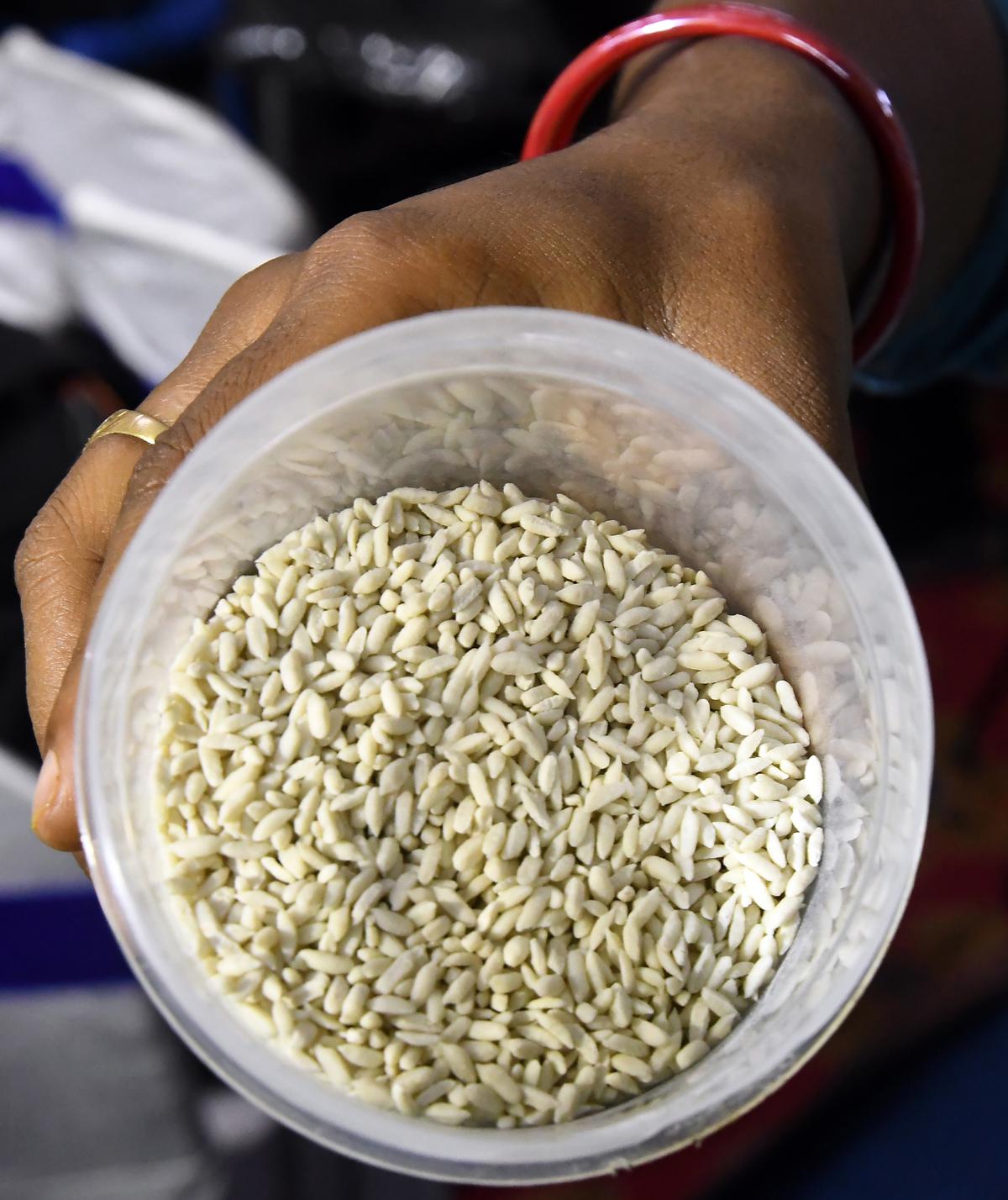
- 21 Oct 2024
Introduction to Rice Fortification
Fortification refers to the process of adding micronutrients, such as vitamins and minerals, to food products that are not naturally present in sufficient amounts. In India, rice fortification has been identified as a cost-effective strategy to address widespread micronutrient deficiencies, particularly iron, folic acid, and vitamin B12. These deficiencies contribute to various health problems such as anemia, stunted growth, and cognitive impairments, particularly among women and children.
Background: India’s Fortified Rice Program
India has one of the highest rates of malnutrition globally, with anemia affecting every second woman and every third child in the country. Rice is a staple food for approximately 65% of India’s population, making it an ideal vehicle for micronutrient fortification. In 2019, the Indian government launched the rice fortification initiative as part of its broader strategy to improve public health and nutrition outcomes.
In July 2024, the Union Cabinet approved the continuation of the fortified rice program under key welfare schemes, including the Pradhan Mantri Garib Kalyan Anna Yojana (PMGKAY). This initiative will run until December 2028, and aims to make fortified rice a common feature of the Public Distribution System (PDS), mid-day meals, and anganwadis, reaching millions of beneficiaries across the country.
Fortification Process and Standards
The fortification of rice involves adding essential micronutrients—iron, folic acid, and vitamin B12—to rice grains. This can be done by either coating the rice with a premix or producing extruded rice kernels that are enriched with nutrients before blending them with regular rice. According to the Food Safety and Standards Authority of India (FSSAI), every kilogram of fortified rice should contain:
- Iron: 28 mg - 42.5 mg
- Folic Acid: 75 - 125 micrograms
- Vitamin B12: 0.75 - 1.25 micrograms
Scientific Safety and Efficacy of Iron Fortified Rice
The safety and effectiveness of iron-fortified rice have been under close scrutiny. Concerns were raised about whether individuals with hemoglobinopathies (such as Thalassemia and Sickle Cell Anemia) might be adversely affected by the added iron. Initially, the packaging of fortified rice carried health advisories for these individuals, but a 2023 scientific review and committee assessment concluded that there were no health risks from iron fortification for such individuals. The iron levels in fortified rice are minimal compared to the levels of iron patients with Thalassemia receive through blood transfusions, and Sickle Cell patients have naturally elevated levels of hepcidin, which limits iron absorption.
Following the review, the advisory was removed in July 2024, aligning with global practices where similar advisories are not required in countries that fortify rice.
Expansion of Fortified Rice Infrastructure
India’s rice fortification program has scaled up rapidly. As of 2024, over 21,000 rice mills have installed blending equipment to produce fortified rice, with a monthly capacity of 223 lakh metric tons (LMT). Additionally, 232 premix suppliers have the capacity to produce 75 LMT annually, significantly surpassing the requirements of the PMGKAY, which mandates the procurement of 5.2 LMT of fortified rice annually.
To ensure quality, NABL-accredited labs conduct rigorous testing on fortified rice products across the country. This infrastructure expansion supports the goal of fortifying rice distributed through welfare schemes and public safety nets.
Global Context: Rice Fortification Worldwide
Fortification of staple foods, including rice, is a globally recognized practice aimed at addressing micronutrient deficiencies in populations with limited access to diverse diets. As of 2024, 18 countries globally are actively involved in rice fortification. The World Health Organization (WHO) has endorsed rice fortification as an effective means to combat iron deficiency anemia, especially in countries like India where rice is a primary dietary staple.
Countries such as the U.S. have been fortifying rice since the late 1950s, and WHO recommends iron fortification where rice constitutes a major part of the diet.
Benefits of Iron Fortification of Rice
- Improved Cognitive Development: Iron is crucial for brain development and cognitive function. Adequate iron intake during early childhood is linked to better cognitive performance, which can improve educational outcomes.
- Enhanced Maternal and Infant Health: Iron deficiency during pregnancy is associated with risks such as maternal anemia and poor fetal development. Fortified rice helps reduce these risks by improving iron intake among pregnant women.
- Reduction in Prevalence of Anemia: Regular consumption of fortified rice has been shown to improve hemoglobin levels in populations suffering from iron deficiency anemia. This has been particularly evident in pilot districts in India, where iron fortification has led to improved health outcomes among both adults and children.
Potential Risks and Challenges
- Bioavailability of Iron: Iron bioavailability refers to the body's ability to absorb and utilize the iron from fortified foods. While iron from rice is absorbed to a lesser extent compared to meat, its fortification still contributes significantly to overall iron intake, especially in populations that consume rice regularly.
- Overload of Iron: Excessive iron intake can lead to iron toxicity, causing oxidative stress, liver damage, and increased risk of infections. Special care must be taken to ensure that individuals with conditions like hemochromatosis or those receiving other forms of iron supplementation do not experience iron overload.
- Technical and Social Barriers: While India has made substantial progress in infrastructure for rice fortification, challenges remain in ensuring the quality, stability, and safety of fortified rice. Moreover, ensuring affordability, accessibility, and acceptance of fortified rice among diverse population groups remains a critical concern.
Future Directions for Rice Fortification
- Nanotechnology for Enhanced Iron Absorption: To improve the bioavailability of iron, exploring the use of nanotechnology could help encapsulate iron particles, enhancing their absorption and effectiveness in the body.
- Biofortification Integration: Combining iron fortification with biofortification—the process of breeding rice varieties with naturally higher iron content—could provide a sustainable solution for long-term micronutrient deficiency.
- Public-Private Partnerships: To scale up rice fortification, there is a need for collaborations between the government, private sector, and non-governmental organizations (NGOs). These partnerships can help improve distribution networks, technology development, and financial sustainability.
- Continuous Monitoring and Evaluation: Rigorous evaluation studies, such as those being conducted by the Indian Council of Medical Research (ICMR) and NITI Aayog, will help assess the effectiveness of the rice fortification program and ensure its continuous improvement.
Conclusion: A Path to Nutritional Security
The fortification of rice in India represents a powerful tool to address the growing problem of micronutrient deficiencies, particularly iron deficiency anemia, which affects millions of people, especially women and children. By ensuring that fortified rice is integrated into government welfare schemes, India can take a significant step toward improving public health and achieving its nutritional goals.
While challenges related to bioavailability, iron overload, and implementation remain, ongoing research, technological innovation, and collaborative efforts can help mitigate these risks. As India continues to expand its rice fortification program, it offers a model for other countries facing similar nutritional challenges, reinforcing the role of fortified foods in achieving global sustainable development goals (SDGs) related to health and nutrition.
Climate Change and Methane Emissions in the Amazon Rainforest
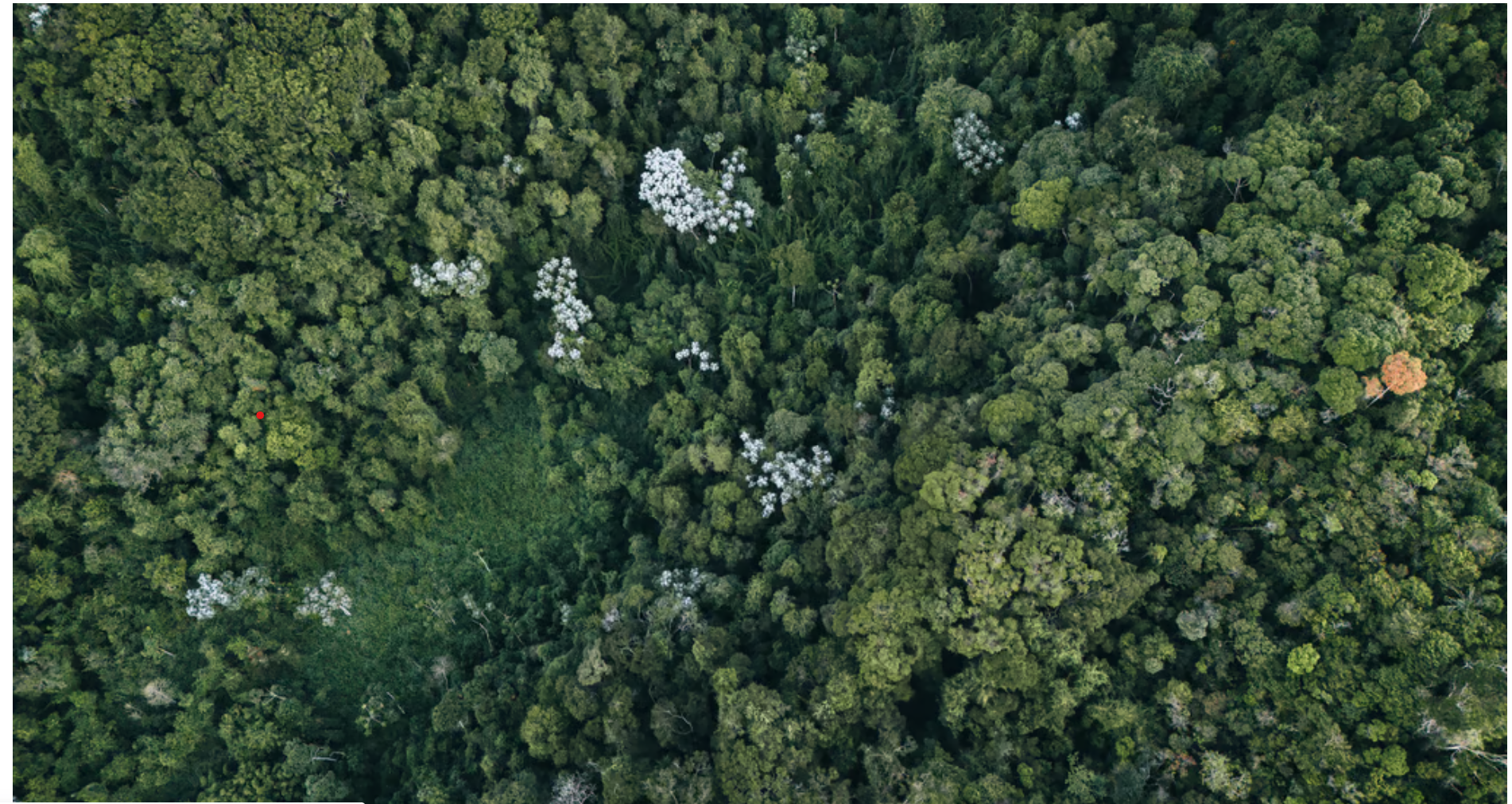
- 16 Oct 2024
Overview
Recent research from the University of São Paulo reveals that climate change is poised to significantly disrupt the methane cycle in the Amazon rainforest, with potential global repercussions. Rising temperatures and increased flooding are impacting microbial activity in both floodplain and upland forest soils, leading to contrasting changes in methane dynamics.
Key Findings
- Methane Uptake Reduction: The study indicates that methane absorption in upland forest soils could decrease by as much as 70% in warmer, drier conditions. This reduction diminishes the forest's role as a methane sink.
- Floodplain Contributions: Floodplains, which cover over 800,000 square kilometers during the rainy season, contribute up to 29% of global wetland methane emissions. Here, methane-producing microbes thrive due to the breakdown of organic matter.
Understanding the Methane Cycle
- Definition: The methane cycle encompasses the processes that control the production, consumption, and release of methane (CH4) in the environment.
- Microbial Roles:
- Methanogens produce methane, primarily in waterlogged conditions.
- Methanotrophs consume methane, living in drier, oxygen-rich soils. These interactions are critical in regulating methane levels in the atmosphere.
- Sources and Sinks: While wetlands and other environments release methane, hydroxyl radicals (OH) in the troposphere act as a natural sink, helping to oxidize methane into carbon dioxide.
Climate Change Impacts on the Methane Cycle
- Imbalance of Sources and Sinks: As global temperatures rise, the release of methane from soils may increase, exacerbating climate change effects.
- Melting Clathrates: Methane clathrates, trapped in cold sediments, are at risk as warming causes them to release methane, further contributing to greenhouse gas concentrations.
Global Consequences of Methane Disruption
- Climate Change Amplifier: Methane is the second most significant greenhouse gas, with a global warming potential 28 times greater than carbon dioxide over a century.
- Air Quality and Health: Increased methane emissions can lead to higher levels of tropospheric ozone, resulting in respiratory health issues and reduced air quality.
- Biodiversity Threats: The changes in methane dynamics can destabilize ecosystems, leading to shifts in species distributions and loss of biodiversity.
Balancing the Methane Cycle
To mitigate the impacts of methane emissions, various strategies can be employed:
- Enhanced Landfill Design: Utilizing gas collection systems to capture methane for energy rather than allowing it to escape.
- Livestock Management: Introducing feed additives to reduce methane emissions from ruminants.
- Sustainable Agricultural Practices: Implementing techniques like alternative wetting and drying in rice cultivation to lower methane output.
- Soil Health Improvements: Promoting organic fertilization and crop rotation to foster aerobic conditions in soils.
Research Insights
The study involved subjecting soil samples from floodplains and upland forests to elevated temperatures and varying humidity levels. Results indicated:
- Stable methane emissions in floodplains alongside an increase in methane-producing microbes.
- A significant decline in methane uptake in upland soils due to temperature sensitivity, with higher temperatures reducing microbial diversity.
Conclusion
The Amazon rainforest plays a crucial role in regulating global methane levels, and its response to climate change is vital for understanding future greenhouse gas emissions. As these ecosystems face increased pressure from rising temperatures and changing hydrological conditions, it becomes imperative to enhance our understanding and management of methane dynamics to mitigate broader climate impacts.
ASEAN SUMMIT
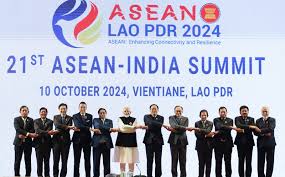
- 11 Oct 2024
In News:
The 21st ASEAN-India Summit took place in Vientiane, Lao PDR, on 10 October 2024. This summit coincided with the 10th anniversary of India’s Act East Policy. Prime Minister Narendra Modi joined ASEAN leaders to assess the progress of the ASEAN-India Comprehensive Strategic Partnership and set the course for future collaboration.
In his address, Prime Minister Modi reaffirmed India's strong support for ASEAN Unity, ASEAN Centrality, and the ASEAN Outlook on the Indo-Pacific. Referring to the 21st century as the “Asian century,” he emphasized the pivotal role of India-ASEAN relations in shaping Asia’s future. He highlighted the success of India’s Act East Policy, noting that in the last decade, trade between India and ASEAN had doubled to over USD 130 billion, with ASEAN becoming one of India’s top trade and investment partners. He also pointed out direct flight connections with seven ASEAN countries, advancements in Fin-tech collaborations, and efforts to restore shared cultural heritage in five ASEAN nations. PM Modi also stressed the importance of completing the review of the ASEAN-India Free Trade Agreement (AITIGA) promptly to unlock greater economic potential. He spoke about the progress made in the India-ASEAN knowledge partnership, particularly through scholarships for ASEAN students at Nalanda University.
In line with the summit’s theme of ‘Enhancing Connectivity and Resilience", PM Modi announced a 10-point plan, which includes:
- Celebrating 2025 as the ASEAN-India Year of Tourism, with USD 5 million allocated for joint initiatives.
- Marking a decade of the Act East Policy through people-centric activities like a Youth Summit, Start-up Festival, Hackathon, Music Festival, ASEAN-India Network of Think Tanks, and Delhi Dialogue.
- Organizing an ASEAN-India Women Scientists Conclave under the ASEAN-India Science and Technology Development Fund.
- Doubling scholarships at Nalanda University and offering new scholarships for ASEAN students at Indian agricultural universities.
- Reviewing the ASEAN-India Trade in Goods Agreement by 2025.
- Enhancing disaster resilience, with India contributing USD 5 million.
- Initiating a new Health Ministers’ track for building health resilience.
- Establishing a regular ASEAN-India Cyber Policy Dialogue to strengthen digital and cyber resilience.
- Hosting a workshop on Green Hydrogen.
- Inviting ASEAN leaders to join the ‘Plant a Tree for Mother’ campaign to promote climate resilience.
During the summit, leaders agreed to develop a new ASEAN-India Plan of Action (2026-2030) to guide future cooperation and adopted two joint statements:
- Joint Statement on Strengthening ASEAN-India Comprehensive Strategic Partnership for Peace, Stability, and Prosperity in the Indo-Pacific, highlighting the role of India’s Act East Policy in advancing the ASEAN-India relationship.
- ASEAN-India Joint Statement on Advancing Digital Transformation, recognizing India’s leadership in digital transformation and embracing a partnership in digital public infrastructure.
Prime Minister Modi expressed his gratitude to the Prime Minister of Laos for successfully hosting the summit and to Singapore for its role as Country Coordinator over the past three years. He looked forward to working with the Philippines, the new Country Coordinator for India.
ABOUT Association of Southeast Asian Nations (ASEAN)
- ASEAN is a political and economic organization focused on fostering economic growth and regional stability among its member countries.
- The member states include Brunei, Cambodia, Indonesia, Laos, Malaysia, Myanmar, the Philippines, Singapore, Thailand, and Vietnam.
- ASEAN was founded in 1967 in Bangkok, Thailand, with the signing of the ASEAN Declaration (Bangkok Declaration) by its original members: Indonesia, Malaysia, the Philippines, Singapore, and Thailand. Brunei Darussalam joined in 1984, followed by Vietnam in 1995, Lao PDR and Myanmar in 1997, and Cambodia in 1999.
ASEAN Summit:
- This is ASEAN’s highest decision-making body, consisting of the heads of state or government of member nations. The summit is held twice a year.
- The first ASEAN Summit took place in 1976 in Bali, Indonesia.
TRIPURA'S INSURGENCY RESOLUTION: A LANDMARK DECLARATION
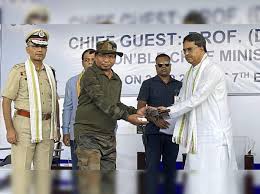
- 25 Sep 2024
In News:
Recent Developments
Insurgency-Free Declaration
Tripura Chief Minister Manik Saha has officially declared the state "insurgency-free" following a significant surrender ceremony where 584 militants from the National Liberation Front of Tripura (NLFT) and the All-Tripura Tiger Force (ATTF) laid down their arms.
Memorandum of Settlement
This milestone follows a Memorandum of Settlement signed on September 4 between the central government and various insurgent groups, witnessed by the union home minister. The Tripura government has successfully facilitated 12 peace accords over the last decade, leading to over 10,000 insurgents surrendering.
Understanding Insurgency in Tripura
Historical Context
Tribal Composition
Tripura is home to 19 indigenous tribes, including the Tripra, Reang, and Jamatia, with Kok Borok as the primary language alongside other Tibeto-Burmese dialects.
Journey to Statehood
- Accession: Tripura became part of the Indian Union on October 15, 1949.
- Union Territory: It was designated as a Union Territory on November 1, 1956.
- Statehood: Tripura attained full statehood on January 21, 1972.
Causes of Insurgency
- Demographic Changes: A significant influx of Bengali refugees from East Pakistan resulted in the indigenous population declining from 95% in 1931 to 31% by 1991.
- Tribal Discontent: The tribal population lost control over land and resources, leading to widespread grievances.
- Socio-Economic Factors: Issues such as geographic isolation, socio-economic challenges, corruption, and tribal land alienation fueled unrest.
Evolution of Political Movements and Insurgency
Formation of Political Organizations
- TUJS: Established in 1967 to advocate for tribal rights and autonomy.
- Armed Struggle: The Tripura Sena emerged in 1970, followed by the Tripura National Volunteers (TNV) in 1978, both pushing for an independent tribal state.
Rise of Insurgent Groups
Key groups involved include:
- TUJS: Formed in 1971.
- TNV: Established in 1981.
- NLFT: Founded in 1989.
- ATTF: Formed in 1990.
Communal Clashes and Military Response
- Opposition from Bengali Population: Groups like Amra Bangali emerged in opposition to tribal demands, leading to violent clashes with over 1,800 fatalities.
- Military Intervention: The Indian Army was deployed in 1980 to restore order.
Attempts at Peace and Resurgence of Militancy
TNV Settlement
The TNV signed a peace agreement with the state government in 1988, focusing on restoring tribal lands. However, issues with implementation led to the rise of new militant groups.
Resurgence of Insurgency
Between 1996 and 2004, insurgency gained traction, supported by logistics from Bangladesh and external networks, leveraging the region's challenging geography.
Strategic Response to Insurgency
- Counter-Insurgency Operations
- The state focused on effective counter-insurgency operations involving local police and paramilitary forces, minimizing the need for military deployment.
- Psychological Operations
- Efforts were made to shift perceptions among tribal communities, exposing the exploitative nature of insurgents.
- Confidence-Building Measures
- Rehabilitation packages and public appeals by state leaders encouraged insurgents to reintegrate into society.
- Civic and Developmental Initiatives
- Comprehensive development initiatives were implemented, enhancing healthcare, connectivity, and job opportunities, alongside civic action programs by security forces.
- Political and Governance Reforms
- Strengthening local governance through autonomous councils and encouraging tribal participation aimed to foster a more inclusive development process.
Conclusion
Tripura's journey to overcome insurgency highlights the effectiveness of a multi-faceted approach, combining socio-economic development with strategic military and political initiatives. The state's experience illustrates that insurgency can be addressed through sincere leadership and a balanced focus on military and socio-economic challenges.
INDIA'S STRATEGIC PUSH FOR A DOMESTIC SEMICONDUCTOR ECOSYSTEM
- 24 Sep 2024
Introduction
India is actively pursuing the establishment of a domestic semiconductor ecosystem to lessen dependence on imports and tackle global supply chain vulnerabilities. This initiative, launched under the Semiconductor Mission in 2021 with a USD 10 billion investment, is vital for national security, particularly in defense and telecommunications.
Current Status of the Semiconductor Industry in India
Market Overview
- 2022 Market Size: USD 26.3 billion
- Projected Growth: Expected to reach USD 271.9 billion by 2032, with a CAGR of 26.3%.
Import-Export Dynamics
- Imports: USD 5.36 billion in 2021; efforts are underway to reduce this reliance.
- Exports: USD 0.52 billion in 2022, marking the highest level to date.
Government Initiatives
- India Semiconductor Mission (ISM): Part of the Digital India Corporation, focused on developing a strong semiconductor ecosystem.
- Financial Support: Covers 50% of project costs for semiconductor and display manufacturing facilities.
- Semicon India Programme: Launched in December 2021 with ?76,000 crore (around USD 9.2 billion) dedicated to semiconductor manufacturing.
- FY24 Budget Increase: Allocated ?6,903 crore (approximately USD 833.7 million) for further development.
International Collaborations
- MoU with the European Commission: Aims to enhance semiconductor ecosystems.
- MoC with Japan: Focused on improving supply chain resilience in the semiconductor sector.
Importance of Semiconductors for India
Economic Growth and Industrial Development
- Semiconductors are crucial for enhancing India's electronics manufacturing, targeting a notable share of the projected USD 1 trillion global semiconductor market by 2030.
- The Semiconductor Mission is projected to generate 35,000 direct jobs and 100,000 indirect jobs, potentially raising electronics manufacturing to USD 300 billion by 2026.
National Security and Strategic Autonomy
- Essential for defense and telecommunications, semiconductors ensure reliable supplies for critical defense systems and secure communication networks.
Technological Self-Reliance and Innovation
- With around 65-70% of electronic components currently imported, primarily from China, initiatives aim to foster domestic innovation and reduce this reliance.
Global Supply Chain Integration
- The objective is to position India as a key player in the global electronics supply chain, increasing its current 3% share of the global electronics manufacturing value.
Job Creation and Skill Development
- The semiconductor industry is anticipated to drive job creation and skill development, enhancing STEM education and research in advanced technologies.
Challenges Facing India's Semiconductor Aspirations
Infrastructure Issues
- India faces significant infrastructure challenges, including unreliable power supply and water shortages that impact semiconductor production.
Talent Shortage
- There is a projected need for 250,000 to 300,000 skilled professionals in semiconductor fields by 2027.
High Manufacturing Costs
- Semiconductor manufacturing is capital-intensive, and operational costs in India are generally higher compared to established hubs like Taiwan and South Korea.
Global Supply Chain Vulnerabilities
- Global supply chain disruptions, exacerbated by events such as the Russia-Ukraine conflict, present risks to India's semiconductor goals.
Environmental Challenges
- The energy-intensive nature of semiconductor manufacturing raises concerns about its environmental impact, particularly regarding greenhouse gas emissions.
Competition from Other Emerging Markets
- India faces competition from countries like Vietnam and Malaysia, which are successfully attracting semiconductor investments with favorable conditions and incentives.
Strategies for Advancing India's Semiconductor Vision
Enhance Education and Training
- Expand semiconductor engineering programs and collaborate with global companies to develop relevant curricula and hands-on training.
Develop Domestic Chip Design Capabilities
- Invest in chip design by establishing dedicated centers in technology hubs to encourage innovation.
Build a Comprehensive Supply Chain
- Create a robust domestic supply chain by attracting investments across all segments, from raw materials to advanced packaging.
Establish a Sovereign Semiconductor Fund
- Launch a dedicated fund for semiconductor projects to provide long-term investment and reduce reliance on foreign funding.
Implement a "Chip Diplomacy" Approach
- Use India's geopolitical position to negotiate technology transfers and partnerships with leading semiconductor nations.
Launch a "Green Semiconductor" Initiative
- Aim to become a leader in sustainable semiconductor manufacturing by minimizing environmental impacts.
Create a National Semiconductor Commons
- Establish shared infrastructure for research and prototyping to lower barriers for startups and promote innovation.
Conclusion
To fulfill its semiconductor aspirations, India must enhance education and training, develop a strong supply chain, and foster strategic collaborations. By addressing infrastructure challenges and skill gaps while promoting sustainable practices, India can secure its position as a significant player in the global semiconductor industry and strive for technological self-reliance.
ANALYSIS OF INDIA'S TRADE DEFICIT
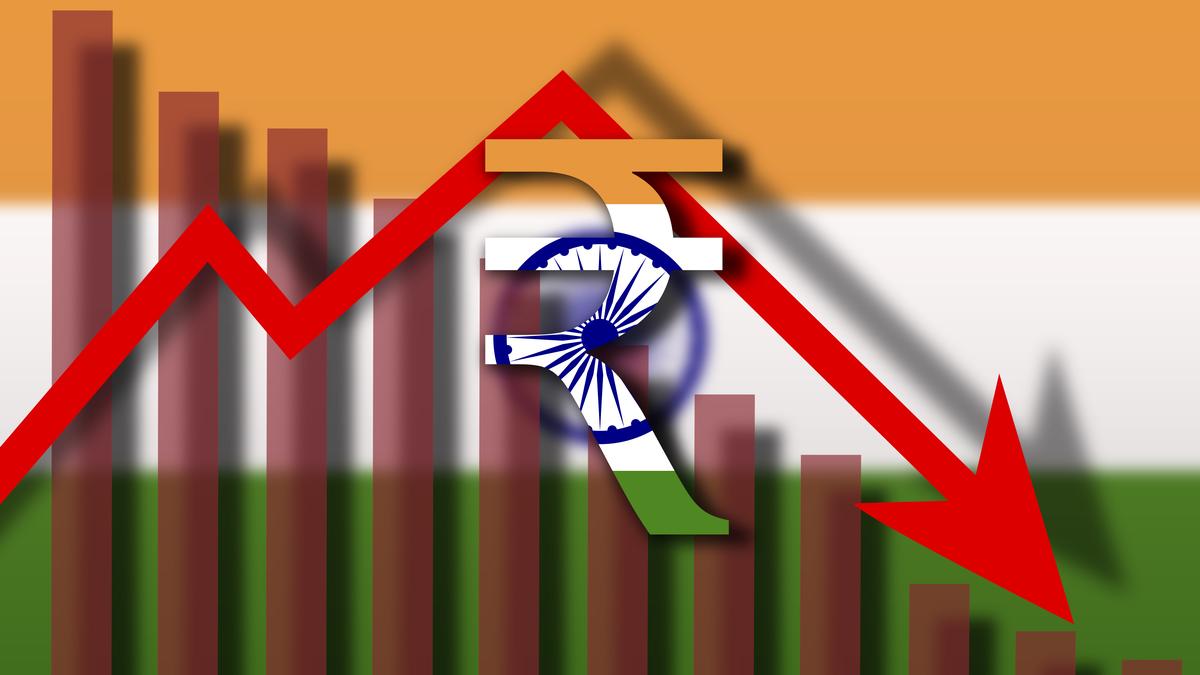
- 23 Sep 2024
Overview of the Trade Deficit
India experienced a notable increase in its trade deficit during July and August 2024, primarily due to declining exports and rising imports. This trend is indicative of both domestic challenges and global economic conditions.
Understanding Trade Deficit
A trade deficit occurs when a country's imports surpass its exports, leading to a negative trade balance. While not inherently detrimental, sustained trade deficits can result in issues such as currency depreciation, rising national debt, and pressure on local industries.
Factors Influencing India's Trade Deficit
Several key elements have contributed to the widening of India’s trade deficit in recent months:
- Decline in Exports
- Oil Exports: A sharp decline was observed in petroleum exports, which dropped by 22.2% in July and 37.6% in August, influenced by both weakened global demand and falling oil prices.
- Gems & Jewellery: This sector saw a reduction exceeding 20% in exports during both months, adversely affecting overall trade performance.
- Pharmaceuticals and Electronics: These sectors also faced slower growth due to ongoing weak global demand.
- China's Economic Slowdown
- Exports to China, particularly in materials such as stone and iron ore, diminished as China grappled with internal economic challenges and reduced infrastructure spending, negatively impacting India's export revenue.
- Surge in Gold Imports
- August saw a record $10.1 billion in gold imports, more than doubling previous figures. This increase was driven by lowered import duties and heightened domestic demand for the festive season, significantly contributing to the trade deficit.
- Decline in Oil Imports
- On a more positive note, India’s oil import bill decreased by nearly a third due to falling global oil prices, marking the lowest petroleum trade deficit in three years. However, this reduction did not sufficiently counterbalance deficits in other areas.
Implications of the Trade Deficit
- Currency Depreciation: A growing trade deficit may exert downward pressure on the Indian rupee, making imports costlier and potentially worsening the deficit further, given India's heavy reliance on imported commodities.
- Impact on Economic Growth: Prolonged trade deficits can hinder economic growth by reflecting diminished export competitiveness and excessive reliance on imports.
- Foreign Exchange Reserves: While India’s foreign exchange reserves are currently robust, a sustained deficit could deplete these reserves, complicating efforts to stabilize the rupee in the future.
Long-term Challenges and Outlook
India's trade deficit is shaped by a mixture of global and domestic influences:
- Weak Global Demand: Economic sluggishness in developed markets, such as the U.S. and EU, reduces demand for Indian exports, particularly in pharmaceuticals and textiles.
- China’s Economic Issues: As China seeks to offload surplus goods, India may face increased competition from cheaper imports, which could challenge domestic industries.
- Trade Barriers and Regulations: New international trade policies, particularly in the EU regarding environmental standards, impose additional compliance burdens on Indian exporters.
Conclusion and Strategic Recommendations
While India's escalating trade deficit poses challenges, it is not an insurmountable issue. Policymakers need to adopt strategic measures to tackle underlying structural problems:
- Boosting Exports: Enhancing the competitiveness of export sectors through technological investment and market expansion is vital. Strengthening trade agreements can also improve market access.
- Reducing Non-essential Imports: Minimizing reliance on luxury imports, particularly gold, while promoting domestic manufacturing can help in balancing the trade deficit.
- Developing Domestic Industries: Fostering growth in sectors such as electronics and renewable energy will not only reduce import dependence but also enhance export capacity.
- Managing Currency and Debt: Careful management of the rupee's valuation and maintaining adequate foreign exchange reserves are crucial in mitigating trade deficit impacts.
Achieving the ambitious goal of $1 trillion in exports for both goods and services by 2030 is attainable but requires overcoming current global economic hurdles, adapting to new trade regulations, and building a self-sufficient economy. By strategically addressing these challenges, India can work toward reducing its trade deficit while maintaining economic growth.
INTEGRATED DEVELOPMENT OF WILDLIFE HABITATS (IDWH) SCHEME
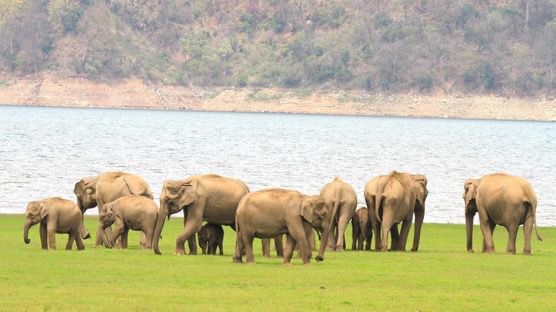
- 22 Sep 2024
In News:
The Union Cabinet has approved the continuation of the Integrated Development of Wildlife Habitats (IDWH) scheme for the 15th Finance Commission cycle, with a total outlay of ?2,602.98 crore. This scheme aims to enhance the conservation of wildlife and their habitats across India, building upon the earlier "Assistance for the Development of National Parks and Sanctuaries."
Overview of the Integrated Development of Wildlife Habitats (IDWH)
IDWH is a Centrally Sponsored Scheme designed to support various components critical to wildlife conservation. Key aspects of the scheme include:
- Support to Protected Areas: This encompasses national parks, wildlife sanctuaries, conservation reserves, and community reserves.
- Protection of Wildlife Outside Protected Areas: This aims to safeguard wildlife habitats and corridors beyond designated reserves.
- Recovery Programs: These initiatives focus on critically endangered species and their habitats.
Key Projects Under IDWH
The scheme integrates several prominent conservation projects:
- Project Tiger: Launched in 1973, this initiative seeks to ensure a viable population of Bengal tigers in their natural habitats. It employs advanced technologies such as the M-STrIPES application for effective management and monitoring.
- Project Elephant: Initiated in 1992, this project focuses on elephant conservation, addressing human-elephant conflicts, and promoting the welfare of domesticated elephants.
- Development of Wildlife Habitat: This includes Project Dolphin, which utilizes technology like Remotely Operated Vehicles (ROVs) for monitoring dolphin populations, and Project Lion, aimed at strengthening lion conservation efforts in line with the “Lion @ 2047” vision.
Significance of the Scheme
The IDWH scheme promises significant ecological and economic benefits:
- It is projected to generate over 50 lakh man-days of direct employment, alongside indirect job opportunities through eco-tourism and related activities.
- A total of 55 tiger reserves, 33 elephant reserves, and 718 protected areas will benefit from the scheme, enhancing biodiversity and ecosystem health.
- By supporting keystone species such as tigers, elephants, cheetahs, snow leopards, and lions, the scheme contributes to the overall integrity of these ecosystems.
The overall outlay for the three components for the 15th Finance Commission cycle as well as its remaining period:
S.No. Name of the Scheme Central Share State Share Total
1. Project Tiger 1575.00 955.00 2530.00
2. Project Elephant 182.58 54.00 236.58
3. Development of Wildlife Habitat 845.4 273.02 1118.42
*All figures in Rs. Crores Total 2602.98 1282.02 3885.00
Component of EFC 2024-25 2025-26
Project Tiger 365.00 365.00
Project Elephant 40.00 40.12
Development of Wildlife Habitat 195.00 183.16
*All figures in Rs. Crores Total 600 588.28
SRI LANKA’S PRESIDENTIAL ELECTIONS: IMPORTANCE AND IMPLICATIONS FOR INDIA
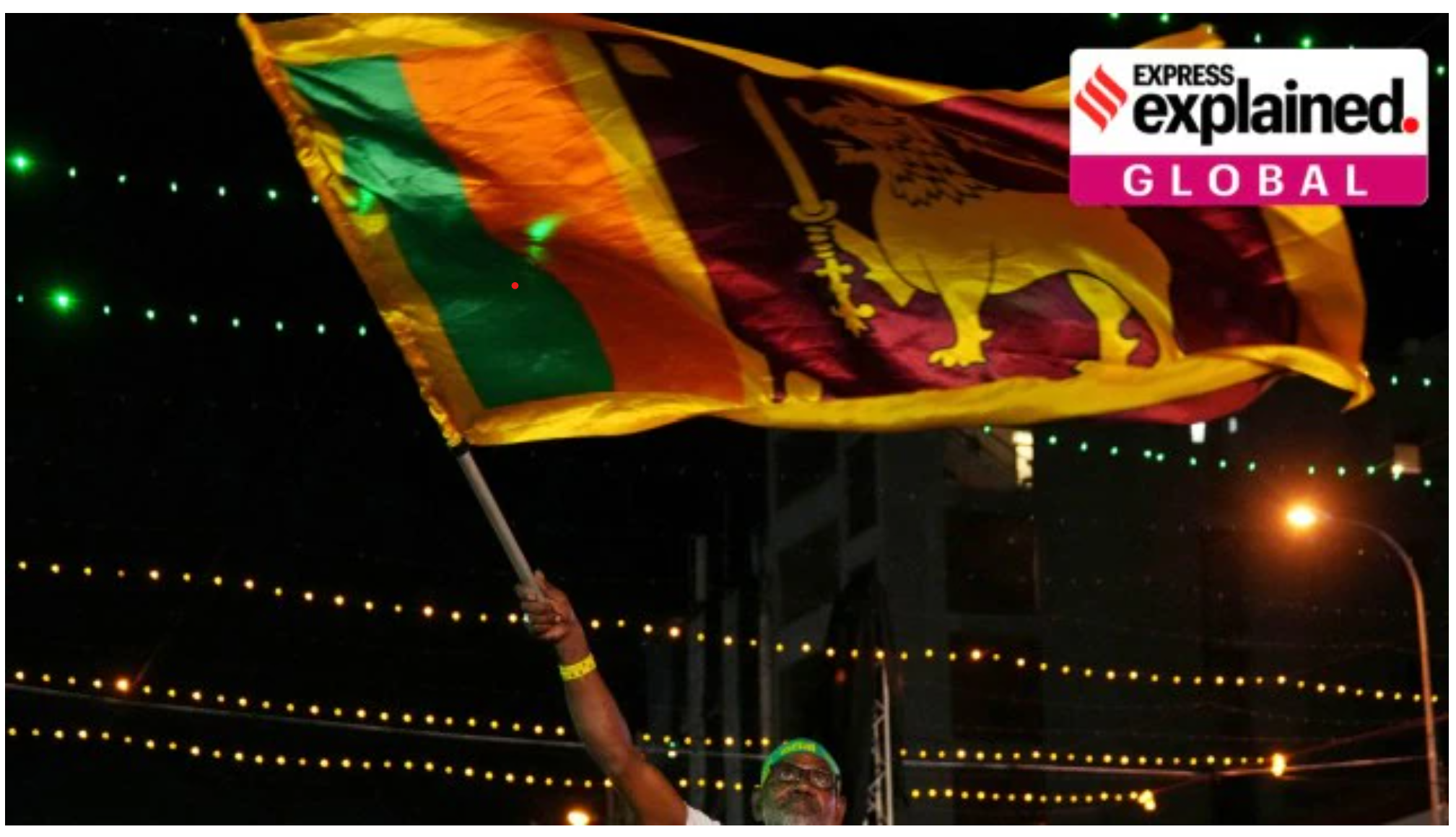
- 21 Sep 2024
Overview of the Elections
Sri Lanka is gearing up for its first presidential election since the significant protests of 2022 and an unprecedented economic crisis. Scheduled for September 21, the election comes at a critical juncture for the nation, following the ousting of the Rajapaksa regime.
Context of the Crisis
The protests were ignited by severe economic difficulties, including inflation soaring to 70% and shortages of essential goods like food, fuel, and medicine. While some improvements have been noted, a full recovery remains elusive, with economic concerns at the forefront of voters' minds.
Electoral Landscape
Voting System
- Candidates: 38 candidates are contesting, all men.
- Voting Process: Each of the 17 million eligible voters can select up to three candidates. A candidate needs over 50% of the votes to win outright; otherwise, a run-off will occur between the top two contenders.
India's Strategic Interests
Concerns over Regional Influence
India is closely monitoring the elections due to strategic interests, particularly in countering China's expanding influence in Sri Lanka. The previous administrations have leaned towards China, which has raised concerns in New Delhi.
Key Candidate Positions
- Sajith Premadasa: Historically skeptical of China; supports the implementation of the 13th Amendment for provincial power devolution, aligning with Indian interests.
- Anura Kumara Dissanayake: Has a pro-China background and has criticized Indian business interests in Sri Lanka, raising potential tensions with India.
Economic Recovery and Voter Sentiment
Current Economic Situation
Post-crisis, the economy has shown signs of stabilization, with no food or fuel shortages and reduced inflation. However, many Sri Lankans continue to struggle financially, feeling the impact of increased taxes and electricity rates mandated by the IMF bailout conditions.
Voter Priorities
The election marks a shift in voter focus, with economic recovery taking precedence over traditional ethnic or religious considerations. Skepticism about political promises is high, as citizens recall previous failures to deliver on reforms.
Conclusion: The Path Ahead
As Sri Lanka heads into this pivotal election, the outcome will be crucial for both the nation and its international relations, particularly with India. The next president's ability to navigate economic recovery and regional dynamics will significantly influence Sri Lanka's trajectory.
Can Sheikh Hasina be Extradited?

- 19 Sep 2024
In News:
The chief prosecutor of Bangladesh’s International Crimes Tribunal (ICT), Mohammad Tajul Islam, announced plans to seek the extradition of former Prime Minister Sheikh Hasina from India. The ICT was established in 2010 to investigate crimes committed during the 1971 independence war from Pakistan.
Background on Sheikh Hasina's Exile
Ms. Hasina sought refuge in India in early August after a mass uprising forced her to resign. Following her departure, numerous criminal cases have been filed against her and her aides, with charges including murder, torture, abduction, crimes against humanity, and genocide. The interim government in Dhaka has revoked her diplomatic passport, and the existing bilateral extradition treaty between India and Bangladesh may allow for her return to face trial.
Extradition Treaty Overview
Key Provisions
- Under the International Crimes (Tribunals) Act of 1973, Bangladeshi courts can proceed with trials in Ms. Hasina’s absence, raising concerns about the fairness and adherence to due process. Thus, her extradition is deemed crucial.
- The extradition treaty between India and Bangladesh was executed in 2013 and amended in 2016 to facilitate the exchange of fugitives. The treaty has allowed the transfer of several political prisoners, including two involved in the 1975 assassination of Sheikh Mujibur Rahman, Ms. Hasina’s father, and Anup Chetia, the former general secretary of the banned United Liberation Front of Assam (ULFA).
Extradition Conditions
- The treaty mandates the extradition of individuals charged with crimes punishable by at least one year’s imprisonment. It follows the principle of dual criminality, meaning the offense must be punishable in both countries. Since the charges against Ms. Hasina are prosecutable in India, she qualifies for extradition. The treaty also covers attempts to commit crimes and complicity in such offenses.
- The 2016 amendment significantly lowered the evidentiary threshold for extradition, requiring only an arrest warrant from a competent court in the requesting country to initiate proceedings.
Grounds for Refusal of Extradition
Political Nature of Offenses
Article 6 of the treaty allows for extradition to be refused if the offense is deemed of a “political nature.” However, many offenses, including murder and terrorism-related crimes, are explicitly excluded from this classification. Given that several charges against Ms. Hasina fall outside this exemption, it is unlikely India could justify denying extradition on these grounds.
Good Faith Clause
Article 8 permits denial of extradition requests if the accusations are not made in good faith or involve military offenses not recognized under general criminal law. India could argue that the charges against Ms. Hasina are politically motivated and may lead to her facing unfair trials or persecution upon her return. Recent reports indicate that some of Ms. Hasina’s former ministers faced violent arrests, raising further concerns about the political climate in Bangladesh.
Potential Implications of Extradition Request
Dr. Sreeradha Datta, a professor of international relations at O.P. Jindal Global University, commented that the treaty does not guarantee Ms. Hasina’s extradition, emphasizing that the final decision will depend on diplomatic negotiations and political factors. Even if India declines the request, it may only serve as a minor political irritant rather than significantly damaging bilateral relations.
Economic Considerations
Bangladesh is India’s largest trade partner in South Asia, with bilateral trade estimated at $15.9 billion for the fiscal year 2022-23. Before Ms. Hasina’s ouster, both countries were set to discuss a comprehensive economic partnership agreement (CEPA) to strengthen economic ties. Following the regime change in Dhaka, Indian Prime Minister Narendra Modi has engaged with Chief Adviser Muhammad Yunus of the interim government, pledging continued support for ongoing development projects.
Financing Sustainable Agriculture: Insights from the RBI
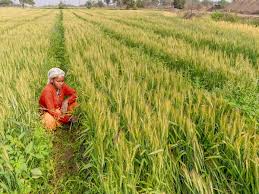
- 18 Sep 2024
Context
At the International Research Conference, the Deputy Governor of the Reserve Bank of India (RBI) addressed the crucial topic of financing sustainable agriculture, emphasizing the need for effective solutions.
What is Sustainable Agriculture?
Sustainable agriculture involves farming practices that meet current food demands while conserving resources for future generations. This approach aims to:
- Protect the environment
- Reduce reliance on chemical inputs
- Efficiently use water and land
The goal is to balance productivity, environmental health, and socio-economic equity.
Benefits of Sustainable Agriculture
- Environmental Conservation: Promotes biodiversity, reduces soil degradation, and conserves water.
- Economic Stability: Lowers dependence on costly chemical inputs, improving farmers’ profitability.
- Improved Food Security: Enhances soil health and crop diversity, ensuring resilience against climate change.
- Social Equity: Farmer Producer Organizations (FPOs) empower small and marginal farmers by providing access to technology, markets, and financial resources, enhancing their bargaining power.
Challenges Facing Sustainable Agriculture
- Low Productivity: Small, fragmented landholdings hinder investment in sustainable practices and mechanization.
- Dependence on Rainfall: Approximately 60% of Indian agriculture is rain-fed, making farmers vulnerable to climate variability.
- Price Volatility: Fluctuating prices force farmers to sell at low prices during peak harvests, while limited processing capacity leads to post-harvest losses.
- Access to Finance: Small farmers struggle to obtain credit, as the formal banking system often favors larger agribusinesses.
Initiatives for Sustainable Agriculture
- Farmer Producer Organizations (FPOs): Over 24,000 FPOs formed by March 2023 enhance farmers’ access to resources and markets.
- Warehouse Receipt Financing: This model allows farmers to store produce and sell when prices are favorable, stabilizing commodity prices.
- Priority Sector Lending (PSL): RBI regulations enable loans up to ?2 crore for agricultural activities, with higher limits for FPOs involved in assured marketing.
- Climate-Smart Agriculture (CSA): India is adopting practices such as drought-resistant crops and advanced water management.
- Technology Integration and Mechanization: Initiatives like the “Per Drop More Crop” scheme promote efficient water use, while Custom Hiring Centres (CHCs) enhance mechanization, reducing labor costs.
How do emergency provisions impact Centre-State relations?
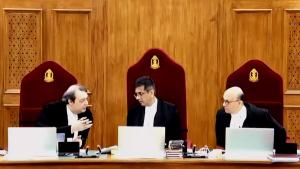
- 17 Sep 2024
In News:
The recent spate of renewed violence in Manipur has once again triggered the discussion around Centre-State relations and the use of emergency provisions by the Centre.
What is our federal set-up?
India is a federation with governments at the Centre and the States. The Seventh Schedule to the Indian Constitution distributes the power between the Union and States. Under this scheme, it is the domain of the State governments to maintain law and order in their respective States.
What are emergency provisions?
The emergency provisions are provided in Part XVIII of the Constitution. Articles 355 and 356 deal primarily with the affairs of government in a State under this part.
Article 355 imposes a duty on the Centre to protect every State from external aggression and internal disturbance. It also specifies that the Centre should ensure that every State government operate according to the Constitution.
Article 356 allows for the imposition of the President’s rule if a State’s government cannot function in accordance with constitutional provisions. While in the U.S. and Australia, federal government functions also involve protecting States, their constitutions do not contain provisions for removing State governments.
B.R. Ambedkar explained the purpose of Article 355, keeping in mind the federal character of our polity, that if the Centre is to interfere in the State’s administration under Article 356, it must be by or under some obligation which the Constitution imposes on the Centre. Hence, Article 355 was incorporated to check any arbitrary or unauthorised use of Article 356.
What have the courts ruled?
Dr. Ambedkar again in the constituent Assembly wished that Articles 355 and 356 would never be called into operation and would remain a dead letter. However, it was a travesty of the Constitutional principles and federalism that Article 356 was misused on several occasions removing elected governments that enjoyed majority in the States. Reasons varied from loss in Lok Sabha elections to deterioration of law and order in the States. It was only after the Supreme Court’s categorical judgement in the S R Bommai case (1994) that such misuse was restricted. The court held that Article 356 should be imposed only in the event of a breakdown of constitutional machinery, as distinguished from an ordinary breakdown of law and order. It also held that the imposition of the President’s rule is subject to judicial review and should not be misused for political reasons.
On the other hand, the scope of Article 355 has been widened by various Supreme Court rulings. In State of Rajasthan Vs Union of India (1977), the court had a narrow interpretation of Article 355 as justifying the employment of Article 356. However, in subsequent cases such as Naga People’s Movement of Human Rights Vs Union of India (1998), Sarbananda Sonowal Vs Union of India (2005), and H.S.Jain Vs Union of India (1997), the legal position with respect to Article 355 has shifted. The scope of actions under this article has been widened to permit all statutorily and constitutionally available actions by the Union to discharge its duties of protecting the State and ensuring that its governance is in accordance with the Constitution.
What are the suggestions?
The Sarkaria Commission on Centre-State Relations (1987), the National Commission to Review the Working of the Constitution (2002), and the Punchhi Commission on Centre-State Relations (2010) have all opined that Article 355 not only imposes a duty on the Union but also grants it the power to take necessary actions for the effective performance of that duty. Imposition of the President’s rule under Article 356 must be used as a last resort in situations of utmost gravity and urgency.
The situation in Manipur is grave. Large-scale violence against innocent civilians, women and children; looting of ammunition from police armoury; drone and missile attacks targeting civilians cannot be viewed as just an ordinary breakdown of law and order. Constitutional as well as political expediency, considering that the same party is in power at the Centre and the State, has resulted in Article 356 not being invoked. However, under Article 355, all possible instructions and actions should continue to be pursued to restore normalcy at the earliest.
Preventive Detention
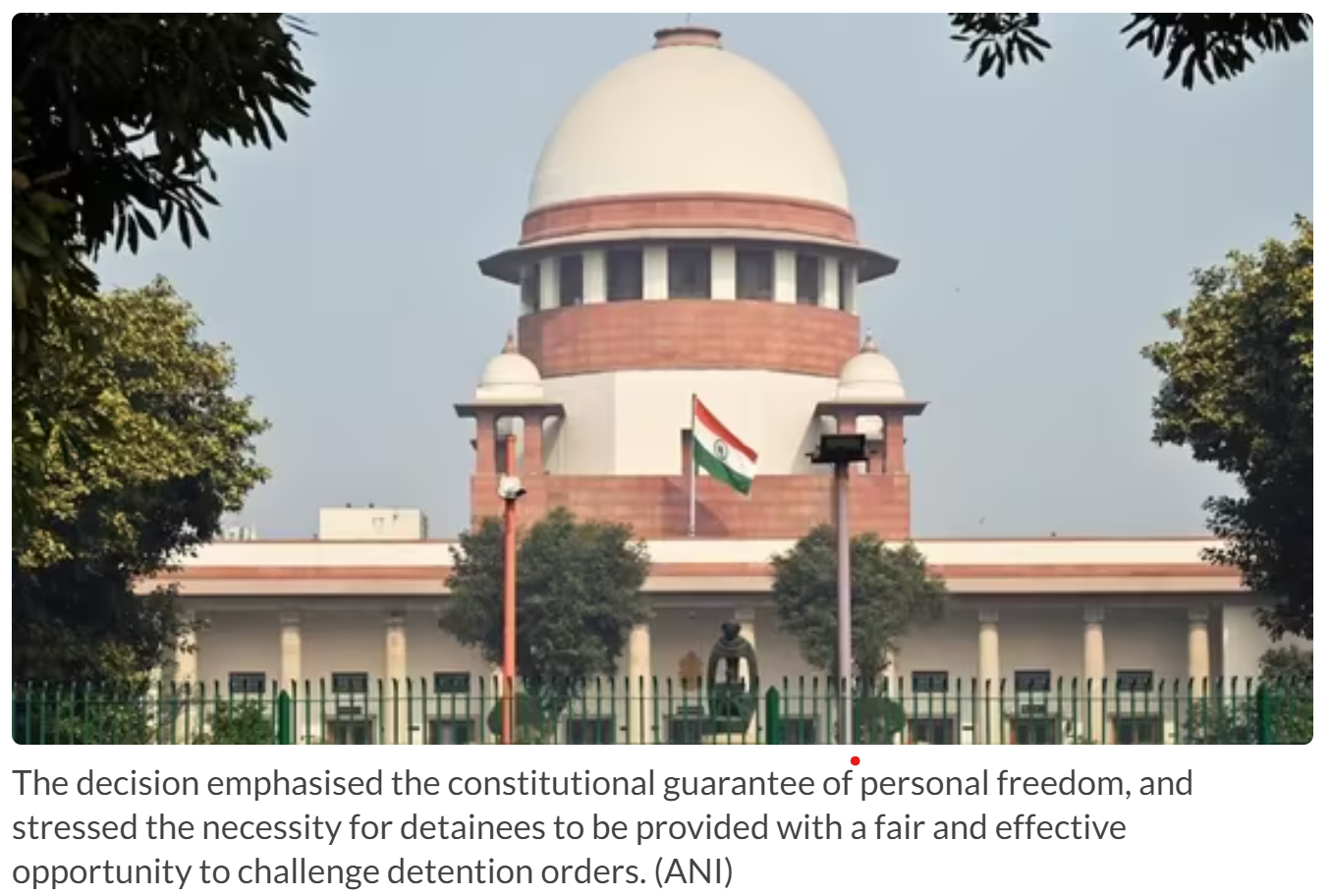
- 16 Sep 2024
In News:
The recent Supreme Court ruling in Jaseela Shaji vs. Union of India (2024) introduces new standards for preventive detention in India, aiming to strengthen safeguards for individual liberty.
Key Aspects of the Ruling
- Strict Standards for Preventive Detention:
- The Court emphasized the need for authorities to furnish all essential materials relied upon in detention orders to the detainee.
- This includes providing documents in a language the detainee understands to ensure fair representation.
- Constitutional Guarantees:
- The ruling reinforced the constitutional right to personal liberty and the need for a fair process in preventive detention cases, as guaranteed under Article 22(5) of the Constitution.
- The Court asserted that individual freedom is paramount and cannot be curtailed without adherence to due process.
- Importance of Timely Representation:
- The Court criticized the significant delays in handling and deciding the detainee's representation.
- Authorities are mandated to act with “utmost expedition” in processing and deciding representations related to personal liberty.
- Case-Specific Findings:
- In the case of Appisseril Kochu Mohammed Shaji, the Court found that critical documents and witness statements were not provided to him, nor were translations of important documents made available in his native language, Malayalam.
- The delay in handling Shaji’s representation was deemed “callous and casual,” impacting his right to challenge his detention effectively.
- Criticism of Procedural Lapses:
- The Court overturned the Kerala High Court's decision, finding that procedural lapses, including the failure to provide key documents and delays in processing representations, violated Shaji’s constitutional rights.
- The Supreme Court highlighted the necessity for detaining authorities to avoid arbitrary actions and ensure the detainee’s rights are respected throughout the process.
Implications
This ruling has significant implications for preventive detention practices:
- Enhanced Accountability: Authorities must now ensure meticulous compliance with procedural requirements to avoid legal challenges.
- Stronger Protections for Detainees: The ruling reinforces the need for transparency and fairness in the detention process, potentially impacting future cases involving preventive detention.
- Administrative Efficiency: The Court’s focus on prompt processing of representations underscores the need for administrative efficiency and accountability in handling such matters.
What is Preventive detention?
- Preventive detention refers to the detention of an individual without a trial or conviction by a court. The primary objective of preventive detention is not to punish an individual for a past offence but to prevent them from committing an offence in the future.
- Preventive detention laws are enacted by governments to ensure public safety and maintain social order.
- The detention of an individual under preventive detention cannot exceed three months, as specified by the Indian Constitution's Article 22. However, if an advisory board reports sufficient cause for extended detention, the detention can be extended. The advisory board is an independent body that reviews the case and provides its opinion on whether the detention is necessary.
- Article 22 of the Indian Constitution grants protection to individuals who are arrested or detained. It has two parts—
- The first part deals with cases of ordinary law, which includes situations where an individual is detained as part of a criminal investigation.
- The second part deals with cases of preventive detention law, which pertains to the detention of individuals without a trial or conviction.
Two types of detentions
There are two types of detentions: preventive detention and punitive detention.
- Preventive detention is when someone is held in police custody based on a suspicion that they might commit a crime. The police can make arrests without a warrant in certain cases.
- Punitive detention is when someone is detained as punishment for committing a criminal offence. This type of detention occurs after the offence has been committed or attempted
Preventive Detention Laws in India
- Maintenance of Internal Security Act (MISA), 1971 (repealed in 1978)
- COFEPOSA, 1974
- National Security Act (NSA), 1980
- Terrorist and Disruptive Activities (Prevention) Act (TADA), 1985 (repealed in 1995)
- Prevention of Terrorism Act (POTA), 2002 (repealed in 2004)
- Unlawful Activities (Prevention) Act (UAPA), 1967 (amended several times)
Important Judicial Cases
- Shibban Lal v. State of Uttar Pradesh (1954): Established limited judicial intervention in preventive detention.
- Khudiram v. State of West Bengal (1975): Reaffirmed that the judiciary cannot assess the validity of detention grounds.
- Nand Lal Bajaj v. State of Punjab (1981): Criticized preventive detention laws as inconsistent with parliamentary principles.
- Rekha v. State of Tamil Nadu (2011): Urged limiting preventive detention to avoid violating fundamental rights.
- Mariappan v. District Collector (2014): Stressed preventive detention should prevent harm, not punish.
- Prem Narayan v. Union of India (2019): Highlighted that preventive detention should not be imposed casually.
- Abhayraj Gupta v. Superintendent, Central Jail (2021): Stressed that preventive detention should not duplicate existing detention.
The Shock of Crumbling Infrastructure and the Path Forward
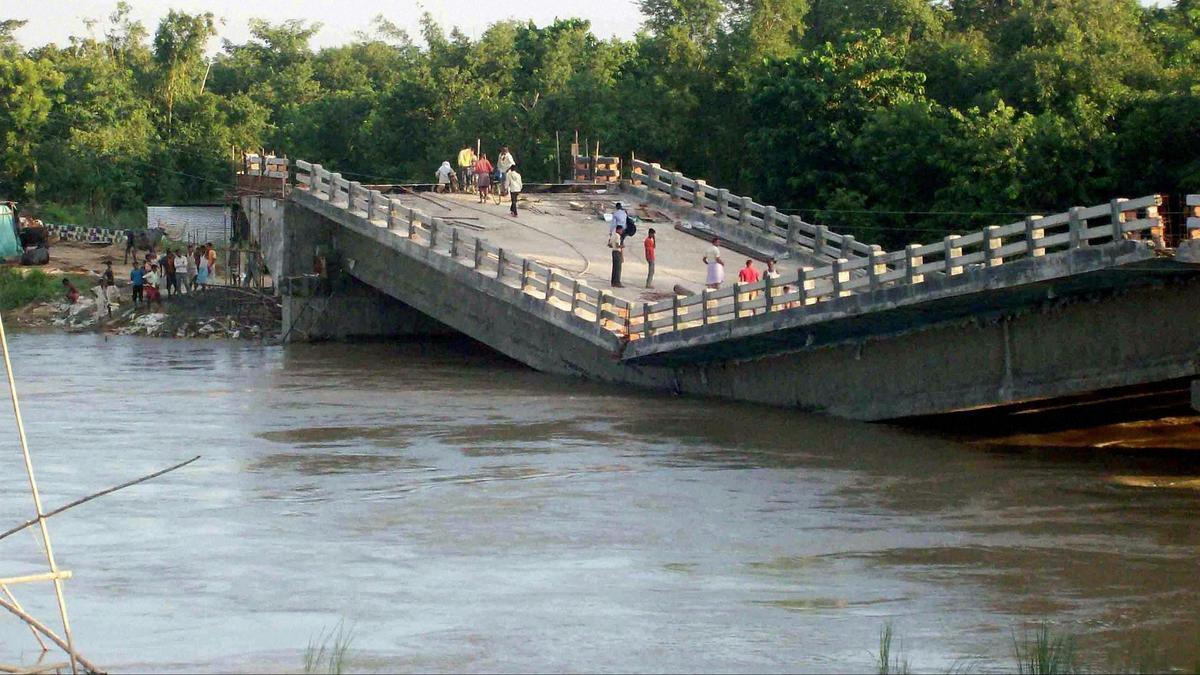
- 15 Sep 2024
Infrastructure is a cornerstone of economic development, and in a rapidly growing economy like India’s, its robustness is vital. Recent incidents, particularly the collapse of several under-construction bridges in Bihar, have cast a spotlight on significant issues within the Indian infrastructure sector, particularly in terms of quality control and project management. With the country's aim to become a developed nation by 2047, addressing these challenges is crucial for sustaining economic growth and ensuring safety.
Current Challenges
- Cost Overruns and Delays: One of the most pressing issues is the frequent occurrence of cost overruns and delays. According to a report by the Ministry of Statistics and Programme Implementation, 431 infrastructure projects with investments exceeding ?150 crore each have faced cost overruns totaling ?4.82 lakh crore as of December 2023. Additionally, a significant percentage of projects are delayed, with 36% running behind schedule by 25 to 60 months and 15% delayed for over 60 months.
- Bureaucratic Hurdles: Infrastructure projects often face delays due to the complex maze of clearances required. The implementation status of many projects indicates a lack of comprehensive planning and coordination, especially in urban infrastructure projects managed by local bodies that may lack sufficient capacity and expertise.
- Project Management Deficiencies: Traditional project management practices in India are often outdated. There is a need for an overhaul to incorporate modern tools and techniques for real-time data management and analysis. Insufficient attention during the planning stages of projects exacerbates these issues, leading to increased costs and project failures.
Path Forward
1. Integrating Modern Practices: Adopting modern project management practices is essential. This includes real-time data management, use of advanced analytics, and adopting global best standards. For example, in the United Kingdom, the Infrastructure and Projects Authority focuses on refining project processes, while countries like China and Saudi Arabia have established agencies dedicated to end-to-end project delivery.
2. PM Gati Shakti National Master Plan: India has initiated the PM Gati Shakti National Master Plan, aimed at integrating various government departments and stakeholders into a unified platform. This GIS-based ERP portal is designed to monitor real-time progress and enhance coordination among departments. While this initiative is promising, the effectiveness will depend on the quality of implementation and oversight.
3. Holistic Program Management Approach: The “Program Management Approach” used in industrial corridor development projects, like the Shendra-Bidkin in Aurangabad, exemplifies effective management of multiple projects simultaneously. This disciplined approach, involving systematic coordination of resources and information, can be applied more broadly across infrastructure projects.
4. Professional Training and Certification: To build a capable workforce, there is a need to establish agencies for professional training in project management. Similar to the Institute of Chartered Accountants of India, such agencies can focus on developing professional ethics and responsibilities in project execution and oversight.
Conclusion
With substantial taxpayer money allocated for infrastructure development, it is imperative to prevent the pitfalls of cost overruns and project failures. A robust program management system, incorporating modern practices and professional training, will enhance the efficiency and effectiveness of infrastructure projects. This approach will not only support India’s high-growth trajectory but also contribute to creating a safer, more affluent future for its citizens.
The Path to Universal Health Coverage: Embracing Data and Digital Technology
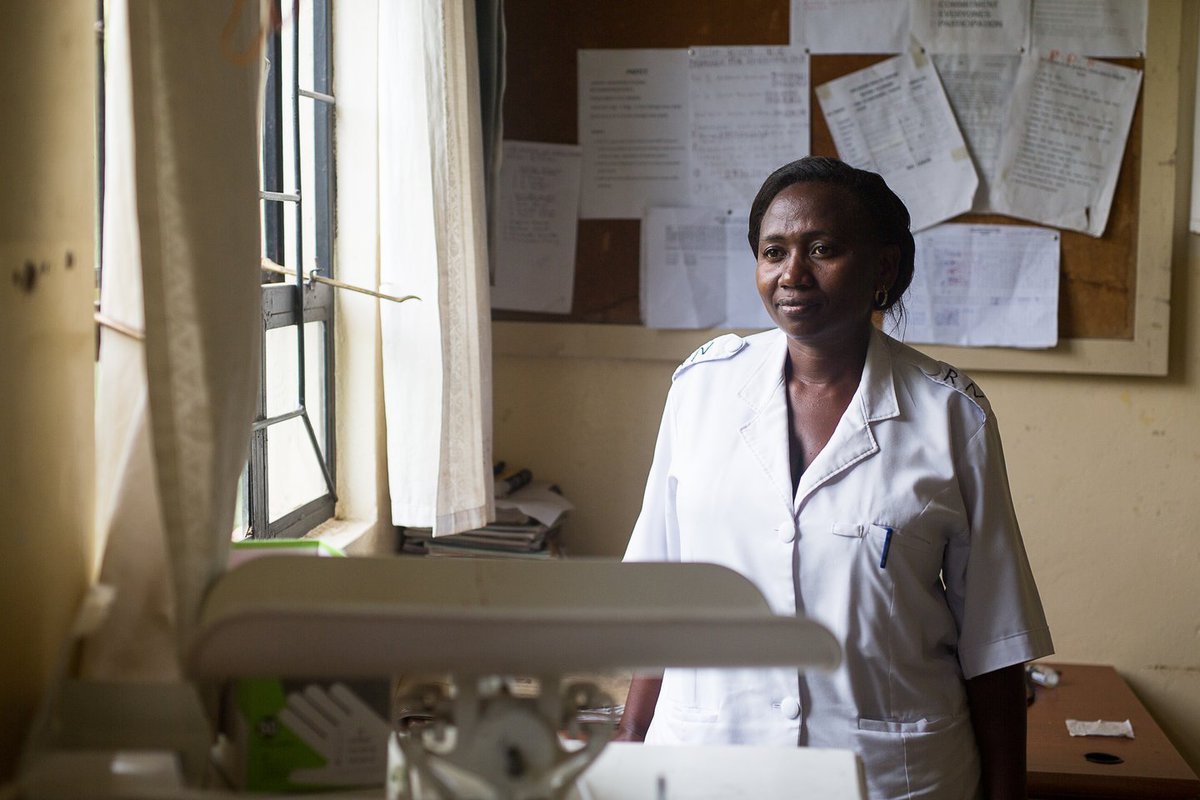
- 13 Sep 2024
The expansion of Universal Health Coverage (UHC) represents a complex but crucial endeavor. The integration of data and digital technology stands out as a pivotal factor in smoothing the way towards achieving this goal.
Understanding Universal Health Coverage
Universal Health Coverage means ensuring that every individual has access to the full spectrum of quality health services when and where they need them, without facing financial hardship. This concept encompasses a broad range of essential health services, including health promotion, prevention, treatment, rehabilitation, and palliative care throughout an individual's life.
UHC as a Sustainable Development Goal
Achieving UHC is a key target of the Sustainable Development Goals (SDGs) established by the global community in 2015. However, despite this commitment, progress towards this goal remains off-track. Since 2015, improvements in health services coverage have stalled, and the proportion of people facing catastrophic out-of-pocket health expenses has been rising steadily since 2000.
Challenges to Universal Health Coverage
Several challenges hinder the advancement of UHC:
- Global Stagnation: Progress in health coverage has stagnated globally, affecting regions and countries alike.
- Manpower Shortages: Many Western and Central Asian countries face severe healthcare manpower shortages.
- Pandemic Disruptions: The COVID-19 pandemic has further disrupted essential health services, with 92% of countries experiencing interruptions at the pandemic's peak in 2021, and 84% still reporting disruptions in 2022.
- Inequality in Healthcare Spending: The disparity between poor and non-poor households has widened, with lower-income families often forced to deplete their resources or sell assets to cover healthcare costs. According to the WHO, 55 million people fall into poverty annually due to catastrophic health expenditures.
- Insufficient Spending: India’s healthcare spending, currently at 3.2% of its GDP, is lower than the average spending of 5.2% observed in lower and middle-income countries (LMICs). The government’s health expenditure is also lower compared to other countries like China, Thailand, Vietnam, and Sri Lanka.
Opportunities Through Digital Health
To address these challenges, leveraging digital health solutions is critical. India's leadership in digital health is exemplified by the Global Initiative on Digital Health, launched under India’s G20 presidency. This initiative aims to drive investments into digital health and facilitate regional and international collaboration.
India’s Ayushman Bharat Digital Mission, which precedes this global initiative, highlights the country's commitment to using digital technology to manage the complexities of UHC expansion. Digital health tools can play a transformative role in managing contracts, implementing value-based provider reimbursements, and streamlining healthcare delivery.
The Role of Artificial Intelligence
Artificial Intelligence (AI) holds significant promise for revolutionizing healthcare. AI-powered diagnostic tools can improve the accuracy and speed of medical diagnoses, leading to better patient outcomes. AI can also predict disease outbreaks, analyze healthcare data, optimize treatment plans, and enhance drug discovery, making healthcare more personalized and effective.
Building Digital Infrastructure
India’s experience in expanding digital health infrastructure can serve as a model for other low- and middle-income countries. Many of these nations are seeking to build and enhance their healthcare systems, and India’s approach may offer valuable policy insights.
The Need for Private Sector Participation
Achieving UHC in India cannot rely solely on the public sector. Integrating the private sector into the public healthcare framework is essential. Addressing modern health challenges requires a collaborative effort that includes both public and private sectors, creating a multifaceted and synergistic approach to healthcare.
WHO’s Recommendations
To strengthen health systems, the WHO recommends reorienting them with a primary health care (PHC) approach. Implementing PHC can deliver up to 90% of essential UHC interventions, potentially saving 60 million lives and increasing global life expectancy by 3.7 years by 2030.
Looking Ahead
It is crucial to balance national interests with international ambitions and leverage digital technologies to create inclusive solutions. Countries should build on their existing systems, gradually implementing reforms and best practices. With dedicated effort and a commitment to excellence, it is possible to build a healthier and more prosperous future for generations to come.
Port Blair renamed as Sri Vijaya Puram
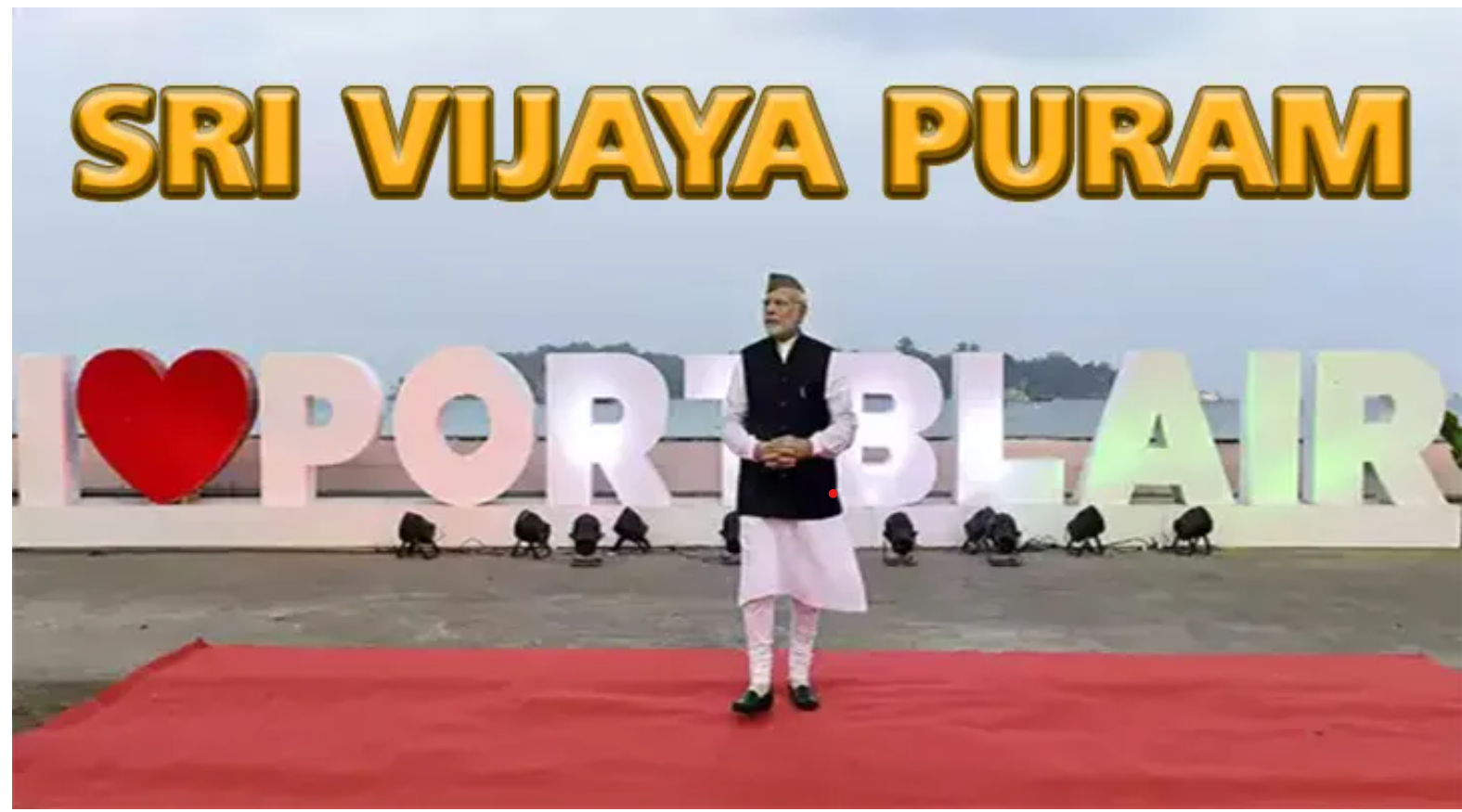
- 14 Sep 2024
Port Blair to be Renamed Sri Vijaya Puram: A Move to Erase Colonial Echoes
Union Home Minister Amit Shah announced on Friday that Port Blair, the capital city of the Andaman and Nicobar Islands, will be renamed Sri Vijaya Puram. This decision is part of a broader effort to “free the nation from colonial imprints,” Shah explained. In a post on X, he emphasized that while the current name carries colonial connotations, the new name, Sri Vijaya Puram, represents the triumph of India's freedom struggle and acknowledges the Andaman & Nicobar Islands’ pivotal role in that struggle.
Shah further highlighted the strategic importance of the islands, which historically served as a naval base for the Chola Empire and are now envisioned as a key element in India’s strategic and developmental plans. Port Blair, named after British naval surveyor Archibald Blair, will henceforth be known as Sri Vijaya Puram, aligning with Prime Minister Narendra Modi’s vision to remove colonial legacies.
The Origin of Port Blair’s Name
Port Blair, the gateway to the Andaman and Nicobar Islands, was named after Archibald Blair, a lieutenant in the Bombay Marine. Blair conducted a thorough survey of the islands after joining the Bombay Marine in 1771. His expedition, which began in December 1778, was crucial in mapping the Andaman Islands. Initially, Blair named the natural harbor Port Cornwallis, in honor of Commodore William Cornwallis. Later, the harbor was renamed Port Blair.
Blair’s survey was highly valued by the East India Company (EIC), leading to the islands’ colonization. The primary motivation was to create a secure harbor to monitor Malay pirates and provide refuge for shipwrecked individuals. Over time, the islands were established as a penal colony, receiving numerous convicts who performed forced labor.
In 1792, the EIC relocated the colony to Port Cornwallis, but it was soon abandoned due to disease and high mortality rates. The Revolt of 1857 brought an influx of prisoners, leading to the reestablishment of Port Blair as a penal colony. The harsh conditions led to numerous deaths, and the area became notorious for its brutal treatment of prisoners, including freedom fighters like Veer Damodar Savarkar. The infamous Cellular Jail, or Kaala Paani, was built by 1906 to house political prisoners.
Historical Significance of the Andaman Islands
Historical records indicate that the Andaman Islands were strategically significant during the 11th century, particularly for the Chola Empire under Emperor Rajendra I. The islands were used as a naval base in the Chola campaign against Srivijaya, a kingdom in present-day Indonesia. An inscription from Thanjavur dating to 1050 CE refers to the islands as Ma-Nakkavaram land, which may have influenced the modern name Nicobar.
Historian Herman Kulke, in his book "Nagapattinam to Suvarnadwipa," describes the Chola invasion of Srivijaya as a notable event, reflecting the complex interactions between India and Southeast Asia. Various scholars offer differing interpretations of the invasion, ranging from a response to trade disruptions to an extension of Chola expansionism.
In summary, the renaming of Port Blair to Sri Vijaya Puram represents a significant shift in recognizing the historical and strategic importance of the Andaman and Nicobar Islands, aligning with India's broader goals of addressing colonial legacies and honoring its rich history.
India’s sickle cell challenge
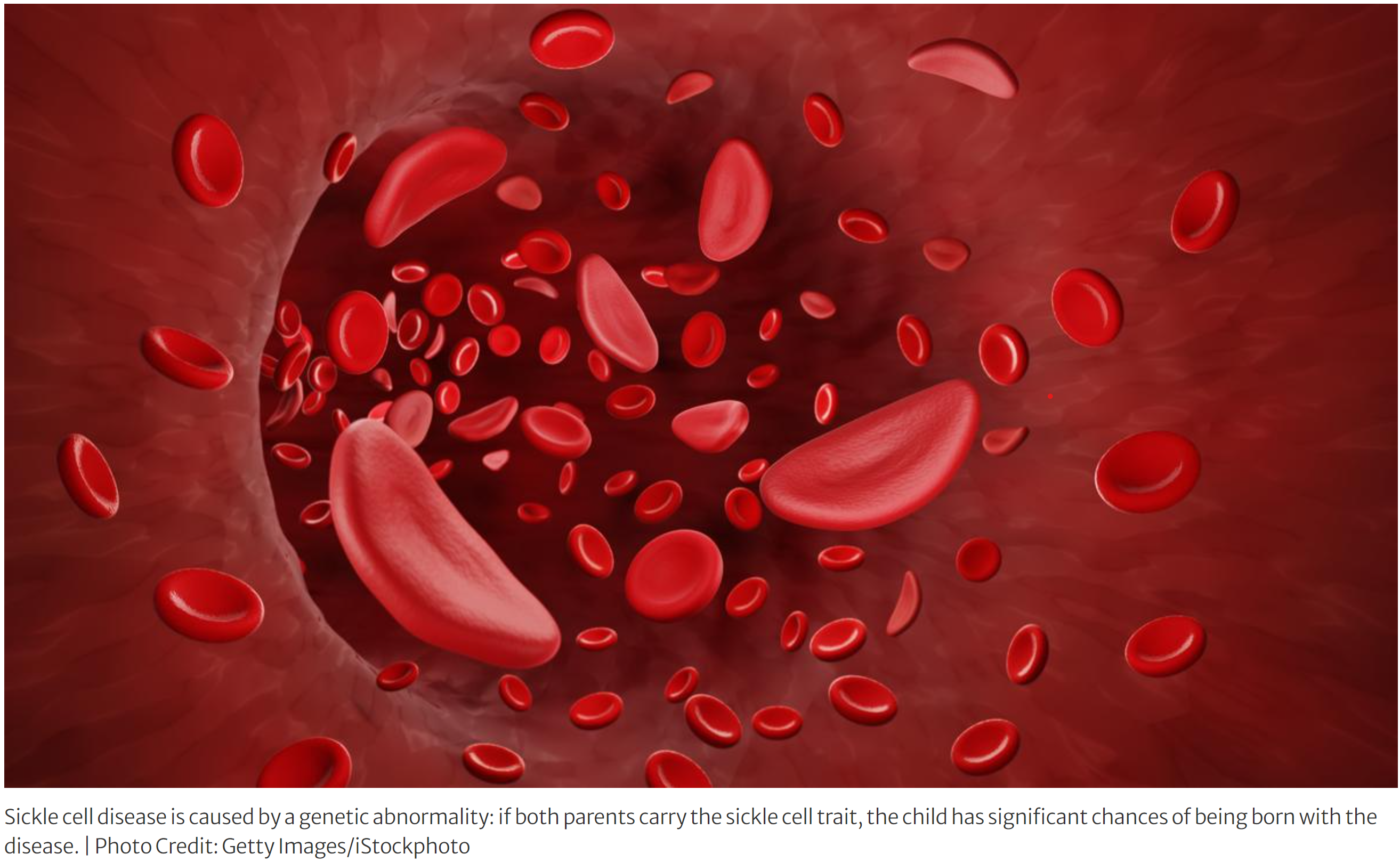
- 12 Sep 2024
In News:
Last year, Prime Minister Narendra Modi launched the National Sickle Cell Anaemia Elimination Mission to eliminate sickle cell disease as a public health problem by 2047, from Shahdol, Madhya Pradesh.
What is Sickle Cell Disease?
- It is a genetic blood disorder that affects the shape of red blood cells. Normally, red blood cells are round and flexible, but in sickle cell disease, they become stiff and crescent-shaped, resembling a sickle.
- This abnormal shape makes it difficult for these cells to travel smoothly through blood vessels, leading to blockages and various health problems.
- It is caused by a mutation in the gene that tells the body how to make hemoglobin, the protein in red blood cells that carries oxygen.
- Both parents must pass down the defective gene for a child to develop the disease.
- If a person inherits the gene from just one parent, they have sickle cell trait and can pass the gene to their children but usually do not experience symptoms.
- Symptoms:
- Episodes of severe pain, called pain crises, typically in the chest, joints, and bones.
- Fatigue and anemia, due to the rapid breakdown of red blood cells.
- Swelling in the hands and feet, caused by the sickle-shaped cells blocking blood flow.
- Frequent infections, as the spleen, which helps fight infection, may be damaged by the disease.
- Delayed growth and puberty in children, due to chronic anemia.
- Diagnosis:
- It is usually diagnosed through a blood test. Newborns are routinely screened for the disease in many countries.
- The test checks for the presence of hemoglobin S, the defective form of hemoglobin that causes sickle cell disease.
- Treatment:
- While there is no universal cure for sickle cell disease, treatments can help manage symptoms and reduce complications.
- Pain relief medications for pain crises.
- Blood transfusions to treat anemia and prevent stroke.
- Hydroxyurea, a medication that can reduce the frequency of pain crises and the need for blood transfusions.
- Bone marrow or stem cell transplants, which can potentially cure the disease but are not suitable for all patients due to risks and availability of donors.
- Challenges in India
- India, with over a million affected individuals, faces the world’s second largest burden of sickle cell disease, primarily affecting tribal regions across Odisha, Jharkhand, Chhattisgarh, Madhya Pradesh, and Maharashtra. Only 18% of those affected receive consistent treatment due to significant drop-offs at diagnosis and adherence stages. Diagnosis is hindered by stigma and reliance on traditional healers, with a lack of trust in the public healthcare system. Treatment adherence is also poor due to the absence of a permanent cure, inadequate supply of essential medications like hydroxyurea, and logistical challenges, including long travel distances for medicine. Additionally, vaccination coverage, which helps improve patients' quality of life, remains insufficient.
The way ahead
- It is important to reduce the stigma related to the disease and build trust in public health institutions. Awareness should be raised through targeted media campaigns to bust specific myths (which vary by region and tribe).
- Second, given that cases are often missed and diagnosis delayed, there could be increasing screening for newborns. This strategy is low-cost with a high pay-off and would especially be effective in areas where the condition is endemic.
- Third, drugs as well as adherence support must be available close to patients, in the nearest health and wellness centres. For complications, interdisciplinary centres of excellence at the district/division levels should be made operational.
- Fourth, ensuring that all known patients receive approved vaccines will be crucial; this may require catch-up vaccination programmes.
- Fifth, health in tribal areas should be operationally strengthened by factoring in conditions unique to these areas. Healthcare should also be adequately funded.
- Finally, research should be conducted to better understand the disease and its pathways in India, and to develop new treatments. Philanthropists and members of civil society must play a catalytic role, and work with the Central and State governments.
Heat Waves Impact on Informal Workers and India's Heat Action Plans
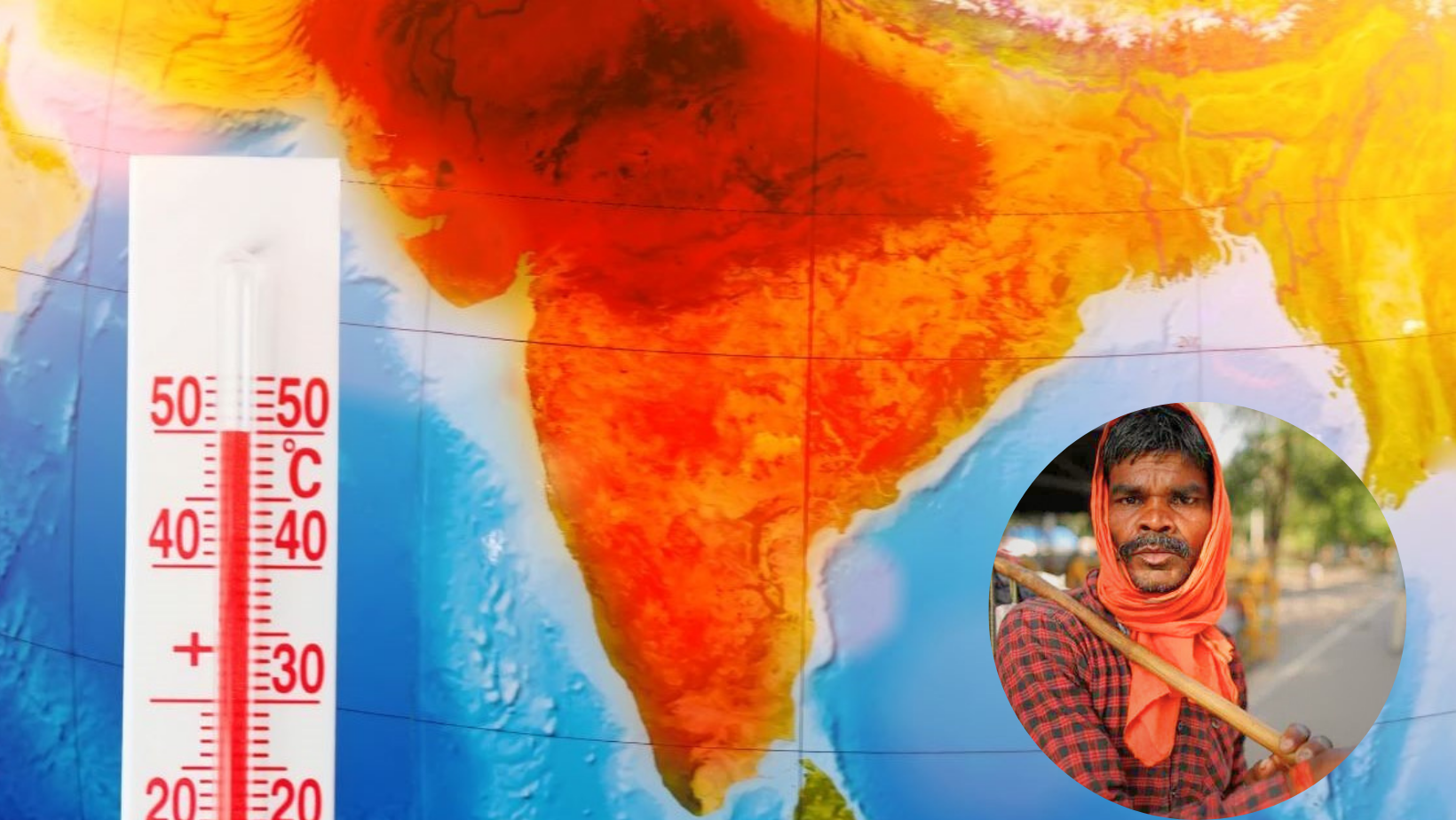
- 31 May 2024
Why is it in the News?
Crowded urban areas exacerbate the heat island effect, heightening risks for informal workers due to their unstable employment, lack of safety nets, and existing socio-economic vulnerabilities.
Context:
- Nowadays, Northern India is experiencing an intense heat wave, with workers, particularly those involved in hard physical labour, being the most vulnerable.
- In Delhi, temperatures have exceeded 50 degrees Celsius, posing severe and life-threatening conditions for labourers.
- The recent death of a 40-year-old worker due to extreme heat has prompted the Lieutenant Governor's office to issue guidelines, underscoring the urgency and gravity of the situation for those working under the scorching sun.
What is a Heat Action Plan?
- Heat Action Plan or HAP is a policy document prepared to effectively understand and respond to the harmful effects of heat waves.
- HAPs are prepared by the government authorities at various levels and serve as a comprehensive guide, outlining measures to prepare for, respond to, recover from and learn from extreme heat events.
- It is an advisory document that’s put forward by state and local governments that explains what needs to be done to prepare for a heat wave, what is to be done after a heat wave is declared, and puts forth a range of emergency responses and course corrective actions to learn from the heat wave experience so that the HAP can be refined.
- The primary purpose of these plans is to protect vulnerable populations and direct essential resources, including healthcare, financial support, information, and infrastructure, to those most at risk during extreme heat conditions.
- These plans are multi-sectoral in nature. They involve implementation from multiple government departments simultaneously before enduring heat waves and the main idea behind them is to make sure that during extreme temperatures, there is no loss of life.
- HAPs play a crucial role in raising awareness and providing guidance for individuals and communities to proactively safeguard their well-being against heat waves through a balanced mix of short and long-term actions.
What are the Flaws in Existing Heat Action Policies?
- Inadequate Coverage and Implementation: Despite NDMA mandates, many regions lack comprehensive HAPs.
- Where HAPs do exist, implementation is often inconsistent, leading to uneven protection for vulnerable populations, especially in urban areas.
- Insufficient Focus on Informal Workers: HAPs largely overlook the specific needs of informal workers, who make up a significant portion of the urban workforce.
- This group includes construction labourers, street vendors, domestic workers, and home-based workers, all facing unique challenges during heat waves.
- When workers are mentioned, it's usually in a generic "outdoor workers" category, resulting in insufficient and inappropriate interventions.
- Short-Term, Reactive Approach: Many HAPs focus on immediate relief rather than long-term solutions, evidenced by temporary measures like water provision and altered work hours.
- While these provide immediate relief, they do not address the underlying vulnerabilities that exacerbate the impact of heat waves on workers.
- There is a need for HAPs to integrate with broader urban planning and climate action plans for sustainable, resilient solutions.
- Rural Bias in Planning: HAPs often have a rural bias, neglecting the unique challenges of urban environments.
- Urban areas experience the "heat island effect," where dense infrastructure and reduced vegetation lead to higher temperatures.
- Informal urban settlements, where many workers live, are particularly vulnerable due to poor housing conditions and limited access to basic services.
- Lack of Integration with Urban Planning: HAPs often operate in isolation from other urban planning and development initiatives.
- There is little coordination between HAPs and urban design, housing policies, or infrastructure development.
- This lack of integration means missed opportunities to create more heat-resilient urban environments.
- Urban greening, improved housing designs, and better urban mobility can significantly reduce heat exposure and improve life quality for informal workers, but these measures are rarely considered in HAPs.
- Absence of Worker Participation: A critical gap is the lack of participation from worker communities in developing and implementing HAPs.
- Informal workers, who are most affected by heat waves, often have valuable insights into their working conditions and specific challenges.
- Excluding them from the planning process results in measures that may not be practical or effective.
Recommended Policies to Mitigate the Impact of Heat Waves:
- Reconceptualizing Heat Waves: Heat waves should be treated as prolonged disasters rather than isolated events, integrating Heat Action Plans (HAPs) with long-term urban planning and climate action strategies.
- The NDMA should collaborate with urban stakeholders such as the Ministry of Housing and Urban Affairs (MoHUA) and the Ministry of Labour and Employment (MoLE).
- Worker Participation: It's essential to include worker communities in the preparation of action plans.
- The government should involve worker welfare boards and committees, like the Town Vending Committees (TVC) for street vendors, in drafting and implementing HAPs.
- Engaging these groups can lead to more tailored and effective interventions.
- Gender-Specific Needs: The impact of heat waves is not gender-neutral. Women workers, who constitute a significant part of the informal workforce, face unique challenges often overlooked in HAPs.
- These include increased care responsibilities, reproductive health risks, and greater exposure to heat in domestic and care work settings.
- HAPs should incorporate gender-specific measures to address these challenges, ensuring equitable and inclusive interventions.
- Economic and Health Protection: Heat waves profoundly affect the economic and health conditions of informal workers, yet HAPs often lack comprehensive measures to mitigate these effects.
- Informal workers frequently face income loss due to reduced working hours and increased healthcare expenses.
- HAPs should include provisions for income protection, such as compensation for lost wages and access to affordable healthcare.
- Strengthening social protection systems is also crucial to provide a safety net for workers during extreme heat events.
- Rethinking Labor Laws: As labour laws and Labor Codes are reformed, they should integrate considerations of climate change and its impact on work.
- This ensures that labour laws are responsive to new challenges posed by extreme heat and other climate-related events.
- Extending legal protections to informal workers is necessary, ensuring they receive the same rights and benefits as formal workers, including safe working conditions, fair wages, and social security access.
- Urban Reimagining: The government should redesign urban spaces to prioritize the needs of informal workers.
- This includes ensuring access to water, shade, and rest areas in public and work spaces.
- Additionally, investing in urban infrastructure to mitigate the impact of heat waves is essential.
- This involves increasing green spaces, improving housing conditions in informal settlements, and enhancing public transportation.
Conclusion
The recent severe heat wave in northern India highlights the pressing need for comprehensive and inclusive measures to safeguard the most vulnerable workers. By integrating long-term planning, inclusive policies, and active worker participation, India can effectively protect its informal workforce from the devastating impacts of extreme heat. Prioritizing the design of cities to meet the needs of workers is essential for fostering a more resilient and equitable urban environment.
Dispelling Population Myths Triggered by a Working Paper

- 30 May 2024
Why is it in the News?
The working paper released by the Economic Advisory Council (EAC) to the Prime Minister makes an erroneous assertion regarding the growth of the Muslim population.
Context:
- The discussion on India's religious demographics is frequently marred by sensationalism and misinterpretation, often driven by media and political narratives.
- A recent working paper by the Economic Advisory Council to the Prime Minister (EAC-PM), titled "Share of Religious Minorities: A Cross-Country Analysis (1950-2015)," has been a particular target of such distortions.
- Hence, it is crucial to critically examine the findings and interpretations of the EAC-PM's working paper, placing them within the broader socio-economic dynamics and demographic trends.
Composition of the Population of various communities highlighted by EAC:
- The population composition of various communities in the region has changed between 1950 and 2015, as highlighted by the data:
- In terms of absolute numbers, the Hindu population saw a substantial increase of 701 million individuals, while the Muslim population grew by 146 million.
- However, when looking at proportional changes, the Hindu population experienced a decrease of 6.64 percentage points, from 84.7% in 1950 to 78.06% in 2015.
- Conversely, the Muslim population's proportion increased by 4.25, rising from 9.84% in 1950 to 14.09% in 2015.
- Despite these shifts in proportions, the Hindu population remains numerically larger than the Muslim population as of 2015.
What does the 2011 census say?
According to the 2011 census, the following changes in the proportions of various religious communities were observed in comparison to the 2001 census:
- The Hindu population's proportion relative to the total population decreased by 0.7 percentage points.
- The Sikh population's proportion saw a decline of 0.2 percentage points.
- The Buddhist population's proportion decreased by 0.1 percentage points.
- On the other hand, the Muslim population's proportion relative to the total population increased by 0.8 percentage points.
- The proportions of the Christian and Jain communities underwent no significant change during the 2001-2011 period.
A Study on Socio-Economic Aspects and Population Growth in the Muslim Communities:
The Impact of Education:
- Education significantly influences fertility rates and overall population growth. Communities with higher educational attainment, particularly among women, generally exhibit lower fertility rates.
- Education equips individuals with knowledge about family planning, reproductive health, and the economic implications of large families.
- In India, disparities in educational attainment among different religious communities contribute to variations in population growth rates.
- Historically, the Muslim community has encountered barriers to accessing quality education, leading to higher fertility rates compared to the Hindu community.
- This indicates that the higher population growth rate among Muslims is due to limited educational opportunities rather than religious doctrine.
Economic Conditions:
- Economic stability plays a crucial role in determining family size and population growth.
- Economically stable families tend to have fewer children, enabling them to invest more resources in each child's health, education, and overall well-being.
- In contrast, economically disadvantaged communities often exhibit higher fertility rates as a response to economic insecurity, viewing children as contributors to household income.
- The higher growth rate of the Muslim population in India can be attributed to lower average income levels and limited access to economic opportunities within the community.
- Addressing economic disparities is essential for moderating population growth and enhancing overall human development.
Access to Healthcare:
- Healthcare access, especially reproductive health services, is a key determinant of fertility rates.
- Communities with better access to healthcare services, including contraception and maternal healthcare, typically have lower fertility rates.
- The Muslim community in India has historically faced challenges in accessing healthcare services, contributing to higher fertility rates.
- Improving healthcare access for all communities is vital for achieving balanced population growth and improving quality of life.
Cultural Factors and Gender Norms:
- Cultural factors and gender norms also influence fertility rates. Traditional norms valuing large families and early marriage can lead to higher fertility rates in some communities.
- Promoting gender equality and empowering women to make informed reproductive choices are crucial for moderating population growth.
- Programs aimed at changing cultural attitudes towards family size and encouraging later marriages can significantly impact reducing fertility rates.
Urbanization and Migration:
- Urbanization and migration patterns affect population growth, with urban areas generally exhibiting lower fertility rates than rural areas due to better access to education, healthcare, and economic opportunities.
- Migration from rural to urban areas can lead to a decline in fertility rates as individuals adapt to urban socio-economic conditions.
- In India, the Muslim population is more concentrated in rural areas, which tend to have higher fertility rates.
- Promoting urbanization and integrating rural communities into urban settings can contribute to balanced population growth.
Human Development Indicators:
- Human development indicators, such as life expectancy, child mortality rates, and literacy rates, are closely linked to population growth.
- Communities with higher human development indicators tend to have lower fertility rates.
- The lag in human development indicators among the Muslim community compared to the Hindu community underscores the need for targeted interventions to improve education, healthcare, and economic opportunities for all.
Religious Demography in a Broader Context:
Historical Stability in Religious Composition:
- Historical data indicates that India's religious composition has remained relatively stable over the decades.
- The 2021 Pew Research Centre report, which analyzed Census data from 1951 to 2011, reveals that the proportions of India's major religious groups have shown remarkable stability since Partition.
- This stability counters claims of dramatic demographic shifts. The Hindu population has consistently constituted a large majority, while the proportions of other religious groups, including Muslims, have grown at a predictable rate.
- This historical perspective underscores that changes in religious demography are gradual and not indicative of sudden or alarming shifts.
Projections and Future Trends:
- Projections by leading demographers offer a nuanced understanding of future demographic trends.
- In a 2005 study, P. N. Mari Bhat and Francis Zavier projected that the proportion of Muslims in India’s total population would peak at around 18.8% by 2101.
- This projection is based on historical trends and factors such as declining fertility rates and improvements in socio-economic conditions.
- Recent data from the National Family Health Survey (NFHS) shows a significant decline in Muslim fertility rates, suggesting that the peak proportion might be even smaller if similar studies were conducted today.
- These projections highlight that fears of Muslims overtaking Hindus in population numbers are unfounded and not supported by empirical evidence.
Socio-Economic Development and Demographic Trends:
- Socio-economic development plays a critical role in shaping demographic trends. Improved education, healthcare, and economic opportunities lead to lower fertility rates across all communities.
- The decline in Muslim fertility rates, as observed in the NFHS data, is a direct result of better access to education and healthcare.
- This trend is expected to continue as development efforts reach more communities.
- Therefore, socio-economic development is essential for achieving balanced population growth and should be the focus of policy interventions.
Conclusion
The sensationalism and misinterpretation of the EAC-PM working paper's findings can obstruct informed public discourse. Achieving an accurate understanding of population dynamics demands a nuanced examination of socio-economic conditions and demographic data. As India awaits updated Census data, it's imperative to promote a discourse on religious demography that is informed and balanced, free from divisive political narratives.
Still No Sign of the Language of Equity and Inclusion

- 29 May 2024
Why is it in the News?
Equity in education, health care, and rights in India cannot succeed unless the ableist barriers that exclude Deaf and hard-of-hearing citizens are removed.
Context:
- As the 2024 general election in India concludes, the absence of sign language interpreters during the Election Commission of India's announcement in March highlights the ongoing exclusion of Deaf and Hard of Hearing (DHH) citizens.
- This incident reflects the broader societal neglect and ableism that marginalize the DHH community in daily life.
- It is crucial to examine the everyday challenges faced by DHH individuals, the limited opportunities available to them, and the necessary steps to address these issues.
Promoting Equity and Recognizing Exclusive Practices:
- India's goals for equitable education, healthcare, and rights are fundamentally compromised by persistent ableist barriers that exclude Deaf and Hard of Hearing (DHH) individuals.
- The National Programme for Prevention and Control of Deafness exemplifies this issue.
- Although it addresses hearing impairment prevention and treatment, it fails to improve the quality of life for DHH individuals.
- The program emphasizes theoretical aspects like screening and hearing aids but neglects Indian Sign Language (ISL), essential for deaf communication.
- Despite the Social Justice Ministry establishing the ISL Research and Training Centre in 2015 and the National Education Policy 2020 recommending ISL standardization in schools, ISL remains unrecognized as an official language and is rarely used in educational systems, even in schools for the deaf.
The Debate Over Oralism and Educational Exclusion:
Historical Context and Pedagogical Approaches:
- The debate between oralism and the use of sign language in educating deaf individuals has deep historical roots, reflecting broader societal attitudes toward disability and communication.
- Emerging in the late 19th century, oralism emphasizes teaching deaf individuals to use their voices and read lips rather than relying on sign language.
- Proponents believed that integrating deaf individuals into the hearing world was best achieved by encouraging them to mimic spoken language as closely as possible, assuming this would enable them to function more effectively in a predominantly hearing society.
Criticisms of Oralism:
- Despite its intentions, oralism has faced widespread criticism for its limitations and negative impacts on deaf individuals.
- One major criticism is that oralism often leads to linguistic deprivation, especially in children.
- Learning to speak and read lips can be extremely challenging and time-consuming, resulting in delays in language acquisition and cognitive development.
- Without early and consistent exposure to a natural language like sign language, deaf children risk not developing the foundational language skills necessary for effective communication and learning.
- Additionally, oralism can create significant social isolation, as the pressure to conform to oral communication can undermine the development of a strong, positive deaf identity and sense of belonging within the deaf community.
The Case for Sign Language:
- In contrast, using sign language as the primary mode of instruction for deaf students has numerous benefits.
- Sign language is a natural and fully developed language that enables deaf individuals to communicate effectively from an early age.
- Research shows that early exposure to sign language supports cognitive development and academic achievement, allowing deaf children to develop language skills on par with their hearing peers.
- Furthermore, sign language fosters a sense of community and cultural identity among deaf individuals, providing a strong sense of belonging and self-worth.
The Indian Context:
- In India, the education system has largely adhered to the oralist approach, significantly impacting deaf students.
- Most educators in schools for the deaf are not trained in Indian Sign Language (ISL), perpetuating exclusion and limited accessibility.
- The current educational framework focuses on "rehabilitation," expecting deaf individuals to adapt to their surroundings rather than addressing the societal barriers impeding their inclusion.
- This approach fails to recognize the value of sign language and the importance of providing deaf students with a language-rich environment that supports their linguistic and cognitive development.
Everyday Challenges and Opportunities for the Invisible Deaf Population:
The Invisible Population:
- India's hearing-impaired population is substantial, with the 2011 Census reporting five million people, the National Association of the Deaf estimating 18 million, and the World Health Organization suggesting nearly 63 million Indians have significant hearing impairment.
- Despite these numbers, Deaf and Hard of Hearing (DHH) individuals remain largely invisible in society.
- Only 5% of deaf children attend school, often facing prolonged educational timelines due to an oralist curriculum.
- Employment opportunities for the deaf are limited, with government recruitment sometimes favouring those with lesser impairments, leading to protests.
- Despite petitions for Indian Sign Language (ISL) recognition, the government resists, citing the adequacy of the Rights of Persons with Disabilities Act (RPDA) 2016, which falls short in practical implementation.
Lack of Accessibility in Public Transport:
- DHH individuals face numerous every day challenges due to a lack of accessibility in public transport, media, public structures, and emergency services.
- Basic activities, such as following public announcements or accessing customer service, become insurmountable tasks.
- While some progress has been made with accessible options in films and sports, much remains to be done.
- Employment opportunities for the deaf are often restricted to low-skill jobs, and the government sector lags in accessibility and inclusion initiatives.
- Protests by the deaf community demanding better education and employment opportunities have often been met with force or empty promises.
Healthcare and Mental Health Accessibility:
- Access to healthcare poses additional challenges for the deaf community, as most hospitals lack interpreters, complicating communication.
- This is especially problematic in mental healthcare, where a lack of ISL-trained professionals further marginalizes DHH individuals.
- Although the Mental Healthcare Act of 2017 promises universal mental healthcare, its implementation is ineffective, with only 250 certified sign language interpreters available and no clear data on ISL-trained mental health professionals.
Way Forward:
- To address these issues, recognizing Indian Sign Language (ISL) as an official language and integrating it into schools and colleges for both hearing and Deaf and Hard of Hearing (DHH) students is crucial.
- This approach would also create employment opportunities for DHH individuals as educators.
- Additionally, healthcare systems need to be updated to ensure easy and accessible communication for DHH patients, including employing language-concordant physicians.
- Regulatory commissions in medical fields must reduce barriers for DHH individuals aspiring to healthcare professions, fostering a more inclusive workforce.
- Media channels should consistently offer deaf programming, and government event announcements should include live ISL interpreters, as seen in many other countries.
- Timely interventions in these areas could lead to significant improvements, potentially ensuring real-time ISL interpretations in future elections.
Conclusion
The challenges faced by the Deaf and Hard of Hearing (DHH) community in India are complex and deeply rooted in societal ableism. While some progress has been made, much more needs to be done. It is crucial for authorities to actively engage with the DHH community and address their specific needs. By recognizing and implementing necessary changes, India can move towards a more inclusive society where the rights and needs of DHH individuals are fully acknowledged and met.
Geopolitical Significance of Chabahar Port: Opportunities and Challenges for India

- 28 May 2024
Why is it in the News?
Recently, India secured rights to invest in and operate the Shahid-Behesti terminal at Chabahar Port for another 10 years.
Context:
- The recent extension of the contract between India and Iran, granting New Delhi continued investment and operational rights at the Shahid-Beheshti terminal within Chabahar Port for another ten years, underscores the project's strategic and economic significance.
- This development occurs amid a turbulent period in West Asia, characterized by ongoing conflict in Gaza, escalating tensions between Israel and Iran, and a destabilizing helicopter crash resulting in the loss of Iran’s President and Foreign Minister.
- Nevertheless, the Chabahar project retains its pivotal role in cementing economic ties between India and Iran despite these formidable challenges.
Significance of the Chabahar Project for India:
- Economic Connectivity and Trade Advancement: Chabahar Port serves as a vital node in the International North-South Transport Corridor (INSTC), streamlining India's trade routes with Central Asia, Russia, and beyond.
- By offering a direct sea-land route that circumvents Pakistan, Chabahar substantially cuts transportation time and costs for Indian exports bound for these regions.
- This heightened connectivity fosters increased trade, economic convergence, and access to fresh markets, augmenting India's export potential and economic prosperity.
- Geopolitical Influence and Strategic Independence: Chabahar represents a strategic asset for India to assert its influence in the region and diminish reliance on Pakistani transit routes, often fraught with geopolitical tensions.
- Through investment in Chabahar, India solidifies a strategic foothold in Iran, a nation wielding significant sway in West and Central Asia.
- The port empowers India to project strength and maintain a strategic presence in a landscape where China, through its Belt and Road Initiative (BRI), and Pakistan, vie for dominance.
- This strategic autonomy is pivotal for India's foreign policy, enabling adept navigation of intricate regional dynamics.
- Regional Security and Harmony: Chabahar Port assumes a crucial role in India's efforts towards regional security and stability, particularly concerning Afghanistan.
- Endorsed by the Taliban and with their financial commitment, Chabahar emerges as a key conduit for humanitarian aid and economic provisions to Afghanistan, thereby fostering stability in a strife-ridden region.
- By promoting economic growth and offering alternatives to Pakistani ports, Chabahar helps mitigate the peril of economic isolation for Afghanistan, fostering regional tranquillity.
- Countervailing Chinese Influence: Strategically positioned to counterbalance Chinese presence, Chabahar offers a distinct avenue to offset Chinese influence, notably vis-à-vis the China-Pakistan Economic Corridor (CPEC) and Gwadar Port.
- While Gwadar, under China's dominion, lies proximate to Chabahar, the latter furnishes an alternative route pivotal for diversifying regional supply chains.
- By fortifying Chabahar, India not only mitigates the strategic risks of Chinese infrastructure dominance but also offers a viable alternative for international trade routes evading Chinese control.
- Diplomatic Collaboration and Multilateralism: Chabahar Port epitomises India's dedication to diplomatic collaboration and multilateral engagement.
- Through this venture, India showcases its adeptness in partnering with diverse international stakeholders, including Iran, Afghanistan, and Central Asian nations, nurturing a collaborative regional milieu.
- The port aligns with broader international endeavours to bolster connectivity and economic amalgamation across Eurasia, positioning India as a pivotal player in regional developmental endeavours.
- Energy Security: Given Iran's substantial energy reserves, Chabahar Port holds promise in bolstering India's energy security.
- By serving as a strategic ingress point for Iranian oil and gas, the port facilitates energy imports, diversifies India's energy sources, and diminishes dependence on any single nation or route.
- This diversification is instrumental in securing a stable and resilient energy supply, indispensable for India's burgeoning economy.
Challenges in India-Iran Relations Amidst Chabahar Port Dynamics:
- Sanctions and Global Pressures: The imposition of international sanctions, particularly by the United States, has significantly disrupted economic ties between India and Iran.
- Projects like the Farzad-B gas field and the Irano Hind Shipping Company bore the brunt of these sanctions directly.
- The Chabahar Port project itself has faced intricacies due to U.S. sanctions, necessitating periodic exemptions for India to sustain its development efforts.
- Geopolitical Dynamics: India's strategic partnership with the United States sometimes clashes with its engagements with Iran, creating geopolitical complexities.
- During the Obama administration, India curtailed its oil imports from Iran in line with U.S. policies on Tehran’s nuclear program, impacting bilateral trade and diminishing Iran's standing as a major oil supplier to India.
- Competing Regional Agendas: India and Iran harbour divergent regional interests that occasionally conflict.
- While Iran aims to bolster its influence in West Asia and deepen ties with nations like China and Russia, India’s regional focus includes countering China’s Belt and Road Initiative and safeguarding its interests in Afghanistan.
- These disparate priorities can lead to friction and curtail the extent of bilateral cooperation.
Recommendations for Future Engagement:
Diversification of Economic Cooperation: While the Chabahar Port remains crucial, India and Iran should broaden their economic collaboration beyond it.
-
- Exploring sectors like energy, agriculture, pharmaceuticals, and technology through revived projects like the Farzad-B gas field or new joint ventures can enhance economic ties.
- Establishing a comprehensive trade framework involving tariff reduction, streamlined customs procedures, and investment incentives can stimulate bilateral commerce.
Enhancement of Diplomatic Engagement: Regular high-level visits and dialogues are essential to address misunderstandings and align strategic interests.
-
- Institutionalizing such engagements ensures continuous and structured communication between the two nations.
- Leveraging participation in multilateral forums like the United Nations and regional organizations can facilitate joint initiatives, amplifying diplomatic influence and fostering closer ties.
- Balancing Geopolitical Alignments: India should navigate its strategic partnership with the United States while engaging with Iran, emphasizing the significance of projects like Chabahar.
- Diplomatic efforts should prioritize securing exemptions from sanctions hindering critical projects, necessitating transparent communication with the U.S.
- Strengthening ties with other regional actors such as Afghanistan, Central Asian countries, and Russia can reinforce India-Iran relations and regional stability.
- By implementing these recommendations, India and Iran can foster a more robust and diversified partnership, enhancing mutual prosperity and geopolitical stability in the region.
Conclusion
The Chabahar port project symbolizes the intricate fabric of India-Iran relations, intertwining economic ambitions with strategic considerations. Amidst the shifting tides of geopolitics, Chabahar emerges as a symbol of the enduring collaboration between the two nations.
Maintaining this foundational project while expanding economic collaboration and diplomatic finesse will be pivotal in fortifying and advancing the India-Iran relationship in the years ahead.
A Door to a Housing Scheme, Tribals Find Hard to Open
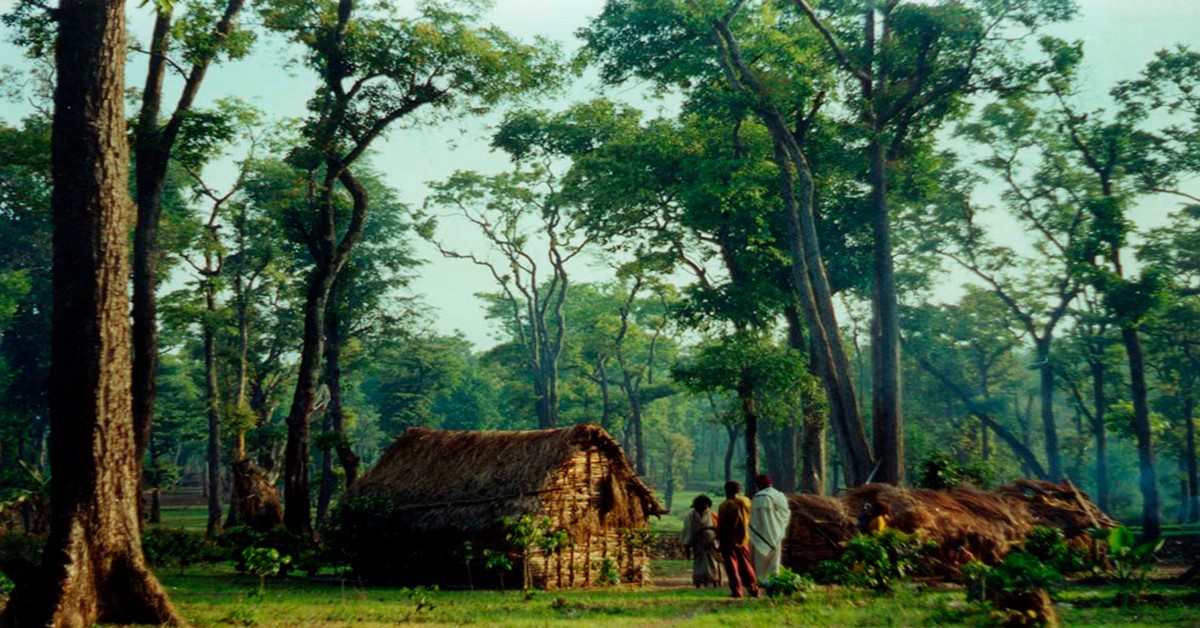
- 27 May 2024
Why is it in the News?
According to a recent report, the Pradhan Mantri Janjati Adivasi Nyaya Maha Abhiyan (PM JANMAN) is facing challenges in implementation.
Context:
- India is home to numerous tribal groups, including 75 identified as Particularly Vulnerable Tribal Groups (PVTGs) across various states.
- To address their socio-economic backwardness, the Government of India launched the Pradhan Mantri PVTG Development Mission in 2023-24.
- Despite this initiative, both PVTGs and frontline officials encounter significant challenges when using a mobile application to register for the housing scheme.
What is the Pradhan Mantri Janjati Adivasi Nyaya MahaAbhiyan (PM JANMAN)?
- The Pradhan Mantri Janjati Adivasi Nyaya MahaAbhiyan (PM JANMAN) is an initiative launched by the Government of India to uplift and empower the Particularly Vulnerable Tribal Groups (PVTGs).
Its key objectives and implementation aspects:
- The PM JANMAN initiative aims to ensure that PVTGs have access to essential services and improved living standards by addressing their critical needs through a comprehensive set of interventions.
- One of the flagship programs under this initiative is the Housing scheme, a Direct Benefit Transfer (DBT) scheme designed to provide secure and habitable housing to PVTG households.
- The Housing scheme targets to reach 4.90 lakh PVTG households by the year 2026, with each household entitled to receive ?2.39 lakh in three instalments.
- This financial assistance is intended to enable these vulnerable communities to construct safe and durable houses, protecting them from environmental challenges and providing a sense of security and dignity.
- By addressing the critical need for safe housing, along with other interventions focused on clean drinking water, sanitation, and other essential services, the PM JANMAN initiative aims to uplift the living conditions of PVTGs and empower them to overcome the challenges they face.
- This comprehensive approach seeks to create a supportive environment for the overall development and well-being of these marginalized communities. CopyRetry
What are the Challenges Associated with PM JANMAN Housing Scheme Implementation?
Data Mismatch and Ineligibility Issues:
- A significant challenge in the registration process is the widespread deletion of job cards, essential for registering for the PM JANMAN Housing scheme.
- Over the past two years, more than eight crore MGNREGA workers' job cards, including those of PVTG members, have been deleted. This massive data purge has prevented many eligible households from registering for the scheme, thereby excluding them from receiving benefits.
- Additionally, incorrect registrations have been reported, where individuals register using others' job cards.
- This not only deprives rightful owners of their entitlements but also creates administrative burdens in correcting these errors.
Discrepancies in Data Collection Systems:
- The 'Awaas+' registration app, used by block/panchayat-level officials, is critical for data collection but has significant discrepancies with other official records.
- For instance, in Vanjari Panchayat, Alluri Sitharama Raju district, Andhra Pradesh, the app lists only 22 villages, while the MGNREGA Management Information System (MIS) lists 31 villages.
- These discrepancies confuse beneficiaries and officials and may lead to the exclusion of eligible households.
App Usability and Confusion:
- The 'Awaas+' app's user interface and functionality present several challenges. The app collects beneficiaries' data in three main areas: geographical location, household profiles, and bank account details.
- However, its design and operational issues make the process cumbersome.
- The app includes pre-populated village lists that often do not match official records, leading to incorrect registrations or an inability to register certain households.
Geo-tagging and Network Issues:
- The app’s geo-tagging feature, meant to accurately record household locations and planned construction sites, faces issues due to network problems in remote areas.
- These network issues hinder the geo-tagging process, resulting in incomplete or incorrect data entries, which affects registration and service delivery planning.
Financial Inclusion Barriers:
- The app's bank selection functionality is another significant hurdle. Beneficiaries must choose from three categories of banks (Cooperative Bank, Commercial Bank, or Regional Rural Bank), each presenting numerous options.
- For instance, selecting 'Commercial Bank' can display over 300 options, and choosing 'State Bank of India' can show over 500 branch options.
- This complexity is overwhelming for beneficiaries and officials, especially those with limited digital literacy.
- Despite the Government of India’s push for India Post Payments Bank (IPPB) to enhance financial inclusion in remote areas, the app does not list IPPB, limiting access to convenient banking services for many PVTG households.
Inclusivity and Accessibility Issues:
- The app also fails to capture specific information about PVTGs, defaulting to a general 'ST' (Scheduled Tribe) category.
- This oversight results in non-PVTG registrations, complicating the process further. Local officials sometimes require PVTG members to obtain certification from village leaders, problematic in areas where PVTGs and non-PVTGs coexist.
- Additionally, network issues exacerbate the geo-tagging feature's challenges, adding to the difficulties faced by officials and beneficiaries alike.
Recommendations for Policymakers to Improve the PM JANMAN Scheme:
User-Friendly Application Interface:
- Redesign the ‘Awaas+’ mobile app to simplify navigation with intuitive menus and clear instructions.
- This will assist both beneficiaries and frontline officials who may not be tech-savvy. Include detailed guidelines on entering names and other details, especially when Aadhaar information is unavailable or differs from official records.
Accurate and Comprehensive Data Lists:
- Ensure the app’s pre-populated lists of villages and other data fields are regularly updated and synchronized with other government databases, such as the MGNREGA Management Information System (MIS), to eliminate discrepancies.
- Additionally, include explicit fields for PVTGs within the app to prevent incorrect registration of non-PVTG households.
Include IPPB in Banking Options:
- Add the India Post Payments Bank (IPPB) to the list of available banks in the registration app.
- Given IPPB’s extensive reach in rural and remote areas, this inclusion would significantly enhance financial access for PVTG households.
- Simplify the bank selection process by implementing a search function or categorizing banks more effectively to facilitate easier selection by users.
Improve Technical Infrastructure:
- Invest in improving network connectivity in remote areas to support geo-tagging and other app functionalities.
- Partner with telecom companies to extend coverage to underserved regions and develop offline capabilities for the registration app, allowing data collection without immediate internet access and subsequent synchronization when connectivity is available.
Provide Comprehensive Training and Support:
- Implement comprehensive training programs for frontline officials and community volunteers on using the app and managing the registration process efficiently.
- Establish dedicated technical helplines or support centres to assist with real-time troubleshooting and provide guidance for users facing difficulties.
Conclusion
While various initiatives have targeted the vulnerabilities of PVTGs, accessing government benefits remains a substantial challenge for these marginalized communities. The PM JANMAN initiative stands as a potential avenue to enhance the well-being of PVTGs. However, it is imperative to address the existing obstacles in the registration process and prioritize inclusivity and accessibility. The PM JANMAN scheme presents an opportunity to shift the paradigm for PVTGs, but its success hinges on effectively tackling implementation challenges and fulfilling the commitments made.
Religion Should Not be the Sole Reason for Granting Reservation
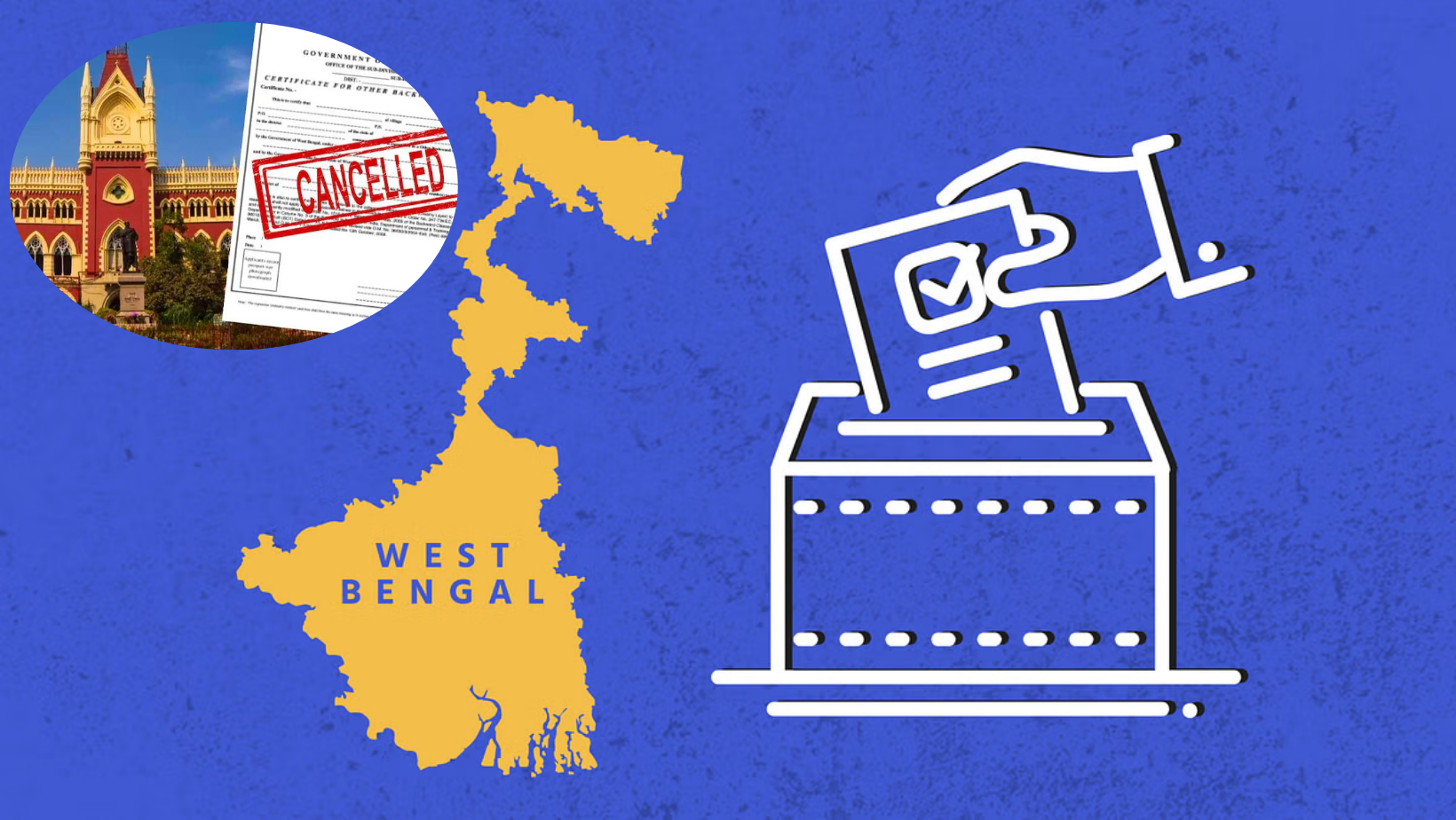
- 25 May 2024
Why is it in the News?
The Calcutta High Court has struck down a series of orders passed by the West Bengal government between March 2010 and May 2012 by which 77 communities (classes), 75 of which were Muslim, were given reservation under the Other Backward Classes (OBC) category.
Context:
- In a significant ruling on Wednesday, the Calcutta High Court dismissed all Other Backward Classes (OBC) certificates issued in West Bengal since 2010.
- A division bench of Justice Tapabrata Chakraborty and Justice Rajasekhar Mantha made this decision while addressing a public interest litigation (PIL) that challenged the process of granting OBC certificates.
- The court directed that a new list of OBCs should be created based on the West Bengal Commission for Backward Classes Act of 1993.
What is the Issue With OBC Certificates?
- In 2010, the West Bengal (WB) government issued notifications, on the recommendations of the West Bengal Backward Classes Commission, including 42 classes (41 from the Muslim community) as Other Backward Classes (OBCs), entitling them to reservation and representation in government employment under Article 16(4) of the Constitution.
- Also in 2010, an order was issued sub-categorizing the 108 identified OBCs in the state (66 pre-existing and 42 newly identified) into 56 OBC-A (more Backward) and 52 OBC-B (Backward) categories.
- In 2012, the West Bengal government included 35 classes (34 from the Muslim community) as OBCs.
- In 2013, the West Bengal Backward Classes (Other than Scheduled Castes and Scheduled Tribes) (Reservation of vacancies and posts) Act 2012 gave recognition to all 77 new OBCs.
- These orders and legislation were challenged in the Calcutta High Court on the grounds that the declaration of classes as OBCs was based purely on religion, the categorization was not based on any acceptable data, and the survey conducted by the Commission was unscientific.
The Calcutta High Court's Ruling on West Bengal's Reservation Policies:
- The court found that religion had been the sole basis for the state government to provide reservation, which is prohibited by the Constitution and court orders.
- The High Court heavily relied on the Supreme Court's judgment in Indra Sawhney v Union of India (Mandal judgment).
- In 1992, a nine-judge Bench held that OBCs cannot be identified and given reservation solely based on religion.
- The Supreme Court also held that all states must establish a Backward Classes Commission to identify and recommend classes of citizens for inclusion and exclusion in the state OBC list.
- The High Court noted that the Commission's recommendation had been made with "lightning speed" and without using any objective criteria to determine the backwardness of these classes.
- The court stated that there is no question that the said communities have been used as a political prop for vote bank politics.
- The court struck down some provisions of West Bengal's 2012 Act, including:
- The provision allowed the state government to sub-classify OBC reservations into OBC-A and OBC-B categories.
- The provision allows the state to amend the Schedule of the 2012 Act to add to the list of OBCs.
- The court held that sub-classification is meant to address different levels of deprivation faced by different communities and could only be done based on scientific data.
- Since the Commission acknowledged that the government did not consult it prior to sub-classification within OBC, the court ruled that the state government must consult the Commission to create a fair and unbiased classification.
The Position on Religiously-Based Reservations in the Constitution and Court Orders:
The Constitution of India:
- Article 15(1) specifically prohibits the state from discriminating against citizens on grounds only of religion and caste (along with sex, race, and place of birth).
- Article 16(2) specifically prohibits the state from discriminating against citizens on grounds only of religion, race, caste, sex, descent, place of birth, residence or any of them, in respect of any employment or office under the State.
The Observations of the Supreme Court:
- In M R Balaji (1962), the SC held that while castes among Hindus may be an important factor to take into account when assessing the social backwardness of certain groups or classes of citizens, it cannot be the only test in this regard.
- In E P Royappa vs State Of Tamil Nadu (1973), the SC held that equality is a dynamic concept and cannot be confined within traditional limits.
- In State of Kerala vs N M Thomas (1975), the SC held that the crucial word 'only' in Articles 15 and Article 16 implies that if a religious, racial, or caste group constitutes a weaker section (under Article 46) or constitutes a backward class, it would be entitled to special provisions for its advancement.
- The SC in Indra Sawhney (1992) laid down that any social group if found to be backward under the same criteria as others, will be entitled to be treated as a backward class.
What are the Current Provisions of Reservation?
- The current provisions of reservation in India stem from the Constituent Assembly's decision to provide employment reservations for Scheduled Castes and Scheduled Tribes under Article 16(4A) of the Constitution.
- Initially approved for a period of 10 years, these reservations have been renewed annually ever since.
- Notably, Christian and Muslim communities within the Scheduled Castes and Scheduled Tribes do not receive reservation benefits.
- The decision not to extend reservation to religious minorities was influenced by the partition, as reflected in Sardar Vallabhbhai Patel's presentation of a special sub-committee report in 1949, addressing the issues faced by minority populations in East Punjab and West Bengal.
- The committee, which included Nehru, Rajendra Prasad, KM Munshi, and Ambedkar, concluded that the country's conditions had changed to such an extent that "in the context of independent India and the present circumstances, it is no longer appropriate to reserve seats for Muslims, Christians, Sikhs, or any other religious minority."
- They believed that reservations for religious communities "may lead to some degree of separatism and, to an extent, contradict the concept of a secular democratic state."
- They argued that the fundamental rights of freedom of religion and the right of minorities to maintain their own educational institutions were sufficient safeguards for protecting minorities.
- However, the Advisory Committee agreed that "the specific situation of the Scheduled Castes would make it necessary to grant them reservation for the originally decided ten-year period."
- Ambedkar attempted to resolve several positions on the caste question by introducing the concept of backwardness and reservation as methods of creating a society beyond caste.
Arguments Related to Religion-based Reservation in India:
Arguments in Favour of Religion-Based Reservations in India:
- Socio-Economic Backwardness: According to the Sachar Committee Report, Muslims in India lag behind other communities in terms of socio-economic indicators such as education, employment, and income.
- Reservations can help in bridging this gap.
- Constitutional Mandate: The Indian Constitution provides for affirmative action for socially and educationally backward classes irrespective of religious and cultural denomination.
- Ensuring Adequate Representation: Reservations can ensure adequate representation of underrepresented religious groups in employment, education, and other fields.
Arguments Against Religion-Based Reservations in India:
- Secularism: Critics argue that providing reservations based on religion goes against the principle of secularism enshrined in the Indian Constitution, which advocates equal treatment of all religions by the state.
- Undermining National Unity: Religion-based reservations could undermine national unity as it could lead to resentment and division among different communities.
- Economic Criteria: Reservations should be based solely on economic criteria rather than religion, to ensure that benefits reach those who are truly economically disadvantaged, irrespective of their religion.
- Administrative Challenges: Implementing reservations based on religion could pose administrative challenges, such as determining the criteria for identifying beneficiaries and preventing misuse of the system.
Way Forward:
- Socio-Economic Criteria: Instead of religion, reservations could be based on socio-economic criteria, ensuring that benefits reach the most disadvantaged individuals regardless of their religion.
- Empowerment Through Education: Focus on improving educational infrastructure and providing skill development programs to empower the backward communities and enhance their socio-economic status.
- Inclusive Policies: Implement inclusive policies that address the specific needs of the backward religious communities in areas such as education, employment, and healthcare, without resorting to religious-based reservations.
- Dialogue and Consensus: Engage in a dialogue involving all stakeholders to arrive at a consensus to address the socio-economic challenges faced by the various communities, ensuring that any measures taken are in line with constitutional values and principles.
Conclusion
While recognizing the socio-economic disparities faced by various religious communities in India, the emphasis on inclusive policies based on socio-economic criteria emerges as pivotal. By prioritizing education empowerment, promoting dialogue, and fostering consensus, India can navigate towards a more equitable and inclusive society. By steering away from religion-based reservations and focusing on holistic development, India can uphold its constitutional values while addressing the diverse needs of its population.
A Message on the Model Code of Conduct for Leaders – From Mahabharata and Beyond
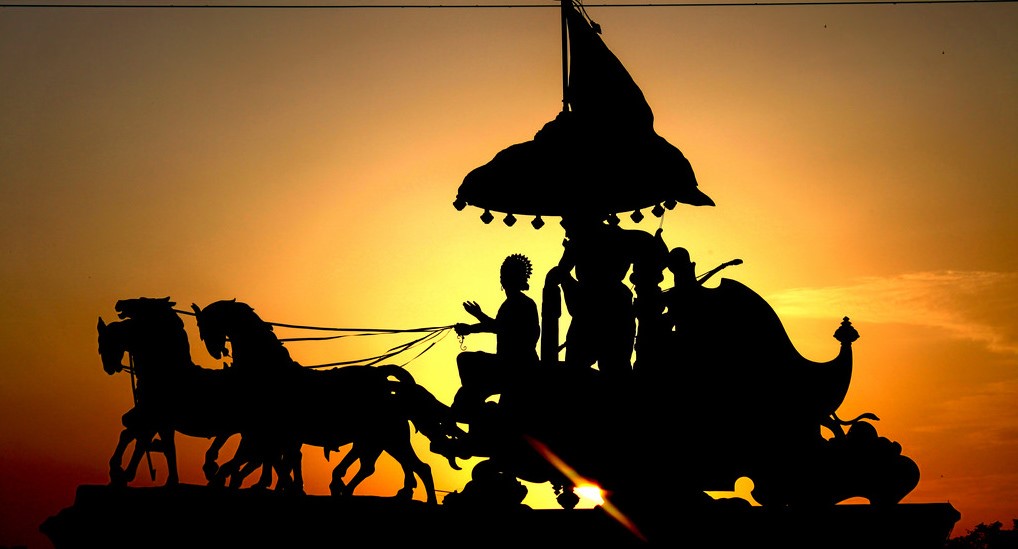
- 24 May 2024
Why is it in the News?
In a democracy, while elections are imperative, it's equally crucial for both the populace and our leaders to retain their moral integrity, as a loss of ethical grounding could result in repercussions that extend far beyond the periodic act of political selection.
Context:
- Satyameva Jayate ("Truth alone triumphs") from the Mundaka Upanishad was adopted as the national motto on January 26, 1950, the day India became a Republic.
- A day earlier, the country's Election Commission was formed with the primary responsibility of enabling citizens to exercise their democratic right to choose a government.
- The Election Commission is expected to provide a level playing field so that candidates, political parties, and their campaigners do not unduly influence voters through excessive use of money, force, or dishonesty.
About The Model Code of Conduct (MCC):
- The Election Commission of India introduced the Model Code of Conduct with the hope that it would encourage self-control among political stakeholders.
- The 2019 Manual emphasized that those seeking public office should behave in a way worthy of being emulated by others.
- The Commission considers the Code an important contribution by political parties to democracy.
- It expects parties to exhibit model behaviour in their actions and rhetoric.
- However, reality often deviates from this expectation. Political discourse sometimes degrades into coarse and ignoble exchanges.
- This has led to debates on whether it should be called a moral code rather than just a model code.
The Complexity of Truth from a Philosophical Perspective:
- Francis Bacon's Essay of Truth commences with Pilate's profound questioning, "What is truth?" - a query that resonates through the ages, its answer shrouded in layers of complexity.
- This intricate nature finds symbolic representation in the Ashokan pillar's trio of visible lions, embodying the three dimensions of truth: my viewpoint, your perspective, and an objective third-person narrative.
- Yet, there exists a fourth, unseen dimension - that of absolute truth, often perceived as knowable only to a higher power.
- Amidst this philosophical labyrinth, the Election Commission of India (ECI) navigates the realm of human imperfection, striving to enforce the Model Code of Conduct (MCC) – a framework designed to curb dishonest practices during the electoral process.
- However, expecting individuals to adhere to this model solely for the duration of elections, if they have not upheld such principles in their daily lives, could be considered a naive endeavor.
The Intersection of Morality and Law in the Electoral Process:
- Foundations of the Model Code of Conduct (MCC):
- At the core of the Model Code of Conduct lies a fundamental interplay between legal requirements and moral expectations.
- Morality governs individual behaviour based on notions of right and wrong, often rooted in cultural, religious, or personal beliefs.
- Law, conversely, comprises rules established by a governing authority to regulate conduct and ensure order and justice within society.
- Philosophical perspectives offer valuable insights into this dynamic. Immanuel Kant's philosophy distinguishes between morality and law, viewing moral actions as those driven by a sense of duty, while societal rules govern legal actions.
- Utilitarianism, advocated by thinkers like Jeremy Bentham and John Stuart Mill, evaluates actions based on their consequences and their contribution to the overall well-being of society.
- In the context of the Model Code of Conduct, this perspective suggests that political behaviour should be assessed not only against legal standards but also by its broader impact on societal harmony and democratic health.
- Legal Framework and Enforcement:
- The legal framework encompassing the Model Code of Conduct includes specific provisions in the Indian Penal Code and the Representation of the People Act, 1951.
- These laws define actions that constitute corrupt practices and electoral offences, providing a legal basis for enforcing the Code.
- However, the intersection of morality and law within this framework presents unique challenges.
- In legal terms, "mens rea" refers to the intention or knowledge of wrongdoing, and establishing mens rea is crucial for proving guilt in many cases.
- The Model Code of Conduct implicitly addresses mens rea by prohibiting actions intended to manipulate or deceive voters, such as false promises or appeals to communal sentiments.
- Sections 123(3) and 123(3A) of the Representation of the People Act classify appeals to caste or communal feelings as corrupt practices, punishable under the law.
- Similarly, Section 125 prohibits promoting enmity between different groups in connection with elections.
- These legal provisions aim to curb divisive tactics and uphold the ethical conduct envisioned by the Model Code of Conduct.
- However, enforcement requires clear evidence linking the actions to the intent of influencing electoral outcomes.
Ethical Reflection in the Electoral Process & Lesson from Mahabharata:
- Upholding Integrity: The imperative for ethical reflection in the electoral process stems from the need to uphold the integrity of democracy itself.
- The conduct of elections must align with the core values of truth and fairness that underpin the democratic ethos.
- Ethical Lesson from Mahabharata: The story of Yudhishthira in the Mahabharata, who lost his moral high ground despite technically telling the truth, underscores the importance of ethics over mere adherence to rules.
- Ethics in elections transcends simply following the law; it involves adhering to higher standards of honesty, integrity, and fairness.
- Moral Soundness over Legal Compliance: Ethical reflection ensures that political actions and decisions are not just legally compliant but also morally sound.
- This is particularly crucial in a democracy, where the legitimacy of the government is derived from the consent of the governed, and this consent must be obtained through fair means.
- Safeguarding Democratic Norms: When ethical standards are compromised, democratic norms such as transparency, accountability, and fairness are weakened.
- This erosion can lead to a governance crisis where the authority of elected officials is questioned, undermining the very foundation upon which democracy rests.
Conclusion
“Satyameva Jayate” is not just India’s motto however it encapsulates a guiding principle that should permeate the conduct of individuals and institutions alike. The Election Commission of India's efforts to enforce the Model Code of Conduct reflect an ongoing struggle to strike a delicate balance between legal enforcement and moral persuasion. For a truly democratic society to thrive, this equilibrium must be continually sought and maintained. The pursuit of political power must never be allowed to erode the foundational value of truth upon which the democratic edifice rests. By upholding the principle of Satyameva Jayate, not just in rhetoric but in action, the integrity of the electoral process and the sanctity of democratic norms can be safeguarded, ensuring that the will of the people remains the cornerstone of governance.
India's Balancing Act: Navigating Iran Relations in the Face of Regional Turmoil and Leadership Transition
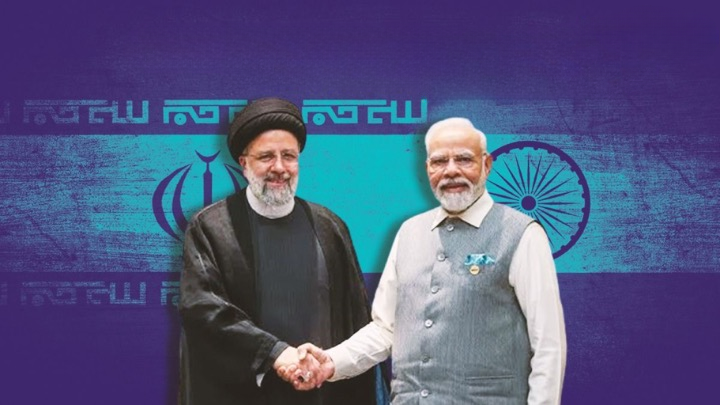
- 23 May 2024
Why is it in the News?
The death of Iran’s President Ebrahim Raisi in a helicopter accident on May 20 has added another layer of uncertainty in a region already wracked by political tensions and war.
Context:
- In the wake of President Ebrahim Raisi's unexpected passing in a helicopter accident on May 20, the geopolitical landscape of the region faces heightened uncertainty.
- Despite the tragic event, the enduring influence of Supreme Leader Ayatollah Ali Khamenei suggests minimal immediate impact on Iran's policies.
- However, this event prompts a closer examination of the evolving dynamics between India and Iran, amidst recent geopolitical shifts.
A Historical Perspective on India-Iran Relations:
- Historical Background: India and Iran share a rich historical tie woven with deep-rooted cultural and economic connections spanning centuries.
- From ancient times, both civilizations have influenced each other in language, culture, and commerce, fostering enduring ties.
- Following India's independence in 1947, formal diplomatic relations were swiftly established between the two nations.
- Despite the divergence of their Cold War alliances—India with the Non-Aligned Movement and Iran aligning with the United States—mutual respect characterized their interactions.
- The Iranian Revolution in 1979 heralded a shift in Iran's ideological stance, yet India remained committed to nurturing bilateral relations, recognizing the significance of regional stability and economic collaboration.
- Economic and Energy Collaboration: Central to the India-Iran partnership is their robust energy cooperation, with Iran serving as a vital supplier of oil and natural gas to India.
- In addressing India's burgeoning energy demands, Iranian resources have played a pivotal role in sustaining India's economic growth.
- The early 2000s witnessed landmark agreements, including long-term oil supply pacts and discussions on strategic pipeline projects like the Iran-Pakistan-India (IPI) gas pipeline.
- Strategic Imperatives; Strategically, India has recognized Iran's pivotal role in shaping the dynamics of the broader West Asian region.
- Both nations have shared interests, notably in fostering stability in Afghanistan.
- Iran's geographic position offers India a strategic gateway to Central Asia, circumventing Pakistan—a factor underscored by India's investments in projects such as the Chabahar port, aimed at bolstering connectivity to Afghanistan and beyond.
Recent Shifts and Implications for India-Iran Relations:
- The Abraham Accords and Evolving Regional Dynamics: The 2020 Abraham Accords, facilitated by the US, introduced a new layer of complexity to regional geopolitics.
- These agreements, which normalized ties between Israel and several Arab nations including the UAE and Bahrain, were perceived as part of a broader US strategy to counterbalance Iran's influence.
- India's active involvement in the I2U2 coalition (India, Israel, UAE, and the US) signals its alignment with this strategy, potentially signalling a departure from traditional bilateral collaborations, a shift Iran has taken note of.
- India-Middle-East Economic Corridor (IMEC) Initiative: The unveiling of the IMEC project during the 2023 G20 summit in New Delhi marks a pivotal development.
- This initiative proposes a transportation network linking India to Israel via the UAE and Saudi Arabia, presenting a strategic alternative route that bypasses Iran.
- The IMEC underscores India's commitment to integrating into evolving economic and strategic frameworks in West Asia, potentially reshaping traditional ties with Iran.
- Impact of US Sanctions: The reinstatement of US sanctions on Iran following the Trump administration's withdrawal from the Joint Comprehensive Plan of Action (JCPOA) in 2018 had profound implications for India-Iran economic relations.
- These sanctions triggered a significant reduction in India's oil imports from Iran, prompting India to seek alternative energy sources.
- While this strained the economic aspect of bilateral ties, India remained interested in advancing projects like the Chabahar port despite the challenges posed by the sanctions.
Strategic Implications and Hurdles with the Chabahar Project:
Strategic Importance:
- The Chabahar endeavour stands as a linchpin within India's regional connectivity and strategic framework.
- Nestled along Iran's southeastern coast, the port furnishes India with direct access to the Arabian Sea, offering a vital alternative to China's Gwadar port under its Belt and Road Initiative.
- Positioned as a gateway to Afghanistan and Central Asia, Chabahar bolsters India's geopolitical foothold, circumventing historical barriers imposed by Pakistan.
- Envisioned as a nucleus of economic activity, the port holds the promise of catalyzing trade and investment between India, Iran, and Afghanistan, unlocking the vast potential of Central Asian markets.
- By fostering Chabahar's development, India aims to provide a counterbalance to China's Gwadar port, positioning itself as a pivotal player in reshaping regional trade dynamics.
Navigating Challenges Amid Strategic Imperatives:
- Despite its strategic allure, the Chabahar project grapples with multifaceted challenges.
- US sanctions have cast a pall over international investments and hindered crucial financial transactions vital for the port's advancement.
- The seismic shift in Afghanistan's political landscape following the Taliban's resurgence has cast uncertainty over the project's trajectory.
- The original tripartite agreement, contingent upon the stability offered by the erstwhile US-backed Ghani regime, now faces an altered reality.
- The enduring viability of Chabahar hinges on regional stability and collaboration, factors further complicated by Iran's economic woes amidst ongoing sanctions.
- Persistent geopolitical tensions pose formidable obstacles to the sustained success of this ambitious undertaking, underscoring the need for adept navigation amid strategic imperatives.
Future Trajectories for India-Iran Relations:
- Pursuing Strategic Autonomy: Chabahar demonstrates India's pursuit of strategic autonomy, allowing it to navigate geopolitical landscapes and assert regional influence.
- Balancing relations with Iran, the US, and other regional players enables India to maintain a multifaceted foreign policy that serves its strategic objectives.
- Leveraging International Cooperation: India could explore collaborations with international partners like the EU to mitigate the impact of US sanctions and garner diplomatic and economic support.
- Strengthening ties with Central Asian countries may enhance Chabahar's economic prospects.
- Commitment to Regional Stability: India's continued engagement with Afghanistan, including humanitarian aid, underscores its commitment to regional stability and connectivity through Chabahar.
- Maintaining a presence in Afghanistan highlights the strategic importance of Chabahar as a key node for regional diplomacy and economic activity.
Conclusion
The sudden demise of Iran's President Ebrahim Raisi exacerbates uncertainty in an already tumultuous region. India must deftly balance its strategic interests amidst competing regional powers and the intricate landscape of geopolitical rivalries and international sanctions. The revival of the Chabahar project exemplifies India's strategic adaptability but also underscores the precarious nature of its regional engagements. India's ability to exhibit strategic foresight and diplomatic finesse will be crucial in effectively navigating the ever-changing geopolitical environment.
C Raja Mohan writes: A time for para diplomacy
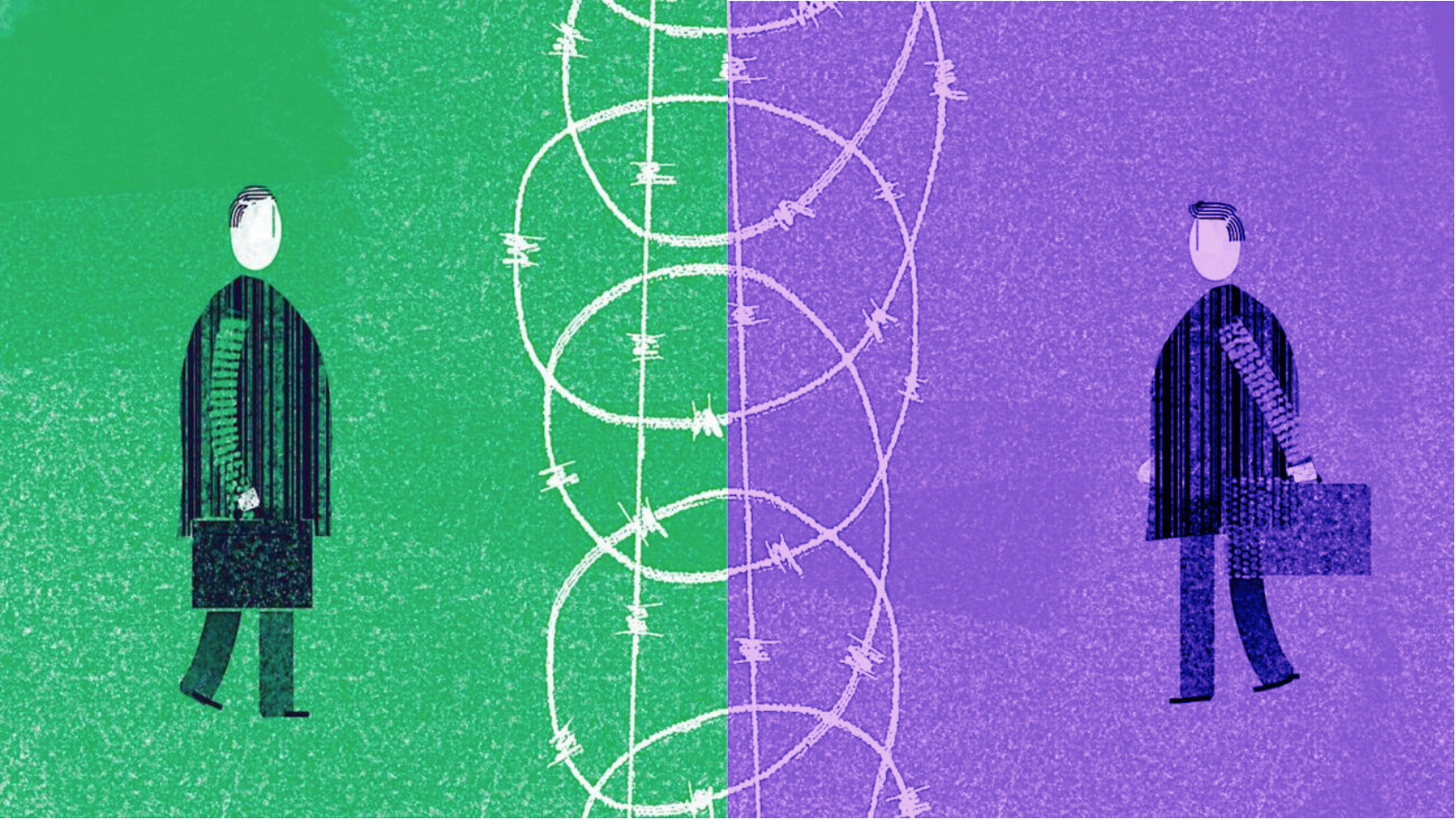
- 22 May 2024
Why is it in the News?
Recently, the Shiromani Akali Dal came out with its poll manifesto and said it would seek the transfer of Kartarpur Sahib from Pakistan to India through mutual land exchange between the two countries.
Context:
- The Shiromani Akali Dal's (SAD) proposal to retrieve Kartarpur Sahib from Pakistan through a negotiated territory exchange reflects a growing desire to transform the India-Pakistan border from a zone of conflict to one of cooperation and economic integration.
- This idea might appear as unlikely as the Bharatiya Janata Party's (BJP) pledge to integrate Pakistan-occupied Kashmir (PoK) into India.
- Nonetheless, it signifies a profound aspiration to transform the India-Pakistan border from a contentious zone into one characterized by cooperation and economic integration.
What is Para Diplomacy?
Origins of Paradiplomacy:
- The concept of para-diplomacy was first proposed in 1990 by John Kincaid, an American scholar who outlined a foreign policy role for local governments within a democratic federal system.
- Economic para diplomacy related to trade and investment in particular has become an institutionalised practice across the world – in federal states like the United States, Canada and Belgium, quasi-federal states like Spain, non-federal states like Japan and even non-democratic states like the People’s Republic of China.
Aims and Objectives of Paradiplomacy:
- Paradiplomacy can be employed with a variety of aims which can range from bringing in a decentralised dimension to international debates to internationalisation of domestic issues by bringing regional issues onto the global stage, promoting trade, tourism, cultural ties and even post-conflict reconciliation to local political activism being sought for international support.
- Subnational relations can also be conducted to promote and attract investments seeking region-specific economic advantages.
Drivers of Paradiplomacy:
- In more ways than one, paradiplomacy owes its origins to globalisation.
- As the world economy has become increasingly global and increasingly integrated in a variety of ways, sub-national units (regions, states, provinces and even cities) find their functions and activities circumscribed by the global system.
- Federalism is also a key contributor to the growth of paradiplomacy.
- Sub-national actors such as states and provinces that have a formal legal personality are necessarily more likely to engage in international activities designed to promote and protect local and international interests and prerogatives.
What are the Challenges Associated with BJP and SAD’s Territorial Ambitions?
- Practical Hurdles in BJP and SAD's Territorial Objectives: The proposals put forth by the SAD to renegotiate the Radcliffe Line in Punjab or the BJP's assertion to reclaim PoK face numerous challenges.
- Altering the territorial status quo in Punjab or reclaiming PoK, whether through diplomatic negotiations or by force, presents formidable obstacles.
- Complexities and Resistance: Such endeavours would not merely disrupt the already delicate territorial equilibrium but also provoke substantial opposition, given the deep-rooted historical and ongoing tensions between India and Pakistan.
- Pursuing a Pragmatic Approach: A more viable alternative lies in reimagining these borders as conduits for trade and collaboration rather than confrontation.
- This pragmatic stance resonates with the SAD's additional proposal to reopen the Attari and Hussainiwala borders with Pakistan for trade and tourism, with the aim of fostering economic prosperity in the region.
Obstacles Hindering Economic Cooperation Between India and Pakistan:
- Political and Military Resistance in Pakistan: One of the foremost barriers to economic cooperation stems from the entrenched position of Pakistan's military and political establishment.
- Over the years, the Pakistani military's steadfast opposition to economic engagement with India, primarily due to unresolved issues surrounding Kashmir, has been a significant deterrent.
- Despite occasional signs of thaw, such as the February 2021 ceasefire agreement, internal resistance has consistently impeded progress.
- Even Prime Minister Imran Khan's tentative consideration of resuming trade ties with India faced vehement opposition, highlighting the deep-seated reluctance to normalize relations without addressing the Kashmir dispute.
- Historical Context and Suspicion: The historical animosities dating back to the traumatic partition of 1947 and subsequent wars have entrenched mutual suspicion and distrust between the two nations.
- These historical grievances have not only shaped national narratives but also influenced contemporary policy decisions.
- Addressing underlying political tensions becomes imperative for either country to fully commit to economic cooperation.
- Lack of Reciprocal Trade Policies: On the trade front, Pakistan's refusal to grant India the Most Favoured Nation (MFN) status remains a significant hurdle.
- While India extended this status to Pakistan in 1996 to foster trade ties, the gesture was not reciprocated.
- Subsequent events, such as India's withdrawal of MFN status post the Pulwama terror attack and the revocation of Jammu and Kashmir's special constitutional status, have further strained bilateral trade relations.
- Economic Rationality vs. Political Baggage: Despite the evident economic benefits of trade, Pakistan's establishment remains wary of engaging with India due to historical conflicts and the overarching Kashmir issue.
- While there have been instances where the Pakistani business community advocated for resuming trade ties, such appeals often faced resistance from the political and military elite, who prioritize geopolitical concerns over economic pragmatism.
- Regional Stability and Security Concerns: Security concerns, including allegations of cross-border terrorism, complicate the economic relationship between India and Pakistan.
- Heightened military vigilance and frequent skirmishes along the border hinder trade and perpetuate an environment of hostility and mistrust.
- The ongoing conflict and the threat of terrorist activities cast a shadow over efforts to normalize trade relations.
Proposing a New Strategy for Improving India-Pakistan Relations:
- Introduction of Special Economic Zones: A significant aspect of the SAD's manifesto is the proposition to convert the Punjab border into a special economic zone, aiming to nurture small and medium enterprises and potentially revolutionize India-Pakistan relations.
- This innovative vision encompasses the idea of Pakistan establishing a parallel zone on its side, fostering integrated development and economic interdependence.
- Drawing inspiration from successful models of cross-border economic zones in Southeast Asia and China's collaborative initiatives with neighbouring countries, such an endeavour holds promise for fostering mutual prosperity.
- Leveraging Para Diplomacy: At the heart of these proposals lies the concept of para diplomacy, or sub-state diplomacy, wherein provincial and local governments engage in formal interactions to advance national interests.
- This approach offers a novel means to navigate around the entrenched positions often held by national governments, presenting fresh avenues for cooperation.
- While historical attempts at para diplomacy between East and West Punjab have surfaced intermittently, they have struggled to endure amidst overarching national conflicts.
- Embracing these innovative strategies could pave the way for a constructive dialogue and sustainable cooperation between India and Pakistan, fostering mutual understanding and prosperity in the region.
Fostering Consensus and Cooperative Federalism for Sustainable India-Pakistan Relations:
- To foster sustainable and productive economic cooperation between India and Pakistan, nurturing a robust consensus between the central government and state governments, particularly those in the border regions, is imperative.
- This collaborative approach, known as cooperative federalism, holds the key to innovative diplomatic strategies that prioritize the interests of local populations.
- India's federal structure has historically grappled with tensions between the central and state governments, particularly concerning foreign policy and cross-border cooperation.
- The diverse political landscapes across Indian states often give rise to conflicting interests and priorities.
- For example, West Bengal's interactions with Bangladesh have been marked by complexities stemming from differing perspectives between the state leadership and the central government.
- Similarly, Tamil Nadu's influence on India's policies towards Sri Lanka has been substantial, occasionally complicating bilateral relations due to the state's concerns for the Tamil population in Sri Lanka.
- Cooperative federalism entails the harmonious collaboration of national and state governments to achieve shared objectives while respecting the autonomy of state governments.
- By aligning state objectives with national interests, this approach offers a pragmatic framework for managing border relations and fostering economic cooperation with neighbouring countries.
- Embracing consensus and cooperative federalism is paramount for forging a path towards peace, stability, and prosperity in the region, laying the groundwork for enduring and mutually beneficial relations between India and Pakistan.
Why is it in the News?
Recently, the Shiromani Akali Dal came out with its poll manifesto and said it would seek the transfer of Kartarpur Sahib from Pakistan to India through mutual land exchange between the two countries.
Context:
- The Shiromani Akali Dal's (SAD) proposal to retrieve Kartarpur Sahib from Pakistan through a negotiated territory exchange reflects a growing desire to transform the India-Pakistan border from a zone of conflict to one of cooperation and economic integration.
- This idea might appear as unlikely as the Bharatiya Janata Party's (BJP) pledge to integrate Pakistan-occupied Kashmir (PoK) into India.
- Nonetheless, it signifies a profound aspiration to transform the India-Pakistan border from a contentious zone into one characterized by cooperation and economic integration
What is Para Diplomacy?
Origins of Paradiplomacy:
- The concept of para-diplomacy was first proposed in 1990 by John Kincaid, an American scholar who outlined a foreign policy role for local governments within a democratic federal system.
- Economic para diplomacy related to trade and investment in particular has become an institutionalised practice across the world – in federal states like the United States, Canada and Belgium, quasi-federal states like Spain, non-federal states like Japan and even non-democratic states like the People’s Republic of China.
Aims and Objectives of Paradiplomacy:
- Paradiplomacy can be employed with a variety of aims which can range from bringing in a decentralised dimension to international debates to internationalisation of domestic issues by bringing regional issues onto the global stage, promoting trade, tourism, cultural ties and even post-conflict reconciliation to local political activism being sought for international support.
- Subnational relations can also be conducted to promote and attract investments seeking region-specific economic advantages.
Drivers of Paradiplomacy:
- In more ways than one, paradiplomacy owes its origins to globalisation.
- As the world economy has become increasingly global and increasingly integrated in a variety of ways, sub-national units (regions, states, provinces and even cities) find their functions and activities circumscribed by the global system.
- Federalism is also a key contributor to the growth of paradiplomacy.
- Sub-national actors such as states and provinces that have a formal legal personality are necessarily more likely to engage in international activities designed to promote and protect local and international interests and prerogatives.
What are the Challenges Associated with BJP and SAD’s Territorial Ambitions?
- Practical Hurdles in BJP and SAD's Territorial Objectives: The proposals put forth by the SAD to renegotiate the Radcliffe Line in Punjab or the BJP's assertion to reclaim PoK face numerous challenges.
- Altering the territorial status quo in Punjab or reclaiming PoK, whether through diplomatic negotiations or by force, presents formidable obstacles.
- Complexities and Resistance: Such endeavours would not merely disrupt the already delicate territorial equilibrium but also provoke substantial opposition, given the deep-rooted historical and ongoing tensions between India and Pakistan.
- Pursuing a Pragmatic Approach: A more viable alternative lies in reimagining these borders as conduits for trade and collaboration rather than confrontation.
- This pragmatic stance resonates with the SAD's additional proposal to reopen the Attari and Hussainiwala borders with Pakistan for trade and tourism, with the aim of fostering economic prosperity in the region.
Obstacles Hindering Economic Cooperation Between India and Pakistan:
- Political and Military Resistance in Pakistan: One of the foremost barriers to economic cooperation stems from the entrenched position of Pakistan's military and political establishment.
- Over the years, the Pakistani military's steadfast opposition to economic engagement with India, primarily due to unresolved issues surrounding Kashmir, has been a significant deterrent.
- Despite occasional signs of thaw, such as the February 2021 ceasefire agreement, internal resistance has consistently impeded progress.
- Even Prime Minister Imran Khan's tentative consideration of resuming trade ties with India faced vehement opposition, highlighting the deep-seated reluctance to normalize relations without addressing the Kashmir dispute.
- Historical Context and Suspicion: The historical animosities dating back to the traumatic partition of 1947 and subsequent wars have entrenched mutual suspicion and distrust between the two nations.
- These historical grievances have not only shaped national narratives but also influenced contemporary policy decisions.
- Addressing underlying political tensions becomes imperative for either country to fully commit to economic cooperation.
- Lack of Reciprocal Trade Policies: On the trade front, Pakistan's refusal to grant India the Most Favoured Nation (MFN) status remains a significant hurdle.
- While India extended this status to Pakistan in 1996 to foster trade ties, the gesture was not reciprocated.
- Subsequent events, such as India's withdrawal of MFN status post the Pulwama terror attack and the revocation of Jammu and Kashmir's special constitutional status, have further strained bilateral trade relations.
- Economic Rationality vs. Political Baggage: Despite the evident economic benefits of trade, Pakistan's establishment remains wary of engaging with India due to historical conflicts and the overarching Kashmir issue.
- While there have been instances where the Pakistani business community advocated for resuming trade ties, such appeals often faced resistance from the political and military elite, who prioritize geopolitical concerns over economic pragmatism.
- Regional Stability and Security Concerns: Security concerns, including allegations of cross-border terrorism, complicate the economic relationship between India and Pakistan.
- Heightened military vigilance and frequent skirmishes along the border hinder trade and perpetuate an environment of hostility and mistrust.
- The ongoing conflict and the threat of terrorist activities cast a shadow over efforts to normalize trade relations.
Proposing a New Strategy for Improving India-Pakistan Relations:
- Introduction of Special Economic Zones: A significant aspect of the SAD's manifesto is the proposition to convert the Punjab border into a special economic zone, aiming to nurture small and medium enterprises and potentially revolutionize India-Pakistan relations.
- This innovative vision encompasses the idea of Pakistan establishing a parallel zone on its side, fostering integrated development and economic interdependence.
- Drawing inspiration from successful models of cross-border economic zones in Southeast Asia and China's collaborative initiatives with neighbouring countries, such an endeavour holds promise for fostering mutual prosperity.
- Leveraging Para Diplomacy: At the heart of these proposals lies the concept of para diplomacy, or sub-state diplomacy, wherein provincial and local governments engage in formal interactions to advance national interests.
- This approach offers a novel means to navigate around the entrenched positions often held by national governments, presenting fresh avenues for cooperation.
- While historical attempts at para diplomacy between East and West Punjab have surfaced intermittently, they have struggled to endure amidst overarching national conflicts.
- Embracing these innovative strategies could pave the way for a constructive dialogue and sustainable cooperation between India and Pakistan, fostering mutual understanding and prosperity in the region.
Fostering Consensus and Cooperative Federalism for Sustainable India-Pakistan Relations:
- To foster sustainable and productive economic cooperation between India and Pakistan, nurturing a robust consensus between the central government and state governments, particularly those in the border regions, is imperative.
- This collaborative approach, known as cooperative federalism, holds the key to innovative diplomatic strategies that prioritize the interests of local populations.
- India's federal structure has historically grappled with tensions between the central and state governments, particularly concerning foreign policy and cross-border cooperation.
- The diverse political landscapes across Indian states often give rise to conflicting interests and priorities.
- For example, West Bengal's interactions with Bangladesh have been marked by complexities stemming from differing perspectives between the state leadership and the central government.
- Similarly, Tamil Nadu's influence on India's policies towards Sri Lanka has been substantial, occasionally complicating bilateral relations due to the state's concerns for the Tamil population in Sri Lanka.
- Cooperative federalism entails the harmonious collaboration of national and state governments to achieve shared objectives while respecting the autonomy of state governments.
- By aligning state objectives with national interests, this approach offers a pragmatic framework for managing border relations and fostering economic cooperation with neighbouring countries.
- Embracing consensus and cooperative federalism is paramount for forging a path towards peace, stability, and prosperity in the region, laying the groundwork for enduring and mutually beneficial relations between India and Pakistan.
Conclusion
Irrespective of its political orientation, the upcoming Indian government should regard para-diplomacy as a strategic asset in its foreign policy arsenal. This approach demands not only robust dialogue between the central government and the border provinces but also concerted efforts to align the interests of the inhabitants of these regions with broader national objectives. By embracing para diplomacy, India can lay the groundwork for a more harmonious and economically fruitful relationship with Pakistan, turning contentious borders into conduits of cooperation.
Critical Times Call for Strong Judicial Adjudication
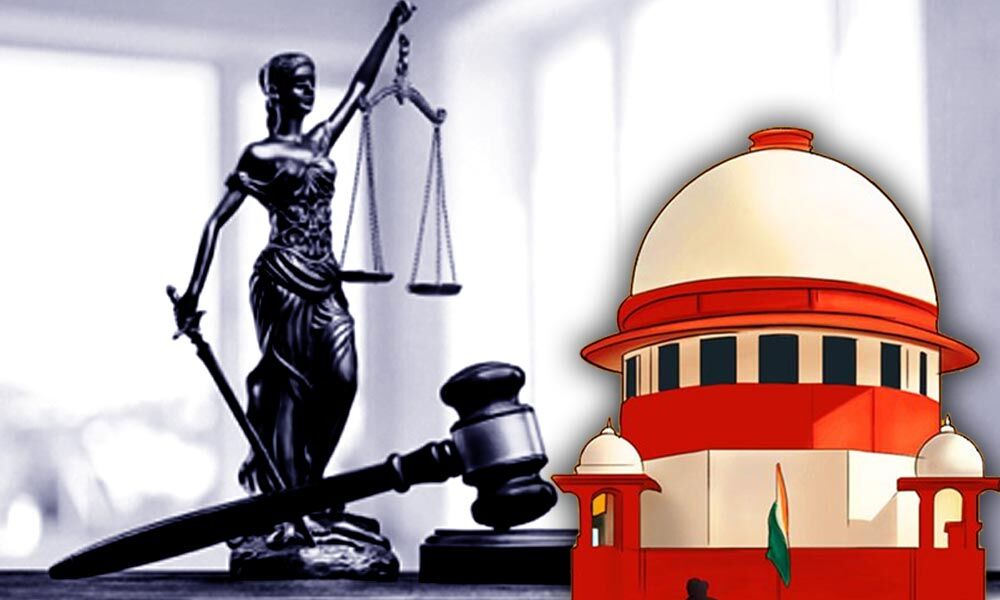
- 21 May 2024
Why is it in the News?
The process of judicial review should be strong, immediate, and unambiguous in the case of statutes that are obviously unconstitutional or divisive.
Context:
- The role of judicial review has become increasingly significant in contemporary times.
- The Supreme Court of India is currently examining a crucial case regarding the constitutionality of the Citizenship (Amendment) Act (CAA) and its associated rules.
- The ambiguity in these rules has raised concerns, especially for applicants whose citizenship requests have been denied, highlighting the urgent need for redress.
- Additionally, the issue of dual citizenship for foreign applicants, without renouncing their original citizenship, has created a conflict with the law.
- This ambiguity goes against the Parent Act's spirit, as some petitioners pointed out.
Legislative Malice, Judicial Review, and the Challenge of Populist Regimes:
- Constitutional courts do not routinely interdict statutes or statutory rules, as laws passed by Parliament are generally presumed valid unless proven to contravene constitutional provisions.
- Moreover, the legal doctrine maintains that malice cannot typically be attributed to the legislative process, as established in Manish Kumar vs Union of India (2021).
- In Gurudevdatta Vikoos Maryadit vs State Of Maharashtra (2001), the Supreme Court further emphasized that "legislative malice is beyond the pale of jurisdiction of the law courts."
- However, this conventional wisdom may be insufficient when addressing the unique challenges posed by populist regimes employing motivated legislation.
- As populist governments worldwide increasingly weaponize legislation to further their political agendas, the question arises as to whether constitutional courts should reconsider their stance on legislative malice.
- Given the potential for populist regimes to undermine democratic principles and erode the rule of law, the need for robust judicial review has never been greater.
- In light of these challenges, a careful reevaluation of the limits of judicial intervention may be necessary to ensure that the rights and freedoms enshrined in constitutional democracies are protected from malicious legislative actions.
Judicial Challenges and Lessons from the Recent Cases:
- Recent cases have highlighted the pressing need for a more proactive judiciary in safeguarding democratic principles and the rule of law.
- In Vivek Narayan Sharma vs Union of India (2023), the irreversible consequences of the absence of judicial intervention regarding Kashmir's special status were brought to the forefront.
- The Anoop Baranwal vs Union of India (2023) case underscored the necessity for an independent body to select the Election Commission of India (ECI).
- However, the Chief Election Commissioner and other Election Commissioners (Appointment, Conditions of Service and Term of Office) Act, 2023, reintroduced the "Prime Minister's Committee" system for ECI appointments, raising concerns about the impartiality of the selection process.
- When this Act was challenged in Jaya Thakur vs Union of India (2024), the Court declined to halt its implementation, citing the presumption of validity.
- This decision exemplifies how an overly deferential approach to legislative actions can potentially jeopardize democratic institutions and processes.
Case Studies and Implications of Targeted Legislation:
- The Citizenship (Amendment) Act (CAA): CAA exemplifies targeted legislation, as it explicitly excludes Muslims from the citizenship application process, demonstrating a clear case of legislative malice through religious categorization.
- Tripple Talaq case: Another instance of targeted legislation is the Muslim Women (Protection of Rights on Marriage) Act (2019), which criminalized instant triple talaq.
- Despite the Supreme Court declaring instant triple talaq void in Shayara Bano (2017), the Act's criminalization of an already legally invalid practice appears excessive and unnecessary.
- Unintended effects: Unintended consequences have arisen from the triple talaq legislation, as some individuals now resort to alternative divorce methods or desertion to avoid potential legal repercussions.
- Although the law aimed to protect Muslim women, it has paradoxically worsened their situation.
- Furthermore, such divisive measures have inspired similar legislation in other states, such as anti-conversion laws, perpetuating social divisions.
- These cases reveal the need for a vigilant judiciary to scrutinize targeted legislation and ensure that laws do not perpetuate discrimination or undermine fundamental rights.
- Addressing legislative malice is essential for preserving the integrity of democratic institutions and upholding constitutional principles.
Judicial Scrutiny in Contemporary Politics: International Perspectives and Indian Precedents
- The Evolution of Judicial Scrutiny in Modern Politics: Traditionally, the United States has been cautious about judicial nullification of statutes based on malicious intent.
- John Hart Ely argued that using the Constitution to penalize perceived ill intentions of political leaders is inappropriate.
- Susannah W. Pollvogt's Viewpoint on Discriminatory Law: However, in today's political climate, where legislative actions driven by malice are increasingly common, a growing need for more rigorous judicial scrutiny has emerged.
- Scholar Susannah W. Pollvogt contends that animus, or hostility, can never justify discriminatory state actions under equal protection analysis.
- She cites the United States Dept. of Agriculture vs Moreno (1973) to illustrate how legislation targeting specific groups reflects discriminatory intent and a desire to cause harm.
- Indian Legal Precedents for Judicial Intervention: In India, there are instances where the Supreme Court has intervened to halt the implementation of parliamentary legislation.
- In Ashoka Kumar Thakur vs Union of India (2007), the Court issued a judicial injunction regarding the allocation of a 27% quota for Other Backward Community (OBC) candidates in professional colleges.
- More recently, in Rakesh Vaishnav vs Union of India (2021), the Supreme Court's stay order on three controversial farm laws effectively prevented their enforcement.
- This intervention eventually led to the government's withdrawal of the laws amidst widespread farmer protests.
- These cases demonstrate the vital role of the judiciary in safeguarding fundamental rights and democratic principles.
- As legislative malice becomes more prevalent, judicial scrutiny must evolve to ensure that laws do not perpetuate discrimination or undermine constitutional values.
Conclusion
To protect constitutional principles and democratic values, judicial review must be prompt, vigorous, and unambiguous when confronted with divisive or unconstitutional statutes. The Supreme Court should learn from its past decisions and recognize the political impact of its actions, particularly during critical moments. Delayed adjudication can render constitutional review ineffective, making time-sensitive intervention essential in addressing malicious and unconstitutional legislation.
Hyperpoliticisation of Indian Higher Education
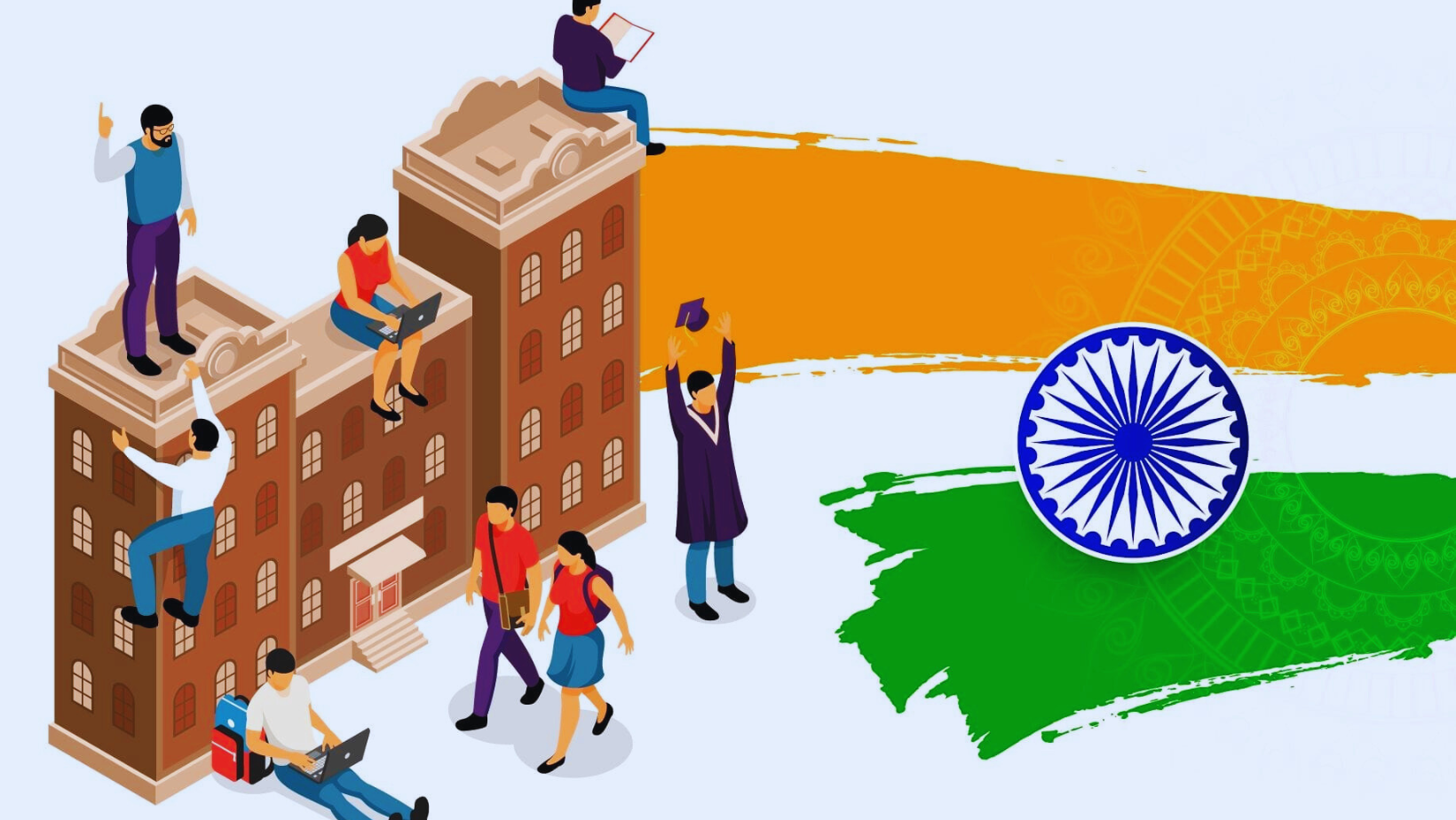
- 20 May 2024
Why is it in the News?
The hyperpoliticisation of Indian higher education is a grave threat to academic institutions, the academic profession, and intellectual life in general.
Context:
- The higher education system in India is one of the largest globally, showcasing its rich historical legacy and future ambitions.
- The country is home to an impressive range of institutions, including the globally renowned Indian Institutes of Technology (IITs) and Indian Institutes of Management (IIMs), as well as a vast network of universities and colleges.
- Notably, the QS World University Rankings for Asia 2024 highlight India as having the most represented higher education system.
- However, this expansive framework faces numerous challenges and opportunities that shape the current higher education landscape in India.
- While access has significantly expanded, concerns about quality, relevance, and the ability to prepare youth for the 21st century remain.
- Additionally, recent reports have pointed to a troubling trend of increasing politicization within Indian higher education institutions, which threatens academic freedom, intellectual discourse, and overall educational quality.
Current Status of Higher Education in India:
As per the All India Survey of Higher Education (AISHE) 2021-22, released in January 2024:
- Student Enrolment: Higher education institutes have seen a significant rise in student enrolment, reaching 4.33 crore in 2021-22 from 4.14 crore in 2020-21 and 3.42 crore in 2014-15.
- Notably, women's enrolment has surged by 32% to 2.07 crore in 2021-22 from 1.5 crore in 2014-15, with the highest proportion enrolled at the postgraduate level (55.4%).
- Gross Enrolment Ratio (GER) and Gender Parity Index (GPI): India's estimated GER for the age group 18-23 years stands at 28.4%.
- The GPI, reflecting the female GER to male GER ratio, is 1.01 at the national level, indicating gender parity.
- Discipline-wise Enrolment: At the undergraduate level, the Bachelor of Arts (BA) programme leads with 34.2% enrolment, followed by science (14.8%), commerce (13.3%), and engineering and technology (11.8%).
- Social science dominates postgraduate enrolment, with around 10.8 lakh students.
- Primacy of Government Institutions: Government universities attract 73.7% of all students, despite comprising only 58.6% of all universities.
- State public universities hold the largest share of enrolment, accounting for approximately 31% of government-owned universities.
Current Challenges in India's Higher Education System:
- Politicization and Lack of Autonomy: Concerns arise regarding the growing politicization of higher education institutions, including allegations of political interference in appointments and curriculum decisions.
- Many institutions lack autonomy in crucial areas like faculty recruitment and curriculum design, hindering innovation and adaptability.
- Inequitable Access and Low GER: Access to higher education remains unequal, with disparities based on socio-economic status, gender, and geography.
- Although India's Gross Enrolment Ratio (GER) has improved (currently 28.4%), it still falls below the global average of 36.7%.
- Limited Funding: Budget cuts in the education sector, including a 7% reduction in the Interim Budget 2024-25 and a 61% decrease in the allocation for the University Grants Commission, pose significant challenges.
- Despite rising Gross Expenditure on Research and Development (GERD), India's R&D investment as a percentage of GDP lags behind other countries.
- Shortage of Faculty and Brain Drain: There is a severe shortage of qualified faculty members in Indian higher education institutions, with over 30% of teaching positions vacant in 45 Central Universities as of 2023.
- The brain drain of talented academics to other countries or the private sector exacerbates this issue.
- Inadequate Industry-Academia Collaboration: Insufficient collaboration between higher education institutions and industries leads to a skill gap among graduates, with a significant demand-supply gap in key roles such as ML engineer and data scientist.
- Uneven Regional Development: Higher education institutions' development varies across regions and states, with states like Delhi, Tamil Nadu, and Maharashtra hosting more reputed institutions compared to northeastern and central regions, which face challenges in terms of quality and access.
How Can the Higher Education System in India Be Revamped?
- Redefine Universities' Role: Shift focus from rote learning to practical skill development through project-based learning, internships, and industry collaborations.
- Encourage universities to engage with local communities on social development projects, promoting social responsibility among students.
- Transform institutes from "Degree Issuers" to "Skill Generators."
- Open Educational Resources (OER): Enhance the National Digital Library of India and promote the development and adoption of open educational resources, like MIT OpenCourseWare, providing free access to quality educational materials.
- This approach could reduce costs, enhance access, and foster a culture of knowledge sharing.
- Entrepreneurship and Innovation Centers: Establish dedicated centres within universities, inspired by Stanford University's StartX program, offering mentorship, funding opportunities, and a supportive ecosystem for students and faculty to transform innovative ideas into successful ventures.
- Dual Study Programs: Implement phase-wise dual study programs, inspired by Germany's apprenticeship model, where students combine theoretical learning at universities with practical training in companies.
- This approach ensures industry-relevant skill development and enhances employability.
- Competency-based Credentialing and Blockchain Certificates: Implement a competency-based credentialing system that recognizes skills and competencies acquired through various learning pathways.
- Leverage blockchain technology to issue tamper-proof, verifiable digital certificates and credentials, promoting lifelong learning, skill-based education, and recognition of diverse learning experiences.
- Transnational Education Partnerships: Promote collaborations with reputed international universities for joint degrees, twinning programs, or branch campuses.
- This approach could enhance global exposure, facilitate knowledge transfer, and improve the international competitiveness of Indian higher education.
Key Government Initiatives in Higher Education:
- National Education Policy (NEP) 2020: Aims to transform the education system, focusing on multidisciplinary learning, skill development, and promoting research and innovation.
- It proposes increasing the Gross Enrollment Ratio in higher education to 50% by 2035.
- Institutions of Eminence (IoE) Scheme: Launched in 2018, this scheme selects 20 institutions to enjoy complete autonomy, aiming to improve their global rankings and enhance higher education quality.
- National Credit Framework: Designed to integrate training and skill development into the education system.
- Credits earned by students will be stored digitally in the Academic Bank of Credits, accessible via a linked Digilocker account.
- Revamped Accreditation and Ranking Systems: The National Institutional Ranking Framework (NIRF) ranks higher education institutions across categories, while the revamped National Assessment and Accreditation Council (NAAC) ensures quality standards among institutions.
- Digital Initiatives: SWAYAM, an online learning platform, offers courses from school to postgraduate levels.
- The National Digital Library of India provides access to educational resources.
- SHE under INSPIRE: The Scholarship for Higher Education (SHE) program, part of the Innovation in Science Pursuit for Inspired Research (INSPIRE) by the Department of Science and Technology (DST), supports deserving students in basic and natural sciences at undergraduate, postgraduate levels and encourages research careers through scholarships.
- Study in India Program: Launched in 2018, this program attracts international students by offering scholarships and streamlining admission processes.
- Foreign Institutions in India: The University Grants Commission's 2023 regulations allow foreign universities ranked among the world's top 500 to establish branch campuses in India.
Conclusion
India's higher education sector is undergoing significant reforms and initiatives aimed at enhancing quality, accessibility, and global competitiveness. Through policies like the National Education Policy 2020 and programs such as Institutions of Eminence, the government is prioritizing multidisciplinary learning, skill development, and research promotion. Digital initiatives like SWAYAM and the Study in India Program further contribute to modernizing and internationalizing higher education, while efforts to attract foreign institutions and scholarships underscore India's commitment to fostering innovation and excellence in education.
SC Verdict on Newsclick Highlights the Vitality of Adhering to Due Process Beyond Formalities
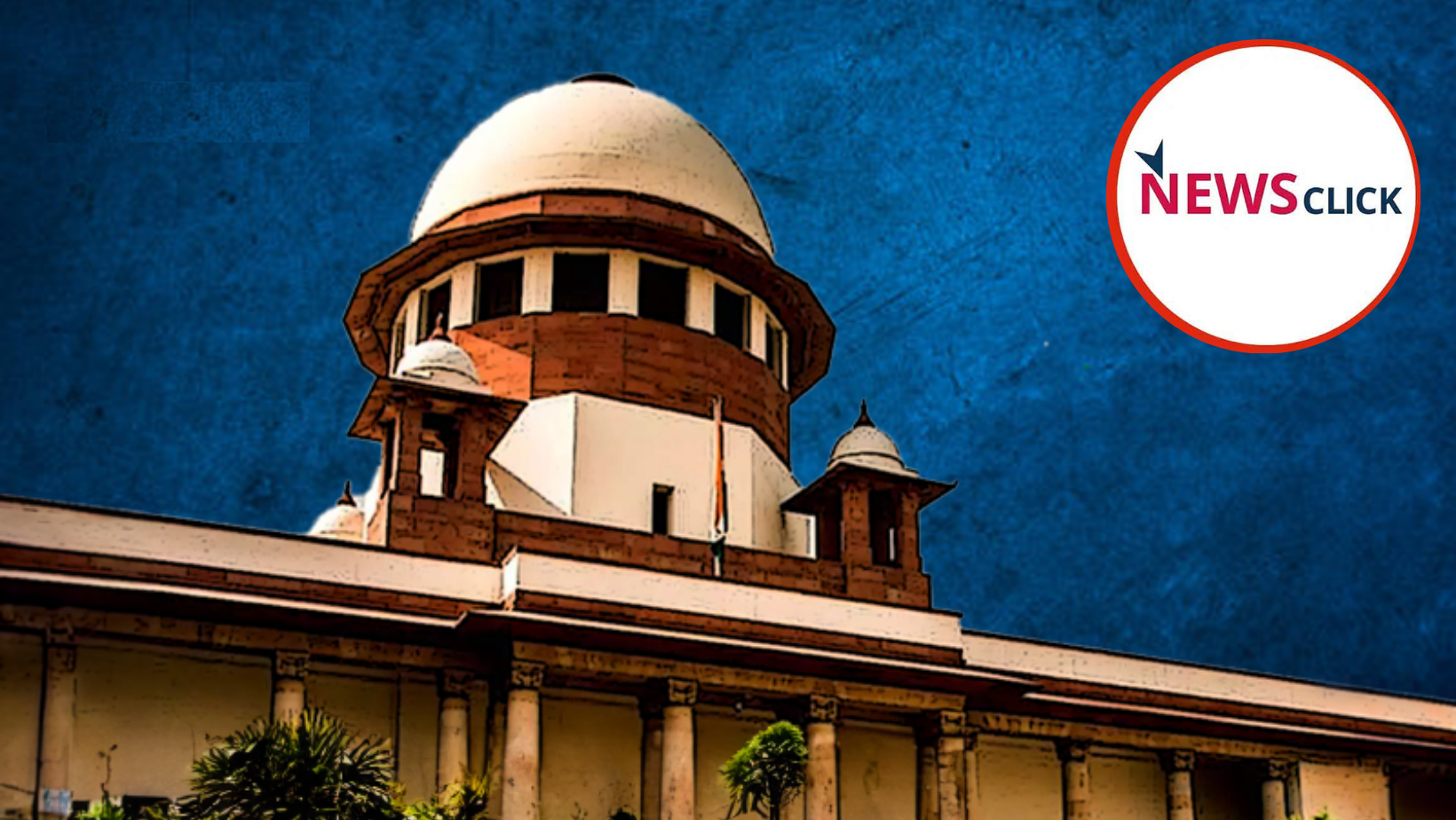
- 17 May 2024
Why is it in the News?
The Supreme Court recently ordered the release of NewsClick Editor Prabir Purkayastha after hearing his plea, challenging the arrest by Delhi Police in an Unlawful Activities Prevention Act (UAPA) case.
Context:
- The recent ruling by the Supreme Court of India reaffirms its dedication to due process, dispelling assertions of subservience to the executive branch.
- Through a landmark judgment, the Court underscored the indispensable role of due process, especially concerning the arrest and detention of Prabir Purkayastha, founder-editor of Newsclick.
- This verdict emphasizes the crucial disparity between reasons for arrest and the grounds for arrest, emphasizing that the latter must be tailored to the individual and formally communicated in writing to safeguard personal liberty.
Why did the Supreme Court Invalidate Purkayastha’s Arrest?
- The court invalidated the arrest due to the absence of provided grounds, citing a precedent set in the Pankaj Bansal case (2023).
- This landmark ruling emphasized the constitutional right, under Article 22(1), to be informed about the grounds of arrest in writing, deeming any infringement of this right as vitiating the arrest and remand process.
- Furthermore, the verdict underscored the fundamental and statutory right of an arrested person to receive a written copy of the grounds of arrest without exception.
- The court criticized the clandestine manner in which the procedure was conducted, noting that the accused was deprived of the opportunity to defend himself and avail legal representation.
- Additionally, the judgment clarified that an FIR serves to initiate criminal proceedings and is not exhaustive in detailing grounds of arrest.
- The court emphasized that the grounds of arrest must convey specific, personal facts to the accused, distinct from general reasons for arrest.
What is the Due Process of Law?
- Due process of law is a foundational legal principle that ensures the fair and just application of laws while protecting individual rights.
- The concept requires the state to adhere to established legal rules and principles in every case, ensuring that all legal rights owed to a person are respected.
- It serves as a safeguard against the arbitrary exercise of government power.
Significance:
- Fairness and Reasonableness: Due process emphasizes fairness, reasonableness, justness, and non-arbitrariness in legal proceedings.
- Invalidation of Inequality: Any procedural inequality in the law can be rendered invalid under due process.
- Legislative Oversight: Courts consider legislative intent while evaluating statutes in light of due process.
- Protection of Individual Rights: Due process emphasizes the importance of individual rights and grants courts the authority to nullify biased laws.
- Adherence to Basic Legal Procedures: Laws must follow a fundamental process to receive state assent.
Historical Background:
- First mentioned in a statute by British King Edward III in the 14th century.
- The Fifth Amendment of the US Constitution (1791) introduced due process in a constitutional framework.
- In India, due process was invoked by freedom fighters against unjust colonial laws.
- The Constituent Assembly considered including due process in India's Constitution but ultimately adopted a "procedure established by law" instead.
Evolution through Case Laws:
- The Supreme Court's interpretation of due process evolved over time.
- Initial judgments, such as A K Gopalan (1950) and ADM Jabalpur (1976), limited due process by focusing on the narrow meaning of "procedure established by law."
- The Bank Nationalisation case (1970) extended due process to property rights.
- The landmark Maneka Gandhi case (1978) established due process as an integral part of the right to life and personal liberty, requiring laws to be reasonable, just, fair, and non-arbitrary.
Concerns Regarding the Unlawful Activities (Prevention) Act (UAPA) 1967 and Due Process of Law:
The UAPA 1967 raises concerns regarding due process of law due to several provisions that deviate from established criminal law principles. These include:
- Extended Remand and Custody Periods: UAPA allows for 30-day remand orders instead of the usual 15 days and extends the maximum period of judicial custody before filing a chargesheet from 90 to 180 days.
- In the 2023 Pramod Singla case, the Supreme Court highlighted the potential for abuse in preventive detention laws and emphasized the need for strict procedural adherence.
- Controversial Bail Provisions: Section 43D(5) of the Act makes obtaining bail extremely difficult for suspects if the court believes there are reasonable grounds to presume the charges are true.
- The accused must prove the case is false without inviting the court to evaluate evidence, which human rights defenders argue is draconian and undermines due process.
- Expanded Scope Over Time: The Act was amended in 2004 and 2013 to broaden its coverage, including the declaration of unlawful associations, punishment for terrorist acts, and activities threatening the country's security.
- This expanded scope, along with an increased ban on organizations from two to five years, raises concerns about potential misuse and erosion of due process protections.
- Pendency of Cases: According to the National Crime Records Bureau (NCRB), over 12,000 people were imprisoned under such laws in 2021, with 76% being undertrials in 2022.
- Only 18% of UAPA cases result in conviction, and there is an alarming 89% pendency rate for UAPA cases in courts.
- This raises questions about the effectiveness and fairness of the Act in ensuring due process.
Achieving a Balance Between State Security and Due Process of Law:
Ensuring national security while preserving due process of law requires a nuanced approach that respects individual rights and maintains checks on state power. The following strategies can help achieve this balance:
- Clear Legal Framework: Establish precise laws that define the limits and procedures for state actions in the name of security.
- This framework should ensure accountability and prevent misuse of authority.
- A parliamentary committee can oversee and recommend changes to security legislation.
- Strengthened Judicial Oversight: Enhance judicial mechanisms to review and check arbitrary actions by state authorities, including scrutinizing the legality of detentions and other security measures.
- A judicial review committee can assess cases under laws like the UAPA.
- Independent Monitoring Bodies: Create independent bodies to monitor the implementation of security laws and investigate abuses.
- These entities should hold state actors accountable, with organizations like the National Commission for Minorities and NHRC playing crucial roles.
- Human Rights Training: Train law enforcement and security personnel on human rights standards, emphasizing the importance of protecting individual liberties while maintaining security.
- Develop training programs in collaboration with institutions such as the National Police Academy.
- Public Participation: Encourage public engagement in security policy discussions through platforms like MyGov.
- This fosters transparency and acceptance of policies that balance security and rights.
- International Cooperation: Collaborate with international organizations like UNESCO and press freedom groups to promote best practices, upholding press freedom and ensuring a safe environment for journalists and media workers, as outlined in the UN Plan of Action on the Safety of Journalists.
Conclusion
As India continues to evolve, it is crucial to ensure that stringent laws, such as the UAPA, do not overshadow the fundamental rights of its citizens. Achieving a balance between state security and individual liberties is vital not only for the protection of personal freedoms but also as a testament to the strength and integrity of India's democratic society. By fostering a legal and constitutional ethos that values this equilibrium, India can pave the way for continued progress, safeguarding the well-being of its people and the future of its democracy.
The Cost of Legal MSP is Greatly Exaggerated (Indian Express)
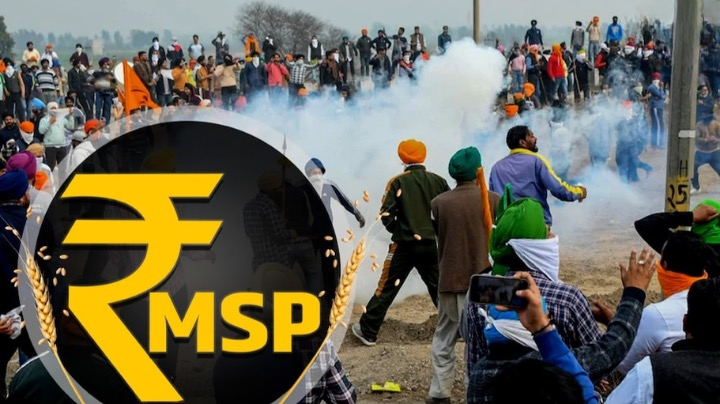
- 17 Feb 2024
Why is it in the News?
Farmers have resumed protests without a specific trigger, unlike their previous march against contentious farm laws. Their main demand is a legal guarantee for Minimum Support Prices (MSP).
Context:
- The renewed protest by farmers, advocating for a legal assurance of Minimum Support Prices (MSP), underscores the enduring battle for agricultural sector stability.
- Amidst this, it's crucial to delve into the intricacies of MSP, address prevailing misconceptions, and explore the advantages of formalising this system.
What is the Minimum Support Price (MSP)?
- MSP (Minimum Support Price) is the cost at which the government buys crops from the farmers, to guarantee farmers against any sharp fall in agricultural income.
- It is declared by the Government based on the proposal of the Commission for Agricultural Cost and Prices (CACP), at the start of the planting season.
- This mechanism aims to protect small and marginal farmers from financial losses and ensure an adequate supply of food grains for public distribution across India.
- Since its inception in 1966-67 for wheat, the MSP framework has expanded to cover various essential food crops, facilitating their availability to the public through subsidized rates under the public distribution system.
- However, only a small percentage, approximately 6% or less, of farmers are able to sell their produce at prices higher than the MSP.
Is the MSP Different in different states?
- Because of the variety in irrigation and wages, the expense of a similar yield changes from one state to another.
- However, there is no draft of the local Minimum Support Price, so there is one MSP for the whole country.
Significance of Minimum Support Price:
- Fixed Remunerations: The farmers are financially insured against the impulses of price fall in the market.
- It gives security to farmers from crop loss and price uncertainty.
- Help in Decision Making: MSPs are reported toward the start of the planting season, this assists farmers with settling on the best choices of crop that they should plant.
- This development data assists the farmer with settling on the best choice with regards to which yield to plant for the most extreme monetary advantage inside the restrictions of his agricultural land size, environment, and irrigation framework.
- Crop Diversification: The MSP declared by the Government of India without precedent for 1966-67 for wheat has reached out to around 24 crops at the present.
- This has urged the farmers to develop these different crops to maximize their agricultural income.
- Price Limitations for Private Purchasers: MSP conveys a value message to advertise that if vendors don’t offer higher than MSP costs the farmer may not sell them his produce.
- In this manner, it goes about as an anchor or benchmark for agricultural produce.
- It guarantees the market costs won’t be radically lower than the Minimum Support Price.
- Commercial Crops: MSP is utilized as an instrument to boost the creation of explicit food crops which is short in supply.
- MSP spurs farmers to develop commercial crops and expand creation on a commercial basis.
- Purchasing Power Enhancement: MSP provides fixed amounts in framers’ hands which makes them financially stable.
- It helps in upgrading the buying limit and updating the style of living of farmers and their families.
Challenges in Implementation of MSP:
- Selective Intervention and Limited Coverage: Despite the annual announcement of MSP for 23 crops, actual implementation tends to be selective, primarily focusing on major crops like rice and wheat.
- This limited coverage undermines the broader objective of ensuring stability across various agricultural commodities.
- MSP Implementation Bias: The unequal application of MSP, favouring specific crops, marginalizes farmers cultivating other essential commodities.
- This bias exacerbates regional disparities and impacts the economic well-being of farmers engaged in non-major crop cultivation.
- Disconnect Between Market Price and MSP: The disparity between market prices and MSP poses a significant challenge, as government intervention is triggered primarily when market prices fall below the MSP.
- Inconsistent intervention exacerbates uncertainties for farmers, leading to financial distress during market downturns.
- Perceived Government Apathy: Farmers perceive a lack of genuine interest or urgency from the government in effectively implementing MSP.
- This perceived apathy breeds distrust and frustration among farmers, fueling demands for a legal guarantee to ensure consistent and widespread implementation.
- Political Hesitation and Decision-Making Delays: While there is political consensus supporting a legal guarantee for MSP, successive governments have hesitated to formalize this mechanism.
- Delayed decision-making perpetuates uncertainties in the agricultural sector, undermining the effectiveness of MSP as a stabilizing force.
What Does a Legal Guarantee of MSP Mean and What Obstacles in Legalising MSP?
- It means that anyone paying less than the price set by the government for crops could be criminally charged.
- Currently, there is an MSP for 23 crops.
- However, the highest procurement by the government is of wheat and rice.
- According to experts, if MSP is legally guaranteed, the government will have to pay it regardless of supply and demand dynamics.
- At the moment, about 60 per cent of the total field crop production in India comes from wheat and paddy.
- Fiscal Concerns: Misconceptions regarding the fiscal implications of guaranteeing MSP have posed obstacles to its legalization.
- Despite the political consensus, concerns over perceived excessive fiscal burdens have deterred governments from formalizing MSP.
- Prevalent Misconceptions: There is a prevalent misconception that legalizing MSP necessitates government procurement of all agricultural produce, which is inaccurate.
- Government intervention is required only when market prices dip below MSP, and it does not entail the procurement of the entire marketable surplus.
- Misunderstanding of Procurement Costs and Subsidies: The cost of procuring rice and wheat is often misconstrued as the cost of the MSP program, whereas it primarily serves as a subsidy to consumers rather than farmers.
- For other crops, government procurement is not a cost unless sold with a subsidy, with the actual cost being the difference between economic cost and issue price.
Potential Advantages of Legalising MSP:
- Ensuring Uniform Implementation: Formalizing Minimum Support Prices (MSP) establishes a clear legal framework, ensuring consistent application across all crops.
- This move addresses current issues of selective intervention, providing farmers with a dependable safety net.
- Promoting Inclusive Agricultural Growth: Expanding MSP coverage to various crops ensures that price stability benefits all segments of the farming community.
- Small and marginal farmers cultivating diverse crops can access MSP protection, fostering inclusive agricultural development.
- Reducing Farmer Vulnerability: Formalizing MSP reduces farmers' susceptibility to market fluctuations by guaranteeing a minimum income for their produce.
- This assurance enables farmers to navigate uncertainties with confidence, knowing that government intervention is assured during price downturns.
- Boosting the Rural Economy: A secured MSP contributes to farmers' economic well-being, leading to increased rural income.
- This upliftment stimulates the rural economy by generating demand for goods and services, fostering growth across multiple sectors.
- Clarifying Consumer Subsidies: Formalization helps distinguish between procurement costs and consumer subsidies, often conflated as MSP program expenses.
- This clarity aids policy discussions and ensures targeted subsidy allocation, benefiting both farmers and consumers.
- Facilitating Strategic Government Operations: A legal framework empowers the government to conduct strategic operations in domestic and international markets.
- Through controlled sales during periods of high market prices, the government can manage inflation, ensuring price stability for consumers.
Conclusion
The legalization of MSP presents a holistic remedy to the agricultural sector's woes.
Beyond ensuring uniform application, it fosters diversification, inclusivity, and economic robustness, ultimately benefiting farmers and bolstering rural prosperity. By dispelling misconceptions and tackling apprehensions, policymakers can pave the way toward a more secure and prosperous future for our farmers.
Supreme Court Strikes Down Electoral Bonds Scheme (Indian Express)
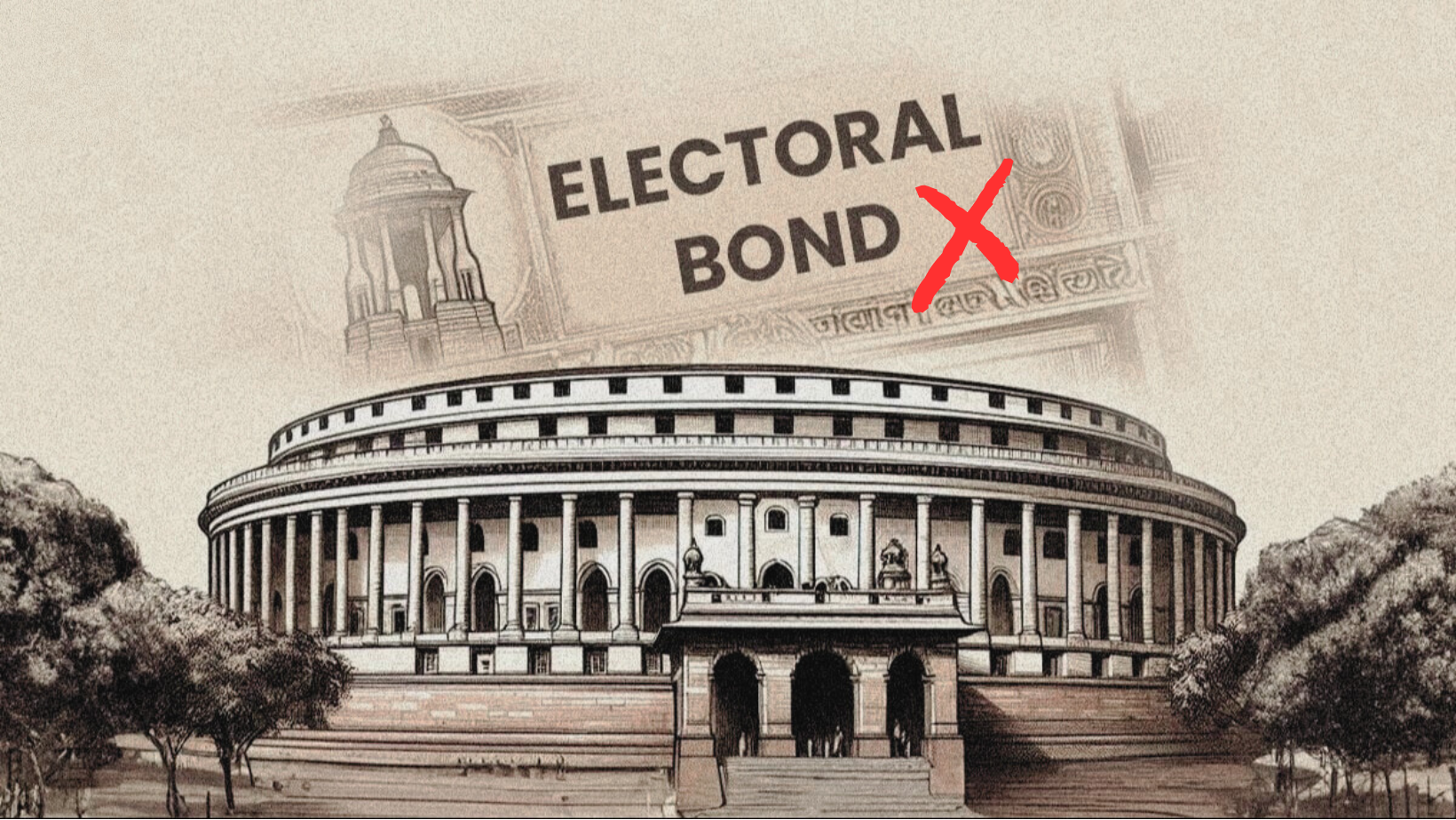
- 16 Feb 2024
Why is it in the News?
A five-judge Constitution Bench of the Supreme Court on Thursday unanimously struck down the Centre’s electoral bond scheme which facilitates anonymous political donations for being unconstitutional.
Context:
- A five-judge Constitution Bench of the Supreme Court on Thursday unanimously struck down the Centre’s electoral bond scheme which facilitates anonymous political donations for being unconstitutional.
- It underscored that the scheme violates the right to information under Article 19(1)(a) of the Constitution.
- Additionally, the Apex Court nullified several amendments introduced by the government in vital laws to streamline corporate donations to political parties.
- These amendments were incorporated through The Finance Act, 2016, and The Finance Act, 2017, preceding the implementation of the EBS in January 2018.
- The decision followed petitions from the Communist Party of India (Marxist) and NGOs Common Cause and ADR.
Key Highlights of the SC Judgement:
- Protection of Voters' Right to Information: The court emphasized that access to information regarding political party funding is crucial for informed voting.
- It argued that economic disparities lead to political inequalities, as financial resources often translate into greater political influence and access to policymakers.
- Thus, the Electoral Bonds Scheme (EBS) was deemed to violate Article 19(1)(a) of the Constitution, safeguarding freedom of speech and expression.
- Disproportionate Restrictions on Curbing Black Money: While acknowledging the importance of curbing black money, the court found the restrictions imposed by the EBS disproportionate.
- It clarified that restrictions on the Right to Information (RTI) should align with Article 19(2) of the Constitution, which outlines reasonable restrictions on freedom of speech and expression.
- Curbing black money was not deemed a valid reason for such restrictions.
- Right to Donor Privacy: The judgement delved into the notion of donor privacy, particularly regarding political contributions.
- It affirmed that the right to informational privacy encompasses political affiliation.
- However, it clarified that privacy does not extend to contributions aimed at influencing policies, emphasizing genuine political support over attempts to obscure motives, especially those of corporate entities.
- Limits on Corporate Political Contributions: The court declared unlimited political contributions by companies unconstitutional.
- It highlighted the disproportionate influence of corporations on the political process compared to individuals.
- Contributions from companies were viewed as business transactions aimed at securing benefits, which undermined the democratic process and equality in political participation.
What was the Existing System Before the Introduction of EBS?
- Before the enactment of The Finance Act 2016 and The Finance Act 2017, political funding operated under a different framework:
- Contribution Declarations: Political parties were mandated to declare all contributions exceeding Rs 20,000 without any exceptions.
- Detailed records of donations exceeding Rs 20,000 were required for taxation purposes.
- Limits on Corporate Donations: Companies were subject to a cap on their political contributions, restricted to a maximum of 7.5% of their average net profits from the preceding three years.
- Amendments through The Finance Act 2017: The Finance Act of 2017 brought significant changes to political funding regulations by amending key legislations like the Representation of the People Act, 1951, the Income-tax Act, 1961, and the Companies Act, 2013.
- These amendments introduced electoral bonds, altering the landscape of political party funding:
- Introduction of Electoral Bonds: Electoral bonds were introduced, effectively removing donation limits for companies.
- The requirement to declare and maintain records of donations made through electoral bonds was eliminated, streamlining the process of political contributions.
Supreme Court Verdict:
- The recent Supreme Court verdict has reinstated the legal framework that existed before the enactment of the Finance Act, 2017, impacting various statutes:
- Representation of the People Act, 1951: The original Section 29C of the Act mandated political parties to report all donations exceeding Rs 20,000, specifying whether they were from individuals or companies.
- Amendments introduced by the Finance Act, 2017 exempted donations via Electoral Bonds from this reporting requirement.
- The Supreme Court overturned this amendment, asserting that the original provision effectively balanced voters' right to information with donors' right to privacy.
- Companies Act, 2013: Section 182(1) previously limited corporate donations to political parties to 7.5% of average net profits over three years.
- Section 182(3) requires disclosure of all political contributions made by companies.
- Amendments removed the donation cap and reduced disclosure requirements.
- The Supreme Court struck down these changes, citing concerns about unchecked corporate influence in electoral processes.
- Income-tax Act, 1961: Section 13A(b) mandated political parties to maintain records of donations above Rs 20,000, including donor details.
- Amendments exempted Electoral Bond contributions from these reporting requirements and introduced new donation methods.
- The Supreme Court ruled that exempting Electoral Bond donations from record-keeping violated voters' right to information and struck down both amendments.
Supreme Court's Directives:
- Instructions to SBI: SBI is instructed to immediately halt the issuance of any further electoral bonds.
- Provide detailed information on electoral bonds purchased by political parties since April 12, 2019, to the Election Commission of India (ECI) by March 6.
- Furnish specifics including the purchase date, purchaser's name, and bond denomination for each transaction.
- Election Commission's Obligations: The ECI is directed to publish all received data from SBI on its official website by March 13, 2024.
- Return of Electoral Bonds: Electoral bonds within the 15-day validity period, yet to be encashed by political parties, must be returned.
- The issuing bank will then reimburse the amount to the purchaser's account.
Evaluation of the Latest Ruling:
- The recent Supreme Court ruling establishes a rigorous standard for the state to justify its interference with fundamental rights, even when pursuing a conflicting right.
- It mandates that the state must prove that its action is the "least restrictive" and that no other methods of equal effectiveness exist to achieve its goal.
- Traditionally, the judicial balance between two fundamental rights has often favoured one right over the other.
- In numerous instances, the court has prioritized public interest over individual fundamental rights, thereby granting the state considerable authority.
- For instance, in 2018, the Supreme Court curtailed the right to protest near Delhi’s Jantar Mantar to uphold the right to a peaceful residence and the state's regulatory power over such activities.
What are Electoral Bonds and Why Were They Introduced?
- An electoral Bond is a type of financial instrument that functions like a Promissory Note and an interest-free banking tool.
- Any Indian citizen or organisation registered in India can buy these bonds after fulfilling the Know Your Customer (KYC) norms laid down by the Reserve Bank of India (RBI).
- Before the introduction of Electoral Bonds, political parties in India relied heavily on donations from individuals and corporate entities to fund their election campaigns and day-to-day activities.
- The need for electoral reforms to address these concerns was highlighted by various stakeholders, including civil society organisations, electoral watchdogs, and the judiciary.
- In response, the government initiated efforts to reform the electoral system and enhance transparency in political funding.
- Electoral Bonds were introduced in India through the Finance Act, of 2017, as a means of reforming political funding and promoting transparency.
Key Features of Electoral Bonds:
- Anonymity: One of the key features of Electoral Bonds is the anonymity of the donor.
- Unlike traditional forms of political donations, where the identity of the donor is disclosed to the public and the receiving political party, Electoral Bonds allow donors to remain anonymous.
- This was intended to protect the privacy and security of donors and shield them from potential retribution or harassment.
- Denominations: Electoral Bonds are available in various denominations ranging from ?1,000 to ?1 crore (10 million).
- Donors can purchase these bonds from notified banks in India, with the State Bank of India (SBI), the largest public sector lender in the country, being the only authorised institution to issue Electoral Bonds.
- Validity: Electoral Bonds have a validity period within which they must be redeemed.
- As per the existing regulations, the bonds have a validity of 15 days from the date of issuance.
- This timeframe is designed to ensure that the bonds are promptly encashed by the receiving political parties.
- Transparency: While the identity of the donor remains anonymous, the sale and redemption of Electoral Bonds are recorded electronically by the issuing bank.
- This electronic tracking system is intended to enhance transparency in the overall process of political funding and enable regulatory authorities to monitor the flow of funds.
WTO Pressure on Indian Farm Subsidies Amid Farmer's Protest for MSP (Indian Express)
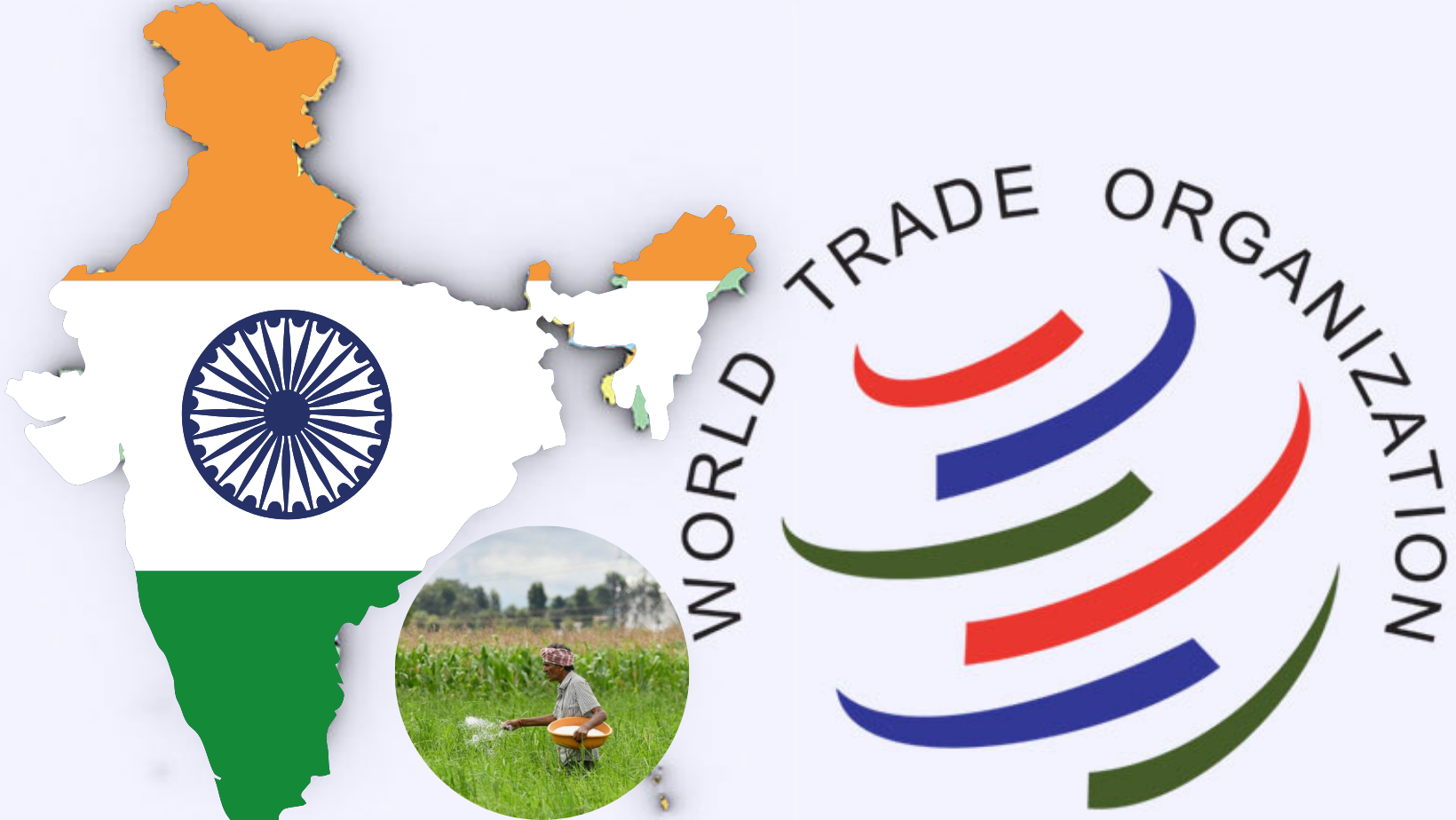
- 15 Feb 2024
Why is it in the News?
The government might find it challenging to meet the protesting farmers' demand for a legal guarantee of (MSP) due to India's farm subsidies being scrutinised at the (WTO), especially with criticism from a group of 19 influential agricultural exporting countries.
Background:
- After independence, our country struggled to produce enough food for its large population as the agriculture sector was in a poor state.
- To address this challenge, we either had to import grains, which incurred significant costs, or rely on aid from other nations.
- In 1960, the government took steps toward self-sufficiency. They introduced high-yielding seeds, promoted the use of fertilisers, and improved agricultural machinery.
- At the same time, the government supported rice and wheat cultivation by offering farmers a Minimum Support Price (MSP).
- This ensures that farmers receive a fair price; if they can't sell their crops for a better price in the market, the government will buy them at a favourable rate.
- However, there's currently tension between India and the WTO regarding these subsidies.
Green Revolution
- The Green Revolution, initiated in the 1960s, aimed to enhance agricultural productivity and bolster the nation's economy.
- India embraced technological and industrial advancements in agriculture during this era.
- This included the adoption of high-yield seeds, modern farming equipment, irrigation systems, pesticides, and fertilisers to transform the agricultural landscape.
- The green revolution helped India move from a state of importing grains to a state of self-sufficiency.
Causes of Tensions Between India and the WTO:
- India's actions in this realm have stirred discontent among other nations, who perceive India's practices as unfair trade manoeuvres.
- The government's practice of procuring crops from farmers at low prices and subsequently exporting them at reduced rates to global markets has drawn criticism.
- Developed countries have lodged complaints, alleging multiple instances of India breaching WTO regulations by providing subsidies amounting to 60-70% of the total crop value.
- While the WTO permits governments to offer subsidies to farmers, it imposes restrictions, allowing developed countries to provide up to 5% and developing countries up to 10% of the total value in subsidies.
What are the WTO Regulations on Farm Subsidies?
- The WTO regulations on farm subsidies aim to promote fair competition and prevent global trade distortion.
- These regulations establish limits on the types and levels of subsidies that member countries can offer to their agricultural sectors.
- Levels of Subsidies:
Green Box:
- These subsidies have minimal impact on trade distortion.
- They are not specific to particular products and are generally permissible under WTO rules.
- Examples include funding for research, environmental conservation, and direct income support for farmers facing challenges such as crop loss or natural disasters.
Amber Box:
- These subsidies promote excessive production and distort international trade.
- Examples include input subsidies like those for seeds, fertilisers, and Minimum Support Price (MSP).
- WTO restricts these subsidies, capping them at 5% for developed countries and 10% for developing countries.
Blue Box:
- These subsidies, akin to Amber Box subsidies, aim to limit production.
- Currently, only a few countries, such as Norway and Iceland, utilise these subsidies.
- The WTO does not impose any limits on these subsidies.
Why India's Agricultural Subsidy Programs Encounter Challenges in the WTO?
- India's agricultural subsidies face hurdles at the WTO due to the organisation's rules, which do not consider subsidies on a per-farmer basis, disadvantageous to developing countries like India.
- For instance, although India's per-farmer subsidy is significantly lower compared to countries like the US, the WTO regulations focus on total subsidy amounts.
- In 2019-20, India's subsidies exceeded the 10% limit relative to its total rice production, despite the per-farmer subsidy being relatively modest at $300 compared to the US's $40,000 per farmer.
- While India is safeguarded by the 'Peace Clause' established during the WTO's Bali ministerial in 2013, certain ambiguities in the clause leave India vulnerable to disputes.
- Consequently, new schemes must adhere to the 10% subsidy ceiling, foregoing protection under the 'Peace Clause'.
Criticism of India’s Agricultural Subsidies by Influential Agricultural Exporting Countries:
- The Cairns Group, which includes countries like Australia, Brazil, and Canada, has raised concerns about the level of subsidisation in India’s public stockholding (PSH) program.
- They argue that India's agricultural support measures are significantly subsidised, leading to distortions in global food prices and negatively impacting food security in other nations.
- Last year, the group circulated a comprehensive proposal aimed at reducing trade-distorting agricultural support among WTO members, advocating for a halving of the total global entitlement/subsidies.
- This proposal sparked tensions among developing nations, with India among those affected.
- Essentially, the Cairns Group is advocating for India to either dismantle or scale back its Minimum Support Price (MSP) scheme, prompting India to seek stronger legal protection for its MSP program.
Upcoming Challenges for the Government of India:
- In pursuit of greater flexibility in providing agricultural support, India is actively advocating for a permanent solution at the forthcoming inter-ministerial summit in Abu Dhabi.
- However, the entrenched impasse on politically sensitive issues between developed and developing nations makes resolution unlikely.
- Farmers' groups in India advocate for removing agriculture from the purview of the WTO, but this approach could present challenges and hinder India and other developing nations from regulating subsidies provided by developed countries.
- The government faces a dilemma, as it grapples with peer pressure at the WTO while simultaneously facing demands for Minimum Support Price (MSP) from farmers.
- The call for better MSP support isn't limited to Punjab farmers; farmers across the nation are seeking similar assurances.
- Furthermore, if farmers in Punjab and Haryana shift away from agriculture, it could pose a threat to the country's food security.
Way Forward
- While India currently avoids disputes on the subsidy matter at the WTO due to the non-functionality of the Dispute Settlement Body (DSB), member countries will continue to scrutinise India's adherence to subsidy limits.
- As a result, India must advocate not only for adjustments to the formula used to calculate the food subsidy cap within the WTO but also for the inclusion of programs implemented after 2013 under the protection of the 'Peace Clause'.
Inauguration of BAPS Temple in UAE by PM Modi: Exploring Its Unique Features, Architecture, and Significance (Indian Express)

- 14 Feb 2024
Why is it in the News?
During his two-day visit to UAE, Prime Minister Modi will inaugurate the BAPS Swaminarayan temple in Abu Dhabi, the first Hindu temple in the Gulf nation.
Context:
- Prime Minister Modi on Wednesday inaugurated the (BAPS) temple, the first-ever Hindu temple in the United Arab Emirates (UAE).
- The iconic stone temple is located in Abu Mureikhah, near Al Rahba off the Dubai-Abu Dhabi Sheikh Zayed Highway.
- The inauguration of the 108-ft high temple marks a significant moment for the Hindu community in UAE and the two countries’ bilateral ties.
What is BAPS?
- Bochasanwasi Shri Akshar Purushottam Swaminarayan Sanstha (BAPS) is a socio-spiritual Hindu organisation founded on the principles of practical spirituality.
- The temple was built by the organisation, a denomination of the Swaminarayan Sampradaya, a Vaishnav sect of Hinduism.
- With over 3,850 centres globally, BAPS has garnered national and international recognition, including affiliation with the United Nations.
- Through vows of abstinence and purity, BAPS fosters a foundation for humanitarian endeavours, caring for societies, families, and individuals.
What Does BAPS Do?
- The BAPS Swaminarayan Sanstha views spirituality as its core mission. Through gradual steps, it strives to draw individuals closer to God.
- In collaboration with BAPS Charities, the organization extends its outreach globally, addressing diverse humanitarian needs.
- From education to healthcare and environmental concerns, practical solutions are offered to real-world problems, impacting lives on both macro and micro scales.
- BAPS has a network of around 1,550 temples across the world, including the Akshardham temples in New Delhi and Gandhinagar, and Swaminarayan temples in London, Houston, Chicago, Atlanta, Toronto, Los Angeles, and Nairobi.
Who is Swami Narayan?
- Bhagwan Swaminarayan’s life and work have not only influenced communities in Gujarat, India but have affected change throughout the world.
- He reestablished Hindu Sanatan Dharma, cleansing traditions and rituals of the impurities that had seeped in over time.
- His contributions have been hailed by Hindus and dignitaries of other faiths as truly transforming the lives of millions of individuals.
- He improved societal standards and, most importantly, the innate nature of people, eradicating them from lust, anger, greed, and envy.
- Bhagwan Swaminarayan’s teachings transcended borders, rejuvenating Hindu traditions worldwide.
What are the Features of the (BAPS) Temple?
- The Abu Dhabi temple is a traditional stone Hindu temple with seven shikhars.
- Built in the traditional Nagar style, the temple’s front panel depicts universal values, stories of harmony from different cultures, Hindu spiritual leaders and avatars.
- Spread over 27 acres, the temple complex is on 13.5 acres
- The 13.5 acres of land was gifted by Sheikh Mohammed Bin Zayed Al Nahyan, the President of the UAE in 2019.
- The height of the temple is 108 ft, its length 262 ft and its width 180 ft.
- While the external facade uses pink sandstone from Rajasthan, the interior uses Italian marble.
- A total of 20,000 tonnes of stones and marble were shipped in 700 containers for the temple.
- More than Rs 700 crore was spent on the temple’s construction.
- The temple has two central domes, Dome of Harmony and Dome of Peace, emphasizing human coexistence through the carvings of earth, water, fire, air, and plants.
- A Wall of Harmony, one of the largest 3D-printed walls in the UAE, features a video showcasing key milestones of the temple’s construction.
- The word ‘harmony’ has been written in 30 different ancient and modern languages.
- The seven shikhars (spires) are representative of the seven Emirates of the UAE.
- Other amenities include an assembly hall with a capacity of 3,000 people, a community centre, exhibitions, classrooms, and a majlis venue.
What are the Key Architectural Features?
- The temple was judged the Best Mechanical Project of the Year 2019 at the MEP Middle East Awards, and the Best Interior Design Concept of the Year 2020.
- Among the key architectural features are 96 bells and galumphs installed around the path leading to the temple.
- These 96 bells are a tribute to Pramukh Swami Maharaj’s 96 years of life.
- Nano tiles have been used, which will be comfortable for visitors to walk on even in the hot weather.
- On the top left of the temple is a stone carving of the scene of Pramukh Swami Maharaj envisioning the temple in Abu Dhabi in 1997.
- Non ferrous material (which is more vulnerable to corrosion) has been used in the temple.
- While many different types of pillars can be seen in the temple, such as circular and hexagonal, there is a special pillar, called the ‘Pillar of Pillars’, which has around 1,400 small pillars carved into it.
- Buildings surrounding the temple are modern and monolithic, with their colour resembling sand dunes.
- Deities from all four corners of India have been featured in the temple.
- These include Lord Ram, Sita, Lakshman and Hanuman, Lord Shiv, Parvati, Ganpati, Kartikeya, Lord Jagannath, Lord Radha-Krishna, Akshar-Purushottam Maharaj (Bhagwan Swaminarayan and Gunatitanand Swami), Tirupati Balaji and Padmavati and Lord Ayappa.
- The temple also has some special features, like a ‘holy river’ surrounding it, for which waters from Ganga and Yamuna have been brought in.
- The river Saraswati has been depicted in the form of white light.
- A Varanasi-like ghat has been created where the ‘Ganga’ passes.
- Apart from 15 value tales from Indian civilisation, stories from the Maya civilisation, Aztec civilisation, Egyptian civilisation, Arabic civilisation, European civilisation, Chinese civilisation and African civilisation have been depicted.
What is the Significance of the Temple?
- A Muslim king donated land for a Hindu Mandir, where the lead architect is a Catholic Christian, the project manager a Sikh, the foundational designer a Buddhist, the construction company a Parsi group, and the director comes from the Jain tradition.
Religious Significance:
- First Hindu stone temple in Abu Dhabi: This marks a historic milestone for the Hindu community in the UAE, providing them with a dedicated place of worship and cultural centre.
- Symbol of religious tolerance: The temple's inauguration signifies the UAE's growing acceptance and appreciation of religious diversity, fostering interfaith dialogue and understanding.
Cultural Significance:
- Strengthens India-UAE ties: The temple stands as a symbol of the strong cultural and diplomatic relations between India and the UAE, promoting mutual understanding and cooperation.
- Promotes Indian culture: The temple serves as a platform to educate the UAE community about Indian art, architecture, and traditions, fostering cultural exchange and appreciation.
Social Significance:
- Provides a sense of belonging: The temple offers a space for the Hindu community to gather, celebrate festivals, and connect with their cultural roots, fostering a sense of belonging and identity.
- Promotes social integration: The temple's open-door policy welcomes people of all faiths, encouraging social interaction and understanding between different communities in the UAE.
- Strengthens social fabric: The temple's emphasis on values like compassion, service, and community engagement contributes to strengthening the social fabric of UAE society.
Overall, the BAPS Swaminarayan Mandir in Abu Dhabi represents a significant step forward in religious tolerance, cultural exchange, and community building in the UAE. It serves as a testament to the growing understanding and appreciation between India and the UAE, and its impact will be felt for generations to come.
Gender Gap In STEMM and Government Efforts to Address It (Indian Express)
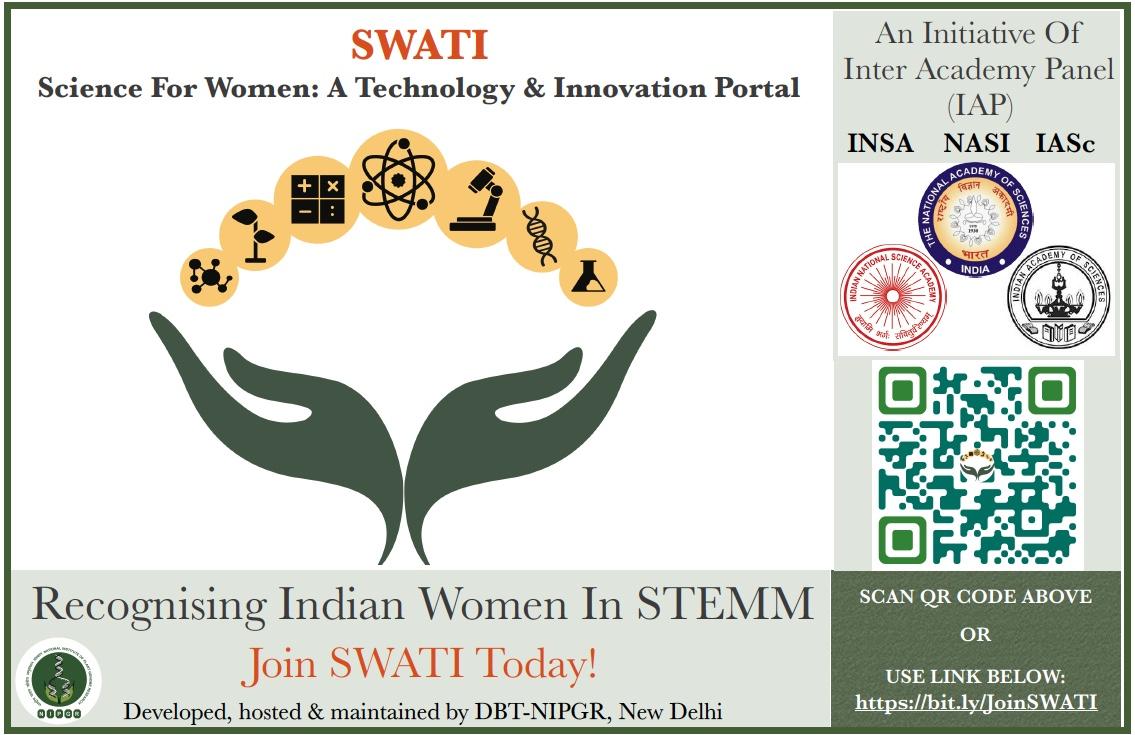
- 13 Feb 2024
Why is it in the News?
Principal Scientific Advisor to the Government of India Prof Ajay Kumar Sood launched Science for Women-A Technology & Innovation (SWATI), a portal aimed at representing girls in STEMM (Science, Technology, Engineering, Mathematics & Medicine).
Background:
- Gender inequality in the science sector has persisted as a significant issue, prompting a series of interventions to rectify this imbalance.
- Hence, delving into the trajectory of endeavours to narrow the gender divide in Indian science becomes crucial, particularly with the introduction of SWATI (Science For Women- A Technology & Innovation).
- This portal seeks to establish an extensive repository of female scientists across the nation, marking a significant milestone in this ongoing journey.
What is the SWATI Portal?
- SWATI Portal is a pioneering initiative aimed at establishing a unified online platform dedicated to showcasing Indian Women and Girls in STEMM (Science, Technology, Engineering, Mathematics & Medicine).
- The database hosted on the SWATI Portal serves as a valuable resource for informing policy decisions aimed at addressing gender disparities in STEMM fields.
- Developed, hosted, and maintained by the National Institute of Plant Genome Research (NIPGR), New Delhi, SWATI Portal stands out as the first-of-its-kind initiative in India.
Objectives:
- To significantly expand the scope of representation, encompassing every Indian woman in science across various career stages and disciplines, spanning both academia and industry.
- Facilitating robust and enduring research on equality, diversity, and inclusivity issues in India through the establishment of a comprehensive and searchable database.
- Sections within the portal include categories such as Icons (Padma/Shanti Swarup Bhatnagar/Stree Shakti Science Samman awardees), Directors, Secretaries, Academy Presidents, Faculty from Indian Universities, and personnel from autonomous organizations including S&T Ministry, CSIR, DBT, DST, MHRD, UGC, GATI, and KIRAN.
The 2004 INSA Report and the Systematic Discrimination in Indian Science:
- Recognition of Disparity: In 2004, the Indian National Science Academy (INSA) released a pivotal report that reshaped discussions on gender disparities in Indian science.
- This landmark document departed from conventional discourse by not only highlighting the gender gap but also delving into the complex layers of discrimination, including caste-related issues.
- Notably, the report garnered governmental endorsement, marking a significant acknowledgement of the imperative to investigate and rectify gender imbalances in the scientific domain.
- A nuanced Approach to Gender Disparity: The report transcended simplistic narratives, unveiling evidence of workplace bias rooted not only in gender but also in caste dynamics.
- This holistic perspective offered insights into the multifaceted challenges encountered by women in science, challenging prevalent assumptions that attributed the gender gap solely to familial responsibilities.
- Of particular significance was the collaboration between scientists and social scientists, fostering a deeper understanding of the societal dimensions of gender disparities within the scientific realm.
- This interdisciplinary synergy represented a departure from the traditional isolation of the scientific community from social science discourse on gender equality.
- Proposed Solutions and Recommendations: Advocating for proactive measures, the report underscored the need for collective action from policymakers, academia, and the scientific community to redress gender imbalances.
- By providing a comprehensive analysis of the hurdles faced by women in science, the INSA report laid the groundwork for subsequent initiatives, transcending surface-level assessments.
- Its recommendations influenced the trajectory of gender-related endeavours in the Indian scientific landscape, catalyzing a series of initiatives aimed at fostering inclusivity and equity.
Next Steps and Obstacles: Handling the Complicated Environment:
- National Conference of Women Scientists: Concurrently, the Department of Science and Technology (DST) convened a national conference in 2008, gathering over a thousand women scientists in response to the INSA report.
- During this event, the Science and Technology Minister unveiled ambitious support measures, including flexible work arrangements, childcare facilities, research grants, and housing options.
- However, the execution of these pledges encountered obstacles, with the envisioned standing committee failing to materialize, resulting in the delayed realization of promised advancements.
- IASc Report on Women's Attrition in Science: In 2010, IASc conducted a comprehensive survey on the factors contributing to women leaving the scientific field.
- The findings, based on responses from approximately 800 scientists, unveiled a multifaceted array of reasons, with women emphasizing organizational challenges alongside familial and societal pressures.
- These challenges included inflexible schedules, inadequate infrastructure, and pervasive discrimination, underscoring the necessity for systemic reforms rather than attributing departures solely to individual choices.
- Launch of "Lilavati's Daughters": Following the INSA report, the Indian Academy of Sciences (IASc) published "Lilavati's Daughters" in 2008, a compilation aimed at spotlighting the accomplishments of women in science and dispelling stereotypes.
- Discrepancies Between Intentions and Actions: The disparity between announced initiatives and their implementation underscored bureaucratic obstacles impeding progress.
- The stalling of the proposed standing committee exemplified bureaucratic hurdles that hindered the translation of well-intentioned policies into tangible outcomes for women in science.
Newer Strategies to Tackle Gender Disparity in Indian Science:
- Gender Advancement for Transforming Institutions (GATI): GATI introduces a progressive approach to addressing gender disparities, departing from conventional methods.
- Its charter, reflecting evolving gender discourse, embraces more inclusive language and practices.
- Recognizing transgender identities and advocating for gender-neutral parental leave, GATI acknowledges the diverse spectrum within the scientific community.
- Science, Technology, and Innovation Policy (STIP) 2020: The draft STIP 2020 signifies a shift towards a more inclusive science policy paradigm.
- By integrating provisions for transgender inclusion and advocating for gender-neutral parental leave, STIP 2020 aims to foster an environment supportive of scientists across genders.
- SWATI: Science for Women- A Technology & Innovation: SWATI, unveiled on International Women's Day 2021 by the former Department of Biotechnology (DBT) chief, Renu Swarup, promises to be a pioneering platform.
- Initially described as a portal dedicated to women scientists in DBT and its Autonomous Institutions, SWATI holds potential as a vital resource for advancing gender equality in the scientific sphere.
- However, detailed information about SWATI has been scarce until recent developments.
Is SWATI a Fresh Start or a Familiar Cycle?
- The introduction of SWATI signifies a commitment to integrating women into the domains of science and technology, recognizing their invaluable contributions.
- However, scepticism arises from past initiatives that initially generated excitement but ultimately faltered.
- Despite this, several aspects of SWATI instill optimism. The platform's inclusivity extends to all genders beyond the male binary, emphasizing support for scientists with diverse gender identities.
- Unlike previous endeavours, SWATI adopts a flexible approach, eschewing rigid criteria such as mandatory PhD qualifications, and acknowledging the diverse roles women play in science, regardless of formal degrees.
Conclusion
While the introduction of SWATI offers hope for progress in gender equity within Indian science, it's crucial to maintain a balance of optimism and caution. The effectiveness of SWATI will be determined by its transformation from a concept into a resilient and transparent platform capable of comprehensively addressing the multifaceted challenges confronting women in the scientific realm.
A Privileged Strategic Partnership, Without a Gulf (The Hindu)
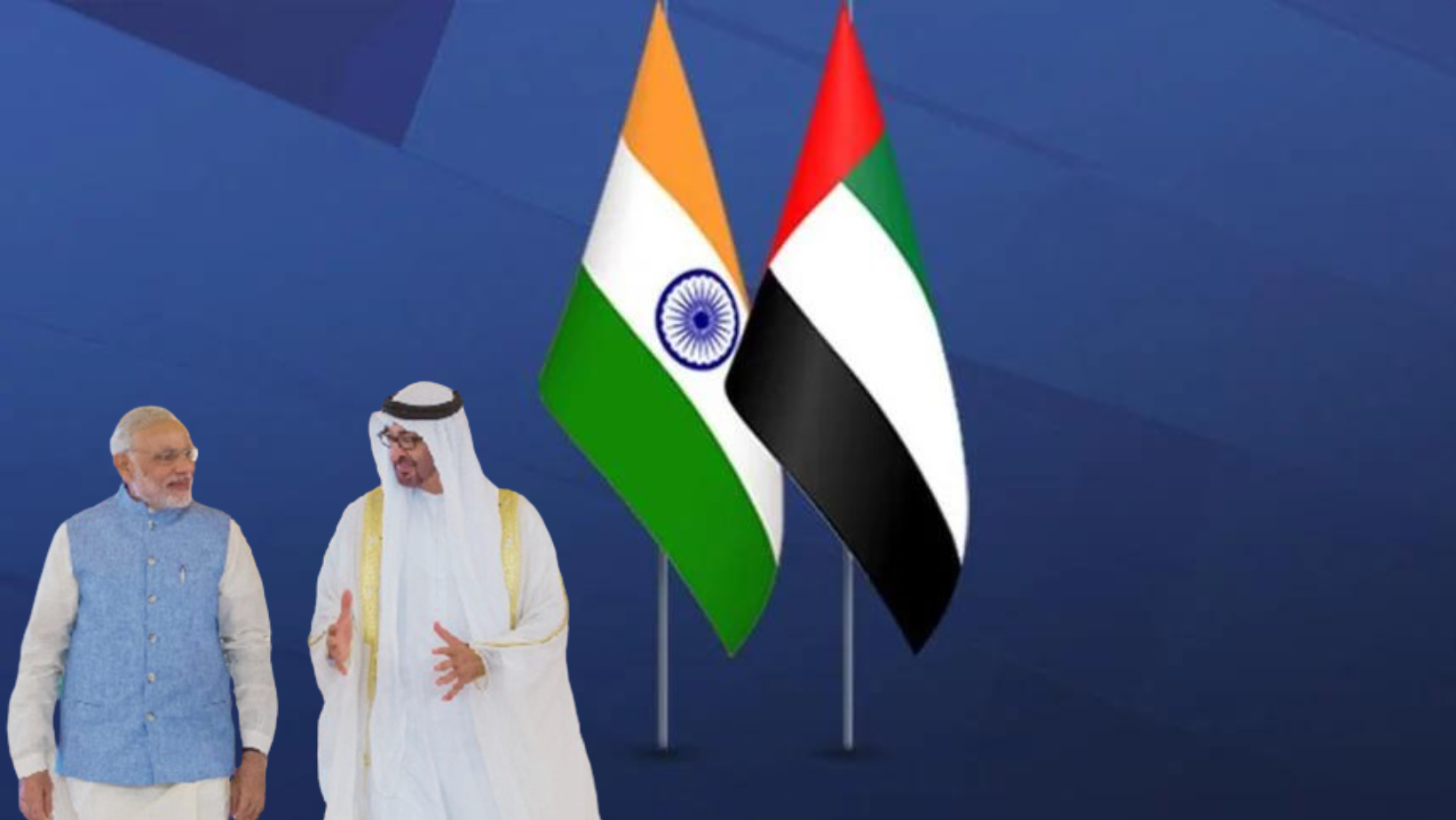
- 12 Feb 2024
Why is it in the News?
PM Modi is scheduled to pay an official visit to the United Arab Emirates (UAE) from February 13-14, 2024 which will include inaugurating a temple built by the Bochasanwasi Shri Akshar Purushottam Swaminarayan Sanstha in Abu Dhabi.
Background:
- The upcoming official visit of the Indian Prime Minister to the United Arab Emirates (UAE) scheduled for February 13-14, 2024, signifies a pivotal moment in the evolving rapport between the two countries.
- This visit offers an opportunity to examine the diverse dimensions of the strategic partnership between India and the UAE, encompassing diplomatic, economic, cultural, and geopolitical connections that have matured over time.
- The Prime Minister will address the World Government Summit in Dubai as the ‘Guest of Honour’.
The Nature of India-UAE Special Diplomatic Relations:
- Elevated Diplomatic Engagements and Mutual Gestures: The essence of the India-UAE strategic partnership in diplomacy is marked by a sequence of notable visits, reciprocal actions, and joint endeavours, underscoring the depth of their association.
- The forthcoming seventh visit of the Indian Prime Minister to the UAE, scheduled for February 13-14, 2024, reinforces the diplomatic bonds between the two countries.
- Personal Connection: The close and amicable bond between Prime Minister Modi and UAE President Sheikh Mohamed bin Zayed Al Nahyan serves as a cornerstone in diplomatic interactions.
- This personal connection has evolved through frequent encounters, discussions, and collaborative initiatives across various domains.
- Their shared vision acts as a catalyst for expanding cooperation across diverse sectors.
- Special Collaborative Ventures: The diplomatic cooperation extends beyond regular interactions to encompass special events and joint initiatives that highlight the importance of their partnership.
- For instance, the felicitation of the UAE President in Gandhinagar during the Vibrant Gujarat Summit is a notable instance.
- This reciprocal gesture underscores the mutual respect and camaraderie between the leaders.
- Global Environmental Endeavours: Both nations actively contribute to global endeavours addressing climate change.
- Their joint involvement in the Global Green Credit Initiative underscores their dedication to environmental sustainability.
- This shared commitment to global issues demonstrates a diplomatic convergence that transcends bilateral interests, positioning India and the UAE as responsible global participants.
- Strategic Partnerships: The strategic alignment between India and the UAE is evident in their engagement in various international forums and alliances.
- Their participation in the West Asian Quad (I2U2) and the India-Middle East-Europe Economic Corridor highlights a shared commitment to regional stability and economic progress.
- These partnerships further solidify their diplomatic collaboration in shaping geopolitical dynamics.
- Crisis Management: The diplomatic ties between India and the UAE are tested during critical junctures, such as the ongoing conflict in Gaza.
- The scheduled visit presents an opportunity for both leaders to discuss pressing regional issues, showcasing their dedication to addressing challenges and preserving regional stability.
- People-Centric Diplomacy: Cultural exchanges and people-to-people connections significantly contribute to diplomatic relations.
- Instances like the UAE conferring the Order of Zayed on Prime Minister Modi and India's role as the 'Guest of Honour' at the Abu Dhabi Festival underscore the cultural aspects of the partnership.
- Such gestures foster mutual understanding and goodwill among the citizens of both nations.
Additional Highlights of the UAE-India Strategic Partnership:
- Energy Security: The UAE's role as a vital partner in India's energy security is underscored by agreements on strategic oil reserves stored in India and collaborations on crude oil storage facilities.
- The partnership between Indian Strategic Petroleum Reserves Ltd and the Abu Dhabi National Oil Company reflects a shared commitment to securing energy resources.
- Defence and Security Collaboration: Both nations actively engage in defence and security cooperation, demonstrating mutual trust and a dedication to regional stability.
- Instances such as India's special invitation to the OIC Foreign Ministers’ Meeting and the UAE's participation in the G-20 summit under India’s presidency exemplify a unique level of diplomatic understanding.
- Cultural and People-to-People Connections: Cultural exchanges, exemplified by India's role as the 'Guest of Honour' at the Abu Dhabi Festival and the conferral of the Order of Zayed on PM Modi, strengthen people-to-people bonds.
- Initiatives like the establishment of the IIT Delhi Abu Dhabi campus and the opening of a UAE consulate in Hyderabad further enrich the cultural and educational facets of the partnership.
- The BAPS temple: Constructed on a generous donation of a 27-acre land parcel by the UAE President
- It stands as the UAE's second prominent Hindu temple, following the inauguration of the Hindu Temple in Dubai in 2022.
- Geopolitical Alignment: Both countries' participation in significant groupings like I2U2 and the India-Middle East-Europe Economic Corridor underscores their shared geopolitical interests.
- The UAE's involvement in the corridor, aimed at linking India to Europe, presents a potential alternative to China’s Belt and Road Initiative.
- Fintech: The RuPay card, an integral part of India’s Digital Public Infrastructure (DPI), has been operational in the UAE since 2019. Starting from July 2023, transactions using the Indian rupee have been facilitated at Dubai’s airports.
- Regional Dynamics: The ongoing conflict in Gaza introduces an additional layer of complexity to regional dynamics, offering an opportunity for leaders to address pressing issues.
Way Forward:
- Both nations maintain close coordination within the region and participate in several significant groupings, including the I2U2.
- The UAE's involvement in the India-Middle East-Europe Economic Corridor (IMEEC) infrastructure project, established during the G-20 summit in Delhi, aims to link India to Europe via the Arabian peninsula.
- This corridor presents a potential alternative to China’s Belt and Road Initiative.
- India boasts numerous strategic partnership agreements globally, yet none exhibit the depth of convergence and mutual respect as the one with the UAE.
- While India acknowledges and appreciates the UAE’s regional role, the UAE also acknowledges India's forthcoming 'global leadership' role.
- Both nations anticipate the continued strengthening of this privileged strategic partnership in the years to come.
Conclusion
The India-UAE strategic partnership exemplifies the extensive and varied connections that have developed over time. Spanning diplomatic, economic, and cultural spheres, as well as shared geopolitical goals, this relationship serves as a paradigm of harmony and mutual regard.
With a shared vision for continued advancement, the privileged strategic partnership is positioned for further enhancement in the future.
The Call for a Progressive Outlook in India's Bilateral Investment Treaties (Indian Express)
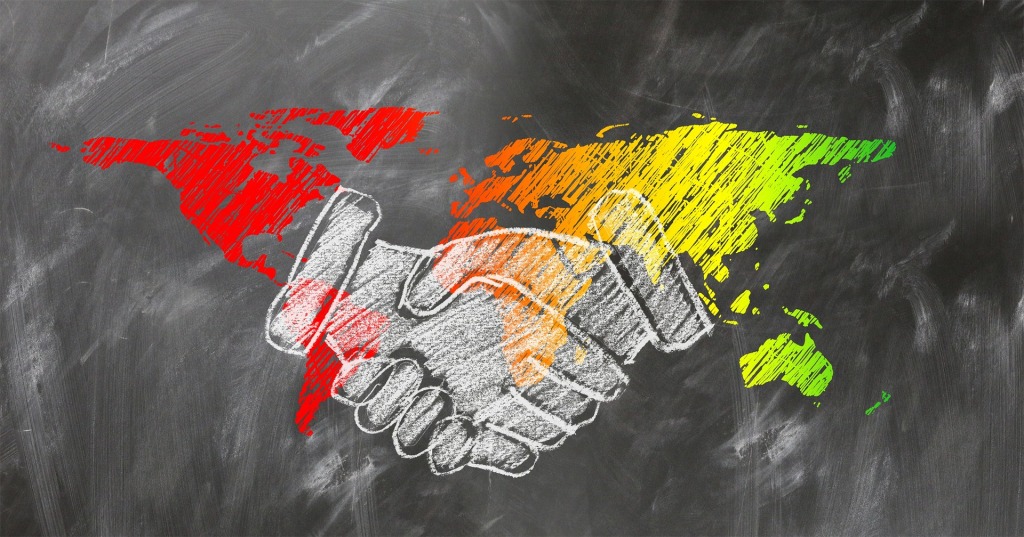
- 10 Feb 2024
Why is it in the News?
While presenting the interim Union budget, Finance Minister Nirmala Sitharaman stated that India will be negotiating Bilateral Investment Treaties (BITs) with its trade partners to boost the inflow of foreign direct investment.
Background:
- India's economic terrain is undergoing a significant shift following the Finance Minister's announcement of plans to negotiate Bilateral Investment Treaties (BITs) during the interim Union budget presentation.
- This decision arrives at a critical juncture, coinciding with India's struggle to address declining levels of foreign direct investment (FDI) and the aftermath of adopting the 2016 Model BIT.
- Given these circumstances, it becomes imperative to explore the evolution of India's BITs, assess the implications of the 2016 model, and analyze the recent policy shift to gauge its potential impact on FDI.
Evolution of Bilateral Investment Treaties (BITs) in India:
- Origins of BITs in India (1990s): During the mid-1990s, India embarked on a significant economic policy shift by initiating Bilateral Investment Treaties (BITs) to attract foreign direct investment (FDI) and create an enabling environment for economic growth.
- The primary aim was to demonstrate India's commitment to protecting investments made by individuals and companies from partner countries.
- The signing of the first BIT between India and the UK in 1994 laid the groundwork for a series of agreements that would play a pivotal role in India's global economic integration.
- Expansion of BITs as Economic Diplomacy (Late 90s to 2000s): BITs in India evolved into strategic tools to mutually encourage and safeguard investments in each other's territories.
- As India sought to position itself as a premier investment destination, these treaties became instrumental in signaling its dedication to safeguarding the rights and interests of foreign investors.
- This period witnessed a proliferation of BITs, reflecting India's acknowledgement of the importance of foreign capital in stimulating domestic industries and infrastructure development.
- Emerging Challenges and Disputes (2010s): The significance of BITs became evident in 2010 with the settlement of the first-ever investor treaty claim in India.
- Subsequent events, including the unfavorable award in the Australia-India BIT dispute (White Industries v Republic of India) in 2011, underscored the complexities and challenges associated with managing disputes arising from these agreements.
- By 2015, India found itself embroiled in 17 known BIT claims, with the Cairn Energy Plc case being particularly notable.
- These challenges prompted a critical reassessment of India's approach, leading to the adoption of the 2016 model BIT.
- Adoption of the 2016 Model BIT and Policy Shift: The adoption of the 2016 model BIT signalled a significant shift in India's approach to BITs.
- It was viewed as a protective measure, resulting in the termination of numerous existing treaties.
- However, the 2016 model BIT faced criticism for its exclusion of key international law principles, such as 'fair and equitable treatment' and 'most favoured nation.'
- Additionally, it introduced a requirement for investors to exhaust local remedies before resorting to international arbitration, potentially delaying the dispute resolution process.
Issues with the 2016 Model of BIT and their Consequences:
- Protective Nature: The introduction of the 2016 Model BIT marked a significant shift in India's approach to bilateral investment treaties, aiming for greater protection.
- Positioned as a response to past disputes, it led to the termination of numerous existing treaties, signalling a desire to recalibrate engagement terms with foreign investors.
- However, concerns arose about its potential impact on India's attractiveness as an investment destination.
- Absence of Key International Law Doctrines: Criticism was directed at the 2016 model BIT for deviating from established international law doctrines.
- Notably, it lacked principles like "fair and equitable treatment" and "most favoured nation," raising doubts about fairness and protection for foreign investors.
- This omission complicated the interpretation and enforcement of investment agreements, adding uncertainty for investors.
- Requirement for Exhausting Local Remedies: The 2016 model BIT introduced a requirement for investors to exhaust local remedies before pursuing international arbitration.
- While this aimed to promote domestic dispute resolution, it created delays and challenges.
- Investors found navigating local legal systems time-consuming and ineffective, potentially discouraging investment.
- Adverse Impact on FDI and Renegotiation Challenges: The consequences of the 2016 model BIT were evident in declining FDI in India.
- FDI equity inflows dropped by 24% to $20.48 billion in April-September 2023, reflecting investor concerns.
- The termination of existing treaties and challenges with the new model hindered India's ability to renegotiate terms, affecting its attractiveness to foreign investors.
- The Cairn Energy Plc case, resulting in a significant award against India, highlighted the difficulties under the 2016 model BIT.
Government Recommendations and Policy Reforms Following Challenges with the 2016 BIT Model:
- Acknowledgement of Limitations and Policy Adjustment: Recognizing the constraints and hurdles posed by the 2016 Model BIT, the Indian government has signalled a shift towards more adaptable and practical strategies.
- The announcement during the presentation of the interim Union budget, highlighting the negotiation of Bilateral Investment Treaties with trading partners, signifies a departure from rigid approaches.
- This acknowledgement underscores the necessity for a nuanced approach that considers evolving international investment dynamics and global economic shifts.
- Parliamentary Standing Committee Proposals: In 2021, the Parliamentary Standing Committee on External Affairs proposed several key recommendations to reevaluate the existing BIT framework.
- These recommendations aimed to tackle challenges associated with the 2016 model BIT and foster a more investor-friendly environment.
- One notable recommendation emphasized the importance of timely dispute resolution through pre-arbitration consultations and negotiations.
- This proactive stance aims to streamline the dispute-resolution process and alleviate pressure on both foreign investors and the Indian legal system.
- Addressing India's Contract Enforcement Ranking: India's low ranking in contract enforcement, currently at 163 out of 190, remains a significant concern.
- Recognizing the link between an efficient legal framework and foreign investment attractiveness, recommendations from the Parliamentary Standing Committee serve as a call to action.
- A timely review of treaties and alignment with global best practices becomes crucial to improving the ease of doing business, reinforcing India's commitment to fostering an investment-friendly climate.
- Free Trade Agreement (FTA) with the UK: As part of ongoing policy reforms, India is working towards finalizing a free trade agreement (FTA) with the UK.
- This strategic endeavour has undergone over 14 rounds of negotiations, with disputes being a major obstacle.
- The proposed FTA is expected to eliminate the requirement for exhausting local remedies, offering a mechanism for swift dispute resolution through international arbitration.
- This pragmatic approach acknowledges the importance of rapid dispute resolution in nurturing international trade relationships.
Conclusion
Achieving a $5 trillion economy hinges on robust international trade and secure investments in India. A forward-looking strategy for BITs is essential to attract and maintain long-term foreign investments, and the government's recent initiative is a positive move. Nevertheless, adopting a more tailored approach, rather than a one-size-fits-all model, is necessary to facilitate rapid yet sustainable growth in cross-border flows.
Contribution of Dr MS Swaminathan Towards Indian Agriculture (Indian Express)
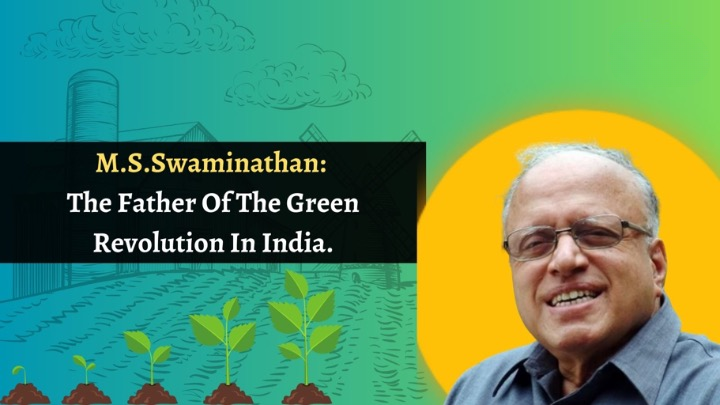
- 09 Feb 2024
Why is it in the News?
Recently, Prime Minister Modi announced that the agriculture scientist M S Swaminathan will be honoured with the Bharat Ratna.
Who was MS Swaminathan?
- Monkomb Sambasivan Swaminathan (MS Swaminathan) was born on August 7, 1925, in Kumbakonam, Madras Presidency (now Tamil Nadu).
- He was an agronomist, agricultural scientist, plant geneticist, administrator, and humanitarian.
- He was known as the ‘father of the Green Revolution’ in India.
- Swaminathan began his career in 1949 researching the genetics of potatoes, wheat, rice, and jute.
- He played a crucial role in developing high-yielding varieties of paddy that helped ensure India’s low-income farmers produced more yield.
- Also known as the ‘father of economic ecology’ by the United Nations Environment Programme, he worked with agriculture ministers including C Subramaniam and Jagjivan Ram during the 1960s and 70s for the success of the ‘Green Revolution’ in India.
- An initiative that paved the way for an exponential rise in the productivity of wheat and rice through the adaptation of chemical-biological technology.
- Career: Swaminathan also held administration positions in various agricultural research laboratories.
- He served as the director general of the Indian Council of Agricultural Research and International Rice Research Institute.
- He also worked as the principal secretary of the Ministry of Agriculture in 1979.
- Later, he also served as the President of the International Union of the Conservation of Nature and Natural Resources.
- In 2004, Swaminathan was appointed as chairman of the National Commission on Farmers.
- Awards and Recognition: He was awarded with the Ramon Magsaysay Award in 1971 and the Albert Einstein World Science Award in 1986.
- He was awarded the first World Food Prize in 1987, following which he set up the MS Swaminathan Research Foundation in Chennai.
- Swaminathan has also been conferred with the Padma Shri, Padma Bhushan, and Padma Vibhushan - the three most prestigious awards.
- Apart from these, he was also given the H K Firodia Award, the Lal Bahadur Shastri National Award, and the Indira Gandhi Prize.
- Swaminathan also contributed to various agricultural and environmental initiatives globally.
- He was named one of the 20 most influential Asians of the 20th century by Time magazine.
- He also served as a Member of Parliament in the Rajya Sabha from 2007 to 2013.
- MS Swaminathan passed away in September 2023 at the age of 98.
- His decision to focus on ensuring India's food security led him to become a key figure in the Green Revolution of the 1960s, which transformed India from a food-deficient nation to one of the world's leading agricultural producers.
- His collaboration with Nobel laureate Norman Borlaug introduced high-yielding varieties of wheat and rice, saving millions from starvation.
- Dr Swaminathan's transformative influence on Indian agriculture began to emerge when he championed the introduction of high-yielding crop varieties.
- His visionary approach was instrumental in pioneering the Green Revolution in India when the country was still grappling with poverty and a lack of social security.
- The impact of Dr. Swaminathan's efforts was nothing short of revolutionary.
- India's food production skyrocketed, and the nation moved from a state of food scarcity to food self-sufficiency.
- His work not only averted potential famines but also elevated the economic conditions of countless farming communities.
How MS Swaminathan Contributed to the Green Revolution?
- MS Swaminathan was greatly influenced by Mahatma Gandhi's teachings of selfless service to the poor and the nation.
- He was very much influenced by the 1943 Bengal famine, which killed up to three million people and realised the need to improve agriculture and food security in India.
- After Swaminathan’s work on rice, he and other scientists worked on doing the same to enhance productivity for the wheat crop.
- India had to get Norin dwarfing genes from Norman Borlaug in Mexico to enhance the productivity and adaptability of its wheat crops.
- These genes, known for their ability to produce shorter wheat plants, were instrumental in the Green Revolution, as they helped increase yield potential and improve resistance to lodging (falling over) in wheat plants.
- By acquiring these genes, India aimed to replicate the success of the Green Revolution and address food security challenges by boosting wheat production.
- Norman Borlaug was an American scientist who was working on developing more productive crop varieties.
- It led to him winning the Nobel Peace Prize in 1970 for his work in developing High Yielding Varieties (HYVs) of wheat.
- Many researchers and scientists were involved in this work but there isn’t any doubt that the basic strategic vision underpinning the Green Revolution in India, introducing a new genetic strain or ‘plant type’ responsive to increased fertiliser and water application came from MS Swaminathan.
- The problem with the traditional wheat and rice varieties was that they were tall and slender.
- These ‘lodged’ – fell flat on the ground — when they grew and their heads were heavy with well-filled grains produced in response to high fertiliser doses.
- Through Swaminathan’s research on rice, a reduction in plant height was sought to make them less lodging-prone but this was not easy to do.
- His strategy of developing semi-dwarf wheat varieties using mutagenesis exposing plants to chemicals or radiation to introduce desirable modifications in their DNA did not, however, work.
- The lowering of plant heights led to a simultaneous reduction in the size of the grain-bearing panicles or earheads.
- The search for an ideal variety led him to contact American scientist Orville Vogel.
- He played a role in developing a ‘dwarf wheat’ called Gaines, which had a high yield.
- It contained dwarfing genes from a dwarf wheat called the Norin-10.
- Vogel agreed but was unsure of the wheat’s potential in the Indian climate and thus advised Swaminathan to approach Norman Borlaug, who had incorporated the same dwarfing genes through Vogel’s lines into his spring wheat varieties in Mexico that were better suited for India.
- Borlaug also later visited India, after Swaminathan proposed so to the Indian Agricultural Research Institute, allowing for the wheat breeding programme to commence.
- In 1963, they began a serious effort to breed dwarf wheat and within five years, this initiative led to what became known as the "Wheat Revolution."
- Indira Gandhi, the then Prime Minister of India, released a special stamp to mark the achievement.
The Side Effects of the Green Revolution:
- Despite its landmark role in achieving food sufficient in India, the Green Revolution has been criticised on multiple counts, such as:
- Benefiting the already prosperous farmers as it was introduced in states with higher productivity.
- Swaminathan recognised such issues as early as January 1968, addressing the Indian Science Congress at Varanasi.
- He highlighted concerns about the rapid spread of a few high-yielding crop varieties replacing diverse local ones, leading to potential problems like soil degradation, desertification, excessive pesticide use, and unsustainable groundwater extraction.
- Unfortunately, many of these concerns have materialised today.
- He also lent his support to farmers as the head of the National Commission on Farmers from 2004-06, he recommended that the Minimum Support Price at which farmers sell their crops to the government should be at least 50 per cent more than the weighted average cost of production.
- For his contributions, Swaminathan was awarded the first World Food Prize Laureate in 1987, for “developing and spearheading the introduction of high-yielding wheat and rice varieties into India during the 1960s when that country faced the prospect of widespread famine.
- Wheat production doubled in just a few years, making the country self-sufficient and saving millions from extreme food deprivation.
Significance of Union Budget's Deep Tech & Research Funding (Indian Express)

- 08 Feb 2024
Why is it in the News?
In her Interim Budget speech, Finance Minister Nirmala Sitharaman announced a Rs 1 lakh crore fund to provide long-term, low-cost or zero-interest loans for research and development.
Context:
- Finance Minister, Nirmala Sitharaman in her Interim Budget speech, announced a Rs 1 lakh crore fund to provide long-term, low-cost, or zero-interest loans for research and development.
- A new scheme to strengthen deep-tech capabilities in the defence sector that is likely to be followed up later was also announced.
- The separate announcements on the fund and defence deep tech are intricately linked and must be seen together with the government’s other plans for the R&D sector.
What is Deep Tech?
- Deep tech refers to advanced and disruptive technologies, many of which are still under development, that have the potential to trigger transformative change and provide solutions for the future.
- The term is used to describe cutting-edge research in nanotechnology, biotechnology, material sciences, quantum technologies, semiconductors, artificial intelligence, data sciences, robotics, 3D printing, etc.
What are the Advantages of Deep Tech?
- These technologies are expected to play a key role in addressing complex global challenges like climate change, hunger, epidemics, energy access, mobility, physical and digital infrastructure, and cyber security including:
- Economic Implications: Advanced capabilities in deep tech are also likely to enhance productivity drive economic growth create jobs in coming years, and offer a competitive advantage to countries with strong foundations in these areas.
- Opportunities for India: With its large base of relatively high-quality science and engineering manpower and a fairly well-established technology culture, India feels it is well-placed to be one of the frontrunners in these areas.
- Potential Benefits: There is scope to contribute to the development of these technologies, which can ensure early adoption, shares in intellectual property, indigenous know-how, and self-reliance.
- Major associated benefits in terms of spin-off technologies, trained manpower, entrepreneurship and technology exports can accrue as well.
Initiatives by the GOI to Build a Deep Tech Ecosystem
- Over the past few years, the government has tried to incentivise research in some of these areas by setting up a National Mission on Transformative Mobility and Battery Storage and, more recently, a National Quantum Mission.
National Mission on Transformative Mobility and Battery Storage:
- This mission is aimed at fostering innovation in the mobility and energy storage sectors.
- The government encourages research and development in electric vehicles, advanced battery technologies, and sustainable mobility solutions through focused platforms and financial incentives.
- It targets challenges related to environmental sustainability and energy efficiency.
National Quantum Mission:
- Recognizing the transformative potential of quantum technologies, the government has initiated the National Quantum Mission.
- This effort concentrates on promoting research and development in quantum computing, communication, and sensing.
- Quantum technologies hold promise for revolutionizing various industries, and the mission aims to position India as a leader in global quantum advancements.
National Deep Tech Startup Policy (NDTSP):
- In addition to mission-oriented strategies, the government has devised a policy framework to create a conducive environment for deep tech companies.
- The NDTSP addresses specific challenges faced by technology startups and aims to nurture a thriving ecosystem for their growth.
- Currently awaiting government approval, it embodies a comprehensive approach to cultivating a vibrant deep-tech startup ecosystem in India.
- Objectives and Key Components of NDTSP: The NDTSP is designed to achieve several objectives, including:
- Competitiveness: Fostering innovation to enable startups to compete globally.
- Collaboration: Facilitating partnerships between startups and international counterparts.
- Incentives: Providing appropriate incentives for companies investing in innovation and research.
The policy outlines key components to achieve its goals, such as:
- Funding Opportunities: Creating avenues for long-term funding to support sustained innovation.
- Intellectual Property Rights: Establishing a simplified yet robust intellectual property rights regime.
- Tax Incentives: Offering tax incentives to encourage investment in deep tech startups.
- Regulatory Framework: Developing a conducive regulatory environment to streamline operations.
- Standards and Certifications: Establishing standards and certifications to ensure quality and reliability.
- Talent Nurturing: Focusing on nurturing talent through skill development and educational initiatives.
- Industry-Academia Collaboration: Facilitating linkages between industry, research centres, and educational institutions to promote knowledge exchange.
The Challenge of Funding in Deep Tech Research:
- Challenges in Research Funding Landscape: There's a persistent concern within the scientific community regarding the need for more research funding.
- India's investment in research lags behind the global average, particularly in comparison to scientifically advanced nations that serve as direct competitors.
- Disparity Between Targets and Actual Spending: For more than two decades, the Indian government has set a target of allocating at least 2% of the GDP for research and development.
- Despite an increase in absolute spending, the proportion of GDP dedicated to research has dwindled in recent years.
- Currently, India allocates a mere 0.65% of its national GDP to research and development activities, significantly below the global average of approximately 1.8%.
Government's Initiatives to Address the Funding Challenges:
- Harnessing Public-Private Collaboration: Recent governmental directives reflect a recognition that significant boosts in research and development expenditure may only be attainable through effective partnerships with the private sector.
- Initiatives are underway to forge synergies among industry, research laboratories, and educational institutions, aimed at bolstering both research activities and the financial resources available to support them.
- Introduction of the National Research Foundation (NRF): The establishment of the National Research Foundation (NRF), operational in recent times, stands as a key component of this strategy.
- With an objective to tackle the funding hurdle, the NRF is set to procure approximately 70% of its Rs 50,000 crore allocation over the next five years from the private industry.
- This collaborative model is envisioned to cultivate a more sustainable and resilient ecosystem for deep tech research and development in India.
The 1 Lakh Crore Fund: Anticipations, Enthusiasm, and Doubts:
- Anticipations: The provision of a Rs 1 lakh crore fund for financing research and development is deemed crucial in fortifying the research landscape.
- This fund holds particular promise for startups and private sector ventures in need of initial funding to kickstart their projects.
- Anticipations are high that these initiatives will gain momentum with the injection of funds.
- Enthusiasm and Doubts: While the government expresses optimism regarding the potential impact of this substantial fund, there exists scepticism within the scientific community.
- Past expectations of significant private sector contributions to research have not materialized, leading to uncertainties and reservations among researchers.
- Scientists argue that there's an imbalance in expectations, with excessive reliance on the private sector without a corresponding increase in government funding.
- The unpredictability and inadequacy of private-sector financing present significant challenges.
- Currently, the government appears to heavily rely on the success of its new funding initiatives for research.
- However, the budgetary allocations for science and research departments in the Interim Budget show only nominal increases.
Conclusion
- The recent initiative promises startups and other private sector ventures access to seed funding, offering potential benefits for their projects, yet, to boost R&D expenditure, fostering deeper partnerships with the private sector is essential. Initiatives are underway to enhance collaboration among industry, research laboratories, and educational institutions, aiming to diversify research activities and amplify available funding.
Union's Control of Financial Flows to State Governments (Indian Express)
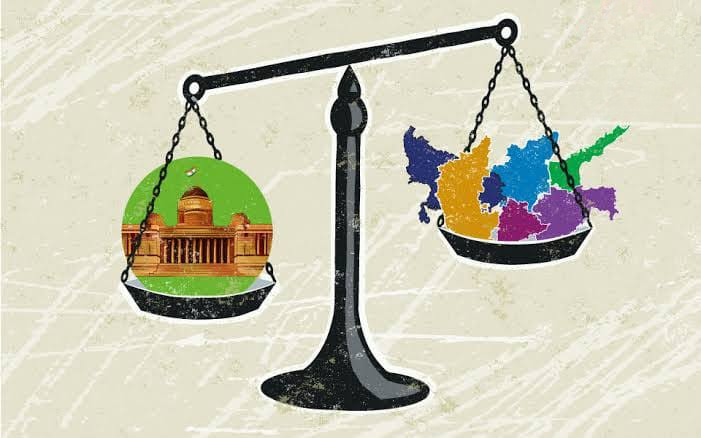
- 07 Feb 2024
Why is it in the News
The Union government’s moves, which reduce the aggregate financial transfers to States, are weakening cooperative federalism.
Background:
- The fiscal dynamics between the Union government and the states in India have experienced notable shifts since the tenure of the 14th Finance Commission (FC) award period (2015-16).
- Official data indicates a trend of diminishing financial transfers from the Union government to the states.
- Thus, it becomes imperative to analyze the nuances of these financial transfers, delving into the deviations from the recommendations of FCs, their repercussions on states, and the potential ramifications for federal fiscal policies.
An Evaluation of Deviation from Finance Commission Recommendations:
- Recommendation of Substantial Shift in Devolution by 14th FC: Recognising the imperative of empowering the States, the 14th FC recommended a significant increase in the devolution of Union tax revenues.
- Specifically, the recommendation was to devolve 42% of Union tax revenues to the States, marking a substantial 10 percentage points increase from the preceding 13th FC's suggestion.
- This ambitious shift was intended to enhance the financial autonomy of the States, aligning with the principles of cooperative federalism.
- Deviation from FC Recommendations by the Union Government: Instead of adhering to the recommended increase, there has been a consistent reduction in financial transfers to the States.
- This deviation is particularly perplexing given that the 15th FC retained the recommendation of 41%.
- It excluded the devolution to Jammu and Kashmir (J&K) and Ladakh, which were reorganized as Union Territories.
- If the shares of J&K and Ladakh are included, the recommended devolution should stand at 42%.
- The Dynamics of Financial Transfers of Tax Revenue: The analysis of tax revenue provides a critical understanding of dynamics of financial transfers between the Union government and the States.
- The Finance Commissions recommend the States' share based on the net tax revenue of the Union government.
- It is derived after accounting for various factors such as collection costs, revenue assigned to Union territories, and the impact of cess and surcharge.
Analysis of Tax Revenue Disparities:
- Contrasting Trends in States' Share: A Departure from FC Guidelines: The Fourteenth and Fifteenth Finance Commissions recommended states' shares of 42% and 41%, respectively, of the net tax revenue.
- However, the actual share of gross tax revenue stood at only 35% in 2015-16, dwindling further to 30% in the 2023-24 Budget Estimate.
- This discrepancy assumes significance, particularly against the backdrop of a significant surge in the Union government's gross tax revenue, soaring from ?14.6 lakh crore in 2015-16 to ?33.6 lakh crore in 2023-24.
- Disparities in Revenue Growth: The more than two-fold increase in the Union government's gross tax revenue over this period starkly contrasts with the doubling of states' share in Union tax revenue.
- This discrepancy raises concerns regarding equitable resource distribution.
- Essentially, the widening gap between the Union government's revenue generation and states' share indicates a disproportionate augmentation in the former's fiscal capacity.
- Declining Grants-in-Aid: The disparity becomes more evident when analyzing grants-in-aid to states, another statutory grant recommended by the Finance Commission.
- The absolute amount of grants-in-aid declined from ?1.95 lakh crore in 2015-16 to ?1.65 lakh crore in 2023-24.
- Consequently, the collective share of statutory financial transfers in the Union government's gross tax revenue witnessed a notable decline, plummeting from 48.2% to 35.32%.
Potential Factors Contributing to Decreasing States’ Share:
- Calculation Methodology: One of the primary factors behind the dwindling share of states in gross revenue lies in the calculation method.
- The net tax revenue, used to determine states' share, excludes revenue collections under cess and surcharge, revenue from Union Territories, and tax administration expenditure.
- Role of Cess and Surcharge: In 2015-16, revenue collection through cess and surcharge accounted for 5.9% (?85,638 crore) of gross tax revenue, increasing to 10.8% (?3.63 lakh crore) by 2023-24.
- This notable surge underscores the Union government's strategic utilization of cess and surcharge to channel funds for specific sectoral schemes, enhancing its financial autonomy.
- Exclusion of States from Cess and Surcharge Revenues: The revenues generated through these additional levies are not shared with states, highlighting a more centralized control over financial resources by the Union government.
- This selective exclusion limits resources available for devolution to states, potentially impacting their financial autonomy.
Centralization of Public Expenditure and Its Implications:
- Union Government’s Routes of Financial Transfer: Apart from traditional financial transfers like tax devolution and grants-in-aid, the Union government employs Centrally Sponsored Schemes (CSS) and Central Sector Schemes (CSec Schemes) for direct financial transfers to states.
- Influencing State Priorities Through CSS: Under CSS, the Union government proposes schemes and provides partial funding, compelling states to align their priorities with those proposed by the Union government.
- The allocation for CSS has substantially increased from ?2.04 lakh crore to ?4.76 lakh crore between 2015-16 and 2023-24, although actual financial transfers to states under CSS remain lower than allocated funds.
- CSec Schemes and Exclusive Control: Fully funded by the Union government, CSec Schemes operate in sectors where the Union government holds exclusive legislative or institutional controls.
- The significant increase in allocation for CSec Schemes from ?5.21 lakh crore to ?14.68 lakh crore between 2015-16 and 2023-24 underscores the Union government's preference for such schemes.
- Potential Bias in Resource Allocation: The decentralized implementation of CSec Schemes grants the Union government considerable latitude in allocating financial resources, raising concerns about potential bias in resource distribution.
- Challenges for Cooperative Federalism: The downward revision of states' share in Union tax revenue from 42% to 41%, despite recommendations by the 15th Finance Commission, poses challenges to cooperative federalism.
- Future discussions before the 16th Finance Commission might continue to address such challenges, potentially impacting collaborative federalism.
Conclusion
The evolving financial landscape between the Union government and states in India underscores the imperative for a comprehensive review of the fiscal architecture. Deviations from Finance Commission recommendations, increasing reliance on non-statutory transfers, and potential biases in resource allocation challenge the principles of cooperative federalism. Addressing these issues is essential to ensure equitable distribution of resources and foster collaborative governance between the Union and states, thus reinforcing the foundation of cooperative federalism for inclusive and sustainable development across the nation.
How to restore WTO’s authority (Indian Express)
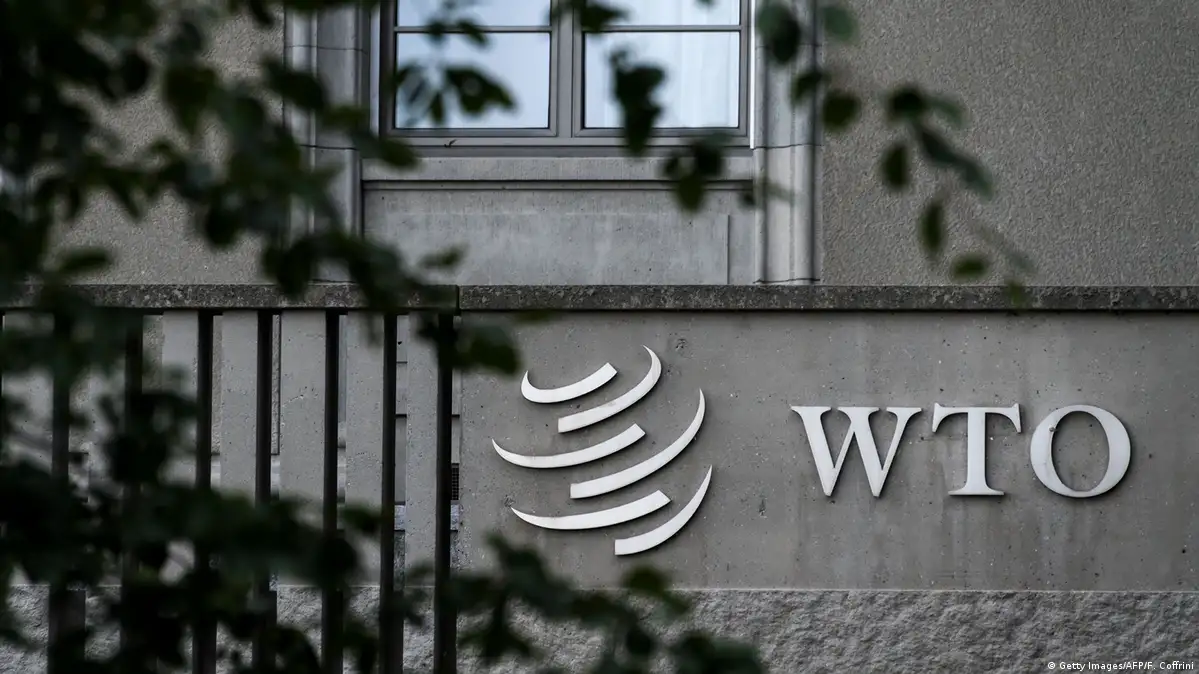
- 05 Feb 2024
Why is it in the News
Since the end of 2019, WTO’s crown jewel, the appellate body (AB) stands crippled because the US has single-handedly blocked the appointment of new members.
Context:
- The 13th ministerial meeting of the World Trade Organization (WTO) is scheduled in Abu Dhabi, presenting a chance to tackle the persistent crisis in the Dispute Settlement Mechanism (DSM).
- The effectiveness of WTO's key component, the DSM, has diminished since late 2019, mainly due to the United States obstructing the appointment of new Appellate Body (AB) members.
- Despite the implications of this crisis, there exist specific options for developing countries that could offer potential solutions to rejuvenate the DSM.
What is the World Trade Organization (WTO)?
- The WTO is an international institution responsible for overseeing global trade rules among nations.
- With 164 member countries (including Liberia and Afghanistan, the most recent additions in 2016) and 25 observer countries and governments, it officially commenced operations on January 1, 1995, replacing the 1948 General Agreement on Tariffs and Trade (GATT) in accordance with the 1994 Marrakesh Agreement.
Organizational Structure:
- The highest authority within the WTO is the Ministerial Conference, comprising all member states, typically meeting biennially with a consensus-driven decision-making approach.
- Daily operations are managed by three bodies, sharing the same membership:
- General Council:
- Functions as the primary decision-making body.
- Convenes as the Dispute Settlement Body (DSB) when addressing disputes between WTO members.
- Dispute Settlement Body (DSB):
- Empowered to establish dispute settlement panels.
- Refers matters to arbitration.
- Adopts reports from panels, Appellate Body, and arbitration.
- Monitors the implementation of recommendations and rulings, authorizing concession suspension in cases of non-compliance.
- Exclusive authority to make decisions, while panels and the Appellate Body can only offer recommendations.
- Trade Policy Review Body:
- Operates with terms of reference distinct from the General Council and DSB.
- Assesses the trade policies of member countries through periodic reviews.
- This structure ensures effective governance and dispute resolution within the WTO framework, emphasizing consensus in decision-making processes.
The Importance of the Appellate Body (AB):
- Enforceable Decision-Making:nThe Appellate Body (AB) holds the authority to review and, if necessary, overturn legal findings and interpretations by WTO panels.
- This enforceable nature ensures a conclusive resolution to trade disputes, fostering stability and predictability in international trade relations.
- Mandatory Jurisdiction: The AB's jurisdiction spans all WTO member countries, creating a mandatory framework for resolving disputes.
- Member nations are obligated to participate in the AB process, reinforcing the foundation of a rules-based international trading system.
- Advocacy for Equitable Practices: By addressing disputes and upholding compliance with WTO rules, the AB contributes to the promotion of fair and equitable trade practices.
- This approach establishes a level playing field for both developed and developing nations, supporting inclusivity and sustainable economic growth.
Challenges in the Dispute Settlement Mechanism (DSM):
- Appellate Body's Paralysis: Since late 2019, the AB, integral to the DSM, has been practically non-functional due to the blockage of new member appointments, primarily led by the United States dissatisfied with previous dispute outcomes.
- This obstruction erodes the binding nature of the dispute resolution process, creating a legal void.
- Evasion of Compliance: With the AB inoperable, countries have found a loophole to evade compliance with WTO panel rulings.
- Nations can appeal into the void, rendering the DSM ineffective and contradicting its purpose of providing a binding and enforceable resolution to trade disputes.
- Prolonged Dispute Resolution: The absence of a functioning AB leads to delays in resolving trade disputes.
- Without a binding appellate process, disputes may linger, contributing to economic uncertainties and potential retaliatory actions among trading partners.
- Undermining Rules-Based Trade: The DSM crisis jeopardizes the concept of a rules-based international trading system.
- The inability to enforce agreed-upon rules diminishes predictability and stability crucial for global economic growth through trade.
Potential Measures for Developing Countries to Sustain a Functional Two-Tiered DSM:
- Participation in the European Union-led MPIA: Developing countries can explore joining the European Union-led multi-party Interim Appeal Arbitration Arrangement (MPIA) as an initial option.
- This arrangement formalizes the arbitration mechanism already available under the WTO, providing appellate review for panel reports.
- However, the MPIA's voluntary nature poses challenges, leading to ad hoc tribunals and limited adoption of awards by all WTO members.
- Creation of a Restricted AB with Limited Powers: Considering the opposition to the AB by the United States, an alternative is formulating a diluted AB with constrained powers.
- Limiting the AB's authority in various ways, such as deference to parties in dispute and non-persuasive value of rulings, may be explored.
- However, a diluted AB could contradict the intended role of the DSM in providing security and predictability to the multilateral trading regime.
- Resurrecting the AB with an Opt-Out Provision: Scholars Robert Howse and Wenhua Ji propose resurrecting the AB with a critical modification—allowing countries to opt out of compulsory AB jurisdiction.
- Countries opting out would be excluded from participating in the appellate process, settling disputes solely through a single-tier panel jurisdiction.
- Critics express reservations about altering the intrinsic nature of a two-tier binding DSM but acknowledge the need to safeguard the AB's integrity.
Conclusion
In addressing the WTO DSM crisis, developing countries, including India, confront a complex decision-making process.
While restoring the AB to its original form is ideal, the suggested resurrection with an opt-out provision offers a pragmatic compromise, recognizing challenges while preserving the AB's legitimacy.
As WTO member countries gather in Abu Dhabi, the way forward requires thoughtful consideration of trade-offs to balance DSM effectiveness with accommodating diverse interests in the global trade landscape.
Major Takeaways From Interim Budget (2024-25) (The Hindu)
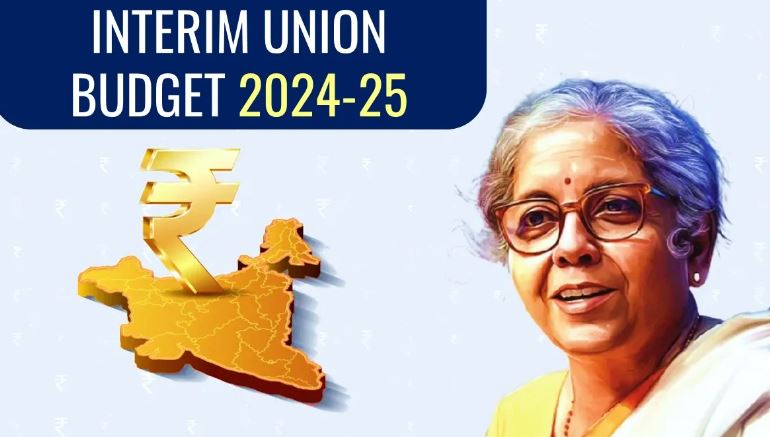
- 02 Feb 2024
Why is it in the News?
Finance Minister Nirmala Sitharaman presented her sixth Union Budget for the next financial year (2024-25), which differed from previous budgets as it was an interim budget.
What is the Interim Budget?
- The Interim Budget serves as a transitional financial plan presented by the incumbent government in an election year, bridging the period between the dissolution of the Parliament and the formation of a new government.
- This budgetary measure is necessitated by constitutional requirements outlined in Article 112 of the Indian Constitution, which mandates the submission of an annual financial statement to both Houses of Parliament.
- This statement outlines the anticipated receipts and expenditures of the Government of India for the upcoming fiscal year and requires approval from both Houses.
- However, in an election year, the prospect of a change in government following the polls prevents the presentation of a full-fledged budget by the incumbent administration.
- Consequently, the need arises for an interim budget to address the financial requirements during the transitional period.
- While there is no specific constitutional provision for an interim budget, the government seeks approval from the Lower House for the funds necessary for the transition period (April - July) through the votes on account provision.
Features and Components of Interim Budget:
- During the presentation of an interim budget, the Finance Minister provides an overview of the current state of the Indian economy, including its fiscal status and revised estimated growth for the upcoming year.
- This presentation encompasses details of both planned and non-planned government expenditures and revenues.
- While the government refrains from introducing major schemes that could sway voters or presenting an Economic Survey, it retains the authority to revise tax rates within the framework of the interim budget.
- Similar to the Union budget, the interim budget is presented to both Houses of Parliament on February 1 by the Finance Minister, subjected to debate and voting in the Lok Sabha, and subsequently forwarded for Presidential approval.
- Despite its interim nature, the interim budget remains valid for the entire fiscal year, serving as a crucial transitional arrangement until the presentation of a full-fledged budget by the new government.
What is Vote on Account?
- Article 116 of the Constitution empowers the Lower House to authorize advance grants for estimated expenditures during a portion of a financial year through legislative approval.
- This mechanism, known as a vote on account, facilitates the continuity of government operations during transitional periods.
- A typical vote on account encompasses the allocation of funds for essential expenses such as salaries, ongoing projects, and other necessary expenditures of the Central government.
- Notably, it does not entail modifications to tax rates.
- Additionally, a standard vote on account remains effective for a period of two months, with the possibility of extension for up to four months as required.
Major Takeaways from the Interim Budget (2024-25) - Part I:
- No Change in Taxation: The Interim Budget maintains existing tax rates without proposing any changes to direct or indirect taxes, including import duties.
- Withdrawal of Outstanding Direct Tax Demands: A significant initiative in the Interim Budget is the proposal to withdraw outstanding direct tax demands, benefiting taxpayers with demands up to Rs. 25,000 for the period up to the financial year 2009-10, and up to Rs. 10,000 for financial years 2010-11 to 2014-15.
- This measure is expected to benefit approximately one crore taxpayers.
- Tripled Direct Tax Collections: Over the past decade, direct tax collections have more than tripled, accompanied by a substantial increase in the number of return filers.
- The new tax regime ensures no tax liability for taxpayers with income up to Rs. 7 lakh.
- Additionally, corporate tax rates for existing domestic companies have been reduced from 30% to 22%, and for certain new manufacturing companies to 15%.
- Improvements in Taxpayer Services: The government's focus on enhancing taxpayer services has led to a transformation in the assessment system and simplified tax return filing processes.
- The average processing time for returns has been significantly reduced from 93 days to just 10 days.
- GST Compliance Relief: The implementation of GST has streamlined compliance for trade and industry, resulting in a reduction in logistics costs and taxes, and ultimately lowering prices for consumers.
- The GST base has doubled, with monthly gross GST collections nearly doubling to Rs. 1.66 lakh crore.
- Customs Facilitation Measures: Several steps have been taken in customs to facilitate international trade, including a substantial decrease in import release times at Inland Container Depots, air cargo complexes, and seaports over the last four years.
- White Paper Announcement: The government will release a white paper to provide insights into the period until 2014, aiming to draw lessons from past challenges and policy decisions.
Interim Budget (2024-25)- Part II:
- Increased Capital Expenditure: The Interim Budget allocates an 11.1% increase in capital expenditure for the upcoming year, amounting to Rs. 11,11,111 crore, representing 3.4% of the GDP.
- This investment aims to build on previous capital expenditure growth and stimulate economic growth and employment.
- Projected Real GDP Growth: India's Real GDP is projected to grow at 7.3% in FY 2023-24, reflecting the economy's resilience and healthy macroeconomic fundamentals despite global challenges.
- International agencies forecast India's continued growth between 6.1% and 6.7% in 2024-25.
- Robust GST Collection and Revenue Outlook: Strong economic activity has bolstered revenue collections, with gross GST revenues surpassing the Rs. 1.6 lakh crore mark for the seventh time.
- Total receipts, excluding borrowings, are estimated at Rs. 30.80 lakh crore, reflecting strong growth momentum and formalization in the economy.
- Support for State Governments: The Interim Budget extends support to state governments through schemes such as interest-free loans for capital expenditure and provisions for milestone-linked reforms.
- Fiscal Consolidation and FDI Inflow: Efforts towards fiscal consolidation aim to reduce the fiscal deficit to below 4.5% by 2025-26, with market borrowings estimated to be lower than the previous fiscal year.
Additionally, the government highlights a significant increase in FDI inflows over the past decade.
- Developmental Achievements: The Interim Budget underscores various developmental initiatives, including poverty alleviation programs, support for entrepreneurs through schemes like PM Mudra Yojana, housing initiatives, and promotion of startups through financial assistance.
- Infrastructure Development in Railways and Aviation: The budget outlines plans for major economic railway corridor programs and enhancements in aviation infrastructure, reflecting the government's commitment to improving transportation and connectivity.
- Committee on Population Growth Challenges: A high-powered committee will be formed to address challenges arising from rapid population growth and demographic changes, aligning with the goal of 'Viksit Bharat' (Developed India).
What are Other Announcements and Strategies in the Budget?
- During the presentation of the Interim Budget, Union Finance Minister Smt. Nirmala Sitharaman unveiled plans to increase the capital expenditure outlay for the next year by 11.1 percent to approximately Rs. 11 lakh crore, constituting 3.4 percent of the GDP.
- The Interim Budget introduces a range of announcements and strategies, signaling the trajectory and developmental approach aimed at realizing the vision of a 'Viksit Bharat' (Developed India) by 2047.
- In a series of announcements, Smt. Nirmala Sitharaman underscored the government's commitment to empowering the eastern region and its populace, positioning it as a significant catalyst for India's overall economic growth which includes:
- Boost in the Technology Sector: A corpus of Rs 1 lakh crore will be established through a fifty-year interest-free loan to facilitate long-term financing or refinancing for research and innovation in emerging technology domains.
- This initiative aims to incentivize the private sector to significantly enhance research and innovation efforts.
- Railway Infrastructure Development: The budget outlines plans for three major economic railway corridor programs focusing on energy, mineral, and cement corridors, port connectivity corridors, and high-traffic density corridors.
- Additionally, the conversion of forty thousand normal rail bogies to Vande Bharat standards will enhance safety, convenience, and passenger comfort.
- Aviation Sector Expansion: With the number of airports doubling to 149, and five hundred and seventeen new routes serving 1.3 crore passengers, the aviation sector demonstrates significant growth.
- Indian carriers have proactively placed orders for over 1000 new aircraft, indicating a robust expansion in the aviation industry.
- MGNREGA Allocation: A substantial increase in allocation for the Mahatma Gandhi National Rural Employment Guarantee Act (MGNREGA) scheme is proposed in the Interim Budget for 2024-25, with Rs. 86,000 crore allocated compared to Rs. 60,000 crore in the previous fiscal year.
- Subsidy Rationalization: The interim budget aims to reduce the subsidy bill on essential commodities like food, fertilizer, and fuel, with the projected subsidy falling to a five-year low of approximately Rs. 3.8 lakh crore in 2024-25.
- Notably, the fertilizer subsidy is being reduced with expectations of improvements in the global situation and increased domestic production.
- Demographic Challenges Addressed: Recognizing the challenges posed by rapid population growth and demographic changes, the government announces the formation of a high-powered committee.
- Tasked with comprehensive consideration and recommendations, this committee aligns with the goal of 'Viksit Bharat' (Developed India) by addressing demographic challenges effectively.
Conclusion
The Interim Budget serves as a transitional financial plan presented by the government during an election year, addressing various sectors such as railways, tourism, healthcare, technology, aviation, green energy, aquaculture, and housing. However, it is important to note that the incoming government will present its comprehensive budget after the newly elected Lok Sabha, delineating the government's financial strategy for the entire fiscal year.
The Evolution and Powers of the Deputy Chief Minister (Indian Express)
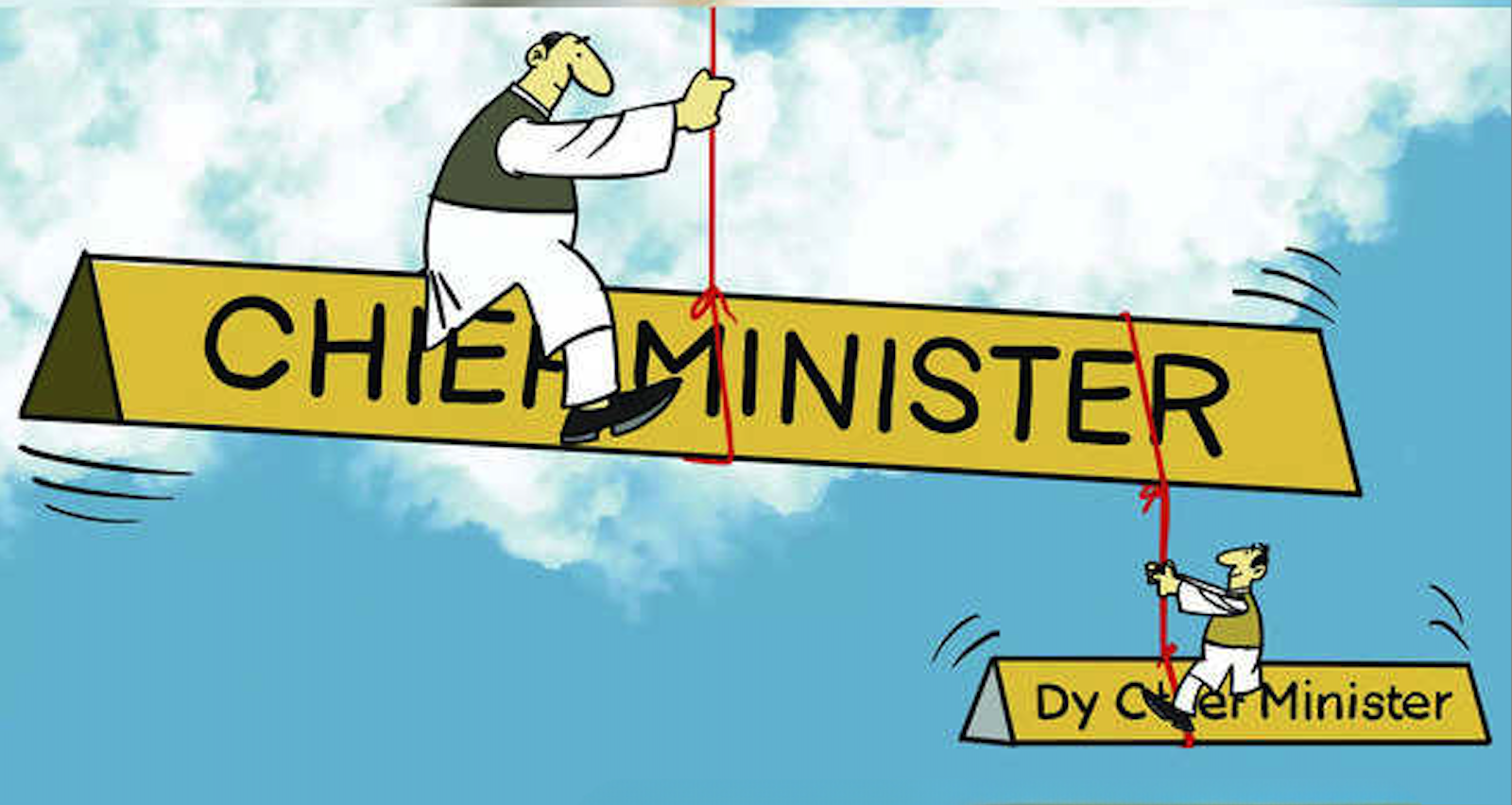
- 01 Feb 2024
Why is it in the News?
Currently, there are 26 deputy CMs across 14 states. The post, not mentioned in the Constitution, is nevertheless a long-standing feature of Indian politics.
Context:
- The tradition of appointing a deputy CM in Indian politics is a well-established practice, typically arising from political negotiations, especially in coalition governments or situations where a single leader lacks undisputed authority within the ruling party or support across key interest groups in the state.
- This trend is gaining prominence, evident in the four out of five states that underwent elections in November—Madhya Pradesh, Rajasthan, Telangana, and Chhattisgarh—all currently having deputy CMs.
- With the exception of Tamil Nadu and Kerala, most major states also feature the position of deputy CM.
What is the Post of Deputy CM?
- Article 163(1) of the Constitution says “There shall be a Council of Ministers with the Chief Minister at the head to aid and advise the Governor in the exercise of his functions”.
- Neither Article 163 nor Article 164 mentions the post of Deputy Chief Minister.
- The post of Deputy CM is understood as being equivalent in rank to that of Cabinet Minister (in the state).
- The Deputy CM enjoys the same pay and perks as a Cabinet Minister.
Across Various States:
- At least 13 other states in the country apart from Bihar currently have Deputy CMs.
- The other states include:
- Maharashtra, Haryana, UP, Karnataka, Rajasthan, Madhya Pradesh, Chhattisgarh, Telangana, Himachal Pradesh, Meghalaya, Nagaland, Arunachal Pradesh and Andhra Pradesh
- The highest of these is in Andhra Pradesh, with Chief Minister Y S Jagan Mohan Reddy having five Deputy CMs.
A Brief History of the Deputy CM Post:
- Perhaps the first Deputy CM in India was Anugrah Narayan Sinha, who was the most important leader of the Congress in Bihar after the first Chief Minister of the state, Dr Srikrishna Singh (Sinha).
- Deputy CMs were seen in more states, especially after the reduction of Congress’s near-total dominance in national politics after 1967.
- Bihar: Anugrah Narayan Sinha remained Deputy CM until his death in 1957.
- Karpoori Thakur became the second Deputy CM of Bihar in 1967, in the state’s first non-Congress government led by Mahamaya Prasad Sinha.
- Uttar Pradesh: Ram Prakash Gupta of the Bharatiya Jana Sangh (BJS) became Deputy Chief Minister in the Samyukta Vidhayak Dal (SVD) government that came to power in 1967 with Chaudhary Charan Singh as Chief Minister.
- This experiment was repeated in the next government under Chief Minister Chandra Bhanu Gupta of the Congress — when Kamalapati Tripathi was sworn in as Deputy CM in February 1969.
- Both Ram Prakash Gupta and Tripathi went on to become CMs themselves.
- Madhya Pradesh: Virendra Kumar Saklecha of the BJS became Deputy CM in the SVD government led by Govind Narain Singh who came to power in July 1967.
- Haryana: Haryana has had a tradition of Deputy CMs; Chaudhary Chand Ram, a Jat leader from Rohtak, was the first to hold this position in the short-lived government led by Rao Birender Singh.
What are the Powers of the Deputy CM?
- More than the post of deputy chief minister, it is the nature of portfolios allocated to a deputy chief minister that decides how much weight the person carries in the cabinet.
- Chief ministers are often seen to keep most of the important portfolios like home and vigilance with themselves.
- If it's a coalition government, then senior leaders of the largest coalition partner usually get finance and revenue.
- The chief minister is also the sole authority on the transfer and posting of Class-I officers in the state.
- The deputy chief minister does not have a say in this matter.
- The deputy chief minister gets the same pay and perks as enjoyed by other cabinet-rank ministers in the government.
- They, however, enjoy tax-free pay and perks.
- In the matters of administration, the deputy chief minister holds no authority to see the files earmarked for the chief minister.
- In fact, the deputy chief minister is required to route all files pertaining to the portfolios allocated to her to the chief minister for clearance.
- The deputy chief minister cannot claim to preside over a cabinet meeting on her own or issue directions to other departments than allocated to her by the chief minister.
- The deputy chief minister, like any other minister, needs to seek clearance from the chief minister for expenditure over and above the budget allocated to her departments.
- Yet, deputy chief ministers are politically significant.
- It conveys the political weight the party - in the case of the coalition government - or the leader carries in the ruling dispensation.
- This is virtually a declaration that the leader who is appointed as deputy chief minister is Number 2 in the government.
- This aside, the number of deputy chief ministers in a government reflects factions in the ruling dispensation that need to be balanced for survival or the government's hitch-free run.
- Even in oath-taking, the Constitution does not provide for a separate oath for the deputy chief minister or deputy minister.
What are the Concerns?
- Lack of constitutional backing and unclear roles can allow the Chief Minister to exploit the position arbitrarily.
- Unlimited appointments of Deputy CMs may lead to excessive appeasement of coalition partners.
- Duplication of roles with Cabinet ministers could create governance and administrative challenges.
What Lies Ahead?
- There's a need to clearly define the roles and responsibilities of Deputy CMs.
- Implementing a limit on the number of Deputy CMs per Chief Minister could streamline the role.
- It's essential to raise political awareness among Indian citizens about this position.
Deputy Prime Ministers:
- India has also seen several Deputy Prime Ministers — a post that was first held by Sardar Vallabhbhai Patel when Jawaharlal Nehru was Prime Minister.
- Nehru and Patel were the two tallest leaders of the Congress at the time and were also seen as representing two different streams of thinking within the party.
- Among those who held the position subsequently were Morarji Desai, Charan Singh, Chaudhary Devi Lal, and Lal Krishna Advani.
- Devi Lal’s appointment as Deputy PM in VP Singh’s government in 1989 was challenged in court on the ground that “the oath administered to him as such was not…in accordance with the prescription of the Constitution”.
- In K M Sharma vs Devi Lal and Ors (1990), the Supreme Court upheld Devi Lal’s appointment “in view of the clear statement made by the learned Attorney General that Respondent No. 1 (Devi Lal) is just a Minister like other members of the Council of Ministers, though he has been described as Deputy Prime Minister.
- The description of him as Deputy Prime Minister does not confer on him any powers of the Prime Minister”.
Hybrid Vehicles Could be a Cleaner Solution for India than EVs for the Next Decade (Indian Express)
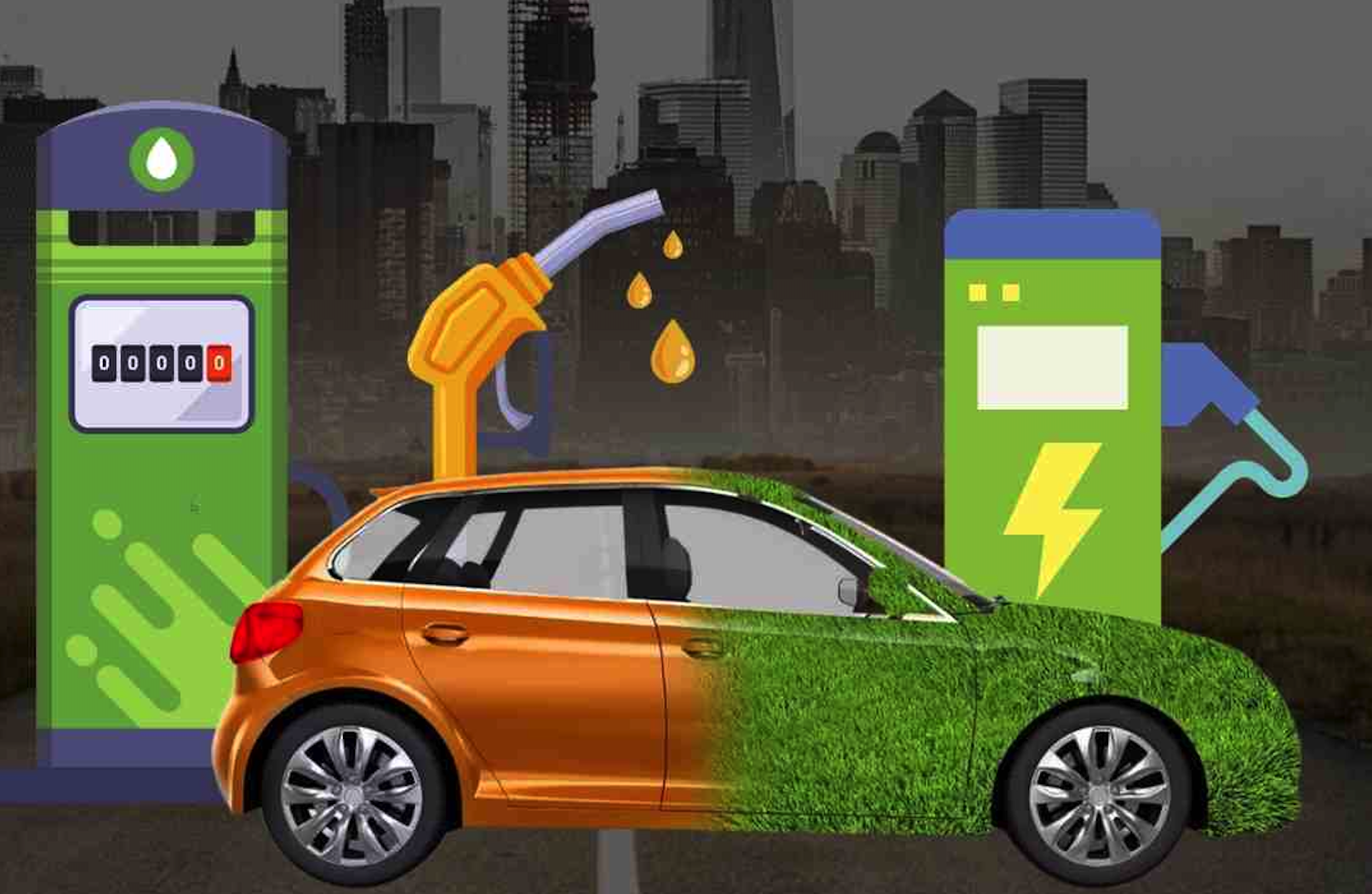
- 31 Jan 2024
Why is it in the News?
Calculations by HSBC Research show overall carbon emissions are lower in hybrids compared to electrics. India's electric mobility plan is currently focused on battery electrics. But as global examples show, there are challenges to the wider adoption of EVs in India.
Context:
- HSBC Research recommends India prioritize hybrid vehicles as a crucial step towards full electrification over 5-10 years.
- Hybrid cars offer lower emissions compared to traditional and electric vehicles, with emissions likely to converge within a decade.
- Combining internal combustion engines with onboard electric motors, hybrids provide a balanced propulsion approach.
- This strategy aligns with India's sustainability goals, bridging the gap towards complete electrification in transportation.
Why does Hybrid Vehicles are a Good Medium-term Solution?
- Hybrid vehicles are an effective medium-term solution for India's transportation needs as it progresses towards full electrification.
- Hybrids, along with compressed natural gas cars, offer practical advantages over the next 5-10 years.
- They are deemed critical not only for cost-effectiveness but also for India's decarbonization efforts.
- Hybrids emit 133 g/km of total (well-to-wheel) carbon emissions, compared to 158 g/km for electric vehicles, making hybrids at least 16% less polluting.
- This analysis factors in not just tailpipe emissions but also considers emissions from vehicle operations (tank-to-wheel) and the entire lifecycle, including crude mining, refining, and power generation.
For How Long Is This Situation Expected to Hold?
- The convergence of emissions between electric vehicles (EVs) and hybrids is anticipated within 7-10 years.
- Currently, in India, non-fossil fuel sources account for 26% of power generation, with a blended emission rate of 716g/kWh.
- The emissions from hybrid cars and EVs will align once non-fossil fuel power generation in India reaches 44%.
- Even with a projected 40% share of non-fossil fuels by 2030, hybrids are predicted to emit 8% less than EVs, although this reduction will be half of the current 16%.
What are the Challenges Faced by Battery Electric Vehicles (BEVs)?
The global push for battery electric vehicles (BEVs) faces several challenges:
- Upfront Subsidy: BEV adoption, as seen in Norway, the US, and China, heavily relies on state subsidies.
- However, in countries like India, direct subsidies often benefit middle or upper-middle-class buyers, raising equity concerns.
- Charging Infrastructure: Investing in charging networks, as demonstrated by Norway and China, significantly boosts EV adoption.
- However, India's charging infrastructure lags, with only about 2,000 operational public charging stations, posing a challenge, especially considering the dominance of two- and three-wheelers.
- Electricity Source: Unlike countries with renewable-heavy grids, India largely relies on coal-fired plants.
- This raises questions about the environmental benefits of EVs and highlights the need for cleaner energy generation.
- Value Chain: India's reliance on lithium-ion batteries exposes the vulnerability in the global supply chain, primarily dominated by a few countries.
- Diversification strategies are crucial to mitigate risks and ensure sustainable battery production.
What are the Difference Between Hybrid and Electric Vehicles?
- Hybrid Vehicles: Hybrid vehicles utilize a combination of an internal combustion engine (usually gasoline-powered) and an electric motor.
- These vehicles can operate on both gasoline and electricity, either separately or in tandem.
- The environmental impact of hybrid vehicles is typically lower than that of traditional gasoline-powered vehicles due to their ability to switch to electric power, reducing fuel consumption and tailpipe emissions.
- However, they still rely partially on fossil fuels and produce emissions during combustion.
- Electric Vehicles: Electric vehicles (EVs) are powered solely by electricity stored in batteries.
- They produce zero tailpipe emissions, making them cleaner and more environmentally friendly than hybrid vehicles and traditional internal combustion engine vehicles.
- However, the overall environmental impact of EVs depends on factors such as the source of electricity generation.
- If the electricity comes from renewable sources like solar or wind, EVs can have a significantly lower environmental footprint compared to hybrid vehicles.
- They produce zero tailpipe emissions, making them cleaner and more environmentally friendly than hybrid vehicles and traditional internal combustion engine vehicles.
Does Electric Vehicles Pollute More than Hybrid Vehicles?
It's not accurate to say that electric cars pollute more than hybrid cars in general. However, there are specific contexts where electric cars might appear to have a higher environmental impact than hybrids.
- One such context is during the manufacturing process. Electric cars typically require large batteries, which involve the extraction of raw materials like lithium and cobalt.
- The extraction and processing of these materials can result in environmental degradation and pollution.
- Additionally, the manufacturing process for electric cars may require more energy compared to hybrid vehicles.
- Another factor is the source of electricity used to charge electric cars.
- If the electricity comes from fossil fuels like coal or natural gas, then the overall environmental impact of electric cars may be higher than that of hybrids, which can partially rely on gasoline.
- However, as renewable energy sources like solar and wind power become more prevalent, the environmental benefits of electric cars increase significantly.
- In terms of operational emissions, electric cars produce zero tailpipe emissions, while hybrids emit pollutants when running on gasoline.
- However, hybrids still produce fewer emissions than traditional gasoline-powered vehicles.
What About Other “Clean Vehicles”?
- Apart from electric cars, hydrogen fuel cell vehicles offer another zero-emission alternative.
- Unlike electric vehicles, which draw power from charging stations, hydrogen fuel cell cars generate electricity internally.
- They utilize a fuel cell that combines hydrogen from an onboard tank with oxygen from the air, emitting only water vapour and warm air.
- While hydrogen fuel cell cars hold promise for decarbonizing industries like aviation and shipping, they face challenges.
- They are less common and pricier than electric cars, with lower energy efficiency.
- Moreover, the environmental impact of hydrogen production varies: "green hydrogen" sourced from renewable energy is scarce, while most hydrogen is currently derived from "grey" or "blue" processes, which involve emissions or carbon capture complexities.
Conclusion
While hybrid vehicles offer a transitional solution, electric vehicles remain pivotal in reducing emissions. Overcoming challenges in charging infrastructure and energy sourcing is vital for maximizing their environmental benefits. Hydrogen fuel cell vehicles show promise but require significant advancements. A holistic approach, including innovation and policy support, is crucial for realizing the potential of clean mobility solutions.
Populism and Health Inequality in India (The Hindu)

- 30 Jan 2024
Why is it in the News?
A fair and effective health system requires freedom from political influence, focusing on policymaking and implementation driven by scientific evidence and long-term objectives.
Background:
- Within India's diverse landscape, where bustling cities coexist with serene villages, there's a subtle yet crucial struggle unfolding in the realm of public health.
- Despite its significance, this battle often takes a backseat to the allure of curing illnesses. While disease prevention holds paramount importance, political attention tends to gravitate towards visible and immediate achievements such as constructing new medical facilities, offering affordable treatments, and managing crises.
- Hence, there arises a pressing need to examine the challenges and deficiencies within the existing democratic approach to public health, emphasizing the necessity for evidence-based strategies geared towards long-term objectives.
What is the Present Condition of Public Health and Nutrition in India?
- According to the 5th National Family Health Survey 2019-21:
- 35.5% of children under 5 exhibited stunted growth.
- 32.1% were underweight.
- The prevalence of anaemia among children aged 6-59 months rose from 58.6% to 67.1%.
- Among women aged 15-19 years, the prevalence of anaemia increased from 54.1% to 59.1%.
- These statistics underscore a notable disparity in public health endeavours.
The Incongruity of the Democratic Process in India's Public Health:
- Emphasis on Infrastructure and Immediate Relief: The inclination towards constructing new hospitals and providing subsidized treatments reflects democratic governance in India.
- While these initiatives address immediate healthcare needs, their impact on sustained population health still needs to be improved.
- During health crises, political leaders often prioritize emergency response strategies, swiftly mobilizing state resources.
- However, many of these measures yield minimal impact due to insufficient follow-through beyond public announcements.
- Preferring Emergency Response over Vital Preventive Measures: Budget constraints often limit the effective implementation of announced initiatives, raising concerns about their long-term sustainability and impact.
- This emphasis on visible achievements can overshadow critical areas like sanitation, disease surveillance, and public health education.
- Yet, these aspects are vital for maintaining population health and averting disease outbreaks.
- The significance of quieter victories achieved through preventive measures, such as eradicating diseases like smallpox and controlling polio, often goes unnoticed despite their substantial contributions to public well-being.
A Case Study of Dengue Illustrating This Dilemma
- Immediate Response Emphasis: During dengue outbreaks, political leaders often prioritize swift relief actions, such as establishing relief camps and offering symptomatic treatments.
- This reactive stance arises from the urgency of the situation and the imperative to alleviate the immediate suffering of affected communities.
- However, the lack of emphasis on preventive measures can perpetuate a cycle of recurrent outbreaks, straining healthcare resources further.
- Overlooking Underlying Causes and Prevention: The focus on emergency relief efforts may overshadow the significance of long-term strategies, including studying vector bionomics, developing vaccines, and enhancing public health infrastructure.
- Consequently, the current approach falls short of averting future outbreaks and burdens the healthcare system.
- Research and development in these realms are imperative. For instance, despite limitations, the existing dengue vaccine underscores the necessity for further exploration.
- Additionally, climate change impacts mosquito breeding and movement patterns, necessitating adaptations in public health strategies.
What are the challenges in Public Health in India:
- Prioritizing Short-Term Gains: Political leaders often prioritize initiatives promising immediate results, like constructing new hospitals and offering subsidized treatments, over long-term public health strategies.
- Budgetary Limitations: Despite announcements, the impact of these short-term measures is limited due to constraints in budget allocation and implementation beyond public announcements.
- Neglect of Vital Areas: Critical aspects such as sanitation, disease surveillance, and public health education are often overlooked, despite their significance in maintaining population health and preventing disease outbreaks.
- For example, in the case of Dengue, relief efforts overshadow long-term strategies like vector control and vaccine development.
- Profit-Driven Pharmaceutical Sector: The profit-oriented nature of the pharmaceutical industry sidelines public health priorities, leading to disparities in medicine availability, particularly concerning diseases like tuberculosis, which disproportionately affect socio-economically disadvantaged populations.
- Lack of Holistic Approach: Addressing public health challenges necessitates interdisciplinary expertise from fields like environmental science, sociology, urban planning, and economics.
- However, India's current approach remains predominantly physician-centric, overlooking broader societal and environmental factors.
What Steps Can Be Taken?
- Prioritize Research and Development: Emphasize research, particularly in vaccine development and understanding the influence of climate change on disease vectors, to inform proactive public health strategies.
- Depoliticize Health Decision-Making: Ensure that public health policies are driven by scientific evidence and long-term objectives rather than short-term political considerations.
- Enhance Nutrition Support: Increase investments in nutrition programs, recognising their significant long-term benefits for health and productivity.
- Adopt a Holistic Approach: Implement a comprehensive public health management strategy that encompasses preventive measures, policy development, community health initiatives, and environmental health considerations.
- Grant Autonomy to Health Ministries: Consider granting health ministries greater autonomy, potentially placing them directly under the leadership of elected officials such as Chief Ministers or Prime Ministers, similar to India’s space and atomic energy departments, to facilitate more effective decision-making and implementation processes.
Conclusion
Although democracy itself is not detrimental to public health, the existing approach within democratic frameworks frequently lacks effectiveness. There is a pressing requirement to rethink public health governance, prioritizing evidence-based, comprehensive, and forward-looking strategies that cater to both present and future health requirements.
Targeting Imperfect Global University Rankings for National Security is Debatable, but Inevitable (Indian Express)
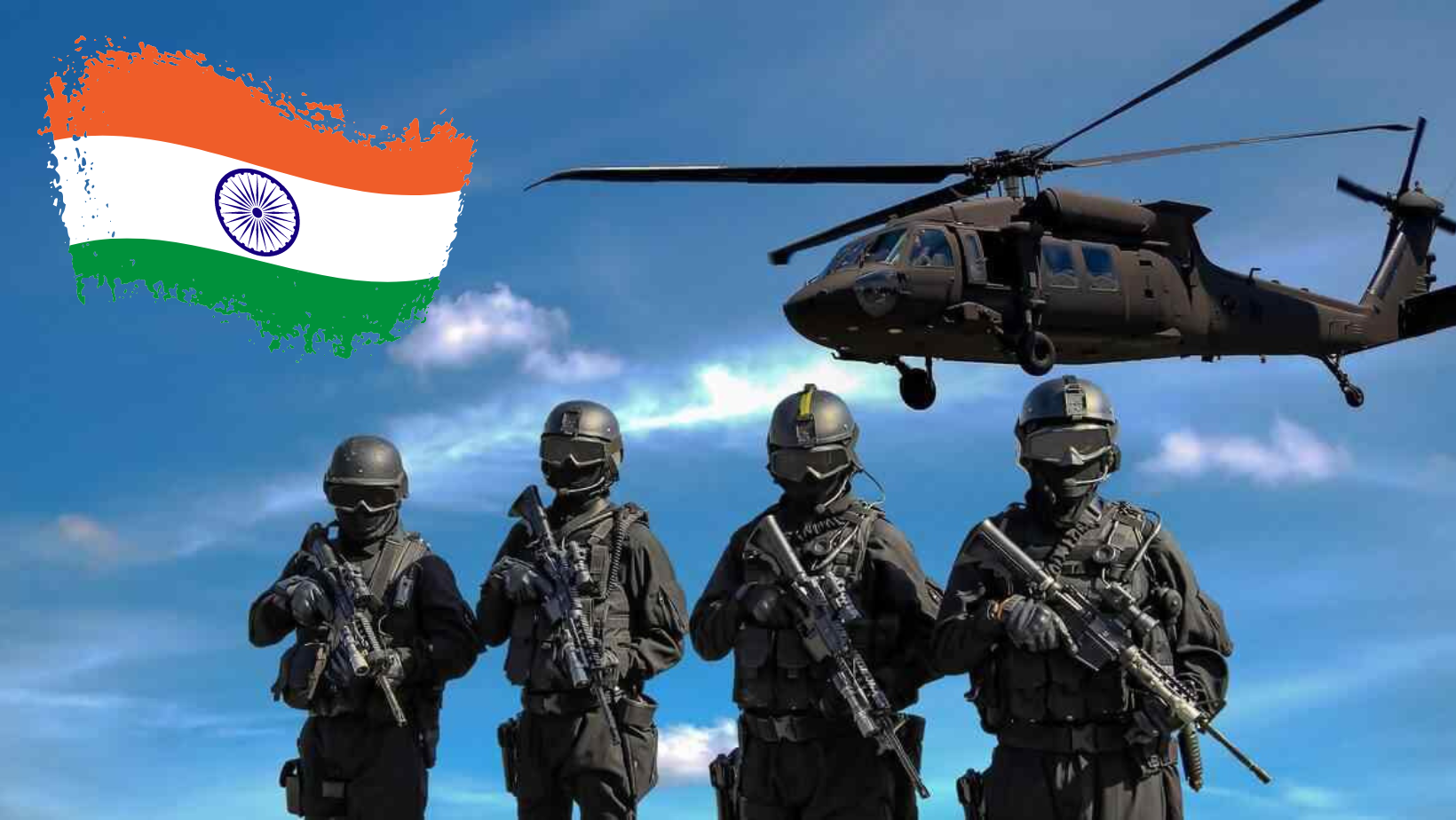
- 29 Jan 2024
Why is it in the News?
The drafting of India’s first National Security Strategy document includes a provision to expedite domestic defense manufacturing, while concurrently aiming to elevate ten Indian universities into the ranks of the global top 100.
Context:
- As India develops its first National Security Strategy, the main goal is to speed up the production of defense equipment indigenously.
- But with the world changing, it's becoming more obvious that there's a strong connection between knowledge and weapons.
- Technologies like drones, satellite internet, and artificial intelligence are being used in both civilian and military areas, blurring the lines between them.
- So, it's important for our strategy to adapt to these changes and make sure we're prepared for the future.
Examining Geopolitical Changes and Technological Boundaries:
- Reviewing Economic Integration: Previously, the United States played a crucial role in accelerating China's integration into the global economy.
- However, the recognition of the strategic implications of advanced technologies has prompted a reevaluation of this approach.
- The concept of safeguarding critical technological advancements for national security reasons, as advocated by the U.S. National Security Advisor, suggests a shift towards placing foundational technologies behind a high fence.
- Scrutinizing Friend Shoring: The notion of friend shoring, which involves maintaining economic partnerships between countries with conflicting interests, is facing increased scrutiny.
- Recent statements from the White House Economic Council Director regarding concerns over a Japanese company with Chinese operations acquiring a U.S. steel company highlight growing apprehensions surrounding economic ties with potential adversaries.
- China's Response and Technology Restrictions: In response to perceived threats to its technological sovereignty, China has implemented measures to restrict the use of certain foreign technologies.
- Notably, Tesla cars and Apple phones have been prohibited from Chinese army bases due to concerns regarding sophisticated surveillance features such as cameras, microphones, and cloud backups.
- Xi Jinping's Dual Circulation Strategy: Under Xi Jinping's leadership, China has embraced a dual circulation strategy, emphasizing the utilization of Chinese technologies whenever possible and resorting to foreign technologies only when necessary.
- This strategic approach reflects a deliberate effort to reduce dependence on external sources, aligning with broader objectives of technological self-sufficiency.
- Challenges in Indo-Pak Relations and China's Evolving Approach: India grapples with ongoing geopolitical challenges, particularly from Pakistan, which remains steadfast in its decades-old conflict stance.
- China's evolving policy towards prioritizing domestic technologies mirrors shifts in the global landscape.
Technology Advancements Through Military-University Collaborations: A Historical Context
- MIT's Impact in World War II: During World War II, the Massachusetts Institute of Technology (MIT) emerged as a crucial centre for pioneering research and technological breakthroughs that significantly influenced the war effort.
- Led by Vannevar Bush, MIT's School of Engineering transitioned to chair the National Defense Research Committee and the Office of Scientific Research and Development in 1939, facilitating seamless collaboration between academia and the military.
- MIT's contributions during this period were extensive, ranging from radar development for various applications to the creation of the Long-Range Navigation (LORAN) system.
- This collaboration demonstrated how academic institutions swiftly responded to wartime demands, providing technological solutions with lasting impacts.
- The Birth of Silicon Valley: The post-World War II era witnessed the continuation of military-university collaborations, notably contributing to the genesis of Silicon Valley.
- Frank Terman, an MIT doctoral student under Vannevar Bush and later the dean of Stanford's engineering school, played a pivotal role in fostering connections between academia and the military.
- Terman's influence was instrumental in nurturing Silicon Valley into a global epicentre of technological innovation.
- Symbiotic Alliance Between Academia and Defense: The historical collaboration between universities and the military underscores the symbiotic relationship between academic research and national defence.
- These partnerships, forged during critical historical moments, not only drove technological progress but also underscored the vital role of knowledge exchange between academia and the military in fostering strategic innovation.
Rethinking the Value of Global University Rankings
- Challenges with Ranking Methodologies: Critics often challenge the validity of global university rankings, suggesting they prioritize popularity over genuine educational excellence.
- Common metrics like peer surveys can introduce biases and may not accurately reflect an institution's academic prowess.
- Additionally, certain metrics may not capture the full spectrum of educational quality, raising concerns about the reliability of rankings.
- Limitations in Evaluation Criteria: Global rankings tend to focus heavily on research output and international reputation, neglecting other crucial aspects such as teaching quality.
- This incomplete assessment overlooks the diverse educational goals and values of institutions, leading to an ideological bias in the rankings.
- A more comprehensive evaluation framework that considers a broader range of factors is needed to provide a holistic view of educational excellence.
- Importance of Global Rankings: While facing criticism, global university rankings remain significant in the academic sphere.
- Many universities worldwide set goals to improve their rankings, using them as benchmarks for management decisions and promotional efforts.
- Institutions frequently devise strategies and allocate resources based on their standing in these rankings.
Evaluating India's University Ranking Objectives: A Strategic Necessity
- Strategies for Enhancement - Government Initiatives Encompass: Selecting and investing in 20 government universities to establish research centres equipped with substantial resources, including extensive research facilities and industry liaison offices.
- Streamlining resources by consolidating Research Laboratories and integrating independent research facilities into the top 20 government institutions to promote collaborative research endeavours.
- Redirecting government research funding primarily towards universities, mirroring the approach of established bodies like the U.S. National Institute of Health and National Science Foundation.
- Promoting corporate-university research partnerships through financial incentives, such as tax incentives for companies engaging in research activities at Indian institutions.
- Strategic Alliances with Defense Endeavors: The government's intent to collaborate with defence initiatives, as indicated by the proposed Defence Technology Council, underscores the alignment between academic excellence and national security objectives.
- Establishing strategic alliances with universities can enhance project management efficiency, addressing concerns highlighted by the Comptroller and Auditor General (CAG) regarding timelines in defence projects.
Conclusion
India's National Security Strategy must evolve in response to shifting geopolitics and technological advancements. It is essential to prioritize the elevation of universities to global stature, recognizing the interconnectedness of knowledge, defence, and national security.
Through strategic initiatives that tackle challenges and foster collaboration between academia and government, India can establish itself as a significant player in the ever-changing global security landscape.
The Indian government is currently drawing out an AI Mission that may soon head for Cabinet approval and could outlay more than Rs 10,000 crore. (Indian Express)
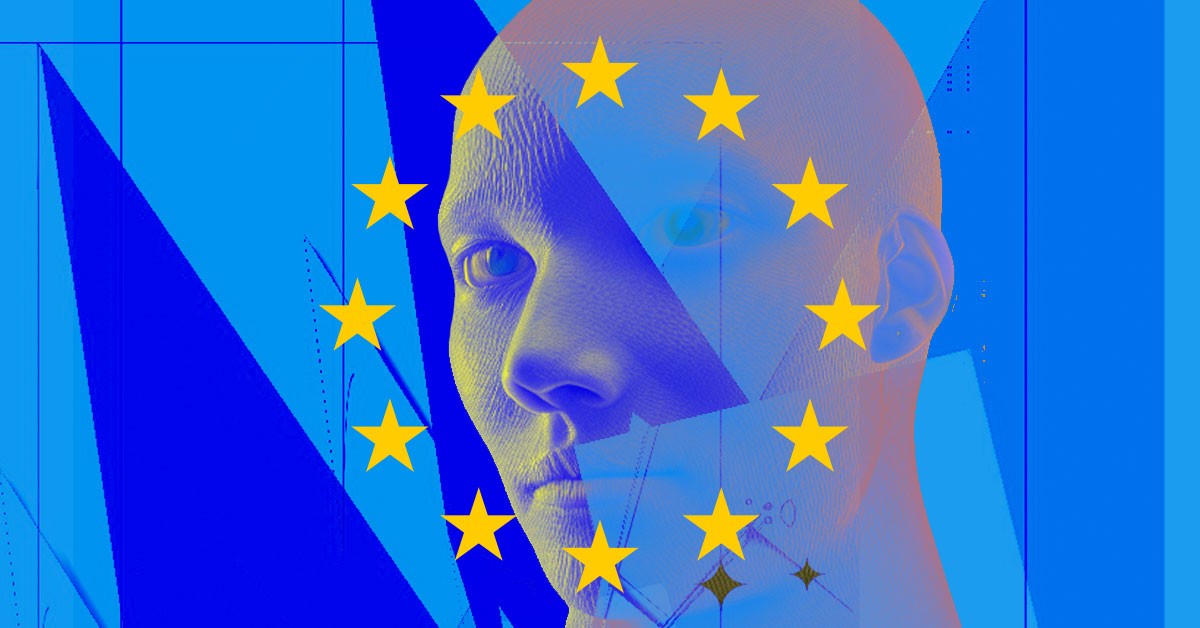
- 27 Jan 2024
Why is it in the News?
To dissuade concerns that Europe is overregulating artificial intelligence (AI), which could stifle innovation in the bloc, the European Commission has released a set of rules to enable start-ups and other businesses to access hardware – such as supercomputers and computing capacity – for them to build large- scale AI models
Context:
- To address concerns about excessive regulation stifling innovation in Europe, the European Commission has introduced rules allowing startups and businesses to access hardware, like supercomputers, to develop large-scale AI models.
- This supports the EU's new AI Act, designed to promote trustworthy AI across the region.
- India is also considering a similar initiative to provide computing capacity for startups, aiming to establish high-capacity data centres through a public-private partnership model.
- Access to computing power is crucial for building advanced AI systems, alongside innovative algorithms and datasets, especially challenging for smaller businesses to obtain.
What is Artificial Intelligence (AI)?
- Artificial Intelligence (AI) refers to the simulation of human intelligence processes by machines, particularly computer systems.
- These processes include learning, reasoning, problem-solving, perception, and language understanding.
- AI technologies enable machines to analyze large amounts of data, recognize patterns, and make decisions or predictions based on that data.
- There are several types of AI, including narrow or weak AI, which is designed for specific tasks like speech recognition or playing chess, and general or strong AI, which aims to perform any intellectual task that a human can do.
- Machine learning, a subset of AI, involves training algorithms to recognise patterns in data and make predictions or decisions without being explicitly programmed to do so.
- AI has applications across various industries, including healthcare, finance, transportation, and manufacturing.
- It is used for tasks such as medical diagnosis, fraud detection, autonomous vehicles, and predictive maintenance.
- As AI technology continues to advance, it holds the potential to revolutionize many aspects of society, improving efficiency, productivity, and decision-making processes.
What is Europe’s AI Innovation Plan?
- The European Commission has introduced a set of initiatives aimed at assisting European startups and small businesses in creating reliable AI technology.
- These initiatives encompass various measures to foster innovation among startups, including a proposal to grant special access to supercomputers for AI startups and the wider innovation community. The plan includes:
- Acquiring, upgrading and operating AI-dedicated supercomputers to enable fast machine learning and training of large general-purpose AI (GPAI) models.
- Facilitating access to the AI dedicated supercomputers, contributing to the widening of the use of AI to a large number of public and private users, including start-ups and SMEs.
- Supporting the AI startup and research ecosystem in algorithmic development, testing evaluation and validation of large-scale AI models.
- Enabling the development of a variety of emerging AI applications based on GPAI models.
How is the EU’s Plan Similar to India’s?
- The Indian government is currently outlining an AI Mission, which is expected to undergo Cabinet approval soon, with a budget exceeding Rs 10,000 crore.
- As part of this initiative, the government aims to develop its own 'sovereign AI,' enhance computational capabilities domestically, and provide compute-as-a-service to Indian startups.
- Capacity building will be pursued both within the government and through a public-private partnership model, emphasizing India’s goal to capitalize on the forthcoming AI boom as a vital economic driver.
- Overall, the country aims to establish a computing capacity ranging from 10,000 to 30,000 GPUs (graphic processing units) through the PPP model, in addition to 1,000-2,000 GPUs facilitated by the PSU Centre for Development of Advanced Computing (C-DAC).
- The government is exploring various incentive structures for private companies to establish computing centres in the country, including capital expenditure subsidies, operational expense-based incentives, and a "usage" fee model.
- The government intends to transform the GPU assembly into a digital public infrastructure (DPI), allowing startups to access its computational capacity at a reduced cost, without having to invest in GPUs, which are typically the largest expense in such operations.
Why is the EU especially enabling AI Innovation?
- Until now, the most prominent advancements in AI have been spearheaded by American companies like OpenAI and Google, along with emerging ventures such as Perplexity and Anthropic.
- Europe, which has traditionally prioritized regulating technologies with a focus on human rights, has faced criticism from the industry for potentially overregulating AI even before its widespread adoption across the continent.
- Unlike the US, where numerous American companies have made significant strides in offering hardware services to businesses, Europe has identified a need to facilitate access to hardware resources for AI development.
- This move by the European Commission follows the introduction of an AI Act last year, which has faced criticism.
- The legislation aims to establish safeguards for AI usage within the EU, including clear guidelines for its adoption by law enforcement agencies and provisions empowering consumers to report any perceived violations.
- Additionally, the AI Act imposes stringent restrictions on facial recognition technology and the use of AI to influence human behaviour, while also outlining severe penalties for companies found in breach of these regulations.
- Moreover, the legislation stipulates that governments can employ real-time biometric surveillance in public areas only in cases involving serious threats, such as terrorist attacks.
European Commission (EC)
- The European Commission is the European Union's executive body and represents the interests of Europe as a whole.
- It drafts proposals for new European laws.
- It manages the day-to-day business of implementing EU policies and spending EU funds.
- It is made up of 27 commissioners (one from each member state) and is based in Brussels.
- Each member state nominates a commissioner, but the nominated candidates must be approved by the European Parliament.
- The Parliament must also approve the President of the European Commission.
- The current President of the European Commission is Ursula von der Leyen.
- Commissioners do not represent their countries. Instead, they have a field of responsibility.
- To assist the commissioners in the performance of their duties, there is a staff of about 32,000 people employed by the Commission.
- This staff comes from all of the Member States and includes policy officers, translators, lawyers and researchers.
What does the European Commission do?
- Legislation – The Commission initiates legislation. It makes proposals for laws that are sent to the European Parliament and Council of the European Union for approval.
- Upholding EU law – The Commission can take action against businesses or states that are failing to comply with EU law.
- Policy – The Commission is the executive of the EU. It manages policies and drafts budgets.
- Representation – The Commission represents the EU in negotiations with other countries or organisations.
- The Commission meets once a week to adopt proposals, finalise policy papers and make decisions.
- Decisions are taken by a simple majority vote.
Turkey Finally Backs Sweden’s NATO Bid: Why the Opposition, why it changed its stance (Indian Express)
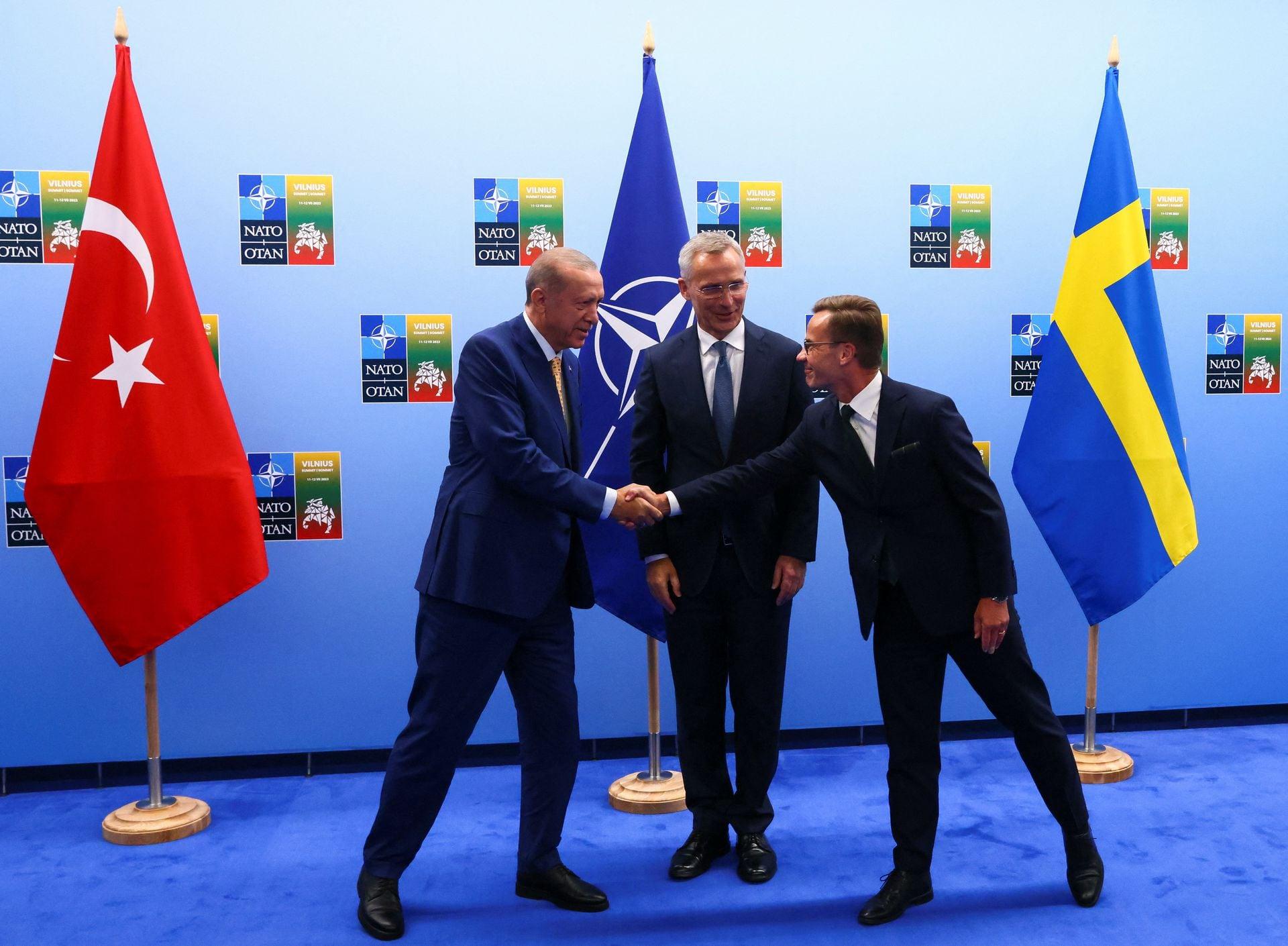
- 25 Jan 2024
Why is it in the News?
Turkey’s parliament ratified Sweden’s Nato membership bid recently, clearing the biggest remaining hurdle to expand the Western military alliance after 20 months of delay.
News Summary:
- Turkey's parliament ratified Sweden's NATO membership bid recently, clearing the biggest remaining hurdle to expand the Western military alliance after 20 months of delay.
- Sweden and Finland applied to join in May 2022, following Russia's invasion of Ukraine.
- The two countries feared for their security.
- Finland - which has a 1,340km land border with Russia - became a Nato member in April 2023.
- Turkey had been blocking Sweden's application because it said the country had refused to hand over members of militant groups such as the Kurdistan Workers' Party (PKK).
- Sweden's bid for membership was finally approved by the Turkish parliament on 23 January.
- Now, Sweden only needs Hungary's parliament to approve its membership.
- For a nation to become a member of the North Atlantic Treaty Organization (NATO), the consent of all current member countries is required.
- Turkey has been a member of NATO since 1952.
Why does Sweden want to join NATO?
- Sweden has not fought a war in two centuries, staying neutral through the two World Wars and the Cold War.
- In recent years, while it joined the European Union and collaborated with NATO, it showed no intention of actually joining the military alliance its powerful neighbour, Russia, is hostile to.
- However, this neutrality had to be abandoned after Russia invaded Ukraine.
- With public opinion increasingly in favour of joining NATO, both Sweden and Finland applied for membership in 2022.
- While Finland’s bid was cleared, Sweden ran into stiff opposition from Turkey’s President Recep Tayyip Erdogan and Hungary’s Prime Minister Viktor Orban.
- Once a country is a NATO member, an attack on its territory is considered an attack on the US-led alliance, and all 31 members are obliged to defend each other.
Why was Turkey opposing Sweden’s bid?
- Turkey had accused Sweden of going soft on groups it sees as terrorists, such as the Kurdish militant outfit the Kurdistan Workers’ Party (PKK).
- Quran-burning protests held in Sweden, which its government says are protected under freedom of speech laws, further soured its relationship with Turkey.
- Erdogan had also linked Turkey’s support to Sweden with the US agreeing to sell 40 F-16 fighter jets to Ankara. While the US had not said the deal would depend on Turkey’s Sweden actions, the sale is expected to go through now.
What will Sweden bring to NATO?
- Once Sweden becomes a member, almost all of the Baltic Sea coastline, except that in Russia’s control, will become NATO territory.
- This will provide the alliance with strategic bases close to Russia, make supply lines more streamlined, and make it easier to defend assets in the sea.
- Sweden’s military, though numerically small, is modern and experienced in past NATO missions. Importantly, it has advanced aircraft and submarine capabilities.
What is NATO?
- Established in the aftermath of World War II, the North Atlantic Treaty Organization (NATO) is an intergovernmental military alliance between 28 European countries and 2 North American countries and is headquartered in Belgium.
- It implements the North Atlantic Treaty, which is a system of collective security, where its member states agree to mutual defence in response to an attack by any external party.
- The most recent member to be added was Finland on 4 April 2023.
- Since its founding on April 4, 1949, the admission of new member states has increased the alliance from the original 12 countries to 30.
Background:
In the event of a possible attack by Germany, a Treaty of Alliance and Mutual Assistance was signed by France and the United Kingdom in 1947.
- Later next year, the alliance was expanded to include Belgium, the Netherlands, and Luxembourg, in the form of the Western Union.
- In 1949, talks for the new military alliance which would include North America resulted in the signing of the North Atlantic Treaty.
- The Treaty included the members of the Western Union and the United States, Canada, Portugal, Italy, Norway, Denmark and Iceland.
- In May 1955, West Germany was permitted to rearm militarily, as they joined NATO, which was a major factor in the creation of the Soviet Union-dominated Warsaw Pact, delineating the two opposing sides of the Cold War.
- In October 1990, East Germany became part of the Federal Republic of Germany and the alliance, and in November 1990, the alliance signed the Treaty on Conventional Armed Forces in Europe (CFE) in Paris with the Soviet Union.
- The treaty mandated specific military reductions across Europe, which continued after the collapse of the Warsaw Pact in February 1991 and the dissolution of the Soviet Union, which removed the de facto main adversaries of NATO.
- The Treaty was largely dormant until the Korean War initiated the establishment of NATO to implement it, by means of an integrated military structure, which included the formation of Supreme Headquarters Allied Powers Europe in 1951, adopting the Western Union's military structures and plans.
What is the Purpose of NATO?
- According to NATO, its purpose is to guarantee the freedom and security of its members through political and military means.
- By political, it means the organisation promotes democratic values and enables members to consult and cooperate on defence and security-related issues to solve problems, build trust and, in the long run, prevent conflict.
- Militarily, NATO says it is committed to the peaceful resolution of disputes, and if diplomatic efforts fail, it has the power to undertake crisis-management operations, under the collective defence clause - Article 5 of the Washington Treaty or under a United Nations mandate, alone or in cooperation with other countries.
- Article 5 of the North Atlantic treaty, requiring member states to come to the aid of any member state subject to an armed attack, was invoked for the first and only time after the September 11 attacks, after which troops were deployed to Afghanistan.
The Role of NATO in the Russia-Ukraine Conflict:
Among the 30 countries in the organisation, Ukraine is not a member, even though it has included three former Soviet republics -- the Baltic states of Estonia, Latvia, and Lithuania.
- In 2008, NATO appeared to open the door to membership to two more former Soviet republics when its heads of government declared that Georgia and Ukraine "will become members of NATO."
- Neither has formally received eventual membership, with a lack of consensus among members.
- Russian President Vladimir Putin demanded that Ukraine never join the alliance as he seeks to limit NATO’s presence in Eastern Europe.
- Days before Putin announced a military operation in Ukraine in February 2022, he in a televised address linked the current crisis directly to Russia's Nato demands, which include a guarantee that the organisation stop expanding to the East and pull back its infrastructure from Eastern European countries that joined after the Cold War.
- If the conflict goes beyond Ukraine and impacts Nato members, it could lead the organisation to invoke its mutual self-defence clause, i.e., Article 5 of the Nato treaty.
Why Punjab moved SC against the expansion of BSF jurisdiction (Indian Express)
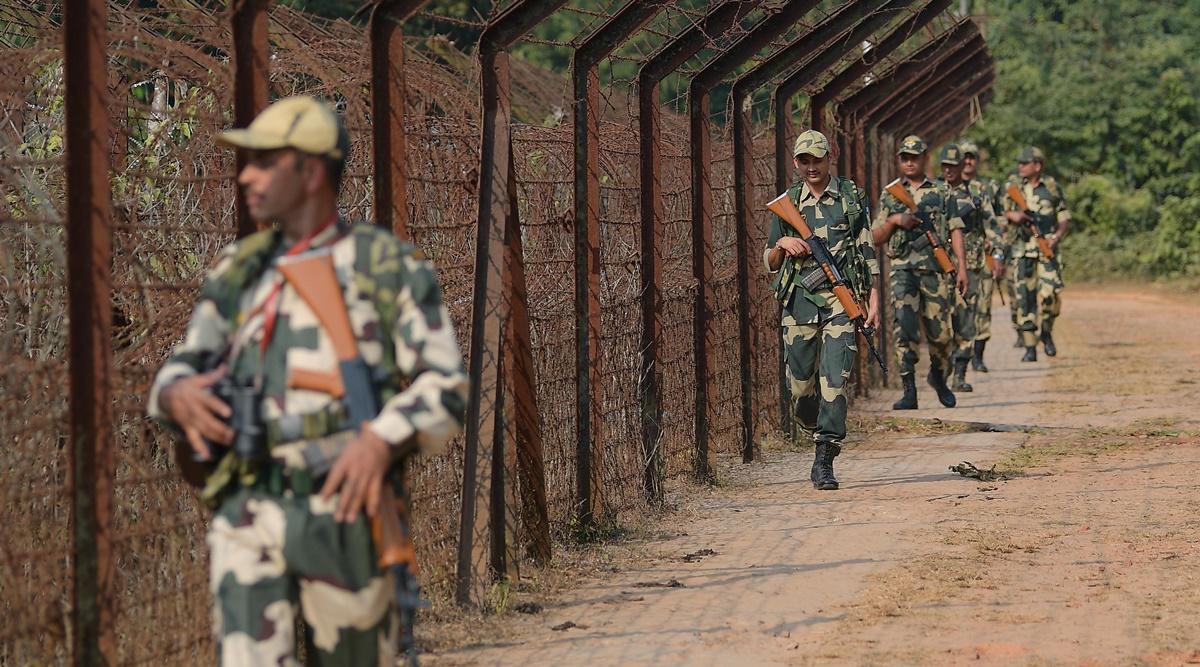
- 24 Jan 2024
Why is it in the News?
The Supreme Court is set to hear the dispute over the expansion of the Border Security Force (BSF) jurisdiction in Punjab.
Context:
- The Supreme Court will hear petitions filed by the Punjab government against the Centre’s notification expanding the jurisdiction of Border Security Forces (BSF) to 50 km from the international border in Punjab.
- This comes after the Centre in 2021 decided to expand the BSF’s jurisdiction to undertake search, seizure and arrest within a larger 50-kilometre stretch from the International Border compared to the earlier limit of 15 kilometres.
- The Centre had also decided to decrease the BSF’s area of operation in Gujarat from 80 kilometres from the border to just 50 kilometres.
What is the Border Security Force (BSF)?
- The BSF was established on 1 December 1965 after the India-Pakistan war.
- With a strength of about 2.65 lakh personnel, it has 192 operational battalions and deployed along the Pakistan and Bangladesh borders.
- It is the country’s largest border force and one of the Central Armed Police Forces of the Union of India under the administrative control of the Ministry of Home Affairs (MHA).
- The other forces include the Indo-Tibetan Border Police (ITBP), the Sashastra Seema Bal (SSB) and the Assam Rifles, Central Industrial Security Force (CISF), Central Reserve Police Force (CRPF) and National Security Guards (NSG).
- It also contributes dedicated services to the UN peacekeeping Mission by sending a large contingent of its trained manpower every year
- The BSF is meant to secure India’s borders with its neighbouring nations and is empowered to arrest, search and seize under a number of laws, such as the Criminal Procedure Code, the Passports Act, the Passport (Entry into India) Act, and the NDPS Act, to name a few.
Why was the BSF Jurisdiction Extended?
- Section 139(1) of the BSF Act allows the central government, through an order, to designate an area “within the local limits of such area adjoining the borders of India” where members of the BSF can exercise powers to prevent offences under any Acts that the central government may specify.
- Prior to the notification issued in October 2021, the BSF could exercise its powers within 15 kilometres of the border in Punjab, West Bengal and Assam.
- The Centre expanded this to within 50 kilometres of the border.
- The notification states that, within this larger 50-kilometre jurisdiction, the BSF can only exercise powers under the Criminal Procedure Code, the Passport (Entry into India) Act and the Passports Act.
- For other central legislations, the 15-km limit remains.
- This expansion was in response to the increased use of drones and Unmanned Aerial Vehicles, which have long-range capabilities and enable surveillance and the smuggling of arms and fake currency.
- The ‘menace of cattle smuggling’ and smugglers often seek refuge outside BSF jurisdiction.
- The centre also claimed that the notification makes the BSF jurisdiction uniform across states, as the 50-kilometre limit was already in place in Rajasthan.
- The same notification reduced the jurisdiction in Gujarat from 80 km to 50 km.
Why Punjab Challenged This Act?
- The state of Punjab filed an ‘original suit’ against the central government in the Supreme Court in December 2021 and alleged that the extension of the territorial jurisdiction of BSF encroaches upon its own constitutional jurisdiction.
- The Supreme Court has ‘original jurisdiction’ in disputes between the central government and states under Article 131 of the Constitution, which means cases of this kind can only be heard for the first time at the SC “to the exclusion of any other court”.
- The Punjab government claimed that expanding the jurisdiction of the BSF would compromise the state’s exclusive powers to legislate on matters involving the police and public order.
- These powers are provided in Entries 1 and 2 of the State List under Article 246 of the Constitution.
- They also claimed that the notification was issued without consulting with any of the states concerned.
How did Other States Respond?
- The states at the time had decried the move as an “irrational decision”, a “direct attack on federalism” and an attempt to “interfere through Central agencies”.
- Punjab and West Bengal denounced the move with the respective state Assemblies even passing resolutions against the Centre’s decision.
What are the Challenges Associated with Expanding Jurisdiction?
- Public Order vs. Security of State: Maintaining public order and policing, signifying peace, safety, and tranquillity, falls within the purview of State Governments (Entry 1 and Entry 2 of the State list, respectively).
- However, if a severe public disorder poses a threat to the security or defence of the State or the nation itself (Entry 1 of the Union list), it becomes a matter of concern for the Union Government as well.
- Federalism Strain: Issuing notifications without state government concurrence may be seen as an infringement on state powers.
- The Punjab Government argues that such notifications amount to the Centre encroaching under the pretext of security or development.
- Impact on BSF Operations: The extension of jurisdiction to policing in the hinterland contradicts the role of a border guarding force.
- This shift could potentially undermine the BSF's ability to fulfil its primary duty of guarding the international border.
Issues Specific to Punjab:
- Overlapping Powers: The extended 50 km jurisdiction grants concurrent power with state police over every cognizable offence under the Indian Penal Code (IPC).
- In a relatively small state like Punjab, this extension encompasses all major cities.
- In other states like Gujarat and Rajasthan, where the extension might be considered, Gujarat has substantial marshland, and extending jurisdiction there might be reasonable as it doesn't encompass major urban centres.
- Similarly, in Rajasthan, the presence of a desert reduces the impact of jurisdiction extension.
Way Ahead
- Emphasis on State Consent: Considering the security dynamics in India's vicinity, the existing collaboration between Central armed forces and State civil authorities remains suitable.
- Nonetheless, consulting with the State Government before deploying armed forces by the Union Government is recommended, whenever possible.
- State Empowerment: Each State Government, in coordination with the Union Government, should devise both short-term and long-term strategies to fortify its Armed Police.
- The aim is to achieve substantial self-reliance in managing Armed Police matters, necessitating the Central armed forces' intervention only during exceptionally severe disturbances.
- Regional Collaboration: Neighboring States can collaboratively establish a framework for utilizing each other's Armed Police in times of necessity through consensus.
- The Zonal Council stands out as the most apt platform for States within a zone to reach a consensus and formulate such arrangements.
Tax contribution by States needs to be revisited (The Hindu)

- 23 Jan 2024
Why is it in the News?`
During a NITI Aayog meeting chaired by the Prime Minister, Chief Ministers voiced their apprehensions regarding the declining revenues of the states.
Context:
- The Finance Commission holds a crucial role in suggesting the distribution formula for States' allotment of Union tax revenue.
- The formulation has witnessed changes over time in terms of the inclusion and significance of different factors, with tax contribution emerging as a central point of debate.
- It is essential to underscore the historical context, principles of equity and efficiency, and the repercussions of integrating the Goods and Services Tax (GST) regime into the distribution formula
What is the Finance Commission?
- The Finance Commission is a constitutional body responsible for providing recommendations on the distribution of tax revenues among the Union and the States, as well as among the States themselves.
- The President constitutes the Finance Commission under Article 280 of the Constitution.
- It is established at the end of every fifth year, or earlier if deemed necessary.
- Qualifications and Selection: Parliament, through legislation, determines the qualifications for Commission members and the selection process.
- The Finance Commission (Miscellaneous Provisions) Act, 1951, addresses these aspects.
- Mandate: The Commission's duties include making recommendations to the President on the distribution of tax proceeds between the Union and States, principles guiding grants-in-aid, measures to enhance State Consolidated Funds, and any other financial matters referred by the President in the interest of sound finance.
- Composition: The Commission comprises a Chairman and four members appointed by the President.
- Member Qualifications: The Chairman is selected from individuals with experience in public affairs, while the four other members are chosen from those with qualifications such as being former or eligible High Court Judges, and possessing expertise in government finances, administration, or economics.
- Tenure: Each member serves a specified term, as determined by the President, and is eligible for reappointment.
- Non-Binding Recommendations: The recommendations of the Finance Commission are advisory and not binding on the government.
The History and Evolution of the Distribution Formula:
- The historical development of the Finance Commission's distribution formula has played a pivotal role in shaping India's fiscal federalism.
- Initially focusing on personal income tax and Union excise duties, the formula underwent substantial changes with the introduction of the 10th Finance Commission, reflecting a more nuanced understanding of fiscal relations between the Union and States.
- Expansion of Revenue Streams with the 10th Finance Commission: The introduction of the 10th Finance Commission marked a significant transformation as all Central tax revenues were consolidated, expanding the range of revenue streams in the distribution formula.
- This departure from the earlier approach acknowledged the necessity for a comprehensive framework to address the intricate fiscal dynamics among the States.
- Equity and Efficiency as Guiding Principles: The distribution formula shifted its focus to prioritise equity and efficiency.
- Equity considerations aimed to rectify imbalances by allocating larger shares to revenue-scarce and high-expenditure States, while the efficiency principle rewarded states demonstrating proficiency in revenue collection and spending practices.
- This departure from the earlier needs-based criteria recognized the importance of incentivizing states to enhance fiscal capacities for the country's overall economic well-being.
- Dynamic Interplay of Equity and Efficiency: The ongoing normative debate within the Indian fiscal framework is exemplified by the dynamic interplay between equity and efficiency in successive Finance Commissions' recommendations.
- Striking the right balance between these principles remains a complex task, and the formula has evolved to reflect the changing priorities of fiscal federalism.
- Inclusion of Various Indicators: While early Finance Commissions incorporated indicators such as population, per capita income, and area in the distribution formula, a notable shift towards a more comprehensive and consolidated approach has occurred since the 10th Finance Commission.
- The convergence of income tax and Union excise duties into a single formula from the 10th Finance Commission onward aimed to streamline the approach and ensure consistency across different revenue sources.
Evaluating Efficiency Indicators in the Distribution Formula:
- Tax contribution serves as an efficiency indicator, offering insights into a state's developmental level and economic structure.
- Historically, it has been assigned a relatively modest weight, ranging from 10% to 20% within the distribution formula.
- In the early commissions, population, a key indicator of expenditure needs, played a dominant role, commanding weights between 80% and 90%.
- From the year 2000 onward, the distribution formula incorporated tax effort and fiscal discipline as efficiency indicators, each carrying approximately 15% weight.
- However, these indicators encountered challenges stemming from their instability, influenced by discretionary tax policies and unexpected shifts in tax bases.
The Reasons to Consider Petrol Consumption and GST in the Distribution Formula as Efficiency Measures:
- Petroleum Consumption as a Supplementary Indicator: In addition to GST, considering petroleum consumption as an efficiency indicator adds depth to the formula.
- Union excise duty and sales tax on petroleum products, excluded from GST, significantly contribute to the national exchequer.
- The stable and consistent nature of relative shares of petroleum consumption across states makes it an attractive supplementary indicator for assessing a state's contribution to specific tax categories.
- Stability and Uniformity in GST Contributions: In contrast to previous indicators, GST provides a unified tax system that minimizes variations in tax efforts among states.
- While the absolute amount of GST revenue generated may vary based on the size and economic structure of each state, the relative contributions remain stable over time.
- This stability is crucial for establishing a fair and consistent measure of a state's efficiency, particularly in revenue collection.
- Accurate Reflection of State's Tax Base through GST Revenue: The implementation of the Goods and Services Tax (GST) has transformed India's taxation landscape, introducing a consumption-based destination tax system that is equally divided between State and Central governments.
- This structure offers a unique opportunity for a precise estimation of a state's tax contribution.
- The inherent symmetry in GST ensures that the State GST accrual mirrors the Central GST accrual to the Union government from that state, making GST a stable and reliable measure of a state's tax base.
- Exclusion of Discretionary Policies in GST: One significant advantage of incorporating GST into the distribution formula is its insulation from discretionary tax policies.
- Unlike tax effort, which can be influenced by state-specific policy decisions, GST reflects the accurate tax base of a state, unaffected by varying policy choices.
- This characteristic makes GST a more objective and reliable indicator of a state's contribution to the national exchequer.
- Linkage to Income Levels: A compelling rationale for including both GST and petroleum consumption lies in their indirect reflection of the relative differences in the incomes accrued to the residents of a state.
- Consumption patterns are inherently tied to income levels, making the shares of CGST and Union excise duty accurate proxies for assessing both personal and corporate income tax contributions.
- Proposal for Weightage Increase: Given the fair and accurate nature of GST and petroleum consumption as efficiency metrics, there is a strong proposal for the 16th Finance Commission to assign a more substantial weightage to these indicators.
- A weightage of at least 33% has been suggested, considering the significant role these indicators play in reflecting a state's contribution to the national exchequer.
Conclusion
The transformation of the Finance Commission's distribution formula has moved from a reliance on population-centric indicators to embracing efficiency measures. The introduction of the GST regime, coupled with stable indicators such as petroleum consumption, offers an opportune moment to reassess the distribution formula. As the 16th Finance Commission contemplates the next formula, assigning appropriate weight to tax contribution as an efficiency indicator can guarantee a fair and accurate portrayal of states' contributions to the national exchequer.
The problem with India’s science management (The Hindu)
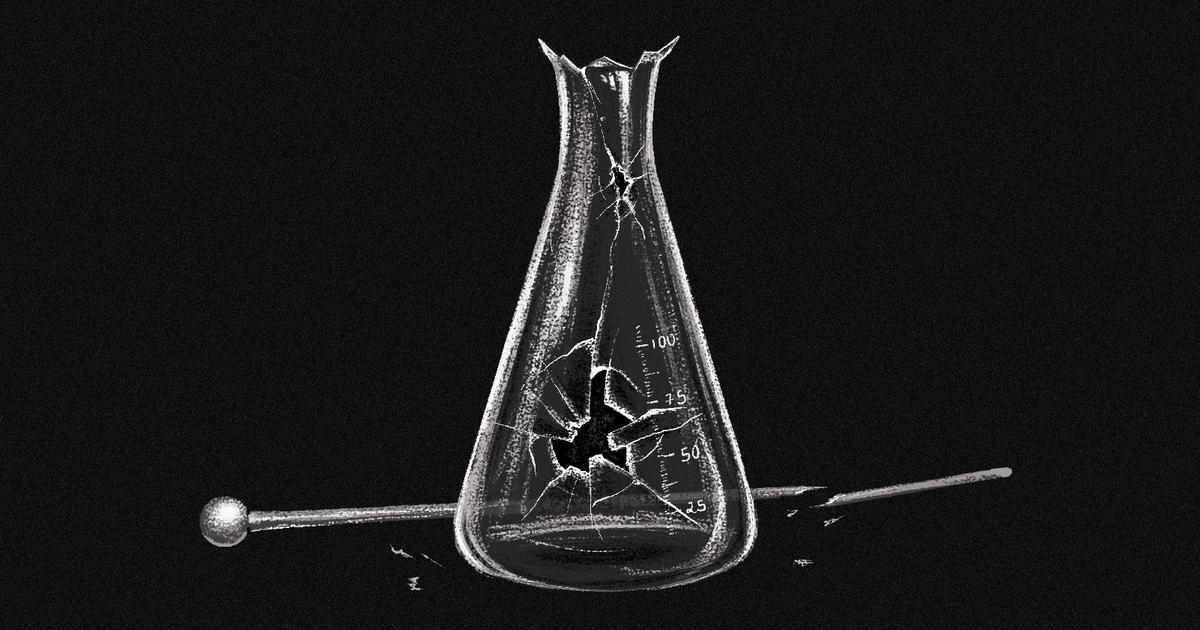
- 20 Jan 2024
Why is it in the News?
As India remoulds its scientific establishment, the utility of scientists being given administrative tasks needs to be questioned.
Context:
- Sustained economic progress which can satisfy national ambition is invariably fuelled by scientific advances translated into deployable technologies.
- This has been the inevitable global experience since the onset of the Industrial Revolution.
- The government is overhauling India’s science establishment, which includes setting up the new National Research Foundation (NRF) and restructuring the Defence Research and Development Organisation (DRDO).
- In this scenario, a frank assessment of the current administrative ability to simultaneously optimise Indian science’s efficiency and resilience is necessary.
What are the Problems with India’s Scientific Advancement?
India has a long and rich history of scientific innovation. However, in recent years, the country's science management has come under increasing scrutiny. There are several problems with India's science management including:
- Lack of Funding in Research and Development (R&D): One of the most pressing issues is a lack of funding.
- India spends a relatively small percentage of its GDP on research and development, compared to other developed countries.
- For instance, India allocates only about 0.7% of its GDP to R&D, a considerably lower figure compared to global leaders like the United States (3.5%) and China (2.4%).
- This lack of funding has led to a brain drain of talented scientists, who are leaving India in search of better opportunities.
- India spends a relatively small percentage of its GDP on research and development, compared to other developed countries.
- Budgetary Challenges: The modest commitment to R&D stems from broader budget constraints, competing priorities, and a historical emphasis on immediate socio-economic needs.
- This presents a challenge in fostering a robust scientific ecosystem on a limited budget.
- Lack of Coordination: Another problem with India's science management is a lack of coordination.
- There are many different government agencies and departments that are involved in science and technology, but there is often a lack of communication and cooperation between them.
- This can lead to duplication of effort and a waste of resources.
- Inadequacies in Budget Allocation by Scientific Administration: The current scientific administration struggles to identify and invest in high-impact projects.
- For instance, in 2022, the Indian Space Research Organisation ranked eighth in space launches, lagging in key technologies.
- Similar setbacks are evident in nuclear energy, genomics, robotics, and artificial intelligence.
- Lack of Strategic Planning and Execution: Beyond expenditure, the challenge extends to strategic planning and execution of scientific projects.
- Failure to adapt swiftly to emerging technologies and allocate resources judiciously has resulted in India falling behind in crucial fields.
- Inconsistent Long-Term Funding: A major concern is the absence of consistent long-term funding for vital projects, especially when faced with occasional setbacks.
- Steady funding, despite occasional failures, is crucial for a resilient and effective scientific management system.
- Finally, India's science management is often criticized for being too bureaucratic. The process of getting funding for research projects can be long and complex, and it can be difficult for scientists to get the support they need to succeed.
The Role of Senior Scientists in India’s Science Administration:
- Diverse Responsibilities Impacting Focus: Senior scientists in India often juggle multiple responsibilities, including academic pursuits, administrative duties, and leadership positions.
- This dispersion of focus can lead to inefficiencies and a lack of dedicated attention to critical administrative tasks.
- Lack of Administrative Skills: The assumption that successful scientists can seamlessly transition into effective administrators overlooks the distinct skills required for scientific work versus administration.
- Managing institutions, allocating resources, and making organizational decisions demand specific skills not necessarily possessed by accomplished scientists.
- Insufficient Training for Administrative Roles: Inadequate training makes it challenging for scientists to excel in administrative roles.
- Tasks like metric selection, conflict resolution, and setting priorities require skills not inherently developed through scientific training.
- Administration involves translating policy into outcomes, a skill not typically prioritized in scientific training.
- Conflicts of Interest and Quality Control Issues: The dual roles of scientists as academics and administrators can result in conflicts of interest within institutions.
- Academic rivalries, bureaucratic challenges, and compromised quality control may emerge, leading to issues like plagiarism, unethical publication practices, and compromised scientific outcomes.
- Nationwide Transfer System Absence: The absence of a nationwide transfer system for scientists and science administrators exacerbates issues such as competition and egotism.
- The lack of mobility within the system can contribute to internal divisions and hinder the progress of scientific careers and projects.
- Internal Control Challenges: Allowing individuals within the system to regulate it can lead to clear drawbacks, impacting the impartiality and effectiveness of science administration in India.
Challenges in India's Science Administration: A Historical Perspective
- Concentration of High-End Equipment: Economic constraints post-independence led India to concentrate on high-end scientific equipment, notably in institutions like the IITs.
- This concentration birthed gatekeepers, controlling access to critical resources and establishing a hierarchical structure where a few institutions wielded disproportionate influence.
- Gatekeepers and Institutional Captures Concept: Over time, these gatekeepers solidified their positions, accumulating power, government support, and institutional control.
- This system created an environment where young scientists navigated a complex web of influence, paying tributes to those controlling vital resources.
- Impact on Scientific Careers: The gatekeeping system not only influenced resource access but also shaped career trajectories.
- The nexus between institutional power and individual careers became pivotal, with appointments, awards, and international recognition often tied to maintaining favourable relations with gatekeepers.
- Normalization of Unethical Practices: The gatekeeping system has normalized unethical practices within Indian science.
- High plagiarism rates, paid publications in questionable journals, and undisclosed dealings for government funding have become ingrained, compromising the ethical standards of scientific research.
- Stifling Genuine Scientific Outcomes: This erosion of ethical standards doesn't just compromise research quality but stifles genuine scientific outcomes.
- Scientists in conflict with this system face hurdles, hindering promising careers and perpetuating a culture where personal connections often outweigh merit.
A Comparative Analysis of the U.S. Model and Indian Science Administration:
- U.S. Model: In the U.S., scientists chosen for administrative roles are identified early in their careers and undergo targeted training for managerial tasks.
- The emphasis is on maintaining a distinct separation between scientific pursuits and administrative responsibilities.
- Indian Scenario: In contrast, India's science administration traditionally involves senior scientists taking up administrative roles without a clear separation between scientific and administrative functions.
- This integrated approach poses challenges, as the skill sets needed for effective scientific research often differ significantly from those crucial for efficient administration.
Conclusion
As India pursues economic and strategic progress, challenges in science management hinder its research and development, causing a lag in innovation compared to other developed nations. To remedy this, increasing funding for research and development is crucial, along with enhancing coordination among government agencies and streamlining the funding process for research projects. By addressing these issues, India has the potential to emerge as a global leader in science and technology, bringing substantial benefits to its economy and society.
Resistance to medicines on the rise, Govt urges docs to mention reason when prescribing antibiotics (Indian Express)

- 19 Jan 2024
Why is it in the News?
With antimicrobial resistance on the rise, the Union Health Ministry has urged doctors to write down the exact reason when prescribing antibiotics.
New Summary:
- The Union Health Ministry urged all doctors in medical colleges and medical associations to make it a mandatory practice to "write indication/reason/justification" while prescribing antibiotics.
- The Director General of Health Services also appealed to all pharmacists to strictly implement Schedule H and H1 of the Drugs and Cosmetics Rules and stop the over-the-counter sale of antibiotics.
- Antimicrobials are listed under Schedule H and H1 of the Drugs and Cosmetics Act, both of which are categories of medicines that cannot be sold without a prescription.
What is Antimicrobial Resistance?
- According to the World Health Organisation (WHO), antimicrobial resistance occurs when bacteria, viruses, fungi and parasites change over time and no longer respond to medicines.
- This makes infections harder to treat, increasing the risk of disease spread, severe illness and death.
- As a result, the medicines become ineffective and infections persist in the body, increasing the risk of spreading to others.
- AMR affects countries in all regions and at all income levels.
- Its drivers and consequences are exacerbated by poverty and inequality, and low- and middle-income countries are most affected as per WHO.
- Currently, AMR is one of the top global public health threats facing humanity.
- It is estimated that bacterial AMR was directly responsible for 1.27 million global deaths in 2019 and 4.95 million deaths were associated with drug-resistant infections.
- According to the Indian Council of Medical Research (ICMR), 1.25 million lives were lost to drug resistance in 2019.
- India has one of the highest rates of antimicrobial resistance worldwide.
- Despite being prescription drugs, antibiotics are commonly available over-the-counter (OTC) at retail pharmacies.
- In a recent survey, conducted by the National Centre for Disease Control (NCDC) under the Union Health Ministry, over half of the antibiotics prescribed in the country cause antimicrobial resistance.
- Treatment failures also lead to longer periods of infectivity and the prohibitively high cost of second-line drugs may result in failure to treat these diseases in many individuals.
Scenarios in Which Antimicrobials are Most Commonly Misused?
- There are two common scenarios in which antimicrobials are misused or overused even by doctors.
- One is when they cannot make a diagnosis on whether an infection is caused by a bacteria or virus and prescribe antibiotics to err on the side of caution.
- Two, when they know it is a bacterial infection but want to avoid secondary infection.
- This is where antibiotics can be conserved because very few people get such secondary bacterial infections.
- In the case of a serious patient, who is admitted to the hospital, broad-spectrum antibiotics may be prescribed for 48 hours, during which they can be tested for which pathogen is causing the infection.
- The antibiotics needed to be switched after that.
- Prescription for antimicrobials before and after a procedure or surgery is another way that antibiotics are commonly overused.
- Just a single dose of antibiotic 60 to 120 minutes before surgery is enough to prevent surgical site infections.
- However, doctors end up prescribing antibiotics for seven to 14 days.
- If proper sterilization of equipment, and preparation of the surgical site are done, infections cannot happen.
- Shaving the surgical site before surgery should be avoided because it can lead to abrasions that can get infected
The Result of Antimicrobial Overuse and Misuse?
- Common infections are not curable anymore.
- Tuberculosis and urinary tract infections have become multi-drug resistant.
- In hospitals, infections are resulting in longer treatment times with the use of costlier and more toxic antibiotics.
- Despite all efforts and successful surgeries, people are dying
Factors contributing to Antimicrobial Resistance (AMR):
- Unnecessary Prescriptions: In many cases, antibiotics are prescribed when they are not necessary or are not used correctly.
- This can lead to the survival and proliferation of resistant bacteria.
- Agricultural use: The use and overuse of antimicrobials in agriculture, including to promote growth and prevent disease in livestock, is also a major contributor to the development and spread of AMR.
- Selective pressure: In the presence of antimicrobials, microbes that carry resistance genes can survive, replicate, and quickly dominate the microbial population.
- Mutation: Rapid microbial reproduction allows for swift-evolution, and mutations during replication may aid individual microbes in surviving antimicrobial exposure.
- Inappropriate use: Unnecessary and injudicious use of antibiotic fixed dose combinations may lead to the emergence of bacterial strains resistant to multiple antibiotics.
- State of the Environment: There is growing evidence that the environment plays a key role in the development, transmission and spread of AMR. Its proliferation is linked to the triple planetary crisis of climate change, nature and biodiversity loss, pollution and waste.
- For example, higher temperatures, storms and floods can fuel the spread of bacterial, viral, parasitic, fungal and vector-borne diseases.
- Severe weather events can also cause wastewater and sewage to overwhelm treatment plants, allowing untreated sewage rich in antimicrobial-resistant microbes to contaminate surrounding communities.
- As well, wastewater laced with medicines, including that from animal production facilities, hospitals and pharmaceutical companies, can feed drug resistance.
Measures Taken by the Government of India to Address AMR:
- National Action Plan on AMR: The National Action Plan on Containment of Antimicrobial Resistance (NAP-AMR) was launched in 2017.
- Emphasis is placed on a One Health approach, involving various stakeholder ministries/departments.
- AMR Surveillance and Research Network (AMRSN): ICMR has set up the AMR Surveillance and Research Network (AMRSN) comprising 30 tertiary care hospitals, both private and government.
- Its purpose is to generate evidence and capture trends and patterns of drug-resistant infections in the country.
- Research and International Collaboration: Initiatives by ICMR aim to develop new drugs and medicines through international collaborations.
- This is intended to strengthen medical research in the field of AMR.
- Red Line Campaign: The Union health ministry initiated the "Red Line Campaign."
- It urges people not to use medicines marked with a red vertical line, including antibiotics, without a doctor’s prescription.
- The campaign aims to discourage unnecessary prescription and over-the-counter sales of antibiotics, addressing drug resistance for diseases like TB, malaria, urinary tract infections, and HIV.
Way Forward
- Antimicrobials have saved countless lives and are essential to modern medicine but we need to use them more judiciously.
- Healthcare professionals should only prescribe antibiotics when necessary and at the right dosage and duration.
- The use and overuse of antibiotics in agriculture must also be limited.
- Countries must adopt the One Health approach, which recognizes that the health of people, animals, plants and the environment are interdependent.
- Preventative measures, such as improving water, sanitation and hygiene, as well as putting in place strong international and national regulatory frameworks to enforce controls on the sale and distribution of antibiotics, will go a long way in reducing AMR.
Conclusion
AMR is a global problem; therefore, international cooperation among nations is essential. Developing multi-stakeholder national action plans is key. Countries must also work together on strategies, information sharing and surveillance of antimicrobial use and resistance. However, fixing the AMR crisis is not just dependent on governments alone. Pharmaceutical companies, the chemical industry, regulators, municipal governments, human and animal healthcare professionals and students, scientists and the public all have a role to play.
How the legal debate over sub-categorisation among SCs has evolved over the years (Indian Express)
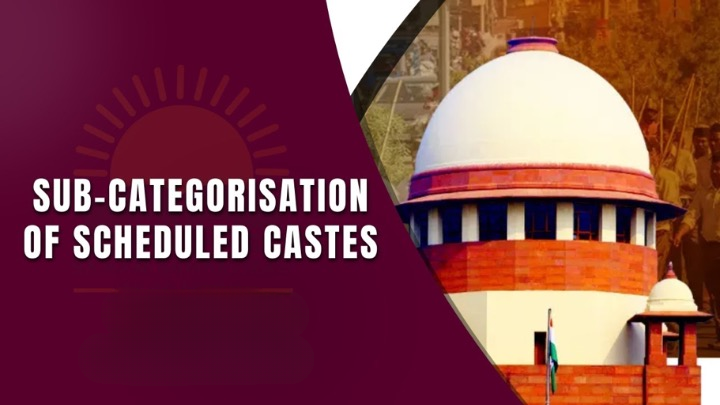
- 19 Jan 2024
Why is it in the News?
A seven-judge constitution bench headed by Chief Justice of India D Y Chandrachud will start to hear the case on the sub-categorisation among Scheduled Castes (SCs) from next week.
News Summary:
- The Union government has established a five-member committee of Secretaries, led by the Cabinet Secretary.
- The committee is tasked with evaluating and devising an equitable approach for the distribution of benefits, programs, and initiatives to the most disadvantaged communities among the 1,200 Scheduled Castes across the nation.
- These communities have often been overshadowed by relatively more advanced and dominant ones.
Key aspects of the committee include:
- Purpose: The committee will focus solely on strategies such as special initiatives and directing existing schemes toward marginalized communities.
- Mandate: It strictly refrains from delving into matters of reservation or determining the SC quota for employment and education, as these issues are considered sub-judice.
- Composition: The committee comprises Secretaries from the Home Ministry, Law Ministry, Tribal Affairs Ministry, and Social Justice Ministry.
About Schedule Caste (SC):
- Scheduled castes are those castes/races in the country that suffer from extreme social, educational and economic backwardness arising out of the age-old practice of untouchability and certain others on account of lack of infrastructure facilities and geographical isolation, and who need special consideration for safeguarding their interests and for their accelerated socio-economic development.
- These communities were notified as Scheduled Castes as per provisions contained in Clause 1 of Article 341 of the Constitution.
- Article 341 of the Indian Constitution grants the President the authority to declare certain castes and classes as Scheduled Castes in a state or union territory.
- It also empowers Parliament to include or exclude any caste or tribe from this list.
- Article 342 of the Constitution defines "Scheduled Castes" as castes, races, tribes, or parts of, or groups within such castes, races, or tribes as deemed under Article 341.
What is the Sub Categorisation of Caste?
- Sub Categorisation of Caste involves the additional classification of broader caste groups into sub-groups, considering various criteria.
- The call for Caste Sub-Categorization has emerged as certain castes and communities aim for acknowledgement and specific privileges based on distinctive characteristics, historical backgrounds, or socio-economic status.
- This approach aims to acknowledge and address the diversity within larger caste groups, targeting specific sub-groups perceived as socially and economically disadvantaged for more tailored benefits.
The Legal Aspect of Caste Sub-Categorization:
- Over the past two decades, several states, including Punjab, Bihar, and Tamil Nadu, have attempted to introduce state-level reservation laws to sub-categorize Scheduled Castes (SCs).
- However, all these plans are currently stuck in the courts as the Supreme Court forms a larger Constitution Bench to make a decision.
- E. V. Chinnaiah v State of Andhra Pradesh (2004): In this case, the apex court determined that once a community is included in the Presidential List for Scheduled Castes under Article 341 of the Constitution, they become part of a single, larger class of people for reservation purposes.
- The Bench emphasised that the state lacked the legislative power to create sub-classifications within this single class, as it would violate the Right to Equality.
- According to the Constitution, only Parliament can make these lists, and the President can notify them.
- In 2020, another Supreme Court bench, consisting of five members, in the Davinder Singh case unanimously declared that sub-categorization is constitutionally valid and suggested that a larger constitutional bench rule on the matter.
Sub-Categorization of Scheduled Castes (SCs):
- In the Telangana Assembly election, PM Modi pledged to address the demand for sub-categorization of Scheduled Castes (SCs).
- The Madiga community, the most populous among SC communities in Telangana, raised this concern, asserting that their representation share was being overshadowed by another SC community, the Malas.
- Since 1994, the Madiga community has advocated for the sub-categorization of SCs, leading to the establishment of the Justice P. Ramachandra Raju Commission in 1996 and a National Commission in 2007.
- Both commissions concluded that there are potential ways to resolve this issue.
- Currently, a seven-judge Constitution Bench of the Supreme Court is gearing up to commence hearings on this matter.
- The Supreme Court will determine whether sub-categorization among SCs and Scheduled Tribes is permissible.
- The focus of the hearing is on the constitutionality of sub-categorization among SCs for breaking up reservations in jobs and education set aside for them.
- Simultaneously, the government panel will explore "other ways to address their grievances.
Debate Over Sub-Categorization within SCs:
- Supporting Arguments: One key argument favouring the sub-categorization of Scheduled Castes (SCs) revolves around the existing disparities among these communities.
- The contention is that graded inequalities persist, with certain SC communities having limited access to essential facilities.
- Consequently, the more forward communities within the SCs tend to consistently benefit, potentially sidelining the more backward ones.
- To address this, proponents argue for sub-categorization, providing separate reservations for the more disadvantaged communities within the broader SC category.
- Opposing Perspectives: Arguments against sub-categorization assert that allocating separate reservations within these categories might not effectively tackle the root cause of the issue.
- Critics argue that the primary aim of sub-categorization was to ensure representation at all levels.
- However, even if reserved positions are available at higher levels, the most backward SCs may lack sufficient candidates to be considered.
- Therefore, it is suggested that existing government schemes and benefits should first reach these underserved sections before contemplating sub-categorization.
- Additionally, legal experts emphasize the importance of concrete data to support sub-categorization.
- They highlight the need for a comprehensive caste census, encompassing each community and sub-community along with their socio-economic data.
- According to these experts, a caste census provides the empirical basis required for the government to justify sub-categorization, determining the specific additional share of benefits needed by each community.
What is the Union Government’s Stand?
- In 2005, the Union government explored the legal aspects of sub-categorization within Scheduled Castes (SCs).
- The then Attorney General of India suggested that this could be a viable option only if unquestionable evidence indicated its necessity.
- During this period, both the National Commission for Scheduled Castes (NCSC) and the National Commission for Scheduled Tribes (NCST) expressed the view that a constitutional amendment might not be essential.
- They pointed out that Article 16(4) of the Constitution already empowered states to formulate special laws for any backward classes deemed under-represented.
- Furthermore, they emphasized the urgency of ensuring the prioritized implementation of existing schemes and benefits rather than merely allocating a quota within the existing quota.
Govt disburses Rs 4,415 crore under PLI scheme; low job creation a concern (Indian Express)

- 18 Jan 2024
Why is it in the News?
Recently, the central government has disbursed an incentive amount of Rs 4,415 crore under its flagship Production-Linked Incentive (PLI) schemes for as many as eight sectors.
News Summary:
- The central government, through its flagship Production-Linked Incentive (PLI) schemes, has disbursed an incentive amount of Rs 4,415 crore until October in the current fiscal year across eight sectors.
- In the fiscal year 2023-24, Rs 1,515 crore has been disbursed, compared to Rs 2,900 crore in 2022-23 when payments under the scheme commenced.
- The government aims to achieve a disbursal target of Rs 11,000 crore by the end of this fiscal year.
- According to official statements, the employment generation, both direct and indirect, has exceeded 6.78 lakh.
- As of now, 746 applications have received approval in 14 sectors, with an expected investment exceeding Rs 3 lakh crore.
- Notably, 176 MSMEs are among the beneficiaries of the PLI schemes, particularly in sectors like pharma and telecom.
What is the Production Linked Incentive Scheme (PLI)?
- Production-linked incentive (PLI) schemes were first introduced in India in March 2020, mainly targeting three industries – Mobile Manufacturing and Electric Components, Pharmaceutical and Medical Device Manufacturing.
- The PLI concept has since expanded to 14 sectors to boost India’s manufacturing capabilities and encourage export-oriented production.
- The PLI schemes aim to develop capacities in the local supply chain, introduce new downstream operations, and incentivise investments into high-tech production.
- Mechanism: Under the PLI scheme, both domestic and foreign companies receive financial incentives for manufacturing within India, with rewards calculated as a percentage of their revenue over up to five years.
- Targeted Sectors: The 14 sectors covered by the scheme include mobile manufacturing, medical devices, automobiles and auto components, pharmaceuticals, drugs, speciality steel, telecom & networking products, electronic products, white goods (ACs and LEDs), food products, textile products, solar PV modules, advanced chemistry cell (ACC) batteries, and drones and drone components.
- Incentive Structure: Incentives are determined based on incremental sales, with certain sectors like advanced chemistry cell batteries, textile products, and the drone industry having calculations considering sales, performance, and local value addition over five years.
- Emphasizing research and development (R&D) investments aims to align the industry with global trends and enhance competitiveness in the international market.
Performance of the PLI Schemes:
- Positive Export Growth: India has experienced a substantial boost in mobile handset exports, doubling from Rs 45,000 crore in FY22 compared to FY21, and further estimating exports to reach Rs 90,000 crore in FY23.
- Additionally, in the pharmaceutical industry, India has successfully manufactured 35 active pharmaceutical ingredients (APIs), reducing reliance on imports, particularly from countries like China.
- Overall, the PLI schemes have contributed to exports exceeding Rs 3.2 lakh crore, notably driven by sectors such as electronics, pharmaceuticals, food processing, and telecom.
- Challenges in Implementation: Despite positive outcomes, the implementation of PLI schemes has faced sluggish progress.
- In the fiscal year 2021-22, the government disbursed a mere Rs 10 crore in incentive payouts for mobile handsets, white goods (ACs and LEDs), and the food processing industries combined.
- However, this figure increased to Rs 2,874 crore in 2022-23, according to DPIIT.
- During the initial two years of the seven-year initiative, only 1.46 per cent of the total Rs 1.97 lakh crore incentive outlay was disbursed.
- Some major industries are yet to fully embrace the scheme or initiate significant activities under it.
- Limited Job Creation: The slow start in implementation has resulted in a lower-than-projected number of jobs created.
- While the PLIs were anticipated to generate 6 million new jobs over seven years, the actual figure stands at approximately 300,000 jobs, representing only 5 per cent of the total projection, between 2020 and early 2023.
Challenges in the PLI Scheme:
- Assembly Emphasis Over Value Addition: The subsidy structure within the Mobile and allied Component Manufacturing segment of the PLI scheme primarily incentivizes the completion of phone assembly in India, neglecting the consideration of the actual value added through manufacturing processes.
- Consequently, many mobile phone components are still imported, encompassing critical elements such as display screens, cameras, batteries, and printed circuit boards.
- WTO Constraints and Limited Value Addition: India faces constraints imposed by WTO rules, preventing the tying of PLI subsidies to domestic value addition.
- While India aspires to produce chips domestically, the intricate nature of chip manufacturing and the inability to mandate significant domestic value addition present challenges to realising this goal.
- Ambiguity in Incentive Disbursement: Despite the establishment of an Empowered Committee to oversee fund disbursement across various sectors, the process lacks transparency and clear criteria.
- The absence of well-defined parameters for ministries and departments to determine incentive allocations raises concerns about the fairness and effectiveness of the scheme.
- Absence of a Centralized Database: A notable deficiency in the PLI scheme is the lack of a centralized database that comprehensively captures critical information such as increased production, exports, and the creation of new jobs.
- This information gap complicates the evaluation process, introducing administrative complexities.
- The resulting ambiguity impacts transparency, potentially leading to mischief, thereby weakening the overall policy structure.
Way Forward
The government should evaluate the efficacy of the PLI scheme, taking into account factors such as job creation, cost per job, and the identified challenges contributing to its limited success. Before expanding the scheme to encompass additional sectors, a thorough understanding of its limitations is essential, along with proactive measures to address the underlying issues.
Supreme Court to hear Thackeray group's plea against speaker’s decision refusing to disqualify MLAs (The Hindu)

- 17 Jan 2024
Why is it in the News?
The Maharashtra Assembly Speaker has refused to disqualify 40 MLAs of the Eknath Shinde faction after recognising it as the real Shiv Sena.
What happened in Maharashtra?
- In June 2022, a faction of the Shiv Sena headed by Eknath Shinde moved with 37 of the 55 MLAs and claimed to be the real Shiv Sena. It appointed Bharat Gogawale as its whip.
- However, the UBT faction claimed that they were the original political party and that Sunil Prabhu of its faction would continue to be the whip.
- The Speaker has now recognised the Eknath Shinde faction as the real Shiv Sena and held the appointment of whip by this group as valid.
- This was based on the strength of members of the Shinde faction and the party’s 1999 constitution.
- The Speaker based on this ruling refused to disqualify 40 MLAs of the Shinde faction.
- He also refused to disqualify 14 MLAs of the UBT group as the whip instructions from Bharat Gogawale could not be physically served on them.
What is Defection?
- Defection refers to the act of a legislator shifting allegiance from one political party to another, embodying elements of revolt, dissent, and rebellion by an individual or a party.
- In the political context, it manifests as a scenario wherein a member of a political party relinquishes their allegiance and aligns with a different political entity.
- Historically termed as 'floor crossing,' this phenomenon finds its roots in the British House of Commons, symbolised by a legislator physically changing sides from the Government to the Opposition or vice versa.
- In India, the defections of legislators during the 1960s and 70s from their parent parties created political instability in many States, bringing down elected governments.
- Therefore, to ensure the stability of elected governments, the 52nd constitutional amendment introduced the ‘anti-defection’ law through the Tenth Schedule in 1985.
About the Anti-Defection Law:
- The Tenth Schedule of the Constitution, also known as the anti-defection law, was added to prevent political defections.
- The rationale for curbing such defections was that they undermined the foundations and principles of Indian democracy.
- The law disqualifies legislators for violating the will of their political party.
- In the 37 years, the law has been in place, while individual defections may have reduced, en masse defections continue.
- However, the presence of the Anti-Defection Law has also undermined democracy by inhibiting legislators from exercising their choice and ability to function independently, and restricted decision-making in legislatures to a few who control political parties.
Features of the Anti-Defection Law:
- Disqualification on grounds of defection: A legislator belonging to a political party will be disqualified if he:
- (i) voluntarily give up his party membership, or
- (ii) votes/abstains to vote in the House contrary to the direction issued by his political party.
- A member is not disqualified if he has taken prior permission of his party, or if the voting or abstention is condoned by the party within 15 days.
- Independent members will be disqualified if they join a political party after getting elected to the House.
- Nominated members will be disqualified if they join any political party six months after getting nominated.
- Exemptions in cases of merger: Members are exempted from such disqualification when at least two-thirds of the original political party merges with another political party. Further:
- (i) The members must have become members of the party they have merged with/into, or
- (ii) they should have not accepted the merger and chose to function as a separate group.
- Decision-making authority: The decision to disqualify a member from the House rests with the Chairman/Speaker of the House.
- In the Kihoto Hollohan case (1993), the Supreme Court held that the presiding officer, while deciding a question under the Tenth Schedule, functions as a tribunal.
- Hence, his decision like that of any other tribunal, is subject to judicial review on the grounds of mala fides, perversity, etc.
Advantages of Anti-Defection Law:
- Enhances political stability by curbing legislators' inclination to switch parties.
- Facilitates democratic realignment through party mergers within the legislature.
- Mitigates corruption and reduces non-developmental expenditures associated with irregular elections.
- Offers constitutional recognition to the existence of political parties, marking a significant milestone.
Criticism of the Anti-Defection Law:
- Limited Independence: The ADL restricts legislators from acting independently, contradicting the essence of parliamentary democracy by penalizing independent actions.
- Party Alignment Constraints: Legislators are bound by the official stance of their party on any issue, limiting their flexibility and autonomy.
- Reduced Constituency Accountability: By preventing parliamentarians from switching parties, the ADL diminishes accountability to both the Parliament and the constituents.
- Defence Through Splitting: The law allows a defence against disqualification through party splits, where one-third of legislators moving with a breakaway group avoids disqualification.
- Misinterpretation Challenges: The ADL is prone to misinterpretation, as seen in instances like Maharashtra, highlighting the absence of authoritative legal interpretations.
- Ambiguity in Splits: Recent occurrences show opposition members breaking away in small groups to join the ruling party, raising questions about disqualification when more than 2/3rd of the opposition defects.
- Attraction of Office: Critics argue that ideological defection is rare in India, with legislators often defecting due to the lure of office rather than ideological shifts.
Recommendations from Various Committees on ADL:
- Dinesh Goswami Committee on Electoral Reforms (1990): Disqualification should be confined to cases where a member voluntarily relinquishes party membership.
- Abstention from voting or voting against the party whip in a confidence or no-confidence motion should warrant disqualification.
- The President/Governor, advised by the Election Commission, should decide disqualification matters.
- Law Commission (170th Report, 1999): Eliminate provisions exempting splits and mergers from disqualification.
- Treat pre-poll electoral fronts as political parties under the anti-defection law.
- Political parties should issue whips only in situations jeopardizing the government.
- Constitution Review Commission (2002): Bar defectors from holding public office or any remunerative political post for the remaining term.
- Consider the vote cast by a defector to topple a government as invalid.
- Election Commission: Decisions under the Tenth Schedule should be made by the President/Governor, guided by the binding advice of the Election Commission.
Important Judgment Regarding Anti-Defection Law:
- Kihoto Hollohan Case: In the Kihoto Hollohan case, the Supreme Court affirmed the overall validity of the Anti-Defection Law, except for the aspect related to judicial review, which was deemed unconstitutional.
- Shri Rajesh Verma v. Shri Mohammad Shahid Akhlaque Case: The court, in the Shri Rajesh Verma v. Shri Mohammad Shahid Akhlaque case, established that publicly opposing one's original party and supporting another party constitutes a de facto resignation from the original party.
- Mannadi Satyanarayan Reddy v Andhra Pradesh Legislative Assembly Case: In the Mannadi Satyanarayan Reddy v Andhra Pradesh Legislative Assembly case, the court addressed the jurisdiction of the Speaker or Presiding Officers in deciding questions related to defection.
- The court clarified that there is no provision in the Tenth Schedule limiting the Speaker's exercise of jurisdiction to decide such questions.
What are the reforms needed?
- The Supreme Court in Sadiq Ali versus Election Commission of India (1971), laid down the three-test formula for determining which faction is to be recognised as the original political party by the Election Commission.
- These are the aims and objects of the party;
- Its affairs as per the party’s constitution reflect inner party democracy; and
- The majority in the legislative and organisation wings.
- The first test is subject to competing claims by rival groups.
- But it is the lack of inner party democracy that results in most of these defections.
The Election Commission in February 2023, recognised the Eknath Shinde faction as the real Shiv Sena, solely based on votes polled by legislators supporting Eknath Shinde in the Maharashtra Assembly elections of 2019. An authoritative Supreme Court judgment in these matters and the setting up of an independent tribunal to decide on the disqualification of members will reduce the ambiguities surrounding the Tenth Schedule. The real reform required is institutionalising internal democracy through regular inner-party elections in our political parties with strict monitoring by the Election Commission.
India’s multidimensional poverty rate is down to 11.28% in 2022-23 from 29.17% in 2013-14 (Indian Express)
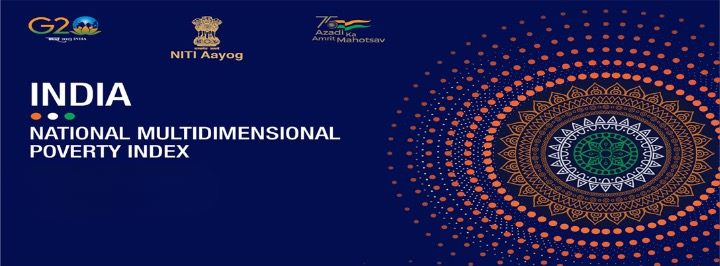
- 16 Jan 2024
Why is it in the News?
The share of India’s population living in multidimensional poverty is estimated to have fallen to 11.28 per cent in 2022-23 from 29.17 per cent in 2013-14, according to a discussion paper released by NITI Aayog on Monday.
Context:
- According to the NITI Aayog’s discussion paper, multidimensional poverty in India declined from 29.17% in 2013-14 to 11.28% in 2022-23, with about 24.82 crore people moving out of this bracket during this period.
- The national multidimensional poverty measures simultaneous deprivations across three equally weighted dimensions of health, education, and standard of living that are represented by 12 sustainable development goals-aligned indicators, according to NITI Aayog.
Key Highlights of the MPI in India Since 2005-2006:
- Overall Decline in Multidimensional Poverty: As per the NITI Aayog discussion paper, India's multidimensional poverty has decreased from 29.17% in 2013-14 to 11.28% in 2022-23.
- The trend signifies the upliftment of 24.82 crore people from this bracket during the specified period.
- State-wise Decline: "Uttar Pradesh registered the largest decline in the number of poor with 5.94 crore people escaping multidimensional poverty during the last nine years followed by:
- Bihar at 3.77 crore
- Madhya Pradesh at 2.30 crore and
- Rajasthan at 1.87 crore.
- NITI Aayog's approach to measuring multidimensional poverty involved considering 12 indicators aligned with the sustainable development goals.
- These indicators encompass crucial aspects such as nutrition, child and adolescent mortality rates, maternal health, educational attainment, access to basic amenities like clean cooking fuel, sanitation, safe drinking water, electricity, and housing, as well as possession of assets and bank accounts.
- "Significant initiatives covering all dimensions of poverty have led to 24.82 crore individuals escaping multidimensional poverty in the last 9 years.
- As a result, India is likely to achieve its SDG target of halving multidimensional poverty well before 2030.
- The report emphasized impactful programs, such as Poshan Abhiyan and Anemia Mukt Bharat, which have markedly improved accessibility to healthcare services, significantly reducing deprivation.
- Managing one of the globe's largest food security initiatives, the targeted Public Distribution System (PDS) under the National Food Security Act encompasses 81.35 crore beneficiaries, ensuring the distribution of food grains to both rural and urban populations.
- "The government's persistent dedication and resolute commitment to enhancing the lives of the most vulnerable and deprived have been instrumental in this accomplishment.
What is Multidimensional Poverty?
- Poverty can have several negative effects at once. Some of these include inadequate nutrition or health, a lack of power or clean water, low-quality employment, or insufficient education.
- The true nature of poverty cannot be fully captured by concentrating only on one aspect, such as income.
- Multidimensional Poverty, as a metric, goes beyond income or consumption alone.
- It encompasses deprivations in education and access to essential infrastructure, considering factors beyond the monetary aspect.
- The measurement is conducted at the $2.15 international poverty line, as defined by the World Bank (in 2017 purchasing power parity terms), ensuring a comprehensive assessment of poverty that extends beyond monetary value.
What is the National Multidimensional Poverty Index (MPI)?
- Prepared By: NITI Aayog
- Objective: The aim is to gauge poverty across various dimensions, complementing existing statistics based on per capita consumption expenditure.
- Purpose of the National MPI: Provides an enhanced, high-level overview of poverty at the national level.
- Acts as a complement to monetary poverty measures.
- Furnishes information crucial for shaping effective policy initiatives.
- The MPI is founded on the individual or household profile of overlapping or "joint" deprivations experienced by each person.
- Key Features: Serves as an incentive for leaving no one behind and prioritizing the most marginalized.
- Adaptable to the national context and maintains transparency.
- Credible Methodology: India's national MPI employs a methodology developed by the Oxford Poverty and Human Development Initiative (OPHI) and the United Nations Development Programme (UNDP), aligning with the globally accepted and robust standards used in the publication of the Global Multidimensional Poverty Index.
- Three Macro Dimensions: The National MPI is structured around three macro dimensions, each with specific indicators and weights, outlined below –
Significance of the MPI:
- Crucial Public Policy Instrument: The establishment of India's National MPI introduces a pivotal public policy instrument that monitors multidimensional poverty, facilitating evidence-based and targeted interventions to ensure inclusivity and prevent any individuals from being left behind.
- Assesses the Efficacy of Multi-Sectoral Interventions: It offers valuable insights into the effectiveness of multi-sectoral interventions aimed at addressing diverse facets of poverty.
- Encompasses Diverse Deprivations: Notably, functioning as a metric for multidimensional poverty, it captures the myriad and simultaneous deprivations experienced by households.
- Comprehensive Analysis Across All Tiers: This report conducts a thorough analysis of the headcount ratio and intensity of multidimensional poverty, encompassing national, State/UT, and district levels.
Conclusion
The National MPI in India has been conceived as an all-encompassing tool, expediting purpose-driven initiatives to gauge and systematically eliminate multidimensional poverty. The dimensions of the index have demonstrated their efficacy in identifying and facilitating precise policy interventions aimed at achieving targeted goals.
NITI Aayog
- NITI Aayog, established on January 1, 2015, succeeded the Planning Commission with a distinctive focus on a 'Bottom-Up' approach.
- Embracing the vision of 'Maximum Governance, Minimum Government' and echoing the ethos of 'Cooperative Federalism,' NITI Aayog serves as a dynamic institution facilitating collaborative decision-making.
Functional Components: NITI Aayog operates through two principal hubs-
- Team India Hub: This hub is a crucial interface, fostering effective communication and collaboration between the states and the central government.
- It plays a pivotal role in aligning the diverse interests of different regions in the spirit of cooperative federalism.
- Knowledge and Innovation Hub: This hub is dedicated to enhancing the intellectual capacity of NITI Aayog. It functions as a think tank, driving innovative ideas and knowledge creation to inform policy decisions and contribute to the overall development agenda.
INDICES of NITI Aayog:
- Composite Water Management Index
- District Hospital Index
- Export Preparedness Index
- Global Innovation Index
- India Innovation Index
- Multidimensional Poverty Index
- School Education Quality Index
- SDG India Index
- State Energy Index
- State Health Index
Muizzu asks India to withdraw troops by March 15: Why are Indian soldiers in Maldives? (Indian Express)

- 15 Jan 2024
Why is it in the News?
Maldivian President Mohamed Muizzu has asked India to withdraw its military personnel from his country by March 15, a senior official said in Male on Sunday, nearly two months after Maldives sought their removal.
Context:
- Maldives President Mohamed Muizzu has asked India to withdraw its military personnel from the Indian Ocean archipelago nation by mid-March.
- A high-level core group, set by both nations, to negotiate the withdrawal of troops held its first meeting at the Foreign Ministry in Male on Sunday with Indian High Commissioner Munu Mahawar present.
- President Muizzu had, during his presidential campaign, asserted that he would accomplish the removal of Indian troops from the Maldives, and had made a formal request to India to withdraw its military personnel soon after assuming office.
How many Indian troops are in the Maldives?
- India does not have a large military presence in the Maldives contrary to claims by “India Out” protesters that thousands of Indian troops were stationed.
- There are only 88 Indian military personnel in the Maldives, according to the latest government figures.
- They have been based there for more than a decade.
What are Indian troops doing in the Maldives?
- India and Maldives have been allies and defence cooperation has been a crucial part of the relationship.
- Indian soldiers have been training Maldivian troops in combat and reconnaissance and helping in rescue operations.
- According to the terms of the bilateral agreement between the two nations, Indian officers were sent to train the Maldivian National Defence Force.
- The Indian troops are unarmed and mostly assist the Maldivian government with search and evacuation operations, (and) medical evacuation operations.
- From January 2019 until late 2023, 495 lives have been saved because of medical evacuations and special training conducted by the Indian personnel in the Maldives with the help of two helicopters gifted by India.
- Also, at least 50 joint search and rescue missions have been conducted.
Have Indian troops conducted military operationss in the Maldives?
- Yes, Indian troops conducted one military operation in the Maldives in November 1998 called “Operation Cactus”.
- A group of Maldivians led by businessman Abdullah Luthufi attempted a coup to overthrow the government of Maumoon Abdul Gayoom.
- They had the backing of Sri Lanka’s People’s Liberation Organisation of Tamil Eelam (PLOTE), a Tamil secessionist group.
- At least 80 mercenaries of the group entered Male on 3 November 1988 on board a hijacked Sri Lankan fighter.
- They captured key infrastructure – airports, ports, television and radio stations.
- While Gayoom was escorted to a safe house, the mercenaries took several hostages including ministers.
- As the situation escalated in the Maldives, India’s chief of army staff General VN Sharma got a call from the foreign service officer at the Prime Minister’s Office.
- He asked if the Indian army could help as there was an emergency in the Maldives.
- Indis agreed and three armed forces – the army, navy, and air force came to the neighbour's rescue.
- Two hostages were among 19 killed during Operation Cactus.
- The rest of the casualties were mercenaries.
- India, thus, helped in thwarting a major political crisis in the Indian Ocean Region.
Anti-India sentiments among a section of the Maldives’ population:
- In 2020, the “India Out” campaign started as on-ground protests in the Maldives which later spread widely across social media platforms.
- By the second half of 2021, it had developed into an active and visible political campaign.
- The supporters of the campaign had claimed that it had been started to protest against what they called Indian military presence in the country.
- They had actively targeted all aspects of India-Maldives bilateral relations.
- During the International Yoga Day celebration in 2022, organised by the Indian High Commission in the capital Male which was held at the Galolhu Stadium was disrupted by a group around 150 of protesters.
- The mob attacked participants practising yoga and vandalised property.
What are the major factors behind the fear and suspicion?
- The controversy started after two Dhruv Advanced Light Helicopters were given by India to the Maldives in 2010 and 2015.
- These were used for search and rescue operations, maritime weather surveillance and for airlifting patients.
- However, some in Progressive Party of Maldives (PPM) hinted that India was attempting to create a military presence in Maldives as these were military choppers.
- The other causes of concern are the perceived lack of transparency in dealings with India under the rule of Ibrahim Mohamed Solih and the reliance on India for maritime security.
- UTF Harbour Project: Under this agreement, India was to develop and maintain a coastguard harbour and dockyard at Uthuru Thilafalhu, a strategically located atoll near the capital Malé.
- Sections of Maldivian media had speculated that the UTF project would be turned into an Indian naval base.
India-Maldives Bilateral Relations:
- India and Maldives share strong ties encompassing ethnic, linguistic, cultural, religious, and commercial dimensions, fostering close and multi-faceted relations.
- The historical trajectory of their relationship is marked by significant milestones:
- Diplomatic Relations: India, recognizing Maldives' independence in 1965, established diplomatic ties promptly.
- During the 1988 coup attempt, India's rapid intervention under Operation Cactus solidified trust and laid the groundwork for enduring bilateral relations.
- Timely assistance during natural calamities, such as the 2004 Tsunami and the 2014 water crisis, showcased India's commitment to the well-being of the Maldives.
- The Swift dispatch of medical aid in 2020 during a measles outbreak demonstrated India's continuous support.
- Security and Defence Cooperation: A comprehensive Defence Action Plan was signed in April 2016, consolidating defence collaboration.
- India plays a crucial role in training the Maldivian National Defence Force, meeting 70% of their training needs over the last decade.
- Annual Defence Cooperation Dialogues, initiated in July 2016, underscore the strategic partnership.
- Development Cooperation: India's significant developmental contributions include projects like:
- Indira Gandhi Memorial Hospital
- Maldives Institute of Technical Education (now Maldives Polytechnic)
- India-Maldives Faculty of Hospitality & Tourism Studies
- Technology Adoption Programme in the Education Sector
- National College for Police and Law Enforcement
- Infrastructure & Connectivity Projects under Exim Bank Line of Credit ($800 million)
- Economic and Trade Relations: India emerged as Maldives' second-largest trade partner in 2022, with bilateral trade totalling $501.82 million.
- In November 2022, India provided financial assistance of US$ 100 million to address economic challenges.
- The RBI-Maldives Monetary Authority Currency Swap Agreement in December 2022 further strengthened economic ties.
- Tourism and Indian Community: Indians constitute the largest group of tourists in the Maldives, with over 200,000 visitors in 2023.
- The Indian community, the second-largest expatriate group, contributes significantly to various sectors, with approximately 22,000 individuals.
- Notably, 25% of doctors and teachers in the Maldives are Indian nationals.
- The India-Maldives relationship continues to evolve, reflecting shared values, mutual interests, and a commitment to fostering prosperity and stability in the region.
What does President Muizzu want?
- Muizzu is a pro-China leader and wants Indian troops to leave the country.
- This was among the pre-poll promises he made during his campaign.
- His main theme was about an alleged threat to the Maldives’ sovereignty by some Indian military personnel on an island, part of his party’s years-long “India out” strategy.
- After his just-concluded visit to China, President Muizzu, announced plans to reduce the country’s dependency on India, including securing imports of essential food commodities and medicine and consumables from other countries.
- Maldives is also reportedly reviewing more than 100 bilateral agreements with India signed by the previous government.
Way Forward
The trajectory of India-Maldives relations is shaped by evolving geopolitical dynamics, leadership shifts, and shared regional interests. India's steadfast commitment to the Maldives involves going beyond customary measures to foster a comprehensive partnership. Any abrupt actions jeopardizing this carefully cultivated alliance would potentially inflict more harm on the Maldives than on India. Recognizing and proactively addressing these challenges, both nations can skillfully navigate the intricacies of their relationship, paving the way for a more robust, resilient, and mutually advantageous partnership in the future.
To combat climate challenges, the Finance Commission needs to step up (Indian Express)

- 13 Jan 2024
Why is it in the News?
As the union government constituted the 16th Finance Commission (FC), experts recommend including variables related to climate change, beyond forest cover.
Background:
- In the contemporary era, India has gained prominence as a key participant in global initiatives aimed at addressing climate change and promoting increased forest coverage.
- This engagement has not only positively impacted environmental sustainability but has also strengthened the adaptability of communities and ecosystems.
- In addressing the hurdles presented by climate change, the concept of fiscal federalism, with a specific focus on the role of the Finance Commission (FC), has emerged as a crucial factor in encouraging states to prioritize conservation endeavours.
Role of the Finance Commission in Fiscal Federalism and Forest Conservation:
- Promoting Conservation Initiatives: The Finance Commission's role has been pivotal in actively promoting and incentivizing state-led efforts towards forest conservation.
- Through dedicated fund allocations, the Commission acknowledges the inherent connection between vibrant forests, sustainable ecosystems, and the overall national well-being.
- Financial backing serves as a catalyst, motivating states to prioritize conservation endeavours while safeguarding their economic interests.
- Balancing Revenue Capacities and Expenditure Needs: Beyond their biodiversity significance, forest resources represent valuable economic assets for states.
- The Finance Commission recognizes that preserving existing forests and augmenting forest cover density directly impact the revenue capacities and expenditure requirements of states.
- Finding an equilibrium between economically exploiting forest resources and ensuring their conservation becomes essential for achieving both environmental sustainability and economic prosperity.
Previous Instances of Finance Commission Initiatives in Forest Conservation:
- The Finance Commission’s formulae for tax sharing have evolved since the first one, constituted in 1951, for the period 1952-1957.
- Since then, FCs have been constituted at intervals every five years with the 16th one currently being implemented.
- Initially, the formula for distributing tax among states respectively, known as horizontal devolution, gave significant weightage, around 80% to 90%, to the population of the states, meaning states with higher populations were given a higher share of the tax.
- Then, the 7th FC drastically reduced the weightage assigned to the population to 25% and increased the weightage given to equity, in which income, land area, and sometimes infrastructure and fiscal discipline too, played a significant role in determining how much each state would receive from the central government.
- Similarly, there have been changes in determining the funds allocation for environmental initiatives.
- The 12th FC (2005-10) dedicated Rs 1,000 crore for forest conservation across states.
- The 13th FC (2010-15) enhanced this allocation to Rs 5,000 crore.
- However, it is important to note that these grants comprised less than 0.05% of the total funds transferred from the central government to the states.
- Ecological Fiscal Transfers (EFT) – where public revenue is shared based on ecological indicators – were introduced in 2015 with the 14th FC which incorporated forest cover as a criterion for tax devolution, allocating it a weightage of 7.5% in the distribution formula for the tax-transfer during the period 2015-16 to 2019-2020.
- The 14th FC (2015 to 2020) considered several recommendations and replaced the grants with a more prominent placement for the forestry sector — it dedicated 7.5 per cent of the divisible central tax pool to ecology and forests.
- The allocation was based on the forest cover in each state.
- The 14th FC (2015 to 2020) considered several recommendations and replaced the grants with a more prominent placement for the forestry sector — it dedicated 7.5 per cent of the divisible central tax pool to ecology and forests.
- The 15th FC (2021–22 to 2025–26) extended this share to 10 per cent.
- Having mobilised and distributed over Rs 4.5 lakh crore to states against not only their forest cover but also forest density, the 15th FC effectively became the largest payment for ecosystem services (PES) systems in the world.
- The Commission also gave grants to combat air pollution.
- The fiscal transfers that are earmarked for a specific department or programme have traditionally been much smaller than fiscal transfers to the general state budget.
- For example, the specific-purpose grants for forestry under the 12th and 13th FC were a fraction of the general-purpose transfers (those not assigned to specific purposes) that followed under the 14th and 15th FC.
- The formula-based finance commission transfers are unconditional and are not tied to the Department of Forest or Ecology.
- Whether there is a need for conditions to ensure the funds are invested in the environment, at least in principle, the enticement of receiving larger general-purpose transfers should motivate states to invest in forest protection.
- Since 2005, the central government has been sharing annual forest grants with states.
- These grants serve as both compensation and incentive mechanisms.
- However, it remains unclear to what extent these grants have contributed to the increased forest cover in the states.
Addressing Complexities in the Intersection of Fiscal Federalism and Environmental Conservation:
- Harmonizing Conservation Costs and Economic Imperatives: Balancing conservation expenses with economic necessities becomes challenging, particularly for states grappling with financial constraints.
- The substantial opportunity costs linked with forest preservation may strain state budgets, presenting a hurdle in garnering widespread commitment.
- Innovating Financing Models for Conservation: Traditional financing models for conservation may prove inadequate or unsustainable in the long term.
- Overreliance on grants can create dependencies, hindering the development of self-sustaining mechanisms for conservation.
- Addressing Climate-Induced Economic Vulnerabilities: The repercussions of climate change pose considerable threats to economic stability, especially for states heavily dependent on climate-sensitive sectors.
- Unpredictable weather patterns, floods, and forest fires can intensify existing vulnerabilities.
- Strategically Allocating Resources: The Finance Commission encounters the intricate task of strategically allocating resources to maximize both environmental and economic advantages.
- Ensuring targeted funding for critical conservation initiatives while aligning with state development objectives demands a nuanced approach.
- Integrating Environmental Goals with Fiscal Capacity: States may grapple with aligning their environmental objectives with fiscal capabilities, potentially creating a gap between aspirations and implementation.
- Ensuring Equitable Participation: A potential risk exists where states with greater fiscal capacities may disproportionately benefit from conservation incentives, potentially exacerbating existing economic disparities.
The Potential Role of 16th Finance Commission's:
- Integrating Climate Considerations into Tax Devolution Framework: The 16th Finance Commission has the potential to bring about a transformative shift by integrating climate vulnerability and emission intensity as pivotal factors in the tax devolution formula.
- This alignment directly supports India's Nationally Determined Contributions (NDCs) under the Paris Agreement, providing states with robust fiscal incentives to actively contribute to national climate goals.
- Implementing Performance-Based Grants for Key Sectors: Recognizing the instrumental role of specific sectors in achieving NDCs and Sustainable Development Goals (SDGs), the 16th Finance Commission could contemplate introducing performance-based grants.
- These grants, which are specifically designed to help areas like renewable energy, sustainable land and forest management, and air pollution efforts, provide states with focused financial assistance and motivate them to take proactive steps toward change.
- Addressing Emission Reduction Challenges: Prioritizing emission reduction, the commission can focus on decarbonizing critical sectors like energy and transport.
- This entails incentivizing states to embrace clean energy practices and fostering innovation to tackle persistent issues like crop burning.
- Through strategic fund allocation, the 16th Finance Commission can drive tangible progress in mitigating emission sources.
- Funding Innovations for Ecological Challenges: Allocating funds to innovative solutions for ecological challenges induced by climate change becomes a crucial role for the 16th Finance Commission.
- Whether supporting mangrove restoration to counter weather vagaries or addressing the escalating incidents of forest fires, the commission can catalyze research, development, and implementation of sustainable strategies.
- Utilizing Scientific Data for Informed Decision-Making: Leveraging advanced technology, the 16th Finance Commission can utilize scientific data, pollution inventories, and remote sensing to assess state vulnerabilities and mitigation efforts.
- This data-driven approach ensures that fiscal decisions are rooted in empirical evidence, enabling the commission to design an effective and equitable performance-based system for fund allocation.
- Transforming into a Leader in Climate Readiness: Going beyond its traditional fiscal role, the 16th Finance Commission has the potential to evolve into a leader in India's climate readiness.
- This transformation involves active participation in designing and implementing a fiscal blueprint that balances economic growth with environmental imperatives, guiding policies that meet present needs without compromising the ability of future generations to meet their own.
Conclusion
In the current juncture where India grapples with the intertwined paths of economic advancement and environmental safeguarding, the Finance Commission's significance in fiscal federalism cannot be overstated.
The 16th Finance Commission, poised to influence tax distribution principles and stimulate climate-conscious endeavours, emerges as a pivotal player in fostering a harmonious equilibrium between economic progress and ecological conservation.
By adopting strategic measures and pioneering innovative strategies, the Finance Commission has the potential to evolve into a formidable catalyst in India's pursuit of climate resilience.
Why has South Africa taken Israel to the International Court of Justice? (Indian Express)
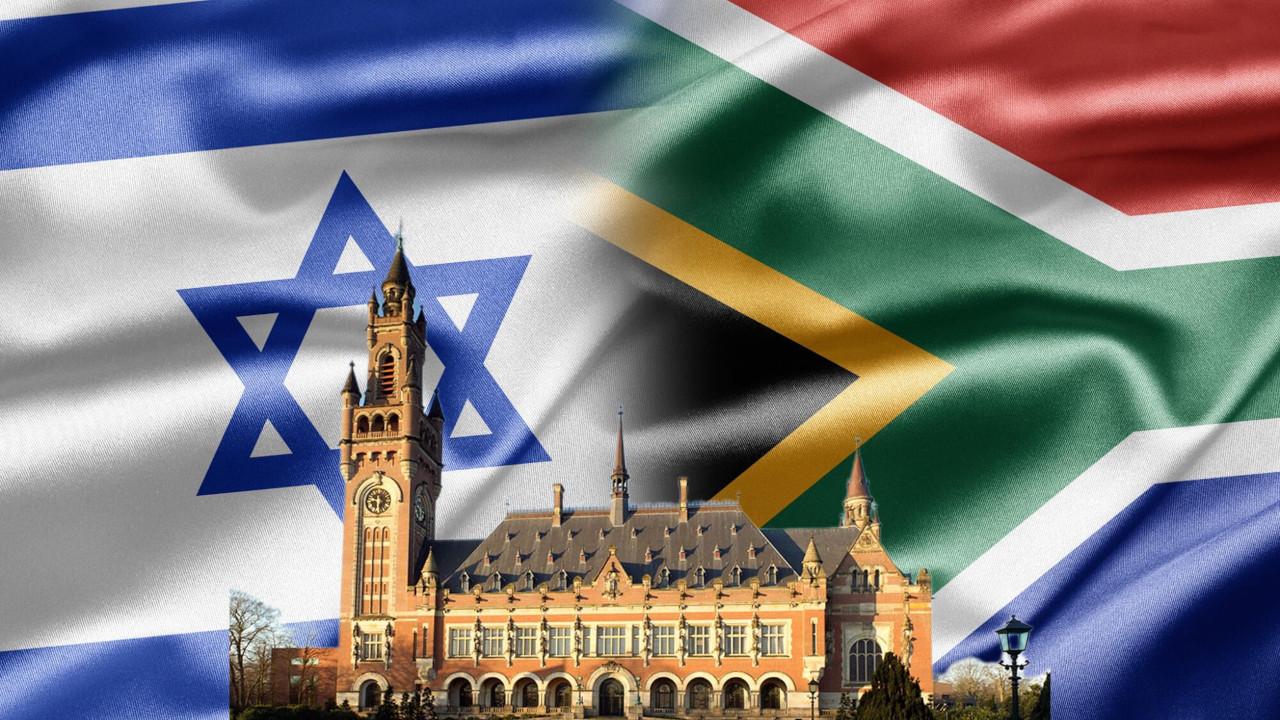
- 12 Jan 2024
Why is it in the News?
What is the case before the World Court?
- South Africa brought a case against Israel to the ICJ on December 29, under the UN’s 1948 Genocide Convention.
- South Africa argued that Israel, in its ongoing Gaza assault, has transgressed from the provisions of Article 2 of the Convention.
- This article defines the term “genocide” to mean “acts committed with intent to destroy, wholly or partly, a national, ethnic, racial, or religious group”.
- The ICJ will eventually decide whether Israel is committing genocide or not — this may take years.
- But first, it will decide whether it has jurisdiction on this matter and whether the alleged acts fall under the 1948 Convention.
- South Africa has also sought interim relief for the Palestinians and asked the ICJ to order Israel to immediately suspend all military operations in Gaza, as an interim measure.
- While the court’s rulings are legally binding, it has no way to enforce them.
- Nonetheless, its opinions carry weight with the UN and other international institutions.
What is the International Court of Justice (ICJ)?
- The ICJ is the principal judicial organ of the United Nations that settles legal disputes between States in accordance with international law.
- Established in 1945 through the United Nations charter, the ICJ commenced its operations in April 1946.
- It is located at the Peace Palace in The Hague, Netherlands, distinguishing it from the other six principal UN organs situated in New York, USA.
- The ICJ specializes in settling legal disputes between states and providing advisory opinions on legal questions referred to by authorized United Nations organs and specialized agencies, all in accordance with international law.
Structure:
- Comprising 15 judges, elected for nine-year terms by the United Nations General Assembly and the Security Council, the Court ensures a simultaneous but separate voting process by these organs.
- To be elected, a candidate must secure an absolute majority of votes in both bodies.
- To maintain continuity, one-third of the Court is elected every three years, with judges eligible for re-election.
- The Court is supported by a Registry, its administrative organ, and operates in English and French as its official languages.
Regional Distribution of Judges:
- The 15 judges are distributed across regions as follows:
- Three from Africa.
- Two from Latin America and the Caribbean.
- Three from Asia.
- Five from Western Europe and other states.
- Two from Eastern Europe.
Indian Judges at ICJ:
- Four Indians have been members of the ICJ so far.
- Justice Dalveer Bhandari, former judge of the Supreme Court, has been serving at the ICJ since 2012.
Independence of Judges:
- In contrast to other international organizations' organs, the ICJ is unique in its composition, as it is not made up of government representatives.
- The Court's members are independent judges who, prior to assuming their duties, make a solemn declaration in open court, pledging to exercise their powers impartially and conscientiously.
Jurisdiction and Operations:
- The ICJ functions as a global court with a dual jurisdiction—addressing legal disputes between states submitted by them (contentious cases) and providing advisory opinions on legal questions referred to it by United Nations organs and specialized agencies (advisory proceedings).
- In contentious cases, only states that are members of the United Nations and have become parties to the Statute of the Court, or those that have accepted its jurisdiction under specific conditions, can participate.
- The judgments rendered in these cases are final, binding on the involved parties, and not subject to appeal.
- At most, there may be provisions for interpretation or, in cases of newly discovered facts, revision.
What is the Genocide Convention?
- The Convention on the Prevention and Punishment of the Crime of Genocide, commonly known as the Genocide Convention, serves as a foundational instrument in international law, officially defining the crime of genocide for the first time.
- According to the provisions of the Genocide Convention, genocide is deemed a crime applicable both in times of war and peace.
- This pivotal human rights treaty marked a historic milestone as the initial treaty adopted by the United Nations General Assembly on 9 December 1948.
- It symbolizes the global commitment to the principle of 'never again,' echoing the collective resolve of the international community in the aftermath of the atrocities witnessed during the Second World War.
- The definition of genocide outlined in the Convention has gained widespread acceptance on both national and international fronts, finding incorporation into significant legal frameworks, including the 1998 Rome Statute of the International Criminal Court (ICC).
- The Rome Statute, a pivotal development, introduced four core international crimes: genocide, crimes against humanity, war crimes, and the crime of aggression—all of which are explicitly stated to be exempt from any statute of limitations.
- Crucially, the Genocide Convention imposes on State Parties the responsibility to undertake measures for the prevention and punishment of genocide.
- This includes the enactment of relevant legislation and the punishment of perpetrators, irrespective of their status as constitutionally responsible rulers, public officials, or private individuals (Article IV).
- Both South Africa and Israel are parties to the Convention.
How often do such cases come before the ICJ?
This is not the first case the court will hear under the Genocide Convention.
- In 2022, Ukraine filed a case against Russia, and in 2019, the Gambia filed a case against Myanmar with respect to the Rohingya.
- The Myanmar case was the first time that a State invoked the court’s jurisdiction to seek redress for genocidal acts committed against the citizens of another state.
- The court agreed that the Gambia had standing to bring the case.
- Like the Gambia, South Africa has based its jurisdiction under obligations erga omnes partes — that is, as a party to the Convention, it can bring this case because of its community interest in preventing genocide.
What will happen now?
- South Africa’s case appears to meet the threshold for the court to make a provisional measures order.
- The Court must be satisfied it has prima facie jurisdiction; there is a “plausible” link between the rights asserted by South Africa and the measures it requests; and a risk of irreparable harm and urgency.
- That order will come within weeks and will have legal significance for all States that are parties to the Genocide Convention because such an order is binding on all States, even though the court lacks enforcement mechanisms.
- Israel has called the case “baseless” and a “blood libel”, and called on the international community to reject it.
- The United States, Hungary, and Guatemala have done so.
- Palestine has welcomed South Africa’s case, as have the 57 Organisation of Islamic Cooperation (OIC) countries, Malaysia, Turkey, Jordan, Bolivia, Venezuela, Mexico, Bangladesh, Namibia, Nicaragua, and some others.
- France has stated that it will support the court’s decision and India has not issued any statement.
After ECI guidelines, charting a path to disability inclusion in politics (Indian Express)
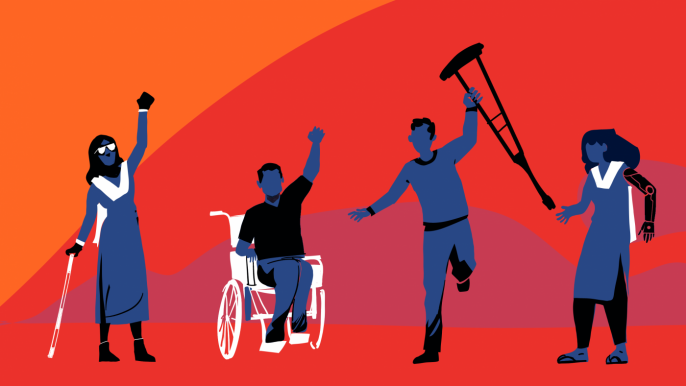
- 10 Jan 2024
Why is it in the News?
Recently, the Election Commission of India released an advisory for political parties to follow disability-sensitive terminologies and be more inclusive of persons with disabilities.
Context:
- On December 21, the Election Commission of India released a significant advisory, encouraging political parties to embrace terminology that is sensitive to disability issues.
- This initiative is designed to enhance communication that is inclusive of individuals with disabilities, guarantee the accessibility of information, and advocate for inclusion within the structures of political parties.
- This proactive measure is especially noteworthy in light of recent instances where national leaders have used disparaging language about disabilities in their election speeches, contributing to the creation of an "attitudinal barrier" as defined by the Rights of Persons with Disabilities Act, 2016.
- For example, in September 2023, Tamil Nadu leader A Raja compared Sanatan Dharma to people with leprosy and HIV in a derogatory manner.
What is Disability?
- Disability is characterized by a limitation or absence of capacity to engage in typical human activities, often resulting from an impairment.
- According to the United Nations Convention on the Rights of Persons with Disabilities (UN CRPD), individuals with disabilities are those facing long-term physical, mental, intellectual, or sensory challenges, which, in conjunction with societal barriers, hinder their complete involvement in community life.
- This issue holds substantial importance in public health, particularly in nations undergoing development, such as India.
- The International Day of Persons with Disabilities, marked on December 3rd by the United Nations, is dedicated to globally raising awareness about challenges related to disabilities.
About the Rights of Persons with Disabilities (PwD) Act, 2016:
- An Important Legislative Framework for PwD: This legislation plays a significant role in safeguarding and advancing the rights and privileges of persons with disabilities (PwD).
- Replacing the Persons with Disabilities (Equal Opportunities, Protection of Rights and Full Participation) Act, 1995, the 2016 Act marks a significant stride toward promoting the rights and inclusivity of persons with disabilities across India.
- Rights and Entitlements: Clearly articulating the rights and entitlements of persons with disabilities, the Act ensures their right to equality, protection against discrimination, and active participation in society.
- Education: The Act guarantees free education for persons with disabilities up to 18 years of age and advocates for inclusive educational practices.
- Employment: Promoting equal opportunities, the Act prohibits discrimination and mandates both government and private sector establishments to reserve a designated percentage of jobs for persons with disabilities.
- Reservation in Higher Education: The Act advocates for the reservation of seats in higher educational institutions for persons with disabilities.
- Special Employment Exchanges: Recognizing the importance of facilitating employment, the Act mandates the establishment of special employment exchanges.
- Accessibility: Highlighting the significance of barrier-free access, the Act stresses the need for inclusive designs in public buildings, transportation, and information and communication technologies.
- Healthcare: Ensuring access to affordable and quality healthcare services, the Act prioritizes the healthcare needs of persons with disabilities.
- Legal Capacity: Acknowledging the right to equal recognition before the law, the Act supports the decision-making capacity of persons with disabilities.
- Social Security: The Act advocates for social security and welfare measures to support the well-being of persons with disabilities.
- National and State Advisory Boards: To oversee effective implementation, the Act calls for the establishment of National and State Advisory Boards.
- Offences and Penalties: Prescribing penalties for offences against persons with disabilities, the Act ensures accessible legal proceedings for their protection.
Important Features of the Disability-Inclusive Communication Guidelines from ECI:
- Prohibition of Ill-Health Terminologies: The guidelines emphasize refraining from using ill-health terminologies when referring to individuals with disabilities.
- This prohibition aims to counteract the use of language that may stigmatize or marginalize people with disabilities, as demonstrated by instances such as Tamil Nadu leader A Raja's derogatory comparison in September 2023, highlighting the urgent need for corrective measures.
- Prevention of Dehumanization and Stereotyping: Another vital aspect of the guidelines is the call to avoid dehumanizing portrayals and the perpetuation of stereotypes related to Persons with Disabilities (PwDs).
- Instances of national leaders using disability as a demeaning tool during election speeches underscore the deep-rooted problem these guidelines aim to address.
- By discouraging language that fosters stereotypes, the guidelines work to dismantle attitudinal barriers identified under the Rights of Persons with Disabilities Act, 2016.
- Recognition of Legal Implications: The advisory acknowledges the legal implications of violating these communication guidelines.
- Breaches, especially in disability-inclusive communication, could subject political parties and their members to action under section 92 of the Rights of PwD Act.
- This section, a punitive provision for offences against PwDs, underscores the severity of the issue.
- Therefore, the guidelines not only aim to enhance communication but also contribute to legal measures protecting the rights and dignity of PwDs.
Ideas to Improve the Effectiveness of ECI's Guidelines:
- Need for a Uniform Mandate: Despite the critical nature of these guidelines, a thorough analysis reveals a potential area for improvement.
- While guidelines within the disability-inclusive communication category use mandatory language like ‘should’ and ‘shall,’ others, especially those related to inclusion within the political party framework, employ discretionary terms such as ‘may.’
- To bolster their impact, a uniform mandate across all categories is essential, establishing a consistent and enforceable framework for political parties.
- Incorporate Guidelines into Model Code of Conduct (MCC): These guidelines are not yet part of the MCC.
- The advisory notes that a breach of guidelines related to disability-inclusive communication could lead to action under section 92 of the Rights of PwD Act, but it remains unclear whether other breaches will invoke this provision.
- Section 92 serves as a punitive measure for offences against PwDs, and the guidelines should be integrated into the MCC, similar to gender guidelines, to fortify their enforcement.
- Address Ambiguity in Phraseology: There is some ambiguity within the guidelines regarding specific phraseology, such as the mention of words like "blind," "deaf," and "dumb" as incorrect terminologies.
- While their translation in Hindi or another language might be derogatory, these are technical terms for people with visual, hearing, and speech disabilities.
- A detailed list of disability-sensitive words and phraseology, aligned with the UN Disability Inclusion Strategy, could guide the ECI in providing clarity.
- Incorporate a Chapter on Political Inclusion in the National Policy: The draft National Policy for PwD released last year lacked a dedicated chapter on political inclusion.
- The ECI advisory emphasizes that political parties must strive to include PwDs at all levels and adhere to accessibility norms.
- To catalyze the political inclusion of PwDs, a dedicated chapter on political inclusion should be integrated into the national policy, aligning with the principles of Article 29 of the UN Convention on the Rights of Persons with Disabilities.
- Creation of a Database on Legislators with Disabilities: Currently, there is no data on the number of legislators with disabilities, and the ECI's nomination forms lack a column on disability.
- This absence of data significantly contributes to the political exclusion of PwDs.
- The ECI must address this gap, possibly by introducing a column on disability in nomination forms and affidavits during elections, as a second step towards fostering the political inclusion of PwDs.
Conclusion
The Election Commission of India's recent advisory introducing disability-sensitive guidelines for political parties marks a significant stride towards fostering inclusivity in the political sphere. Nevertheless, to unlock the complete potential of these guidelines, key improvements are imperative. These include adopting a uniform and obligatory language, integrating the guidelines into the Model Code of Conduct (MCC), and adopting a holistic approach to political inclusion within national policies. By addressing these facets, India has the opportunity to shape a more inclusive political landscape that upholds and empowers individuals with disabilities.
The UGC has issued revised guidelines on Mulya Pravah 2.0 – Inculcation of Human Values and Professional Ethics in Higher Education institutions (The Hindu)
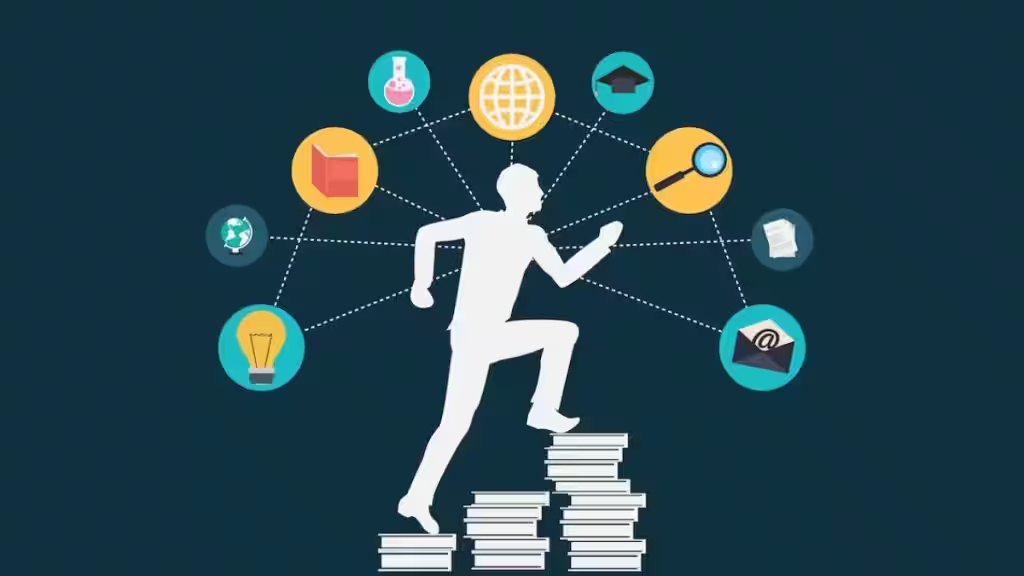
- 09 Jan 2024
Why is it in the News?
The University Grants Commission (UGC) has been issuing regulations, guidelines and directives at breakneck speed that some of the important ones miss drawing the attention of the higher education community.
Context:
- The University Grants Commission (UGC) has introduced Mulya Pravah 2.0 to enhance the ethical landscape of higher education institutions.
- This evolved guideline, succeeding its 2019 predecessor, aims to instil human values and professional ethics, actively combating unethical practices that have permeated various institutions.
- The primary focus involves constructing value-based institutions that resonate with fundamental duties and constitutional values, urging a commitment to integrity and ethical conduct.
What is Mulya Pravah?
- Officially notified in 2019, Mulya Pravah aims to instil human values and professional ethics within higher education institutions.
- Its explicit objective is to cultivate value-based institutions by guiding individuals and institutions toward fostering profound respect for fundamental duties, constitutional values, and a strong connection with the country.
What is Mulya Pravah 2.0?
- Mulya Pravah 2.0, a revised guideline by the University Grants Commission (UGC), is designed to foster ethical practices and human values within higher education institutions.
- Its inception was prompted by revelations from a survey among human resource managers, uncovering unethical practices like favouritism, sexual harassment, and gender discrimination in various organisational processes.
- The primary objective of this guideline is to construct value-based institutions by nurturing a sense of respect for fundamental duties, and constitutional values, and fostering a connection to the nation.
Key Features of Mulya Pravah 2.0:
- Addressing Unethical Practices: Mulya Pravah 2.0 confronts the prevalent unethical practices identified in higher education institutions, as uncovered by a survey involving human resource managers.
- These malpractices encompass favouritism, sexual harassment, gender discrimination, inconsistent discipline, lack of confidentiality, and unscrupulous dealings with vendors for personal gain.
- While acknowledging that such issues may extend beyond higher education, this guideline serves as a commendable initiative toward fostering ethical conduct.
- Emphasis on Transparency: A pivotal aspect of Mulya Pravah 2.0 is its advocacy for absolute transparency in administration. Decision-making within higher education institutions is expected to be guided solely by institutional and public interest, free from biases.
- The guideline stresses the elimination of discriminatory privileges and underscores the importance of penalizing corruption.
- It urges the establishment of a conducive culture and work environment, aligning actions with the best interests of the institution.
- Guidelines Emphasize Upholding Values: Mulya Pravah 2.0 mandates that higher education institutions uphold values such as integrity, trusteeship, harmony, accountability, inclusiveness, commitment, respectfulness, belongingness, sustainability, constitutional values, and global citizenship.
- This intervention is timely, considering the diminishing prevalence of these values. Officers in universities are entrusted with ensuring strict adherence to these values both in letter and spirit.
- Guidelines Remind Institutions to Act in the Best Interest: Mulya Pravah 2.0 serves as a reminder for stakeholders to act in the best interest of their institution, fostering a conducive culture and work environment for teaching, learning, and research while developing the potential of the institution.
- It explicitly states that officers and staff must refrain from misappropriating financial and other resources.
- Additionally, it calls for a refusal to accept gifts, favours, services, or other items from any entity that may compromise the impartial performance of duties.
What are the Challenges in the Effective Implementation of Mulya Pravah 2.0?
- Sincerity and Commitment of Higher Education Regulators: The mere issuance of guidelines may prove insufficient if higher education regulators lack sincere commitment to enforce the provisions of Mulya Pravah 2.0.
- The UGC must demonstrate unwavering determination, setting a precedent by exhibiting zero tolerance for any form of corruption or ethical violations within the academic sphere.
- Institutional Resistance to Change: Established norms and practices within higher education institutions may resist the infusion of Mulya Pravah 2.0's principles, as institutional cultures can be deeply ingrained.
- Overcoming institutional inertia requires proactive efforts by university administrators, faculty, and other stakeholders to embrace and implement the ethical guidelines.
- Lack of Monitoring Mechanisms: Effective implementation requires robust monitoring mechanisms to track and evaluate adherence to the guidelines at various levels.
- The absence of a comprehensive monitoring framework may lead to laxity, allowing unethical practices to persist unchecked.
- Resistance from Internal Stakeholders: Faculty, staff, and student unions might resist the guidelines, perceiving them as an imposition on their autonomy or a threat to established practices.
- Overcoming resistance necessitates effective communication, collaboration, and building consensus among all internal stakeholders.
- Balancing Transparency and Confidentiality: The guideline's emphasis on maintaining confidentiality might clash with the broader societal demand for transparency in higher education institutions.
- Striking a delicate balance between the two is crucial to avoid potential conflicts and ensure the right to information is not compromised.
- Undefined Parameters and Ambiguities: Some aspects of Mulya Pravah 2.0, such as what constitutes a dignified manner for raising issues, lack clear definitions.
- Ambiguities in the guideline could lead to misinterpretations, allowing room for manipulation and misuse.
- Legal and Regulatory Compliance: Ensuring that institutions adhere to the legal and regulatory framework while implementing Mulya Pravah 2.0 is essential.
- Non-compliance or overlooking legal aspects may render the guideline ineffective or subject to legal challenges.
- Cultural and Regional Variations: Higher education institutions exhibit diverse cultural and regional variations, influencing the reception and interpretation of ethical guidelines.
- Tailoring the implementation strategy to accommodate these variations is vital for the guidelines to resonate across different contexts.
- Inadequate Training and Awareness Programs: The success of Mulya Pravah 2.0 depends on the understanding and active participation of all stakeholders.
- Insufficient training and awareness programs may result in a lack of clarity regarding the guidelines, reducing their impact.
What Steps Can Be Taken to Improve Governance in Higher Education Institutions (HEIs)?
- Addressing the Issue of Confidentiality: The guideline should advocate for institutions to promptly publish agendas, proceedings, and minutes of meetings held by their decision-making bodies, sub-committees, and standing committees.
- Furthermore, institutions are encouraged to make their annual reports and audited accounts accessible to the public.
- This proactive disclosure can act as a deterrent against malpractices and contribute significantly to rebuilding public trust in institutional operations.
- Addressing Teachers’ Associations: Recognizing the significant impact teachers have on students' character, personality, and careers, Mulya Pravah 2.0 emphasizes that teachers should serve as role models.
- This involves exhibiting good conduct and maintaining high standards of dress, speech, and behavior for students to emulate.
- While the guideline underscores the expectation for teachers to adhere to university rules and policies, it does not explicitly address the role or function of teachers' associations, which warrants attention for a comprehensive approach.
- Clarity on the Definition of 'Dignified Manner' for Unions and Support: Mulya Pravah 2.0 anticipates the support of staff and student unions in development activities while urging them to raise concerns in a dignified manner.
- However, the guideline lacks a clear definition or explanation of what constitutes a 'dignified manner.'
- This absence leaves room for potential misuse, allowing the provision to be wielded in ways that may threaten, silence, or undermine the collective voices of stakeholders.
- A clear definition is crucial to avoid such misinterpretations and promote a healthy collaborative environment.
Conclusion
Mulya Pravah 2.0, introduced by the University Grants Commission, represents a commendable stride in instilling ethical values within higher education. Nonetheless, addressing its challenges necessitates inclusive discussions with all stakeholders. Effective implementation is imperative for realizing its potential to enhance the quality and sustainability of decisions within the educational sphere.
Why is child marriage still high in West Bengal? (The Hindu)

- 08 Jan 2024
Why is it in the News
A recent study on child marriage in India published in the Lancet noted the overall decrease in child marriage across the country but pointed out that four States, mainly Bihar (16.7%), West Bengal (15.2%), Uttar Pradesh (12.5%), and Maharashtra (8.2%) accounted for more than half of the total headcount burden of child marriages in girls.
Key Findings of the Report:
- In a recent study published in the Lancet Global Health, findings reveal that one in five girls and one in six boys in India are still marrying below the legal age.
- Utilizing data from five National Family Health Surveys spanning 1993 to 2021, researchers underscore the urgent need for strengthened national and state-level policies to eradicate child marriage by 2030.
- Notable disparities in the prevalence of girl and boy child marriages across states and Union Territories were observed during the study period.
- While all states, except Manipur, showed a decline in girl child marriage between 1993 and 2021, specific states like Bihar, West Bengal, Uttar Pradesh, and Maharashtra accounted for over half of the total burden.
- For boys, Gujarat, Bihar, West Bengal, and Uttar Pradesh accounted for more than 60% of the burden.
- Jharkhand exhibited the largest percentage increase in child marriage headcount (53.1%) between 1993 and 2021.
- Despite most states and Union Territories witnessing a decrease in the headcount of girl child marriage, Uttar Pradesh demonstrated the most substantial absolute decrease, contributing to about one-third of the nationwide decrease from 1993 to 2021
- Conversely, West Bengal saw the largest absolute increase, with over 500,000 more girls married as children during the same period.
What is Child Marriage?
- Child marriage is a social phenomenon prevalent in some Indian societies, where adults marry young children, usually girls under the age of fifteen.
- Another form involves parents arranging future marriages for children who only meet when reaching marriageable age, at which point the wedding ceremony occurs.
Child Marriages in India have undergone significant change:
- From 47.4% in 2005-06, child marriage decreased to 26.8% in 2015-16.
- In the last five years, it further declined by 3.5% points, reaching 23.3% in 2020-21, as per the latest National Family Health Survey-5 data.
- Despite an overall trend of decline, the current rate of 23.3% remains distressingly high in a country with a population of 141.2 crore.
- Eight states surpass the national average in child marriage prevalence, with West Bengal, Bihar, and Tripura having over 40% of women aged 20-24 married below 18, according to NFHS data.
- Some states, like Madhya Pradesh (23.1% in 2020-21 from 32.4% in 2015-16), Rajasthan (25.4% from 35.4%), and Haryana, have demonstrated a reduction in child marriages.
What is the Global Scenario?
- UNICEF data reveals that annually, 12 million girls enter childhood marriages.
- The 2030 UN Sustainable Development Goals target the eradication of harmful practices, including child, early, and forced marriages, along with female genital mutilations, under goal 5.
- Despite notable progress in South Asia over the past decade, where the risk of a girl marrying before 18 has decreased by over a third, dropping from nearly 50% to below 30%, the advancements are insufficient, and progress remains uneven.
Impact of Child Marriage:
- Beyond being a human rights violation and a recognized form of sexual and gender-based violence, child marriage significantly affects maternal and child health.
- A recent tragedy at Murshidabad Medical College and Hospital saw 10 infants die within 24 hours, with the majority born with extremely low birth weight.
- Murshidabad, an economically challenged district, grapples with a high prevalence of child marriages in West Bengal.
- NFHS-5 highlights that 55.4% of women aged 20-24 years in the district are married before the age of 18, marking an increase from NFHS-4, which reported a figure of 53.5%.
Legal Measures in India:
- Various laws, such as the Prohibition of Child Marriage Act, 2006, and the Protection of Children from Sexual Offences Act, 2012, work toward safeguarding children from human rights violations.
- The Prohibition of Child Marriage (Amendment) Bill, 2021 aims to raise the minimum marriage age for women from the current 18 years to 21 years.
Reasons to Raise the Minimum Age of Marriage for Females:
- Addressing Education and Employment Disparities: Women often face inequalities in accessing education and employment due to early marriages.
- Early marriage can restrict women from pursuing education and economic opportunities.
- Raising the minimum age for marriage can encourage more women to pursue higher education and seek employment.
- Impact of Early Marriage on Women's and Children's Health: Early marriages and subsequent early pregnancies have significant implications for the nutritional levels, overall health, and mental wellbeing of both mothers and children.
- Underage mothers are more vulnerable to reproductive health challenges, malnutrition, postpartum hemorrhage, and susceptibility to sexually transmitted diseases.
Govt. Initiatives for Preventing Girl Child Marriage:
- Beti Bachao Beti Padhao: Among various girl child welfare schemes, Beti Bachao Beti Padhao is widely recognized.
- Translating to "Save the Girl Child, Educate the Girl Child," it focuses on women empowerment and creating an inclusive ecosystem.
- The scheme aims to promote the safety of girl children before and after birth.
- Sukanya Samriddhi Yojana (SSY): Launched in 2015, SSY promotes the welfare of girl children.
- It encourages parents to invest in funds for the girl's future studies and marriage expenses.
- Balika Samriddhi Yojana: This central government scheme supports girls in financially vulnerable sections.
- Ensures the enrollment and retention of girl children in primary and secondary schools, emphasizing quality education.
Revival of the tiger: A joint effort, a cultural renaissance (Indian Express)

- 06 Jan 2024
Why is it in the News?
Jim Corbett Tiger Reserve has achieved success through comprehensive conservation strategies, including habitat protection, community involvement, and ecological sustainability. The reserve's efforts focus on maintaining a balance between wildlife conservation and the well-being of local communities, showcasing a commitment to the coexistence of both nature and people.
Background:
- India has a profound history of forest and wildlife conservation, marked by a notable achievement at the Corbett Tiger Reserve (CTR) in Uttarakhand.
- CTR has seen the successful implementation of comprehensive efforts and strategies, resulting not only in a remarkable rise in the tiger population but also establishing itself as a global exemplar in wildlife management.
About Jim Corbett National Park:
- Established in 1936 as Hailey National Park, Jim Corbett National Park holds the distinction of being India's first national park.
- In 1973, it gained Tiger Reserve status, becoming the pioneer in the Project Tiger initiative.
- Nestled in the Shivalik hills of the Himalayas, Corbett Tiger Reserve spans across the Pauri Garhwal, Nainital, and Almora districts of Uttarakhand.
- Renowned for its global record, it proudly hosts the highest tiger density, reaching 260 in 2022, a notable increase from 231 four years earlier.
Cultural and Economic Significance of Tigers in India:
- Beyond ecological importance, the tiger carries profound cultural and historical significance in India.
- The resurgence of tiger populations, particularly at CTR, represents a cultural revival and the renewed embrace of conservation values.
- The thriving eco-tourism industry illustrates the economic interdependence between local communities and tigers, highlighting the profound connection between wildlife and people at CTR.
An Overview of Effective Biodiversity and Tiger Conservation Plan at CTR:
- Implementation of a Comprehensive Strategy: CTR owes its success to the meticulous execution of the Tiger Conservation Plan, focusing on the well-being of both tiger populations and broader biodiversity.
- Spanning 1288.31 sq km across Uttarakhand, CTR showcases the plan's efficacy in nurturing a flourishing ecosystem.
- Clear Division of Core and Buffer Zones: The foundation of the Tiger Conservation Plan lies in delineating core and buffer zones within the reserve, offering wildlife a sanctuary.
- Core zones provide undisturbed habitats crucial for breeding, while buffer zones minimize conflicts between human settlements and wildlife.
- Increase in Tiger Population: Recent statistics highlight a significant rise in CTR's tiger population, from 231 to 260 in just four years.
- This surge underscores the plan's success, safeguarding not only tigers but also the overall health and balance of the forest ecosystem.
- Maintenance of Rich Biodiversity: CTR's success extends beyond tiger numbers, encompassing a biodiverse landscape that attracts researchers, conservationists, and tourists.
- The diverse flora and fauna contribute to ecological balance, fostering harmonious coexistence between predator and prey.
- Promotion of Ecotourism and Conservation: CTR's vibrant ecosystem has made it a hub for ecotourism, creating economic opportunities for local communities.
- Tourists contribute to both nature appreciation and the local economy, making conservation and tourism mutually beneficial.
- Effective Grassland and Water Management: CTR employs a nuanced approach to grassland management with 27 grassland types, crucial for sustaining prey species.
- Strategic water management, including solar-pump-fed waterholes, supports diverse wildlife needs, ensuring a sustainable ecosystem.
- Dedicated Forest Staff: The dedicated forest staff, comprising foot-soldiers, mahouts, and guards, are integral to CTR's success.
- Initiatives like timely wages and enhanced safety measures underscore the importance placed on the well-being of these unsung heroes.
- Focus on Wildlife Corridors and Habitat Protection: CTR prioritizes wildlife corridors for gene pool exchange, aligning with the Tiger Conservation Plan's recommendations.
Human-Wildlife Conflict at CTR:
- Increasing Incidents and Challenges: The upsurge in conflicts between humans, elephants, and tigers at CTR stems from factors like habitat encroachment, limited animal corridors, and the behavioral conditioning of predators.
- Straying milch and domestic animals from villages become easy prey for tigers, leading to predatory behavior towards humans, especially in buffer forest areas.
- The Complexity of 'Wicked Problems': Described as a 'wicked problem' due to its intricate nature, human-wildlife conflict at CTR requires a nuanced and context-specific approach.
- CTR emphasizes the significance of every solution attempt, recognizing that there's no one-size-fits-all remedy, and continuous adaptation and innovation are essential for evolving conflict scenarios.
Strategies Implemented for Human-Wildlife Conflict Mitigation and Co-Existence Promotion at CTR:
- Forest Department Initiatives: Proactive measures by the forest department at CTR have successfully eliminated poaching activities, particularly along the sensitive southern boundary.
- Dedicated foot soldiers, along with digital surveillance through the electronic-eye project, have played a pivotal role in reducing wildlife threats.
- Community Engagement Strategies: Community engagement is fundamental to CTR's approach to resolving human-wildlife conflicts.
- Local stakeholders actively participate in conservation through initiatives like the Living with Tigers program, engaging villagers and school children in behavioral and response awareness.
- This educational effort aims to deepen understanding of wildlife behavior patterns and promote practices that enhance safety for both humans and animals.
- Provision of Economic Incentives for Conservation: The forest department has initiated projects offering economic incentives for conservation, such as the beehive-fencing project.
- Strategically placing beehives along village-forest borders, the resulting Corbee Honey brand is managed by local Eco Development Committees (EDCs), fostering economic cooperation and coexistence with local stakeholders.
Conclusion
- Corbett Tiger Reserve emerges as a triumph in wildlife conservation, embodying a comprehensive and integrated approach. Through careful habitat management and community engagement, CTR exemplifies the promise of sustainable coexistence between humans and wildlife. As an integral chapter in India's conservation story, the ongoing success of the reserve relies on the collaborative endeavors of the forest department, local communities, and passionate conservation advocates.
Qatar court drops death penalty for 8 Indians, Govt says sentences reduced (Indian Express)
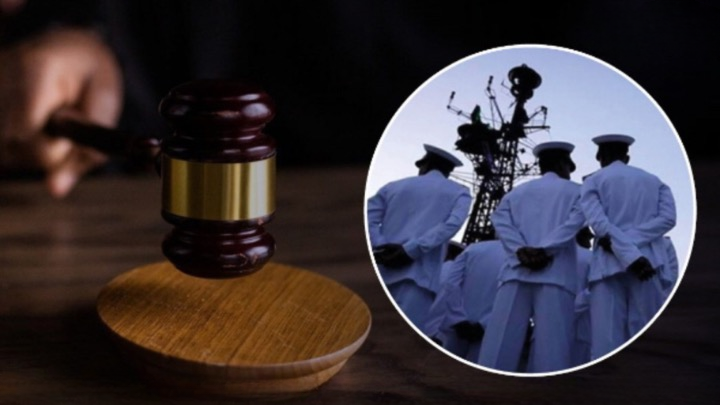
- 29 Dec 2023
Why is it in the News?
A Qatar court has reduced the death sentences awarded to eight former Indian Navy personnel last month in connection with an alleged case of espionage.
What is the Case?
- Arrest of Eight Navy Personnel: On August 30, 2022, eight former Indian Navy personnel, accompanied by two others, were apprehended under undisclosed charges and subsequently placed in solitary confinement.
- These individuals were affiliated with Al Dahra Global Technologies and Consultancy Services, a defense services provider company.
- Sources indicate that the Indian nationals were privately engaged with the company to supervise the induction of Italian small stealth submarines U2I2.
- The company's previous website, now defunct, mentioned its provision of training, logistics, and maintenance services to the Qatari Emiri Naval Force (QENF).
- Charges Against the Men: The specific charges against the individuals have not been publicly disclosed; however, media reports suggest that the eight Indians are accused of espionage on behalf of Israel.
- Death Penalty for Navy Veterans: In March 2023, after multiple unsuccessful bail pleas, the trial for the Navy veterans commenced, culminating on October 26, 2023, with the imposition of the death sentence on all eight men.
- India's Appeal: In November 2023, the Ministry of External Affairs (MEA) announced the filing of an appeal, revealing that its legal team possessed details of the charges.
- The Indian ambassador in Doha visited the incarcerated individuals on December 3, providing consular access.
- This access occurred shortly after Prime Minister Modi met Qatar’s Emir Sheikh Tamim bin Hamad Al-Thani during the COP28 summit in Dubai on December 1.
What Options Has India Explored?
- One avenue involves legal challenges, a step that has been acknowledged and has temporarily mitigated the sentence.
- Concurrently, India has actively utilized diplomatic channels to engage with the Qatari authorities.
- The families have submitted a mercy plea to the Emir of Qatar, leveraging the tradition of pardons granted during Ramadan and Eid, with support from the Indian government.
India-Qatar Bilateral Relations:
- Economic Ties: In recent years, the trade volume between India and Qatar has witnessed fluctuations.
- During the fiscal year 2015-2016, trade between the two nations reached an impressive $10 billion.
- However, recent years have seen a slight decline in trade due to falling gas and oil rates in the international market.
- Trade Statistics and Import Dependence: In the fiscal year 2022-23, India's total imports from Qatar amounted to $16.81 billion, primarily in fossil fuels like liquefied petroleum gas (LPG), plastics, and petrochemical products.
- Conversely, India's exports to Qatar during the same fiscal year were valued at $1.97 billion, covering items such as cereals, copper articles, iron and steel products, vegetables, fruits, spices, and processed food items.
- Investment Interests and Collaborative Projects: Qatari authorities, particularly the Qatar Investment Authority, express interest in investing in India, focusing on infrastructure development, roads, highways, economic corridors, and projects related to gas and fertilizers.
- India reciprocates with a keen interest in direct investments in liquefied natural gas, chemical industries, fertilizer production, urea, petrochemicals, and infrastructure projects.
- India's Growing Energy Needs: India, with its growing energy needs, has a robust energy partnership with Qatar, dating back to a 1990 agreement.
- This commitment involves India purchasing 7.5 million tonnes of LNG annually for 25 years.
- The collaboration was further strengthened in December 2015, with Qatar agreeing to augment its LNG supply to India by an additional one million tonnes annually.
- Collaboration in Defence Affairs: India's defense collaboration with Qatar focuses on training, mutual participation in conferences and events, and visits by Indian Navy and Coast Guard vessels.
- Notably, the joint naval exercise 'Zair-Al-Bahr' showcases significant cooperation between the Indian and Qatari Navies.
- Both nations are committed to combating the financing of terrorism.
- Cultural Interaction: The Indian Cultural Centre (ICC) plays a crucial role in overseeing Indian community associations in Doha.
- Qatar's role as a co-sponsor of the United Nations General Assembly Resolution designating June 21 as the International Day of Yoga is highly valued by India.
- Indian Diaspora in Qatar: The Indian community in Qatar, numbering approximately 700,000, constitutes the largest expatriate group.
- Their contributions span diverse sectors, including projects related to the Qatar 2022 FIFA World Cup, and annual remittances to India are estimated at around 750 million dollars.
- Indispensable Role of Qatar as an LNG Supplier: The cornerstone of the bilateral trade relationship lies in liquefied natural gas (LNG), where Qatar plays a pivotal role by meeting 80% of India's LNG requirements.
- India imported a total of 19.85 million tonnes of LNG in the fiscal year 2022-23, with approximately 54% of this LNG.
- This significant reliance on Qatar, both through long-term contracts and spot purchases, underscores the challenge of diversifying India’s sources of LNG.
Challenges in India-Qatar Bilateral Relations:
- BJP Spokesperson's Controversy: The initial strain in the relationship arose in June 2022 when BJP spokesperson Nupur Sharma made derogatory references to the Prophet on a TV show.
- Qatar was the first country to object and demanded a public apology from India.
- Jailing of Navy Personnel: The second significant challenge involves the imprisonment of eight ex-Navy personnel.
- This development caught New Delhi off guard, particularly given the substantial Indian expatriate community in Qatar, where 800,000 Indians live and work.
- Israeli-Gaza Conflict: The news of the death penalty for the Indians coincided with heightened tensions in the Middle East due to the Israeli bombardment of Gaza.
- Qatar, with its strong sympathy for the Palestinians, has played a mediating role, including securing the release of American hostages from Hamas captivity.
- Qatar's diplomats are actively engaged as regional mediators in the ongoing crisis.
Maximizing Opportunities for Strengthened Relations:
- Safeguarding Expatriate Workers: India must engage in negotiations aimed at ensuring the protection of the rights and well-being of its expatriate workers in Qatar, who have encountered various labour-related challenges.
- Cultural Exchange and Soft Power: Recognizing the widespread popularity of Bollywood among Qataris, India should actively explore diverse avenues for cultural exchange to amplify its soft power influence.
- This cultural diplomacy can serve as a bridge for deeper understanding between the two nations.
- Cooperation in the Education Sector: The presence of esteemed Western universities in Qatar presents an opportunity for Indian students to access quality education abroad without the usual constraints of long distances and high living costs.
- Strengthening cooperation in the education sector can further elevate the resilience and depth of the India-Qatar relationship, even in the face of seemingly intractable diplomatic challenges.
- Collaborative Environmental Sustainability: India and Qatar can forge a collaborative path towards fostering a cleaner and more energy-efficient environment.
- Joint efforts in environmental sustainability can contribute to shared global goals.
Indian banks reports card: Asset quality improves to fresh 10-year high, balance sheet grows by highest in 9 years (The Hindu)
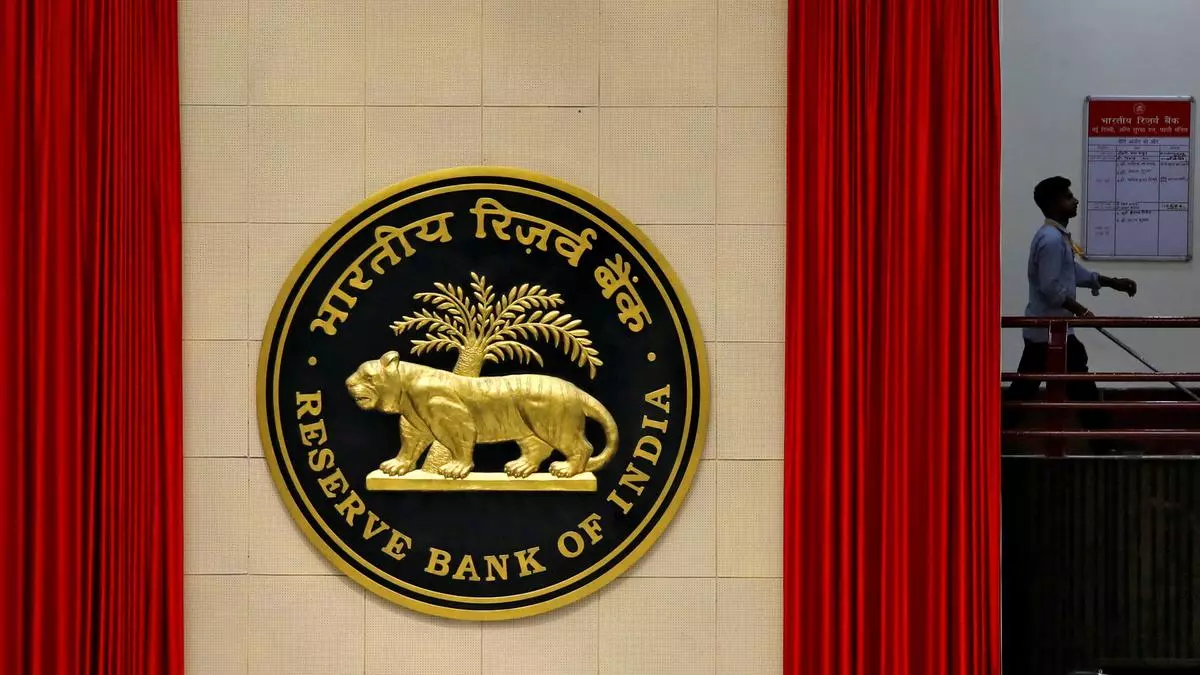
- 28 Dec 2023
Why is it in the News?
Indian banks continued to show improvement in their asset quality, with the gross non-performing asset (GNPA) ratio reaching a new decadal low as of September-end, according to a report by the Reserve Bank of India (RBI).
Key Points from the 'Trend and Progress of Banking in India' Report:
- The Gross Non-Performing Assets (GNPA) ratio of Scheduled Commercial Banks (SCBs) reached a decade-low of 3.9% by the end of March 2023, further declining to 3.2% by the end of September 2023.
- In the fiscal year 2022-23, approximately 45% of the reduction in Gross Non-Performing Assets (GNPAs) of SCBs was attributed to recoveries and upgrades.
- The consolidated balance sheet of banks witnessed a notable growth of 12.2% in 2022-23, marking the highest in 9 years.
- The share of Public Sector Banks (PSBs) in the consolidated balance sheet decreased from 58.6% in March 2022 to 57.6% in March 2023, while private banks saw an increase from 34% to 34.7%.
- As of March 2023, PSBs accounted for 61.4% of total deposits and 57.9% of total advances.
- With inflation persisting above the target, there is a possibility that monetary policy could remain in restrictive territory for an extended period.
- Acknowledging the growing interconnectedness between banks and Non-Banking Financial Companies (NBFCs), the report suggests that NBFCs diversify their funding sources and reduce reliance on bank funding.
- The central bank expresses concerns about banks lending to borrowers with influence, highlighting moral hazard issues that may compromise pricing and credit management.
- The Indian banking system is well-positioned for improvement, boasting better asset quality, high capital adequacy, and robust profitability.
- The financial indicators of NBFCs are anticipated to strengthen further, contributing to the overall resilience of the financial sector.
What are Non-Performing Assets (NPAs)?
- Non-performing assets (NPAs) refer to loans or advances in which the principal or interest payments have been overdue for a period exceeding 90 days.
- In the context of banks, loans are considered assets due to the significant income generated through interest payments.
- When borrowers, whether individuals or corporations, fail to meet their interest obligations, the asset turns 'non-performing' for the bank, as it ceases to contribute to the bank's earnings.
- As per the Reserve Bank of India (RBI) guidelines, banks must publicly disclose their NPAs and report them to the RBI regularly.
The classification of NPAs includes:
-
- Substandard assets: Loans that have been non-performing for up to 12 months.
- Doubtful assets: Assets that have remained in the substandard category for a period of 12 months.
- Loss assets: Assets deemed uncollectible, with little value, making their continuation as bankable assets unwarranted.
- NPA Provisioning involves setting aside a certain percentage of the loan amount as a provision.
- The standard rate of provisioning in Indian banks ranges from 5-20%, depending on the business sector and borrower's repayment capacity.
- In the case of NPAs, Basel-III norms require 100% provisioning.
Key metrics for understanding the NPA situation include Gross NPA (GNPA) and Net NPA (NNPA):
- GNPA: Represents the total value of gross NPAs for a bank in a specific quarter or financial year.
- NNPA: Obtained by subtracting the provisions made by the bank from the gross NPA, providing the precise value of NPAs after specific provisions.
- NPA Ratios express NPAs as a percentage of total advances, offering insights into the recoverability of total advances. For example:
- GNPA ratio: The ratio of total GNPA to total advances.
- NNPA ratio: Utilizes net NPA to determine the ratio to total advances, considering the specific provisions made by the bank.
Government and RBI Initiatives to Address NPAs:
To tackle the issue of Non-Performing Assets (NPAs), the Indian government has implemented a series of comprehensive measures in collaboration with the Reserve Bank of India (RBI).
- Establishment of a Bad Bank: National Asset Reconstruction Ltd (NARC), operates as an asset reconstruction company with the primary objective of purchasing distressed loans from banks, thereby alleviating them of the burden of NPAs.
- Once acquired, NARC endeavors to sell these problematic loans to distressed debt buyers.
- Additionally, the government has established the India Debt Resolution Company Ltd (IDRCL) to facilitate the sale of stressed assets in the market.
- Empowering Banks through the SARFAESI Act, 2002: The Securitization and Reconstruction of Financial Assets and Enforcement of Security Interest (SARFAESI) Act, enacted in 2002, empowers banks and financial institutions to take possession of collateral assets and execute their sale for the recovery of outstanding dues.
- Crucially, this process does not necessitate intervention from the court.
- The SARFAESI Act also provides provisions for enforcing security interests, allowing banks to issue demand notices to defaulting borrowers.
- Holistic Approach with the Insolvency and Bankruptcy Code (IBC), 2016: The Insolvency and Bankruptcy Code (IBC) establishes a comprehensive framework for the resolution of insolvency and bankruptcy in India.
- It is designed to expedite the resolution process for stressed assets, fostering a creditor-friendly environment.
- Under the IBC, both debtors and creditors have the authority to initiate insolvency proceedings against defaulting borrowers.
- The creation of the National Company Law Tribunal (NCLT) and the Insolvency and Bankruptcy Board of India (IBBI) ensures effective oversight of the resolution process.
Significance of NPA Recovery:
- The recovery of NPAs assumes paramount importance in safeguarding the interests of depositors and stakeholders.
- Emphasizing compromise settlements, the focus should be on achieving maximum dues recovery with minimal expenses and within an expedited timeframe.
- In the pursuit of compromise settlements, public sector banks are urged to prioritize the interests of the tax-paying public over the borrowers.
- This aligns with the broader goal of ensuring that resolutions serve the greater public good.
PLI is good for high-end manufacturing, but industrial policy is the best bet for mass job creation (Indian Express)

- 27 Dec 2023
Why is it in the News?
- While India has experienced positive outcomes from liberalization efforts, it is important to acknowledge a significant shortcoming—the country did not successfully establish a robust manufacturing foundation and underwent premature de-industrialization.
- It's crucial to recognize that no nation has achieved industrialization solely through deregulation.
- To facilitate the structural transformation of the economy, the implementation of a well-crafted industrial policy becomes imperative, with thoughtfully selected import restrictions serving as a key component of this policy mechanism.
The Make in India (MII) Initiative and Its Goals:
- Make in India Campaign: Officially inaugurated by Prime Minister Modi in September 2014, the Make in India campaign is a strategic effort aimed at advancing manufacturing, attracting foreign direct investment (FDI), fostering innovation, and generating employment opportunities within the nation.
Objectives of the Make in India:
- Advancing Manufacturing: The initiative strives to elevate India's status to a global manufacturing hub by encouraging both domestic and international companies to establish manufacturing units within the country.
- Attracting Foreign Investment: Make in India seeks to allure foreign direct investment by streamlining the business environment, simplifying regulatory norms, and providing incentives to foreign companies for investing in India's manufacturing sector.
- Infrastructure Enhancement: Emphasizing infrastructure development, the campaign focuses on improving key elements such as roads, ports, and logistics to ensure the seamless operation of manufacturing units.
- Skill Development: Recognizing the pivotal role of a skilled workforce in a thriving manufacturing sector, Make in India incorporates initiatives to enhance the skill sets of the Indian workforce, aligning them with the requirements of modern manufacturing.
- Innovation and Technology: The campaign places a significant emphasis on fostering innovation and integrating modern technology into manufacturing processes.
- This strategic approach aims to enhance efficiency and competitiveness in the manufacturing sector.
Differentiating Made in India (MII) from Previous Policies:
- The Make in India campaign, launched in 2014, represents a departure from the self-sufficiency doctrine that India adopted in the 1970s.
- It does not bring back memories of the licensing raj or import-substituting industries of the past.
- While concerns have been expressed about the implementation of Make in India, particularly in certain sectors where tariff duties are raised to provide protection and incentivize the establishment of domestic industries, it is crucial to note that the campaign is fundamentally different.
- Worries about a potential spread of protectionist tendencies to other sectors, though possibly overstated, are not entirely unfounded, especially for those who experienced the challenges of the 1970s and 1980s.
- During those years, indiscriminate protectionism led to shortages, black markets, and widespread rent-seeking, all ostensibly in the name of the poor and distributive justice.
- Producers who benefited from such protection actively advocated for its continuation.
- Importantly, considering that an average mobile phone manufactured in India consists of 80-85 percent imported content (India Cellular and Electronics Association, 2022), it is empirically evident that Make in India significantly differs from the concept of self-sufficiency.
- Given these empirical distinctions, it is imperative to move beyond baseless comparisons and recognize the unique nature of the Make in India initiative.
Evaluation of Commitments and Performance of Make in India:
- A Sizeable Domestic Market Falls Short of Competitiveness in Exports: Make in India (MII) encompasses two related concepts, namely Made in India and Make for India, with MII serving as the foundational and overarching policy.
- While Made for India focuses on manufacturing for the domestic market, it is essential to recognize that a substantial domestic market alone does not substitute for the crucial aspect of export competitiveness.
- Historical examples, such as Japan, Korea, and China, underscore that export competitiveness has been a common feature of nations that have experienced significant economic growth.
- While Made for India focuses on manufacturing for the domestic market, it is essential to recognize that a substantial domestic market alone does not substitute for the crucial aspect of export competitiveness.
- The necessity of an Effective Make in India Operation: Made in India functions as a branding strategy, promoting manufacturers rooted in Indian factors of production—land, labor, capital, entrepreneurship, technology, etc.
- However, the success of Made in India hinges on the effectiveness of the broader Make in India operation.
- Alignment with National Manufacturing Policy (NMP 2011): Make in India was launched as a follow-up to prior initiatives, particularly the National Manufacturing Policy (NMP) of 2011, which aimed to cultivate a robust and competitive manufacturing sector.
- The NMP 2011 identified challenges such as inadequate physical infrastructure, a complex regulatory environment, and insufficient availability of skilled manpower hindering manufacturing growth.
- The policy set ambitious targets, including raising the manufacturing contribution to GDP from a stagnant 15 percent since the 1980s to at least 25 percent and generating 100 million additional jobs.
- Dynamic Objectives of Make in India: Beyond the objectives outlined in the NMP 2011, Make in India aspires to elevate India into a global design and manufacturing export hub.
- In essence, Make in India envisions a transformation where India becomes a manufacturing powerhouse catering to the global market.
Requirement for Supplementary Industrial Policy Measures During Ongoing PLI Implementation:
- Diversified Articulation Beyond Production Linked Incentive (PLI): Beyond the current implementation of the Production Linked Incentive (PLI) scheme, there is a crucial need for an additional industrial policy tailored to sectors such as toys, readymade garments, and footwear.
- A more nuanced and sector-specific articulation of industrial policies is essential to meet the unique requirements of diverse sectors.
- Emphasis on Job Creation: Industrial policy must prioritize job creation, especially in a country abundant in labour but with average educational attainments and skills.
- Policies should be designed to create productive job opportunities, particularly focusing on labour-intensive manufacturing and opening avenues for women in the workforce.
- Addressing the Jobless Growth Critique: Acknowledging the criticism of jobless growth, the absence of quality jobs with social protection has contributed to this narrative.
- Industrial policies should explicitly target mass job creation, considering both job quality and the provision of social protection.
- Navigating the Challenges of Inclusive Policy Formulation: The government should confront the complexities of formulating industrial policies that foster mass job creation, especially in comparison to policies solely focused on exports.
- Inclusive policies that align with the overarching goal of creating high-quality jobs and ensuring social protection are essential.
- Treating Job Creation as the Benchmark: The effectiveness of industrial policies should be assessed based on their impact on mass job creation in India.
- This underscores the significance of addressing concerns related to jobless growth and prioritizing policies that generate inclusive and high-quality employment opportunities.
- Confronting Labor Market Challenges: India's labour market research indicates the prevalence of low-paying, low-productivity, and largely informal jobs in the unorganized sector.
- With more than 99 percent of India's 63 million micro, small, and medium enterprises (MSMEs) in the unorganized sector, there is limited flexibility for creating productive jobs.
- The assessment of how Make in India, complemented by other policies, has addressed these challenges is crucial.
- However, the lack of frequent and short-interval official data poses a significant hurdle, necessitating attention to enhance policy efficacy through more regular and timely data collection.
Conclusion
A thorough examination of the nation's circumstances and capabilities is imperative for effective government decision-making.
- India must formulate an industrial policy that extends the advantages of technological advancements beyond just the privileged laptop class.
- However, it is essential to exercise caution in steering discussions on industrial policy, avoiding the pitfalls of showmanship, theoretical oversimplification, or misleading historical comparisons.
- The global landscape demands that India adopt a substantive industrial policy, placing a genuine emphasis on the significance of manufacturing.
- In this context, it is evident that there is no substitute for a well-considered and serious industrial policy.
Women participation in NREGS continues to rise, by 59% this fiscal (Indian Express)
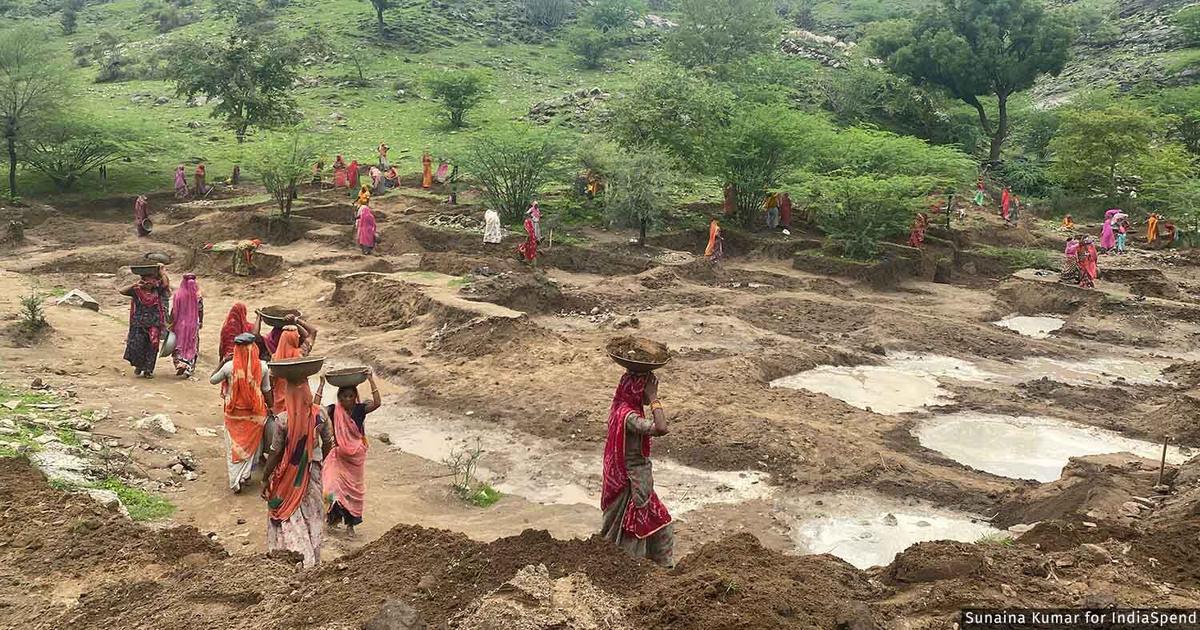
- 26 Dec 2023
Why is it in the News?
As per the Periodic Labour Force Survey (PLFS), published by the Ministry of Statistics and Programme Implementation, the female Labour Force Participation Rate has increased in the country in recent years.
News Summary:
- Recent data highlights a significant surge in women's engagement in the Mahatma Gandhi National Rural Employment Guarantee Scheme (MGNREGS), reaching its highest point in a decade.
- In the fiscal year 2022-23, women accounted for 57.47% of person-days, showcasing a notable increase from the previous year's 54.82%.
- Analyzing the broader landscape, statistics from the NREGS portal for the period up to December 24, 2023, reveal that out of a total of 238.62 crore person-days, women contributed 141.37 crore person-days, constituting an impressive 59.25%.
- The Periodic Labour Force Survey (PLFS), conducted by the Ministry of Statistics and Programme Implementation, provides further insights into the evolving dynamics of female labor force participation in the country.
- Notably, the Female Labour Force Participation Rate (LFPR) has witnessed a substantial uptick in recent years, particularly in rural areas.
- In the rural context, the LFPR soared to 30.5% in 2022-23 (July-June), a significant leap from 18.2% recorded in 2017-18.
- Complementing this positive trend, the female unemployment rate has experienced a noteworthy decline, dropping to 1.8% in 2022-23 from 3.8% in 2017-18.
- These statistics collectively underscore a positive trajectory in women's participation and employment, signaling progressive changes in the socio-economic landscape.
What is Mahatma Gandhi National Rural Employment Guarantee Act (MGNREGA)?
- The National Rural Employment Guarantee Act (NREGA) came into effect in September 2005.
- In 2009, an amendment renamed the Act to the Mahatma Gandhi National Rural Employment Guarantee Act (MGNREGA).
- Mandate: MGNREGA is designed with the primary objective of offering a minimum of 100 days of guaranteed wage employment within a financial year to every rural household whose adult members willingly engage in unskilled manual labor.
- The operationalization of this guarantee is facilitated through the Mahatma Gandhi National Rural Employment Guarantee Scheme (Mahatma Gandhi NREGS).
- Funding Structure: As a Centrally-Sponsored Scheme, MGNREGS receives joint financial backing from both the Central government and the State governments.
- This collaborative funding approach underscores the shared commitment to addressing rural employment challenges.
- Administrative Oversight: The Ministry of Rural Development is the overseeing authority responsible for the implementation and management of MGNREGS, emphasizing the central role of rural development in realizing the objectives of this significant initiative.
Key Characteristics of the Program:
- Enshrined Legal Entitlement: MGNREGA establishes a legal assurance for wage employment, granting every rural household the right to enroll in the program. Notably, the scheme mandates that at least one-third of its beneficiaries must be women. Legal provisions are in place to address situations where work is not provided on demand or when there are delays in wage payments, ensuring accountability and fair compensation.
- Demand-Driven Structure: This initiative operates on a demand-driven framework, responding to the explicit requests for work from wage-seekers. The provision of employment is triggered by the expressed demand, creating a responsive system that aligns with the needs of the community.
- Decentralized Implementation Model: State governments wield the authority to establish rules and modify relevant state schemes, fostering a decentralized mode of implementation. Gram Panchayats (GPs) play a crucial role by executing at least 50% of the work in terms of cost. Decision-making processes, including plans for works, site selection, and the order in which each task is initiated, occur in open assemblies of the Gram Sabha, ensuring community involvement and transparency.
- Parliamentary Accountability: An Annual Report, compiled by the Central Employment Guarantee Council (CEGC), detailing the outcomes of MGNREGA, is mandated to be presented annually to the Parliament by the Central Government. The CEGC, established under Section 10 of MGNREGA, is chaired by the Union Minister for Rural Development.
- Nationwide Coverage: MGNREGA extends its coverage across the entire country, with the exception of districts that boast a one hundred percent urban population, reflecting its comprehensive reach and impact.
Key Accomplishments of the MGNREGA Scheme:
Achievements in 2022-23:
- Employment opportunities were provided to 11.37 crore households.
- A total of 289.24 crore person-days of employment were generated, with specific allocations as follows:
- 56.19% for women
- 19.75% for Scheduled Castes (SCs)
- 17.47% for Scheduled Tribes (STs).
What are the Challenges in Implementing the Scheme?
- Delay and Insufficiency in Funds Disbursement: Many states have not adhered to the mandated 15-day wage disbursement timeline under MGNREGA.
- Moreover, workers face a lack of compensation for delayed wage payments, transforming the scheme into a supply-based program.
- Consequently, worker interest in participating has waned.
- Evidence, including a Ministry of Finance admission, points to insufficient funds as a key factor behind delays in wage payments.
- Caste-Based Disparities: Notable discrepancies in payment delays exist along caste lines.
- While 46% of payments to Scheduled Caste (SC) workers and 37% to Scheduled Tribe (ST) workers were completed within the stipulated seven days, non-SC/ST workers experienced a dismal 26% compliance.
- The adverse effects of caste-based disparities are particularly pronounced in economically challenged states like Madhya Pradesh, Jharkhand, Odisha, and West Bengal.
- Ineffective Role of Panchayati Raj Institutions (PRIs): Gram Panchayats, lacking autonomy, struggle to implement the act efficiently. Limited decision-making authority hampers their effectiveness in executing MGNREGA.
- High Number of Incomplete Projects: Delays in project completion and irregular project inspections pose challenges to MGNREGA.
- Additionally, concerns regarding the quality of work and asset creation persist within the scheme.
- Fabrication of Job Cards: Issues related to the existence of fake job cards, inclusion of fictitious names, missing entries, and delays in updating job cards contribute to administrative challenges within the program.
Way Forward
- Enhanced Coordination among Government Departments: Improved collaboration is essential among various government departments and the development of a streamlined mechanism for the allocation and measurement of work.
- This will contribute to a more efficient and transparent execution of projects.
- Addressing Gender Pay Disparities: Efforts should be directed towards rectifying discrepancies in payouts, particularly addressing the gender pay gap.
- Currently, women in the sector earn, on average, 22.24% less than their male counterparts, emphasizing the need for gender-inclusive policies and fair remuneration practices.
- Prompt Commencement of Public Works: State governments should ensure the prompt initiation of public works in every village.
- Workers arriving at worksites should be swiftly provided with employment opportunities, minimizing delays and optimizing the scheme's effectiveness.
- Empowering Gram Panchayats: Gram Panchayats should be equipped with ample resources, authority, and responsibilities to sanction works, meet demands for employment, and authorize timely wage payments.
- This empowerment is crucial to eliminate delays in payments and enhance the efficiency of grassroots administration.
- Convergence with Other Government Initiatives: MGNREGA should be strategically aligned and integrated with other government schemes, such as the Green India initiative and Swachh Bharat Abhiyan.
- This convergence will maximize the impact and effectiveness of these programs, fostering a synergistic approach towards holistic rural development.
French President Emmanuel Macron to be chief guest for 2024 Republic Day parade (Indian Express)

- 23 Dec 2023
Why is it in the News?
FRENCH President Emmanuel Macron will visit India as Chief Guest for the 75th Republic Day celebrations, the Ministry of External Affairs said Friday, days after it became clear that US President Joe Biden will be unavailable.
Context:
- The Ministry of External Affairs in India has announced that French President Emmanuel Macron is set to honour the 75th Republic Day celebrations as the Chief Guest.
- This decision comes in the wake of the unavailability of US President Joe Biden, marking the sixth occasion where a French leader will partake in the Republic Day festivities.
An Overview of Bilateral Relations Between France and India:
- Since the establishment of diplomatic ties in 1948, India and France have enjoyed 75 years of close and friendly relations.
- In 1998, India and France elevated their diplomatic relationship to a Strategic Partnership which completed 25 years in January 2023.
- This Strategic Partnership, the first for France outside the EU, has been instrumental in the comprehensive growth of the India-France relationship.
Key Elements of India-France Cooperation:
- Economic Ties: Both nations share substantial bilateral investments and engage in trade and commercial cooperation, particularly in sectors like IT corridors, smart cities, railways, capital and trade exchanges, and skill development.
- Bilateral trade witnessed a notable 7.72% increase, reaching $13.4 billion in 2022-23
- Defence Partnership: The Agreement on Defence Cooperation, initially signed in 2006 and extended for an additional decade in 2016, serves as the overarching framework for all collaborative defence activities between India and France.
- Space Collaboration: The Indian Space Research Organisation (ISRO) and the French Space Agency (CNES) collaborate on various joint research programs and satellite launches.
- An example is the successful launch of the GSAT-24 communication satellite in June 2022.
- Civil Nuclear Cooperation: Formalized in 2008, the agreement on civil nuclear cooperation endorses joint efforts.
- India's involvement in ITER, a multinational initiative constructing an experimental fusion reactor in Cadarache, France, further solidifies this partnership.
- Trilateral Engagements: Beyond bilateral discussions, both nations engage in separate trilateral institutional exchanges, with India participating in dialogues alongside Australia and France collaborating with the UAE.
- Marine and Maritime Partnership: The Indo-French Maritime Cooperation, guided by the India-France Roadmap on Blue Economy and Ocean Governance adopted in 2022, underscores joint efforts in marine and maritime domains.
- Digital Collaboration: The India-France Roadmap on Cybersecurity and Digital Technologies, a result of the 2019 visit by the Prime Minister of India to France, underlines the commitment to digital cooperation.
- Cultural and Tourism Relations: Numerous Indo-French cultural associations orchestrate events across France.
- For instance, the 'Namaste France' cultural festival organized by the Government of India in 2016 showcased the rich cultural tapestry.
- Indian Community in France: Comprising around 109,000 individuals, including NRIs, the Indian community in mainland France has roots in French enclaves like Puducherry, Karaikal, Yanam, Mahe, and Chandernagore.
- Unified Stand on NATO+: Both nations share a stance against the NATO-plus partnership plans, with France publicly expressing disapproval and India rejecting the notion, emphasizing that NATO is not a template applicable to its geopolitical context."
Agreement Between India and France on Various Global and Regional Matters:
- UN Security Council and UN Reforms: France has consistently endorsed India's pursuit of a permanent seat on the UN Security Council and the broader reforms within the United Nations.
- Support in International Groups: France played a crucial role in India's inclusion in significant international forums such as the Missile Technology Control Regime (MTCR), Wassenaar Arrangement (WA), and Australia Group (AG).
- Furthermore, France continues to back India's bid to join the Nuclear Suppliers Group (NSG).
- Reciprocal Support in Regional Organizations: India actively supported France's membership in the Indian Ocean Rim Association (IORA), and in turn, France backed India's observer status in the Indian Ocean Commission (IOC).
- Joint Efforts Against Terrorism: Both nations have consistently condemned terrorism and are committed to collaborating for the adoption of the Comprehensive Convention on International Terrorism (CCIT) within the United Nations framework.
- Shared Concerns on Climate Change: There is a significant convergence of views between India and France on issues related to climate change, renewable energy, and sustainable development.
- An illustrative instance is the joint announcement of the creation of the International Solar Alliance (ISA) during the 2015 Paris COP21.
- This alliance aims to promote solar energy as a crucial resource in transitioning away from fossil fuels.
Challenges in the Bilateral Relationship:
- Trade Limitations: Although the diplomatic relations between France and India are positive, the absence of a Free Trade Agreement (FTA) poses a hurdle, restricting the full realization of trade potential.
- Additionally, the slow progress on the India-EU Broad-Based Trade and Investment Agreement (BTIA) exacerbates this challenge.
- Divergent Approaches in Defence and Security Cooperation: Despite a robust defence partnership, differences in priorities and approaches between India and France may influence their defence and security cooperation.
- India's regional focus and adherence to a "non-aligned" policy could occasionally clash with France's global interests.
- Intellectual Property Rights Concerns: France has expressed apprehensions regarding India's perceived inadequate protection of intellectual property rights.
- This concern has implications for French businesses operating within India, creating a point of contention in the bilateral relationship.
Importance of India’s Invitation to the French President for the 75th Republic Day Celebrations:
- The selection of the French President as the chief guest for the 75th Republic Day celebrations in New Delhi is driven by a multifaceted set of considerations, incorporating strategic, diplomatic, business, global geopolitical, and bilateral engagement imperatives.
- This year holds particular significance as both nations commemorate the 25th anniversary of the India-France Strategic Partnership.
- The reciprocal nature of high-level visits underscores the strength of the relationship: the Indian Prime Minister was the Guest of Honour at the Bastille Day Parade in Paris on July 14, 2023, and President Macron visited India for the G-20 Summit on September 8-9, 2023.
- Notably, in 2022, the Indian Prime Minister made a special stopover in Paris, marking the first meeting between world leaders and President Macron after his re-election for a second term.
- This visit followed the Indian PM's return from Denmark.
- In essence, India's invitation to the French President serves as a significant gesture, symbolizing and reinforcing the profound depth of the bilateral relationship between the two nations.
Good Governance Day: Last-mile delivery, leaving no one behind is key to growth (Indian Express)

- 25 Dec 2023
Why is it in the News?
Good Governance Day 2023 is being celebrated today on the birth anniversary of former Prime Minister Atal Bihari Vajpayee, which falls on December 25th.
About Good Governance Day:
- December 25 marks the birth anniversary of the late Prime Minister and Bharatiya Janata Party leader, Atal Bihari Vajpayee.
- Origin: In 2014, the Prime Minister of India Narendra Modi declared December 25 as "Good Governance Day" to be celebrated nationwide.
Significance of Good Governance Day:
- Raising Governance Awareness: Good Governance Day aims to raise awareness among citizens regarding government accountability and efficient administration.
- Equitable Treatment of Citizens: This day emphasizes the fair and prompt delivery of various government services to ensure equitable treatment for the country's residents.
- Advancement of e-Governance: National Good Governance Day endeavors to advance "e-Governance" with the official event slogan being "Good Governance through e-Governance.
What is Good Governance?
- Governance encompasses the decision-making process and the subsequent implementation (or lack thereof) of those decisions.
- It manifests in various contexts, including corporate governance, international governance, national governance, and local governance.
- It is characterized as "the manner in which power is exercised in the management of a country's economic and social resources for development."
- This concept, rooted in historical perspectives, was elaborated by Chanakya in the Arthashastra.
- Foundation of Citizens Centric Administration: The cornerstone of a citizens-centric administration lies in the principles of good governance, emphasizing transparency, accountability, and equitable societal development.
8 Principles of Good Governance:
- Participation: Ensures the inclusion of diverse perspectives, including men, women, vulnerable sections, backward classes, minorities, etc.
- Upholds freedom of association and expression.
- Rule of Law: Impartial enforcement of the legal framework, particularly in human rights laws.
- A foundation for preventing the 'law of fish,' where the strong prevail over the weak.
- Consensus Oriented: Facilitates decision-making that aims for a common minimum acceptable to everyone, fostering a broad consensus.
- Mediates differing interests toward a mutually beneficial outcome.
- Equity and Inclusiveness: Strives for an equitable society, ensuring opportunities for all to enhance or maintain their well-being.
- Effectiveness and Efficiency: Focuses on processes and institutions that yield results meeting the community's needs.
- Maximizes the effective utilization of community resources for optimal output.
- Accountability: Demands accountability from governmental institutions, private sectors, and civil society organizations to the public and institutional stakeholders.
- Aims for governance that serves the betterment of the people.
- Transparency: Requires accessible, understandable, and monitored information.
- Advocates for a free media and public access to information.
- Responsiveness: Dictates that institutions and processes serve all stakeholders within a reasonable timeframe.
What is the Significance of Good Governance?
- Safeguarding Public Interests: The implementation of good governance practices is crucial for safeguarding the interests of the public.
- Optimal Resource Utilization: Good governance empowers organizations to maximize the efficient utilization of available resources, facilitating the delivery of high-quality services.
- Ensuring Checks and Balances: Through good governance practices, mechanisms are established to prevent the undue exercise of power and authority, maintaining a system of checks and balances.
- Facilitating Public Engagement: The active involvement of the public in the governance process becomes achievable when good governance practices are firmly in place.
What are the Challenges to Good Governance in India?
- Corruption: The pervasive level of corruption in India is widely recognized as a substantial impediment to enhancing the quality of governance.
- Empowerment of Women: The inadequate representation of women in government institutions and related sectors poses a significant challenge to achieving gender equality.
- Delayed Justice: Ensuring timely justice for citizens is a fundamental right, but numerous factors, such as a shortage of personnel and logistical resources within the legal system, contribute to delayed justice.
- Criminalization of Politics: The intertwining of the political process with criminal elements and the collaboration between politicians, civil servants, and business entities negatively impact public policy formulation and governance.
- Centralization of Administrative System: Efficient functioning of lower-level governments, particularly Panchayati Raj Institutions (PRIs), depends on adequate empowerment.
- The existing challenges involve insufficient devolution of funds and personnel to carry out constitutionally assigned functions.
What are the Initiatives for Enhancing Good Governance in India?
- National e-Governance Plan: With a vision to make government services easily accessible to the common man, the National e-Governance Plan aims to ensure efficiency, transparency, and reliability of services at affordable costs.
- The plan focuses on meeting the basic needs of the public through widespread service delivery outlets.
- Good Governance Index (GGI): Launched by the Ministry of Personnel, Public Grievances & Pensions, GGI serves as a comprehensive tool to evaluate the state of governance in the country.
- It systematically analyzes the impact of various interventions initiated by State Governments and Union Territories.
- Right to Information Act, 2005: This crucial legislation plays a pivotal role in fostering transparency within governance by granting citizens the right to access information.
- The Right to Information Act, 2005, empowers individuals to seek and receive information, contributing to a more transparent and accountable system.
About Atal Bihari Vajpayee
- Atal Bihari Vajpayee, the 10th Prime Minister of India, distinguished himself not only as a statesman but also as a revered poet and literary figure.
- His association with the Rashtriya Swayamsevak Sangh (RSS), the ideological precursor of the BJP, further shaped his political journey.
- Early Life: Born on December 25, 1924, in Gwalior, Madhya Pradesh, Vajpayee joined the RSS in 1939, transitioning into a full-time role in 1947.
- His literary prowess led him to collaborate with Deen Dayal Upadhyaya on various publications, marking the beginning of his impactful career.
- Political Ascension: Vajpayee assumed the role of national president of the Jana Sangh in 1968 following Deen Dayal Upadhyaya's demise.
- His political journey commenced with his election to the Lok Sabha from the Balrampur seat in the 1957 general election, where his eloquence positioned him as a defender of Jana Sangh's policies.
- Key Political Milestones: Post-emergency, Vajpayee played a vital role in the formation of the Janata Party, securing victory in the 1977 general elections and subsequently serving as the External Affairs Minister.
- The transformation of Jana Sangh into the Bharatiya Janata Party (BJP) in 1980 marked a significant phase under his leadership, with the party gaining electoral prominence.
- Political Tenures: Vajpayee's political career saw him elected ten times to the Lok Sabha and twice to the Rajya Sabha, representing constituencies such as Balrampur, New Delhi, Gwalior, and Lucknow.
- His administrative journey commenced as the External Affairs Minister in 1975, with commendation for his UN General Assembly speech in Hindi.
- Prime Ministerial Stints: Vajpayee served as the Prime Minister of India in three distinct tenures:
- A brief 13-day term in 1996
- 13-month period from 1998 to 1999, and
- A full term from 1999 to 2004.
- Notable Achievements: Vajpayee's administration left an indelible mark with achievements such as the Pokhran Nuclear Test, success in the Kargil War, the implementation of the Golden Quadrilateral project, the Pradhan Mantri Gramin Sadak Yojana, and the Sarva Siksha Abhiyaan.
- Diplomatic Outreach: Vajpayee's diplomatic efforts included a groundbreaking bus journey to Lahore to meet with Pakistani Prime Minister Nawaz Sharif, signaling a commitment to improving relations.
- Honors and Recognition: Atal Bihari Vajpayee was bestowed with prestigious honors, including the Bharat Ratna in 2015, recognition for his role in the Bangladesh Liberation War, and the Order of Ouissam Alaouite from Morocco.
- Additionally, the Government of India designated his birth anniversary as Good Governance Day in 2014.
WHO prequalifies a second malaria vaccine, a significant milestone in preventing the disease (WHO)
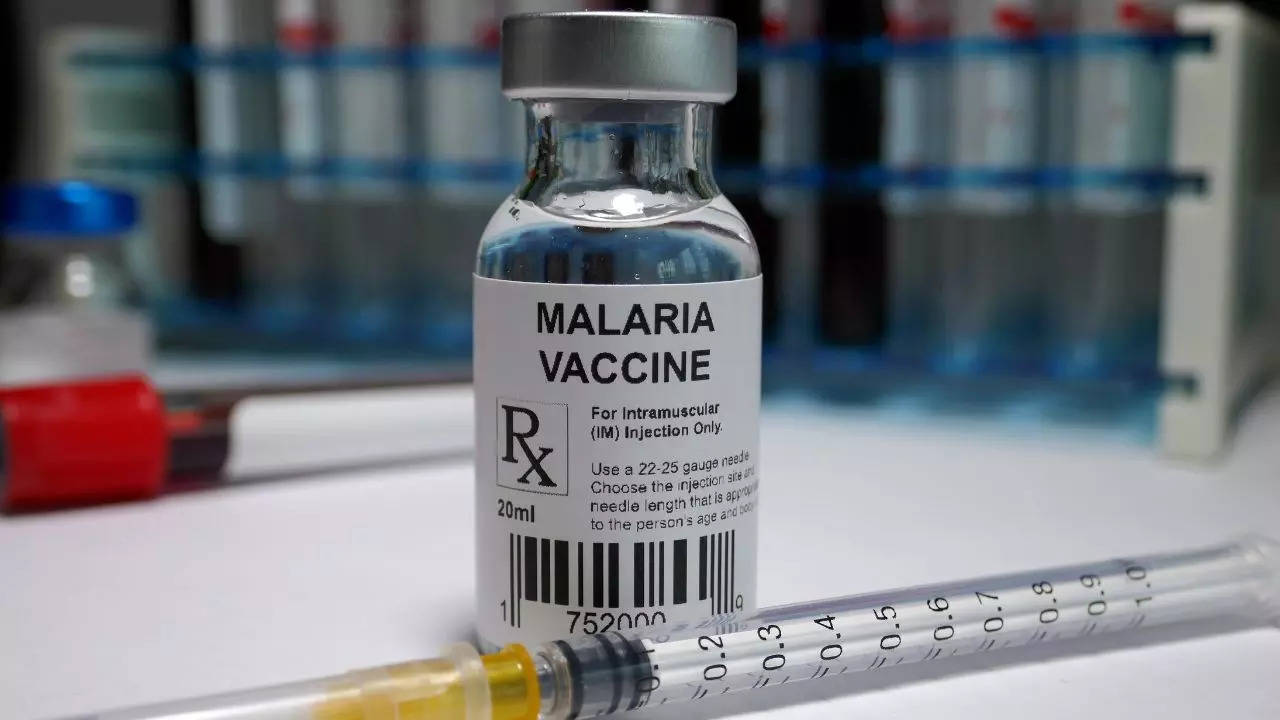
- 22 Dec 2023
Why is it in the News?
The World Health Organization (WHO) on Thursday added the R21/Matrix-M malaria vaccine, developed by Oxford University and manufactured by Serum Institute of India, to its list of prequalified vaccines.
News Summary:
- The R21/Matrix-M malaria vaccine, developed by Oxford University and produced by the Serum Institute of India, has received prequalification from the World Health Organization (WHO), marking a significant step in global efforts to combat malaria.
- This achievement follows the prequalification of the RTS, S/AS01 vaccine in July 2022, making R21 the second malaria vaccine to gain the WHO's approval.
- Prequalification means larger access to vaccines as a key tool to prevent malaria in children.
- The WHO employs rigorous international standards during the prequalification process, conducting a comprehensive evaluation to ensure the safety, efficacy, and adherence to global manufacturing standards of the vaccines.
- Ongoing measures, such as regular re-evaluation, site inspections, and targeted testing, are implemented to uphold prequalified vaccines’ continued safety and effectiveness.
What is a Prequalified Vaccine?
- The World Health Organization (WHO) defines a prequalified vaccine as one that has successfully completed a comprehensive three-step process prior to approval.
- Thorough Data Evaluation: The first step involves a meticulous examination of relevant data associated with the vaccine.
- Sample Testing: The second step includes rigorous testing of vaccine samples.
- Manufacturing Site Inspection: The final step encompasses an inspection of the pertinent manufacturing sites by WHO.
- Only when the outcomes of these steps are positive does the vaccine earn inclusion in the WHO list of Prequalified Vaccines?
What is Malaria?
- Malaria is an infectious disease caused by the Plasmodium parasite, transmitted to humans through the bites of infected female Anopheles mosquitoes, which are active mainly during the night.
- While there are numerous types of Plasmodium parasites, only five affect humans and cause malaria.
- Plasmodium falciparum: Predominantly found in Africa, it is the most common and lethal malaria parasite globally, responsible for the majority of malaria-related deaths.
- Plasmodium vivax: Primarily found in Asia and South America, this parasite causes milder symptoms than Plasmodium falciparum but can persist in the liver for up to three years, leading to potential relapses.
- Plasmodium ovale: Relatively uncommon and typically found in West Africa, this parasite can remain dormant in the liver for several years without causing symptoms.
- Plasmodium malariae: Rare and primarily found in Africa.
- Plasmodium knowlesi: Extremely rare and identified in certain parts of Southeast Asia.
Malaria Transmission:
- Upon being bitten by an infected mosquito, the Plasmodium parasite enters the bloodstream, travels to the liver, and matures.
- It then re-enters the bloodstream, invading red blood cells where it undergoes multiplication.
- Periodically, infected blood cells burst, releasing more parasites into the bloodstream.
- While mosquitoes can become infected by biting an already infected person, malaria does not spread directly from person to person.
Symptoms of Malaria:
- The signs and symptoms of malaria encompass fever, chills, general discomfort, headache, nausea, vomiting, diarrhoea, abdominal pain, muscle or joint pain, fatigue, rapid breathing, rapid heart rate, and cough.
- Recognizing these symptoms is crucial for prompt diagnosis and treatment.
What is the Status of Malaria in India?
- Given its predominantly tropical climate, a significant portion of India has a historical prevalence of malaria, and the country holds the distinction of being where Nobel Prize winner Sir Ronald Ross discovered the malaria parasite cycle involving Anopheles mosquitoes as the definitive host.
- While India has made substantial progress in the direction of malaria elimination, there remains a considerable journey ahead.
- According to the World Malaria Report 2023, India contributed to 66% of malaria cases within the World Health Organization’s South-East Asia region in 2022.
- Additionally, India and Indonesia jointly accounted for approximately 94% of all malaria-related deaths in the region last year.
- The report highlighted that nearly 46% of all cases in the region were attributed to Plasmodium vivax, a protozoal parasite and human pathogen.
What are the Challenges in Malaria Elimination?
- Eliminating malaria in India faces several challenges, primarily stemming from the predominant engagement of the private sector in diagnosing and treating the disease.
- This sector often encounters issues related to misdiagnosis and mistreatment.
Key challenges include:
- Limited Regulation in the Private Sector: Private doctors and clinics operate without an obligation to adhere to government guidelines, utilize recommended drugs, or report malaria cases to state authorities.
- Disproportionate Malaria Treatments in the Private Sector: In 2015, a substantial 86 million malaria treatments were procured in the private sector, in stark contrast to the meagre 2 million in the public sector.
- Proliferation of Artemisinin Monotherapy: The private sector annually acquires nearly 10 million injections of Artemisinin Monotherapy, a treatment strongly discouraged in India and globally due to its role in accelerating the development of lethal drug resistance.
- Irony of Drug Misuse: Remarkably, India, the largest supplier of high-quality approved malaria drugs globally, grapples with the ironic misuse of malaria drugs within its own borders.
Challenges in Creating a Malaria Vaccine:
The progress toward developing a malaria vaccine encounters various impediments:
- Absence of a Conventional Market: The absence of a conventional market poses a significant hindrance to the development of a malaria vaccine.
- Limited Developer Engagement: The involvement of only a few developers further complicates the landscape for malaria vaccine development.
- Technical Complexity: The technical intricacies associated with creating a vaccine against a parasitic infection, such as malaria, present substantial challenges.
- Complexity of Malaria Parasites' Life Cycle: Malaria parasites exhibit a complex life cycle, and there exists a limited understanding of the intricate immune response to malaria infection.
- Genetic Complexity of Malaria Parasites: The genetic complexity of malaria parasites, generating thousands of potential antigens, adds an additional layer of difficulty to the development of an effective vaccine.
Initiatives Taken by India for Malaria Eradication:
- Since 2000, India has successfully reduced malaria cases by more than half and malaria-related deaths by over 66%.
- In 2016, the country introduced its inaugural National Framework for Malaria Elimination (2016-2030), outlining a vision for a malaria-free nation by 2027 with complete elimination targeted by 2030.
- In 2019, the Government of India demonstrated its commitment by increasing funding for the National Vector Borne Disease Control Programme by over 25%.
- Furthermore, India augmented its support as a donor to the Global Fund to Fight AIDS, Tuberculosis, and Malaria, reaffirming its dedication to combating these vector-borne diseases on a global scale.
Lok Sabha passes three criminal law Bills: Here are the key changes (Indian Express)

- 21 Dec 2023
Why is it in the News?
Three new criminal code bills, focusing on justice rather than punishment, were passed by the Lok Sabha on Wednesday.
Context:
- Lok Sabha has passed by voice vote the three Bills that aim to overhaul the country's criminal justice system by replacing colonial-era laws.
- The three bills passed are:
- The Bharatiya Nyaya (Second) Sanhita - replace the Indian Penal Code (IPC)
- Bharatiya Nagarik Suraksha (Second) - replace Code of Criminal Procedure (CrPC)
- Bharatiya Sakshya (Second) Sanhita - replace the Indian Evidence Act
- According to the Home Minister, Amit Shah, the three new bills seek to establish a justice system based on Indian thinking and will free people from the colonial mindset and its symbols.
Background:
- Bill Presentation in August 2023: In August 2023, the Union government introduced three Bills in Parliament intending to revitalize the country's criminal justice system.
- The Bills in question were the Bharatiya Nyaya Sanhita Bill, 2023 (BNS), the Bharatiya Nagarik Suraksha Sanhita Bill, 2023 (BNSS), and the Bharatiya Sakshya Bill, 2023 (BSB).
- Referral to Parliamentary Standing Committee: The three Bills underwent scrutiny as they were referred to the Parliamentary Standing Committee on Home Affairs for a thorough review and recommendations.
- After three months of meticulous deliberation, the committee released reports on each Bill—BNS, BNSS, and BSB—suggesting necessary changes.
- Opposition Dissent on Hindi Titles: A notable point of contention arose during the committee's proceedings, particularly regarding the Hindi nomenclature of the Bills.
- Opposition members contested that the vernacular titles contravened Article 348, which stipulates English as the official language for courts and legislative matters.
- Despite opposition dissent, the parliamentary committee sanctioned the Hindi titles for all three Bills.
- Introduction of Revised Versions: After the committee's recommendations, on December 12, the three Bills were withdrawn from Parliament.
- In a prompt response, revised iterations of the Bills were promptly introduced for further consideration.
Why were new bills deemed necessary?
- Colonial Legacy: From 1860 to 2023, the nation's criminal justice system operated under British-imposed laws.
- These laws, formulated during colonial times, use outdated language and concepts that may not accurately represent current social norms and values.
- Advances in Technology: The evolution of technology has introduced new aspects to crime, evidence, and investigation, necessitating a response from the legal framework.
- Simplification and Streamlining: Over time, the laws have become intricate, confusing legal practitioners, law enforcement agencies, and the general public.
- Simplifying and streamlining the legal framework is seen as a way to enhance transparency and understanding.
- Evidence Collection and Presentation: The Indian Evidence Act predates the era of modern forensic science and technological tools, highlighting the need for an update in this regard.
- Reports and Recommendations: Various reports, including those from the department-related Parliamentary Standing Committee on Home Affairs (146th report), emphasized the necessity for a comprehensive review of the country's criminal justice system.
- Earlier reports (111th and 128th) had also underscored the need for reforms in criminal laws.
About Bharatiya Nyaya (Second) Sanhita (BNS II) Bill, 2023:
The BNS II Bill brings about significant modifications in the treatment of various offences, including criminal conspiracy, mob lynching, death by negligence, organized crimes, and terrorist acts.
- Life Imprisonment: While the BNS defined life imprisonment as 'imprisonment for life,' BNS II retains this phrase alongside the newer definition.
- Terrorist Acts: BNS II removes vague language, focusing on innovative acts such as damaging critical infrastructure, undermining monetary stability, and using force against public functionaries.
- Terrorist Act Offenses: In BNS II, the possession of property derived from a terrorist act is punishable only if acquired 'knowingly.'
- Harboring a person who committed a terrorist act is punishable if done 'knowingly' or 'voluntarily.'
- Criminal Conspiracy: BNS II modifies Clause 61 to include conspiracy with 'common intention.'
- Mob Lynching: The minimum punishment of seven years for mob lynching, as in BNS, is removed in BNS II.
- Murder by a group based on identity markers incurs life imprisonment or death, plus a fine.
- Organized Crimes: BNS II adds organized crimes, including kidnapping, extortion, and cybercrime committed on behalf of a syndicate. Petty organized crime is also now an offence.
- Changes in Offenses: Sedition is no longer an offence in BNS II, replaced by a new offence endangering the sovereignty, unity, and integrity of India.
- Community service is explicitly defined as court-ordered work benefiting the community, and serving as a punishment for offenders.
- Supreme Court Conformity: BNS II aligns with Supreme Court decisions, omitting adultery as an offence and introducing life imprisonment as a penalty for murder or attempt to murder by a life convict.
- Sexual Offenses: BNS II retains provisions from the Indian Penal Code (IPC) on sexual offences against women, increasing the age threshold for major classification in gang rape from 16 to 18 years.
- It criminalizes sexual intercourse with a woman through deceitful means or false promises.
About Bharatiya Nagarik Suraksha (Second) Sanhita (BNSS2) Bill, 2023:
- The Bharatiya Nagarik Suraksha (Second) Sanhita, 2023 (BNSS2) is designed to supplant the Criminal Procedure Code, 1973 (CrPC), which delineates the procedures for arrest, prosecution, and bail within the Indian legal framework.
- The CrPC, originally enacted in 1861 to streamline India's diverse legal systems, underwent a significant overhaul in 1973.
- The comprehensive revision led to the introduction of the present CrPC, incorporating changes such as the provision for anticipatory bail.
- The BNSS2 Bill aims to introduce several amendments to the existing CrPC framework, particularly addressing aspects related to trials, investigations, and other procedural matters.
- The proposed changes reflect an effort to modernize and enhance the efficiency of the criminal justice system in alignment with contemporary needs.
Key Features of the Bharatiya Nagarik Suraksha (Second) Sanhita (BNSS2) Bill, 2023:
- Detention of Undertrials: According to the BNSS2, the provision of releasing an accused on a personal bond after spending half of the maximum imprisonment period does not apply to offences punishable by life imprisonment or if proceedings are pending in more than one offence.
- Medical Examination: Unlike the CrPC, which restricts medical examinations to certain cases, the BNSS2 expands the scope, allowing any police officer to request an examination, broadening accessibility.
- Forensic Investigation: The BNSS2 introduces a mandatory forensic investigation for offences carrying a minimum sentence of seven years.
- Forensic experts are empowered to collect evidence on-site, documented through mobile phones or electronic devices.
- In the absence of local facilities, states can utilize facilities in other states.
- Signatures and Finger Impressions: While the CrPC empowers magistrates to order specimen signatures or handwriting, the BNSS2 extends this to include finger impressions and voice samples.
- Notably, these samples can be collected from individuals not yet arrested.
- Timelines for Procedures: The BNSS2 establishes clear timelines for various procedures.
- For instance, medical practitioners examining rape victims must submit their reports to the investigating officer within seven days, ensuring a more expedited legal process.
Bharatiya Sakshya (Second) Bill, 2023:
- Admissibility of electronic evidence: Section 61 of the original Bill allowed the admissibility of electronic evidence by underscoring that an electronic record shall have the same legal effect as a paper record.
- However, there was no requirement for a certificate under section 63 (corresponding to the requirement of a certificate under section 65B of the Indian Evidence Act).
- This provision has now been revised to state that the admissibility of an electronic record is subject to section 63.
Criticism of the Bill:
Experts have flagged that the three revised Bills present a missed opportunity to rectify extensive overcriminalisation and wider police powers that aggravate state control.
- The provision of the Bharatiya Nagarik Suraksha (Second) Sanhita, 2023, which permits police custody beyond the initial 15 days of arrest endangers civil liberties.
- The massive expansion of the possible duration of police custody in the BNSS strikes at the very heart of civil liberties protection.
- The BNSS expands the maximum limit of police custody under general criminal law from 15 days to either 60 days or 90 days (depending on the nature of the offence).
- Under current law, police custody is limited to the first 15 days of arrest.
- The expansion under the proposed BNSS heightens the risk of exposure to police excesses.
- Given widely acknowledged concerns about the safety of arrested persons in police custody, and the heightened risk of coerced and fabricated evidence after prolonged detention, this provision of the BNSS is a shocking expansion of police powers.
In a creative interpretation of Article 200, the Chief Justice of India’s recent judgment has also protected the entire constitutional system from the depredations of Governors (The Hindu)
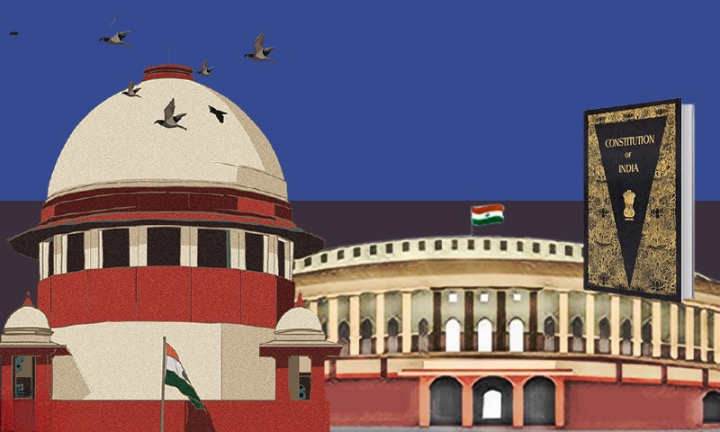
- 20 Dec 2023
Why is it in the News?
CJI Chandrachud creatively interprets Article 200 in a landmark ruling on the Governor's role in bill assent, State of Punjab vs Principal Secretary, November 10, 2023.
Context:
- On November 10, 2023, the Chief Justice of India (CJI) delivered a significant judgment in the case of State of Punjab vs Principal Secretary to the Governor of Punjab, offering an interpretation of Article 200 of the Indian Constitution.
- The focal point was the first provision of Article 200, addressing a Governor's choices when presented with a Bill for assent following its passage by the State Legislature.
Article 200 Of The Indian Constitution:
- Article 200 of the Indian Constitution delineates four possible actions for a Governor when a legislature-passed Bill is submitted for assent.
- These actions include:
- Give his assent
- Withhold his assent
- Return the bill for reconsideration
- Reserve the bill for the President’s consideration (In instances where the bill introduced in the state legislature endangers the position of the state High Court.)
- If the legislature reapproves the Bill with or wthout any amendment, the Governor must grant assent.
- Alternatively, the Governor may reserve the Bill for the President's consideration, and the President then decides whether to grant or withhold assent under Article 201.
- Notably, no specific timeframe is specified for the President's decision on the Bill.
Perspectives on the Discretionary and Absolute Nature of the Governor's Power:
- Most of the commentators of the Constitution, like D.D. Basu and others, have held the view that the Governor’s power to withhold assent under this Article has a finality about it, and once assent is withheld, the Bill dies a natural death.
- They were also of the view that the option of sending the Bill back to the Assembly for reconsideration under the first proviso is discretionary and not mandatory.
Interpretation of Article 200 Pronounced by the CJI:
- The recent interpretation of Article 200 by the Chief Justice of India (CJI) introduces a distinct viewpoint.
- Unlike the traditional understanding, the CJI associates the act of withholding assent with mandatory reconsideration.
- This interpretation challenges the presumption of the Governor's absolute authority to withhold assent.
- According to the CJI's judgment, the Governor's decision to withhold assent is coupled with the obligation to promptly return the Bill to the Assembly for an immediate reevaluation.
- In this context, the judgment asserts that, once the Governor chooses to withhold assent, the sole recourse is to send the Bill back to the Assembly for swift reconsideration, leaving the Governor with no alternative but to eventually grant assent.
- This nuanced interpretation aligns with the imperative of ensuring a deliberate and obligatory reconsideration process when the Governor opts to withhold assent to a legislative Bill.
The Importance of the CJI’s Interpretation:
- Preserving Legislative Rights: This ruling, coupled with the Chief Justice of India's approach, safeguards the legislature's authority in the law-making process, preventing potential misuse by appointed Governors and upholding the constitutional system.
- Evolution in Understanding Governor’s Powers: The CJI's interpretation signifies a progression in comprehending the Governor's powers, underlining the necessity for continual assessment and refinement of constitutional interpretations.
- Enhanced Clarity in Article 200: The Supreme Court of India has unequivocally stated that Governors cannot delay the decision on the Bills.
- Consequently, the top court's verdict has brought increased clarity to Article 200, compelling Governors to promptly decide on presented Bills.
Issues Still Regarding the Governor's Power:
- Reservation of Bills for President's Consideration: A potential area for exploitation by Governors remains in reserving Bills for the President's consideration, providing an absolute option.
- The critical query pertains to the types of Bills Governors can forward to the President, with the second provision of Article 200 specifying Bills that must mandatorily be reserved.
- These are Bills that deviate from the powers of the High Court, jeopardizing its constitutionally designated role.
- Lack of Categorization for Bills: The Constitution lacks a reference to specific categories of Bills for the President's consideration.
- Consequently, Governors may seemingly exercise discretion in sending any Bill to the President.
- Recent instances, such as in Kerala, where the Governor withheld action on eight Bills for over two years, or in Tamil Nadu, where Bills were sent to the President against the Constitution after reconsideration by the Assembly, highlight the absence of clear categorization.
- Ambiguities in Governor's Actions: The Constitution's ambiguity allows Governors to act in ways that may contradict its provisions, as seen in instances where Bills were sent to the President against the Constitution's mandate.
- Such actions place the fate of Bills in the hands of Union government officials, raising concerns about the potential misuse of gubernatorial discretion.
Evaluation of Constitutional Aspects Regarding Governor's Authority in Reserving Bills:
- Constitutional Framework: In the current political context, there arises a significant inquiry into a Governor's discretion in reserving Bills for the President's consideration, a matter not explicitly addressed in the Constitution.
- Implicit References: Two constitutional provisions indirectly touch upon this issue—Article 213 deals with ordinance-making powers and Article 254(2) concerning State laws in the Concurrent List.
- Article 213 empowers Governors to issue ordinances with presidential instructions when deeming it necessary to reserve a Bill's provisions.
- This implies a requirement for Governors to exercise judgment within the constitutional framework.
- The use of "deemed it necessary" suggests that Governors are expected to follow constitutional principles rather than acting arbitrarily in deciding to reserve Bills.
- Article 254(2) states that State laws on Concurrent List items prevail with presidential assent, even if conflict with existing central laws.
- It indicates that a Bill on a Concurrent subject requires presidential assent only if it contradicts central laws; it does not mandate sending every such Bill to the President.
- Presidential Jurisdiction and Governor's Duty on State Subjects: In the federal legislative structure, the President lacks authority to scrutinize and assent to Bills exclusively related to State subjects, underscoring the Governor's constitutional responsibility.
- Sending a Bill on State matters to the President might be viewed as an abdication of the Governor's constitutional duty, given that State List subjects are beyond the President's purview.
Conclusion
The absence of explicit provisions raises constitutional uncertainties concerning a Governor's discretionary authority in reserving Bills for the President. As constitutional interpretations evolve, there's a demand for clarity on the scope of a Governor's discretion in reserving Bills, aligning with federal principles and legislative autonomy. It's crucial to note that a Governor is not personally accountable for government actions, and the constitutional validity of a law falls within the court's jurisdiction, beyond the influence of the Governor or President.
PM Modi is in Varanasi to participate in the Viksit Bharat Sankalp Yatra events, and inaugurate the second edition of the Kashi Tamil Sangamams (Indian Express)
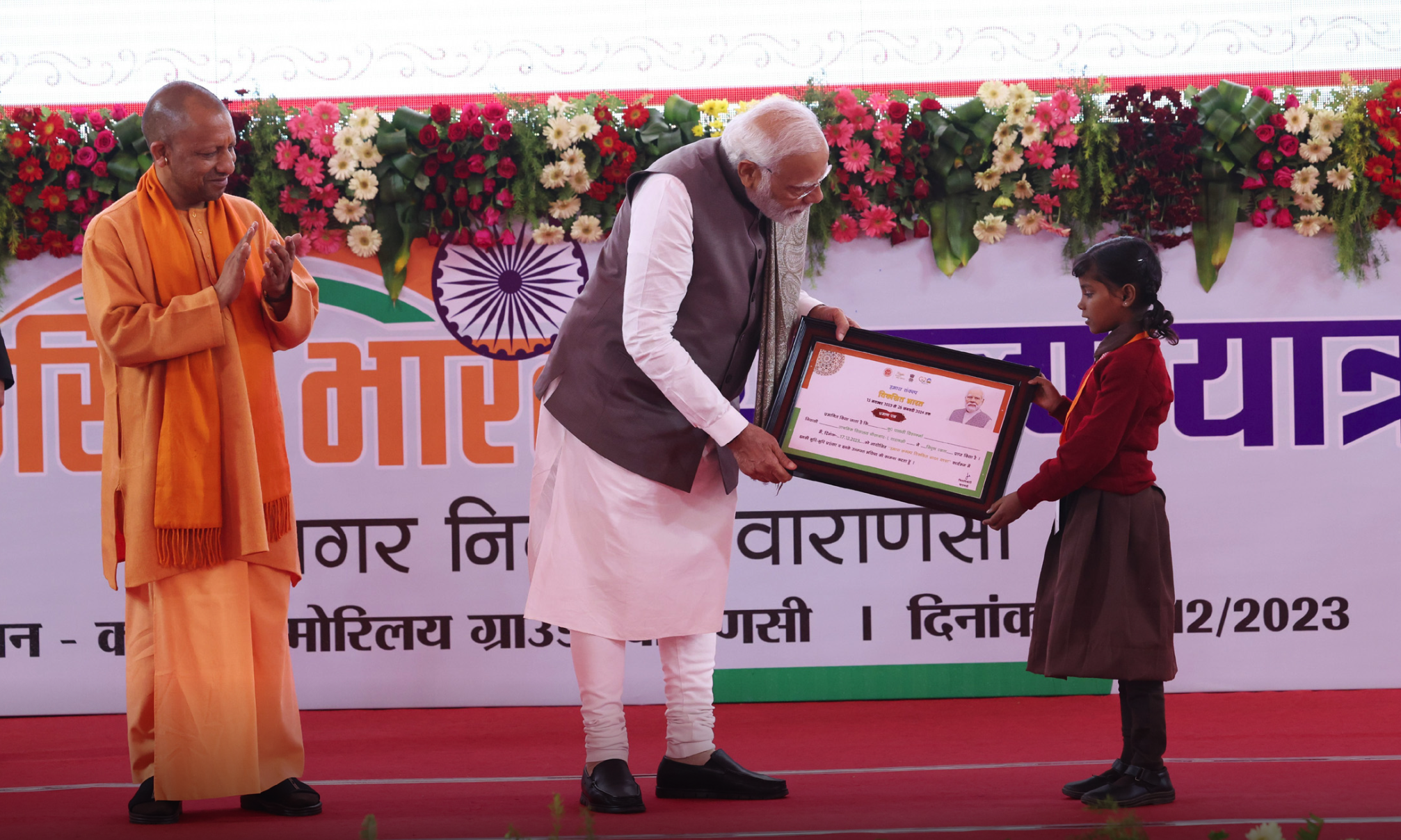
- 18 Dec 2023
Why is it in the News?
PM Modi recently participated in the Viksit Bharat Sankalp Yatra events and inaugurated the second edition of Kashi Tamil Sangamam in Varanasi.
What is Viksit Bharat Sankalp Yatra?
- The Viksit Bharat Sankalp Yatra is a government initiative being undertaken across the country, to raise awareness about and track the implementation of flagship central schemes, such as Ayushman Bharat, Ujjwala Yojana, PM Suraksha Bima, PM SVANidhi, etc.
- On the occasion of the Janjatiya Gaurav Divas, marking the birth anniversary of tribal icon Birsa Munda, Prime Minister Modi flagged off the Viksit Bharat Sankalp Yatra from Khunti, Jharkhand.
- It has four aims:
- Reach out to the vulnerable who are eligible under various schemes but have not availed of benefits so far.
- Dissemination of information and generating awareness about schemes.
- Interaction with beneficiaries of government schemes through their personal stories/ experience sharing; and
- Enrolment of potential beneficiaries through details ascertained during the Yatra.
- The program involves various Union ministries and state governments.
- In a short span of one month, the Yatra has reached over 2.50 crore citizens across 68,000 Gram Panchayats, with nearly 2 crore individuals taking the Viksit Bharat Sankalp.
What is Kashi Tamil Sangamam?
- Kashi Tamil Sangamam celebrates many aspects of the historical and civilisational connection between South and North India.
- Aligned with the National Education Policy 2020, which emphasizes cultivating a modern yet culturally rooted mindset, the policy encourages the fusion of traditional Indian Knowledge Systems with contemporary knowledge.
- This integration has yielded enriching outcomes, such as incorporating Yoga and Ayurveda into modern medicine, employing technology for traditional crafts, blending ancient Vaastushilpa with modern archaeology, and creatively interpreting classical Raagas.
- Recognizing the value of rediscovering and integrating ancient knowledge into modern thinking, the month-long Kashi-Tamil Sangamam has been initiated.
- This endeavour promotes direct interaction among scholars, experts, and practitioners from diverse fields, fostering the exchange of expertise and best practices.
About Kashi-Tamil Sangamam:
- An initiative by the Government of India under the "Azadi ka Amrit Mahotsav" and in line with the "Ek Bharat Shreshta Bharat" spirit, Kashi-Tamil Sangamam underscores unity amid the cultural diversity of states and Union Territories.
- The program aims to celebrate, reaffirm, and rediscover the enduring connections between Tamil Nadu and Kashi, two ancient seats of learning.
- This initiative provides a platform for individuals from various walks of life, including scholars, students, and philosophers, from both regions to converge, share their knowledge, culture, and best practices, and learn from each other's experiences.
- IIT Madras and BHU serve as the implementing agencies for the program.
- Following the inaugural edition in 2022, this year's Kashi-Tamil Sangamam is scheduled to take place from December 17 to December 31.
Cultural Significance:
- In the 15th century, King Parakrama Pandya, the ruler of the Madurai region, aspired to construct a temple dedicated to Lord Shiva.
- To fulfil this vision, he embarked on a journey to Kashi (Uttar Pradesh) to acquire a lingam.
- During his return journey, he paused to rest under a tree.
- To his surprise, when he attempted to resume the journey, the cow carrying the lingam steadfastly refused to move.
- Recognizing this as a divine sign, Parakrama Pandya chose to install the lingam at that very spot, giving rise to what is now known as Sivakasi in Tamil Nadu.
- For those unable to make the pilgrimage to Kashi, the Pandyas thoughtfully erected the Kasi Viswanathar Temple in present-day Tenkasi, situated in the southwestern part of Tamil Nadu near the state's border with Kerala.
What is the reason for choosing Tamil Nadu and Kashi?
- Despite their geographical separation, Kashi and Tamil Nadu share profound and vibrant historical connections that have endured through the centuries.
- Renowned as embodiments of Indian culture, these regions have been revered by many for their cultural richness.
- Historically, seekers of knowledge from various places, including Kashi, Prayagraj, Ayodhya, and Gorakhpur, in the north, and Kanchipuram, Puducherry, Madurai, Thanjavur, Rameshwaram, Srirangam, Kanyakumari, Thoothukudi, Tirunelveli, and the Tamraparani River in the south, have been drawn to these regions as significant knowledge hubs.
- The ancient ties between these two knowledge centres are evident in various aspects of life, including recurring themes in literature and the presence of the name "Kashi" in numerous villages in Tamil Nadu.
- Notably, Saint Kumaragurupara from Tamil Nadu showcased audacity in negotiating with the Sultanate of Kashi, even bringing a lion to his courtyard to reclaim Kedarghat and secure a site for the consecration of the Vishweshwara Lingam.
- His literary contribution, "Kashi Kalambakam," is a grammatical composition of poems on Kashi.
- King Adhiveera Rama Pandiyan of the Pandya Dynasty, after a pilgrimage to Kashi, dedicated a Shiva Temple in Tenkasi, Tamil Nadu, and composed "Kashi Kandam," a Skanda Purana in Tamil poetic verses.
- Exploring and rediscovering the profound links between these two centres promises to yield essential knowledge in both intellectual and practical domains.
Allahabad HC allows survey of Mathura Idgah: What is this plea in the Sri Krishna Janmabhoomi case (Indian Express)
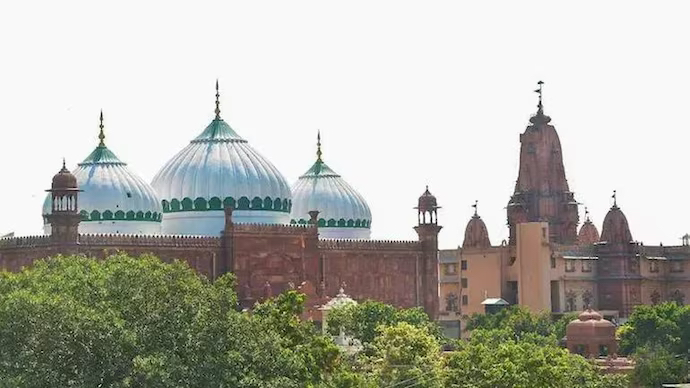
- 15 Dec 2023
Why is it in the News?
The Allahabad High Court on Thursday allowed the primary survey of the Shahi Idgah complex adjacent to the Shri Krishna Janmabhoomi Temple in Uttar Pradesh's Mathura by a court-monitored three-member team of advocate commissioners.
Context:
- The Allahabad High Court recently approved the survey of the Shahi Idgah complex in Uttar Pradesh's Mathura.
- Petitioners claim that the Shahi Idgah adjoining the Krishna Janmabhoomi temple in Mathura holds signs suggesting that it was a Hindu temple once.
- The Krishna Janmabhoomi-Shahi Idgah case is the second temple-mosque dispute in which the high court has allowed to conduct a survey over the past months.
- Earlier, a survey was ordered in the Gyanvapi-Kashi Vishwanath temple dispute in Varanasi.
What is Krishna Janmabhoomi-Shahi Idgah case?
- The mosque was built by Aurangzeb in 1670 on the site of an earlier temple.
- The area was regarded as nazul land — non-agricultural state land owned by the Marathas, and then the British.
- Before the mosque was built, Raja Veer Singh Bundela of Orchha had also built a temple on the same premises in 1618.
- In 1815, Raja Patni Mal of Benaras bought the 13.77 acres in an auction from the East India Company.
- The Raja’s descendants — Rai Kishan Das and Rai Anand Das — sold the land to Jugal Kishore Birla for Rs 13,400, and it was registered in the names of Pandit Madan Mohan Malaviya, Goswami Ganesh Dutt, and Bhiken Lalji Aattrey.
- The Shri Krishna Janmabhoomi Trust was set up by Birla, and it acquired the ownership rights over the Katra Keshav Dev temple.
- In 1951, the 13.77 acres were placed in the trust, with the condition that the “trust property will never be sold or pledged.”
- In 1956, the Shri Krishna Janmasthan Sewa Sangh was set up to manage the affairs of the temple.
- In 1977, the word ‘Sangh’ in the registered society’s name was replaced with ‘Sansthan.’
What is the Latest Plea in the Sri Krishna Janmabhoomi-Shahi Idgah Case?
- The latest application was filed by the Hindu side, seeking a survey of the Shahi Idgah mosque — which was allowed by a Bench of Allahabad High Court recently.
- The petition pleads that the High Court passes an order directing the UP Sunni Central Waqf Board and the Shahi Idgah mosque committee “to remove the construction raised by them encroaching upon the land” in dispute.
- The petition further asks the court to direct the two opposing parties to hand over the land to the Shree Krishna Janmbhoomi Trust within the time provided by the court.
- The plea further seeks an order restraining the Waqf Board and the mosque committee, and that people on their behalf from entering into the premises of the 13.37 acres of land at Katra Keshav Dev City and District Mathura.
- It also says that a “compromise agreement” dated October 12, 1968, between the Shri Krishna Janmasthan Seva Sansthan — the temple management authority, a registered society under law — and the Trust Shahi Masjid Idgah – was “illegal and void”.
- The reasoning behind this, as per the plea is that “society Shree Krishna Janmasthan Seva Sangh had no right over the property involved”.
- The petition filed by the Hindu side says that “it is a matter of fact and history that Aurangzeb ruled over the country and had issued orders for demolition of a large number of Hindu religious places and temples including the temple standing at the birth place of Lord Shree Krishna at Katra Keshav Dev, Mathura in the year 1669-70 AD”.
- “The army of Aurangzeb partly succeeded in demolishing Keshav Dev Temple and a construction was forcibly raised showing the might of power and said construction was named Idgah Mosque.
- The petition also says that “the order (for demolition) passed by Aurangzeb finds a place in the Official Court Bulletin (Akhbaraat) of January – February 1670”.
What are the counterclaims from the Muslim side?
- The Muslim side claimed that “the Shahi Idgah Mosque does not fall within the ambit of 13.37 acres land at Katra Keshav Dev”.
- “The place of birth of Lord Krishna does not lie beneath the Mosque. The claim of the plaintiffs is based on guesswork and is not substantiated by any documentary evidence.
The case so far and Gyanvapi order:
- At least a dozen cases were filed in courts in Mathura by different petitioners.
- A common thread in all the petitions is a prayer for the removal of the mosque from the 13.77-acre complex.
- The latest Mathura order is similar to the one in Varanasi’s Gyanvapi Mosque, also built adjacent to a venerated Hindu temple.
What Happened in the Case of the Gyanvapi Mosque?
- Last year in the month of May, a videographic survey of the Kashi Vishwanath temple-Gyanvapi mosque was completed by a Commission appointed by the local court.
- During the survey proceedings, a structure which the Hindu side claimed was a “shivling”, and the Muslim side claimed was a “fountain”, was found to be inside the mosque premises.
- Subsequently, a scientific survey of the Gyanvapi mosque complex was ordered by the Varanasi district court.
- This time, the District and Sessions Judge AK Vishvesha had directed the ASI to “undertake scientific investigation/survey/excavation at the property in question.
- The survey was halted after the mosque committee approached the Allahabad High Court, and then the Supreme Court, seeking a stay on the survey.
- Both the courts cleared the decks for the survey which was resumed on August 4 amid tight security arrangements.
- The ASI teams have been surveying the campus since.
- Recently, the Varanasi district court granted some more time to the Archaeological Survey of India (ASI) to submit the findings of the court-ordered scientific survey of the Gyanvapi mosque premises.
ECI members to have the same status as SC judges: Why Govt has chosen to make U-turn on proposed Bill (Indian Express)

- 13 Dec 2023
Why is it in the News?
Following protests by former Chief Election Commissioners (CECs) and Opposition parties, the Centre on Tuesday moved amendments which sought to retain the status of the Election Commissioners (ECs) on par with Supreme Court Judges.
Context:
- In response to protests from former Chief Election Commissioners (CECs) and Opposition parties, the Centre introduced amendments on Tuesday aiming to preserve the equivalence of status for Election Commissioners (ECs) with Supreme Court Judges.
- Earlier, the Chief Election Commissioner and Other Election Commissioners (Appointment, Conditions of Service and Term of Office) Bill, 2023, first introduced in Rajya Sabha on August 10, had sought to downgrade their salaries, perks and allowances, aligning them with those of a Cabinet Secretary.
- The Bill, along with the amendments, was discussed and passed by voice vote in just over four hours in Rajya Sabha on Tuesday, after the Opposition staged a walkout.
- The Bill is yet to be introduced in Lok Sabha.
- The Bill regulates the appointment of the CEC and two ECs by constituting a three-member selection committee comprising the Prime Minister, the Leader of the Opposition and a Cabinet Minister.
- Till now, the CEC and ECs were appointed by the President on the advice of the government, as there was no law enacted for the purpose.
Key Highlights of the New Bill:
- Exclusion of CJI and Inclusion of Cabinet Minister: The bill proposes the removal of the Chief Justice of India from the selection panel, replacing the position with a Cabinet Minister nominated by the Prime Minister.
- The Leader of Opposition in Lok Sabha is designated as a member of the selection committee.
- Selection Criteria: The Election Commission of India (ECI) will comprise a Chief Election Commissioner (CEC) and other Election Commissioners (ECs) selected from individuals who have held a position equivalent to Secretary to the Government of India.
- Emphasis on integrity, knowledge, and experience in election management.
- Selection Process: A Search Committee, led by the Law Minister, will propose a list of names to the selection committee.
- The Selection Committee, chaired by the Prime Minister, includes the Leader of Opposition or the leader of the largest Opposition party in Lok Sabha, and a Cabinet Minister appointed by the Prime Minister.
- The Selection Committee may consider individuals beyond the Search Committee's recommendations.
- Terms and Tenure: The term of CEC and ECs remains at 6 years or until the age of 65, whichever comes earlier.
- The salary of CEC and ECs aligns with that of a Supreme Court judge.
- Repeal of 1991 Act: The bill repeals the Election Commission (Conditions of Service of Election Commissioners and Transaction of Business) Act, 1991, which guided the functioning of the ECI.
- Decision-Making within ECI: Business of the ECI should ideally be conducted unanimously; in case of a difference of opinion, the majority's decision prevails.
- Removal Process: CEC's removal aligns with the procedure and grounds applicable to a Supreme Court judge.
- Removal of election commissioners is subject to the recommendation of the CEC.
- Protection Clause: The bill introduces a provision safeguarding current and former CECs and election commissioners from civil or criminal proceedings related to their official duties.
The Supreme Court's Stance on Election Commission Appointments:
- A Constitution Bench comprising five judges addressed multiple petitions advocating a selection process akin to that of the Central Bureau of Investigation (CBI) Director.
- In March 2023, the Court unanimously criticized the existing system where the Centre appoints members of the election watchdog.
- Citing Article 324(2) of the Constitution, the Court urged Parliament to enact legislation specifying the criteria for selection, terms of service, and tenure for the Chief Election Commissioner (CEC) and Election Commissioners (ECs).
- Pending legislative action, the apex court constituted a panel consisting of the Prime Minister, the Chief Justice of India, and the leader of the opposition to carry out these appointments.
What happens now?
- Since no vacancy has emerged in the ECI since the Supreme Court order of March, no appointments have been made through the mechanism laid down by the court.
- The next vacancy is expected to arise in February 2024, when EC Anup Chandra Pandey will retire.
- Meanwhile, the amendments that are set to be moved by Law Minister are expected to restore the equivalence with a Supreme Court judge.
- According to the amendments proposed by the Minister, the status of the EC would be kept the same as that of a Supreme Court judge, with the same salary, dearness allowance and leave encashment rules.
Election Commission of India (ECI):
- The Election Commission of India (ECI) is an independent and permanent constitutional body entrusted with the responsibility of conducting impartial and transparent elections in India.
- Constitutionally empowered, the ECI oversees and directs elections for Parliament, state legislatures, the president, and the vice-president of India.
Key Functions of the ECI:
- Delimiting electoral constituencies nationwide.
- Regularly updating and revising electoral rolls, enrolling eligible voters.
- Announcing election schedules, scrutinizing nomination papers, and fixing election dates.
- Granting recognition to political parties and allocating election symbols.
- Advisory role in post-election disqualification matters for sitting members.
- Enforcing the Model Code of Conduct during elections to prevent unfair practices.
Composition:
- Comprising a Chief Election Commissioner (CEC) and two Election Commissioners (ECs).
Appointment Process:
- The President appoints the CEC and ECs under Article 324(2), based on the advice of the Union Council of Ministers led by the Prime Minister.
Tenure and Conditions:
- Commissioners serve a term of 6 years or until age 65, whichever is earlier, with conditions similar to a Supreme Court judge.
Removal Safeguards:
- The CEC enjoys security of tenure, removable only in the same manner and on the same grounds as a Supreme Court judge. Other commissioners can be removed on the CEC's recommendation.
That many of these unapproved or banned FDCs contain antibiotics is cause for concern given the growing antibacterial microbial resistance in India (The Hindu)

- 09 Dec 2023
Why is it in the News?
A group of academics from India, Qatar and the United Kingdom recently published a worrying new study in the Journal of Pharmaceutical Policy and Practice on the volume of unapproved and even banned fixed dose combinations (FDC) of antibiotics being sold in India.
News Summary:
- In the Journal of Pharmaceutical Policy and Practice, a group of academics from India, Qatar, and the United Kingdom recently released a concerning new study on the amount of antibiotics that are being sold in India that are not allowed or even prohibited as fixed dosage combinations (FDCs).
- The analysis, which makes use of pharmaceutical industry sales data, shows that in 2020, 60.5% of FDCs containing antibiotics (or 239 formulations) were unapproved, and another 9.9% containing 39 formulations were being distributed in the nation even though they were prohibited.
- The fact that antibiotics are present in so many of these illicit or prohibited FDCs is concerning given the rising incidence of antimicrobial microbial resistance (AMR) in India.
What are the Fixed Dose Combinations (FDCs) Drugs?
- FDCs are combinations of one or more known drugs and can be useful in treating some diseases since the combination can improve patient compliance.
- For instance, if a patient has to take three different medications for a particular treatment, she may forget to take one.
- But if all three medications are combined into one tablet or one syrup, the chance of her forgetting to take one or two of the drugs is reduced.
- For diseases such as AIDS, it is well documented that FDCs have proven to be very useful in improving patient compliance, which at the end of the day improves treatment outcomes.
Concerns with FDCs Drugs?
- Making FDCs is not an easy job, even though most consist of drugs with known safety and efficacy profiles.
- All drugs have side effects. When formulated together, there is a possibility that the active ingredient or excipients (inactive ingredients) may affect how each drug functions.
- For example, the drugs may interact in a way to reduce the therapeutic efficacy of each active ingredient, or, worse, the drugs may interact with each other to create a more toxic element, often called metabolites.
- This is why all FDCs must go through a scientifically designed approval process where such interactions can be evaluated.
Advantages of Fixed Dose Combinations:
- FDCs increase patient adherence, streamline treatment, and optimize the advantages of the combined therapeutic actions of the two medications.
- Treatment for infectious diseases: A significant portion of India's population is afflicted with infectious diseases.
- FDCs are very helpful in the treatment of infectious disorders when it is customary to administer numerous antimicrobial drugs, such as HIV, malaria, and tuberculosis.
- Additionally useful in chronic diseases, FDCs are especially beneficial when co-occurring disorders are common.
- Affordability and accessibility: FDCs have particular benefits over single entity preparations, including improved efficacy, a lower likelihood of side effects, potentially lower costs, and easier distribution logistics that are pertinent to resource-constrained scenarios like those in India.
Challenges Associated with Fixed-Dose Combinations (FDCs):
- Increased Risk of Side Effects: Combining multiple active ingredients in FDC drugs heightens the risk of adverse drug interactions and increases susceptibility to side effects.
- Patients may exhibit heightened sensitivity or allergic reactions to specific components, posing challenges in identification and management due to the fixed combination.
- For instance, a single FDC drug containing Paracetamol, Bromhexine, Phenylephrine, Chlorpheniramine, and Guaiphenesin may elevate the risk of side effects like drowsiness, dizziness, and increased blood pressure.
- Regulatory Challenges: Regulating FDC drugs prove challenging due to the complexities associated with evaluating the safety and efficacy of multiple active ingredients in a single formulation.
- Maintaining quality control and standardization for FDC drugs becomes more demanding compared to single-component medications.
- Overuse and Misuse: FDC drugs can contribute to the overuse and misuse of medications.
- Patients might unknowingly consume multiple active ingredients unnecessarily or in inappropriate combinations, leading to potential health risks.
- Lack of Evidence-based Clinical Data: Approval of some FDC drugs may be based on limited or insufficient clinical evidence supporting their efficacy and safety profiles.
- The absence of robust scientific data raises concerns about the appropriateness and reliability of FDC drugs for specific medical conditions.
Why are FDCs banned in India?
- Patients may not need that many drugs; thus, they are subjected to additional side effects.
- Some drug doses have to be individualized based on the patient's condition.
- This is not possible when using FDCs.
- Some companies have been selling FDCs in India under this pretext without consulting the central government, as seen with the cefixime-azithromycin combination, which has already been banned.
- These non-essential FDCs, therefore, do more harm than good by encouraging irrational and indiscriminate prescribing of multiple drugs than necessary.
Some Examples of (Banned Fixed-Dose Combination) Drugs in India:
- Fixed dose combination of Aceclofenac + Paracetamol + Rabeprazole
- Fixed dose combination of Nimesulide + Diclofenac
- Fixed dose combination of Nimesulide + Cetirizine + Caffeine
How is the Pharmaceutical Industry Exploiting Loopholes in India's Legal Framework?
- Pharmaceutical companies in India use these FDCs to escape liability under multiple laws without much concern for public health.
- One such law is the Drugs (Prices Control) Order (DPCO), under which the government fixes the prices of individual drugs.
- Since drug combinations were traditionally not covered under the DPCO, the pharmaceutical industry decided that making FDCs provided an easy way to escape the remit of the DPCO.
- Motivated solely by market-driven pragmatism rather than a commitment to public health, the Indian pharmaceutical industry introduced an extensive array of FDCs lacking any discernible medical rationale.
- For example, anti-inflammatory drugs were combined with vitamins, anti-histamines were combined with anti-diarrhoeal agents, penicillin was combined with sulphonamides, and vitamins were combined with analgesics.
- These were combinations not found in any other country.
The pharmaceutical industry benefited in two ways.
- Firstly, the wide range of FDCs in the market meant no standards were set by bodies like the Indian Pharmacopoeia Commission, shielding manufacturers from quality testing and potential legal consequences.
- Essentially, the pharmaceutical industry could dictate its testing standards when FDCs were sampled for government testing.
- Second, the FDC approach provides companies with a justification for higher drug prices. For instance, if multiple companies sell azithromycin individually, they must compete and lower prices.
- However, combining it with another drug in an FDC allows them to market it as a unique solution, justifying higher prices until competitors introduce similar products.
- This system rewards pseudo-innovation rather than true medical breakthroughs, allowing dubious FDCs to command elevated prices, supported by doctors who may presume regulatory oversight.
Is there any Regulatory Framework Addressing the Issue of FDCs?
- The FDC problem has been on the regulatory radar since 1978 when the first government committee studied the issue and admitted that we had a problem on our hands.
- At the time, there was no system under the colonial-era Drugs and Cosmetics Act, 1940 to vet drugs for safety and efficacy before their sale in India.
- This meant that each State drug controller could hand out manufacturing licences for any drug formulation and there was little that the central government could do to stop their sale.
- In 1982, Parliament changed the law to give the central government the power to “prohibit” the manufacture of specific drugs that lack therapeutic value or justification.
- Later in 1988, the central government amended the rules to introduce a new requirement for manufacturers of all “new drugs”, including FDCs, to submit proof of safety and efficacy to the Drugs Controller General of India (DCGI) who heads the Central Drugs Standard Control Organization (CDSCO).
- These amendments also made it clear that State drug controllers could not grant “manufacturing licences” for “new drugs” that are not approved for safety and efficacy by the DCGI.
Is Unabated Licensing Undermining FDC Regulation in India?
- Despite clear legal provisions, State drug controllers continue to overlook regulations, issuing manufacturing licenses for Fixed-Dose Combinations (FDCs) not approved by the DCGI with impunity.
- Manufacturers selling these unapproved FDCs technically expose themselves to prosecution by the Central government for violating the law.
- Rather than pursuing criminal prosecutions, the Ministry of Health is engaged in a reactive approach, frequently utilizing its powers under Section 26A to prohibit the manufacturing of specific FDCs.
- Since 1983, 444 orders have been issued under this provision, primarily targeting FDCs. Many of these orders have become entangled in intricate legal disputes, with inconsistent court decisions further complicating the regulatory landscape.
Conclusion
The fact that these academics have discovered 239 unapproved FDCs being sold in 2020 in just one category of FDCs more than 42 years after the problem was first flagged is an astonishing indictment of the incompetence of the drug regulatory framework in India. As they point out in their paper, unregulated FDCs may end up contributing to the AMR problem in India. The Ministry of Health needs to take immediate action.
